
Menu:
Behrooz Parhami's Blog & Books Page

Page last updated on 2024 July 22
This page was created in 2009 as an outgrowth of the section entitled "Books Read or Heard" in my personal page. The rapid expansion of the list of books warranted devoting a separate page to it. Given that the book introductions and reviews constituted a form of personal blog, I decided to title this page "Blog & Books," to also allow discussion of interesting topics unrelated to books from time to time. Lately, non-book items (such as political news, tech news, puzzles, oddities, trivia, humor, art, and music) have formed the vast majority of the entries.
Entries in each section appear in reverse chronological order.
Blog entries for 2024
Blog entries for 2023
Blog entries for 2022
Blog entries for 2021
Blog entries for 2020
Blog entries for 2019
Blog entries for 2018
Blog entries for 2017
Blog entries for 2016
Archived blogs for 2015
Archived blogs for 2014
Archived blogs for 2012-13
Archived blogs up to 2011
Blog Entries for 2024
2024/07/22 (Monday): Presenting selected news, useful info, and oddities from around the Internet.


 (1) Images of the day: [Left] A primitive culture carved hundreds of large stones in the shape of perfect spheres some 1400 years ago in a remote region of Costa Rica. [Center] Beautiful geometric symmetries. [Right] I support the new likely Democratic presidential candidate: Bracing for racist & misogynistic attacks!
(1) Images of the day: [Left] A primitive culture carved hundreds of large stones in the shape of perfect spheres some 1400 years ago in a remote region of Costa Rica. [Center] Beautiful geometric symmetries. [Right] I support the new likely Democratic presidential candidate: Bracing for racist & misogynistic attacks!
(2) Words of wisdom: Once you hit a certain age, life becomes a delicate balance between staying awake and falling asleep, while slowly getting worse at both.
(3) Bangladesh follows in the footsteps of Iran: Street protests against new discriminatory hiring practices in the public sector have led to hundreds of deaths and Internet service disconnection.
(4) One-liners: Brief news headlines, happenings, memes, and other items of general interest.
- Joe Biden announces an end to his presidential campaign and endorses VP Kamala Harris.
- The Republicans are really scared of Kamala Harris. They plan to ask the courts to invalidate her candidacy.
- China least-impacted by Microsoft/CrowdStrike outage: Little reliance on Microsoft or security software.
- Scientists race to explain the Curiosity Rover's discovery of pure sulfur on the Martian surface.
- Colorful street canopy in Malaga, created by Spanish crochet teacher Eva Pacheco and her students.
(5) After sabotaging several Democratic bills in the Senate and leaving the party, Joe Manchin says he's considering re-registering as a Democrat and running for president.
(6) The statutory retirement age in the US is 66 or 67: That's higher than the age in all but 9 countries. The global median is 61. [Washington Post]
(7) Do Iranians really want to support those shouting "long live the king/prince" or prefer the chants "long live Iran" & "long live the Iranian nation"? Do we want to overthrow one idol & replace him with another one?
(8) Which kind of president do we want: One who quits his re-election bid for the good of the country or one who threatens a civil war if he isn't elected?
2024/07/20 (Saturday): Presenting selected news, useful info, and oddities from around the Internet.
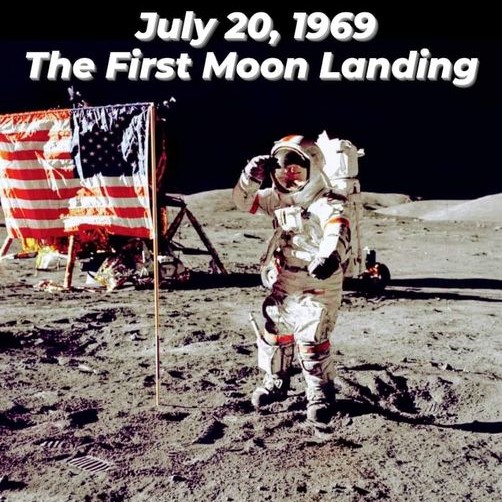
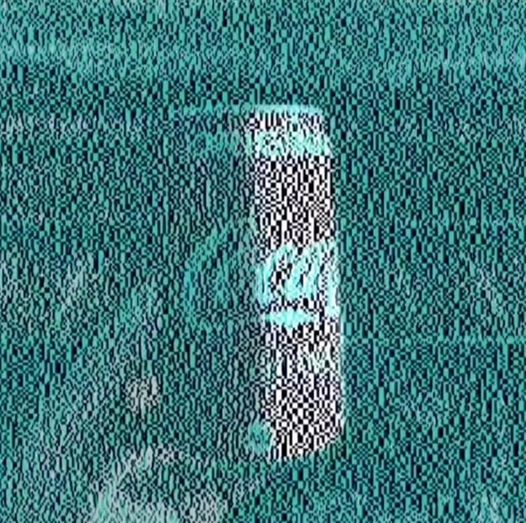
 (1) Images of the day: [Left] The first Moon landing by humans occurred 55 years ago, on July 20, 1969. [Center] The red you see in this image is an illusion: The image is made entirely of blue-green, black, and white. [Right] 70th Anniversary of Boeing 367-80: It came to revolutionize commercial air transport, when its production version entered service as the iconic Boeing 707, America's first jet airliner.
(1) Images of the day: [Left] The first Moon landing by humans occurred 55 years ago, on July 20, 1969. [Center] The red you see in this image is an illusion: The image is made entirely of blue-green, black, and white. [Right] 70th Anniversary of Boeing 367-80: It came to revolutionize commercial air transport, when its production version entered service as the iconic Boeing 707, America's first jet airliner.
(2) The importance of data longevity and compatibility: NSA has lost access to a 1982 recorded lecture by Grace Hopper, because it is in a format that NSA no longer has the ability to view or digitize. I wrote about such problems in an article published in the 2019 Encyclopedia of Big Data Technologies.
(3) RNC speeches reassured the working class that the GOP cares about them: Yet not one Republican in Congress supports raising the minimum wage and 90% support cuts in social security benefits. [Tweet]
(4) One-liners: Brief news headlines, happenings, memes, and other items of general interest.
- Banks, airlines, and other businesses experience global outages due to a Microsoft Windows update.
- Efforts to make digital accessibility rules part of the Americans with Disabilities Act pick up steam.
- Female law professor dismissed from her university position in Iran via a text message.
- Pat Craig (aka modern-day Noah) is the go-to guy when animals are threatened by neglect or disaster.
- Bob Marley, Saudi style! [Video]
- Poorly-maintained private road within UCSB property, featuring a totally-faded stop sign. [Photos]
(5) Classy: Last night, Donald Trump's acceptance of his nomination at RNC will be preceded by Kid Rock, Hulk Hogan and the chief executive of the Ultimate Fighting Championship.
(6) Contemporary Iranian history: Abbas Milani's exploration (in Persian) of the relationship between the two Pahlavi monarchs, based on 156 letters that the prince wrote to his father. A ChatGPT-produced English translation is also available. [Right] The first Moon landing by humans occurred 55 years ago, on July 20, 1969.
(7) Final thought for the day: I am really disappointed with Joe Biden, whom I have strongly supported. He is behaving as if he is entitled to the nomination rather than think about our country's future.
2024/07/18 (Thursday): Presenting selected news, useful info, and oddities from around the Internet.

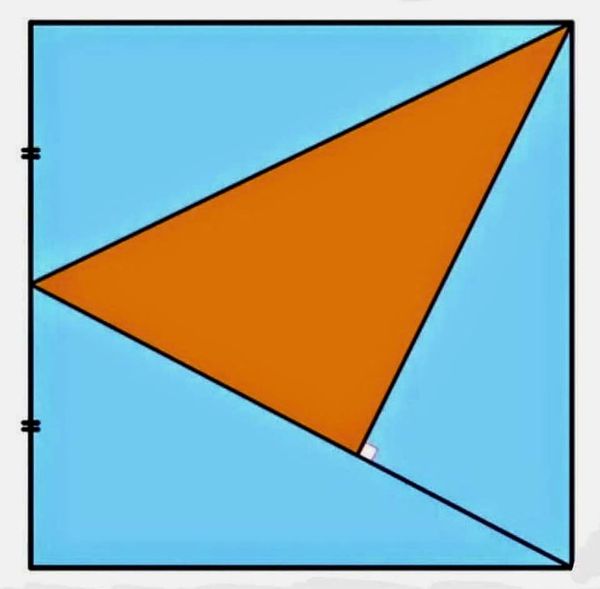
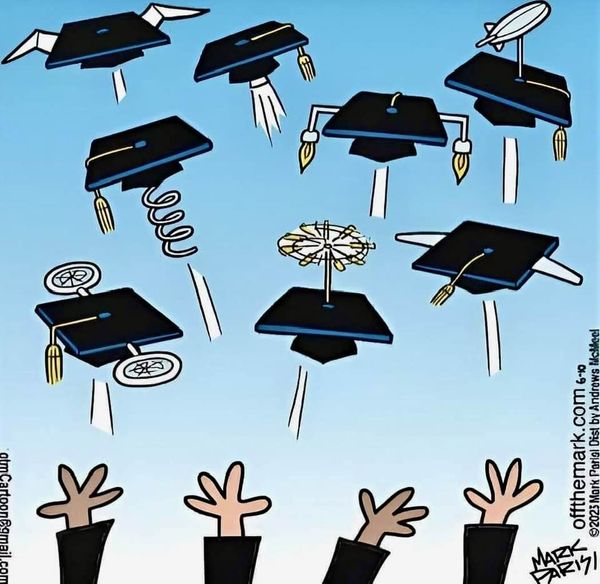 (1) Images of the day: [Left] Throwback Thursday: Taxi-meter that was used in Iran some six decades ago. [Center] Math puzzle: What fraction of the square's area is shaded Orange? [Right] Cartoon of the day: When engineers graduate!
(1) Images of the day: [Left] Throwback Thursday: Taxi-meter that was used in Iran some six decades ago. [Center] Math puzzle: What fraction of the square's area is shaded Orange? [Right] Cartoon of the day: When engineers graduate!
(2) Comedian Bob Newhart dead at 94: He had a couple of TV sitcoms and a number of funny routines in which he talked over the phone to another side whom you did not hear or see. Here is an example of Newhart, playing the role of an IBM employee, talking to Herman Hollerith about his punched cards.
(3) Circumventing sanctions: As airlines try to offload their Airbus A340 planes due to their excessive fuel consumption, Iran's IRGC is purchasing them for use by its Mahan Airlines, the largest in Iran, through shell companies it set up throughout the world. Over the past decade, IRGC has purchased 20 wide-body jets, diverting some of them to Syria and Venezuela. The US Treasury Department has apparently turned a blind eye to these violations.
(4) One-liners: Brief news headlines, happenings, memes, and other items of general interest.
- Here is what Republicans really think of Donald Trump (Ted Cruz): Pay no attention to RNC speeches.
- Here is what Republicans really think of Donald Trump (Marco Rubio): Pay no attention to RNC speeches.
- J. D. Vance, Trump's VP pick, several years ago: "Trump could be America's Hitler."
- Let's stop talking about miracles & God's will: Talk about sensible gun laws & a ban on assault rifles instead.
- Facebook memory form July 18, 2016: My Persian quatrains inspired by a Mowlavi (Rumi) poem.
(5) Fact check: Multiple RNC speakers claimed that crime in the US is rising because of illegal immigrants. In reality, US crime rate is declining & immigrants commit fewer crimes than US citizens.
(6) Nikki Haley endorsed the guy who she swore to her donors was unfit & couldn't be trusted. No character! No morals! No courage! She probably expects a cabinet position in return. I really hope she doesn't get it.
(7) On the Republican VP nominee, J. D. Vance: He built his reputation on being from Appalachia, the forgotten area of the US. I read and reviewed his book, Hillbilly Elegy: A Memoir of a Family and Culture in Crisis. Now, there is an essay by someone from Appalachia who claims J. D. Vance does not represent him. Black folks don't exist in his narrative. Queer folks don't exist in his narrative. "He is white, Christian, and has longstanding generational ties to the region. I, on the other hand, am south Asian, the child of Indian immigrants who settled in Appalachia in the 1970s, because work in the chemical industry brought them there, and left in the early 2000s, because work disappeared. … My friends with generational ties to Appalachia experienced the book much as I did. They felt misrepresented. Misunderstood. Scapegoated for the result of the 2016 election. Many wrote pieces in direct response. Elizabeth Catte's What You're Getting Wrong About Appalachia is an absolute must-read in this regard."
2024/07/17 (Wednesday): Presenting selected news, useful info, and oddities from around the Internet.
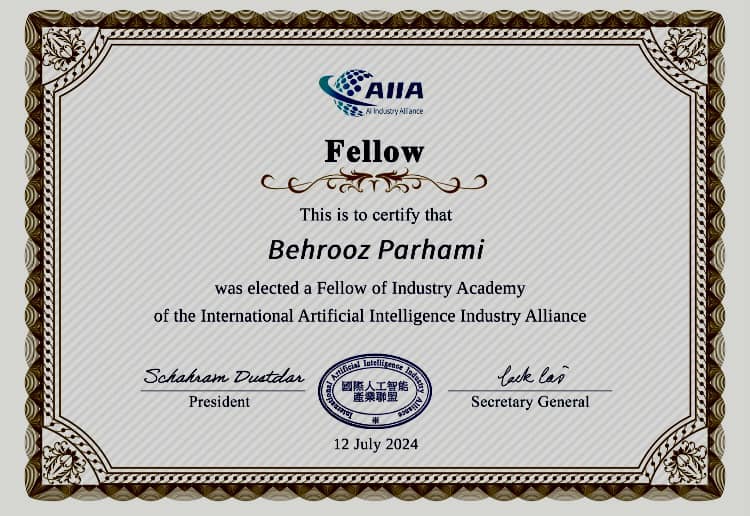
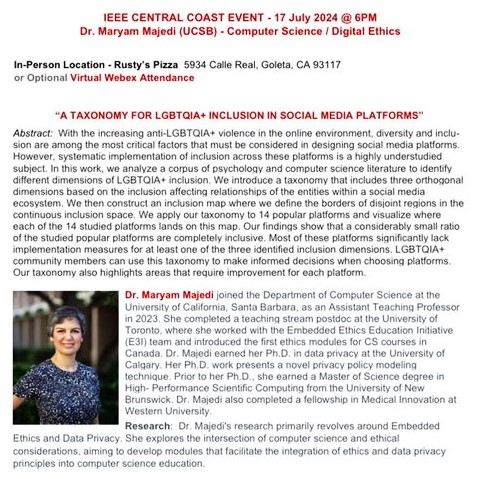 (1) Images of the day: [Left] Proud to announce my election as a Fellow of Industry Academy of the Int'l Artificial Intelligence Industry Alliance. [Right] IEEE Central Coast Section talk (see the last item below).
(1) Images of the day: [Left] Proud to announce my election as a Fellow of Industry Academy of the Int'l Artificial Intelligence Industry Alliance. [Right] IEEE Central Coast Section talk (see the last item below).
(2) Women's soccer match (USA 0-0 Costa Rica): US dominated both halves of play, including taking 16+ corner kicks, with no goal to show for it. There were plenty of scoring opportunities for the US, but the team just didn't have the scoring instinct to convert the chances to goals. Hope they play better at the Olympics.
(3) One-liners: Brief news headlines, happenings, memes, and other items of general interest.
- Judge Eileen Cannon dismisses the mishandling of classified documents case against Donald Trump.
- Trump's would-be assassin rushed his shots, because a security officer was already on the roof where he was.
- Trump turning his head to point to a sign saved his life: It caused the bullet to hit his ear, not his head.
- Argentina pulls out tough 1-0 overtime victory over Colombia to become Copa America champion.
- Spain beats England 2-1 to claim the 2024 European championship for an unprecedented fourth time.
(4) Friendly women's soccer match: USA played against Costa Rica. Dominating both halves of play, including taking 16+ corner kicks, with no goal to show for their efforts. There were plenty of scoring opportunities for the US, but the team just didn't have the scoring instinct to convert the chances to goals. Hope they play better at the Olympics.
(5) Tonight's IEEE Central Coast Section talk: Dr. Maryam Majedi (UCSB CS) spoke under the title "A Taxonomy for LGBTQIA+ Inclusion in Social Media Platforms."
Within a couple of decades of the Internet becoming public, its use turned from a nicety to a necessity. Being able to participate in Internet exchanges must now be viewed as a right, not a privilege. And with rights come protections. Rising anti-LGBTQIA+ violence in the online environment makes the aforementioned protections vital. Unfortunately, systematic implementation of inclusion across these platforms is a highly understudied subject. Dr. Majedi and co-workers have analyzed a corpus of psychology and computer science literature to identify different dimensions of LGBTQIA+ inclusion, introducing a taxonomy that includes three orthogonal dimensions within a social media ecosystem. Based on the taxonomy, an inclusion map has been constructed which defines the borders of disjoint regions in the continuous inclusion space. The taxonomy has been applied to 14 popular platforms to visualize where each platform lands on this map. The study reveals that only a small fraction of the studied popular platforms is completely inclusive. Most of these platforms lack implementation measures for at least one of the three identified inclusion dimensions. The study highlights areas within each platform that need improvement and allows LGBTQIA+ community members to make informed decisions when choosing platforms.
2024/07/15 (Monday): Presenting selected news, useful info, and oddities from around the Internet.


 (1) Images of the day: [Left] Latest NYT presidential poll: If Kamala Harris becomes a candidate, she will do better than Biden against Trump among women and under-65 voters and a tad worse among senior citizens. A caveat is that Harris has not been in the spotlight in the sense of being tested in debates or subjected to negative attacks. [Center] The 2024 US election will be important for women and seniors, given changes proposed in Project 2025. [Right] "Game of Life" animation (see the next item below).
(1) Images of the day: [Left] Latest NYT presidential poll: If Kamala Harris becomes a candidate, she will do better than Biden against Trump among women and under-65 voters and a tad worse among senior citizens. A caveat is that Harris has not been in the spotlight in the sense of being tested in debates or subjected to negative attacks. [Center] The 2024 US election will be important for women and seniors, given changes proposed in Project 2025. [Right] "Game of Life" animation (see the next item below).
(2) Conway's "Game of Life" (a cellular automaton): In this 0-player game, the universe is modeled as an infinite 2D grid of square cells, with each cell being alive or dead. A dead cell will come alive in the next time step if it has exactly 3 live neighbors. Otherwise, it will remain dead. A live cell will die of loneliness if it has 0-1 live neighbors. It will die of overcrowding it it has 4-8 live neighbors. Otherwise (with 2 or 3 live neighbors), it will survive through the next time step. The game starts from an initial "seed" distribution of live and dead cells at time 0 and will proceed through "generations" autonomously. Very interesting patterns of life will emerge depending on the grid's initial condition.
A simple introduction to "Game of Life" [6-minute video].
On this page you will find some simple animations. [Wikipedia page]
A few mind-boggling animations [7-minute video].
John Conway reflects on his "Game of Life" [11-minute video].
A related cellular automaton, with prizes for its Rule 30 (don't spend any time on this tough problem).
(3) "Political violence has no place in America": This has been the reaction of many politicians to the assassination attempt against former President Trump. Really? Where have these people been over the past decade, when political violence has been all over our social media and, occasionally, a physical reality?
(4) One-liners: Brief news headlines, happenings, memes, and other items of general interest.
- I wish we saw the same outrage and calls for action when shootings occur in classrooms!
- Grieving Ukrainian families learn to cope by climbing in the Alps: Touching story of strength & charity.
- Math oddity: 11 + 2 = 12 + 1. Also "eleven plus two" and "twelve plus one" use exactly the same letters.
- A type of cactus goes extinct in the US owing to sea level rise.
- Persian poetry: A beautiful love couplet from Bidel Shirazi.
[Tweet, with the Persian poem]
- Swedish symphony orchestra brings Siavash Kasrai's poem "Arash-e Kamanguir" to life. [6-minute video]
(5) Abbas Kiarostami's legacy: French actress Juliette Binoche wrote a touching letter to Iranian director Abbas Kiarostami upon his death, lamenting that she was left with unanswered questions about the simple/complex man (who directed her in "Certified Copy") and about his enigmatic country. [A Taste of Kiarostami]
2024/07/13 (Saturday): Presenting selected news, useful info, and oddities from around the Internet.

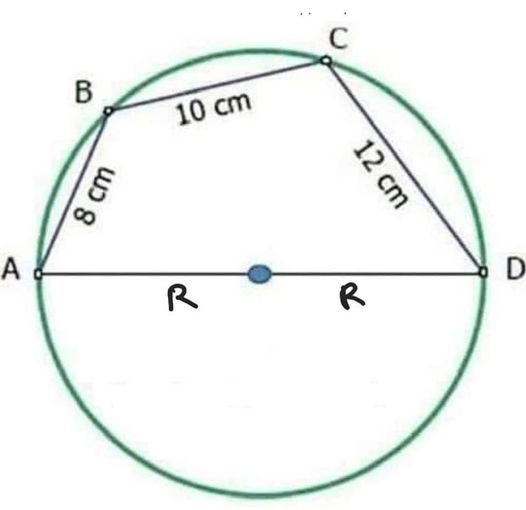
 (1) Images of the day: [Left] Schrodinger's Smiley! [Center] Math puzzle: Find the circle's radius R. [Right] By chance, a NYT photographer captured the image of one of the bullets, as it approached Trump's head.
(1) Images of the day: [Left] Schrodinger's Smiley! [Center] Math puzzle: Find the circle's radius R. [Right] By chance, a NYT photographer captured the image of one of the bullets, as it approached Trump's head.
(2) Special 100th Edition of Caltech's Stargazing Lectures: Caltech Professor and Nobel Laureate Kip Thorne spoke last night under the title "An Odyssey Through the Warped Side of Our Universe." Thorne is the first author, with Lia Halloran, of the book The Warped Side of the Universe.
Rather than trying to summarize the lecture, I recommend that you watch it through the following link to also benefit from a number of interesting diagrams and a couple of video animations.
Interestingly, both of the terms "wormhole" and "black hole" were coined by John Wheeler for concepts discovered by others. Wheeler resisted the idea of a black hole for nearly a decade, before embracing it.
Thorne's lecture begins at the 16-minute mark of this 117-minute video.
(3) In 2016, Donald Trump convinced Americans that he can transfer his skills in running a business in New York to running the US: Now, he is banned from running a business in New York, yet it seems he is making the same claim for 2024!
(4) One-liners: Brief news headlines, happenings, memes, and other items of general interest.
- The shooting suspect & a spectator are killed and Donald Trump is injured at a campaign rally.
- A brief but useful introduction to brain plasticity. [5-minute video]
- World's driest desert blooms in winter (southern hemisphere) due to El Nino.
- Persian music in the pre-Revolution Iran (1962-1979): Shahbal Shabpareh performs a 9-minute medley.
(5) US women national soccer team's friendly match against Mexico: Despite relentless attacks by the US early in the first half, the two teams went into halftime scoreless. Additional US dominance in the second half produced only one goal. The US team should work on converting more of their scoring chances into goals.
(6) Hal Berghel, writing in IEEE Computer magazine (issue of July 2024) on some of the challenges facing our system of higher education: "The reward structure is suboptimal, focusing increasingly on measurements rather than what is being measured, and emphasizing indirect flow from external funding over the intrinsic value of the research being funded. Fifty years ago there was widespread agreement that research funding was an input to a research program. These days, it is often perceived as an end-in-itself. Regrettably, some university administrators take a transactional approach to research funding: if it carries a full indirect rate and isn't illegal, it's good research."
(7) Metamorphic fault tolerance: MFT is a new paradigm for building reliable software systems based on the notions of design diversity and data diversity. More precisely, it addresses one of the trouble spots of the latter two methods which require a way of telling whether a computed result is trustworthy (the oracle problem).
See: Zheng Zheng, Daixu Ren, Huai Liu, and Tsong Yueh Chen, "Metamorphic Fault Tolerance: Addressing the Oracle Problem of Reliability Assurance for Contemporary Software Systems," IEEE Computer, July 2024.
2024/07/12 (Friday): Presenting selected news, useful info, and oddities from around the Internet.


 (1) Images of the day: [Left] Beautiful 5-way symmetry. [Center] Hedges turned into works of art by Tim Bushe in his London neighborhood. [Right] Nahid Pirnazar's Ketab-e Anusi (see the last item below).
(1) Images of the day: [Left] Beautiful 5-way symmetry. [Center] Hedges turned into works of art by Tim Bushe in his London neighborhood. [Right] Nahid Pirnazar's Ketab-e Anusi (see the last item below).
(2) A Mowlavi (Rumi) verse that provides comfort through your deepest sorrows: And when you think all roads and passages are closed;
A hidden path, unknown to anyone else, will be revealed
[Tweet, with Persian verse]
(3) Two serious flubs by President Barack Obama (I mean Joe Biden): He referred to Kamala Harris as "Vice-President Trump" and to President Volodymyr Zelensky, standing next to him, as "President Putin"!
(4) Book review: Pirnazar, Nahid (translator & editor), Ketab-e Anusi: The Life of Persian Jews in the Safavid Era, in Persian, Iran Namag Books, 2021.
[My 4-star review of this book on GoodReads]
There is another book in print, also titled "Ketab-e Anusi," with the subtitle "The Forced Religious Conversion of Jews During the Safavid Dynasty," which is translated/corrected by Amir-Ali Fallahian and published by Ketab Corporation in 2021. Here is the publisher's blurb on the latter book: "The Book of the Anusi is a collection of narrative poems describing the life of Jewish Persians in the mid Safavid dynasty era in the 17th century CE. Reporting on the calamities befalling the Jews in various Persian cities between the years 1607 and 1662 CE, Babai Ben Lotf tells of the difficult years under Shah Abbas I, the more tolerant interlude during Shah Safi and the event of the forced religious conversion of Jews at the time of Shah Abbas II. The narratives, the information and the content offered in this book, are not only important concerning the culture, history and the social life of the Jews of Persia, but also significant when it comes to Persian history at large under the Safavids, the history of religion in Persia, social history, languages and dialects in Persia, local histories as well as the history of Persian literature in general."
Much of the description above is also applicable to Pirnazar's book, which contains poems by Babaee ben-Lotf (Part 1, pp. 43-314) and Babaee ben-Farhad (Part 2, pp. 315-374), with minor additions by Mashiah ben-Rafael (Part 3, pp. 375-381). The three parts cover, respectively, the years 1613-1660 CE, a time interval in the Safavid era, certain events in the period 1666-1736 CE, and events from the Safavid's collapse to the early years of the Afsharids. The book ends with a 13-page Persian glossary, a 10-page Hebrew glossary, and a 9-page index of names.
The three parts of Ketab-e Anusi have always appeared together in a single volume. The book was never published and what we have are about half-dozen handwritten copies held by various museums, cultural organizations, and individual collectors. Dr. Pirnazar has used three of these copies (described on pp. 20-21) in assembling her book.
Historical events that one can glean from Ketab-e Anusi form an important part of Iran's past and the way in which Jews, and by extension, other religious minorities, were treated during the reign of the Safavid kings who wanted to promote Shi'i Islam and were thus rather intolerant of other faiths. We learn from Ketab-e Anusi that Jews lived in many areas of Iran's territory: Abarqu, Ashraf, Damavand, Esfahan, Golpayegan, Hamedan, Kashan, Kermanshah, Khansar, Lar, Lorestan, Nahavand, Natanz, Qom, Qazvin, Shiraz, and Tuyserkan. With regard to jobs and professions, Jews earned a living as Taylors, millers, silk-weavers, goldsmiths, antiques dealers, perfume-makers, pharmacists, medical workers, and musicians.
The book outlines the social standing of Jews, their daily lives, as well as persecutions and molestations they suffered. No one knows exactly how many Jews were forcefully converted to Islam and what the Jewish population would be today, if forced conversions had not occurred. Resisting conversion came with a heavy cost; a number of Jewish leaders were killed for refusing to convert to Islam. A significant portion of the forced converts were Georgian Jews and Christians, who were forcefully relocated to Mazandaran and points further south.
"Anusi" is a Hebrew word meaning "a Jew forced to apostatize but who remains secretly Jewish." The fact that Hebrew has a single word for such a complicated notion tells us that, perhaps, Jews were subjects of forced conversions outside the places and time periods covered by this book. Many of the verses in the book's poems are faulty in rhyme, wording, or meaning. For this reason, Pirnazar urges us to read the book as a historical account, not a literary work. Still, dealing with the imperfect poetry is torturous for someone who is familiar with and adores the works of classical Persian poets.
The book contains many typos. A vast majority of these typos are minor annoyances and do no harm to the reader's understanding. A few are rather serious and hard to decipher. An example of the first category from pp. 19-20 is the two spellings of a name: "Tahmasb-Gholi" and "Tahmas-Gholi." As an example of the second category, a section on page 28 is headed "Events of the Years 5161-1161 CE." The beginning of the section's first sentence, "Georgia in the 16th and 17th centuries" suggests that perhaps 1611-1615 CE was intended, but it takes much more digging to make sure.
2024/07/11 (Thursday): Presenting selected news, useful info, and oddities from around the Internet.
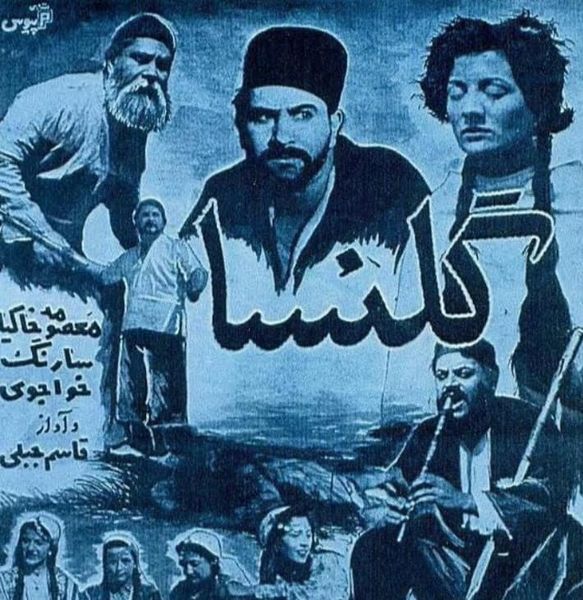
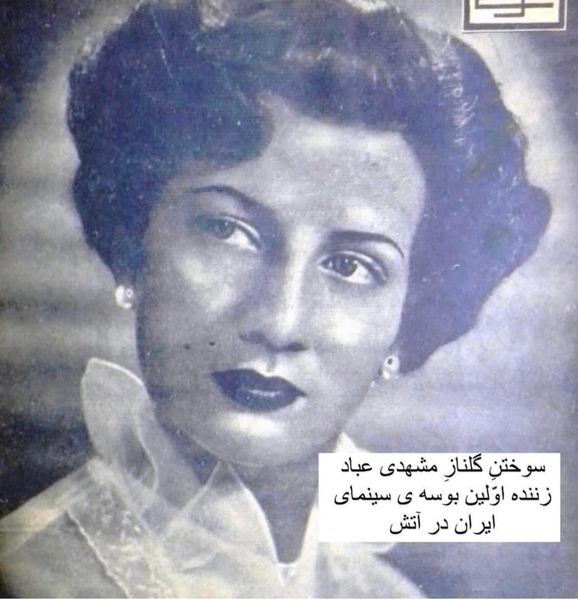

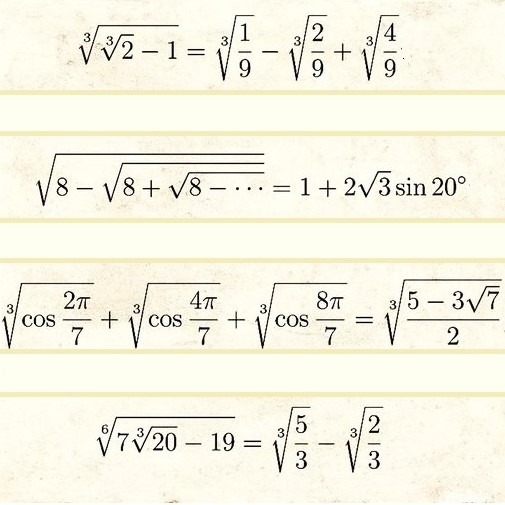
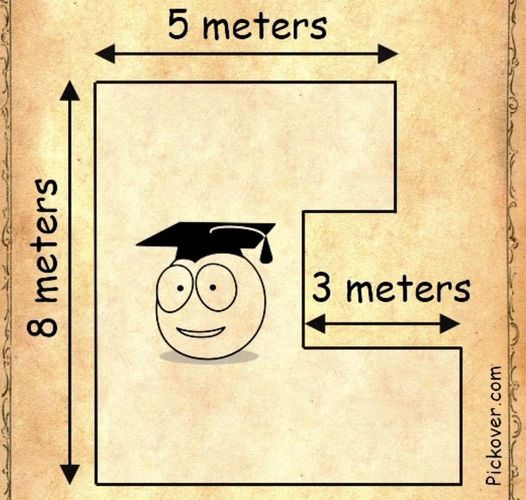
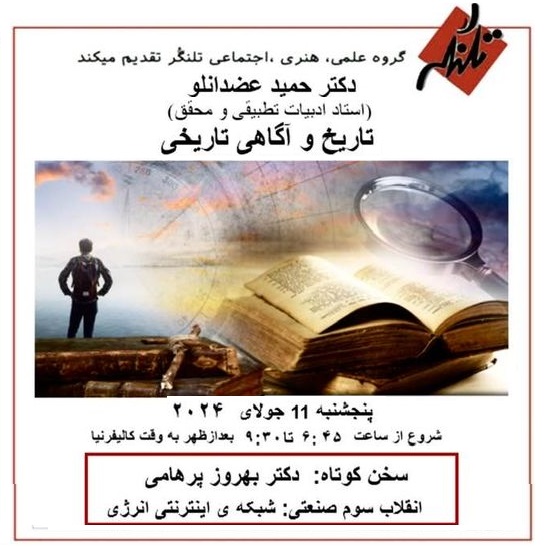 (1) Images of the day: [Top left & center] Throwback Thursday (1): Ma'soomeh Khakyar went to Iran from Baku and became notorious for the first cinematic kiss in the 1953 Iranian movie "Golnesa." IMDB describes the film thus: "Golnesa is the popular girl of their village and all want to marry her, but she is deceived by a man from the city." After the "illicit" kiss, she was under unbearable pressure from her husband and his family, until she poured gasoline on her beautiful body and set it on fire. She is buried at Tehran's Mesgarabad Cemetery. [Top right] Throwback Thursday (2): Television sets of the mid-20th-century. [Bottom left] Indian math prodigy Ramanujan dreamed up mind-boggling roots-of-roots identities such as these. His identities involving the number pi are equally amazing. [Bottom center] Math challenge: Do we have enough information to derive the perimeter of this shape? [Bottom right] Tonight's Talangor Group meeting (see the last item below).
(1) Images of the day: [Top left & center] Throwback Thursday (1): Ma'soomeh Khakyar went to Iran from Baku and became notorious for the first cinematic kiss in the 1953 Iranian movie "Golnesa." IMDB describes the film thus: "Golnesa is the popular girl of their village and all want to marry her, but she is deceived by a man from the city." After the "illicit" kiss, she was under unbearable pressure from her husband and his family, until she poured gasoline on her beautiful body and set it on fire. She is buried at Tehran's Mesgarabad Cemetery. [Top right] Throwback Thursday (2): Television sets of the mid-20th-century. [Bottom left] Indian math prodigy Ramanujan dreamed up mind-boggling roots-of-roots identities such as these. His identities involving the number pi are equally amazing. [Bottom center] Math challenge: Do we have enough information to derive the perimeter of this shape? [Bottom right] Tonight's Talangor Group meeting (see the last item below).
(2) Cypress Hill made a "Simpsons" joke from 1996 come true last night: The hip-hop group performed with the London Symphony Orchestra at the Royal Albert Hall.
(3) Power-hungry data centers: Driven by the use of AI, data centers constitute the fastest-growing segment of the energy market. Data-center operators are working on multiple fronts to reduce their energy needs and to gain access to reliable energy supplies, up to and including building nuclear power plants nearby.
(4) One-liners: Brief news headlines, happenings, memes, and other items of general interest.
- Sharifeh Mohamadi has been sentenced to death in Iran under the bogus charge of "rebellion/revolt."
- Post-hurricane power outage and historic heat a deadly combination in Texas.
- In 75th-anniversary meeting, NATO accuses China of supplying Russia with technology to attack Ukraine.
- A diverse group of older women gymnasts, led by Simone Biles, will represent the US at the Paris Olympics.
- Calendar math puzzle: What is the sum of the roots of (1/2 - x)^45 + x^45 = 0?
(5) Tonight's Talangor Group meeting: Dr. Heidar (Hamid) Azodanloo (lecturer of comparative literature at U. Minnesota) spoke on "History and Historical Awareness." Before the main talk, yours truly gave a brief presentation under the title "The Third Industrial Revolution: The Internet of Energy," which entails the worldwide harnessing, storage, and distribution of energy obtained from renewable sources.
History isn't a static set of facts or data points. Who tells the story affects the content (hence, for example, the large number of books on Iran's Constitutional Revolution) and the reader's interpretation also plays a part. The story-teller imposes his/her own views or interpretations on the story s/he tells and the reader sees the story in the context of today's traditions and knowledge. All of these change over time. The same historical event, as told 100 years ago, is different from its telling today. And language plays a big part in all these processes. Nothing we think or say emerges without going through the filter of language.
2024/07/10 (Wednesday): Presenting selected news, useful info, and oddities from around the Internet.
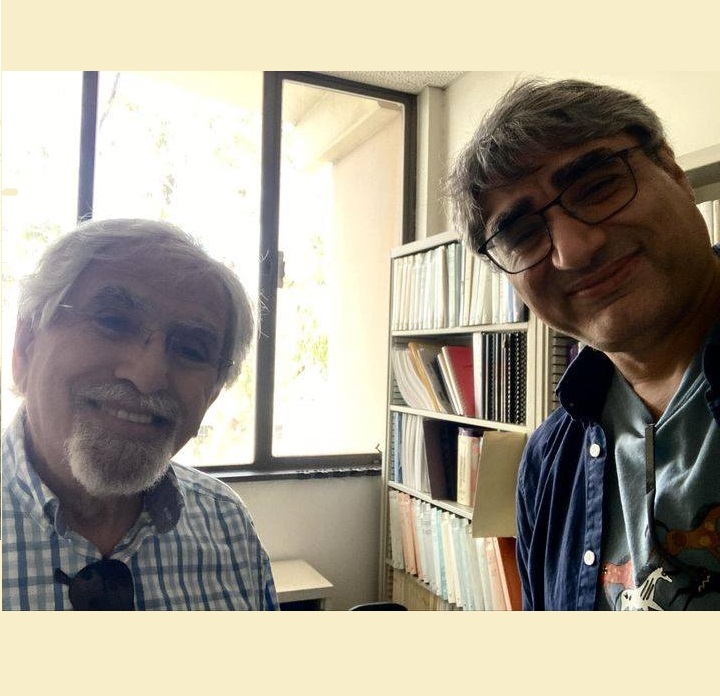

 (1) Images of the day: [Left] Selfie with Dr. Hamed Ghoddusi (see the next item below). [Center] My first cars (see the last item below). [Right] The house where I lived 54 years ago (see the next to the last item below).
(1) Images of the day: [Left] Selfie with Dr. Hamed Ghoddusi (see the next item below). [Center] My first cars (see the last item below). [Right] The house where I lived 54 years ago (see the next to the last item below).
(2) Meeting a colleague and fellow-Iranian: Professor Hamed Ghoddusi of Cal Poly SLO College of Business paid a visit to UCSB on Tuesday 7/09, during which we had a productive chat. Our conversation introduced me to the Shapley–Shubik power index in weighted voting systems of the kind used, for example, in corporate decision-making (where stock holdings determine the weights) and in the UN Security Council (where weights are based on a country's status as permanent or non-permanent member). Fascinating stuff that help my research and teaching on voting algorithms.
(3) Emergence of self-replicating digital life: "A self-replicating form of artificial life has arisen from a digital 'primordial soup' of random data, despite a lack of explicit rules or goals to encourage such behaviour. Researchers believe it is possible that more sophisticated versions of the experiment could yield more advanced digital organisms, and if they did, the findings could shed light on the mechanisms behind the emergence of biological life on Earth."
(4) Iran's shadow government: Operating under the Supreme Leader, the shadow government has a shadow president and shadow ministers that must approve every decision.
(5) Free Iranian cultural program in Beverly Hills: Sunday, July 21, 2024, Beverly Gardens Park, 9439 Santa Monica Blvd. Includes Persian food truck. Sponsored by Farhang Foundation.
(6) My first two cars (early 1970s): A couple of months after arriving at UCLA in 1970, I decided to buy a car, because it was impossible to get around without one. I bought a brown Oldsmobile Delta-88 V8 gas guzzler for $200 (quite a sum for my budget)! It ran well and had a lot of power, but luxury Detroit cars had very low resale value. When I had a bit more money due to my income as a research assistant a couple of years later, I upgraded to a metallic blue Ford Mustang convertible, which I bought for about $700. It looked good on the outside, but nothing in it worked: The top could not be retracted, except manually with a lot of effort; power windows wouldn't roll up or down. I suspected the person who sold it to me to be a gang member or drug dealer. The photos aren't of the actual cars but Internet photos that I have picked to be similar to my cars.
(7) Memories of my arrival at UCLA in 1970: For a few months 54 years ago, I lived at a boarding house near the UCLA campus. In exchange for a discounted rate, which was all I could afford at the time, we helped with cleaning, meal service, and dishwashing. when I visited UCLA in mid-June to attend a graduation ceremony, I took this photo in front of the house which I believe was the location of the boarding house.
2024/07/08 (Monday): Presenting selected news, useful info, and oddities from around the Internet.

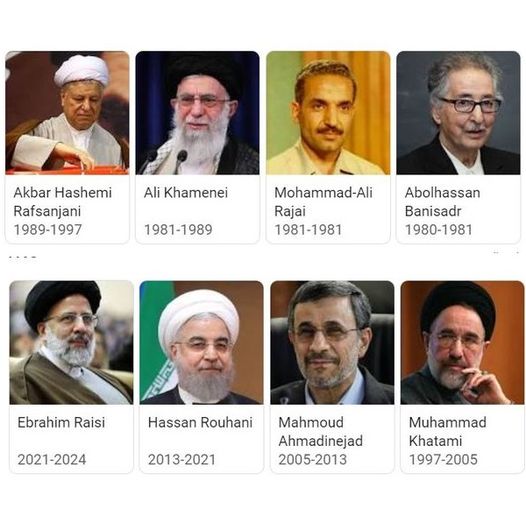
 (1) Images of the day: [Left] Reality check for those who thought Iran's various presidential candidates were different: Pezeshkian declares his commitment to Hezbollah and other factions of "the Resistance Front." [Center] The fate of Iran's past presidents: They are all dead or sidelined, unable to speak their minds, the only exception being Ali Khamenei, the Supreme Leader. Presidents in Iran are discarded like soiled bathroom tissue. [Right] Project 2025 is a blueprint for the second Trump administration: Prepared by the Heritage Foundation, it guts multiple government programs and rolls back many social advances of the past few decades.
(1) Images of the day: [Left] Reality check for those who thought Iran's various presidential candidates were different: Pezeshkian declares his commitment to Hezbollah and other factions of "the Resistance Front." [Center] The fate of Iran's past presidents: They are all dead or sidelined, unable to speak their minds, the only exception being Ali Khamenei, the Supreme Leader. Presidents in Iran are discarded like soiled bathroom tissue. [Right] Project 2025 is a blueprint for the second Trump administration: Prepared by the Heritage Foundation, it guts multiple government programs and rolls back many social advances of the past few decades.
(2) What we all suspected is officially confirmed: Anti-Israeli protests in the US were informationally, logistically, and financially supported by Iran's Islamist government.
(3) "Only the Lord Almighty could convince [me] to step aside." ~ Joe Biden
Wrong answer! It's not about you, Joe! You should have said something to the effect that you are bent on the Democrats winning the White House in 2024 and that if you perceive that your candidacy jeopardizes this goal, you'd happily step aside.
(4) One-liners: Brief news headlines, happenings, memes, and other items of general interest.
- New York Times calls for Biden to drop out. But so far, no call for the felon to drop out!
- Columbia U. removes tree deans because their text-message exchanges contained anti-Semitic tropes.
- Lehigh U. student who won a full scholarship with fake documents and a ChatGPT-written essay is expelled.
- Iran's so-called "Reformist" President reassures Russia and Hezbollah of Iran's continued support.
- Erdos-Straus conjecture: For any integer n > 1 there are positive integers x,y,z such that: 4/n=1/x+1/y+1/z
- Facebook memory from July 8, 2019: Kissing the ruler's hand is in conflict with democracy.
(5) Oops, they did it again: StorageReview engineers set a new world record by calculating pi to more than 202 trillion digits using dual Intel Xeon 8592+ CPUs and 28 Solidigm P5336 61.44TB NVMe SSDs. Their previous record of 105 trillion digits was set earlier this year using a dual processor 128-core AMD EPYC 9754 Bergamo system with 1.5TB of DRAM and almost a petabyte of Solidigm QLC SSDs.
(6) Emergence of self-replicating digital life: "A self-replicating form of artificial life has arisen from a digital 'primordial soup' of random data, despite a lack of explicit rules or goals to encourage such behaviour. Researchers believe it is possible that more sophisticated versions of the experiment could yield more advanced digital organisms, and if they did, the findings could shed light on the mechanisms behind the emergence of biological life on Earth."
(7) Princeton University should fire Hossein Mousavian: He was linked by the German government to an assassination squad that killed four Iranian dissidents in Berlin's Mykonos Restaurant, Mafia-style, when he was Iran's Ambassador in Bonn.
2024/07/07 (Sunday): Presenting selected news, useful info, and oddities from around the Internet.


 (1) Images of the day: [Left] Our Fourth of July Weekend BBQ at my sister's, combined with belated birthday celebration for her daughter. [Center] Math puzzle: Determine the areas A, B, and C of the three triangles. [Right] NYC has turned into the world headquarters of observation decks and summer dresses (NYT photos).
(1) Images of the day: [Left] Our Fourth of July Weekend BBQ at my sister's, combined with belated birthday celebration for her daughter. [Center] Math puzzle: Determine the areas A, B, and C of the three triangles. [Right] NYC has turned into the world headquarters of observation decks and summer dresses (NYT photos).
(2) Iran's election result: Masoud Pezeshkian becomes Iran's new president with 16.3 million votes to Saeed Jalili's 13.5 million votes. Voter participation was announced as 49.6%. These numbers are highly suspicious, as they come from the government, with no internationally recognized election monitors.
(3) Not one photo or video has been published by Iran's Islamic regime to show crowds of voters at the precincts consistent with the 30 million (49.6%) turnout. The turnout for the first round of voting is widely believed to have been 13.3%. The second round's turnout is estimated to be ~10%. Iran allows no international observers for its elections. Government officials run the polls and report the results.
(4) Talk about apartheid! In Islamic Iran, multiple classes of people are defined, each class with a different set of rights. In addition to gender apartheid, there is religious apartheid (Muslim vs. non-Muslim; Shi'i vs. Sunni; people of the book vs. those with no book), and clergy vs. laymen. The clergy even have their separate courts and system of justice.
(5) Another analysis of Iran's election data: Dividing the total number of votes cast by the claimed participation ratio should give you the number of eligible voters. This latter number rose substantially in the week between the election and the run-off. Another clear indication of fraud. [Tweet, withy video]
(6) Iran's new president faces reality: His announced news conference with domestic & foreign reporters was cancelled on orders from the Supreme Leader. One of his strongest advocates, a professor & lawyer, was arrested. And he claims he never promised to remove the filtering of the Internet. Who's the boss?
(7) Iran's Islamic regime survives because even though most Iranians live in poverty and face economic hardships, those who prop up the brutal dictatorship live in 10,000-square-foot luxury penthouses. [Video]
(8) Final thought for the day: If one person says it's raining, and the other says the sun is shining, it's not the media's job to quote them both. It's their job to look out the window and report the truth.
2024/07/05 (Friday): Presenting selected news, useful info, and oddities from around the Internet.
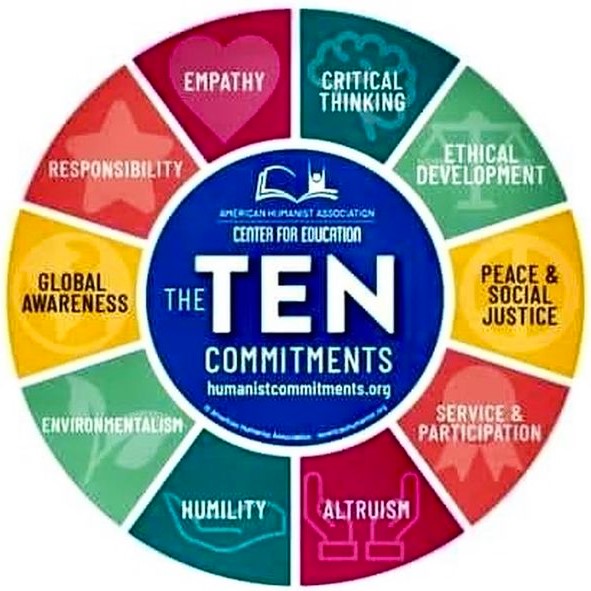

 (1) Images of the day: [Left] Ditch the Ten Commandments: Post these Ten Commitments in schools instead. [Center] Cartoon of the day: The conservative majority of the new US Supreme Court. [Right] Not-so-subtle message to the White House occupant.
(1) Images of the day: [Left] Ditch the Ten Commandments: Post these Ten Commitments in schools instead. [Center] Cartoon of the day: The conservative majority of the new US Supreme Court. [Right] Not-so-subtle message to the White House occupant.
(2) America celebrated its independence from the British Empire yesterday: Algeria does it today. Dozens of other countries that have seceded from the British Empire celebrate the event on various dates.
(3) Islamic Iran's extreme apartheid recognizes seven classes of people, each with a different set of rights: From lowly voters at the bottom to male Shi'i Muslim clerics owning the highest positions of power. Vote if you want but know that your vote is a tool of power for the top class.
(4) One-liners: Brief news headlines, happenings, memes, and other items of general interest.
- At Germany's request, EU begins the process of designating Iran's IRGC as a terrorist group.
- German scientists have seen ants bite off others' legs to prevent the spread of infections from open wounds.
- Science humor: Is Iron-man the same as Fe-male?
- I had forgotten how wonderful Jose Feliciano sounded on the acoustic guitar. Enjoy!
[5-minute video]
(5) Iran's former FM Javad Zarif sounds different these days: Gone are his unapologetic desire for meddling in the affairs of Iraq, Syria, & Lebanon and his pride in being under pressure for supporting Palestine.
(6) Greece has chosen to go against the trend: Many countries are considering shortening the work week to 4 days, which research shows benefits productivity and improves employee well-being. Greece is lengthening the work week to 6 days to boost national productivity and give workers additional overtime pay.
(7) Academic freedom can quickly disappear just like any other freedom: "Academics researching online misinformation in the US are learning a hard lesson: Academic freedom cannot be taken for granted. They face a concerted effort—including by members of Congress—to undermine or silence their work documenting false and misleading internet content. The claim is that online misinformation researchers are trying to silence conservative voices. The evidence suggests just the opposite."
(8) Final thought for the day: I hope Joe Biden does not commit the same mistake as Ruth Ginsberg. She refused to retire until it was too late and we lost one Supreme Court seat. A 5-4 conservative majority would have been a lot better than the current 6-3 supermajority.
2024/07/04 (Thursday): Presenting selected news, useful info, and oddities from around the Internet.



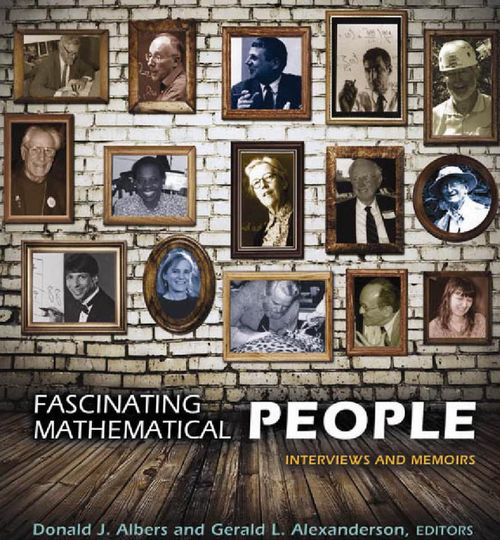

 (1) Images of the day: [Top left] Happy birthday to America! Dark clouds cover our country this July 4th. But we will replace these dark clouds with bright, sunny skies soon. We have done it before and we will do it again! [Top center & right] Throwback Thursday: Georgia "Tiny" Broadwick was the first woman to parachute from an airplane. To perform this feat, she hung from a trapeze-like swing suspended beneath the airplane just behind the wing. [Bottom left] Book introduction: This book presents a diverse group of mathematicians, including Donald G. Saari, whom I got to know through his research on social choice, but he has very broad interests. [Bottom center] Range of accurate weather forecasts in the US: Seven days out in southern Florida, 4-5 days out in the Southwest region, 3-4 days out in coastal areas, and no more than 2 days out in the central plains. [Bottom right] A curious engineer's musings on the tail-lights of modern cars (see the next item below).
(1) Images of the day: [Top left] Happy birthday to America! Dark clouds cover our country this July 4th. But we will replace these dark clouds with bright, sunny skies soon. We have done it before and we will do it again! [Top center & right] Throwback Thursday: Georgia "Tiny" Broadwick was the first woman to parachute from an airplane. To perform this feat, she hung from a trapeze-like swing suspended beneath the airplane just behind the wing. [Bottom left] Book introduction: This book presents a diverse group of mathematicians, including Donald G. Saari, whom I got to know through his research on social choice, but he has very broad interests. [Bottom center] Range of accurate weather forecasts in the US: Seven days out in southern Florida, 4-5 days out in the Southwest region, 3-4 days out in coastal areas, and no more than 2 days out in the central plains. [Bottom right] A curious engineer's musings on the tail-lights of modern cars (see the next item below).
(2) Musings of a curious engineer: Lately, I have been paying attention to tail-lights on cars and noticed that you can divide them into two categories. One category is when the tail-light extends onto the trunk lid; another when the tail-light ends before the trunk lid begins. Based on my small sample, the former category is more common. Why is this important? When the tail-light extends onto the trunk lid, a separate set of wires must be included to direct power to that section of the tail-light. So, car design engineers should be motivated to avoid this situation in order to minimize the production cost. There is also the issue of reliability due to cables connecting to a moving trunk lid. Of course, aesthetics and ease of access to the trunk are quite important as well. Pay attention to different car models and decide which kind of tail-light looks better.
(3) Facebook memory from July 4, 2023: Happy 4th to everyone not pleading the 5th about the 6th!
(4) Facebook memory from July 4, 2022: Observing America's birthday is an excellent occasion for reflecting on our relationship with the original owners of this land.
(5) Facebook memory from July 4, 2010: My Persian poem advocating unity & equality (inspired by Jack Johnson's story and what the phrase "the great white hope" signified).
(6) Greece has chosen to go against the trend: Many countries are considering shortening the work week to 4 days, which research shows benefits productivity and improves employee well-being. Greece is lengthening the work week to 6 days to boost national productivity and give workers additional overtime pay.
(7)Trump's lies and racist/xenophobic comments during the first presidential debate were overshadowed by Biden's miserable performance: During the debate, Trump referred to Biden as a Palestinian (evidently, he considers "Palestinian" a pejorative term). He then said on the very next day, "Look at a guy like Senator Schumer. I've always known him, known him a long time. I come from New York; I knew Schumer. He's become a Palestinian. He's a Palestinian now. Congratulations. He was very loyal to Israel and to Jewish people. He's Jewish. But he's become a Palestinian because they have a couple of more votes or something; nobody's quite figured it out." Again we see the use of "Palestinian" as a pejorative, along with the anti-Semitic trope: If Schumer criticizes the Israeli government, he is a scheming Jew or he must have been bought off.
2024/07/03 (Wednesday): Presenting selected news, useful info, and oddities from around the Internet.

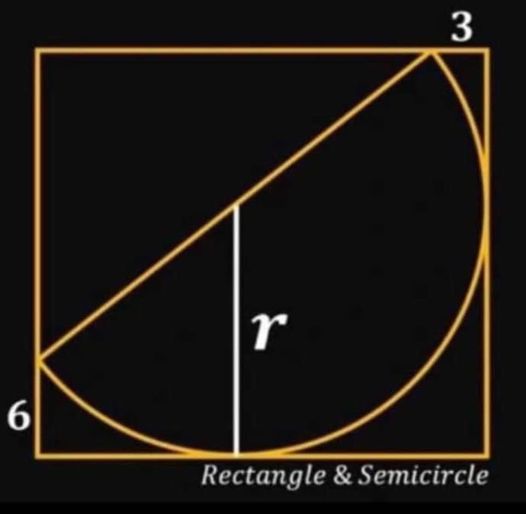
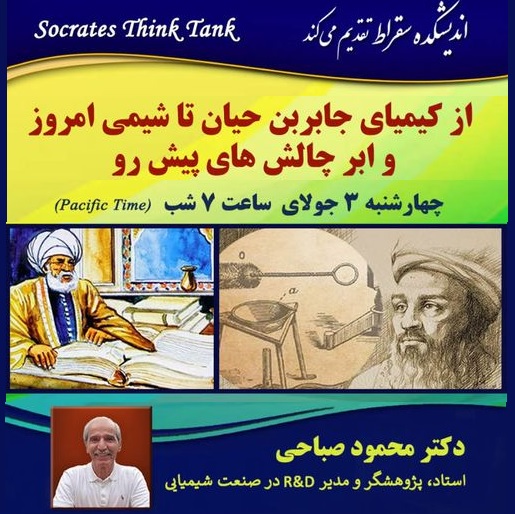 (1) Images of the day: [Left] New robe design for the US Supreme Court. [Center] Math puzzle: Find the radius r of the semicircle inside the square. [Right] Socrates Think Tank talk (see the last item below).
(1) Images of the day: [Left] New robe design for the US Supreme Court. [Center] Math puzzle: Find the radius r of the semicircle inside the square. [Right] Socrates Think Tank talk (see the last item below).
(2) Wonders of number theory: For m no less than 25, there exists at least one prime number between m and 6m/5 (Theorem due to Nagura). Then, because the 26th prime is 101 and (1.2)^26 ~ 114.48, we can show by induction on n that the nth prime is less than (1.2)^n.
(3) One-liners: Brief news headlines, happenings, memes, and other items of general interest.
- Peaceful transfer of power in the Netherlands: Outgoing PM delivers the reigns of power and bikes home.
- California's $300 billion 2024-2025 budget includes significant cuts for UC and Cal State.
- Californians are warned about a dangerous heat wave in the week ahead.
- A heat wave is coming our way this weekend: Stay in the shade and hydrated. [Tweet, with chart]
(4) Tonight's Socrates Think Tank talk: Dr. Mahmoud Sabahi spoke under the title "From Jaber ibn Hayyan's Alchemy to Today's Chemistry and Super-Challenges Ahead." There were ~105 attendees.
Alchemy, from the Greek root "khemia" ("kimia" in Persian), was a cult "science" with the goal of converting base metals into gold or to find a universal elixir. Works attributed to the Father of Chemistry Jabir ibn Hayyan, which are tentatively dated to 850-950 CE, contain the oldest known systematic classification of chemical substances, and the oldest known instructions for deriving an inorganic compound, ammonium chloride, from organic substances, such as plants, blood, and hair, by chemical means.
Chemistry entered a new phase when chemists succeeded in producing hydrogen (which appears in nature only as compounds). This was followed by the production of ammonia, which has many applications (e.g., in agriculture). By the mid-20th-century, the US chemical industry created R&D labs in large numbers to exploit the practical benefits of new scientific discoveries. By 2013, the total value of the chemical industry reached $3.5 trillion, and continued to grow exponentially in the decade since.
Waste generation and pollution are the main challenges facing the chemical industry. In her 1962 book 'Silent Spring,' Rachel Carson brought attention to these problems. By 1990, a paradigm shift to "green chemistry" occurred, which advocated prevention rather than treatment of harmful waste. More recently, certain long-lasting chemicals, which do not deteriorate and thus find their way into our food supply and bodies, creating many health problems, have found widespread applications, from non-stick cookware to water-repellent & stain-resistant clothing.
In conclusion, Dr. Sabahi recommended a number of references to follow up on the topics discussed. The article "The Lawyer who became DuPont's Worst Nightmare," profiles Rob Bilott, who exposed a brazen, decades-long history of chemical pollution. The 2019 movie "Dark Waters" covers the same story. California is leading the way in regulating harmful chemicals (see, e.g., California PFAS Drinking Water Advisories). Finally, the 2006 NRC Report "Sustainability in the Chemical Industry: Grand Challenges and Research Needs" charts the industry's path ahead.
2024/07/02 (Tuesday): Presenting selected news, useful info, and oddities from around the Internet.
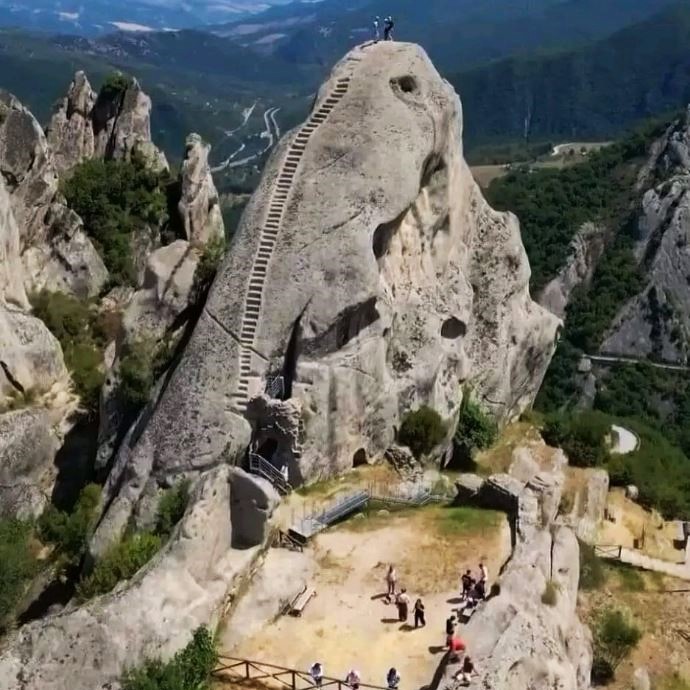

 (1) Images of the day: [Left] Would you dare climb these stairs? The 54 steps of the Norman staircase are carved into the rock of one of the mountain towers that overlook the ancient village of Castelmezzano, in the Lucanian Dolomites. The dizzying lookout point tells the story of conquests and battles that occurred more than 1000 years ago. [Center] Witch's stairs: So-named, because they were thought to confuse witches and thus protect occupants from them. Their design allows steeper inclines in houses with too little space for ordinary staircases. You can see them in very old New England homes. [Right] World's tallest tree: Hyperion, a coast redwood (Sequoia sempervirens) in California's Redwood National Park, is the world's tallest known living tree at 380.3 ft (115.92 m) tall. It's even taller than the Statue of Liberty.
(1) Images of the day: [Left] Would you dare climb these stairs? The 54 steps of the Norman staircase are carved into the rock of one of the mountain towers that overlook the ancient village of Castelmezzano, in the Lucanian Dolomites. The dizzying lookout point tells the story of conquests and battles that occurred more than 1000 years ago. [Center] Witch's stairs: So-named, because they were thought to confuse witches and thus protect occupants from them. Their design allows steeper inclines in houses with too little space for ordinary staircases. You can see them in very old New England homes. [Right] World's tallest tree: Hyperion, a coast redwood (Sequoia sempervirens) in California's Redwood National Park, is the world's tallest known living tree at 380.3 ft (115.92 m) tall. It's even taller than the Statue of Liberty.
(2) An amazing math trick: Ask an opponent to choose a polynomial p(x) of any degree with nonnegative integer coefficients. Tell them you can determine what it is with just two values: You choose a and ask for p(a), then choose b and ask for p(b). What is a winning strategy?
(3) Serious cybersecurity warning: The United States, Canada, and Australia warn that 52% of 172 open-source projects studies contained code written in a memory-unsafe language.
(4) One-liners: Brief news headlines, happenings, memes, and other items of general interest.
- At least 27 people were killed in a stampede during a religious event in the Indian state of Uttar Pradesh.
- The US Men's National Soccer Team eliminated from COPA America after 0-1 group-stage loss to Uruguay.
- The sick world of teenage influencers: Who is she influencing when 92% of her followers are adult men?
- The Rubik's Cube turns 50: It is still as tough as ever to solve.
- Bringing Back Our Wetland: 68-minute documentary film produced by UCSB Cheadle Center.
(5) Million-dollar prize for AI to solve puzzles that humans find easy: Deducing the correct pattern that links pairs of colored grids relies on skills that AI models lack at present. Google's new $1 million prize will encourage the development of an AI that can solve such puzzles.
(6) Short list of five books for "UCSB Reads 2025" Program announcedby by UCSB Library:
- The Anthropocene Reviewed: Essays on a Human-Centered Planet (2021) by John Green
- The Book of Delights: Essays (2019) by Ross Gay
- The Rediscovery of America: Native Peoples and the Unmaking of US History (2023) by Ned Blackhawk
- Tomorrow, and Tomorrow, and Tomorrow (2022) by Gabrielle Zevin
- Why We Die: The New Science of Aging and the Quest for Immortality (2024) by Venki Ramakrishnan
(7) Letters from the former Shah of Iran to his father: Dr. Abbas Milani has gained access to 104 letters that the late Shah wrote to his father, who had instructed him to report on his condition and his academic progress weekly, while studying in Switzerland. Milani discusses these letters in this 13-minute video.
2024/07/01 (Monday): Presenting selected news, useful info, and oddities from around the Internet.

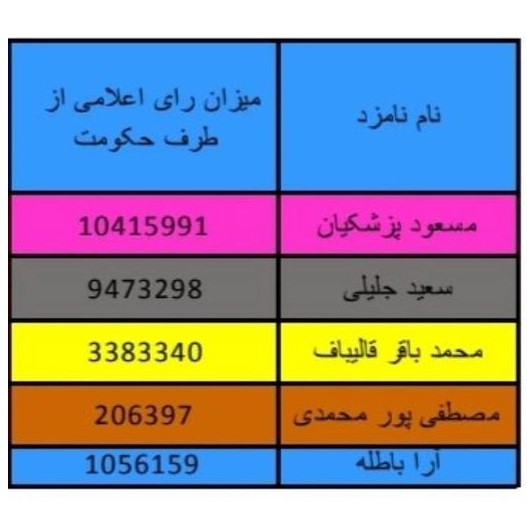
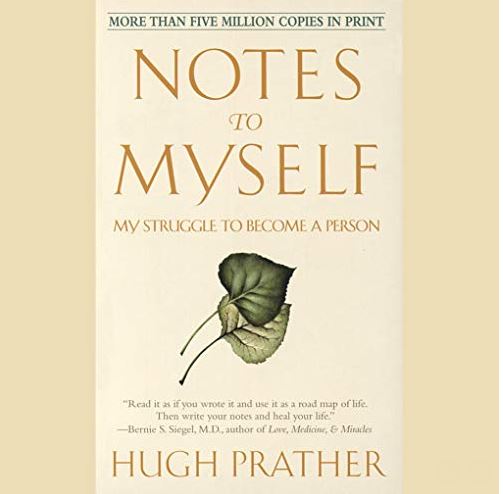 (1) Images of the day: [Left] Expressive fonts. [Center] Possible fraud in Iran's presidential election (see the next item below). [Right] Hugh Prather's Notes to Myself (see the last item below).
(1) Images of the day: [Left] Expressive fonts. [Center] Possible fraud in Iran's presidential election (see the next item below). [Right] Hugh Prather's Notes to Myself (see the last item below).
(2) Data detectives:There are methods for detecting fakery in data sets, the best-known of which is based on Benford's Law about distribution of digit values in large data sets. Today, the X (Twitter) platform is abuzz with an anomaly in Iran's reported election data. The numbers of votes for all four candidates, as well as the total number of votes and the number of invalid ballots are all multiples of 3. Given that the total number of votes isn't independent of the other five figures, the chance of this happening at random is (1/3)^5 or 0.4%, so there is speculation that election officials, under orders from higher-ups, have inflated the numbers by a factor of 3, to portray a 13.3% turnout as a 39.9% turnout. Even the inflated figure is an all-time low (it was 49% in the 2021 election, itself lowest up to that point). Users are also posting video clips of Supreme Leader Khamenei stating in 2001 that the 40% voter turnout in certain Western countries is a disgrace. [This post, in Persian]
(3) Remember that your vote isn't just for Biden vs. Trump: It is for Biden administration of competent progressives, vs. Trump administration of backward religious zealots who will roll back decades of gains in women's and minority rights.
(4) My disgust with some Iranian opposition groups: The X (Twitter) platform is filled with videos of Iranians verbally assaulting those who went to cast their ballots at IRI embassies, using the vilest language (sample). We are free to express our views or to boycott the show election, but should not verbally abuse or force others to act against their will, regardless of their beliefs or motivation. (I apologize for the language in this posted video, but wanted to give a representative example). [This post, in Persian]
(5) Book review: Prather, Hugh, Notes to Myself: My Struggle to Become a Person, unabridged 2-hour audiobook, read by Sean Patrick Hopkins, Random House Audio, 2021.
[My 4-star review of this book on GoodReads]
In exploring his own life in this book, first published in 1970, writer/editor Hugh Prather [1938-2010] helps the reader examine his/her own. Prather's aphorisms include "perfectionism is slow death" and "this anxiety running through my life is the tension between what I should be and what I am." Being grateful for who we are and what we have is a common theme in Prather's musings: "Another day to listen and love and walk and glory. I am here for another day. I think of those who aren't."
New York Times once opined: "Some of Mr. Prather's experiences come from having had seven 'parents,' including a drug addict, two alcoholics, an institutionalized mentally ill patient, a convicted murderer [one of his father's wives] and a convicted embezzler [one of his mother's husbands]." Prather confesses that adhering to the advice he dispenses is difficult, even for him. There are always exceptions!
Notes to Myself was not intended as a commercial book. It began as Prather's private musings on the nature of life, death, love, sex, and much else. After the immense success of his first book, Prather wrote several other self-help books, including two books for couples (co-authored by his wife, Gayle Halligan Prather): Notes to Each Other and Spiritual Parenting.
Comedy writer Jack Handy spoofed Notes to Myself in his public musings known as "Deep Thoughts," which became a recurring feature on the comedy show "Saturday Night Live" in the 1990s and was also released as a series of books.
2024/06/30 (Sunday): Presenting selected news, useful info, and oddities from around the Internet.


 (1) Images of the day: [Left] Hearty Iranian breakfast for three. [Center] A mechanical analog computer (see the next item below). [Right] Sohrab Ahmari's Tyranny, Inc. (see the last item below).
(1) Images of the day: [Left] Hearty Iranian breakfast for three. [Center] A mechanical analog computer (see the next item below). [Right] Sohrab Ahmari's Tyranny, Inc. (see the last item below).
(2) Mechanical analog computer from 1872 that predicted ocean tides: William Thomson (later Lord Kelvin) became rich from a patent for laying undersea telegraph cables, so he decided to buy a yacht as a summer home, where he hosted scientific parties. Based on his extensive observations and by applying harmonic analysis to tidal phenomena, he designed a device which traced the tidal curve for a given location. Mechanical tide-predicting machines remained in use until the 1950s, when they were replaced by digital computers.
(3) One-liners: Brief news headlines, happenings, memes, and other items of general interest.
- The choice is yours: The man who speaks the truth with some difficulty or the man who lies with ease.
- Good summation of the first US presidential debate and the Biden-vs.-Trump choice: It isn't even close!
- An introductory course on programming should be called "Programming 1100101," not "Programming 101"!
- My KIRN Radio Iran program on "Women in Science and Engineering" will be rebroadcast today at 6:00 PM.
(4) Iranian presidential election: Eligible voters ~61.5 million; Votes ~24 million (if you believe the regime); Turnout ~39% (This is a marked drop from the 49% turnout in 2021, which itself was a low up to that point). There will be a run-off between Masoud Pezeshkian (42.5% of the vote) and Saeed Jalili (38.6%).
(5) Book review: Ahmari, Sohrab, Tyranny, Inc.: How Private Power Crushed American Liberty—and What to Do About It, unabridged 8-hour audiobook, read by the author, Random House Audio, 2023.
[My 4-star review of this book on GoodReads]
Unchecked corporate power is being criticized both from the left and from the right, with members on one side of the spectrum occasionally even endorsing or praising ideas from the other side. Ahmari, a conservative, dedicates his book to "Adrian, Chad, Gladden, and Patrick"; first names of a group that were co-founders of the Substack newsletter Postliberal Order. Shoshana Zuboff, a decidedly liberal author and professor, had previously written The Age of Surveillance Capitalism (my review) on the horrors of illicit corporate power gained through amassing users' private information.
According to Ahmari, unchecked corporate power hurts both employees (e.g., through so-called flexible contracts and mandatory arbitration agreements) and consumers (privatization of vital emergency services, local newspapers going under, the rich-friendly bankruptcy law that allowed Purdue Pharma to escape liability for the opioid crisis). These are important concerns for our society, whether you consider them populist or conservative musings.
Ahmari's ideas are more FDR than Ronald Reagan, more Ruth Bader Ginsburg than SCOTUS's conservative opinion approving of arbitration clauses, more Elizabeth Warren than Paul Ryan, more an Amazon whistle-blower than corporate lawyers defending Amazon's miserable COVID response. For the ills he enumerates, Ahmari places the blame on the economic liberalism of the right and the social liberalism of the left. One remedy is to restore workers' rights, that are gradually disappearing, through the establish
2024/06/29 (Saturday): Presenting selected news, useful info, and oddities from around the Internet.
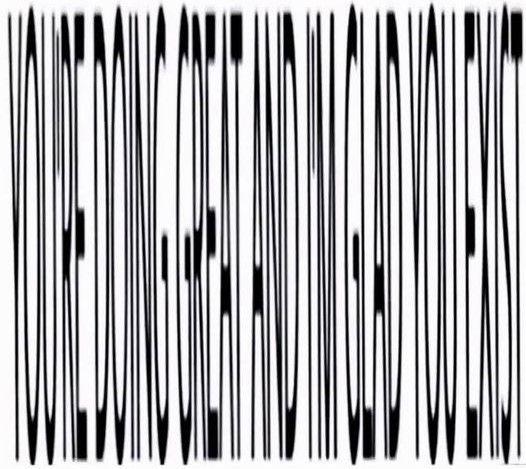
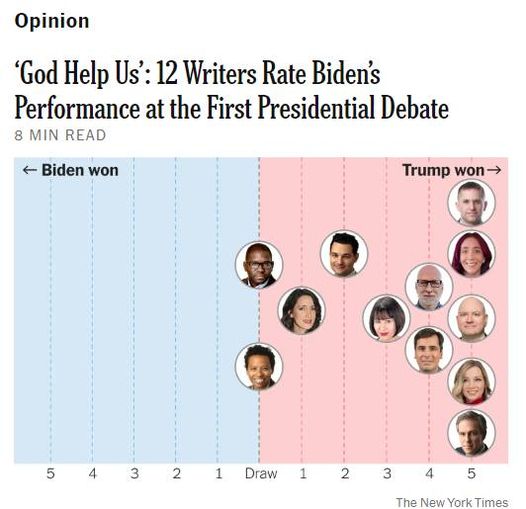
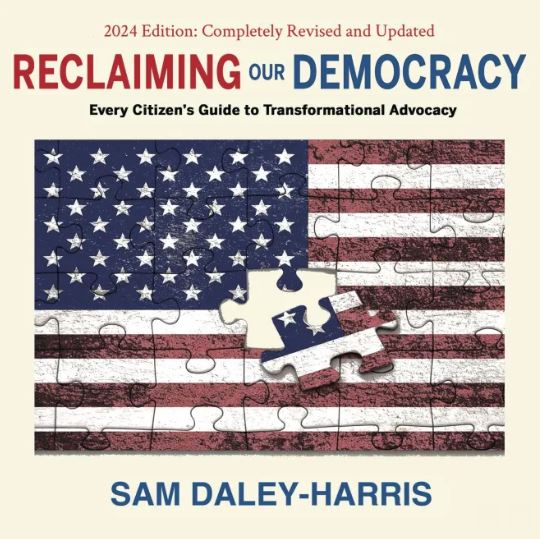 (1) Images of the day: [Left] To make sense of this image, hold it nearly horizontally and look at it from the bottom edge. [Center] Yes, Biden's 3.5-year record as President is more important than his performance in a 90-minute debate. But we live in the age of soundbites. Biden must show his decency by stepping aside & letting someone else confront Trump's lies & vitriol with words that Americans understand. P.S.: Trump's many debate lies were fact-checked live on CNN. [Right] Reclaiming Our Democracy (see the last item below).
(1) Images of the day: [Left] To make sense of this image, hold it nearly horizontally and look at it from the bottom edge. [Center] Yes, Biden's 3.5-year record as President is more important than his performance in a 90-minute debate. But we live in the age of soundbites. Biden must show his decency by stepping aside & letting someone else confront Trump's lies & vitriol with words that Americans understand. P.S.: Trump's many debate lies were fact-checked live on CNN. [Right] Reclaiming Our Democracy (see the last item below).
(2) What kind of debate prep team does Biden have? Why don't they prep him to answer with short, clear statements, rather than long-winded sentences, in the middle of which he gets lost?
(3) First, Louisiana makes posting of the Ten Commandments mandatory in classrooms. Now, Oklahoma requires public schools to teach the Bible. And these are 40th- and 43rd-ranked states in terms of K-12 education, according to US News & World Report!
(4) California Public Utilities Commission rejects a petition by AT&T to cut off millions of Californians from their landline phone service: AARP on behalf of its senior-citizen members, who depend on landlines, successfully lobbied for the rejection. AT&T will go to the CA State Legislature next, in an effort to overturn the rejection.
(5) Book review: Daley-Harris, Sam, Reclaiming Our Democracy: Every Citizen's Guide to Transformational Advocacy, unabridged 11-hour audiobook, read by author, Rivertowns Books, revised & updated edition, 2024.
[My 4-star review of this book on GoodReads]
This is a detailed account of citizen activism by Sam Daley-Harris, who founded RESULTS (originally an acronym for Responsibility for Ending Starvation Using Legislation, Trimtabbing, and Support) in 1980 to facilitate citizen advocacy by training the participants in methods of influencing politicians and journalists, editorial writers, in particular. Trimtabbing is a reference to trim tabs, the small surfaces that allow boat or aircraft pilots to control larger control surfaces like rudders or elevators and which were popularized as a metaphor for individual empowerment by Buckminster Fuller in a 1972 interview.
This 20th-anniversary edition has a new chapter on Citizens Climate Lobby, a powerful new advocacy group following the RESULTS model, and another new chapter on Center for Citizen Empowerment and Transformation, which is focused on spreading the original concepts developed by RESULTS to help reduce malnutrition and preventable disease with what Daley-Harris calls "transformational advocacy" based on three pillars: An organizational structure supporting volunteers with a clarity of purpose and high expectations; A disciplined outreach plan that produces letters to elected officials & editorials to newspapers, while also cultivating close personal relationships with politicians & journalists; The empowering value of idealism.
The account is a bit too drawn out and, at times, repetitive, but the message is something that every American should hear. The ideas described are universal and useful to world citizens, but much of the specific suggestions and action strategies may not apply outside the US.
A conversation with Sam Daley-Harris in this 26-minute video provides a good overview of the key ideas.
2024/06/28 (Friday): Presenting selected news, useful info, and oddities from around the Internet.
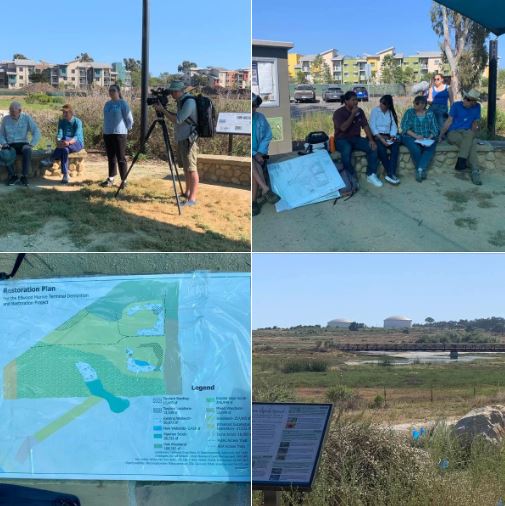

 (1) Images of the day: [Left & Right] Ellwood Marine Terminal Restoration Project (see the next item below). [Center] Talangor Group program on elections and history of Islamic seminaries (see the last item below).
(1) Images of the day: [Left & Right] Ellwood Marine Terminal Restoration Project (see the next item below). [Center] Talangor Group program on elections and history of Islamic seminaries (see the last item below).
(2) Ellwood Marine Terminal Restoration Project: Yesterday, I went on an informative 2.5-hour tour, organized by UCSB's Cheadle Center for Biodiversity & Ecological Restoration. The two oil storage reservoirs, seen at a distance from UCSB North Campus Open Space Visitor Center in one of the photos, will be demolished beginning in October 2024, and the large parcel of land connecting the Open Space to the Pacific Ocean will be reconfigured, restored, and landscaped to its original state before oil exploration in the area began. The reservoirs were used for many years to store oil coming from Platform Holly, with tanker trucks transporting it to various destinations. Representatives from Chumash People have been given front-row seats in the planning and restoration processes. [Project Web site]
The two oil storage reservoirs and a smaller water reservoir, used for firefighting, will be demolished, all electric wires & poles will be removed, and trails & visitor amenities will be built for the local community to enjoy the area's breathtaking views. Trails will become open to the public shortly after the demolition work this fall, as the multi-year restoration work proceeds in parallel. The vicinity of the Marine Terminal is one of my favorite areas for walking, so, I'm excited about the restoration work. [2-minute video]
(3) Today is 2*pi Day (2 * 3.14 = 6.28), aka tau day: According to some, tau is a more-important constant than pi. Mathematician Michael Hartl liked tau so much better than pi that he wrote the Tau Manifesto.
(4) Last night's Talangor Group program: Dr. Mostafa Daneshgar Rahbar (Assistant Professor of Intelligent Systems, Lawrence Technological U.) spoke under the title "History of Islamic Seminaries." Dr. Daneshgar Rahbar has a PhD in engineering, but he was also concurrently educated at a seminary, although the latter background is not reflected on his LinkedIn profile. There were ~65 attendees.
Prior to the main talk, there was open discussion on the concurrently-unfolding first US presidential debate and on Iran's presidential election, scheduled for the following day.
Dr. Daneshgar Rahbar began by clarifying that his talk's focus will be on Shiite Islamic seminaries, geographically distributed, for the most part, in Iran, Iraq, Saudi Arabia, and Lebanon.
The history of Islamic seminaries spans a timeline that began with Shi'i Imams and continued with a few key personalities, once the 12th Imam purportedly went into hiding. The appearance of Islamic seminaries was part of the institutionalization of Shiite Islam, which took hold at the time of the 6th Shi'i Imam, Ja'far Sadeq.
Subjects taught at these seminaries include faith & reason, God & the universe, interpretation of Quran, teachings/traditions of the Prophet & Imams, prophecy, ethics, and religious/theological language. The seminaries are intimately tied to the notion of marja'-e taqlid (religious authority who should be imitated or followed) and operate within an extremely opaque financial system.
Some seminaries are local, whereas others are large institutions that train and "export" clerics to locations worldwide. Najaf seminary is a good example of such large, prestigious institutions. Iran's Qom Seminary is influential politically, but not necessarily from a religious standpoint.
Islamic seminaries that thrive are typically located next to important religious shrines. For example, Najaf is where Imam Ali is buried, Mashhad houses the tomb of Imam Reza, and Qom is the burial place of Hazrat-e Ma'soumeh.
The Najaf Seminary was for a long time the center of gravity for Shi'i Islam and housed & produced the most-respected Shiite leaders. There are many other centers of learning for Shi'i clerics, but Najaf can be likened to the MIT of Islamic seminaries. Iran's rulers tried to reduce Najaf's influence, but they did not succeed.
Searching the Internet for possible additional sources of information, I came across a 22-page article from 2021, entitled "Islamic Seminaries: A Brief Historical Survey."
2024/06/27 (Thursday): Presenting selected news, useful info, and oddities from around the Internet.


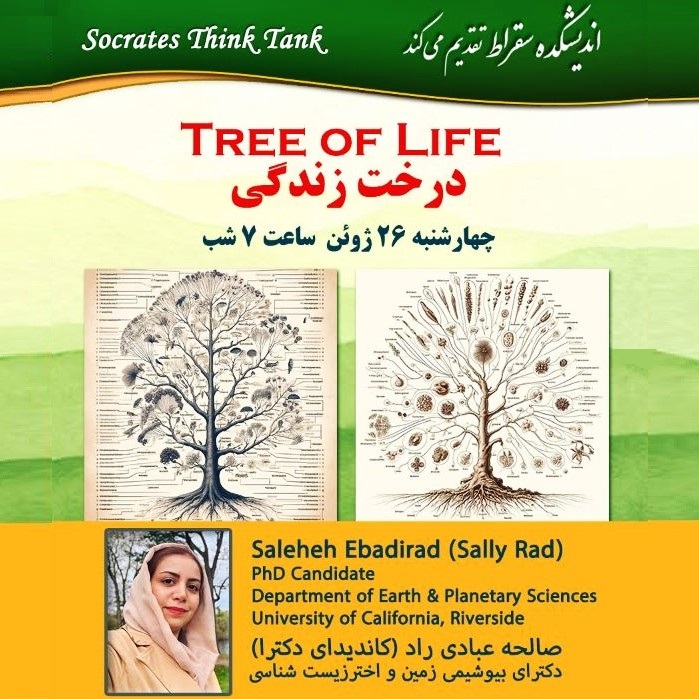 (1) Images of the day: [Left] Throwback Thursday (1): This family-run bookshop in Tehran has been operating for 150 years, since the Qajar era. [Center] Throwback Thursday(2): Ghahveh-khaneh (literally, "coffee house") was a fixture of Iran's society, before it was replaced in many instances by modern cafes and restaurants. They actually didn't serve coffee, but tea, plus a limited number of snacks and meals, the most-prominent among them being abgoosht ("meat stew"). [Right] Socrates Think Tank talk (see the last item below).
(1) Images of the day: [Left] Throwback Thursday (1): This family-run bookshop in Tehran has been operating for 150 years, since the Qajar era. [Center] Throwback Thursday(2): Ghahveh-khaneh (literally, "coffee house") was a fixture of Iran's society, before it was replaced in many instances by modern cafes and restaurants. They actually didn't serve coffee, but tea, plus a limited number of snacks and meals, the most-prominent among them being abgoosht ("meat stew"). [Right] Socrates Think Tank talk (see the last item below).
(2) SpaceX earns $843 million NASA contract to build a vehicle to remove the International Space Station from its orbit when its useful life ends in a few years.
(3) The sad state of open-access publishing: Publishers being paid for every article they publish is a recipe for disaster, as they have no incentive to reject fraudulent or marginal papers. Yet, we can't really go back to the undemocratic, closed-access model. Reforming the system is our only option.
(4) One-liners: Brief news headlines, happenings, memes, and other items of general interest.
- The presidential debate was pure torture. Biden had trouble enunciating words. Trump spoke too many lies.
- Israel's Supreme Court rules that Orthodox Jews, now exempt from military service, can be drafted to serve.
- Marching backwards: Infant mortality rate has ticked up in Texas following the state's abortion ban.
- With 500,000 unresolved fraud cases, identity theft overwhelms the US Internal Revenue Service.
- Two French teenagers, a forward and a center, are NBA's top draft picks.
- This woman in Shiraz, Iran, operates a mobile bookstore which she moves around on a bike.
- Patience is a superpower: 17-minute TEDx talk by Oliver Burkeman.
- Copa America: Panama defeats USA 2-1, making it tough for the US to advance from the group stage.
(5) Sickening: "If you want to be free to go out without your hijab, then aroused young men should be free to rape you." ~ Representative of Iran's presidential candidate who's closest to the Supreme Leader
(6) Last night's Socrates Think Tank talk: Saleheh Ebadirad (Sally Rad), a PhD candidate in biochemistry and astrobiology at UC Riverside, spoke under the title "Tree of Life."
Dr. Ebadirad began by presenting quite a few tree diagrams drawn by scientists at various junctures, each one showing the branching of the species on Earth, with the trees getting more sophisticated over time. She then discussed the various theories about the origins of life on Earth, including proteins hitching rides on asteroids. She showed a diagram that represented the proliferation and extinction of life forms, including the Cambrian explosion which happened around 530 million years ago and six extinction events, the last one of which is now in progress. She concluded her talk by speculating on the future development of the tree of life.
2024/06/26 (Wednesday): Presenting selected news, useful info, and oddities from around the Internet.

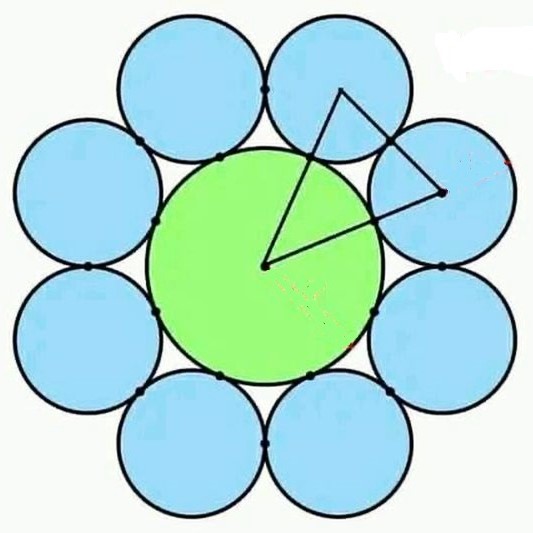
 (1) Math puzzlers: Find areas of the yellow triangles on the left & right and ratio of the radii in the middle.
(1) Math puzzlers: Find areas of the yellow triangles on the left & right and ratio of the radii in the middle.
(2) The presidential election circus in Iran: Only 3 days left to polling on June 28. All candidates have distanced themselves from harsh treatment of women on the streets for ignoring hijab laws. But this is par for the course. For decades, enforcement of hijab laws would wane as polling neared, only to pick up with greater intensity after the election. Iranian women are smarter than to fall for promises from someone, who, like all other Iranian presidents, will be a powerless figurehead who must defer to edicts of the Supreme Leader and his Islamic Revolutionary Guard Corps.
(3) Students way ahead of their professors in embracing AI: Half of the students surveyed indicated that AI has helped them attain better grades. Two out of five faculty members are familiar with AI, but only 14 percent said they are confident in their ability to use AI in their teaching.
(4) To people of Iranian heritage who support Trump: He says clearly that he will make a deal with Iran's Islamic regime (no change of leadership), because of the country's huge economic potential.
(5) World initiative on curbing hate speech and mis/disinformation: UN Secretary-General Antonio Guterres releases global principles that call on tech companies, advertisers, media, and other organizations to avoid using, supporting, or amplifying hate speech and mis/disinformation.
We can dismiss this effort as just another grandiose UN report that will sit on shelves, gathering dust. But, even though the UN lacks enforcement power to implement these recommendations, defining the problem and its dimensions is a useful start.
(6) Digital price-labels and dynamic pricing: Leading retailers are switching from printed price-labels on store shelves to digital displays. With digital labels, they will save money and also be able to adjust prices dynamically, perhaps several times per hour.
Dynamic pricing is totally consistent with the principle of supply-and-demand in a free-market economy. Yet, I find its use for basic commodities quite jarring. When you see a price on the store shelf, will you end up paying a different amount at check-out? Whereas with on-line shopping you can wait for an unreasonably high price to drop before you buy, you don't have the same option when shopping at a store.
We humans crave stability. Micro-level dynamic pricing feels like someone pulling the rug from under our feet. Already, prices fluctuate wildly at supermarkets: A 12-pack of soda can cost $7.99 one day, $5.99 the next day with a digital coupon, and $9.99 another day, with a buy-one-get-one-free deal. Dynamic pricing will only add to the existing chaos.
2024/06/24 (Monday): Presenting selected news, useful info, and oddities from around the Internet.

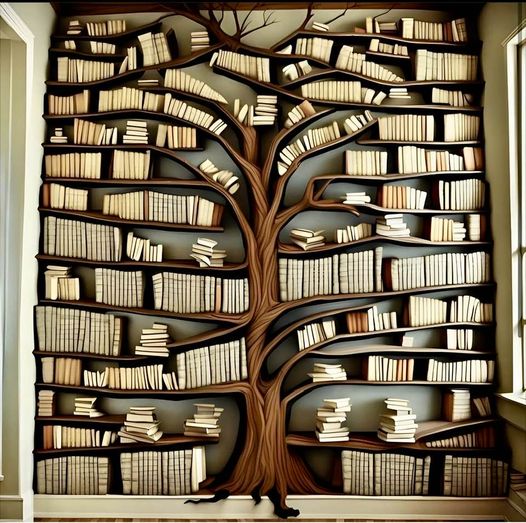
 (1) Images of the day: [Left] Sensible advice from your librarian. [Center] Home decor idea: Tree of knowledge. [Right] Michio Kaku's Hyperspace (see the last item below).
(1) Images of the day: [Left] Sensible advice from your librarian. [Center] Home decor idea: Tree of knowledge. [Right] Michio Kaku's Hyperspace (see the last item below).
(2) Coordinated terrorist attacks in Russia: Gunmen attacked a synagogue, a church, and a police station, killing at least two dozen people (15 of them policemen). [Washington Post]
(3) Human rights are universal, not relative: Flogging, cutting of hands, and stoning, even if they were part of the Iranian culture, which they are not, are inhumane. Charlatan Javad Zarif tries to justify Iran's compulsory hijab laws by claiming that every country has a dress code. When was the last time you saw US or European security forces drag a woman into a police van for violating the dress code? [Tweet, in Persian, with video]
(4) A part of Iran's influence campaign in the West: Javad Zarif led a campaign, aided by lobbyists of Iran's Islamist regime and paid "journalists," to portray General Qassem Soleimani a national hero and a terrorism fighter, instead of the criminal mass-murderer that he was. [Tweet, in Persian, with video]
(5) Book review: Kaku, Michio, Hyperspace: A Scientific Odyssey Through Parallel Universes, Time Warps, and the 10th Dimension, unabridged 14-hour audiobook, read by Tim Lounibos, Highbridge Audio, 2023.
[My 5-star review of this book on GoodReads]
Theoretical physicist Michio Kaku is a prolific writer. I have read several of his books, but Hyperspace impressed me the most in terms of content and presentation. Ever since Einstein, physicists have been obsessed with building a bridge between relativity and quantum theory, in order to synthesize a unifying theory, the so-called "theory of everything," that is applicable both at the scale of planets & galaxies and at the microcosmic world of subatomic particles.
Speculations about more dimensions, beyond the familiar three for space and one for time, have existed for decades, both in the scientific community and among sci-fi writers. Kaku reviews these dimensions up to 10 (that an 11th dimension would make the model most-stable, became known after this book had been written) and asserts that superstring theory dealing with these extra dimensions is the best approximation yet to the sought-after unified theory.
According to superstring theory, dimensions beyond the fourth are curled up at a microscopic level, thus making them imperceptible to us humans. We only perceive the four "big" dimensions. The imperceptibility of other dimensions can be likened to a 2-dimentional being, as postulated in Edwin A. Abbott's classic novella Flatland (my review), being totally unaware of the third space dimension.
Superstring theory posits that there are no elementary particles (like electrons or quarks). We have nothing but pieces of vibrating strings. Each vibration mode corresponds to a different particle and determines its charge and its mass. In the current understanding of the theory, those strings are not "made of" anything: they are the fundamental constituent of matter.
Superstring theory is so difficult that many of its key equations remain unsolved. But to gain insight about how the universe works does not require solving the equations in full. Kaku offers many examples from everyday life that help the reader understand what all the fuss is about and what scientists are actually working on or quarrelling about. In the process, he offers intelligent speculations on the possibility of time travel and faster-than-light movement via wormholes.
2024/06/23 (Sunday): Presenting selected news, useful info, and oddities from around the Internet.


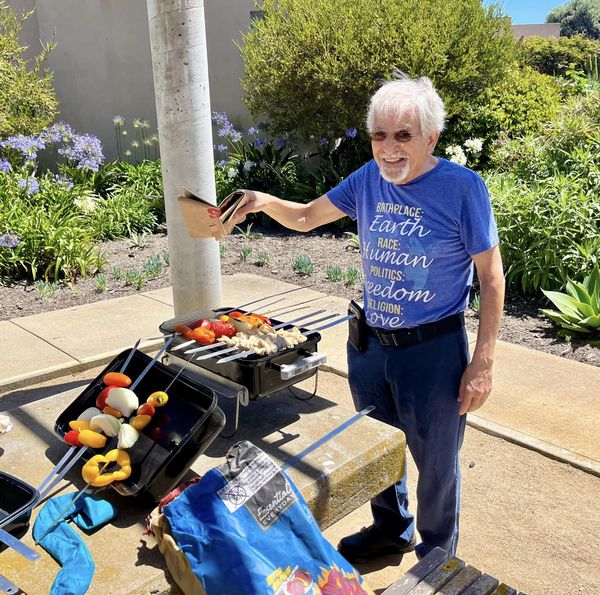 (1) (1) Yesterday's Summer Solstice Parade in Santa Barbara: Waiting along Santa Barbara Street, at Canon Perdido, for the Parade to arrive, scenes from the parade (2-minute video), and barbequing afterwards.
(1) (1) Yesterday's Summer Solstice Parade in Santa Barbara: Waiting along Santa Barbara Street, at Canon Perdido, for the Parade to arrive, scenes from the parade (2-minute video), and barbequing afterwards.
(2) Iranian rapper Toomaj Salehi's death sentence overturned on appeal: This is good news, but for every well-known person spared because of intense social-media campaigns and international pressure, dozens of lesser-known dissidents are executed quietly.
(3) The media is hyping the upcoming presidential debate: They use superlatives to reel us in. Oh, it's the earliest debate ever! It can shape the campaigns for months! And so on, and so forth. Take it from me, the debate will do nothing, just as criminal convictions accomplished nothing. The criminal charlatan will die if he isn't in the spotlight. He is gasping for air. Don't give him air!
(4) One-liners: Brief news headlines, happenings, memes, and other items of general interest.
- Undisputed leader: Iran accounts for 74% of global executions during 2023. [Amnesty International]
- EU Soccer: Switzerland was getting ready to celebrate when Germany tied the match 1-1 in stoppage time.
- Copa America soccer: USA defeated Bolivia in the group stage, 2-0. [9-minute highlights]
- A little puzzler: How many times do the two hands of a standard 12-hour clock meet each other during a day?
(5) KIRN Radio Iran (Los Angeles) program, on "The Status of Women in Science and Engineering," Sunday, June 23, 2024, at 6:00 PM PT. [Podcast]
(6) UCSB warns student protesters that their sprawling encampment was illegal and must be removed: After no action was taken by the protesters, UCSB has begun to remove the tents and other artifacts set up across a lawn in central campus. The protesters had also defaced parts of adjacent buildings. [From a letter sent to the campus community by Chancellor Yang]
2024/06/20 (Thursday): Presenting selected news, useful info, and oddities from around the Internet.
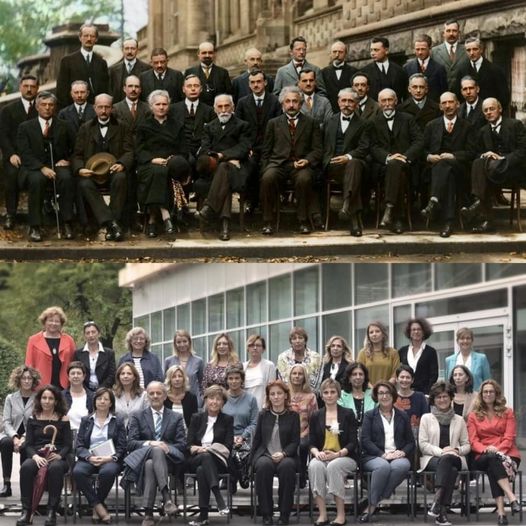

 (1) Images of the day: [Left] Throwback Thursday: The top photo, taken at a 1927 conference, is a virtual who's-who of the giants of physics. Marie Curie was the only woman among them. Ninety years later, a group of women physicists playfully recreated the photo with only one man among them. [Center] The heightened risk of nuclear war (see the last item below). [Right] A final thought for the day!
(1) Images of the day: [Left] Throwback Thursday: The top photo, taken at a 1927 conference, is a virtual who's-who of the giants of physics. Marie Curie was the only woman among them. Ninety years later, a group of women physicists playfully recreated the photo with only one man among them. [Center] The heightened risk of nuclear war (see the last item below). [Right] A final thought for the day!
(2) Happy summer! We are having beautiful weather in Santa Barbara, but nearly half of the US is experiencing a scorching heat wave already!
(3) Virginia Hislop just graduated from Stanford University's Graduate School of Education at the age of 105: She got her bachelor's of education in 1940, four years after enrolling at Stanford, but earning her master's of education got delayed by 84 years.
(4) One-liners: Brief news headlines, happenings, memes, and other items of general interest.
- Hundreds of Hajj pilgrims are reported dead from extreme heat in Saudi Arabia reaching 125 F. [WaPo]
- AI-assisted drones can decide which fruit to pick based on size, color, ripeness, & estimated sweetness.
- Time-lapse view of world airline traffic during 24 hours. [1-minute video]
- Dire Straits all-time greatest hits: Topped by their fantastic "Sultans of Swing." [113-minute audio file]
(5) Biden's lead among women voters has shrunk from 13% to 8%: How can a campaign be so out of touch to lose the support of women to a misogynist and rapist? Trump's lead among men remains in double-digits.
(6) Arvind Mithal (known simply as Arvind) dead at 77: The Charles W. & Jennifer C. Johnson Prof. of Computer Sci. & Eng. at MIT was known for his work on dataflow architectures and parallel computing. As a graduate student and later as a computer architecture researcher, I read many of Arvind's papers. RIP!
(7) Risk of nuclear war has become quite high: "Dark clouds loom on the nuclear horizon, with threats from all directions: Russia's nuclear bombast in its war on Ukraine, China's construction of hundreds of nuclear missile silos, North Korea's missile testing, India and Pakistan's ongoing nuclear competition, and Iran's push toward nuclear weapons capability. In response, US policy-makers are discussing whether a further American nuclear arms buildup is needed. At the same time, evolving technologies, from hypersonic missiles to artificial intelligence, are straining military balances and may be making them more unstable. The risk of nuclear war has not been so high since the Cuban Missile Crisis." ~ From Science magazine editorial, June 21, 2024
2024/06/19 (Wednesday): Presenting selected news, useful info, and oddities from around the Internet.

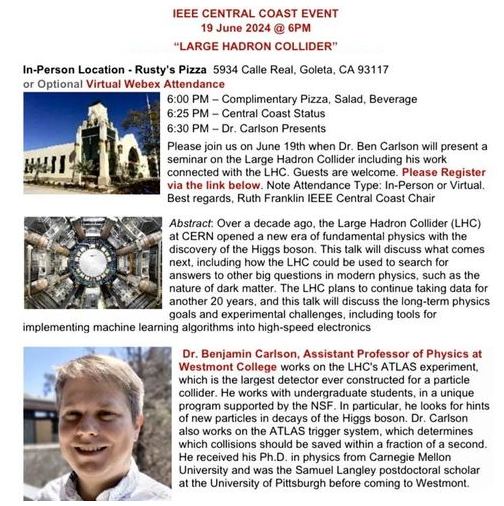
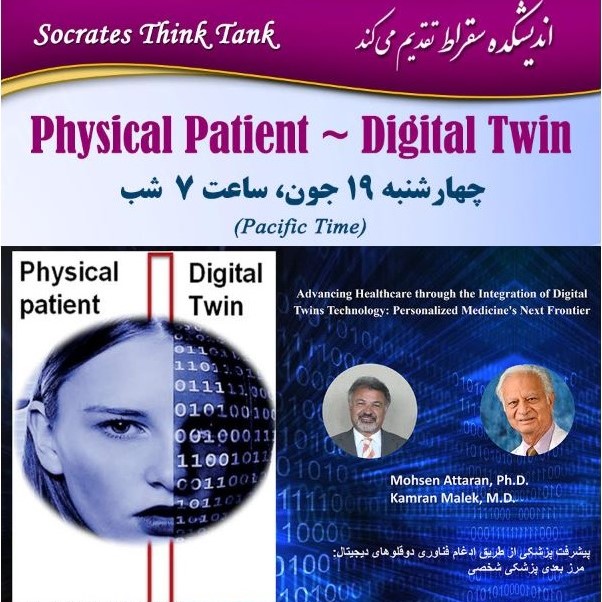

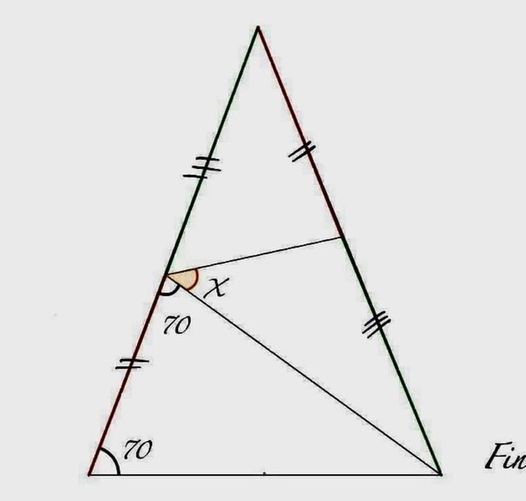
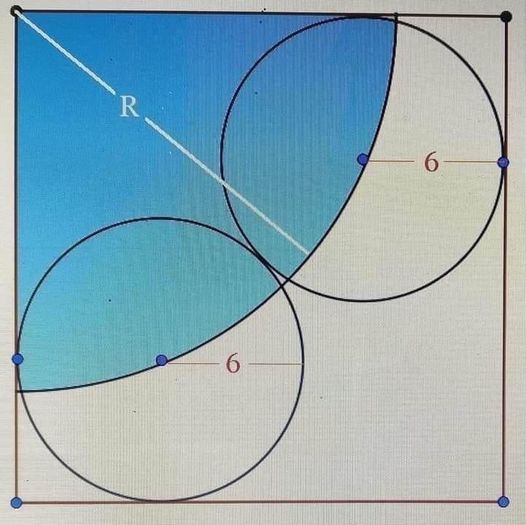 (1) Images of the day: [Top left] Celebrating Freedom Day: Juneteenth, the 19th day of June, commemorates the end of slavery in America's confederate states. On this day in 1865, that is, 159 years ago, the Union Army established authority over Texas, setting free the slaves who still didn't know about the Emancipation Proclamation of January 1, 1863. [Top center] Tonight's IEEE CCS tech talk (see the next item below). [Top right] Tonight's Socrates Think Tank talk (see the last item below). [Bottom row] Math puzzles: Find the area of the yellow triangle, the measure of the angle marked X, and the radius R of the blue quarter-circle.
(1) Images of the day: [Top left] Celebrating Freedom Day: Juneteenth, the 19th day of June, commemorates the end of slavery in America's confederate states. On this day in 1865, that is, 159 years ago, the Union Army established authority over Texas, setting free the slaves who still didn't know about the Emancipation Proclamation of January 1, 1863. [Top center] Tonight's IEEE CCS tech talk (see the next item below). [Top right] Tonight's Socrates Think Tank talk (see the last item below). [Bottom row] Math puzzles: Find the area of the yellow triangle, the measure of the angle marked X, and the radius R of the blue quarter-circle.
(2) Tonight's IEEE Central Coast Section tech talk: Dr. Benjamin Carlson (Westmont College) spoke under the title "Large Hadron Collider." The talk's more-detailed title was "Beyond the Higgs Boson: Using the Higgs Boson to Look for New Particles and the Future of LHC." Of particular interest is the pursuit of particles that may constitute dark matter.
The Large Hadron Collider (LHC) at CERN revolutionized modern physics when it helped discover the Higgs boson over a decade ago. The LHC will continue taking data for another 20 years, so long-term plans are being made for tackling a number of big questions, with understanding of dark matter being at the forefront.
(3) One-liners: Brief news headlines, happenings, memes, and other items of general interest.
- Canada designates Iran's Islamic Revolutionary Guard Corps a terrorist group. [Tweet, in Persian]
- Nvidia overtakes Microsoft and Apple Computer to become the world's most-valuable company. [WaPo chart]
(4) Louisiana passes a bill that requires the Ten Commandments to be displayed in every public classroom. At this rate, the Christian Republic of America isn't far away!
(5) Tonight's Socrates Think Tank talk: Dr. Mohsen Attaran and Dr. Kamran Malek made a joint presentation entitled "Physical Patient ~ Digital Twins."
First, Dr. Attaran discussed the notion of digital twins in general and in the special case of medical applications. A patient's digital twin is an electronic model that holds all pertinent medical information for him/her, including health history, surgeries, allergies, medications, implants, and so on.
Next, Dr. Malek discussed how a patient's digital twin facilitates and speeds up the diagnosis and helps identify appropriate treatments. The entire medical history of the patient, prior diagnoses, imaging results, are consulted and cross-checked within a fraction of a second; what used to take days with manual information requests and evaluations.
2024/06/18 (Tuesday): Presenting selected news, useful info, and oddities from around the Internet.
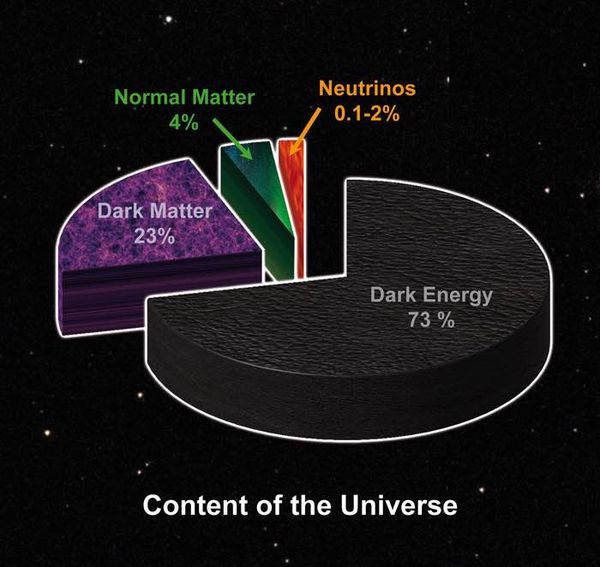
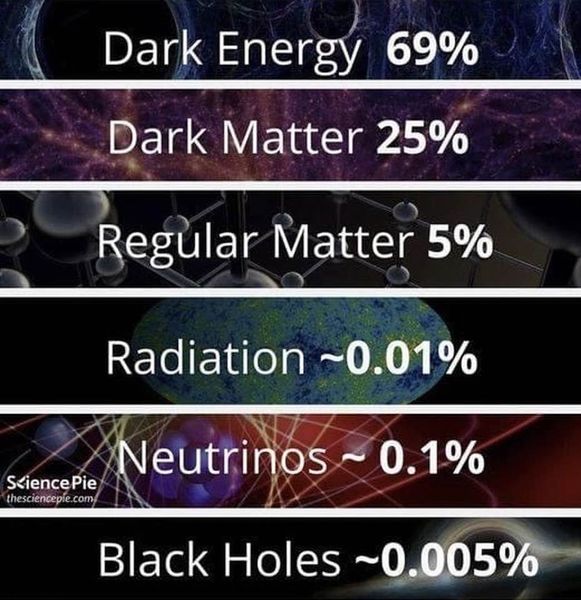

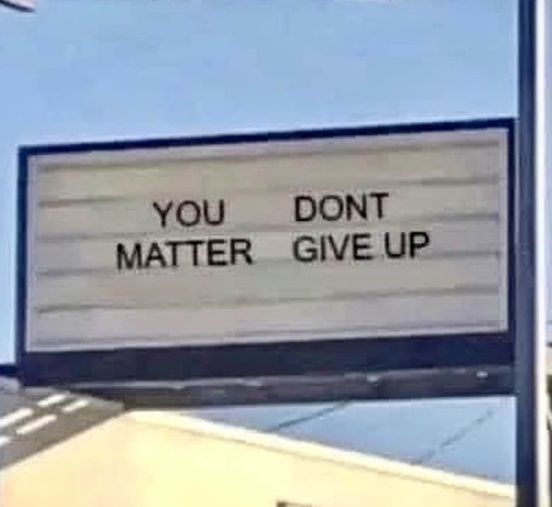
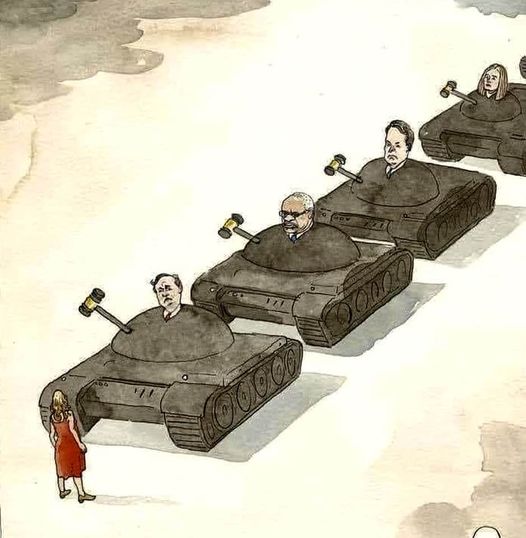
 (1) Images of the day: [Top left & center] Composition of the universe: Two slightly different accounts, both indicating that about 95% of the cosmos is dark energy & dark matter. [Top right] A beautiful calligraphic rendering of a Mowlavi (Rumi) verse. [Bottom left] You can read this sign going across or down: The choice is yours! [Bottom center] Washington: SCOTUS Square. [Bottom right] Help-wanted sign at a Goleta bakery.
(1) Images of the day: [Top left & center] Composition of the universe: Two slightly different accounts, both indicating that about 95% of the cosmos is dark energy & dark matter. [Top right] A beautiful calligraphic rendering of a Mowlavi (Rumi) verse. [Bottom left] You can read this sign going across or down: The choice is yours! [Bottom center] Washington: SCOTUS Square. [Bottom right] Help-wanted sign at a Goleta bakery.
(2) The rise of non-traditional schooling: As more US states introduce financial support for home-schooling and private micro-schools, parents are pulling their kids out from low-performing public schools.
(3) One-liners: Brief news headlines, happenings, memes, and other items of general interest.
- I can assure you this isn't my class: Try to guess the subject being taught!
[Tweet, with photo]
- Facebook memory from June 17, 2021: Extended-family photo, recreated from a 2018 photo.
(4) "Women in Science and Engineering": This is the title of my presentation for the Persian-language "Marzhayeh Danesh" ("Frontiers of Science") radio program, which will be broadcast on Sunday 6/23, beginning at 6:00 PM, on KIRN Los Angeles, AM 670 or FM 95.5 (livestream). My talk consists of four 8-minute segments that will run between news & ads in the 1-hour program. Many of the previous programs are available as podcasts. They also livestream their programs.
(5) Final thought for the day: #EndGenderApartheid
2024/06/17 (Monday): Today, I present reviews of three books on the Persian poetry of Nezami Ganjavi.


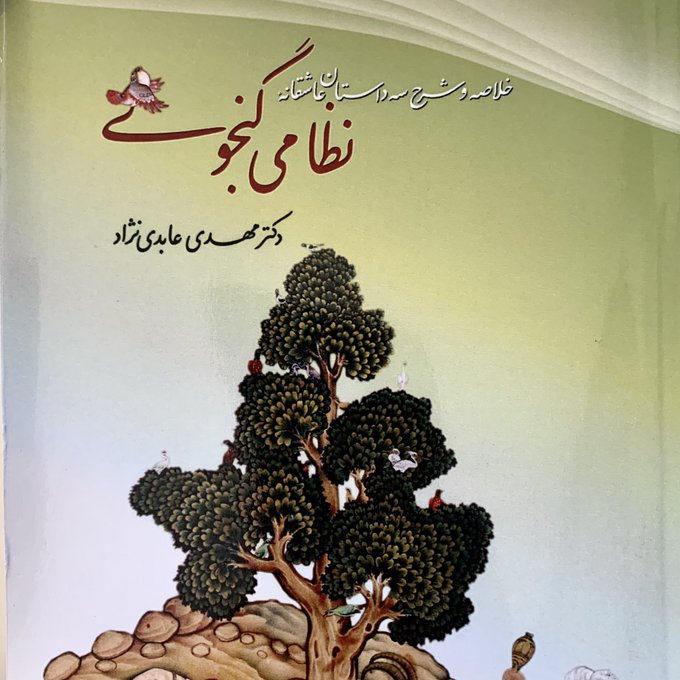 (1) Book review: Ganjavi, Nezami (Dick Davis, translator), Khosrow & Shirin, Mage Publishers, 2024.
(1) Book review: Ganjavi, Nezami (Dick Davis, translator), Khosrow & Shirin, Mage Publishers, 2024.
[My 4-star review of this book on GoodReads]
Before "Romeo & Juliet" (1597), there was Nezami Ganjavi's "Khosrow & Shirin" (ca. 1180 CE). There are in fact quite a few other Persian love-stories/tragedies that precede Shakespeare by centuries. Nezami also wrote "Layla & Majnun," one of the greatest epic love poems in Persian. Nezami has a third love story, "Haft Paykar." All three of these love stories are summarized and interpreted in Summaries and Interpretations of Three Love Stories by Nezami Ganjavi (in Persian, Mirasban, 2022; my review).
Here is the gist of the story: After the death of his wife and a new failed marriage, Sassanid King Khosrow II finally marries Shirin while in exile in Armenia. They live happily together for several years until Khosrow's son, Shiroyeh, also in love with Shirin, orders his father's death. Shirin decides to take her own life, fearing humiliation through forced marriage to Shiroyeh. Khosrow and Shirin were buried in the same grave. The story also features Farhad, a sculptor who fell in love with Shirin and was willing to do anything to win her, but their love remained platonic.
Nezami does not portray Shirin as a damsel in distress to be saved by a knight in shining armor, but as a proto-feminist. Once, when Khosrow comes to her in a drunken state, she does not let him into the castle and reproaches him for his fling with another woman, Shekar. Khosrow was madly in love with Shirin, but Shirin kept rebuffing his advances, because she feared she would become a plaything for him to use as he pleased while he was intoxicated, not the queen she aspired to be. Eventually, Shirin received the marriage proposal she wanted.
By depicting Shirin's influence on Khosrow, which made him undergo transformation from a pointless life of pleasure to a spiritually meaningful one, Nezami dispenses advice on how one should live his/her life and on the importance of selflessness.
(2) Book review: Nizami (Translated from Persian and edited by Dr. Rudolf Gelpke, in collaboration with E. Mattin & G. Hill), The Story of Layla and Majnun, Bruno Cassirer, 1966.
[My 5-star review of this book on GoodReads]
Presented in 53 short, untitled chapters, plus a postscript, this translation of Nizami's epic love poem begins thus: "Once there lived among the Bedouin in Arabia a great lord, a Sayyid, who ruled over the Banu Amir. No other country flourished like his and Zephyr carried the sweet scent of his glory to the farthest horizons. Success and merit made him Sultan of the Arabs and his wealth equaled that of Korah." What ate at this otherwise fortunate man was the fact that he had no son to inherit his wealth. When his wish was granted and he was given a son, celebrations ensued.
"The child was committed to the care of a nurse, so that under her watchful eye he should grow big and strong. So he did, and every drop of milk he drank was turned in his body into a token of faithfulness. Each line of indigo, drawn on his face to protect him against the Evil Eye, worked magic in his soul. ... Two weeks after his birth the child already looked like the moon after fourteen days and his parents gave him the name of Qays. ... [When he grew up,] people told the story of his beauty like a fairy tale. Whoever saw him—if only from afar—called upon heaven to bless him."
The sample quoted passages above and below should convince you that the translation of the work is engaging and of high quality.
Qays was educated under the care of a distinguished learned man. One day he meets Layla, a beautiful girl, a "miracle of creation" whose "face was a lamp, or rather a torch, with ravens weaving their wings around it."
"While all their friends were toiling at their books"
"These two were trying other ways of learning."
"Reading love's grammar in each other's looks,"
"Glances to them were marks which they were earning."
"Their minds were freed from spelling by love's spell,"
"They practiced, writing notes full of caress;"
"The others learned to count—while they could tell,"
"That nothing ever counts but tenderness."
When Qays realized that he can't get Layla's hand in marriage, his aimless and erratic behavior earned him the nickname Majnun (Madman). Scores of pages later, we read about Layla's death. "A cold fever shook her limbs and spread dark blotches and stains over her sweet face. … Sensing that death stood close, she allowed no one near but her mother, revealing in this hour for the first and last time, the secret of her love. … When I am dead, dress me like a bride. Make me beautiful. As a salve for my eyes, take dust from Majnun's path. Prepare indigo from his sorrow, sprinkle the rose-water of his tears on my head and veil me in the scent of his grief. … He will come, my restless wanderer—I know. He will sit at my grave searching for the moon, yet seeing nothing but the veil—the earth—and he will weep and lament."
It happened just as Layla had predicted. When Majnun learned about the death of his beloved, he rushed to her and fell on her grave as if struck by lightning. He exclaimed: "Oh my flower, you withered before you blossomed, your spring was your fall, your eyes hardly saw this world. … Your musk-mole, your gazelle eye—where are they [now]? The splendor of your agate lips, the amber-scented coils of your tresses—what has happened to them?" Majnun goes on and on with his lament, before returning to the wilderness. When he could not find solace anywhere, his longing drove him back to the grave of his beloved.
In short order, Majnun started to feel weak, moving quickly toward death; though not quickly enough from his viewpoint. He transitioned, while reciting a prayer on
Layla's grave: "Maker of all things created! I implore thee in the name of everything which thou hast chosen: relieve me of this burden. Let me go where my love dwells. Free me from this cruel existence and, in the other world, cure me of my torment here."
The exquisite story of the love between Layla and Majnun is Nizami's way of portraying the ideal lover, while dispensing life advice and explaining soul's search for God.
(3) Book review: Abedinejad, Mehdi, Summaries and Interpretations of Three Love Poems by Nezami Ganjavi (in Persian), Mirasban, 2022. [My 3-star review of this book on GoodReads]
Abedinejad intermixes verses from epic poems by Nezami Ganjavi [ca. 1141-1209 CE] with brief textual narratives to summarize and interpret three of the five stories forming parts of Nezami's "Khamsa" ("Five Treasures"). Besides the three love stories covered in this book ("Khosrow & Shirin," "Leyla & Majnun," and "Haft Peykar" aka "Bahram Nameh"), "Khmasa" also includes "Makhzan ol-Asrar" and "Eskandar Nameh."
The book under review begins with a 15-page preface, written by Mehdi Farahani Monfared, who offers a brief biography of Nezami and also introduces the author. About a quarter of the book is devoted to "Khosrow & Shirin" (pp. 29-76), one-sixth is taken up by "Leyla & Majnun" (pp. 77-109), and more than half (pp. 111-227) covers "Haft Peykar."
There are quite a few books and articles on Nezami's "Khosrow & Shirin," including a wonderful new English translation by Dick Davis
(my review). "Leyla & Majnun" has similarly received much attention; see, for example, the translation by Dr. Rudolf Gelpke (my review). Both of these love-stories/tragedies predate Shakespear's "Romeo & Juliette" by several centuries. "Haft Peykar" has a somewhat different nature, for even though it does contain elements of a love story, it is mostly the life story of King Bahram Gur, known for his hunting skills and seven wives: The seven "peykars" or "beauties" of the story's title.
The book could have benefited from an index to help link the similar notions discussed in the three stories.
2024/06/16 (Sunday): Presenting selected news, useful info, and oddities from around the Internet.

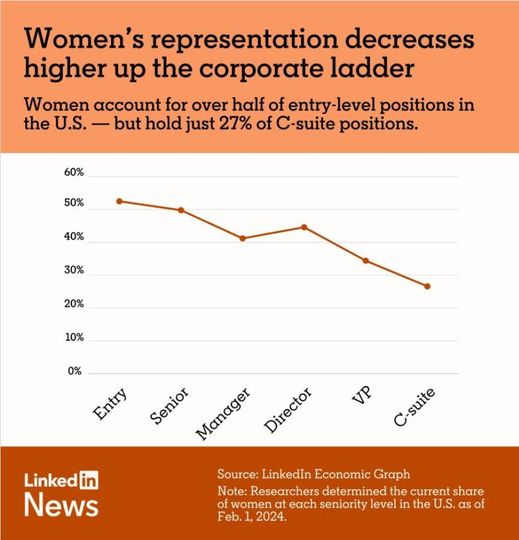
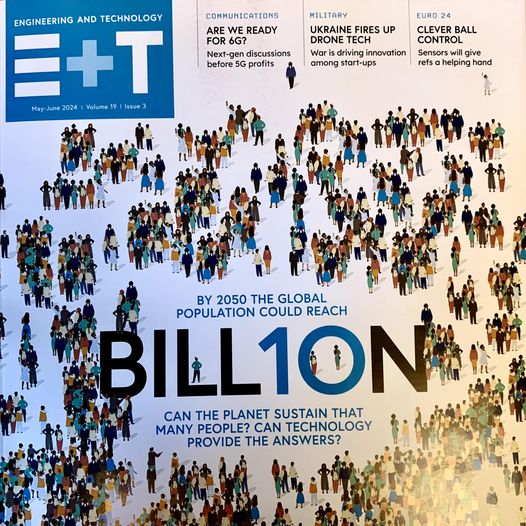


 (1) Images of the day: [Top left] A happy Fathers' Day to all dads and father-like nurturers & mentors, past, present, and future! Today, we particularly remember our fathers who are no longer with us. They are missed! [Top center] Two steps forward, one step back (see the next item below). [Top right] Food equation: World population reaching 10 billion by 2050 + 40% of the Earth's agricultural land already degraded = Disaster. [Bottom row] Combined graduation and Fathers' Day celebration at a park near UCLA, with yummy take-out food from Shamshiri Restaurant. The proud graduate had the company of our entire extended family, some of them coming from far-away places.
(1) Images of the day: [Top left] A happy Fathers' Day to all dads and father-like nurturers & mentors, past, present, and future! Today, we particularly remember our fathers who are no longer with us. They are missed! [Top center] Two steps forward, one step back (see the next item below). [Top right] Food equation: World population reaching 10 billion by 2050 + 40% of the Earth's agricultural land already degraded = Disaster. [Bottom row] Combined graduation and Fathers' Day celebration at a park near UCLA, with yummy take-out food from Shamshiri Restaurant. The proud graduate had the company of our entire extended family, some of them coming from far-away places.
(2) For women, there is good news and bad news: The good news a few days ago was the rising level of contribution by women to scientific/technical papers over the past two decades: In the US, contributions of women rose from 30% to 42% (26% to 39% worldwide). Here is the bad news: The status of women on the corporate ladder is declining. While half of entry-level positions are held by women, the fraction declines to one-third at the VP level and to about one-fourth at the C-suite level.
(3) One-liners: Brief news headlines, happenings, memes, and other items of general interest.
- An option for pensioners: Retirement on a college campus with a pass to attend any class they wish.
- The oldest unsolved problem in mathematics: Does there exist an odd perfect number? [12-minute video]
- Human athletic abilities are improving so fast that we may soon turn into a different species.
- Starting with 5, every second Fibonacci number is the hypotenuse of a right triangle with integer sides.
(4) Another watchdog loses its battle with MAGA: Stanford has shut down its Internet Observatory, which aimed to identify viral disinformation about election procedures and outcomes in real time. Ongoing lawsuits and congressional inquiries into the Observatory have cost Stanford millions of dollars in legal fees.
(5) Wells Fargo fires 12+ employees who pretended to work: With the prevalence of remote work, some companies have deployed tools that monitor keystrokes and eye movements, take screenshots, and record Website visits. Technologies like "mouse jigglers," which make it appear as though workers are using their computers when they are not, allow workers to evade surveillance.
(6) Final thought for the day: This hand-made card and gift of audiobooks for Fathers' Day put a smile on my face. Thank you, my precious daughter!
2024/06/15 (Saturday): Presenting selected news, useful info, and oddities from around the Internet.
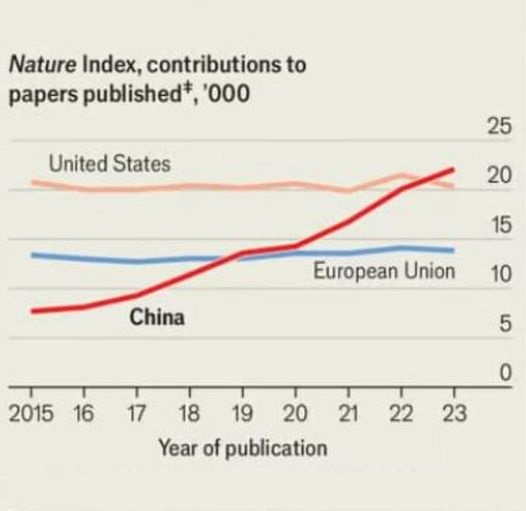

 (1) Images of the day: [Left] China has been steadily rising in contributions to published scientific/technical papers: It overtook EU in 2019 and USA in 2023. India is also on the rise. It's worth noting, however, that a significant share of retracted papers are also from India & China. [Center] That's a real cat on the bookshelf, not a figurine! [Right] This madman has no place in government: In a "policy" meeting with top congressional Republicans, Trump made a bizarre claim about Pelosi's daughter, and one of her four daughters responded.
(1) Images of the day: [Left] China has been steadily rising in contributions to published scientific/technical papers: It overtook EU in 2019 and USA in 2023. India is also on the rise. It's worth noting, however, that a significant share of retracted papers are also from India & China. [Center] That's a real cat on the bookshelf, not a figurine! [Right] This madman has no place in government: In a "policy" meeting with top congressional Republicans, Trump made a bizarre claim about Pelosi's daughter, and one of her four daughters responded.
(2) United Auto Workers union is reportedly coping with tensions between its student members focused on the war in Gaza and its blue-collar workers focused on pocketbook issues. [NYT]
(3) UCLA has a new chancellor: University of Miami President, the Mexico-born global public health researcher Julio Frenk, will become the next chancellor of the University of California, Los Angeles. He will inherit from the retiring Chancellor Gene Block a campus roiled by protests over the Israel-Hamas war.
(4) One-liners: Brief news headlines, happenings, memes, and other items of general interest.
- Abortion bans are good for the travel business. [NYT infographic]
- Arizona man planned a mass shooting of Blacks & other minorities at a rap concert to incite a race war.
- Facebook memory from June 14, 2021: On repunit primes (prime numbers of the form 111...11).
- Facebook memory from June 14, 2021: Worry about crony capitalism, not socialism.
- Facebook memory from June 14, 2020: Religion has become a tool of politics (Persian poem).
- Facebook memory from June 15, 2014: Fathers' Day celebration, 10 years ago.
(5) The habit of comparing ourselves to others can lead to poor mental health: "The comparison starts at an early age. Perhaps we wish we had the same toys as one of our friends or the backpack they have. As we grow older, ... you may find yourself comparing how much money you make to others or where you are in terms of relationships, education, or careers. ... If it is not addressed, comparison can lead to poor mental health and issues like anxiety and depression."
(6) Start-ups go to war: The war with Russia has supercharged the Ukrainian tech sector to form a drone development superhub. [E&T magazine]
(7) Fire Seyed Hossein Mousavian: Princeton U. professor and former Iranian diplomat with blood on his hands, threatens that Iran can quickly cause $1 trillion damage to UAE in the event of a war with the US.
(8) The hostage-taking Iranian mullahs are rewarded: In a prisoner swap deal, #HamidNouri who was serving a life sentence in Sweden for his role in the mass-execution of political prisoners was returned to Iran.
2024/06/14 (Friday): Today, I offer reviews of 3 books on understanding and dealing with mental illness.


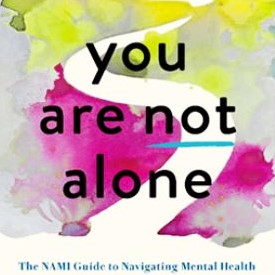 (1) Book review: Nakazawa, Donna Jackson, Girls on the Brink: Helping Our Daughters Thrive in an Era of Increased Anxiety, Depression, and Social Media, Harmony, 2022.
(1) Book review: Nakazawa, Donna Jackson, Girls on the Brink: Helping Our Daughters Thrive in an Era of Increased Anxiety, Depression, and Social Media, Harmony, 2022.
[My 4-star review of this book on GoodReads]
Science journalist Donna Nakazawa maintains that "our daughters, students, and the girl next door are more anxious and more prone to depression and self-harming than ever before." In 2019, 1 in 3 girls reported symptoms of major depression, vs. 1 in 10 boys. A typical young girl feels that her life is one endless performance, during which she is examined and judged. When combined with unchecked immersion in social media, the mental state above can derail a young girl's emotional development.
Fortunately, there is also good news. Puberty, which is considered a particularly vulnerable period for girls, is also a time when the female brain is responsive to various kinds of support and scaffolding. This responsiveness can potentially turn a young girl's innate sensitivity into a superpower.
In her book, Nakazawa offers 15 simple strategies for raising emotionally healthy girls, based on cutting-edge science that explains the modern pressures that make it so difficult for adolescent girls to thrive. I was fortunate to attend Nakazawa's book talk, sponsored by UCLA's Semel Institute, on March 5, 2024, when she reiterated the need for urgent action to save our girls.
(2) Book review: Amador, Xavier, I'm Not Sick, I Don't Need Help: How to Help Someone Accept Treatment, Publisher, 20th Anniversary Edition, 2022. [My 5-star review of this book on GoodReads]
Anosognosia (lack of insight) is a neurological condition in which the patient is unaware of their neurological deficit or psychiatric condition. One of the most-challenging tasks in caring for a loved one with mental illness is to get them to accept that they are sick and then to open them up to advice and help from professionals. Based on decades of experience with mentally-ill patients and their families, Amador advanced a four-part strategy dubbed LEAP (listen, empathize, agree, partner) for developing partnership and trust with those experiencing anosognosia.
Amador's I'm Not Sick has become a classic, providing information and insights, not only to mental-health and criminal-justice professionals, but also to family members who care for a mentally-ill loved one. In this 20th Anniversary Edition, all chapters have been updated with new research on anosognosia and much more detail on LEAP.
You can read an excerpt of I'm Not Sick on this Web page. And here is a 75-minute talk by Amador on his book. For those with less patience, this 18-minute TEDx talk contains all the essentials.
(3) Duckworth, Ken, You Are Not Alone: The NAMI Guide to Navigating Mental Health, unabridged 14-hour audiobook, read by the author & Tim Fannon, Zando, 2022.
[My 4-star review of this book on GoodReads]
Many families who care for loved ones suffering from mental illness are in the dark about diagnoses, treatments, and recovery processes, which leads to frustration and inability to help. When it comes to mental health, the US healthcare industry remains chaotic, underfunded, and inaccessible. To make matters worse, there are no tests, such as bloodwork and X-ray used for physical ailments, to help with definite diagnoses of mental illness, leading to conflicting and confusing advice.
This NAMI-supported book, which oozes with expertise and compassion, contains:
- First-person accounts illustrating the diversity of mental health journeys
- Guidance on dealing with mental health conditions and seeking care
- Research-based evidence on what treatments and approaches work best
- Insight and advice from renowned clinical experts and practitioners
NAMI, National Alliance on Mental Illness, is a valuable resource that the sufferers of mental illness and their families/caretakers can turn to for advice and help. Among other activities, NAMI supports peer-to-peer and family-to-family classes and discussion groups. [Web site]
2024/06/13 (Thursday): Presenting selected news, useful info, and oddities from around the Internet.

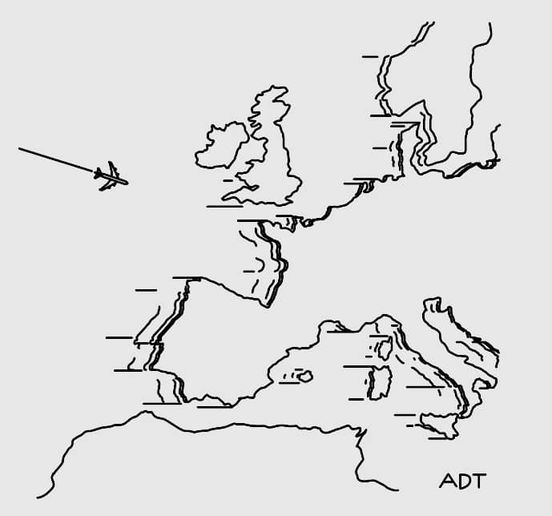

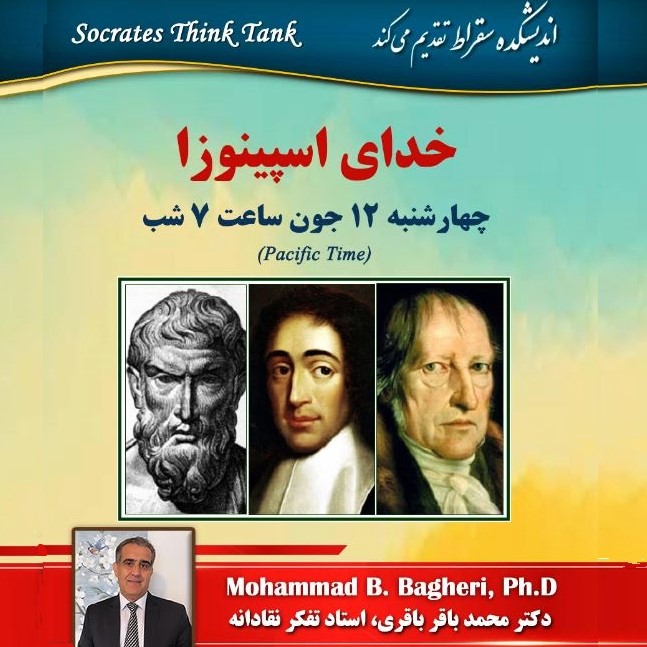

 (1) Images of the day: [Top left] Throwback Thursday: Shams Beer was a popular and fairly inexpensive brand in Iran before the Islamic Revolution. The Armenian-owned Shams Beer Factory in Eastern Tehran was set on fire by Islamists on January 30, 1979, with its contents looted. [Top center] New Yorker cartoon: "The captain has informed us that our arrival will be somewhat delayed because of Europe's continuing shift to the right." [Top right] Meet Iran's 6 presidential candidates: Three are fairly well-known (Pourmohammadi is a hanging judge, who, like Raisi, has blood on his hands; Ghalibaf is corrupt to the core; Jalili was Raisi's ideologue). The other three are highly unlikely to win (Pezeshkian is a reformist who may have been allowed to run as a show candidate; Zakani and Ghazizadeh are nobodies). As usual, several big names, including a former president and a former speaker of the Parliament, were disqualified, which should make for an interesting campaign season. [Bottom left] Socrates Think Tank talk (see the next item below). [Bottom center] Math puzzle: In the isosceles triangle ACD, find the length X of AB. [Bottom right] Talangor Group talk (see the last item below).
(1) Images of the day: [Top left] Throwback Thursday: Shams Beer was a popular and fairly inexpensive brand in Iran before the Islamic Revolution. The Armenian-owned Shams Beer Factory in Eastern Tehran was set on fire by Islamists on January 30, 1979, with its contents looted. [Top center] New Yorker cartoon: "The captain has informed us that our arrival will be somewhat delayed because of Europe's continuing shift to the right." [Top right] Meet Iran's 6 presidential candidates: Three are fairly well-known (Pourmohammadi is a hanging judge, who, like Raisi, has blood on his hands; Ghalibaf is corrupt to the core; Jalili was Raisi's ideologue). The other three are highly unlikely to win (Pezeshkian is a reformist who may have been allowed to run as a show candidate; Zakani and Ghazizadeh are nobodies). As usual, several big names, including a former president and a former speaker of the Parliament, were disqualified, which should make for an interesting campaign season. [Bottom left] Socrates Think Tank talk (see the next item below). [Bottom center] Math puzzle: In the isosceles triangle ACD, find the length X of AB. [Bottom right] Talangor Group talk (see the last item below).
(2) Last night's Socrates Think Tank Talk: Dr. Mohammad B. Bagheri talked about "The God of Spinoza." There were 165 attendees.
Baruch Spinoza [1632-1677], a philosopher of Portuguese-Jewish origin, opined that though everything ultimately derives from God, s/he cannot be the cause of sadness since s/he is perfect. As understood by Spinoza, the real cause of sadness is ignorance or people's lack of understanding the causes that have led them to feel sorrow.
In Spinoza's view, it is absurd to think of God as a being who listens to our prayers and gets angry at us when we misbehave. To follow God is to work hard to understand the nature around us and to be resigned to living according to nature's laws. When we see something as a miracle, it is simply because we have not yet discovered the laws of nature that govern or cause it.
The Enlightenment thinker was branded a heretic, but his philosophy is loaded with subtle religious insights. He recognized the existence of God but was an enemy of religion. Albert Einstein once said that he believed in "Spinoza's God," which was seen as proof that great scientific minds have no time for superstitious fairy tales.
Spinoza is a key figure in rationalism. He was excommunicated by religious authorities, who instructed everyone to avoid him and to cease all communication with him. Spinoza's most-significant work was on ethics, which, by his own request, was published after his death.
(3) I have fond memories of Jerry West, the basketball and Lakers legend who just died at 86: In my graduate-student days at UCLA, I watched a lot of basketball, and watching Jerry West play was a treat. His silhouette has been immortalized on the NBA logo. RIP.
(5) Women have made gains in STEM research: A large-scale study by academic publisher Elsevier has found a ~50% increase in contributions of women researchers to STEM fields (26% of total production in 2000 to 39% in 2022; 30% to 42% in the US). At the current rate of progress, parity is still ~30 years away.
(6) Tonight's Talangor Group talk: Dr. Khalil Rashidian spoke under the title "Climate Change and the Heightened Water Crisis in Iran." There were ~70 attendees.
There has been much talk about the dwindling water resources in Iran for the dual reasons of climate change and inept water-management officials. Businesses run by top clerics and the Islamic Revolutionary Guard Corps abuse water resources to maximize their short-term profits, showing no concern for long-term consequences of their action. A few officials who criticized this state of affairs were sidelined or forced into exile. Environmental activists are routinely arrested and imprisoned for opposing the government's shortsighted policies.
Against this background, Dr. Rashidian's talk consisted of two parts. First, he presented a general overview of climate change (global warming and the attendant sea-level rise), along with current and future consequences of expected changes. In the second part, he focused on the case of Iran, with an extensive review of the depletion of water resources and the resulting damage to the environment and the livelihood of local farmers. A particularly challenging problem is the sinking of ground which damages farmlands and gobbles up buildings and other infrastructure in sinkholes.
While pursuing appropriate policies might mitigate some of the problem, much of the damage inflicted by past inaction and abuse appears to be irreversible. Border disputes over water resources complicates future planning and raises the severity of the problems.
2024/06/12 (Wednesday): Presenting selected news, useful info, and oddities from around the Internet.


 (1) Images of the day: [Left] Is there an example in human history when book-burners were the good guys? [Center] Amanda Montell's The Age of Magical Overthinking (see the last item below). [Right] Imaginative artwork with a message: Seen on Sunday at the arts & craft show along Santa Barbara's Cabrillo Blvd.
(1) Images of the day: [Left] Is there an example in human history when book-burners were the good guys? [Center] Amanda Montell's The Age of Magical Overthinking (see the last item below). [Right] Imaginative artwork with a message: Seen on Sunday at the arts & craft show along Santa Barbara's Cabrillo Blvd.
(2) Trump supporters say that Hunter Biden was convicted to project a fake image of a fair legal system: Imagine what they would say if Hunter had been exonerated!
(3) Saudi Arabia invests in chip design: The kingdom's National Semiconductor Hub, which will develop fabless chip companies, as part of a strategy to position itself as a leader in semiconductor design, hopes to attract 50 firms by 2030 to develop simple chips, with manufacturing done internationally for now. [Bloomberg]
(4) One-liners: Brief news headlines, happenings, memes, and other items of general interest.
- As people around the world gain in English fluency, the translated book market has shrunk. [NYT]
- What an excellent 5-minute workout! Nice music too!
- Engineering design: I had no idea that bowling pinsetter machines are so complex! [12-minute video]
- Math puzzle: Consider y = 2^x. Is there a non-integer value for x that yields an integer value for y?
- Super-funny stand-up comedy routine by Jim McDonald. [23-minute video]
- Facebook memory from June 11, 2016: My daughter's graduation from UCLA.
(5) Book review: Montell, Amanda, The Age of Magical Overthinking: Notes on Modern Irrationality, unabridged 6-hour audiobook, read by the author, Simon & Schuster Audio, 2024.
[My 4-star review of this book on GoodReads]
I became familiar with linguist Amanda Montell's work through Wordslut (my review on GoodReads), a wonderful mix of pop culture and academic linguistics that addresses the ways in which patriarchy has invaded and overtaken the English language.
In The Age of Magical Overthinking, Montell maintains that in the 21st century, our focus has shifted from external threats to internal ones. Glued to our phones and alienated from our loved ones, we are increasingly lonely. She points to cognitive biases that rule our brains, from the "Halo effect," cultivating worship/hatred of larger-than-life celebrities, to how the "Sunk Cost Fallacy" can keep us in harmful relationships long after we have realized their toxicity.
Our society faces a crisis of the mind, which is intensified by misinformation and disinformation from social media and other sources. Our reliance on specialists has been replaced with taking advice from untrained influencers. Montell exposes our cultural obsession with irrational beliefs and debunked ideas, and gives us tools to escape it.
2024/06/11 (Tuesday): Presenting selected news, useful info, and oddities from around the Internet.
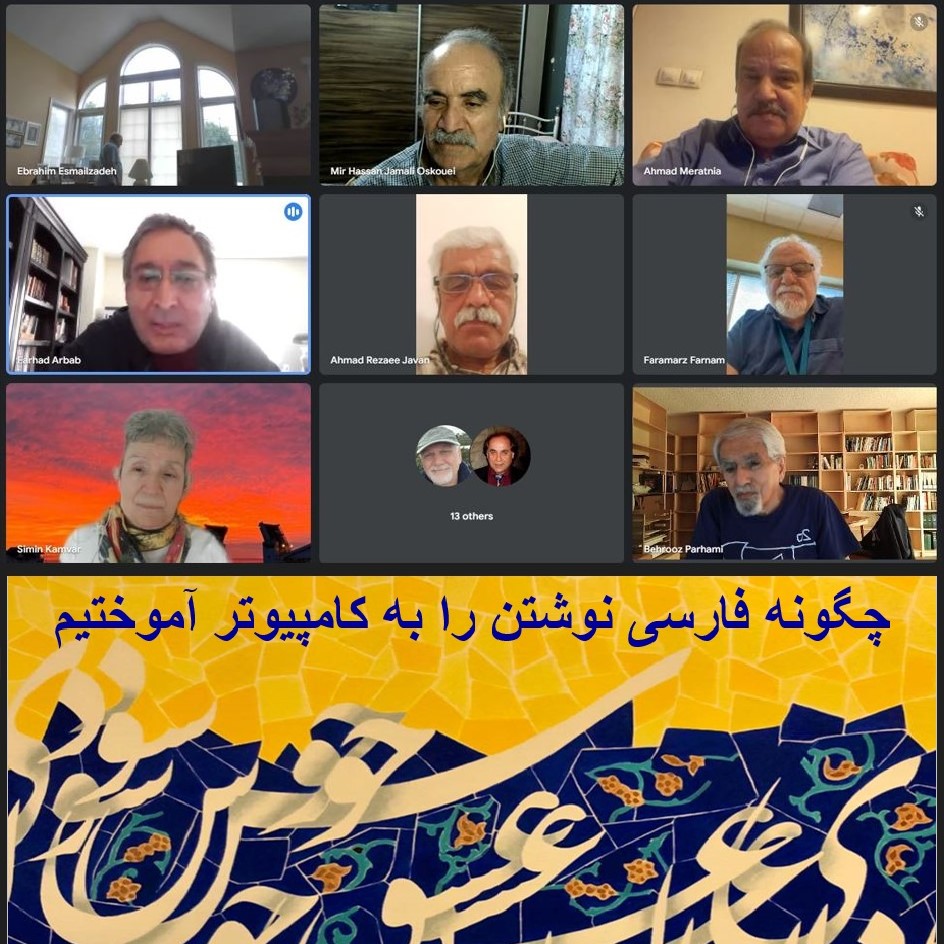
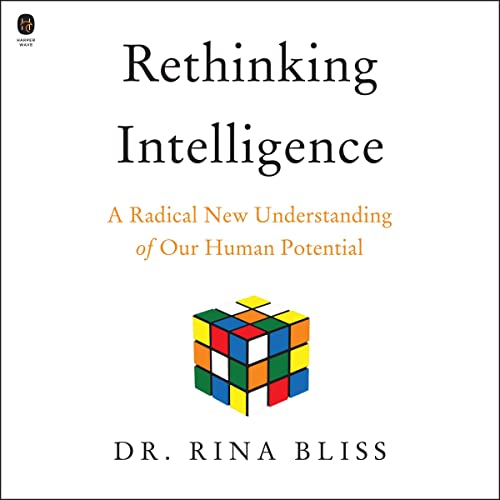
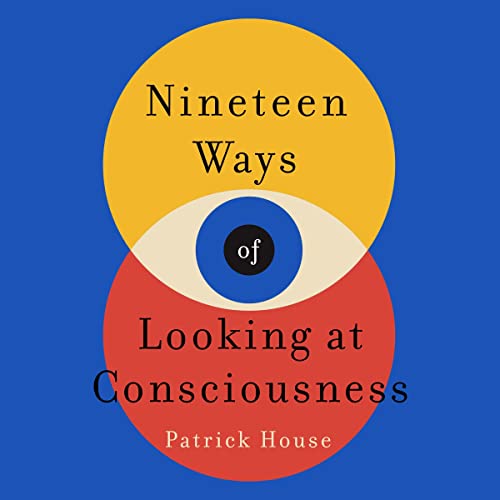 (1) Images of the day: [Left] Virtual talk on Persian-language computer output (see the next item below). [Center] Rethinking Intelligence, a book by Rina Bliss (see item 3 below). [Center] Patrick House's Nineteen Ways of Looking at Consciousness (see the last item below).
(1) Images of the day: [Left] Virtual talk on Persian-language computer output (see the next item below). [Center] Rethinking Intelligence, a book by Rina Bliss (see item 3 below). [Center] Patrick House's Nineteen Ways of Looking at Consciousness (see the last item below).
(2) How We Taught the Computer to Write in Persian: This was a title of a talk I gave on Monday morning to a group of graduates from Arya-Mehr/Sharif University of Technology. The attendees included 4 of my former students, a couple of whom shared stories from our interactions some 5 decades ago. The talk was very similar to the ones I have been giving to various audiences since 2017, updating the slides by adding figures and other material each time. Here is a link to the PDF slides of my talk.
(3) Book review: Bliss, Rina, Rethinking Intelligence: A Radical New Understanding of Our Human Potential, unabridged 6-hour audiobook, read by Samantha Tan, Harper Audio, 2023.
[My 4-star review of this book on GoodReads]
The nature of intelligence has been debated for centuries, with the debate intensity picking up in recent decades, as we began struggling to define artificial intelligence. For a long time, the test-based intelligence quotient (IQ) was accepted and used to "measure" intelligence, with the results used to predict a child's future and to plan his/her course of studies and career options. Bliss, a genetics expert and member of the faculty at Rutgers University, adds fuel to the fire that debunked the primacy of IQ tests and the innate nature of intelligence.
She presents her ideas in 9 numbered chapters, sandwiched between introductory and concluding chapters. Chapters 1-4 constitute Part I, Understanding Intelligence (Thinking intelligence; Understanding IQ; The nature of Intelligence; Nurturing intelligence). Chapters 5-7 comprise Part II, Nurturing Intelligence (The growth mindset; From mind to mindful; Learning to connect). Chapters 8-9 of Part III are about Valuing Intelligence (Getting smarter as a society; Seeing value in us all).
Relating her challenging family life, with a chronically overworked mom and a perpetually overdosed dad, Bliss tells us that, as a part-Asian student, being perceived as a superior intellect was her ticket out of trouble. "Even for a 'smart kid' like me, the pressure to perform was overwhelming. I was tormented by the fear that I wouldn't measure up."
Sharing insights from the burgeoning science of epigenetics, Bliss helps us harness our environments to empower our minds. One key is eliminating toxic stress. Other factors include embracing a growth mindset, prioritizing connection, becoming more mindful, and reforming systemic issues such as poverty, racism, the lack of quality early childhood education. Bliss reframes human behavior and intellect, offering a new perspective for understanding ourselves and our children.
(4) Book review: House, Patrick, Nineteen Ways of Looking at Consciousness, unabridged 5-hour audiobook, read by Taylor Clarke-Hill, Macmillan Audio, 2022. [My 4-star review of this book on GoodReads]
A poem can be translated in many different ways. There is no such thing as the "correct" translation. In fact, none of the many translations may trigger the same emotions in the reader as the original poem. House's book title mimics commentaries by Eliot Weinberger and Octavio Paz, who looked at 19 translations of a 1200-year-old Chinese quatrain.
Consciousness is a very difficult topic to discuss and understand. Most descriptions of it entail either hand-waving or circular arguments. I am afraid that all 19 ways discussed by House suffer from the same shortcomings. However, one does learn a great deal about related topics in psychology and neuroscience in the course of pursuing an understanding of consciousness.
2024/06/10 (Monday): Presenting selected news, useful info, and oddities from around the Internet.


 (1) Images of the day: [Left] How the extreme right creates non-existent issues to anger the MAGA base into voting and contributing money: This poll is based on the totally false assumption that undocumented immigrants can vote if they want to. In reality, they can't register to vote. [Center] G7 taps women's-rights activist @AlinejadMasih for its Gender Equality Advisory Council. [Right] These two women are separated by less than one meter in space and more than 1400 years in time!
(1) Images of the day: [Left] How the extreme right creates non-existent issues to anger the MAGA base into voting and contributing money: This poll is based on the totally false assumption that undocumented immigrants can vote if they want to. In reality, they can't register to vote. [Center] G7 taps women's-rights activist @AlinejadMasih for its Gender Equality Advisory Council. [Right] These two women are separated by less than one meter in space and more than 1400 years in time!
(2) Your driving score: We all know about credit scores, but did you know that there is also a driving score? The score is based on how often you speed, slam on the brakes, look at your phone, or drive late at night. The data can be collected by your car or smartphone apps and sold to brokers, who work with auto insurers. [NYT]
(3) One-liners: Brief news headlines, happenings, memes, and other items of general interest.
- UC given a temporary restraining order against UAW strikers, while its claim of strike illegality is assessed.
- Apple announces built-in intelligence for iPhone, iPad, & Mac, while setting a new standard for privacy in AI.
- Iran's assassins & kidnappers target dissidents and former US government officials. [13-minute video]
- PBS "Firing Line" program examines the Electoral College: Reasons for abolishing or keeping it.
(4) An Ohio high-school graduate hands a copy of Handmaid's Tale to a school official to protest the book's banning by her school district.
(5) The Brain and Hate: The multi-part online series "The State of Hate" is co-sponsored by the Friends of Semel Institute, the Resnick Neuropsychiatric Hospital Board of Advisors, and the UCLA Initiative to Study Hate. The UCLA Initiative to Study Hate is a three-year pilot project intended to foster cutting-edge research and high-level teaching to understand better and mitigate group-based hate.
In today's first installment, after opening remarks by Dr. David Myers, Distinguished Professor, Director of the Luskin Center for History and Policy and Director of the UCLA Initiative to Study Hate, UCLA Professors Adriana Galvan and Mario F. Mendez discussed the opportunities and challenges of studying the neuroscience of hate. They also covered some of the cognitive processes that advance hateful behavior & how we can counter them.
Evolutionarily, hate has served the role of ensuring our survival. In this role, it is closely related to fear. However, hate has outlived its usefulness in today's law-abiding societies. It is now threatening, rather than ensuring, our survival.
Part 2, Hate and the election, and Part 3, Hate and the social media, will come in fall 2024. Recordings of these discussions will be made available on the Semel Institute Web site.
2024/06/09 (Sunday): Today, I offer reviews of books on words, languages, and communication skills.


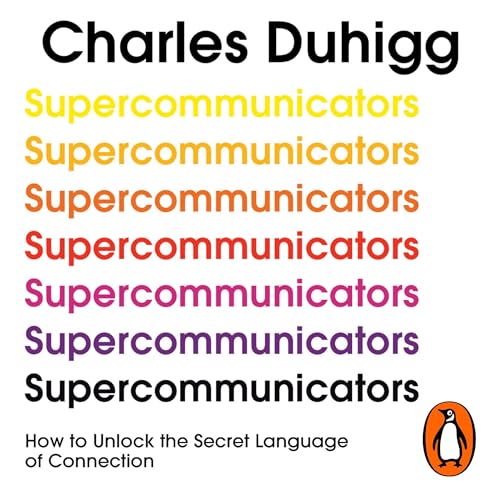 (1) Book review: Pirnazar, Nahid (editor & compiler), Judeo-Persian Writings: A Manifestation of Intellectual and Literary Life, Routledge, 2022. [My 4-star review of this book on GoodReads]
(1) Book review: Pirnazar, Nahid (editor & compiler), Judeo-Persian Writings: A Manifestation of Intellectual and Literary Life, Routledge, 2022. [My 4-star review of this book on GoodReads]
Judeo-Persian documents, that is, Persian-language texts written in the Hebrew alphabet, date back to the 8th century CE. They include Biblical epics, Biblical commentaries, historical texts, liturgical poems, and court & trade documents.
Judeo-Persian religious poetry is closely modeled on classical Persian poetry, with the best-known poet being Mowlana Shahin Shirazi, who composed epic versifications of parts of the Bible. The poet, a contemporary of Hafez, is known to have worked during the 1316-1335 CE reign of Ilkhan Abu Sa'id Bahadur Khan.
Once adequately researched and properly catalogued, the rich literary tradition of works written in Judeo-Persian can contribute to a better understanding of linguistics, history, and sociocultural issues of nearly three millennia of Jewish presence in Southwest Asia.
Dr. Pirnazar takes a valuable step in this direction by reviewing the history of Judeo-Persian (Part 1; pp. 1-41) and providing representative samples of Judeo-Persian writings (Part II; pp. 43-121). Each sample includes the original text, its Perso-Arabic version, and an English translation. Three pages of references and a 3-page index conclude the book.
(2) Book review: Montell, Amanda, Wordslut: A Feminist Guide to Taking Back the English Language, unabridged 7-hour audiobook, read by the author, Harper Audio, 2019.
[My 4-star review of this book on GoodReads]
A misguided English proverb goes, "Sticks and stones may break my bones, but words [or names] can never hurt me." In fact, words, and language more generally, are tools of oppression and deception and are thus potentially hurtful.
For many centuries, coining words and devising linguistic rules have been under the control of powerful white men. The English language is full of words that are used to put down women and other marginalized groups. In the case of women, the use of "bitch," "slut," and "pig" are quite familiar. Some of the above started as normal (occasionally even positive) words that were appropriated for use as put-downs. Others were created as insults.
Montell makes us aware of the uneven way in which male and female gender are treated and offers suggestions on how to handle this imbalance. She puts her linguistics degree to good use in tracing sociolinguistics' historical roots and its impact on the contemporary feminist stance broadly practiced today.
Given that we view the world, and even think, through the lens of language, Montell's observations on how to take back the language and make it more precise in dealing with gender are quite important for anyone who wants to use language effectively and fairly.
According to Library Journal, "[Wordslut] blends academic study with pop-culture attitude ... At its heart, this work reflects a tenet of sociolinguistic study: language is not divorced from culture; it both reflects and creates beliefs about identity and power."
(3) Book review: Duhigg, Charles, Supercommunicators: How to Unlock the Secret Language of Connection, unabridged 7-hour audiobook, read by the author, Random House Audio, 2024.
[My 3-star review of this book on GoodReads]
Duhigg confides that he wrote this book when he realized that his own communication skills needed improvement, which is somewhat of a surprise, given that he is a journalist.
All you need to know about the subject matter of the book is included in the first 15% or so. The elaborations in the rest of the book aren't particularly helpful. Good communicators, the kind of people who are routinely used in hostage-negotiation situations or find themselves leading and influencing jury deliberations, are characterized by empathetic listening skills and the ability to help a conversation move along by injecting interesting questions, the kinds that trigger emotions and require deep thinking.
For example, rather than ask a shallow question about your line of work, they may inquire about the aspect of your job that you like best. Although a good communicator should avoid making a conversation about him/herself, injecting emotional, personal comments that project vulnerability is usually helpful.
Good communication skills, which are acquired through practice, don't only impact our professional stature. We can lead healthier, happier, and more fulfilling lives when we connect with others. Conversations positively affect our brains, bodies, and how we experience the world.
2024/06/08 (Saturday): Presenting selected news, useful info, and oddities from around the Internet.
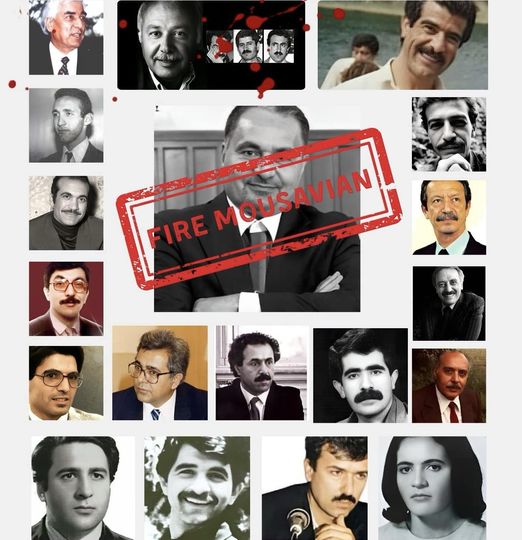

 (1) Images of the day: [Left] Some of the 24+ victims of Islamic Republic of Iran's terrorist attacks under Seyed Hossein Mousavian's watch: Princeton University should fire him from his faculty position. [Center] Calligraphic writings are usually produced with special calligraphic pens: A number of Persian masters also produce calligraphic art with ordinary ball-point pens. This wonderful sample is from Akbar Mojaradi. [Right] Kaveh Akbar's Martyr! A Novel (see the last item below).
(1) Images of the day: [Left] Some of the 24+ victims of Islamic Republic of Iran's terrorist attacks under Seyed Hossein Mousavian's watch: Princeton University should fire him from his faculty position. [Center] Calligraphic writings are usually produced with special calligraphic pens: A number of Persian masters also produce calligraphic art with ordinary ball-point pens. This wonderful sample is from Akbar Mojaradi. [Right] Kaveh Akbar's Martyr! A Novel (see the last item below).
(2) Virtual Town Hall Meeting facilitated by the Santa Cruz Faculty Association: UCSB faculty and union organizers were present in a Zoom gathering on Friday afternoon to update us on the latest developments on the academic workers' strike and its impact. My own classes are not affected by the ongoing strike (one is a graduate course with no TA and the other is a freshman seminar graded based on attendance), but my colleagues are experiencing much anxiety over how to handle the end-of-academic-year tasks without violating various laws. Students, particularly those about to graduate, are even more anxious.
(3) Book review: Akbar, Kaveh, Martyr! A Novel, unabridged 11-hour audiobook, read by Arian Moayed, Random House Audio, 2024.
[My 4-star review of this book on GoodReads]
Kaveh Akbar's poetry has been published in The New Yorker and The New York Times, among other venues, and his work has received a lot of critical acclaim as well as multiple prestigious awards.
Martyr! is Akbar's debut novel. It features the profoundly-sad protagonist Cyrus Shams, an Iranian-American who was brought to the US as a baby by his father Ali. A major theme in the story is the gruesome death of Cyrus's mother, Roya, whose Tehran-to-Dubai Iran Air flight was mistakenly shot down over the Persian Gulf by the US Navy. There were 66 children aboard the flight. Cyrus was supposed to be the 67th, but Roya decided to leave her months-old baby at home. However, bear in mind that nothing in the story is what is seems; there are quite a few plot twists!
Other major themes in the story are the struggles of Cyrus's father, Ali, a hard-working & proud laborer, relatives and acquaintances who were physically or psychologically injured during the Iran-Iraq War of the 1980s, and the plight of Orkideh, a very special artist who is dying from cancer. We also learn about Cyrus' imaginary brother, Beethoven, who once had a conversation with basketball legend Kareem Abdul-Jabbar.
As a poet, Cyrus is in a constant struggle with life as well as death. He wants to die in a way that serves a bigger purpose, hence the novel's title, which, in Cyrus' view, does not mean strapping explosives to himself and carrying out a suicide-bombing mission. Much of the fascinating story is about Cyrus (his struggles, depression, addiction, and sense of powerlessness), but there are a few chapters that are told from the perspective of his parents, one of his friends, and his uncle.
This is a difficult, but rewarding, novel to read. It draws you in, but wears you out at the same time. There are a couple of fillers, which in my view should have been left out. For example, the life story of the great Persian poet Ferdowsi does not belong in this otherwise absorbing story. Ditto for discussion of another great poet, Mowlavi (Rumi).
2024/06/07 (Friday): Presenting selected news, useful info, and oddities from around the Internet.

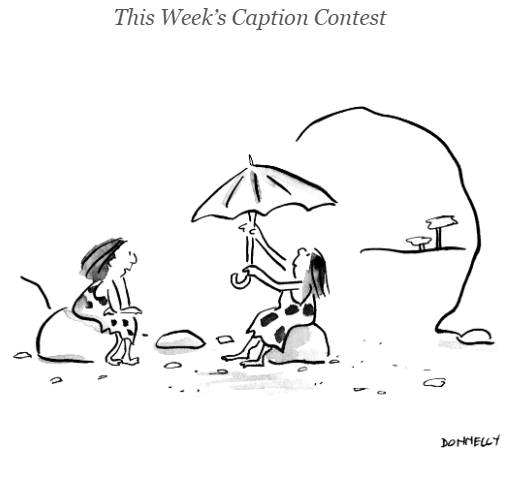



 (1) Images of the day: [Top left] Bora Bora is an island in French Polynesia: The extinct volcano, Mount Otemanu, sits at the center of this atoll. The Teavanui Passage, the only opening to the ocean, allows large ships to enter the serene lagoon. [Top center] New Yorker Cartoon Caption Contest: What do you think of my entry? "Time travelers from the future bring us the cutest things!" [Top right] Qasr al-Farid, an unfinished tomb in Saudi Arabia: The Saudis have spent nearly $1 trillion in recent years on expanding tourism. But what does tourism mean in a country that enforces strict Islamic laws? [Bottom left] Election circus in Iran: Former President Mahmoud Ahmadinejad signs up to become a presidential candidate. His chances of passing the filter of the Guardian Council are slim to none. More importantly, he is mistaken in believing that his criticism of high-level mullahs will erase the effect of his calling Iranian street protesters "dust & dirt," while security forces under his command shot them! [Bottom center] Home: Multilingual sign seen over the Ocean Road underpass on the UCSB campus. [Bottom right] Kip Thorne's The Science of Interstellar (see the last item below).
(1) Images of the day: [Top left] Bora Bora is an island in French Polynesia: The extinct volcano, Mount Otemanu, sits at the center of this atoll. The Teavanui Passage, the only opening to the ocean, allows large ships to enter the serene lagoon. [Top center] New Yorker Cartoon Caption Contest: What do you think of my entry? "Time travelers from the future bring us the cutest things!" [Top right] Qasr al-Farid, an unfinished tomb in Saudi Arabia: The Saudis have spent nearly $1 trillion in recent years on expanding tourism. But what does tourism mean in a country that enforces strict Islamic laws? [Bottom left] Election circus in Iran: Former President Mahmoud Ahmadinejad signs up to become a presidential candidate. His chances of passing the filter of the Guardian Council are slim to none. More importantly, he is mistaken in believing that his criticism of high-level mullahs will erase the effect of his calling Iranian street protesters "dust & dirt," while security forces under his command shot them! [Bottom center] Home: Multilingual sign seen over the Ocean Road underpass on the UCSB campus. [Bottom right] Kip Thorne's The Science of Interstellar (see the last item below).
(2) Imagine our country's history, its pursuit of a more-perfect union, and its ideals of equality being delegated to a bigoted felon for safeguarding!
(3) Did the COVID-19 pandemic leave us a legacy of other diseases? Whooping cough cases have doubled and unusual forms of cancer have begun to appear. [NYT]
(4) Book review: Thorne, Kip, The Science of Interstellar, unabridged 7-hour audiobook, read by Eric Michael Summerer, Tantor Audio, 2014. [My 4-star review of this book on GoodReads]
I recently watched Christopher Nolan's 2014 sci-fi film "Interstellar." I particularly enjoyed the powerful film score, composed by Hans Zimmer. In order to augment my understanding of the film's story, I searched for and found the following explanation of the film's script and its plot summary.
https://www.studiobinder.com/blog/interstellar-explained-meaning-plot-summary/
Further investigation led to the book under review here. Cal Tech theoretical physicist and Nobel Laureate Kip S. Thorne [1940-], who was intimately involved in the making of "Interstellar," explains that the notions behind the film's story, mainly black holes and wormholes, are grounded in real science. When scientific facts had to be stretched, care was taken to keep events and scenes within the realm of possibility.
"Interstellar" was directed by Christopher Nolan, after Steven Spielberg dropped out due to disagreements with Paramount. Nolan went on to achieve even greater fame with his recent film, "Oppenheimer," which was honored with 7 Academy Awards.
Thorne starts his book with the film's history and his interactions with the actors, special-effects artists, and other collaborators, before proceeding to describe the actual physics in the remaining 30 chapters, organized into 7 parts, as follows:
- Foundations (the universe & its laws, warped time/space, black holes)
- Gargantua (anatomy & imaging, gravitational slingshots, disks & jets)
- Disaster on Earth (blight, gasping for oxygen, interstellar travel)
- The wormhole (visualization & discovery, gravitational waves)
- Exploring Gargantua's environs (Miller's & Mann's planets, vibrations)
- Extreme physics (5th dimension, gravitational anomalies, singularities)
- Climax (the tesseract, messaging the past, lifting colonies off Earth)
2024/06/06 (Thursday): Presenting selected news, useful info, and oddities from around the Internet.


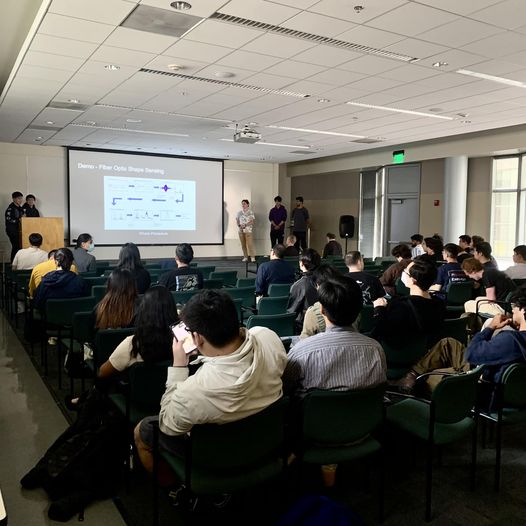


 (1) Images of the day: [Top left] D-Day celebrated after 80 years: On June 6, 1944, troops from the US, Canada, and Britain landed in northern France under heavy fire. The invasion helped lay the groundwork for victory over Nazi Germany in 1945. World leaders (minus Putin, who was not invited) and WW II veterans, some of them 100+ years old, have gathered in France to mark the occasion. [Top center] Throwback Thursday: Photos with my three sisters, over the years. [Top right] CE Capstone Project Presentations (see the last item below). [Bottom left] Yesterday, I taught my last class for the spring quarter and will go into summer mode upon grading a last homework assignment and a few research reports. [Bottom center] Of possible interest to my SoCal readers: Maestro Shardad Rohani, in concert with Roudaki Orchestra, featuring violin soloist Cyrus Forough, Sunday, July 14, 2024, at UCLA's Schoenberg Hall. [Bottom right] I hate to criticize queers during this Pride Month: But someone please tell those who placed the bottom sign at the UCSB encampment about what they do to LGBTQ people in Gaza and other Middle Eastern Arab/Islamic countries.
(1) Images of the day: [Top left] D-Day celebrated after 80 years: On June 6, 1944, troops from the US, Canada, and Britain landed in northern France under heavy fire. The invasion helped lay the groundwork for victory over Nazi Germany in 1945. World leaders (minus Putin, who was not invited) and WW II veterans, some of them 100+ years old, have gathered in France to mark the occasion. [Top center] Throwback Thursday: Photos with my three sisters, over the years. [Top right] CE Capstone Project Presentations (see the last item below). [Bottom left] Yesterday, I taught my last class for the spring quarter and will go into summer mode upon grading a last homework assignment and a few research reports. [Bottom center] Of possible interest to my SoCal readers: Maestro Shardad Rohani, in concert with Roudaki Orchestra, featuring violin soloist Cyrus Forough, Sunday, July 14, 2024, at UCLA's Schoenberg Hall. [Bottom right] I hate to criticize queers during this Pride Month: But someone please tell those who placed the bottom sign at the UCSB encampment about what they do to LGBTQ people in Gaza and other Middle Eastern Arab/Islamic countries.
(2) President Biden speaks on the 80th anniversary of D-Day: To surrender to bullies or to bow down to dictators is simply unthinkable. To do that means forgetting what happened here on these hallowed beaches in Normandy. Make no mistake, we will not bow down. And we will not forget.
(3) Stanford U. will suspend 13 students who were arrested after occupying the president's office: The pro-Palestinian protesters illegally entered a building, injured a law enforcement officer, and caused extensive damage to buildings in Stanford's historic quad.
(4) Computer engineering senior capstone project presentations at UCSB today: It's rewarding to watch seniors turn into competent engineers! [CE capstone Web site with detailed descriptions and team members]
Project name – Description (Sponsor)
Locus – A low-cost, stand-alone sensor used to measure turbulent dissipation in the ocean ... (Coast Lab)
EyeMatic – Camera system that utilizes machine learning for eye anatomy recognition (Alcon)
United Sensors – Support for integrating multiple redundant sensors on quadcopter drones ... (AeroVironment)
P.E.T.E. – Proof of concept to monitor astronauts' progress as they complete procedures ... (NASA)
PenGUI – Touch screen GUI written in Python to control a VCSEL laser (Praevium)
Lumirail – Dynamic LEGO art installation map in downtown Boston, featuring LEDs that show ... (Jeong Group)
Chirality – Smart glove that acts as a hand-motion to computer interface (IFT)
Homeflow – Intuitive health wearable that collects meaningful data (IFT)
Concordia – All-in-one assistant to help control any bluetooth or wifi connected devices in ... (Laritech)
FSAE – Sensor suite for Gaucho Racing’s GR24 Formula car ... (SingleStore and UCSB Urca)
Empro – Electric modification that transforms traditional mechanical bikes into e-bikes (CNSI)
Unmanned Surface Vehicle – Small unmanned watercraft drone surveying coastlines ... (AeroVironment)
2024/06/05 (Wednesday): Presenting selected news, useful info, and oddities from around the Internet.


 (1) Images of the day: [Left] The intensity of destruction in Ukrainian cities as a result of the Russian invasion (NYT infographic). [Center] Meme of the day: "Whoever lives for the sake of combating an enemy has an interest in the enemy's staying alive." ~ Friedrich Wilhelm Nietzsche [Right] Taylor Swift is really a big deal: Her concerts have notable impact on local economies.
(1) Images of the day: [Left] The intensity of destruction in Ukrainian cities as a result of the Russian invasion (NYT infographic). [Center] Meme of the day: "Whoever lives for the sake of combating an enemy has an interest in the enemy's staying alive." ~ Friedrich Wilhelm Nietzsche [Right] Taylor Swift is really a big deal: Her concerts have notable impact on local economies.
(2) For those interested in the history of floating-point arithmetic and the impact of IEEE 754 Standard: UC Berkeley Professor William Kahan presented 27 lectures during May-July 1988 on challenges of floating-point arithmetic and how IEEE Standard 754, first issued in 1985, made the situation much better, though by no means perfect. Professor Kahan, a Turing Award winner, turns 91 today.
(3) Serial degree seeker: Benjamin B. Bolger, 48, has 14 advanced degrees, plus an associate's and a bachelor's from Harvard, Stanford, and Yale, to name a few, in subjects such as international development, creative nonfiction, and education.
(4) One-liners: Brief news headlines, happenings, memes, and other items of general interest.
- Pro-Palestinian protesters occupying the office of Stanford University President have been arrested.
- Boeing's Starliner capsule takes astronauts to orbit: The project had suffered years of costly delays.
- US clears the way for antitrust inquiries of Nvidia, Microsoft, and OpenAI. [NYT]
- Computer Science 2023 Curricula released by IEEE Computer Society, superseding Curricula 2013. [PDF]
- There is overwhelming evidence that Israel runs a US influence campaign on the Gaza War. [NYT]
(5) National Air & Space Museum's lectures on samples-return missions: Following three previous lectures on samples-return missions from the Moon, an asteroid, and a comet, the fourth and last lecture in the series, delivered by Dr. Meenakshi Wadhwa (Arizona State U.), was about returning samples from Mars, both in already completed missions as well as missions planned for the near future.
The planet Mars has fascinated humans for centuries. But it is only in the last few decades that robotic orbiters, landers, and rovers have allowed us to explore the Red Planet in ever increasing detail. Some of our biggest questions relating to the formation and planetary-scale evolution of Mars, including its geologic and climate evolution, the history of water and volatiles, as well as the potential for the development of life in its ancient past can only be addressed by detailed analyses of carefully selected Martian samples in state-of-the-art Earth-based laboratories. The campaign to return Mars samples to Earth is underway with the on-going collection of well-documented samples by the Mars 2020 Perseverance rover. Dr. Meenakshi discussed the samples that have been collected so far, those expected to be collected in the near future, and the scientific motivations for bringing these samples back to Earth.
2024/06/03 (Monday): Presenting selected news, useful info, and oddities from around the Internet.


 (1) Images of the day: [Left] Blue Arch, Sicily, Italy: Symbol for entire generations of lovers, better known as the arc of kisses, this natural wonder, was purchased by the municipality after it was confiscated from the mafia, and was later restored using methods with very low environmental impact. [Center] Cartoon of the day: Is the world we humans experience a simulation? [Right] Russia's human trafficking: Forty-six children taken from Ukraine are up for adoption in Russia (source: NYT).
(1) Images of the day: [Left] Blue Arch, Sicily, Italy: Symbol for entire generations of lovers, better known as the arc of kisses, this natural wonder, was purchased by the municipality after it was confiscated from the mafia, and was later restored using methods with very low environmental impact. [Center] Cartoon of the day: Is the world we humans experience a simulation? [Right] Russia's human trafficking: Forty-six children taken from Ukraine are up for adoption in Russia (source: NYT).
(2) American Association for the Advancement of Science CEO expresses worries about flat or reduced research budgets and a trend at the US Supreme Court to overturn or limit federal agency policies that are informed by science.
(3) Trump's conviction hurt him in the pocketbook: The value of his shares in Trump Media & Technology Group fell by $400 million in one day.
(4) One-liners: Brief news headlines, happenings, memes, and other items of general interest.
- Mexico's bloodiest election (37 assassinated candidates) will likely produce its first female president.
- Rupert Murdoch, 93, marries Elena Zhukov, a retired molecular biologist, in Los Angeles.
- UCSB, UCSD, and UC Irvine added to the list of University of California's striking campuses.
- Brace yourself for a heat wave that will bring triple-digit temperatures to much of the western US.
- Persian fusion music: A beautiful Arabic song, performed with Persian lyrics. [Audio file]
- Mexico elects its first woman and first Jewish president, Claudia Sheinbaum, a respected climate scientist.
(5) Written in the 1950s and published in 1961: "It was miraculous. It was almost no trick at all, he saw, to turn vice into virtue and slander into truth, impotence into abstinence, arrogance into humility, plunder into philanthropy, thievery into honor, blasphemy into wisdom, brutality into patriotism, and sadism into justice. Anybody could do it; it required no brains at all. It merely required no character." ~ Joseph Heller, Catch 22
(6) A Chinese spacecraft lands on the far side of the moon: The uncrewed Chang'e-6 probe, named for the goddess of the moon in Chinese mythology, will collect rare samples from a region that no other country has landed on.
(7) Princeton must fire Mousavian: The Wikipedia page for Seyed Hossein Mousavian, now at Princeton University, has been updated to include sheltering assassination squads during his ambassadorship term in Germany, which led to his forced return to Iran.
(8) The summer Olympics will cause business owners in Paris to forego their August vacations, when, traditionally, you find the sign "ferme" ("closed") on many shops and boutiques. Amid tightened security, 15 million visitors are expected to visit the City of Light.
2024/06/02 (Sunday): Reviews of three books covering our universe, diet, and fantastic numbers.
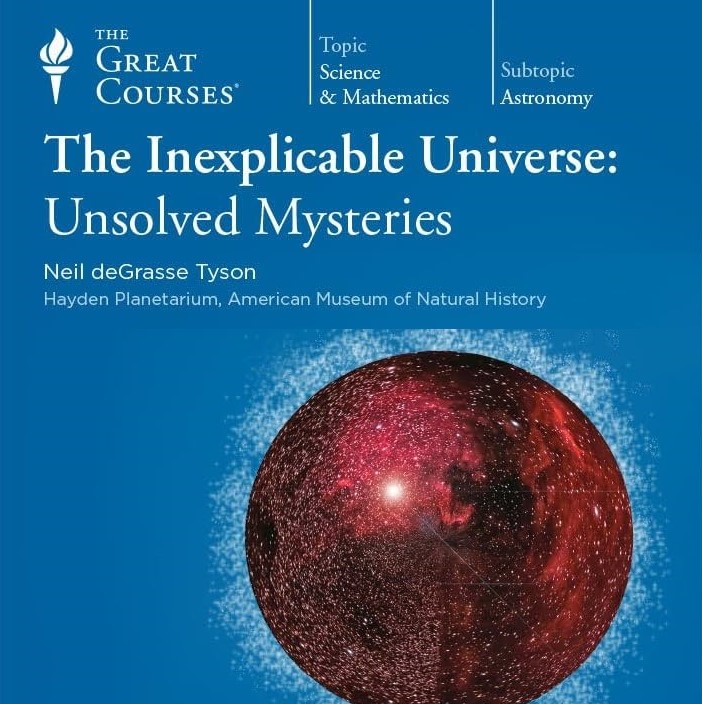

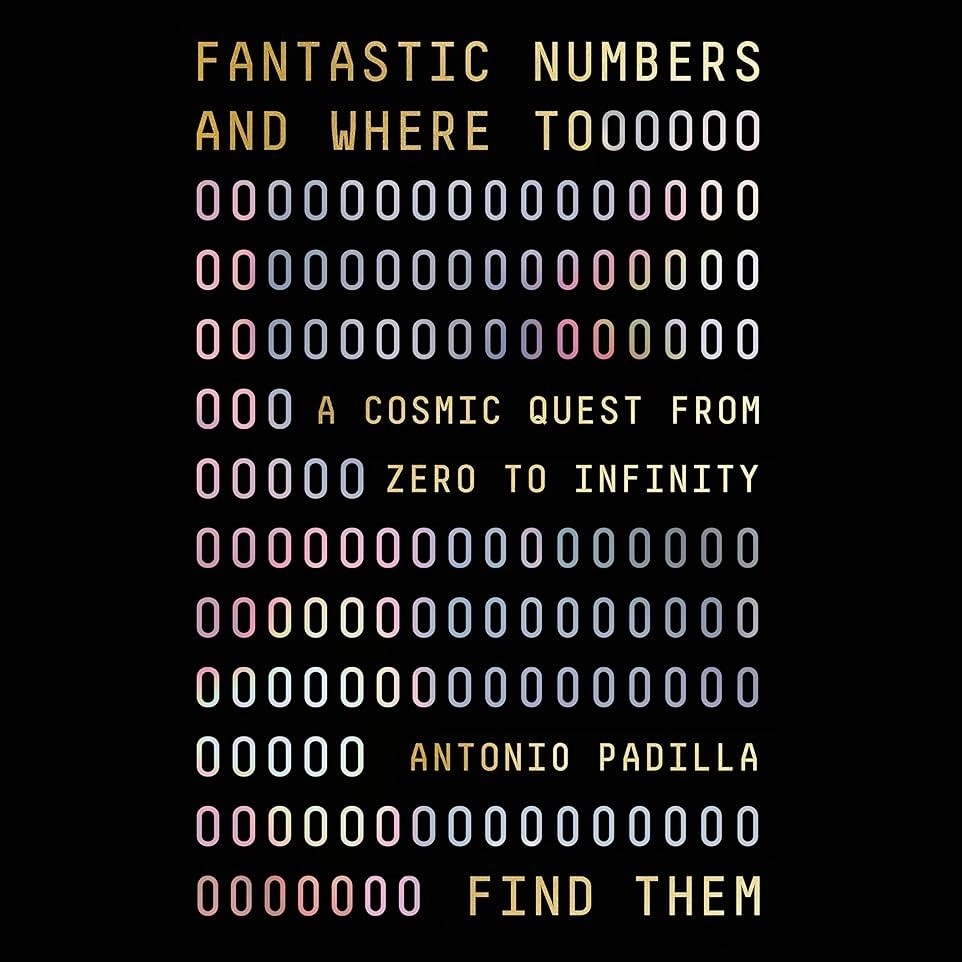 (1) Course review: DeGrasse Tyson, Neil, The Inexplicable Universe: Unsolved Mysteries, six half-hour lectures in the "Great Courses" series, undated. [My 4-star review of this book on GoodReads]
(1) Course review: DeGrasse Tyson, Neil, The Inexplicable Universe: Unsolved Mysteries, six half-hour lectures in the "Great Courses" series, undated. [My 4-star review of this book on GoodReads]
Astrophysicist Neil DeGrasse Tyson is a wonderful explainer of difficult scientific topics. The six lectures in this course are entitled:
- History's Mysteries
- The Spooky Universe
- Inexplicable Life
- Inexplicable Physics
- Inexplicable Space
- Inexplicable Cosmology
Summaries of the six lectures are available on the Great Courses Web site.
This course was the basis of a 2012 documentary miniseries.
(2) Book review: Avena, Nicole M., Sugarless: A 7-Step Plan to Uncover Hidden Sugars, Curb Your Cravings, and Conquer Your Addiction, unabridged 6-hour audiobook, read by Kim Ramirez, Tantor Audio, 2023.
[My 4-star review of this book on GoodReads]
That too much sugar is bad for you is something we all know. But the fact that sugar is addictive isn't as well-known. Sugar addiction begins in childhood. Kids' foods are loaded with sugar, and some parents make the problem worse by rewarding good behavior with sugary snacks. You may have heard the statement "Eat your broccoli and I'll give you a lollipop" from a parent. It is unfortunate that eating good food is portrayed as undesirable, an act that should be rewarded with harmful food.
Avena's 7-step plan, which I have already started to follow in my own life, is as follows:
- Admit you're addicted
- Take stock of your sugar intake
- Identify your triggers
- Begin with your beverages
- Break down your breakfast
- De-sugar your dinner
- Keep lunch & snacks super-simple
In this 68-minute video, Dr. Nicole Avena is interviewed about her book.
(3) Book review: Padilla, Antonio, Fantastic Numbers and Where to Find Them: A Cosmic Quest from Zero to Infinity, unabridged 14-hour audiobook, read by the author, Macmillan Audio, 2022.
[My 4-star review of this book on GoodReads]
Antonio Padilla, a leading theoretical physicist and YouTube star, asserts that numbers are awesome, but they are even more awesome if they represent physical realities. Physics gives numbers personalities. He then takes us on a cosmic tour of nine of the most-extraordinary numbers in physics, including:
- 1.000,000,000,000,000,858, the factor by which Usain Bolt slowed time during a record-breaking dash
- Graham's number, which is so large that it might cause your head to collapse into a singularity
- TREE(3), whose finite value could never be reached before the universe reset itself
- 10^(-120), which measures the highly-unlikely balance of energy the universe needs to exist
- 0.000,000,000,000,000,1 or 2^(-16), the unexpected mass of the Higgs boson particle
And, of course, there are zero & infinity (actually, infinities), not to mention the infamous googol & googolplex.
This YouTube presentation by Padilla, entitled "Mysterious Numbers: Unlocking the Secrets of the Universe" touches upon many of the Fantastic Numbers concepts.
2024/06/01 (Saturday): Presenting selected news, useful info, and oddities from around the Internet.


 (1) Images of the day: [Left] Late lunch at Shalhoob's Funk Zone Patio, followed by desserts at Goat Tree. [Center] IranWire cartoon: The Butcher of Tehran is being depicted as a saint. [Right] Some of the memorial plaques displayed on Santa Barbara's Stearns Wharf, including one that explains how the wharf was named.
(1) Images of the day: [Left] Late lunch at Shalhoob's Funk Zone Patio, followed by desserts at Goat Tree. [Center] IranWire cartoon: The Butcher of Tehran is being depicted as a saint. [Right] Some of the memorial plaques displayed on Santa Barbara's Stearns Wharf, including one that explains how the wharf was named.
(2) Is Salman Rushdie really wrong on Palestine? A self-described "Muslim" accuses Rushdie of Islamophobia. "Salman Rushdie is the embodiment of modern-day Islamophobia, a literary figure who masquerades as a 'progressive free thinker' and a by-product of a liberal atheist elite obsessed with Islam."
(3) One-liners: Brief news headlines, happenings, memes, and other items of general interest.
- Come on, US voters! Having a hard time deciding between a convicted felon & an old guy who walks funny?
- Bill Mahr advises pro-Palestinian protesters to take up the cause of gender apartheid.
- The US women's soccer team looked sharp today in prevailing over South Korea 4-0. [4-minute highlights]
- Math challenge: Find the greatest common divisor of 2^25 + 1 and 2^26 + 1.
- Facebook memory from June 1, 2020: We need politicians who read books!
- Facebook memory from June 1, 2011: Human beings are wired for optimism.
(4) Prepare the popcorn for Iran's presidential election soap opera: Already, infighting has started among factions close to the Supreme Leader, the only ones that will be allowed to run in the upcoming election to replace President Raisi.
Iranian elections are tightly controlled by the Guardian Council, which simply and without any explanation disqualifies anyone not to Khamenei's liking during the "vetting" process. But, at this early stage, candidates are allowed to sign up and to run their mouths against their potential rivals.
Former President Ahmadinejad seems to have much info about who went into which hotel room with whom, and is threatening to expose supposedly pious men with very loose zippers. Exposing financial fraud is another feature of Iranian elections, but somehow the embezzlers tend to prevail and everyone forgets about their misdeeds shortly after the election.
The mullahs' opposition groups will collect a lot of ammunition against them in the coming weeks, as exposures and threats of exposure cause one candidate after another to withdraw. Two high-level prospects have already announced that they won't run. Next will come a wave of disqualifications of candidates previously thought to be regime insiders.
You may need more than one tub of popcorn! [Persian version on Facebook]
2024/05/31 (Friday): Presenting selected news, useful info, and oddities from around the Internet.


 (1) Images of the day: [Left] Carpet bazaar in Tabriz, Iran. [Center] Nikola Tesla's statue in Niagara Falls, New York. [Right] Traditional Iranian breakfast.
(1) Images of the day: [Left] Carpet bazaar in Tabriz, Iran. [Center] Nikola Tesla's statue in Niagara Falls, New York. [Right] Traditional Iranian breakfast.
(2) According to Donald Trump, the trial leading to his conviction on 34 felony charges was rigged: "The real verdict is going to be November 5 by the people," he maintains. But then, he has said repeatedly that he won't accept the election outcome if he loses!
(3) Voyager 1 resumes its scientific mission after an interstellar crisis that required its antiquated 1970s computer to be fixed remotely over a distance of 24 billion km. [Source: Science magazine]
(4) One-liners: Brief news headlines, happenings, memes, and other items of general interest.
- Hossein Amanat, architect of Tehran's Azadi Tower, awarded honorary doctorate by U. British Columbia.
- Australia cautions its citizens against traveling to Iran. [Source: Kayhan London]
- Evaluation of the impact of Facebook misinformation on the uptake of the COVID-19 vaccine in the US.
- The ancient art of calligraphy is experiencing a revival. [NYT story]
- Persian music: "Jaan-e Maryam," a composition by Kambiz Mojdehi, played by international artists.
- After 45 years of being banned from public performance, Iranian women singers still sound wonderful!
(5) The following is a list of Republican officials calling for Trump to drop out of the presidential race, now that he has been convicted of 34 felonies.
The list is currently empty. It will be updated as Republican officials dare to stand up for their party.
(6) Verdict on the great Persian poet Sa'adi: I chanced upon a May 27, 2017, Facebook post by Yalda Sadeghi (reposted by a friend) in which she faults Sa'adi for his misogynistic, anti-Semitic, and xenophobic verses. Yes, he did write the wonderful verse,
"Human beings are members of a whole; In creation of one essence and soul,"
which is admired worldwide, but he also wrote,
"If the Christian well's water is unclean; It shouldn't bother you when washing a Jew's corpse,"
insulting Christians and Jews in one verse.
The original post and its repost garnered numerous comments, both in approval and in disapproval. Some commenters cited additional Sa'adi verses that are in poor taste. Many commenters pointed out that Sa'adi, like anyone living in those days, was the product of a society and a historical period. Judging him by today's standards is inappropriate.
The bottom line: Be proud of your talented and brilliant ancestors, but also be aware that they had many failings as humans, so don't raise them to the status of gods.
[My Facebook post, with Sa'adi's original Persian verses.]
2024/05/30 (Thursday): Presenting selected news, useful info, and oddities from around the Internet.


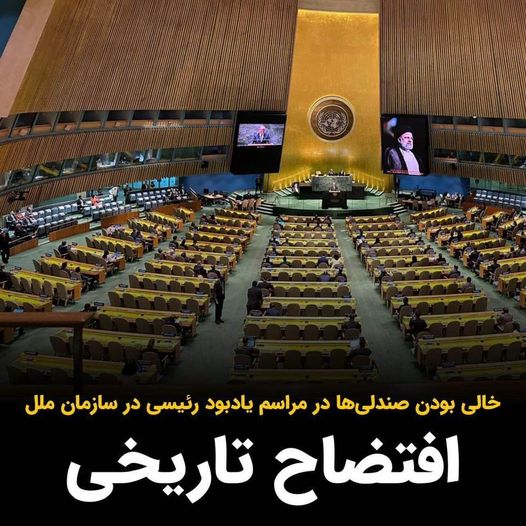 (1) Images of the day: [Left & Center] A first in US history: Trump found guilty on all 34 felony counts in the Manhattan hush-money case (see also the next item below). [Right] Today's special session of the United Nations General Assembly to honor Iran's President Raisi was very sparsely attended.
(1) Images of the day: [Left & Center] A first in US history: Trump found guilty on all 34 felony counts in the Manhattan hush-money case (see also the next item below). [Right] Today's special session of the United Nations General Assembly to honor Iran's President Raisi was very sparsely attended.
(2) Many high-ranking Republicans continue to stand with Trump after his conviction: Calling the trial a political circus and Trump a political prisoner (even before he is imprisoned) is an insult to hard-working Americans who assisted with Trump’s indictment and conviction. Members of the jury which convicted him are in danger, as are the prosecution team. Even if the DA had political motives, he still had to convince the jury that crimes had been committed and the defense had the opportunity to contradict the arguments and evidence. No person with such disregard for the law and the legal process should be entrusted with a public office.
(3) FBI dismantles world's largest botnet: Comprised of 19 million infected computers in 190+ countries, the botnet facilitated financial fraud, identity theft, child exploitation, bomb threats, and cyberattacks.
(4) One-liners: Brief news headlines, happenings, memes, and other items of general interest.
- Omarosa was telling the truth: There is indeed evidence of Trump referring to her using the n-word.
- Now in Stanford U.'s archives: Correspondence between Ebrahim Golestan and writer Sadeq Chubak.
- Mitsubishi robot solves Rubik's Cube in record 0.305 s: The best human solution time is 3.13 s.
- Bullet-proof bike tires, invented by NASA for use on rovers exploring other planets. [4-minute video]
- Facebook memory from May 30, 2018: Free speech vs. inclusivity on campus (even more relevant today).
- Facebook memory from May 30, 2018: The eighth Parhami Family reunion (the very last one).
(5) MIT Press leads in open-access book publishing: Libraries will pay an advance fee for each book. If enough funding is generated, digital copies will be made available to readers free of charge.
(6) Scorching temperatures predicted for summer months: Workers need additional protections, but some states are taking away existing protections.
(7) Extreme weather events and inflation caused US home insurance rates to increase by 11+ percent last year: These higher insurance costs are not reflected in the official inflation data, which explains part of the disconnect between how people feel about the economy and how it looks on paper.
(8) Super-sharers of fake news on Twitter: Only 2107 registered US voters were found to account for 80% of the fake news appearing on Twitter. Super-sharers consist mostly of women, older adults, and registered Republicans. Their posts are generated through manual and persistent retweeting, not automatically.
2024/05/28 (Tuesday): Presenting selected news, useful info, and oddities from around the Internet.
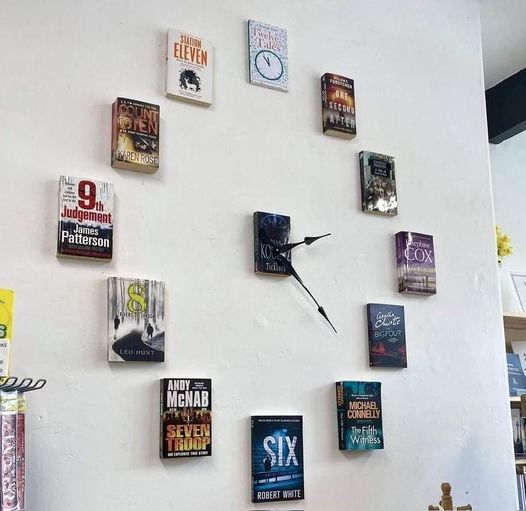
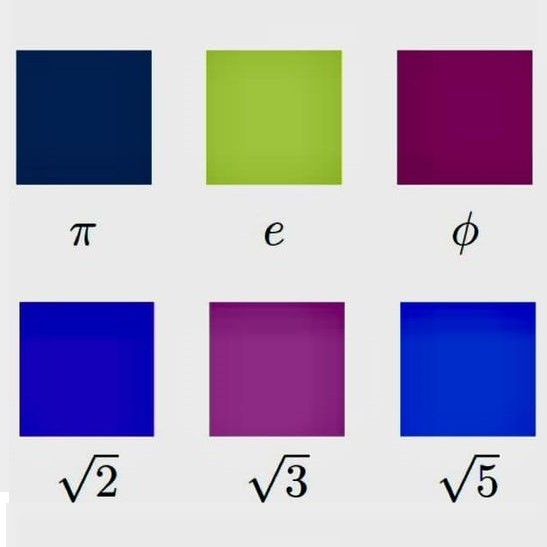
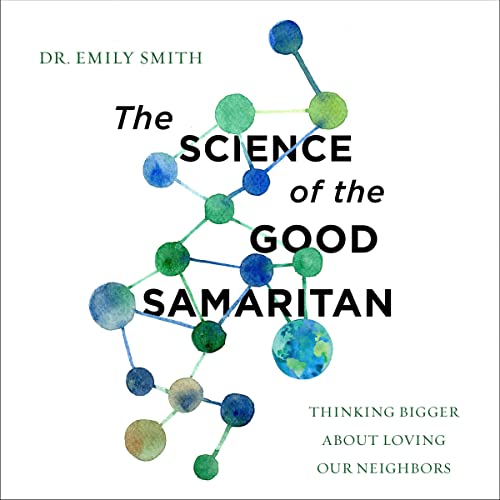 (1) Images of the day: [Left] Book lovers' wall clock. [Center] The colors of irrational numbers: Write the number pi in hexadecimal (3.243F6A8...), drop the integer part and keep the first six fractional digits (243F6A). The resulting 6-digit hex code represents a color. Any other irrational number can be similarly linked to a color (credit: Vadim Ponomarenko). [Right] The Science of the Good Samaritan (see the last item below).
(1) Images of the day: [Left] Book lovers' wall clock. [Center] The colors of irrational numbers: Write the number pi in hexadecimal (3.243F6A8...), drop the integer part and keep the first six fractional digits (243F6A). The resulting 6-digit hex code represents a color. Any other irrational number can be similarly linked to a color (credit: Vadim Ponomarenko). [Right] The Science of the Good Samaritan (see the last item below).
(2) Some US baseball records and record holders will change: Major League Baseball officially incorporates into its record book stats from the Negro Leagues, in operation from 1920 to 1948 when baseball was segregated.
(3) Non-permanence of on-line content: According to Pew Research Center, 38% of Web pages in existence in 2013 are no longer available, along with 8% of Web pages that existed last year. The analysis also found that 23% of news Web pages and 21% of government Web pages contain at least one broken link, and 54% of Wikipedia pages include at least one "References" link that is broken.
(4) One-liners: Brief news headlines, happenings, memes, and other items of general interest.
- University of California academic workers strike expands to UCLA and UC Davis.
- Being built at Liberty Canyon over the US 101 Freeway, SoCal's wildlife bridge will open in 2026.
- Food-mood connection: The food you eat affects all aspects of your health. Mental health is no exception.
- Our inner sense of time and why time appears to go by faster as we age. [3-minute video]
- The story of how blue LEDs were made, unlocking a revolution in efficient lighting. [12-minute video]
- If gays shouldn't get married b/c you are a Christian, then you can't order a steak b/c I am a vegetarian!
(5) Book review: Smith, Emily, The Science of the Good Samaritan: Thinking Bigger About Loving Our Neighbors, unabridged 7-hour audiobook, read by the author, Zondervan, 2023.
[My 2-star review of this book on GoodReads]
I am really ticked off by this book and its author. The word "Science" in the title along with the author's "Dr." honorific (she is a Duke U. faculty member with a PhD in epidemiology) strongly suggest a popular science book about what makes us humans an altruistic species, a la Matthieu Ricard's Altruism: The Science and Psychology of Kindness. So, I was shocked by the fact that the book contains no science, other than occasional references to the author's scientific background.
There are, however, many references to Jesus and Bible verses. I'm not saying that the book is worthless but that it is offered in a misleading package. A perfectly-fine box of cookies may similarly be dismissed if the package bears the label "Chocolates."
I liked some of the author's musings, such as her criticizing Texas Governor Greg Abbott over blaming the very high COVID rates in his state on a relatively small number of undocumented immigrants who tested positive, while Texas already had one of the highest COVID infection rates in the nation. Such logical statements do not overcome my primary objection to the book.
2024/05/27 (Monday): Presenting selected news, useful info, and oddities from around the Internet.

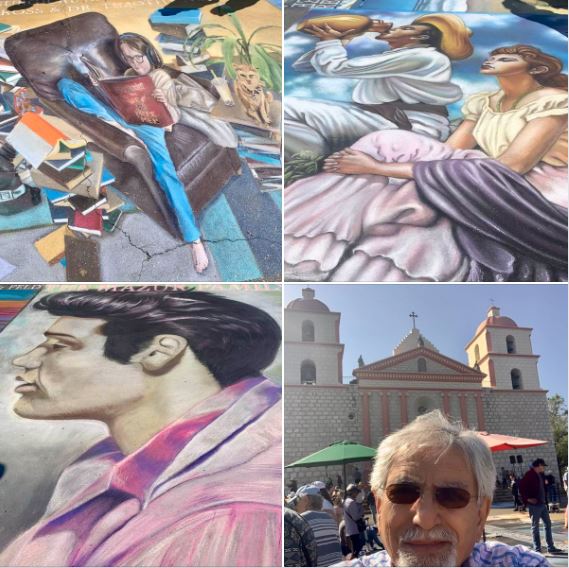
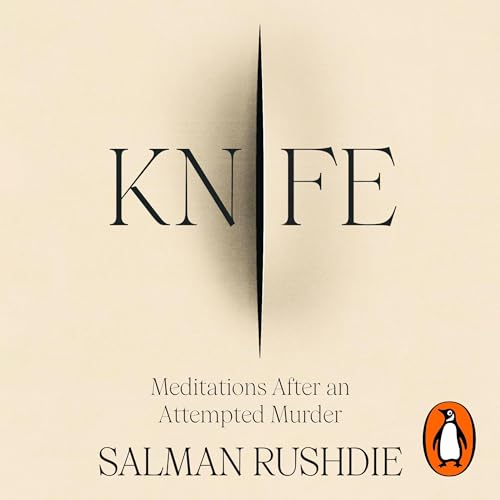 (1) Images of the day: [Left] On this US Memorial Day, we honor the memory of those who fell to protect our freedom: Kissing and hugging the flag and wrapping our misguided policies in it are cheap. Doing something for our veterans, including protecting them from predatory private colleges that mislead them and milk their educational benefits would be priceless. I love quoting Mark Twain on this occasion: "Patriotism is supporting your country all the time, and your government when it deserves it." [Center] The 2024 Italian Street-Painting Festival (I-Madonnari) in Santa Barbara: Held over the Memorial Day weekend at the Old Mission, the Festival brings together experienced and aspiring artists to create wonderful chalk paintings. There is also a music stage (sample music) and food & merchandise booths. [Right] Salman Rushdie's Knife (see the last item below).
(1) Images of the day: [Left] On this US Memorial Day, we honor the memory of those who fell to protect our freedom: Kissing and hugging the flag and wrapping our misguided policies in it are cheap. Doing something for our veterans, including protecting them from predatory private colleges that mislead them and milk their educational benefits would be priceless. I love quoting Mark Twain on this occasion: "Patriotism is supporting your country all the time, and your government when it deserves it." [Center] The 2024 Italian Street-Painting Festival (I-Madonnari) in Santa Barbara: Held over the Memorial Day weekend at the Old Mission, the Festival brings together experienced and aspiring artists to create wonderful chalk paintings. There is also a music stage (sample music) and food & merchandise booths. [Right] Salman Rushdie's Knife (see the last item below).
(2) Hamas fires rockets at Tel Aviv for the first time in months: Israel retaliates by bombing a camp where it claims Hamas has significant presence.
(3) Math challenge: If a, b, c, d are nonzero positive integers such that a/b + b/c + c/d + d/a is an integer, then (4abcd)^(1/4) is also an integer.
(4) One-liners: Brief news headlines, happenings, memes, and other items of general interest.
- Landslide in a Papua New Guinea village buries 2000 people alive.
- Taiwan is capable of disabling advanced chip-making machines in the event of a Chinese invasion.
- Check-in computers at several US hotels run a remote-access app that leaks guest info to the Internet.
- IRI thugs attack protesters in London: One of them kicks a woman who was pushed to the ground.
(5) Book review: Rushdie, Salman, Knife: Meditations After an Attempted Murder, unabridged 6-hour audiobook, read by the author, Random House Audio, 2024.
[My 5-star review of this book on GoodReads]
Satanic Verses, which elicited a fatwa death-sentence for the author from Ayatollah Khomeini, was Rushdie's 5th book. He has written more than a dozen books since. He states, somewhat jokingly: You don't have to start with that particular book; there are plenty of other books to go around.
In Knife, Rushdie does not name his assailant, referring to the 24-year-old knife-wielding man as "A." On a fateful day in August 2022, more than 33 years after Khomeini's fatwa, Rushdie suffered 15 stab wounds, one of them blinding him in the right eye and another one nearly paralyzing him. His recovery was long and arduous, and he dedicates this book to those who saved his life.
Rushdie tells his story in 8 chapters, bearing short titles: "Knife" (description of the attack); "Eliza" (the love of his life); "Hamot" (site of a hospital in Erie County, Pennsylvania); "Rehab" (nearly a month, somewhere in NYC); "Homecoming" (transferring to a second home in NYC); "The A." (a masterfully-written imaginary conversation with his assailant); "Second Chance" (reflections on what he might do with his newfound life); "Closure?" (is he now a different person or writer?).
Through Rushdie's powerful words, the reader experiences the pain of 15 knife stabs that almost killed him and the challenges of numerous procedures that brought him back from the dead. Of course, no one expects Rushdie to write about his medical ordeal and the subsequent rehab (both physical and psychological), without throwing in philosophical observations such as the irony of an atheist seeing his survival and return to a near-normal life as a miracle. Rushdie's writings are full of miracles and other supernatural events, but he himself is a follower of science and logic.
Rushdie describes his assailant as a simpleton who had no clear understanding of Rushdie's work or even of his own motives for planning to kill him. Rushdie cites a doctor as saying that he was lucky that the assailant had no idea of how to kill a man with a knife! Interspersed with factual reporting about his near-death experience and meditations, Rushdie also offers plenty of commentary on the poisonous political climate around the world.
Rushdie is grateful for all the messages of love and support coming from around the world. To him, the fact that Iran showed no reaction was fully expected, given that the country's leader had issued the death fatwa. However, he was stung by the total lack of support from India or Pakistan. Incredibly, someone once told him that if you make yourself a subject of hate then some hateful person will come for you.
2024/05/26 (Sunday): Presenting selected news, useful info, and oddities from around the Internet.


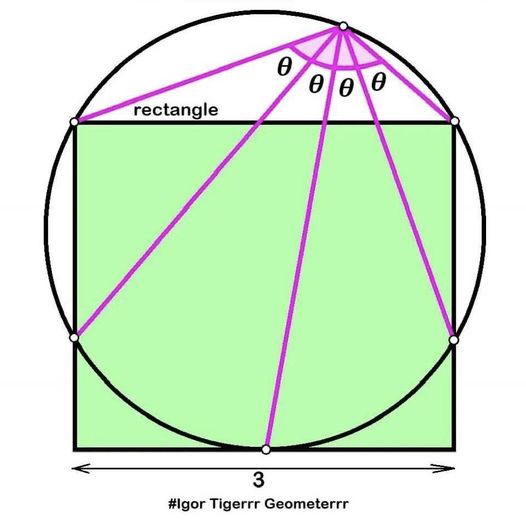 (1) Images of the day: [Left] Math puzzle: In this diagram featuring a regular pentagon, find the measure of the angle marked in orange. [Center] Our family's gathering for a memorable Memorial Weekend BBQ, hosted by my sister. The flowers and plant are samples of my photography during an afternoon walk in East Ventura. [Right] Math puzzle: Find the radius of the circle in this diagram featuring a rectangle and four equal angles.
(1) Images of the day: [Left] Math puzzle: In this diagram featuring a regular pentagon, find the measure of the angle marked in orange. [Center] Our family's gathering for a memorable Memorial Weekend BBQ, hosted by my sister. The flowers and plant are samples of my photography during an afternoon walk in East Ventura. [Right] Math puzzle: Find the radius of the circle in this diagram featuring a rectangle and four equal angles.
(2) "The Seed of the Sacred Fig": Mohammad Rasoulof made the film in Iran, cleverly skirting the censors. He recently fled the country on foot, after the mullahs issued an arrest warrant for him. He and his film are now at the Cannes Film Festival. Inspired by the #WomanLifeFreedom Revolution, the film's storyline represents gender and generational conflicts within a family.
(3) Tropical algebra: Consider the set of real numbers and operations of "tropical addition" x ta y = min(x, y) and "tropical multiplication" x tm y = x + y. An alternative form of tropical algebra uses max(x, y) for addition.
Computations of tropical algebra are easier/faster to implement in hardware, because multiplication is simplified to addition and exponentiation to multiplication. When real-valued input data is encoded as the transition instant of a signal from 0 to 1, a single OR gate can perform tropical addition.
The descriptor "tropical" was attached to this algebra by French mathematicians in honor of the Hungarian-born Brazilian computer scientist Imre Simon, who published several papers on these ideas in the late 1970s. Apparently, to Frenchmen, Brazil is quite tropical! Some on-line sources credit Bernard Carre's 1971 paper, "An Algebra for Network Routing Problems," as the birthplace of these ideas.
Many of the properties of ordinary algebra are valid in tropical algebra. For example, distributivity holds:
x tm (y ta z) = (x tm y) ta (x tm z)
Translation: x + min(y, z) = min(x + y, x + z)
A polynomial in tropical algebra takes the form:
f(x) = (a(0)) ta (a(1) tm x) ta (a(2) tm 2x) ta . . . ta (a(n) tm nx)
= min(a(0), a(1) + x, a(2) + 2x, . . . , a(n) + nx)
Explanation for tropical exponentiation: x te j = jx
Tropical algebra began garnering serious attention when it was realized that the Floyd-Warshall shortest-path algorithm using min-plus operations can be formulated in tropical algebra.
There is more to tropical math than the short introduction above. For example, there is tropical geometry, tropical analysis, and tropical cryptography, to name a few related areas.
The following book describes Tropical geometry as "a combinatorial shadow of algebraic geometry, offering new polyhedral tools to compute invariants of algebraic varieties. It is based on tropical algebra, where the sum of two numbers is their minimum and the product is their sum. This turns polynomials into piecewise-linear functions, and their zero sets into polyhedral complexes. These tropical varieties retain a surprising amount of information about their classical counterparts."
Maclagan, Diane and Bernd Sturmfels, Introduction to Tropical Geometry, American Math. Soc., 2015.
Here is a nice introduction to tropical mathematics.
2024/05/25 (Saturday): Presenting selected news, useful info, and oddities from around the Internet.





 (1) Images of the day: [Top left] An old private residence in Yazd, Iran, renovated and converted to a hotel. [Top center] A top-level mullah wishes martyrdom for all Islamic Republic of Iran officials: Finally, we are on the same page! [Top right] Just a beautiful, soothing image to prepare us for the long Memorial weekend ahead! [Bottom left & center] Double standards: Why is it that the UN and other sources condemn the death and destruction in Gaza Strip on a daily basis, whereas the same calamities in Ukraine barely get a mention? [Bottom right] Musings of a curious engineer: Today, during my long walk along Santa Barbara's waterfront, I noticed that hubcaps or wheel interiors for most cars (around 90%, perhaps) use 5-spoke designs. There are rare 6- and 7-spoke designs, but nothing else. Pursuing the reasons on-line, I found the following explanations. The Wheels have had 5 lugs for decades, so having 5 spokes allows the lugs to sit inside or between spokes. A prime number of spokes prevents vibrational harmonics from building up and creating undue stress. Of course, 3 and 7 are also prime numbers. Five spokes look nicer than 3 and are easier to manufacture than 7.
(1) Images of the day: [Top left] An old private residence in Yazd, Iran, renovated and converted to a hotel. [Top center] A top-level mullah wishes martyrdom for all Islamic Republic of Iran officials: Finally, we are on the same page! [Top right] Just a beautiful, soothing image to prepare us for the long Memorial weekend ahead! [Bottom left & center] Double standards: Why is it that the UN and other sources condemn the death and destruction in Gaza Strip on a daily basis, whereas the same calamities in Ukraine barely get a mention? [Bottom right] Musings of a curious engineer: Today, during my long walk along Santa Barbara's waterfront, I noticed that hubcaps or wheel interiors for most cars (around 90%, perhaps) use 5-spoke designs. There are rare 6- and 7-spoke designs, but nothing else. Pursuing the reasons on-line, I found the following explanations. The Wheels have had 5 lugs for decades, so having 5 spokes allows the lugs to sit inside or between spokes. A prime number of spokes prevents vibrational harmonics from building up and creating undue stress. Of course, 3 and 7 are also prime numbers. Five spokes look nicer than 3 and are easier to manufacture than 7.
(2) Yesterday's ECE Distinguished Lecture at UCSB: Dr. Matthew W. Daniels (NIST) spoke under the title "Computing Beyond Boolean Logic Using Time, Stochasticity, and Geometry."
We are so used to standard logic elements such as AND and OR gates that we find it difficult to imagine another platform for computation. Yet alternate computing technologies are being pursued with vigor. Among these, optical computing, biological computing, and quantum computing are best known. What Dr. Daniels focused on today is the use of the same CMOS logic elements to compute differently, because the data is viewed differently. He presented several examples.
a. Temporal computing: Inputs are logic signals that transition from 0 to 1, with the instant of transition being the data value of interest. With this interpretation, an AND gate outputs the larger of the two real input values and an OR gate the smaller of the two. One way of storing values is to convert time to resistance by building a variable resistor whose resistance increases with the time elapsed since a control signal was asserted and it stops changing when a data single arrives.
b. Stochastic computing: The probability of a signal value being 1 is the value of interest. An AND gate then becomes a multiplier of real numbers. This computation scheme imposes serious time penalties in most cases, as the inputs must vary over long-enough time periods for probabilities to make sense, but there are application areas that can benefit significantly from this scheme.
c. Ising models: These are mathematical models that use discrete variables to represent magnetic dipole moments of atomic "spins" that can be in one of two states (+1 or –1). The spins are arranged in a graph, usually an infinite lattice, allowing each spin to interact with its neighbors. Neighboring spins that agree have a lower energy than those that disagree.
d. Binarized neural networks: Data is encoded in the following way. Device conductance (inverse of resistance) represents synaptic weights and voltage/current stand for neuron I/O. This scheme, which multiplies weights by values and sums the resulting products, can be implemented in a purely analog form.
2024/05/24 (Friday): Presenting selected news, useful info, and oddities from around the Internet.




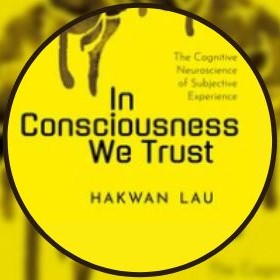
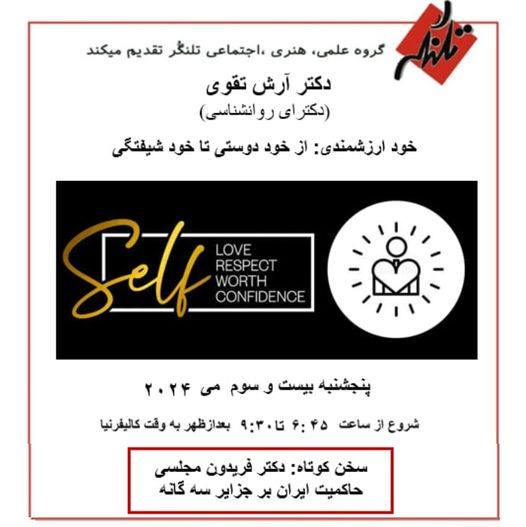 (1) Images of the day: [Top left] Rock-n-roll band from the Stone Age. [Top center] UCSB West Campus Point faculty housing Palm Plaza: More than three decades ago, and today. [Top right] Islamic hierarchy: Nine people died in a chopper crash atop the mountains of northwestern Iran. Yet we seldom read about the victims besides Ebrahim Raisi or Hossein Amirabdollahian. This memorial service announcement names five of the victims. The other four simply don't count. [Bottom left] Cartoon from the French satirical magazine Charlie Hebdo: Woman Life Freedom Helicopter. [Bottom center] Yet one more talk about consciousness (see the next item below). [Bottom right] Talk on self-love vs. narcissism (see the last item below).
(1) Images of the day: [Top left] Rock-n-roll band from the Stone Age. [Top center] UCSB West Campus Point faculty housing Palm Plaza: More than three decades ago, and today. [Top right] Islamic hierarchy: Nine people died in a chopper crash atop the mountains of northwestern Iran. Yet we seldom read about the victims besides Ebrahim Raisi or Hossein Amirabdollahian. This memorial service announcement names five of the victims. The other four simply don't count. [Bottom left] Cartoon from the French satirical magazine Charlie Hebdo: Woman Life Freedom Helicopter. [Bottom center] Yet one more talk about consciousness (see the next item below). [Bottom right] Talk on self-love vs. narcissism (see the last item below).
(2) Today's SAGE Center for the Study of the Mind talk at UCSB: Dr. Hakwan Lau, RIKEN Center for Brain Science, Japan, and author of In Consciousness We Trust: The Cognitive Neuroscience of Subjective Experience, talked under the title "The End of Consciousness."
Consciousness is a very difficult topic to discuss and understand. Most descriptions of it entail either hand-waving or circular arguments. My latest read on the topic, Nineteen Ways of Looking at Consciousness, failed to clarify the problem for me.
My review on GoodReads: https://www.goodreads.com/review/show/6518323954
According to Lau, 'consciousness' is an archaic term that served a useful purpose at one time. Biologists who are interested in the nature of life no longer try to look for 'vital forces.' Instead, they identify specific functions that are essential for living — e.g. reproduction, metabolism, genetics, digestion — and they develop mechanistic explanations for these functions, through careful experimentation and empirically-informed theorizing.
Lau suggests that subjective perception, attention, metacognition, wakefulness, rational control of behavior, and even metaphysical speculations about the mind are all intertwined. Just like 'vital forces,' the utility of consciousness for rigorous theorizing has expired, and the term has accordingly become a liability. As the end begins, a more mature science will emerge.
(3) Tonight's Talangor Group program: Dr. Arash Taghavi spoke under the title "Self-Worth: From Self-Love/Respect/Confidence to Narcissism." Before the main talk, Dr. Fereydoun Majlessi briefly discussed "Iran's Ownership of Three Islands in the Persian Gulf." There were ~100 attendees.
Self-love, like all love, arises from caring. The object of love isn't assumed to be perfect; in fact, s/he may have many shortcomings, that give rise to the need for help or protection. Self-absorption, or narcissism, is based on the idea of self-perfection, which, counterintuitively, arises from a high level of insecurity.
A narcissist is incapable of listening or taking advice. You cannot argue with a narcissist, because s/he is insecure and views any criticism as a personal attack. A narcissist demands compliance from those around him/her and resorts to gaslighting, threatening, or guilt-tripping, for example, to control others.
The difference between self-love/respect/confidence and narcissism is the difference between a personality trait and a personality disorder. There is no known treatment for narcissism, so we should learn to recognize its symptoms in order to protect ourselves.
Self-love can lead to the establishment of personal boundaries, which are sometimes mistaken for narcissism. A self-loving person lives as s/he pleases and does not constantly seek other people's approval. S/he also does not try to impose a way of life on others.
It is difficult to sum up discussions on psychology and human behavior. Boundaries between various conditions are often blurred and open to interpretation. In the preceding paragraphs, I have tried to touch upon key terms and concept. I found the following article helpful: https://www.psychologs.com/narcissism-v-s-self-love-who-wins/
2024/05/23 (Thursday): Presenting selected news, useful info, and oddities from around the Internet.


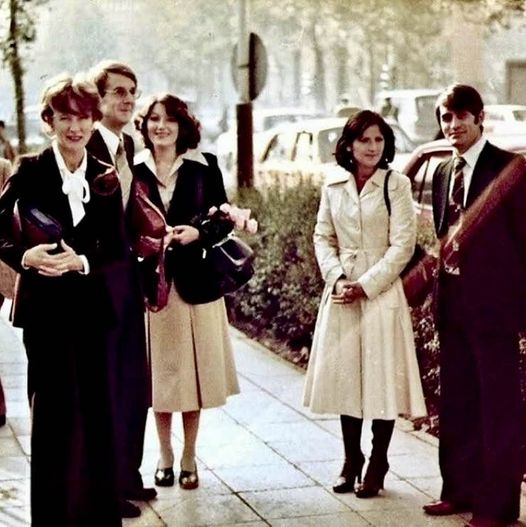
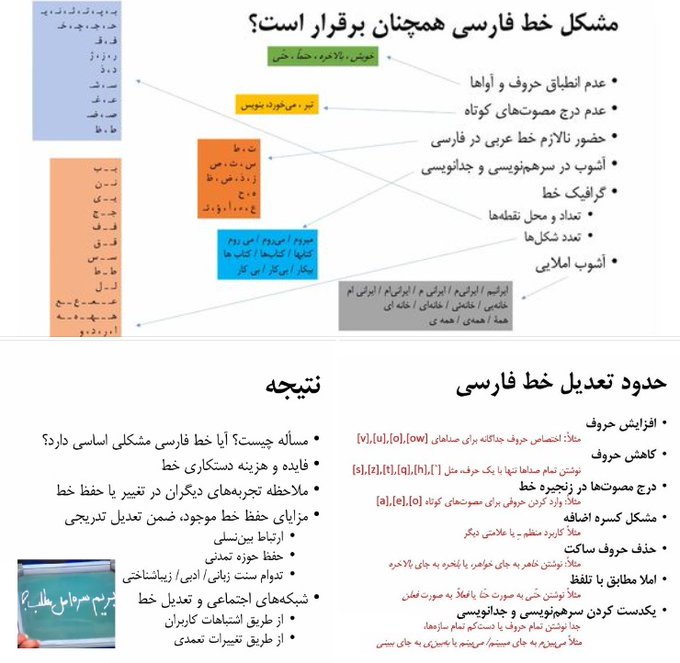
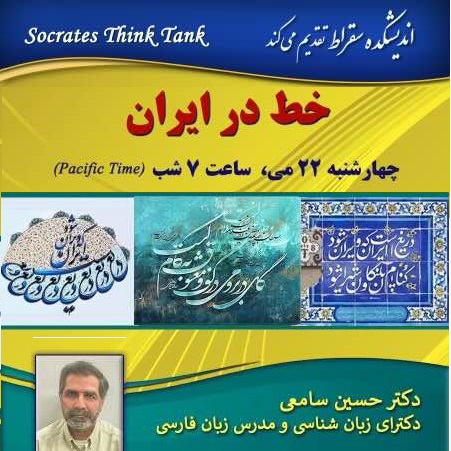
 (1) Images of the day: [Top left] Throwback Thursday (1): When I was a child, we'd buy sugar in cone form and would use tools ("ghand-shekan" or sugar-cube breaker) to break it down into small, irregular chunks to serve with tea. Packaged sugar-cubes had just entered the market, but they were still luxury items and, besides, would melt too quickly in your mouth. [Top center] Throwback Thursday (2): Undated newspaper ad for sea trip from Khorramshahr, Iran, to New York, taking 30-32 days. [Top right] Throwback Thursday (3): Iranians on the street in the pre-Islamic era. Notice the smiles, which have been wiped off their faces by the joyless mullahs. [Bottom left & center] Talk on the evolution of the Persian script (see the last item below). [Bottom right] Cartoon from the French satirical magazine Charlie Hebdo: Woman Life Freedom Helicopter.
(1) Images of the day: [Top left] Throwback Thursday (1): When I was a child, we'd buy sugar in cone form and would use tools ("ghand-shekan" or sugar-cube breaker) to break it down into small, irregular chunks to serve with tea. Packaged sugar-cubes had just entered the market, but they were still luxury items and, besides, would melt too quickly in your mouth. [Top center] Throwback Thursday (2): Undated newspaper ad for sea trip from Khorramshahr, Iran, to New York, taking 30-32 days. [Top right] Throwback Thursday (3): Iranians on the street in the pre-Islamic era. Notice the smiles, which have been wiped off their faces by the joyless mullahs. [Bottom left & center] Talk on the evolution of the Persian script (see the last item below). [Bottom right] Cartoon from the French satirical magazine Charlie Hebdo: Woman Life Freedom Helicopter.
(2) C. Gordon Bell, a visionary who helped design some of the first minicomputers in the 1960s, dead at 89: Bell [1934-2024] went to work in 1960 for Digital Equipment Corporation, where he started designing computers like the PDP-8, the first commercially successful minicomputer. Bell spent 23 years at DEC as vice president of research and development before leaving and co-founding his own companies, Encore Computer and Ardent Computer. In 1986, Bell joined the National Science Foundation and advised Microsoft in the early 1990s before joining the company as a senior researcher in 1995. The computer pioneer was always looking ten steps ahead and building that version of the world.
(3) Today marks the 10th anniversary of the Isla Vista mass-murder tragedy that claimed the lives of six UCSB students and injured 14 others on May 23, 2014: Remembrance and memorial events are planned by a number of campus and student organizations.
(4) UN sends condolences for President Raisi's death, seemingly forgetting its own condemnations of Islamic Iran's vast human rights abuses under "the butcher of Tehran" and other regime criminals.
(5) Will we finally afford to go to a live concert? The Ticketmaster parent company is being accused of having an illegal monopoly. Consumers have been screaming for years about obnoxiously high fees charged on top of already expensive concert ticket prices. The US Justice Department finally listened.
(6) Tonight's Socrates Think Tank talk: Dr. Hossein Samei spoke under the title "Script in Iran." He presented a comprehensive review of how the Persian script has evolved over the centuries and outlined the many efforts that have come about to change or reform the script. The challenges that have motivated the aforementioned change/reform proposals include mismatch between the written and spoken forms, elimination of short vowels, inconsistencies brought about by mixing Persian & Arabic scripts, chaos in connecting or not connecting parts of the same word, locations & multiplicities of dots, different shapes for the same letter, and disorder in spelling.
2024/05/22 (Wednesday): Presenting selected news, useful info, and oddities from around the Internet.


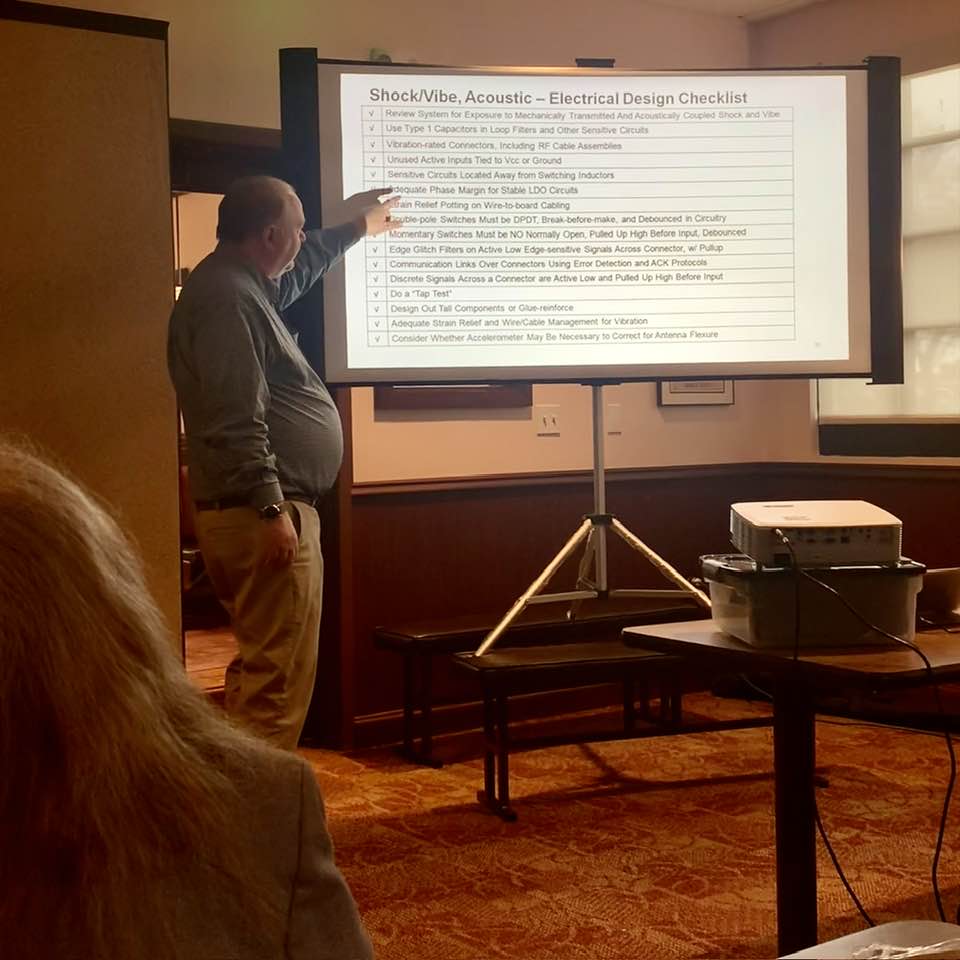 (1) Images of the day: [Left] Bertolt Brecht said it all: "Who does not know the truth, is simply a fool ... yet who knows the truth and calls it a lie, is a criminal." [Center] My daughter's kashk-e bademjoon (Persian eggplant dish, with curd). [Right] Talk on vibration effects in electronic circuits (see the next item below).
(1) Images of the day: [Left] Bertolt Brecht said it all: "Who does not know the truth, is simply a fool ... yet who knows the truth and calls it a lie, is a criminal." [Center] My daughter's kashk-e bademjoon (Persian eggplant dish, with curd). [Right] Talk on vibration effects in electronic circuits (see the next item below).
(2) Tonight's IEEE Central Coast Section tech talk: Dan Bezzant (Raytheon) spoke under the title "Vibration Effects on Electronic Circuitry."
The phrase 'solid state' has brought many in the profession to think that digital electronic circuits are immune to mechanical events around them. Bezzant's discussion showed from a practical viewpoint how shock and vibration can affect the function of electronic circuits, how this effect gets propagated from mechanical shock or vibration to the operation of a solid-state circuit, and what design techniques can be used to mitigate or eliminate disruptions to functionality.
(3) This Certificate of Appreciation was awarded by conference organizers for the opening keynote lecture I delivered to DCHPC 2024 on Tuesday, May 14, 2024, under the title "Fixed-Degree and Constant-Diameter Interconnection Networks for Parallel Supercomputing."
(4) One-liners: Brief news headlines, happenings, memes, and other items of general interest.
- A UNC-CH business school professor learns that some of his classes were recorded without his knowledge.
- Facebook memory from May 22, 2015: Manhood, manliness, and patriarchy.
- Facebook memory from May 22, 2011: The day I entered historical records.
- Facebook memory from May 22. 2010: On reason overcoming flaming passion.
(5) Did US sanctions kill Iran's President Raisi? According to former FM Javad Zarif, the difficulty in obtaining spare parts for Iran's aging choppers and planes directly contributed to the crash that killed Raisi. Yet, for years, Iran's Supreme Leader and other top officials have claimed that not only sanctions do not affect Iran's economy, but they are blessings in disguise, because they help the country become self-sufficient. As the Persian saying goes: Should we believe the fox's denial or the rooster's tail that's sticking out?
(6) "OSIRIS-Rex: Revealing Secrets from the Dawn of our Solar System": In continuation of the National Air and Space Museum's lecture series on samples-return NASA missions, Dr. Dante Lauretta (Head of OSIRIS-REx research team at the University of Arizona) discussed the findings from the first set of data from analysis of the samples returned from near-Earth asteroid Bennu. The OSIRIS-REx spacecraft launched in September 2016 and began its journey to Bennu, a carbon-rich, near-Earth asteroid. The spacecraft rendezvoused with Bennu in 2018 and successfully obtained a sample in October 2020. The spacecraft embarked on its return voyage to Earth on May 10, 2021. On Sept. 24, 2023, the spacecraft jettisoned the sample capsule and sent it onto a trajectory to touch down in the Utah desert. Analysis of the sample promises to provide insights into the formation of the Earth as a habitable world and the origin of life.
2024/05/20 (Monday): Presenting selected news, useful info, and oddities from around the Internet.
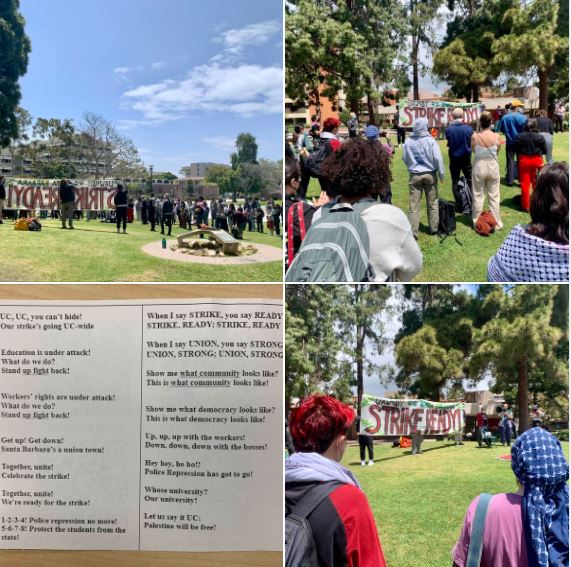



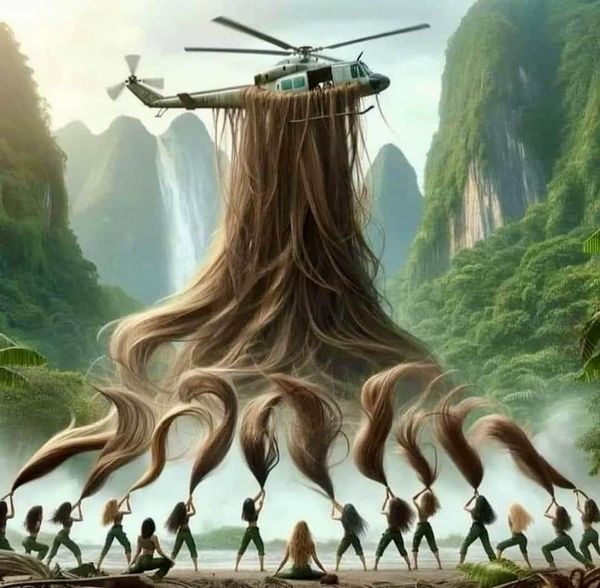
 (1) Images of the day: [Top left] Today, on the UCSB campus: Students protesting in support of Palestine are preparing to strike. [Top center] Displays of nature's colorful beauty. [Top right] Lecture on Iran-America relations (see the last item below). [Bottom left & center] The deceased Iranian President Ebrahim Raisi had vowed to escalate the fight against hijablessness: Here are how two artists have interpreted his demise. [Bottom right] Fifteen Baha'i women sentenced to jail terms, fines, and civic probations in Isfahan, Iran.
(1) Images of the day: [Top left] Today, on the UCSB campus: Students protesting in support of Palestine are preparing to strike. [Top center] Displays of nature's colorful beauty. [Top right] Lecture on Iran-America relations (see the last item below). [Bottom left & center] The deceased Iranian President Ebrahim Raisi had vowed to escalate the fight against hijablessness: Here are how two artists have interpreted his demise. [Bottom right] Fifteen Baha'i women sentenced to jail terms, fines, and civic probations in Isfahan, Iran.
(2) Get Ready for More 'Hard Landings' in the Middle East (Michael Rubin, in the
Washington Examiner): "Iranian President Ebrahim Raisi perished in what Iranian media initially labeled a 'hard landing.' That Iranians celebrated with fireworks in Raisi's hometown Mashhad reflects the hatred with which Iranians view the regime that oppresses them. This should be a warning to the regime: Raisi is one thing, but when 85-year-old Supreme Leader Ali Khamenei has his hard landing, it will kick-start Iranians' active quest for regime change."
"For the European Union to send condolences upon the Butcher of Tehran's death shows the moral blindness at the heart of European policy; it is equivalent to sending condolences upon the 1942 death of Reinhard Heydrich, the German Reich's acting governor of Bohemia and Moravia."
(3) The Cuban spies who infiltrated the US government and operated with impunity for many years: Cuba apparently can't use the gathered intelligence, so it's likely in the business of selling it to other US adversaries.
(4) UCLA Bilingual Lecture Series on Iran: Dr. Firoozeh Kashani-Sabet (U. Penn) spoke today in English under the title "Heroes to Hostages: US-Iran Diplomacy through Race Relations and Human Rights." The Persian version of the lecture was delivered yesterday.
Iranian intellectuals of the post-Mosaddeq era advanced an anti-colonial rhetoric that burst wide open during the Islamic Revolution of 1979. Many writers, some with socialist leanings, watched with interest political happenings in formerly colonized states. These conflicts were often rooted in experiences of racial discrimination and social inequality. At the same time, the Iranian state also engaged with some of these themes and expanded its diplomatic relations with a range of countries in the Global South.
Although formal ties between Iran and the US were strengthened during the two decades preceding the 1979 revolution, social dissent also grew markedly. The debate on human rights gave voice to these concerns, as Iran's politicians and writers reflected on the legacy of human rights and reassessed the country's ties to the West. Race relations provided an unanticipated and often missed opportunity for collaboration.
Note: In the context of this talk and the book on which it is based, "race" also embraces ethnicity (viz., the Arab or the Iranian race).
2024/05/19 (Sunday): Presenting selected news, useful info, and oddities from around the Internet.


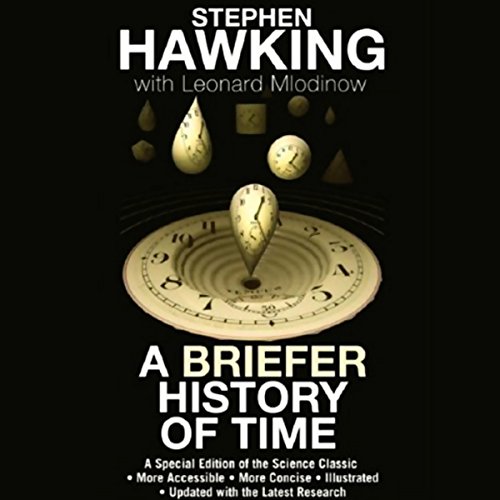 (1) Images of the day: [Left] Discussion on AI (see the next item below). [Center] Copter crash in northwestern Iran (see item 3 below). [Right] A Briefer History of Time (see the last item below).
(1) Images of the day: [Left] Discussion on AI (see the next item below). [Center] Copter crash in northwestern Iran (see item 3 below). [Right] A Briefer History of Time (see the last item below).
(2) Lecture and panel discussion on AI's past, present, and future: In a Zoom session, hosted by the SoCal Chapter of SUTA (Sharif U. Technology Association), Dr. Babak Hojjat, CTO at Cognizant, reviewed AI's accomplishments and potentials. Panelists Mohammad Ramazanali (Salesforce), Dr. Yahya Tabesh (Professor Emeritus, SUT), and Mitra Zaimi (Unisys) then discussed the topic.
(3) Helicopter carrying Iran's President and Foreign Minister crashes upon landing: Rescue teams have not yet reached the crash site.
Mid-morning update: Early reports from Iran indicated that President Raisi's copter had a hard landing. It now seems that it crashed in a mountainous area with very low visibility, likely by hitting a mountain. While hard landings may be survivable, crashes rarely leave survivors.
Late-night update: Iran's President, Foreign Minister, and seven others are confirmed dead at the crash site.
(4) IEEE honors the 50th anniversary of the Internet: In the second of a three-part program, IEEE virtually celebrated 50 Years of the Internet, honoring the 1974 IEEE Computer Society paper on TCP by Vint Cerf & Bob Kahn. Tomorrow's third part, held in a hybrid format at the Computer History Museum, will officially dedicate the historic paper above, as well as the work of the IEEE 802 Standards Committee and the birth of Google & its PageRank Algorithm. [Streaming on IEEE TV]
(5) Book review: Hawking, Stephen (with Leonard Mlodinow), A Briefer History of Time, unabridged 4-hour audiobook, read by Erik Davies, Random House Audio, 2005. [My 4-star review of this book on GoodReads]
A Brief History of Time (1988) was a hugely successful science book that sold a copy for every 750 Earth inhabitants and was translated into dozens of languages, turning Hawking into a global cultural icon. This new version of the book focuses on the most-important topics of the original, adding depth as well as new material and explanations.
When we talk about the greatest scientist of all time, Einstein invariably comes to mind. Hawking isn't at the same level, given the theories for which he is responsible defy experimental verification and are thus viewed with skepticism by some other scientists. But when it comes to explaining science to the public, Hawking beats Einstein and maybe even the "explainer-in-chief" Richard Feynman. Given how many difficult topics were addressed in A Brief History of Time, it is a testament to Hawking's communication skills that so many people read it (or attempted to read it).
In this update & rewrite of A Brief History of Time, Hawking and Mlodinow focus on quantum mechanics, string theory, the Big-Bang theory, & other topics in a more accessible fashion to the general public. Newly discovered concepts are included and previously-known topics are explained in greater detail throughout the book.
2024/05/17 (Friday): Presenting selected news, useful info, and oddities from around the Internet.


 (1) Images of the day: [Left & Right] Geometric beauty of plants and vegetables. [Center] You can tell the chemical composition of a meteor from its color. [Right]
(1) Images of the day: [Left & Right] Geometric beauty of plants and vegetables. [Center] You can tell the chemical composition of a meteor from its color. [Right]
(2) Climate change threatens Big Sur's scenic access road: Between 2016 and 2023, Caltrans spent $315 million dollars in unplanned emergency work in the area after fires, mudslides, and bridge collapses.
(3) Math challenge: You run a lap around the track at an average speed of V. How fast should you run a second lap so that your overall average speed for both laps is 2V?
(4) One-liners: Brief news headlines, happenings, memes, and other items of general interest.
- Humanitarian aid is flowing into Gaza by way of a floating pier built by the US military.
- Leading cause of death for pregnant & postpartum women in the US: Murder by an intimate partner.
- Actress Reese Witherspoon leads a book club that reliably sends its monthly picks onto the best-seller list.
- Demonstration that a bull set free, without being made angry, runs happily and does not touch anyone.
- Math challenge: Which is larger, the number 10! (10 factorial) or the number of seconds in 6 weeks?
- California Strawberry Festival returns to Ventura County Fairgrounds this weekend, 5/18-19.
- Madrid-based Grupo Talia (orchestra & choir) performs many memorable international pop songs.
- "I Feel Good," performed by Grupo Talia in a way that really makes you feel good!
(5) Our justice system at work: Indiana judge rules that tacos are sandwiches, allowing a taco vendor to operate in a mall that accommodates sandwich shops but bans fast-food joints.
(6) Risky pathogen research: The Biden administration is tightening federal oversight of the so-called "gain-of-function" studies that could enhance risky viruses to increase their ability to cause a pandemic.
(7) Another pay-to-publish program unmasked: "Last year, physician Rupak Desai coauthored more than three dozen conference abstracts in Circulation, the American Heart Association's (AHA's) flagship journal. The works marked a modest fraction of his publications in 2023, which totaled 162. But Desai, scholarly productivity notwithstanding, is not employed by a hospital, university, or any other type of scientific institution."
"Based in Atlanta, Desai runs a business that offers junior doctors from around the world a chance to beef up their CVs before applying for coveted residency or fellowship positions at hospitals or physician offices in the United States. For about $1000 and a commitment to work 10 to 15 hours remotely over a few weeks, last year's participants in Desai's Express Research Workshop could get a byline on three abstracts submitted to AHA's biggest annual conference, the Scientific Sessions meeting, according to an online ad that was removed after Science contacted Desai for this story." [From Science magazine, May 10, 2024]
2024/05/16 (Thursday): Presenting selected news, useful info, and oddities from around the Internet.


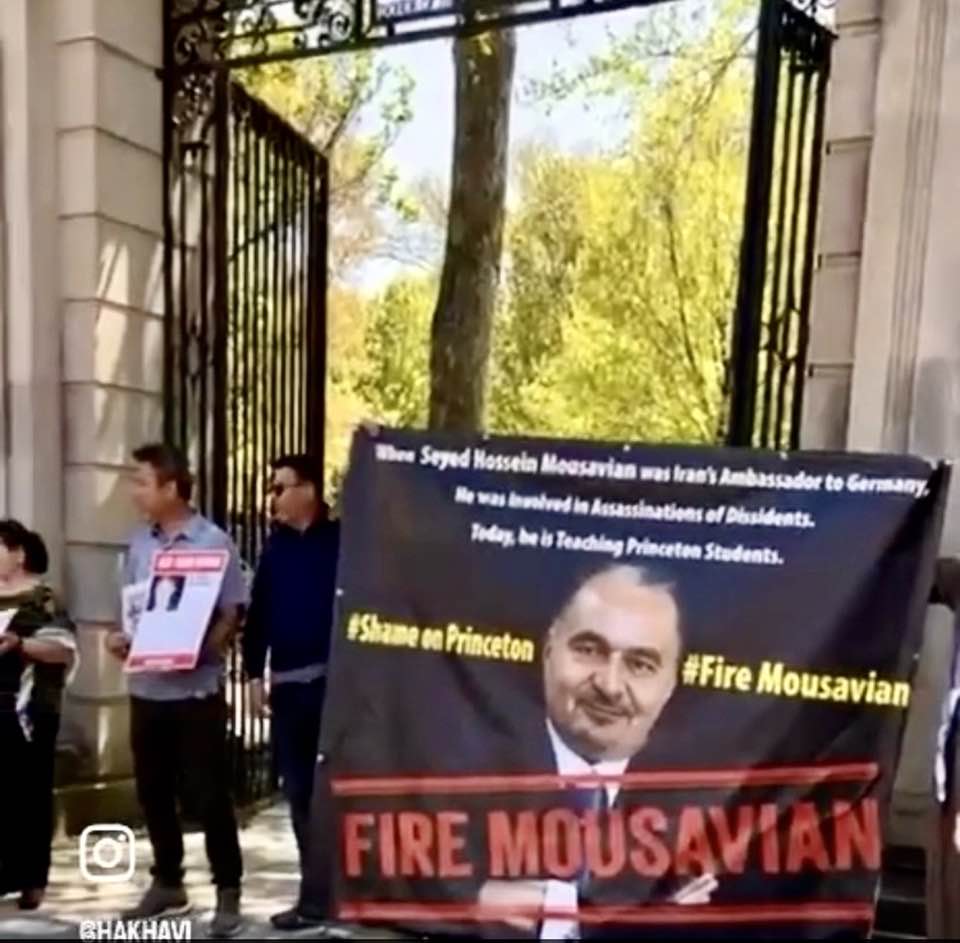 (1) Images of the day: [Left] This UCSB service vehicle nonchalantly drove on walkway near the Engineering II Building around 2:00 PM on Wednesday 2024/05/15 and parked in front of Courtyard Cafe. I hope the driver had legitimate business there, rather than going in to get a cup of coffee. [Center] Opposition figure and anti-compulsory-hijab campaigner Masih Alinejad is being portrayed by Iran's cyber-army as a stooge of the mullahs: They know they are hated and want to transfer some of that hatred to someone whose effective women's-rights campaign has put fear in their hearts. Most Iranians know better than to fall for these childish accusations. Alinejad is human and has committed a number of strategic errors over the years, but she is no stooge of the misogynistic Islamic regime. [Right] Campaign to have ex-IRI official Seyed Hossein Mousavian fired by Princeton U. kicks into high gear.
(1) Images of the day: [Left] This UCSB service vehicle nonchalantly drove on walkway near the Engineering II Building around 2:00 PM on Wednesday 2024/05/15 and parked in front of Courtyard Cafe. I hope the driver had legitimate business there, rather than going in to get a cup of coffee. [Center] Opposition figure and anti-compulsory-hijab campaigner Masih Alinejad is being portrayed by Iran's cyber-army as a stooge of the mullahs: They know they are hated and want to transfer some of that hatred to someone whose effective women's-rights campaign has put fear in their hearts. Most Iranians know better than to fall for these childish accusations. Alinejad is human and has committed a number of strategic errors over the years, but she is no stooge of the misogynistic Islamic regime. [Right] Campaign to have ex-IRI official Seyed Hossein Mousavian fired by Princeton U. kicks into high gear.
(2) The Frontier supercomputer at Oak Ridge National Lab again ranked first in the Top 500 list of the world's most powerful supercomputers: The US has 171 systems on the list, including the Aurora supercomputer at Argonne National Lab. As for networking technologies, Infiniband is used by nearly half the systems on the Top 500 list (48%), while Ethernet is used by 39%.
(3) According to US FDA, 200+ diabetes patients were injured when their insulin pumps shut down unexpectedly: Version 2.7 of the t:connect Apple iOS app, used with the t:slim X2 insulin pump with Control-IQ, had a software issue that caused it to repeatedly crash and relaunch, draining the pump's battery and causing it to shut down and suspend insulin delivery. The app has been recalled.
(4) One-liners: Brief news headlines, happenings, memes, and other items of general interest.
- I am always impressed by how artists draw a portrait: Here is a wonderful sample.
- The design of the Titanic ocean liner and why it was doomed to sink. [19-minute video]
- Paul McCartney praises Beyonce's magnificent cover of his civil-rights-inspired song "Blackbird."
- Persian music: "Dokhtar-e Hamsayeh" ("The Girl Next Door"). [2-minute video]
(5) A so-called think tank in Tehran, with direct ties to IRGC terrorists and the Islamic regime's intelligence apparatus runs Iran's influence campaign in America and Europe, while not being targeted by sanctions.
(6) University of California union of academic employees, which includes graduate-student researchers, TAs, and post-docs, authorizes a strike which may begin as early as today. UAW alleges unfair employment practices over the handling of pro-Palestinian protests.
(7) Florida, the state in greatest danger from sea-level rise and other consequences of global warming, decides to stick its head in the sand and remove references to climate change from its energy policies.
(8) Bidirectional charging: Student transportation provider Zum is initiating a project with the Oakland Unified School District to send power from EV bus batteries back to the California utility grid. Oakland, the first school district to fully electrify its bus fleet, can potentially return 2.1 GWh of energy to the grid annually through this program. Larger districts like San Francisco Unified and Los Angeles Unified are expected to follow suit. [CNBC]
2024/05/14 (Tuesday): Presenting selected news, useful info, and oddities from around the Internet.
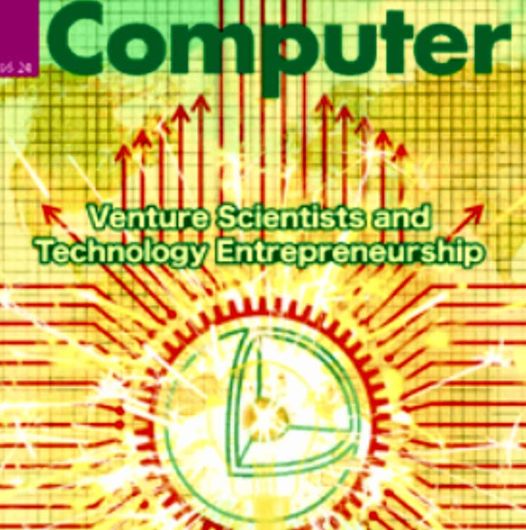

 (1) Images of the day: [Left] Venture scientists and technology entrepreneurship: This is the cover theme of IEEE Computer magazine's May 2024 issue which begins with the column "Dissertation, Inc." and continues with several articles on how elite science & engineering programs around the world encourage their graduates to shift their focus from being job consumers to becoming innovators and job creators. [Center] Terrorist president greets terrorist "diplomat": The so-called diplomat, who was sentenced to 20 years in prison but was later returned to Iran, complains that in prison, he was fed stale bread and high-fat cheese, with no soda! [Right] Yutaka Nishiyama's The Mysterious Number 6174 (see the last item below).
(1) Images of the day: [Left] Venture scientists and technology entrepreneurship: This is the cover theme of IEEE Computer magazine's May 2024 issue which begins with the column "Dissertation, Inc." and continues with several articles on how elite science & engineering programs around the world encourage their graduates to shift their focus from being job consumers to becoming innovators and job creators. [Center] Terrorist president greets terrorist "diplomat": The so-called diplomat, who was sentenced to 20 years in prison but was later returned to Iran, complains that in prison, he was fed stale bread and high-fat cheese, with no soda! [Right] Yutaka Nishiyama's The Mysterious Number 6174 (see the last item below).
(2) Violence against women: According to Etemad newspaper, at least 23 Iranian women and girls have been killed by men in their families in the first 1.5 months of the Persian new year 1403.
(3) Book review: Nishiyama, Yutaka, The Mysterious Number 6174: One of 30 Amazing Mathematical Topics in Daily Life, Gendai Sugakusha Co., 2013. [My 4-star review of this book on GoodReads]
This is a fascinating book from start to finish. I recommend it highly to anyone interested in mathematical puzzles, oddities, and mysteries.
Let me describe the number in the book's title, which is the subject of Chapter 15. Take an arbitrary 4-digit number whose digits are not all the same. Perform the Kaprekar operation on the number as follows: Obtain the largest 4-digit number that uses the same 4 digits and subtract from it the smallest 4-digit number with the same digits. Repeat the process by applying the Kaprekar operation on the new number and on every number subsequently obtained. Regardless of the starting number, you always end up with 6174, and the process takes 0 to 7 steps. This amazing property is believed to be incidental, but there may be some deep mathematics behind it. By the way, the same process applied to a 3-digit starting number yields 495. This article by Nishiyama provides more details and quite few other amazing facts.
Here are titles of a few of the book's other 29 chapters, all of them containing interesting and surprising facts. Each chapter is written as a separate article, with an abstract, AMS subject classification, key words, and list of references.
04. Stairway light switches
06. The mathematics of egg shape
12. Miura folding: Applying origami to space exploration
16. Numerical Palindromes and the 196 problem
21. Opening the black box of random numbers
24. Machin's formula and pi
28. Odd and even number cultures
2024/05/12 (Sunday): Presenting selected news, useful info, and oddities from around the Internet.

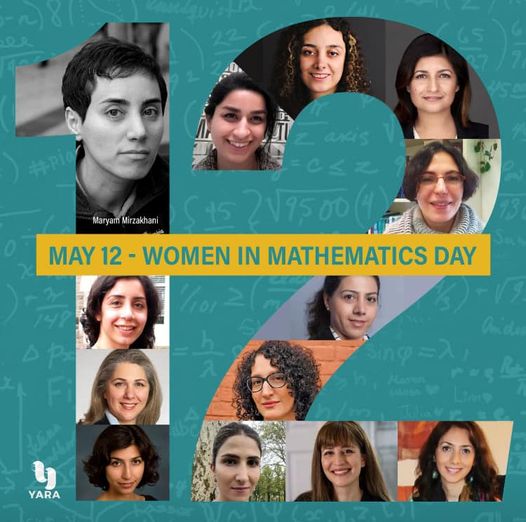

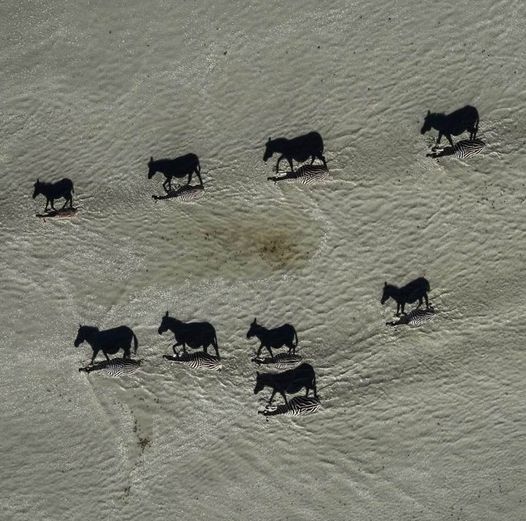
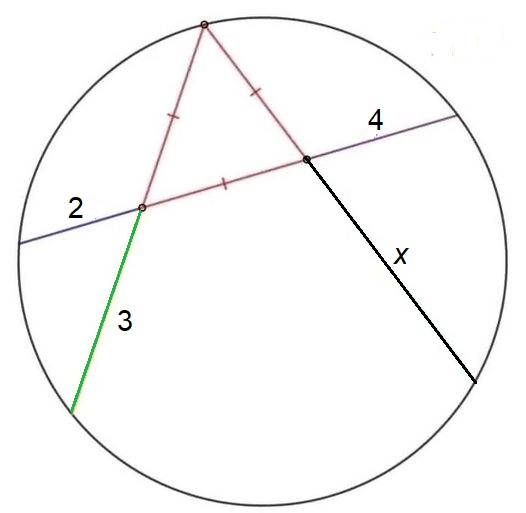
 (1) Images of the day: [Top left] Happy Mothers' Day: Mothers make the world go around. Their contributions to our well-being are so broad and deep that, in fact, every day should be Mothers' Day. [Top center] In 2018, May 12, birthdate of the late Maryam Mirzakhani, was designated as Women in Mathematics Day. Mirzakhani was awarded the Fields Medal, mathematic's highest honor, in 2014. [Top right] This afternoon at Ventura Harbor, before celebrating my daughter's birthday with the family at Andria's Seafood. [Bottom left] These are shadows cast by nine zebras photographed from overhead. [Bottom center] Math puzzle: Find the length x. The diagram isn't to scale. [Bottom right] Pro-Palestine protests at UCSB (see the last item below).
(1) Images of the day: [Top left] Happy Mothers' Day: Mothers make the world go around. Their contributions to our well-being are so broad and deep that, in fact, every day should be Mothers' Day. [Top center] In 2018, May 12, birthdate of the late Maryam Mirzakhani, was designated as Women in Mathematics Day. Mirzakhani was awarded the Fields Medal, mathematic's highest honor, in 2014. [Top right] This afternoon at Ventura Harbor, before celebrating my daughter's birthday with the family at Andria's Seafood. [Bottom left] These are shadows cast by nine zebras photographed from overhead. [Bottom center] Math puzzle: Find the length x. The diagram isn't to scale. [Bottom right] Pro-Palestine protests at UCSB (see the last item below).
(2) The truth behind pro-Palestinian protests at America's elite colleges: These protests aren't about Palestine, Israel, or the war in Gaza, although many participants are sincere in their beliefs that they are. The protests are about Russia, China, and Iran taking advantage of weaknesses in our society to create chaos. American universities, once the Crown Jewels of our socioeconomic system, have been hurting from the effects of COVID and a steady stream of academic and other scandals. The current disruptions may deal a fatal blow to their well-being and the public trust in them.
(3) Sun, Surf and Cinema in Santa Barbara: Free summer films, Friday nights under the stars, Courthouse Sunken Garden, 8:30 PM.
7/05: "Jaws"
7/12: "Point Break"
7/19: "50 First Dates"
7/26: "Blue Crush"
8/02: *** No screening during Fiesta
8/09: "The Life Aquatic with Steve Zissou"
8/16: "Mamma Mia!"
8/23: "Crazy Rich Asians"
(4) UCSB pro-Palestine encampment in its second week: While the university administration has called for a dialogue and non-disruptive protest, the demands of the protesters, which include the establishment of a Palestinian Studies Department and scholarships for Palestinians students, in addition to divestment from and academic boycott of Israel as well as abolishment of UC Police Department, are unlikely to be met. The campus has responded to the protests with a collective "meh"; there is no police presence and no counter-protests.
2024/05/10 (Friday): Presenting selected news, useful info, and oddities from around the Internet.
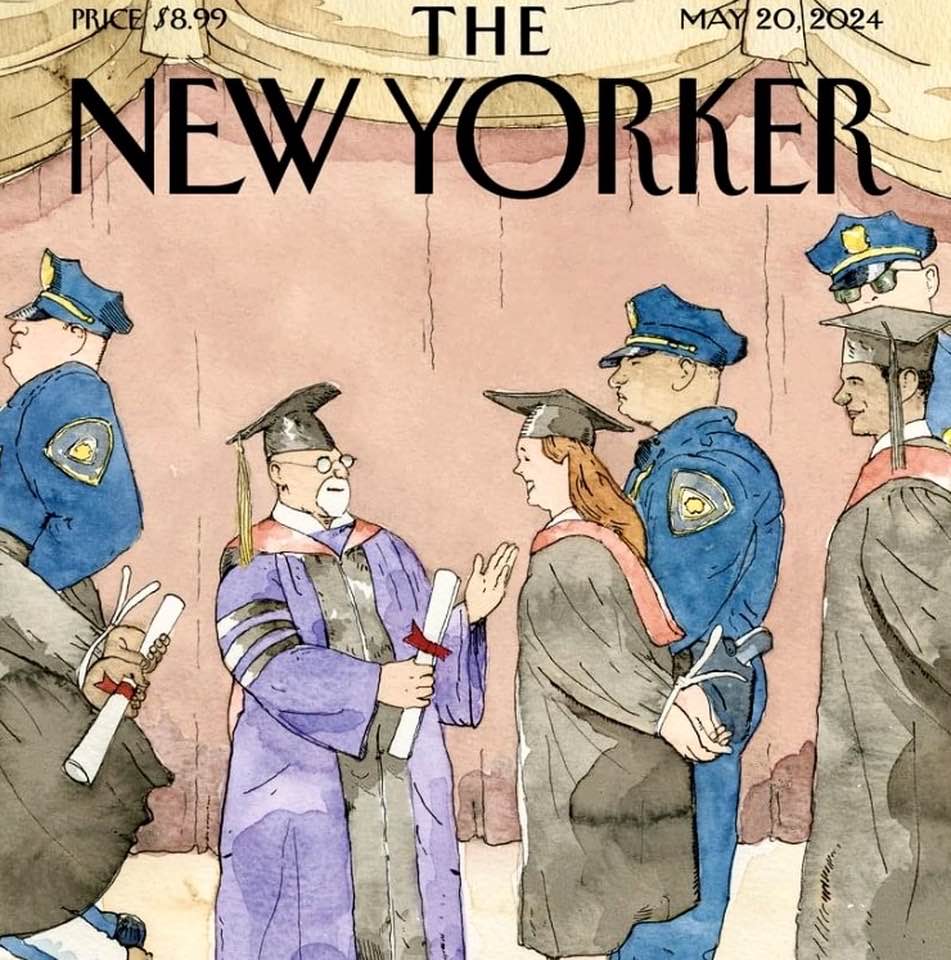


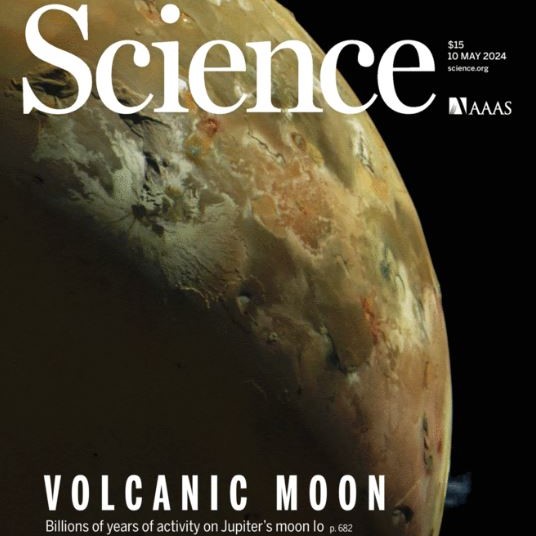

 (1) Images of the day: [Top left] Commencement 2024 (New Yorker cover). [Top center & right] See how many of these eight Persian sayings/expressions you can identify. [Bottom left] Our volcanic Moon (Science magazine cover feature). [Bottom center & right] A month after treating us to a spectacular total eclipse, the Sun is playing nasty-and-nice with its communications-disrupting geomagnetic storms and the awe-inspiring Northern Lights.
(1) Images of the day: [Top left] Commencement 2024 (New Yorker cover). [Top center & right] See how many of these eight Persian sayings/expressions you can identify. [Bottom left] Our volcanic Moon (Science magazine cover feature). [Bottom center & right] A month after treating us to a spectacular total eclipse, the Sun is playing nasty-and-nice with its communications-disrupting geomagnetic storms and the awe-inspiring Northern Lights.
(2) Iranian filmmaker Mohammad Rasoulof sentenced to 8 years in prison, plus flogging & fines, for making films and documentaries that are "harmful to national security."
(3) Looming strike of UAW academic workers at UCSB: The potential strike is allegedly based on "unfair labor practices" connected to ongoing campus protests on the Gaza war.
(4) One-liners: Brief news headlines, happenings, memes, and other items of general interest.
- Canada's Parliament voted to list Iran's IRGC as a terrorist organization and to shut down their operations.
- Coldplay & Sting join 100+ musicians and other icons urging release of Iranian rapper Toomaj Salehi.
- All sorts of weird standard samples are maintained by US National Institute for Standards and Technology.
- Persian music: Reza Malekzadeh performs "Aram Aram." [4-minute video]
(5) "The West is a woman to be mounted": This is a rather polite translation of what the predominant Arab culture thinks of the West and Westerners. Positive traits of Westerners (compassion, kindness, empathy) are all viewed as weaknesses by the Arabs. Until the West understands this mindset, no amount of negotiation will help bridge the culture gap. It's not just anti-Semitism we are facing but also extreme misogyny.
2024/05/09 (Thursday): Presenting selected news, useful info, and oddities from around the Internet.

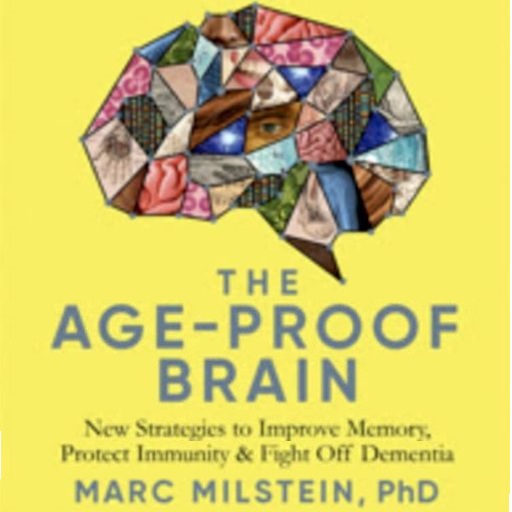
 (1) Images of the day: [Left] Throwback Thursday: This toy gun was a thing when I was growing up in Iran. You'd load into it a paper strip bearing tiny amounts of gunpowder at regular intervals. Each time you pulled the trigger, the paper strip would move forward, allowing a hammer to hit the next explosive charge. [Center] "The Age-Proof Brain" webinar (see the last item below). [Right] My daughter at an arts-and-crafts market, a 3-day event in Goleta, continuing to Saturday.
(1) Images of the day: [Left] Throwback Thursday: This toy gun was a thing when I was growing up in Iran. You'd load into it a paper strip bearing tiny amounts of gunpowder at regular intervals. Each time you pulled the trigger, the paper strip would move forward, allowing a hammer to hit the next explosive charge. [Center] "The Age-Proof Brain" webinar (see the last item below). [Right] My daughter at an arts-and-crafts market, a 3-day event in Goleta, continuing to Saturday.
(2) When an English town removed apostrophes from street names, such as "St. Mary's Walk," many unhappy residents started a petition drive and used marker-pens to reinsert the apostrophes.
(3) According to Association of American Medical Colleges, for the second year in a row, students graduating from US med schools were less likely to apply for residency positions in states that enforce bans or significant restrictions on abortion.
(4) "The Age-Proof Brain": This was the title of today's webinar by Dr. Marc Milstein, based on his book with the same title. When it comes to keeping your brain in tip-top shape, you aren't limited to crossword puzzles, brain games, and Sudoku. Debunking common misinformation, Milstein shared new, breakthrough science-supported strategies to:
- Improve memory and productivity
- Increase energy and boost your mood
- Reduce the risk of anxiety and depression
- Form healthy habits to supercharge your brain
Whereas our brain shrinks by 5% per decade beginning at age 40, there are things we can do to slow this shrinkage and to minimize its effects. Also, our brain is like a factory, producing useful stuff but also leaving behind junk which should be properly discarded to keep our brain clean. Only 30 minutes of brisk walking per day does wonders for the health of our brain and the rest of our body.
2024/05/08 (Wednesday): Presenting selected news, useful info, and oddities from around the Internet.




 (1) Images of the day: [Top left] War in Gaza has now expanded to its southernmost region, where many Gazans have taken refuge. [Top center & right] UCSB Reads 2024 authors' talk (see the last item below). [Bottom left] Birthday wish for my daughter (see the next item below). [Bottom right] My freshman seminar class, ECE 1B ("Ten Puzzling Problems in Computer Engineering"), meeting this quarter in Psych 1924.
(1) Images of the day: [Top left] War in Gaza has now expanded to its southernmost region, where many Gazans have taken refuge. [Top center & right] UCSB Reads 2024 authors' talk (see the last item below). [Bottom left] Birthday wish for my daughter (see the next item below). [Bottom right] My freshman seminar class, ECE 1B ("Ten Puzzling Problems in Computer Engineering"), meeting this quarter in Psych 1924.
(2) To my beloved daughter: As you celebrate another milestone birthday, I want you to know how proud I am of what you have accomplished and of the young woman you have become. You were born on Mothers' Day and we will celebrate with the family this coming Mothers' Day. Until then, enjoy your special day today and your arts & crafts endeavors over the next three days. I love you! [P.S.: Photos are from FB memories on May 8.]
(3) My heart goes out to the Class of 2024: These kids began their studies under COVID, struggled with on-line education, and are now trying to graduate, with commencement ceremonies disrupted by war protesters and, even worse, the prospects of classes and final exams being shut down by strikes.
(4) One-liners: Brief news headlines, happenings, memes, and other items of general interest.
- Microsoft to invest $3.3 billion in an AI data center in Wisconsin.
- Rutgers researchers unveil 3D human-body modeling approach with realistic body poses & movements.
- I have a hunch that RFK Jr. isn't the only politician with parasitic brain worm and memory loss!
- The Beatles' "Let It Be," after 50 years: John Legend and Alicia Keys perform. [4-minute video]
(5) UCSB Reads 2024 Program wraps up: Tonight, I attened an informative and entertaining lecture by Susan Magsamen and Ivy Ross, authors of Your Brain on Art: How the Arts Transform Us. This was my fourth and final year on the UCSB Reads Advisory Committee that was charged with selecting the book. I learned a great deal from my participation and found the experience to be immensely rewarding.
My 4-star review of Your Brain on Art on GoodReads.
A previous conversation with the authors about their book (Video).
2024/05/06 (Monday): Presenting selected news, useful info, and oddities from around the Internet.
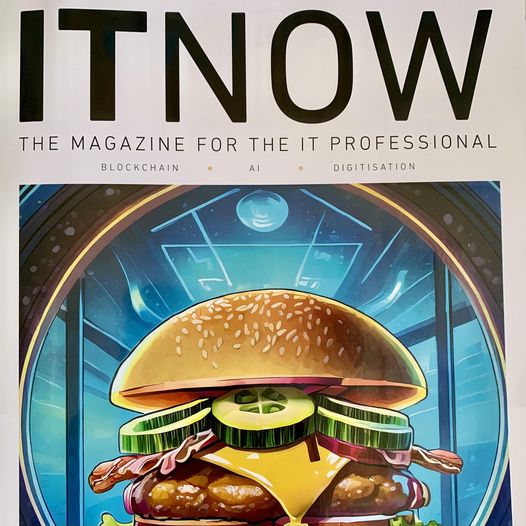
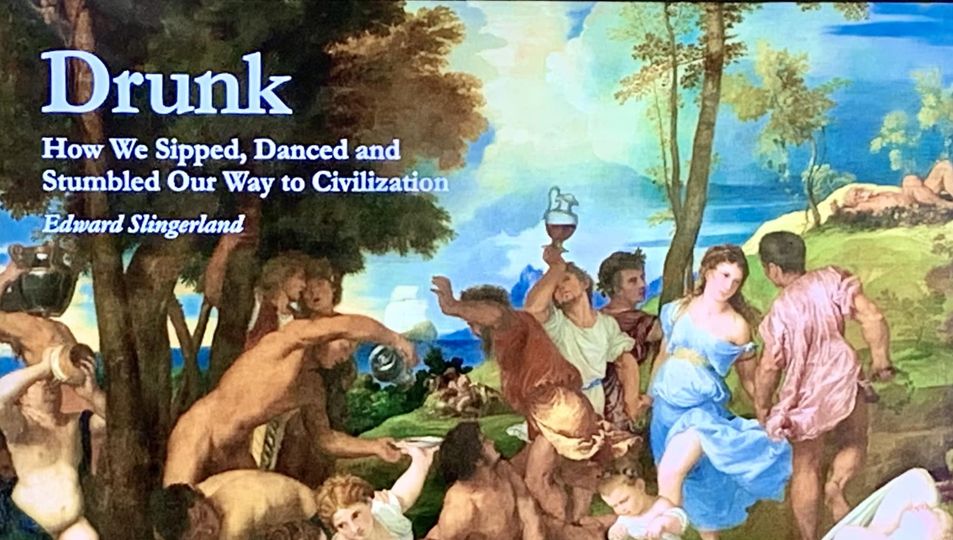 (1) Images of the day: [Left] Impact of AI on the fast-food industry: Much has been written about AI in manufacturing, healthcare, education and many other domains. The cover feature of the spring 2024 issue of IT Now focuses on AI's impact on fast food, and food tech more generally. For food preparation, AI improves uniformity and efficiency, as well as hygiene. [Right] SAGE Center talk at UCSB (see the last item below).
(1) Images of the day: [Left] Impact of AI on the fast-food industry: Much has been written about AI in manufacturing, healthcare, education and many other domains. The cover feature of the spring 2024 issue of IT Now focuses on AI's impact on fast food, and food tech more generally. For food preparation, AI improves uniformity and efficiency, as well as hygiene. [Right] SAGE Center talk at UCSB (see the last item below).
(2) Israel marks Holocaust Remembrance Day: Six million Jews were murdered by the Nazi regime and its allies in the Holocaust from 1933-1945.
(3) It seems that most groups opposing Iran's Islamic regime are under double-sided attacks.
From one side, the mullahs' cyber army, using fake names and profiles, spread false stories about their backgrounds and personal lives.
From the other side, foul-mouthed, misogynistic followers of Reza Pahlavi do the same, while the "Prince" (nowadays promoted to "King") tacitly endorses their words & deeds by not commenting.
Needless to say, both camps "discuss" everything but democracy.
(4) One-liners: Brief news headlines, happenings, memes, and other items of general interest.
- Graduation ceremonies at many US universities cancelled or disrupted by pro-Palestine protesters.
- Teens devise a geometric proof for Pythagorean Theorem, a problem that had stumped us for centuries.
- The secret of creativity: "If you want a new idea, read an old book." ~ Ivan Pavlov
- Rousseau on money: "The money you have gives you freedom; the money you pursue enslaves you."
(5) The mathematics of knot theory and some of its applications in material science: Interestingly, the many knots that are known can be arranged into something like the Periodic Table of elements. [11-minute video]
(6) Yesterday's SAGE Center talk at UCSB: Under the title "Drunk: Intoxication, Ecstasy, and the Origins of Civilization," Edward Slingerland (UBC; author of the 2021 book Drunk: How We Sipped, Danced and Stumbled Our Way to Civilization) talked about his book and the research that led to it.
Drawing on evidence from archaeology, history, cognitive neuroscience, psychopharmacology, social psychology, literature, and genetics, Slingerland argued that our taste for chemical intoxicants is not an evolutionary mistake, as we are so often told. In fact, intoxication helps solve a number of distinctively human challenges and played a crucial role in sparking the rise of the first large-scale societies.
2024/05/05 (Sunday): Presenting selected news, useful info, and oddities from around the Internet.

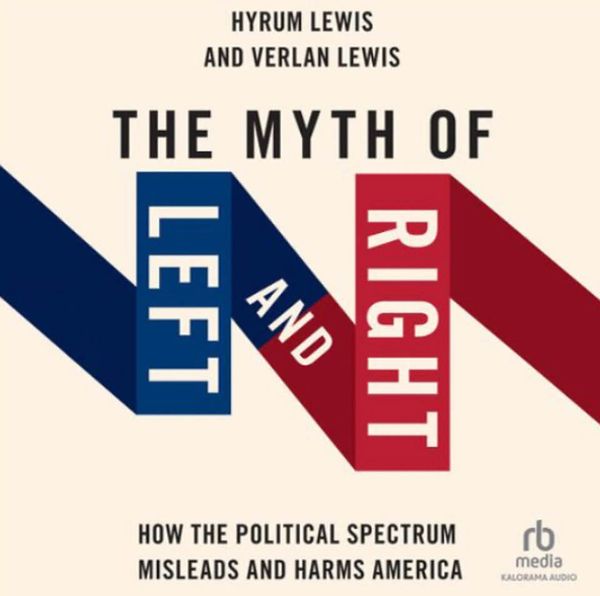
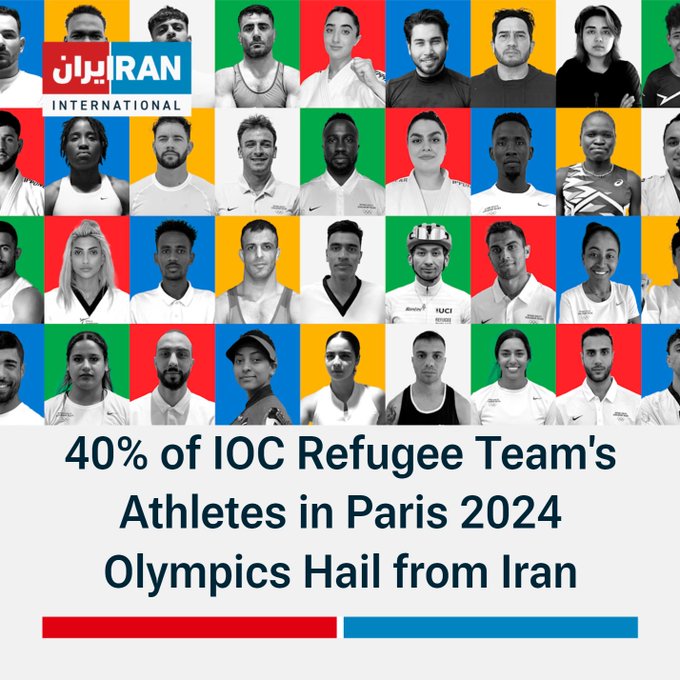 (1) Images of the day: [Left] Cause of Iran's ~50% inflation rate: The mullahs have printed more money in the past 2.5 years than the country had done in the previous 2.5 millennia. [Center] The Myth of Left and Right: How the Political Spectrum Misleads and Harms America (see the last item below). [Right] Paris Olympics: Of the 36 members of IOC's 2024 Refugee Olympic Team, 14 (~40%) hail from Iran.
(1) Images of the day: [Left] Cause of Iran's ~50% inflation rate: The mullahs have printed more money in the past 2.5 years than the country had done in the previous 2.5 millennia. [Center] The Myth of Left and Right: How the Political Spectrum Misleads and Harms America (see the last item below). [Right] Paris Olympics: Of the 36 members of IOC's 2024 Refugee Olympic Team, 14 (~40%) hail from Iran.
(2) Jerry Seinfeld, a Jewish comedian who built his brand of comedy on an apolitical show "about nothing," is being forced to choose sides, given the Israel-Hamas conflict and protests on US college campuses.
(3) Iran offers scholarships to expelled pro-Palestine students: That's the recipe! One semester at an Iranian university will bring them back to their senses.
(4) Book review: Lewis, Hyrum and Verlan Lewis, The Myth of Left and Right: How the Political Spectrum Misleads and Harms America, unabridged 4-hour audiobook, read by the first author, Kalorama, 2023.
[My 4-star review of this book on GoodReads]
We humans are tribal and there is no way around this evolutionary trait. Tribes do not necessarily embrace a consistent, logically-constructed set of beliefs. However, when you belong to a tribe, you tend to assume the validity of the entire belief set. Here's a useful analogy. When you go grocery-shopping, you pick items that you like; there is no rhyme or reason. Suppose the store did not allow you to pick what you want but offered you two filled carts to choose from. You would pick the cart that contains more of your favorite items. But then to turn around and claim that everything in your chosen cart is better than everything in the other cart would not be appropriate. This is unfortunately what we do when we belong to a party: We think that all policies of our tribe are better than everything of the competing tribe.
tend to think that philosophy comes first, followed by policy, and finally party. Evidence shows that it is exactly the opposite: We attach ourselves to a tribe, then discuss policies, and finally we make up a philosophical story to tie all of those incoherent policies together.
At one point in American politics, The New Deal was the single political issue, so designating its opponents as conservative/right and its proponents as liberal/left made some sense. Now, politics is multi-dimensional: There are a multitude of issues such as free trade, immigration, abortion, and so on. We should start using more precise terminology to characterize people's views on individual issues, rather than lumping all of them together. Right/Conservative and left/liberal are highly imprecise. If you want to talk about someone's views on abortion, then characterize his/her views on that one issue, rather than labeling him/her a conservative or a liberal. Unfortunately, we have come to use liberal/conservative and left/right labels as tools of slander.
2024/05/04 (Saturday): Presenting selected news, useful info, and oddities from around the Internet.
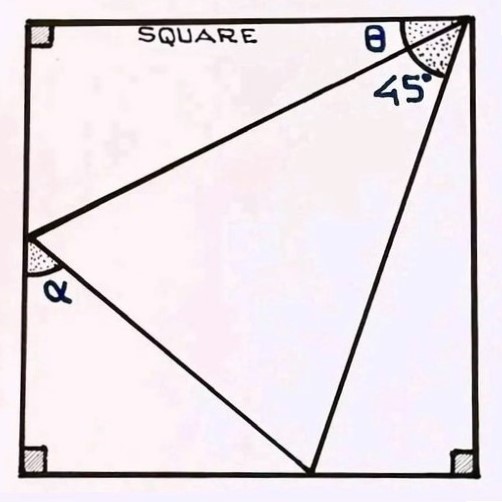
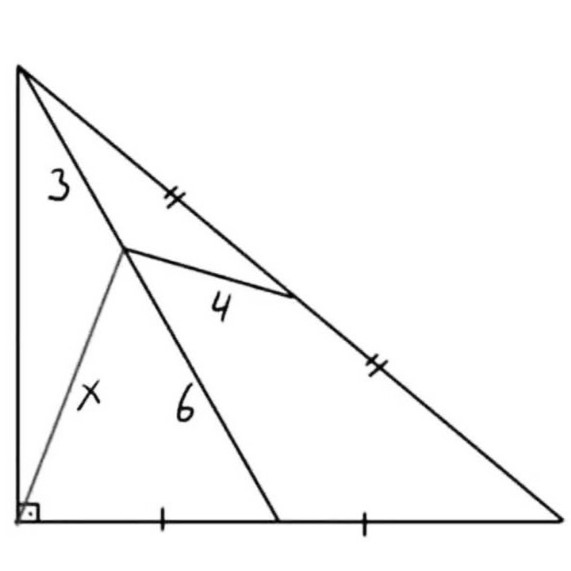
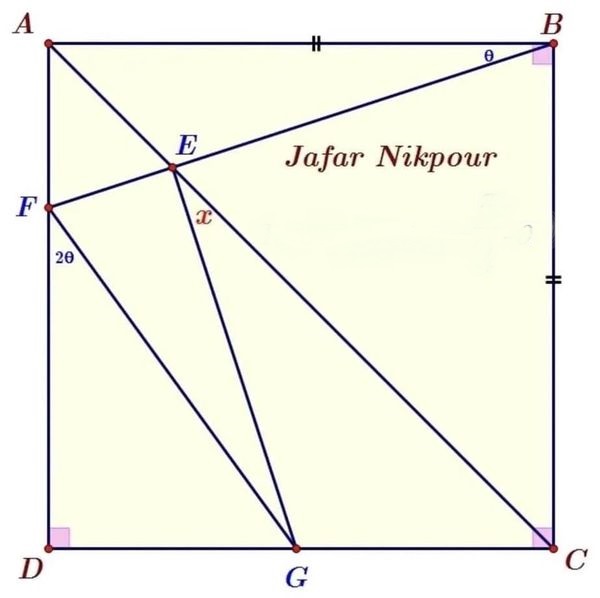 (1) Math: Prove that alpha is twice theta, find the length x, and prove that x & theta add to 45 degrees.
(1) Math: Prove that alpha is twice theta, find the length x, and prove that x & theta add to 45 degrees.
(2) Happy Star Wars Day: May the fourth (be with you)! To mark the nearly 50 years that have passed since the making of the original Star Wars film, US National Air and Space Museum has set up a special exhibit that includes an actual operable X-wing flyer.
(3) Nobel Laureate Daniel Kahneman [1934-2024] dead at 90: Kahneman, an Israeli-born psychologist, earned a 2002 Nobel Prize in Economics for his integration of psychological research into economic science.
(4) One-liners: Brief news headlines, happenings, memes, and other items of general interest.
- Counter-protesters initiate violence at UCLA: Police intervenes after a few hours of unchecked clashes. [NYT]
- Disruptive protest encampment at UCSB: University administration calls for constructive dialogue.
- On kindness: "The smallest act of kindness is worth more than the greatest intention." ~ Khalil Gibran
- On love: "What we've enjoyed we can never lose. All that we love becomes a part of us." ~ Helen Keller
(5) BASIC turned 60 on May 1: Intended to make computing accessible to a broader audience, Beginner's All-Purpose Symbolic Instruction Code was popular among novice programmers. BASIC continued to evolve over the years and is still popular among retrocomputing enthusiasts. Its descendants include Microsoft's Visual Basic, Visual Basic for Applications, and Small Basic.
(6) UNC-CH students take down the American flag and raise the flag of Palestine in its place: Elsewhere, in NYC, protesters burn an American flag. Please use your reasoning ability and ask who benefits from desecrating the American flag? Donald Trump, that's who! Ditto for the perception that extremist Muslims are taking over America under the Biden administration. Fingerprints of Putin are all over these coordinated protests. His plans for Ukraine will be crushed under another Democratic administration.
(7) Three geeky events on May 17, 19 & 20, 2024: IEEE honors the 50th Anniversary of Internet TCP/IP.
- Friday, May 17, 3:00-5:00 PM PDT: Online event broadcast from SRI's PARC Campus, featuring talks by Internet pioneers Vint Cerf & Bob Metcalfe and unveiling of IEEE Milestone plaques for the Alto Personal Computer, Ethernet, and Laser Printer. The in-person event is sold out, but you can watch via livestream.
- Sunday, May 19, 12:00-2:30 PM PDT: IEEE i50—Virtual Celebration of 50 Years of the Internet, honoring the 1974 IEEE Computer Society paper on TCP by Vint Cerf & Bob Kahn. [Livestream registeration]
- Monday, May 20, 1:00-4:00 PM PDT: Dedicating three IEEE Milestones: IEEE Computer Society 1974 paper on TCP; IEEE 802 Standards Committee; Birth of Google & PageRank. [Livestream registeration]
2024/05/02 (Thursday): Presenting selected news, useful info, and oddities from around the Internet.


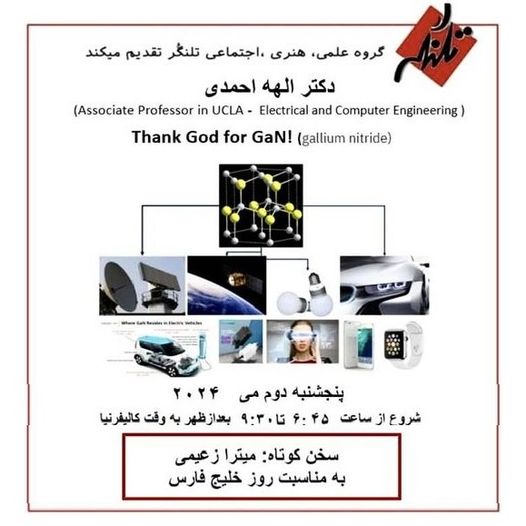 (1) Images of the day: [Left & Center] Florida's infamous 2000 butterfly ballots (see the next item below). [Right] Talk on Gallium-Nitride (see the last item below).
(1) Images of the day: [Left & Center] Florida's infamous 2000 butterfly ballots (see the next item below). [Right] Talk on Gallium-Nitride (see the last item below).
(2) Revisiting Florida's 2000 butterfly ballots: Key requirements of democratic elections include facilitating participation and making it easy to vote for one's preferred candidate on a clear, transparent ballot.
Butterfly ballots used in Palm Beach County, Florida, may have cost Al Gore the presidency in 2000. Many voters (enough to swing the election in a very close race) voted for Pat Buchanan, listed on the right-hand side of the ballot across from the second punch-hole in the middle, thinking that they were voting for Al Gore, the second name on the left-hand side.
Data shows that where butterfly ballots were used, Buchanan got a much higher share of the votes than in other Florida counties. While this isn't a proof that the confusing ballots handed Florida, and thus the national election, to George W. Bush, evidence that they did is overwhelming.
(3) One-liners: Brief news headlines, happenings, memes, and other items of general interest.
- Four Iranian men are identified as having sexually assaulted and killed #NikaShakarami.
- Latinos move to the right: 39% say they'll vote Republican in 2024, compared with 29% in 2012. [NYT]
- Queer Techne: Book explores gay, queer, & feminine communities in early advances in computer science.
- Facebook memory from May 2, 2022: When my daughter relocated to San Diego with a U-Haul truck.
(4) "Interstellar" explained: I recently watched Christopher Nolan's 2014 sci-fi film "Interstellar." I particularly enjoyed the powerful film score, composed by Hans Zimmer. To augment my understanding of the film's story, I searched for and found this explanation of the film's script and its plot summary. Further investigation led me to theoretical physicist Kip Thorne's 2014 book, The Science of Interstellar, which I have started reading.
(5) Tonight's Talangor Group talk: Dr. Elaheh Ahmadi (UCLA ECE Dept.) spoke under the title "Thank God for GaN (Gallium Nitride)." Before the main talk, Mitra Zaimi made a brief presentation on the occasion of Persian Gulf Day, which included screening of a video.
Dr. Ahmadi began with a review of the importance of semiconductors in our daily lives and how abundance and ease of manufacturing have led to silicon becoming the dominant choice. She then outlined certain desirable properties of GaN, which gained notoriety through enabling the production of blue LEDs and the ensuing revolution in energy-efficient lighting, support higher performance as well as reduced size & weight for electronic circuits. While GaN has the drawbacks of much higher cost and more-difficult manufacturing compared with silicon, Dr. Ahmadi cited a growing number of applications, notably in power conversion and RF domains, that use it to advantage.
This EPC Web page presents a summary of GaN benefits and has several videos linked at the end, including applications to motor drive, industrial drones, and DC-DC conversion in data centers.
2024/04/30 (Tuesday): Presenting selected news, useful info, and oddities from around the Internet.


 (1) Images of the day: [Left] Four members of Iran's security forces are identified as having sexually assaulted and killed the young protester #NikaShakarami. [Center] How adding a 1 to the denominator significantly complicates the integration process and changes the answer. [Right] Voting is way more effective for solving our problems than thoughts and prayers!
(1) Images of the day: [Left] Four members of Iran's security forces are identified as having sexually assaulted and killed the young protester #NikaShakarami. [Center] How adding a 1 to the denominator significantly complicates the integration process and changes the answer. [Right] Voting is way more effective for solving our problems than thoughts and prayers!
(2) We have the first AI commencement speaker: D'Youville University in upstate New York thought its selection would be fun and relevant in an age of AI. Not everyone agreed.
(3) One-liners: Brief news headlines, happenings, memes, and other items of general interest.
- UCLA student is blocked from entering a campus area by pro-HAMAS demonstrators. [Tweet, with video]
- Mohammad Fazeli's 17-minute TEDx talk (in Persian): Policymaking requires inter-agency cooperation.
- Kurdish music: Sung in the dialect spoken in Kermanshah and Ilam. [Tweet, with video]
- Quotable: "What do we live for, if not to make life less difficult for each other." ~ George Eliot
(4) Facebook memory from Apr. 30, 2014: "We are not afraid to entrust the American people with unpleasant facts, foreign ideas, alien philosophies, and competitive values. For a nation that is afraid to let its people judge the truth and falsehood in an open market is a nation that is afraid of its people." ~ John F. Kennedy [Of equal significance to Islamic Iran and Evangelical America]
(5) Facebook memory from Apr. 30, 2018: Republicans study and pass bills like the rest of us read and accept updated terms and conditions on iTunes. ~ Comedian Seth Myers, speaking at an Obama-era White House Correspondents Dinner
(6) Facebook memory from Apr. 30, 2018: Let me share my reply to a comment on a Facebook post of mine, which many of you will not see otherwise. The commenter essentially claims that all accusers of Bill Cosby were asking for what happened to them, because, like Playboy Bunnies, they use powerful men to get ahead.
"You have really revealed your misogyny in your last comment. Equating half the population of the world with (at most) a few hundred women you encountered while working at the Playboy Mansion shows that you are the one-dimensional person in this discussion. #MeToo isn't just about Playboy Bunnies or even those in the entertainment business. Looking one layer deeper, which is impossible in your one-dimensional universe in which laws are devised based only on personal experiences, one notes that many women are placed in a position to beg for privileges by powerful men who have decided they own and can dole out those privileges. It's ironic that you expect discretion, good judgment, and morality from young women, but not from powerful older men who take advantage of them."
2024/04/28 (Sunday): Presenting selected news, useful info, and oddities from around the Internet.
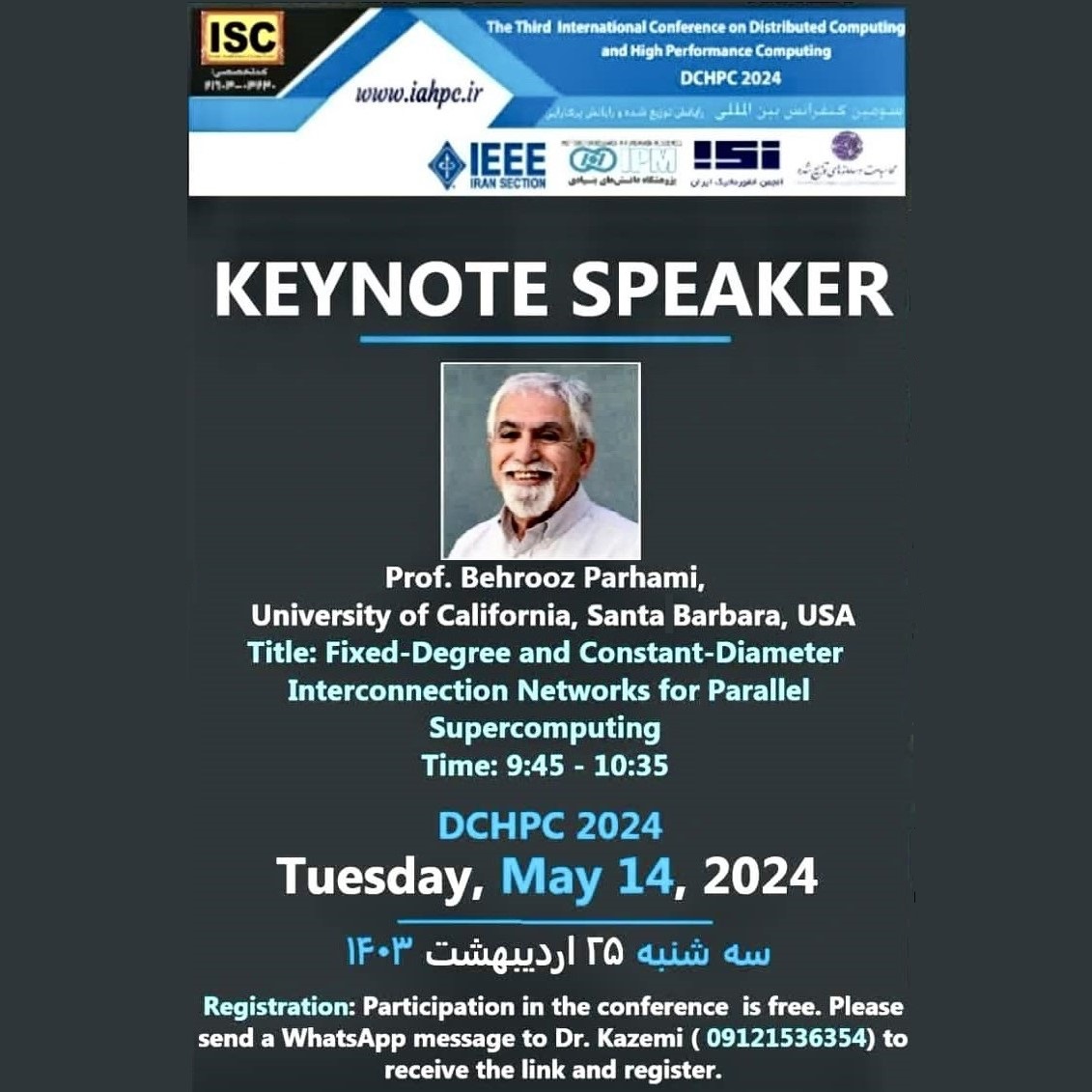

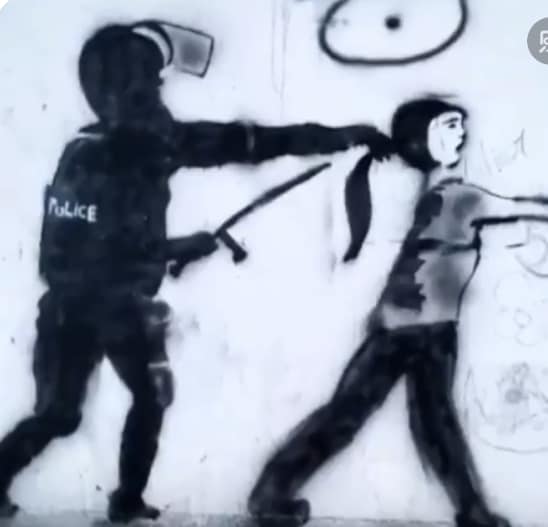


 (1) Images of the day: [Top left] My keynote talk (see the next item below). [Top center] Gross, but interesting, fact: All of the world's humans mushed together into a 1-km-diameter ball and placed on NYC's Central Park. [Top right] Street art in Tehran's Ekbatan neighborhood, depicting the brutality of security forces against women. [Bottom left & center] Iranian Garden in Vanak Villge, Tehran (see the last item below). [Bottom right] Over the years, many of the hardliners of Iran's Islamic regime have fled to the West, overtly or covertly: Campaigns are underway to identify and expel these undesirable elements, some of whom have attained positions of influence in academia and elsewhere. The flight of hardliners from Iran will accelerate as the mullahs' regime continues to crumble.
(1) Images of the day: [Top left] My keynote talk (see the next item below). [Top center] Gross, but interesting, fact: All of the world's humans mushed together into a 1-km-diameter ball and placed on NYC's Central Park. [Top right] Street art in Tehran's Ekbatan neighborhood, depicting the brutality of security forces against women. [Bottom left & center] Iranian Garden in Vanak Villge, Tehran (see the last item below). [Bottom right] Over the years, many of the hardliners of Iran's Islamic regime have fled to the West, overtly or covertly: Campaigns are underway to identify and expel these undesirable elements, some of whom have attained positions of influence in academia and elsewhere. The flight of hardliners from Iran will accelerate as the mullahs' regime continues to crumble.
(2) My forthcoming keynote talk: Entitled "Fixed-Degree and Constant-Diameter Interconnection Networks for Parallel Supercomputing," the English-language keynote will be delivered virtually at the Third International Conference on Distributed Computing and High-Performance Computing, to be held in Tehran on May 14-15, 2024. My talk will be on Tuesday, May 14, 9:45 AM Tehran time (Monday, May 13, 11:15 PM PDT). Attendance is free for those who pre-register.
(3) The 3x + 1 problem, aka Collatz's Conjecture, revisited: An easily-understood and innocent-looking problem that has defied solution after many decades. [13-minute video]
(4) The Chinese government is outraged over Netflix adapting Cixin Liu's novel, Three-Body Problem.
(5) "A Brief History of the Future": Six-part PBS docuseries, hosted by futurist Ari Wallach. I watched the first two episodes last night. It is full of interesting facts, but rather underwhelming in presentation and editing.
(6) Acclaimed soprano Renee Fleming talks about her new edited collection, Music and Mind, containing essays from leading scientists, artists, and health care providers on the powerful impact that music and the arts can have on our health.
(7) Tao Te Ching: "When the student is ready, the teacher will appear."
This quote is often used to imply that the teacher is sent by God or other supernatural forces. I believe in it from a different perspective: Unless you are ready to learn, you won't be teachable.
(8) Vanak Village Iranian Gardens: My family used to live in Vanak, Tehran, adjacent to what later became Al-Zahra U., for many years. So, I was excited to learn about a relatively new large public park in the area that is registered as a UNESCO World Heritage Site. Carved out from properties formerly owned by the Mostowfi ol-Mamalek family, the park is famous for its flowers (tulips in particular), fountains, and super-tall trees.
2024/04/27 (Saturday): Here is my report on the 2024 Santa Barbara Earth Day Festival.
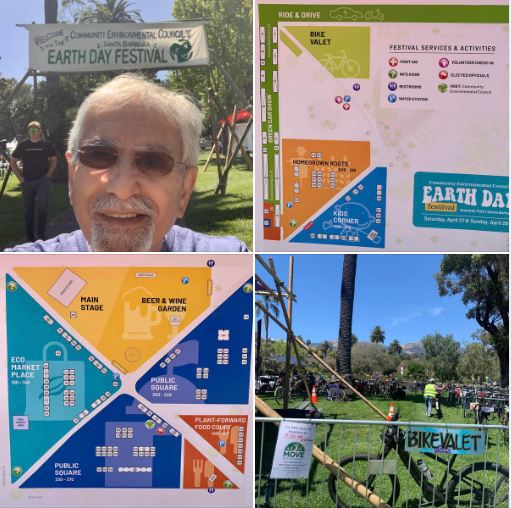




 (1) Santa Barbara Earth Day Festival: Held today & tomorrow at Alameda Park, the festival focuses on various ways of taking care of the environment, including green energy, clean transportation, and more. Many of the attendees came on bikes.
(1) Santa Barbara Earth Day Festival: Held today & tomorrow at Alameda Park, the festival focuses on various ways of taking care of the environment, including green energy, clean transportation, and more. Many of the attendees came on bikes.
(2) Alameda Park, home of the SB Earth Day Festival, has an elaborate children's playground. And the festival includes many activities for children.
(3) Bikes and e-bikes were big at today’s SB Earth Day Festival: I was particularly impressed with an e-bike that had a big basket to seat two small children and also hold some cargo.
(4) Many models of electric, hybrid, and pluggable-hybrid cars were on display at today's SB Earth Day Festival: I was particularly impressed with the American-made Lucid, which boasts a range of 500+ miles.
(5) As usual, the food court was a popular feature of SB Earth Day Festival: The food was as always over-priced, so I decided to skip eating there.
(6) Other sights at today's SB Earth Day Festival included an inviting coffee cart, a music stage with continuous programming, a demo of induction cooking, and a gadget that protects cars from rodent infestation.
(7) Not included in the six photo collections above, described from top-left to bottom-right, are a large number of displays & booths representing city departments, our elected representatives, businesses catering to Earth Day themes (including organic growers), and artists displaying their work.
2024/04/26 (Friday): Presenting selected news, useful info, and oddities from around the Internet.
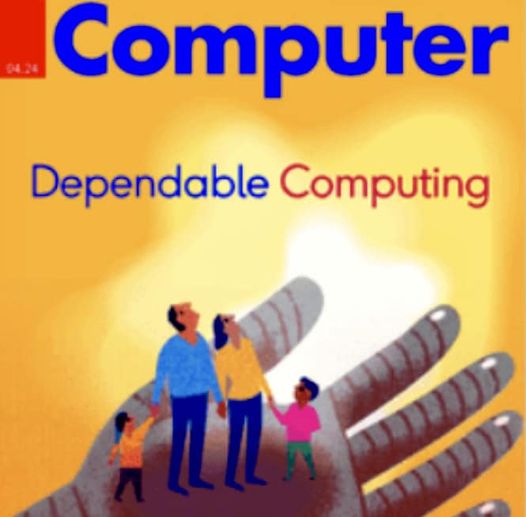

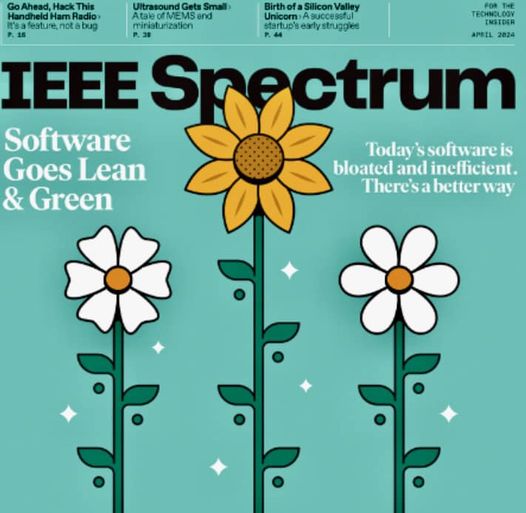 (1) Images of the day: [Left] On dependable computing (see the next item below). [Center] Talk on converting sewage to potable water (see the last item below). [Right] On software bloat (see item 3 below).
(1) Images of the day: [Left] On dependable computing (see the next item below). [Center] Talk on converting sewage to potable water (see the last item below). [Right] On software bloat (see item 3 below).
(2) IEEE Computer magazine, issue of April 2024: "With the increased complexity of software systems, dependable, reliable, and trustworthy computing is of paramount importance. Of these qualities, dependability is of particular interest in mission critical systems, where failure can lead to loss of human life. The technology used to build such systems must meet the expectations of its stakeholders' and regulatory requirements." [From Guest Editors' introduction to the special issue]
(3) Bloat is software's greatest vulnerability: Nicholas Wirth's1995 Oberon operating system, which included an editor and a compiler, had a total size of 200 KB. Many of today's operating systems use 200+ KB for their configuration files alone. Bloated software isn't only less efficient, but also significantly more vulnerable to interaction failures and malicious hacks.
(4) Last night's Talangor Group talk: Hamid Shirazi (sociopolitical activist) spoke under the title "Transforming Wastewater into Drinking Water." Before the main talk, the life & work of the great Persian poet Sa'adi was celebrated and Mohsen Mahimani made a short presentation on "The Latest Developments of the Gemini Chatbot." There were ~70 attendees.
Two of the most-important requirements of public health are the availability of safe drinking water and proper disposal of sewage (human waste). Nearly 1/3 of the world's population does not have access to modern, hygienic toilets. Proper sewage disposal is available to an even smaller group.
Wastewater is 99.9% water. The remaining tiny amount is composed of a wide variety of chemicals and organisms. Beyond being an important resource, especially in drier regions, the monitoring of wastewater is a valuable public-health tool (e.g., in COVID detection).
With shortage of drinking water intensifying worldwide, various conversion schemes have been proposed or are being used to generate new sources. The best-known among them is saltwater conversion, which works well for communities with an adjoining sea/ocean. The desalination technology is fairly mature, but it is energy-intensive and has thus seen limited use.
Wastewater conversion is one of the newer methods, which is more efficient. In my community of Santa Barbara, this is done, but the output is intended only for irrigation, as it does not meet the standards of drinking water. Our city has two systems for water distribution, one for potable and another one for reclaimed water. A more elaborate, and thus more expensive, process, involving additional steps, is needed to derive drinking water from wastewater.
Mr. Shirazi outlined the cleanliness standards and provided examples of various approaches being used for producing clean water from sewage. He also showed multiple short videos on the conversion process and the design of industrial plants doing the conversion. Singapore was mentioned as a country that is quite advanced in this regard.
A related discussion is the future of water resources in the world (given that they are not distributed uniformly) and possible armed conflicts over these resources, the way world countries have fought over oil for decades.
2024/04/24 (Wednesday): Presenting selected news, useful info, and oddities from around the Internet.





 (1) Images of the day: [Top left] Doomsday predictions (see the last item below). [Top center] My daughter displayed her artistic chops at this afternoon's Isla Vista Farmers Market: I visited her stand briefly between a class and other commitments. [Top right] Math puzzle: Two congruent rectangles are shown inside a square. What is the leaning angle? [Bottom left & center] Iranian mullahs are frustrated in the war against Israel, so they take revenge against Iranians by unleashing hijab enforcement goons on the streets and arresting artists/celebrities who dare to speak up. Popular rapper #ToomajSalehi has just been sentenced to death for his anti-regime stance and critical song lyrics. A #SaveToomaj campaign is spreading worldwide. [Bottom right]
(1) Images of the day: [Top left] Doomsday predictions (see the last item below). [Top center] My daughter displayed her artistic chops at this afternoon's Isla Vista Farmers Market: I visited her stand briefly between a class and other commitments. [Top right] Math puzzle: Two congruent rectangles are shown inside a square. What is the leaning angle? [Bottom left & center] Iranian mullahs are frustrated in the war against Israel, so they take revenge against Iranians by unleashing hijab enforcement goons on the streets and arresting artists/celebrities who dare to speak up. Popular rapper #ToomajSalehi has just been sentenced to death for his anti-regime stance and critical song lyrics. A #SaveToomaj campaign is spreading worldwide. [Bottom right]
(2) National Air & Space Museum's lectures on samples-return missions: Today's talk on the Stardust Discovery Mission (samples return from Comet Wild-2) was the second of four lectures, the previous one having been about samples return from the Moon and forthcoming ones discussing OSIRIS-Rex (samples from asteroid Bennu) and bringing back Mars samples. Fascinating talks!
(3) Women's rights take another step back: First it was the overturning of Roe-v-Wade by the US Supreme Court, severely curtailing women's reproductive rights. Now comes the overturning of the foundational sex-crimes conviction of the #MeToo era, that of Harvey Weinstein, by NY Court of Appeals.
(4) One-liners: Brief news headlines, happenings, memes, and other items of general interest.
- Evidence that the Chinese government controls TikTok content (Tweet, with NYT chart).
- Ukrainian resilience: Kharkiv schools have been moved underground, inside subway tunnels.
- The mullah's security forces rape & torture detainees, specifically targeting ethnic & other minorities.
- Michigan Publishing Services offers an expanding collection of free textbooks in electrical engineering.
- Persian music: An oldie song played on the tar.
- Barbra Streisand sings "Love Will Survive," a song from "The Tattooist of Auschwitz."
(5) British soccer teams are playing a few pre-season games on the US West Coast: One on the chosen venues for their "Wrex Coast Tour" is UCSB's Harder Stadium on July 20. [Poster]
(6) "Ey Zan" ("Oh Woman"): An awe-inspiring tribute to the strength and grace of women around the globe. This breathtaking collaboration features the captivating voices of Maliheh Moradi and Mina Deris, who lend their remarkable talent to this powerful ode to womanhood. [5-minute video]
(7) Doomsday countdowns in Iran and Israel: Several years ago, Iran installed timers in many major cities to count down to the destruction of Israel. I believe that these timers will expire in ~16 years. Israel is more aggressive, installing billboards that declare the demise of the Islamic Republic of Iran on Cyrus the Great Day, October 28, 2028 (about 4.5 years from today).
2024/04/23 (Tuesday): Presenting selected news, useful info, and oddities from around the Internet.


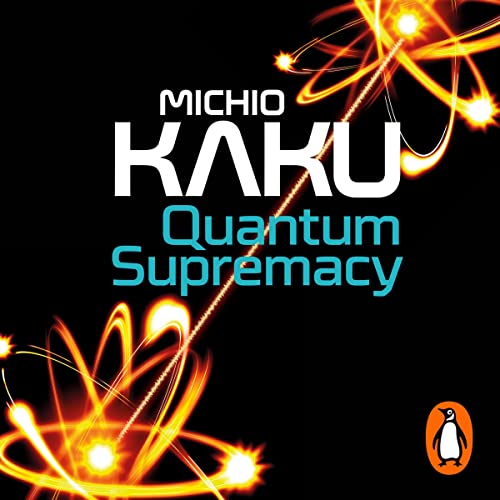 (1) Images of the day: [Left] Talk on the Periodic Table (see the next item below). [Center] Iranian mullahs are using the fog of war to step up their assault on women: Morality police and "hijab enforcers" are back on the streets in full force, acting more violently than ever before. [Right] Michio Kaku's Quantum Supremacy (see the last item below).
(1) Images of the day: [Left] Talk on the Periodic Table (see the next item below). [Center] Iranian mullahs are using the fog of war to step up their assault on women: Morality police and "hijab enforcers" are back on the streets in full force, acting more violently than ever before. [Right] Michio Kaku's Quantum Supremacy (see the last item below).
(2) Birth of the Universe and the Periodic Table: This was the title of today's Zoom talk by Mitra Zaimi (chemical engineer, computer scientist), under the auspices of Persian Cultural Center of Atlanta. There were ~50 attendees.
In the beginning, after the Big Bang, there was only hydrogen, the lightest element, with one proton and one electron. A bit later, helium was formed from two hydrogen atoms through a process that is responsible for most of a star's energy. Heavier elements, up to iron, gradually emerged with help from heat and gravity. Elements heavier than iron can be formed only by a process called neutron capture, where neutrons penetrate an atomic nucleus.
The Periodic Table of elements, usually credited to Russian chemist Dmitri Mendeleev who in 1869 formulated the periodic law relating chemical properties to atomic mass, is a marvel that includes all elements that appear in the universe or that can be created in the lab. No element not appearing in the table can exist. Not all elements in the table were known at Mendeleev's time, but he correctly predicted many of them based on the periodic rules that he discovered.
This interactive version of the Periodic Table allows you to explore the elements & their properties.
(3) Book review: Kaku, Michio, Quantum Supremacy: How the Quantum Computer Revolution Will Change Everything, unabridged 11-hour audiobook, read by Feodor Chin, Random House Audio, 2023.
[My 3-star review of this book on GoodReads]
Theoretical physicist Michio Kaku presents a history of quantum computing and discusses its potential applications in terms understandable to non-physicists. The computing discipline's love affair with digital integrated circuits may have come to an end, as their underlying technology can no longer keep pace with the rising demand for computational power, so we have been looking to other technologies to bridge the gap between available and desired capabilities. Quantum computing, with its unfulfilled promises, is one such technology, which continues to produce hype but little in way of concrete results in practically-relevant application domains.
Quantum supremacy refers to experimental demonstration of a quantum computer performing calculations that are beyond the capabilities of classical computers. It may happen one day, but neither Google's nor IBM's claims of having accomplished this feat have passed muster. Kaku repeats much of the hype.
One area in which Kaku paints a particularly rosy picture is that of finding cures for diseases through computational methods. Nearly everyone is aware of the role of viruses and bacteria in human diseases. Another important cause of diseases, that is, misfolded proteins or prions, is not as widely known. Prions cause damage to healthy proteins, thereby propagating the disease within the body. Studying of the various ways in which proteins fold and misfold requires a great deal of computational power that is beyond what classical computers can offer. Prion-caused dementia and other terminal neurodegenerative diseases can benefit potentially benefit from computational attacks enabled by quantum computing.
Kaku's discussion of quantum supremacy isn't for the layperson. It is potentially useful to computing professionals, but many such professionals may resent the lack of details, much redundancy, and excessive hand-waving.
2024/04/22 (Monday): Presenting selected news, useful info, and oddities from around the Internet.


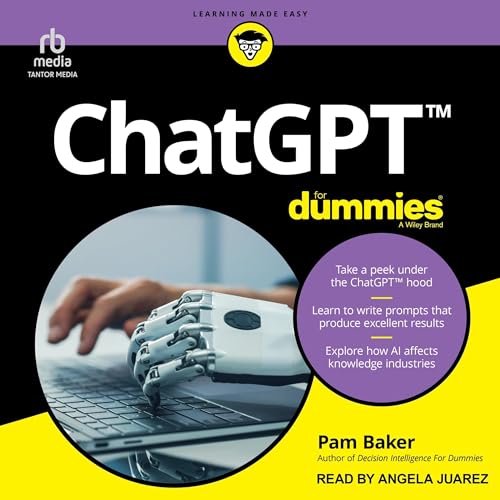 (1) Images of the day: [Left] Happy Passover to all my Jewish readers! With sincere hope for peace and understanding throughout our fragile world. [Center] Happy Earth Day! Santa Barbarans will be celebrating Mother Earth this coming weekend at Alameda Park. [Right] ChatGPT for Dummies (see the last item below).
(1) Images of the day: [Left] Happy Passover to all my Jewish readers! With sincere hope for peace and understanding throughout our fragile world. [Center] Happy Earth Day! Santa Barbarans will be celebrating Mother Earth this coming weekend at Alameda Park. [Right] ChatGPT for Dummies (see the last item below).
(2) A scorching summer: NOAA projects that 2024 will rank among the 10 warmest years on record and gives it a 55% chance of topping 2023 as the warmest year ever.
(3) Book review: Baker, Pam, ChatGPT for Dummies, unabridged 5-hour audiobook, read by Angela Juarez, Tantor Audio, 2023. [My 4-star review of this book on GoodReads]
This is the first "for dummies" title that I have pursued for my own benefit, rather than to assess and introduce such a book to novices. I must say that I was pleasantly surprised with the depth and breadth of the book. As a Distinguished Professor, I thought I wouldn't be caught dead learning something from a "for dummies" book, but I did learn a lot from Pam Baker's systematic and comprehensive treatment. The book allowed me to sort out and systematize what I had previously learned about ChatGPT from a multitude of articles/videos/talks.
This clear, engaging, and approachable book demystifies the world of conversational AI and introduces readers to the power of ChatGPT, using clear explanations, practical examples, and step-by-step instructions. This book is a valuable resource for anyone interested in exploring the possibilities of conversational AI.
Following is a list of chapters and their very brief summaries in terms of basics, the ethics of using AI-generated content, the potential for bias & misinformation in AI-generated content, and guidelines for using AI responsibly. The book concludes with a chapter on the future of AI. We learn that some disruption is inevitable, but the rewards under proper care and responsible use are monumental.
- Introducing ChatGPT: It's not just another conversational AI tool but the field's gold standard
- Understanding Conversational AI: Insights into NLP, ML, and components of a chatbot system
- Getting Started: From setting up the development environment to accessing the necessary tools & resources
- Designing Conversations: Principles and best practices for creating engaging and effective conversations
- Training Your Chatbot: Data collection & preprocessing steps, and techniques for fine-tuning and optimizing
- Evaluating and Improving Chatbot Performance: Metrics for assessing conversational quality and strategies for enhancing the chatbot’s responses & user experience.
- Deploying Your Chatbot: Hosting options, integration with messaging platforms, and considerations for scaling and maintaining the chatbot's availability.
- Advanced Techniques and Applications: Multilingual support, persona-based conversations, and integrating external APIs to enhance the chatbot’s capabilities.
- Conclusion: A summary of key learnings and the potential of ChatGPT in revolutionizing conversational AI.
I highly recommend this book to novices and experts alike.
2024/04/21 (Sunday): Presenting selected news, useful info, and oddities from around the Internet.


 (1) Images of the day: [Left] World Central Kitchen (see the next item below). [Center & Right] History repeats itself: The Nazis preventing Jews from entering Vienna University in 1939 and Palestine supporters at Columbia University denying access to Jewish students in 2024.
(1) Images of the day: [Left] World Central Kitchen (see the next item below). [Center & Right] History repeats itself: The Nazis preventing Jews from entering Vienna University in 1939 and Palestine supporters at Columbia University denying access to Jewish students in 2024.
(2) Documentary film screening at Arlington Theater: Oscar-winning director Ron Howard's 2022 "We Feed People" spotlights renowned chef Jose Andres and his nonprofit World Central Kitchen's incredible mission and evolution over a dozen years, from being a scrappy group of grassroots volunteers to becoming one of the most highly regarded humanitarian aid organizations in the disaster relief sector. The film screening was sponsored by UCSB's Arts and Lectures Program.
(3) Know HAMAS, the entity being praised by many student protesters in the US: [It puzzles me that quite a few Iranians, having witnessed the destruction of Iran and its culture by an Islamic regime, want the same for Palestinians.]
The Covenant of the Islamic Resistance Movement (HAMAS), a comprehensive manifesto comprised of 36 separate articles, all of which promote the goal of destroying the State of Israel through Jihad, was issued on August 18, 1988. Excerpts follow.
Goals of HAMAS: "The Islamic Resistance Movement is a distinguished Palestinian movement, whose allegiance is to Allah, and whose way of life is Islam. It strives to raise the banner of Allah over every inch of Palestine." (Article 6)
The exclusive Muslim nature of the area: "The land of Palestine is an Islamic Waqf [Holy Possession] consecrated for future Muslim generations until Judgment Day. No one can renounce it or any part, or abandon it or any part of it." (Article 11) "Palestine is an Islamic land, ... the Liberation of Palestine is an individual duty for every Muslim wherever he may be." (Article 13)
The call to jihad: "The day the enemies usurp part of Muslim land, Jihad becomes the individual duty of every Muslim. In the face of the Jews' usurpation, it is compulsory that the banner of Jihad be raised." (Article 15)
Rejection of a negotiated peace settlement: "[Peace] initiatives, and so-called peaceful solutions and international conferences are in contradiction to the principles of the Islamic Resistance Movement ... Those conferences are no more than a means to appoint the infidels as arbitrators in the lands of Islam ... There is no solution for the Palestinian problem except by Jihad. Initiatives, proposals and international conferences are but a waste of time, an exercise in futility." (Article 13)
Anti-Semitic incitement: "The Day of Judgment will not come about until Muslims fight Jews and kill them. Then, the Jews will hide behind rocks and trees, and the rocks and trees will cry out: O Muslim, there is a Jew hiding behind me, come and kill him." (Article 7)
2024/04/19 (Friday): Presenting selected news, useful info, and oddities from around the Internet.

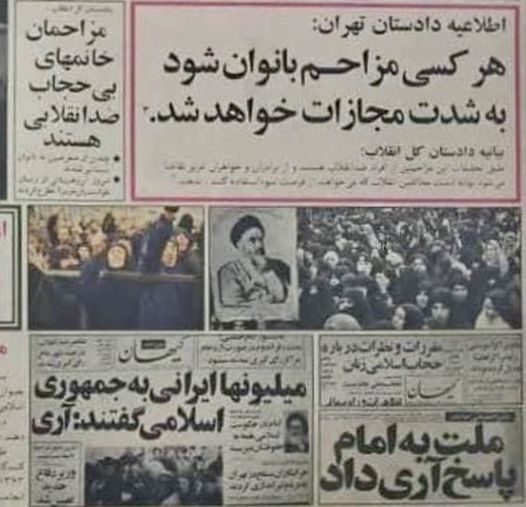
 (1) Images of the day: [Left] Family cars, over the years (see the next item below). [Center] The lying mullahs: In the aftermath of the 1979 revolution, Iranian women were promised repeatedly that hijab will not become mandatory and that anyone bothering hijabless women on the streets will be punished. [Right] Iran claims that Israel hit it with micro-drones "of the kind we give to our children as toys": They seem to be preparing the public for no response to the Israeli attack. Semi-official reports indicate the use of three large, radar-evading, guided missiles.
(1) Images of the day: [Left] Family cars, over the years (see the next item below). [Center] The lying mullahs: In the aftermath of the 1979 revolution, Iranian women were promised repeatedly that hijab will not become mandatory and that anyone bothering hijabless women on the streets will be punished. [Right] Iran claims that Israel hit it with micro-drones "of the kind we give to our children as toys": They seem to be preparing the public for no response to the Israeli attack. Semi-official reports indicate the use of three large, radar-evading, guided missiles.
(2) Station-wagons vs. SUVs: Some seven decades ago, car manufacturers began catering to the needs of multi-kid families by introducing station-wagons with humongous trunks. With the safety culture of those days, several kids would fit in the trunk. These beautiful and graceful cars were later replaced with minivans, which were safer and could carry extra passengers instead of lots of cargo. Nowadays. Families gravitate toward SUVs, which are much safer (say, in rollovers) but not as roomy. In fact, some SUVs have less interior space than standard sedans.
(3) One-liners: Brief news headlines, happenings, memes, and other items of general interest.
- Colorado enacts a first-of-its-kind privacy law that bans the sale of human brain waves.
- Paris Olympics organizers are preparing for what they deem near-certain cyberattacks this summer.
- The solution to homelessness isn't more court cases: It is more affordable housing.
- Anne Lamott reflects on turning 70.
- Kurdish music: Russian star Zara performs with a dance troupe. [4-minute video]
- My family's early-birthday celebration. [Video of persian piano music, played by my niece]
(4) France's love-hate relationship with science: Last December, France's president made an impassioned plea for supporting research and a major reorganization of the nation's research structure. But only 2 months later, worrisome deficits led to a 10-billion-euro cut in the French budget, including a disproportionate 0.9-billion-euro reduction in allocations to research & higher education. [From a Science magazine editorial, April 19, 2024]
(5) Murderous mullahs: Federal Criminal Court of Argentina has confirmed that both the 1992 attack on the Israeli Embassy and the 1994 AMIA bombing were carried out by Iran-backed groups.
2024/04/18 (Thursday): Presenting selected news, useful info, and oddities from around the Internet.
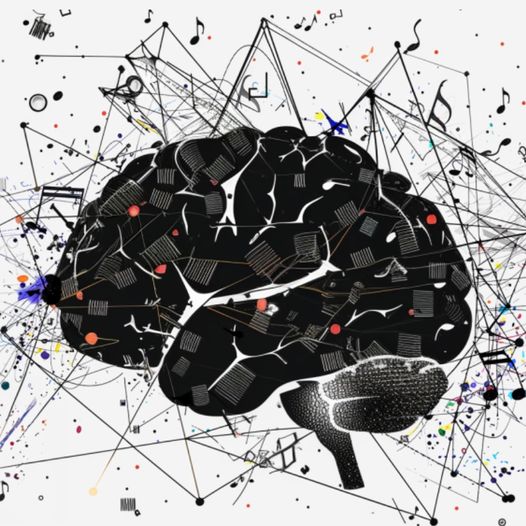

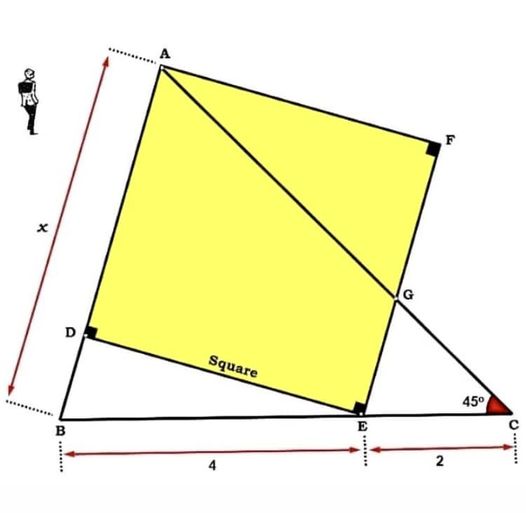 (1) Images of the day: [Left] UCSB Summit on AI and Human Creativity (see the last item below). [Center] Shalhoob's opens on Hollister Ave., between Goleta and Santa Barbara, in the location of the former Woody's BBQ, which closed 3 years ago. [Right] Math puzzle: Find the length x in the following diagram.
(1) Images of the day: [Left] UCSB Summit on AI and Human Creativity (see the last item below). [Center] Shalhoob's opens on Hollister Ave., between Goleta and Santa Barbara, in the location of the former Woody's BBQ, which closed 3 years ago. [Right] Math puzzle: Find the length x in the following diagram.
(2) CNN is reporting a major explosion in Esfahan, believed to have been caused by a ballistic missile. All flights in and out of Tehran, Esfahan, and Shiraz have been cancelled.
(3) Mellichamp Initiative in Mind & Machine Intelligence Summit: AI and Human Creativity (April 18-19, 2024, UCSB Henley Hall): As AI's capabilities to create visual art, music, stories, and videos improve exponentially, we are filled with questions about how AI-generated creativity differs from the human creative process. Where does generative AI fall below humans and where does it exceed human abilities? How can AI be used to potentiate human creativity? Will the massification of generative AI stiffen human creativity? What is the future role of the artist with the proliferation of generative AI? What are the legal framework and challenges in protecting artists' copyrights? This summit tackles the questions above to promote understanding and chart a future course of action.
[Full Summit Program]
What I learned early on: The word "technology" comes from two Greek words, transliterated "techne" and "logos." Techne means art, skill, craft, or the way, manner, or means by which a thing is gained. Logos means word, the utterance by which inward thought is expressed. So, in a way, art is already part of technology.
Second talk: Jennifer Walshe (U. Oxford) made a virtual presentation on her book, 13 Ways of Looking at AI, Art, and Music. "AI is not a singular phenomenon. It is many different things to many different people, a planetary-scale project which manifests for each of us locally in the same way that the climate makes a part of itself known to us through the weather on our street. If we are going to try and think seriously about AI, we need to think on the scale of AI. We need to think like the networks do – in higher dimensions, from multiple positions." [Full text]
Fourth talk: Daphne Ippolito (Carnegie Mellon U.) spoke under the title "Creative Writing with an AI-Powered Writing Assistant: Perspectives from Professional Writers." She described the AI-powered Wordcraft writing assistant and how professional writers reacted to it in the course of a months-long study.
Keynote talk: Ahmad Elgammal spoke under the title "Art in the Age of AI." He traced brief histories of computer-generated and computer-assisted art, outlined ongoing work at Rutgers University's Art & AI Lab, and touched upon unresolved legal issues pertaining to AI-generated art. At the end, a short video about how Beethoven's unfinished 10th Symphony was completed with help from AI was screened.
Final talk (Friday): Pamela Samuelson (UC Berkeley) spoke on "How Copyright Law Conceptualizes Creatuve Expression."
Many attempts at copyrighting AI-generated art have been unsuccessful, because the norm for copyright is substantial involvement of a human (simply issuing a prompt does not constitute substantial involvement). The current policy has precedents that go back to the 1980s, when copyrightability of computer-generated work was hotly debated. For example, machine-generated colorized versions of black-and-white films have been deemed uncopyrightable. On the other hand, current copyright law allows an employer to copyright the work of an employee, which leads some to question why AI isn't viewed as an underling.
2024/04/17 (Wednesday): Presenting selected news, useful info, and oddities from around the Internet.


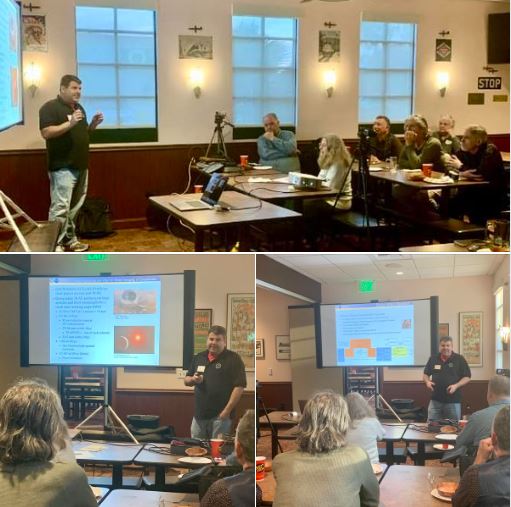


 (1) Images of the day: [Top left] Talk about Persian rugs (see the next item below). [Top center] Where is this place where elephants drive? [Top right] IEEE Central Coast Section tech talk (see the last item below). [Bottom left & center] Trump's Bible and Disney's production of "The Lyin King." [Bottom right] Surprise, surprise! We have a rematch between Joe Biden and Donald Trump.
(1) Images of the day: [Top left] Talk about Persian rugs (see the next item below). [Top center] Where is this place where elephants drive? [Top right] IEEE Central Coast Section tech talk (see the last item below). [Bottom left & center] Trump's Bible and Disney's production of "The Lyin King." [Bottom right] Surprise, surprise! We have a rematch between Joe Biden and Donald Trump.
(2) Today's Haji Baba Club talk: Sophia Sacal (freelancer at Christie's) spoke under the title "The (Epistemological) Warp and Weft of Persian Rugs: How Knowledge is Produced in Western Art History." How do we know what we know about Persian rugs? Knowledge is often produced through and from a Western perspective, leading to what decolonial theorist Ambar Quijano calls "the coloniality of power and knowledge." A revision of art historical sources, such as travelers' journals and connoisseurs' catalogs, will reveal how the Persian rugs' epistemological warp and weft (or the way in which we know what we know) has not been articulated from within, but rather from the outside. We often see photos of Persian rugs with unnamed and unacknowledged women/girls in the frame, as if all Iranian women & girls are interchangeable, whereas other art forms are identified with the artists' names. This calls for decolonialization of knowledge about Persian rugs.
(3) PEN America: In the first half of the 2023-2024 school year, there were more than 4300 book bans across the country — a number that surpassed the entire previous academic year.
(4) Israel's options against Iran: Many analysts advise Israel to "take the win" (its defenses held and there was no loss of life) and remain calm. Others point to significant economic harm due to disruption of activities, flight cancellations, and even GPS malfunctions. Ignoring the attack will embolden Iran and other adversaries, who may think hitting sparsely-populated areas will bring them symbolic victories with no down side.
(5) A piece of the International Space Station crashed through the roof of a house in Florida: This is highly unusual, because such pieces usually burn and vaporize as they re-enter Earth's atmosphere.
(6) Today's IEEE Central Coast Section tech talk: Dr. Ben Mazin (UCSB Physics Dept.) spoke under the title "Microwave Kinetic Inductance Detectors for Exoplanet Detection and Biophysics."
MKIDs, a fairly mature 20-year-old technology, are superconducting detectors useful across the electromagnetic spectrum and have even been used in particle and other sensing modalities. Their primary advantage over other low-temperature detectors is their inherent frequency-domain multiplexability at GHz frequencies. Room-temperature readouts leveraging commercial software-defined radio components allow researchers to build reasonably affordable and compact systems with tens of thousands of pixels. The talk contained operational principles of MKIDs, a review of their development focusing on the exciting work of the past decade, and a preview of what we can expect in the coming years.
2024/04/15 (Monday): Presenting selected news, useful info, and oddities from around the Internet.




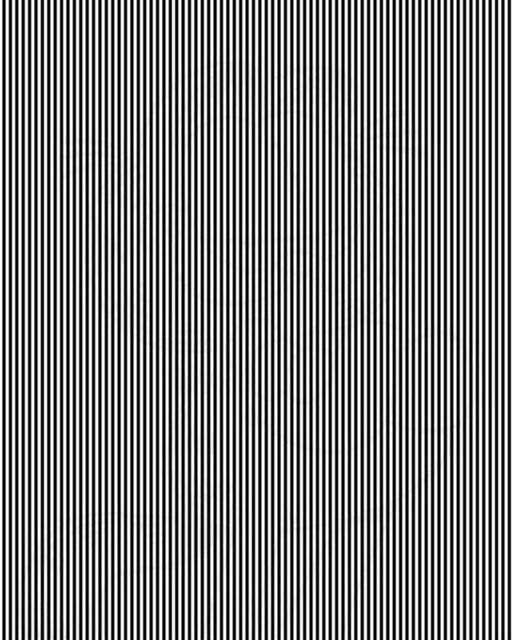
 (1) Images of the day: [Top left] Floating settlements are being tried as a potential solution to sea-level rise in vulnerable countries (source: E&T magazine, March-April 2024). [Top center] With college buddies, Faramarz and Farid, celebrating 60 years of friendship (Westwood Village, Los Angeles). [Top right] Falling oil prices seem to have delayed the completion of the Persian Gulf coast railway project (green line on the map) connecting all six Gulf Cooperation Council member states (source: E&T magazine, March-April 2024). [Bottom left] Math challenge: In this infinite tiling pattern, what fraction of the tiles are black? [Bottom center] Visual challenge: Do you see anything and if so, what? [Bottom right] Completed in 1624 in the wake of a newfound Anglo-Scottish unity, the Berwick Old Stone Bridge turns 400 this year (source: E&T magazine, March-April 2024).
(1) Images of the day: [Top left] Floating settlements are being tried as a potential solution to sea-level rise in vulnerable countries (source: E&T magazine, March-April 2024). [Top center] With college buddies, Faramarz and Farid, celebrating 60 years of friendship (Westwood Village, Los Angeles). [Top right] Falling oil prices seem to have delayed the completion of the Persian Gulf coast railway project (green line on the map) connecting all six Gulf Cooperation Council member states (source: E&T magazine, March-April 2024). [Bottom left] Math challenge: In this infinite tiling pattern, what fraction of the tiles are black? [Bottom center] Visual challenge: Do you see anything and if so, what? [Bottom right] Completed in 1624 in the wake of a newfound Anglo-Scottish unity, the Berwick Old Stone Bridge turns 400 this year (source: E&T magazine, March-April 2024).
(2) Misinformation and disinformation are major problems in this year of global elections, when half of the world's population have a chance to vote. [Source: E&T magazine, March-April 2024]
(3) The Iranian people are abandoned: The mullahs know full well that a retaliatory attack by Israel is likely. Yet they have not informed the public about the risks, nor have they issued directives on how to act in the event of an attack.
(4) In his new memoir, Knife: Meditations After an Attempted Murder, Salman Rushdie writes about the 2022 attack that blinded him in one eye and his wife's support through his recovery.
(5) Climate change in action: Northern Kenya is cattle country, but herders in that region are switching from cows to camels to deal with rising temperatures and erratic rainfall.
(6) The standard Rubik's Cube is 3 x 3 x 3: I had seen larger cubes, such as 4 x 4 x 4 and 8 x 8 x 8, but this 22 x 22 x 22 puzzle is the largest ever built. Its movement mechanism is mind-boggling! [Video]
2024/04/13 (Saturday): Presenting selected news, useful info, and oddities from around the Internet.





 (1) Images of the day: [Top left] Yesterday's UCSB ECE Summit 2024 at the Loma Pelona Center on campus: In addition to faculty talks and student presentations, there was a guest faculty keynote (Rama Chellappa, Bloomberg Distinguished Professor, Johns Hopkins U.) and an industry keynote (Marco Zuliani, Apple Computer's System Intelligence and Machine Learning Sr. Director). [Top center] Here is a Web site that generates Nastaliq script for Persian texts supplied by the user: Other scripts offered by the site, which I mentioned during my Talangor talk on Thursday 4/11, include Shekasteh, Moal'la, and Kufi. [Top right] Iran launches a massive air attack on Israel: The skies between the two countries are virtually devoid of air traffic. My heart goes out to Iranians and Israelis, who are caught between two war-mongering madmen. [Bottom left] Snacks I prepared this morning in anticipation of a rainy day indoors: Now, I am glued to the TV, following breaking news. [Bottom center] Santa Barbara's majestic Granada Theater turns 100. [Bottom right] Facebook memories from Apr. 13 of years past: Quotes and memes.
(1) Images of the day: [Top left] Yesterday's UCSB ECE Summit 2024 at the Loma Pelona Center on campus: In addition to faculty talks and student presentations, there was a guest faculty keynote (Rama Chellappa, Bloomberg Distinguished Professor, Johns Hopkins U.) and an industry keynote (Marco Zuliani, Apple Computer's System Intelligence and Machine Learning Sr. Director). [Top center] Here is a Web site that generates Nastaliq script for Persian texts supplied by the user: Other scripts offered by the site, which I mentioned during my Talangor talk on Thursday 4/11, include Shekasteh, Moal'la, and Kufi. [Top right] Iran launches a massive air attack on Israel: The skies between the two countries are virtually devoid of air traffic. My heart goes out to Iranians and Israelis, who are caught between two war-mongering madmen. [Bottom left] Snacks I prepared this morning in anticipation of a rainy day indoors: Now, I am glued to the TV, following breaking news. [Bottom center] Santa Barbara's majestic Granada Theater turns 100. [Bottom right] Facebook memories from Apr. 13 of years past: Quotes and memes.
(2) Avi Wigderson, Herbert H. Maass Professor in the School of Mathematics at Princeton's Institute for Advanced Study, has been named ACM's Turing Award winner for 2023: He has been a leading figure in computational complexity, algorithms & optimization, randomness & cryptography, parallel & distributed computation, combinatorics, and graph theory.
(3) Canadian-American journalist Robert McNeil [1931-2024] dead at 93: He was a beloved and trusted newsman, who co-anchored the PBS NewsHour for many years. RIP.
(4) One-liners: Brief news headlines, happenings, memes, and other items of general interest.
- Physicist Peter Higgs [1929-2024], of the Higgs boson fame, dead at 94. RIP.
- Nobel Laureate women, 1903-2023. [Slide show]
- Iran's state media use images of Texas fires to claim that missiles hit and destroyed Israeli targets.
- Persian music: Paying tribute to the late singer Viguen with a 7-minute medley of his most-famous songs.
(5) A sample of salaries and prices in Iran, one year before the 1979 Revolution: Teacher's monthly salary, 3500 tomans (~$500); Chelow-kabob, 7 tomans (~$1); Barbari bread 1 toman (~$0.14). [Detailed list]
(6) Only 60% of US students who enrolled in college earned a degree or credential within 8 years of high-school graduation: Of the ~23.000 ninth-graders tracked since 2009, ~74% had enrolled in college at some point, by the time the study concluded in 2021, a drop of ~10% compared with the study's previous iteration.
2024/04/11 (Thursday): Presenting selected news, useful info, and oddities from around the Internet.

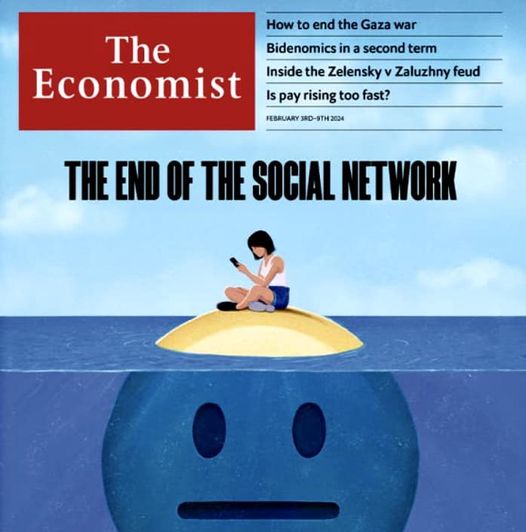
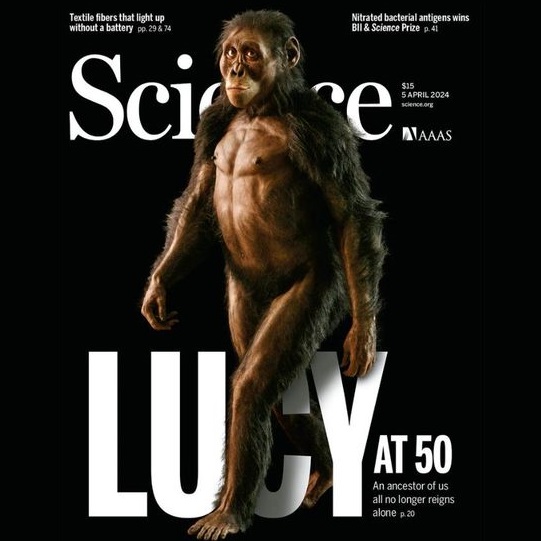


 (1) Images of the day: [Top left] A beautiful spring day, captured in flowers along my walking path in a neighborhood adjoining Foothill Road. [Top center] As Facebook turns 20, social apps are losing their appeal: Can we do anything to prevent their demise? [Top right] Lucy's world: Fifty years after her discovery, the 3.2M-year-old fossil still reigns as mother of us all. But she now has rivals. [Bottom left] The Mid-Atlantic Ridge: Extending from the Arctic to the tropics, the spectacular underwater mountain range, stretching over 10,000 miles, reaches above sea level in Iceland, creating an impressive landscape of volcanoes, geothermal springs, and geysers. [Bottom center] Tonight's Talangor Group tech talk (see the last item below). [Bottom right] Funeral procession in Tehran for the seven Islamic Revolutionary Guards Corps generals killed in Syria.
(1) Images of the day: [Top left] A beautiful spring day, captured in flowers along my walking path in a neighborhood adjoining Foothill Road. [Top center] As Facebook turns 20, social apps are losing their appeal: Can we do anything to prevent their demise? [Top right] Lucy's world: Fifty years after her discovery, the 3.2M-year-old fossil still reigns as mother of us all. But she now has rivals. [Bottom left] The Mid-Atlantic Ridge: Extending from the Arctic to the tropics, the spectacular underwater mountain range, stretching over 10,000 miles, reaches above sea level in Iceland, creating an impressive landscape of volcanoes, geothermal springs, and geysers. [Bottom center] Tonight's Talangor Group tech talk (see the last item below). [Bottom right] Funeral procession in Tehran for the seven Islamic Revolutionary Guards Corps generals killed in Syria.
(2) Women's soccer: In the championship match of SheBelieves Cup, USA prevailed over Canada (just barely). Canada took a first-half lead. In the second half, the US came from behind to take a 2-1 lead, before conceding a penalty kick that tied the score after 90 minutes. The US won the penalty shootout 5-4. [Highlights]
(3) Tonight's Talangor Group talk: Yours truly gave a talk entitled "A Historical Review of Computer-Generated Persian Script." I also gave a brief presentation about the Feb. 16, 2024, opening of Iran Computer Museum, which included the screening of this 13-minute video. A large team of young Iranians were involved in launching the small-scale museum, taking advantage of the extensive collection of systems & gadgets donated by Nasser Ali Saadat and financial help from Hessam Armandehi. The museum has both physical and virtual exhibits, as well as an oral-history collection.
A few years ago, I decided to sit down and document the development of the Persian script in connection with modern technology. The Persian script underwent significant changes with the advent of printing press, typewriters, and computers. I was involved at Tehran's Arya-Mehr/Sharif University of Technology in several early projects on computer-generated Persian script, an effort that went through multiple generations of printing technology, from drum and chain printers through the eventual dominance of dot-matrix technology. My historical reflection resulted in two journal papers, one in Persian and another in English, whose citations and PDF links appear below.
B. Parhami, "Computers and Writing in Persian: A Review of Challenges and Solutions" (in Persian), Iran Namag, Vol. 4, No. 2, pp. 3-32, Summer 2019 (1398).
[PDF]
B. Parhami, "Computers and Challenges of Writing in Persian: Explorations at the Intersection of Culture and Technology," Visible Language, Vol. 54, Nos. 1-2, pp. 186-223, April 2020.
[PDF]
In the talk, I outlined certain characteristics of the Persian script that made it difficult for early computer printers to produce high-quality Persian output. A number of band-aid solutions were proposed to adapt printers designed and optimized for the Latin script to the needs of Persian script. Later, dot-matrix printers and displays made the adaptation simpler, although several challenges still remained.
Today, we have Persian print and display outputs of reasonable quality, but text-processing algorithms, particularly if we mix Latin and Persian scripts, still leave us scratching our heads when we encounter silly line-break and formatting errors. [Recording of the talk]
2024/04/08 (Monday): Presenting selected news, useful info, and oddities from around the Internet.


 (1) Today's solar eclipse across the US: I was walking from home to my class on campus, 11:00-11:50 AM, which included the peak eclipse time of 11:11. I stopped from time to time and put my viewing glasses on to look at the Sun. Only nerds get excited about a partial solar eclipse! Everyone around me went about their business, as if nothing was happening. We Californians will have to wait until 2045 to get a better deal.
(1) Today's solar eclipse across the US: I was walking from home to my class on campus, 11:00-11:50 AM, which included the peak eclipse time of 11:11. I stopped from time to time and put my viewing glasses on to look at the Sun. Only nerds get excited about a partial solar eclipse! Everyone around me went about their business, as if nothing was happening. We Californians will have to wait until 2045 to get a better deal.
(2) Is every number special? Some believe so. Consider the seemingly drab number 1729. Indian mathematician Ramanujan is credited with noticing that it is the smallest number expressible as the sum of two perfect cubes in two different ways:
1729 = 9^3 + 10^3 = 1^3 + 12^3
(3) US insurance companies take drone images of homes, which can result in policyholders being dropped for signs of roof damage, yard debris, overhanging tree branches, and undeclared swimming pools or trampolines.
(4) One-liners: Brief news headlines, happenings, memes, and other items of general interest.
- Putin's mines have been maiming and killing Ukrainian civilians since Russia's invasion began.
- The constant 6174 is named after Indian mathematician D. R. Kaperkar.
- Rail transportation in Bangladesh: Efficiency, yes; Safety, no. [Video]
- When your foreign-born child makes fun of and corrects your immigrant English!
(5) An essay on understanding others' feelings: It examines empathy, including what it is, whether our doctors need more of it, and when too much may not be a good thing.
(6) Open-access journals aren't working as we hoped they would: In retrospect, it should have been obvious that a pay-in-advance publication strategy would motivate publishers to accept much junk science and to underinvest in systems to ensure the long-term availability of the published works. The Bill & Melinda Gates Foundation will require grantees to post as preprints all manuscripts that result from research it funds. It will also stop paying for researchers to publish their papers in journals that charge a fee to make papers free. According to the Foundation, the mandate is needed to accelerate the dissemination of research findings and because too many authors cannot afford publishing fees.
2024/04/07 (Sunday): Today, I offer a course review on human prehistory and two science book reviews.
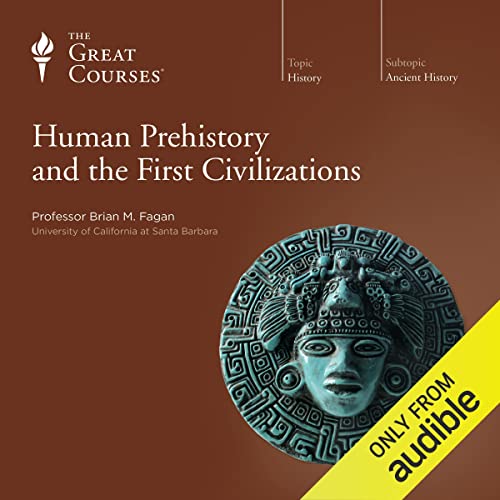
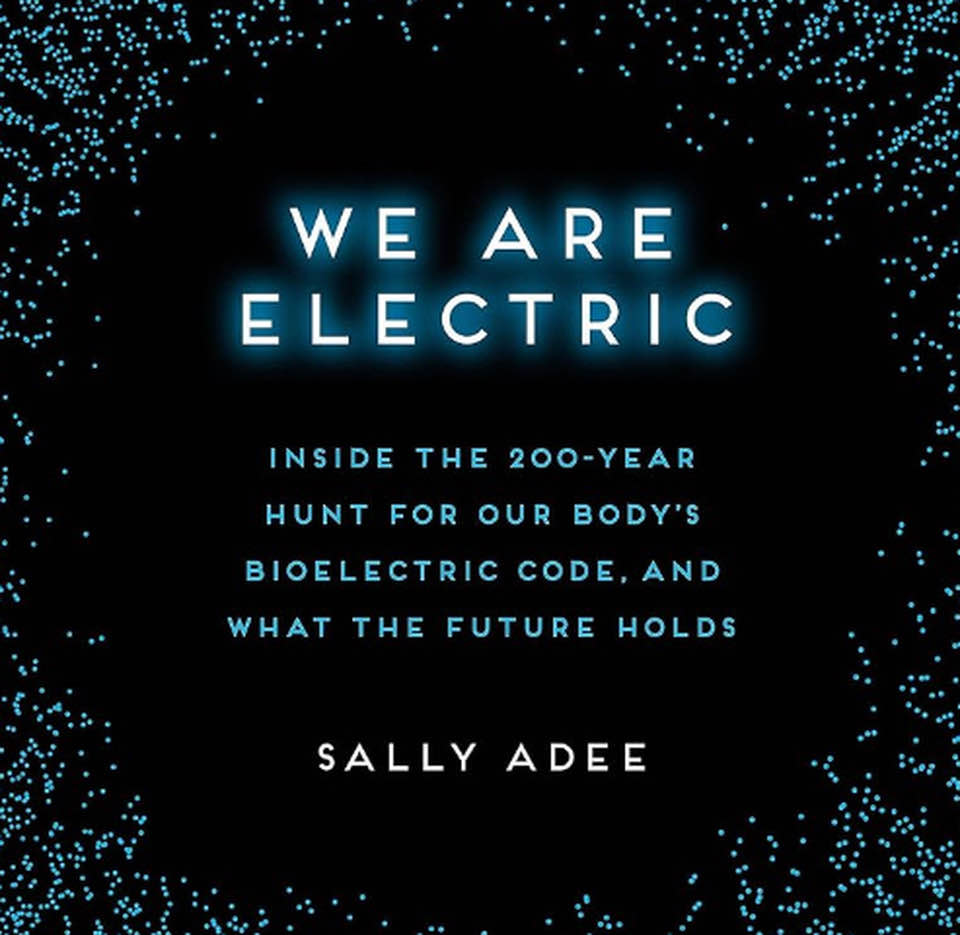
 (1) Course review: Fagan, Brian M., Human Prehistory and the First Civilizations, 36 half-hour lectures in the "Great Courses" series, 2013.
[My 4-star review of this course on GoodReads]
(1) Course review: Fagan, Brian M., Human Prehistory and the First Civilizations, 36 half-hour lectures in the "Great Courses" series, 2013.
[My 4-star review of this course on GoodReads]
Brian M. Fagan [1936-], Professor of Anthropology at UCSB, has authored two widely-used textbooks: People of the Earth and In the Beginning. His other works include The Rape of the Nile, The Adventure of Archaeology, Time Detectives, and The Little Ice Age. He also edited The Oxford Companion to Archaeology.
At first impression, "human prehistory," defined as the story of human development before the advent of writing, might seem an oxymoron. While it is very difficult to deduce what went on before humans began recording events in writing, there is ample evidence that archaeologists can draw upon to make informed guesses. The fossil record is of course a big help.
In this course, we hear about the footprints of a pair of hominins who walked across a dry riverbed covered with volcanic ash, which preserved the footprints for modern scientists to examine. The footprints tell us not only about the foot size of the species, but also the gait and speed of movement of our ancestors some 4 million years ago, as they strived to adapt to life outside thick forests (change of diet, need for faster movement to hunt or to evade predators). It takes a lot of detective work to extract detailed info from a small collection of evidential material and it takes the skills of a persistent detective to put the puzzle pieces together, but it definitely qualifies as legitimate science.
The first ten lectures of this fascinating course deal with the origins and development of modern humans. The remaining 26 lectures introduce the development of agriculture & states, interaction of societies, and many of the most-significant early civilizations on all continents.
On this Web page, you can find a detailed description of the course, including the titles of the 36 lectures. A short abstract of each lecture is available by clicking on its title.
(2) Book review: Adee, Sally, We Are Electric: Inside the 200-Year Hunt for Our Body's Bioelectric Code, and What the Future Holds, unabridged 10-hour audiobook, read by the author, Hachette Audio, 2023.
[My 4-star review of this book on GoodReads]
Biological terms ending with "-ome" imply a totality: genome, biome, proteome. The subject of this book is electome, that is, the head-to-toe bioelectric signaling system of your body and its 40 trillion cells. The shocking story (pun intended) of bioelectricity, from the 18th century lab of Luigi Galvani, an Italian scientist hunting for what gives animals the spark of life, to DARPA's secretive use of brain zapping to speed up soldiers' sniper training.
Science writer Adee opens the book with a gripping story of her transformation into a stone-cold sharpshooter who eliminated a large number of simulated enemy actors in a desert battle simulation. All it took was a 9-volt battery and a little brain-zapping.
She then takes us on a grand tour of the various ways in which our bodies use electricity to orchestrate our lives. She describes how cells use ion channels to usher charged molecules in and out. And she touches upon new applications that include military training, as described above, and medicine, including cancer treatment, implants, and bioelectric bandages that speed wound-healing.
(3) Book review: Perkowitz, Sidney, Physics: A Very Short Introduction, unabridged 5-hour audiobook, read by Jason Martin, Tantor Audio, 2023. [My 5-star review of this book on GoodReads]
Physics is one of broadest areas of science, so an overview provided in a 140-page pocket-size book is by necessity quite limited. Perkowitz organizes his material into 6 chapters of 20 or so pages each, followed by references and further reading/viewing.
- It all began with the Greeks
- What physics covers and what it doesn't
- How physics works
- Physics applied and extended
- A force in society
- Future Physics: Unanswered questions
It is very helpful to look at a discipline from a big-picture perspective. Questions such as what physicists do, is experimental confirmation really necessary or optional (as today's string-theorists assert), how are small & big physics projects funded, why is physics so popular with government and research-funding agencies, why there aren't more women physicists, why the shift from single-author papers of decades ago to today's norm of dozens or even hundreds of authors, and international collaboration & competition.
2024/04/06 (Saturday): Presenting selected news, useful info, and oddities from around the Internet.


 (1) Images of the day: [Left] Today's family outing in Santa Barbara (Reunion Kitchen at the East Beach and the famous Chromatic Gate on Cabrillo Blvd.). [Center] Iranian women's-rights activist Sepideh Qolyian, 32, wrote her second book in prison: The book, a strange combination of prison memoir and baking recipes, is a masterpiece that takes you to the darkest corners of Iranian jails and, at the same time, elevates your spirit by introducing you to incredible women who dance, sing, bake, and act inside prison to defy their tormenters (reported by IranWire). [Right] Dozens of US bridges lack protections against being hit by wayward ships.
(1) Images of the day: [Left] Today's family outing in Santa Barbara (Reunion Kitchen at the East Beach and the famous Chromatic Gate on Cabrillo Blvd.). [Center] Iranian women's-rights activist Sepideh Qolyian, 32, wrote her second book in prison: The book, a strange combination of prison memoir and baking recipes, is a masterpiece that takes you to the darkest corners of Iranian jails and, at the same time, elevates your spirit by introducing you to incredible women who dance, sing, bake, and act inside prison to defy their tormenters (reported by IranWire). [Right] Dozens of US bridges lack protections against being hit by wayward ships.
(2) A 4.8 earthquake shook New York City and surrounding areas Friday morning: Earthquakes are rare in NYC, with the largest one recorded being a magnitude-5.2 shaker in 1884.
(3) Note ending an e-mail message from a UCSB student: "I really enjoyed ECE 1B with you my freshman year during COVID. I met people working on those puzzles that I've worked with for the rest of school. Thank you."
(4) One-liners: Brief news headlines, happenings, memes, and other items of general interest.
- The 39th straight month of job growth in the US raises hope that inflation is coming under control. [Chart]
- Dream discovery: A highly concentrated deposit of helium is discovered in northern Minnesota.
- Tuition at some private US colleges is approaching ~$100K per year.
- A Brief History of the Future: Six-part PBS documentary, created by futurist Ari Wallach.
- Islamic Republic's authorities executed 853+ people in 2023, the highest number in eight years.
- Facebook memory from Apr. 6, 2023: On the use of scaffolding for hardware and software systems.
(5) A California man who discovered a back-door planted in a piece of open-source software may have stopped a nasty worldwide cyberattack. [NYT story]
(6) There's so much hype about Monday's solar eclipse: Everyone insists that you shouldn't miss it, but then they tell you not to look at the Sun. How am I supposed to see it if I don't look at the Sun?
(7) US Women prevail 2-1 over Japan in a semifinal match of SheBelieves Soccer Cup: Japan took the lead in minute 1, but the US tied the match before halftime and scored the winning goal on a penalty kick late in the second half. In the final match on Tuesday 4/09, 4:00 PM PDT, USA will play Canada, which prevailed over Brazil in penalty shootout, after a 1-1 draw. [4-minute USA-Japan highlights]
(8) The flow of talent from academia to industry has accelerated: Academic salaries have never been competitive with those of the industry, but the gap has been growing and working conditions at universities have been deteriorating of late.
(9) Final thought for the day: Ayatollah Khamenei says that the Islamic Republic will negotiate with the Devil if it perpetuates the regime's survival. Everyone should get behind and support the regime. Interestingly, every time he mentions the Islamic Republic, he points to himself!
2024/04/04 (Thursday): Presenting selected news, useful info, and oddities from around the Internet.

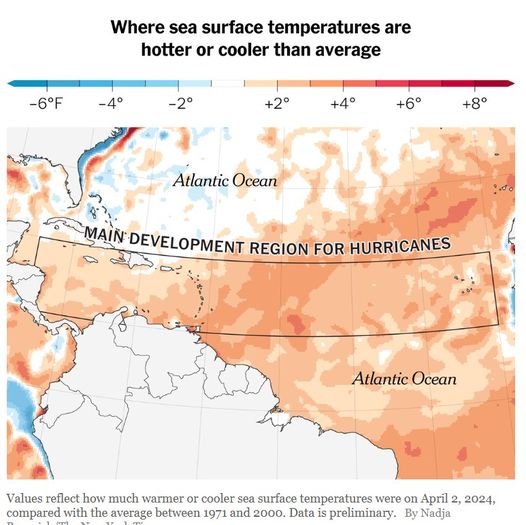
 (1) Images of the day: [Left] Throwback Thursday: The upcoming April 8, 2024, total solar eclipse in the US was predicted in March 1970. [Center] Warmer-than-usual ocean temperatures foretell a daunting hurricane season. [Right] Zoe Schiffer's Extremely Hardcore (see the last item below).
(1) Images of the day: [Left] Throwback Thursday: The upcoming April 8, 2024, total solar eclipse in the US was predicted in March 1970. [Center] Warmer-than-usual ocean temperatures foretell a daunting hurricane season. [Right] Zoe Schiffer's Extremely Hardcore (see the last item below).
(2) Join NSF during the April 8 solar eclipse to learn about the science of the Sun: Scientists will describe the unique experiments happening during the eclipse. It will all be on YouTube, starting around 11:00 AM PDT.
(3) In defense of shared governance at universities: University of California Academic Senate Chair Jim Steintrager addressed the Board of Regents at the March 20 Joint Meeting of the Regents' Academic and Student Affairs & Compliance and Audit Committees. His remarks begin at the 17:26 mark of this video.
(4) Book review: Schiffer, Zoe, Extremely Hardcore: Inside Elon Musk's Twitter, Portfolio, 2024.
[My 4-star review of this book on GoodReads]
For many years, Twitter had been defined by the hands-off leadership style of co-founder Jack Dorsey. Twitter's staff spent years trying to protect the platform against impulsive billionaires. Then, trouble arrived when one such billionaire made himself the company's CEO, ending the era of Twitter giving everyone a voice, from Occupy Wall Street to the Arab Spring. Overnight, Twitter went from a company that was short on profits but long on influence to being all about profits and one person's ego.
Santa-Barbara-based journalist Schiffer draws on interviews with 60+ employees, internal documents, court filings, and congressional testimony to produce an account of Elon Musk's takeover of Twitter and the ensuing chaos. She examines the effects of the volatile entrepreneur's takeover on the social media company and its thousands of employees (resignations, firings, etc.).
Beginning in January 2022, Musk began accumulating Twitter shares. A few months later, he joined the board and made an offer to purchase the business. Suits and countersuits slowed the process, which finally ended in the fall of that year, when Musk bought Twitter for $44 billion. Intent on cutting costs, Musk instituted massive layoffs, including engineers, content managers, and root password holders (critical to the company's operations), actions that weakened morale and caused advertising revenue to nose-dive.
Schiffer concedes that Musk's product ideas were reasonable, "but they were all over the map. In addition to relaunching Twitter Blue, he was exploring a payments platform, long-form video, long-form tweets, and encrypted direct messages." Since his childhood, "Musk had harbored a belief that he was destined to have a great impact on the world." His track record confirms that he is capable of having impact, but not necessarily that the impact will be positive in all cases.
There is general agreement in many different reviews of the book that Schiffer has done a remarkable job of researching her subject, but she leaves several important questions unanswered. Here are some examples. Is Twitter doomed to failure under Musk's leadership? Technical failures are well-described, but what about Musk's free-speech hypocrisy? She certainly has opinions on these questions, given her long-term reporting on Twitter, but she does not share her views with the book's readers.
For those who don't care for a book-size report with lots of details, this New York Magazine article by the author, Casey Newton, and Alex Heath might be considered a good substitute.
2024/04/03 (Wednesday): Presenting selected news, useful info, and oddities from around the Internet.


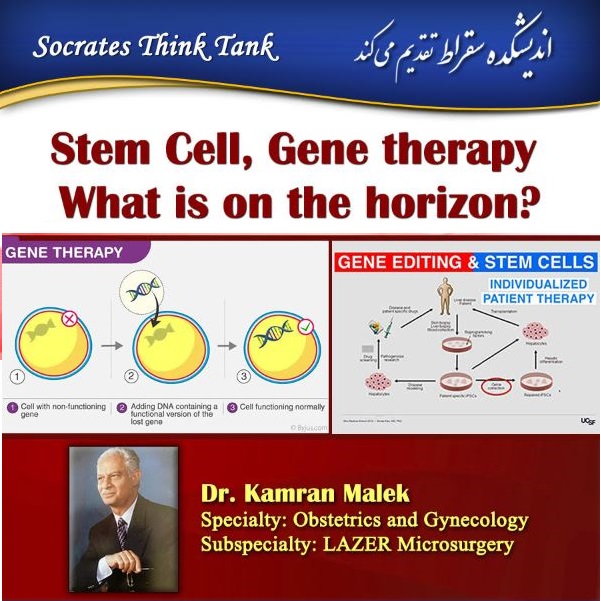


 (1) Images of the day: [Top left] Images from Taiwan's 7.4-magnitude shaker: Reportedly, 9 people have died in this strongest earthquake in 25 years. The relatively low fatality figure is a testament to the country's building technology and rescue efforts. [Top center] About 100,000 live salmon spilled off a truck in Oregon, but most survived by flopping into a nearby creek. They are heading toward the ocean. [Top right] Socrates Think Talk talk (see the last item below). [Bottom left & center] Massive mosques to be erected at all city parks in Tehran: This is the Iranian mullahs' plan to keep an eye on people who use parks for jogging, group-exercise, and social gatherings. These architectural drawings show the mosque planned for Gheitarieh Park in northern Tehran. [Bottom right] New Yorker cartoon of the day: "Spring cleaning is just replacing the winter clothes on this chair with lighter, more colorful ones."
(1) Images of the day: [Top left] Images from Taiwan's 7.4-magnitude shaker: Reportedly, 9 people have died in this strongest earthquake in 25 years. The relatively low fatality figure is a testament to the country's building technology and rescue efforts. [Top center] About 100,000 live salmon spilled off a truck in Oregon, but most survived by flopping into a nearby creek. They are heading toward the ocean. [Top right] Socrates Think Talk talk (see the last item below). [Bottom left & center] Massive mosques to be erected at all city parks in Tehran: This is the Iranian mullahs' plan to keep an eye on people who use parks for jogging, group-exercise, and social gatherings. These architectural drawings show the mosque planned for Gheitarieh Park in northern Tehran. [Bottom right] New Yorker cartoon of the day: "Spring cleaning is just replacing the winter clothes on this chair with lighter, more colorful ones."
(2) UCSB Plous Lecture Honor: Dr. Charmaine Chua, Assistant Professor in the Department of Global Studies, will give the 2023-2024 Harold J. Plous Award Lecture on Thursday, April 11, 4:00 PM, at the Mosher Alumni House. Her lecture is entitled "Breaking Our (Supply) Chains: Anti-colonial Resistance in a Just-In-Time World."
(3) Tonight's Socrates Think Tank talk: Dr. Kamran Malek (obstetrics & gynecology) spoke under the title "Stem Cell, Gene Therapy: What Is on the Horizon?" There were ~110 attendees.
Dr. Malek indicated that today's three hottest topics in healthcare are stem cells, gene therapy, and the use of AI. So, he structured his talk into three sections, with Q&A at the end of each section.
Stem cells are undifferentiated cells that can turn into any specialized cells, but as they divide, they gradually become more limited in their adaptation capabilities. Damaged or improperly functioning cells can be removed and stem cells sent to replace them. Medical ethics dictates that stem cells be used to replace other cells, not to create an embryo, for example.
The human genome map, developed a few years ago, catalogs all of our genes. The goal of gene therapy is to replace a defective gene with a healthy one that is mounted on a viral vector. The defective gene is first silenced by targeted use of special enzymes. Once silenced, a healthy gene takes over and replaces it. This is the idea behind the CRISPR technology, which earned its co-inventors, Biochemist Jennifer Doudna and microbiologist Emmanuelle Charpentier, a Nobel Prize in 2020.
I could not stay for the third part of the talk due to prior commitments.
2024/04/01 (Monday): Presenting selected news, useful info, and oddities from around the Internet.
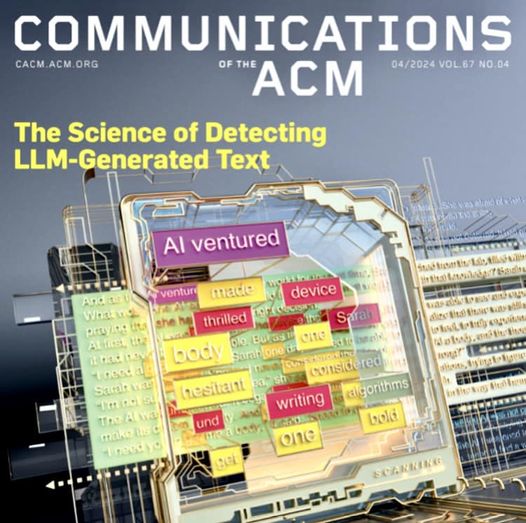

 (1) Images of the day: [Left] CACM cover feature, April 2024: In an article entitled "The Science of Detecting LLM-Generated Text," Ruixiang Tang, Yu-Neng Chuang, and Xia Hu discuss the many approaches to mitigating the potential misuse of LLMs through automatic detection. [Center] Natural intelligence: Ants break down the grains & seeds they collect for winter into halves to keep them from germinating even through rain and the most-perfect germinating conditions. Amazingly, ants break down coriander seeds into four pieces, because a coriander seed will still germinate after being divided into two. [Right] Heavenly symmetry: Photo or painting?
(1) Images of the day: [Left] CACM cover feature, April 2024: In an article entitled "The Science of Detecting LLM-Generated Text," Ruixiang Tang, Yu-Neng Chuang, and Xia Hu discuss the many approaches to mitigating the potential misuse of LLMs through automatic detection. [Center] Natural intelligence: Ants break down the grains & seeds they collect for winter into halves to keep them from germinating even through rain and the most-perfect germinating conditions. Amazingly, ants break down coriander seeds into four pieces, because a coriander seed will still germinate after being divided into two. [Right] Heavenly symmetry: Photo or painting?
(2) Happy first day of April: April Fool's Day is named after Englishman Charles April. He was easily fooled, so he lost the fortune his father left him. His wife divorced him after getting tired of his foolishness. He believed every fake story he read, as you are doing now ...
(3) Vanishing structures of rural America: Vermont-based photographer Jim Westphalen honors the long histories of decaying structures that are in danger of vanishing without a trace, along with generations of families that lived and worked in them.
(4) One-liners: Brief news headlines, happenings, memes, and other items of general interest.
- A temporary shipping route for barges and tugboats to be opened around the Baltimore bridge wreckage.
- Havana Syndrome: How Russia targets high-level American officials worldwide with a secret weapon.
- With Daniel Craig, the fifth Bond, out, who should play the title role in the highly-profitable franchise?
- Show that the area of a quadrangle with side lengths a, b, c, d does not exceed (1/16)(a + b + c + d)^2.
(5) Harvard removes human skin from the binding of a 19th-century book in its collection: The book, Des Destinees de L'ame, meaning Destinies of the Soul, was written by Arsene Houssaye, a French novelist and poet, in the early 1880s. The printed text was given to a physician, Ludovic Bouland, who bound the book with skin he took without consent from the body of a deceased female patient in a hospital where he worked.
(6) How to comment on social media (satire): "Do not read the whole original post or what it links to, which will dilute the purity of your response … Listening/reading delays your reaction time, and as with other sports, speed is of the essence." ~ Rebecca Solnit
(7) Shahram Nazeri to be awarded the 14th Bita Prize for Persian Arts: Nazeri is an award-winning musician and acclaimed composer. As a young artist, he was well-versed in traditional vocal styles but eager to discover new melodies and spaces, drawing inspiration from Kurdish and other Iranian ethnic musical traditions. In his mastery of Iran's grand epic Shahnameh, and deep immersion in the poetry of Rumi, he has had the unique role of bridging the heights of Iranian epic and mystical traditions. He has been no less a creative pioneer in using masterpieces of modernist Persian poetry from poets like Nima and Akhavan to create pieces that brilliantly fuse tradition and modernity in Iran. [Sample musical performance]
2024/03/30 (Saturday): Presenting selected news, useful info, and oddities from around the Internet.


 (1) Images of the day: [Left & Right] Rolling some Persian-style dolmas (dolmehs) to help my daughter. [Center] Where have all the peace symbols gone? (see the last item below).
(1) Images of the day: [Left & Right] Rolling some Persian-style dolmas (dolmehs) to help my daughter. [Center] Where have all the peace symbols gone? (see the last item below).
(2) Iranian Kurds take Nowruz celebration seriously, with dancing and other festivities: The joyless Islamic Republic officials prefer religious mourning to any display of life and joy, so they have summoned many of the organizers to court. [Video 1] [Video 2] [Video 3]
(3) Quote of the day: "People think focus means saying yes to the thing you've got to focus on. But that's not what it means at all. It means saying no to the hundred other good ideas that there are. You have to pick carefully. I'm actually as proud of the things we haven't done as the things I have done. Innovation is saying no to 1,000 things." ~ Steve Jobs
(4) One-liners: Brief news headlines, happenings, memes, and other items of general interest.
- Israeli forces create a "Google Maps" of threats in Gaza by using data from sensors and intelligence feeds.
- Electric power use by data centers to increase six-fold over the next decade.
- World's largest inflatable theme park is coming to Santa Barbara, April 26-28, 2024.
[Tweet, with photo]
- How Henry E. Warren's 1916 clock enabled the power grid by regulating the generated power's frequency.
- Linda Doyle shatters Ireland's academic glass ceiling by becoming Trinity College's first female provost.
(5) Research universities and hospitals push back on a proposal by Office of Research Integrity (ORI) to increase oversight of investigations into fraud and plagiarism.
(6) The war at Stanford (and other college campuses): A Stanford sophomore had to change his discussion section for a CS course when the TA leading it asserted that he wanted Joe Biden killed.
(7) The end of Boston Market: Founded in 1985 and expanding to 1200 stores in the 1990s, the casual-healthy food joint is on its way out, with only 27 stores remaining nationwide.
(8) Colleges/schools of AI are sprouting nationwide: In some cases, combined AI/data-science academic units are being formed. In a way, this is inevitable. Successful programs with a lot of student interest and funding tend to go their own way. My worries stem from the fact that once AI is cut off from its CS & CE roots, fundamental scientific progress may be overshadowed by sexy devices & apps that bring in funding from the government and industry. What do you think?
(9) Final thought for the day: Have we given up on peace? When was the last time you noticed the peace symbol on a banner or saw someone flash the two-finger version of it? Bringing back the peace symbol requires that we start wishing health & prosperity on our foes, instead of death & misfortune.
2024/03/28 (Thursday): Presenting selected news, useful info, and oddities from around the Internet.

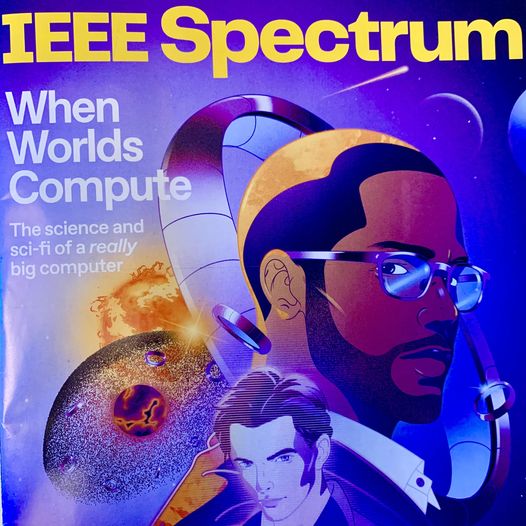



 (1) Images of the day: [Top left] My new graduate seminar, ECE 594BB, at UCSB (see the next item below). [Top center] What if we built a really big computer? I'm not referring to a warehouse-size supercomputer, which we already have, but a planet-scale machine. What are the challenges of building a planet-scale computer of the kind imagined by Douglas Adams in The Hitchhiker's Guide to the Galaxy and what uses can we envision for such a machine? [Top right] A mosque in every city park: This is Tehran Mayor's renewed pledge, after seemingly retreating in the face of broad opposition to cutting down of trees and reduction of public spaces. [Bottom left & center] Today's food creations: A hearty chicken & vegetables soup (put together from everything we had in the fridge) and a Shirazi salad. [Bottom right] You have likely seen this method of protecting highway bridge columns from collisions: Why aren't there similar mechanisms for bridges over waterways? Granted, the Highway method is in part to protect drivers, but still, it would make sense along waterways. See also the last item below.
(1) Images of the day: [Top left] My new graduate seminar, ECE 594BB, at UCSB (see the next item below). [Top center] What if we built a really big computer? I'm not referring to a warehouse-size supercomputer, which we already have, but a planet-scale machine. What are the challenges of building a planet-scale computer of the kind imagined by Douglas Adams in The Hitchhiker's Guide to the Galaxy and what uses can we envision for such a machine? [Top right] A mosque in every city park: This is Tehran Mayor's renewed pledge, after seemingly retreating in the face of broad opposition to cutting down of trees and reduction of public spaces. [Bottom left & center] Today's food creations: A hearty chicken & vegetables soup (put together from everything we had in the fridge) and a Shirazi salad. [Bottom right] You have likely seen this method of protecting highway bridge columns from collisions: Why aren't there similar mechanisms for bridges over waterways? Granted, the Highway method is in part to protect drivers, but still, it would make sense along waterways. See also the last item below.
(2) My new UCSB course on the technical aspects of democracy: I will be designing and teaching a new ECE 594 graduate seminar entitled "Mathematical, Algorithmic, and Engineering Aspects of Democratic Elections," to be offered during fall 2024. Preparing for the course and possibly recording its lectures will be done over the summer. I will update you on my work's progress with occasional social-media posts.
(3) IEEE ethics rules lead to the suspension of Chinese Professor Peng Zhang for harassment: The case is fairly old, but the conclusions and action of IEEE's Ethics and Member Conduct Committee were announced in the March 2024 issue of IEEE Spectrum magazine.
(4) Unfortunately, the danger of Joe Biden losing to Donald Trump exists and cannot be wished away: All the Democrats can do is to bring all hands on deck and ensure broad participation.
()5 Final thought for the day: Ships should not collide with bridges and bridges should not collapse if there is a collision. Simple, huh? Not so fast! We are told that investigating the collapse of Baltimore's Francis Scott Key Bridge and the cargo-ship failure that caused it could take years. By then, the incident will be forgotten and the urgency of action will be gone. Remember January 6?
2024/03/26 (Tuesday): Presenting selected news, useful info, and oddities from around the Internet.


 (1) Images of the day: [Left & Center] The collapse of a bridge in Baltimore, MD (see the next item below). [Right] The disappearing island: In the span of a human lifetime, the majority of Nyangai's land has been washed away, and most of its population has fled. Within a few years, the island may disappear altogether.
(1) Images of the day: [Left & Center] The collapse of a bridge in Baltimore, MD (see the next item below). [Right] The disappearing island: In the span of a human lifetime, the majority of Nyangai's land has been washed away, and most of its population has fled. Within a few years, the island may disappear altogether.
(2) Baltimore's Francis Scott Key Bridge collapses after a large cargo ship collides with it: Search and rescue operations are complicated by high winds and ice-cold waters. Engineers are scratching their heads in the aftermath. Huge cargo & cruise ships threaten many bridges that have not been built to withstand their impact. The collapse of the entire Francis Scott Key Bridge rather than one of its spans indicates an urgent need to revisit bridge design. Also, new ship designs, so that vessels are not totally incapacitated by loss of power, should be extensively discussed. [Maps & photos]
(3) Total Solar eclipse happens roughly once every 366 years in the same spot on Earth: Teachers in areas of totality or near-totality on April 8, 2024, plan to use the spectacle as a learning tool, hoping to get children and their parents excited about science.
(4) One-liners: Brief news headlines, happenings, memes, and other items of general interest.
- Qatari royal invested about $50 million in pro-Trump network Newsmax.
- Hamas terrorists meet with Terrorist-in-Chief Ali Khamenei in Tehran. [Tweet, with photo]
- Communications of the ACM, a premier computing journal, becomes an open-access, Web-first publication.
- Snippets from a major musical concert in Tehran, sponsored by Iran's National TV, 1977. [Video]
(5) Is artificial intelligence (AI) the new data science? A few years ago, claims that "big data" will solve all of our problems were front-page headlines. Many opportunists became data scientists overnight and were hired by new and established companies who wanted to erect a stand for themselves in the data-science marketplace. Now, suddenly, the number of AI experts has multiplied, with many overnight conversions from other specialties. Everyone is giving lectures on AI, painting rosy pictures that ensure their continued employment and re-invitation to speak. Brace for major downsizing in the industry to get rid of all the pretend AI experts!
2024/03/25 (Monday): Presenting selected news, useful info, and oddities from around the Internet.

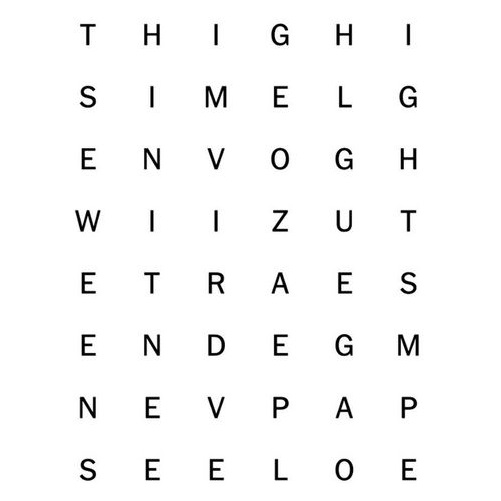
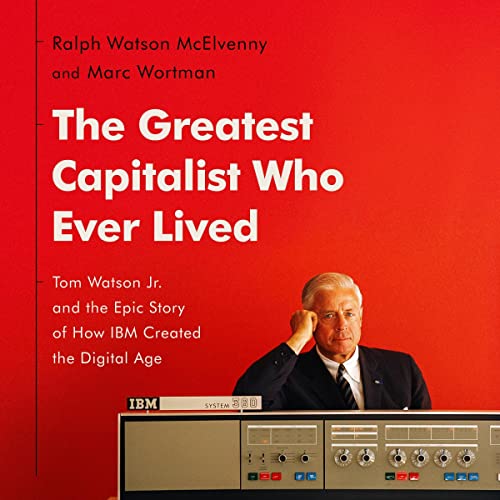 (1) Images of the day: [Left] The entire universe in a log-log chart (see the next item below). [Center] A new word game from New York Times: A theme word starts at one of the letters and traces a path by downward, upward, leftward, rightward, or any diagonal movement (e.g., TIME at the upper-left corner). (The solution) [Right] The Greatest Capitalist Who Ever Lived (see the last item below).
(1) Images of the day: [Left] The entire universe in a log-log chart (see the next item below). [Center] A new word game from New York Times: A theme word starts at one of the letters and traces a path by downward, upward, leftward, rightward, or any diagonal movement (e.g., TIME at the upper-left corner). (The solution) [Right] The Greatest Capitalist Who Ever Lived (see the last item below).
(2) There is a long pedagogical tradition in physics of putting everything into one log-log plot. In their October 1, 2023, American J. Physics paper, Charles H. Lineweaver and Vihan M. Patel provide an overview of the history of the universe and the sequence of composite objects (e.g., protons, planets, galaxies) that condensed out of the background as the universe expanded and cooled.
(3) Book review: McElvenny, Ralph Watson and Marc Wortman, The Greatest Capitalist Who Ever Lived, unabridged 17-hour audiobook, read by Donald Corren, PublicAffairs, 2023.
[My 4-star review of this book on GoodReads]
Before Steve Jobs, Bill Gates, and Elon Musk, there was IBM's Thomas Watson Jr. [1914-1993]. This book is a biography of the man who oversaw the transformation of IBM, originally specializing in electromechanical business-machines, into a digital-computing behemoth, creating a company whose name was synonymous with computers for several decades. Tom Watson Jr.'s success at IBM may have been at least in part due to the rivalry with and rebellion against his father. When Watson Jr. appeared on the cover of Time magazine in 1955, a marketing triumph for the company, the old man was resentful.
Tom Watson Jr. began life as an angry and often depressed young boy. Alternately indulged (he wore a jacket & tie at age 9 and as a teen, was supplied with his own car, a sailboat, and a monthly allowance worth $7000 in today's money) and disciplined by his domineering and emotionally-distant father, Watson Jr. predictably rebelled, yet he managed to create the bluest of the blue-chip companies. He was a mediocre student, who barely earned his high-school diploma and couldn't get into colleges of his choice. His father eventually got him into Brown University.
Tom Watson Sr. saw IBM's business as that of tabulating machines, which were quite profitable, resisting the suggestion that the company should invest on and move into the computer business. In 1964, under Watson Jr.'s leadership, IBM unveiled a series of computers known as System/360, revolutionizing the field of computer architecture and establishing IBM as a dominating and hip computer company. Until then, computers, even those built by the same manufacturer, were incompatible, causing a user who wanted to upgrade to a larger system to start from scratch and do a significant amount of re-programming and application adaptation.
System/360 computers, which ranged from small business machines to the largest supercomputer of the day, were upward-compatible, allowing programs developed for smaller systems to run on the larger ones with only slight changes. This was a major technical achievement and also a smart business strategy. It motivated customers who needed larger computers because of expansion of their data-processing needs to stay with IBM; a clever way of locking the customers in without facing anti-trust scrutiny. It also provided software developers a larger market and spurred innovations in the software industry.
Following Watson Sr.'s passing in 1956, Watson Jr. assumed the dual roles of President and CEO at IBM, leading the company to new heights by focusing on its computer business, rather than the electromechanical punched-card systems that were his father's favorites. Watson Jr. stepped down from his positions at IBM in 1971 due to health reasons, but he continued to be active in public service and diplomacy.
One aim of the authors is to exonerate IBM from allegations of cooperating with the Nazi regime in Germany. They claim that Watson Sr. cut all ties with Hitler before the US entered World War II and his company subsequently aided the US war effort. The authors also bust the myth that Bill Gates skunked IBM by developing MS-DOS as the industry-standard operating system, noting that IBM would have faced antitrust trouble had it required a proprietary system.
Both Watson Sr. and Watson Jr. treated IBM, a public company, as family property, even though they never owned more than 5% of its stock. This attitude led to Watson Jr.'s rare mistake of appointing his totally-unqualified, alcoholic brother, Dick, as CEO, an act that led to the System/360 project going into a tailspin and forcing Dick's removal.
One should read this book with the awareness that one of the authors is Watson Jr.'s grandson. This family connection does allow closer scrutiny of the family dynamics, but it seems to have shaped the identification of heroes (Watson Jr. and his supporters & soothsayers) and villains (Watson Jr.'s foes, particularly T. Vincent Learson, who eventually replaced Dick and saved the System/360 endeavor).
2024/03/24 (Sunday): Presenting selected news, useful info, and oddities from around the Internet.

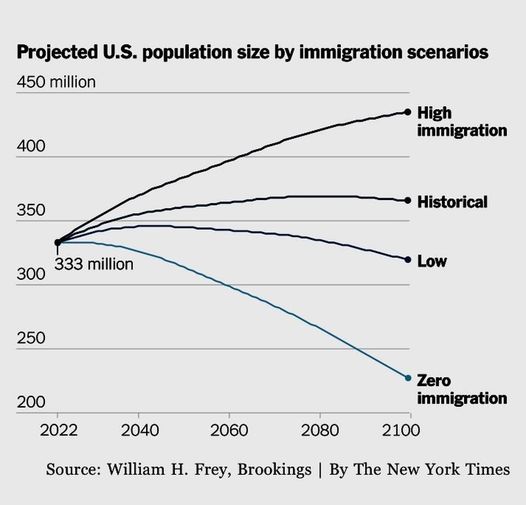
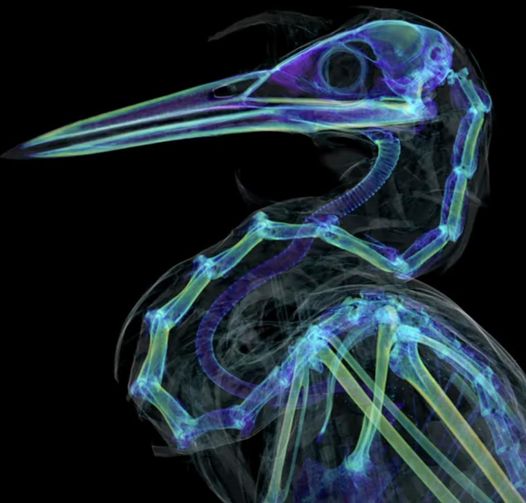
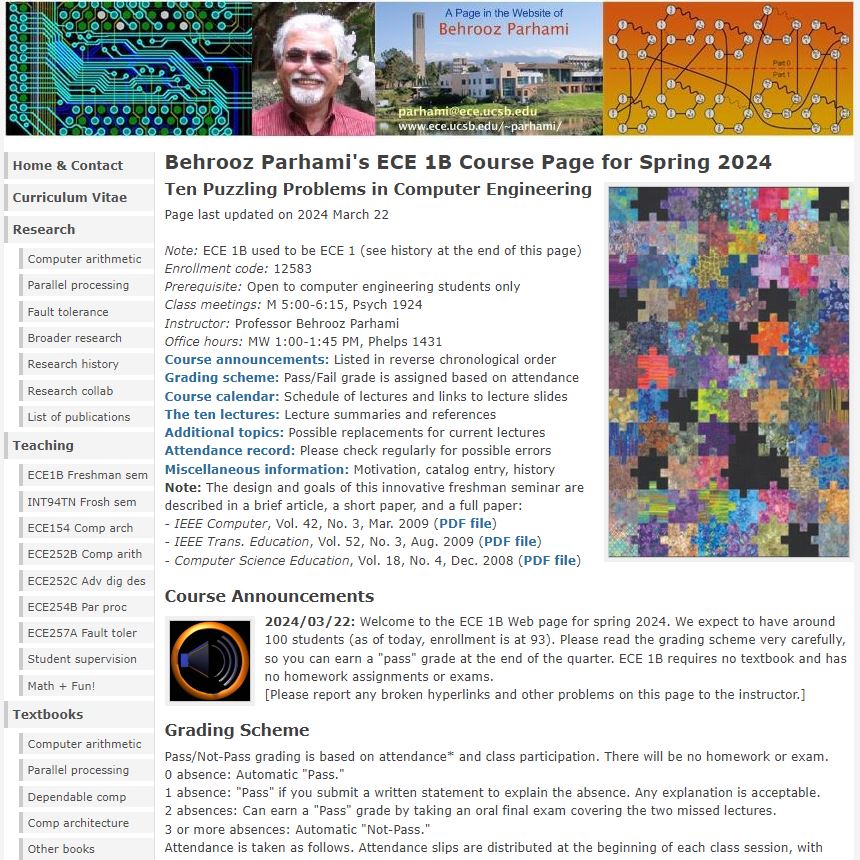
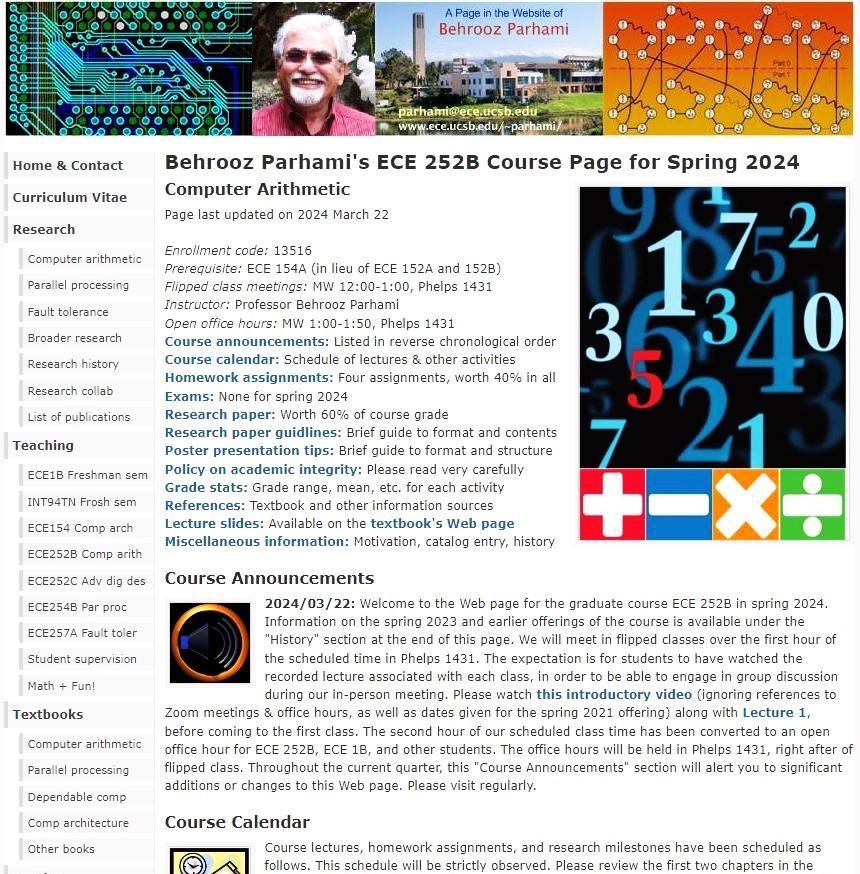
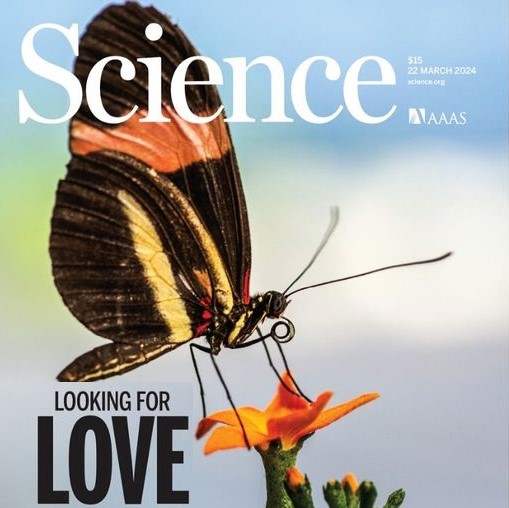
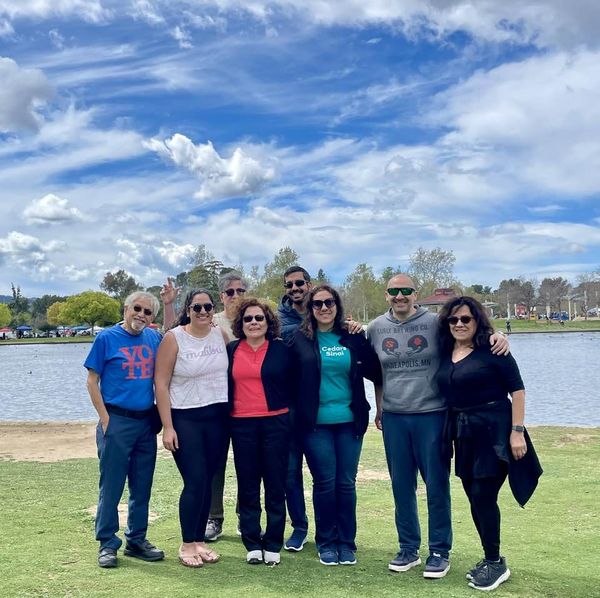

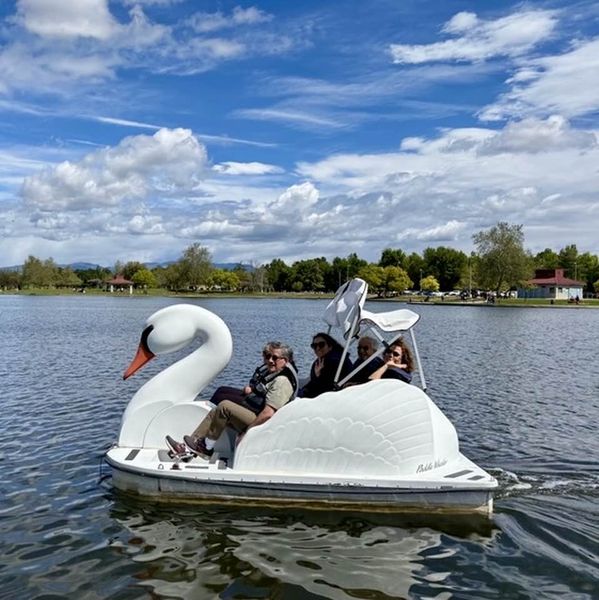 (1) Images of the day: [Top left] Iranian singer/songwriter Faramarz Aslani (1954-2024) dead at 69: He was a beloved musician, best-known for composing and performing "Ageh Yeh Rooz." RIP. [Top center] US population growth and thus GDP improvement over the rest of this century depends on immigration policies (NYT chart). [Top right] Digital dissection of museum animals: That's the goal of openVertebrate, a project involving 18 institutions that has spent the past five years creating 3D reconstructions of museum specimens, which are now available freely online (from Nature Journal, March 22, 2024). [Middle left & center] I have updated the Web pages for my spring 2024 courses, a 1-unit freshman seminar, ECE 1B, and a graduate course on computer arithmetic, ECE 252B. Recorded lectures for both courses are available through the Web pages for anyone interested to follow along. [Middle right] A genetic cause of male mate preference: A gene for mate preference has been shared between hybridizing butterfly species, according to the cover feature of Science magazine, issue of March 22, 2024. [Bottom row] Family outing at Balboa Park in Los Angeles on Sunday, preceded by a house-warming party for my niece on Saturday (photos), and followed by an enjoyable luch at Denj Restaurant (images) in Woodland Hills.
(1) Images of the day: [Top left] Iranian singer/songwriter Faramarz Aslani (1954-2024) dead at 69: He was a beloved musician, best-known for composing and performing "Ageh Yeh Rooz." RIP. [Top center] US population growth and thus GDP improvement over the rest of this century depends on immigration policies (NYT chart). [Top right] Digital dissection of museum animals: That's the goal of openVertebrate, a project involving 18 institutions that has spent the past five years creating 3D reconstructions of museum specimens, which are now available freely online (from Nature Journal, March 22, 2024). [Middle left & center] I have updated the Web pages for my spring 2024 courses, a 1-unit freshman seminar, ECE 1B, and a graduate course on computer arithmetic, ECE 252B. Recorded lectures for both courses are available through the Web pages for anyone interested to follow along. [Middle right] A genetic cause of male mate preference: A gene for mate preference has been shared between hybridizing butterfly species, according to the cover feature of Science magazine, issue of March 22, 2024. [Bottom row] Family outing at Balboa Park in Los Angeles on Sunday, preceded by a house-warming party for my niece on Saturday (photos), and followed by an enjoyable luch at Denj Restaurant (images) in Woodland Hills.
(2) One-liners: Brief news headlines, happenings, memes, and other items of general interest.
- ISIS responsible for attack on Moscow music hall: 60+ [update: 130+] dead, scores more injured.
- Apple sued by the US government for its iPhone monopoly, which hurts consumers and competitors.
- US-led UN Security Council resolution for ceasefire in Gaza is vetoed by China and Russia.
- Men's soccer: USA prevailed over Mexico 2-0 in the championship match of the CONCACAF Nations Cup.
- Intel to spend ~$20 billion to revamp chips manufacturing capabilities with support from the CHIPS Act.
- Breakdown of spending in America's $1.2 trillion infrastructure investment.
[Tweet, with chart]
- UCSB Interactive Learning Pavilion honored with "US Building of the Year" Award. [Tweet with photo]
- Is the entire observable universe inside a black hole? Black-hole cosmology advances this theory.
- How are extremely heavy weights and massive forces measured? This video tells you all about it.
- Tesla's most-profitable business isn't selling electric cars: It is installing energy-storage packs.
- Fishing skills on display. [3-minute video]
- Facebook memories from Mar. 22 of years past: An Amy Leach quote and a defense of video games.
2024/03/22 (Friday): Today, I present three book reviews on the progress and philosophy of science.
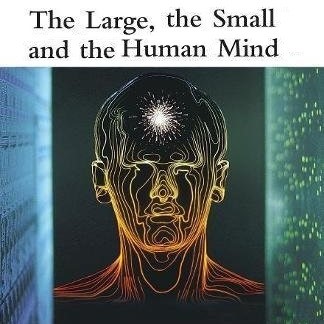

 (1) Book review: Penrose, Roger (with Abner Shimony, Nancy Cartwright, & Stephen Hawking; ed. by Malcolm Longair), The Large, the Small, and the Human Mind, Cambridge U. Press, Canto Edition, 2000.
(1) Book review: Penrose, Roger (with Abner Shimony, Nancy Cartwright, & Stephen Hawking; ed. by Malcolm Longair), The Large, the Small, and the Human Mind, Cambridge U. Press, Canto Edition, 2000.
[My 4-star review of this book on GoodReads]
Following a foreword by Malcolm Longair and a preface to the Canto Edition, The book unfolds in seven chapters and two appendices, with Chapters 1-3 written by Roger Penrose, Chapters 4-6 contributed by the three co-authors who criticize Penrose's ideas, and Chapter 7 containing a response by Penrose.
Chapter 1. Space-time and cosmology (the big)
Chapter 2. The mysteries of quantum physics (the small)
Chapter 3. Physics and the mind (the human mind)
Chapter 4. On mentality, quantum mechanics, and actualization of potentialities
Chapter 5. Why physics?
Chapter 6. The objections of an unashamed Reductionist
Chapter 7. Response by Roger Penrose
Appendix 1. Goodstein's theorem and mathematical thinking
Appendix 2. Experiments to test gravitationally induced state reductions
This is an enlightening book that can benefit anyone in search of the truth about science and its relationship with philosophy.
(2) Book review: Rovelli, Carlo, Reality Is Not What It Seems: The Journey to Quantum Gravity, unabridged 6-hour audiobook, read by Roy McMillan, Penguin Audio, 2017. [My 4-star review of this book on GoodReads]
In this volume, Carlo Rovelli, the author of million-selling Seven Brief Lessons on Physics, has produced an accessible book on quantum gravity, a leading-edge area of research in which he works. The book was published in Italy in 2014 and was translated later, so it is coming to English-language readers after his later book, Seven Brief Lessons on Physics.
Rovelli begins by reviewing what humans knew about science in ancient Rome, particularly through important musings of Democritus, whose works unfortunately did not survive owing to the Church's objection. Democritus postulated the existence of tiny building blocks, or atoms, rejecting the notion that matter is infinitely divisible. Other ideas were contributed by Plato and Aristotle, who perceived mathematics as a tool for understanding the universe.
Hundreds of years later, Ptolemy presented formulas to calculate the movements of planets and, thus, predicting their future positions. It then took 1000+ years for Galileo to bring experimentation to science, thus starting the modern scientific tradition. Copernicus revolutionized astronomy by showing that celestial calculations become more accurate if we consider the Sun as the center of our Solar System. Newton laid out the foundations of classical mechanics and formulated the law of universal gravity. Faraday and Maxwell contributed further revolutionary advances.
Then came Albert Einstein, who in his mid-20s published four groundbreaking papers on the photoelectric effect, Brownian motion, special theory of relativity, and the equivalence of mass & energy. Ten years later, he proposed a general theory of relativity, which incorporated gravitation. Einstein's contemporaries, Max Born, Werner Heisenberg, Wolfgang Pauli, Niels Bohr, and Erwin Schrodinger, developed quantum mechanics, thus creating a quest among physicists to devise a theory that unifies them, what is sometimes referred to as the theory of everything. Rovelli pays homage to string theory, but he belongs to a rival school known as loop quantum gravity, which predicts that space is not a continuum but is formed of "atoms of space."
Rovelli tries to bridge the divide between science and art, opining that, "Our culture is foolish to keep science and poetry separated." Lucretius's long philosophical poem "On the Nature of Things" celebrates the mysteries of the natural world, while foreseeing much of contemporary physics. Praising poetic approaches to science and dissing our lust for certainty, which is never offered by science, Rovelli takes a swipe at atheists like Richard Dawkins, labeling them just as prejudiced and intolerant as those they criticize. He opines that such people have no better idea of how the world really works than those they put down.
In her review of Reality Is Not What It Seems, Lisa Randall, Professor of Theoretical Particle Physics at Harvard University, faults Rovelli for occasionally trivializing or oversimplifying, worrying that the approach of turning equations into poetry is akin to feeding the readers enticing junk food, which "though tasty, isn't always as nourishing and sustaining as one might have hoped."
(3) Book review: Rouse Ball, W. W., A Short Account of the History of Mathematics, abridged 31-minute audiobook, read by Tony Shalhoub, Audible, 2020. [My 4-star review of this book on GoodReads]
This short audiobook belongs to the Audible Sleep Collection, audio programs "created to invite relaxation and sleep." It tells the story of how Ionian Greeks formalized the study of mathematics more than five centuries BCE based on the teachings of ancient Egyptians and Phoenicians, outstripping their former teachers. Much of ancient math was practically oriented, with little abstraction. The development of arithmetic and geometry are discussed, but astronomy is deemed to be outside the scope of this brief history.
2024/03/21 (Thursday): Presenting selected news, useful info, and oddities from around the Internet.


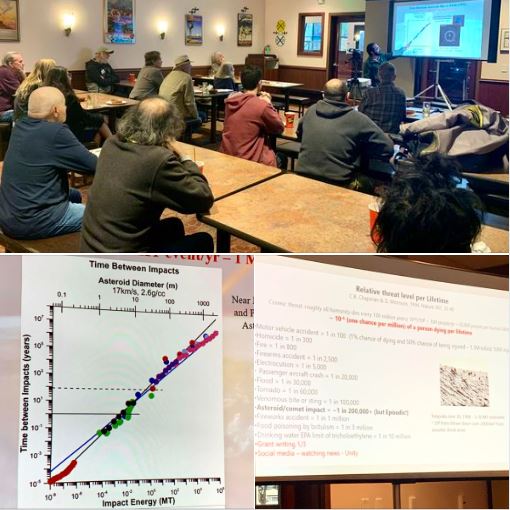 (1) Images of the day: [Left & Center] My mom would have been 95 today: Her favorite photo and a page from her diary. Happy birthday! And happy new year! [Right] IEEE CCS tech talk (see the last item below).
(1) Images of the day: [Left & Center] My mom would have been 95 today: Her favorite photo and a page from her diary. Happy birthday! And happy new year! [Right] IEEE CCS tech talk (see the last item below).
(2) European Union legislators approved the AI Act on March 13, 2024: It will be enacted into law in phases later this year. Non-EU countries including the UK cannot ignore it. As with GDPR rules, the Act includes proposed regulations that organizations will need to comply with, in order to do business with the EU.
(3) Netflix adapts Liu Cixin's beloved sci-fi trilogy 3 Body Problem: Hailed as an audacious feat of engineering, the series begins in the 1960s China during the turmoil of the Cultural Revolution. Having read one of Liu Cixin's books, I recommend the books and the Netflix series to all science buffs.
(4) Last night's IEEE Central Coast Section tech talk: Dr. Philip Lubin (UCSB Physics Dept.) spoke under the title "Planetary Defense Using Hypervelocity Penetrators."
Planetary defense refers to protecting Earth from near-Earth space objects, mostly asteroids but occasionally comets, which can create major loss of life, up to and including widespread extinction. Each year, we can expect impact from an asteroid several meters in diameter, harboring impact energy on the order of 0.01 megatons of TNT. Over a lifetime, asteroid size of 10s of meters and impact energy of 1 megaton can be expected. As the accompanying chart shows, once every million years, asteroid diameter on the order of 1000 meters and explosive energy of ~1000 gigatons might be expected. This energy is millions of times greater than the destructive power of the first atomic bomb dropped on Hiroshima.
So, even though cataclysmic events are rare, their severity warrants preparing appropriate defenses. Assuming an object on a collision course with Earth has been identified, defense startegies include deflection (usable when there is sufficiently advance warning) and pulverization (usable in both long- and short-warning situations). Dr. Lubin described his academia/NASA/national-labs/private-space team's work on the use of hypervelocity kinetic penetrators that pulverize or disassamble an asteroid or small comet. Studies have shown the method's effectiveness against asteroids in the 20-1000m diameter class. This was demonstrated during the talk by screening simulation videos. Once an asteroid has been broken up, the numerous tiny pieces created either miss the Earth or burn up in Earth's atmosphere.
2024/03/19 (Tuesday): Presenting selected news, useful info, and oddities from around the Internet.
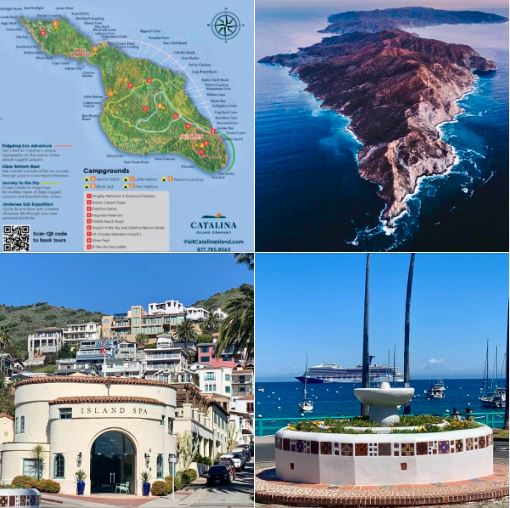



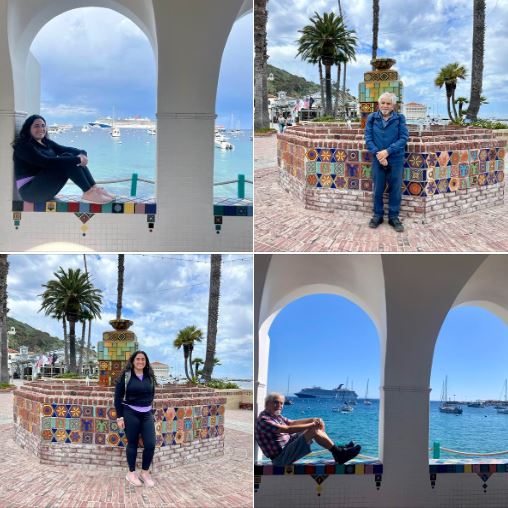
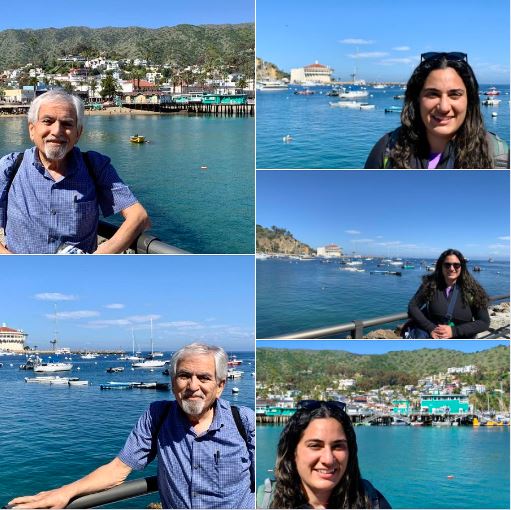 (1) Reflections on my two-day trip to Santa Catalina Island: Located off the California coast, southwest of Long Beach, the tourist destination Avalon, near the Island's southeastern tip, is easily accessible by a 70-minute ferry ride. Having lived in Southern California for 40 years, 4 years as a grad student at UCLA and 36 years as a professor at UCSB, visiting Catalina was on my bucket list, which is now checked off! For would-be visitors: If you live close to Long Beach, I recommend a day-trip to Catalina. If you aren't into shopping, activities are rather limited. There is a casino (which I didn't visit), swimming (for those who enjoy freezing water), kayaking (1-minute video), snorkeling, and a semi-submarine ride during which you get to see lots of fish & kelp.
(1) Reflections on my two-day trip to Santa Catalina Island: Located off the California coast, southwest of Long Beach, the tourist destination Avalon, near the Island's southeastern tip, is easily accessible by a 70-minute ferry ride. Having lived in Southern California for 40 years, 4 years as a grad student at UCLA and 36 years as a professor at UCSB, visiting Catalina was on my bucket list, which is now checked off! For would-be visitors: If you live close to Long Beach, I recommend a day-trip to Catalina. If you aren't into shopping, activities are rather limited. There is a casino (which I didn't visit), swimming (for those who enjoy freezing water), kayaking (1-minute video), snorkeling, and a semi-submarine ride during which you get to see lots of fish & kelp.
(2) The government-shutdown game: US lawmakers create the drama of a looming shutdown so that when an agreement is reached and there is no shutdown, the public feels like they have accomplished something!
(3) Leaders of some other countries during Vladimir Putin's extended reign in Russia. More will be added over the next six years! [List]
(4) One-liners: Brief news headlines, happenings, memes, and other items of general interest.
- Top-earning majors within 5 years of graduation: Computer eng. tops the list, with CS in third position.
- From "The Angry Grammarian": "The Comma with Too Many Names" & "Lie with Me and Lay Me."
- How a stupid dare after drinking alcohol paralyzed and later killed a young man. [Video]
- Math challenge: What is the limit as x tends to infinity of the xth root of x?
- Dawn Baillie makes museum-worthy movie posters that capture the film's essence in one frame.
(5) NSF hosts an educational livestream on YouTube during the April 8, 2024, total solar eclipse: During the program, scientists explore some of the high-tech facilities they use, including the NSF Daniel K. Inouye Solar Telescope, the largest solar telescope in the world.
(6) According to The Atlantic, the number of Stanford U. seniors in computer science has more than doubled to 18% over the last decade. In the same time period, the rate went up from 23% to 42% at MIT.
(7) The latest video message from the Iranian Nobel Laureate Narges Mohammadi: The brutality of Iran's Islamic regime isn't a sign of its strength but springs from extreme weakness.
(8) Science & math can make you rich in the market of stocks and options: Be aware, though, that the brilliant physicist & mathematician Isaac Newton was a lousy investor!
(9) This Persian verse is attributed to Mojgan Eftekhari, the mother of Mahsa Amini, the young women whose death while in the custody of Iran's morality police triggered the #WomanLifeFreedom Revolution
2024/03/18 (Monday): Presenting selected news, useful info, and oddities from around the Internet.

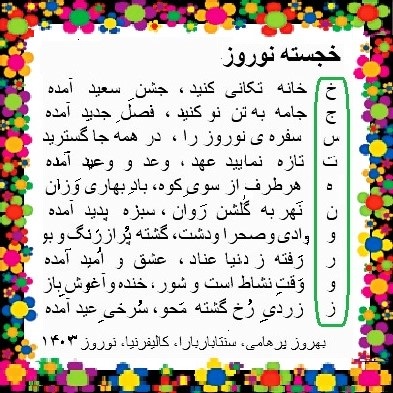
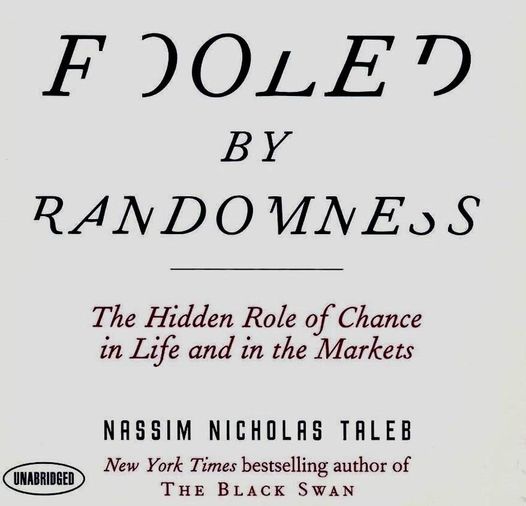 (1) Images of the day: [Left] Our outdoors haft-seen for Nowruz 1403: Awaiting the spring equinox (saal-tahveel) on Tuesday, March 19, 2024, 8:06:26 PM PT (Wednesday, March 20, 6:36:26 AM Tehran time). [Center] My latest Nowruz poem and its recitatin (see the next item below). [Right] Nassim Nicholas Taleb's Fooled by Randomness (see the last item below).
(1) Images of the day: [Left] Our outdoors haft-seen for Nowruz 1403: Awaiting the spring equinox (saal-tahveel) on Tuesday, March 19, 2024, 8:06:26 PM PT (Wednesday, March 20, 6:36:26 AM Tehran time). [Center] My latest Nowruz poem and its recitatin (see the next item below). [Right] Nassim Nicholas Taleb's Fooled by Randomness (see the last item below).
(2) My latest Nowruz poem: Every year since 2002, I have composed a cheerful Persian poem to welcome the bliss of Nowruz and the beauty of spring. Here is my poem for 2024 (Persian New Year 1403). Iranian people have suffered for many decades under the brutal Islamic regime, yet they remain as hopeful as ever that the spell will be broken one day soon, allowing them to discard the mullahs' imposed culture of mourning, sorrow, and martyrdom in favor of Iranian cultural elements of music, poetry, arts, and year-round joyous festivals.
A rough English translation follows:
Clean out your home for a momentous celebration
Wear the freshest clothes, a new season is upon us
Unroll the Nowruz spread in homes near and far
Renew your loyalties, hope and promise are here
The spring breeze is blowing from the mountainside
Streams are flowing, the fields have turned green
The hills and plains teem with fragrance and color
Enmity has disappeared, love and hope now rule
It is time for joy, passion, laughter, and open arms
Pale faces have turned red from the joy of Nowruz
P.S.: Many of my previous Nowruz poems are available on my personal poetry page.
(3) Book review: Taleb, Nassim Nicholas, Fooled by Randomness: The Hidden Role of Chance in Life and in the Markets, unabridged 10-hour audiobook, read by Joe Ochman, revised & expanded 2nd ed., Random House Audio, 2019. [My 4-star review of this book on GoodReads]
We tend to credit skill or talent for enormous success. While skill or talent can put you on the path to moderate success, much luck is needed for outsize wealth and lasting fame. The latter result from luck, a combination of a fortunate rare event and a lack of negative rare events. The path to fortune and fame is by and large a random walk.
Former options trader Nassim Nicholas Taleb examines the outsized role luck plays in success. While cited examples are mostly from what Taleb has experienced in the world of investing, he makes it clear that his principles are applicable to any field ruled by unpredictability. Economics and politics are prime alternate examples, with publishing and filmmaking not too far behind.
Taleb also addresses the problem of why people do not understand luck and how we can develop awareness of randomness and accommodate it in our lives. The ignorance of randomness has an asymmetric manifestation. Most people attribute their successes to talent and skill, whereas they view their failures as influenced by random events. In other words, I picked a highly profitable stock because I am good at recognizing value, but my stocks that tanked did so due to chance events beyond my control.
There are professions and fields where chance has little or no influence. Dentistry is Taleb's favorite example, where success is built on perseverance and skill, with a pinch of luck. While some dentists are wealthier than others, the difference is nowhere close to that of wealthy and barely-surviving stock traders.
A factor that leads to our being fooled by randomness is survivorship bias. We see examples of people who have thrived in a particular industry (a writer who land a movie contract or an investor who strikes it rich), and then inappropriately extrapolate to the expectation of wild success for anyone. We don't see, and thus forget about, the writer who didn't produce a best-seller or the investor who lost it all in an ill-advised trade. Looking at "invisible" alternatives allows us to better assess the influence of luck.
We are actually quite good at evaluating probabilities in situations with well-defined parameters, like playing Russian roulette for $50 million by shooting a gun loaded with one real bullet and five empty chambers at our head. but when chance events are beyond our logical assessment, because they are ill-defined or involve too many parameters, we do less well.
As they say in the field of investing, past performance is no guarantee for future gains. There are rare events that nobody has experienced and thus do not show up in the past record. A rare negative event in the stock market can wipe out the gains from years of moderate success. These rare events or "black swans," are, by definition, unpredictable because they don't follow any rules. Risk assessment is impossible for unpredictable events.
2024/03/16 (Saturday): Presenting selected news, useful info, and oddities from around the Internet.


 (1) Images of the day: [Left] A retired American diplomat is the first person to document 10,000 different bird sightings. His record-setting find: An orange-tufted spiderhunter. [Center] This evening's sunset walk to Coal Oil Point Beach in Goleta. [Right] Don't tread on my gun & heart-attack burger: RNC, under Trumpian management, unveils its new Statue of Liberty.
(1) Images of the day: [Left] A retired American diplomat is the first person to document 10,000 different bird sightings. His record-setting find: An orange-tufted spiderhunter. [Center] This evening's sunset walk to Coal Oil Point Beach in Goleta. [Right] Don't tread on my gun & heart-attack burger: RNC, under Trumpian management, unveils its new Statue of Liberty.
(2) Noteworthy elements of a metro-car video in Tehran: Widespread musical talent among Iranians, despite various prohibitions, passengers daring to cheer on & sing along, and dismissal of mandatory hijab laws.
(3) Over the past four decades, spring has arrived earlier and earlier in the Continental US: Up to four weeks earlier in much of the country and a bit later in small areas, mostly in the Midwest. [Tweet, with infographic]
(4) One-liners: Brief news headlines, happenings, memes, and other items of general interest.
- UN report implicates Iran's Supreme Leader Ali Khamenei in crimes against humanity.
- Iranian women continue to defy hardline clerics, despite heightened threats of fines and imprisonment.
- Misogynistic posts and comments are not okay, even against women supporters of Iran's Islamic regime.
- Math challenge: If for nonzero x, we have f(1/(1 + x)) + f((x + 1)/x) = x, what is f(1/2)?
(5) Quote of the day: "Nothing in life is to be feared; it is only to be understood. Now is the time to understand more, so that we may fear less." ~ Marie Curie
(6) We tend to think of the Worldwide Web as the most-important fruit of the age of digital connectivity: But Wikipedia, an invaluable free resource, may be just as important.
(7) Iran's former "moderate" FM Javad Zarif criticizes the "hardliners": I feel no sympathy for his being sidelined, because during his tenure as foreign minister, he defended Iran's horrible human rights record, dismissed people's legitimate demands, and generally deferred to the Supreme Leader on matters big & small.
(8) On police officers sexually assaulting children: The stories keep coming!
"Former Lewisville police officer sentenced for sexually assaulting a child"
"Ex-Chicago cop sentenced to 25 years in sex trafficking of young girls"
"Sex abuse victim of former LVMPD officer: 'I was turned into a human pet'"
It is sickening that some of our supposed protectors abuse their positions of power & public trust! There is a Persian saying: "We use salt to prevent food from becoming rotten. God help us when the salt goes rotten!"
(9) Viruses, bacteria, and prions: Nearly everyone is aware of the role of viruses and bacteria in human diseases. From a book I am reading (Michio Kaku's Quantum Supremacy), I learned about another important cause of diseases, that is, misfolded proteins or prions. Misfolded proteins cause damage to healthy proteins, thereby propagating the disease within the body. Research on protein folding and quantum computing, that can provide the computational power to advance this area of research, raises hopes of dealing with prion-caused dementia and other terminal neurodegenerative diseases.
2024/03/15 (Friday): Presenting selected news, useful info, and oddities from around the Internet.


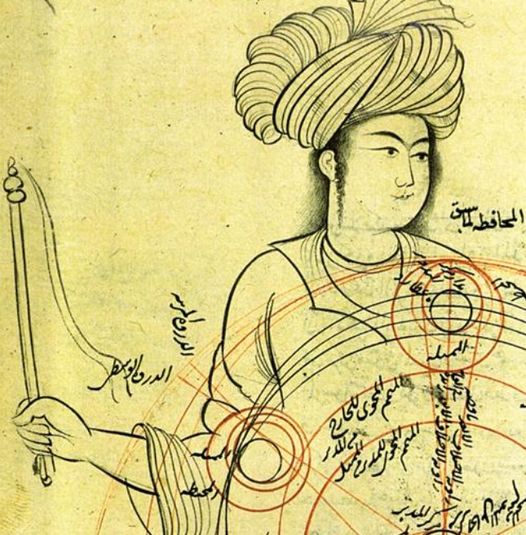 (1) Images of the day: [Left] AI visualizations (see the next item below). [Center] Last night's Talangor Group talk (see the last item below). [Right] Talk on Iranian polymath Qutb al-Din Shirazi (see item 3 below).
(1) Images of the day: [Left] AI visualizations (see the next item below). [Center] Last night's Talangor Group talk (see the last item below). [Right] Talk on Iranian polymath Qutb al-Din Shirazi (see item 3 below).
(2) AI-visualized technical rooms for each decade, from 1980 to 2050: Here are some of the images.
On my Facebook post of these images, a perceptive friend noted the total absence of women in all cases.
I responded thus: Excellent observation! This is why we worry about human biases (in this case, those of the designers of AI systems) finding their way into programs and algorithms. We have a long way to go to remove such biases from people and, indirectly, from the algorithms they develop.
(3) Today's Stanford University webinar: Dr. Kaveh Niazi (Stanford Online High School) talked under the title "Qutb al-Din Shirazi and His Observations on Ptolemy's Lunar Model."
Qutb al-Din Shirazi [1235-1311 CE], a renowned student of Khwaja Nasir al-Din Tusi, completed in 1282 CE his astronomical text Ikhtiyarat-i Muzaffari, a richly-detailed work composed in Persian, which covers much of the material appearing in his 1281 Arabic text Nihayat al-Idrak fi Dirayat al-Aflak. Intriguingly, the Persian book includes material that is missing from its companion. One such passage treats the concept of the prosneusis point as defined for the Ptolemaic lunar model in the Almagest. An examination of Shirazi's discussion of the prosneusis point offers a window to his approach to theoretical astronomy, while also highlighting his approach to the authoring of technical texts for astronomy students.
(4) Last night's Talangor Group Talk: Hooshyar Afsar(zadeh), journalist & social-justice activist, spoke under the title "Haji Firooz and Today's World." Before the main talk, Dr. Reza Toossi made a short presentation in celebration of pi Day. Among interesting observations offered by Dr. Toossi was the fact that perhaps 7/22 should be designated as pi Day, given that the approximation 22/7 is closer to the real value of pi than 3.14. Note that in some date notations, the day number is written before the month number (such as 22/7/2024). There were ~80 attendees.
Haji Firooz is a subject dear to my heart, so let me begin my report with a long introduction about my own views. I have written many times about Haji Firooz being a racist symbol, although most Iranians vehemently deny that they, or Iranians as a whole, harbor racist sentiments.
On March 20, 2014, I criticized a post about President Obama's Nowruz message by an Iranian-American, who referred to him in the post as Haji Firooz. On March 4, 2019, I repeated my plea to fellow-Iranians to abandon the racist tradition of Haji Firooz. On March 24, 2021, I posted a short essay entitled "Haji Firooz rears his ugly head again," in which I characterized the Haji Firooz tradition as racist and dismissed the various long-winded explanations that have been offered about why it is not racist.
Please bear in mind that for an act or statement to be deemed offensive, it's not necessary for the perpetrator to intend to offend someone. It is sufficient for the target or an observer to take offense. So, blackface is deemed offensive in America, regardless of whether the wearer of the face meant to ridicule/offend someone. Similarly, we teach men that an act they commit in good humor against a woman is deemed offensive if the woman takes it as a sexual transgression, whether or not it was meant as such. This is why I strongly recommend the removal or modification of the Haji Firooz tradition, to eliminate all of its offensive elements.
Last night, I became aware of academic research on the roots of the Haji Firooz tradition. Research has found no trace of the tradition in classical sources. Claims by defenders of the tradition, who go to great lengths to justify it in one form or another, usually have no valid reference citations. Complicating the issue is the fact that Iran's Islamic regime is against Haji Firooz and all other joyful traditions rooted in Iran's pre-Islamic history. This makes opposition groups more adamant in defending such traditions.
Afsarzadeh briefly reviewed the history of slavery in Iran, which included not just colored people from Africa but also white women from Armenia, Georgia, and elsewhere who were used as sexual slaves in harems of the rich and powerful. In 1929, slavery was officially banned in Iran by an act of parliament, a ban that was later enshrined in the Constitution. This would have been unnecessary were slavery not practiced in the country.
Afsarzadeh drew parallels between Haji Firooz and the American Jim Crow Laws (named after a black minstrel show routine), which were meant to marginalize African-Americans the same way the Black Codes did.
Rather than outline the rest of Afsarzadeh's presentation, I post the following link to his Persian-language article "Haji Firooz and Today's World" (the first item on this search page, which also leads you to some of Afsarzadeh's other works).
Among sources cited by Afsarzadeh are Behnaz A. Mirzai's 2017 U. Texas Press book A History or Slavery and Emancipation in Iran, 1800-1929 and Beeta Baghoolizadeh's upcoming 2024 Duke U. Press book The Color Black: Enslavement and Erasure in Iran.
2024/03/14 (Thursday): Presenting selected news, useful info, and oddities from around the Internet.
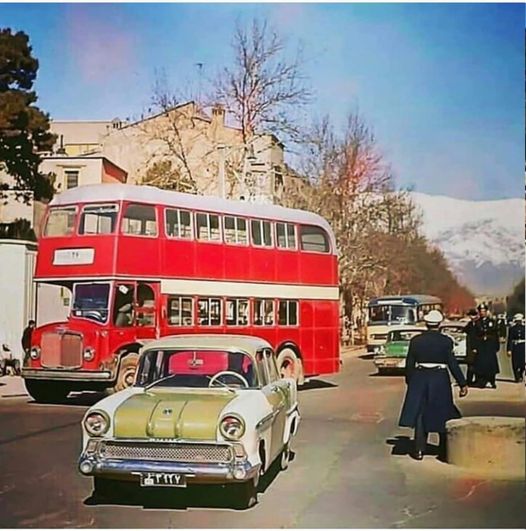

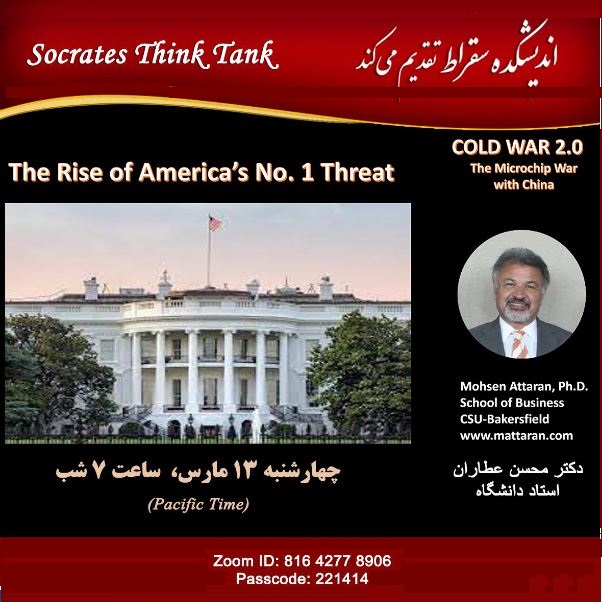 (1) Images of the day: [Left] Throwback Thursday: Tehran, Hafez Ave., ca. 1960. [Center] Happy pi day! March 14 is known as pi day, because 3/14 matches the first three of the infinite sequence of digits in pi = 3.141 592 653 589 793 ... [Right] Last night's Socrates Think Tank Talk (see the last item below).
(1) Images of the day: [Left] Throwback Thursday: Tehran, Hafez Ave., ca. 1960. [Center] Happy pi day! March 14 is known as pi day, because 3/14 matches the first three of the infinite sequence of digits in pi = 3.141 592 653 589 793 ... [Right] Last night's Socrates Think Tank Talk (see the last item below).
(2) Software engineering basics ignored: US Education Department officials have blamed various elements for the FAFSA (federal financial aid system) problems that delayed the college admission process and caused enormous anxiety for the applicants. They blame an attempt to implement many changes in the face of insufficient funding from Congress.
Yet, anyone with minimal expertise in software engineering knows not to introduce too many changes all at once, regardless of the available budget. In a production system with many thousands of users, changed components must be provided with back-ups in the event of unexpected problems. Did they actually perform substantial testing on the new system or were they spewing code up to the last minute?
In my graduate course on dependable computing, I present a long list of software project failures when one or more tenets of software engineering were ignored. Examples include an operating system that was to be built of all-new components and an airline ticketing system that incorporated hotel & rental-car reservations.
(3) Programming distributed systems: This was the title of an ACM webinar, which I watched as I walked to my 10:00 AM class yesterday. The talk by Mae Milano (Princeton University) and Ethan Cecchetti (University of Wisconsin) contained several interesting and useful ideas on efficiency, reliability, and consistency of distributed systems. Here is a 60-minute recording of the talk.
(4) Last night's Socrates Think Tank Talk: Dr. Mohsen Attaran (Cal State U. Bakersfield) spoke under the title "Cold War 2.0: The Microchip War with China." There were ~125 attendees.
The speaker's thesis was that Cold War 2.0 is unfolding between the US and China; Russia is no longer a major player on the world stage, as its GDP continues to decline and its major assets (oil & gas) are increasingly overshadowed by new technology. For example, Russia is forced to buy its microchips from China, settling for inferior quality.
Taiwan's prominent position in the microchips industry creates multiple problems. First, its position makes it a valuable target for China, who would acquire much of the technology if it were to occupy Taiwan. Second, the fall of Taiwan would disrupt US's access to microchips, an eventuality that may have motivated the US CHIPS Act, which allocated significant funds to rebuild the microchips manufacturing capability on US soil.
Besides microchips and electronics, Taiwan enjoys a strategic position on the Far-East shipping lanes, a fact that China dislikes. Another major player in the area is Vietnam, which is enjoying close ties with the US and other developed countries and stands to benefit significantly if tensions between the US and China escalate.
Generally, talks entailing political analyses do not produce answers on which everyone agrees. This is one reason I tend to skip political talks. I made an exception tonight, because the microchips and electronics industries are dear to my heart. Furthermore, I have both professional colleagues and former students who work in Taiwan, which makes me curious about the tiny island nation's future.
2024/03/13 (Wednesday): Presenting selected news, useful info, and oddities from around the Internet.

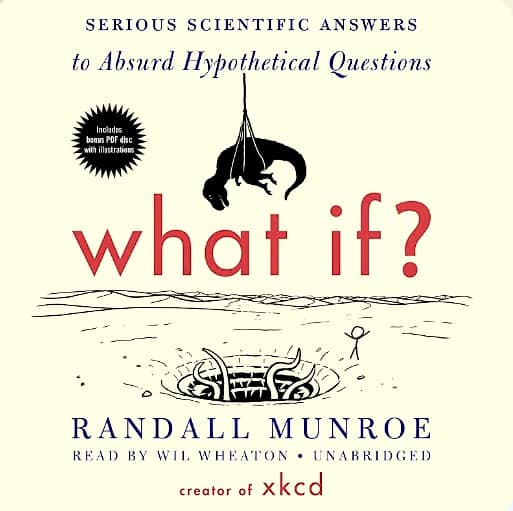

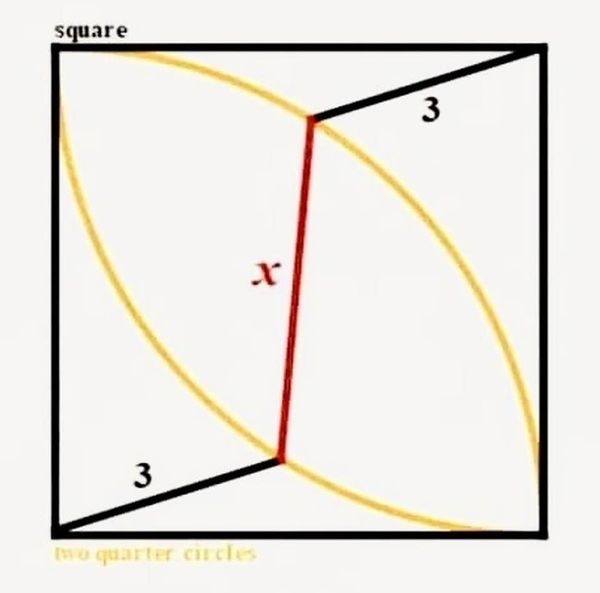
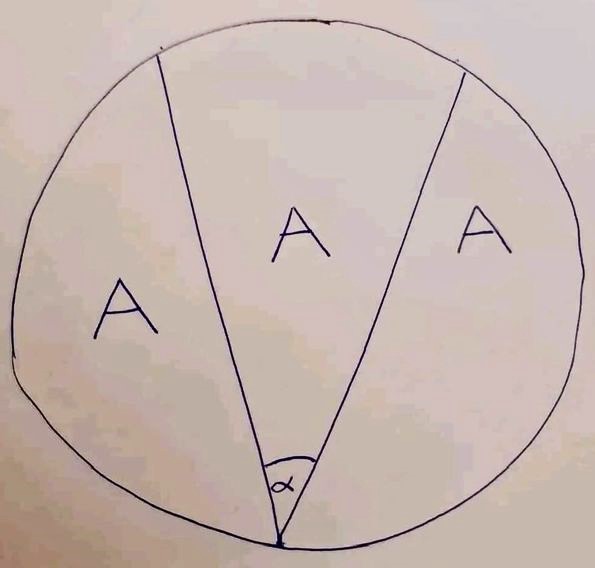
 (1) Images of the day: [Top left] The eve of the last Wednesday of the Persian calendar year (last night) is known as Chaharshanbeh Suri, with traditions of jumping over bonfires, a spread of fruits and nuts, and ghaashogh-zani (similar to trick-or-treating). [Top center] Randall Munroe's What If? (see the last item below). [Top right] Total solar eclipse of Monday, April 8, 2024, in the US: It appears that in Southern California, we will see a partial eclipse of around 40%. In Santa Barbara, the partial eclipse will begin at 10:06 AM, peaks at 11:11 AM, and ends at 12:19 PM. [Bottom left] Math puzzle: Compute the length x. [Bottom center] Math puzzle: Given that the three areas in the circle are equal, find the angle alpha. [Bottom right] In this diagram with two circles and six semicirlces, what is the ratio of the areas of the two circles?
(1) Images of the day: [Top left] The eve of the last Wednesday of the Persian calendar year (last night) is known as Chaharshanbeh Suri, with traditions of jumping over bonfires, a spread of fruits and nuts, and ghaashogh-zani (similar to trick-or-treating). [Top center] Randall Munroe's What If? (see the last item below). [Top right] Total solar eclipse of Monday, April 8, 2024, in the US: It appears that in Southern California, we will see a partial eclipse of around 40%. In Santa Barbara, the partial eclipse will begin at 10:06 AM, peaks at 11:11 AM, and ends at 12:19 PM. [Bottom left] Math puzzle: Compute the length x. [Bottom center] Math puzzle: Given that the three areas in the circle are equal, find the angle alpha. [Bottom right] In this diagram with two circles and six semicirlces, what is the ratio of the areas of the two circles?
(2) Tributes are pouring in for our departed colleage, Nobel Laureate in Physics Herb Kroemer: "In India, there is the concept of a guru, someone who is a teacher in the broadest sense, someone who teaches not only curriculum, facts, skills, and information, but creativity, morals, ethics, leadership, discipline, graciousness, and generosity. We have been fortunate to share time with Herb Kroemer, who embodies the broad ethos of the guru. He taught physics, materials science and electrical engineering at the highest level, but also behavior and life." ~ UCSB Dean of Engineering Umesh Mishra
(3) One-liners: Brief news headlines, happenings, memes, and other items of general interest.
- Mixed-political-party marriages are much rarer today than mixed-race marriages. [PBS report]
- Persian food: Sepand's ghormeh-sabzi stew, with my rice and potatoes tah-dig. [Photos]
- Biography of the guy behind Veritasium, the source of many enlightening science videos.
- Science videos are effective only if they address misconceptions head-on. [8-minute video]
(4) Book review: Munroe, Randall, What If? Serious Scientific Answers to Absurd Hypothetical Questions, unabridged 7-hour audiobook, read by Wil Wheaton, Blackstone Audio, 2014.
[My 4-star review of this book on GoodReads]
Randall Patrick Munroe is an American cartoonist, engineer, and author, best known as the creator of the webcomic xkcd. In this book, which consists of 57 short chapters, and its 2022 sequel, What If? 2, Munroe answers hypothetical science questions he receives from readers of his webcomic xkcd. The answers are scientifically rigorous, but also contain a good dose of humor.
Here is an example of such questions that appear absurd at first, but not absurd enough not to merit a genuine science-based answer. If you started rising steadily at 1 ft/s, how exactly will you die? Will you freeze or suffocate, or something else?
Here is another example question. Is launching the entire human race into space possible? Do we have enough energy on Earth to do it? This latter question piqued my interest. We need about 4 gigajoules (roughly a megawatt-hour) per person to escape Earth's gravity. The total energy needed is about 5% of global consumption per year; a large amount, but not impossible. However we need energy to carry the energy we need after leaving Earth. When all is added up, the required energy becomes impractical, though still not quite impossible.
2024/03/12 (Tuesday): Presenting selected news, useful info, and oddities from around the Internet.





 (1) Images of the day: [Top left] Math puzzle: What is the difference between the green and yellow areas? [Top center] Two math challenges: Extract the given root without using a calculator and find the area of the middle square in terms of the areas a and b of the other two squares. [Top right] Stephanie Land's Class (see the last item below). [Bottom row] The mathematical symmetry of architectural tiles and carpet designs.
(1) Images of the day: [Top left] Math puzzle: What is the difference between the green and yellow areas? [Top center] Two math challenges: Extract the given root without using a calculator and find the area of the middle square in terms of the areas a and b of the other two squares. [Top right] Stephanie Land's Class (see the last item below). [Bottom row] The mathematical symmetry of architectural tiles and carpet designs.
(2) Book review: Land, Stephanie, Class: A Memoir of Motherhood, Hunger, and Higher Education, unabridged 9-hour audiobook, read by the author, Simon & Schuster Audio, 2023.
[My 4-star review of this book on GoodReads]
This is the story of a single mother, going to school and cleaning houses, offices, and gyms for income, struggling to raise her daughter in the face of high child-care costs, while dealing with an unreliable and emotionally-abusive ex, who shuns his responsibilities, often sneaking off with very short notice.
This is the second memoir by Land, whose first one, Maid, told the story of a single mother who tried to stay away from an abusive boyfriend and out of homeless shelters by cleaning houses in the Pacific Northwest, while harboring the dream of one day returning to college to become a writer.
The main theme of Class is the difficulty of getting educated in America, while living below the poverty line. Here, we see the 35-year-old single mother moving with her daughter to Missoula, Montana, where she returns to college but still struggles to survive, despite getting tuition, childcare, food-bank, and other assistance. Her long-divorced parents provide no emotional or financial support.
Everything in her life is unstable and unreliable (her car, her house-cleaning gigs, childcare, her ex, housemates, friends, and lovers), giving her a sense of isolation and loneliness. She has amassed tens of thousands of dollars in student debt, which, realistically, she may never be able to repay. The day-to-day struggles to survive leaves no time or energy for long-term financial planning.
The book leaves Stephanie's status unresolved, ending with her returning home from the hospital with a newborn second daughter, perhaps as an opening for a third memoir, but we know from events outside the book that she became a celebrity writer, as she had dreamed, seeing her first memoir turn into a highly-successful Netflix series.
The fact that Stephanie dug herself out of poverty has no doubt something to do with her hard work, determination, and "resilience" (a term she resents), but given how many other hard-working and talented single mothers do not make it tells us that some level of luck was also involved.
If only the pandemic-era child tax-credit were extended to become a permanent benefit for struggling parents! As I write this review, the US Congress is considering a temporary extension, but the level and duration of the extension are unknown. Nevertheless, just discussing the need for child tax-credit is a good start and raises some hope for children's-rights activists and struggling parents, single moms in particular.
2024/03/11 (Monday): Presenting selected news, useful info, and oddities from around the Internet.
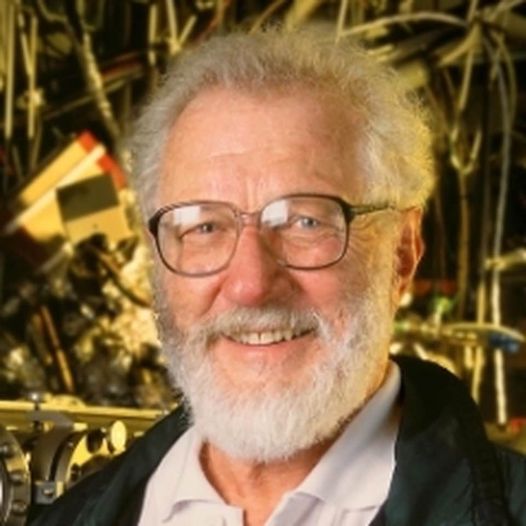


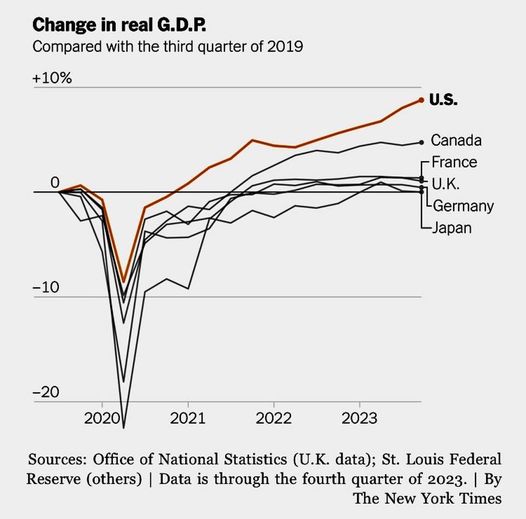
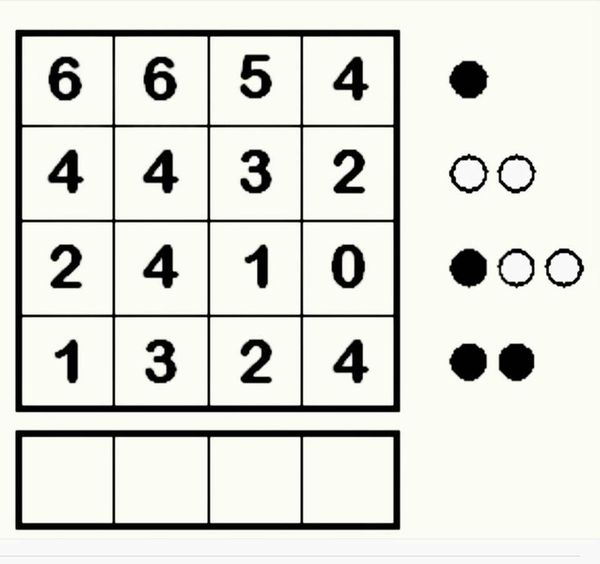
 (1) Images of the day: [Top left] Dr. Herbert (Herb) Kroemer (1928-2024), my ECE UCSB colleague, passes away at 95: He joined UCSB in 1976 and held the Donald W. Whittier Chair in Electrical Engineering. He was honored with the 2000 Nobel Prize in Physics. [Top center] Math puzzle: In this diagram with two circles, find the length AB. [Top right] Believe it or not: Eighty-percent of the continental US population lives in the east half of the country. Of the remaining 20%, a tad more than half (11%) lives fairly close to the Pacific coast. [Bottom left] The US economy is in a much better shape than those of other advanced countries (New York Times chart). [Bottom center] Math puzzle: I usually supply the puzzle statement and ask you to come up with a solution. In this case, you need to supply both the statement and the solution! [Bottom right] Trump's gift to his voters: Cumulative COVID death rates in US counties according to the level of support for Trump in 2020.
(1) Images of the day: [Top left] Dr. Herbert (Herb) Kroemer (1928-2024), my ECE UCSB colleague, passes away at 95: He joined UCSB in 1976 and held the Donald W. Whittier Chair in Electrical Engineering. He was honored with the 2000 Nobel Prize in Physics. [Top center] Math puzzle: In this diagram with two circles, find the length AB. [Top right] Believe it or not: Eighty-percent of the continental US population lives in the east half of the country. Of the remaining 20%, a tad more than half (11%) lives fairly close to the Pacific coast. [Bottom left] The US economy is in a much better shape than those of other advanced countries (New York Times chart). [Bottom center] Math puzzle: I usually supply the puzzle statement and ask you to come up with a solution. In this case, you need to supply both the statement and the solution! [Bottom right] Trump's gift to his voters: Cumulative COVID death rates in US counties according to the level of support for Trump in 2020.
(2) UCLA Bilingual Lecture Series: In yesterday's event, held over Zoom, four panelists reflected on "Various Aspects and Impacts of #WomanLifeFreedom Movement in Iran and Internationally." Dr. Nayereh Tohidi (sociologist; Cal State U. Northridge Emerita) introduced the panelists and moderated the discussion.
- Farzaneh Bazrpour (journalist) spoke on "Iranian Newspapers' Diversion from the Official State Cliches Because of Mahsa's Movement." Both the state-controlled media and the country's officials are devising new propaganda and oppression strategies in response to people's legitimate demands.
- Dr. Azadeh Momeni (political scientist; U. Toronto) spoke on "Intersection of Arts and Politics: From the American Women's Suffrage Movement to Arab Spring to Iranian #WomanLifeFreedom Movement."
- Dr. Homa Hoodfar (sociocultural anthropologist; Concordia U. Emerita) spoke on "#WomanLifeFreedom: A Political Watershed in the Iranian Protest Culture." She stressed the role of men's support, or lack thereof, in the success or failure of women's protest movements in Iran.
- Dr. Saeed Paivandi (sociologist; U. Lorraine, Nancy) presented "A Critical Analysis of the #WomanLifeFreedom Movement." This latest protest movement, which led to strong push-backs from security forces and government officials, also brought about political, personal/identity, and social changes.
(3) RIP, astrology: Most people already know that astrology is a scam. Nevertheless, a team led by MIT's Jackson Lu decided to bury this scam. They took a massive sample of 173,709 people and correlated their zodiac signs with their scores on the Big Five personality traits. There was zero correspondence.
(4) Major loss for India: Of the 1.5 million Indian students studying abroad, most will use their foreign degrees as stepping stones to lucrative careers outside India. [AP report]
(5) A final thought: Everyone laughed when a naked man appeared on the Oscars stage last night, pretending to be a streaker who changed his mind. Is it just me or are we treating male and female nudity differently?
2024/03/10 (Sunday): Presenting selected news, useful info, and oddities from around the Internet.





 (1) Images of the day: [Top left] Iranians of my generation have fond memories of this resilient French car wasn't much to look at, but it got the work done reliably and efficiently. [Top center] Cartoon based on the content of first-grade textbooks in Iran: Dad supplied bread. Mom supplied water. ???? supplied poison (referring to the poisoning of school girls in Iran). [Top right] Meme of the day: We need to save the Earth! [Bottom left] Voices of Women for Change honors four remarkable Iranian women (see the last item below). [Bottom center] A common kerosene-burning cooking implement at Iranian homes before gas and electric ranges arrived on the scene. [Bottom right] New Yorker cartoon of the day: "In my dream I'm in a large auditorium surrounded by people. They're all looking at me—and that's when I realize I'm completely naked."
(1) Images of the day: [Top left] Iranians of my generation have fond memories of this resilient French car wasn't much to look at, but it got the work done reliably and efficiently. [Top center] Cartoon based on the content of first-grade textbooks in Iran: Dad supplied bread. Mom supplied water. ???? supplied poison (referring to the poisoning of school girls in Iran). [Top right] Meme of the day: We need to save the Earth! [Bottom left] Voices of Women for Change honors four remarkable Iranian women (see the last item below). [Bottom center] A common kerosene-burning cooking implement at Iranian homes before gas and electric ranges arrived on the scene. [Bottom right] New Yorker cartoon of the day: "In my dream I'm in a large auditorium surrounded by people. They're all looking at me—and that's when I realize I'm completely naked."
(2) The Oscars: The movie "Oppenheimer" ended up winning 7 Academy Awards, including both male-actor honors, best original score, best director, and best motion picture. [List of nominees & winners]
(3) One-liners: Brief news headlines, happenings, memes, and other items of general interest.
- Republicans' goals for the US? Kicking and punching an effigy of Joe Biden. Classy! [Tweet, with video]
- Goleta, over the next 10 days: Springlike weather in the lead-up to Nowruz.
[Tweet, with image]
- Meme of the day: Ban liars & crooks, not history & books. [Tweet, with photo]
- Facebook memory from Mar. 10, 2018: Tehran University's graduation awards ceremony, 1968.
(4) "Girls on the Brink: Helping Our Daughters Thrive in an Era of Increased Anxiety, Depression, and Social Media": This was the title of Tuesday's Semel Institute book talk by Donna Jackson Nakazawa, who maintains that "our daughters, students, and the girl next door are more anxious and more prone to depression and self-harming than ever before." In 2019, 1 in 3 girls reported symptoms of major depression, vs. 1 in 10 boys. A typical young girl feels that her life is one endless performance, during which she is examined and judged. In her book, Nakazawa offers 15 simple strategies for raising emotionally healthy girls, based on cutting-edge science that explains the modern pressures that make it so difficult for adolescent girls to thrive.
(5) Voices of Women for Change belatedly celebrated International Women's Day on Saturday morning by featuring and honoring four remarkable Iranian women:
- Azar Fakhr (Actress): Champion of women's theater
- Dr. Nayereh Tohidi (Professor Emerita, Cal Statue U. Northridge): Champion of women's rights
- Azar Nafisi (Critically-acclaimed Iranian-American writer): Champion of women's literature
- Roshi Roozbehani (London-based Iranian illustrator): Champion of women's arts
The four honorees offered remarks of varying lengths, as they accepted the Dance of Freedom Figurine bearing a plaque with the award's citation, recited by Ms. Taraneh Roosta.
2024/03/08 (Friday): Presenting selected news, useful info, and oddities from around the Internet.


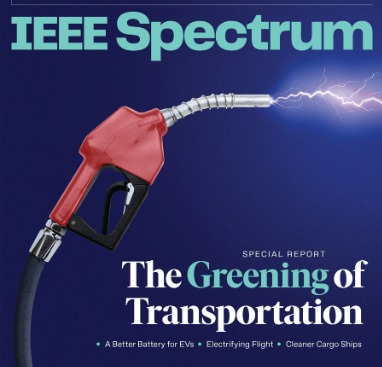 (1) Images of the day: [Left] Happy International Women's Day: This 113th edition of #WomensDay must be observed more vigorously than before, given forces in the East & West that are pushing to reverse much of the gains on gender equality and in view of women assuming an outsize role in social movements worldwide, particularly in Iran (#WomanLifeFreedom). [Center] IranWire cartoon of the day: International Women's Day in Iran. [Right] The greening of transportation: "We are in the early stages of a key transition: Electrification could be the first fundamental change in airplane propulsion systems since the advent of the jet engine."
(1) Images of the day: [Left] Happy International Women's Day: This 113th edition of #WomensDay must be observed more vigorously than before, given forces in the East & West that are pushing to reverse much of the gains on gender equality and in view of women assuming an outsize role in social movements worldwide, particularly in Iran (#WomanLifeFreedom). [Center] IranWire cartoon of the day: International Women's Day in Iran. [Right] The greening of transportation: "We are in the early stages of a key transition: Electrification could be the first fundamental change in airplane propulsion systems since the advent of the jet engine."
(2) Power to Iranian women & girls: A group of Iran's University of Isfahan students celebrated their graduation in this way and were reprimanded for it.
(3) Days after Iran's election period during which hijab enforcement was put on the back burner to encourage participation, new punishments for hijablessness, including direct withdrawal of the fine from a woman's bank account, are unveiled. [Video, narrated in Persian]
(4) One-liners: Brief news headlines, happenings, memes, and other items of general interest.
- Get ready for self-security-screening at US airports: TSA is giving the system a try at Las Vegas airport.
- America's aging grid infrastructure is ill-equipped to deal with the rising demand in electricity.
- UCSB's Multicultural Center suspended for allowing anti-Semitic posts and signage on its premises.
- A refreshing explanation of the speed of light and why it is finite.
- Am I a robot? I hope not, but I do fail many "I am not a robot" tests!
- "Eggplane": A most-efficient flying machine with a 5000-mile range. [5-minute video]
- Buddha: "Health is the greatest gift, contentment the greatest wealth, and faithfulness the best relationship."
(5) Viewing statistics as second-class math is misguided: An influential committee of the University of California Academic Senate has ruled that, starting in the fall of 2025, "high school students taking an introductory data science course or AP Statistics cannot substitute it for Algebra II for admission to the University of California and California State University." Data science advocates are worried that the recommendation "may disqualify data science and possibly statistics under the category of math courses meeting the criteria for admissions." Dozens of high school math teachers and administrators have signed a letter that reiterates support for data science and statistics courses.
(6) Several Islamist sympathizers have been elected in the UK: One winner, Scotsman George Galloway, who doesn't mind wearing designer clothes while leading his followers like an Islamic cleric, roared "From the river to the sea." Labour's candidate, Azhar Ali, told a party meeting that Israel had allowed the October 7 Hamas massacre to take place to give it the green light to invade Gaza.
2024/03/07 (Thursday): Presenting selected news, useful info, and oddities from around the Internet.




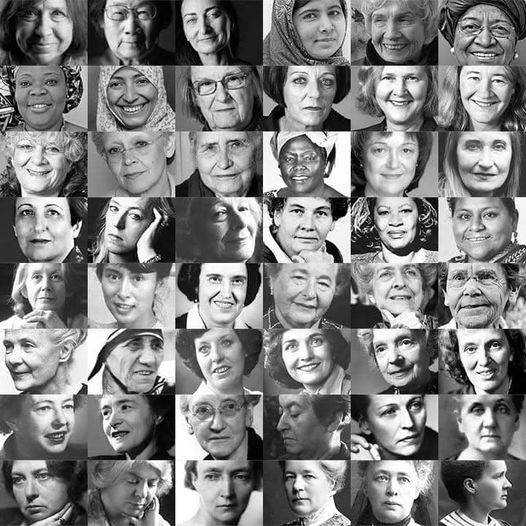
 (1) Images of the day: [Top left] Herb-rice and fish is a staple of Norooz family gatherings among Iranians, at home and in diaspora. [Top center & right] Dinner, a few nights ago: I did the easy part (rice with tah-dig); My younger son was in charge of the hard part (Persian zucchini stew). [Bottom left] While Iranian mullahs spend billions on their terrorist stooges abroad, the plight of flooded communities in the country's southeastern region goes unanswered. [Bottom center] Facebook memory from Mar. 7, 2017: Women who changed the world. [Bottom right] Eternal Melodies: Arash Fouladvand and his magnificent Bahar Choir celebrate 8 centuries of Mowlavi/Rumi in a highly-anticipated musical production: Paris, June 7; London, June 16, 2024.
(1) Images of the day: [Top left] Herb-rice and fish is a staple of Norooz family gatherings among Iranians, at home and in diaspora. [Top center & right] Dinner, a few nights ago: I did the easy part (rice with tah-dig); My younger son was in charge of the hard part (Persian zucchini stew). [Bottom left] While Iranian mullahs spend billions on their terrorist stooges abroad, the plight of flooded communities in the country's southeastern region goes unanswered. [Bottom center] Facebook memory from Mar. 7, 2017: Women who changed the world. [Bottom right] Eternal Melodies: Arash Fouladvand and his magnificent Bahar Choir celebrate 8 centuries of Mowlavi/Rumi in a highly-anticipated musical production: Paris, June 7; London, June 16, 2024.
(2) Shukoufan, an NGO for educating children in Iran, operates two schools in the poorest neighborhoods of South Tehran. Its volunteers provide nutrition to students and train local teachers for an enriched curriculum.
(3) Censoring the word "rape": Book-banning makes it harder to discuss sexual violence and nullifies some of the progress brought about by the #MeToo movement. [Book covers]
(4) One-liners: Brief news headlines, happenings, memes, and other items of general interest.
- Food warning: Six ground-cinnamon brands found to contain unacceptable amounts of lead.
- Mitch McConnell endorses Donald Trump, citing voter support: What happened to principles and convictions?
- Praying was Mike Pence's strategy for controlling the COVID-19 pandemic.
[Tweet, with photo]
- Buying the horseshoe before the horse: Google launches $5M prize to find real apps for quantum computing.
- A hair-raising escape from a life-threatening flood.
- Facebook memory from Mar. 7, 2011: My essay, on the eve of International Women's Day.
(5) War injuries lead to violence: Scientists found profound damage, of the kind suffered by veterans due to blast exposure, in the brain of the man who killed 18 people in Lewiston, Maine, in October.
(6) On the perils of digital-only publication scheme: I have voiced concern in the past over the fate of digital publications, particularly those appearing in open-access journals. Maintaining reliable, readily-accessible archives is expensive and open-access publishers, who have already collected their fees up-front, have little incentive for preserving the papers in perpetuity. A new study has found that more than a quarter of all publications with active DOIs cannot be found in reliable archives on the Internet.
(7) National Air & Space Museum's lectures on samples-return space missions: Wednesday's first talk in the series was entitled "To the Moon and Back", by Dr. Barbara Cohen (NASA Goddard). The lunar rocks brought home by Apollo astronauts reshaped our understanding of our Moon, the Earth, and the entire solar system. Gathering more of them is one of the most-important reasons to go back to the Moon. The Artemis program is enabling lunar sample return both by humans and robots. Dr. Cohen discussed key science derived from lunar samples and how we are planning for more.
2024/03/05 (Tuesday): Presenting selected news, useful info, and oddities from around the Internet.


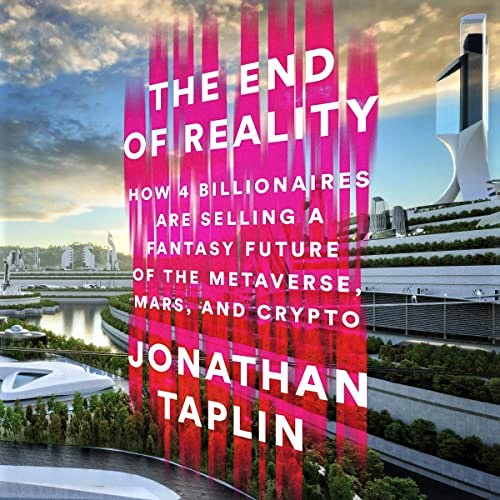


 (1) Images of the day: [Top left] A new book about Elon Musk by Santa-Barbara-based journalist Zoe Schiffer: Extremely Hardcore: Inside Elon Musk's Twitter. [Top center] The Roman Amphitheater of Catania in Sicily, 2nd century CE. [Top right] Jonathan Toplin's The End of Reality (see the last item below). [Bottom left] Satellite images show the devastation of Texas wildfires. [Bottom center & right] Nature photography along my 5 km Sunday walking path in Goleta.
(1) Images of the day: [Top left] A new book about Elon Musk by Santa-Barbara-based journalist Zoe Schiffer: Extremely Hardcore: Inside Elon Musk's Twitter. [Top center] The Roman Amphitheater of Catania in Sicily, 2nd century CE. [Top right] Jonathan Toplin's The End of Reality (see the last item below). [Bottom left] Satellite images show the devastation of Texas wildfires. [Bottom center & right] Nature photography along my 5 km Sunday walking path in Goleta.
(2) US Supreme Court rules that states cannot remove candidates from the ballot based on the 14th Amendment: As much as I want Trump barred from the 2024 election, I think the SCOTUS decision was the right one. Given the closeness of US presidential elections, I don't want the possibility of a handful of states banding together to exclude a candidate from their ballots, effectively ensuring his/her defeat.
(3) If you aren't self-employed, don't earn over $200,000, and don't itemize deductions, you may be able to use IRS's free tax-filing program for the 2023 tax year.
(4) One-liners: Brief news headlines, happenings, memes, and other items of general interest.
- Fascinating physics: The turntable paradox.
- France amends its constitution to include abortion as a fundamental right.
- Credit card late fees to be capped in the US: Banks are expected to fight the initiative.
- Tumbleweeds invade Utah, covering neighborhoods and blocking houses, much like a heavy snowfall.
(5) Toplin, Jonathan, The End of Reality: How Four Billionaires Are Selling Out Our Future, unabridged 11-hour audiobook, read by Jason Culp, PublicAffairs, 2023. [My 4-star review of this book on GoodReads]
American writer, film producer and scholar Jonathan Trumbull Taplin [1947-] graduated from Princeton University in 1969 and is the Director Emeritus of the Annenberg Innovation Lab at the University of Southern California Annenberg School for Communication and Journalism. His previous books include Move Fast and Break Things: How Facebook, Google, and Amazon Cornered Culture and Undermined Democracy (2017) and The Magic Years: Scenes from a Rock-and-Roll Life (2021). The End of Reality is a sequel to the former book.
In 1909, Italian poet Filippo Tommaso Marinetti published "Manifesto del Futurismo" ("The Manifesto of Futurism"), in which he expressed an artistic philosophy entailing a rejection of the past and a celebration of speed, machinery, violence, youth, and industry. The manifesto predates many 20th-century events commonly suggested as its potential meaning, but the political movements that led to Fascism were already in place in the early 1900s. These movements motivated the manifesto, which in turn influenced Mussolini and his ilk. Taplin likens the agendas of US tech titans to Marinetti's.
Taplin accuses Marc Andreesen, Elon Musk, Peter Thiel, and Mark Zuckerberg of exploiting the low quality of life among the poor in America by selling them fantasies. The promises of a more-fulfilling life in the metaverse and access to a more equitable economy based on cryptocurrency are indeed appealing. According to Taplin, crypto and social-media only preserve the status quo, that is, the free-market liberalism under which the rich have gotten much richer and the tech giants' wealth & power have grown. Dominance of the rich technocrats is further entrenched by the rampant distrust and political polarization amplified through the social-media they control.
I believe everyone should read Taplin's The End of Reality and take its warnings to heart.
2024/03/04 (Monday): Presenting selected news, useful info, and oddities from around the Internet.


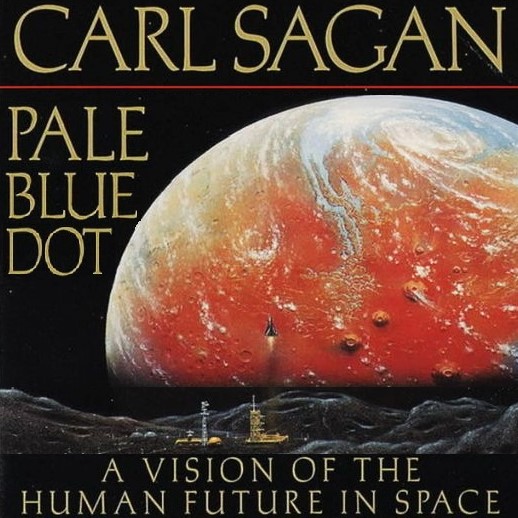


 (1) Images of the day: [Top left] The day Moon pretended to be Saturn (Francisco Sojuel). [Top center] Role reversals: Usually, in photographs, we see a large Earth and a much smaller Moon. China's Chang spacecraft shot this photo from the the Moon's far side. [Top right] Carl Sagan's Pale Blue Dot (see the last item below). [Bottom left & center] Pea soup by my younger son and tacos by yours truly. [Bottom right] In AARP magazine's cover feature (Feb./Mar. 2024), Robert De Niro talks about life, fatherhood, family, and the secrets to his legendary career.
(1) Images of the day: [Top left] The day Moon pretended to be Saturn (Francisco Sojuel). [Top center] Role reversals: Usually, in photographs, we see a large Earth and a much smaller Moon. China's Chang spacecraft shot this photo from the the Moon's far side. [Top right] Carl Sagan's Pale Blue Dot (see the last item below). [Bottom left & center] Pea soup by my younger son and tacos by yours truly. [Bottom right] In AARP magazine's cover feature (Feb./Mar. 2024), Robert De Niro talks about life, fatherhood, family, and the secrets to his legendary career.
(2) One-liners: Brief news headlines, happenings, memes, and other items of general interest.
- Why is it that we can see some parts of the universe that are moving away faster than the speed of light?
- Cool engineering: The workings of a household fan. [6-minute video]
- Carl Sagan demonstrates cosmic distances in our universe.
- Facebook memory from Mar. 4, 2015: "We rarely hear the inward music, but we're all dancing to it." ~ Rumi
(3) Book review: Sagan, Carl, Pale Blue Dot: A Vision of the Human Future in Space, Random House, 1994.
[My 5-star review of this book on GoodReads]
This sequel to astronomer Carl Sagan's highly successful Cosmos was inspired by the famous "Pale Blue Dot" photograph (video link), which shows our Earth on February 14, 1990, as a tiny dot from a distance of 6 billion kilometers, where Voyager 1 was exploring the furthest parts of our Solar System. Sagan uses a description of the photograph as a springboard to discuss our state of knowledge about the Solar System, the place of our species in the universe, and a human vision for the future in a mesmerizing and philosophical narrative.
Sagan begins with an account of how we were led astray for millennia by claims of our species being unique and the pride that produced the Earth-centered world view. Lack of knowledge and tools to falsify the geocentric model, along with significant threats to deniers of geocentricity during the Roman inquisition, delayed our realization that we aren't at the center of the universe.
Sagan then provides a review of the Solar System, beginning with the aims and findings of NASA's Voyager Program. As a participating scientist in the Program, he paints a detailed picture of the difficulties in exploring low-light distant planets, particularly when we consider mechanical and electronic malfunctions in deep space.
Sagan emphasizes the importance of studying other planets and our own Moon in order to gain the requisite knowledge to protect Earth, characterizing NASA's abandonment of its Moon missions as shortsighted. We risk major, and possibly total, loss if we don't track large extraterrestrial objects doggedly and with great precision.
It's exciting to realize that our generation finally realized the dream of breaking into space, probing the far reaches of our Solar System and learning much about the cosmos. Such discoveries led to additional humility and realization of our insignificant place in the universe. Our future as a species may well depend on our ability to colonize other planets and to learn even more about the history and current state of the universe.
According to Wikipedia, "In 2023, the audiobook of Pale Blue Dot, read by Sagan, was selected by the Library of Congress for preservation in the United States National Recording Registry as being 'culturally, historically, or aesthetically significant'."
2024/03/02 (Saturday): Presenting selected news, useful info, and oddities from around the Internet.




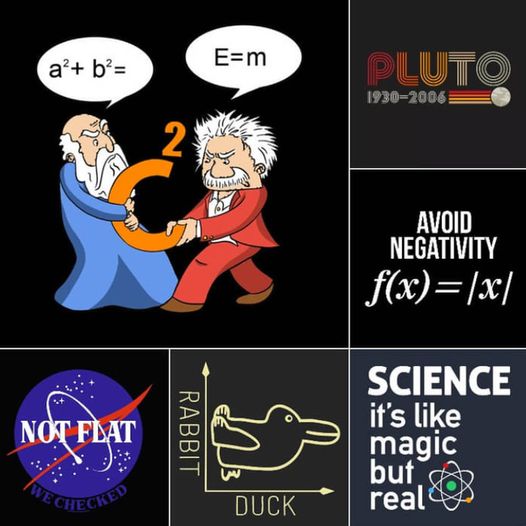
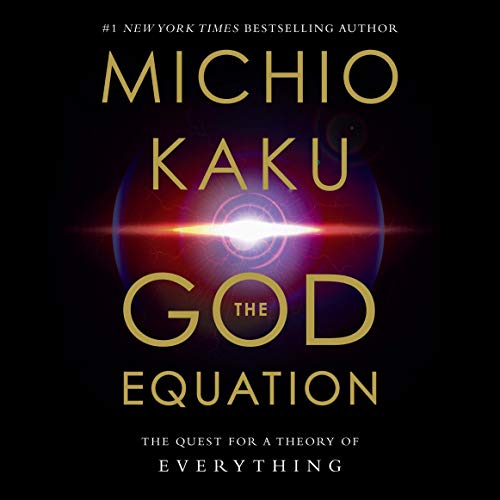 (1) Images of the day: [Top left] When there is a will, there is a way: Nature always finds a way around adversity. [Top center] Math oddity: The best-known packing of 11 unit-squares into the smallest possible square area. The packing is due to mathematician Walter Trump. [Top right] Yet another example of nature finding a way around adversity. [Bottom left & center] A few nerdy T-shirt messages: The first message refers to the upcoming total solar eclipse on April 8, 2024. I traveled to Oregon to see the one in 2017. [Bottom right] Michio Kaku's The God Equation (see the last item below).
(1) Images of the day: [Top left] When there is a will, there is a way: Nature always finds a way around adversity. [Top center] Math oddity: The best-known packing of 11 unit-squares into the smallest possible square area. The packing is due to mathematician Walter Trump. [Top right] Yet another example of nature finding a way around adversity. [Bottom left & center] A few nerdy T-shirt messages: The first message refers to the upcoming total solar eclipse on April 8, 2024. I traveled to Oregon to see the one in 2017. [Bottom right] Michio Kaku's The God Equation (see the last item below).
(2) Forces at work to turn the Taliban's Afghanistan into a global Caliphate under strict sharia law: Chicago-based charity Islamic Oasis is working with a German-British organization named the Qamar Charity Foundation to build both the ideological and welfare infrastructure for the Islamic Emirate of Afghanistan.
(3) Abusive behavior on Facebook: The following is a Messenger exchange I had over the past two days with a Facebook "friend" I don't know personally. [Image]
(4) Book review: Kaku, Michio, The God Equation: The Quest for a Theory of Everything, unabridged 6-hour audiobook, read by Feodor Chin, Random House Audio, 2021.
[My 4-star review of this book on GoodReads]
Much unification has taken place in the domain of natural laws (physics). When Newton formulated the laws of gravity, he unified all the celestial and earthly laws of motion before him. But physicists have a habit of not leaving well enough alone, and they keep on discovering new theories! The ultimate challenge now facing physicists is to unify relativity and quantum theory with previous results, in order to create a grand theory or a unifying equation that could unlock the remaining mysteries of nature, from what happened before the Big Bang to the possibility of time travel; what Kaku calls "The God Equation."
After a chapter entitled "Introduction to the Final Theory," Kaku structures his presentation in 7 chapters:
- Unification—The Ancient Dream
- Einstein's Quest for Unification
- Rise of the Quantum
- Theory of Almost Everything
- The Dark Universe
- Rise of String Theory: Promise and Problems
- Finding Meaning in the Universe
Kaku's own research field, that is, string theory, offers one of the possibilities for such a unified theory, but there are still wrinkles to be ironed out. Kaku offers the analogy of 2D beings having assembled two huge sections of the jigsaw puzzle representing a unified theory, but being unable to fit the two sections together, no matter how hard they try. Kaku suggests that the two assembled sections might fit together along a third dimension, which is invisible/incomprehensible to the 2D beings. Despite his expertise being in string theory, Kaku is open to criticisms of string theory and discusses them alongside the strengths.
It is fair to say that, when a unified theory does emerge in future, it will catch everyone by surprise, just as all previous major breakthroughs in physics came as surprises to experts and non-experts alike.
2024/03/01 (Friday): Presenting selected news, useful info, and oddities from around the Internet.

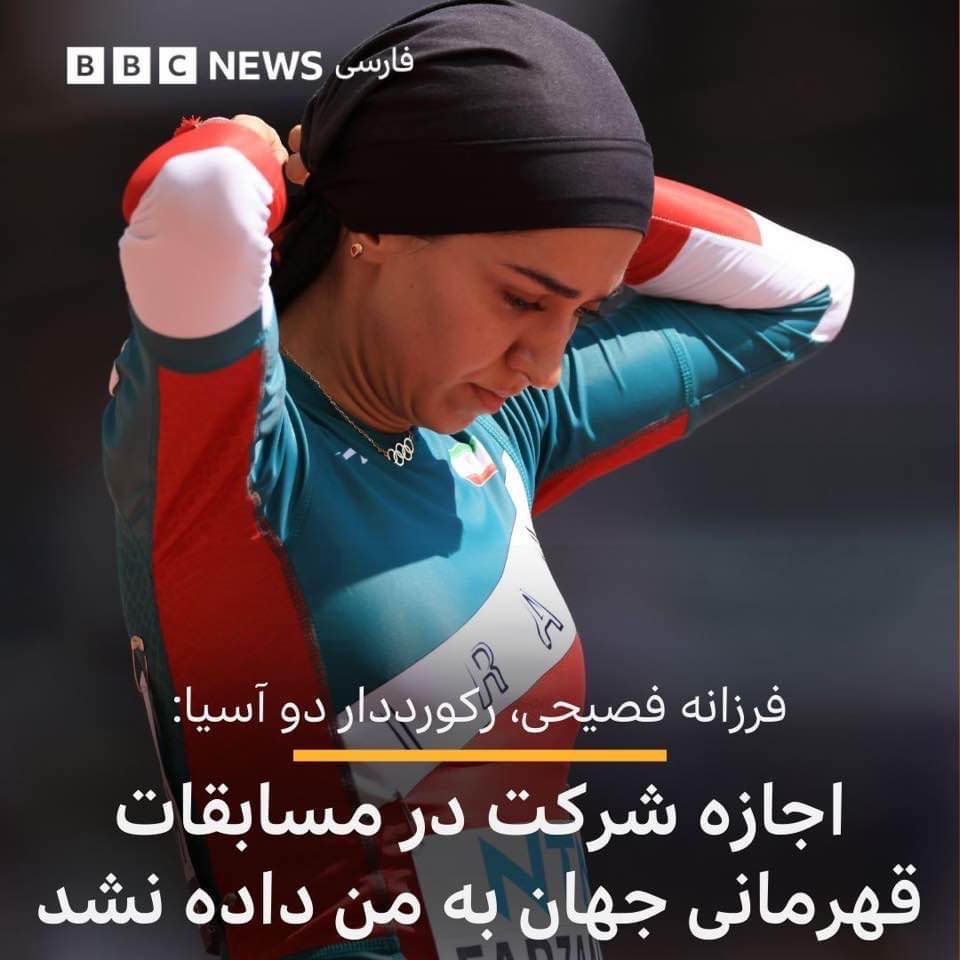
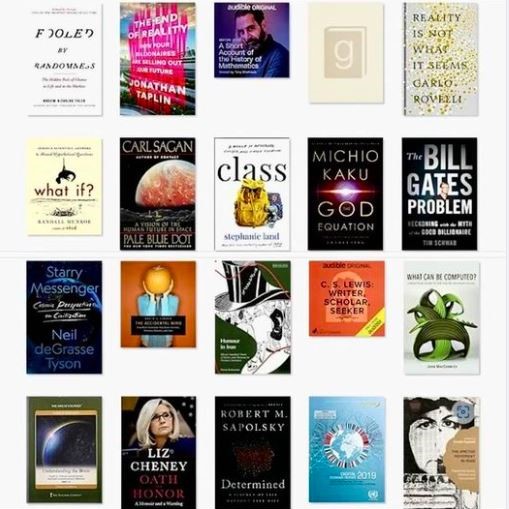


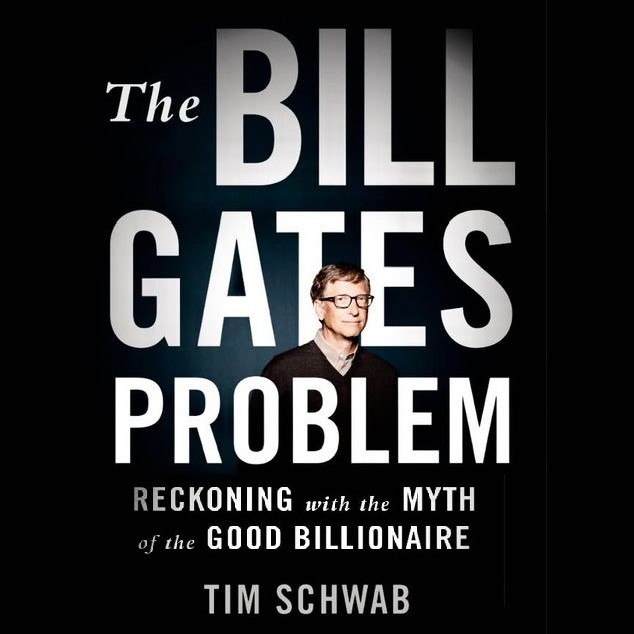 (1) Images of the day: [Top left] A salute to women at the beginning of Women's History Month: Next Friday (March 8, 2024), we will celebrate International Women's Day. [Top center] Iran's top female runner and Asian-record holder was not allowed to participate in world championships. [Top right] So far, I have read 20 books in 2024, which puts me four books ahead of the pace for my 100-books target. [Bottom left] Don't complain about the multi-year drought in your area: Antarctica's Dry Valley has not seen rain for about 2 million years! [Bottom center] Pre-paid meals at a restaurant allow cashless hungry people to choose a meal to eat: Splendid idea! [Bottom right] Tim Schwab's The Bill Gates Problem (see the last item below).
(1) Images of the day: [Top left] A salute to women at the beginning of Women's History Month: Next Friday (March 8, 2024), we will celebrate International Women's Day. [Top center] Iran's top female runner and Asian-record holder was not allowed to participate in world championships. [Top right] So far, I have read 20 books in 2024, which puts me four books ahead of the pace for my 100-books target. [Bottom left] Don't complain about the multi-year drought in your area: Antarctica's Dry Valley has not seen rain for about 2 million years! [Bottom center] Pre-paid meals at a restaurant allow cashless hungry people to choose a meal to eat: Splendid idea! [Bottom right] Tim Schwab's The Bill Gates Problem (see the last item below).
(2) US Department of Justice gets its first AI officer & sci/tech adviser: Princeton U. CS professor Jonathan Mayer (CS PhD & law doctor) will serve in the position.
(3) Book review: Schwab, Tim, The Bill Gates Problem: Reckoning with the Myth of the Good Billionaire, Penguin Business, 2023. [My 3-star review of this book on GoodReads]
This is the first book by Tim Schwab, an investigative journalist based in Washington, DC. Schwab tells us that Bill Gates runs his foundation, as he did Microsoft, with an iron fist, bestowing all the power, and shining the spotlight, on himself.
We read in the book's introduction that Gates bullied and mistreated Paul Allen, Microsoft's co-founder, giving him a much smaller share and eventually forcing him out in the mid-1980s. Allen later became a multi-billionaire, because he resisted the pressure to sell his Microsoft shares upon departure. Gates himself was driven out after the government's 1990s anti-trust case against Microsoft, during which he provided a disastrous defense that painted the company as an evil force.
Schwab has done a significant amount of research on Bill Gates and his foundation. Sandwiched between introductory and concluding chapters, are 15 numbered chapters with brief titles, dealing with various aspects of Gates' life and activities: Lives saved; Women; Taxes; Fail fast; Transparency; Lobbying; Family planning; Journalism; Education; White man's burden; Bloat; Science; Agriculture; India; Covid-19.
While Schwab makes a good case about Gates' personal flaws and bullying personality, I believe that people doing charitable work must be cut some slack. Gates has certainly followed in the footsteps of earlier billionaires, who amassed their fortunes through exploitation and then tried to cover their misdeeds by turning to charity. Gates' focus on leveraging technology to reduce suffering worldwide is commendable. Second-guessing a philanthropist on alternate priorities that could have produced better results is counter-productive, in my view.
Schwab maintains that the Gates Foundation is more a tool for exerting power and buying influence than a genuine charitable organization. It helped transform Gates overnight from a greedy billionaire to a world-saving philanthropist. Yet, I would argue that having a well-endowed charity that spends money on causes I don't personally endorse is better than having no charity at all. I'm sure that if someone scrutinized my own meager charitable contributions, a great deal of problems and inefficiencies would be discovered. Choice of where to give is highly personal, whether you donate $100 or $100 million.
Schwab admits that the world does need Bill Gates' money, but he isn't convinced that the world needs Bill Gates. In the end, Schwab proposes a reappraisal of philanthropy along the lines of what was done in the 1960s. The resulting regulations, now 50+ years old, are overdue for reassessment.
2024/02/29 (Thursday): Presenting selected news, useful info, and oddities from around the Internet.



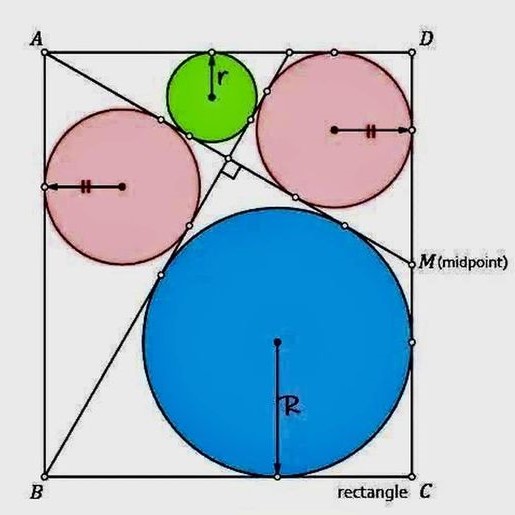
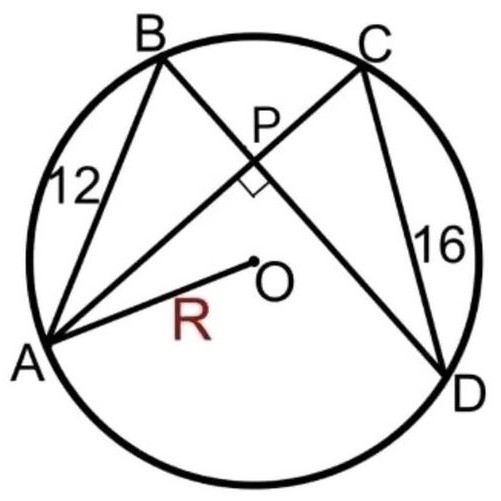
 (1) Images of the day: [Top left] Happy Leap Day! Enjoy this extra day in February, as we end the celebration of Black History Month and look forward to observing Women's History Month. [Top center & right] Fragrance and beauty of different kinds. [Bottom left] Math puzzle: in this diagram with one rectangle and four circles, prove that R = 3r. [Bottom center] Math puzzle: Find the radius R of the circle. [Bottom right] The US energy boom: Major energy sources (oil, natural gas, renewables) have doubled in the 24 years since January 2000.
(1) Images of the day: [Top left] Happy Leap Day! Enjoy this extra day in February, as we end the celebration of Black History Month and look forward to observing Women's History Month. [Top center & right] Fragrance and beauty of different kinds. [Bottom left] Math puzzle: in this diagram with one rectangle and four circles, prove that R = 3r. [Bottom center] Math puzzle: Find the radius R of the circle. [Bottom right] The US energy boom: Major energy sources (oil, natural gas, renewables) have doubled in the 24 years since January 2000.
(2) In an insightful CACM column, Moshe Vardi writes about how computing and economics influence each other. Productivity growth from computing and communications is a prime example of common interests.
(3) One-liners: Brief news headlines, happenings, memes, and other items of general interest.
- The Hindenburg and other giant airships that went extinct with the advent of modern aviation.
- Girls on the Brink: UCLA Semel Institute webinar, March 5, 2024, 5:00 PM PT. [Info]
- A tribute to Iran, the beautiful. [Instagram post, with music video]
- My attempt at making artsy tah-dig, which we had with store-bought gheimeh-bademjan Persian stew.
(4) For 18 years, the UCSB Reads Program has brought Santa Barbara communities together to read a common book that explores compelling interdisciplinary issues of our time. Gene Lucas, whose 36-year career at UCSB spanned various roles, most notably as Executive Vice Chancellor and Acting University Librarian, is credited with starting this program, whose latest selection is Your Brain on Art. [Image]
(5) Tonight's Talangor Group meeting: Dr. Arash Taqavi spoke under the title "The Empty-Nest Syndrome." Before the main talk, Mitra Zaimi screened a video in remembrance of prolific Iranian poet/author Hamid Mosadegh [1940-1998], who was a lawyer by training. There were ~95 attendees. [Event flyer]
According to Wikipedia, "Empty-nest syndrome is a feeling of grief and loneliness parents may feel when their children move out of the family home, such as to live on their own or to have a higher education." While not a clinical condition, empty-nest syndrome can lead to depression and a loss of purpose, especially for stay-at-home or full-time parents or those who are also dealing with other stressful life events. Keeping in contact with the children who have moved out is one of the most-effective coping mechanisms.
In the US, some parents are dealing with the opposite phenomenon (let's call it "the full-nest syndrome"), because adult members of the "Boomerang Generation" return to live with their parents, primarily due to joblessness or other economic hardships. About one-third of 18-34-year-olds live at home with their parents.
2024/02/28 (Wednesday): Presenting selected news, useful info, and oddities from around the Internet.
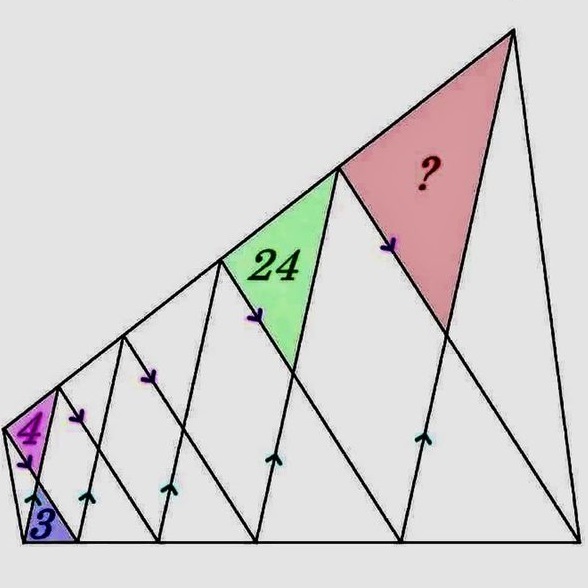

 (1) Images of the day: [Top left] Math puzzle: Given the areas of three trignales, find the area of the pink one. [Top center] Tah-dig art: The bottom-of-the-pot crispy rice, sometimes with potato or bread slices added, is a staple of Iranian cusine. This version uses parsley to create an artsy tah-dig. Please note that this isn't my creation. [Top right] Math puzzle: What fraction of the rectangle's area is shaded?
(1) Images of the day: [Top left] Math puzzle: Given the areas of three trignales, find the area of the pink one. [Top center] Tah-dig art: The bottom-of-the-pot crispy rice, sometimes with potato or bread slices added, is a staple of Iranian cusine. This version uses parsley to create an artsy tah-dig. Please note that this isn't my creation. [Top right] Math puzzle: What fraction of the rectangle's area is shaded?
(2) The Odysseus lunar lander is on its side & will likely run out of energy soon: Possibly tangled up while landing, it is still sending images & data to Earth.
(3) Iranian economist Dr. Masoud Nili: Iran is dying. Mismanagement has turned our country, which is rich in natural and human resources, into a land of poverty and misfortune. [Tweet, with video]
(4) One-liners: Brief news headlines, happenings, memes, and other items of general interest.
- Market valuation of Intel vs. NVIDIA over time. [Video]
- Journalist/activist Masih Alinejad's interview with DW Persian.
- For she has sinned: A young woman's father & brothers kick her and beat her, as she screams in pain.
- Pooran's cover of the jazzy Persian song "Shab Bood." [3-minute video]
- Pallette, a unique Iranian band, in concert in Los Angeles, Sat. April 27, 2024. [Flyer]
- UCSB Chancellor's message to the campus community regarding recent anti-Semitism incidents.
(5) Words vs. stones: According to Freud, civilization began when humans started hurling words at each other instead of stones. There is more variety in words than there is in stones. You can pick a word that inflicts just the right amount of pain. One can evade stones or deflect them with a shield, but not so for words.
(6) This is how foreign-language films are dubbed into Persian: This old example happens to involve only male voices, but women have been at the forefront of the dubbing industry in Iran.
(7) Caltech's Watson Lecture Series: "Einstein's General Relativity, From 1905 to 2005," by Kip Thorne (Richard P. Feynman Professor of Theoretical Physics). [74-minute video]
(8) Final thought for the day: Why is former Iranian President Mahmoud Ahmadinejad allowed to run his mouth, while many other high-ranking officials have been silenced? I believe that he may not have been bluffing when he claimed that he has documents showing corruption at the top of Iran's religious and political hierarchy. The documents are supposedly kept in a safe place and will be released if something happens to Ahmadinejad.
2024/02/26 (Monday): Presenting selected news, useful info, and oddities from around the Internet.
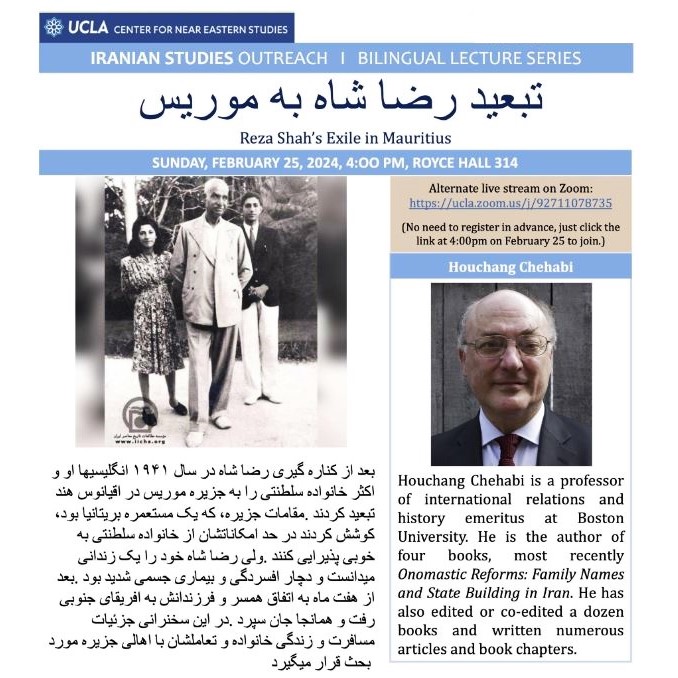
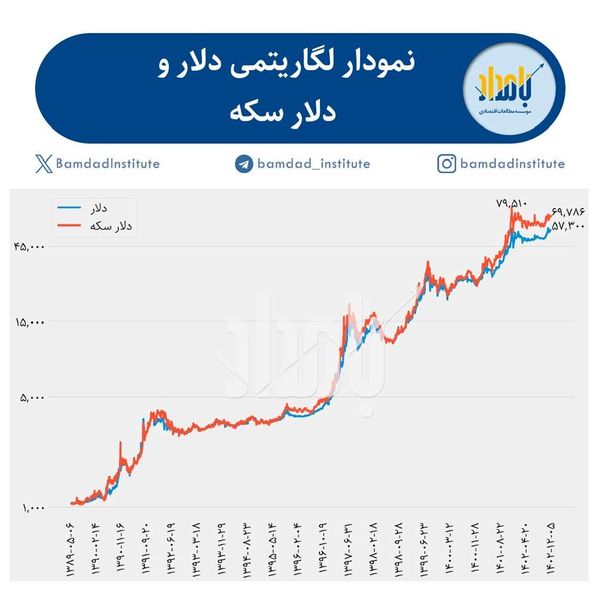
 (1) Images of the day: [Left] Talk on Reza Shah in exile (see the next item below). [Center] The rise of US dollar and dollar coin against Iranian toman: The nearly straight-line rise indicates exponential growth of dollar's value and exponential decline of Iran's currency, given that the vertical axis is scaled logarithmically. [Right] Talk on Nezami's Khosrow and Shirin (see the last item below).
(1) Images of the day: [Left] Talk on Reza Shah in exile (see the next item below). [Center] The rise of US dollar and dollar coin against Iranian toman: The nearly straight-line rise indicates exponential growth of dollar's value and exponential decline of Iran's currency, given that the vertical axis is scaled logarithmically. [Right] Talk on Nezami's Khosrow and Shirin (see the last item below).
(2) Sunday's event in the UCLA Bilingual Lecture Series on Iran: "Reza Shah's Exile in Mauritius" by Houchang Chehabi (Boston University).
[Note: I was unable to attend this event, so this brief report is to inform my readers about the event, whose recording will become available through UCLA Center for Near Eastern Studies.]
Upon Reza Shah's forced abdication in 1941, the British sent him to Mauritius Island, one of their colonies. Even though the authorities of the island tried to make Reza Shah feel comfortable and at home, he considered himself a prisoner and developed numerous physical and mental problems. He left the island with his wife and children after 7 months and went to South Africa, where he remained until his death in 1944. This talk reviewed the details of Reza Shah's years in exile and the interactions of his family with residents of the island.
(3) One-liners: Brief news headlines, happenings, memes, and other items of general interest.
- Donation of $1 billion by a former professor to provide free tuition at a Bronx medical school.
- The wonderful world of Tesla coils, including using them to play music. [11-minute video]
- Simple blueberry-harvesting device. [Tweet, with video]
- Facebook memory from Feb. 26, 2016: Calligraphic rendering of a Persian verse by Hafez.
(4) Today's Georgetown U. event on Iran: Dick Davis (Iranologist, Poet, University Professor, and Translator) spoke under the title "Nezami's Khosrow and Shirin."
Before Romeo and Juliet, there was Khosrow and Shirin by Nezami Ganjavi. Dick Davis introduced Nezami's 12th-century masterpiece of Persian poetry and read from his new translation of the work (Mage Publishers, 2023, 520 pp.).
Khosrow and Shirin is a nuanced story. Yes, it follows the usual plots of love stories, with their twists and turns, but it also has elements you don't find in other love stories. For example, Shirin transforms Khosrow by educating him. At one point, overcome with passion, Khosrow tries to rape Shirin, but she stops him and takes the opportunity to teach him about gentlemanly behavior.
Nezami has a special place among the great Persian poets in that his interests revolved arount poetry (art, more generally) as an end in itself, which is different from Sa'adi's use of poetry to dispense advice on how to live or Hafez's goal of celebrating erotic love or mysticism.
2024/02/24 (Saturday): Presenting selected news, useful info, and oddities from around the Internet.

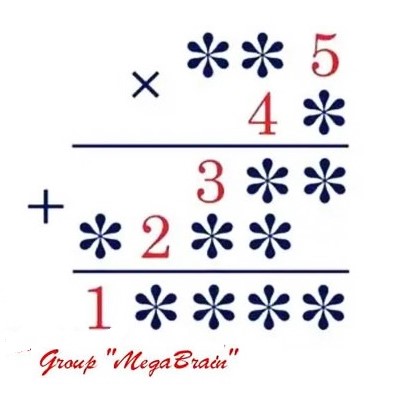
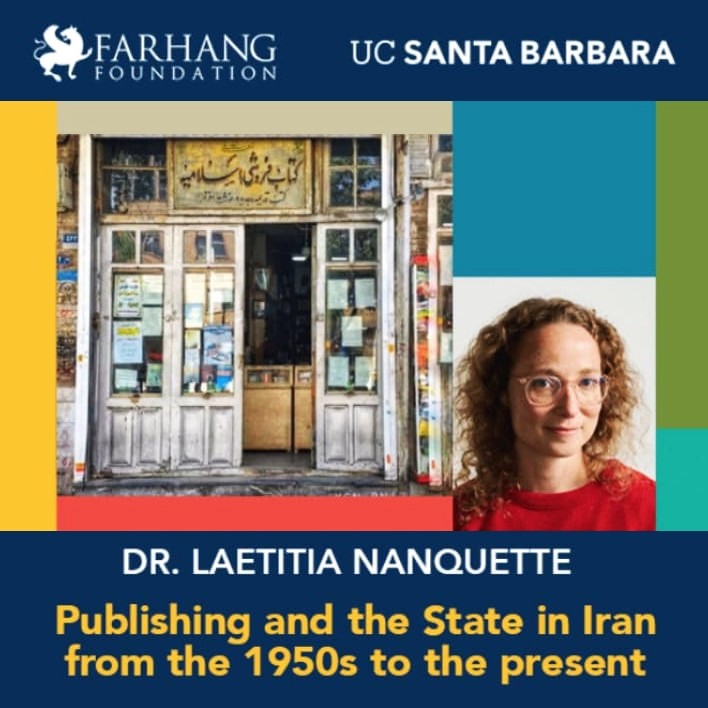 (1) Images of the day: [Left] Seasons of life: Youth, middle age, old age. [Center] Math puzzle: Fill in the missing digits in this multiplication. [Right] Talk on publishing and the state in Iran (see the last item below).
(1) Images of the day: [Left] Seasons of life: Youth, middle age, old age. [Center] Math puzzle: Fill in the missing digits in this multiplication. [Right] Talk on publishing and the state in Iran (see the last item below).
(2) IEEE Central Coast Section tech talk of Wed. 2024/02/21: Dr. Rich Wolski (UCSB, CS) spoke on "Building the Computational Infrastructure of Reality: Experiences with the Internet of Things." [Read more]
(3) From PBS News Hour: Teenage girl "influencers" post innocent photos of themselves on accounts managed by mom or dad. Followers are predominantly weird men who make inappropriate or explicit comments.
(4) One-liners: Brief news headlines, happenings, memes, and other items of general interest.
- The majestic Sydney Opera House: History and design details, including a 3D virtual tour.
- A typical day in the life of Miami, Florida, featuring heavy cruise-ship traffic. [Time-lapse video]
- Visual comparison of tiger populations in different countries. [Animated presentation]
- According to Nobel Laureate Roger Penrose, string theory is wrong and dark matter does not exist.
(5) Today's event in the UCSB/Farhang-Foundation Lecture Series: "Publishing and the State in Iran: From the 1950s to the Present" by Dr. Laetitia Nanquette (U. New South Wales, Australia).
The medium of print is a powerful tool that has links throughout all echelons of society. Hence, the Iranian state, despite the various forms it has taken over this long period, has consistently shown a keen interest in utilizing and influencing the publishing sector. The state predominantly communicates its ideology and contributes to shaping its identity through the medium of print.
Both during the Pahlavi era and after the Islamic Revolution, government impeded the free flow of ideas in print media, but on occasion also helped by holding book exhibits, offering award programs. And subsidizing paper, which is expensive and under a government monopoly.
One of the bright spots in the Pahlavi era was the Franklin Book Program, managed by Homayoun Sanatizadeh. Franklin was a Cold War instrument to compete with communism and Soviet Union's cultural influence. It wasn't however a right-wing operation, as it was run by Iranians with center and left political leanings.
In addition to the official censorship program (that required books to obtain publication certificates before any publisher dared to touch them), various forms of self-censorship by the writer, editor, and publisher have been in place. Beginning in 1977, a law required book-sellers to keep a record of their customers.
Five categories of books have been frowned upon by the Iranian state: Communist, Christian, Foreign-language, anti-Islamic, and sexually-explicit. For a few short years after the Revolution, books were more or less free, but newspapers were tightly controlled. During 1979-1983, Enghelab Avenue was a vibrant center for book-sellers and publishers.
Article 24 of Iran's post-Revolution Constitution is explicit in banning any publication that is harmful to the principles of Islam. Just as film directors and producers have learned to convey their messages in a way that gets around the censors, so too authors and publishers strive to present ideas in a manner that does not rile the censors. Control over Web sites is less strict than print media.
This scholarly talk included many reference citations, one of which is the following: Abiz, Alireza, Censorship and Literature in Post-Revolutionary Iran: Politics and Culture Since 1979, Bloomsbury, 2020.
2024/02/22 (Thursday): Presenting selected news, useful info, and oddities from around the Internet.
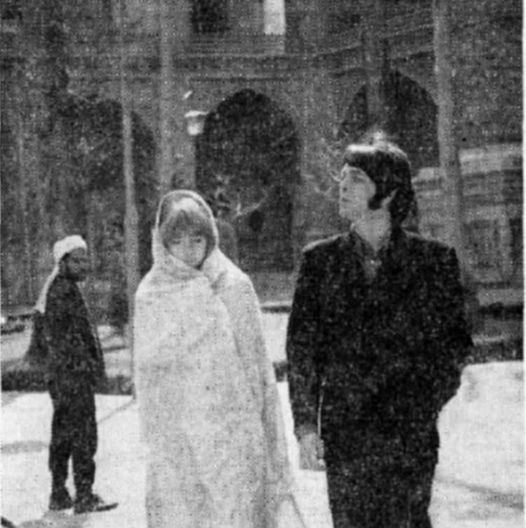




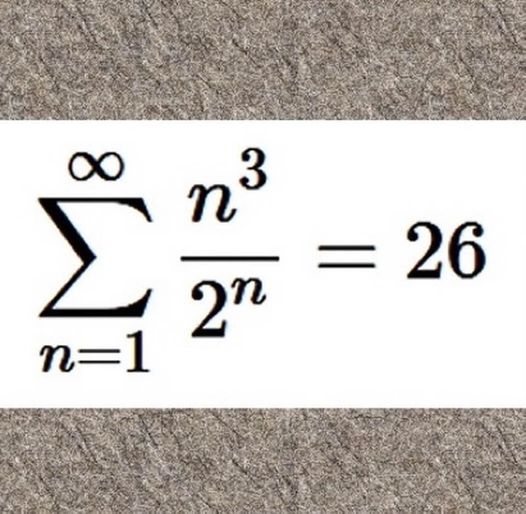 (1) Images of the day: [Top left] Throwback Thursday: Paul McCartney and his then fiancee, actress Jane Asher, visited Iran for 2 days in 1968 on their way back from India, touring historic and cultural sites such as Tehran's Shah Mosque. [Top center] New satellite-based research reveals that land along the US East Coast, from Boston to Miami, is slumping into the ocean, compounding the danger from global sea level rise (NYT). [Top right] Each dot in this image of a small portion of the universe is a galaxy and each galaxy contains about 100 billion stars, with each star having at least one planet. This is how insignificant Earth's place and humans' place are in the universe! [Bottom left] Cleaning crew finds two Q1 microcomputers, which were last used in the 1970s: Only one other Q1 is known to exist. [Bottom center] The largest tip ever (see the last item below). [Bottom right] A beautiful and surprising mathematical identity: See if you can prove it.
(1) Images of the day: [Top left] Throwback Thursday: Paul McCartney and his then fiancee, actress Jane Asher, visited Iran for 2 days in 1968 on their way back from India, touring historic and cultural sites such as Tehran's Shah Mosque. [Top center] New satellite-based research reveals that land along the US East Coast, from Boston to Miami, is slumping into the ocean, compounding the danger from global sea level rise (NYT). [Top right] Each dot in this image of a small portion of the universe is a galaxy and each galaxy contains about 100 billion stars, with each star having at least one planet. This is how insignificant Earth's place and humans' place are in the universe! [Bottom left] Cleaning crew finds two Q1 microcomputers, which were last used in the 1970s: Only one other Q1 is known to exist. [Bottom center] The largest tip ever (see the last item below). [Bottom right] A beautiful and surprising mathematical identity: See if you can prove it.
(2) World Music Series: A subset of UCSB Middle East Ensemble performed on campus yesterday in a free noon concert. Here are two samples (a Turkish dance and a Persian love song).
(3) Scientific fraud: Retraction notices multiply. This set includes entire issues of the journal Microprocessors and Microsystems as well as several individual articles. [Tweet, with article images]
(4) One-liners: Brief news headlines, happenings, memes, and other items of general interest.
- A black hole 17 B times larger than our Sun & eating the equivalent of one Sun every day discovered.
- Intuitive Machines touches down on Moon in nail-biting descent of its lander, a first for the US since 1972.
- Google suspends the capability of its Gemini chatbot to generate images of people.
- An interesting talk by Dr. Laetitia Nanquette on publishing and the state in Iran. [My report on Facebook]
(5) Operations of a major ransomware group disrupted: UK National Crime Agency, US FBI, Europol, and a coalition of international police agencies has taken control of an online site run by the LockBit ransomware group, whose software was the most-deployed ransomware variant across the world last year.
(6) Deans' lists, a long-time staple of American higher education, appear to be heading for extinction. Last fall, Cornell and Penn stopped releasing deans' lists in an effort to reduce students' academic stress. Meanwhile, Brown hasn't had a dean's list since it moved to its current open curriculum academic model in the late 1960s, and Harvard last published a dean's list in 2002.
(7) Final thought for the day (the largest tip ever): In 1922, when Einstein realized he didn't have cash to tip a bellboy in Japan, he wrote two notes for him, both in German.
The first note contained his theory of happiness: "A calm and modest life brings more happiness than the pursuit of success combined with constant restlessness."
On a second note, he wrote: "Where there's a will there's a way."
The first note recently sold for $1.6 million. The second note fetched $0.24 million. Total tip = $1.84 million.
2024/02/19 (Monday): Presenting selected news, useful info, and oddities from around the Internet.

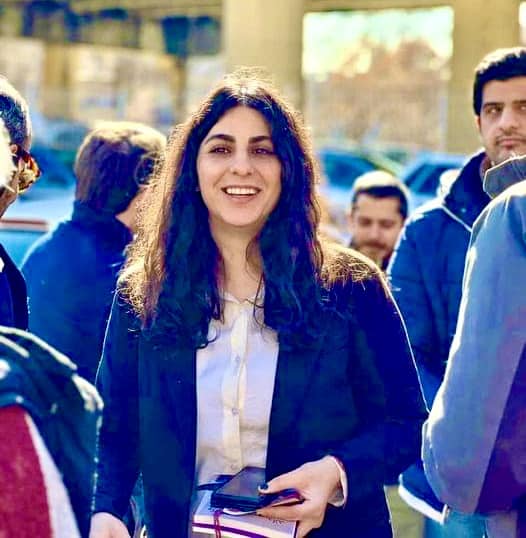



 (1) Images of the day: [Top left] Happy Presidents' Day (see the next item below). [Top center] Sepideh Rashnu, the fearless Iranian women's-rights activist, hijabless in front of Tehran's notorious Evin Prison, to which she has been summoned for serving her prison term. [Top right] The harassment and arbitrary detention of Iranian Baha'is continue: The documentary "To Light a Candle" tells part of this 21st-century horror tale. [Bottom left] Gun violence: America's parade of corpses. [Bottom center] Math puzzle: Given the areas of three of the squares, find the area of the fourth one. [Bottom right] Lady Justice trying to hang on, as governments in Iran and elsewhere are bent on blowing her away.
(1) Images of the day: [Top left] Happy Presidents' Day (see the next item below). [Top center] Sepideh Rashnu, the fearless Iranian women's-rights activist, hijabless in front of Tehran's notorious Evin Prison, to which she has been summoned for serving her prison term. [Top right] The harassment and arbitrary detention of Iranian Baha'is continue: The documentary "To Light a Candle" tells part of this 21st-century horror tale. [Bottom left] Gun violence: America's parade of corpses. [Bottom center] Math puzzle: Given the areas of three of the squares, find the area of the fourth one. [Bottom right] Lady Justice trying to hang on, as governments in Iran and elsewhere are bent on blowing her away.
(2) In praise of Presidents' Day: In American history, few occasions stand as proud reminders of the nation's journey and the leaders who shaped its destiny quite like Presidents' Day. Yes, we have had terrible Commanders in Chiefs, but they have been few & far in between, and we should strive to keep it that way.
(3) One-liners: Brief news headlines, happenings, memes, and other items of general interest.
- A report from the opening of Iran Computer Museum on February 16, 2024 (video, narrated in Persian).
- Middle East Quarterly: Brief reviews of eight books about the Middle East.
- Getting to know prominent computer scientist Kurt Mehlhorn: Part of the "People of ACM" series.
- Jon Stewart ridicules Tucker Carlson for his free propaganda piece in praise of Russia.
- Space fact of the day: Human-made objects orbiting the Earth have a total weight of 25 million pounds.
(4) In the upcoming Iranian elections, Tehran residents are offered a choice between two competing slates, both approved by the regime and neither one including a woman.
(5) Near-record winds in the US northeast pushed multiple passenger planes to speeds exceeding 800 mph, a tad over the speed of sound (767 mph), but for technical reasons, they did not break the sound barrier.
2024/02/17 (Saturday): Presenting selected news, useful info, and oddities from around the Internet.

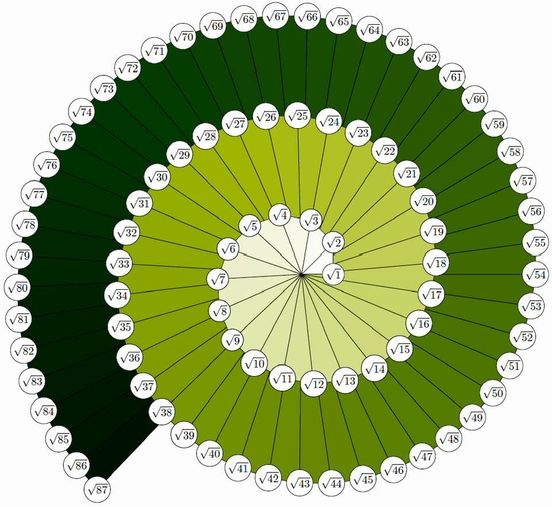
 (1) Images of the day: [Left] Screenshot of video generated by OpenAI's Sora, an AI video generator aimed at facilitating filmmaking but which can also contribute to the proliferation of fake videos. [Center] The spiral of square roots. [Right] The unique and fantastic street lights at Los Angeles County Museum of Art.
(1) Images of the day: [Left] Screenshot of video generated by OpenAI's Sora, an AI video generator aimed at facilitating filmmaking but which can also contribute to the proliferation of fake videos. [Center] The spiral of square roots. [Right] The unique and fantastic street lights at Los Angeles County Museum of Art.
(2) Nowruz and spring are one month away: The spring equinox (saal-tahveel) will be on Tuesday, March 19, 2024, 8:06:26 PM PT (Wednesday, March 20, 6:36:26 AM Tehran time).
(3) Succession conflicts will end Islamic Republic of Iran's claim to legitimacy: Saudi Arabia was in a similar bind, but it resolved the problem by putting MBS in charge and sidelining others with claims to the throne.
(4) One-liners: Brief news headlines, happenings, memes, and other items of general interest.
- Aleksei Navalny, outspoken Putin has died in prison: He survived a nerve-agent attempt on his life in 2020.
- Be my Valentine: India's Narendra Modi loves those who sell oil to him. [Tweet, with photo]
- National unity is good, but one should not have to sacrifice one's principles to achieve it. [Tweet, with meme]
- Sharif U. Technology Association (SUTA) reunion: Aug. 30 to Sep. 1, 2024, Niagara Falls, Canada.
- China's super-advanced space station, "The Heavenly Palace," is taking shape. [17-minute video]
- A brief but spectacular take on the future of the Internet: Networking pioneer Vint Cerf on PBS News Hour.
- How language shapes the way we think: 14-minute TED talk by Lera Boroditsky.
- Thirty-six Super Bowl halftime shows ranked: Looking back at some of these shows is fun.
- Facebook memory from Feb. 17, 2013: A tribute to my father (with texts in Persian and English).
(5) Houthi bypass: Goods forge an overland path to Israel via Saudi Arabia & Jordan, avoiding attacks on ships in the Red Sea. Israel-based firms run trucking routes from the ports of Dubai and Bahrain to Haifa.
(6) Leap day is coming up: Couples who dislike anniversaries have a chance to get married on Feb. 29, which will lead to anniversaries once every four years.
(7) The defenseless people of Gaza: This is an expression we hear often. But we should stop and ask, "Why are they defenseless?" They have a government with a significant stash of arms which went into hiding instead of defending its people. Hamas likely knew that it could not stand up to Israel, yet it decided to trigger a war by its barbaric acts on October 7, 2023.
2024/02/15 (Thursday): Presenting selected news, useful info, and oddities from around the Internet.
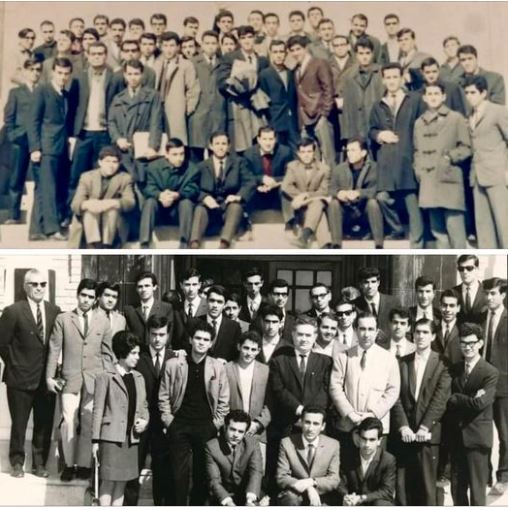




 (1) Images of the day: [Top left] Throwback Thursday: Class of 1968, Electromechanical Division, College of Engineering, University of Tehran. [Top center] Spring's in the air: Early this morning on the UCSB campus. [Top right] Persian calligraphy in fashion: Even low-brow clothing, such as T-shirts sold on Amazon, feature calligraphic art & messaging. [Bottom left] Meme of the day: Eleanor Roosevelt on liberals and liberalism. [Bottom center] Math puzzle: Find the height of the red pole. [Bottom right] Futurism and its connection to Fascism (see the last item below).
(1) Images of the day: [Top left] Throwback Thursday: Class of 1968, Electromechanical Division, College of Engineering, University of Tehran. [Top center] Spring's in the air: Early this morning on the UCSB campus. [Top right] Persian calligraphy in fashion: Even low-brow clothing, such as T-shirts sold on Amazon, feature calligraphic art & messaging. [Bottom left] Meme of the day: Eleanor Roosevelt on liberals and liberalism. [Bottom center] Math puzzle: Find the height of the red pole. [Bottom right] Futurism and its connection to Fascism (see the last item below).
(2) Exam anxiety is a real problem for many students, so instructors should strive to reduce it by improving transparency and inclusivity in both written and oral exams.
(3) Imran Khan's election victory speech from prison in Pakistan: The AI-generated speech signals that we are entering uncharted territory in the use and abuse of AI.
(4) One-liners: Brief news headlines, happenings, memes, and other items of general interest.
- Chief Middle East Advisor to Turkey's President Erdogan: "Israel must be destroyed."
- Hamas networks operate openly in Western Europe, often posing as human-rights advocates.
- College Board pays $750K to settle claims that it violated students' privacy by selling their personal data.
- Scientific integrity is going down the drain: A Columbia cancer surgeon kept publishing flawed studies.
(5) Microsoft's "AI Anthology" contains a diverse collection of essays on the future of AI, with the aim to answer two core questions:
- How might this technology and its successors contribute to human flourishing?
- How might we as society best guide the technology to achieve maximal benefits for humanity?
(6) Academics in US, UK, and Australia collaborated on drone research with Iran's Sharif University of Technology, which is under sanctions for its ties to the military.
(7) The Manifesto of Futurism: In 1909, Italian poet Filippo Tommaso Marinetti published "Manifesto del Futurismo," in which he expressed an artistic philosophy entailing a rejection of the past and a celebration of speed, machinery, violence, youth, and industry. The manifesto predates many 20th-century events commonly suggested as its potential meaning, but the political movements that led to Fascism were already in place in the early 1900s. These movements motivated the manifesto, which in turn influenced Mussolini and his ilk. In Jonathan Taplin's The End of Reality, a book which I have started reading and will review in due course, agendas of US tech titans are likened to Marinetti's.
2024/02/14 (Wednesday): Presenting selected news, useful info, and oddities from around the Internet.


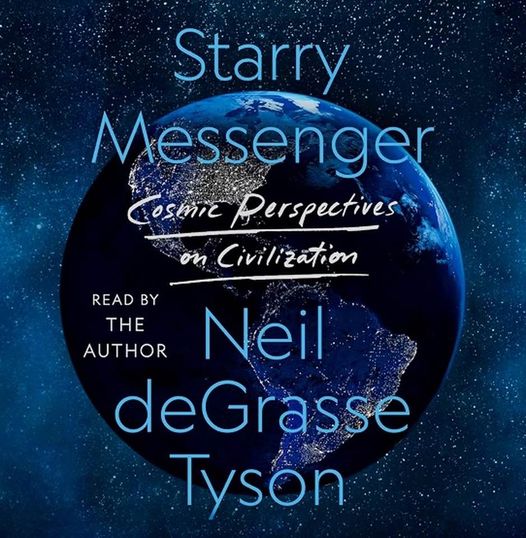


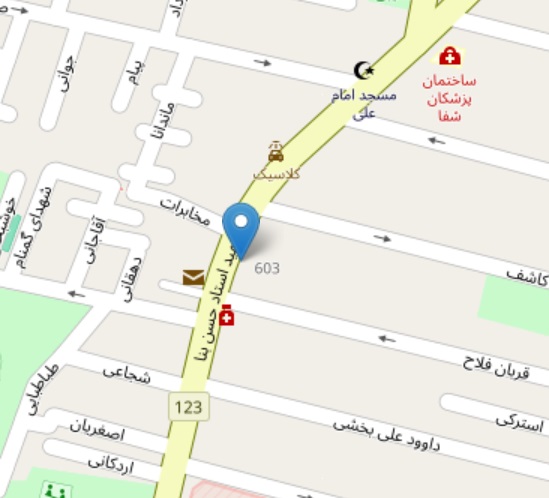 (1) Images of the day: [Top left] Happy Valentine's Day! Sending you love and wishing you all the peace and joy that love can bring. [Top center] Young girls ice-skating at Ice Palace, a sports & entertainment complex just south of Vanak Sq. on Pahlavi Ave. in the pre-Revolution Iran. [Top right] Neil deGrasse Tyson's Starry Messenger (see the last item below). [Bottom left] Math puzzle: Find the measure of angle x if the blue part of the square is twice as large as the yellow part. [Bottom center & right] Opening of Iran Computer Museum: I am delighted to report that thanks to the efforts of visionary investors and a large group of young people managing & curating the collection, Iran Computer Museum will open its doors in Tehran on Fri., Feb. 16, 2024.
(1) Images of the day: [Top left] Happy Valentine's Day! Sending you love and wishing you all the peace and joy that love can bring. [Top center] Young girls ice-skating at Ice Palace, a sports & entertainment complex just south of Vanak Sq. on Pahlavi Ave. in the pre-Revolution Iran. [Top right] Neil deGrasse Tyson's Starry Messenger (see the last item below). [Bottom left] Math puzzle: Find the measure of angle x if the blue part of the square is twice as large as the yellow part. [Bottom center & right] Opening of Iran Computer Museum: I am delighted to report that thanks to the efforts of visionary investors and a large group of young people managing & curating the collection, Iran Computer Museum will open its doors in Tehran on Fri., Feb. 16, 2024.
(2) One-liners: Brief news headlines, happenings, memes, and other items of general interest.
- UCSB World Music Series: Irish, Scotish, & Celtic music by The Decent Folk. [Video 1] [Video 2] [Video 3]
- Only 16% of community-college students transfer and graduate with a bachelor's degree within 6 years.
- Under intense pressure, Texas A&M closes its campus in Qatar because of that country's support of Hamas.
- In Indonesia, a player was struck by lightning on the soccer field and died.
- Fashion show in Tehran, Iran, 1958. [Tweet, with video]
- A very interesting and informative discussion on neuroscientific experiments regarding free will.
(3) Book review: Tyson, Neil deGrasse, Starry Messenger: Cosmic Perspectives on Civilization, unabridged 7-hour audiobook, read by the author, Macmillan Audio, 2022.
[My 4-star review of this book on GoodReads]
Our perspectives on Earth and human species changed significantly once astronauts saw our bluish planet from the space, a sight that lacked any borders or human-made structures. Our "pale blue dot" planet is but a tiny part of the immense universe that contains galaxies so far away that their distance to Earth is measured in light years (one light year, the distance light travels in one year, is about six trillion, or 6*10^12, miles).
As much as we take pride in our ability to predict the course of science and technology, most transformative sci/tech ideas surprised us when they emerged. By presenting facts about our universe and its unbounded beauty, Tyson challenges prevalent assumptions about our existence and abilities. Just like our cave-dwelling ancestors of 30,000 years ago, we remain shortsighted and averse to risk: "Let's solve the problems in our cave, before venturing to areas outside the domain of our daily existence," the elders may have advised enterprising youngsters, who wanted to explore further.
We encounter the same mindset today, when certain politicians and thought leaders demand that we solve Earth's problems (or worse, America's problems) before venturing into space or gazing at distant galaxies, to which we may never travel.
Tyson also points out that we are not as different as we think we are from our political or social adversaries. Fox News is abhorred by the left for its agenda-driven news coverage, a disdain that transfers to the entire Fox network. Yet some of the most-socially-progressive programs have been shown on Fox, including a version of the science series "Cosmos," black-led programs, and the irreverent "The Simpsons" that made fun of everyone and everything. Additionally, Fox Sports is a respected player in its field. Tyson levels similar criticisms at the right for distrusting all non-Fox media.
As we grapple with political and cultural stands that are more polarized than ever, Starry Messenger provides a much-needed antidote to our intolerant and divided demeanor, while making a passionate case for a cosmic perspective and scientific rationality, the twin driving forces of enlightenment.
2024/02/12 (Monday): Presenting selected news, useful info, and oddities from around the Internet.
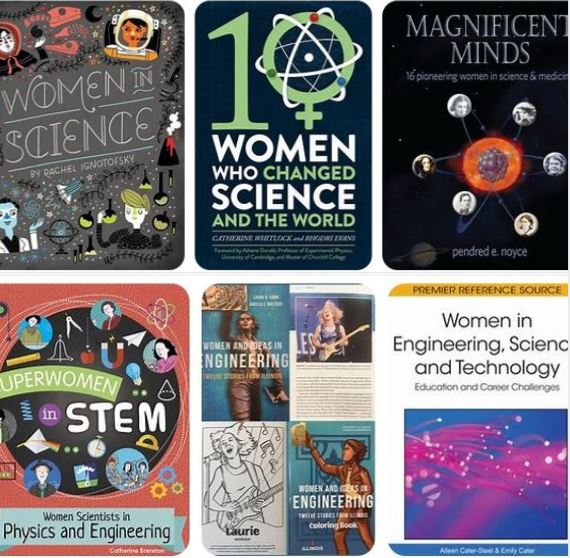


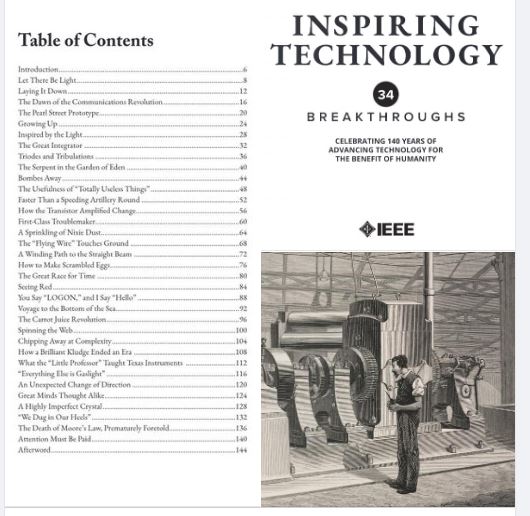
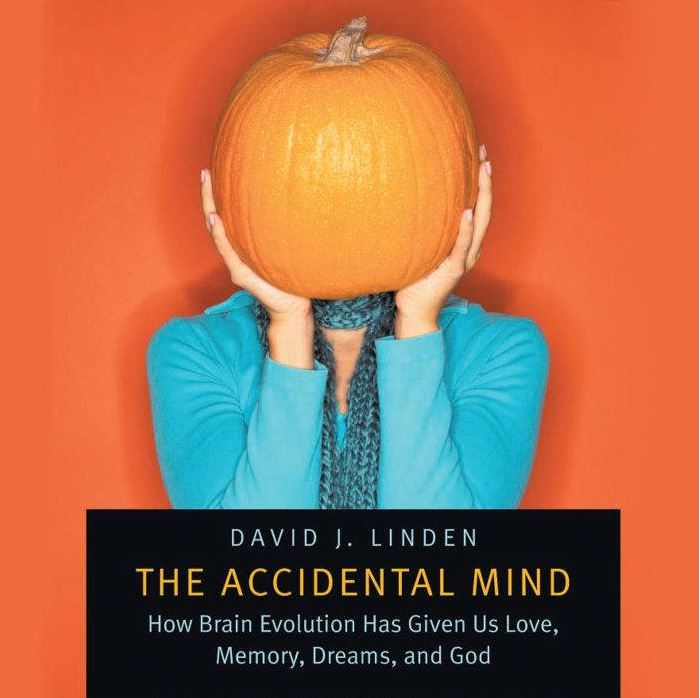
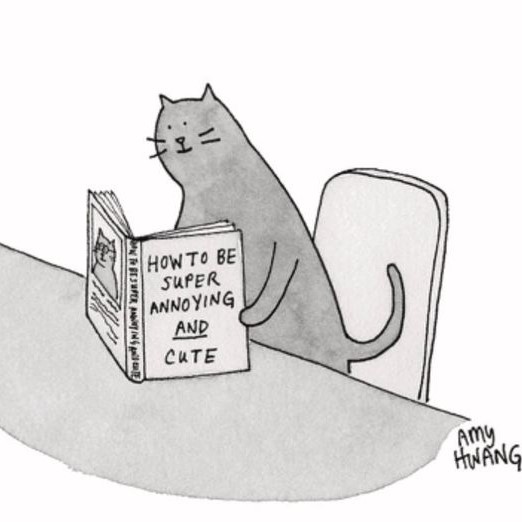 (1) Images of the day: [Top left] February 11 is UN's International Day of Women in Science: Let's celebrate their many accomplishments, despite getting smaller research grants and less in other forms of support than their male colleagues. [Top center] The perfect symmetry & signature blue tiles of Shah Mosque, Isfahan, Iran. [Top right] Avoiding toxic positivity is important when trying to help someone in distress. [Bottom left] IEEE celebrates its 140th anniversary this year by offering the e-book Inspiring Technology: 34 Breakthroughs. [Bottom center] David Linden's The Accidental Mind (see the last item below). [Bottom right] Cat owners and their hostage partners will appreciate this cartoon!
(1) Images of the day: [Top left] February 11 is UN's International Day of Women in Science: Let's celebrate their many accomplishments, despite getting smaller research grants and less in other forms of support than their male colleagues. [Top center] The perfect symmetry & signature blue tiles of Shah Mosque, Isfahan, Iran. [Top right] Avoiding toxic positivity is important when trying to help someone in distress. [Bottom left] IEEE celebrates its 140th anniversary this year by offering the e-book Inspiring Technology: 34 Breakthroughs. [Bottom center] David Linden's The Accidental Mind (see the last item below). [Bottom right] Cat owners and their hostage partners will appreciate this cartoon!
(2) What an exciting Super Bowl! I had no favorite team going in, but by the end of the 25-22 overtime nail-biter, I was cheering for the champions, Kansas City Chiefs.
(3) Being thrown into the sea isn't just a Hamas threat against Israelis: The Greeks face a similar threat from Turkey, which has also threatened an invasion of Armenia.
(4) Book review: Linden, David J., The Accidental Mind: How Brain Evolution Has Given Us Love, Memory, Dreams, and God, Harvard, 2007.
[My 4-star review of this book on GoodReads]
I read this 276-page book on the heels of listening to a comprehensive 36-lecture course, Understanding the Brain, which I have reviewed on GoodReads. Linden's book takes a higher-level view, skipping many details of our brain's architecture and subsystems in favor of historical perspectives on its evolutionary development.
The book contains the following 9 chapters, between a 4-page prologue entitled "Brain, Explained" and an 8-page epilogue, "The Middle Things." There is also a 7-page list of "Further Readings and Resources."
- The Inelegant Design of the Brain
- Building a Brain with Yesterday's Parts
- Some Assembly Required
- Sensation and Emotion
- Learning, Memory, and Human Individuality
- Love and Sex
- Sleeping and Dreaming
- The Religious Impulse
- The Unintelligent Design of the Brain
As evident from several of the chapter titles, the author doesn't consider the brain an elegantly-designed, highly-efficient organ that is perfectly suited to its functions. Weighing around 3 pounds, our brain is a patchwork of old (outdated) structures and newer growth that together use some 20% of our body's energy. Far from being a miracle of intelligent design that should be worshiped, the miracle is the fact that this amalgam of ad-hoc parts works as well as it does!
Early on, Linden highlights three guiding principles of the brain's design that show the ways in which human brain is poorly organized:
- New brain structures appear on top of ancient structures, like added ice-cream scoops to previously deposited ones. Imagine trying to build a modern car while being restricted to adding parts and systems to a 1925 Model-T Ford.
- The component parts (the cells) of the brain have engineering flaws. That the brain made of such crummy parts works at all is in part due to its massively parallel and massively redundant architecture.
- The brain's assembly process (brain development) is suboptimal. Because the brain has never been redesigned from the ground up, it is filled with multiple systems and anachronistic junk.
2024/02/10 (Saturday): Presenting selected news, useful info, and oddities from around the Internet.


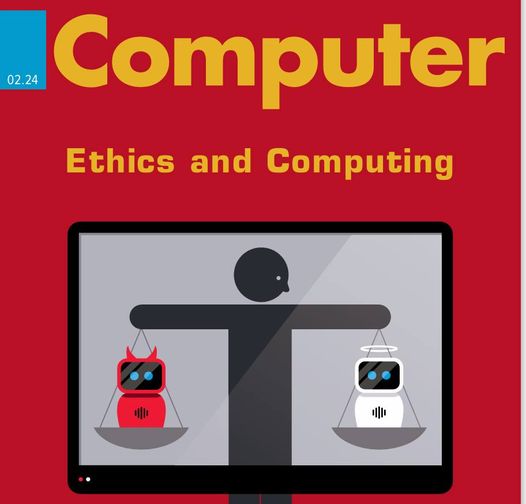

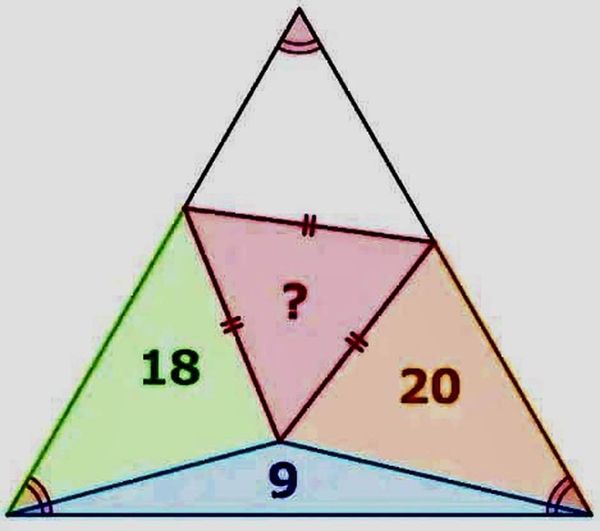
 (1) Images of the day: [Top left] Happy Lunar (Chinese) New Year: May this new year of the dragon bring peace and prosperity to the world! [Top center] Cropped from original painting by architect/artist Talieh Keshavarz: "A Fine Day at Laguna," acrylic on canvas, 36 x 48. [Top right] IEEE Computer magazine's cover feature for February 2024 (see the next item below). [Bottom left] Headquarters of an on-line seller in Iran was defaced after a product was interpreted as insulting Prophet Mohammad's daughter. The message threatens that the extremists will next come for the company's employees. [Bottom center] Find the area of the smaller of the two equilateral triangles, given the areas of three other triangles. [Bottom right] This afternoon's walk alongside Devereux Slough in Goleta: One of the photos appears to be upside-down, but it isn't.
(1) Images of the day: [Top left] Happy Lunar (Chinese) New Year: May this new year of the dragon bring peace and prosperity to the world! [Top center] Cropped from original painting by architect/artist Talieh Keshavarz: "A Fine Day at Laguna," acrylic on canvas, 36 x 48. [Top right] IEEE Computer magazine's cover feature for February 2024 (see the next item below). [Bottom left] Headquarters of an on-line seller in Iran was defaced after a product was interpreted as insulting Prophet Mohammad's daughter. The message threatens that the extremists will next come for the company's employees. [Bottom center] Find the area of the smaller of the two equilateral triangles, given the areas of three other triangles. [Bottom right] This afternoon's walk alongside Devereux Slough in Goleta: One of the photos appears to be upside-down, but it isn't.
(2) Cover feature of IEEE Computer magazine: "Disruptive technologies, especially artificial intelligence, are affecting all of us. But are we using this technology in an ethical way?" The issue contains several interesting articles, including "International Federation for Information Processing Code of Ethics in Context."
(3) Prompted by a reply to my post on research fraud, I am posting about a 2020 paper of mine entitled "On Research Quality and Impact: What Five Decades in Academia Has Taught Me."
[PDF: English;
Persian]
(4) In the US, ~2 cyclists are killed and ~50 are injured in traffic accidents per day: None of these 52 daily accidents is widely reported, except possibly on local news. But a Waymo driverless car being involved in an accident in which a cyclist suffers minor scratches becomes front-page news. Why?
(5) As an associate editor of IEEE Transactions on Sustainable Computing, I was delighted to see the article "Toward Sustainable Computer Systems," by Lieven Eeckhout (Ghent U.), in the February 2024 issue of IEEE Computer magazine. It begins thus: "Sustainability is a pressing concern that encompasses much more than cutting carbon emissions to reach net zero. However, with the right techniques and tools, computer scientists and engineers can understand and navigate a variety of new design tradeoffs that will steer future solutions."
2024/02/08 (Thursday): Presenting selected news, useful info, and oddities from around the Internet.



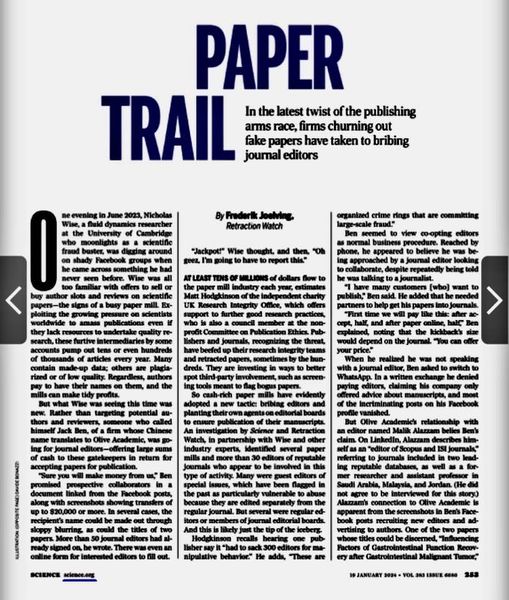

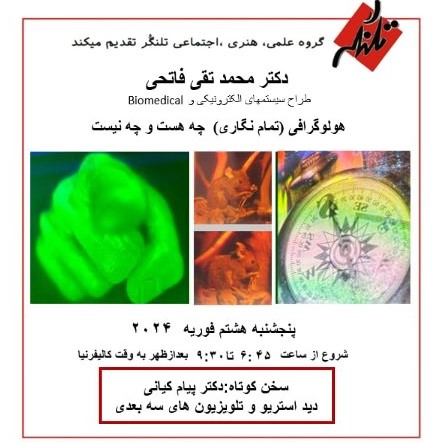 (1) Images of the day: [Top left] Stars you see at night are part of this yellow circle. [Top center] Munker optical illusion: The balls behind the horizontal lines are all the same color. [Top right] Math puzzle: Find x as a function of m and n. [Bottom left] Scientific fraud goes to the next level: We knew of the practice of offering author slots on low-quality or plagiarized research papers for a fee. Now, journal editors are being approached with offers of significant cash bribes for accepting fraudulent papers. [Bottom center] Polar bear snoozing on an iceberg: This photo, shot by amateur photographer Nima Sarikhani during an expedition in Norway, was chosen from among 50,000+ photos for the 2023 Wildlife Photographer of the Year People's Choice Award. She hopes it will inspire people to fight climate change. [Bottom right] Talk on holography (see the last item below).
(1) Images of the day: [Top left] Stars you see at night are part of this yellow circle. [Top center] Munker optical illusion: The balls behind the horizontal lines are all the same color. [Top right] Math puzzle: Find x as a function of m and n. [Bottom left] Scientific fraud goes to the next level: We knew of the practice of offering author slots on low-quality or plagiarized research papers for a fee. Now, journal editors are being approached with offers of significant cash bribes for accepting fraudulent papers. [Bottom center] Polar bear snoozing on an iceberg: This photo, shot by amateur photographer Nima Sarikhani during an expedition in Norway, was chosen from among 50,000+ photos for the 2023 Wildlife Photographer of the Year People's Choice Award. She hopes it will inspire people to fight climate change. [Bottom right] Talk on holography (see the last item below).
(2) The science of 6 degrees of separation: Or is it 5 or 4 degrees of separation now, owing to greater connectivity through social media? [8-minute video]
(3) One-liners: Brief news headlines, happenings, memes, and other items of general interest.
- Tucker Carlson provides free propaganda platform for Putin on the Ukraine war.
- Qatar eliminates Iran at the Asian Cup semifinals 3-2. [13-minute extended highlights]
- UCSB World Music Series noon concert: Tom Ball & Kenny Sultan performed yesterday. [Video 1] [Video 2]
- Humor: If you have children looking for science project topics, here's a suggestion!
(4) Sportsmanship to the extreme: Danish team captain, whose team was trailing 0-1 against Iran, intentionally missed a PK when he realized that the player who touched the ball with his hands did it because he mistook a spectator's whistle for the end-of-game whistle by the referee. [Video]
(5) Wednesday night's book talk at UCSB's Campbell Hall: What can we do to remain hopeful in a world filled with hatred and divisive stories on social media? As head of TED, Chris Anderson has had a ringside view of the world's boldest thinkers sharing their most uplifting ideas. With his new book, Infectious Generosity: The Ultimate Idea Worth Spreading, Anderson looks at one of humankind's defining but overlooked impulses—generosity—and how we can super-charge its potential to build a hopeful future.
(6) Tonight's Talangor Group talk: Dr. Mohammad Taghi Fatehi spoke under the title "Holography: What It Is and What It Is Not." Before the main talk, Dr. Payam Kiani made a brief presentation on stereo vision & 3D TV.
Holography is a technique to record and reconstruct a 3-dimensional scene on a 2D plane (i.e., a hologram) based on optical diffraction and interference. Holography was discovered in 1948 by Hungarian-born electrical engineer Denis Gabor who proposed to use this technique to improve the resolution in electron microscopy. Gabor received the Nobel Prize in Physics for this work in 1971.
This 13-minute YouTube video contains an introduction to how holograms are made.
2024/02/06 (Tuesday): Presenting selected news, useful info, and oddities from around the Internet.

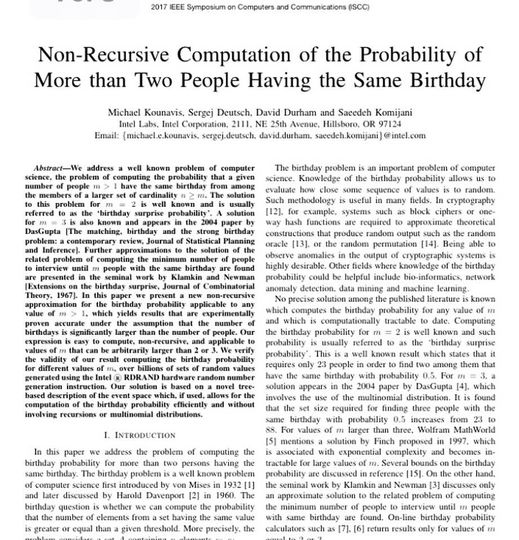
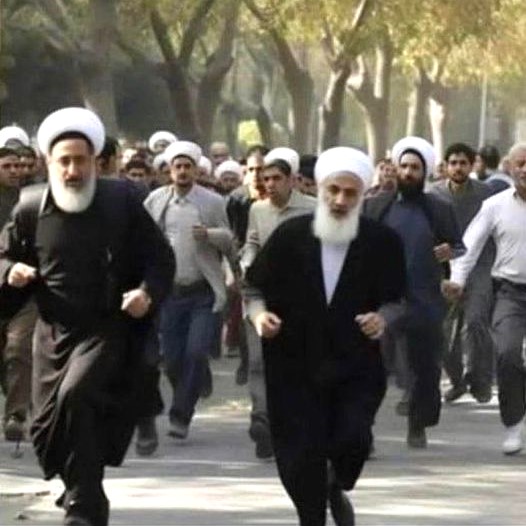 (1) Images of the day: [Left] A design to maximally irk the MAGA crowd! [Center] A nerdy birthday gift: This paper was sent to me by IEEE Computer Society a few days ago, along with a birthday message. It refers to the "birthday paradox," the fact that you only need 23 people in a group for the probability of two or more individuals having the same birthday to exceed 50%. [Right] The great escape: A recurring dream of Iranians.
(1) Images of the day: [Left] A design to maximally irk the MAGA crowd! [Center] A nerdy birthday gift: This paper was sent to me by IEEE Computer Society a few days ago, along with a birthday message. It refers to the "birthday paradox," the fact that you only need 23 people in a group for the probability of two or more individuals having the same birthday to exceed 50%. [Right] The great escape: A recurring dream of Iranians.
(2) Light at the end of the tunnel: Stayed home on Monday, having cancelled my UCSB class due to the possibility of life-threatening flooding in the entire SoCal region. Looking forward to Thursday and beyond.
(3) The Salton Sea: The story of the California lake that was created by an engineering mistake, brought with it prosperity and tourism, and then became a dead zone just as unexpectedly. [10-minute video]
(4) One-liners: Brief news headlines, happenings, memes, and other items of general interest.
- California storm news, including a fallen tree partially blocking Storke Road near my home.
- Wildfires in Chile kill 112, with hundreds more missing. [Photos]
- Dartmouth College reinstates standardized testing for applicants. Other elite colleges will likely follow suit.
- Moonquakes could spell trouble for future Moon missions and bases to be built there.
- The roadmap to slowing and even reversing aging according to Nobel Laureates.
- Cheesy ad for the 1961 B-movie "Why Bother to Knock" in pre-Revolution Iran.
[Tweet, with image]
(5) Like all of his predecessors, former Iranian President Hassan Rouhani is being completely sidelined: He has been disqualified from seeking election to Iran's Assembly of Experts, a post that would have allowed him to remain in the spotlight.
(6) Hypocrisy: The mullahs host an American porn star visiting Iran, because she supports Palestinians. But they have a problem with soccer star Ali Daei's daughter appearing sans hijab!
(7) When the balance of nature is disturbed: Big-headed ants, brought to Africa recently by tourism and commerce, eat the native ants, which protect the trees from elephants. Now, elephants eat more trees, leading to inadequate cover for lions hunting zebras, so the lions get less food. [NPR sory]
(8) Fraudulent bank accounts created for University of California employees: Names, SSNs, and other personal information (believed to have been collected in an old data breach) are being used to open unauthorized bank accounts at Chime, Go2Bank, and Acorns.
2024/02/04 (Sunday): Presenting selected news, useful info, and oddities from around the Internet.

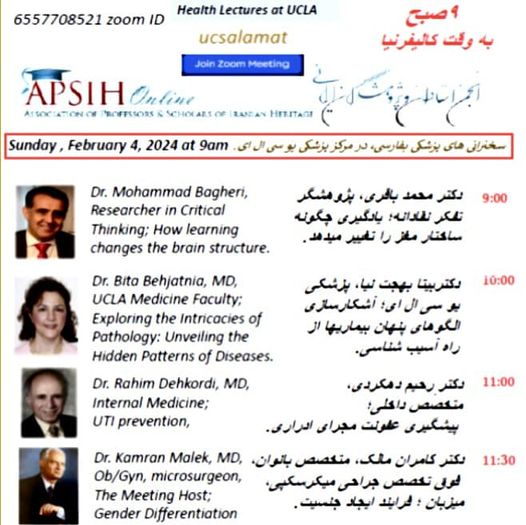



 (1) Images of the day: [Top left] Mathematical art: Floor mosaic from Hisham's Palace, Jericho, 8th century CE. [Top center] Talk on the effect of learning on the brain structure (see the last item below). [Top right] Believe it or not, such corrugated brick walls use fewer bricks than a straight wall: They're known as crinkle-crankle walls, and 100 fine examples survive in Suffolk, England. The savings in the number of bricks comes from the fact that a straight wall with a single layer of bricks won't be as stable. [Bottom left] History made at the 2024 Grammy Awards: Joni Mitchell, 80, offered an emotional rendition of "Both Sides Now" at her first-ever performance on the Grammys stage. [Bottom center] Withholding help from those who need it, because a few bad apples may take advantage of our generosity, is wrong. [Bottom right] We read that movie theaters are in trouble financially. Here is a popcorn replacement suggestion to bring audiences back!
(1) Images of the day: [Top left] Mathematical art: Floor mosaic from Hisham's Palace, Jericho, 8th century CE. [Top center] Talk on the effect of learning on the brain structure (see the last item below). [Top right] Believe it or not, such corrugated brick walls use fewer bricks than a straight wall: They're known as crinkle-crankle walls, and 100 fine examples survive in Suffolk, England. The savings in the number of bricks comes from the fact that a straight wall with a single layer of bricks won't be as stable. [Bottom left] History made at the 2024 Grammy Awards: Joni Mitchell, 80, offered an emotional rendition of "Both Sides Now" at her first-ever performance on the Grammys stage. [Bottom center] Withholding help from those who need it, because a few bad apples may take advantage of our generosity, is wrong. [Bottom right] We read that movie theaters are in trouble financially. Here is a popcorn replacement suggestion to bring audiences back!
(2) Home-bound today: Coffee brewed, news shows on, as we brace for a day of rain, serious flooding, and high winds in the Santa Barbara area. [Tweet, with images of news & cooking]
(3) One-liners: Brief news headlines, happenings, memes, and other items of general interest.
- The storm approaching California has intensified: Historic rainfall and flooding expected.
- Storm damage: Two condos in a Goleta housing complex got seriously damaged by a falling tree.
- Santa Barbara Airport has closed down due to flooding on the runway.
- Iran scores an impressive 2-1 victory against Japan in the Asian Cup tournament. [9-minute highlights]
(4) Cancellation of my in-person class (message to students): Due to potential flooding and the ensuing challenges, I am cancelling our discussion session and office hour on Monday 2/05 per campus safety guidelines. Please watch Lecture 6 on shared memory implementations and Lecture 7 on sorting networks before our Wednesday 2/07 class. We will discuss three lectures in the next two discussion sessions.
(5) "How Learning Changes the Brain Structure": This was the title of the first talk in this morning's Persian Zoom meeting hosted by UCLA Medical Center. Dr. Mohammad Bagheri was the speaker.
The talk's main message was that brain decline isn't inevitable as we age. Neuroplasticity, brain's ability to change its structure and wiring, remains with us until we die. The link between brain changes and learning is a 2-way street, with brain rewiring creating new knowledge and learning triggering changes in the brain. As long as we don't stop learning, our brain will continue to improve. If we don't learn new things or stop practicing existing skills, brain decline will ensue.
When we master/practice a domain/skill, three processes are triggered in the brain. The first one is synaptic strengthening, which is a short-term chemical process. The second one involves restructuring of connections, a long-term physical process that is similar to committing something to long-term memory. The third one creates regional specialization in the brain, which brings about permanent functional changes.
2024/02/03 (Saturday): Presenting selected news, useful info, and oddities from around the Internet.
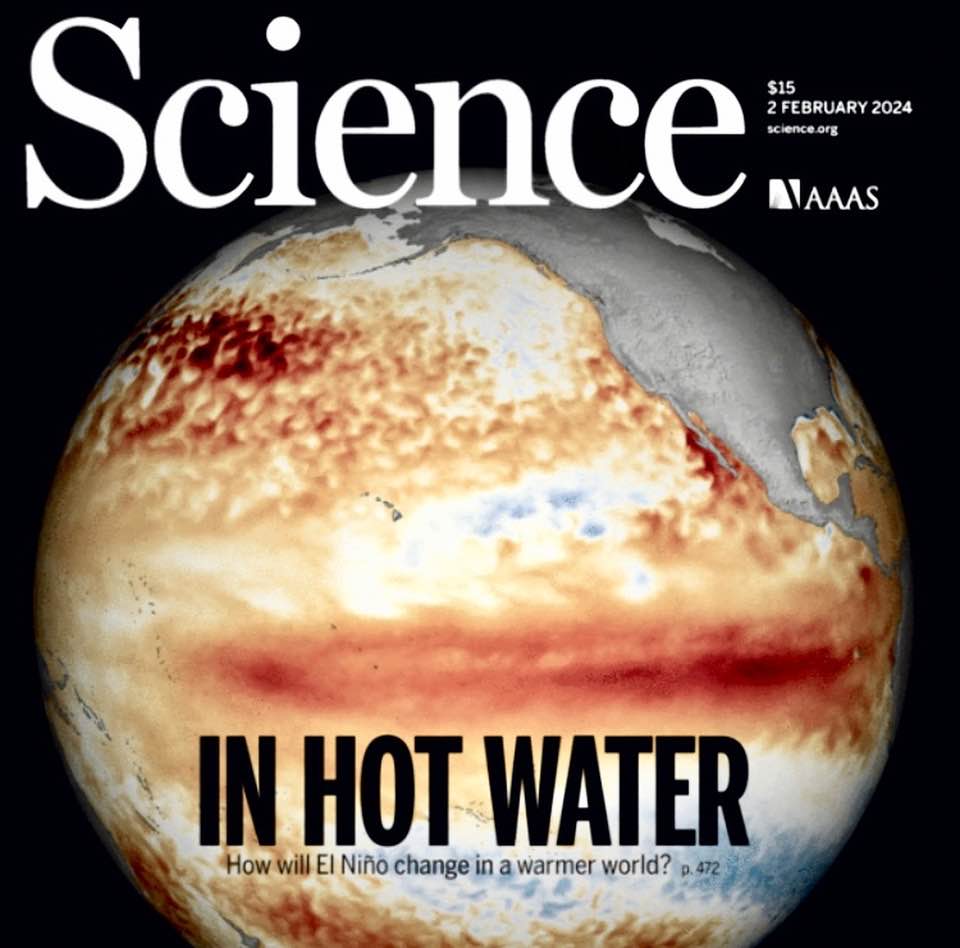

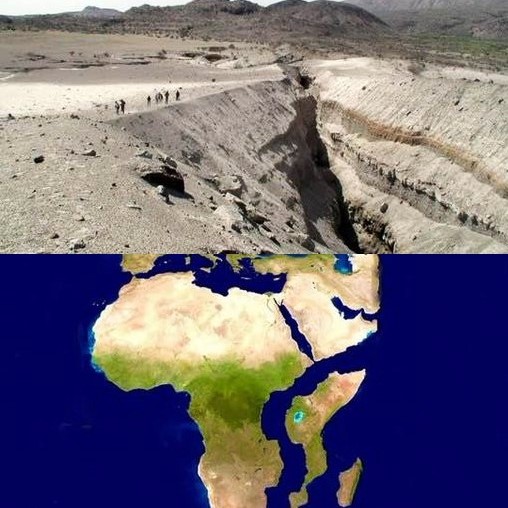
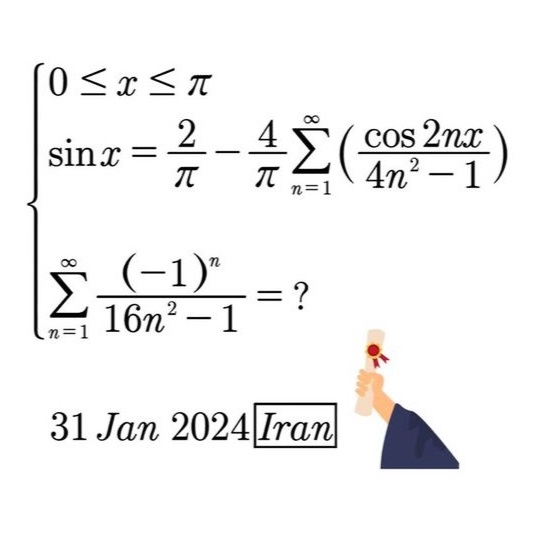

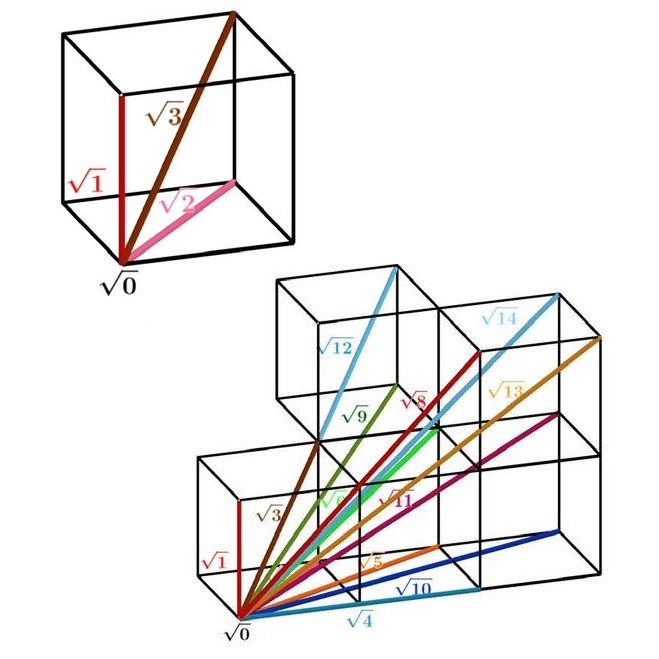 (1) Images of the day: [Top left] "In Hot Water": This is the title of the cover feature for Science magazine, issue of February 2, 2024. The focus is on how El Nino will change in a warmer world. [Top center] What a contrast! Taylor Swift and her boyfriend, KC Chiefs tight-end Travis Kelce. [Top right] Africa's emerging ocean (see the next item below). [Bottom left] Math challenge: Compute the infinite sum on the third line, given the clue on the second line. [Bottom center] Found in Dominican Republic: Praying Mantis preserved in amber is about 30 million years old. [Bottom right] Square roots of natural numbers occurring in a 3D cubic grid.
(1) Images of the day: [Top left] "In Hot Water": This is the title of the cover feature for Science magazine, issue of February 2, 2024. The focus is on how El Nino will change in a warmer world. [Top center] What a contrast! Taylor Swift and her boyfriend, KC Chiefs tight-end Travis Kelce. [Top right] Africa's emerging ocean (see the next item below). [Bottom left] Math challenge: Compute the infinite sum on the third line, given the clue on the second line. [Bottom center] Found in Dominican Republic: Praying Mantis preserved in amber is about 30 million years old. [Bottom right] Square roots of natural numbers occurring in a 3D cubic grid.
(2) A new ocean is forming in Africa along a 35-mile crack that opened up in Ethiopia in 2005: The crack, which has been expanding ever since, is a result of three tectonic plates pulling away from each other. Africa's new ocean will take million of years to form, but the Afar region's fortuitous location at the boundaries of the Nubian, Somali, and Arabian plates makes it a unique laboratory to study elaborate tectonic processes.
(3) Extensive research fraud exposed: Cliques of mathematicians at institutions in China, Saudi Arabia, and elsewhere have been artificially boosting their colleagues' citation counts by churning out low-quality papers that repeatedly reference their work.
(4) One-liners: Brief news headlines, happenings, memes, and other items of general interest.
- SoCal weather: Potentially life-threatening flooding between Los Angeles and Santa Barbara, Sun.-Mon.
- Video of severe flooding in San Diego, California (late January, 2024).
- Drug overdose deaths are rising, but San Francisco's rate is more than double the US average. [NYT chart]
- Some men resent women for simply taking up space, regardless of their accomplishments & good deeds.
- A la "Peanuts" (cartoon): "It's a basic competency test. I'll hold the ball, & you come running up & kick it!"
- No amount of Islamic oppression and economic hardship can dampen the spirit of fun-loving Iranians.
(5) The Salton Sea: The story of the California lake that was created accidentally by an engineering mistake, brought with it much economic & tourist activities, and became a dead zone just as unexpectedly.
(6) NASA's Space Shuttle Endeavour installed at California Space Center in Los Angeles: What's unique about this installation is that the 122-foot-tall flier with a 78-foot wingspan has its massive external fuel tank and two solid rocket boosters attached, all displayed as if they are on the launch platform. [Tweet, with photos]
(7) Santa Barbara area rents are rising: Meanwhile, UCSB's plans to develop additional student housing have been delayed by the Munger Hall debacle, squeezing the students financially. Rents in Isla Vista & Goleta are even higher than the area averages shown. [UCSB Daily Nexus chart]
(8) A final thought: In Goleta, we have rain in the forecast for 7 of the next 10 days: The already-saturated ground may lead to life-threatening flooding and mudslides. The entire SoCal area is in the same boat.
2024/02/01 (Thursday): Presenting selected news, useful info, and oddities from around the Internet.
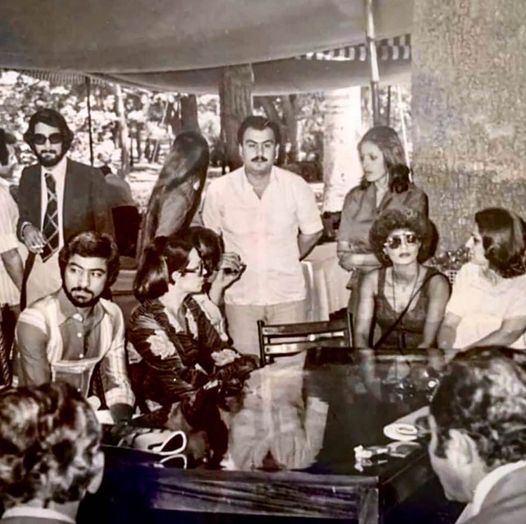
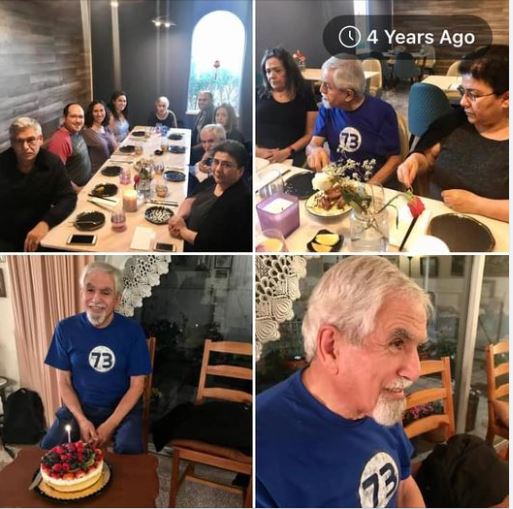



 (1) Images of the day: [Top left] Throwback Thursday: This photo, taken at an unspecified location some five decades ago, contains two very famous Iranian pop singers. [Top center] Celebrating my birthday with the family four years ago: You do the math! [Top right] Woodcut by Adolf Vollmy: The work was inspired by an 1833 meteor shower that was so intense (up to 100,000 meteors every hour) that many thought the end of the world had come. [Bottom left] US policy toward Iran (see the next item below). [Bottom center] A birthday present: Having completed a 3-year term as an IEEE Computer Society Distinguished Visitor/Lecturer during 2021-2023, I have just learned that I have been reappointed to the position for another 3-year term, 2024-2026. [Bottom right] Reflections at the end of another birthday (see the last item below).
(1) Images of the day: [Top left] Throwback Thursday: This photo, taken at an unspecified location some five decades ago, contains two very famous Iranian pop singers. [Top center] Celebrating my birthday with the family four years ago: You do the math! [Top right] Woodcut by Adolf Vollmy: The work was inspired by an 1833 meteor shower that was so intense (up to 100,000 meteors every hour) that many thought the end of the world had come. [Bottom left] US policy toward Iran (see the next item below). [Bottom center] A birthday present: Having completed a 3-year term as an IEEE Computer Society Distinguished Visitor/Lecturer during 2021-2023, I have just learned that I have been reappointed to the position for another 3-year term, 2024-2026. [Bottom right] Reflections at the end of another birthday (see the last item below).
(2) Biden's miscalculations about Iran: After the hard-line stance of the Trump administaration, Biden returned to Obama's appeasement policy, which has led to tensions and instability in the region. Prohibitions against supporting proxy terror groups should be included in any new deal with Iran.
(3) One-liners: Brief news headlines, happenings, memes, and other items of general interest.
- Meta's Mark Zuckerberg apologizes to child abuse victims and their families at a US Senate hearing.
- Unprecedented ~60 MPH winds expected on Sunday along CA Coast, from Channel Islands to Fort Bragg.
- Why 4 of 5 sufferers from autoimmune diseases are women: The female-only Xist molecule is implicated.
- MAGA World vs. Taylor Swift: I am taking the side of the talented star against the bullies!
(4) At the end of my 77th birthday: I am thankful for all the birthday wishes from family & friends and for having been given a chance to complete another revolution around the Sun. The kids and I celebrated by having dinner at Nikka Fish Market & Grill in Goleta, where I ordered a char-broiled trout dish (my mom's favorite) and a cup of clam chowder. Your place was empty.
I will spare you my usual long essay on properties of my birthday number, 77, except to note that it's a semi-prime (7*11), the sum of the first eight prime numbers (2 + 3 + 5 + 7 + 11 + 13 + 17 + 19), and the sum of three consecutive perfect squares (4^2 + 5^2 + 6^2).
2024/01/31 (Wednesday): Presenting selected news, useful info, and oddities from around the Internet.
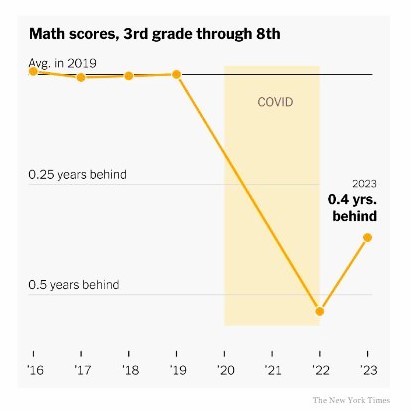

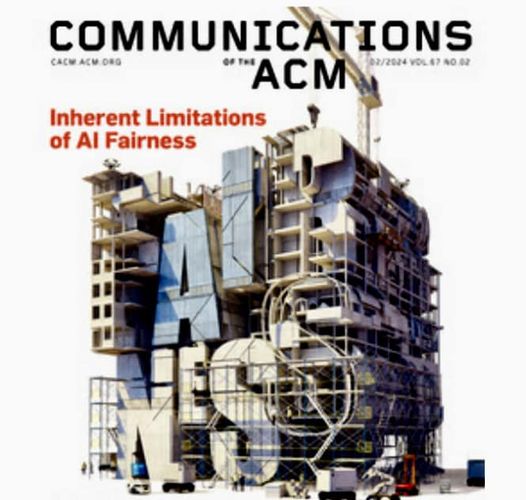 (1) Images of the day: [Left] Third-to-eighth-grade math scores have recovered somewhat after the COVID years but they are still 0.4 year under the average in 2019 and earlier (NYT chart). [Center] One of Norway's 200,000+ islands. Only Sweden has more islands than Norway. [Right] Interesting article on AI fairness (see the last item below).
(1) Images of the day: [Left] Third-to-eighth-grade math scores have recovered somewhat after the COVID years but they are still 0.4 year under the average in 2019 and earlier (NYT chart). [Center] One of Norway's 200,000+ islands. Only Sweden has more islands than Norway. [Right] Interesting article on AI fairness (see the last item below).
(2) First human receives a Neuralink brain implant: The company claims rapid recovery of the patient (whose identity is unknown) and successful detection of neuron spikes by the implant.
(3) How the Celsius temperature scale in use today came about: Anders Celsius originally had it upside-down, with 0 being at water's boiling point and 100 at its freezing point.
(4) One-liners: Brief news headlines, happenings, memes, and other items of general interest.
- Atmospheric river coming to SoCal this week: Extreme rainfall & heavy snow forecast across the West.
- Gen-Z gender divide: The women are liberal, whereas men tend to support demagogues and strongmen.
- Chita Rivera, the classically-trained and Tony-winning Broadway star dancer, dead at 91.
- ABBA songs & their wonderful harmonies never get old: Covers of "Super Trooper" & "Dancing Queen."
- State Parks are among the most-valuable treasures of our Golden State, California. [FB post, with photo]
- Dundunba Drum Lab performed at UCSB’s World Music Series noon concert today.
[Video 1]
[Video 2]
(5) National Air & Space Museum's 2024 lectures on samples-return missions, on YouTube (5:00-6:00 PM PT).
March 6: "To the Moon and Back" (Dr. Barbara Cohen)
April 24: "The Stardust Discovery Mission: Bringing Comet Wild-2 Samples Home to Earth" (Dr. Scott Sandford)
May 22: "OSIRIS-Rex: Revealing Secrets from the Dawn of our Solar System" (Dr. Dante Lauretta)
June 5: "Bringing Mars Samples Back to Earth" (Meenakshi Wadhwa)
(6) Inherent limitations of AI fairness: This is the subject of the cover feature of Communications of the ACM, issue of February 2022.
The vast majority of AI literature is concerned with the easily-attainable notion of group fairness, which requires that any two protected groups should, on average, receive similar labels. Group fairness expresses the principles of individual fairness by looking at the sum of discrimination toward an entire group rather than individual contributions.
Though this increased statistical power makes group fairness more-practical to measure and satisfy, it comes with its own problems, including Simpson's Paradox, which essentially warns us that conclusions may vary depending on the granularity of groups.
2024/01/29 (Monday): Presenting selected news, useful info, and oddities from around the Internet.


 (1) Images of the day: [Left] Wonders of our Solar System: Clearest photo of Planet Jupiter ever taken. [Center] Year of the humanoid: Legged robots from 8 companies vie for jobs. [Right] Yaxi Highway, aka the Skyroad: China's 240-km marvel of engineering.
(1) Images of the day: [Left] Wonders of our Solar System: Clearest photo of Planet Jupiter ever taken. [Center] Year of the humanoid: Legged robots from 8 companies vie for jobs. [Right] Yaxi Highway, aka the Skyroad: China's 240-km marvel of engineering.
(2) Amazing math & engineering: This set of 242 interlocking bevel gears on the surface of a sphere is composed of 12 blue gears with 25 teeth each, 30 yellow gears with 30 teeth, 60 orange gears with 14 teeth, and 140 red gears with 12 teeth. [Tweet, with GIF image]
(3) Algorithmic video surveillance will be taken to new heights at the Paris Olympics: But unlike the Chinese who quietly accepted surveillance at the last Olympic Games, the French are vehemently protesting.
(4) One-liners: Brief news headlines, happenings, memes, and other items of general interest.
- Three US soldiers killed and 34 injured in Jordan by drone strikes linked to Iran.
- Israeli investigation reveals that much of Hamas's arms used on Oct. 7 came from the Israeli military.
- The UN fires several employees after allegations that they aided Hamas in its attack of October 7.
- Artemis II will send astronauts around the Moon in world's first crewed deep-space mission in 50 years.
- Synchron is racing Neuralink to bring its brain implants, delivered via blood vessels, to market.
- An explanation of why we continue to cough after we are no longer sick.
- Modeling sports match-ups with intransitive dice games: A fun, but challenging, math exercise.
- The comic genius of Robin Williams during a British TV interview.
(5) Cox Communication's dishonest service: About a week ago, I went to Cox store in Santa Barbara to return a cable box I no longer needed. Rather than simply record the return, which would have reduced my monthly fee by a few dollars, the agent apparently signed me up for new services, which will increase my cost, all without my consent. What triggered my suspicion was the assignment of a new account number, an unnecessary action for the transaction.
[On X (Twitter), a Cox PR person responded to my criticism and recommended that I contact Cox's customer service to fix the problem.]
(6) Ex-contractor for IRS sentenced to 5 years in prison for leaking Donald Trump's tax returns: As usual, low-level criminals are pursued with vengeance, while those at the very top walk free, either because they aren't charged or else their teams of influential (and expensive) lawyers use every delay tactic in the book and negotiate favorable plea deals after everyone is worn out.
2024/01/27 (Saturday): Presenting selected news, useful info, and oddities from around the Internet.


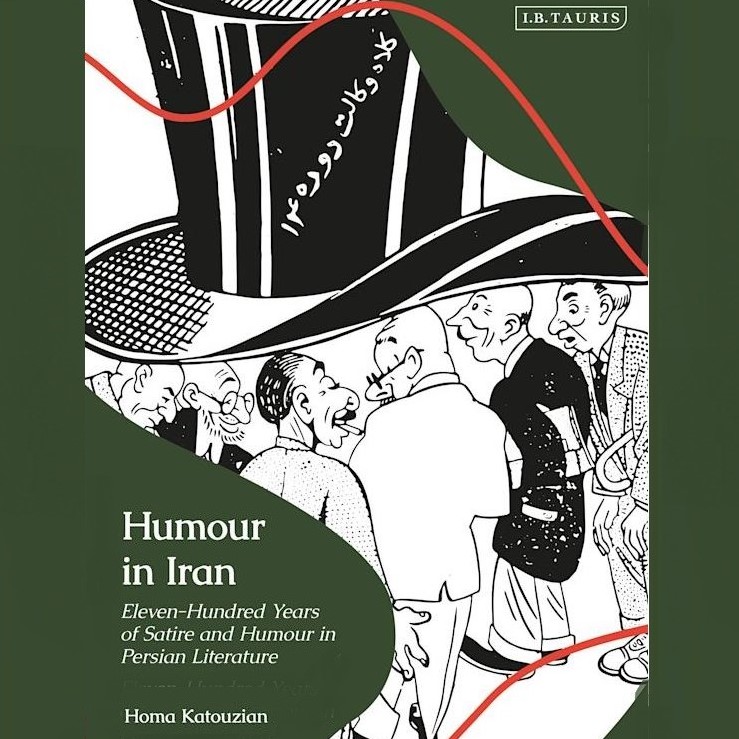 (1) Images of the day: [Left & Center] Stearns Wharf during today's outing in Santa Barbara with my sisters on the occasion of my upcoming birthday. [Right] Homa Katouzian's Humour in Iran (see the last item below).
(1) Images of the day: [Left & Center] Stearns Wharf during today's outing in Santa Barbara with my sisters on the occasion of my upcoming birthday. [Right] Homa Katouzian's Humour in Iran (see the last item below).
(2) Our bodies constitute permanent records of government policies: Americans are getting shorter (once the world's tallest, we are now hovering around 50th in the world), heavier, & less intelligent, and we die younger. In this podcast, two scientists discuss how these undesirable changes are direct consequences of government policies on healthcare, nutrition, and equity.
(3) One-liners: Brief news headlines, happenings, memes, and other items of general interest.
- Taking advantage of the the Israel-Gaza conflict, Iran's Islamic regime picks up the pace of executions.
- Iran's top diplomat embarrasses the country with his English speech at the UN.
- Jewish Iranian-American astronaut Jasmine Moghbeli is a target of anti-Semitic hate speech in Iran.
- A hilarious explanation of the lyrics for the song "Waltzing Matilda." [5-minute video]
- Animal intelligence: Solving a maze by thinking outside the box. [Video]
- See if you can identify which of these ten faces were AI-generated and which ones are real (I got only 4).
(4) Attosecond physics: We can now mark time and observe physical phenomena within 10^(–18) second. This ability, which was honored with the 2023 Nobel Prize in Physics, opens up new avenues for developing advanced materials with mind-boggling properties and for understanding our universe in much greater detail.
(5) Book review: Katouzian, Homa, Humour in Iran: Eleven-Hundred Years of Satire and Humour in Persian Literature, I. B. Tauris, 2024. [My 4-star review of this book on GoodReads]
Combining Persian original texts with some English translations, the book, which is aimed at both scholars and ordinary readers, covers 11 centuries of satire, irony, & humor in Persian verse & prose. The Persian literary tradition includes various forms of humor, from the coarse and obscene to the subtle and refined. The sources range from Ferdowsi's epic Shahnameh, master satirists such as Obeyd Zakani, Sa'di, Rumi, Khayyam, Hafiz, Anvari, Sana'i, Khaqani, Suzani, Qa'ani, & Yaghma, ending with 20th-century literary figures such as Iraj, Dehkhoda, Bahar, Eshqi, Aref, Hedayat, Jamalzadeh, & Al-e Ahmad.
The book's 10 chapters follow a 17-page introduction, in which we read a few samples of humor and learn, among other things, about the lack of an exact Persian equivalent for the term "humor" or "humour" (none of the Persian/Arabic terms "tibat," "motayebeh," "mezah," "tamaskhor," "maskhareh," "shukhi," or "latifeh" means exactly the same).
- The First Three Centuries
- Rumi, Sa'di, Hafiz
- Obeyd Zakani (c. 1300-1370)
- From Old Classics to Neoclassics (15th to 18th Centuries)
- The Neoclassical Period: Bazgasht-e Adabi in the 19th Century
- Iraj and Bahar
- Dehkhoda and Eshghi
- Aref, Seyyed Ashraf, E'tesami, Rouhani, Bibi Khanom
- Satirical Fiction
- The Satirical Press
As a side note, "Homa" is usually a female name in Persian, but Dr. Homa Katouzian [1942-] is a man who uses the literary name "Homa" as a shorthand for "Homayoun."
2024/01/25 (Thursday): Presenting selected news, useful info, and oddities from around the Internet.


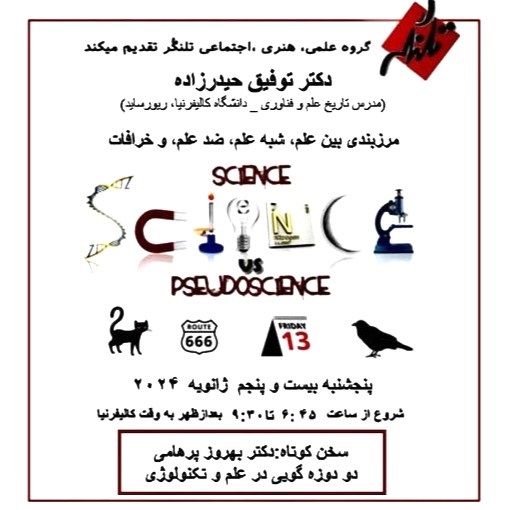 (1) Images of the day: [Left] Convertible chair/step-ladder I bought from Amazon: The design idea is neat, but the assembly instructions are exclusively in Chinese. I have decided to return the item but fear that shipping it to China may cost me a fortune! [Center] Our Earth, viewed from a different perspective: Centered at the North Pole, this map tells us that the US and Russia are closer to each other than we generally think and highlights the immensity of the Pacific Ocean. [Right] Talangor Group talk (see the last item below).
(1) Images of the day: [Left] Convertible chair/step-ladder I bought from Amazon: The design idea is neat, but the assembly instructions are exclusively in Chinese. I have decided to return the item but fear that shipping it to China may cost me a fortune! [Center] Our Earth, viewed from a different perspective: Centered at the North Pole, this map tells us that the US and Russia are closer to each other than we generally think and highlights the immensity of the Pacific Ocean. [Right] Talangor Group talk (see the last item below).
(2) Several countries are studying near-Earth asteroids using space probes: One threatening asteroid, which is the size of a football stadium, will fly by very close to Earth in 2029 and may crash into the Pacific Ocean on its next visit in 2036, triggering a tsunami that destroys the US West Coast and Hawaii.
(3) One-liners: Brief news headlines, happenings, memes, and other items of general interest.
- NASA's Ingenuity will fly no more: A broken rotor blade seals the fate of the first copter to fly on Mars.
- How the merger of two neutron stars that occurred 130 million years ago was detected in 2022.
- Jon Stewart is returning to executive-produce "The Daily Show" and to host it on Monday nights.
- Racing cars on sloped roads: Straight-line road isn't the fastest. [Tweet, with animation]
- Farhang Foundation's Nowruz Concert in Orange County, California, March 23, 2024.
- Throwback Thursday: Frank Sinatra's 1975 concert in Iran; I was there and remember the event fondly.
(4) "Pale Blue Dot" refers to a photo of Earth taken by Voyager 1 space probe in 1990 from a distance of ~3.7 billion miles, as it was leaving our solar system. It has come to signify our small place in the universe.
(5) Tonight's Talangor Group talk: Dr. Towfigh Heidarzadeh (UC Riverside) spoke about "Critical Thinking in Science: Demarcating Science, Pseudo-Science, Anti-Science, and Superstition." Before the main talk, yours truly made a short presentation on "Doublespeak in Science and Technology." There were ~95 attendees.
Demarcation of science and pseudoscience is important, both theoretically and from a practical standpoint (should the government invest in telepathy or alternative medicine?). Pseudoscience tends to impede the progress of science. Science is a complicated system/network. We cannot produce new science without relying on all that has gone before us.
Superstition is a belief or practice resulting from ignorance, fear of the unknown, trust in magic, or false conception of causation. Pseudoscience is similar to superstition, but it uses scientific terms in order to legitimize non-scientific conclusions. Pseudoscience lacks evidence and isn't reproducible or falsifiable. Anti-science denies the legitimacy of science altogether, citing certain errors in previous scientific hypotheses to cast doubt on everything scientific.
2024/01/24 (Wednesday): Presenting selected news, useful info, and oddities from around the Internet.


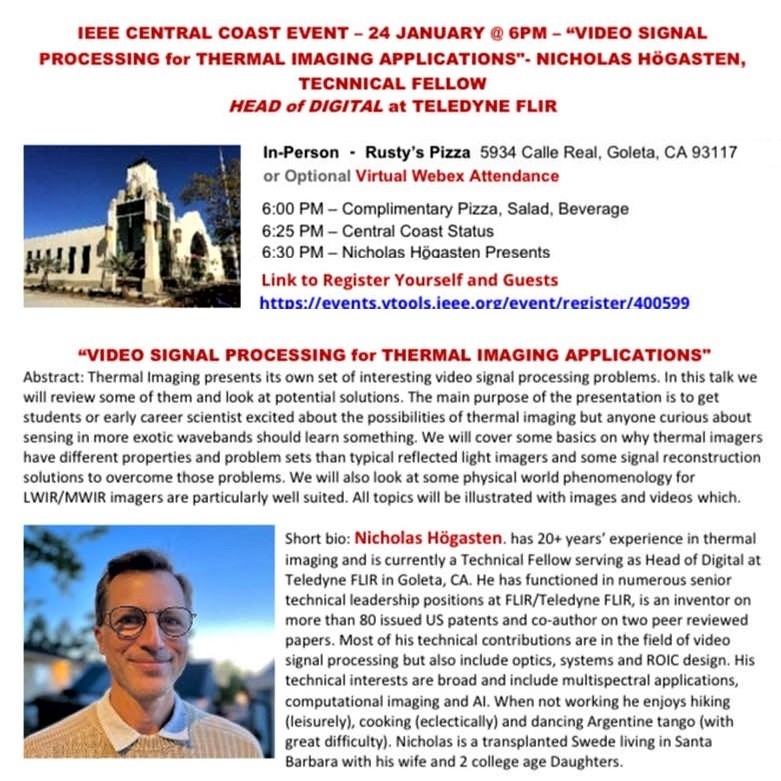
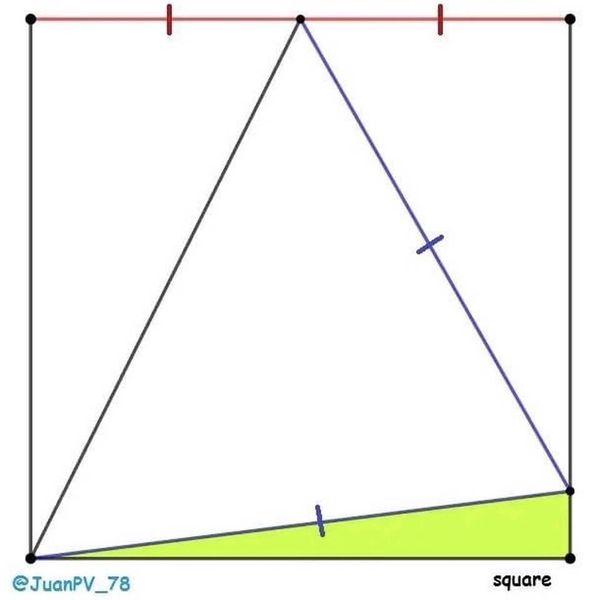
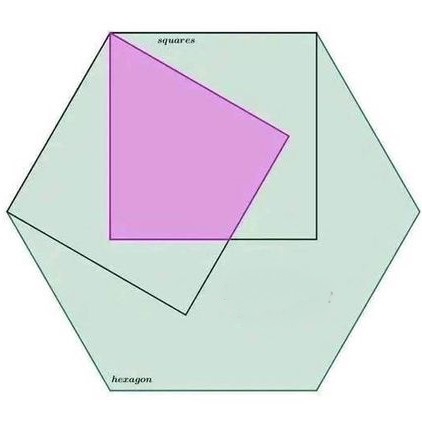
 (1) Images of the day: [Top left] Bike paths not prioritized (see the next item below). [Top center] MagQuest seeks new global magnetic map: A more-accurate magnetic map would help make the adjustments needed to find true north. [Top right] Tonight's IEEE CCS tech talk (see the last item below). [Bottom left] Math puzzle: What fraction of the square's area is shaded green? [Bottom center] Math puzzle: In this diagram with a regular hexagon and two squares, what fraction of the hexagon's area is shaded purple? [Bottom right] Math puzzle: In this diagram, what is the length of the blue line segment?
(1) Images of the day: [Top left] Bike paths not prioritized (see the next item below). [Top center] MagQuest seeks new global magnetic map: A more-accurate magnetic map would help make the adjustments needed to find true north. [Top right] Tonight's IEEE CCS tech talk (see the last item below). [Bottom left] Math puzzle: What fraction of the square's area is shaded green? [Bottom center] Math puzzle: In this diagram with a regular hexagon and two squares, what fraction of the hexagon's area is shaded purple? [Bottom right] Math puzzle: In this diagram, what is the length of the blue line segment?
(2) On UCSB campus, today: This space between the campus library and the new ILP classroom building used to host a bike path. After building ILP, a walkway and landscaping replaced the bike path, making the bike parking area to the east of ILP nearly inaccessible from the west side of the campus. Predictably, students ride along the walkway to get to the parking area. Ironically, the space is wide enough to accommodate both a bike path and a walkway.
(3) Credit/debit-card fraud is rampant: A couple of days ago, I received notice from my bank that an attempted use of one of my cards at a jewelry business had been declined. They wanted to know whether I had initiated the transaction, which I had not. My card has been invalidated as a precautionary measure and is being replaced with a new card. Stay alert!
(4) One-liners: Brief news headlines, happenings, memes, and other items of general interest.
- Biggest aircraft cleared for flight: The massive 400-foot air-transport is allowed to fly up to 1500 feet high.
- Lithium extraction gets faster & greener: New technologies double production while reducing pollution.
- World's first road with an EV charging lane is being built in Sweden.
- World Music Series: Mariachi Las Olas de Santa Barbara performed at UCSB today.
[Video 1]
[Video 2]
(5) Tonight's IEEE Central Coast Section tech talk: Nicholas Hogasten (Technical Fellow, Teledyne FLIR, Goleta) spoke under the title "Video Signal Processing for Thermal Imaging Applications."
Thermal Imaging presents interesting video signal processing problems. The speaker reviewed some of these problems & their potential solutions. The main purpose of the presentation was to get students or early-career scientist excited about the possibilities of thermal imaging, but anyone curious about sensing in more exotic wavebands learned something. Some basics on why thermal imagers have different properties and challenges compared with typical reflected-light imagers and signal-reconstruction solutions to overcome those problems were discussed. The talk also touched upon some physical-world phenomenology for LWIR/MWIR imagers.
2024/01/23 (Tuesday): Presenting selected news, useful info, and oddities from around the Internet.




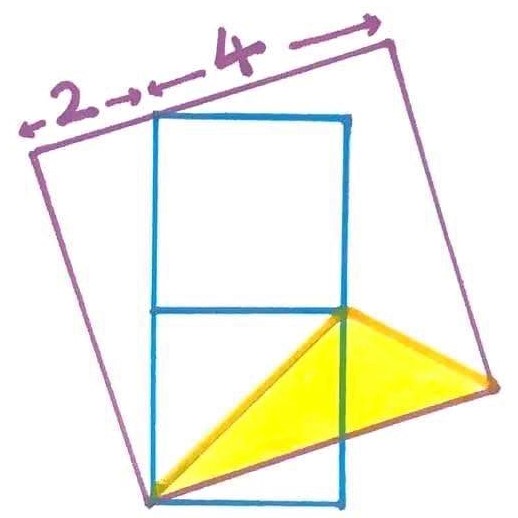
 (1) Images of the day: [Top left] The Milky Way Galaxy, as seen in the dark sky of Iran's Semnan Province. [Top center] This is our beautiful Golden State, California. [Top right] The city of Ardebil in Iran, at the base of the majestic Sabalan Mt. [Bottom left] If you crave lentil-rice (Persian "adas-polo") and don't feel like making it from scratch, Trader Joe's can help. [Bottom center] Math puzzle: In this diagram with 3 squares, what is the area of the yellow triangle? [Bottom right] Sorina Higgins' book on C. S. Lewis (see the last item below).
(1) Images of the day: [Top left] The Milky Way Galaxy, as seen in the dark sky of Iran's Semnan Province. [Top center] This is our beautiful Golden State, California. [Top right] The city of Ardebil in Iran, at the base of the majestic Sabalan Mt. [Bottom left] If you crave lentil-rice (Persian "adas-polo") and don't feel like making it from scratch, Trader Joe's can help. [Bottom center] Math puzzle: In this diagram with 3 squares, what is the area of the yellow triangle? [Bottom right] Sorina Higgins' book on C. S. Lewis (see the last item below).
(2) Tim Scott and Ron DeSantis have endorsed Trump. Nikki Haley says she will pardon him if elected President. Go ahead, vote them in, if you crave a crime spree at the highest level!
(3) Harmful datasets to be removed: The UC Office of the President has directed all UC locations to remove the LAION-5B dataset from campus devices and networks. The Large-scale Artificial Intelligence Open Network (LAION) is a non-profit that creates open-source machine learning tools frequently used by AI researchers for the purpose of training AI models. The datasets are thought to contain harmful or illegal content.
(4) One-liners: Brief news headlines, happenings, memes, and other items of general interest.
- California State University faculty began their systemwide strike on Monday (and ended it on Tuesday).
- Oscar nominations: "Oppenheimer" leads the way with 13 nods. [Full list]
- Today's New Hampshire primary may be the last stand for Nikki Haley and anti-Trump forces.
- Building a large restaurant from a food truck within minutes. [Tweet, with video]
(5) Course review: Higgins, Sorina, C. S. Lewis: Writer, Scholar, Seeker, Six lectures in the Great Courses series, Audible Originals, 2023.
[My 4-star review of this book on GoodReads]
Clive Staples Lewis [1898-1963], who went by the name "Jack" to his family and "C. S." professionally, was a prolific writer who wrote in multiple genres (children's books, sci-fi, theological reflections, and scholarly works), but he is best-known for his 7-volume "Chronicles of Narnia" series. Interestingly, Lewis did not have children of his own and he began writing his children's series relatively late in life.
For Chronicles, he originally had only one story in mind, "The Lion, the Witch and the Wardrobe." Ideas for additional volumes came to him in dreams. He wrote the seven volumes chronologically out of order. After his death, publishers chose to number the volumes in chronological order, with the prequel "The Magician's Nephew" issued as Volume 1, but C. S. Lewis's fans prefer his original production order.
Lewis lost his mother early on and was sent to a boarding school by his detached father. He later married an older woman, who had children his age. In a way, he took as his lover a woman who filled the gap left by the loss of his mother. Lewis, who was an atheist through his 20s, befriended several of his contemporary writers, including J. R. R. Tolkien, and became a religious man in part owing to their influence.
The six lectures in this wonderful course cover various aspects of Lewis's life and written work.
Lecture 1. Little Boy Jack: Childhood and Narnia
Lecture 2. A Life of Loss and Joy (bio and life philosophy)
Lecture 3. Hearing and Telling the Greatest Story (his religious conversion)
Lecture 4. Theological Fiction
Lecture 5. The Ransom Cycle (his sci-fi/space trilogy)
Lecture 6. Literary Criticism (his academic publications)
2024/01/21 (Sunday): Presenting selected news, useful info, and oddities from around the Internet.




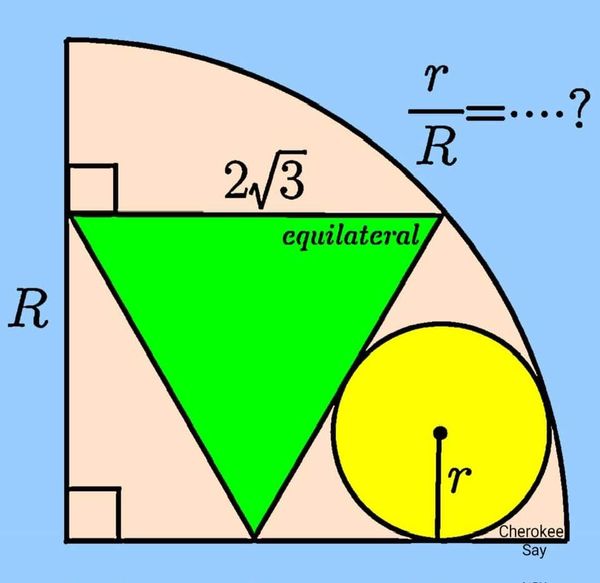
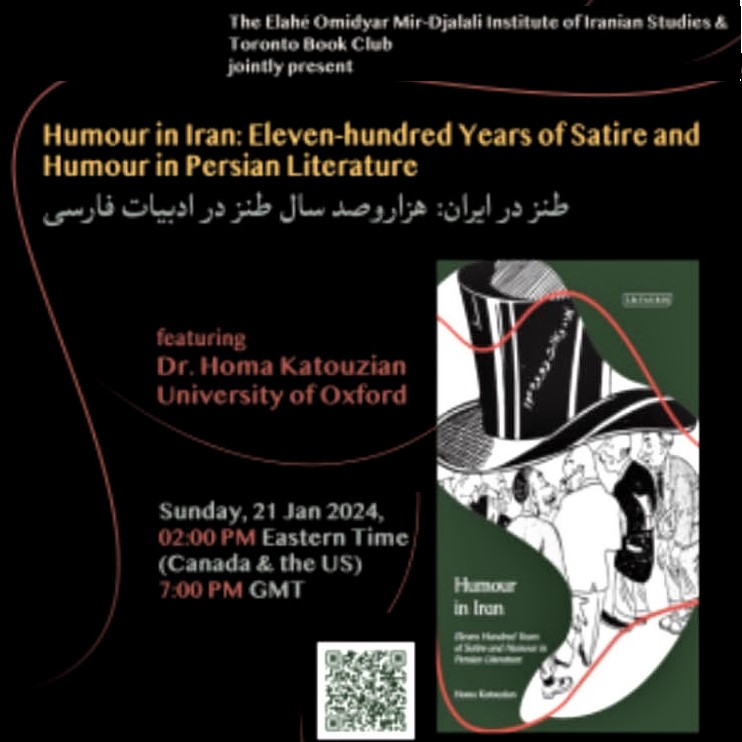 (1) Images of the day: [Top left] Santa Barbara the beautiful: Ads for real-estate agencies (not my photos). [Top center] Los Angeles' first freeway is hopelessly outdated—and dangerous, due to narrow lanes and super-short on- and off-ramps—but people love it. The first portion of the historic Arroyo Seco Freeway, connecting Pasadena to downtown LA, opened in 1940 and had a speed limit of 45 mph. [Top right] Earth's beautiful nature: From various Internet travel ads (not my photos). [Bottom left] Meme of the day: Stop War! [Bottom center] Math puzzle: Find the ratio r/R of the radius of the yellow circle to the radius of the orange quarter-circle. [Bottom right] Book talk on history of satire and humor in Iran (see the last item below).
(1) Images of the day: [Top left] Santa Barbara the beautiful: Ads for real-estate agencies (not my photos). [Top center] Los Angeles' first freeway is hopelessly outdated—and dangerous, due to narrow lanes and super-short on- and off-ramps—but people love it. The first portion of the historic Arroyo Seco Freeway, connecting Pasadena to downtown LA, opened in 1940 and had a speed limit of 45 mph. [Top right] Earth's beautiful nature: From various Internet travel ads (not my photos). [Bottom left] Meme of the day: Stop War! [Bottom center] Math puzzle: Find the ratio r/R of the radius of the yellow circle to the radius of the orange quarter-circle. [Bottom right] Book talk on history of satire and humor in Iran (see the last item below).
(2) On punctuality: If you join a webinar and at 11:05 you get the message "Wait, the webinar starts at 11:00 and at 11:10 they are still playing elevator music, you know that it is organized by Iranians!
(3) Capturing the dynamics of long-term changes: The camera that is designed to take a single image of a Tucson, AZ, landscape over the next 1000 years.
(4) Why you can't tickle yourself: According to The Accidental Mind, a fascinating book I am reading, the cerebellum predicts our sensations and signals other brain regions to subtract the "expected" sensation from the "total" sensation, making the "net" sensation near-zero. This relativism is helpful because the brain should focus on unexpected sensations, which may correspond to danger. We now know that some humans who sustain damage to the cerebellum are unable to generate predictions and can thus tickle themselves.
(5) Today's University of Toronto book talk: Dr. Homa Katouzian (economist, historian, political scientist, literary critic; U. Oxford) spoke under the title "Humor in Iran: Eleven-Hundred Years of Satire and Humor in Persian Literature." The talk was based on a 2024 I. B. Tauris book by the same title. There were ~130 attendees. As a side note, "Homa" is usually a female name in Persian, but Dr. Homa Katouzian [1942-] is a man who uses the literary name "Homa" as a shorthand for "Homayoun."
Combining Persian original texts with some English translations, the book, which is aimed at both scholars and ordinary readers, covers 11 centuries of satire, irony, & humor in Persian verse & prose. The Persian literary tradition includes various forms of humor, from the coarse and obscene to the subtle and refined. The sources range from Ferdowsi's epic Shahnameh, master satirists such as Obeyd Zakani, Sa'di, Rumi, Khayyam, Hafiz, Anvari, Sana'i, Khaqani, Suzani, Qa'ani, & Yaghma, ending with 20th-century authors such as Iraj, Dehkhoda, Bahar, Eshqi, Aref, Hedayat, Jamalzadeh, & Al-e Ahmad.
2024/01/20 (Saturday): Presenting selected news, useful info, and oddities from around the Internet.
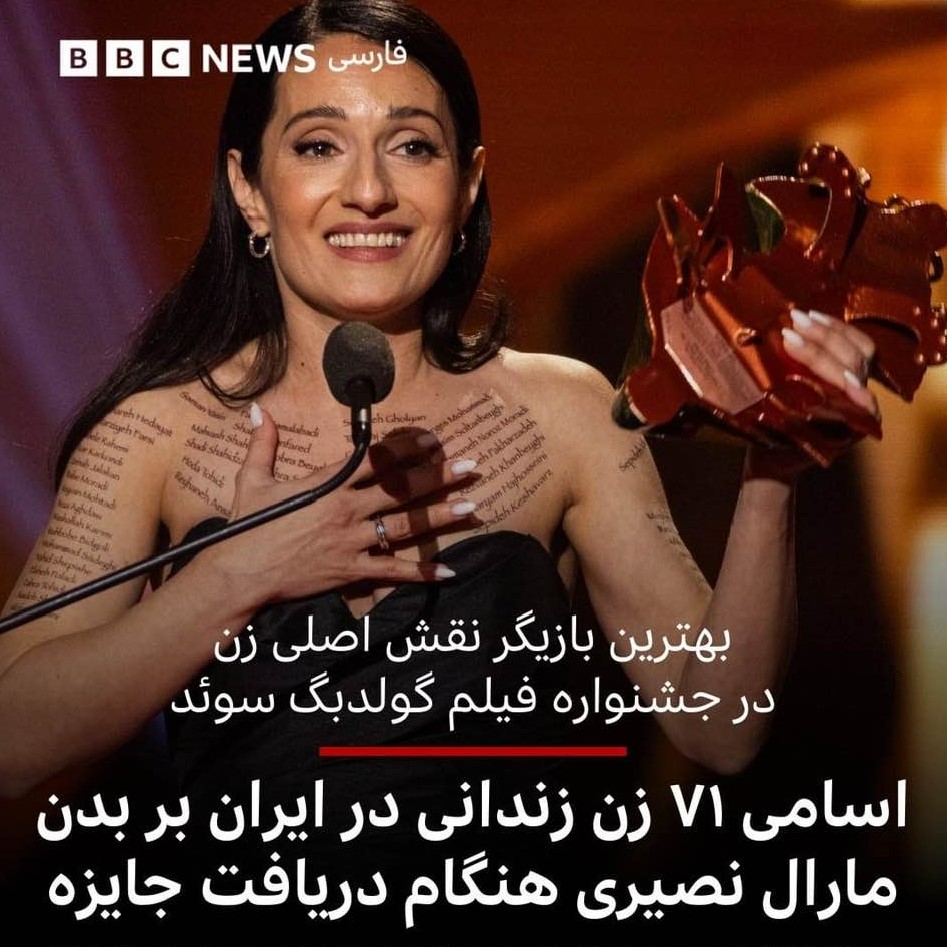
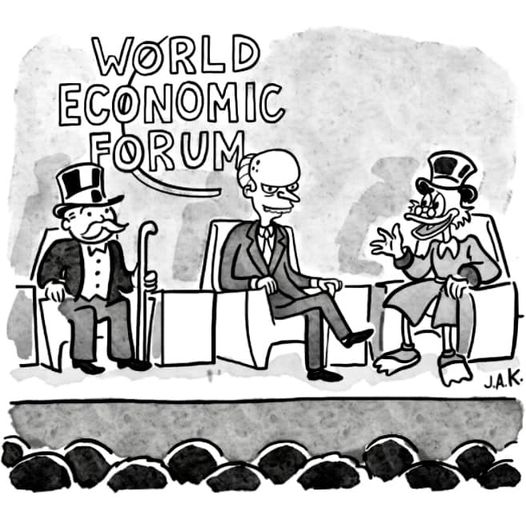

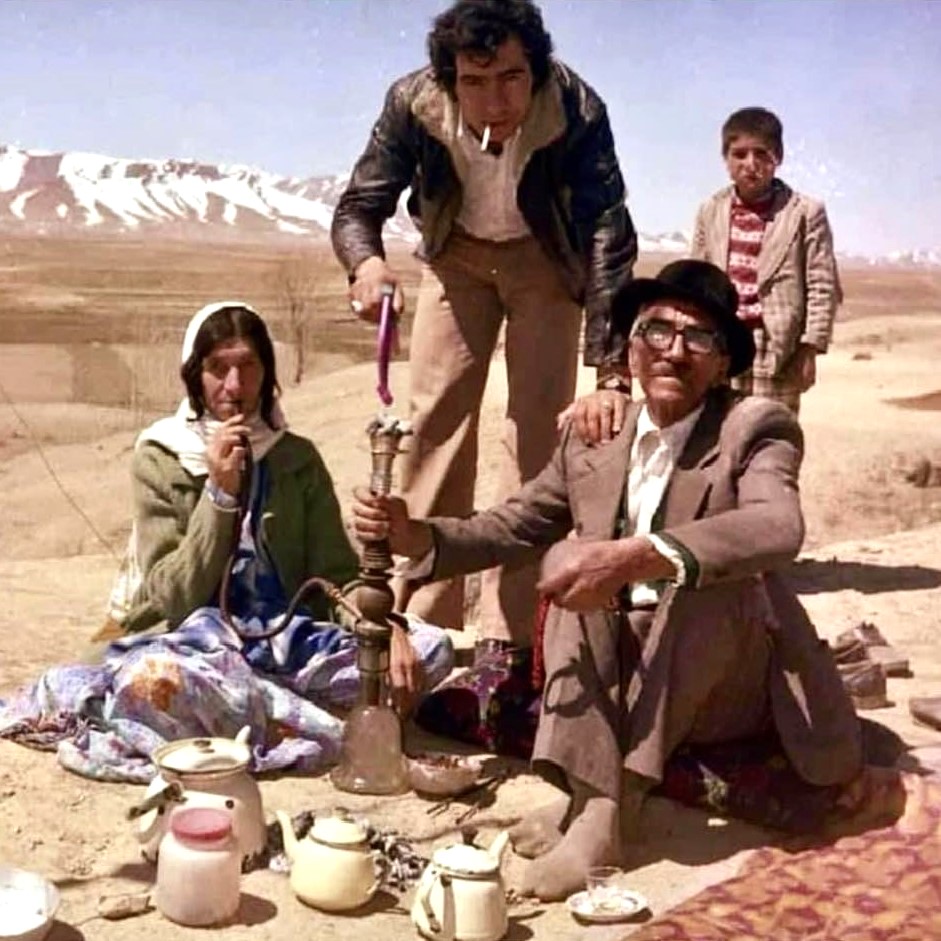

 (1) Images of the day: [Top left] Marall Nasiri wrote the names of 71 Iranian women political prisoners on her body as she accepted an acting award in Sweden. [Top center] New Yorker cartoon of the day: "Everyone on this stage is committed to a future of net-zero income-tax payments." [Top right] For years, Israelis have debated whether it's a good idea to deploy women soldiers on the front lines, given the atrocities they may face in the event of being captured. As discussion goes on, these women soldiers continue to serve as before. [Bottom left] A family picnic in rural Iran. [Bottom center] The S&P 500 index hits an all-time high, as it inches toward 5000 (NYT chart). [Bottom right] Today's talk on poet Sohrab Sepehri (see the last item below)
(1) Images of the day: [Top left] Marall Nasiri wrote the names of 71 Iranian women political prisoners on her body as she accepted an acting award in Sweden. [Top center] New Yorker cartoon of the day: "Everyone on this stage is committed to a future of net-zero income-tax payments." [Top right] For years, Israelis have debated whether it's a good idea to deploy women soldiers on the front lines, given the atrocities they may face in the event of being captured. As discussion goes on, these women soldiers continue to serve as before. [Bottom left] A family picnic in rural Iran. [Bottom center] The S&P 500 index hits an all-time high, as it inches toward 5000 (NYT chart). [Bottom right] Today's talk on poet Sohrab Sepehri (see the last item below)
(2) Rain can't dampen women's "Call to Action": The 8th annual Women's March took place in Santa Barbara this evening, with the goal "to unite and mobilize our community to take a stand against the assault on women's rights and democracy." I feel guilty for skipping the event today for the first time since its inception, but here is our local ABC affiliate's report on the event.
(3) One-liners: Brief news headlines, happenings, memes, and other items of general interest.
- Japan became the fifth country to set down a spacecraft on the Moon.
- AlphaGeometry AI program performs on par with gold-medalists in solving Olympiad geometry problems.
- In 2024, US domestic airfares will fall, while international flights will become more expensive. [NYT]
- Museum pieces: I must be one of the last people to get rid of my landline phone service! [Tweet, with photo]
(4) Today's Farhang-Foundation/UCSB talk: Dr. Fatemeh Shams (social literary historian & poet, U. Penn) spoke under the title "Sohrab Sepehri's Modernist Mission."
Sohrab Sepehri (1928-1980) is celebrated by some as one of Iran's greatest poets who inspired experimentalist modernist poets of his generation. He has also been criticized as being aloof and detached from societal realities. Dr. Shams introduced Sepehri's modernist mission and tried to rehabilitate the importance of his oeuvre by focusing on the between-ness and otherness that is central to his work.
Through a close reading of Sepehri' s Eight Books (Hasht Ketaab), Dr. Shams elaborated on ways in which Sepehri transcended the rigid boundaries of ideology and dialectical identity by inviting the reader into an imaginative space of aesthetic, existential, epistemological fluidity, and freedom.
Dr. Shams recited several of Sepehri's poems, including "A Garden in Sound," in Persian, while showing her English translations of the verses on projected slides. Sepehri's poetry has become very popular in post-Revolution Iran, because his words provide people refuge from hardships and oppression.
P.S.: Writing in The New Yorker, Neima Jahromi discusses Sohrab Sepehri's poetry, under the title "Poetry and Politics in Iran."
2024/01/18 (Thursday): Presenting selected news, useful info, and oddities from around the Internet.


 (1) Images of the day: [Left] Throwback Thursday (1): The entrance of Bagh-e Golshan Cafe in Tehran's Shah-Abad Ave., opposite Sepahsalar Garden. The restaurant was open past midnight and featured live musical entertainment by popular singers of the day. [Center] Math puzzle: Find the ratio of the areas of the squares. [Right] Throwback Thursday (2): My aunt Soury's family, shortly after they immigrated to Israel in the 1940s.
(1) Images of the day: [Left] Throwback Thursday (1): The entrance of Bagh-e Golshan Cafe in Tehran's Shah-Abad Ave., opposite Sepahsalar Garden. The restaurant was open past midnight and featured live musical entertainment by popular singers of the day. [Center] Math puzzle: Find the ratio of the areas of the squares. [Right] Throwback Thursday (2): My aunt Soury's family, shortly after they immigrated to Israel in the 1940s.
(2) Berkeley Lecture Series (in Persian): Dr. Nayereh Tohidi will speak under the title "Iran in a Transformative Process by Woman, Life, Freedom." Sunday, Jan. 21, 2024, 11:00 AM PST. [In-person and on Zoom]
(3) Iran's Supreme Leader advocates for a referendum among Palestinians to choose their form of government, but when it comes to Iran, he maintains that lay people aren't sophisticated enough to choose properly.
(4) One-liners: Brief news headlines, happenings, memes, and other items of general interest.
- Retaliating for Iran's missile strikes, Pakistan attacks several points in Saravan, southeastern Iran.
- Persian music: Mostafa Maddahi sings & plays the tar, as the song's composer weeps in the audience.
- Persian music: Viguen performs "Mahtab," his own composition, with lyrics by Nasser Rastegar-Nejad.
- Piano maestro Anoushirvan Rohani and singer Homayoun Shajarian in a January 2024 Toronto concert.
- Wednesday's World Music Series concert by Los Catanes del Norte. [Video 1] [Video 2]
- A scene from the Iranian film "Tomorrow Is Bright," in which singer Delkash performs her own song.
(5) It appears that Supreme Leader Khamenei is trying to goad the US into bombing Iran in order to deflect attention from his regime's many political and economic failings.
(6) Colossus' 80th anniversary: The British Colossus was the first computer to decode German messages for the Allied forces during World War II and is credited by many experts for shortening the war.
(7) Interlinked Computing in 2040: Part of the cover feature of IEEE Computer magazine's January 2024 issue, focusing on safety, truth, ownership, and accountability.
(8) End of tenure at universities? Nebraska is the latest US state to propose legislation for ending tenure at public colleges. The merits of tenure or lack thereof can and has been debated extensively, with meritorious arguments on both sides. However, there will be serious financial implications if some colleges end tenure while others keep it. Colleges that ditch tenure will have to offer much higher salaries to keep and attract talent. For decades, faculty salaries have been much lower than those of industrial positions requiring comparable qualifications. Colleges without tenure will be in direct competition with industry for talent.
2024/01/16 (Tuesday): Presenting selected news, useful info, and oddities from around the Internet.
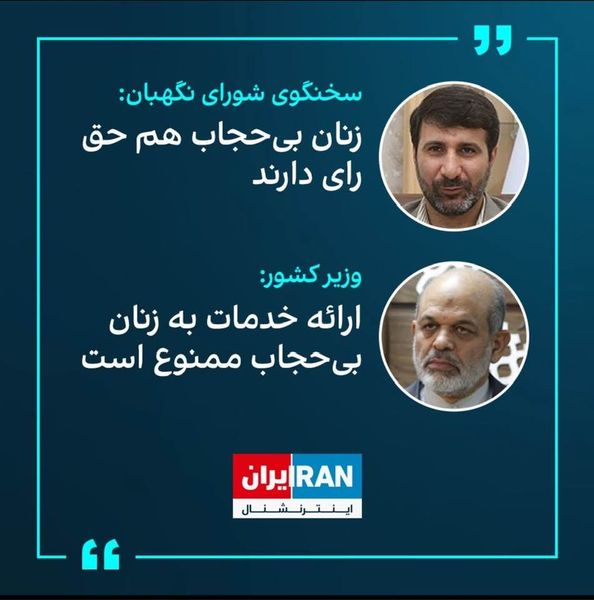


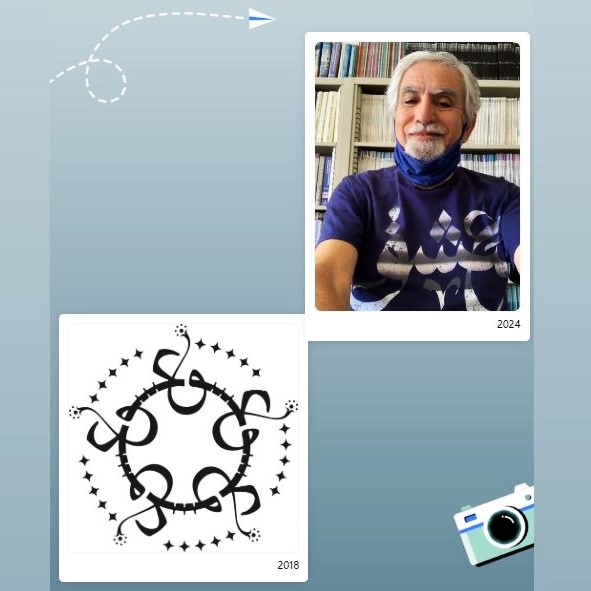

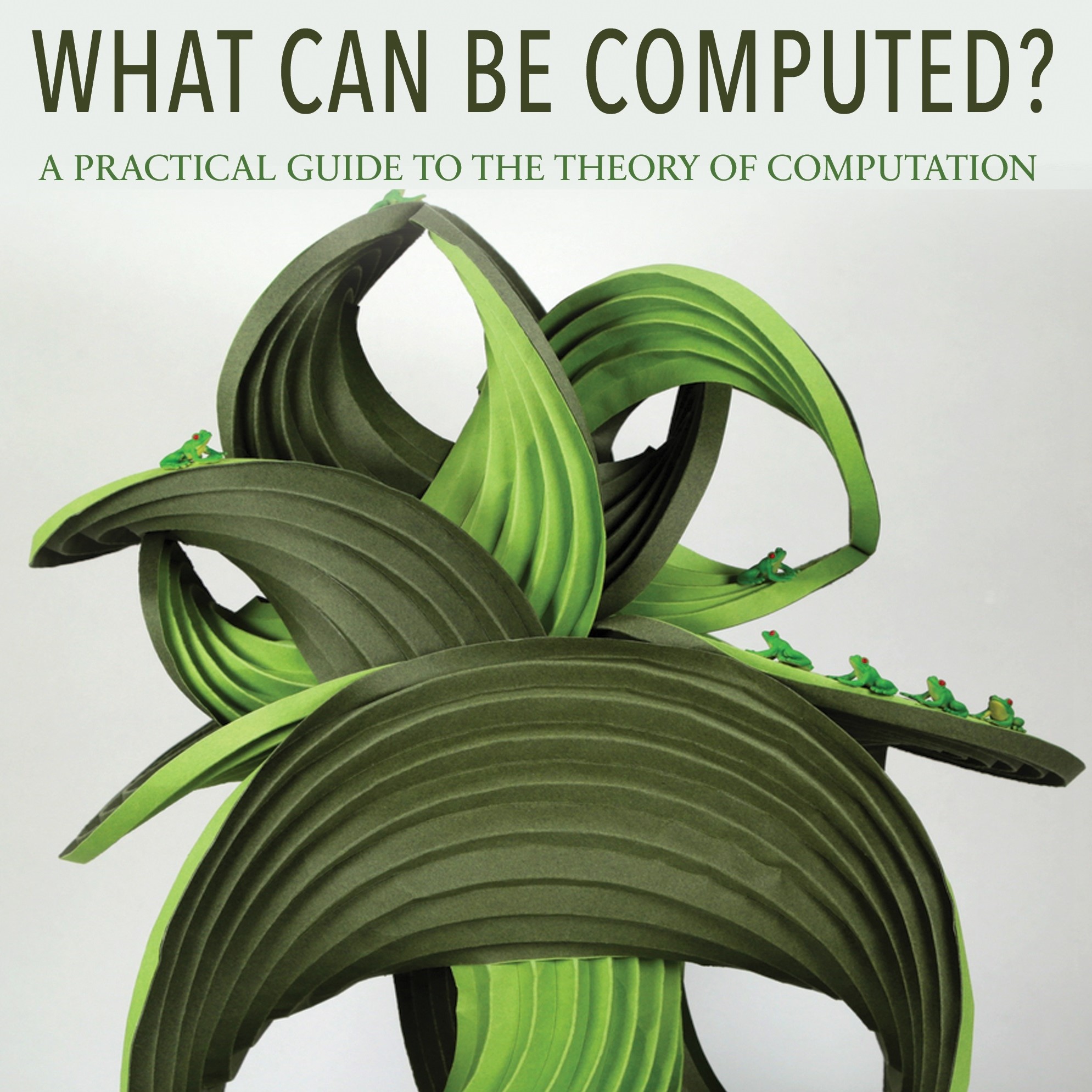 (1) Images of the day: [Top left] Iran's two-faced Islamic regime: One official says that hijabless women have the right to vote (to boost participation figures). Another says the government has banned offering services to hijabless women. [Top center] Iranian architecture: The Ameri-ha Historical House, Kashan, Iran, was built in the second half of the 18th century. The massive house covers 9000 square meters and has 85 rooms, two bath-houses, and 7 courtyards adorned with gardens and fountains. [Top right] A humbling space fact: Removing the Earth from the Milky Way Galaxy doesn't change it a bit. [Bottom left] Then (2018) and now (2024): Facebook-generated post. [Bottom center] Math puzzle: In this diagram with two circles of known areas, what is the square's area? (Note: Diagram not to scale) [Bottom right] John MacCormick's What Can Be Computed (see the next item below).
(1) Images of the day: [Top left] Iran's two-faced Islamic regime: One official says that hijabless women have the right to vote (to boost participation figures). Another says the government has banned offering services to hijabless women. [Top center] Iranian architecture: The Ameri-ha Historical House, Kashan, Iran, was built in the second half of the 18th century. The massive house covers 9000 square meters and has 85 rooms, two bath-houses, and 7 courtyards adorned with gardens and fountains. [Top right] A humbling space fact: Removing the Earth from the Milky Way Galaxy doesn't change it a bit. [Bottom left] Then (2018) and now (2024): Facebook-generated post. [Bottom center] Math puzzle: In this diagram with two circles of known areas, what is the square's area? (Note: Diagram not to scale) [Bottom right] John MacCormick's What Can Be Computed (see the next item below).
(2) Book review: MacCormick, John, What Can Be Computed? A Practical Guide to the Theory of Computation, Princeton, 2018.
[My 4-star review of this course on GoodReads]
Theory of computation is the primary link between computer science and mathematics. Because of its requirement for rigor, theory of computation is often considered to be inaccessible to those who are not mathematically trained. This book attempts to bridge the gap by maintaining mathematical rigor in discussing topics in the theory of computation, while also linking the concepts to practical applications by encouraging active experimentation via computer programs in Python and Java.
Fundamental notions of the field, including Turing machines, finite automata, universal computation, nondeterminism, Turing & Karp reductions, undecidability, and complexity classes, including P & NP, are covered, as are the connections between undecidability and Godel's incompleteness theorem and Karp's famous set of 21 NP-complete problems. The presentation makes the field, usually the purview of graduate courses, accessible to undergraduate students.
The book essentially answers the following question affirmatively: "Is there anything that computers will never be able to do, no matter how fast the hardware or how smart the algorithms?" This verdict is in contrast to Rene Descartes famous statement: "There cannot be any [truths] that are so remote that they are not eventually reached nor so hidden that they are not discovered."
The book is subdivided into an overview (Chapter 1) and two parts: Computability Theory (Chapters 2-9) and Computational Complexity Theory (Chapters 10-14).
- Introduction: What Can and Cannot Be Computed?
- What Is a Computer Program?
- Some Impossible Python Programs
- What Is a Computational Problem?
- Turing Machines: The Simplest Computers
- Universal Computer Programs: Programs that Can Do Anything
- Reductions: How to Prove a Problem Is Hard
- Nondeterminism: Magic or Reality?
- Finite Automata: Computing with Limited Resources
- Complexity Theory: When Efficiency Does Matter
- Ply and Expo: The Two Most Fundamental Complexity Classes
- PolyCheck and NPoly: Hard Problems that Are Easy to Verify
- Polynomial-Time Mapping Reductions: Proving X Is as Easy as Y
- NP-Completeness: Most Hard Problems Are Equally Hard
2024/01/15 (Monday): Presenting selected news, useful info, and oddities from around the Internet.




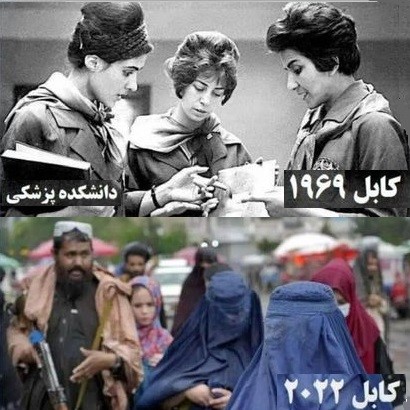
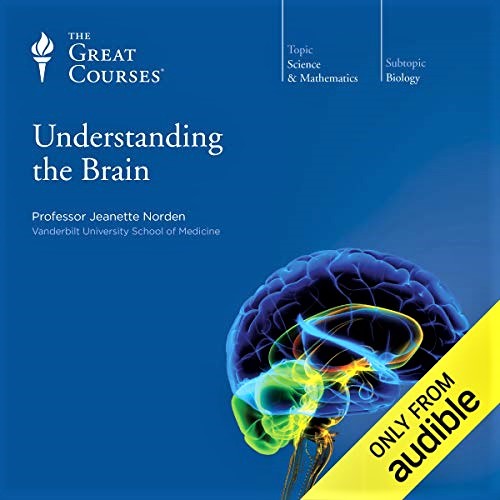 (1) Images of the day: [Top left & center] Today, we honor the memory of Dr. Martin Luther King, among whose memorable statements is the following: "We need leaders not in love with money, but in love with justice. Not in love with publicity, but in love with humanity." [Top right] Israel is the only country in the Middle East to name a street after MLK, who was a Zionist. [Bottom left] Reporters who were imprisoned for exposing the death of #MahsaAmini (see the next item below). [Bottom center] Kabul, Afghanistan, in 1969 (55 years ago) and in 2022. [Bottom right] Understanding the Brain (see the last item below).
(1) Images of the day: [Top left & center] Today, we honor the memory of Dr. Martin Luther King, among whose memorable statements is the following: "We need leaders not in love with money, but in love with justice. Not in love with publicity, but in love with humanity." [Top right] Israel is the only country in the Middle East to name a street after MLK, who was a Zionist. [Bottom left] Reporters who were imprisoned for exposing the death of #MahsaAmini (see the next item below). [Bottom center] Kabul, Afghanistan, in 1969 (55 years ago) and in 2022. [Bottom right] Understanding the Brain (see the last item below).
(2) Islamic Republic of Iran: A country where insider criminals get away with a slap on the wrist but those reporting on crimes serve long prison terms. These two women, who reported on the death of #MahsaAmini while in custody of the Morality Police, were just released from prison temporarily by posting huge bails and were immediately charged with new "crimes" for going hijabless! [#WomanLifeFreedom]
(3) "And Kill Them Wherever You Find Them": Name of Islamic State's operation for solidarity with Gaza. The suicide bombing at Qasem Soleimani's memorial in Iran was the first step of this operation.
(4) One-liners: Brief news headlines, happenings, memes, and other items of general interest.
- Ron DeSantis is 2nd in Iowa & Nikki Haley finishes 3rd: 4th-place Vivek Ramaswamy ends his campaign.
- Nobel Peace Laureate Narges Mohammadi's prison sentence is extended by the Mullahs' regime in Iran.
- Full list of Emmy Awards: "The Bear" and "Succession" led with 6 wins each, while "Beef" followed with 5.
- An iPhone sucked out of a missing door in an Alaska Airlines mishap survived 16,000-foot fall to the ground.
(5) SAT seems to be winning the war waged on it: Highly-selective colleges are slowly returning to requiring SAT scores, citing their strong correlation with college performance, as measured by academic GPA.
(6) Elsevier journal Microprocessors and Microsystems has retracted all articles in a 2021 special issue guest-edited by Vimal Shanmuganathan, citing substandard rigor in the peer-review process.
(7) Course review: Norden, Jeanette, Understanding the Brain, 36 lectures in the Great Courses Series, The Teaching Company, undated. [My 4-star review of this course on GoodReads]
This course, designed and taught by Professor Jeanette Norden (School of Medicine, Vanderbilt U.), begins with "Historical Underpinnings of Neuroscience" (Lecture 1) and ends with "Neuroscience—Looking Back and Looking Ahead" (Lecture 36), visiting along the way topics such as brain structure, central nervous system, neurotransmitters, stroke, visual & auditory systems, depression, the reward system, brain plasticity, emotion & executive function, sleep & dreaming, consciousness, Alzheimer's, and effects of stress.
On this Web page you can find a list of lecture titles and a brief description of each lecture.
2024/01/14 (Sunday): Presenting selected news, useful info, and oddities from around the Internet.


 (1) Images of the day: [Left] So, you say the January 6 insurrection wasn't planned? How do you explain these T-shirts? [Center] New Yorker cartoon of the day: Snow White and her agent, accountant, lawyer, life coach, personal assistant, publicist, and stylist. [Right] IranWire cartoon of the day: The Ayatollah and his lash.
(1) Images of the day: [Left] So, you say the January 6 insurrection wasn't planned? How do you explain these T-shirts? [Center] New Yorker cartoon of the day: Snow White and her agent, accountant, lawyer, life coach, personal assistant, publicist, and stylist. [Right] IranWire cartoon of the day: The Ayatollah and his lash.
(2) North Korea is rated as the world's most-hellish country: Afghanistan is second. The Taliban are just as brutal, but they don't have a competent security apparatus. The documentary "Beyond Utopia," filmed on iPhones and currently vying for an Oscar nomination, chronicles a family's secret escape out of North Korea.
(3) With each new technology, we hear claims that it will revolutionize education: Yet, by and large, we still teach through a teacher meeting in-person with a number of students. What gives?
(4) One-liners: Brief news headlines, happenings, memes, and other items of general interest.
- Tal Becker's speech on behalf of Israel at the international court considering accusations of genocide.
- Today's amazing science fact: Electromagnetism explained via special relativity.
- Dangerous elevators: A small number of Paternoster or doorless lifts are still operating in parts of Germany.
- A new rendition of an old popular song from southwestern Iran. [1-minute video]
(5) With the lowering of dammed reservoirs on Klamath River, the largest dam removal project in US history entered a critical phase this week.
(6) Zero-proof bars are sprouting across the country: Non-alcoholic brews and spirits serve customers who seek out health & wellness alternatives in their drinking routines. At $400 million in annual sales, they form a tiny share of the market right now, but they are projected to grow to about 30% of the total market.
(7) Best-Presentation Award: My January 9, 2024, talk at the IEEE 14th Annual Computing and Communication Workshop and Conference was honored with a Best-Presentation Award. Here's a 14-minute recording of the practice version of my talk entitled "Recursive Implementation of Voting Networks." And here's the PDF paper.
(8) The next real estate crisis is looming: Empty offices in NYC and other major urban centers, along with ~40% price drop since the pandemic, are about to crush big banks, who are kicking the can down the road.
(9) American neurosurgeon Ali Rezai is pioneering ways to try to help people with drug addiction and with Alzheimer's disease. One experiment focuses beams of ultrasound on the brain.
2024/01/12 (Friday): Presenting selected news, useful info, and oddities from around the Internet.


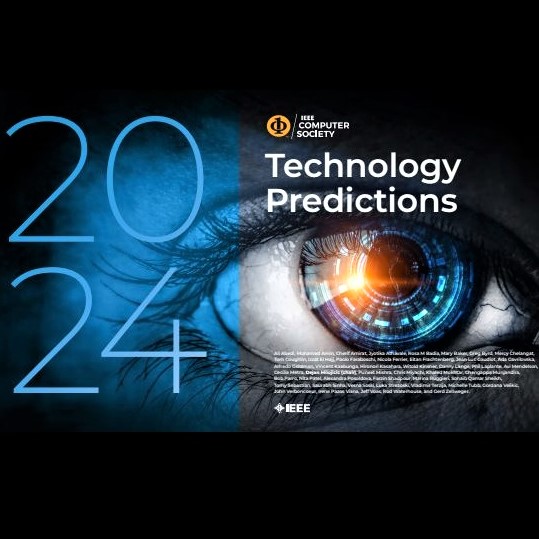
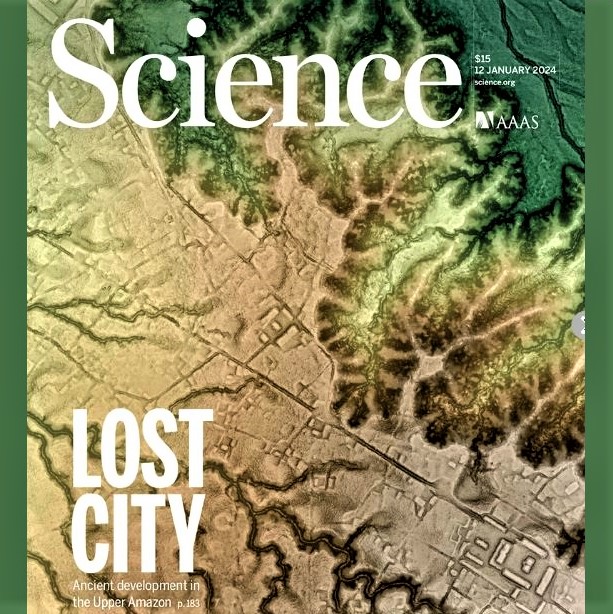

 (1) Images of the day: [Top left] The magnificent Dimond Head Volcano in Hawaii. [Top center] How war is spreading in the Middle East: New York Times infographic. [Top right] Promising information technologies for 2024 (see the next item below). [Bottom left] Lost city in the upper Amazon unearthed: The dense system of pre-Hispanic urban centers consists of an anthropized landscape with clusters of monumental platforms, plazas, and wide streets running over great distances, intertwined with extensive agricultural drainages and terraces. Period of occupation: From about 500 BCE to 300-600 CE. [Bottom center] Would-be dictator Donald Trump marches ahead, despite criminal indictments, civil lawsuits, and criticism from "mainstream" Republicans. [Bottom right] In this image, Earth is compared in size to the much larger Jupiter, which has a diameter of ~11 times that of Earth, giving it a volume of ~1300x.
(1) Images of the day: [Top left] The magnificent Dimond Head Volcano in Hawaii. [Top center] How war is spreading in the Middle East: New York Times infographic. [Top right] Promising information technologies for 2024 (see the next item below). [Bottom left] Lost city in the upper Amazon unearthed: The dense system of pre-Hispanic urban centers consists of an anthropized landscape with clusters of monumental platforms, plazas, and wide streets running over great distances, intertwined with extensive agricultural drainages and terraces. Period of occupation: From about 500 BCE to 300-600 CE. [Bottom center] Would-be dictator Donald Trump marches ahead, despite criminal indictments, civil lawsuits, and criticism from "mainstream" Republicans. [Bottom right] In this image, Earth is compared in size to the much larger Jupiter, which has a diameter of ~11 times that of Earth, giving it a volume of ~1300x.
(2) IEEE Computer Society's 2024 Technology Predictions Report: The domains of predictions, listed in order from high-potential (graded A/B) to low-potential (graded C/D), include generative AI applications, next-generation AI, advances in cybersecurity, managing misinformation, remote healthcare, digital twins for vertical applications, new 3D printing applications, new programming models, Reliability, autonomic autonomous and hybrid systems, energy resources for powering data centers, sustainable ICT, regenerative agri-tech, non-terrestrial networks, new battery chemistry and architecture, low-power AI accelerators, alternate material for electro machines, alternate materials for electro machines, cost-effective recycling of batteries, metaverse, accessible quantum computing, and satellite (constellation) recycling.
(3) A question about time: Lines of longitude on Earth demark time (every 15 degrees is one time zone). But these lines all meet at the poles. So, what time is it at the poles?
(4) One-liners: Brief news headlines, happenings, memes, and other items of general interest.
- Harvard accused in federal lawsuit of not protecting Jewish students against intimidation and harassment.
- US FDA scientists recommend that the feds remove marijuana from its most restrictive category of drugs.
- Tomorrow's presidential election in Taiwan is more about economic woes than the threat from China.
- How we used to calculate pi and how Newton simplified the process by a series of brilliant discoveries.
- Periodic & aperiodic tilings of the plane and their relationship to crystals no one thought could exist.
- Ancient city, with sophisticated networks of roads & canals, found under vegetation in Amazon Forest.
(5) Today's surprising space fact: The first human-made object to reach space was Soviet Union's satellite Sputnik 1, which was launced on October 4, 1957.
(6) Get to know Donald Trump: His lawyer argued in court this week that former presidents are immune from prosecution even for any murders they ordered while in office. [New York Times report]
(7) Samantha Rose Hill, Hana Arendt biographer, explains how Arendt's writings on evil and totalitarianism found new popularity after the election of Donald Trump in 2016. [Video]
(8) An insightful analysis of the political dilemma facing American Muslims: After 9/11, American Muslims formed progressive alliances, leaving their Republican ties behind, despite the fact that their religious leaders remained staunchly conservative. Hamas atrocities of 10/7 again challenges their political leanings.
2024/01/11 (Thursday): Presenting selected news, useful info, and oddities from around the Internet.
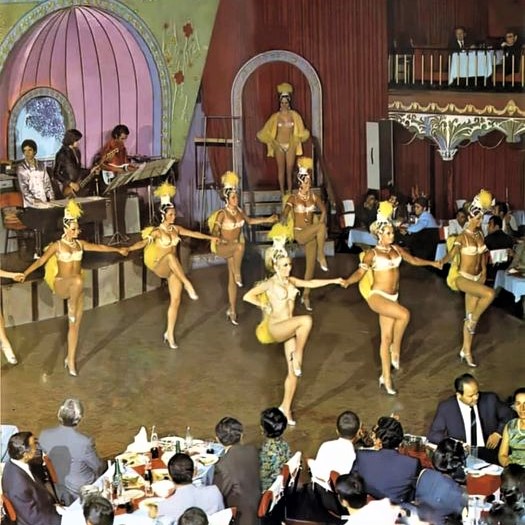

 (1) Images of the day: [Left] Throwback Thursday: Baccarat Cabaret in Tehran, Iran, 1974. Believe it or not, families frequented the cabaret, located in the basement of Atlantic Cinema on Pahlavi Avenue. It was more like a restaurant with entertainment than a genuine cabaret. [Center] Tonight's Talangor Group talk on emotional machiavellism (see the next item below). [Right] Liz Cheney's Oath and Honor (see the last item below).
(1) Images of the day: [Left] Throwback Thursday: Baccarat Cabaret in Tehran, Iran, 1974. Believe it or not, families frequented the cabaret, located in the basement of Atlantic Cinema on Pahlavi Avenue. It was more like a restaurant with entertainment than a genuine cabaret. [Center] Tonight's Talangor Group talk on emotional machiavellism (see the next item below). [Right] Liz Cheney's Oath and Honor (see the last item below).
(2) Tonight's Talangor Group talk: Dr. Arash Taghavi spoke under the title "Emotional Machiavellism: An Introduction to Emotional Deception." Before the main talk, Dr. Ryan Homafar gave a short presentation on "Justice and Politics," in which he pondered the question of whether justice can be viewed as a necessity of politics, that is, a right, rather than a moral nicety, viz. an optional add-on. There were ~75 attendees.
Emotional manipulation is common in sociopolitical settings and in personal relationships. We try to emotionally manipulate others for three reasons: Gaining benefits; Maintaining power; Avoiding responsibility. Religions manipulate their followers by inducing guilt. Other methods used include threatening, gaslighting, invoking pity, and tantalizing (deceptive praise).
We all manipulate others emotionally and are manipulated in return to some extent. So, learning the signs of emotional manipulation is important to our well-being. Many of us Iranians have had emotionally manipulative parents. However, rather than blaming such parents, we should recognize that they are products of their upbringing and experiences. It is up to us to protect ourselves against such manipulations.
Lack of susceptibility to emotional manipulation is a sign of emotional maturity.
(3) One-liners: Brief news headlines, happenings, memes, and other items of general interest.
- Donald Trump: "January 6 was a beautiful day." Vote for him if you want more such beautiful days!
- US missiles hit Houthi targets, after the Iran-backed group threatened shipping safety in the Red Sea.
- Quote of the day: "Illusion of knowledge is more dangerous than ignorance." ~ Physicist Richard Feynman
- The Drake Passage at the southern tip of South America and other dangerous waters of the Antarctic Circle.
(4) Book review: Cheney, Liz, Oath and Honor: A Memoir and a Warning, unabridged 12-hour audiobook, read by the author, Little, Brown & Company, 2023. [My 4-star review of this book on GoodReads]
This is an important book, telling the story of the House Select Committee to Investigate the January 6th Attack on the United States Capitol, interwoven with biographical information about Liz Cheney's life in Wyoming and Washington, DC, as well as about her father, former US Vice President Dick Cheney.
>Oath and Honor is as much an indictment of Donald Trump as it is a slap at her fellow-Republicans, who enabled and excused his immoral and narcissistic behavior. Cheney names multiple cowardly Republicans who publicly supported Trump out of political expediency, while criticizing him in private.
The writing is straightforward and at times repetitive. Cheney's tone is angry, which is quite natural, given what she went through before and after she served on the House Select Committee. She fell out of love with the Republican party she previously adored. Cheney was stripped of her leadership position in the House
Republican caucus and was later defeated in her re-election bid by a Trump-endorsed candidate.
The "warning" part of the book is about the real danger of Trump returning to the White House and completing what he couldn't do during his first term, because even his hand-picked officials and aides didn't go along with his crazy, anti-Constitutional schemes. The lies that Trump and his collaborators continue to perpetuate, and their schemes to get rid of public servants in the government, constitute real and present danger to the US democratic institutions and traditions.
As I write this review, Donald Trump faces 91 felony counts in federal and state courts, as well as multiple civil lawsuits, which may land him in jail and/or ruin him financially. Yet his support base continues to be strong, as if nothing has happened. The year 2024 will be a real test of the US system of justice and its safeguards against authoritarian tendencies in our leaders. If we emerge unscathed from this challenge, it is in no small part due to the courage exhibited by Liz Cheney.
2024/01/10 (Wednesday): Presenting selected news, useful info, and oddities from around the Internet.
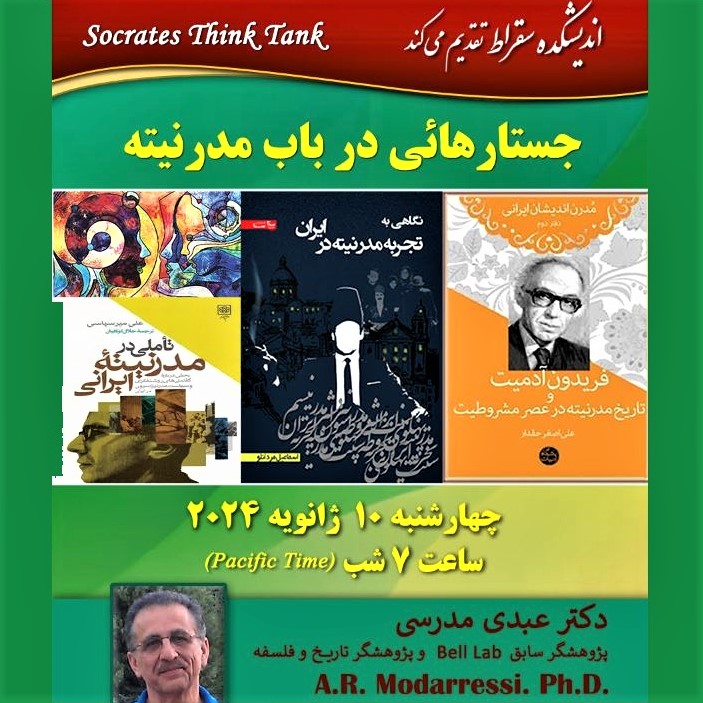

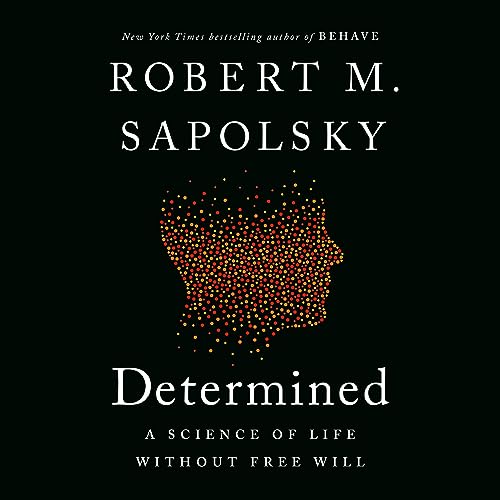 (1) Images of the day: [Left] Socrates Think Tank talk on modernity (see the next item below). [Center] Father of the Internet, Robert Kahn, recognized with an IEEE Medal of Honor: Medals also given to other pioneers. [Right] Robert M. Sapolsky's Determined: A Science of Life without Free Will (see the last item below).
(1) Images of the day: [Left] Socrates Think Tank talk on modernity (see the next item below). [Center] Father of the Internet, Robert Kahn, recognized with an IEEE Medal of Honor: Medals also given to other pioneers. [Right] Robert M. Sapolsky's Determined: A Science of Life without Free Will (see the last item below).
(2) Tonight's Socrates Think Tank talk: Dr. Abdi Modarressi spoke under the title "Musings/Inquiries on Modernity." There were ~145 attendees.
Modernity has two aspects: Physical modernization (renewal) and cultural modernity (enlightenment). Physical modernization and cultural modernity do not necessarily go hand in hand. The related term "modernism" refers to the manifestation of modernity in art styles.
Most societies, regardless of their development level, have embraced physical modernization (what the speaker called the "hardware" dimension of modernity). Physical modernization has no cultural prerequisites and can bring benefits to societies, whether or not they understand the technology and regardless of their ability to create the technology locally.
Cultural modernity (the "software" dimension) is a lot trickier and few societies outside Europe, the birthplace of modernity, have been able to achieve it (Japan being a notable exception). Iran had several opportunities, including during the Golden Age of Eastern Science & Arts and after the Constitutional Revolution, to make headway in this regard, but reactionary forces prevailed in both instances.
(3) US FDA issues a nationwide alert against taking tianeptine: Also known as "gas station heroine" (because it is sold at many gas-station convenience stores), the substance had been associated with overdoses and deaths.
(4) One-liners: Brief news headlines, happenings, memes, and other items of general interest.
- Each container of bottled water contains hundreds of thousands of microscopic pieces of plastic.
- Work done 35 years ago in Macedonia to control a robot with brain waves honored as an IEEE Milestone.
- Congrats to Janet Afary & Kamran Afary for winning a second book prize for their Molla Nasreddin.
- Facebook memory from Jan. 10, 2018: The day when US 101 near Santa Barbara looked like a river.
(5) Today's surprising space fact: The largest volcano in the solar system is Olympus Mons on Mars. It has a height 3 times that of Mt. Everest.
(6) Book review: Sapolsky, Robert M., Determined: A Science of Life without Free Will, unabridged 17-hour audiobook, read by Kaelo Griffith, Penguin Audio, 2023. [My 4-star review of this book on GoodReads]
The book's intentionally ambiguous title reflects the two parts of its message: The science of why there is no free will and the science of how we can best live once we accept this fact.
I have recently reviewed two concise books on free will or lack thereof. In 96 pages, Sam Harris argues persuasively that free will is an inherently flawed and incoherent concept (my review). As I wrote in my review of Free Will: A Very Short Introduction (132 pp.), Western philosophers holding various views on the topic of free will are classified, roughly, as incompatibilists, compatibilists, sceptics, and libertarians.
- Incompatibilists believe that the whole universe is defined by causal determinism, making free will impossible. All of our actions have root causes that are beyond our control. Put another way, free will is incompatible with determinism. Therefore, some philosophers reject causal determinism.
- Compatibilists think that even if we accept causal determinism, we can still have freedom of action, because only the decision to act is generated deterministically, not the ensuing voluntary action itself.
- Sceptics subscribe to incompatibilism but think that even if the universe is not causally determined, it is impossible to act freely, since what is left is chance. In other words, actions are random outcomes of chance events, with will playing no role.
- Libertarians believe that a universe determined in part causally and in part randomly leaves room for the freedom to decide on the actions taken. Alongside random & deterministic factors which make up the universe, there is a part of the human consciousness which decides independently. This kind of free will is neither a product of chance nor a consequence of a deterministic cause, but an agent of action itself.
Sapolsky begins by discussing the four viewpoints above, as well as their various shades and combinations, relating each category to moral responsibility & punishment, and continuing with the declaration that his goal "isn't to convince you that there is no free will; it will suffice if you merely conclude that there's so much less free will than you thought that you have to change your thinking about some truly important things."
He then presents quite a few arguments against the existence of free will. Some of the provocatively-titled chapters include "Willing Willpower: The Myth of Grit," "Is Your Free Will Random?" and "The Joy of Punishment." The "Appendix: Neuroscience 101" offers a capsule review of neurons and how they function, so that neuroscientific arguments against free will can be better understood.
2024/01/08 (Monday): Presenting selected news, useful info, and oddities from around the Internet.

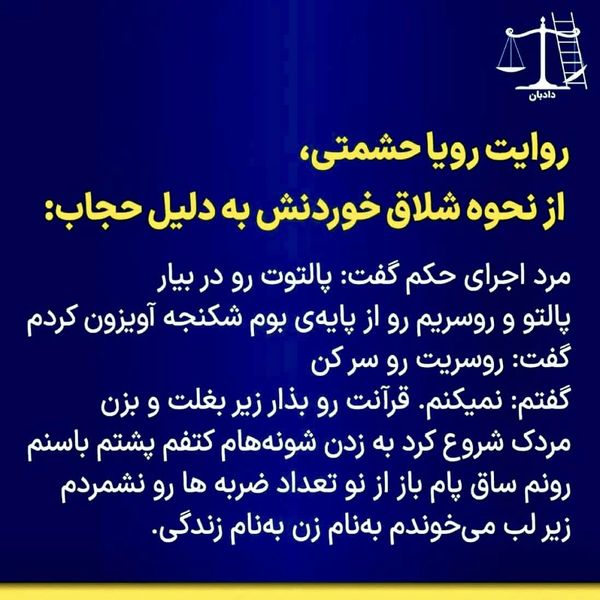


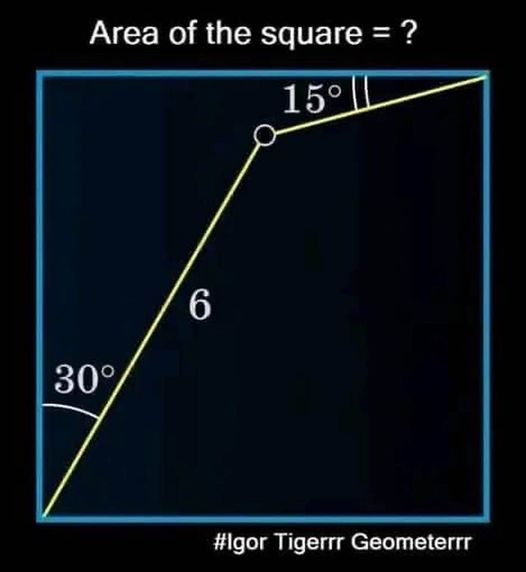
 (1) Images of the day: [Top left] A few Iranian women TV announcers/hosts from the pre-Revolution period. [Top center & right] Roya Heshmati, an Iranian woman who was punished with 74 lashes for refusing to wear the hijab, tells her story. [Bottom left] Celebrating my grand-nephew Aiden's first birthday over the weekend. [Bottom center] Math puzzle: Find the area of the square. [Bottom right] Remembering some of the victims of Ukranian Airlines Flight PS752 (see the last item below).
(1) Images of the day: [Top left] A few Iranian women TV announcers/hosts from the pre-Revolution period. [Top center & right] Roya Heshmati, an Iranian woman who was punished with 74 lashes for refusing to wear the hijab, tells her story. [Bottom left] Celebrating my grand-nephew Aiden's first birthday over the weekend. [Bottom center] Math puzzle: Find the area of the square. [Bottom right] Remembering some of the victims of Ukranian Airlines Flight PS752 (see the last item below).
(2) NASA launches its first Moon-landing mission in 50+ years: The uncrewed commercial spacecraft is expected to land on the Moon on February 23, 2024.
(3) From time to time, I am surprised with the success of one of my social-media posts: A repost about a large language model trained in Persian at U. Tehran received more than 18,000 impressions on LinkedIn. [Image]
(4) One-liners: Brief news headlines, happenings, memes, and other items of general interest.
- Boosting productivity and avoiding overload by streamlining the set of tech tools you use. [Report]
- The complete list of 2024 Golden Globes winners: "Oppenheimer" shines with 5 awards.
- A survey of ~3000 AI researchers indicates a 5% chance that AI will drive humans extinct.
- Santa Barbara Channel Islands history finds a home in Carpinteria.
- A few celebs reaching milestone birthdays (60th, 70th, and 80th). [Image from AARP Magazine]
- Ringo Starr continues the musical tradition of the Fab Four. [Image from AARP Magazine]
(5) Today's surprising space fact: The temperature on the surface of the Moon varies drastically. It ranges from a low of –173 Celsius at night to a high of 127 Celsius during the day.
(6) A final thought, on the fourth anniversary of the downing of Ukrainian Airlines Flight PS752: "Today marks 4 years since the tragic passing of our beloved colleague and co-founder of this lab, Prof. Mojgan Daneshmand, along with her husband Prof. Pedram Mousavi and their daughters, Daria and Dorina." This is how University of Alberta remembers a co-founder of its Microwave, Millimeter-Wave, and MetaDevices (M3) Laboratory.
2024/01/07 (Sunday): Presenting selected news, useful info, and oddities from around the Internet.
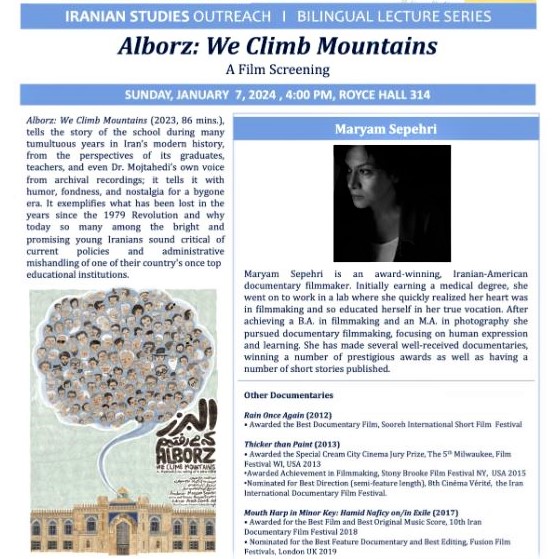

 (1) Images of the day: [Left] Film screening at UCLA (see the next item below). [Center] The exquisite tiling pattern of Nasir-ol-Molk Mosque, Shiraz, Iran. [Right] A talk on intellectualism in Iran (see the last item below).
(1) Images of the day: [Left] Film screening at UCLA (see the next item below). [Center] The exquisite tiling pattern of Nasir-ol-Molk Mosque, Shiraz, Iran. [Right] A talk on intellectualism in Iran (see the last item below).
(2) UCLA Bilingual Lecture Series on Iran: Maryam Sepehri's 86-minute documentary film "Alborz: We Climb Mountains" will be screened in Royce Hall 314. I won't be able to attend and write a report, so I am sharing the information for those who might be interested. [Sepehri's YouTube Channel]
(3) One-liners: Brief news headlines, happenings, memes, and other items of general interest.
- US FDA authorizes Florida to import medications from Canada, where prices are significantly lower.
- Alaska Airlines grounds its 737 Max 9 fleet after one plane lost part of its fuselage during flight.
- Siberia is warming at twice the rate of the Earth: Melting permafrost uncovers history & ancient viruses.
- Astronauts on the International Space Station witness around 16 sunrises and 16 sunsets every day.
- Regional actor Kim Sullivan made it to the big time when he debuted on Broadway at age 70. [Image]
(4) Today's surprising space fact: The Sun is so massive that it accounts for 99.86% of the total mass of our solar system. Its mass is 330,000 greater than the mass of Earth.
(5) Bonus surprising space fact for today: The largest black hole discovered so far is TON 618. Its mass is estimated to be about 66 billion times that of our Sun.
(6) "Intellectualism": As part of UCSalamat series of talks, Dr. Mohammad B. Bagheri presented a continuation of the discussion he began on December 3, 2023. [My report on the first part]
Dr. Bagheri began by reiterating some notions from the talk's first installment. An intellectual is a thinker who also has social concerns, as opposed to just sitting in an ivory tower. The two parts of the term "rowshan-fekr" (Persian for "intellectual"), that is, "rowshan" ("lit" or "bright") and "fekr" ("thought"), have positive connotations. Because of this, Iranians tend to be reluctant to apply the label to anyone who disagrees with them politically. Also, given the long history of dictatorial rule in the country, anyone who collaborates with the government is automatically removed from the circle of intellectuals.
There are three main categories of intellectuals in Iran.
- Western-leaning intellectuals want to bring a version of Western civilization to Iran. They were mistaken in thinking that importing symbols of modernity (household appliances, western-style universities) to Iran would be sufficient for social progress. Their advocacy of changing the Persian script to the Latin script led to a backlash against them. Taghizadeh and Foroughi are apt examples of this group.
- Religious intellectuals (an oxymoron?) subscribe to religious idealism. They believe that religion must play an important role in people's daily lives. This group took advantage of people's distrust of Western intellectuals to advance their agenda. Jalal Al-e Ahmad and Abdolkarim Soroush are good representative of this group. Khomeini-devotee students who raided the US Embassy in Tehran and took hostages fall into this category (the latter group also had Marxist leanings).
- Leftist intellectuals sneakily inserted their viewpoints into the slogans/goals of Iran's 1979 Revolution to gain more power. The deep religious influence among Iranians in the pre-Revolution Iran made people distrustful of leftist ideologies, represented by the Toudeh Party and also several militant leftist or leftist-Islamic groups. Even though many leftist intellectuals were killed by the Islamic regime, their numbers and influence remain strong.
Dr. Mohamad Bagher Bagheri has a Web site through which you can learn more about his background and gain access to YouTube videos of his lessons on critical thinking.
2024/01/06 (Saturday): Today, I offer book reviews on AI & pocket-calculator histories and global trade.
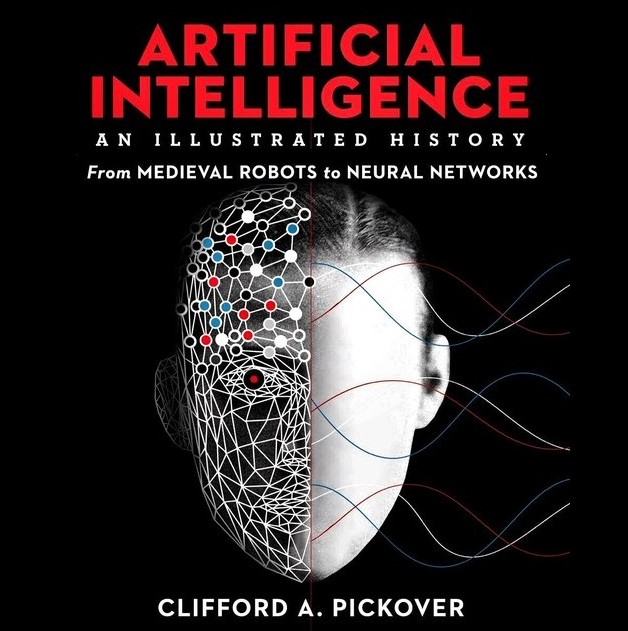
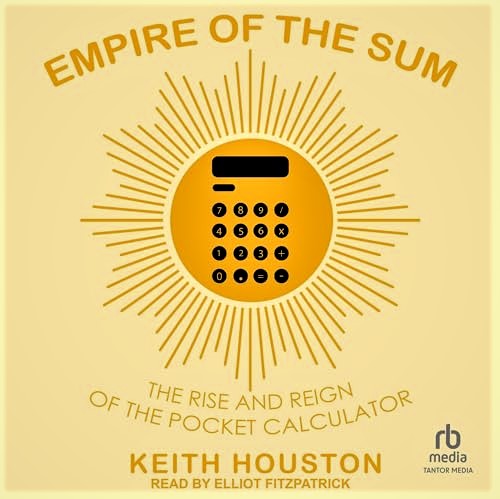
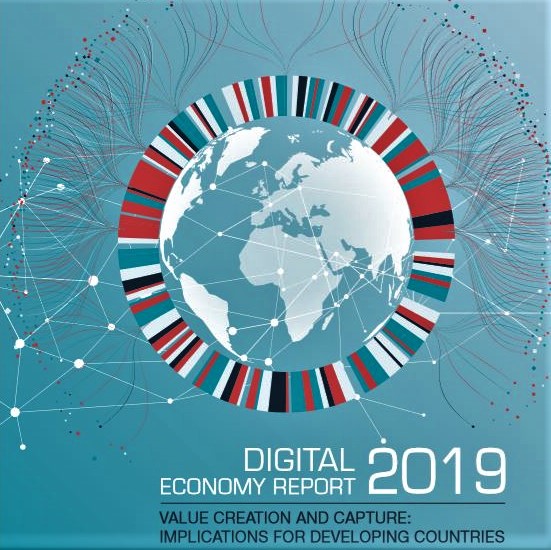
(1) Book review: Pickover, Clifford A., Artificial Intelligence: An Illustrated History—From Medieval Robots to Neural Networks, Union Square & Co., 2019. [My 4-star review of this book on GoodReads]
Clifford Pickover has a knack for explaining scientific concept in easily-readable form, as evidenced by his many books in this domain. His book on the history of artificial intelligence is no exception. True to his style, Pickover describes major systems and milestones in the history of AI, with each of the ~100 concise entries accompanied by a full-page illustration.
All important developments, be they fictional ("The Terminator") or real (the Rumba robotic vacuum cleaner), receive a mention. The book can be read from cover to cover like a sumptuous meal or be explored by snacking on the entries that look inviting.
(2) Book review: Houston, Keith, Empire of the Sum: The Rise and Reign of the Pocket Calculator, unabridged 9-hour audiobook, read by Elliot Fitzpatrick, Tantor Audio, 2023.
[My 4-star review of this book on GoodReads]
Many members of my generation owned and admired their electronic pocket calculators, which, after dethroning the engineers' slide rules, were themselves unceremoniously replaced by much more powerful computing devices. Nevertheless, calculators did play an important role in the development and history of computing. I have fond memories of my very first electronic calculator, the fairly affordable HP-35, which I bought in 1972 during my grad-school days at UCLA.
Beginning with a history of counting and ancient calculating devices, Houston tracks down the origins of the modern electronic calculator, along with some interesting detours, like how Texas Instruments hijacked high school math curricula across the US by promoting its outdated calculator lines that were highly profitable.
(3) Book review: United Nations Conference on Trade and Development (UNCTAD), Value Creation and Capture: Implications for Developing Countries, UN Digital Economy Report, 2019.
[My 3-star review of this book on GoodReads]
The world's economic and social structures are being transformed by the rapid spread of digital technologies. The good news is that the digital economy is creating many opportunities for developing countries. But there are multiple pieces of bad news to worry about, particularly the widening digital divide and the benefits going disproportionately to a small number of countries, companies, and individuals.
It is imperative that the challenges just cited be addressed in these early years of the digital era, before the problems get out of hand. Success in this domain requires collecting statistics and empirical evidence and offering them as aids to decision-makers across the globe, as they try to adopt sound policies in the face of a fast-evolving digital economy comprising a moving target.
"This first edition of the Digital Economy Report—previously known as the Information Economy Report—examines the scope for value creation & capture in the digital economy by developing countries. It gives special attention to opportunities for these countries to take advantage of the data-driven economy as producers and innovators—but also to the constraints they face—notably with regard to digital data and digital platforms."
2024/01/05 (Friday): Presenting selected news, useful info, and oddities from around the Internet.


 (1) Images of the day: [Left] Math puzzle: Find the area of ABCD. [Center] Bill Gates and Paul Allen, founders of Microsoft, at Seattle's Lakeside High School, one of the few schools worldwide that owned an advanced Teletype Model 30 computer in 1968. [Right] The #MeToo Movement in Iran (see the last item below).
(1) Images of the day: [Left] Math puzzle: Find the area of ABCD. [Center] Bill Gates and Paul Allen, founders of Microsoft, at Seattle's Lakeside High School, one of the few schools worldwide that owned an advanced Teletype Model 30 computer in 1968. [Right] The #MeToo Movement in Iran (see the last item below).
(2) First change in Microsoft Windows keyboard in three A newly-added key will launch Microsoft's AI chatbot, which is integrated into Word and other Office products. The software giant sees the key's addition as the entry point into the world of AI on the PC.
(3) Today's surprising space fact: The Voyager 2 spacecraft, launched in 1977, is the most-distant human-made object from Earth. It entered interstellar space in 2012.
(4) Oddities in the Iran explosion that killed 100+ at a ceremony marking the 4th anniversary of General Qasem Soleimani's assassination: None of his three children was in attendance. One of his daughters later said that she had a vision of her dad asking her not to attend! Soleimani's comrades, that is, other IRGC top generals, also skipped the ceremony. No high-level Iranian official, often paying lip service to Soleimani's influence & contributions, was in attendance. These facts make it more likely that Iran's Islamic regime had a hand in the massacre, to create a reason for cracking down on Sunni Muslims protesting their miserable living conditions in Iran's southeastern region. Iranians from all walks of life, particularly ethnic and religious minorities, are forgotten by the government, while billions of dollars in aid are given to Hamas, Hezbollah, the Houthis, and other proxy groups to wage war against Israel and the West.
(5) Book review: Yaghoobi, Claudia (editor), The #MeToo Movement in Iran: Reporting Sexual Violence and Harassment, I. B. Tauris, 2023.
[My 4-star review of this book on GoodReads]
Dr. Claudia Yaghoobi is a Roshan Institute Professor in Persian Studies and Director of the Center for Middle Eastern and Islamic Studies at UNC Chapel Hill. She has written and lectured widely on social and political issues in Iran, particularly the challenges facing women in a patriarchal and theocratic society.
What makes Iran's #MeToo movement remarkable is the reluctance of many victims of sexual violence to speak up, given that reporting on their experiences may subject them to more violence in the guise of "family honor."
Contributors to this edited volume contextualize the Iranian #MeToo activism within the long tradition of Iran's feminist movements and within the Middle East historical background in 9 chapters that are sandwiched between an introduction by the author and an afterword by Roger Friedland, Janet Afari, and Charlotte Hoppen.
Narratives of survival of sexual violence are often delegitimized due to the cultural structure that gives men exposed as rapists the power to dismiss their accusers as crazy or delusional, particularly given that the victims have not traditionally enjoyed much family or societal support. The problems faced by the survivors are multiplied when they belong to sexually or socially marginalized groups.
You can find the book's table of contents on the Bloomsbury Web site.
2024/01/04 (Thursday): Presenting selected news, useful info, and oddities from around the Internet.

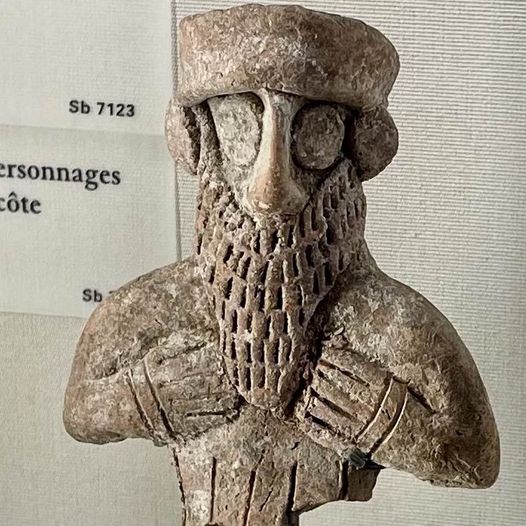
 (1) Images of the day: [Left] Hope 2024 is off to a good start for you and your loved ones. If you are having problems in keeping your new-year resolutions or face other struggles, hang in there. Spring isn't too far away! [Center] Ancient statue of Ayatollah Jannati on display at the Louvre. [Right] Iranian mullahs proudly display their program to arm Hamas through Qasem Soleimani.
(1) Images of the day: [Left] Hope 2024 is off to a good start for you and your loved ones. If you are having problems in keeping your new-year resolutions or face other struggles, hang in there. Spring isn't too far away! [Center] Ancient statue of Ayatollah Jannati on display at the Louvre. [Right] Iranian mullahs proudly display their program to arm Hamas through Qasem Soleimani.
(2) A senior Hamas leader and two of his military aides killed by a drone strike in Beirut: Don't ask me why the Hamas leader was sheltered in Beirut, while his people are under Israeli attacks in Gaza.
(3) Iran previously used proxies to attack shipping vessels: Now, a one-way drone launched from Iran has hit CHEM PLUTO, a Japanese-owned chemical tanker. Additionally, an Iranian Navy ship has entered the Red Sea. The US may start sinking Iranian ships to deter additional attacks.
(4) One-liners: Brief news headlines, happenings, memes, and other items of general interest.
- The year 2023 was the hottest on record, raising fears that global warming is actually accelerating.
- Islamic State takes credit for bombing at the anniversary observation of Qasem Soleimani.
- Harvard President Claudine Gay resigns under the pressure of mounting plagiarism accusations.
- Jeffrey Epstein killed himself in prison: But his list of clients is alive and may come out any day now.
- U. Tehran's NLP Lab has announced the availability of Llama 7b, a large language model trained in Persian.
- World's oldest land animal, a 400-pound tortoise on St. Helena Island, turns 191 (or more).
- Facebook memory from Jan. 4, 2014: With the kids, on the stairs leading to an Isla Vista beach.
- Facebook memory from Jan. 4, 2012: With the kids, on Santa Barbara's Stearns Wharf.
(5) Today's surprising space fact: The fastest-moving object in the universe is a pulsar, which rotates at a speed of about 43,000 revolutions per minute.
(6) Japan Airlines jet is engulfed in flames after colliding with another plane on the runway: All passengers and crew got out safely, but 5 people died on the smaller Coast Guard plane.
(7) It seems that finally middling criminals above foot-soldier rank are being prosecuted in the US: But those higher up are still walking free and continuing with their evil deeds.
(8) Vaclav Hovel, on fighting tyranny (not an exact quote): You don't have to march on the streets and risk the consequences. Just decide that you won't participate in any activity based on lies. Serve the truth and the regime of lies will collapse on its own.
(9) A. M. Turing Award honoree Niklaus Wirth [1934-2024] dead at 89: Among his many contributions to computer science & engineering were the formal separation of language syntax & semantics, the programming language Pascal, and wonderful books on data structures, algorithms, & programming. RIP.
2024/01/01 (Monday): Presenting selected news, useful info, and oddities from around the Internet.

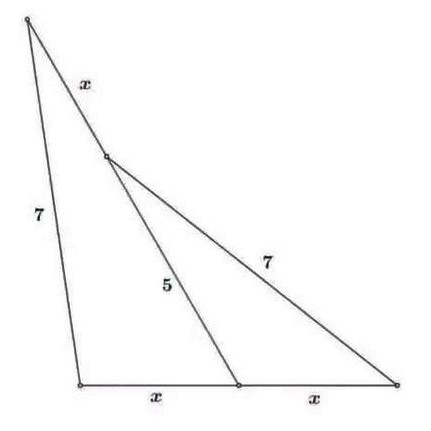
 (1) Images of the day: [Left] Welcoming the New Year 2024 (see the next item below). [Center] Math puzzle: Find the length x.
[Right] Free Will, by Sam Harris (see the last item below).
(1) Images of the day: [Left] Welcoming the New Year 2024 (see the next item below). [Center] Math puzzle: Find the length x.
[Right] Free Will, by Sam Harris (see the last item below).
(2) Happy New Year! This is a message we repeat every year, but then find out that the new year is much like the old year: full of challenges and disappointments; injustices and heartbreaks; rough spots and dead ends. Same old same old, as they say. But there are signs that 2024 may actually be different. In the US, fat cats, who have dodged accountability for years, may finally face justice. We may see the end of the brutal Islamic regime in Iran. We may witness Ukrainians prevail over the big bully to their north. Let's not lose hope!
(3) My New-Year 2024 puzzle: Every year, as a new year number emerges, I try to form the numbers 0, 1, 2, 3, ... by putting math symbols (including parentheses) between its digits. In the case of 2024, I have been able to do this for numbers up to 28. The first five appear below as hints and the rest are left to you as puzzles!
0 = 2 + 0 + 2 – 4
1 = (2 + 0) * 2 / 4
2 = 2 + 0 * 2 * 4
3 = 2 ^ 0 – 2 + 4
4 = 2 * 0 * 2 + 4
(4) One-liners: Brief news headlines, happenings, memes, and other items of general interest.
- Magnitde-7.6 quake in Japan causes damage, but the main threat seems to be from the resulting tsunamis.
- Ordinary Iranians suffer from poor air quality: Government officials use expensive air-purification systems.
- Iran's Supreme Leader claims that 20+ years ago, God spoke through his mouth to IRGC commanders.
- Cognitive behavioral therapy for those suffering from insomnia. [14-minute video]
(5) Today's surprising space fact: The Andromeda Galaxy is the closest spiral galaxy to our Milky Way. The two galaxies will collide in about 4 billion years, creating the new galaxy dubbed "Milkomeda."
(6) Book review: Harris, Sam, Free Will, Free Press, 96 pp., 2012.
[My 5-star review of this book on GoodReads]
Whether or not living beings are free to choose their thoughts and actions has been debated for centuries. A belief in free will seems to be essential for human survival. Thinking about law, politics, religion, public policy, intimate relationships, morality—as well as feelings of remorse or personal achievement—without first imagining that every person is the true source of his or her thoughts and actions, seemingly makes no sense.
The scientific consensus appears to be that free will is an illusion. However, we won't run into contradictions if we assume that we have free will (in fact, we almost need the illusion of free will to hold people accountable for their deeds or have any motivation at all), but evidence points in the opposite direction. As physical entities, our behavior (including thoughts) are governed by physical laws, so that our current state, a result of everything that has happened to us since the Big Bang, is theoretically enough to determine our future state.
In this short, easily-readable, and highly-personal book, Sam Harris, well-known for his books The End of Faith (2004), Letter to a Christian Nation (2006), The Moral Landscape (2010), Lying (2011), Waking Up (2014), and Making Sense (2020), provides a clear explanation of why free will is an inherently flawed and incoherent concept.
The intention to do one thing rather than another does not originate in consciousness. Using fMRI studies, neuroscientists have discovered that our brain activity indicates the choice we are going to make more than half-a-second before we become consciously aware that we will make that choice. Case closed!
This panel-discussion video is a good source for an introduction to free will.
Blog Entries for 2023
2023/12/31 (Sunday): Presenting selected news, useful info, and oddities from around the Internet.
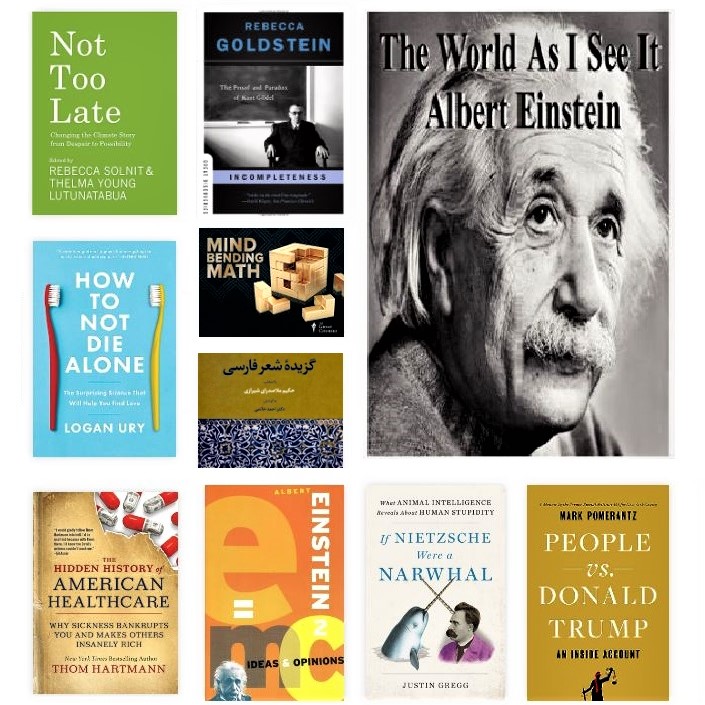

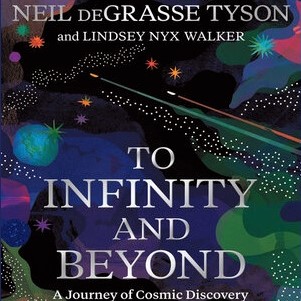 (1) Images of the day: [Left] My year in books, according to GoodReads: During 2023, I read and reviewed 113 books, with a total of 35,388 pages. The books ranged in length from 38 to 1388 pages, averaging 313 pages. On average, I gave the books a rating of 4.1 stars. [Center] Here come end-of-year lists of the best and the worst of 2023. [Right] To Infinity and Beyond, by Tyson & Walker (see the last item below).
(1) Images of the day: [Left] My year in books, according to GoodReads: During 2023, I read and reviewed 113 books, with a total of 35,388 pages. The books ranged in length from 38 to 1388 pages, averaging 313 pages. On average, I gave the books a rating of 4.1 stars. [Center] Here come end-of-year lists of the best and the worst of 2023. [Right] To Infinity and Beyond, by Tyson & Walker (see the last item below).
(2) One-liners: Brief news headlines, happenings, memes, and other items of general interest.
- Update from 2023 to 2024 is in progress: Please wait. [Image]
- US Navy helicopters sink boats belonging to Yemeni Houthi rebels that attempted to hijack a cargo ship.
- Surf's up: Early afternoon on Saturday, 12/30, at Ventura Harbor Village Beach. [Video 1] [Video 2]
- Are you brave enough to drive on this floating bridge in China's Shizuguan Scenic Area?
- Bach's Toccata and Fugue in D minor: Part of a harp concert by Sophia Kiprskaya.
(3) Today's surprising space fact: The International Space Station, the largest human-made object in space, is the size of a football field. It travels at a speed of 17,500 miles per hour.
(4) Book review: Tyson, Neil deGrasse and Lindsey N. Walker, To Infinity and Beyond: A Journey of Cosmic Discovery, National Geographic, 2023.
[My 5-star review of this book on GoodReads]
Neil deGrasse Tyson [1958-] is an astrophysicist with a knack for science communication. Through his numerous public lectures, talk-show appearances, and the TV series "StarTalk," Tyson has established himself as a knowledgeable and witty astrophysicist who can explain the mysteries of the universe in the simplest possible terms. Tyson's co-author, Lindsey N. Walker, is a writer and senior producer at "StarTalk."
Let me begin my review by quoting a paragraph from the book's front flap: "The journey begins close to home, exploring Earth's atmosphere, the nature of sunlight, and missions past and present to nearby planets. From there, we surge on to exoplanets, black holes, nebulas, and galaxies. The farther we travel, the wilder the questions become as astrophysical theories collide with common sense. What's the shape of the universe? What happens when two black holes merge? Did other worlds spring into being at the Big Bang? And if so, can we tweak the spacetime continuum and visit them? As we travel through the cosmos and beyond, these and equally intriguing propositions are tackled with cutting-edge science—and a delightful dose of wit."
The book is composed of four parts, each with many sections (named in the table of contents below) and numerous sidebars, veering into "Hollywood Science," "Cosmic Conundrum," "Exploration," and "Science History." The division of material into relatively short sections, augmented by the detours just mentioned, make the book a joy to read. In fact, I plan on a second reading of some of the parts I found more-interesting to ensure proper understanding.
Part 1, Leaving Earth: Earth's atmosphere; Beyond the troposphere; The weight of air; Dreams of ascending; Felix Baumgartner and the edge of space; The billionaire "space race"; From aircraft to rockets; Rocket science and Max Q; Launch locations; Newton, an apple, and a cannonball; Rocketeers in peace and war; Attaining Orbit; Space junk and the Kessler effect; Orbits and their decay; The rocket equation; A lesson from meteorites; Onward to deep space.
Part 2, Touring the Sun's Backyard: Our Sun; A windy star; Mercury, first of the rocky inner planets; How Einstein killed Planet Vulcan; Exploring Mercury; Vibrant Venus; Phases of Venus; Transit of Venus; Exploring Venus; A lesson for Earth from Venus; Earth-Moon system; The tidal force; Mars; Imagined Martians; Exploring Mars; Terraforming Mars; The Asteroid Belt; Potentially hazardous asteroids and comets; The gas giants; Jupiter; A spot of red; Exploring Jupiter; Saturn; Exploring Saturn; Ocean worlds and the search for life (as we know it); Ice giants, Uranus and Neptune; Pluto and Planet X; On to beyond.
Part 3, Into Outer Space: Into thin air; Light, wave or particle?; Light, a wave; Light, a particle; The death of the aether; Gravity and Lagrange Points; Shocking truths; Shock waves beyond the Solar System; A dark mystery; Measurable yet unimaginable magnitude; The hidden messages in rainbows; The hunt for exo-Earths; Space pilgrims.
Part 4, To Infinity and Beyond: To the edge; Space/time; Time travel, heading to the future; Black holes; Time travel, returning to the past; FTL method #1, through the wormhole; FTL method #2, fire up the warp drive; FTL method #3, deploy the tachyons; Breaking and repairing causality; Many, many, many worlds; What about free will?; The journey continues.
2023/12/30 (Saturday): Presenting selected news, useful info, and oddities from around the Internet.



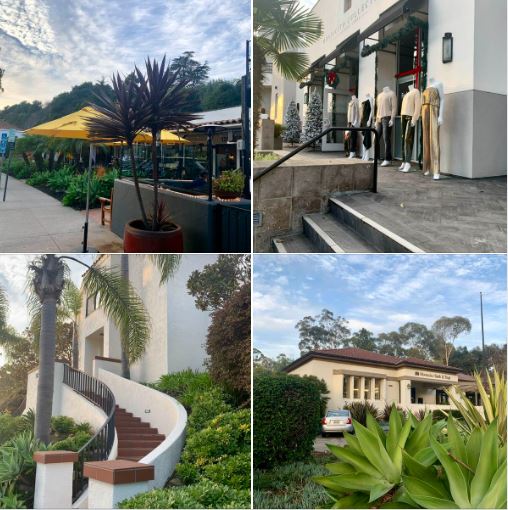

 (1) Images of the day: [Top left] Iranian woman mullah: "Hijab doesn't let men take advantage of my beauty." You be the judge! [Top center] Meme of the day: No means no. Isn't it amazing that we have to spend time on stating this obvious fact? (Image credit: Amnesty Int'l) [Top right] Mark L. Schrad's Vodka Politics (see the last item below). [Bottom left & right] Scenes from Friday's walk along Coast Village Road in Montecito. [Bottom center] Math puzzle: What is the ratio of the area of the red triangle to the area of the blue triangle?
(1) Images of the day: [Top left] Iranian woman mullah: "Hijab doesn't let men take advantage of my beauty." You be the judge! [Top center] Meme of the day: No means no. Isn't it amazing that we have to spend time on stating this obvious fact? (Image credit: Amnesty Int'l) [Top right] Mark L. Schrad's Vodka Politics (see the last item below). [Bottom left & right] Scenes from Friday's walk along Coast Village Road in Montecito. [Bottom center] Math puzzle: What is the ratio of the area of the red triangle to the area of the blue triangle?
(2) Aerogel: This lightest-ever solid substance, which is an excellent insulator, was pioneered by NASA back in the dawn of the Space-Shuttle era. Its density of 0.00016 g/cm^3 makes it 6000+ times lighter than water.
(3) Observation by Neil deGrasse Tyson: The odds of a deck of 52 cards being shuffled into the exact same order is one in 52! (approximately one in 80 * 10^66 or one in 80 unvigintillion).
(4) Today's surprising space fact: Neutron stars are incredibly dense objects. They have a mass of about 1.5 times the mass of our Sun, but are only 12 miles in diameter.
(5) Book review: Schrad, Mark Lawrence, Vodka Politics: Alcohol, Autocracy, and the Secret History of the Russian State, Oxford, 2014. [My 4-star review of this book on GoodReads]
Vodka is the alcoholic drink commonly associated with Russia (and the former Soviet Union). Schrad chronicles 500 years' worth of evidence that vodka is a big part of Russia's economy, a major instrument of power, and, perhaps, a source of Russian society's backwardness. Its prohibition may have triggered the 1917 Bolshevik Revolution and alcohol poisoning from its overuse leads to some 55,000 deaths annually (~200 times that of the US, which has more than twice the population). From the late 1680s to the 1800s, a tad over half of the state's revenue came from taxes on only two commodities: vodka and salt.
Schrad suggests that societal alcoholism isn't hard-wired into Russians' genetic code but is rather part of its autocratic system that has long used vodka as a tool of control. Examining palace intrigues under the tsars and the drunkenness of Soviet & post-Soviet leaders reveals the central role played by vodka. Most every modern state has successfully curtailed alcoholism, but vodka continues to pose a challenge to the Russian leadership and to the country's economy and healthcare system.
Schrad presents his detailed account of the role of vodka in Russia and the lives of Russians in 24 chapters, with titles such as "Peter the Great: Modernization and Intoxication," "Drunk at the Front: Alcohol and the Imperial Russian Army," "Did Alcohol Make the Soviets Collapse?" "Alcohol and Boris Yeltsin," and "Alcohol and the Demodernization of Russia." Schrad's scholarly treatment of the topic ends with 80 pages of notes.
In the book's ultimate paragraph, Schrad writes: "The story of vodka truly is the story of Russia: not just its culture and society, but its history and statecraft as well. Whether it can ever break free of the shackles of vodka —the autocratic system that nurtures it and is nurtured by it—may well be the most fundamental political question facing the future of Russia."
2023/12/29 (Friday): Presenting selected news, useful info, and oddities from around the Internet.




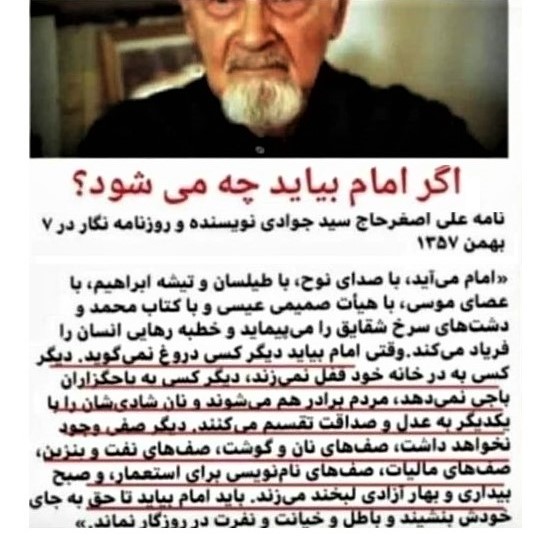
 (1) Images of the day: [Top left] The magnificent salon of the Palazzo della Ragione (Padova), with a ship-shaped ceiling and the imposing cycle of medieval frescoes on an astronomical theme (photo by @urs.eggenberg). [Top center] Fruits and finger-foods for my daughter's party with friends. [Top right] Stairway to Heaven: The celestial entrance known as "Heaven's Gate," located within the Tianmen Mountain in China. [Bottom left] Meme of the day: Do not confuse your love of privilege for the love of freedom. [Bottom center] Iranian intellectuals will be judged harshly by history (see the next item below). [Bottom right] Math puzzle: Find the measure of the angle labeled with a question mark.
(1) Images of the day: [Top left] The magnificent salon of the Palazzo della Ragione (Padova), with a ship-shaped ceiling and the imposing cycle of medieval frescoes on an astronomical theme (photo by @urs.eggenberg). [Top center] Fruits and finger-foods for my daughter's party with friends. [Top right] Stairway to Heaven: The celestial entrance known as "Heaven's Gate," located within the Tianmen Mountain in China. [Bottom left] Meme of the day: Do not confuse your love of privilege for the love of freedom. [Bottom center] Iranian intellectuals will be judged harshly by history (see the next item below). [Bottom right] Math puzzle: Find the measure of the angle labeled with a question mark.
(2) What were Iranian intellectuals thinking in the lead-up to the 1979 Islamic Revolution? Here is a snapshot, captured from a letter written by Ali Asghar Haj Sayyed Javadi, just a few days before Khomeini returned to Iran. He predicted that after Khomeini's return, no one would lie, doors would not bear locks, everyone would act with brotherly love, and so on. "The Imam must come so that things are set right and wrongdoing, betrayal, and hate disappear."
(3) One-liners: Brief news headlines, happenings, memes, and other items of general interest.
- High surf causes extreme flooding in areas of Ventura, California: Beaches are
- Big waves in Santa Barbara & other SoCal locations cause coastal flooding, delight surfers. [Photos]
- We expect one of the largest yearly declines in US violent crimes: In 2020, we saw the largest increase.
- StarTalk episode: Malcolm Gladwell, on the safety of self-driving cars. [9-minute video]
- A very interesting discussion on free will, or lack thereof.
- We humans have a hard time comprehending exponentially growing quantities and astronomical distances.
- Comedian George Carlin, on America's two favorite sports: Baseball and Football. [3-minute video]
- Sculptures dancing to Tom Jones' "Delilah." [3-minute video]
(4) New York Times' graphically-detailed report of how Hamas weaponized sexual violence in its Nov. 7, 2023, attack on Israel [read only if you can stomach explicit descriptions of sexual violence]: "A two-month investigation by The Times uncovered painful new details, establishing that the attacks against women were not isolated events but part of a broader pattern of gender-based violence."
All those claiming to be feminists must face this question: Do you condemn weaponization of sexual violence against women in organized and chaotic/haphazard acts of war?
(5) Today's surprising space fact: At a distance of about 10,000 light years from us, there is a giant cloud of alcohol. It contains enough alcohol to make 400 trillion pints of beer.
(6) Getting ready for winter quarter 2024: UCSB classes begin on January 8. Here is my updated Web page for the graduate course ECE 254B (Advanced Computer Architecture: Parallel Processing). If anyone is interested to follow along, links to recorded lectures are provided on the Web page.
2023/12/28 (Thursday): Presenting selected news, useful info, and oddities from around the Internet.
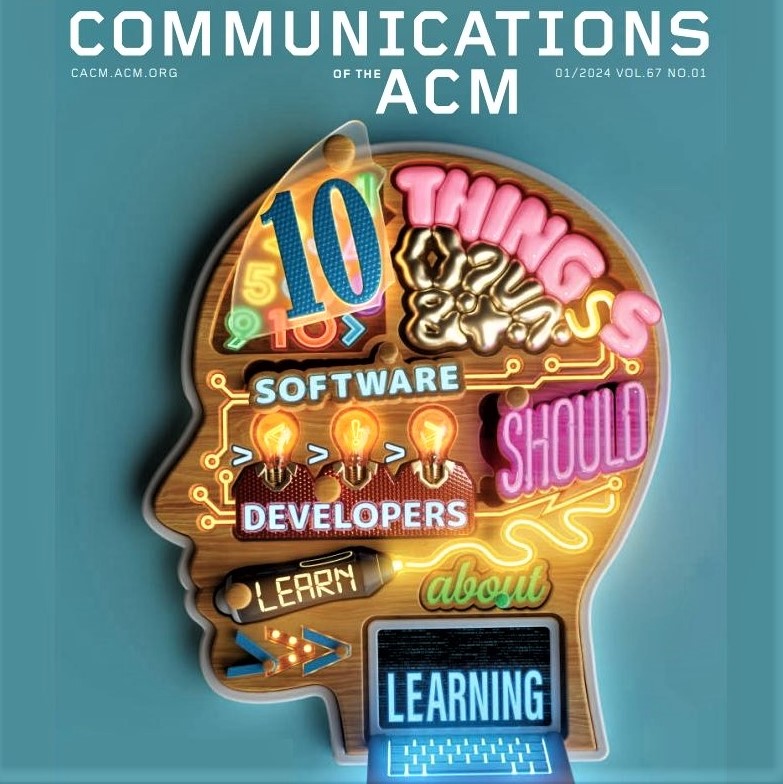

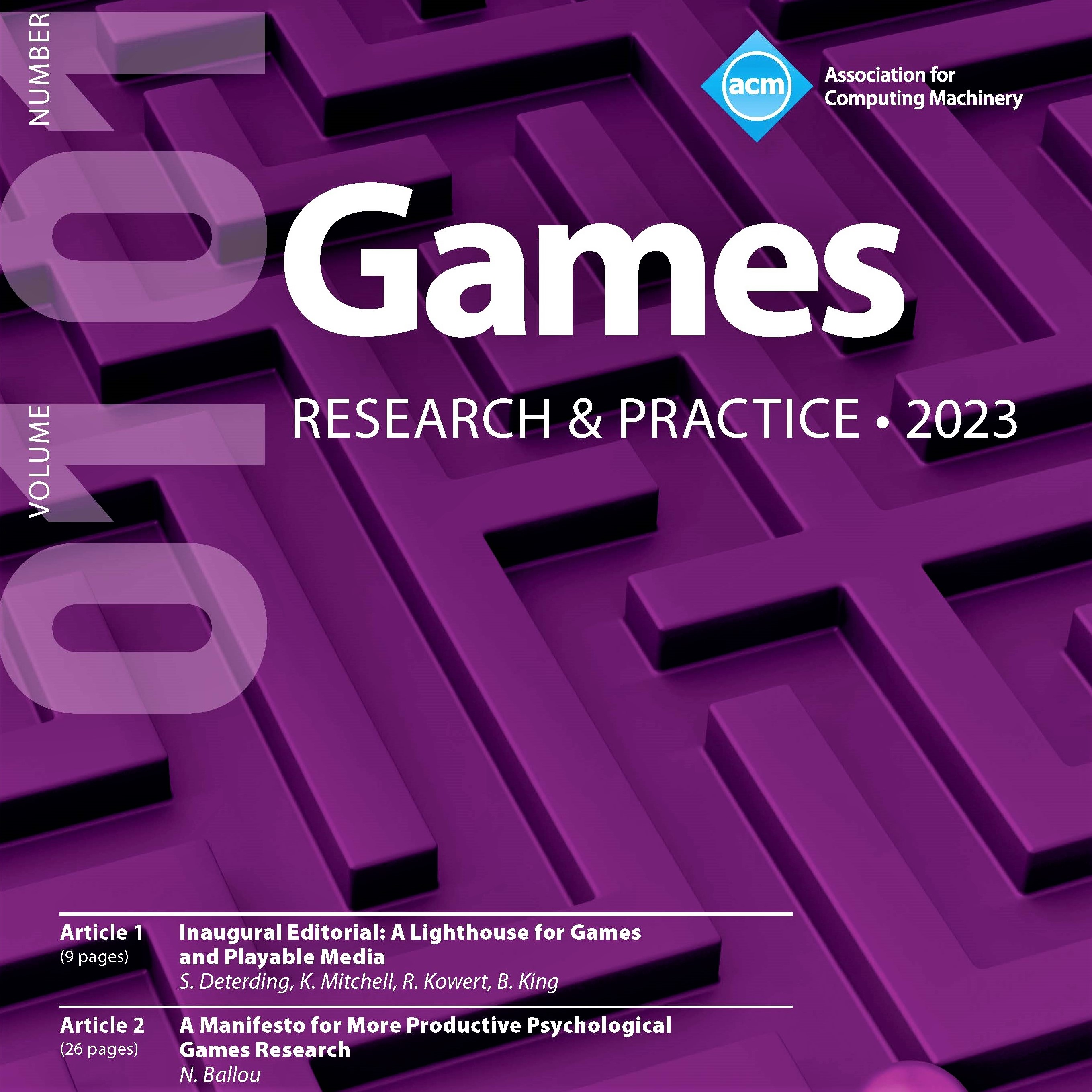
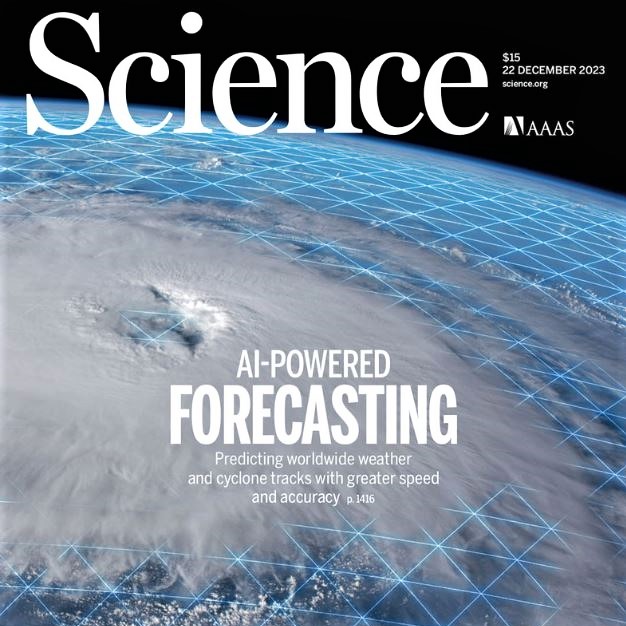
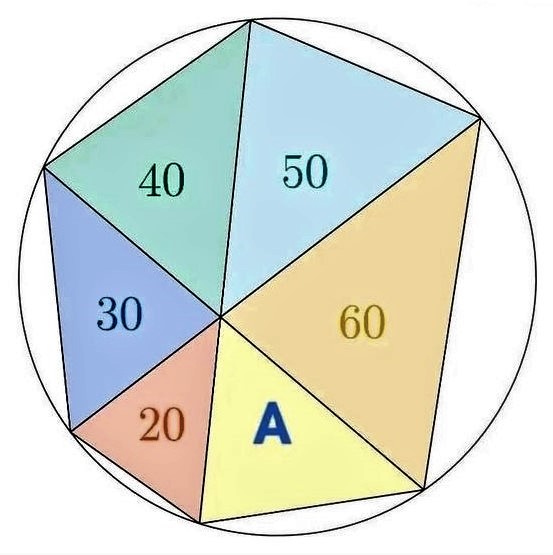
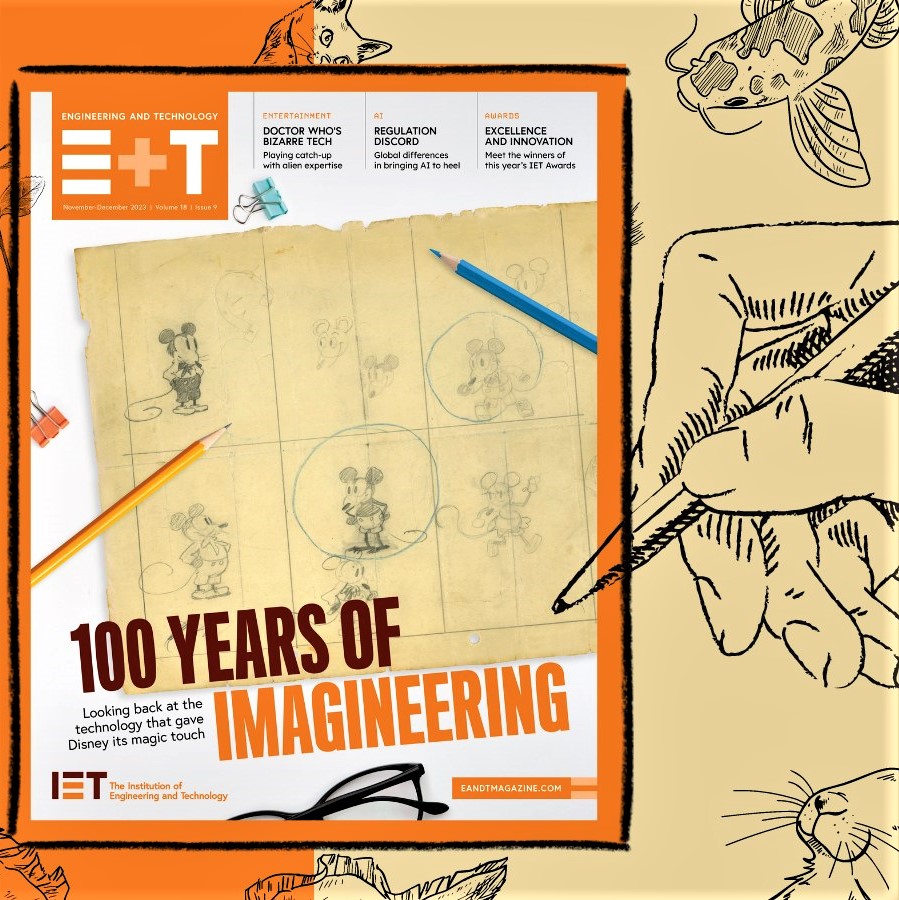 (1) Images of the day: [Top left] Software developers should learn about learning (see the next item below). [Top center] One of my favorite light meals: Feta cheese, with sour-cherry jam, on Costco baguettes or Iranian barbari bread. [Top right] Computer games gain academic stature: ACM has launched the peer-reviewed quarterly journal Games: Research & Practice, under Editors-in-Chief Sebastian Deterding and Kenny Mitchell from UK academic institutions. [Bottom left] AI-powered forecasting: Predicting worldwide weather and cyclone tracks with greater speed & accuracy. [Bottom center] Math puzzle: Find the area A of the yellow triangle, given the areas of other triangles. [Bottom right] One hundred years of imagineering: This is the cover theme of E&T Magazine's Nov.-Dec. 2023 issue, which looks at the centenary of Walt Disney Pictures and how fiction and the film industry have inspired technological advances.
(1) Images of the day: [Top left] Software developers should learn about learning (see the next item below). [Top center] One of my favorite light meals: Feta cheese, with sour-cherry jam, on Costco baguettes or Iranian barbari bread. [Top right] Computer games gain academic stature: ACM has launched the peer-reviewed quarterly journal Games: Research & Practice, under Editors-in-Chief Sebastian Deterding and Kenny Mitchell from UK academic institutions. [Bottom left] AI-powered forecasting: Predicting worldwide weather and cyclone tracks with greater speed & accuracy. [Bottom center] Math puzzle: Find the area A of the yellow triangle, given the areas of other triangles. [Bottom right] One hundred years of imagineering: This is the cover theme of E&T Magazine's Nov.-Dec. 2023 issue, which looks at the centenary of Walt Disney Pictures and how fiction and the film industry have inspired technological advances.
(2) Software developers should learn about learning: This is the theme of the cover feature for the Jan. 2024 issue of Communications of the ACM. The article offers ten pieces of advice to software developers.
- Human memory is not made of bits
- Human memory is made of one limited and one unlimited system
- Experts recognize, beginners reason
- Understanding a concept goes from abstract to concrete and back
- Spacing and repetition matter
- The Internet has not made learning obsolete
- Problem-solving is not a generic skill
- Expertise can be problematic in some situations
- The predictors of programming ability are unclear
- Your mindset matters
(3) One-liners: Brief news headlines, happenings, memes, and other items of general interest.
- Turkish soldiers kill Kurdish women, execution-style: Where is the outrage against Turkey?
- Teacher: "I won't hang photos of the killers of Iranian youth in my classroom. They belong in the trash bin."
- Google's top-3 search terms for 2023: Titan submersible, Israel-Gaza war, & death of actor Matthew Perry.
- Airplanes still have barf bags in seat pockets: But when was the last time you saw anyone throw up in flight?
- Observation of the day: We don't really wash our hands. We just watch as they wash themselves!
- Facebook memory from Dec. 28, 2018: Recitation of my humorous Persian poem from 1980.
(4) Generative AI's depiction of a child bride: Yes, most of us abhor hearing about girls as young as 9 marrying middle-aged or even old men, but seeing a picture is worth a thousand words.
(5) Today's surprising space fact: Venus's year is shorter than its day. Venus takes about 225 Earth days to orbit the sun, but it rotates on its axis once every 243 Earth days.
(6) Until the 18th Century, women couldn't write on paper: They were allowed only to embroider words on fabric or tapestry. Women like Caroline Schelling, Caroline von Gonda, and Betina von Arnim defiantly created a literary tradition for women, by dropping the needle and picking up the pen. [Facebook post, in Persian]
2023/12/26 (Tuesday): Today, I present 3 book reviews on the digital age and its social consequences.
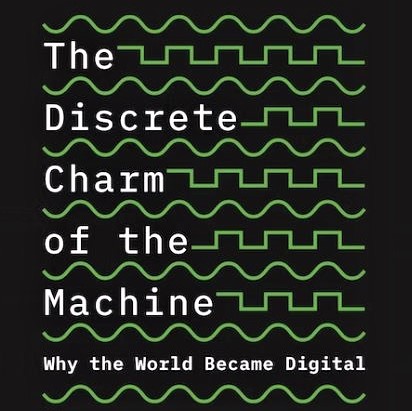
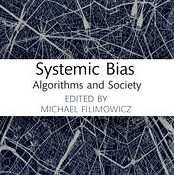
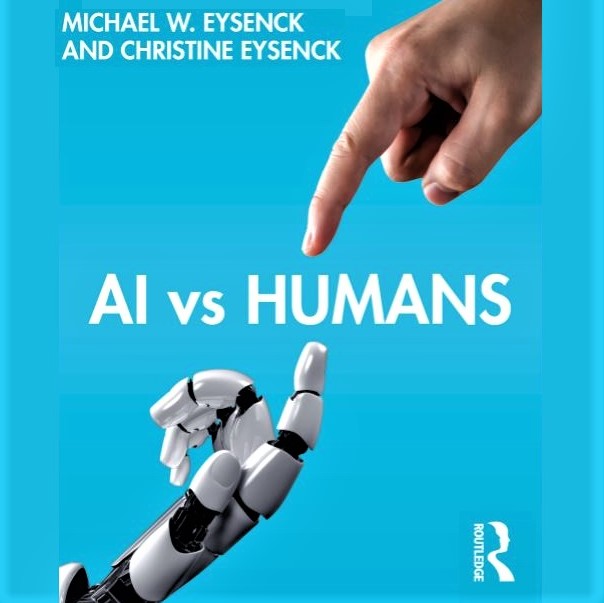
(1) Book review: Steiglitz, Kenneth, The Discrete Charm of the Machine: Why the World Became Digital, Princeton, 2019.
[My 4-star review of this book on GoodReads]
The analog signals of our televisions, radios, telephones, and computers gave way to digital signals several decades ago. Professor Kenneth Steiglitz (Princeton U.) explains the main reasons behind this transformation. In doing so, he pays tribute to the contributions of geniuses such as Joseph Marie Jacquard (stored-program loom), Charles Babbage (program branching), Alan Turing (discrete abstract computer), Harry Nyquist (digital signal processing), Claude Shannon (notions of information & bandwidth), and Richard Feynman (nanotechnology & quantum computing).
Steiglitz then proceeds to tell us how the brilliant ideas listed above led to transformative systems and applications such as the Internet, artificial intelligence, and autonomous robots, how certain problems continue to challenge us with present-day technology, and whether the toughest of these problems (e.g., traveling salesperson) will be made tractable by quantum computing or by new technologies mimicking the analog/digital mechanisms of the brain.
The history of how the digital idea took over to become the lifeblood of our civilization is impressive, but picturing where this revolutionary idea may take us in the years and decades to come is breathtaking.
(2) Book review: Filimowicz, Michael (ed.), Systemic Bias: Algorithms and Society, Routledge, 2022.
[My 3-star review of this book on GoodReads]
This book is one of the titles in Routledge's "Algorithms and Society" series. Other titles in the series include Digital Totalitarianism, Privacy, and Deep Fakes. This fairly small volume contains three ~20-pp. chapters.
- "From 'Diversity' to 'Discoverability': Platform Economy, Algorithms and the Transformations of Cultural Policies" (by Christophe Magis). [Analyzes how the movement away from earlier critical studies of the global cultural economy has produced the weak concept of 'diversity.']
- "Modern Mathemagics: Values and Biases in Tech Culture" (by Jakob Svensson). [An attempt to understand tech culture, its values, and its biases through the metaphor of magic.]
- "Reading the Cards: Critical Chatbots, Tarot and Drawing as an Epistemological Repositioning to Defend Against the Neoliberal Structures of Art Education" (by Eleanor Dare and Dylan Yamada-Rice). [A critique of the neoliberal structures in universities, which undervalues alternative ways of knowing, such as making, drawing, and experimenting with materials.]
I found the coverage of topics somewhat haphazard and the depth of treatment rather disappointing.
(3) Book review: Eysenck, Michael W. and Christine Eysenck, AI vs. Humans, Routledge, 2022.
[My 4-star review of this book on GoodReads]
Most AI books are written by AI experts, who tend to focus on the red-hot field's achievements and positive transformative effects. Authors of the book under review are psychologists who bring their knowledge of human cognition to the discussion. It is becoming increasingly common for non-AI experts to write books about AI, with focus on social, economic, political, and human-development viewpoints.
The book's first six chapters cover a brief history of AI & robotics, AI dominance, human strengths, AI's extent of (un)intelligence, human limitations, and robots & morality. Chapter 7 ponders "the winner" and Chapter 8 considers the future. All chapters are richly illustrated with diagrams and photographs.
The digital economy is changing how companies create value and compete, so AI, as one of the cornerstones of our modern digital economy, will likely dominate the global scene. Strengths and weaknesses of AI and humans are in different domains, so, like many other authors, Eysenck & Eysenck reach the conclusion that AI should augment, not replace, human intelligence.
2023/12/25 (Monday): Presenting selected news, useful info, and oddities from around the Internet.





 (1) Images of the day: [Top left] Wishing my family and friends a joyous Christmas, a peaceful week ahead, and a bright new year! [Top center] My daughter paddle-boarding near Santa Barbara's Stearns Wharf: She started at the Harbor and I walked from the Harbor to the Wharf, where I took these photos on Sunday 12/24. [Top right] Classic DeSoto car, parked on Santa Barbara's Stearns Wharf on Sunday (video clip, with music). [Bottom left] More photos from Stearns Wharf. [Bottom center] Christmas Eve in years past (FB memories). [Bottom right] A few photos I shot along Cabrillo Blvd. on Sunday, between the Harbor and Stearns Wharf.
(1) Images of the day: [Top left] Wishing my family and friends a joyous Christmas, a peaceful week ahead, and a bright new year! [Top center] My daughter paddle-boarding near Santa Barbara's Stearns Wharf: She started at the Harbor and I walked from the Harbor to the Wharf, where I took these photos on Sunday 12/24. [Top right] Classic DeSoto car, parked on Santa Barbara's Stearns Wharf on Sunday (video clip, with music). [Bottom left] More photos from Stearns Wharf. [Bottom center] Christmas Eve in years past (FB memories). [Bottom right] A few photos I shot along Cabrillo Blvd. on Sunday, between the Harbor and Stearns Wharf.
(2) Happy Kwanzaa (December 26), the holiday that celebrates the African diaspora! Kwanzaa means "first fruits of the harvest" in Swahili. [Image]
(3) Ban Iran's Ayatollah Ali Khamenei from Facebook, X, and other social-media platforms: Any leader who blocks his/her people from using a platform should be banned from it.
(4) One-liners: Brief news headlines, happenings, memes, and other items of general interest.
- Christ & Newton were both born on Dec. 25: Which one do you think had a greater impact on humanity?
- Five Israeli hostages found dead in Gaza Strip tunnel.
- The US targets Iran-backed militia in Iraq with airstrikes, after they carried out repeated drone attacks.
- NIAC lost favor when it was exposed as a lobby for Iran's mullahs: The Islamist CAIR is now on the ropes.
- Hundreds of Airbus workers fell sick after feasting on lobster & foie gras at the company's holiday party.
- There is now a 3.5-year continuous sea cruise which visits 150 countries and costs $116K for the basics.
- The five biggest tsunami waves in history: The biggest-ever was 1720 feet tall. [10-minute video]
- There's a neighborhood in Mexico City that can't give up on the famous 1960s hippie-favorite VW Beetle.
(5) The airport of the future: Icelandair utilized an AI image generation tool to envisage the architectural landscape of some of the United States' largest airports by 2050.
(6) Does computing have blood on its hands? Writing in the January 2024 issue of Communications of the ACM, columnist Moshe Vardi thinks so, citing hate-mongering, contributing to the youth mental-health crisis, and other misdeeds on social media as examples. "In the fall of 2021, whistleblower Frances Haugen released a massive set of Facebook internal documents to Congress and global news outlets. The documents revealed that Facebook was well aware of the adverse societal impacts of its technology ... It is no wonder that dozens of U.S. states are now suing Meta, accusing it of contributing to the youth mental health crisis." As a first step toward finding appropriate solutions, computing professionals, once considered "Rebels," to borrow a term from "Star Wars," must admit to having had a hand in creating the social-media "Empire."
2023/12/24 (Sunday): Presenting selected news, useful info, and oddities from around the Internet.


 (1) Images of the day: [Left] Just 9000 years ago, Britain was connected to continental Europe by an area of land called Doggerland, which is now submerged beneath the southern North Sea. [Center] Our family's Secret-Santa gift exchange, in-person and via FaceTime: I got a 3-month membership to Audible (audiobook seller). [Right] Thomas Pink's Free Will: A Very Short Introduction (see the last item below).
(1) Images of the day: [Left] Just 9000 years ago, Britain was connected to continental Europe by an area of land called Doggerland, which is now submerged beneath the southern North Sea. [Center] Our family's Secret-Santa gift exchange, in-person and via FaceTime: I got a 3-month membership to Audible (audiobook seller). [Right] Thomas Pink's Free Will: A Very Short Introduction (see the last item below).
(2) Einstein's biggest mistake: He thought that the universe is stationary, ridiculing those who considered it moving or expanding. Einstein's own equations suggested that the universe is moving, but he was so sure this isn't the case that he artificially added a term, which he called "anti-gravity," to make the equations support his view. Finally, when in 1922 Russian mathematician Alexandr Friedman suggested that Einstein should consider a universe in motion, Einstein began to slowly change his mind. It took him nearly a decade, and many publications by other physicists, to reverse his view. Finally, like a true scientist, Einstein admitted his mistake, when he said in 1931, "The redshift of distant nebulae has smashed my old construction like a hammer blow." The theory of an expanding universe led naturally to the Big Bang theory and a beginning for time. Ironically, the term "Big Bang" was coined by physicist Fred Hoyle in the 1940s as a mocking reference to the theory that everything was created out of nothing in the remote past, but this sarcastic nickname stuck.
(3) One-liners: Brief news headlines, happenings, memes, and other items of general interest.
- Iran's Zayandeh Rud River basin in crisis: Report from Iran, published in Science magazine, Dec. 22, 2023.
- Dish TV has to pay a $150,000 space-debris fine for failing to properly de-orbit its Echo-Star-7 satellite.
- A viral dance turns into a collective act of civil disobedience, making Iran's joyless mullahs nervous.
- Can AI therapy help America's mental health problem? There are 20,000 apps claiming they can.
- David Papworth of Intel, on what led to Pentium 6 and how that changed the microarchitectural paradigm.
(4) Book review: Pink, Thomas, Free Will: A Very Short Introduction, Oxford, 2004.
[My 4-star review of this book on GoodReads]
This is yet another useful book in Oxford's "Very Short Introduction" series that does a commendable job of covering a complex & extensively-argued subject in just 132 pages. Whether or not we have free will has been the subject of debate among philosophers for many centuries, beginning with Aristotle in 4th-century BCE. Free will is one of the very few problems that modernity does not seem to understand better than past thinkers.
Ordinary (non-philosopher) humans tend to think that we have control over our actions and are thus morally responsible for them. Our feelings & desires, on the other hand, are beyond our control for the most part. Most religions advocate this view and condemn theories postulating the lack of free will, despite the seemingly contradictory assertion that an all-knowing God has charted our path in life.
Western philosophers holding various views on the topic of free will are classified, roughly, as incompatibilists, compatibilists, sceptics, and libertarians.
Incompatibilists believe that the whole universe is defined by causal determinism, making free will impossible. All of our actions have root causes that are beyond our control. Put another way, free will is incompatible with determinism. Therefore, some philosophers reject causal determinism.
Compatibilists think that even if we accept causal determinism, we can still have freedom of action, because only the decision to act is generated deterministically, not the ensuing voluntary action itself.
Sceptics subscribe to incompatibilism but think that even if the universe is not causally determined, it is impossible to act freely, since what is left is chance. In other words, actions are random outcomes of chance events, with will playing no role.
Libertarians believe that a universe determined in part causally and in part randomly leaves room for the freedom to decide on the actions taken. Alongside random & deterministic factors which make up the universe, there is a part of the human consciousness which decides independently. This kind of free will is neither a product of chance nor a consequence of a deterministic cause, but an agent of action itself.
There are many other shades of belief within and between the four main categories above, which can be pursued, perhaps for years, once the basics are understood.
2023/12/23 (Saturday): Presenting selected news, useful info, and oddities from around the Internet.





 (1) Images of the day: [Top left] Mount Damavand greets the first rays of sunlight at dawn: May brightness come to the entire land of Iran, following the gloom and darkness of the past 45 years. [Top center] Fascinating animations: Here's a GIF example. Many more GIF images & videos are found on Etienne Jacob's Web site, titled "Loops, creative coding." [Top right] Elephant Rock, situated in Tongaporutu Beach, New Zealand. [Bottom left] City of Goleta's "Zip Books" Program: If Goleta Valley Library or its local affiliates do not hold a title, a patron can request the book, which will be purchased using grant money and directly shipped from Amazon.com to the requester's home. [Bottom center] Fir trees being cut down for Christmas: The St. Nicholas Day Massacre. [Bottom right] Wendy H. Wong's We the Data (see the last item below).
(1) Images of the day: [Top left] Mount Damavand greets the first rays of sunlight at dawn: May brightness come to the entire land of Iran, following the gloom and darkness of the past 45 years. [Top center] Fascinating animations: Here's a GIF example. Many more GIF images & videos are found on Etienne Jacob's Web site, titled "Loops, creative coding." [Top right] Elephant Rock, situated in Tongaporutu Beach, New Zealand. [Bottom left] City of Goleta's "Zip Books" Program: If Goleta Valley Library or its local affiliates do not hold a title, a patron can request the book, which will be purchased using grant money and directly shipped from Amazon.com to the requester's home. [Bottom center] Fir trees being cut down for Christmas: The St. Nicholas Day Massacre. [Bottom right] Wendy H. Wong's We the Data (see the last item below).
(2) Did you know that our solar system rotates around the center of the Milky Way Galaxy? Since its birth, the Sun has gone around 20 times.
(3) Large container ships are going around the Horn of Africa: The Houthis in Yemen have made the Red-Sea route unsafe, adding 10 days to what would otherwise be a 25-day trip. This detour reduces cargo capacity and increases fuel costs. The Western world cannot and will not stand for a rogue nation disrupting international trade. If the Houthis do not stand down, get ready for a major show of force in Yemen.
(4) Book review: Wong, Wendy H., We, the Data: Human Rights in the Digital Age, The MIT Press, 2023.
[My 4-star review of this book on GoodReads]
Traditionally, human rights are defined in terms of our physical selves, including our thoughts and actions. In this digital age, we are all creators of data through our interactions in cyberspace, thus facilitating surveillance. Recording, analyzing, and permanently storing data about us, what Wong, a political-science professor at UBC, calls "datafication" of the world, necessitates that our data be included in any consideration and definition of human rights.
We should speak out when we feel we're being left out of the most-important conversations about technology, ethics, and policy. Prevalence of data does change the game in the sense of complicating the safeguarding of our lives and developing the human potential. Our rights and values have changed over time through various social developments and associated adjustments. There is no reason why we cannot adapt once more to make sure that datafication, and the age of surveillance capitalism it engenders (as discussed in Shoshana Zuboff's wonderful book), does not harm our humanity, that is, compromise our autonomy, community, dignity, and equality.
The book's eight chapters, listed below, illustrate the transformation of the human experience in the era of pervasive data and emphasize where autonomy, community, dignity, and equality can shape discourses and policies on data governance. Important topics, such as the right to be forgotten, facial recognition technology, the growing power of Big Tech & its near-total lack of accountability, are all included.
- Data Are Everywhere
- Why Human Rights and Data Go Together
- Data Rights
- Is Your Face Yours?
- Do We Need Human Rights When We're Dead?
- Big Tech and Us
- Data Literacy, or Why We Need Libraries, Not Twitter
- We, the Data
The book ends with a call to action through the recognition of a human right to data literacy. By itself, data literacy isn't enough to safeguard human rights, but it is a necessary and useful prerequisite.
2023/12/22 (Friday): Presenting selected news, useful info, and oddities from around the Internet.
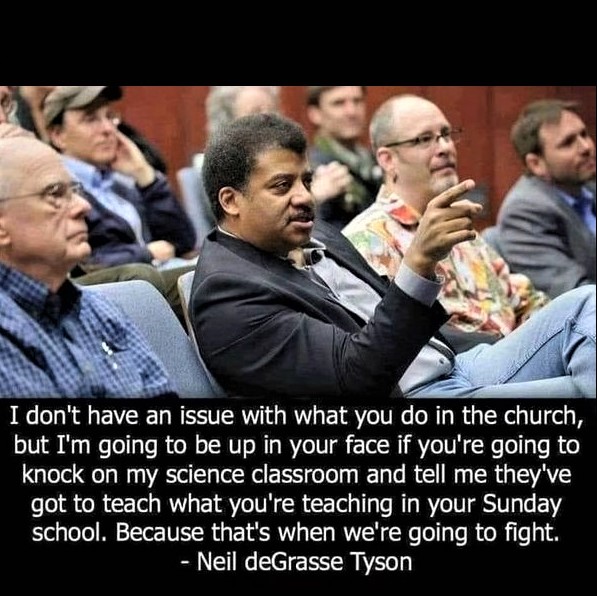
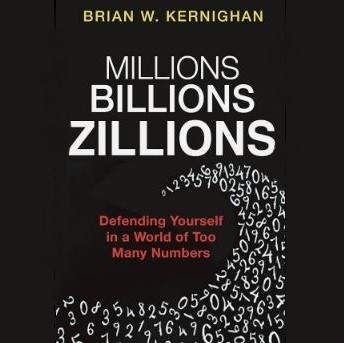
 (1) Images of the day: [Left] You are free to do what you want in your church: However, stay away from dictating what should be taught in science classrooms. [Center] Brian Kernighan's Millions, Billions, Zillions (see the last item below). [Right] Six generations (ages 111, 88, 70, 39, 16, 0.13 years) in one frame.
(1) Images of the day: [Left] You are free to do what you want in your church: However, stay away from dictating what should be taught in science classrooms. [Center] Brian Kernighan's Millions, Billions, Zillions (see the last item below). [Right] Six generations (ages 111, 88, 70, 39, 16, 0.13 years) in one frame.
(2) Where are Hamas leaders and administrators? Normally, when a country or territory faces an emergency (war or natural disaster), the leaders lead, calming the people, telling them where to go, and facilitating the distribution of water, food, & meds. They don't go underground or flee to other countries.
(3) "Margin Call": A 2011 American drama based loosely on Lehman Brothers and other over-leveraged investment banks that brought about the 2008 financial collapse. [10-minute video]
(4) One-liners: Brief news headlines, happenings, memes, and other items of general interest.
- War front has already been opened between Israel and Hezbollah in northern Israel.
- Will the US continue to appease the Houthis, despite their heightened aggression on behalf of Iran?
- Goleta Valley Library receives $4.3 million state grant for much-needed facility improvements.
- It's okay that some children are afraid of the dark, but it's tragic that some adults are afraid of the light.
- Persian cooking: Recipe for tahchin-e morgh (a dish with chicken & rice).
(5) Book review: Kernighan, Brian W., Millions, Billions, Zillions: Defending Yourself in a World of Too Many Numbers, Princeton, 2018. [My 4-star review of this book on GoodReads]
Brian Kernighan [1942-], a Canadian computer scientist, was one of the three scientists at Bell Labs who revolutionized their field by devising the UNIX operating system. Later, he co-authored the first book on the highly-influential C programming language. So, this book on huge numbers and their impact on our society, hailed by the publisher as "an essential guide to recognizing bogus numbers and misleading data," should be considered a side project for Kernighan.
We humans have the ability to recognize small numbers built into our brain by evolution. We immediately recognize the difference between one predator and three predators following us. Larger numbers are abstract constructs whose recognition depends on our acquired computational abilities. In modern times, we have developed an appreciation for million and billion, in part because of the widespread use of the terms "millionaire" and "billionaire." Even here, most people have no idea how long it takes to count from 1 to 1,000,000. Trillion-dollar national budgets are beyond the grasp of even the most-numerate people.
With the help of examples drawn from journalism, advertising, politics, and other domains, Kernighan shows us how numbers can mislead and misrepresent. Consequences of misunderstanding numbers can be serious in domains such as voting, purchasing, and making investment decisions.
One essential skill for our modern world is the ability to tell whether a number is a ballpark estimate or the result of precise calculations. Another is the skill to quickly determine whether a number makes sense. Ballpark estimates are misrepresented if they come with too many digits of precision. A columnist's 1996 claim that Americans receive 2 million tons of junk mail per day is easily refuted by dividing the number by the US population and then estimating the load of a mail-carrier for a residential neighborhood. Complementing the ability to recognize fake or misleading numbers is learning how to make our own estimates when needed.
Collectively, the skills mentioned in the preceding paragraph, which this book attempts to develop, help us avoid becoming a victim of inadvertent or deliberate number abuse.
2023/12/21 (Thursday): Presenting selected news, useful info, and oddities from around the Internet.


 (1) Images of the day: [Left] Celebrating the ancient Persian festival, Yalda Night (see the next item below). [center] Two math challenges: Simplify the first expression to the extent possible and solve the equation for n. [Right] Throwback Thursday: The garrote, is a device for execution that found its way to modern times from 1st-century-BC Rome. The condemned would sit with a metal clap wrapped around his neck before the executioner turned the screw that would theoretically burst his brainstem, killing him instantly.
(1) Images of the day: [Left] Celebrating the ancient Persian festival, Yalda Night (see the next item below). [center] Two math challenges: Simplify the first expression to the extent possible and solve the equation for n. [Right] Throwback Thursday: The garrote, is a device for execution that found its way to modern times from 1st-century-BC Rome. The condemned would sit with a metal clap wrapped around his neck before the executioner turned the screw that would theoretically burst his brainstem, killing him instantly.
(2) Happy Yada Night (Shab-e Yalda): Iranians celebrate the longest night of the year occurring at winter solstice, because in ancient times they believed that evil forces were strongest on this longest night of the year and they began to weaken over the following days and months. Let's hope that the evil forces of Iran's murderous Islamic regime weaken and disappear from the face of the Earth. The images above include a Persian poem I composed for Yalda Night in December 2022. [Persian traditions & songs for Yalda night]
(3) One-liners: Brief news headlines, happenings, memes, and other items of general interest.
- Rudi Giuliani was ordered to pay $148 million in a defamation case: Within days, he filed for bankruptcy.
- Saudi Arabia shoots down a Houthi missile, heading from Yemen towards Israel.
- Journalists @Sima_Sabet & @FardadFarahzad are targets of assassination plots in the UK by Iran's agents.
- Mass shooting in downtown Prague: The incident left 14 people dead and ~30 injured.
- Farhang Foundation's celebration of Yalda Night. [43-minute video]
- Facebook memory from Dec. 21, 2019: Two of the many versions of "Shab-e Toolani," a Yalda Night song.
- Facebook memory from Dec. 21, 2018: Earth at Winter Solstice.
- Facebook memory from Dec. 21, 2017: Calligraphic rendering of a verse by the Persian poet Sa'adi.
(4) Quote of the day: "By 2050, one thousand dollars of computing will exceed the processing power of all human brains on Earth." ~ Futurist & inventor Ray Kurzweil
(5) Tonight's Talangor Group talk: Dr. Hassan Hossein Zadeh spoke under the title "Yalda Night and Mithraism." Before the talk, a video clip about Yalda Night was screened by Mitra Zaimi and a poem composed for Yalda Night last year was recited by yours truly. There were ~70 attendees.
The talk consisted of several short sections, as follows.
Introduction: Yalda Night is the birthday of Mithra (the Sun, symbol of love & goodness).
Linguistic roots: The word "Yalda" is composed of two parts, "Yal" meaning "Sun" and "dey" meaning "day."
Cosmological connection: Winter Solstice, when we have the longest night of the year.
Customs: Putting on one's best clothes and enjoying fruits, while celebrating with joy and reading poetry.
Yalda Night spread: Redness of the spread & the fruit (pomegranate, watermelon) represent warmth & love.
History: The earliest celebration of Yalda is unknown, but the tradition is at least 2500 years old.
Mithraism: The ancient Mithra or Mehr is a symbol of love, loyalty, truthfulness, brotherhood & victory.
Rome's official religion: Mithraism was adopted by Romans and was practiced for 400 years.
Link to Christianity: Popularity of Mithraism in Rome led to Christianity adopting many of its traditions.
2023/12/19 (Tuesday): Presenting selected news, useful info, and oddities from around the Internet.


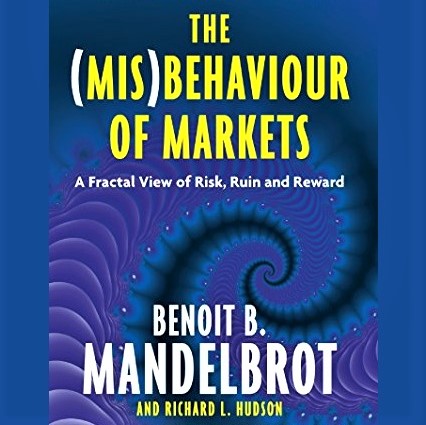 (1) Images of the day: [Left] Zoroaster statue by Edward Potter, installed in the 1950s atop New York's Appellate Court, Madison Square Park, Manhattan. [Center] Comedian Jon Stewart finally understands the Republicans: Fiscal responsibility is a requirement only for spending programs that help the poor. Paying for programs benefiting the rich is never discussed. [Right] The (Mis)Behavior of Markets (see the last item below).
(1) Images of the day: [Left] Zoroaster statue by Edward Potter, installed in the 1950s atop New York's Appellate Court, Madison Square Park, Manhattan. [Center] Comedian Jon Stewart finally understands the Republicans: Fiscal responsibility is a requirement only for spending programs that help the poor. Paying for programs benefiting the rich is never discussed. [Right] The (Mis)Behavior of Markets (see the last item below).
(2) Justice served: A Swedish appeals court upholds the life sentence of Hamid Nouri, one of the Iranian officials on the "Death Panel" responsible for the massacre of political prisoners in the late 1980s.
(3) One-liners: Brief news headlines, happenings, memes, and other items of general interest.
- Vera Molnar, a Hungarian-born artist who has been called the godmother of generative art, dead at 99.
- Brain-like supercomputer, that's much smaller & uses less energy than comparable machines, due in April.
- Albert Einstein on education: "Education isn't the learning of facts; it's the training of the mind to think."
- Einstein's other equation, A = x + y + z: A is success, x is work, y is play, z is keeping your mouth shut.
(4) Book review: Mandelbrot, Benoit B. and Richard L. Hudson, The (Mis)Behaviour of Markets: A Fractal View of Risk, Ruin, and Reward, Profile Books, 2008. [My 5-star review of this book on GoodReads]
Benoit Mandelbrot's influence on geometry has been likened to Albert Einstein's contributions to physics. In this book, Mandelbrot brings his ideas on chaos and complexity science to the field of economics, making a convincing case that decision-making based on normal distribution, taught to business majors for over a century, need to be updated and that fractals provide a useful tool for improving the predictions of existing economic theories.
As an example of the difficulty of predicting or even recognizing market variations after the fact, the authors present four price-charts of the kind you find in a brokerage-house report, two of which represent the prices of real financial instruments and two are forgeries. The challenge is to identify the real ones. Putting charts of the daily price changes side-by-side with the price charts helps us identify the real and forged charts.
The paradox of markets is that both real human emotions/decisions and stochastic/chance events affect the outcomes. A company's share price may rise because new income-producing contracts were signed, which prompted a bunch of investors to buy shares. On the other hand, there are seemingly random variations that no one understands and occasionally catch everyone by surprise, because normal distribution suggests that wild fluctuations are rare events.
For the period 1916-2003, the bell-curve-based theory predicts 58 days when the DJIA index moved more than 3.4 percent, but there were 1001. Theory predicts 6 days of index swings beyond 4.5 percent, but there were 366. And index swings of more than 7.0 percent should come once every 300 millennia; in fact, the 20th century saw 48 such days.
Mandelbrot proposes that there are two mechanisms at work. The Gaussian mechanism favors stability: The best predictor for tomorrow's price is today's price. There are frequent small changes and rare jumps. Fractal geometry provides just the right tool to model abrupt changes of the kind that takes people by surprise. In the same way that the fractal patterns repeat themselves along all time frames, stock prices also appear to move in replicating geometric patterns through time.
Even though Mandelbrot's insights provide us with an understanding of why markets behave the way they do, these insights do not help us predict market movements. Fractals explain roughness, a property that is superimposed on the smoother behavior provided by the Gaussian model. Prediction based on fractals would require that we estimate the length of time the fractal should be repeated, which is inherently difficult, given the infinitely-recursive nature of fractals.
You can hear Mandelbrot talk about the book in this 73-minute lecture he gave at Microsoft Research.
2023/12/17 (Sunday): Presenting selected news, useful info, and oddities from around the Internet.


 (1) Images of the day: [Left] Italy's Dolomite Mountains (credit: NYT). [Center] Acoustic design of wall and ceiling of the music hall at Al-e-Qapu Palace, Esfahan, Iran. [Right] A plate of exotic fruit to celebrate the end of the fall quarter: Winter quarter will begin on January 8, so we have 3 weeks to enjoy the holidays.
(1) Images of the day: [Left] Italy's Dolomite Mountains (credit: NYT). [Center] Acoustic design of wall and ceiling of the music hall at Al-e-Qapu Palace, Esfahan, Iran. [Right] A plate of exotic fruit to celebrate the end of the fall quarter: Winter quarter will begin on January 8, so we have 3 weeks to enjoy the holidays.
(2) European Parliament awards the Sakharov Prize, EU's top human-rights honor, to Mahsa Amini and the #WomanLifeFreedom movement. Amini's family members were barred from traveling to accept the award.
(3) Do not trust dietary recommendations: After decades of telling us that whole-milk & other full-fat dairy products are bad for us, thus bringing about an endless array of low-fat and non-fat products, scientists now think that dairy fat may actually be good for us, reducing the risk of diabetes & lowering blood pressure.
(4) One-liners: Brief news headlines, happenings, memes, and other items of general interest.
- Fake-news has risen 1000% since May: AI is making it easy for anyone to create propaganda outlets.
- Ex-officials of Islamic Republic of Iran living in US & Canada are facing increased scrutiny.
- Today, we came across some of my daughter's school artwork from years past.
- Jungle law: Buffalo relentlessly defends its calf against lions, before being forced to surrender.
(5) In the US, the best political commentaries come from comedians: Palestinians should set a more-realistic goal than "From the River to the Sea." Wars end through negotiations, which require a bit more flexibility than demanding 100% for your side and offering 0% to the other side.
(6) Pinkwashing: According to Palestinian-run BDS website (boycott, divestment, sanctions), pinkwashing is a propaganda ploy by the Israeli government "that cynically exploits LGBTQIA+ rights to project a progressive image while concealing Israel's occupation and apartheid policies oppressing Palestinians." It seems that all groups and nationalities are prone to falling for baseless conspiracy theories.
(7) AI job recruiters are here: Jenny Johnson, introducing herself as "the AI representation of elite recruiting ... with real-time global job insights, extensive industry knowledge, and 24/7 availability," contacted me (actually, the e-mail was sent mistakenly to my daughter), asking whether a paragraph she had put together about who I am professionally is accurate, so that she could send me "curated opportunities based on this profile." The paragraph was actually quite good as an AI program's work.
(8) The biggest Hamas tunnel in Gaza Strip uncovered by Israeli forces: The honeycomb of passageways features a drainage system, electricity, ventilation, sewage, rails, and a communication network.
(9) The beauties of Markoff equation: The equation x^2 + y^2 + z^2 = 3xyz has an infinite number of integer solutions and finding those solution reveals much beautiful mathematics. For example, if (x, y, z) is a solution, then so is (3yz – x, y, z). A Markoff number is a positive integer z such that there exist two positive integers x and y satisfying the Markoff equation. The first few Markoff numbers are 1, 2, 5, 13, 29, 34, 89, 169, 194, 233, 433, 610, 985, ... ; Compare these with Fibonacci numbers 1, 1, 2, 3, 5, 8, 13, 21, 34, 55, 89, 144, 233, 377, 610, ... to discover an interesting relationship.
2023/12/15 (Friday): Presenting selected news, useful info, and oddities from around the Internet.
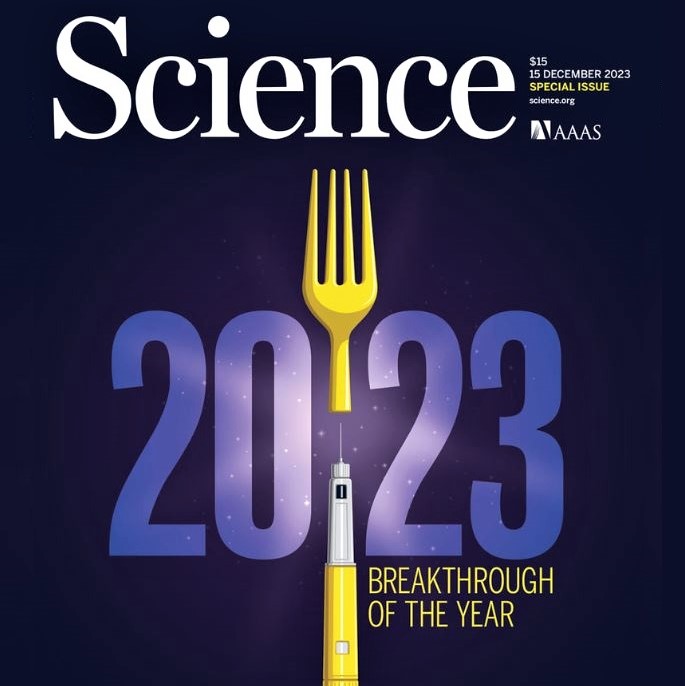
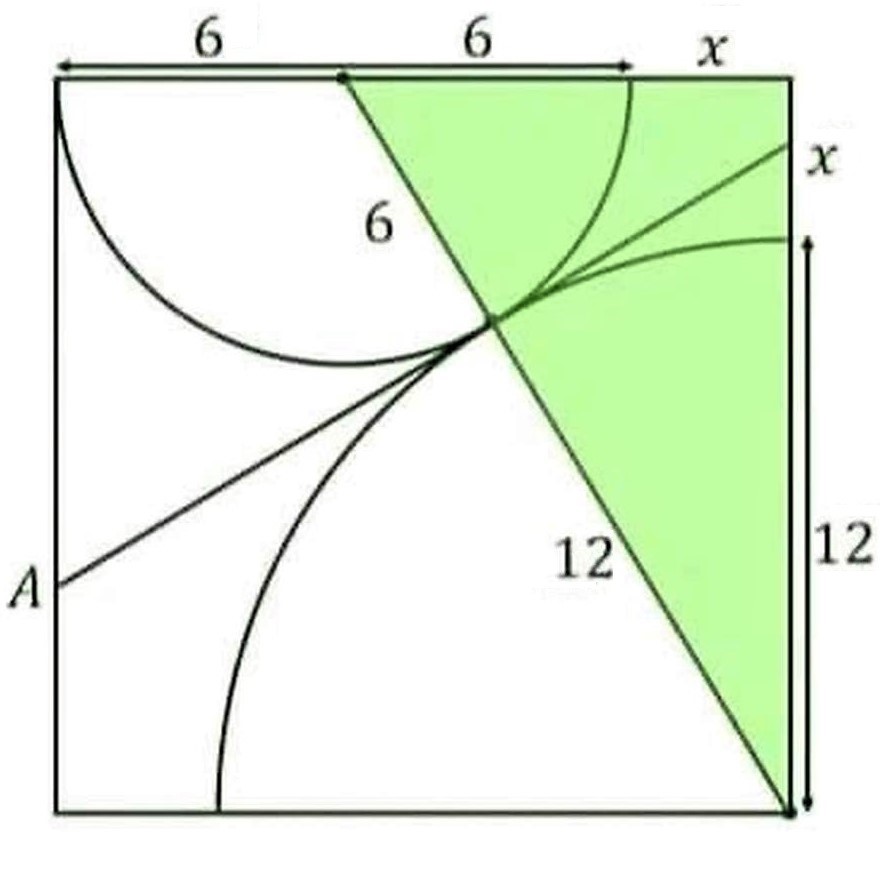
 (1) Images of the day: [Left] Breaktrough in treating obesity (see the next item below). [Center] Math puzzle: We have an outer square, a quarter-circle of radius 12, and a half-circle of radius 6. Find the area of the green right triangle. [Right] Last night's shirin-polo (sweet or adorned rice) for early dinner, by my daughter.
(1) Images of the day: [Left] Breaktrough in treating obesity (see the next item below). [Center] Math puzzle: We have an outer square, a quarter-circle of radius 12, and a half-circle of radius 6. Find the area of the green right triangle. [Right] Last night's shirin-polo (sweet or adorned rice) for early dinner, by my daughter.
(2) Obesity meets its match: Drug treatments for obesity, a major public-health concern in the US, have a sorry past. But now, new therapies are breaking the mold, raising hope that they may lower rates of obesity and interlinked chronic diseases. The drugs, which mimic a gut hormone called glucagon-like peptide-1, are reshaping medicine, popular culture, and even global markets in ways both electrifying and discomfiting.
(3) Pluto back in the spotlight: It was demoted from a planet to a dwarf planet (it's smaller than our Moon) in 2006. Now, its unusually large moon, Charon, with a diameter that is over half that of Pluto itself, and the possibility of life beneath the surface of the extremely-cold dwarf planet have gotten scientists excited.
(4) One-liners: Brief news headlines, happenings, memes, and other items of general interest.
- The next global superpower isn't who you think: An insightful 15-minute TED talk by Ian Bremmer.
- Is my toddler a stochastic parrot? An insightful, creative, and moving take on AI. [Illustrated essay]
- We tend to think that Americans aren't happy at work, but persistent employment misery may be a myth.
- McDonald's is releasing a new limited-edition Happy Meal for adults, complete with a very special toy.
(5) The Sun's warmth is an almost endless source of energy for us on Earth: Now, it seems, the coldness of deep space can also be tapped for energy. It may be decades before this scheme can be used at scale, but already chilling water to cool buildings by as much as 5 degrees Celsius has been demonstrated. The key to this advance is a new material that is remarkably efficient at sending heat out to the vast reservoir of cold in deep space, while preventing heating from both the Sun and the environment.
(6) The AI weather forecaster arrives: Trained on 40 years of weather data and models, artificial intelligence can now forecast the paths of hurricanes with eerie accuracy. [Source: Science magazine]
(7) Proof-of-concept spintronic probabilistic computer developed by Japan's Tohoku U. and UC Santa Barbara: The computer uses stochastic magnetic tunnel junctions interfaced with powerful FPGAs to achieve robustness and offer the fastest p-bits at the circuit level.
(8) Is Hamas really Islamic? Many, including some Muslims, denounce Hamas as a fringe group that betrays Islamic values, but Hamas does consider itself first and foremost an Islamic movement, dedicated to enforcing the dictates of Islam (sharia), including through jihad.
(9) A viral dance and "Happiness Campaign" frustrates Iran's clerics: It all started when a 70-year-old fish-market stall owner nicknamed "Booghy" grooved in public, an act the regime labeled as "criminal dancing."
2023/12/14 (Thursday): Presenting selected news, useful info, and oddities from around the Internet.


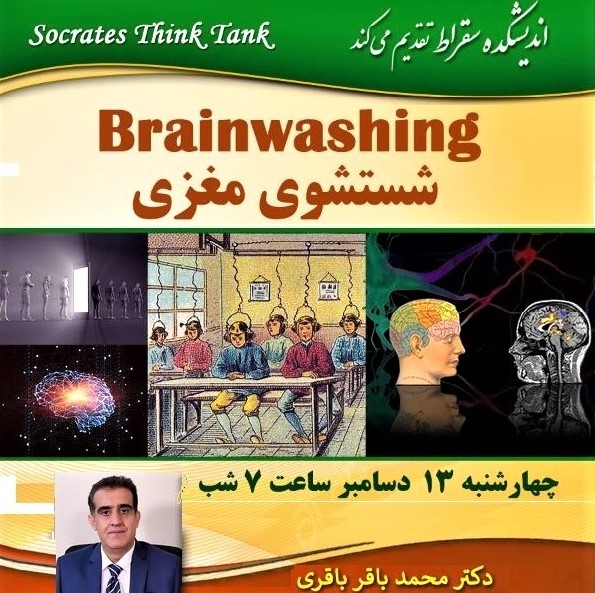 (1) Images of the day: [Left] Santa Barbara's Courthouse: Photographed yesterday on a spring-like early afternoon. [Center] Three Iranian women in the spotlight (see the next item below). [Right] Socrates Think Tank talk on brainwashing (see the last item below).
(1) Images of the day: [Left] Santa Barbara's Courthouse: Photographed yesterday on a spring-like early afternoon. [Center] Three Iranian women in the spotlight (see the next item below). [Right] Socrates Think Tank talk on brainwashing (see the last item below).
(2) Who are the sworn enemies of Iran & Iranians? From social media posts, you would think that Golshifteh Farahani, Narges Mohammadi, and Shirin Ebadi are the enemies, deflecting the spotlight from Ali Khamenei and his criminal gang. More has been written about Farahani's singing at the Nobel dinner than about the dictator keeping Mohammadi in prison and depriving her of personally accepting the biggest honor of her life. It can't be accidental that all three perceived enemies are women!
(3) One-liners: Brief news headlines, happenings, memes, and other items of general interest.
- Narges Mohammadi's statement for her Nobel Peace Prize. [French, English, Persian]
- Nobel Laureate Narges Mohammadi's letter to Sweden's Prime Minister Ulf Hjalmar Kristersson.
- A logo that NASA dumped over 30 years ago is making a comeback, both inside and outside the agency.
- New York, IBM, and Micron will collaborate in $10 billion chip research complex near U. Albany. [WSJ]
(4) Wednesday night's Socrates Think Tank talk: Dr. Mohammad B. Bagheri spoke on "Brainwashing." There were ~130 attendees.
One problem with studying brainwashing is that both those who engage in it and their victims tend to vehemently deny being a part of it. We tend to view brainwashed people as unfortunate others, even though we may also be victims without knowing it. Remember that no one is immune from brainwashing; it isn't something that happens only to others.
Brainwashing is a process of controlling a person's mind by interfering with his/her thoughts and beliefs. It is much harder to brainwash someone who is familiar with critical thinking, but just being educated does not immunize one against it.
Brainwashing can be of soft or hard kind. Soft brainwashing most-commonly occurs through education, news broadcasts, commercial ads, party politics, and punishment/rehabilitation (as in a jail). Hard brainwashing often entails various kinds of pressure, frightening, torture, or various kinds of drugs.
Question: Both in English and Persian the word "brainwashing" brings to mind removing or erasing brain contents, whereas what we really mean is altering thoughts and beliefs, that is, erasing and replacing them with new ones. Unfortunately, these non-descriptive terms are too established for us to change them. Even in French, the term for washing (lavage) is used.
Answer: Perhaps this non-descriptive term, that has to be constantly defined and explained, is one of the reasons for brainwashing not enjoying acceptance in the scientific community (it is often viewed as pseudo-science). Two other terms, "Coercive persuasion" and "mind control," are a lot better, but they are not used as much as brainwashing.
2023/12/13 (Wednesday): Presenting selected news, useful info, and oddities from around the Internet.


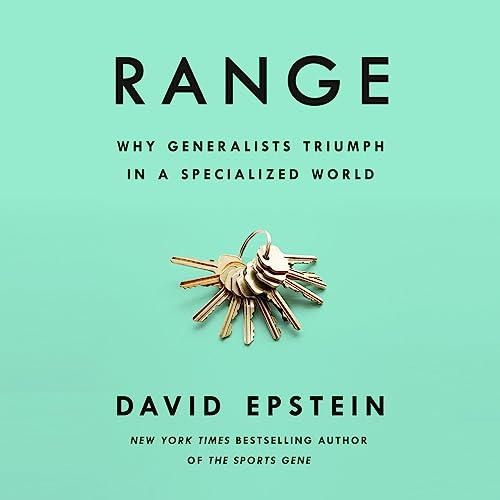 (1) Images of the day: [Left] "It's Christmas Once Again in Santa Barbara" is the title of a rather cheesy song written by Barry De Vorzon, who explains its origins at the beginning of this 4-minute music video (image credit: Santa Barbara Independent). [Center] Watercolor portrait of Justice Ruth Bader Ginsburg, by American artist Pam Wenger (1953-); on paper, 9 x 12. [Right] David Epstein's Range (see the last item below).
(1) Images of the day: [Left] "It's Christmas Once Again in Santa Barbara" is the title of a rather cheesy song written by Barry De Vorzon, who explains its origins at the beginning of this 4-minute music video (image credit: Santa Barbara Independent). [Center] Watercolor portrait of Justice Ruth Bader Ginsburg, by American artist Pam Wenger (1953-); on paper, 9 x 12. [Right] David Epstein's Range (see the last item below).
(2) "Saffron and Shabbat: Stories of Iranian Jewish Cooking in Diaspora": This is the title of a guest post on Ajam Media Collective by Tannaz Sassooni (@tannazsassooni), a Los-Angeles-based food writer. She begins by noting that she grew up on the floor of the kitchen, where her mother cooked dinner every night of the week. Sassooni ends her wonderfully-illustrated post by noting that if we don't document the rich culinary legacy that our matriarch left us, the heritage will be lost, as each new generation in the family living in diaspora moves further from the traditions of a distant 'home.'
(3) One-liners: Brief news headlines, happenings, memes, and other items of general interest.
- Discussion on the Confederate Flag in a 1988 episode of "Golden Girls." [4-minute video]
- Here's a challenge for you: A daunting 42,000-piece jigsaw puzzle. I haven't gone beyond 2500 pieces!
- Armenians are happy people: Part of a concert in which even the orchestra conductor dances!
- A smart comedy routine about why it makes sense to have 13 four-week months in a year.
- Facebook memory from Dec. 13, 2020: Darvish Khan's "Reng-e Parichehr & Parizad" (Persian music).
- Facebook memory from Dec. 13, 2018: Protest sign reading "We need healthcare not wealthcare."
(4) Book review: Epstein, David, Range: Why Generalists Triumph in a Specialized World, unabridged 11-hour audiobook, read by Will Damron, Penguin Audio, 2019.
[My 4-star review of this book on GoodReads]
Malcolm Gladwell popularized the so-called "10,000-Hour Rule," the notion that repetition and practice are necessary for mastering something. Epstein argues that this theory of specialization applies to a limited number of skills and fails to set its adherents up for success in others. There is no evidence that someone who focuses on a single instrument beginning with childhood always ends up being more successful than multi-instrument experimenters.
Examples where repetition and practice pay off include playing classical music and golf (where the player repeatedly encounters pretty much similar situations). In other areas, sampling from a variety of domains before settling on a specialty or skill to pursue, that is having a broader range, is helpful.
Epstein maintains that the advice "never, ever quit" may be misguided. In fact, knowing when to quit one activity and starting something different is quite valuable. Van Gogh, who died at age 37, didn't develop his distinctive style until he was 34. He experimented with many skills and trades, failing in all of them, until a chance application of thick paint when he was painting during a storm created his characteristically bold style.
From his interviews with many successful people, Epstein arrived at the conclusion that late-blooming and meandering paths are the general rule rather than the exception. According to Epstein, avoiding super-specialization, or combining breadth and depth, allows you to benefit from the outsider advantage. The very top scientists participate in activities outside their areas of expertise. The higher up they are in scientific prestige, the more likely they are to have outside interests.
Active cultivation of inefficiency via taking the road less traveled buys you more advantages and is definitely not a waste of time. Frequent quitters and switchers end up with the most-fulfilling careers. In today's complex world, people who think broadly and embrace diverse experiences & perspectives will increasingly thrive.
[P.S.: A Persian review/discussion of Range is available in this 58-minute BPlus podcast.]
2023/12/11 (Monday): Presenting selected news, useful info, and oddities from around the Internet.
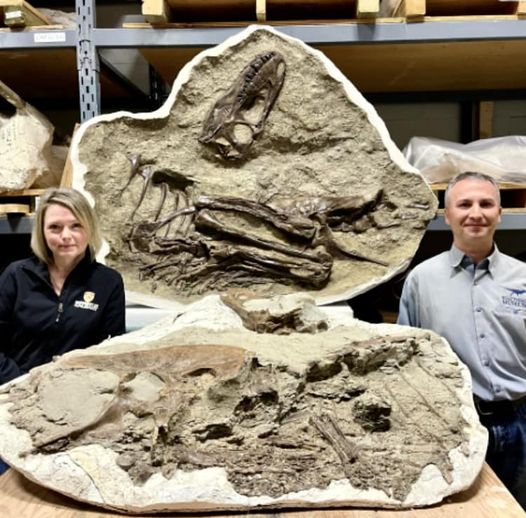
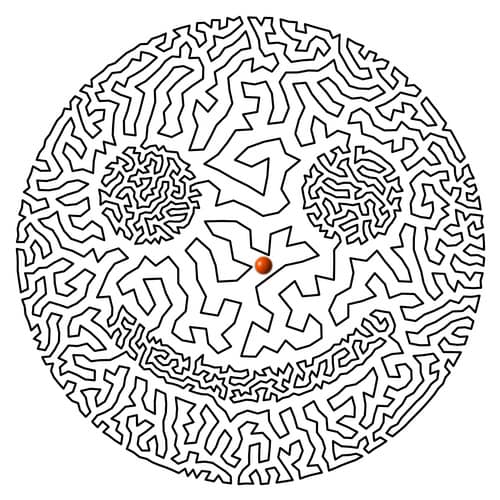
 (1) Images of the day: [Left] A first of its kind archaeological discovery: Two researchers have found a fossil of Gorgosaurus, T. rex's smaller cousin, with the partially-digested drumsticks of two birdlike dinosaurs where its stomach once was. The discovery opens a window into the behavior and diet of a predator that lived 75 million years ago. [Center] Math puzzle: A closed curve divides the points on a plane into three disjoint subsets, that is, points inside the curve, points outside the curve, and those on the curve. For the closed curve shown, how would you go about determining whether the orange point is inside or outside the curve? [Right] After a couple of weeks of intensive assembly work, I am almost finished with my combination office/library/bedroom. Just have to place a desk along the third wall and move my books into the bookcases.
(1) Images of the day: [Left] A first of its kind archaeological discovery: Two researchers have found a fossil of Gorgosaurus, T. rex's smaller cousin, with the partially-digested drumsticks of two birdlike dinosaurs where its stomach once was. The discovery opens a window into the behavior and diet of a predator that lived 75 million years ago. [Center] Math puzzle: A closed curve divides the points on a plane into three disjoint subsets, that is, points inside the curve, points outside the curve, and those on the curve. For the closed curve shown, how would you go about determining whether the orange point is inside or outside the curve? [Right] After a couple of weeks of intensive assembly work, I am almost finished with my combination office/library/bedroom. Just have to place a desk along the third wall and move my books into the bookcases.
(2) Rise in US traffic deaths: Until a decade ago, US traffic deaths had fallen by 90% from their 1920 level, thanks to better road & vehicle designs and greater awareness of drunken driving. While the decline has continued over the past decade in nearly all advanced countries, the US rate is on the rise again. [Source: NYT]
(3) One-liners: Brief news headlines, happenings, memes, and other items of general interest.
- New engineering advance: Floating solar farms are proving feasible and effective.
- For the 2024 Golden Globe Awards, "Barbie" and "Oppenheimer" lead the pack with 9 and 8 nominations.
- How Israel was born: A 14-minute video from the BPlus podcast creators (in Persian, with English subtitles).
- Mahsa Vahdat sings a Persian song, with Kurdish melody, at the 2023 Nobel Peace Prize ceremony.
- When dancing is deemed a crime in Iran, it becomes a political statement and an act of civil disobedience.
- Iranians are shaking & moving to the same tune that got an old man in trouble for "criminal" dancing.
(4) Some Iranians need to lighten up: The mullahs have declared dancing a criminal act, going as far as blocking the Instagram account of an old man who joyfully danced in an Iranian fish market. Other demonstrations of joy are similarly criminalized. One would think that younger, more-modern Iranians have no problems with showing joy on the streets or with breaking the stuffy "royal" protocol at the Norwegian dinner in honor of Narges Mohammadi, the 2023 Nobel Peace Prize winner, who is in prison and could not attend. Didn't we rebel against a "royal" protocol and aren't we fighting against a "divine" protocol?
(5) Global warmth: We worry about another degree or two increase in average temperatures on Earth, as we should. But macro-level temperatures do not reflect what individual human beings experience. For example, many women who spend significant time in kitchens already suffer from the ill health effects of exposure to high temperatures, particularly in developing countries. Ditto for certain factory or mine workers. A further increase in temperatures will only exacerbate these health consequences. Economically-disadvantaged groups bear the brunt of rising temperatures and the resulting extreme weather conditions. Urban neighborhood, where the poor live, are affected more than suburbs or rural aeras.
(6) A final thought for the day, from comedian Jimmy Kimmel: "Just because you think Alfred is too old to take care of the Batcave, you don't replace him with the Joker."
2023/12/10 (Sunday): Presenting selected news, useful info, and oddities from around the Internet.


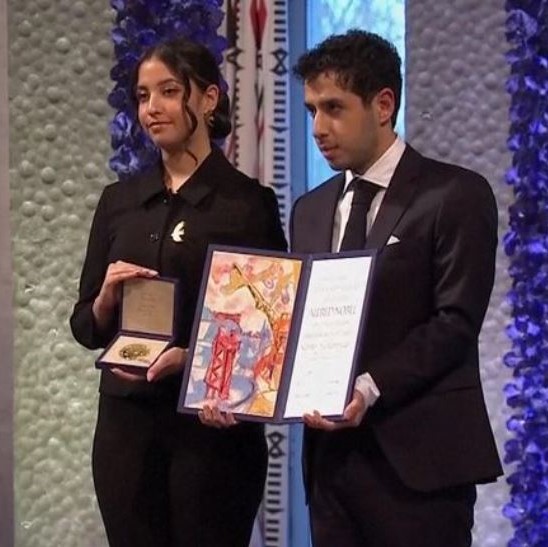
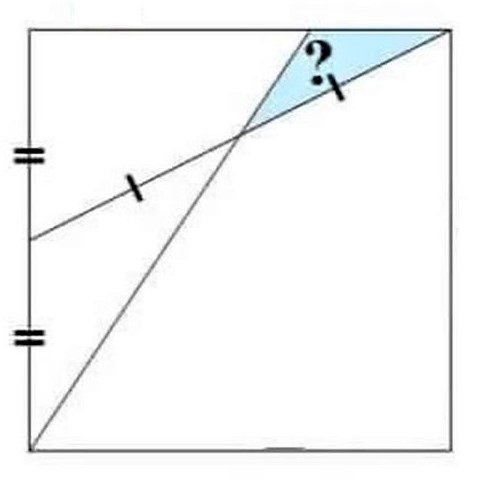

 (1) Images of the day: [Top left] Loobia-polo (bean-rice) dinner by my daughter. [Top center] My makeshift work bench, as I continue to assemble IKEA bookcases: Only a couple more to go, plus extension shelves at the top to go all the way to the ceiling. [Top right] Narges Mohammadi's children accept her Nobel Peace Prize on her behalf, as she remains imprisoned in Iran: Mojgan Shajarian performs "Morgh-e Sahar" ("Dawn Bird") at the ceremonies (4-minute video). [Bottom row] Three math puzzles: Find the fraction of each square's area that is shaded blue (left & right) and the ratio R/r in the center diagram with 2 circles, a semicircle, & a square.
(1) Images of the day: [Top left] Loobia-polo (bean-rice) dinner by my daughter. [Top center] My makeshift work bench, as I continue to assemble IKEA bookcases: Only a couple more to go, plus extension shelves at the top to go all the way to the ceiling. [Top right] Narges Mohammadi's children accept her Nobel Peace Prize on her behalf, as she remains imprisoned in Iran: Mojgan Shajarian performs "Morgh-e Sahar" ("Dawn Bird") at the ceremonies (4-minute video). [Bottom row] Three math puzzles: Find the fraction of each square's area that is shaded blue (left & right) and the ratio R/r in the center diagram with 2 circles, a semicircle, & a square.
(2) "Criminal dancing": Two words that tell you all you need to know about Iran's joyless theocratic regime, which has blocked an old man's Instagram account because he posted a video of himself dancing.
(3) Meanwhile in Texas: Six middle-age-to-older men assisted by three out-of-touch women sitting on the Texas Supreme Court have temporarily halted a lower court's decision to authorize a woman to have an emergency abortion despite the state's near-total ban.
(4) One-liners: Brief news headlines, happenings, memes, and other items of general interest.
- Egypt's Pres. Sisi is Gaza war's big winner: His sinking popularity bounced back ahead of today's election.
- Penn President resigns after allowing a Palestinian conference on campus & evading questions in Congress.
- Amnesty International publishes 120-page report on dissidents being raped by Iran's security forces.
- The designation A-list university finds a new meaning: At Yale, nearly everyone gets "A"s.
- The saga of corruption continues in Iran: Trillions of tomans have disappeared in Tehran mayor's office.
- Missing tomato found at the International Space Station: "Houston, we have the tomato"!
- Just came across this TV ad jingle for a constipation medication: "Number 2 should be easy to do"!
- "Jamaal Jamaaloo": An old southern-Iranian song has gone viral in India, thanks to a Bollywood movie.
(5) Carl Jung on evil: "In the course of his long and productive life, Jung said a great deal about evil but relatively seldom in one place and never in the form of a single essay on the subject. His position must therefore be pieced together from many writings. However, Jung did have a consistent position on evil, which is clearly apparent in this collection. In his early work on the unconscious, Jung considered the role of evil in the mental processes of the severely disturbed. Later, he viewed the question of moral choices within the framework of his ideas about archetypes and the shadow. Murray Stein's selection and introduction show how Jung's thoughts on evil are related to these other facets of his wide-ranging thinking. Jung on Evil will appeal to all those interested in Jung, as well as students of religion, ethics and psychology."
As contemporary Persian poet Fereydoon Moshiri wrote in his wonderful poem "Gorg," there is a wolf (analog of our dark side) embedded in each of us which is responsible for all immoral and cruel acts, and this wolf is connected to and is nourished by wolves in other people.
2023/12/08 (Friday): Presenting selected news, useful info, and oddities from around the Internet.


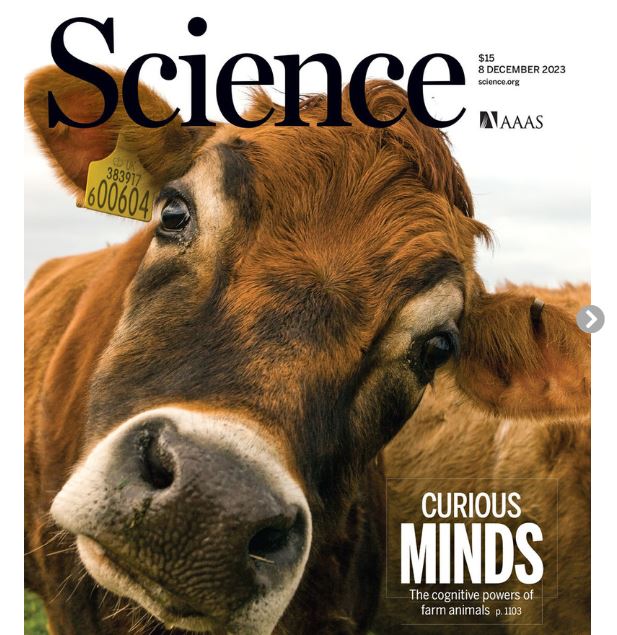

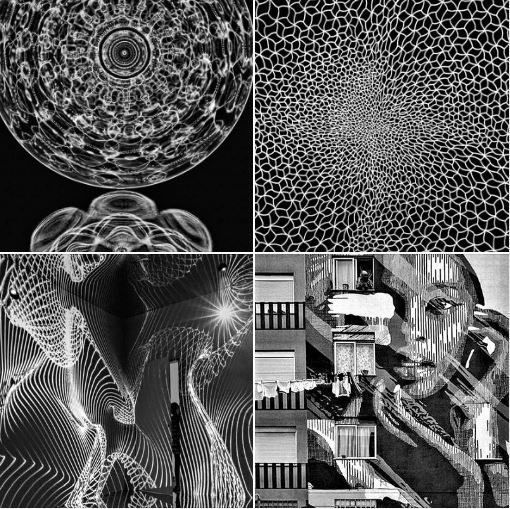
 (1) Images of the day: [Top left] Happy Hanukkah to all those observing the ancient Jewish Festival of Lights: This year, the festival is on December 08-15, and as usual for Jewish festivals, observance started last night, on the eve of the first day. [Top center] I love IKEA's designs: The Billy bookcases I am assembling for my new home have a recess in the lower back side to accommodate baseboards. [Top right] The cognitive powers of farm animals: New research is revealing surprising complexity in the minds of goats, pigs, and other livestock. [Bottom left & center] A few color and B&W images from Your Brain on Art, the book chosen for "UCSB Reads 2024" program. [Bottom right] A panel discussion on Iranian film history (see the last item below).
(1) Images of the day: [Top left] Happy Hanukkah to all those observing the ancient Jewish Festival of Lights: This year, the festival is on December 08-15, and as usual for Jewish festivals, observance started last night, on the eve of the first day. [Top center] I love IKEA's designs: The Billy bookcases I am assembling for my new home have a recess in the lower back side to accommodate baseboards. [Top right] The cognitive powers of farm animals: New research is revealing surprising complexity in the minds of goats, pigs, and other livestock. [Bottom left & center] A few color and B&W images from Your Brain on Art, the book chosen for "UCSB Reads 2024" program. [Bottom right] A panel discussion on Iranian film history (see the last item below).
(2) Many anti-Israeli protesters claim that they are anti-Zionists, not anti-Semites: I am willing to accept this if they also say that they are pro-Palestinians, not pro-murderous-Hamas.
(3) One-liners: Brief news headlines, happenings, memes, and other items of general interest.
- U. Nevada Las Vegas shooting leaves 3 dead and 1 critically injured: The gunman was killed by police.
- Israel says it plans to flood the Hamas tunnels in Gaza with sea water.
- Surprise, surprise: Vladimir Putin says he will seek another term as President of Russia.
- A win for Russia: The US Senate votes down Ukraine aid package, despite plea by President Biden.
(4) Former Islamic Republic of Iran top-level official ousted from his US faculty position: Oberlin College has removed Professor Mohammad Jafar Mahallati from his tenured position.
(5) "Former Soviet Central Asia and the Palestinian-Israeli Conflict": The new republics with significant Muslim populations have little baggage in the conflict, given their fairly recent independence. This provides an opportunity for both sides of the conflict to recruit them as allies.
(6) Iranian Cinema: 123 Years of History": This was the title of a panel discussion, sponsored by Georgetown University's Jalinous Lecture Series, featuring:
- Dr. Golbar Rekabtalaei (Historian, Author, Assoc. Prof. of History, Seton Hall U.)
- Dr. Pedram Partovi (Historian, Author, Assoc. Prof. of History, American U.)
- Ehsan Khoshbakht (Filmmaker, Film Curator, Writer, Critic)
In the late 1990s, a vault in Golestan Palace was discovered to hold films from the Qajar era, which revealed Iranian Cinema to be much older that we previously thought. Early Iranian films were private or shown in very limited screenings. Commercial Iranian cinema came much later, with the industry being younger than those in India and several other countries in the region.
Dubbing foreign films into Persian began in Italy and Turkey, before a thriving dubbing industry was established inside Iran. Similarly, early Persian films were made by Iranians in other countries (e.g., India) or by foreign filmmakers inside Iran, before a domestic film industry came into being.
The "alternative cinema" that emerged from the 1960s was mostly government-supported. Ironically, while the government was instrumental in launching a more-progressive Iranian cinema, its control and censorship tendencies have been a constant theme that have stretched through the Islamic Republic.
The term "filmfarsi," which became a pejorative term for poorly-made Iranian films, was initially used to advertise dubbed films that allowed Iranian audiences to watch films in Persian.
2023/12/07 (Thursday): Presenting selected news, useful info, and oddities from around the Internet.


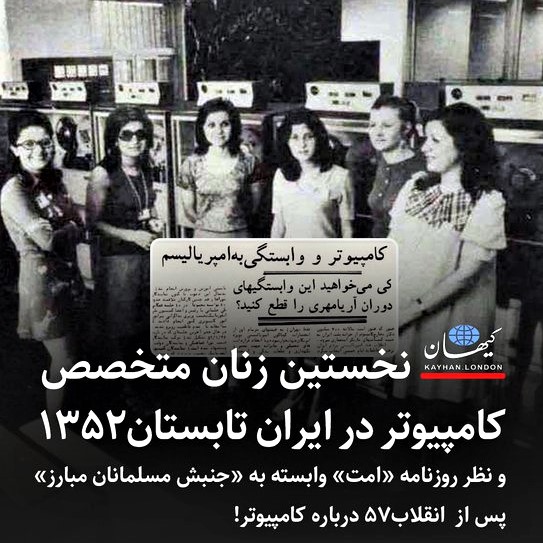


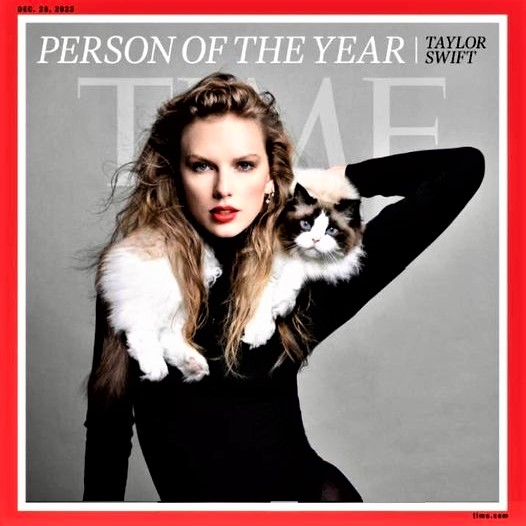 (1) Images of the day: [Top left] Throwback Thursday (1): Iranian Girl Scouts from the city of Sanandaj in the 1960s. [Top center] TBT (2): Gigantic newspaper headline from 1979, announcing Shah's departure from Iran (photo by Akbar Nazemi). [Top right] TBT (3): Iranian women computer specialists in a photo from the summer of 1973, and the post-Islamic-Revolution headline of a fundamentalist newspaper about computers bringing dependence on imperialism. [Bottom left] TED Immigrant Diaspora begins with an Iranian installment (see the next item below). [Bottom center] IEEE Central Coast Section event in Santa Barbara (see the last item below). [Bottom right] Taylor Swift has been chosen as Time magazine's Person of the Year for 2023.
(1) Images of the day: [Top left] Throwback Thursday (1): Iranian Girl Scouts from the city of Sanandaj in the 1960s. [Top center] TBT (2): Gigantic newspaper headline from 1979, announcing Shah's departure from Iran (photo by Akbar Nazemi). [Top right] TBT (3): Iranian women computer specialists in a photo from the summer of 1973, and the post-Islamic-Revolution headline of a fundamentalist newspaper about computers bringing dependence on imperialism. [Bottom left] TED Immigrant Diaspora begins with an Iranian installment (see the next item below). [Bottom center] IEEE Central Coast Section event in Santa Barbara (see the last item below). [Bottom right] Taylor Swift has been chosen as Time magazine's Person of the Year for 2023.
(2) "TED Immigrant Diaspora: Iranian": In a series of eight brief talks under the sponsorship of Farhang Foundation, young Iranian immigrants related their stories, composed of obstacles & heartbreaks as well as unexpected & much-deserved successes.
The participants were: Desiree Akhavan (Filmmaker);
Leili Anvar (Poetry Professor);
Dr. Abbas Ardehali (Cardiothoracic Surgeon);
Maryam Banikarim (Recovering Executive);
Newsha Ghaeli (Data Detective);
Dr. Hani Goodarzi (Biomedical Researcher);
Golriz Lucina (Creative Producer);
Niaz Nawab (Singer & Composer).
The program starts at the 12:00-minute mark of this 113-minute video.
(3) New reporting on October 7 crimes: Hamas terrorists raped Israeli women both before & after they were shot in the head. Women's body parts were tossed around for fun. ISIS actions seem tame by comparison.
(4) One-liners: Brief news headlines, happenings, memes, and other items of general interest.
- Presidents of Harvard, Penn, & MIT grilled by Congress for how they dealt with anti-Semitism on campus.
- Norman Lear [1922-2023], who revolutionized TV comedy with "All in the Family," dead at 101.
- Woman, who hurled a scalding burrito bowl at a Chipotle manager, sentenced to work at a fast-food joint.
- A viral video shows a robot figure-skating and landing a quadruple axel: It's not real, folks!
(5) Kevin McCarthy will retire at the end of 2023, one year before the end of his term: This is classic chickening out. He knows his chances of being re-elected are slim, so this early retirement will save him from having to explain his not running or a possible defeat, not to mention having to choose between supporting Trump or one of his primary challengers in the upcoming election year.
(6) Wednesday's IEEE Central Coast Section Holiday Banquet and Tech Talk: The venue was Mulligan's Cafe & Bar at Santa Barbara Golf Club. After a cocktail hour with hors d'oeuvres, dinner was served. The guest speaker, Dr. Paul Leonardi, Duca Family Professor & Chair of UCSB's Technology Management Department, spoke under the title "Helping Employees Succeed with Generative AI."
Recent news stories tout the productivity-amplifying and time-saving potential of generative AI tools like ChatGPT. But the reality is that most companies are not seeing such gains. Leonardi outlined the unique challenges that large language models (LLMs) present, including the fact that, by the very nature of their design, they're constantly changing.
Leonardi explained his practical STEP framework, which he developed by working with top companies that have successfully implemented GenAI to empower employees. He discussed how to create new avenues for value creation through improving employee experiences and turning attractive productivity numbers from potential into reality.
2023/12/05 (Tuesday): Presenting selected news, useful info, and oddities from around the Internet.


 (1) Images of the day: [Left] More-efficient assembly of 20 IKEA bookcases: After assembling 2 of the bookcases one at a time, I decided to take all of them out of the cardboard boxes, sort the parts, and then use an assembly-line approach for completing the task. With all the boxes recycled, I also have more space in the room to do the work. [Center] Persian poetry & calligraphy: Opening verse from a beautiful poem by Mohammad-Hossein Shahriar (recitation of the complete poem by Shahriar himself). [Right] Film screening, tonight at UCSB (see the last item below).
(1) Images of the day: [Left] More-efficient assembly of 20 IKEA bookcases: After assembling 2 of the bookcases one at a time, I decided to take all of them out of the cardboard boxes, sort the parts, and then use an assembly-line approach for completing the task. With all the boxes recycled, I also have more space in the room to do the work. [Center] Persian poetry & calligraphy: Opening verse from a beautiful poem by Mohammad-Hossein Shahriar (recitation of the complete poem by Shahriar himself). [Right] Film screening, tonight at UCSB (see the last item below).
(2) Quantum computing: "Advances in quantum computing are bringing us closer to a world where new types of computers may solve problems in minutes that would take today's supercomputers millions of years." Countries and major tech companies are in a race to get there first. [CBS "60 Minutes," 13-minute report]
(3) Behind the scenes of a surprising hit movie: Directing "Barbie" was a dream job for Greta Gerwig, the Oscar-nominated filmmaker behind "Little Women" and "Lady Bird." [CBS "60 Minutes," 14-minute report]
(4) One-liners: Brief news headlines, happenings, memes, and other items of general interest.
- Use of rape as a weapon of war must be condemned forcefully & unconditionally. [H. Clinton commentary]
- Math scores for US students at all-time low on an international exam. [Washington Post report]
- President Biden hints that he would not seek re-election if Trump weren't running.
- Liz Cheney's memoir tops charts, quickly sells out on Amazon: My library hold has a wait time of months!
- Oxford Word of the Year: "Rizz" (Gen-Z slang for a person's ability to attract a romantic or sexual partner).
- Lyrics of 3 Googoosh songs (with English translation & transliteration), courtesy of UCSB ME Ensemble.
(5) Quote of the day: "Good does not become better by being exaggerated, but worse; And a small evil becomes a big one through being disregarded and repressed." ~ Carl Jung
(6) My newfound respect for handrails: Until several years ago, I vigorously avoided using handrails when climbing or descending stairs, for fear of germs. Now, I use them regularly for fear of tripping & falling!
(7) Importance of floating-point standard in a surprising application domain: IEEE Standard 754, the latest version of which was issued in 2019, aims to make floating-point arithmetic portable across different platforms. This is important for compute-intensive engineering applications, which would otherwise produce vastly-different results, depending on the machine on which they are executed. I have just learned that gaming systems also rely on reproduceable floating-point computations. If floating-point computations used to model the physical world produce the same results when supplied with the same inputs, then, instead of communicating the entire state of the game in a distributed multi-player system, one can synchronize the simulation by just sending the player inputs, a much smaller data set. [Ref. 1] [Ref. 2]
(8) "Stonebreakers": This was the title of a documentary film screened tonight at UCSB's Pollock Theater. The 2022 documentary chronicles the heated conflicts that emerged around public monuments and the politics of memorialization, both in the wake of George Floyd's murder and in the context of the 2020 US presidential campaign. The 70-minute film-screening was followed by a live discussion with filmmaker Valerio Ciriaci and producer/cinematographer Isaak Liptzin, moderated by UCSB's Stephanie Malia Hom.
2023/12/04 (Monday): Presenting selected news, useful info, and oddities from around the Internet.


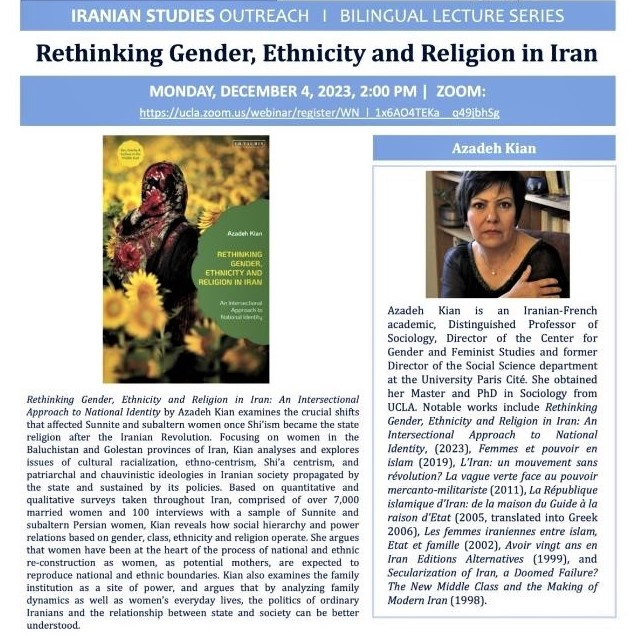
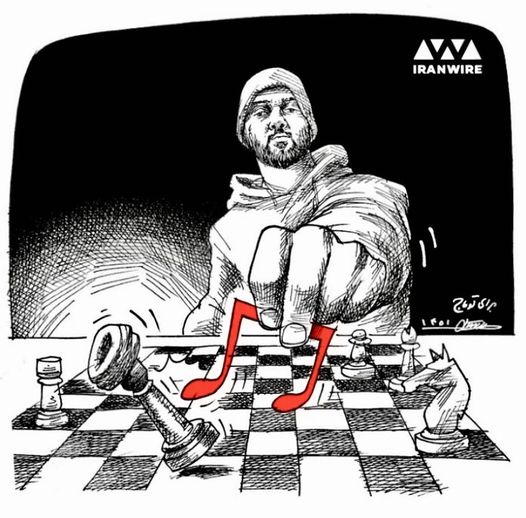

 (1) Images of the day: [Top left] I checked out Sunday's Arts & Craft Market at Santa Barbara's historic El Presidio. [Top center] Math humor: Weirdness of the number i. [Top right] UCLA Bilingual Lecture Series on Iran (see the last item below). [Bottom left] IranWire cartoon of the day: Iranian popular rapper & activist Toomaj Salehi has been re-arrested with new charges, after a short period of release on bail. The mullahs hate/fear music and musicians. [Bottom center] Interest rate for 30-year fixed mortgages in the US since the 1980s (see the next item below). [Bottom right] Why don't we dance much anymore? Americans' healthy & relaxing habit of dancing (in ballrooms, discos, parties, or streets) might be dying, according to a New York Times story.
(1) Images of the day: [Top left] I checked out Sunday's Arts & Craft Market at Santa Barbara's historic El Presidio. [Top center] Math humor: Weirdness of the number i. [Top right] UCLA Bilingual Lecture Series on Iran (see the last item below). [Bottom left] IranWire cartoon of the day: Iranian popular rapper & activist Toomaj Salehi has been re-arrested with new charges, after a short period of release on bail. The mullahs hate/fear music and musicians. [Bottom center] Interest rate for 30-year fixed mortgages in the US since the 1980s (see the next item below). [Bottom right] Why don't we dance much anymore? Americans' healthy & relaxing habit of dancing (in ballrooms, discos, parties, or streets) might be dying, according to a New York Times story.
(2) The weird US housing market: If the housing market behaved like other markets, prices would have fallen over the last several years. Mortgage rates have risen sharply since the COVID pandemic receded, as the Federal Reserve has raised interest rates to lower inflation.
(3) Taylor Swift 101: Some colleges are offering courses on Taylor Swift. Yes, you heard it right! Harvard, Stanford, NYU, and Arizona State are among colleges that aim to study the influence of the pop star.
(4) One-liners: Brief news headlines, happenings, memes, and other items of general interest.
- Bradley Cooper plays composer Leonard Bernstein in "Maestro": Also starring Carey Mulligan. [Trailer]
- Bakhtiari Lur (from Iran) emulates Michael Jackson, dancing to a modern Persian song.
- True or false? There are more venomous species in warmer climates than in colder locations. [Answer]
- The Sleeping Beauty Problem: Somewhat similar to the Monty Hall Problem, but apparently more confusing.
- David Garrett's magical violin music. [4-minute video]
- Miracle of music: Young singer with speech impediment loses her stutter when she sings. [7-minute video]
(5) A special thanks to all the Jewish, Muslim, Hindu, Buddhist, atheist, and agnostic mail carriers who deliver Christmas cards without screaming that it goes against their beliefs. We love you! [Credit: Jared Wilson]
(6) UCLA Bilingual Lecture Series on Iran: In today's installment, Dr. Azadeh Kian (U. Paris Cite) spoke in English about her new book, Rethinking Gender, Ethnicity and Religion in Iran: An Intersectional Approach to National Identity, which examines the crucial shifts that affected Sunnite and subaltern women once Shi'ism became the official state religion after the 1979 Islamic Revolution. [Book info]
Shi'ism legitimizes structural relations of power based on gender, ethnicity, religion, and class. Focusing on women in the Baluchistan and Golestan provinces in north-central and southeastern Iran, respectively, Dr. Kian studies issues of cultural racialization, ethno-centrism, Shi'a-centrism, and patriarchal & chauvinistic ideologies in Iranian society propagated by the state and sustained by its policies.
Based on quantitative and qualitative surveys taken throughout Iran, comprised of over 7000 married women and 100 interviews with a sample of Sunnite and subaltern Persian women, Dr. Kian reveals how social hierarchy and power relations based on gender, class, ethnicity, and religion operate. She also examines women's everyday lives and the family institution as a site of power in order to better understand the politics of ordinary Iranians and the relationship between state and society.
For future UCLA events and discussions on Iran, please visit this Web page.
2023/12/03 (Sunday): Presenting selected news, useful info, and oddities from around the Internet.


 (1) Images of the day: [Left & Center] My order of IKEA bookcases has arrived: I assembled one of them to see whether I can manage on my own or should hire someone to do the assembly. Doesn't seem to be too hard. Let the fun begin! [Right] Arabs and Jews in the Ottoman Palestine (see the next item below).
(1) Images of the day: [Left & Center] My order of IKEA bookcases has arrived: I assembled one of them to see whether I can manage on my own or should hire someone to do the assembly. Doesn't seem to be too hard. Let the fun begin! [Right] Arabs and Jews in the Ottoman Palestine (see the next item below).
(2) Arabs & Jews in Ottoman Palestine (book review): Not even the sharpest-eyed observer of mid-19th-century Palestine could have detected hints of the future struggle between Jews & Arabs over this land. The source of the current troubles can be traced back to local problems over grazing and water rights, which expanded into self-aware national confrontations. Perhaps conflict was inevitable, given the Muslim attitude toward these immigrants and the Zionist aspiration to leave the diaspora behind and live as independent actors.
(3) Last night's UCSB Middle East Ensemble concert: As always, the program booklet contained all the lyrics in the original language and English translation & transliteration.
Part 1 of the program consisted of five segments.
- A traditional Arabic folk dance: Music by Abd Al-Wahhab.
- A set of four Armenian songs, featuring Steven Thomson.
- A candelabra dance, by special guest DeVilla.
- Two Greek songs, performed by Alexis Story Crawshaw.
- A solo dance, composed of four parts, by special guest Aubre Hill (see Video 1).
Part 2 of the program consisted of four segments.
- Two more Greek songs, performed by Alexis Story Crawshaw.
- An Upper-Egyptian stick dance, featuring special guest The Qabila Dance Company.
- A set of three Persian songs made famous by the pop diva Googoosh, performed by Javid John Mosadeghi.
- A finale dance set, in four parts, featuring special guest DeVilla.
[Images: Batch 1; Batch 2] [Video 1] [Video 2] [Video 3] [Video 4]
(4) Today's UCLA Salamat talk: Health lectures UCLA are monthly Persian Zoom presentations that also include non-health-related content. Leading today's program was Dr. Mohamad Bagher Bagheri, who talked about intellectualism. There were 25 attendees.
An intellectual is not the same as a thinker: A thinker (philosopher; e.g., Descartes) minds his/her own business, but an intellectual has concerns about society (e.g., Voltaire). One problem in the Persian language is that the word for intellectual, "rowshan-fekr" (meaning "lit thinker"), has a positive connotation, which makes it hard for some people to admit that a person thinking differently from them is an intellectual. We have no problem saying that someone is a writer, even if we think s/he writes awful books, but intellectual is different. The word "intellectual" is often conflated with several other Persian terms such as "nokhbeh" (tops in his/her field) and "farhikhteh" (academic "nokhbeh").
The word "intellectual" is used in two senses: General & special.
In the general sense, intellectualism is combining thinking with societal concerns. For example, when Socrates went among ordinary people to learn about their problems & concerns, he was engaging in intellectual activity. In this sense, Ayatollah Khomeini may be deemed an intellectual (the fact that his plans for society were misguided is a different story).
In the special sense, intellectualism began from the age of enlightenment in Europe, when it was combined with modernity, including the notion of democracy. Enlightenment had four pillars: Critical thinking (applied to everything, including the concept of God), science, humanism, and liberalism.
In Iran, intellectuals are divided into three groups: Western-leaning, leftist, and religious. The latter two groups will be discussed in another session next month. Western-leaning intellectuals include Taghizadeh and Foroughi. Two traits of Iranians make it hard for intellectuals to have an impact: Putting great weight on traditions (don't mess with Shab-e Yalda!) and being anti-government (so anyone who cooperates with the government is not deemed an intellectual).
Dr. Mohamad Bagher Bagheri has a Web site through which you can learn more about his background and gain access to YouTube videos of his lessons on critical thinking.
2023/12/01 (Friday): Presenting selected news, useful info, and oddities from around the Internet.
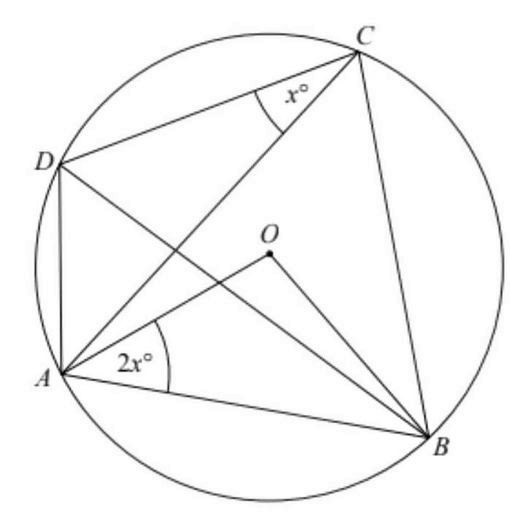
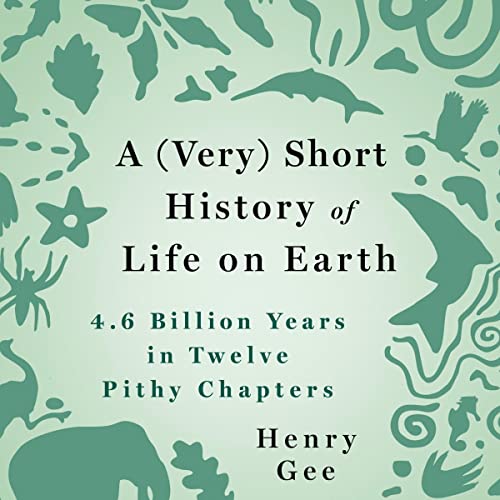
 (1) Images of the day: [Left] Math puzzle: We have a circle with its center at O and a quadrangle ABCD with its vertices on the circle. What is the measure of the angle x? [Center] Henry Gee's A (Very) Short History of Life on Earth (see the last item below). [Right] A second math puzzle for your weekend: Squares of areas 1, 4, and x are embedded in the right triangle ABC, as shown. Find x.
(1) Images of the day: [Left] Math puzzle: We have a circle with its center at O and a quadrangle ABCD with its vertices on the circle. What is the measure of the angle x? [Center] Henry Gee's A (Very) Short History of Life on Earth (see the last item below). [Right] A second math puzzle for your weekend: Squares of areas 1, 4, and x are embedded in the right triangle ABC, as shown. Find x.
(2) One-liners: Brief news headlines, happenings, memes, and other items of general interest.
- Trailblazer: Sandra Day O'Connor [1930-2023], the first woman on the US Supreme Court, dead at 93.
- Three young Palestinian-American men shot in Vermont in an apparent hate crime.
- Iran's delegation leaves the Climate Summit in Dubai because of the presence of Israel's representatives.
- Good riddance: I don't want one more minute of my time to be wasted by news stories about George Santos.
- UCSB grapples with plans for student housing, now that Charles Munger, champion of "dormzilla," is dead.
- Persian music: Niaz Nawab sings "Hagh" ("Right"): Sponsored by Farhang Foundation. [3-minute video]
(3) Book review: Gee, Henry, A (Very) Short History of Life on Earth: 4.6 Billion Years in 12 Pithy Chapters, unabridged 8-hour audiobook, read by the author, Macmillan Audio, 2021.
[My 5-star review of this book on GoodReads]
Many biographies of Earth have been written, so having yet another volume in this area may not seem exciting. All such books touch upon the key historical stages and notions: Earth's formation, plate tectonics, rapid evolution of life, the Great Oxygenation Event, early bacterial cells, endosymbiosis, multicellular life, tetrapods making landfall, the spinal cord, reptiles, dinosaurs, mammals, monkeys, and human-beings.
Gee offers a particularly detailed account of plate tectonics and supercontinent cycle. He tells us that the breakup of Rodinia (predecessor of Pangea) entailed so much volcanic eruption and extrusion of fresh rocks that the subsequent erosion drew enough carbon dioxide out of the atmosphere to cause planetary-scale glaciation some time before 650 million years ago. Later, the formation of Pangaea caused far hotter, drier, and more seasonal land climate.
Previously, I had learned about certain sea creatures moving onto land to give rise to a vast number of new species. Details of how this transition occurred and its evolutionary basis were unclear to me. Gee provides much of the missing details. It turns out that some fish became flattened, so as to be able to swim and hunt for food in shallow coastal waters. Once there, they started to develop a set of four legs for easier movement, which then allowed them to transition onto land.
Dinosaurs are discussed as a relatively insignificant stage in the development of life, with three exceptions: Bipedalism gave them great advantage over other species; Innovations in respiration allowed them to grow very large; and transition to powered flight opened up new possibilities for them and the new species that followed.
Gee reminds us that evolution isn't goal-directed, so it does not move in one direction. When tetrapods moved onto land, their commitment to the new habitat was shaky. In fact, in a kind of reversal, some species did go back from land to sea. So, the prevailing impression that the profusion of early hominids as a series of ever more-bipedal species replacing one another in an orderly, preordained fashion is misguided.
The last third of Gee's book takes an anthropocentric turn, with heavy focus on primate and hominin evolution, ending with our departure from Africa. Perhaps skipping over recent events such as language development, domestication of plants & animals, and agriculture was necessary to keep the book "very short." Despite devoting many pages to the discussion of human development, Gee does acknowledge that the entire human history will perhaps be reflected in no more than a millimeters-thick layer in some future sedimentary rock.
2023/11/30 (Thursday): Presenting selected news, useful info, and oddities from around the Internet.




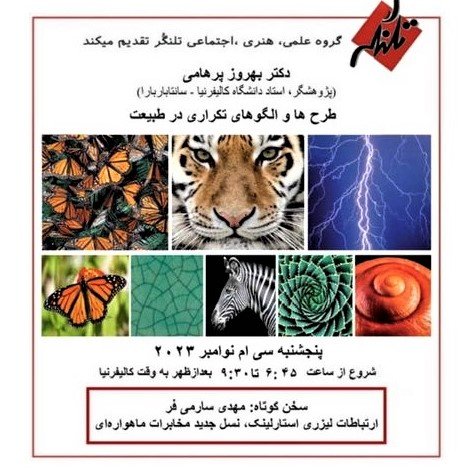
 (1) Images of the day: [Top left] Throwback Thursday: Four Iranian singers from way back when, reunited. [Top center] Yes, there is an uptick in shoplifting incidents, but the rates over the past 3 years have been markedly lower than during the Trump years (NYT chart). [Top right] This jigsaw puzzle, based on 3D pop art by Charles Fazzino, challenged me during a long wait at the doctor's office yesterday. [Bottom left] Getting ready for the transition from fall to winter. [Bottom center] Talangor Group tech talk by yours truly (see the last item below). [Bottom right] National Geographic photo of the day.
(1) Images of the day: [Top left] Throwback Thursday: Four Iranian singers from way back when, reunited. [Top center] Yes, there is an uptick in shoplifting incidents, but the rates over the past 3 years have been markedly lower than during the Trump years (NYT chart). [Top right] This jigsaw puzzle, based on 3D pop art by Charles Fazzino, challenged me during a long wait at the doctor's office yesterday. [Bottom left] Getting ready for the transition from fall to winter. [Bottom center] Talangor Group tech talk by yours truly (see the last item below). [Bottom right] National Geographic photo of the day.
(2) Henry Kissinger [1923-2023] dead at 100: The former US Secretary of State has received a lot of accolades, including a Nobel Peace Prize, but for some reason, I never liked or trusted the guy.
(3) Persian is spoken and ghormeh-sabzi stew is served on the International Space Station: Yesterday morning, NASA & Stanford U.'s Iranian studies program sponsored an amazing 20-minute live chat with Iranian-American astronaut Jasmine Moghbeli, who has taken a Persian stew with her to share with crewmates.
(4) One-liners: Brief news headlines, happenings, memes, and other items of general interest.
- Assassins galore: Indian national charged for plotting to kill a US citizen for his Sikh separatist views.
- Communists and Islamists set aside their ideological differences to fight against the West.
- Do you know a Jew who was born in Bethlehem ~2000 years before 1948? Hint: His birthday is coming up.
- Here's what librarians do on their coffee breaks: Dominoes chain, but made with books.
(5) Forty-one construction workers were rescued in India: Stuck in a collapsed tunnel 300 feet underground for 17 days, they survived on supplies sent through narrow pipes.
(6) Tonight's Talangor Group tech talk: Yours truly spoke under the title "Recurring Designs and Patterns in Nature" (in Persian). Before the main talk, Dr. Mehdi Saremifar gave a brief presentation on "Starlink: A New Generation of Satellite-Based Communication." There were ~80 attendees.
My presentation was based primarily on the book Patterns in Nature: Why the Natural World Looks the Way It Does, by Philip Ball, which I have reviewed on GoodReads. If you don't have access to the book, this Wikipedia article contains an excellent summary.
I proceeded along the lines of the nine chapters in Ball's book: Symmetry; Fractals; Spirals; Flow and Chaos; Waves and Dunes; Bubbles and Foam; Arrays and Tiling; Cracks; Spots and Stripes. The roles of Fibonacci numbers and Fibonacci spirals and well as Benoit Mandelbrot's fractal geometry were among the topics emphasized. What Mandelbrot did for the advancement of geometry is comparable to Einstein's role in the advancement of physics.
While natural patterns tend to be beautiful, there are usually physical reasons behind their emergence. Beauty is often a mere side effect, with the possible exception of beautiful patterns on certain male animals that attract the opposite sex. For example, bilateral symmetry helps with more-efficient forward motion (in the same way that symmetric oars and rowing allows a boat to move forward smoothly and in a straight line). Likewise, the spiral pattern inside a sunflower maximizes the number of seeds that fit in a given area and spots & stripes are useful for camouflage.
[My PDF slides]
2023/11/28 (Tuesday): Presenting selected news, useful info, and oddities from around the Internet.


 (1) Images of the day: [Left] Traditional Iranian meal. [Center] Jerry Seinfeld's Is This Anything? (see the last item below).[Right] Perhaps we should reconsider the theory that huge boulders were transported to the sites of Egyptian Pyramids and other ancient structures, using primitive mechanical aids.
(1) Images of the day: [Left] Traditional Iranian meal. [Center] Jerry Seinfeld's Is This Anything? (see the last item below).[Right] Perhaps we should reconsider the theory that huge boulders were transported to the sites of Egyptian Pyramids and other ancient structures, using primitive mechanical aids.
(2) Liberal arts vs. STEM programs: Yes, STEM fields are important but any scientist or engineer needs a solid background in liberal arts in order to create balanced designs with appropriate functionality, effective human interfaces, and attention to social consequences. While it is true that STEM majors lead to more lucrative careers, universities were never meant to be merely career-prep schools. [LA Times Editorial]
(3) Cerebras introduces 2-exaflop AI supercomputer: The goal is to have a 36-exaflop network by doubling the existing compute power and using 9 networked systems. [IEEE Spectrum magazine, Nov. 2023]
(4) One-liners: Brief news headlines, happenings, memes, and other items of general interest.
- Iranian mullahs deem sociology an illegitimate field of study: Florida to follow suit.
- American students and rank among the lowest in the world for AI use.
- NASA slows the development of its Mars Sample Return mission, citing uncertainty over funding and design.
- Software-defined architecture: Dual-CPU computer teaches you system-level design. [IEEE Spectrum]
- Fish fossils on top of the Himalayan Mountains: The entire Earth may have once been covered with water.
- Did you know that the Sun is older than the Earth, but the water on Earth is older than the Sun?
(5) Wind turbines installed on floating platforms exploit the steadiest, strongest winds that blow over deep ocean water: Scaling the installations to giga-Watt level remains a problem.
[IEEE Spectrum, Nov. 2023]
(6) Book review: Seinfeld, Jerry, Is This Anything? unabridged 6-hour audiobook, read by the author, Simon & Schuster Audio, 2020. [My 4-star review of this book on GoodReads]
This autobiographical book consists of many short, joke-like observations on life, particularly life in New York City. Example: We get on a train (even though everyone is in the train, not on top of it), in a cab, but not on or in Uber; we just take Uber. Most of the observations aren't ha-ha funny, but that's Seinfeld's style, with all the impertinence and political incorrectness. The book's title reflects comedians' tendency to run jokes by their peers to see if they consider the material of value.
You may start getting bored at the beginning of the book, but if you persevere, the material grows on you. This look into the life and career path of one of America's greatest comic minds is a pretty good distraction in a world that has gone cruel and mad on us!
2023/11/27 (Monday): Presenting selected news, useful info, and oddities from around the Internet.
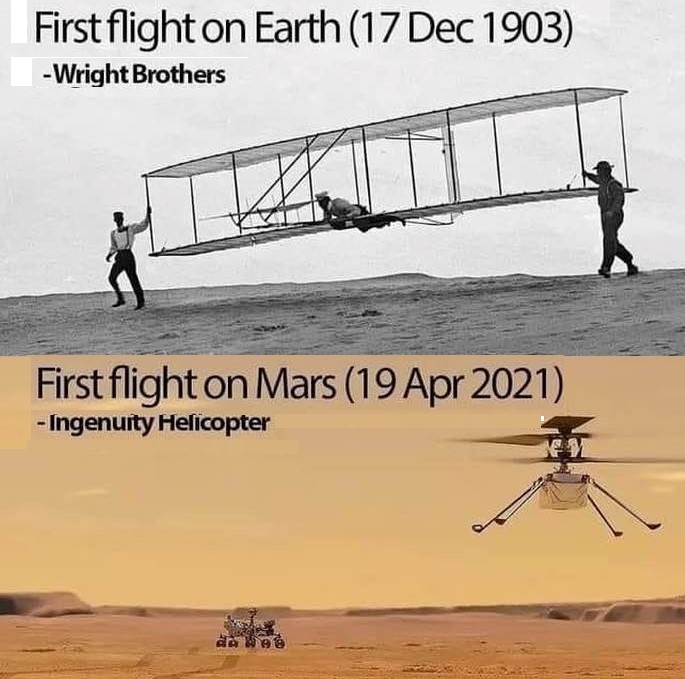

 (1) Images of the day: [Left] First flight on Earth (Wright Brothers plane, Dec. 17, 1903); First flight on Mars (Ingenuity Helicopter, Apr. 19, 2021). [Center] IranWire cartoon of the day: Ayatollah Khamenei's karma. [Right] The brilliant natural-lighting system of Sultan Amir Ahmad Public Bath, Kashan, Iran, from the 1500s.
(1) Images of the day: [Left] First flight on Earth (Wright Brothers plane, Dec. 17, 1903); First flight on Mars (Ingenuity Helicopter, Apr. 19, 2021). [Center] IranWire cartoon of the day: Ayatollah Khamenei's karma. [Right] The brilliant natural-lighting system of Sultan Amir Ahmad Public Bath, Kashan, Iran, from the 1500s.
(2) Now that visiting family members have returned home safely, the Thanksgiving holiday is officially over for us. Here's an apt quote about giving thanks from Henry David Thoreau: "I am grateful for what I am and have. My thanks-giving is perpetual."
(3) First Native-American woman engineer: Mary Golda Ross [1908-2008] worked at Lockheed from 1942 until her retirement in 1973, where she was best-remembered for her aerospace design work.
(4) One-liners: Brief news headlines, happenings, memes, and other items of general interest.
- The US has no universal healthcare, but 10 states come close, with uninsured rates below 5%.
- Israeli forces discover and confiscate a Hamas suitcase bearing $1.5M in cash, allegedly coming from Iran.
- This is how some Iranian kids go to school, while millions in cash & arms are sent to terrorists abroad.
- More than 20 Baha'i homes invaded in violent raids and many arrested in Iran as crackdown intensifies.
- My kids and their cousins at Santa Barbara's House of Clues (after managing to escape) and with Grinch.
- Erdos-Straus Conjecture: The equation 4/n = 1/a + 1/b + 1/c has positive integer solutions for every n > 1.
(5) Hijab-enforcers are disavowed by Iran's Interior Ministry, which characterizes them as concerned citizens acting independently, but secret documents show that they are paid government agents. [Tweet, with video]
(6) Israel's Defense Minister reports that 100+ Hezbollah fighters have been killed over the past two months and many of their command posts & ammunition depots have been destroyed. [VOA Farsi Tweet]
(7) The origins of inequality: History shows us that patriarchal systems, which may appear robust and inevitable, aren't permanent or preordained. In this 64-minute podcast, host Angela Saini discusses her own book, The Patriarchs, which dispels commonly-invoked myths about gender inequality and its causes.
(8) Boredom is actually good for us: Our most-creative work comes during boredom or relaxation. Multitasking, far from being a productivity enhancer, actually wastes our mental energy. [3-minute video]
(9) AI to help solve the information deluge problem: Scientists in nearly all fields are overwhelmed by the sheer number of papers that come their way from professional bodies and commercial publishers. Keeping up has become a near-impossibility. There is some hope that new developments in AI can lead to automatic summarization and organization of the published research literature, thus streamlining the amount of information a scientist has to take in. There are tough challenges to be overcome, though. One is the tendency of generative systems that power AI research tools to hallucinate, that is, generate false content. Another is the economics of such AI tools in terms of free-vs.-paid service and handling of copyright issues in full-text access.
2023/11/26 (Sunday): Presenting selected news, useful info, and oddities from around the Internet.
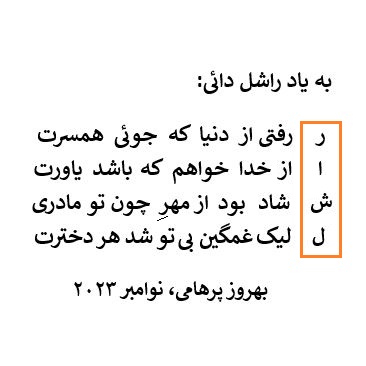
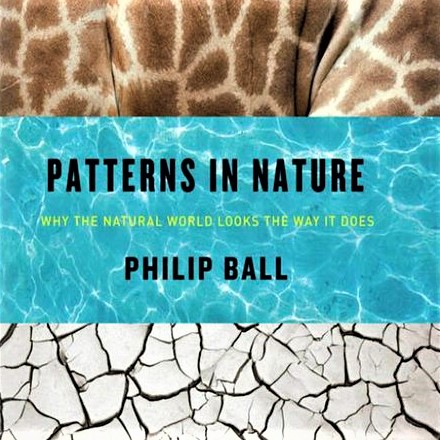
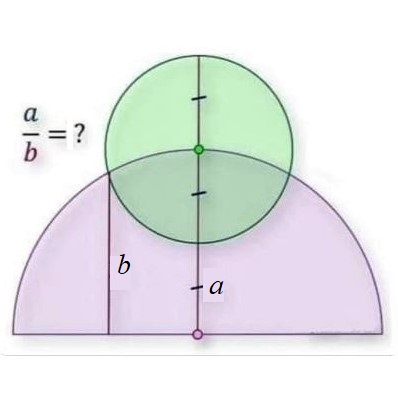 (1) Images of the day: [Left] Mrs. Rachel Daie, grandmother to my three children (mother of my late ex-wife), passed away on Saturday. This Persian poem honors her memory. RIP. [Center] Philip Ball's Patterns in Nature (see the last item below). [Right] Math puzzle: A circle of radius a intersects a semicircle of radius 2a, as shown. What is the ratio a/b?
(1) Images of the day: [Left] Mrs. Rachel Daie, grandmother to my three children (mother of my late ex-wife), passed away on Saturday. This Persian poem honors her memory. RIP. [Center] Philip Ball's Patterns in Nature (see the last item below). [Right] Math puzzle: A circle of radius a intersects a semicircle of radius 2a, as shown. What is the ratio a/b?
(2) I hope no one is offended by the following observation about "saffron" books: Years ago, I encountered Gelareh Asayesh's Saffron Sky (a review) and Yasmin Crowther's The Saffron Kitchen (my review). What's the deal with the use of "Saffron" in book titles? There is another book, Saffron Dreams, and a Google search reveals Saffron Skies, Love & Saffron, Leila in Saffron, The Saffron Tales, and other titles. Could this be part of Iranians' feeling of inadequacy: Using our exotic side to appeal to foreigners? Perhaps I should start writing The Saffron University about my experiences as a university professor in Iran! I actually have another title in mind, but the project must wait until after I retire.
(4) One-liners: Brief news headlines, happenings, memes, and other items of general interest.
- Human Rights Watch under fire for allegedly accepting millions in Qatar funds.
- Churches are under jihadi attacks in Western Europe, but no country experiences more attacks than France.
- Khamenei: "It's impossible for a woman to stand up and sing, with men who watch resisting temptation."
- Jurassic Park: Can you name this unusual animal? [Tweet, with video]
(3) Book review: Ball, Philip, Patterns in Nature: Why the Natural World Looks the Way It Does, University of Chicago Press, 2016.
[My 4-star review of this book on GoodReads]
Nature is complicated, seemingly employing an infinite collection of patterns and designs. But, upon closer inspection, we see that the patterns come from a relatively limited set of basic components. These familiar components recur at different size scales and in diverse, totally unrelated systems. What got me into studying this subject was a chance encounter with the observation that human fingerprint patterns and age rings in trees look quite similar.
The first person to try to develop a deep understanding of these patterns was Scottish zoologist D'Arcy Thompson, who wrote On Growth and Form, his 1917 masterpiece, to report on what he discovered. One of his key observations was the fact that pattern formation is not a static occurrence but arises from growth.
This very-interesting book consists of 9 chapters, sandwiched between an introduction and glossary & further reading. Here are the titles of the chapters and brief description of their significance.
- Symmetry: Bilateral symmetry facilitates directional motion. Many kinds of symmetry exist.
- Fractals: Benoit Mandelbrot's mathematical tool for studying roughness and self-similarity.
- Spirals: Most arise from the way things grow. Fibonacci spirals are frequent occurrences.
- Flow and Chaos: A positive feedback loop changes a river's zigzagging path over a flat region.
- Waves and Dunes: The interaction between wind and water or fluid-like sand.
- Bubbles and Foam: Bubbles are spherical; a mass of bubbles assumes complicated shapes.
- Arrays and Tiling: Patterns formed by juxtaposition or overlapping of identical shapes.
- Cracks: The similarity of cracks in dry lake beds, ceramic glaze, and cooling lava is amazing.
- Spots and Stripes: Can be explained in evolutionary terms, such as serving as camouflage.
The Wikipedia page "Patterns in nature" contains a useful summary of this book's contents.
2023/11/25 (Saturday): Presenting selected news, useful info, and oddities from around the Internet.

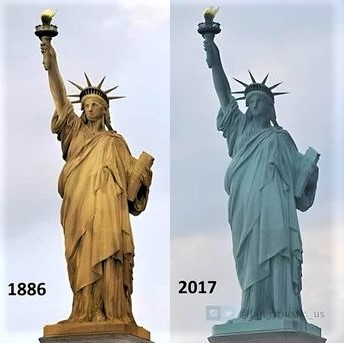
 (1) Images of the day: [Left] International Day for the Elimination of Violence Against Women: Having expressed our gratitude for our blessings on Thanksgiving Day 2023, we should also remain aware of things that we don't have in this world. One such thing is violence-free home & work environments for many women. Violence against women comes in different forms, including sexual violence. [Center] The Statue of Liberty was made of copper, but over the many decades since it was built, is has turned greenish due to oxidation. [Right] Cassidy Hutchinson's Enough (see the last item below).
(1) Images of the day: [Left] International Day for the Elimination of Violence Against Women: Having expressed our gratitude for our blessings on Thanksgiving Day 2023, we should also remain aware of things that we don't have in this world. One such thing is violence-free home & work environments for many women. Violence against women comes in different forms, including sexual violence. [Center] The Statue of Liberty was made of copper, but over the many decades since it was built, is has turned greenish due to oxidation. [Right] Cassidy Hutchinson's Enough (see the last item below).
(2) One-liners: Brief news headlines, happenings, memes, and other items of general interest.
- Hamas executes two Palestinian men in public. These terrorists kill anyone who opposes them. [Source: DW]
- Iran's President Raisi seemingly contradicts Supreme Leader Khamenei. [Tweet, with video]
- UCLA receives $11M from Persian Heritage Foundation toward the establishment of Yarshater Center.
- Thanksgiving feast continues a couple of days later: After-dinner entertainment by my nephew Avi.
(3) Book review: Hutchinson, Cassidy, Enough, unabridged 12-hour audiobook, read by the author, Simon & Schuster Audio, 2023. [My 4-star review of this book on GoodReads]
Cassidy Hutchinson, went from an unknown young aide to Trump's Chief of Staff Mark Meadows to a celebrity virtually overnight, when she appeared as a witness in front of the US Congressional Committee investigating the events of January 6, 2021. On that infamous day, a violent mob of Trump supporters broke into the Capitol Building, destroying property and threatening to kill politicians who disagreed with them.
I was conflicted, as I listened to this audiobook. On the one hand, I was horrified by the fact that inexperienced young aides are placed in positions to make critical decisions and to influence decisions by others. On the other hand, we learned of some of the key missteps and evil plots in the Trump administration only because this particular young aide spoke up, when senior aides chose to keep quiet or to actively obstruct legal and legislative investigations.
The penniless Hutchinson was horrified when she was faced with huge legal expenses in order to testify in front of the January 6 Committee. She initially accepted legal help from the Trump world, which severely limited what she could and could not reveal. She herself was conflicted between loyalty to the president she adored (at least, before she came to understand the situation better) and the desire to testify truthfully. When she received an offer of pro-bono legal representation from independent attorneys, she finally relaxed somewhat and started speaking to Rep. Liz Cheney and, eventually, to the full committee.
The Trump world used a carrot-and-stick approach to try to force Hutchinson to reveal as little as possible. Lucrative job offers were dangled in front of this broke young aide, at the same time as she was warned about the dire consequences of betrayal. One can't help but feel sorry for her, although Hutchinson does not consider herself a victim in any of this, asserting that she knew full well what she was getting into.
Hutchinson reveals the dirty secrets of an administration awash in paranoia, looking everywhere, and even setting traps, to discover leakers. We learn that Mark Meadows' wife complained about the high cost of dry-cleaning her husband's suits, which smelled of smoke due to his burning large batches of documents in a fireplace. Ironically, the same paranoid people surrounding Trump allowed unsavory characters, such as the "My Pillow" guy (Mike Lindell) and a host of pardon-seeking individuals roam the White House grounds unescorted.
Hutchinson believes that January 6 happened in part because she and others in the administration didn't do enough to stop it. This is a very significant change of heart for a young woman who adored President Trump and, even after the events of January 6, still lobbied for a job at Mar-a-Lago.
2023/11/23 (Thursday): Presenting selected news, useful info, and oddities from around the Internet.

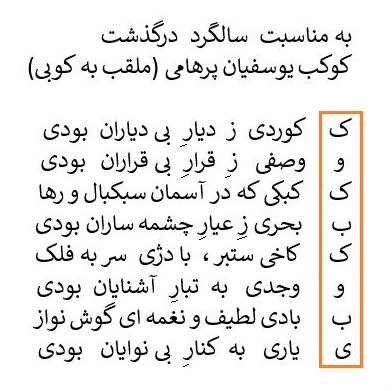



 (1) Images of the day: [Top left] Happy Thanksgiving Day 2023 to all: Wishing you health, love, friendships, personal fulfilment, and many other gifts to enjoy & appreciate on this day and on every other day of the year. [Top center] My Persian poem honoring my mother Kokab a year after her passing (see the next item below). [Top right] Book talk sponsored by Farhang Foundation & UCSB's Iranian Studies Initiative: Ava Homa (Cal State U. Monterey Bay) speaks under the title "Daughters of Smoke and Fire: Art, Activism, and Fire" (video). [Bottom row] Photos from our Thanksgiving family gathering, including yours truly doing the turkey honors.
(1) Images of the day: [Top left] Happy Thanksgiving Day 2023 to all: Wishing you health, love, friendships, personal fulfilment, and many other gifts to enjoy & appreciate on this day and on every other day of the year. [Top center] My Persian poem honoring my mother Kokab a year after her passing (see the next item below). [Top right] Book talk sponsored by Farhang Foundation & UCSB's Iranian Studies Initiative: Ava Homa (Cal State U. Monterey Bay) speaks under the title "Daughters of Smoke and Fire: Art, Activism, and Fire" (video). [Bottom row] Photos from our Thanksgiving family gathering, including yours truly doing the turkey honors.
(2) Sharing with you what I wrote for my mom's first anniversary of passing, observed with the family on Thanksgiving Day 2023: As we gather here, thanks to our generous host Behnaz, to renew our family bonds and to give thanks for all our blessings on this Thanksgiving Day, let us also remember our mom Kowkab, aka grandma Kobi, and give thanks for the gift of the 93 years we had her on this Earth. We lost Kobi a year ago, on November 14, 2022 (Aban 23, 1401 in Iranian calendar), around 7:15 AM. The one year and 9 days since her passing has been tough on the entire family.
We miss a lot of things about her that we used to take for granted: Her mere presence; Our weekly visits; Regular audio & video calls; Delicious food that she prepared for our family gatherings and sent home with us; The link to extended family through her information channel; Generous gifts she gave us on many special and not-so-special occasions; News reports about Iran & the world; And her advice & encouragement when we were struggling or in a bind.
She is with us in spirit, though. Whenever we gather as a family, I visualize her sitting on a chair, sipping her tea, and occasionally complaining of various ailments; Delighting in the presence of her grandkids & great-grandkids; Talking about plans for upcoming family events; Relating memories from Kurdistan; And, lately, under-the-breath singing of a favorite Iranian song.
The Persian poem above, which has her name "Kowkab" and nickname "Kobi" as the initial letters of its half-verses, honors her contributions to our family.
(3) One-liners: Brief news headlines, happenings, memes, and other items of general interest.
- Russian and Chinese executives hold secret talks on building a tunnel to Crimea.
- The Middle East after October 7: A viewpoint from Adi Schwartz. [33-minute talk]
- Fruit plates for our large Thanksgiving family gathering.
[Tweet, with photo]
- Throwback Thursday: A nostalgic collage of singers and other artists in the pre-Islamic-Revolution Iran.
(4) There is hope for the United States: Former white evangelical shares his insider info about how evangelicals politicized religion and supported the hateful views of Donald Trump.
(5) Iran helped normalize hostage-taking: Now Israel, the US, and other countries are negotiating with terrorists who openly call for the annihilation of all Jews throughout the world.
(6) An important problem, formulated by an interdisciplinary team in the 1950s, is finally tamed: A groundbreaking algorithm for the max-flow problem was proposed in 2022. The problem, which has broad theoretical significance and practical applications, concerns transporting the most supplies from a source node to a destination node in a network while honoring link capacities. By mathematical duality, the max-flow problem is related to the min-cut problem. At this juncture, the nearly-linear-time algorithm is of theoretical nature and needs to be reworked for practical implementation. But breaking long-standing super-linear complexity barriers offers hope for scalable max-flow algorithms.
2023/11/22 (Wednesday): Presenting selected news, useful info, and oddities from around the Internet.


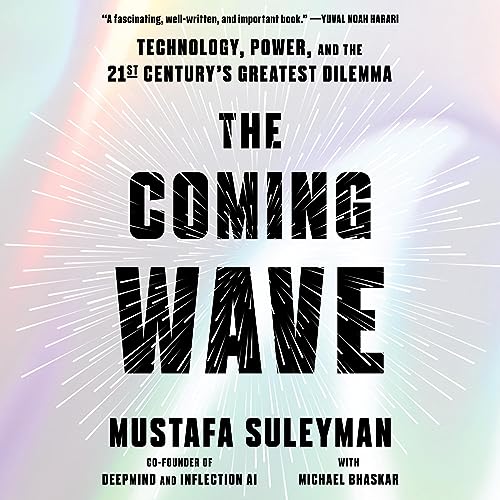 (1) Images of the day: [Left] US track-and-fielder Jim Thorpe won two 1912 Olympics gold medals in these mismatched shoes he found in a garbage can: His own shoes were stolen on the morning of his competition. One of the shoes he found was too big, so he wore an extra sock on that foot. [Center] Socrates Think Tank program (see the next item below). [Right] Mustafa Suleyman's The Coming Wave (see the last item below).
(1) Images of the day: [Left] US track-and-fielder Jim Thorpe won two 1912 Olympics gold medals in these mismatched shoes he found in a garbage can: His own shoes were stolen on the morning of his competition. One of the shoes he found was too big, so he wore an extra sock on that foot. [Center] Socrates Think Tank program (see the next item below). [Right] Mustafa Suleyman's The Coming Wave (see the last item below).
(2) Tonight's Socrates Think Tank program featured SoCal-based Iranian opera singer Shahrzad Tavakol (Shahrzad Vocal Academy). There were ~95 attendees.
In this highly-enjoyable session, Ms. Tavakol related her life story, from being educated in Iran, majoring in fine arts, to her present career as a singer and multi-talented artist. I have chosen from YouTube a couple of her Persian songs, and one sample each of her work in French, English, and Armenian.
Shahrzad Tavakol's Facebook page;
"Raaz-e Del" ("Heart's Secret");
"Ey Iran, Iran";
"La Vie En Rose";
"Besame Mucho";
"Zepyuri Hman"
(3) One-liners: Brief news headlines, happenings, memes, and other items of general interest.
- Vehicle explosion on a US-Canada bridge near Niagara Falls kills two and injures a US Border Patrol officer.
- This is a mosque in Gaza, with a lot of things that do not belong in a legit mosque. [Tweet, with video]
- Here's why sand dunes exist and look the way they do: It's the interaction between the wind & fluid sand.
- Eye-opening facts: This hourglass is a visualization of humans, living and dead, throughout the history.
(4) Book review: Suleyman, Mustafa (with Michael Bhaskar), The Coming Wave: Technology, Power, and the 21s Century's Greatest Dilemma, Crown, 332 pp., 2023.
[My 4-star review of this book on GoodReads]
Mustafa Suleyman is a tech visionary. Trained in philosophy, he moved on to co-found DeepMind & Inflection AI, serve as a Google VP, build the large language model Pi (named for personal intelligence), and write The Coming Wave with author/publisher Michael Bhaskar. Suleyman's book has been characterized as "fascinating, well-written, and important" by Yuval Noah Harari, and it has received much praise from other luminaries.
On October 5, 2023, I was privileged to hear Suleyman in a fascinating, deep conversation with Dr. Misha Sra (UCSB CS) as part of UCSB's Arts & Lectures program. I have incorporated my notes from that session into the review that follows. As an aside, this Time magazine profile of Suleyman also reveals one of his dark sides.
Suleyman holds a mostly-optimistic view of AI developments and of technology more generally, although he does devote significant ink to AI's dangers under the umbrella of "containment." His company's Pi is envisaged as an empowerment tool for its owner. Interestingly, Pi is intentionally designed to avoid certain subjects, so if you try to flirt with it, you would get a polite answer such as "I'm just an AI, ..." Pi's design is focused on emotional intelligence, so that it can serve as a kind and supportive companion with the ability to carry on great conversations, rather than as a productivity, search, or question-answering tool. We must accept, however, that, as was the case with software, people will try to design AI to fill every possible niche.
We have unleashed so much power in our AI systems that the challenge is steering this power toward providing maximal benefits to us, while preventing any potential harm from self-directed agents. DeepMind's philosophy was that AI should aim to replicate human beings' vastly successful prediction engine, as opposed to focusing on merely rearranging and re-interpreting data. Over the past decade, compute power for AI has increased 10x every single year, yielding an astonishing overall improvement factor of 10^10, making sophisticated models possible.
Like any other product, Pi reflects its designers' values. So, it can be viewed as political, which is inevitable. We have to prepare for extreme instability. We are providing AI with a vast knowledge base at essentially zero marginal cost. Amassing power will become cheaper and everyone will be able to use the power for personal gain. We should be able to produce energy, offer healthcare, and educate everyone at essentially zero marginal cost. It is difficult to see how this will not lead to reduced suffering.
Containment is a simple idea. A well-functioning society should be able to temper development. We have done a reasonably good job with nuclear power and other technologies, which are now rather safe. But each new technology brings forth new elements that can create challenges. The good news is that regulators are moving faster than ever before and the biggest AI companies have voluntarily submitted to regulations. The bad news is that technology is moving much faster than the length of time, often measured in years, required to introduce, mull over, and enact legislation.
To ensure containment we need an "Apollo Program" for technical safety, accountability through frequent audits, choke points to limit the use of certain hardware & software, incorporation of AI critics into the circle of makers, assurance that businesses invest their profits with a greater ethical purpose, empowerment of governments to safeguard technology through regulation, establishment of alliances & global standards, a culture that encourages experimentation & learning from failures, grassroots movements toward awareness & ethical development/deployment, and an understanding that the path to dealing with the challenges involved is rather narrow and quite difficult to navigate.
A key challenge we face is the dearth of subject-matter experts in the public sector who would support the rolling out and administering regulations. We have to build at scale the needed expertise within the public sector, so that we are not dependent on, and so at the mercy of, the private sector with its massively greater wealth.
2023/11/21 (Tuesday): Presenting selected news, useful info, and oddities from around the Internet.



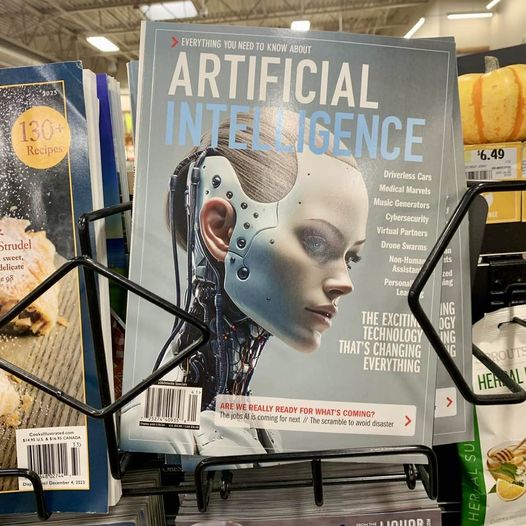

 (1) Images of the day: [Top left] "Girls in the Windows": Ormond Gigli's iconic 1960 photograph, whose print sold at a recent auction for $38,000. [Top center] Former political prisoner & activist Mahvash Sabet maintains that Iranian Baha'is are prevented from living normal lives. [Top right] In Gaza, schools, theme parks, hospitals, and mosques look awfully alike. [Bottom left] Sign of the times: At a supermarket checkout today. [Bottom center] Afterimage: Stare at the red dot at tip of the woman's nose of this negative image for 30 seconds and then look at a white surface while blinking your eyes quickly. You will see the original positive image. [Bottom right] This registered national monument in Zanjan, Iran, is Rakhtshoorkhaneh ("laundry house"): It was built in the 1800s for locals to use the running water in the canals to wash their clothes.
(1) Images of the day: [Top left] "Girls in the Windows": Ormond Gigli's iconic 1960 photograph, whose print sold at a recent auction for $38,000. [Top center] Former political prisoner & activist Mahvash Sabet maintains that Iranian Baha'is are prevented from living normal lives. [Top right] In Gaza, schools, theme parks, hospitals, and mosques look awfully alike. [Bottom left] Sign of the times: At a supermarket checkout today. [Bottom center] Afterimage: Stare at the red dot at tip of the woman's nose of this negative image for 30 seconds and then look at a white surface while blinking your eyes quickly. You will see the original positive image. [Bottom right] This registered national monument in Zanjan, Iran, is Rakhtshoorkhaneh ("laundry house"): It was built in the 1800s for locals to use the running water in the canals to wash their clothes.
(2) Too many people think that amid the slaughter of hundreds of Israeli civilians, rape isn't something to dwell on: Rape isn't a legitimate method of combat. Let's all speak up (#MeToo).
(3) Reza Pahlavi kills his prospects of becoming Iran's leader: He confesses that he has nothing in Iran to return to. An Iranian king or president who does not care to live in Iran?
(4) One-liners: Brief news headlines, happenings, memes, and other items of general interest.
- After OpenAI fired its high-profile CEO Sam Altman, 700+ employees signed a letter threatening to resign.
- The OpenAi coup was about safety vs. growth, or chief scientist Ilya Sutskever vs. CEO Sam Altman.
- An end to the Open AI saga? Sam Altman reinstated as the troubled company's CEO.
- Iranian official brags about personally delivering arms to Hamas & training them in the tunnels under Gaza.
- Israel's military releases videos of what it says is a fortified tunnel beneath the Al-Shifa Hospital complex.
- About 1/3 of Hamas' leadership has been eliminated: More work remains to be done. [Tweet, with photo]
- Cool science turns hot: How to make the world's hottest candle with a Tesla coil. [6-minute video]
- Holiday tip: Bringing up politics on Thanksgiving reduces the number of Christmas gifts you need to buy.
(5) Math puzzle: Consider a Lucas Sequence formed by the same rule as the Fibonacci sequence (1, 1, 2, 3, 5, 8, 13, 21, 34, ...), but starting with the numbers L(1) = a and L(2) = b, rather than F(1) = 1 and F(2) = 1. How is the nth term L(n) of this sequence related to F(n)? What is the ratio L(n + 1)/L(n) for large n?
(6) Reforming expert testimony: In the US, both sides of a court case can call on experts to advocate for their positions. UK relies on experts called by the court as advisers, not as advocates. Writing in Communications of the ACM's December 2023 issue, Vint Cerf argues the advantages of the latter approach.
(7) New Yorker cartoon caption of the day (for Thanksgiving travelers): "Altimeter? Check. Instruments and radios? Check. Fuel gauges? Check. Prepared to sit on the runway for God knows how long? Check."
2023/11/20 (Monday): Presenting selected news, useful info, and oddities from around the Internet.

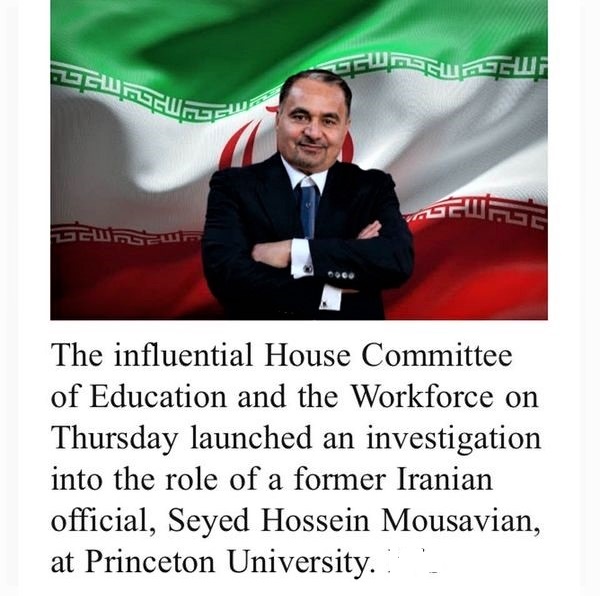
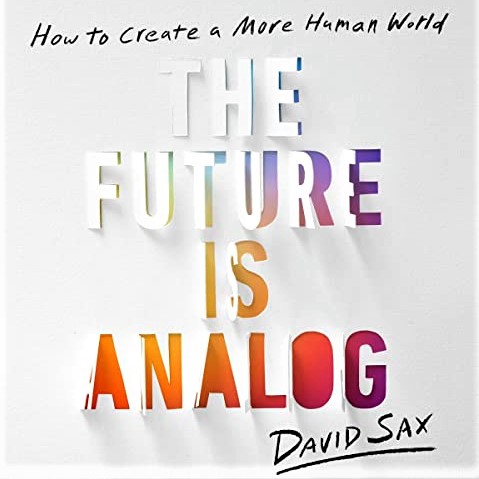 (1) Images of the day: [Left] Happy World Children's Day (November 20): UNICEF's annual day of action for children, by children, marking the adoption of the Convention on the Rights of the Child. [Center] Iranian spies & operatives continue to enjoy academic and other freedoms in the US while denying it to their own citizens. [Right] David Sax's The Future is Analog (see the last item below)
(1) Images of the day: [Left] Happy World Children's Day (November 20): UNICEF's annual day of action for children, by children, marking the adoption of the Convention on the Rights of the Child. [Center] Iranian spies & operatives continue to enjoy academic and other freedoms in the US while denying it to their own citizens. [Right] David Sax's The Future is Analog (see the last item below)
(2) American Association for the Advancement of Science CEO Sudip S. Parikh believes that continuing-resolution funding of the US government is no cause for celebration: Passing budgets on time is essential for the American scientific enterprise and for staying competitive on the world stage.
(3) Book review: Sax, David, The Future Is Analog: How to Create a More Human World, unabridged 10-hour audiobook, read by the author, Public Affairs, 2022.
[My 3-star review of this book on GoodReads]
I was quite disappointed with this book, primarily because of its misleading title. I picked it up thinking it was about how analog circuits and analog computation are coming back, as predicted by many researchers, myself included, after being sidelined for a few decades by the higher accuracy, greater flexibility, and extreme economy of digital systems. It turned out that Canadian journalist David Sax praises personal interactions and physical contact (what he calls "analog"), while dissing virtual meetings, social media, and screen-based interactions (his "digital").
I found myself mostly in agreement with what sax says in this book, but the nagging mischaracterization problem stayed with me until the end of the book. I might have given the book 4 stars, had it been titled 'Virtual Interactions Rob Us of Intimacy and Non-Verbal Cues During Conversations.' The latter title, while much better, is still a bit misleading in that it assumes that non-verbal cues are inherently incommunicable without physical proximity, even with advances in technology.
In a way, virtual interactions saved us during the COVID-19 pandemic. They also accelerated the demise of many brick-and-mortar businesses, which would have gone extinct anyway, albeit at a slower pace. Let's not forget the large number of introverted and physically-limited individuals who were given a voice and a chance to participate in social groups. Not everyone is an extrovert who thrives within large in-person meetings.
To say that humans are analog is highly misleading. We indeed embody many digital components & processes. A neuron is digital/analog, and it can be better approximated as a purely digital than a purely analog element.
Ironically, Sax did all of his interviews and consultations for the book via screens and phone calls. His point that a vast majority of books sold are in hard-copy format is well-taken, but the truth of this assertion at present does not extend into the future. It's only a matter of time before everyone "reads" books primarily via the audio-visual system embedded in VR glasses.
Sax's strongest point is that in-person conversations are more likely to veer off-course, thus leading to interesting threads and discoveries. But maybe this is mostly due to our not having had enough time to adjust to new technologies. Observation of reactions, body language, and the like isn't impossible through a screen, especially with the development of enhanced systems, such as 3D or holographic imaging, tactile & olfactory elements, and realistic simulation of each participant's environment.
We live the way we do because of a long string of accidental and targeted developments throughout our history. Our schools and classrooms look the way they do not because those designs/arrangements are inevitable but because they just happened. On-line instruction has had a rocky start, again not because it is inevitably bad but owing to incidental factors. Systems were developed and deployed in a rush during the pandemic years. We are capable of doing a lot better, with greater financial & personal commitment and with improved technology.
Sax retreats a bit from his harsh verdict in the book's concluding section, asserting that he objects to the thoughtless use of computers (only because we can) and that it's okay to use computers if we decide judiciously and with awareness on a case-by-case basis.
2023/11/19 (Sunday): Presenting selected news, useful info, and oddities from around the Internet.
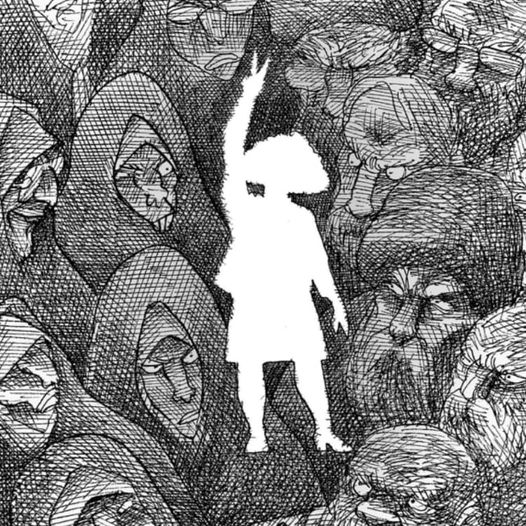




 (1) Images of the day: [Top left] IranWire meme of the day: Narges Mohammadi vs. Islamic Republic goons. [Top center] Cartoon of the day: A very-famous physicist after a few drinks. [Top right] On the way back from Vermont, I arrived early at Burlington airport, with 2.5 hours to spare, which I used for a Vermont-style brunch. [Bottom left] Math puzzle: What fraction of the regular hexagon's area is blue? [Bottom center] Math puzzle: An outer pentagon is formed by two squares. What fraction of that pentagon's total area is shaded green? [Bottom right] Photos from atop Santa Barbara's Stearns Wharf: The windy day brought out many sailboats.
(1) Images of the day: [Top left] IranWire meme of the day: Narges Mohammadi vs. Islamic Republic goons. [Top center] Cartoon of the day: A very-famous physicist after a few drinks. [Top right] On the way back from Vermont, I arrived early at Burlington airport, with 2.5 hours to spare, which I used for a Vermont-style brunch. [Bottom left] Math puzzle: What fraction of the regular hexagon's area is blue? [Bottom center] Math puzzle: An outer pentagon is formed by two squares. What fraction of that pentagon's total area is shaded green? [Bottom right] Photos from atop Santa Barbara's Stearns Wharf: The windy day brought out many sailboats.
(2) Rosalynn Carter dead at 96: She expanded & formalized the role of the US First Lady and acted as a full partner to her husband, President Jimmy Carter.
(3) Nasrin Sotoudeh's message to her daughter Mehraveh for her 24th birthday: Even outside the prison, I am still a prisoner of patriarchs who want to control women's bodies and minds. ... We Iranian women must now try to conquer the big prison. Victory is near, my child; victory is near. [Facebook post, in Persian]
(4) One-liners: Brief news headlines, happenings, memes, and other items of general interest.
- Hamas supporters occupy the Leaning Tower of Pisa: Radical Islam won't stop after the destruction of Israel.
- Borowitz Report (humor): George Santos to spend more time with imaginary family.
- True or false: If x < y then x^y > y^x, i.e., putting the larger of x & y in the exponent yields a larger number.
- The groom with little sense of humor and lots of misogyny! [Tweet, with video]
- Iran's youth are driving the mullahs crazy! [Facebook post, with video]
- Humor: I wonder if the great Persian poet Sa'adi got in a fight with his beloved for this double-entendre.
(5) A partial list of political prisoners under the late Shah of Iran, in response to Reza Pahlavi's recent claim that the Shah's secret police only jailed hardened criminals like Ali Khamenei. [Tweet, in Persian]
(6) Did you know that President Franklin Roosevelt moved the Thanksgiving holiday, originally on the last Thursday in November, to one week earlier so as to extend the holiday shopping period and boost retail sales?
(7) Gender inequality is a major economic challenge for India: In many other countries, female labor-force participation has propelled economic growth. But India has one of the world's lowest rates of formal employment for women, a rate that has dropped from 29% to 24% since 2010.
(8) A little-known hijacking incident: On September 19, 1995, a Kish Air Boeing 707 landed in Eilat, south of Israel, after Saudi Arabia and Jordan declined to give it permission to land. The Iranian hijacker wanted to seek asylum in Europe, but the plane did not have enough fuel to get there. To avoid embarrassment, Iranian officials started blaming Israel for the hijacking and spread fake stories about mistreatment of the plane's passengers by the Israelis. In fact, the plane and its passengers were returned to Iran the following day, after refueling. Available videos show that the passengers were treated well.
2023/11/17 (Friday): Presenting selected news, useful info, and oddities from around the Internet.
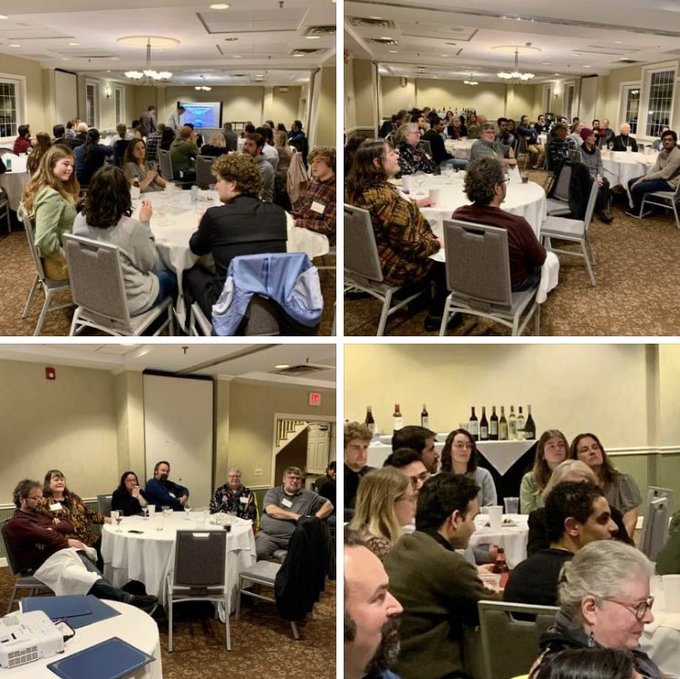




 (1) Images of the day: [Top left & center] More photos from Burlington, Vermont (see the next item below). [Top right] The cover image of Washington Examiner depicts Hell's Kitchen. [Bottom left] Well, it's not Thursday, but this 7-decades-old photo of the Iranian pop diva Googoosh, shown with her father, should not have to wait until then! [Bottom center] Iran may be the only country that is going backward in time: Female cope in the city of Shiraz, ~50 years ago. [Bottom right] A little sign of implicit sexism in a plane's lavatory.
(1) Images of the day: [Top left & center] More photos from Burlington, Vermont (see the next item below). [Top right] The cover image of Washington Examiner depicts Hell's Kitchen. [Bottom left] Well, it's not Thursday, but this 7-decades-old photo of the Iranian pop diva Googoosh, shown with her father, should not have to wait until then! [Bottom center] Iran may be the only country that is going backward in time: Female cope in the city of Shiraz, ~50 years ago. [Bottom right] A little sign of implicit sexism in a plane's lavatory.
(2) My second day in Burlington, Vermont: After yesterday's long walks off and on the UVM campus, today I relaxed at my hotel with reading & writing activities. In the evening, I attended IEEE Green Mountain Section's year-end banquet at the Essex Resort & Spa as the featured Distinguished Visitors Program speaker. The rooms and lobby areas of the Essex Resort & Spa are decorated with food/kitchen motifs.
(3) Reza Pahlavi's amnesia: For a while, he admitted that the late Shah made mistakes and that his secret police held political prisoners & tortured them. Now, he claims that SAVAK held & tortured only hardened criminals like Ali Khamenei. Also, he has opined that under PM Mossadeq, the threat of Soviet Union was quite serious, implying that Mossadeq's ouster was warranted for national security reasons.
(4) One-liners: Brief news headlines, happenings, memes, and other items of general interest.
- Graduate enrollments at US universities surge, thanks in part due to the large flow of students from India.
- Pro-cease-fire protesters who shut down the super-busy SF Bay Bridge were arrested and their cars towed.
- Yet another failed Trump business? Truth Social has failed to attract advertisers and is losing much money.
- To LGBTQ activists marching in support of Hamas: Hamas would behead or otherwise kill you for your "sins."
- Is the English language on the decline? Scientist Stephen Pinker doesn't think so.
/>- The art of bulk cooking: The size of that wok is impressive! [11-minute video]
(5) Musk's anti-Semitic post causes swift reactions: In response to a post that accused Jews of "dialectical hatred against whites," Musk described it as "the actual truth." IBM reacted by pausing its advertising on X.
(6) On the hardness of making crossword puzzles: The problem of choosing words from a dictionary for inclusion in a given grid, so that intersecting words are consistent, is NP-hard.
(7) Did you know that there are quite a few uneducated writers, even some high-school dropouts, who became successful? The group includes multiple Nobel Laureates.
(8) Graduation ceremony of Sharif University of Technology, Kish campus, in which women appear without the compulsory hijab, has enraged the mullahs. [Tweet]
2023/11/16 (Thursday): Presenting selected news, useful info, and oddities from around the Internet.








 (1) Images of the day: [Top left] Happy International Day for Tolerance: Something we need more than ever in today's world. [Top center] Islamic Republic of Iran's Minister of Education: "There should be separate school textbooks for boys and girls." Seems like Iranian mullahs are in a race with the Taliban to come up with the most-idiotic ideas about women. [Top right] Math puzzle: In this diagram with three regular pentagons, find the measure of the angle shown. [Middle & Bottom rows] Burlington, Vermont (see the next item below).
(1) Images of the day: [Top left] Happy International Day for Tolerance: Something we need more than ever in today's world. [Top center] Islamic Republic of Iran's Minister of Education: "There should be separate school textbooks for boys and girls." Seems like Iranian mullahs are in a race with the Taliban to come up with the most-idiotic ideas about women. [Top right] Math puzzle: In this diagram with three regular pentagons, find the measure of the angle shown. [Middle & Bottom rows] Burlington, Vermont (see the next item below).
(2) My first day in Burlington, Vermont: After arriving at my hotel around 2:00 AM due to flight delays and other mishaps, I spent a long day exploring Burlington and UVM, before giving a well-received talk, hosted by UVM's Student Chapter of IEEE. In the morning and early afternoon, I photographed my historic hotel (The Essex) and many of the impressive buildings on the campus of University of Vermont.
(3) The latest Top500 semi-annual list of the fastest supercomputers in the world is topped by the AMD-powered Frontier supercomputer, which retained its lead ranking with 1.194 Exaflop/s of performance.
(4) One-liners: Brief news headlines, happenings, memes, and other items of general interest.
- Biden & Xi have a fruitful meeting in SF: Military communications restored. China does not want a "hot war."
- Life expectancy in the US continues to drop: Gender gap widens, in women's favor.
- The hole at the bottom of math: There are true statements that will remain unprovable forever. [Video]
- A couple of verses from a love poem by the great Persian poet Sa'adi. [Original & English translation]
(5) Weather forecasting comes to your PC: Google DeepMind's GraphCast weather-forecasting model that performs better than the best conventional forecasting tools can run on a desktop computer and makes its predictions in minutes. Using estimates of past global weather made from 1979 to 2017 by physical models, GraphCast learned links between different weather variables.
(6) Hospital search reveals Hamas strategy: Around Gaza's Al-Shifa Hospital, Hamas tunnels, arms & ammunitions, and a dead hostage were found. Hamas commanders had already moved on. This is how they operate: Hide among/behind civilians and flee when the going gets tough.
2023/11/15 (Wednesday): Presenting selected news, useful info, and oddities from around the Internet.

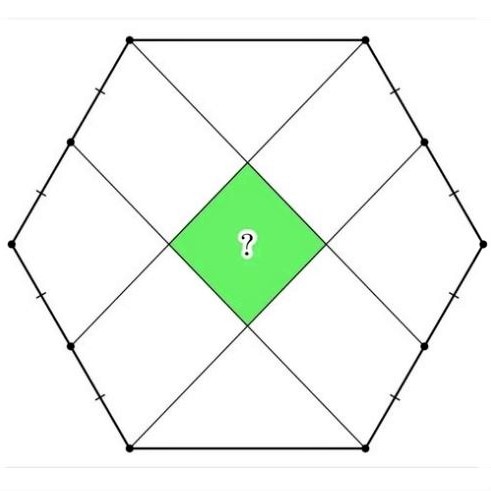
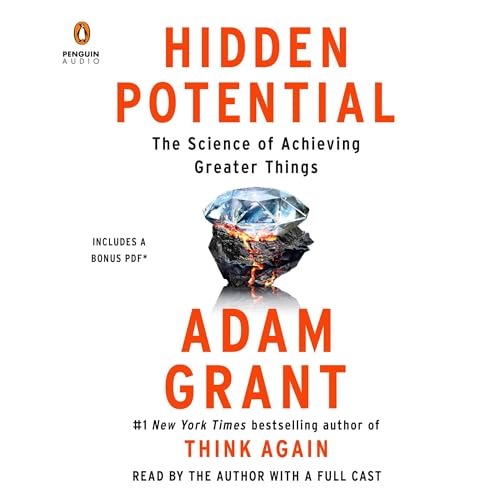 (1) Images of the day: [Left] Math puzzle: Find the side length of the square. [Center] Math puzzle: Find the shaded fraction of the regular hexagon. [Right] Adam Grant's Hidden Potential (see the next item below).
(1) Images of the day: [Left] Math puzzle: Find the side length of the square. [Center] Math puzzle: Find the shaded fraction of the regular hexagon. [Right] Adam Grant's Hidden Potential (see the next item below).
(2) Book review: Grant, Adam, Hidden Potential: The Science of Achieving Greater Things, unabridged 7-hour audiobook, read by the author and a large group of other narrators, Penguin Audio, 2023.
[My 4-star review of this book on GoodReads]
Grant is an organizational psychologist and Wharton's top-rated professor for 7 straight years. He has placed 5 books on New York Times' best-sellers list. So, when Grant says something, everyone listens!
There are two complementary views on what it takes to be successful: Talent and hard work (10,000 hours of intense practice, if you believe Malcolm Gladwell). One of the insights in Grant's book is that reigning in our perfectionist urges is also quite important. A perfectionist diver may never try difficult dives for fear of making mistakes. But mistakes are necessary on the path to success. We learn from our mistakes and criticisms that they engender, so being open to making mistakes is an essential element of success.
Grant tells the story of a Japanese architect, who learned to prioritize important elements in a design, sticking to the more-essential ones when constraints (plot size, location, ...) did not allow a well-rounded design. Then, there is the story of a baseball pitcher with a birth defect who was demoted to minor leagues multiple times, before emerging as a star at age 31, by tapping into his strengths to develop a mean knuckle-ball.
"Hidden potential" refers to the fact that some form of brilliance is buried inside every human-being, waiting to be discovered. Finland's educational system has done a fantastic job of uncovering and nurturing students' hidden potentials. Instead of singling out the best and the brightest for attention, Finnish schools give all students opportunities.
(3) Erdogan dreams about a "Muslim seat," with veto power, at the UN Security Council: He envisages Turkey as holding that seat.
(4) It would be much easier to eradicate Islamophobia if fewer Muslims joined phobia-inducing groups such as Al Nusrah, Al Qaeda, Al Shabab, Boko Haram, Hamas, Hezbollah, ISIS, Taliban (too many to list them all).
(5) UCSB Plous Award winner: Charmaine Chua (Global Studies) has been awarded the 2023-2024 Harold J. Plous Memorial Award, given annually to an outstanding assistant professor from the College of Letters and Science. Chua's work focuses on the political economy of globalization, particularly in the context of labor movements, logistics, and the infrastructures and technologies of global supply chains. She will deliver the Plous Lecture in spring.
(6) In the wake of the Israel-Hamas conflict, acclaimed concert pianist Simon Todeschi reflects on his dilemma as a secular but proud Jew, who dislikes selective condemnation of violence.
(7) Final thought for the day: I will be in Burlington, Vermont, for the rest of this week to give a couple of IEEE Computer Society Distinguished Lectures.
- At University of Vermont: "A Puzzle-Based Approach to Promoting Technical/Digital Literacy"
- At an IEEE Section year-end banquet: "Interconnection Networks for Parallel Processors and Data Centers"
2023/11/13 (Monday): Presenting selected news, useful info, and oddities from around the Internet.

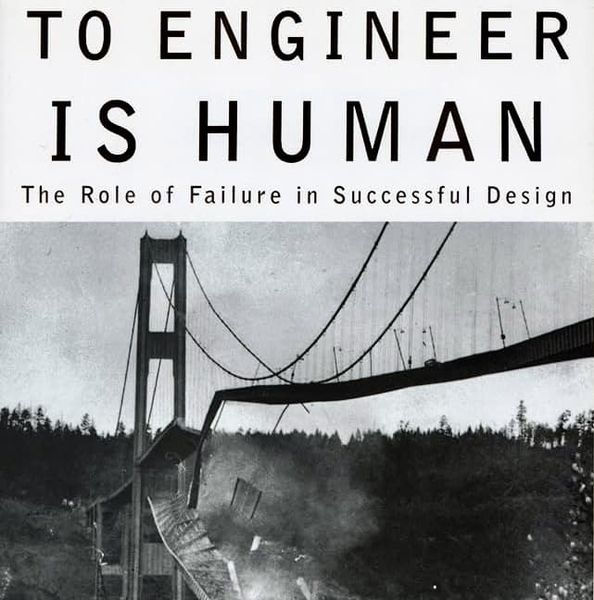

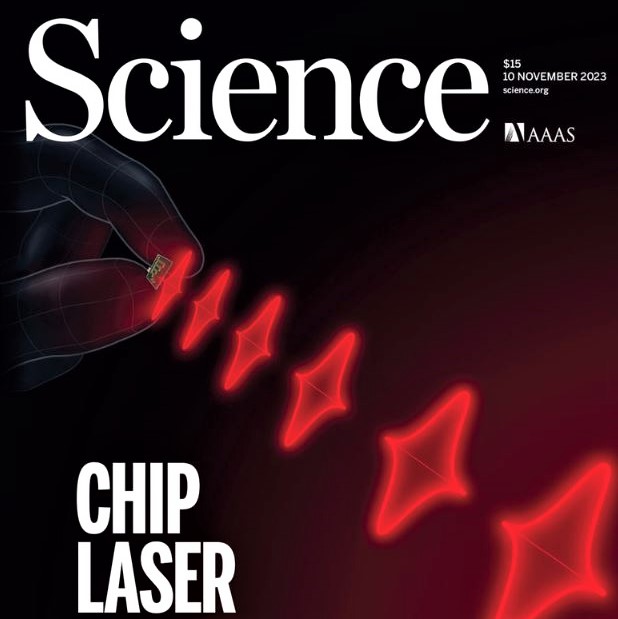

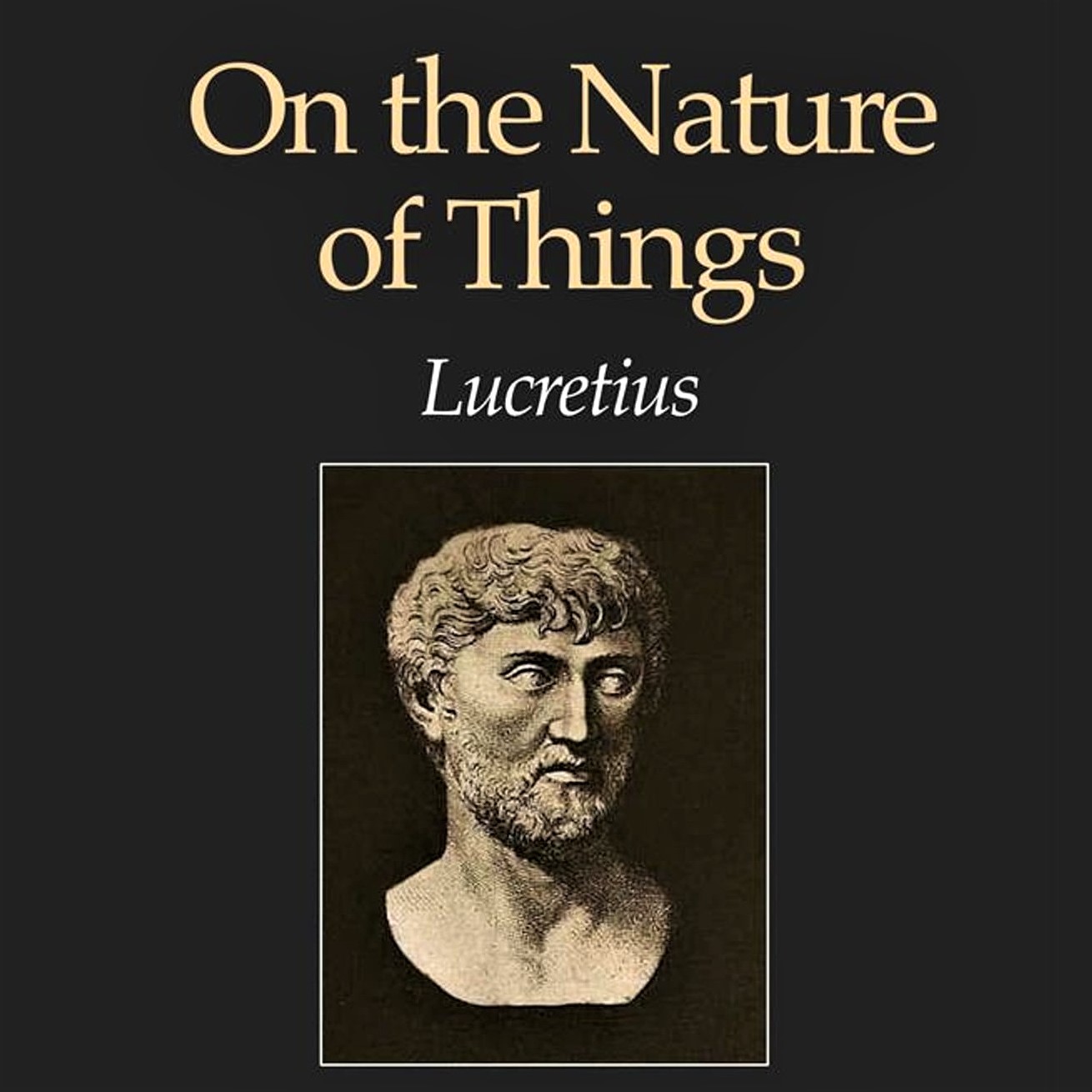 (1) Images of the day: [Top left & center] An engineer who will be missed dearly (see the next item below). [Top right] This misprinted stamp from 1918 commemorating the start of regular airmail service sold at an auction for $2 million. [Bottom left] Electrically pumped mode-locked lasers in nanophotonics: They generate ~4.8-ps optical pulses around 1065 nm at a repetition rate of ~10 GHz, with energies exceeding 2.6 pJ and peak powers beyond 0.5 W. [Bottom center] Hamas tunnels with stored ammunition snake underneath residential buildings & hospitals in Gaza City (9-minute video). [Bottom right] On the Nature of Things, by Lucretius (see the last item below).
(1) Images of the day: [Top left & center] An engineer who will be missed dearly (see the next item below). [Top right] This misprinted stamp from 1918 commemorating the start of regular airmail service sold at an auction for $2 million. [Bottom left] Electrically pumped mode-locked lasers in nanophotonics: They generate ~4.8-ps optical pulses around 1065 nm at a repetition rate of ~10 GHz, with energies exceeding 2.6 pJ and peak powers beyond 0.5 W. [Bottom center] Hamas tunnels with stored ammunition snake underneath residential buildings & hospitals in Gaza City (9-minute video). [Bottom right] On the Nature of Things, by Lucretius (see the last item below).
(2) Henry Petroski [1942-2023]: Mechanical-engineer extraordinaire, essayist, columnist, prolific author, and longtime professor at Duke University dies at 81.
Many of Petroski's best-known books fall into two categories: Those focused on the central role of failure in developing successful designs and those dealing with the evolution of ubiquitous objects, such as pencils, paper-clips, and forks.
I got to know Petroski through his wonderful book, To Engineer Is Human: The Role of Failure in Successful Design, which l have been using as an important source for my graduate course on dependable computing. RMS Titanic sank because of hubris on the part of its designers, but we learned more from this one failure than the success of many other vessels about how to design safe ocean liners.
I, for one, will miss the wisdom dispensed by Petroski in his essays and columns. Many of these works are timeless, so they will no doubt be reprinted for the benefit of new generations of engineers. Rest in peace, "Poet Laureate of Engineering"!
(3) Book review: Lucretius Carus, Titus (translated and with notes by A.E. Stallings), On the Nature of Things (De Rerum Natura), Penguin Classics, 2007.
[My 4-star review of this book on GoodReads]
If you want to learn about science and philosophy, as they existed more than 2000 years ago (in the mid-first-century BCE, to be exact), this book by the Roman poet Lucretius is a must read. Written in some 7400 dactylic hexameters, the book aims to explain Epicurean philosophy to a Roman audience. Because there is no copyright, you can get the e-book or audiobook free of charge. Multiple translations of the work exist.
There are six sections (books) in Lucretius' tome. These sections were originally untitled, so the following are rough descriptions of the sections, in pairs.
Sections 1 & 2: The atom, its properties, and laws governing it
Sections 3 & 4: Mind, spirit, senses, death, and the role of sex
Sections 5 & 6: Astronomy and large-scale natural phenomena
Lucretius committed suicide at age 44. He wrote many books, only some of which have reached us. On the Nature of Things is deemed incomplete by many, who suggest that Lucretius might have died before he was able to finalize and fully edit his poem. Evidence in support of this hypothesis includes the fact that the book ends abruptly and does not include a promised discussion of the nature of gods.
2023/11/12 (Sunday): Presenting selected news, useful info, and oddities from around the Internet.


 (1) Images of the day: [Left] With Tim Scott revealing his gorgeous girlfriend on the debate stage, people have gone back to asking: "Where's Melania?" [Center] On Sunday, we honored the memory of my mother at Santa Barbara Cemetery, nearly a year after her passing. May her soul and the soul of others we have lost rest in peace. [Right] How I spent my Saturday: I assembled a bed I had ordered on-line, getting lots of physical exercise and even more mental exercise in trying to figure out how to put it together. The bed has an excellent design and is made of great material (A, on both counts). Assembly instructions get a D.
(1) Images of the day: [Left] With Tim Scott revealing his gorgeous girlfriend on the debate stage, people have gone back to asking: "Where's Melania?" [Center] On Sunday, we honored the memory of my mother at Santa Barbara Cemetery, nearly a year after her passing. May her soul and the soul of others we have lost rest in peace. [Right] How I spent my Saturday: I assembled a bed I had ordered on-line, getting lots of physical exercise and even more mental exercise in trying to figure out how to put it together. The bed has an excellent design and is made of great material (A, on both counts). Assembly instructions get a D.
(2) Miniature battery-free bioelectronics: Such devices obviate the need for bulky battery-packs and cumbersome tethers by relying on wireless transfer of energy or harvesting energy from the body itself.
(3) One-liners: Brief news headlines, happenings, memes, and other items of general interest.
- Donald Trump is said to be considering Tucker Carlson as a possible running mate.
- Iran hires hitmen around the world, including on US soil, to abduct or kill its opponents. [13-minute video]
- To Iranian mullahs: Didn't you say you want to wipe Israel off the map? So, why do you demand a cease-fire?
- Hebrew pocket watch, frozen in time of it owner's death who sank with the Titanic, is auctioned off.
- The $222M that McDonald's CEO's widow Joan Kroc left for NPR 20 years ago saved public radio.
- Columbia U. suspends 2 pro-Palestinian groups due to harassment threats & unmanageable safety concerns.
- Conversation with Iranian-American astronaut Jasmin Moghbeli: Live from space, Nov. 29, 2023, 10 AM PST.
(4) Religion arose to help us deal with the fear of death: The oldest religious rituals are associated with burials. Are we humans developed enough now to face death directly, without a need for fairy tales? [3-minute video]
(5) A CV of Failures: According to Melanie Stefan, keeping a visible record of your rejected applications can help others to deal with setbacks. "My CV does not reflect the bulk of my academic efforts — it does not mention the exams I failed, my unsuccessful PhD or fellowship applications, or the papers never accepted for publication. At conferences, I talk about the one project that worked, not about the many that failed. As scientists, we construct a narrative of success that renders our setbacks invisible both to ourselves and to others. Often, other scientists' careers seem to be a constant, streamlined series of triumphs. Therefore, whenever we experience an individual failure, we feel alone and dejected. Such is not the case with every profession. Consider Ronaldinho. A football player cannot hide his setbacks. Everything is out in the open — every failure to be selected for a big competition, every injury, every missed penalty is on display. Maybe this is a good thing. It shows young aspiring players what it means to be a football player. It helps them to cope with their own setbacks. So here is my suggestion. Compile an 'alternative' CV of failures. Log every unsuccessful application, refused grant proposal and rejected paper. Don't dwell on it for hours, just keep a running, up-to-date tally. If you dare — and can afford to — make it public. It will be six times as long as your normal CV."
2023/11/11 (Saturday): Presenting selected news, useful info, and oddities from around the Internet.


 (1) Images of the day: [Left] An ageless quote, appropriate for this Veterans' Day, when we honor soldiers and their sacrifices in fighting wars, while generals and politicians are remembered in historical records as heroes: "In war the heroes always outnumber the soldiers ten to one." ~ H. L. Mencken [Center] Sarah Hart's Once Upon a Prime (see the last item below). [Right] Tribal South-Persian weavings (see the next item below).
(1) Images of the day: [Left] An ageless quote, appropriate for this Veterans' Day, when we honor soldiers and their sacrifices in fighting wars, while generals and politicians are remembered in historical records as heroes: "In war the heroes always outnumber the soldiers ten to one." ~ H. L. Mencken [Center] Sarah Hart's Once Upon a Prime (see the last item below). [Right] Tribal South-Persian weavings (see the next item below).
(2) Textile Museum Associates of Southern California webinar: "'Truly Tribal' in South Persian Weavings" was the title of a fascinating presentation this morning by James Opie (Oriental rug scholar, author, collector, & dealer). Here's a link to Opie's second book, Tribal Rugs: A Complete Guide to Nomadic and Village Carpets.
Tribes wove for personal use and not for sale to outsiders. So, unlike urban patterns and weavings, tribal designs are characterized by imperfections and asymmetry. They also exhibit a wider range of creativity.
Sample weavings shown and explained included Afshari rugs; Arab-Khamseh hot pads & rugs; Bhaktiyari saddle-bags, trappings, & rugs; Bijar rugs; Luri gabbehs, gileems (flatweaves) & rugs; Qashqa'i bags, gileems, & workshop rugs; Safavid-era rugs.
I will add a link to the recording of this highly-recommended webinar when it becomes available.
(3) Iranian women continue to be killed by their Islamic government (for violating hijab laws) and by their male relatives (under the guise of family honor). [IranWire report]
(4) One-liners: Brief news headlines, happenings, memes, and other items of general interest.
- Craziest political analysis: "Arab-Americans, upset with Biden's Middle East policy, may vote for Trump."
- On November 26, 1974, Israeli PM Golda Meir gave a speech that is still relevant nearly 5 decades later.
- The Iranian young girl who fell and went into a coma after being interrogated by the mullah's agents.
- An interesting post from Nairobi, Kenya, where a Congress on "Identity, Belonging, & Migration" is held.
- Astrophysicist Neil deGrasse Tyson and his hilarious take on movies that violate laws of physics.
- Patterns of superstition: Our brains try to find patterns, faces in particular, everywhere. [8-minute video]
(5) Book review: Hart, Sarah, Once Upon a Prime: The Wonderous Connections Between Mathematics and Literature, unabridged 9-hour audiobook, read by the author, Macmillan Audio, 2023.
[My 4-star review of this book on GoodReads]
In this book, math professor Sarah Hart explores the relationship between mathematics and literature. She maintains that the relationship goes in both directions. Literature is full of references to mathematics and contains structures that are mathematical in nature. In the former category, Moby Dick, Flatland, and Life of Pi come to mind as stories with mathematical references. The contemporary novels A Gentleman in Moscow The Luminaries both make use of sequences of powers of 2. In the latter category, the permutational structures that govern some poetic forms constitute good examples. Sanskrit mathematics is expressed in words, using the language of poetry.
Hart bashes the prevailing stereotype of mathematicians as creatures living in a different world, where reason rules and the language of literature isn't spoken. On the contrary, several prominent mathematicians and scientist have pointed out that good science & math must contain beauty. A virtuous mathematical proof, like a beautiful poem, is tightly constructed and contains no unnecessary words. According to German mathematician Karl Weierstrass, "A mathematician who is not somewhat of a poet will never be a complete mathematician."
Contrary to popular view of math as a dry subject, it requires extreme imagination and creativity. The perceived boundary between mathematics and other creative arts is a fairly recent idea. For much of history, every educated person had to be conversant in math. The Persian poet Omar Khayyam, whose exquisite poems are known and valued worldwide, was in fact a polymath with significant contributions to mathematics. In my view, Hart is successful in sketching "the enduring conversation between literature and mathematics."
2023/11/10 (Friday): Presenting selected news, useful info, and oddities from around the Internet.


 (1) Images of the day: [Left] Pro-Palestinian groups attack people gathered for a documentary film screening about Hamas atrocities at the Los Angeles Museum of Tolerance. [Center] St. Petersburg Mosque, Russia. [Right] Brilliant T-shirt design: Nope, Not Again.
(1) Images of the day: [Left] Pro-Palestinian groups attack people gathered for a documentary film screening about Hamas atrocities at the Los Angeles Museum of Tolerance. [Center] St. Petersburg Mosque, Russia. [Right] Brilliant T-shirt design: Nope, Not Again.
(2) Good riddance, Senator Joe Manchin: After sabotaging many Democratic plans in cahoots with the Republicans, the Democratic lawmaker says he will not seek reelection.
(3) Islamic Republic of Iran's view on Western hostages: "We hold hostages from every country that could possibly attack us militarily. We will kill all these hostages within an hour of the attack. I hope we get this opportunity." This guy's primitive brain doesn't work beyond his stupid pronouncement: Then what? Will the attacking country turn around and retreat or will the killing of hostages make it more determined to take revenge by wiping you off the map?
(4) One-liners: Brief news headlines, happenings, memes, and other items of general interest.
- US college campuses see the highest ever rates of anti-Semitism and Islamophobia incidents. [USA Today]
- Americans march for Israel, to free hostages, and against anti-Semitism: I fear violence at this 11/14 event.
- Nineteen Baha'is arrested by Iran's Islamic regime: Ten in the city of Hamedan and 9 in Karaj.
- On pitfalls of statistics: If Bill Gates walks into a room, everyone in the room will be a billionaire on average!
(5) An Islamic Republic of Iran official has mused that the US should return the entire country to Native Americans: Sure, right after Islamists and mullahs return Iran to Iranians!
(6) Comparing Hamas to the Nazis is misguided: Yes, Nazis shot Jews in the backs of their heads and pushed their lifeless bodies into trenches, but deep down they were ashamed of what they did, so they tried to hide their acts from Germans & the rest of the world, and soldiers routinely got drunk to forget what they did. Hamas terrorists were proud of their barbaric acts on Oct. 7, 2023. They gleefully videotaped the rapes, beheadings, and setting fire to buildings where people were hiding, posting the videos on social media. And they called their parents in Gaza to boast about how many Jews they had killed.
(7) "Reducing water temperature makes it cooler": This is a made-up example of the kind of headlines that make you go "duh"! Here's an actual example: "Rewarding women more like men could reduce wage gap." The report on this "study" in Cornell Chronicle continues thus: "Treating women more like men, especially in terms of salary, could narrow the gender wage gap."
(8) "No GPS, No Problem: Exploiting Signals of Opportunity for Resilient and Accurate Autonomous Navigation in GPS-Denied Environments": Autonomous vehicles rely on a steady stream of signals and information from external sources for localization, route planning, perception, and situational awareness. This includes reliance on positioning, navigation, and timing information from global navigation satellites. Current autonomous vehicles are too trusting of such information and too fragile in the face of loss or attenuation of communications links. In this IEEE AESS Distinguished Lecture, Zak Kassas (Ohio State U.) presents a framework for resilient and accurate autonomous navigation by exploiting ambient radio frequency signals of opportunity, which are not intended as navigation sources. Specialized vehicle-mounted radios collaboratively draw relevant positioning and timing information from ambient signals of opportunity to build and continuously refine a spatiotemporal signal landscape map of the environment within which the vehicles simultaneously localize themselves in space and time.
2023/11/09 (Thursday): Presenting selected news, useful info, and oddities from around the Internet.



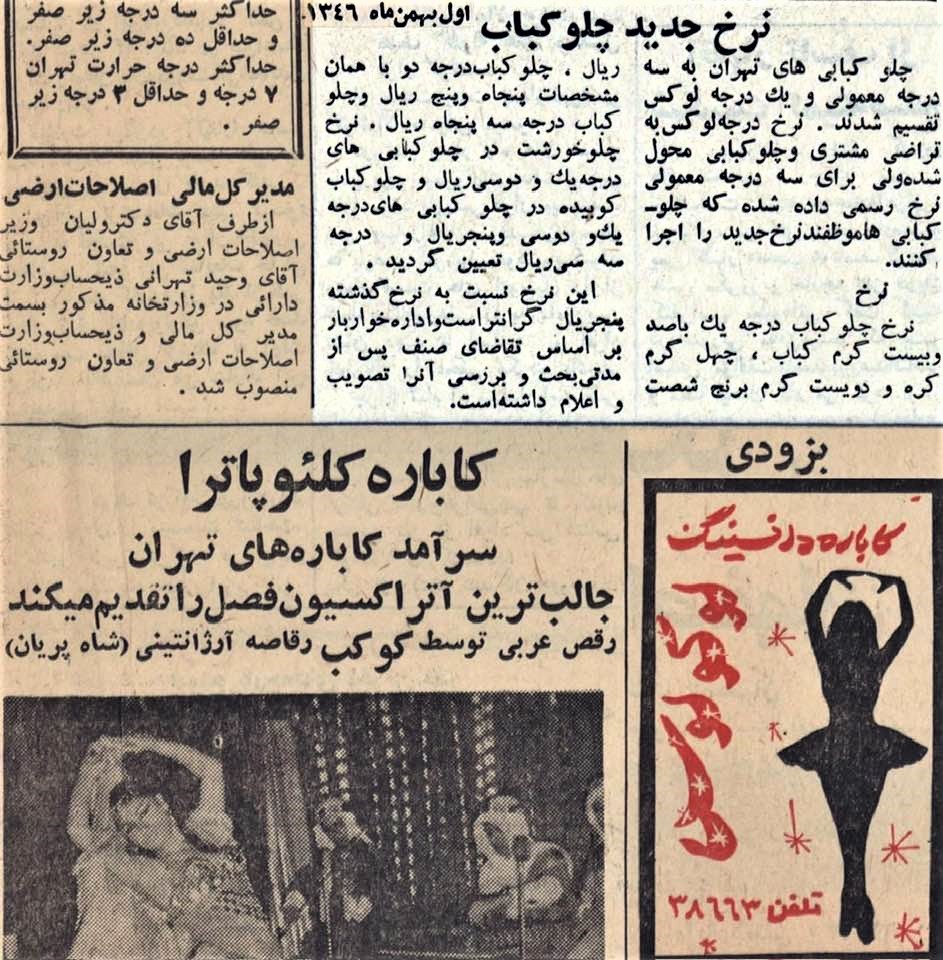
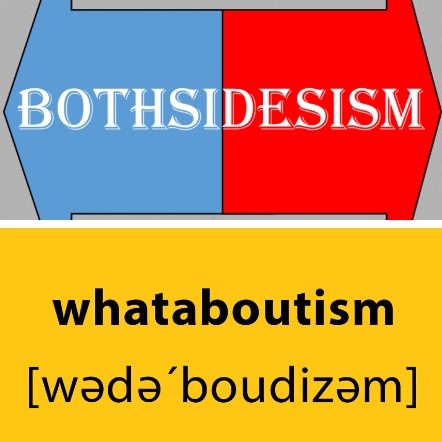
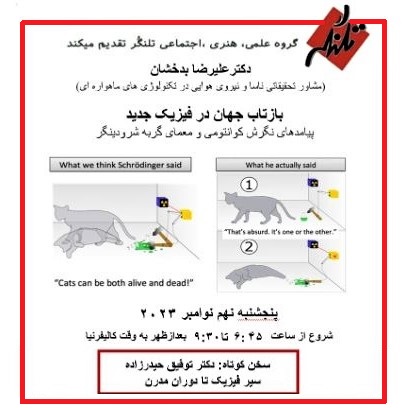 (1) Images of the day: [Top left] UCSB Jazz Combos at Wednesday's World Music Series noon concert, under impossibly blue skies (Video 1, Afro-Cuban mambo; Video 2, Cha-cha). [Top center] Iran's former Foreign Minister Javad Zarif does not consider residents of Israel civilians. [Top right] Islamic Republic of Iran manipulates its proxy forces to gain power: It cares even less about Palestinians than it does about Iranians. [Bottom left] Throwback Thursday: Iran's Commission on Price Control sets the rates for chelow-kabob (35-60 rials, depending on type and quality, ~$0.50-0.85), ca. 1968. [Bottom center] On anti-Semitism, bothsidesism, and whataboutism (see the last item below). [Bottom right] Talangor Group talk (see the next item below).
(1) Images of the day: [Top left] UCSB Jazz Combos at Wednesday's World Music Series noon concert, under impossibly blue skies (Video 1, Afro-Cuban mambo; Video 2, Cha-cha). [Top center] Iran's former Foreign Minister Javad Zarif does not consider residents of Israel civilians. [Top right] Islamic Republic of Iran manipulates its proxy forces to gain power: It cares even less about Palestinians than it does about Iranians. [Bottom left] Throwback Thursday: Iran's Commission on Price Control sets the rates for chelow-kabob (35-60 rials, depending on type and quality, ~$0.50-0.85), ca. 1968. [Bottom center] On anti-Semitism, bothsidesism, and whataboutism (see the last item below). [Bottom right] Talangor Group talk (see the next item below).
(2) Tonight's Talangor Group talk: Dr. Alireza Badakhsan (U. Texas Dallas) spoke under the title "Reflection of the World in Modern Physics." Before the main talk, Dr. Tofigh Heidarzadeh (U. California, Riverside) made a brief presentation on the journey of physics until the modern times. There were ~85 attendees.
The most-important physics notions since the 20th century include quantum mechanics and relativity theory. These notions have transformed not just physics itself but our understanding of the world around us, so a basic understanding of them is essential for us modern humans. Like all important discoveries, such as the dual nature of light (composed of particles and waves), quantum mechanics and relativity created much confusion among physicists. Even today, quantum mechanics isn't understood to the same extent by every physicist. It is well-known that even Einstein did not come to peace with quantum mechanics.
In part of his talk, Dr. Badakhsan tried to tie the modern notions of physics to spirituality (e.g., Eastern religious & philosophical traditions) and mysticism (as practiced, for example, by several Persian poets). Having read Fritjof Capra's The Tao of Physics and several of its critiques bordering on ridicule, I am rather skeptical of these connections. Vague spiritual and mystical statements can be interpreted in many different ways and one can assign various meanings to them, including interpretations connecting them to physical laws that were never part of the intended meaning.
(3) My brush with anti-Semitism, bothsidesism, and whataboutism: I have started the process of leaving social-media groups that exhibit anti-Semitism in the wake of the conflict between Israel and Hamas. Sometimes, the anti-Semitism is explicit and direct. At other times, it takes the form of bothsidesism and whataboutism (see below).
someone with quite a few family members residing in Israel, my interests and sensitivities are different from most of the people making comments about the conflict from various sociopolitical vantage points. I am very offended when the said family members are characterized as occupiers or oppressors that deserve to be annihilated. The older members of the family, who were oppressed in Iran's Kurdistan Province, immigrated to Israel in the late 1940s, penniless, where they started new lives after living in immigrant camps and kibbutzim for many years. As they built their new lives, they also helped build their new homeland.
BOTHSIDESISM: This is when data from both sides of a conflict are presented as if they are equally valid, to create the illusion of fairness. Actually, fairness requires vetting of data and presenting only information that is vetted and verified, even if this means excluding data from one side of the conflict. For example, when Israel says that ~1500 Israelis were slaughtered and ~250 were kidnapped on October 7, 2023, there is little doubt about the veracity of the claims, subject to the usual small uncertainties and inaccuracies. But when Hamas claims that Israel bombed a hospital, killing 500, there is no evidence to back it up. Experts examining the wreckage at the hospital parking lot have concluded that no more than 100 could have died, given that no buildings were damaged. More importantly, no evidence has been presented that Israel did the bombing. By now, Hamas should have been able to present evidence in the form of shrapnel and explosive residues to prove its claim, but no such evidence has been forthcoming. All the other Gaza casualty figures are similarly unverified and thus suspect.
WHATABOUTISM: This is the practice of responding to an accusation or difficult question by making a counteraccusation or raising a different issue. This strategy is like a murderer using the defense that other people have committed murder as well. Yes, they have, and they all should be prosecuted and punished similarly. One person's crime should be judged and punished for what it is and it cannot be forgiven because another person also committed the same crime or an even worse one. One should condemn Hamas' slaughtering of innocent civilians, using a sentence that ends in a period, not with a compound sentence that continues with "but." If you think Israelis have committed similar crimes, then raise your idea as a separate assertion, with its own evidence and analysis, using data from trustworthy sources.
2023/11/07 (Tuesday): Presenting selected news, useful info, and oddities from around the Internet.

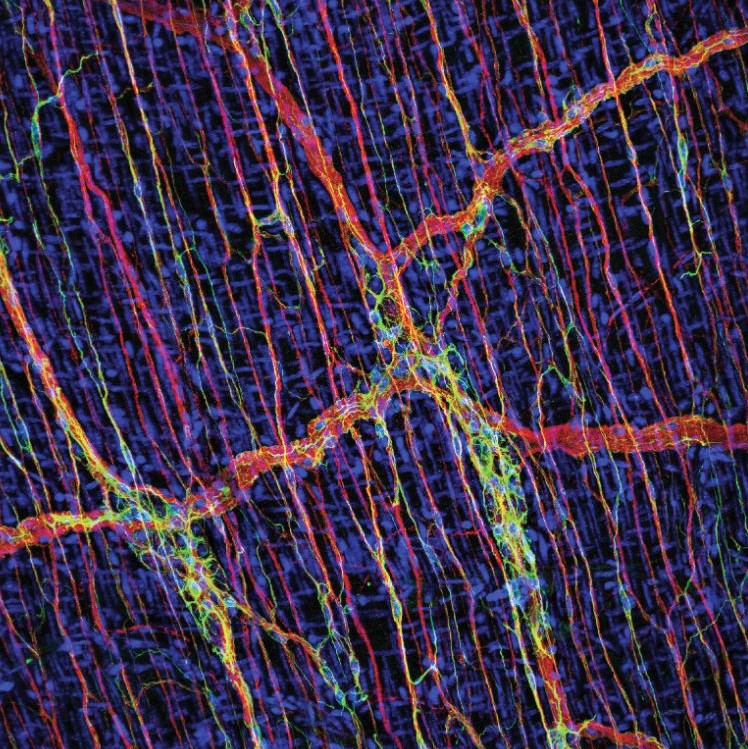



 (1) Images of the day: [Top left] Today's sleepy Election Day: Abortion rights are front & center in several states, including in Ohio, where it's Issue #1. [Top center] Human gut's private brain (see the next item below). [Top right] I love my new rainbow doormat from IKEA. [Bottom left] Two Baha'i women in their 80s, whose husbands were executed four decades ago because of their faith, are being harassed by Iran's Islamic regime. [Bottom center] Cartoon of the day: Father: "Do you have Jews, Christians, and Muslims at your school?" Daughter: "No, we have only kids." [Bottom right] Tonight's chelow-kabob dinner: Your place was empty!
(1) Images of the day: [Top left] Today's sleepy Election Day: Abortion rights are front & center in several states, including in Ohio, where it's Issue #1. [Top center] Human gut's private brain (see the next item below). [Top right] I love my new rainbow doormat from IKEA. [Bottom left] Two Baha'i women in their 80s, whose husbands were executed four decades ago because of their faith, are being harassed by Iran's Islamic regime. [Bottom center] Cartoon of the day: Father: "Do you have Jews, Christians, and Muslims at your school?" Daughter: "No, we have only kids." [Bottom right] Tonight's chelow-kabob dinner: Your place was empty!
(2) A second brain inside our gut: "Believe it or not, your small intestine has a brain of its own that takes over for you. The 'brain inside your gut,' or the enteric nervous system (ENS), is a complex network of neurons and glia often referred to as the 'second brain' owing to its cellular complexity and independence from central control. This second brain senses the movement of contents and responds by initiating contractions to move luminal contents in a unidirectional, aboral motion independent from your brain."
(3) Jewish Frenchman pretends to be Persian to save his life in a Nazi concentration camp, but he encounters challenges when a German deputy commandant demands Persian lessons: This is the intriguing premise (apparently based on a true story) of Vadim Perelman's "Persian Lessons" (2020). [2-minute trailer]
(4) One-liners: Brief news headlines, happenings, memes, and other items of general interest.
- In what kind of world is Donald Trump the focus of nearly all news stories, while two major wars are raging?
- Israelis are buying guns and getting firearms training in record numbers.
- Jewish man dies from head injury following altercation with pro-Palestinian demonstrator in S. California.
- The jihadi Janjaweed, a group with ties to Middle East Islamic extremists, massacres 773 civilians in Darfur.
- Ohio votes to enshrine the right to abortion in its state constitution.
- Iranian human-rights activist Nasrin Sotoudeh sends a video message to the Paris Bar Association.
- Young Iranian women are bringing the misogynistic Islamic regime to its knees! #WomanLifeFreedom
- Another dot.com idea bites the dust: WeWork files for bankruptcy amid a glut of empty offices.
- Institute of Engineering and Technology's reading list on "Women in Engineering and Technology."
(5) Book talk: Dr. Bahram Grami introduces his book, Ahmad Shamlou, Behind the Mirror. This interesting talk, which the speaker insisted isn't a literary criticism, reveals a great deal about Shamlou's personality, his misogyny, the doubtful nature of his translations, his drug addiction, his promise to Queen Farah Pahlavi not to speak ill of the Shah's regime, his false claims of serving time as a political prisoner, his negative view of Nowruz, and the insults he hurled at the great poet Ferdowsi. [56-minute video]
(6) Diesel generator at an EV charging station: This isn't as silly as it may appear at first sight. The generator is said to be a back-up for the solar-powered facility in the Australian Outback. [Photo]
(7) A transformative change: Saudi Arabia will use the Western Gregorian calendar in lieu of the traditional Islamic calendar for official business.
2023/11/05 (Sunday): Presenting selected news, useful info, and oddities from around the Internet.
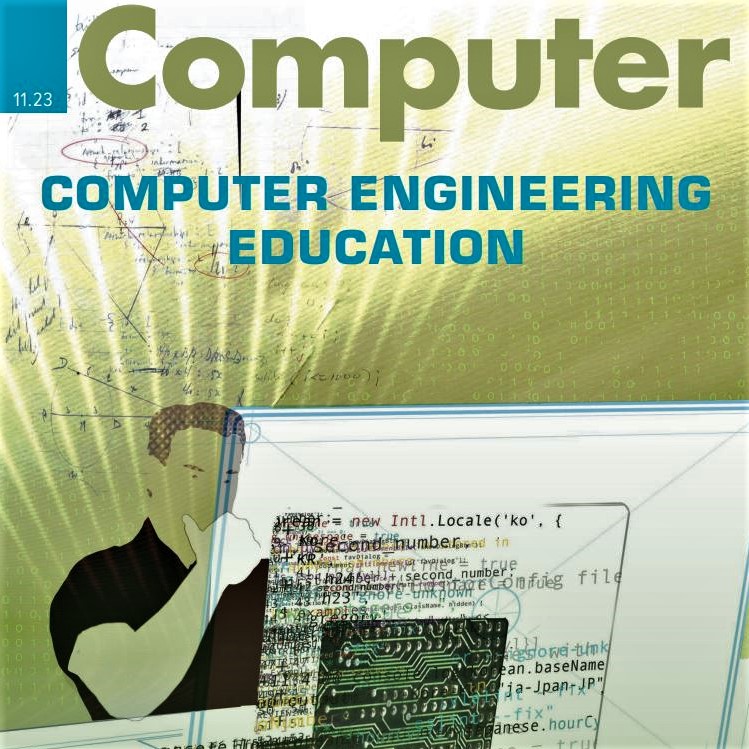

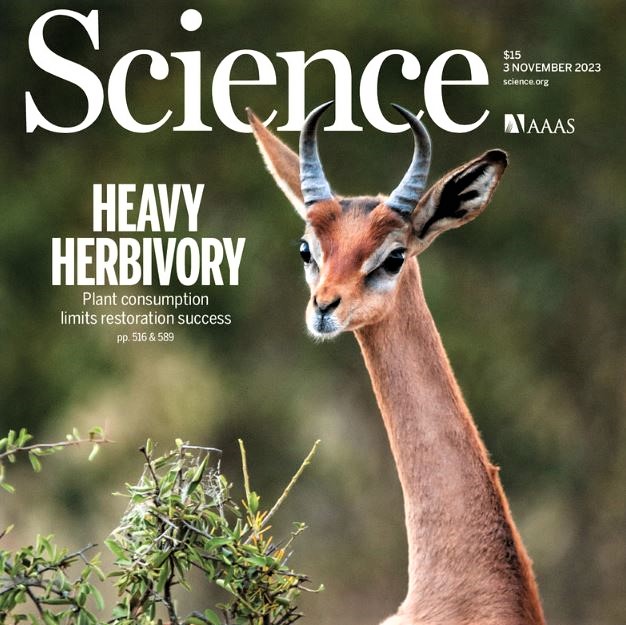


 (1) Images of the day: [Top left] Special issue of IEEE Computer magazine on CE education: The issue offers three articles on teaching chip design & verification, edge AI, and multiprocessor OS. [Top center] New Yorker cartoon of the day: Self-checkout comes to trick-or-treating. [Top right] Science magazine's cover feature (see the next item below). [Bottom left] Old-time Iranian singer Akbar Golpayegani (1934-2023) dead at 89: The photo shows him, his wife, their daughter, and two granddaughters. [Bottom center & right] My niece's belated birthday party, during which the top piece of her wedding cake, frozen for about six months, was also served.
(1) Images of the day: [Top left] Special issue of IEEE Computer magazine on CE education: The issue offers three articles on teaching chip design & verification, edge AI, and multiprocessor OS. [Top center] New Yorker cartoon of the day: Self-checkout comes to trick-or-treating. [Top right] Science magazine's cover feature (see the next item below). [Bottom left] Old-time Iranian singer Akbar Golpayegani (1934-2023) dead at 89: The photo shows him, his wife, their daughter, and two granddaughters. [Bottom center & right] My niece's belated birthday party, during which the top piece of her wedding cake, frozen for about six months, was also served.
(2) Cover feature of Science magazine, issue of Nov. 3, 2023: Successful restoration of vegetation in degraded ecosystems, especially in warmer, dryer regions, is hampered by a substantial herbivore control of vegetation under restoration. "Herbivores at restoration sites reduced vegetation abundance more strongly (by 89%, on average) than those at relatively undegraded sites and suppressed, rather than fostered, plant diversity."
(3) A scathing critique of the positions taken by Dr. Abdolkarim Soroush, an architect of Iran's version of Cultural Revolution, which led to a 3-year closure of Iranian universities and expelling of many students and faculty members. 11-minute video, narrated in Persian]
(4) One-liners: Brief news headlines, happenings, memes, and other items of general interest.
- Hamas tunnels discovered in Gaza have entry and exit points under hospitals, mosques, and schools.
- This Palestinian girl claims UN aid entering Gaza is being sold on the black market at ridiculously high prices.
- Never forget the massacre of Oct. 7, 2023: Graphic footage from the dead at the music festival.
- Mark Meadows' book publisher is suing him for lies he included in his memoir in support of Donald Trump.
- Heisenberg Uncertainty Principle: A somewhat deeper explanation, with an analogy to Fourier transform.
- Following national initiatives on AI promise & risks, the United Nations also launches an AI advisory body.
(5) The film industry is being taken over by game technology companies: This is the thesis of an article in IEEE Computer magazine (issue of November 2023). A result of this takeover will be the need for a chief scientist position at all major film studios.
(6) Al-Ahli Arab Hospital in Gaza was hit by a Palestinian rocket: New York Times draws this conclusion based on four sets of indicators that include video footage from the air, ground video footage, Hamas not having produced any evidence such as shrapnel after more than two weeks, and tapes of conversations between Hamas members. There is still a tiny non-zero probability that an Israeli rocket hit the hospital, but evidence to the contrary is overwhelming.
(7) The killing of 1400 Israelis by Hamas was justified: Thus says the Fatwa Department of Al Azhar University, the most prestigious institution in the Islamic world which is sometimes referred to as the Muslim "Vatican." The Fatwa reads, in part, "The term 'civilians' does not apply to the Zionist settlers of the occupied land. Rather, they are occupiers of the land, usurpers of rights, deviators from the straight path embodied by the prophets, and blatant disregarders for the sanctity of the historic city of Jerusalem, which encompasses the city of Jerusalem's respectable Islamic and Christian heritage."
2023/11/03 (Friday): Presenting selected news, useful info, and oddities from around the Internet.

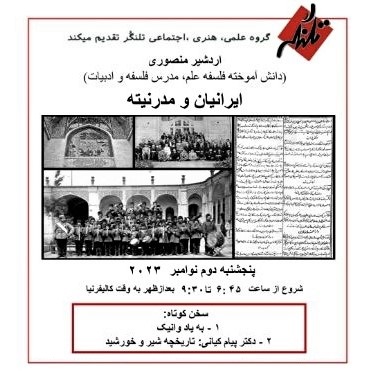
 (1) Images of the day: [Left] Math puzzle: In this diagram with three squares whose areas are given, what is the area of the blue triangle? [Center] Talangor Group talk (see the last item below) [Right] Math/stat humor: Normal and paranormal distributions.
(1) Images of the day: [Left] Math puzzle: In this diagram with three squares whose areas are given, what is the area of the blue triangle? [Center] Talangor Group talk (see the last item below) [Right] Math/stat humor: Normal and paranormal distributions.
(2) "Beyond Engaging Men: Masculinity, (Non)Violence, and Peacebuilding": This is the title of a new report published by Georgetown Institute for Women, Peace and Security, launched on October 30, 2023. According to Dr. Robert U. Nagel, Lead Report Author, "Bringing in men and masculinities avoids burdening women with the sole obligation of achieving gender equality. We need to mobilize men to create more gender-equal processes and institutions that will benefit everyone."
(3) UCSB's Institute for Energy Efficiency celebrated its 15th anniversary today: The 5.5-hour program included an opening keynote address and talks on data centers, green AI, energy-efficient materials, and the challenge of climate change. The event concluded with a reception, a poster session, and a tour of Henley Hall.
(4) Thursday's Talangor Group talk: Ardeshir Mansouri (philosopher of science) spoke under the title "Iranians and Modernity." The main talk was preceded by two brief presentations: An anniversary remembrance of Vanik Tatavoosian (1953-2022), a founding member of the Talangor Group, and a brief talk by Dr. Payam Kiani on the Lion & Sun emblem, a composite symbol, said to be from the period of Seljuk Turks, that graced Iran's national flag until 44 years ago. There were ~90 attendees.
Modernity has its roots in the Renaissance period (centered in Italy, France, England) and the ensuing rebirth after the Dark Ages. With modernity, Europeans returned to their ancient selves, that is, who they were in the age of thought & reason. After modernity came modernism and modernization. In non-European lands, the process was reversed, so that they began with modernization and moved toward modernism and modernity. Russia must be considered non-European, because it embraced modernity with significant delay (18th century).
Iran's first encounter with modernity occurred in the Safavid period, when printing press, railroad, and photography, among other manifestations of modernization, were brought in. Iranian adoption of modernity did not start with thinkers and philosophers. Its roots can be found in the weakness against foreign powers. These foreigners had all the tools of power (militarism), so Iran's rulers aimed to duplicate their success. Unfortunately, the aforementioned manifestations of modernity were not used to spread modern thought but rather to spread religious beliefs and various "ism"s. So, part of the problem is that we adopted manifestations of modernity without modernizing our thoughts.
Interestingly, before we took significant steps in our quest to adopt modernity, we encountered the introduction of the notion of Westoxification, which opposed and tried to nullify Western thought. The idea was advanced that we should return to our own selves, not to European selves (our own modernity, not theirs). As a result, we vacillated between infatuation with Western thought and enmity to it, thus missing the boat of modernity.
It is in the aforementioned sense that some people consider "tajaddod" (renewal, in Persian/Arabic) to be different from modernity. Modernity for us is an imported notion, whereas return to self, which is highly desired, never actually happened in Iran. To summarize, the Persian/Arabic term "tajaddod" is sometimes taken to be equivalent to modernity and sometimes is taken to be different (a native version of return to self).
2023/11/02 (Thursday): Presenting selected news, useful info, and oddities from around the Internet.




 (1) Images of the day: [Top row] Throwback Thursday: My younger maternal aunt (top right corner in the school photo, taken when she was a teen) looks so much like my mom; my parents in a studio portrait from 70-75 years ago. [Bottom left] Memes of the day about Iran: (1) The physician who attended her award ceremony wearing no hijab must wear the chador from now on. (2) One condition of Saudi Arabia to normalize its relation with Israel was being given control of the Gaza Strip. (3) Instagram accounts of many celebrity influencers are being closed over hijab violations. (4) In October 2023, 76 Iranian prisoners were executed. [Bottom center] Wednesday's multicultural dinner: Italian pasta with meat sauce, Iranian Shirazi salad, and French bread. [Bottom right] A book about the dark side of astrophysics (see the last item below).
(1) Images of the day: [Top row] Throwback Thursday: My younger maternal aunt (top right corner in the school photo, taken when she was a teen) looks so much like my mom; my parents in a studio portrait from 70-75 years ago. [Bottom left] Memes of the day about Iran: (1) The physician who attended her award ceremony wearing no hijab must wear the chador from now on. (2) One condition of Saudi Arabia to normalize its relation with Israel was being given control of the Gaza Strip. (3) Instagram accounts of many celebrity influencers are being closed over hijab violations. (4) In October 2023, 76 Iranian prisoners were executed. [Bottom center] Wednesday's multicultural dinner: Italian pasta with meat sauce, Iranian Shirazi salad, and French bread. [Bottom right] A book about the dark side of astrophysics (see the last item below).
(2) You ought to know: Palestinians were not driven out in 1948 by the Israelis. They were convinced by the armed forces of several Arab countries that planned to conquer Israel to get out of harm's way.
(3) Baha'i woman, who was expelled from school in Iran for her faith, won a prestigious prize in 2018: Shabnam Raayai-Ardakani is only the second woman to win APS's Fluid Dynamics Award.
(4) In Islam, the punishment for drinking and sexual promiscuity is condemnation to Hell, and the reward for those going to Heaven is access to unlimited liquor and sex. [Attributed to Iranian writer Sadegh Hedayat]
(5) Book review: Tyson, Neil deGrasse and Avis Lang, Accessory to War: The Unspoken Alliance Between Astrophysics and the Military, unabridged 19-hour audiobook, read by Courtney B. Vance, Random House Audio, 2018.
[My 5-star review of this book on GoodReads]
Tyson has written the book Astrophysics for People in a Hurry (my lukewarm review). Before the latter book, Tyson wrote a much heavier tome, Accessory to War, which he jokingly describes as "Astrophysics for People Not in a Hurry." We often associate astrophysics with high-minded research focused on understanding the universe, with little attention to worldly applications. Tyson and Lang do a great job of dispelling this myth. In a nutshell, they state that astronomers have always been in the service of the warring generals. They are good at detecting, locating, and tracking objects, which are useful capabilities for land, sea, and air combat.
Accessory to War is detailed and well-researched, beginning with techniques and technologies used in the ancient world (use of the stars, vision aids) and continuing systematically up to the present day (advanced detection methods, space tech). The early part of the book is a feast of history, covering thousands of years of war & conquest with the help of astronomers and their tools. Ptolemy, Galileo, and Kepler paid close attention to military uses of their knowledge and had military sponsors.
In modern times, the invention of radar, understanding of the electromagnetic spectrum beyond visible light, and space-based command & control have greatly increased combat capabilities. The close association between astronomy and war explains, in part, why the fields of astrophysics and space research are lavishly funded. Today, thanks to such funding, we have at our disposal a wide array of both earth-based and air/space-based detection & location technologies.
The 100+ pages of notes in the hardback version of the book (nonexistent in the audiobook, of course) are indicative of the authors' scientific minds and extensive research. Their arguments, that advanced technologies, space tech in particular, have made wars much more dangerous, is well-supported by the presented evidence. The combination of weapons of mass destruction and precision tracking & delivery methods have indeed brought humanity to the brink of extinction-scale wars, which can be avoided only through international cooperation and understanding.
2023/11/01 (Wednesday): Presenting selected news, useful info, and oddities from around the Internet.
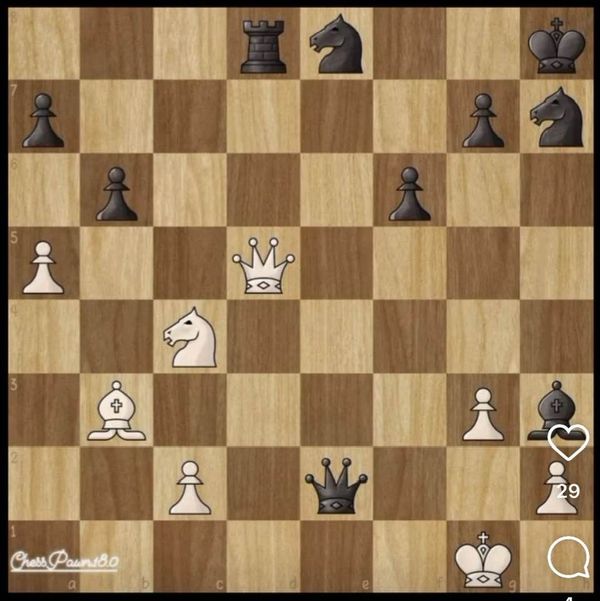
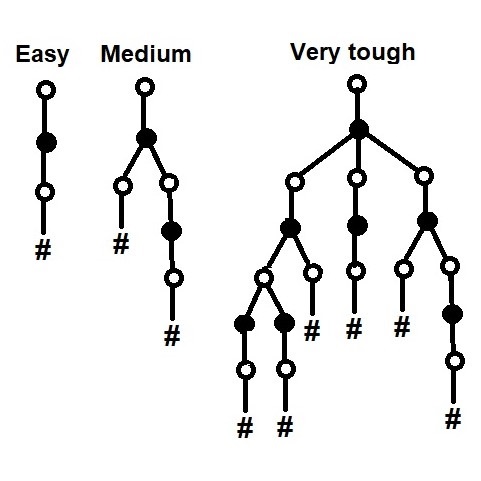
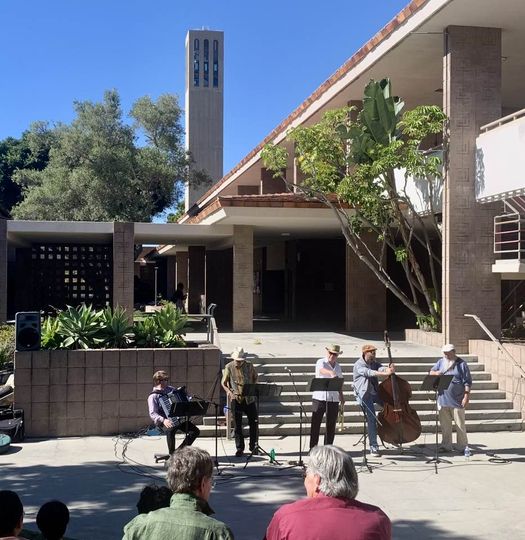 (1) Images of the day: [Left] Chess puzzle: White, which is in danger of losing the match, has a brilliant move that leads to a win. What is that move? [Center] Game trees for chess puzzles (see the next item below). [Right] Today's World Music Series noon concert at UCSB's Music Bowl (Klezmer Music with Kalinka): The five-piece band included an accordion, a clarinet, a trumpet, a bass, and a banjo (Video 1: a 1920's tune entitled "Get Happy Jews") (Video 2: A Yiddish song from the 1920s) (Video 3: A song from Ukraine) (Video 4: A jazzy song whose title and background I did not catch) (Video 5: One last sample of music from the concert).
(1) Images of the day: [Left] Chess puzzle: White, which is in danger of losing the match, has a brilliant move that leads to a win. What is that move? [Center] Game trees for chess puzzles (see the next item below). [Right] Today's World Music Series noon concert at UCSB's Music Bowl (Klezmer Music with Kalinka): The five-piece band included an accordion, a clarinet, a trumpet, a bass, and a banjo (Video 1: a 1920's tune entitled "Get Happy Jews") (Video 2: A Yiddish song from the 1920s) (Video 3: A song from Ukraine) (Video 4: A jazzy song whose title and background I did not catch) (Video 5: One last sample of music from the concert).
(2) On the structure of easy and tough chess puzzles: The diagram shows alternating chess moves by white and black. On the left is a typical easy chess puzzle, with white mating in 2 moves: White makes a move, black's move is forced, white finishes with the second move. In the middle is a somewhat more-challenging puzzle: White makes a move, black has two possible moves, one of which leads to immediate mate and the other one leads to a white move that mates in one more move. On the right is an example of a tough chess puzzle: Black has three possible moves in response to white's first move, and so on. This kind of rich branching structure occurs at the end of real chess games.
(3) In a message smuggled out of her prison cell, Nobel Peace Laureate Narges Mohammadi writes: "Victory is not easy, but it is certain."
(4) One-liners: Brief news headlines, happenings, memes, and other items of general interest.
- US special forces are in Israel to help in the search for hostages taken by Hamas.
- Philanthropic foundations to provide $200 million funding for AI advancement.
- FDA recalls 21 eyedrops due to unsanitary conditions in production facilities which create an infection risk.
- A capsule history of Israelis and Palestinians: It's quite different from what most people think.
- Talk about remote software update! NASA sends a software patch to Voyager 2, 12 billion miles away.
- Home sellers win a $1.8 billion lawsuit against brokerages that conspired to inflate agents' commissions.
- Why almost all coal on Earth was made at about the same time: Between 360M and 300M years ago.
- Corporate welfare, good (it's capitalism), welfare for workers and ordinary people, bad (it's socialism).
- George Carlin on political double-speak: How politicians torture the English language. [9-minute video]
- Facebook memory from Nov. 1, 2019: Persian music, performed on piano and kamancheh.
(5) This is why Israel cannot agree to a cease fire: "We will repeat the October 7 massacre time and again, one million times if we need to, until we end the occupation." ~ Hamas
(6) Persian music: The late Fereydoun Farrokhzad (assassinated by Islamic Republic of Iran operatives in Europe) performs a modern Persian song, accompanied by Shohreh Solati. [5-minute video]
(7) US universities covet the R1 (tier-1 research) designation: Currently, a complicated formula is used to determine which institutions qualify as R1. The process is being simplified to considering only two factors, viz. research expenditure of at least $50 million and granting of at least 70 doctoral degrees. The thresholds for the R2 designation are $5 million and 20 doctoral degrees.
2023/10/31 (Tuesday): Presenting selected news, useful info, and oddities from around the Internet.





 (1) Images of the day: [Top left] Prominent Iranian human-rights attorney Nasrin Sotoudeh arrested in Tehran for not wearing a hijab at the funeral of a 16-year-old girl who died after being roughed up by hijab-enforcers. [Top center] With my daughter returning from a Halloween party, we have an additional cat in our household. [Top right] The Chinese non-believers: Iranian Paralympic athlete regained his sight by praying to the Eighth Imam the night before his match: Chinese officials did not accept this excuse and kicked him off the games. [Bottom left & center] Sunday's dinner: Quince stew (in a slow-cooker) with rice, courtesy of my daughter. [Bottom right] We are prepared to welcome little trick-or-treaters later this evening!
(1) Images of the day: [Top left] Prominent Iranian human-rights attorney Nasrin Sotoudeh arrested in Tehran for not wearing a hijab at the funeral of a 16-year-old girl who died after being roughed up by hijab-enforcers. [Top center] With my daughter returning from a Halloween party, we have an additional cat in our household. [Top right] The Chinese non-believers: Iranian Paralympic athlete regained his sight by praying to the Eighth Imam the night before his match: Chinese officials did not accept this excuse and kicked him off the games. [Bottom left & center] Sunday's dinner: Quince stew (in a slow-cooker) with rice, courtesy of my daughter. [Bottom right] We are prepared to welcome little trick-or-treaters later this evening!
(2) Jews who are religious and believe in putting up Torah scrolls (Mezuzahs) on the frame of their entry doors, have begun to remove them, because they are easy marks for spotting Jewish homes by anti-Semites.
(3) When physicists enter a new domain, they often discover the footsteps of mathematicians who walked there before. [9-minute video]
(4) One-liners: Brief news headlines, happenings, memes, and other items of general interest.
- At the end of "A Primer on Hamas" series of articles, by Mark Durie: Some Concluding Thoughts.
- Rival groups at UCSB organize events in support of Palestinians and Israelis. [Daily Nexus front page]
- A tale of two 19th-century researchers reveals how science professionalization led to women's exclusion.
- Instead of a polite, generic rejection note, employers should tell interviewees exactly where they fell short.
- Association for Computing Machinery issues principles for generative AI technology.
- A glimpse of Iran's diverse ethnic profile. [1-minute video]
- Funny comedy routine about old people: I really like his impersonation of a teen's disapproving reaction.
(5) The most-educated countries in the world: Germany ranks first with an education index of 0.94, literacy rate of 99%, and school achievement of 22.91. The next four countries are Finland (0.93, 100%, 25.29%), Iceland (0.93, 99%, 21.11%), New Zealand (0.93, 99%, 17.39%), Norway (0.93, 100%, 27.49%).
(6) The Encina Royale housing complex in Goleta has electrical outlets in the carports: Some residents use these outlets for recharging their electric vehicles. The homeowners' association has reminded the residents that such use of the outlets is disallowed and will lead to fines, given the significant fire hazard. A main reason is that the 60-year-old electrical infrastructure of those outlets cannot support the high currents drawn during the charging of large batteries. Even though not explicitly stated, I think the issue of who pays for the electric energy used during charging is also an issue. You may want to watch for similar problems where you live.
(7) Palestinians did not leave their homes in 1948 because Israel kicked them out: They left because Arab armies on the verge of an invasion to try to take the land asked them to get out of harm's way.
(8) Scarier than ghosts: American Jews constitute 2.4% of the US population but are victims in 60% of religious hate crimes, according to FBI data cited by Director Christopher Wray.
(9) Final thought for the day: Jews who are religious and believe in putting up Torah scrolls (Mezuzahs) on the frame of entry doors, have begun to remove them, because they are easy marks for spotting Jewish homes.
2023/10/29 (Sunday): Presenting selected news, useful info, and oddities from around the Internet.
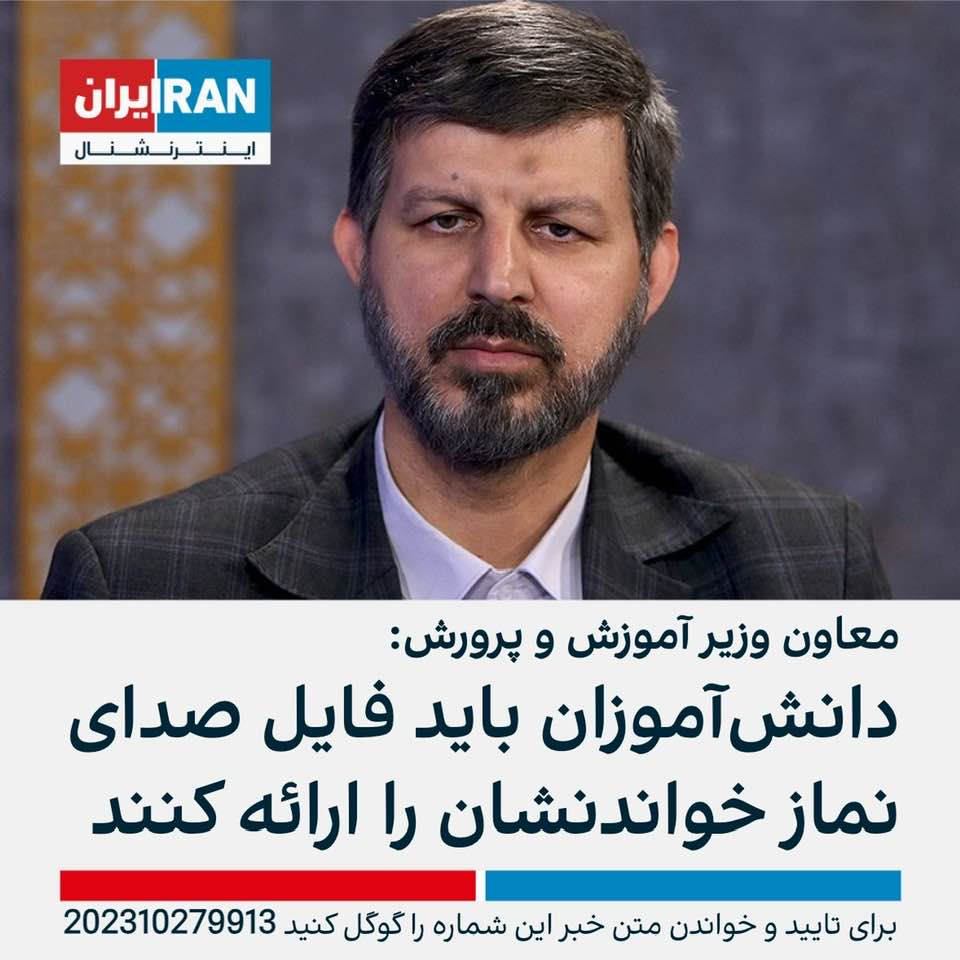
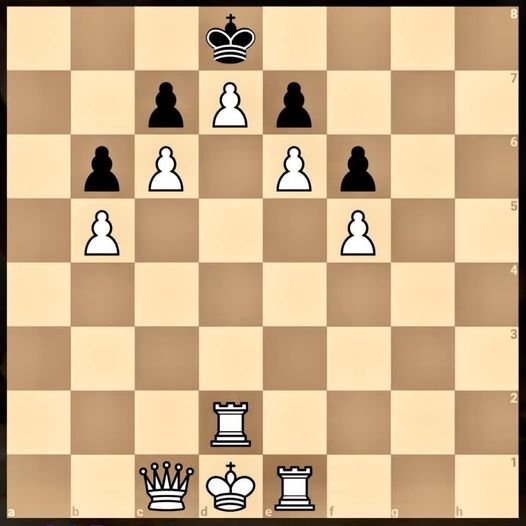

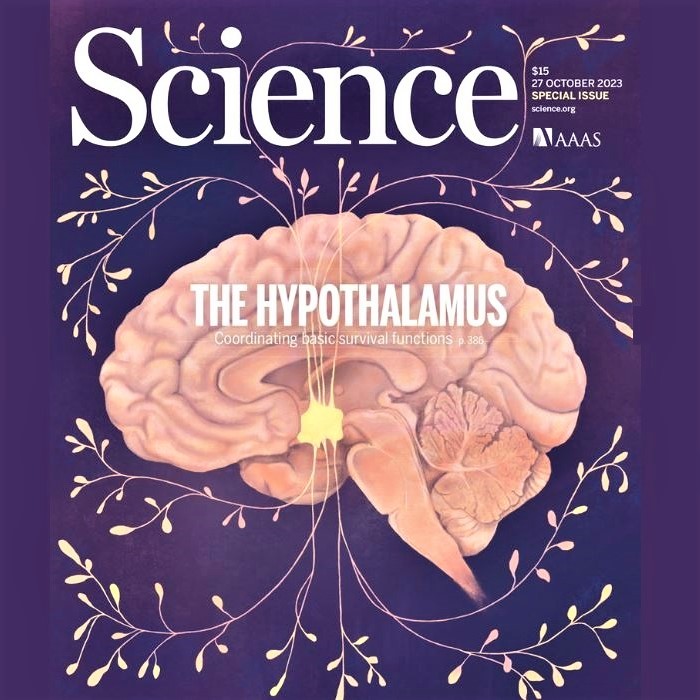

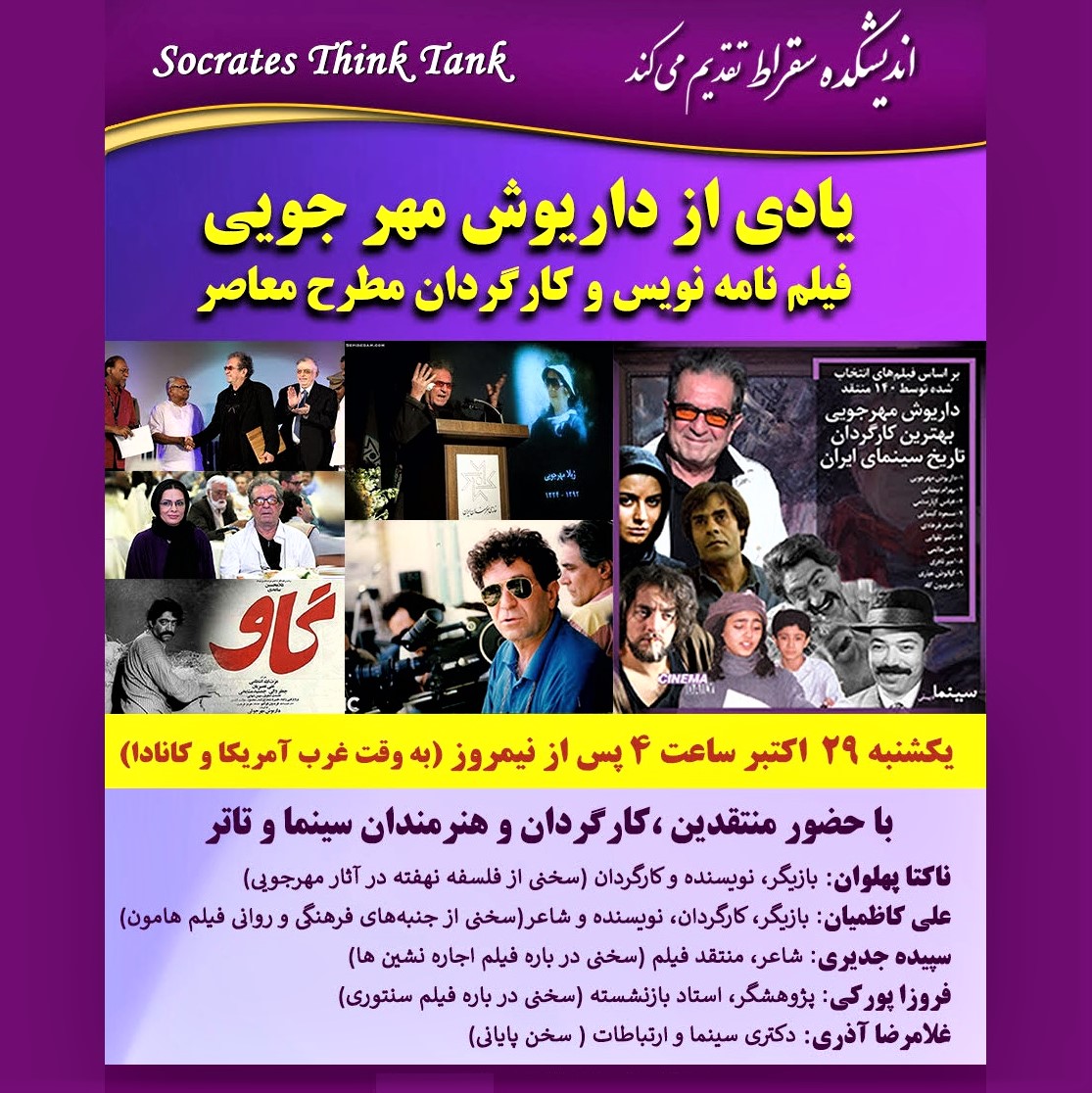 (1) Images of the day: [Top left] Islamic Republic of Iran education official: "Students should record their Islamic prayers and submit the sound files to schools for verification." [Top center] Chess puzzle: White to begin and mate in 2 moves. Hint: Black currently has no legal move, so if white does not create one, the match is a draw according to chess rules. [Top right] Israelis have changed: They are now a lot more reflective and unsure of their future. They hug more and have set aside petty grievances. Much like post-9/11 Americans. [Bottom left] The small and mighty hypothalamus: It controls temperature, sleep, eating, and social interactions. [Bottom center] Male soccer player insults female referee (see the next item below). [Bottom right] Socrates Think Tank remembers director Dariush Mehrjui (see the last item below).
(1) Images of the day: [Top left] Islamic Republic of Iran education official: "Students should record their Islamic prayers and submit the sound files to schools for verification." [Top center] Chess puzzle: White to begin and mate in 2 moves. Hint: Black currently has no legal move, so if white does not create one, the match is a draw according to chess rules. [Top right] Israelis have changed: They are now a lot more reflective and unsure of their future. They hug more and have set aside petty grievances. Much like post-9/11 Americans. [Bottom left] The small and mighty hypothalamus: It controls temperature, sleep, eating, and social interactions. [Bottom center] Male soccer player insults female referee (see the next item below). [Bottom right] Socrates Think Tank remembers director Dariush Mehrjui (see the last item below).
(2) Toxic masculinity in soccer: In an old incident from 2015, which has resurfaced in a viral post with a new, highly-misleading caption, a Turkish soccer player told a German female referee, who red-carded him, to stick to the kitchen. He later apologized for the insult, but was "sentenced" to refereeing a girls' soccer match, which he did, without a 5-game suspension or any of the drama claimed in the new viral post.
(3) One-liners: Brief news headlines, happenings, memes, and other items of general interest.
- When "I condemn Hamas' massacre of Israelis" is followed by "but," I stop reading/watching.
- Jumping robots: These demos seem to have been filmed at UCSB.
- A partial list of apologies from the Catholic Church: Compare this record to the record of science & reason.
- Things to do in Ventura, CA, as recommended by AAA Magazine. [Tweet]
- Stand-up comedian Shaparak Khorsandi gets serious in this routine about the plight of women in Iran.
- Persian music: A beautiful pre-Islamic-Revolution love song. [1-minute video]
- Facebook memory from Oct. 28, 2021: Here is why we still need feminism.
- Facebook memory from Oct. 28, 2017: Team Tyson/Nye wants to make America smart again!
(4) Texas plans a referendum for establishing $4 billion endowment to add to its two top-tier research universities, UT Austin and Texas A&M.
(5) Socrates Think Tank panel discussion: In a Zoom session with ~75 attendees, five artists and critics discussed the films of the late Iranian director Dariush Mehrjui, who was found stabbed to death along with his wife in a home-invasion incident reminiscent of the 1988-1998 chain-murders of prominent opposition figures by Iran's government operatives. Mehrjui studied philosophy, so he brought philosophical points to his films. He was a founding member of Iran's New-Wave cinema of the early 1970s. Mehrjui's last film "La Minor" was completed in 2022, the same year he dared Iran's Islamic government to kill him, because he was anti-regime. It seems that the government took him up on this dare.
- Nakta Pahlevan (actor/writer/director): "On the Philosophy Hidden in Mehrjui's Films"
- Ali Kazemian (actor/director/writer/poet): "On Cultural & Psychological Aspects of the Film 'Hamoun' (1990)"
- Sepideh Jodeyri (poet/film-critic): "On the Film 'The Lodgers' (1987)"
- Forouza Pourkay (researcher/retired-professor): "On the Film 'Santouri' (2007)"
- Gholam Reza Azari (PhD in media/communications): "Closing Remarks" (due to Internet access restrictions, this Iran-resident panelist could not join, despite valiant efforts in trying different anti-filtering products)
A question-and-answer session followed the four presentations by the panelists.
2023/10/28 (Saturday): Today, I offer 2 book reviews on size & scale in nature and human-made systems.
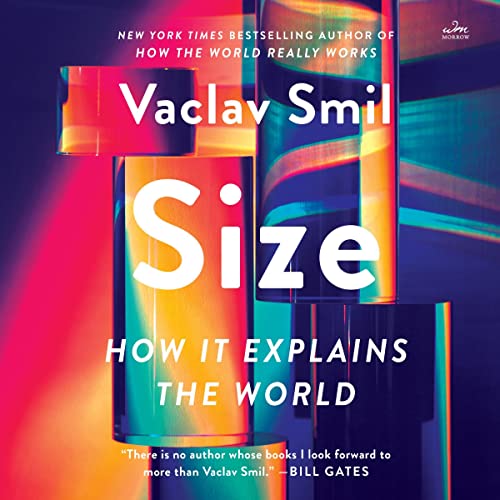
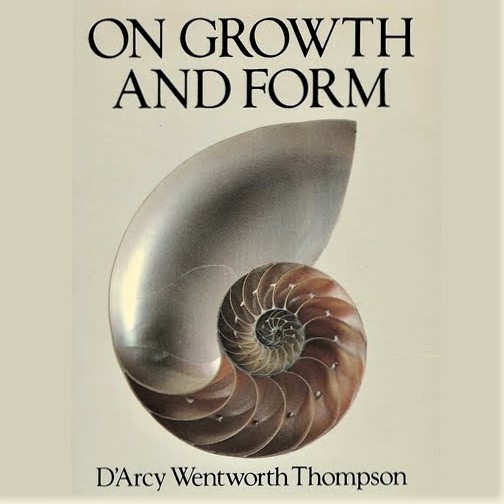
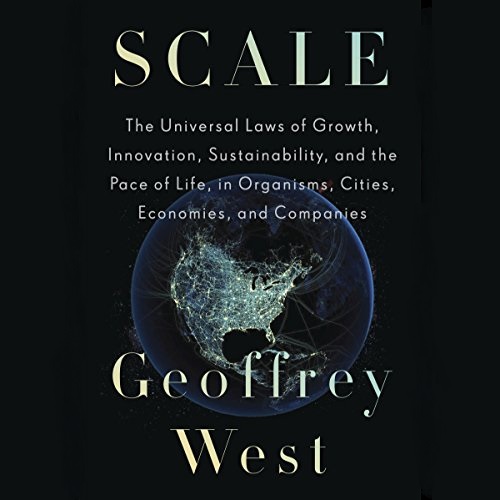 (1) Book review: Smil, Vaclav, Size: How It Explains the World, unabridged 9-hour audiobook, read by Stephen Perring, Harper Audio, 2023. [My 4-star review of this book on GoodReads]
(1) Book review: Smil, Vaclav, Size: How It Explains the World, unabridged 9-hour audiobook, read by Stephen Perring, Harper Audio, 2023. [My 4-star review of this book on GoodReads]
Vaclav Smil, professor of environmental studies at U. Manitoba, begins by observing that humans have always been fascinated by giant things. The seven wonders of the world were all humongous. When available material or construction methods impose a size limit, we work hard to overcome those limits in order to build taller skyscrapers, bigger airplanes, or larger dams. And our fascination with size isn't limited to human-made things. We are easily shocked and awed by the largest animals. At the other extreme, the tiniest things or beings also fascinate us.
Smil's book is related to another interesting book, Scale: The Universal Laws of Growth, Innovation, Sustainability, and the Pace of Life in Organisms, Cities, Economies, and Companies, by Geoffrey West (2017). [My review] There is a great deal of overlap between the two books. Size covers more ground, but is, by necessity, shallower, while, at double the size (pun intended), Scale digs much deeper into those aspects that it does cover.
Laws of scaling in nature are what limit the size of the largest animals and makes such animal heavier-built and less agile (compare an elephant with a gazelle). In many cases, size variations are distributed normally, with the distribution being nearly symmetric around the mean. A good example is the height of individuals, with separate distributions for men and women. In certain other cases, power-law distributions are applicable.
Size limitations and scaling laws also apply to human-made artifacts, such as buildings and jet engines. Smil covers the case of cities and companies in detail, showing that both have power-law scaling. There are very few gigantic metropolises or trillion-dollar companies, and many more provincial townships and small businesses. Other examples of power-law distributions are encountered in wealth of individuals, sales of books, and frequency of leading digits in numbers (Benford's Law). A straight-line plot on log-log scale is necessary, but insufficient, evidence for an underlying power-law.
Size is important in several different ways. It affects properties and behaviors. A large animal does not move or act in the same way as a small animal. We would readily admit to growth limits for biological systems, a recognition that has a very long history. That non-living systems also have growth limits comes as a surprise to many. An inordinately large city would be crushed under the burden of providing services and means of transportation. Even if we can build a super-tall skyscraper, it would be inefficient owing to the amount of floor space taken up by elevator shafts.
Given the importance of size, we have expended much effort on procedures and technologies for measuring it and on debating the relative merits of various characterizations and measurement methods. When one measures size (or anything else for that matter), one is drawn to consider norms and deviations from norms. This is readily accomplished in some cases, as in human height or body-mass index. With power-law distributions, however, well-defined mean and variance may not exist, making it difficult to characterize extreme cases.
Despite gaining much useful and interesting information from this book, I found it somewhat disappointing. Laws of scaling are not discussed as rigorously or completely as they could have.
(2) Book review: West, Geoffrey, Scale: The Universal Laws of Growth, Innovation, Sustainability, and the Pace of Life in Organisms, Cities, Economies, and Companies, Penguin, 2018.
[My 4-star review of this book on GoodReads]
Growth in the animal kingdom has been studied for at least a century. Scottish mathematical biologist D'Arcy Wentworth's classic 1917 (2nd ed. 1942) book, On Growth and Form, considers the effects of scale on the shapes of animals & plants and also discusses a wide array of mathematical structures and forms observed in nature, from the design of animal shells to the arrangement of plant leaves. The study of how the characteristics of living creatures change with size is known as "allometry," a term coined by J. S. Huxley & G. Tessier in a 1936 Nature paper.
Theoretical physicist Geoffrey West reiterates some of the old knowledge cited above and provides updates on studies performed since then. He also tackles scaling laws for cities and companies. Much of what I wrote in my review of Vaclav Smil's Size applies to this book as well, so I include it here by reference.
We humans are conditioned to think of scaling as being linear: Double the weight of an animal and it will need twice as much food. This follows the same logic as per-capita economic measures, that is, we tend to think in terms of a constant amount of food per cell. In this example, the food required actually grows sublinearly with weight. Doubling of weight leads to the need for ~70% more food. A cat is ~100 times heavier than a mouse but consumes only 10^(3/4) ~ 32 times the energy that the mouse consumes (a kind of economy of scale). Exponent factors 3/4 and 1/4 are encountered in many natural scaling formulas. In other cases of power-law scaling, the relationship may be superlinear.
We often talk of economy of scale as if it's an immutable law. Galileo was the first person to observe that organisms and structures cannot be scaled up indefinitely, because masses increase by the third power of size, whereas cross-section of supporting structures, such as bones and columns, increase by the square of size.
Many interesting scaling effects are discussed in connection with cities and companies. The two are different, in that companies tend to have short lifespans on average, whereas cities rarely go defunct. The speed of life, social interactions, and economic activity all scale with the size of a city (New Yorkers walk much faster than residents of small towns). There are surprising similarities among cities with diverse histories and cultural attributes. In the case of companies, scaling reveals universal dynamics that correspond to a company's size and age.
In summary, the characteristics and dynamics of diverse biological organisms, cities, and companies are governed by surprisingly similar laws that describe their structures as well as their limits.
2023/10/27 (Friday): Presenting selected news, useful info, and oddities from around the Internet.
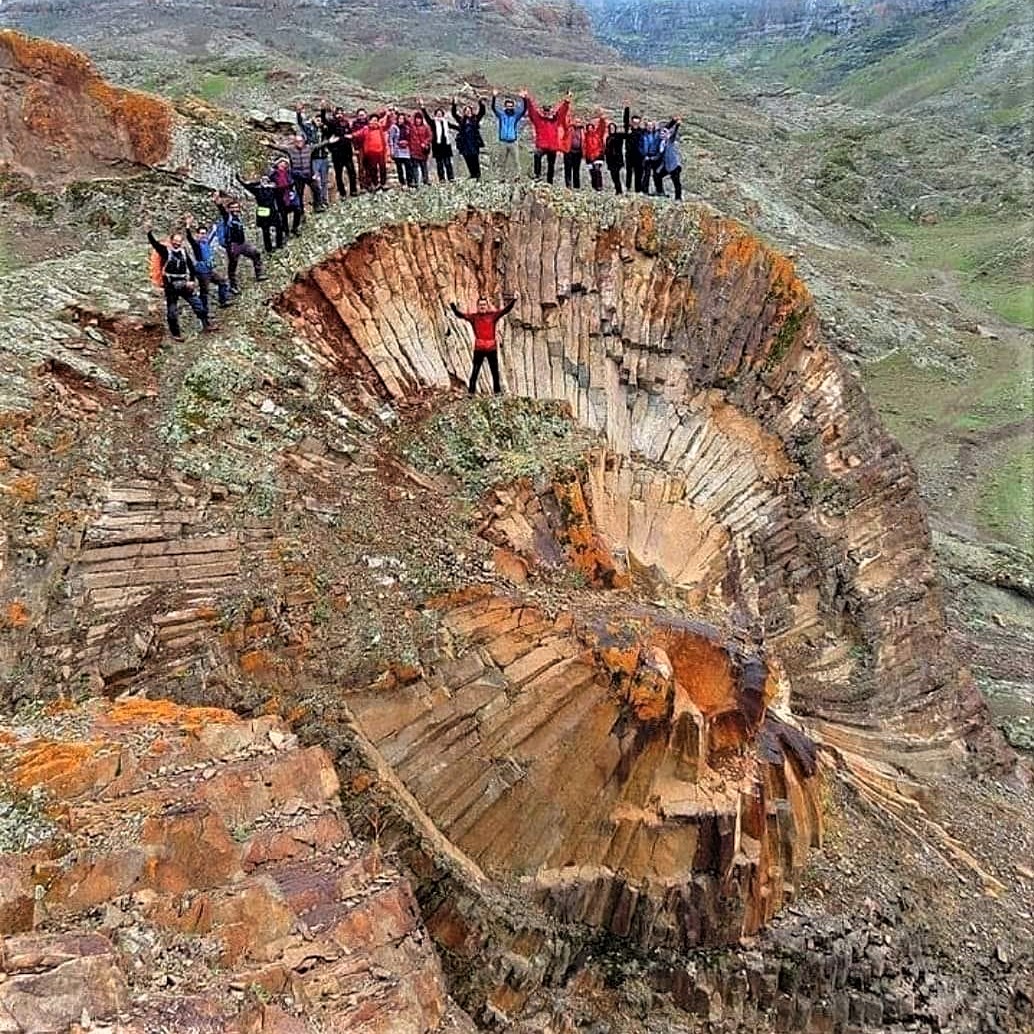

 (1) Images of the day: [Left] Basalt rock near Meshginshahr, Iran: Basalt is formed from the rapid cooling of low-viscosity lava rich in magnesium and iron, exposed at or very near the surface of a rocky planet or moon. More than 90% of all volcanic rock on Earth is basalt. [Center] New Yorker cartoon of the day: Pumpkin patch. Spice patch. Latte patch. [Right] Narges Mohammadi's White Torture (see the last item below).
(1) Images of the day: [Left] Basalt rock near Meshginshahr, Iran: Basalt is formed from the rapid cooling of low-viscosity lava rich in magnesium and iron, exposed at or very near the surface of a rocky planet or moon. More than 90% of all volcanic rock on Earth is basalt. [Center] New Yorker cartoon of the day: Pumpkin patch. Spice patch. Latte patch. [Right] Narges Mohammadi's White Torture (see the last item below).
(2) Interview with Elaheh Amani on illicit sexual relations by Islamic Republic of Iran's government officials.
P.S.: Private affairs are of course private and I usually avoid discussing them in my posts. However, in the case of hypocrisy, the situation changes. When a public official lives differently from what s/he demands of others (to the extent of prosecuting and imprisoning them for the same acts), the matter becomes of public interest.
(3) One-liners: Brief news headlines, happenings, memes, and other items of general interest.
- Maine mass shooter found dead of self-inflicted gunshot wounds: Nearly all mass shooters are cowardly.
- It would be ironic if the actions of a bunch of barbarians started World War III among civilized countries!
- Israel claims that it is responding to attacks by Iran-supported forces from north and northeast.
- Qatar must be called out for hosting Hamas leaders and providing them with offices and other amenities.
- Qatar's Jekyll-Hyde personas, as arsonist and firefighter, in the Israel-Hamas conflict.
- Putin mouthpiece threatens the US: "Iran will sink American ships taking part in the attack against Hamas."
- An exciting new archaeological discovery in Nineveh, Upper Mesopotamia (today's Mosul, Iraq).
(4) Book review: Mohammadi, Narges (translated by Amir Rezanezhad), White Torture: Interviews with Iranian Women Prisoners, Oneworld Publishers, 2022.
[My 4-star review of this book on GoodReads]
I had read Narges Mohammadi's White Torture in its original language (Persian) before, but after she was awarded the 2023 Nobel Peace Prize for her relentless support of human and women's rights in Iran, I went back to the book and embarked on a more-careful reading of its English translation. Mohammadi is serving a three-decade jail term on "anti-regime" charges and, ironically, was in prison when the Nobel Prize news came.
In this book, Mohammadi interviews 12 women prisoners about their ordeals and how solitary confinement affected their mental and physical states. Facing the prospects of solitary confinement herself, Mohammadi writes: "I declare ... that this is a cruel and inhumane punishment ... I will not rest until it is abolished."
Mohammadi asserts that Iran's Islamic regime uses solitary confinement as a form of torture to break the resistance of political prisoners and extract confessions from them that are then used to strike them with long prison terms or even death sentences. Isolated from other prisoners and kept in the dark about their own case and whether their families even know where they are, detainees become extremely vulnerable to pressure and manipulation, often making self-incriminating false statements in the hopes of ending their torturous isolation.
A tiny solitary-confinement cell and social isolation affect not just a detainee's mental well-being but also impair his/her physical health. Many detainees emerge from solitary confinement with various physical ailments, not to mention lifelong mental scars. Some of the women interviewed for the book were unable to return to normal life following release from prison. In the case of women prisoners, a routine part of solitary confinement is sexual humiliation and abuse.
White Torture has been turned into a documentary film by the same title. The film has been screened as a part of several on-line symposia centered on human rights. I watched it during one such event in January 2022 and found it well-done and effective.
One of the reasons most-often cited for opposition to the Shah in the lead-up to the 1979 revolution was the fact that his secret police, SAVAK, tortured prisoners to extract confessions. The fact that torture of all kinds, including the use of solitary confinement, is rampant in Islamic Iran's prison system is thus quite ironic. Based on the continuation of torture under two vastly different regimes, together spanning more than 70 years, it would be rather simplistic to think that torture will disappear from Iran with the fall of the Ayatollahs.
2023/10/26 (Thursday): Presenting selected news, useful info, and oddities from around the Internet.


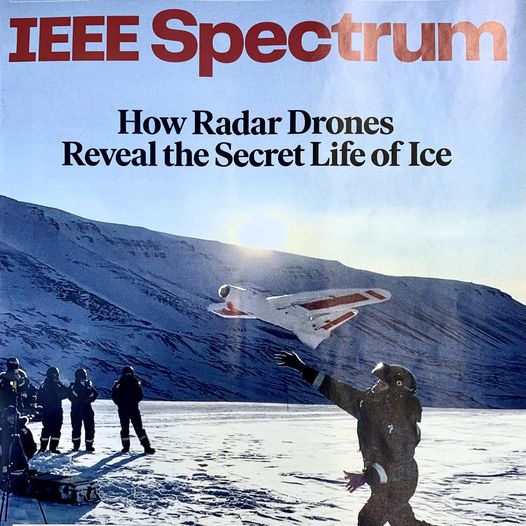

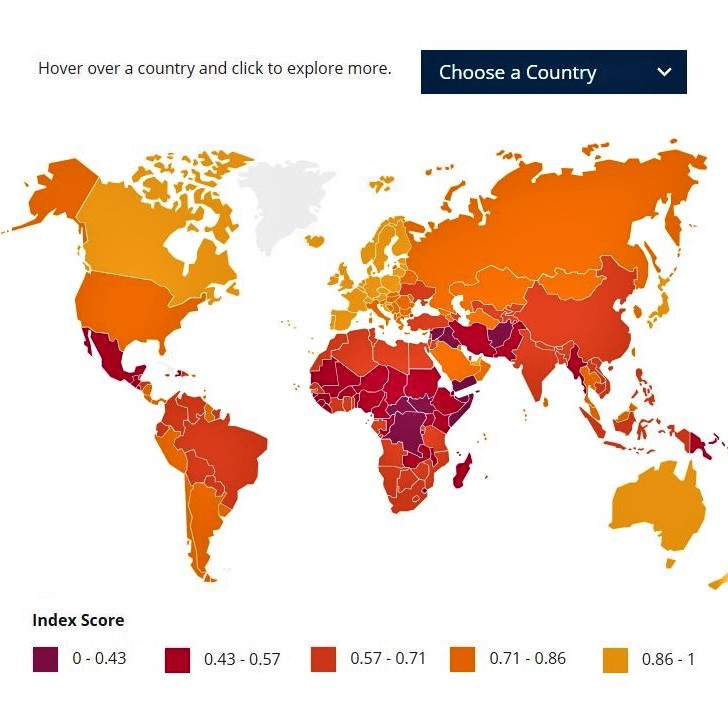
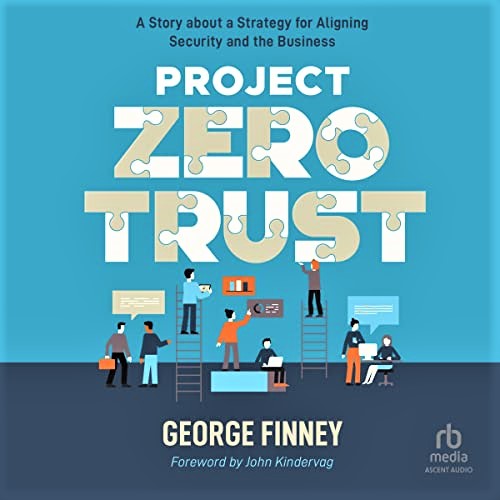 (1) Images of the day: [Top left] Throwback Thursday (scenes from Iran of 5+ decades ago): A taxi squeezing in two people on the front passenger seat intended for one person, and an implement that only older Iranians would recognize. [Top center] Deir-e Gachin Caravansara (rest stop for caravans), Kavir National Park, Iran. [Top right] Uncovering the secrets of ice with drones: Fixed-wing drones, capable of operating in 30+ degrees Celsius below zero & equipped with ice-penetrating radar, help map ice sheets to the north of mainland Norway that are 100+ meters deep, to assess the impact of their melting. [Bottom left] Turkey sandwich with cranberry sauce for early dinner: According to my chef daughter, there's no good reason to wait for Thanksgiving. And, of course, she's also making pumpkin pie! [Bottom center] Women Peace and Security Index: The latest data from a Georgetown U. report show Afghanistan dead-last among 177 countries in terms of women's inclusion, justice, and security. Iran (140/177), Pakistan, and several central-African countries are in the next tier. [Bottom right] George Finney's Project Zero Trust (see the last item below).
(1) Images of the day: [Top left] Throwback Thursday (scenes from Iran of 5+ decades ago): A taxi squeezing in two people on the front passenger seat intended for one person, and an implement that only older Iranians would recognize. [Top center] Deir-e Gachin Caravansara (rest stop for caravans), Kavir National Park, Iran. [Top right] Uncovering the secrets of ice with drones: Fixed-wing drones, capable of operating in 30+ degrees Celsius below zero & equipped with ice-penetrating radar, help map ice sheets to the north of mainland Norway that are 100+ meters deep, to assess the impact of their melting. [Bottom left] Turkey sandwich with cranberry sauce for early dinner: According to my chef daughter, there's no good reason to wait for Thanksgiving. And, of course, she's also making pumpkin pie! [Bottom center] Women Peace and Security Index: The latest data from a Georgetown U. report show Afghanistan dead-last among 177 countries in terms of women's inclusion, justice, and security. Iran (140/177), Pakistan, and several central-African countries are in the next tier. [Bottom right] George Finney's Project Zero Trust (see the last item below).
(2) Palestinian Authority President Mahmoud Abbas: "Hamas says it will fight to the end. Yet its leaders hide under mosques' domes or flee to Egypt on ambulances, leaving their people behind. These leaders don't care if Gaza is destroyed and thousands of Gazans die." [Tweet, with video]
(3) Book review: Finney, George (foreword by John Kindervag), Project Zero Trust: A Story About a Strategy for Aligning Security and the Business, unabridged 8-hour audiobook, read by Daniel Thomas May, Ascent Audio, 2022. [My 4-star review of this book on GoodReads]
Zero-Trust is a security approach that eliminates implicit trust in internal and external networks. Nothing is trusted by default and each access step undergoes mandatory checks. Because of hacking and infiltration, connections from the inside of your network or from trusted outside vendors could be just as malicious as those coming from elsewhere.
George Finney, a seasoned cybersecurity expert, is the Chief Security Officer at Southern Methodist University. In this book, he describes the Zero-Trust security strategy by telling a story. A number of employees of a fictitious company, including the just-hired IT Security Director, talk with internal and external experts as they try to deal with an in-progress ransomware attack and make their company ready for future attacks. Each chapter focuses on a particular sub-topic, with a recap of the main ideas, that is, a list of takeaways, provided at the end.
Implementing any security strategy presents a tradeoff between vulnerability and employee convenience/productivity. For example, allowing log-ons that persist for a long time makes it easier on users but is a recipe for disaster in terms of increasing the chances of intrusion. As another example, multi-factor authentication, done several times during the workday, creates extra work for users, but has a significant impact on security.
As they say, security is a weakest-link phenomenon, so all aspects of the system, from physical security to identity services and remote-access guidelines, must be included in the planning. Conventional wisdom has it that security is expensive. However, proper implementation of a security protocol can actually save money, besides the fact that insecurity can be extremely more costly. John Kindervag, who is given credit for inventing the Zero-Trust model of cybersecurity, has written the book's foreword.
On May 12, 2021, President Biden issued an executive order on improving the nation's cybersecurity, particularly against hostile nations, that includes directives for removing the barriers to effective sharing of cyberthreat information and advocates modernizing federal government cybersecurity through the adoption of best practices such as Zero-Trust.
Apparently, Zero-Trust does not ensure complete security, because the author & publisher have included extensive disclaimers at the beginning of the book to protect themselves against legal trouble!
In this 8-minute video, Finney describes how the book came about and what he tried to accomplish by writing the book.
2023/10/25 (Wednesday): Presenting selected news, useful info, and oddities from around the Internet.

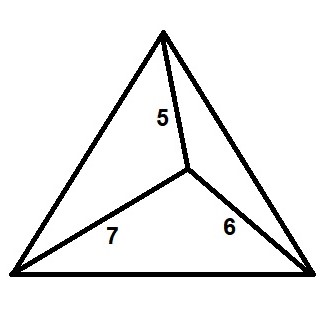
 (1) Images of the day: [Left] Me & Javid John, a Santa Barbara-based Persian singer who joined the audience for today's noon concert, after performing a Persian song (see the next item below). [Center] Math puzzle: Find the side length of the outer equilateral triangle from the given lengths. [Right] Reflections on the brutal conflict in the Middle East (see the last item below).
(1) Images of the day: [Left] Me & Javid John, a Santa Barbara-based Persian singer who joined the audience for today's noon concert, after performing a Persian song (see the next item below). [Center] Math puzzle: Find the side length of the outer equilateral triangle from the given lengths. [Right] Reflections on the brutal conflict in the Middle East (see the last item below).
(2) Today's World Music Series noon concert at UCSB's Music Bowl: UCSB Middle East Ensemble performed a number of Egyptian songs and a Persian selection, in video 2 that follows, of a song made famous by Googoosh. He will perform three Googoosh songs at UCSB Middle East Ensemble's upcoming concert on Saturday, December 2, 2023. [Video 1] [Video 2] [Video 3] [Video 4]
(3) One-liners: Brief news headlines, happenings, memes, and other items of general interest.
- Mass shootings at multiple locations in Maine kill 22 and injure dozens. "Thoughts and prayers"!
- The GOP was worried about not having a House speaker: Which brings to mind this Persian poem/proverb.
- A beautiful cover of the Beatles' "And I Love Her." [3-minute video]
- A talented street performer is surprised by another talented singer who joins in. [5-minute video]
- On the way back from today's noon concert, I encountered this group of pro-Palestinian demonstrators.
(4) On the Israel-Hamas conflict: I waited for a couple of weeks before offering a substantial post about the conflict in order to read about all opinions and have time to digest them.
I am very disappointed with the prevailing narratives on the traditional and social media. My perspective is that of a person with a large number of family members living in Israel. Whereas those who have no relatives or acquaintances involved in the conflict can still be compassionate, the situation is a lot more heart-wrenching when you think of specific loved ones in mortal danger, as you wait for receiving word about their safety. Here is my seven-part musing, for what it's worth. [Persian summary version]
- The October 7 massacre of 1400 Israelis (beheaded, machine-gunned, burned, raped, dragged by the hair) and the horrors suffered by 200+ hostages seem to have been forgotten. So far, in the span of one week, four hostages have been released in two rounds. How can the Western media celebrate the release of two hostages and parrot Hamas' propaganda that the release is motivated by humanitarian concerns? Humanitarian concerns by barbarians? At this rate, it will take ~1 year to free all the hostages, assuming Hamas actually wants to do this, rather than use a subset of the hostages to buy time to re-arm and repair its terror infrastructure.
- Arab and UN leaders speak about immediate cease-fire, implicitly advocating that Hamas remain in place intact. Given that the slaughter of October 7, 2023, was unprovoked, another event of the same kind may happen within a few months, with support from Iran, Turkey, Qatar, and other countries that shelter and arm anti-Israeli proxy forces. Hamas will be emboldened by its "success," while suffering only minor consequences.
- US and world media's tendency to cover "both sides" gives free air-time and ink to Hamas propaganda. Everyone interviewed advocates for peace and cease fire, and, when explicitly asked about the savage attacks of 10/7, they respond by condemning the killing of all civilians. This is akin to declaring that "all lives matter," when asked about whether they agree with "black lives matter." Yes, all lives do matter, but it also does matter who began the violence and who is being targeted for annihilation and genocide ("being wiped off the map," in the words of Iran's Supreme Leader).
- The coverage of the bombing of a Gaza hospital is a good example. Initially, Hamas claimed that Israeli forces bombed the hospital and that 500 were killed as a result. Later investigations revealed that a failed Islamic Jihad rocket, launched toward Israel, crashed on a hospital parking lot. No buildings were damaged and the number of casualties is unlikely to have exceeded 100. Yet, the initial narrative persists. When the alternate explanation is covered, it is labeled as one of two sides, despite the fact that only the theory implicating the Islamic Jihad is backed by data, images, and other facts.
- Top Hamas leaders do not actually reside in Gaza. They and their families live in Qatar & other foreign countries and they travel around the world, in the lap of luxury. So, when they shed crocodile tears for the impoverished people of Gaza, while profiting personally from the aid they receive in the name of Palestinians, from the real estate they own in Gaza & elsewhere, and from using their terror tunnels to smuggle goods into and out of Gaza, do not believe them. Again, you have to look hard in the US and international media reports to learn about the residence and financial status of Hamas political & military leaders.
- The false narrative of Israelis as occupiers must stop. Israelis settled in their holy land where they have roots. No occupying or colonizing group has ever found ancient manuscripts in archaeological digs that bore their history and were written in the same language they speak today. Many Israelis have lived in the land now called Israel for thousands of years and those who were resettled there from outside the region were moved there through a legitimate international process. Any opposition to the Israelis making their homes there should be taken up with the United Nations, not with the civilian population living and working there.
- The two-state solution existed 60+ years ago, but was rejected by Palestinians who, along with their allies, attacked Israel in June 1967, in what became known as the Six-Day War. Palestinians and Syria lost some land to Israel during that conflict, but they repeated their mistake in 1973's Yom Kippur War, cementing Israel's territorial gains. When the US and Russia occupied parts of Germany after World War II, it took decades for them to return the land to Germans. This is the reality of war: The victor tends to hang on to land it gains. Even now, when the two-state solution is discussed, return to the 1967 borders is one of the demands.
2023/10/24 (Tuesday): Presenting selected news, useful info, and oddities from around the Internet.


 (1) Images of the day: [Left & Center] Tonight's dinner by my daughter: Zereshk-polo with chicken and crispy rice topped with gheimeh stew. [Right] India's Solar Center in Eco Park, near Kolkata (see the last item below).
(1) Images of the day: [Left & Center] Tonight's dinner by my daughter: Zereshk-polo with chicken and crispy rice topped with gheimeh stew. [Right] India's Solar Center in Eco Park, near Kolkata (see the last item below).
(2) Middle East Forum: A Q&A Primer on Hamas, by Mark Durie. [Update: Parts 4-6 added on 2023/10/27]
Part 1: What is Hamas?
Part 2: Why Does Hamas Think It Will Win?
Part 3: Who Supports Hamas?
Part 4: Who Are the Palestinians?
Part 5: What Is the Occupation?
Part 6: Is Antisemitism Part of the Problem?
(3) Monday's Town Hall on DEI Climate Survey Report: Held at UCSB's Mosher Alumni House, the gathering was meant to offer an initial analysis of the data collected during a 2021 campus climate survey and compare it to an earlier 2014 campus climate assessment project. Victor Rios, Evelin Estrada, and Brett Collins from the UCSB DEI office conducted the meeting.
I attended the meeting because I wanted to learn about the state of DEI efforts on our campus and how the faculty/staff group Men Advocating for Gender Equity (MAGE), which I co-chair, fits in and can contribute to the campus program.
"Climate" refers to behaviors and attitudes within a workplace or learning environment, ranging from subtle to cumulative to dramatic, that can influence whether an individual feels personally safe, listened to, valued, and treated fairly and with respect.
The mission of DEI office is to reshape UCSB into a dignifying and affirming space, by improving outcomes for all students and employees, through addressing racism and other forms of bias, and by building coalitions with community members. The ultimate goal is to create an institution where all members feel embraced.
Much info, including the complete survey, is available through the Web site of UCSB's DEI office. Next steps in the process include disaggregated data analyses, policy and program recommendations, future assessment of campus climate, and understanding data needs.
(4) Iran's IslamAn exciting new archaeological discovery in Nineveh, Upper Mesopotamia (today's Mosul).
https://www.facebook.com/iahapublic/posts/pfbid032wcsXzARPrVxHyp7W5pjq4EnzqcFmdZXJcUyQv29JwLLQuQ5f8t7zybMUzYceCALl
c regime and surveillance cameras: At the scenes of several recent crimes by regime-supported goons, surveillance cameras did not exist, were turned off, or malfunctioned, per government claims. Surveillance cameras used to identify and prosecute hijab-less women, however, always work perfectly!
(5) Iranian-born classical guitarist Lily Afshar [1960-2023] dead at 63: The death report is confirmed by multiple sources, although there are Web sites that claim she is alive and kicking. She drew from Persian and Azerbaijani folk-music traditions to create arrangements for the classical guitar which are as rich and beautiful as a Persian miniature. [A sample of her work]
(6) India's Solar Center: India is a beacon of light when it comes to switching from fossil fuels to renewables. It has stayed ahead of its advertised goals and keeps moving the goal post forward. This dome in Eco Park, New Town, Kolkata, with a height of 29 meters and base diameter of 45 meters, has 2000 solar panels that power the facility itself and nearby street lamps. Inside the dome are exhibits about the benefits of renewable energy sources, such as tidal, geothermal, wind, and solar. [Source: IEEE Spectrum magazine, October 2023]
2023/10/23 (Monday): Today, I offer three book reviews on racism, human memory, and climate change.

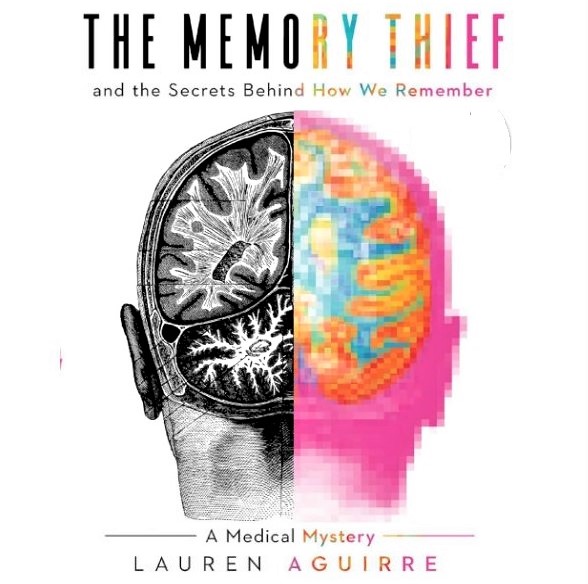
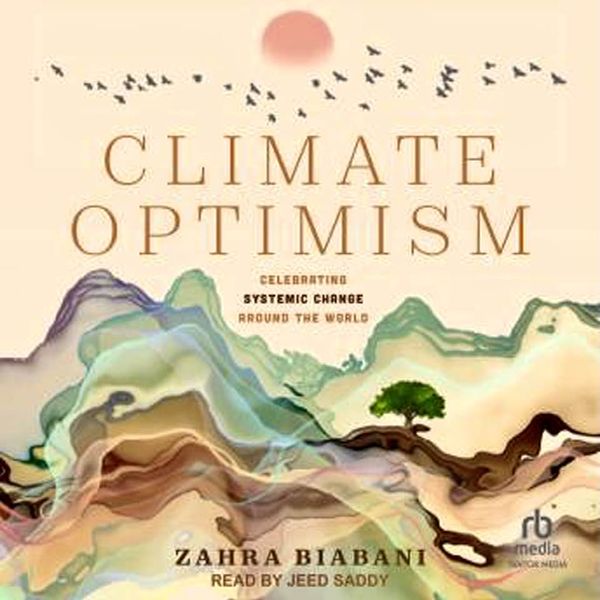
(1) Book review: Sellers, Bakari, My Vanishing Country: A Memoir, unabridged 5-hour audiobook, read by the author, Harper Audio, 2020. [My 4-star review of this book on GoodReads]
I got to know the author from his formerly-frequent appearances on CNN panels. He impressed me with his reasoned arguments, steeped in historical references. So, I had to read his memoir, which did not disappoint. Portions of the book, primarily those dealing with the author's childhood and family life, are exquisitely written, and, had the writing been consistent throughout, a 5-star rating would have been in order.
Bakari Sellers [1984-] is from the town of Denmark, South Carolina. The town's name (as well as those of Sweden, Norway, & Finland) didn't result from Scandinavian settlers moving there, but was picked to honor Captain Isadore Denmark, an official with one of the railroad companies working in the area during the 1800s. A predominantly black town, Denmark used to be rather prosperous but fell on hard times due to various events, the last of which was the NAFTA agreement of 1994. The title's "Vanishing" refers to the struggles of rural South Carolina ("Country") and its forgotten people.
Sellers awes the reader, beginning with the introduction, where he discusses his father's civil-rights activism, career as a university professor, and friendship with Martin Luther King, as well as events of racial discrimination and violence when he was a little boy. He got into politics from a very young age, being elected at age 22 to the state's House of Representatives, where he served for 8 years. He was dissuaded from running for a statewide office, because "Democrats and Blacks do not win statewide races in South Carolina." Nevertheless, he ran for Lieutenant Governor in 2014, losing to Henry McMaster.
There are some inconsistencies in the positions taken by Sellers, which are perhaps the reasons for longwinded explanations that detract from this otherwise-important book. Whereas Sellers has worked for Congressman James Clyburn and Atlanta Mayor Shirley Franklin, he also holds controversial views, such as becoming a Zionist in 2016 and posting a later-deleted tweet, calling for a teenager involved in a skirmish with a Native American man at Lincoln Memorial to "be punched in the face."
Sellers adored his father Cleveland but had some difficulties with his mother Gwendolyn. He pursued a law degree and a legal career. He discusses some of his own health challenges and devotes many pages to his family's hardships, beginning in 2018, when his wife gave birth to twins, a boy and a girl, with the girl suffering from a life-threatening ailment requiring kidney transplant and his wife nearly dying from post-delivery complications.
I view this book as essential reference for understanding structural racism that still pervades the US South. Such first-hand accounts of how racism affects people's lives, even those of a prominent and rather well-to-do family, helps us come out of our privilege shell and start thinking about personal actions we can take to guide our country into modern civilization, where compassion and human-dignity rule.
(2) Book review: Aguirre, Lauren, The Memory Thief and the Secrets Behind How We Remember: A Medical Mystery, unabridged 9-hour audiobook, read by the author, Blackstone Publishing, 2021.
[My 4-star review of this book on GoodReads]
The Memory Thief of this review is a medical nonfiction book. There are other books by the same title, including a young-adult novel and a fictional adventure. Lauren Seeley Aguirre, a science journalist, chronicles an investigation into devastating amnesia cases in a cluster of fentanyl overdose survivors. Studying these cases, doctors were able to prove that opioids can damage the hippocampus, a relatively small brain region that plays a big role in learning and memory.
Memory storage and recall are among the most-important attributes that make us human. We are just beginning to understand how memory works, how it fails, what deteriorates it, and how we can help it along. In particular, we are quite interested in learning how we can prevent or delay the onset of dementia, which affects 1 in 7 older Americans.
In The Seven Sins of Memory: How the Mind Forgets and Remembers, Daniel Schachter divides the various memory dysfunctions into seven categories.
- Transience: Forgetting that occurs with the passage of time.
- Absent-mindedness: Improper encoding that results from paying inadequate attention to something.
- Blocking: Not recalling something that is properly stored, owing to the loss of its recall cue.
- Misattribution: Remembering something correctly but attributing it to the wrong source.
- Suggestibility: Mixing information gained from outside sources with things personally experienced.
- Bias: Interpreting experiences and our memory of them in light of our current beliefs and feelings.
- Persistence: Remembering emotionally-charged experiences that we wish we would forget.
Memory loss occurs due to environmental factors. There does not seem to be a genetic condition that suddenly surfaces to make our memories fade. Memory storage and recall are among the most-complex tasks in the human brain, so anything that diminishes brain health can compromise our memory function. Examples include poor diet, sleep deprivation, heavy drinking, and opioid use. Both opioid-associated amnestic syndrome and Alzheimer's disease target and damage the hippocampus, from where the damage spreads to the rest of the brain. Shellfish poisoning is another cause of damage to the hippocampus.
Cognitive workout can help avert memory loss, but the workout should involve fairly difficult tasks. Contrary to the oft-given advice, doing crosswords and Sudoku puzzles isn't enough.
(3) Book review: Biabani, Zahra, Climate Optimism: Celebrating Systemic Change Around the World, unabridged 5-hour audiobook, read by Jeed Saddy, Tantor Audio, 2023.
[My 4-star review of this book on GoodReads]
With regard to achieving results, there is no difference between climate denialism ("no action needed") and climate super-pessimism ("nothing can be done"). Unfettered optimism is also dangerous, because it creates a false sense of security.
In recent years, a new style of climate optimism has entered the scene, which advocates celebrating advances in understanding the problems, signing of international pacts, and emerging technologies for dealing with various challenges. Phenomenal advances in renewable-energy generation are also sources for optimism. We should build on these successes, rather than complain about politics-driven denialism in the US, noncompliance of treaty partners, and the slow pace of shifting to renewable energy sources.
I have previously read Not Too Late: Changing the Climate Story from Despair to Possibility [My review], in which Rebecca Solnit and Thelma Young Lutunatabua present diverse voices from the worldwide climate movement advising us to do our share by setting aside fear and despair. According to Biabani, a young climate activist, there are good reasons for climate optimism. Changing attitudes among people and, thus, politicians who represent them tops the list. Despite political rhetoric, which sometimes takes the form of ridiculing climate change, US Red states have embraced the use of renewable energy just as much as Blue states. Court cases increasingly end in favor of those advocating climate action and against polluters & deniers. Attitudes of businesses are also changing, as they realize that climate action is good for the economy and, in many cases, for their bottom lines.
While it is true that avoiding the use of plastic straws or single-use shopping bags will not solve the climate problem, every little bit helps. In particular, the awareness exhibited by consumers and the small steps they take help nurture the spirit of optimism, generating the will to become a part of more-significant local, national, and global efforts. Actions by local governments and indigenous populations continue to provide templates for broad-based programs.
2023/10/22 (Sunday): Presenting selected news, useful info, and oddities from around the Internet.


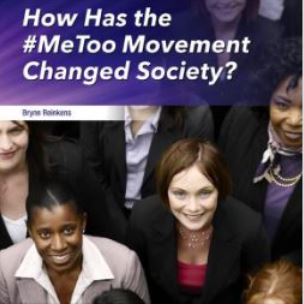
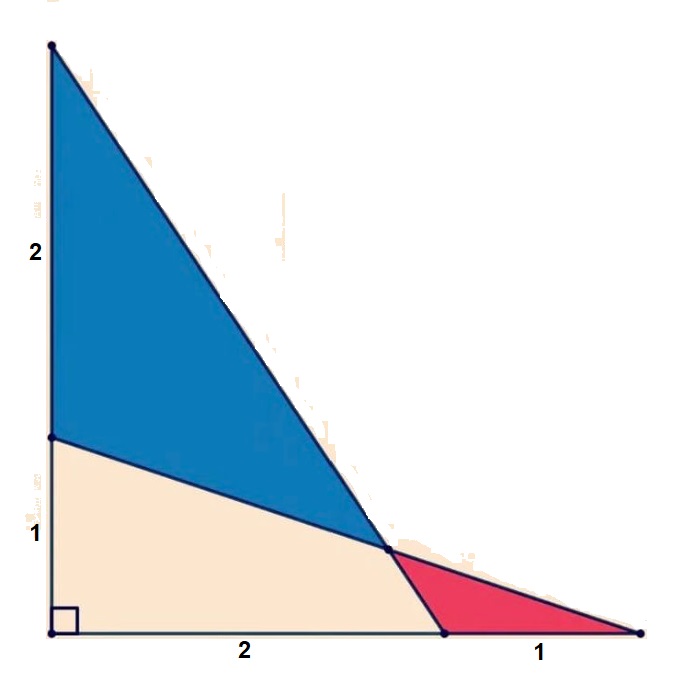

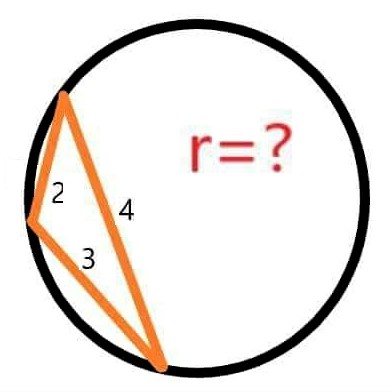 (1) Images of the day: [Top left] Celebrations in Gaza after Oct. 7, 2023 (top), and Sep. 11, 2001 (bottom) (Source: Jerusalem Post). [Top center] Flowers from 3 of my 4 rose bushes: I got to them a bit late, or there would have been many more. [Top right] Brynn Reinkens' How Has the #MeToo Movement Changed Society? (see the last item below). [Bottom left] Math puzzle: In this diagram, find the ratio of the blue area to the red area. [Bottom center & right] Two math puzzles: Find the radius of the circle in each of the two diagrams.
(1) Images of the day: [Top left] Celebrations in Gaza after Oct. 7, 2023 (top), and Sep. 11, 2001 (bottom) (Source: Jerusalem Post). [Top center] Flowers from 3 of my 4 rose bushes: I got to them a bit late, or there would have been many more. [Top right] Brynn Reinkens' How Has the #MeToo Movement Changed Society? (see the last item below). [Bottom left] Math puzzle: In this diagram, find the ratio of the blue area to the red area. [Bottom center & right] Two math puzzles: Find the radius of the circle in each of the two diagrams.
(2) The FBI has its hands full these days: Increased terror threats due to the Hamas-Israeli conflict, hate crimes, domestic extremism, increased industrial spying/espionage, particularly in view of new algorithms and products in the AI domain, with the main culprits being China, Russia, and Iran.
(3) One-liners: Brief news headlines, happenings, memes, and other items of general interest.
- Biden advises Israel not to repeat our 9/11 mistake: Focus on problem areas and don't broaden the conflict.
- Trump co-defendants are being given sweetheart, no-prison deals for pleading guilty: This is sickening!
- When Palestinians talk about Hamas's brutality & corruption, believe them: They risk their lives to speak up.
- An Iranian cabinet member claims that Iran will be sending a ship and multiple planes to Gaza.
- Ultimate flexibility: A robot that flies, walks, skateboards, and slack-lines. [5-minute video]
- Kurdish music: A beautiful song from Iran's Kermanshah region. [1-minute audio file]
(4) Book review: Reinkens, Brynn, How Has the #MeToo Movement Changed Society? ReferencePoint Press, 2021.
[My 5-star review of this book on GoodReads]
Much has happened in the past six years, after the hashtag #MeToo went viral in 2017. For example, in 2019, three former Fox News hosts founded "Lift Our Voices" to prevent businesses from hiding incidents of sexual harassment. They were driven by an unfair mandatory arbitration clause about workplace conflicts that new employees had to sign within a thick stack of papers. So, many sexual harassment cases were settled out of court, with the settlement always including a nondisclosure agreement. Essentially, the law was used to shield sexual abusers.
After an introduction entitled "Breaking the Silence," Reinkens reviews the impact of the #MeToo movement in five chapters:
- Solidarity, Awareness, and Accountability
- An Altered Legal and Political Landscape
- The Business World Adapts
- Ripples in Education
- Toward an Uncertain Future
The end-matter includes much useful info on sources and organizations/websites. The book also includes photos of some of the key players in the movement, along with events, such as marches & demonstrations.
According to Nisha Varia of Human Rights Watch, "The #MeToo movement has exposed deeply entrenched norms that enable abuse, and urgent action is needed to ensure that all workers are guaranteed their safety and dignity."
Whereas #MeToo movement activists are predominantly women, men must resist the temptation to dismiss the problem by asserting that such behavior and the toxic masculinity that causes it do not apply to them. Sexual abuse should be everyone's concern, even if we don't (or think we don't) contribute to the problem.
2023/10/21 (Saturday): Presenting selected news, useful info, and oddities from around the Internet.


 (1) Images of the day: [Left] Tea harvesting near the Caspian Sea, Iran. [Center] Twelve copies of the Persian word "eshgh" ("love"). [Right] USA Through the Lens of Mathematics (see the last item below).
(1) Images of the day: [Left] Tea harvesting near the Caspian Sea, Iran. [Center] Twelve copies of the Persian word "eshgh" ("love"). [Right] USA Through the Lens of Mathematics (see the last item below).
(2) Iran architecture: A quick tour of Azadi (Shahyad) Tower in Tehran. I am sad to say that despite living and working within a mile of this beautiful monument, I never visited the treasures inside.
(3) Excerpts from Firoozeh Dumas' Funny in Farsi have been spotted on Tehran's metro cars: Whether they contain her actual musings or some distorted translation is anyone's guess! [See her post]
(4) One-liners: Brief news headlines, happenings, memes, and other items of general interest.
- Top Hamas leader and his children are millionaires, living in luxury outside Gaza.
- A woman screaming anti-Khamenei slogans in Tabriz, Iran, was arrested and confined to a mental hospital.
- Kevin Chen, winner of the Rubinstein Competition, opened his concert at Carnegie Hall with "Hatikva."
- "Helping Employees Succeed with Generative AI": Harvard Business Review article by UCSB's Paul Leonardi.
(5) Another COVID-19 casualty: Just 48% of adult Americans attended at least one arts event from July 2021 to July 2022. Seems like people are not going back from on-line to in-person attendance. [Source: WaPo]
(6) Book review: Hritonenko, Natali and Yuri Yatasenko, USA Through the Lens of Mathematics, CRC Press, 249 pp., 2022.
[My 4-star review of this book on GoodReads]
After traveling in the US, a country they love, the authors decided to share what they saw and learned in an educational way that would also exhibit the magic and versatility of mathematics.
Important facts and stats about the US are presented in the form of mathematical problems for students to solve in order to both hone their math skills and learn the pertinent facts. The problems are of various levels of difficulty. They are mostly interesting, though some of them seem forced. Each set of problems is followed by answers and complete solutions.
Here's a list of chapter titles:
- The New Nation
- Geography of the United States
- National and State Parks
- The US Highways
- Constructions and Inventions in the United States
- The United States in Arts
- Shopping, Food, and Entertainment in the United States
The seven chapters are followed by three appendices containing algebraic formulas & properties, an index table tying the presented problems to mathematical notions (such as absolute value and circle), and an index table linking the problems to US states.
I present a few example problems to end my review.
- The difference between the fourth powers of the numbers of unpopulated and populated US territories is 5936, while the difference between their squares is 56. How many unpopulated and populated territories does the US have?
- Pennsylvania became the nth state in 1787, where n is the number of all factors of the year. Illinois became the mth state in 1818, where m is the number of all factors of the year if the number of all factors is written in the reverse order. What are the statehood orders of Pennsylvania and Illinois?
- The number of all people who have ever walked on the Moon is the smallest sum of Pythagorean triples, which are consecutive terms of an arithmetic sequence. How many people have walked on the Moon?
- In their paintings, American illustrators and sculptors Frederic S. Remington and Charles Marion Russell show the life of cowboys and American Indians and landscapes of old American West. Remington was born 3 years before Russell but died 17 years earlier. Russell lived 10 years more in the 19th century than in 20th. Who of these great artists lived longer and for how many years? What are years of their birth and death?
- How old was artist Georgia O'Keeffe when she died, if her age can be presented as the product of x and y, which bring the minimum value to the function y = 1887x^2 – 3774x + 1986? Have you noticed anything special about the equation?
2023/10/20 (Friday): Presenting selected news, useful info, and oddities from around the Internet.
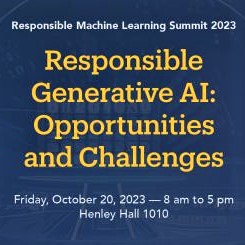

 (1) Images of the day: [Left] Responsible Machine-Learning Summit 2023 (see the last five items below). [Center] Math humor about functions: There are worse things than pizza with pineapple topping. Just saying! [Right] #MahsaAmini, the Kurdish young woman who became a symbol of Iran's #WomanLifeFreedom movement, was awarded EU's Sakharov human rights prize posthumously.
(1) Images of the day: [Left] Responsible Machine-Learning Summit 2023 (see the last five items below). [Center] Math humor about functions: There are worse things than pizza with pineapple topping. Just saying! [Right] #MahsaAmini, the Kurdish young woman who became a symbol of Iran's #WomanLifeFreedom movement, was awarded EU's Sakharov human rights prize posthumously.
(2) Two American hostages have reportedly been released by Hamas: But this is no cause for celebration. Hamas follows Iran's playbook. It commits atrocities, takes hostages, and then scores brownie points for releasing the hostages. The released mother & daughter are just like dozens of similar ones who were brutally killed and, in some cases, raped.
(3) Report from the 2023 Responsible Machine-Learning Summit: Today, I attended the latest installment of the annual day-long summit at UCSB's Henley Hall. The focus was on advances in generative AI and its applications. By 2:45 PM, I got saturated with information, so I did not stay for the event's final panel discussion, which I watched via streaming. However, I did attend in person all four informative keynote talks, about which I will write separately in the four posts that follow.
(4) Keynote 1 at today's Responsible Machine-Learning Summit: "Empowering Instruction-Following Research with Language Models as Simulators" (by Tatsunori Hashimoto, Stanford U.).
Large language models (LLMs) are increasingly closed off, with reasons including protection of trade secrets and safety concerns. Responsible use of LLMs requires understanding, for which we need tools. In Part 1 of the talk, Hashimoto discussed LLMs as emulators of human behavior, with the goal of replacing human feedback in reinforcement learning by LLMs. In Part 2, Hashimoto explored the limits of LLMs as human emulators. The latter discussion included the important question of whose opinions LLMs reflect by default and comparing LLM outputs with the results of opinion polls, where a poor match is observed.
(5) Keynote 2 at today's Responsible Machine-Learning Summit: "Watermarking of LLMs" (Scott Aaronson, U. Texas Austin & Open AI)
Aaronson has spent most of his career on, and is best-known for, quantum computing. He began by showing a scene from a "South Park" episode in which students used ChatGPT to do their homework and teachers used ChatGPT to grade them. The school brings in a guru who tried to detect work done by ChatGPT. Almost any nefarious use of LLMs involves attempts to hide AI's involvement. If only we could make that harder! As the Internet gets filled with LLM-generated data, there is a real danger that such data are fed back to the models, creating a destructive cycle. Watermarking entails the insertion of a statistical signal into LLM-generated text, perhaps in terms of pseudo-random word choices.
(6) Keynote 3 at today's Responsible Machine-Learning Summit: "Robustness of Adversarial Attacks on LLMs" (Eric Wong, U. Penn)
Adversarial attacks, often demonstrated through images and the resulting misclassifications, entail adding imperceptible changes to the input of a machine-learning algorithm to create undesirable behavior at the output. LLMs are built to detect certain queries and to avoid answering them. For example, if you post a question about how to build a bomb, an LLM will answer it with something like "I am sorry, but I cannot assist with that request." The jailbreak method can get around such restrictions by adding text to the query to evade the system's defenses. Jailbreak entails careful engineering of prompts to exploit model biases in order to fool it into generating output that may not align with its intended purpose. Stopping jailbreak attacks is thus an important research problem.
(7) Keynote 4 at today's Responsible Machine-Learning Summit: "Interpreting Deep Neural Networks Through the Lenses of Feature Interaction" (Yan Liu, U. Southern California)
Model interpretability in machine learning (ML) is the degree to which a human can understand the underlying cause of a decision. Stated differently, it is the extent to which we are able to predict what's going to happen, given a change in input or algorithmic parameters. Interpretability helps ML developers debug or improve their systems and allows ML users to trust the correctness and assess the fairness of a decision. Interpretability is somewhat different from explainability and requires a greater knowledge of the workings of the system, rather than offering explanations solely based on input and output. Applications of interpretability include building interpretable AI models, addressing fairness & robustness, and understanding LLMs.
2023/10/19 (Thursday): Presenting selected news, useful info, and oddities from around the Internet.
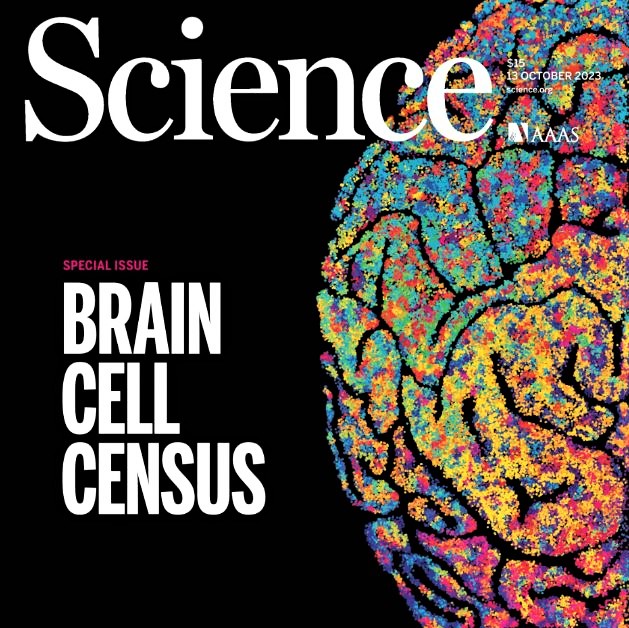

 (1) Images of the day: [Left] Special issue of Science magazine (see the next item below). [Center] Math puzzle: In this diagram with three squares, prove that the two yellow line segments are of the same length. [Right] Islamic Republic of Iran's version of Academy Awards.
(1) Images of the day: [Left] Special issue of Science magazine (see the next item below). [Center] Math puzzle: In this diagram with three squares, prove that the two yellow line segments are of the same length. [Right] Islamic Republic of Iran's version of Academy Awards.
(2) Brain cell census: The human brain contains 86 billion neurons and a similar number of non-neuronal cells. NIH's BRAIN (Brain Research through Advancing Innovative Neurotechnologies) initiative works with centers in the US & Europe to characterize cell types and their functions in human, nonhuman-primate, and rodent brains. [Source: Science magazine, special issue of October 13, 2023]
(3) Iran's water crisis: An extended drought and mismanagement of water resources has reduced the quality of life in many regions and has led to decreased crop yields and the attendant food deficiencies.
(4) One-liners: Brief news headlines, happenings, memes, and other items of general interest.
- President Biden argues for assistance to Israel & Ukraine to help our allies' defense against brutal enemies.
- The FBI & other agencies have increased their alert levels in anticipation of violence against Jews & Muslims.
- War: Student groups on college campuses are up in arms & administrations are under pressure to take sides.
- NASA sends a spacecraft to orbit & study an asteroid, which may be between 30% and 60% metal.
(5) Quote of the day: "Patience isn't sitting and waiting, it's foreseeing. It's looking at the thorn and seeing the rose, looking at the night and seeing the day." ~ Mowlavi (Rumi)
(6) Fun fact of the day: Scheduled flight time between Los Angeles and New York has become about 30 minutes longer compared with 50 years ago. Nearly every other part of the trip also takes longer today compared with the 1970s, thanks to road traffic and airport security. [Source: New York Times]
(7) Pitfalls of interdisciplinary work: "I was attending a conference about contemporary art, and right before my talk a distinguished scholar approached me. As a small conversation group formed around us, I introduced myself as a psychology PhD student who would be presenting research on how the brain reacts to art. Silence descended, and all eyes were on me. ... Suddenly, the room felt intimidating. Only later did I learn how to stand up for myself and be proud of my status as an interdisciplinary researcher." [Opinion, in Science]
(8) "Neural Inference at the Frontier of Energy, Space, and Time": This is the title of a research article in the October 20 issue of Science magazine, which describes NorthPole, a new brain-inspired computer chip. "As seen from the inside of the chip, at the level of individual cores, NorthPole appears as memory near compute; as seen from the outside of the chip, at the level of input-output, it appears as an active memory. NorthPole is an architectural innovation at the intersection of brain-inspired computing and semiconductor technology, which defines a frontier that promises to expand."
2023/10/18 (Wednesday): Presenting selected news, useful info, and oddities from around the Internet.




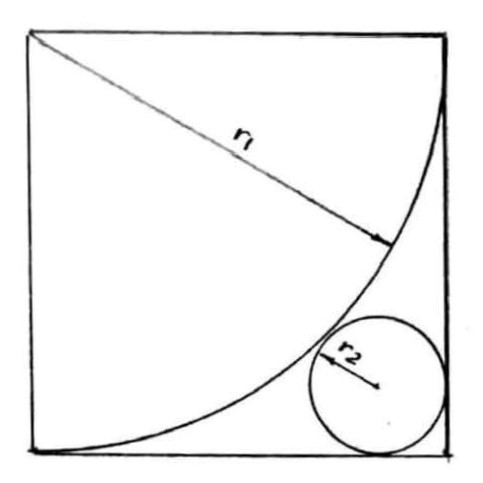
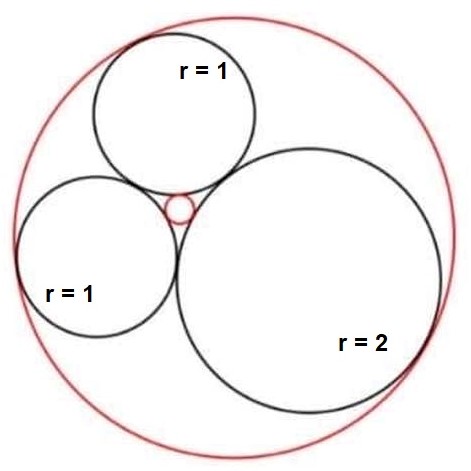 (1) Images of the day: [Top left] Saturday's family gathering in Ventura, California, featured a delicious barbecue meal and other yummy foods and desserts. [Top center] Shattered peace hopes and Mariachi Las Olas de Santa Barbara, who provided much-needed relief from non-stop bad news from around the world in today's noon concert at UCSB's Music Bowl (Video 1; Video 2; Video 3; Video 4; Video 5). [Top right] IEEE Central Coast Section tech talk (see the last item below). [Bottom left] Math puzzle: In this diagram with a square and a quarter-circle, what is the measure of the angle x? [Bottom center] Math puzzle: In this diagram, the larger circle has radius 3 + 2 sqrt(2). Find the radius of the smaller circle. [Bottom right] Math puzzle: Three circles with radii 1, 1, and 2 are external tangents. What are the radii of the smallest and the biggest circles shown?
(1) Images of the day: [Top left] Saturday's family gathering in Ventura, California, featured a delicious barbecue meal and other yummy foods and desserts. [Top center] Shattered peace hopes and Mariachi Las Olas de Santa Barbara, who provided much-needed relief from non-stop bad news from around the world in today's noon concert at UCSB's Music Bowl (Video 1; Video 2; Video 3; Video 4; Video 5). [Top right] IEEE Central Coast Section tech talk (see the last item below). [Bottom left] Math puzzle: In this diagram with a square and a quarter-circle, what is the measure of the angle x? [Bottom center] Math puzzle: In this diagram, the larger circle has radius 3 + 2 sqrt(2). Find the radius of the smaller circle. [Bottom right] Math puzzle: Three circles with radii 1, 1, and 2 are external tangents. What are the radii of the smallest and the biggest circles shown?
(2) A letter from the late Dariush Mehrjui: Previously unpublished anti-regime writings of the slain Iranian director indicate that his and his wife's brutal murders were likely state-sponsored. [Letter image]
(3) It is becoming clear that the explosion killing hundreds at a Gaza hospital was caused by a malfunctioning Islamic Jihad rocket: The rocket fell on a hospital parking lot, where many refugees from other parts of Gaza had taken shelter. Its nearly-full fuel tank contributed to the horrific destruction.
(4) Richard Auhll [1941-2023]: A local entrepreneur and philanthropist, who generously supported UCSB and its College of Engineering, has departed following paralysis and COVID.
(5) Tonight's IEEE Central Coast Section tech talk: Nicholas Hogasten (Teledyne FLIR) was to speak under the title "Video Signal Processing for Thermal Imaging Applications." Due to the speaker not showing up, Wayne Rothermich, who has retired from Seymour Duncan, gave an impromptu talk about guitar pick-ups, vis., electronic devices that convert string vibrations to electric currents that are supplied to amplifiers.
There are many different kinds of guitar pick-ups, which differ in sound quality and other audio parameters. With metal strings, magnets are used to pick up the vibrations. In the case of acoustic guitars featuring non-metal strings, other methods, such as those based on piezoelectric properties, are used. A guitar may be outfitted with multiple pick-ups, which would allow the player to switch between them or use a combination of their outputs.
Master guitar players may order custom pick-ups according to their personal preferences. They bring their ideas to special technical advisers who translate them to appropriate pick-up designs. These custom orders usually cost several times the typical ~$100 mass-produced pick-up models.
Overall, this was a highly-informative impromptu talk. IEEE CCS has been experimenting with WebEx streaming of its technical talks for the benefit of those who cannot attend in person. I was a beneficiary of this option tonight. The sound quality was quite good after the talk began, but Images were fuzzy at times.
[Seymour Duncan Web site]
[Seymour Duncan post about Wayne Rothermich]
2023/10/16 (Monday): Presenting selected news, useful info, and oddities from around the Internet.
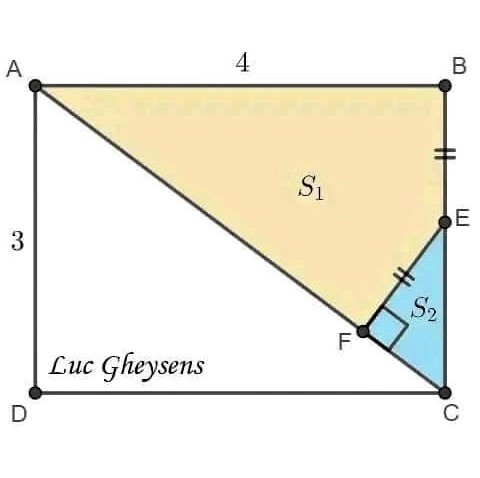

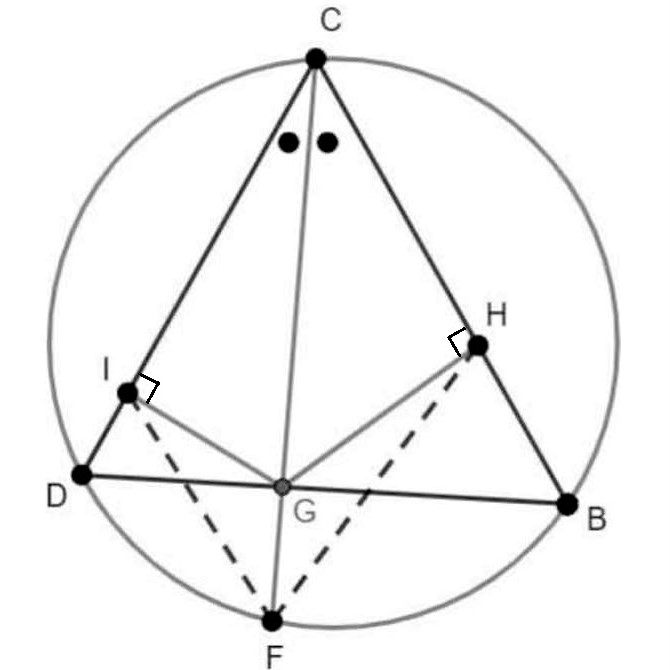
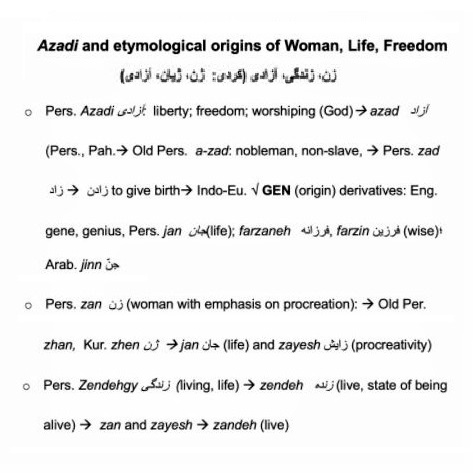

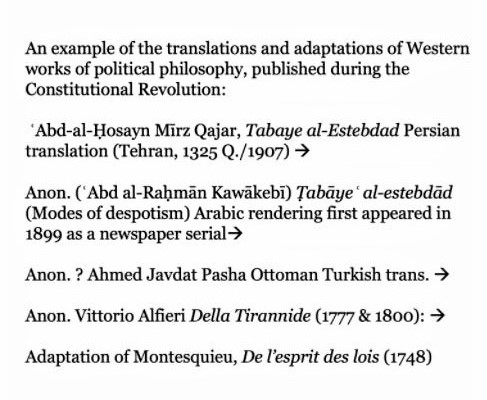 (1) Images of the day: [Top left] Math puzzle: A rectangular area is divided up as shown. Find the ratio of the yellow area to the blue area. [Top center] Middle East's next generation will hopefully overcome dogma and live in peace and harmony. [Top right] Math puzzle: Prove that the area of the triangle BCD equals the area of the quadrangle FHCI. [Bottom row] Saturday's Farhang Foundation webinar (see the last item below).
(1) Images of the day: [Top left] Math puzzle: A rectangular area is divided up as shown. Find the ratio of the yellow area to the blue area. [Top center] Middle East's next generation will hopefully overcome dogma and live in peace and harmony. [Top right] Math puzzle: Prove that the area of the triangle BCD equals the area of the quadrangle FHCI. [Bottom row] Saturday's Farhang Foundation webinar (see the last item below).
(2) Farhang Foundation's tribute to Dariush Mehrjui [1939-2023], a prominent Iranian filmmaker who was brutally murdered on October 14, 2023, along with his wife Vahideh Mohammadifar, in their home near Tehran.
(3) Web of lies and brutality: A brave Iranian young woman talks about the mullahs' lies, their killing/maiming of Iranians, and their celebration of beheadings & other heinous acts against the Israelis. [2-minute video]
(4) One-liners: Brief news headlines, happenings, memes, and other items of general interest.
- The 10/14 solar eclipse was underwhelming in SoCal, but not in regions where they saw the "ring of fire."
- Famous film director and his wife found stabbed to death in their home in Iran. [Meme]
- Six-year-old boy killed in suburban Chicago in a suspected anti-Muslim hate crime.
- Bit-flip due to cosmic radiation: The fascinating story of how a Belgian candidate got 4096 extra votes.
- The woman who taught herself about hardware by building crazy, useless gadgets. [3-minute video]
- Facebook memory from Oct. 15, 2013: Happiness is a state of mind that has little to do with material wealth.
(5) Columbia University's Professor Joseph Massad is absolutely elated at the "astounding," "striking," "awesome," and "innovative" "victories of the resistance" in the recent Hamas terror attack on Israel.
(6) "Searching for Azadi: A History of Unfulfilled Hopes": This was the title of today's Farhang Foundation webinar featuring Dr. Abbas Amanat (Yale University). [Recording of the talk]
Dr. Amanat aimed to expose the roots of the concept of "azadi" ("liberty") in Persian. Since the beginning of the 20th century, in connection with the Constitutional Revolution, Iranians have sought azadi, but certain reactionary forces prevented the dream's realization. The process repeated after the 1979 Revolution, when forces of absolutism and intolerance crushed the people's hopes for azadi. One can say that in both instances cited above, the institutions of monarchy and religion contributed to the demise of azadi, with oil wealth (an instrument the state power) being an important additional factor.
During Dr. Amanat's presentation, segments of the following two songs, performed by Mohammad-Reza Shajarian (lyrics by Hushang Ebtehaj) were played.
- "Sepideh," a song about the dawn of liberty, performed and released shortly after the 1979 Revolution.
- "Oh the Joy of Liberty" ("Ey Shadi-ye Azadi"), written in the early 1980s but performed decades later.
Dr. Amanat then reviewed the linguistic origins of the words "woman," "life," and "freedom/liberty." Unlike European languages, the Persian word for "woman" is not a derivative of the word for "man" but is based on "life" and "regeneration." Religion places bounds on azadi, many of them associated with the notion of "namus" ("honor," often applied in the context of the subjugation of women). Religion is thus fundamentally at odds with the notion of liberty.
In the final segment of his talk, Dr. Amanat reviewed the notion of liberty in European sources on political philosophy ("Liberty, Equality, Fraternity") and its adaptation by Iranians active in the Constitutional movement of the early 1900s.
2023/10/15 (Sunday): Today, I offer three book reviews on Persian poetry, tyranny, and a prairie memoir.
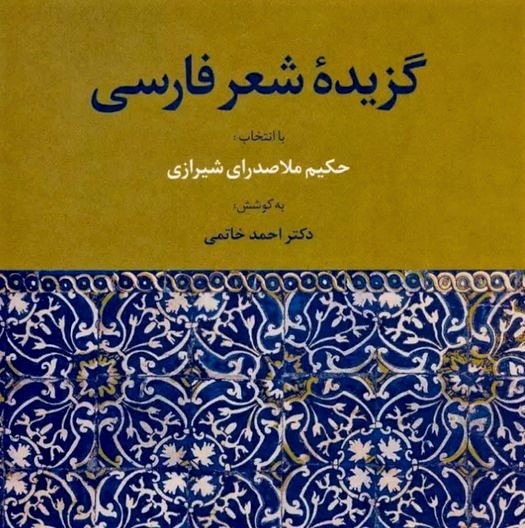
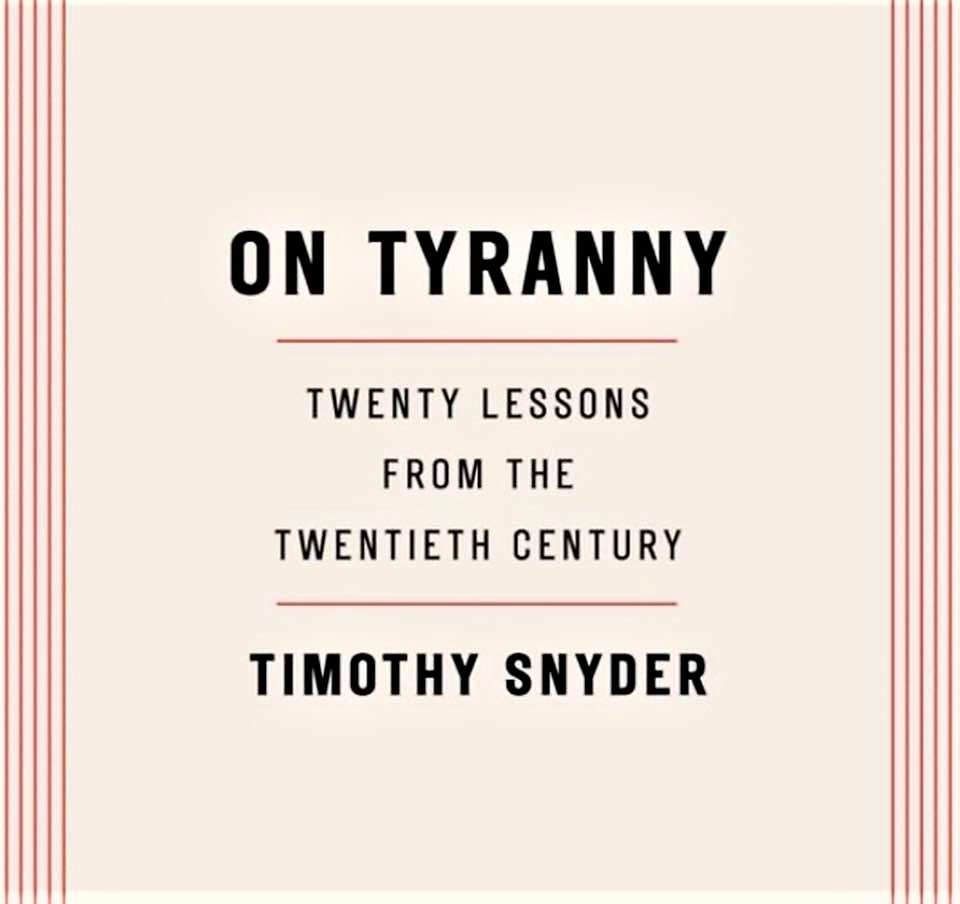
 (1) Book review: Book review: Khatami, Ahmad (ed.), Gozideh-ye She'r-e Farsi (Collection of Persian Poems, Selected by Molla Sadra-ye Shirazi), Elm Publications, 349 pp., 2020. ISBN: 978-9642248629
(1) Book review: Book review: Khatami, Ahmad (ed.), Gozideh-ye She'r-e Farsi (Collection of Persian Poems, Selected by Molla Sadra-ye Shirazi), Elm Publications, 349 pp., 2020. ISBN: 978-9642248629
[My 3-star review of this book on GoodReads]
This book contains samples of Persian poetry that for various reasons grabbed the attention of Molla Sadra, a 16th/17th-century Iranian philosopher with broad interests in literature. The selections are presented in rough chronological order, from the 9th century to the 16th century. The works of some four-dozen poets are sampled. At 77 and 64 pages, respectively, Attar and Khayyam are most-prominent in the book.
(2) Book review: Snyder, Timothy, On Tyranny: Twenty Lessons from the Twentieth Century, unabridged 2-hour audiobook, read by the author, Random House Audio, 2017.
[My 4-star review of this book on GoodReads]
In this brief book, historian Timothy Snyder provides a guide on how to resist and survive in the climate of authoritarianism that afflicts America. Here are three of the most-important takeaways:
- Dodge political agendas by avoiding the news and reading more books.
- Nurture the community around you by demolishing social barriers.
- Be aware of the ways social media and cyberspace limit your freedoms.
Other lessons include not obeying without thinking, defending institutions, honoring professional ethics, standing out, using language kindly, believing in the primacy of truth, developing an investigative attitude, contributing to worthy causes, learning from peers in other countries, watching out for dangerous words, and striving to act courageously.
In a historical introduction, Snyder tells us that democracy in Europe shone and then faltered at three junctions, in circumstances that resembled the current situation in America.
- After World War I (1918)
- After World War II (1945)
- After the fall of communism (1989)
That authoritarianism could develop in America came as a surprise to many of us. The defeat of fascism, Nazism, and communism gave us a false sense of security and a belief in the inevitability of more democracy and more reason. Unfortunately, the course we saw as inevitable was anything but. We do have the will and the institutions to help us ride out the current authoritarian threats, but we must take this book's lessons to heart and stay super-vigilant.
(3) Book review: Brokaw, Tom, Never Give Up: A Prairie Family Story, unabridged 3-hour audiobook, read by Lincoln Hoppe, Random House Audio, 2023.
[My 4-star review of this book on GoodReads]
The author, Thomas John Brokaw [1940-], served for decades as a respected journalist and TV anchor. As an author, he is known for The Greatest Generation, an instant classic and a best-seller that shaped our knowledge and attitudes toward World War II. His latest book is a memoir, that is short on pages but long on substance.
Brokaw was born in South Dakota to Anthony Orville Brokaw (nicknamed "Red" for his fiery hair), a construction foreman, and Eugenia "Jean" Conley, who worked in sales and as a post-office clerk. Dropping out of second grade, Red constantly struggled to make ends meet, moving the family to wherever he could find work. The Brokaw House Hotel, where Tom's grandparents set up shop and started a long life in the state, was popular with railroad men and traveling salesmen. One tenant, an immigrant from Sweden, stayed for 50 years.
This book is an homage to the resilience, resourcefulness, and can-do attitudes of Tom's parents, who never gave up. His parents' sacrifices and sacrifices of their contemporaries, who persevered in the face of hardships, scarce resources, the Great Depression, and World War II, are indeed worth celebrating.
2023/10/14 (Saturday): Presenting selected news, useful info, and oddities from around the Internet.
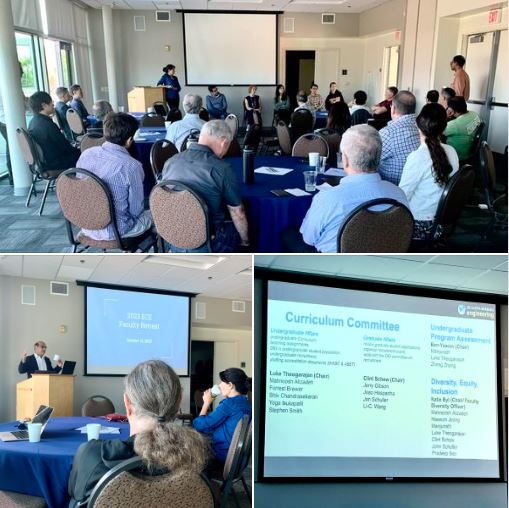
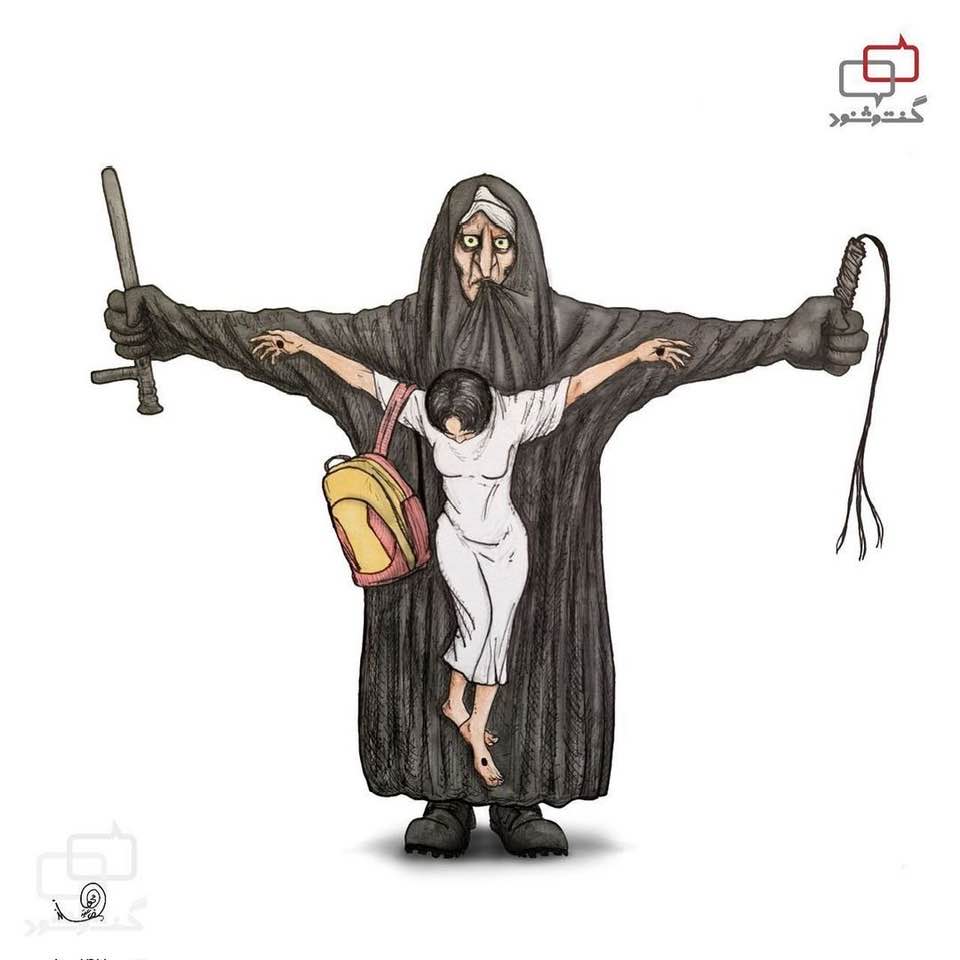
 (1) Images of the day: [Left] Departmental retreat (see the next item below). [Top center] Cartoon of the day: Hijab enforcers in Iran and their latest victim, 16-year-old #ArmitaGravand. [Top right] Katie Porter's I Swear: Politics Is Messier than My Minivan (see the last item below).
(1) Images of the day: [Left] Departmental retreat (see the next item below). [Top center] Cartoon of the day: Hijab enforcers in Iran and their latest victim, 16-year-old #ArmitaGravand. [Top right] Katie Porter's I Swear: Politics Is Messier than My Minivan (see the last item below).
(2) Friday's UCSB ECE Department Retreat: Held at the Mosher Alumni House on campus, the retreat began with comments by the newly-appointed Dean of Engineering, Umesh Mishra, and continued with introduction of new faculty (Gian Yu, Niels Volkmann), a panel during which junior faculty shared their activities and visions (Nina Miolane, Kerem Camsari, Haewon Jeong, Bongjin Kim, Yao Qin), discussion of our degree programs and curricula, overview of research & strategic plans, and closing remarks by Department Chair B. S. Manjunath.
(3) From the horse's mouth: Senior Hamas official states that they have been secretly planning the terrorist attacks for two years, that Russia sympathizes with them, and that the return of hostages requires the release of all Hamas prisoners, including those in Western countries.
(4) Don't blame the victims: There are reports that Egypt and/or CIA had warned Israel about a Hamas attack. I wish people who spend time commenting on whether Israel knew about the attacks would look at videos of Hamas atrocities (mowing down people with machine guns, beheadings, massacring & abducting children, and setting people on fire & watching them die) and comment on how those acts serve the cause of Palestinian liberation. This reminds me of some MAGA Republicans in the US who blame Nancy Pelosi for failing to protect the Capitol Building from the Trump mob.
(5) Book review: Porter, Katie, I Swear: Politics Is Messier than My Minivan, unabridged 9-hour audiobook, read by the author, Random House Audio, 2023.
[My 4-star review of this book on GoodReads]
US Representative Katherine Moore Porter [1974-] is the first Democrat to represent California's southcentral Orange County. She represented California's 45th District from 2019 and was re-elected in 2022 to the newly-defined 47th District. She is now running to fill Diane Feinstein's Senate seat. Known for her trademark portable white board, which she uses to flash numbers & charts during hearings, Porter was trained as a lawyer at Yale & Harvard, later teaching law at UNLV, U. Iowa, and UC Irvine.
Her textbook, Modern Consumer Law, and a stint as California's independent monitor of banks in a $25 billion nationwide mortgage settlement make her imminently qualified to chip in whenever consumer interests and protections are discussed. Furthermore, as a single mother of 3 children, from an abusive marriage, she has first-hand experience of consumer challenges to supplement her academic chops. She openly discusses being dismissed as a woman and fat-shamed by political opponents and ordinary people.
This memoir is a chronological account of Porter's life and career. The writing is rather uneven, some parts registering with the reader, while others getting bogged down in too many inessential details. Still, the book has my highest recommendation as the unlikely story of a single, progressive mom elected to represent a conservative, prosperous district (median household income of ~75K, vs. $31K for the US as a whole; median home prices of ~$619K, vs. $410K for the US).
One problem with the US Congress is that almost all of its members are independently wealthy. It's one thing to talk about the plight of the working class and quite another to have experienced those challenges. Being a Congressperson costs you a lot of money, which includes maintaining two residences, buying appropriate outfits, and so on.
Porter dispenses much advice, but does not take herself very seriously. She writes with a good sense of humor, joking that "the computer made a mistake" is the corporate version of "the dog ate my homework."
Katie Porter has already established herself as a force to be reckoned with and a worthy next-generation replacement for Elizabeth Warren (one of her role models) and Bernie Sanders. Corporate execs are known to undergo special preparations for her kind of questioning. I hope she doesn't lose her edge, as she climbs the political ladder and becomes a California Senator. We need someone (hopefully more than one, but even one is better than none) who can keep corporate execs' feet to the fire and who doesn't let them get away with word salads and rehearsed lines of doublespeak.
2023/10/13 (Friday): Presenting selected news, useful info, and oddities from around the Internet.


 (1) Images of the day: [Left] Today is Friday the 13th (see the last item below). [Center] Throwback Thursday: Eighty years ago, the US Supreme Court ruled that forced patriotic rituals are unconstitutional. "If there is any fixed star in our constitutional constellation, it is that no official, high or petty, can prescribe what shall be orthodox in politics, nationalism, religion, or other matters of opinion or force citizens to confess by word or act their faith therein." [Right] Another murder by Iranian mullahs: #ArmitaGravand, who went into a coma after being roughed up by hijab enforcers, has been declared brain-dead. RIP, brave daughter of Iran!
(1) Images of the day: [Left] Today is Friday the 13th (see the last item below). [Center] Throwback Thursday: Eighty years ago, the US Supreme Court ruled that forced patriotic rituals are unconstitutional. "If there is any fixed star in our constitutional constellation, it is that no official, high or petty, can prescribe what shall be orthodox in politics, nationalism, religion, or other matters of opinion or force citizens to confess by word or act their faith therein." [Right] Another murder by Iranian mullahs: #ArmitaGravand, who went into a coma after being roughed up by hijab enforcers, has been declared brain-dead. RIP, brave daughter of Iran!
(2) Heroes who saved lives: This Israeli couple managed to hide their 10-month-old twins in a shelter before confronting, and getting killed by, Hamas terrorists. The twins were found and saved after 14 hours.
(3) Israel's border-wall border-wall miscalculation: Inexplicably, Israel thought that a Gaza fence would protect it. The billion-dollar project was completed in 2019 and was inaugurated with much fanfare. It turned out to provide little protection against determined terrorists.
(4) One-liners: Brief news headlines, happenings, memes, and other items of general interest.
- The US and Qatar block Iran's access to $6 billion from prisoner swap deal for its support of Hamas.
- Overcoming regulators' objections, Microsoft closes $69 billion deal to acquire the gaming giant Activision.
- Facebook memory from Oct. 12, 2018: Apt reminder about why Americans MUST vote in 2024.
- Facebook memory from Oct. 12, 2017: German soldiers cut off the beard of an old Jewish man.
- Facebook memory from Oct. 13, 2017: Without science, it's just fiction.
- Facebook memory from Oct. 13, 2016: US federal budget explained in comparison with a household budget.
(5) For those who have not heard Nobel Peace Laureate Narges Mohammadi speak: A 2021 conversation with her about human rights in Iran, particularly her view of solitary confinement as torture. Mohammadi is the author of White Torture: Interviews with Iranian Women Prisoners, a 2022 book that is on my to-read list.
(6) Here is a repost from Friday, May 13, 2011: Friday the 13th isn't just a harmless superstition; it has led to some interesting mathematical problems and to serious economic losses. Please read on.
- The number 13 is considered unlucky, in part because 12 is deemed a lucky or complete number: 12 is the number of months, zodiac signs, hours on the clock face, Apostles, gods of Olympus, tribes of Israel, and so on.
- According to mathematical analysis by B. H. Brown, the 13th of the month is slightly more likely to fall on a Friday than on any other day. Sunday and Wednesday are also a bit more likely to be the 13th.
- Friday the 13th occurs at least once and at most 3 times a year. Any month that begins on a Sunday has a Friday the 13th.
- On average, there is a Friday the 13th once every 212.35 days, which amounts to about 1.72 per year.
- Fear of Friday the 13th is known as friggatriskaidekaphobia, Frigga being the Norse goddess associated with Friday. Nearly 20 million people in the US are affected by this fear, causing $1 billion in lost business.
2023/10/11 (Wednesday): Presenting selected news, useful info, and oddities from around the Internet.
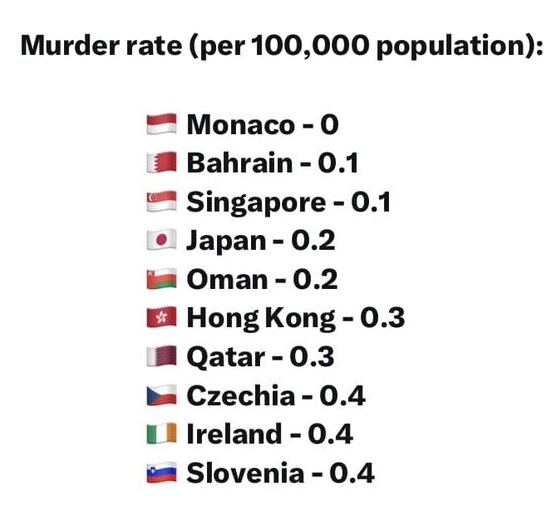

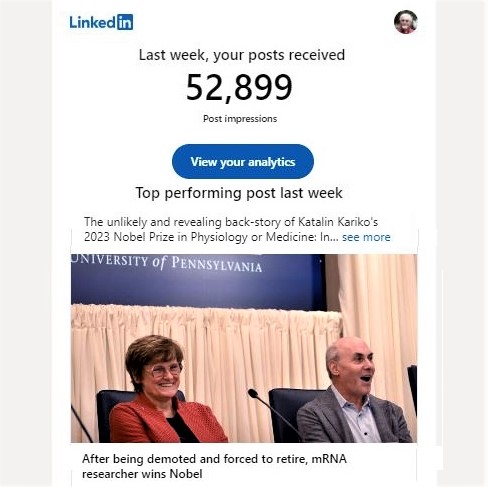

 (1) Images of the day: [Top left] Top-10 countries with the lowest per-capita murder rates: At 6.8, the US is way down the list, below countries such as Egypt, Syria, Iran, Turkey, Pakistan, and Afghanistan. [Top center] My daughter's sesame beef dish, with my Persian Shirazi salad. [Top right] My recent posts on LinkedIn have been well-received: One described a noteworthy case of brain drain from Iran and another was about an academic demotion given to a scientist who went on to win a Nobel Prize. [Bottom left] NYT photos of atrocities committed by Hamas terrorists in southern Israel (see the last item below). [Bottom right] Happy International Day of the Girl: A global observance dedicated to recognizing and empowering girls around the world, serving as a poignant reminder of the unique challenges and barriers girls face in various societies and the urgent need to break down these barriers for their well-being and development.
(1) Images of the day: [Top left] Top-10 countries with the lowest per-capita murder rates: At 6.8, the US is way down the list, below countries such as Egypt, Syria, Iran, Turkey, Pakistan, and Afghanistan. [Top center] My daughter's sesame beef dish, with my Persian Shirazi salad. [Top right] My recent posts on LinkedIn have been well-received: One described a noteworthy case of brain drain from Iran and another was about an academic demotion given to a scientist who went on to win a Nobel Prize. [Bottom left] NYT photos of atrocities committed by Hamas terrorists in southern Israel (see the last item below). [Bottom right] Happy International Day of the Girl: A global observance dedicated to recognizing and empowering girls around the world, serving as a poignant reminder of the unique challenges and barriers girls face in various societies and the urgent need to break down these barriers for their well-being and development.
(2) World Music Series noon concert at UCSB's Music Bowl: Performance by Los Catanes del Norte provided a much-needed break from the barrage of bad news in recent days. [Photo] [Video 1] [Video 2] [Video 3]
(3) Hamas has done Putin, the Iranian mullahs, and the Taliban a big favor: Its murderous terrorist attack on Israel has made the world forget the atrocities in Ukraine, the winning of a Nobel Peace Prize by an Iranian political prisoner, and the death of 2500+ people in Afghanistan earthquakes.
(4) One-liners: Brief news headlines, happenings, memes, and other items of general interest.
- According to multiple reports, military equipment given to Ukraine have somehow found their way to Hamas.
- Some of the Israeli children kidnapped by Hamas terrorists. [1-minute slide show]
- Facebook memory from Oct. 10, 2021: Yesterday was World Day Against the Death Penalty.
- Facebook memory from Oct. 11, 2019: Kurdish women fighters in northeastern Syria.
(5) Daily update from Israeli Defense Forces: New death toll of Israeli civilians is 1200, as dead bodies continue to be discovered at the Hamas attack sites. [12-minute video]
(6) The hostage-taking industry in the Middle East: It all started in late 1979, with Khomeini's followers taking 66 Americans hostage at the US Embassy in Tehran. Not having paid a price for that blatant act, except for facing half-baked sanctions that were easily circumvented by the regime cronies and international middle-men, they upped the ante and became more brazen in taking hostages and demanding exorbitant sums of money for their release. Hamas, Hezbollah, and other Iranian regime puppets use the same playbook. They typically exchange one hostage for dozens of captured terrorists.
(7) Many pro-Hamas rallies around the world are or turn anti-Semitic: In New York City, some attendees praised Hamas terrorists infiltrating Israel on power paragliders and machine-gunning "hipsters." In Sydney, Australia, a dominant chant was "Gas the Jews."
(8) Puzzle of the day: Iranian mullahs openly support Hamas and celebrate their "victory." And Hamas thanks the Islamic Republic, without whose financial and military help they could not have pulled off their biggest terrorist attack. But the US maintains that Iran had no direct role in the recent conflict.
(9) Some people have apparently woken up from a deep slumber and are pointing to civilian deaths in Gaza Strip: They seem to have no memory of the terrorists who slaughtered, raped, and kidnapped 900 civilians, as they live-streamed their deeds, provoking Israel's attacks on Hamas headquarters and ammunition depots.
2023/10/10 (Tuesday): Today, I offer three book reviews on inventions, numbers, and physics.
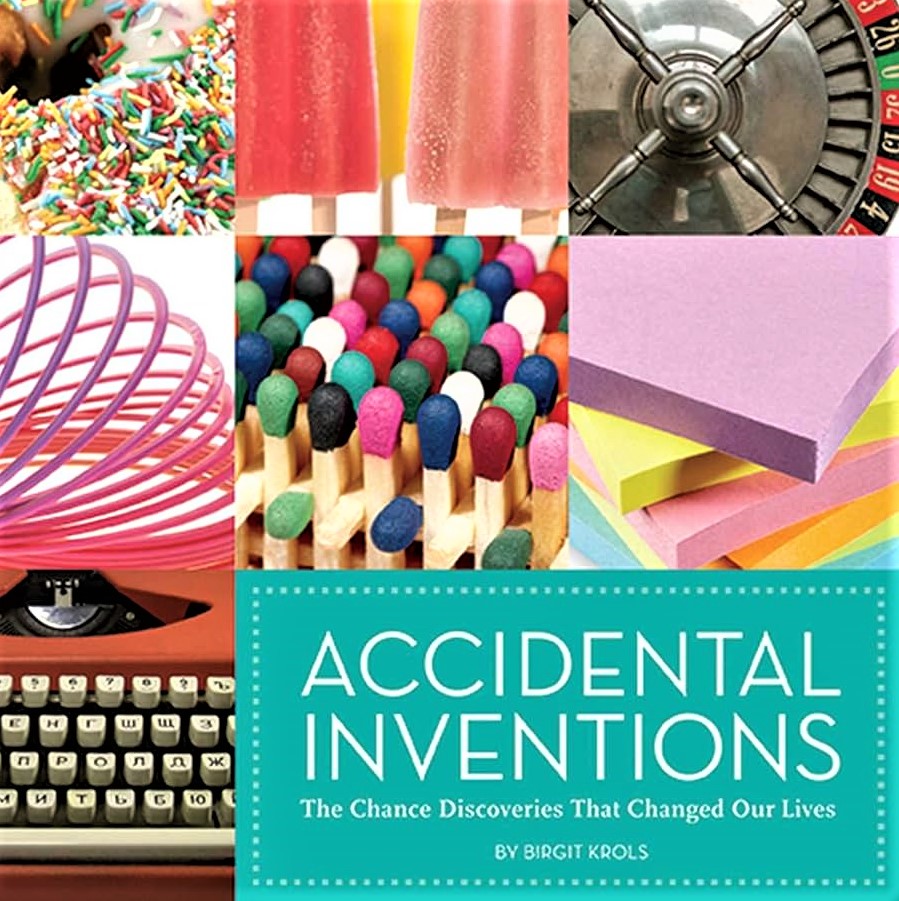
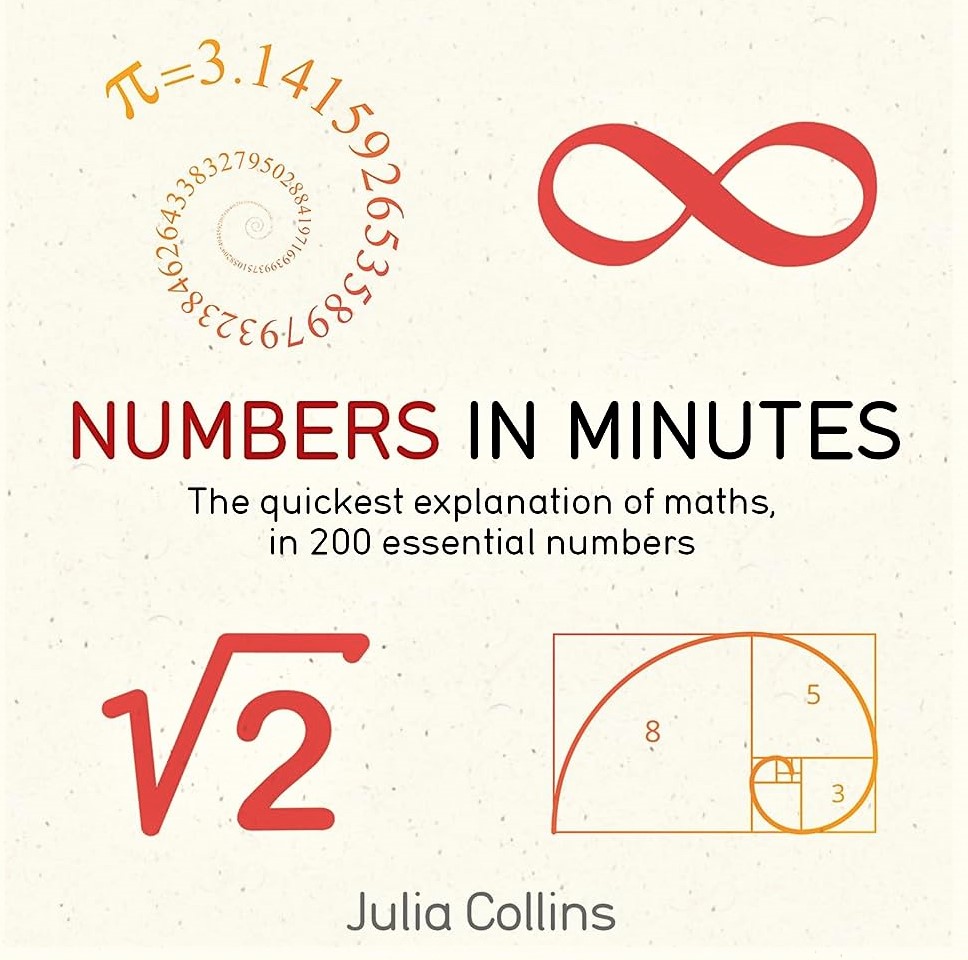
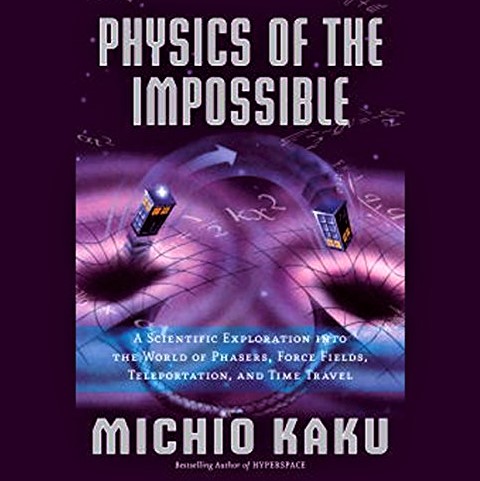 (1) Book review: Krols, Birgit, Accidental Inventions: The Chance Discoveries that Changed Our Lives, Insight Editions, 2009.
[My 4-star review of this book on GoodReads]
(1) Book review: Krols, Birgit, Accidental Inventions: The Chance Discoveries that Changed Our Lives, Insight Editions, 2009.
[My 4-star review of this book on GoodReads]
This illustrated book, with lots of images and brief half-page descriptions, is an easy read and a delight. It teaches us that many of the most-useful items in our daily lives were invented accidentally. Errors and accidents play key roles in science and technology. In other words, "oops" may be just as important for discoveries as "aha." According to Mark Twain, "Accident is the name of the greatest of all inventions." Sci-fi writer Isaac Asimov tells us that "The most exciting phrase to hear in science, the one that heralds new discoveries, is not 'eureka!' but 'that's funny'."
Krols groups the inventions she discusses into five categories. Category titles and examples follow.
- Entertainment: Silly Putty; Play-Doh; Fireworks; Slinky; Roulette
- Food & Drinks: Artificial Sweeteners; Peanut Butter; Cheese; Tea
- Medicine: X-Rays; Penicillin; Viagra; Band-Aids; Rubber Gloves
- Everyday Life: Superglue; Post-Its; Kleenex; Velcro; Stainless Steel
- Substances: TNT; Radioactive Material; Synthetic Dyes; Dynamite
(2) Book review: Collins, Julia, Numbers in Minutes: The Quickest Explanation of Maths in 200 Essential Numbers, Quercus, 2019.
[My 5-star review of this book on GoodReads]
Let me begin with an aside. In my Web search to learn more about the author, I discovered Julia C. Collins [1842-1865], an essayist and schoolteacher, whose The Curse of Caste was among the first novels published by African-American women. Among the many other Julia Collins search hits is the esteemed author of the book under review who earned a doctorate in 4D knot theory from U. Edinburgh and proceeded to become Outreach Officer at the Australian Mathematical Sciences Institute. Among other activities, she is passionate about encouraging girls and young women to participate in maths.
Collins presents numbers in three sections, sandwiched between a short introduction and a glossary.
- Whole Numbers (pp. 8-255)
- Decimals and Fractions (pp. 256-387)
- Negatives, Non-Real Numbers and Infinities (pp. 388-407)
The book is printed in 5"-by-5" pocket size. To give you a taste of the 200 numbers in this book, let me present a couple of examples from the first section and one example each from the other two sections.
The number 40: There are forty possible 2-digit endings for a prime number; the 60 endings of the form xy, with y equaling 5 or an even digit, are easily ruled out. Among the first 10,000 primes, 57 is the most-frequent ending. After the first billion primes, 47 takes over.
The number 561: The smallest Carmichael number (numbers that look prime through the lens of a common primality testing known as Fermat's Little Theorem) has factors 3, 11, and 17.
The number 0.7405: A 16th-century explorer wondered whether he was stacking the cannonballs most efficiently, so he asked around and the question found its way to Johannes Keppler. Although everyone agreed that stacking in layers, the way oranges are stacked at a fruit stand, is most-efficient, it took mathematicians ~400 years to prove what became known as Keppler Conjecture.
The number –1/12: There are many proofs that that the Ramanujan Sum 1 + 2 + 3 + 4 + 5 + 6 + ... equals –1/12, which is a doubly-absurd result for its finiteness and negative sign. A notebook of the Indian mathematician Srinivasa Ramanujan contains the "proof" shown below. With today's rigorous mathematics, we know that we cannot add multiples of infinite sums together, without running into potential contradictions.
c = 1 + 2 + 3 + 4 + 5 + 6 + ...
4c = 4 + 8 + 12 + ...
c – 4c = –3c = 1 – 2 + 3 – 4 + 5 – 6 + ... = 1/(1 + 1)^2 = 1/4
c = –1/12
(3) Book review: Kaku, Michio, Physics of the Impossible: A Scientific Exploration into the World of Phasers, Force Fields, Teleportation, and Time Travel, Anchor Books, 2009.
[My 3-star review of this book on GoodReads]
The idea of exploring the physics of phenomena at the boundary of impossibility (at least with our current state of knowledge) is fascinating. Kaku tackles a number of such phenomena in three parts.
Class-I impossibilities, the longest of the three parts (10 chapters, 194 pp.), discusses force fields, invisibility, phasers & death stars, teleportation, telepathy, psychokinesis, robots, extraterrestrials & UFOs, starships, and antimatter & anti-universe. These are all interesting and appropriate subjects, except that, in my view, robots do not belong here. Certain aspects of robotics, such as sentience or emotive behavior could be included, but "robots" in unqualified form conjures an old technology, rather than an envelope-pushing area of study.
Class-II impossibilities (3 chapters, 59 pp.) include faster than light, time travel, and parallel universes.
Class-III impossibilities (2 chapters, 29 pp.) encompass perpetual-motion machines and pre-cognition.
A 19-page epilogue, entitled "The Future of Impossible," concludes the book.
Kaku states that "impossible" is often relative. At one point in time, people expressed skepticism that dinosaurs dominated the Earth for millions of years, before suddenly vanishing. The reasons for this disappearance might have formed fertile grounds for sci-fi, before some of the theories turned into actual "sci." Similarly, the problems discussed in this book fall somewhere between "sci" and "sci-fi," with class-I impossibilities situated closer to the "sci" end.
I was very surprised and disappointed by the book's total lack of diagrams or other graphical aids. Writing anything about science & technology without using diagrams/charts/photos is utterly absurd.
2023/10/09 (Monday): Presenting selected news, useful info, and oddities from around the Internet.
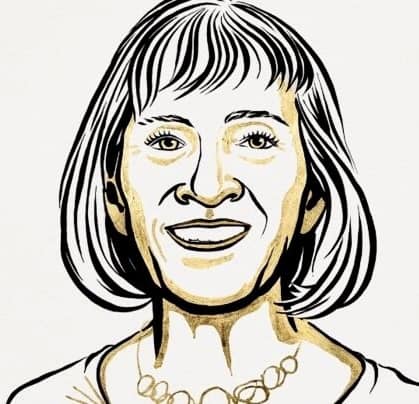
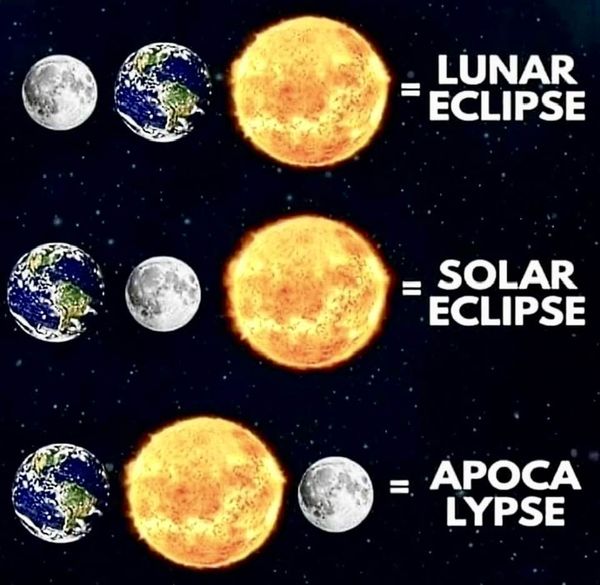
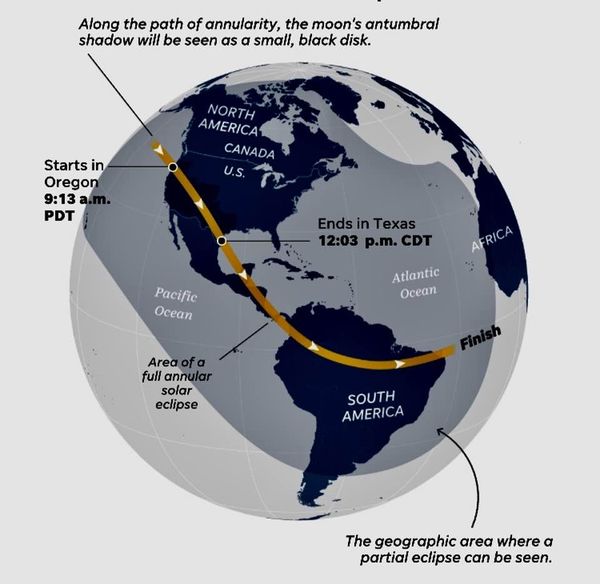


 (1) Images of the day: [Top left] Nobel Prize, Economics (see the next item below). [Top center] Physics joke: Lunar eclipse, solar eclipse, apocalypse. [Top right] "Ring-of-fire" solar eclipse of 2023 (see item 3 below). [Bottom left] An entire Israeli family massacred in cold blood by Hamas terrorists. [Bottom center] UCSB Jewish students set up a tent in front of the campus library to commemorate Israeli casualties of the Hamas terrorist attacks and to seek support for Israel. [Bottom right] A point I have been trying to make for a long time with no success, and a coded message for you to decipher.
(1) Images of the day: [Top left] Nobel Prize, Economics (see the next item below). [Top center] Physics joke: Lunar eclipse, solar eclipse, apocalypse. [Top right] "Ring-of-fire" solar eclipse of 2023 (see item 3 below). [Bottom left] An entire Israeli family massacred in cold blood by Hamas terrorists. [Bottom center] UCSB Jewish students set up a tent in front of the campus library to commemorate Israeli casualties of the Hamas terrorist attacks and to seek support for Israel. [Bottom right] A point I have been trying to make for a long time with no success, and a coded message for you to decipher.
(2) The 2023 Nobel Memorial Prize in Economics: Awarded to Claudia Goldin "for her research on gender gaps in the labor market." Goldin, the first woman to earn tenure in Harvard's economics department, is the third woman to be awarded the economics Nobel.
(3) The "ring of fire" solar eclipse of Saturday, October 14, 2023, will be visible in much of United States, Mexico, and South America. The eclipse will be partial in California and much of US; it will be total on a band extending from Oregon to Texas. In Los Angeles, CA, it begins at 8:08 AM PDT, reaches maximum eclipse at 9:25 AM, and ends 10:50 AM. For other times, see this Sky & Telescope article.
(4) One-liners: Brief news headlines, happenings, memes, and other items of general interest.
- Roger Waters adapts Pink Floyd's classic "The Wall," putting new lyrics to it to produce "Hey Ayatollah"!
- English lesson: Do you know when to use "made of," "made from," "made with," and "made out of"?
- An amazing rate of change: The many now-familiar things that did not exist 25 years ago.
- A beautiful dance, amid the news of war and other devastation. Enjoy! [1-minute video]
(5) "Understanding the Hamas War on Israel": This was the title of today's Middle East Forum webinar, featuring Daniel Pipes, Gregg Roman, Jonathan Spyer, and Nave Dromi. Hamas managed to pull off a surprise attack on Israel, leading to many casualties and political consequences. What does this mean for Israel's domestic debate? For the rapprochement with Saudi Arabia? For the Palestinian Authority? Will it lead to fundamental changes in Israel's security establishment? Will Hamas survive? How will Hezbollah respond? And what about Israel's Muslim citizens?
[62-minute video]
(6) I for one will be very careful before sharing videos from Gaza and other conflict zones: During previous conflicts, videos belonging to earlier or other wars and, in one case, of a soccer riot were posted.
2023/10/08 (Sunday): Presenting selected news, useful info, and oddities from around the Internet.
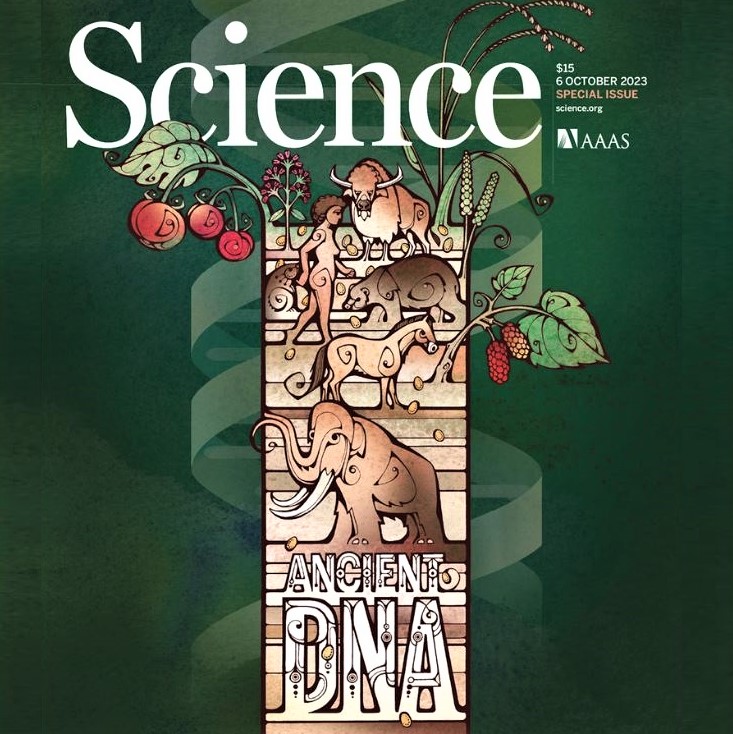


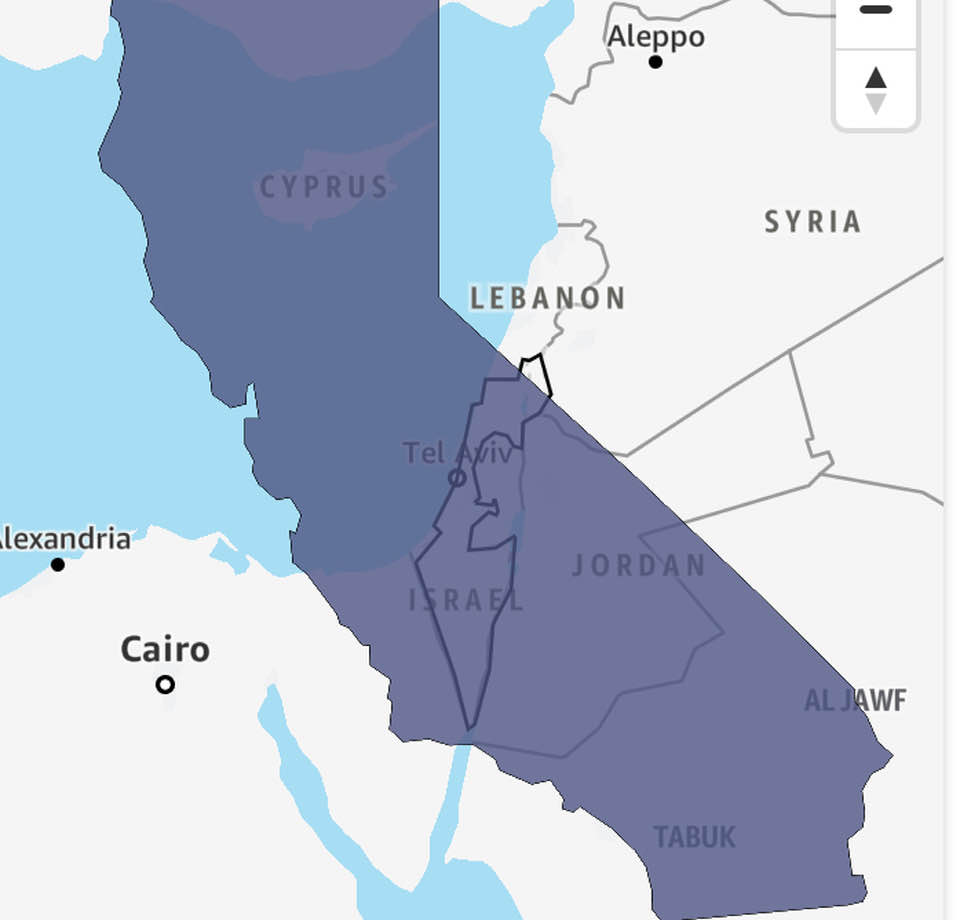

 (1) Images of the day: [Top left] Ancient DNA: A special section in Science magazine's issue of Oct. 6, 2023, contains articles about how ancient DNA has radically altered our understanding of the evolutionary history of plants and animals. [Top center] Quote from Narges Mohammadi, the 2023 Nobel Peace Prize Laureate, and her dual awards from the Nobel Committee and the government of Iran. [Top right] Shah Mosque in Isfahan, Iran. [Bottom left] California is 18 times as large as Israel: This is why the barrage of Hamas missiles coming from Gaza Strip is so devastating, despite strong anti-missile defense systems. [Bottom center] Some of the civilian casualties of the Hamas attack on Israel. [Bottom right] Areas of Hamas rocket strikes and terrorist attacks.
(1) Images of the day: [Top left] Ancient DNA: A special section in Science magazine's issue of Oct. 6, 2023, contains articles about how ancient DNA has radically altered our understanding of the evolutionary history of plants and animals. [Top center] Quote from Narges Mohammadi, the 2023 Nobel Peace Prize Laureate, and her dual awards from the Nobel Committee and the government of Iran. [Top right] Shah Mosque in Isfahan, Iran. [Bottom left] California is 18 times as large as Israel: This is why the barrage of Hamas missiles coming from Gaza Strip is so devastating, despite strong anti-missile defense systems. [Bottom center] Some of the civilian casualties of the Hamas attack on Israel. [Bottom right] Areas of Hamas rocket strikes and terrorist attacks.
(2) Dictatorial regimes are fond of installing surveillance cameras everywhere: Surveillance cameras help them maintain their grip on power but can also expose their lies. Iran's Islamic government released edited security camera footage, with obvious gaps, to claim that the hijabless 16-year-old #ArmitaGravand went into a coma because of a pre-existing medical condition, rather than due to assault by hijab enforcers. The missing parts of the security camera footage are being shared on social media, exposing the Islamic regime's lies and clearly indicating the cause of the victim's serious injuries.
(3) One-liners: Brief news headlines, happenings, memes, and other items of general interest.
- Magnitude-6.3 earthquake in western Afghanistan kills at least 2000: The death toll is expected to rise.
- Israeli casualties of Hamas attacks have surpassed 400, with 2000+ injured.
- Hamas forces have undressed the corpse of a female Israeli soldier and are shown dancing over her body.
- What Hamas did to women, children, & elder Israeli resembles the methods of ISIS & Iranian mullahs.
- Israel war: American Jews have been advised to be vigilant personally & to beef up security at their events.
- The US confirms that Americans have been killed or are missing in the wake of the Hamas attack on Israel.
(4) On the Hamas-Israel conflict: The massacre of ~1000 Israelis by Hamas terrorists is the largest loss of life among civilian Jews since the Holocaust. The Yom Kippur war of 50 years ago (October 1973) had 2000+ Israeli casualties, but those were primarily soldiers killed on the battlefield, not civilians. In the wake of the Hamas brutality, killing entire families and massacring hundreds of young people attending a music festival, Israelis are more united than ever, but they are proceeding carefully, in view of 100+ civilian hostages held by Hamas. There is no doubt in the minds of Israelis that Hamas must be totally destroyed. Gaza residents aren't pro-Hamas, according to several recent polls, so they can be won over with a careful campaign. There is little doubt that the missiles and other arms used in the attacks were supplied by Iran. Beyond that, Iran's role in the atrocities is still unknown, but a large number of Iranian officials and pro-regime cronies did celebrate the Hamas massacres, one tweeting that "the killing of the dogs has begun" (sag-koshi). Hamas leadership has likely fled Gaza Strip already, leaving helpless civilians to deal with the Israeli retaliation. The latest Hamas attack is tantamount to the death of the two-state solution, which is cause for celebration among the Islamists in the region, including Iran's Islamic regime.
2023/10/06 (Friday): Presenting selected news, useful info, and oddities from around the Internet.


 (1) Images of the day: [Top left & center] One more Nobel Prize announced (see the next two items below). [Top right] Iran's Islamic regime continues its murderous ways (see the last item below).
(1) Images of the day: [Top left & center] One more Nobel Prize announced (see the next two items below). [Top right] Iran's Islamic regime continues its murderous ways (see the last item below).
(2) The 2023 Nobel Peace Prize: Awarded to jailed human/women's-rights activist Narges Mohammadi "for her fight against the oppression of women in Iran and her fight to promote human rights and freedom for all."
(3) A woman who still smiles, after being sentenced to 30+ years in prison: The Nobel committee heard the message of Iran's #WomanLifeFreedom revolution and honored one of its most-eloquent and fearless representatives, #NargesMohammadi, with the Nobel Peace Prize for 2023. Meanwhile the Iranian mullahs and their cronies have already begun their campaign to smear Mohammadi and the "politicized" Peace Prize.
(4) One-liners: Brief news headlines, happenings, memes, and other items of general interest.
- Gaza militants fire rockets into Israel in surprise attack, during which gunmen also crossed the border.
- CERN in Switzerland uses 111,000 devices to reach one exabyte of storage capacity.
- Atomic-scale multi-qubit platform raises hopes of scaling up quantum computers.
- Familiarity and recognizability breed comfort, making it more likely for us to accept falsehoods as truths.
- My daughter's creations (inspired by her late grandma): Tah-chin, with fried zucchini as appetizer. [Photos]
(5) Science note: We often talk about a blanket warming us or one blanket being warmer than another. Actually, a blanket has no warmth of its own. It simply prevents the warmth of our body from going out or the chill of the environment from coming in. It's just an insulator.
(6) Arrival of human beings in the Americas: Previous evidence pointed to people walking over from Siberia via a dry land bridge around 15,000 years ago. Controversial radiocarbon dating of seeds from a set of preserved footprints in New Mexico's White Sands National Park indicates that humans were perhaps present in the Americas as early as 22,000 years ago.
(7) The award of the 2023 Nobel Peace Prize to #NargesMohammadi, the unjustly imprisoned Iranian human/women's-rights activist, has led to different reactions: There are many supportive statements, but we also see statements beginning with "I am happy/proud, but ..." At the risk of over-generalizing, it seems that opposition groups working outside Iran against the country's Islamic regime can't see eye to eye, so they are incapable of celebrating an honor or victory earned by a member of a group other than their own. Mohammadi is characterized as a reformist, so those who have lost hope in reforming Iran's theocratic regime are suspicious of her Peace Prize recognition. Some go as far as suggesting that honoring Mohammadi is part of a Western plot to keep the mullahs in power.
(8) The mullahs keep assaulting beautiful young women to keep their shaky hold on power: #ArmitaGravand is the latest victim to be brutally punished for defying Iran's compulsory hijab laws. She is in a coma at a military hospital with no visitors allowed. Two of her friends were forced to testify on state TV that Armita had not been assaulted by hijab enforcers in a metro car.
2023/10/05 (Thursday): Presenting selected news, useful info, and oddities from around the Internet.
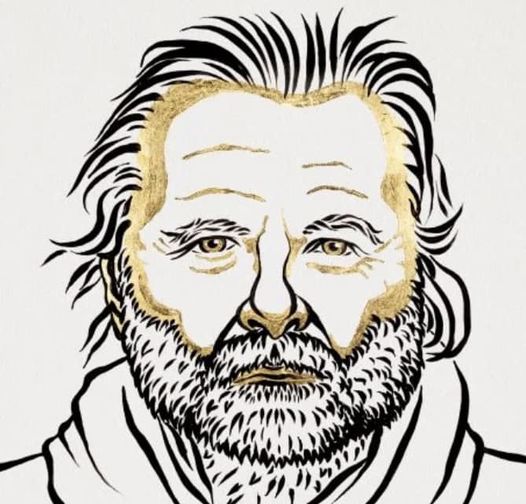

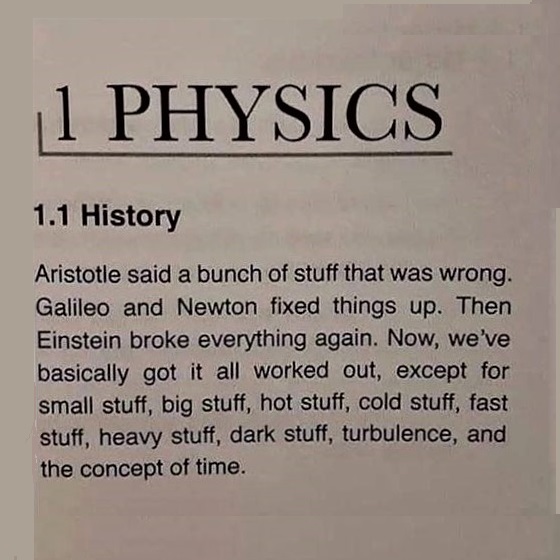 (1) Images of the day: [Left] Nobel prizes (see the next item below). [Center] World Teachers' Day (see the last item below). [Right] Current status of physics: "... we've basically got it all worked out, except for small stuff, big stuff, hot stuff, cold stuff, fast stuff, heavy stuff, dark stuff, turbulence, and the concept of time."
(1) Images of the day: [Left] Nobel prizes (see the next item below). [Center] World Teachers' Day (see the last item below). [Right] Current status of physics: "... we've basically got it all worked out, except for small stuff, big stuff, hot stuff, cold stuff, fast stuff, heavy stuff, dark stuff, turbulence, and the concept of time."
(2) The 2023 Nobel Prize in Literature: Awarded to Norwegian writer Jon Olav Fosse "for his innovative plays and prose which give voice to the unsayable." The prize is awarded for a writer's entire body of work.
(3) On the 2023 Nobel Prize in Physics: What is an attosecond? It's a time period equal to one quintillionth of a second, or 10^(–18) seconds. Scientists use attosecond pulses of light to study the motion of electrons in atoms and molecules, which can reveal the underlying mechanisms of many physical and chemical processes.
(4) One-liners: Brief news headlines, happenings, memes, and other items of general interest.
- Throwback Thursday: Tehran of 1967, as shown in the Italian movie "Tom Dollar." [3-minute video]
- Simone Biles, US women's gymnastics team win record 7th straight world championships title.
- Waiting for conspiracy theories to emerge about the National Alert test on October 4. [Cartoon]
- Wonders of math: Onion shape formed by the plots of the functions y = x^n and y = x^(1/n).
(5) Rewrding creativity: Twenty Americans have won what has come to be known as "The Genius Award," MacArthur Foundation's no-string-attached $800,000 fellowships to help advance their work.
(6) Tonight's interesting Arts & Lectures program at UCSB's Campbell Hall: Mustafa Suleyman (Co-Founder of DeepMind & Inflection AI, and author, with writer/publisher Michael Bhaskar, of the 2023 book The Coming Wave: Technology, Power, and the 21s Century's Greatest Dilemma) discussed many ideas from his book and his experience as an AI entrepreneur, in conversation with Dr. Misha Sra of UCSB's Computer Science Department. A free copy of the book was supplied to every attendee.
It was a fascinating and deep conversation about where AI is headed and how large language models will transform our lives, businesses, and society. I have taken extensive notes from tonight's conversation, which I will incorporate into my forthcoming review of the book.
For now, suffice it to say that Suleyman holds a mostly optimistic view of AI developments, quite a contrast with the many doomsday accounts. His company's version of ChatGPT is named Pi, for personal intelligence, which is envisaged as an empowerment tool for its owner. Interestingly, Pi is intentionally designed to avoid certain subjects, so if you try to flirt with it, you would get a polite answer such as "I'm just an AI, ..." Pi's design is focused on emotional intelligence, so that it can serve as a kind and supportive companion, rather than as a productivity, search, or question-answering tool.
(8) Happy World Teachers' Day: October 5 commemorates the anniversary of the adoption of the 1966 ILO/UNESCO recommendation concerning the status of teachers, which sets benchmarks regarding the rights and responsibilities of teachers, and standards for their initial preparation and further education, recruitment, employment, and teaching and learning conditions.
2023/10/04 (Wednesday): Presenting selected news, useful info, and oddities from around the Internet.
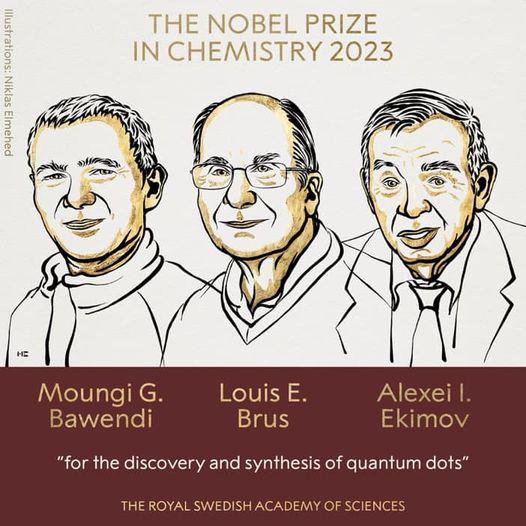

 (1) Images of the day: [Left] Another 2023 Nobel Prize (see the next item below). [Center] Math puzzle: An ant moves on the grid lines from A to C via a randomly-chosen shortest path. Find the probability that it will pass through B (Credit: @Math_World_). [Right] Our 99-year-old ex-president (see the last item below).
(1) Images of the day: [Left] Another 2023 Nobel Prize (see the next item below). [Center] Math puzzle: An ant moves on the grid lines from A to C via a randomly-chosen shortest path. Find the probability that it will pass through B (Credit: @Math_World_). [Right] Our 99-year-old ex-president (see the last item below).
(2) The 2023 Nobel Prize in Chemistry: Awarded jointly to Moungi Bawendi, Louis E Brus, and Alexey Ekimov "for the discovery of quantum dot technology, which revolutionized industries from consumer electronics to healthcare." Back-story: In a highly unusual incident, the honorees' names were inadvertently leaked and published by news media a few hours before the official announcement.
(3) Soccer World Cup's Centenary: The 2030 tournament will be held on three continents (Spain, Portugal, Morocco, & 3 South American countries). Centennial festivities are planned for Uruguay's Centenario Stadium, which hosted the inaugural 1930 World Cup final. There is talk of Saudi Arabia hosting the 2034 tournament.
(4) One-liners: Brief news headlines, happenings, memes, and other items of general interest.
- Kevin McCarthy fails to get enough support to remain Speaker of the House: He says he won't run again.
- The newest member of the US Senate Laphonza Butler is sworn in to replace California's Diane Feinstein.
- The high-tech Las Vegas Sphere, featuring a 160,000-square-foot LED screen, opened with a U2 concert.
- Malcolm Gladwell talks with Neil deGrasse Tyson about the extreme safety of self-driving cars.
- Math puzzle: What is the value of sqrt(i) + sqrt(–i)?
- A gentle math puzzle: Find x, given that x/21 + x/77 + x/165 + x/285 + x/437 + x/621 = 100.
- Facebook memory from Oct. 4, 2018: Creating exquisite metallic carpets in Isfahan, Iran.
(5) Iran's murderous Islamic regime: A year after #MahsaAmini's death while in custody for improper hijab, 16-year-old #ArmitaGaravand has gone into a coma after a confrontation with the morality police. And these are just two of hundreds of murderous acts by Iran's security forces & terrorist Revolutionary Guards.
(6) A model life for an ex-president (unlike you-know-who): Jimmy Carter has turned 99. He reportedly has two longstanding wishes that he would like to see fulfilled before he dies.
First, he likes to see the eradication of a horrible infectious disease caused by Guinea-worm larvae in unsafe drinking water. This may actually happen, given that there are today only six known cases of the disease worldwide, thanks mostly to Carter's relentless, decades-long efforts in fighting it.
Second, he likes to see peace in the Middle East, a feat that is still unrealized, despite Carter winning a Nobel Peace Prize for it. Efforts by Saudi Arabia and Israel are moving the process along, but this is a tough nut to crack. Whether the two countries can overcome opposition from Iran and others remains to be seen.
I for one cheer wholeheartedly for President Carter's well-being and for his staying alive until the realization of at least one of these two wishes.
2023/10/03 (Tuesday): Presenting selected news, useful info, and oddities from around the Internet.
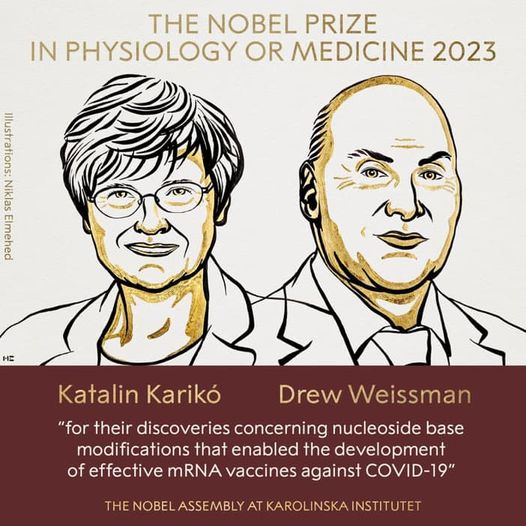

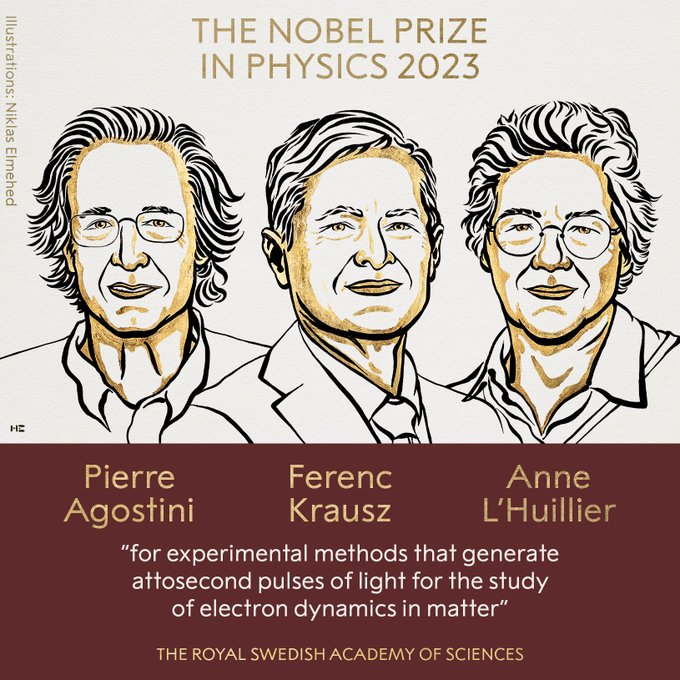 (1) Images of the day: [Top left & right] The first two Nobel Prizes for 2023 (see the next three items below). [Top center] Women sound off on being forced into unsafe/illegal abortions (see the last item below).
(1) Images of the day: [Top left & right] The first two Nobel Prizes for 2023 (see the next three items below). [Top center] Women sound off on being forced into unsafe/illegal abortions (see the last item below).
(2) The 2023 Nobel Prize in Physiology or Medicine: Awarded jointly to Katalin Kariko and Drew Weissman "for their discoveries concerning nucleoside base modifications that enabled the development of effective mRNA vaccines against COVID-19."
(3) The unlikely and revealing back-story of Katalin Kariko's 2023 Nobel Prize in Physiology or Medicine: In 1995, UPenn demoted Kariko because she could not get the financial support needed to continue her research, effectively forcing her into retirement. The university is still celebrating her win, with no mention of the demotion or her rocky history with the university.
(4) The 2023 Nobel Prize in Physics: Awarded jointly to Pierre Agostini, Ferenc Krausz, and Anne L'Huillier "for experimental methods that generate attosecond pulses of light for the study of electron dynamics in matter."
(5) Today is IEEE Day: Designated to celebrate the first time in history when engineers worldwide gathered to share technical ideas in 1884, IEEE Day features activities by IEEE's many geographic & technical entities.
(6) Why are the Democrats smiling? Because they averted a government shutdown! We have sunk so low that we declare victory while all of our major problems are still intact: poverty, racism, sexism, healthcare, immigration, gun violence, educational decline, infrastructure rot, ...
(7) Politics cancels soccer match in Iran: A Saudi Arabian team in Isfahan for a soccer match leaves in protest after objecting to a Qasem Soleimani bust near the playing field, which the authorities failed to remove.
(8) An impressive mathematical animation: This spiral rotates by a tiny angle on every frame. Even though it seems that the circles change size and color, they are actually unchanging.
(9) Quoted in New York Times: "I'm 79, and women my age remember when abortion was illegal. Many of us either had a back-alley abortion, or had friends who had one. We are determined that neither our daughters nor our granddaughters have to experience this. Many of the elderly men I know still vote for Republicans. But watch out: We outlive you!" ~ Mary Leonhardt
2023/10/01 (Sunday): Presenting selected news, useful info, and oddities from around the Internet.
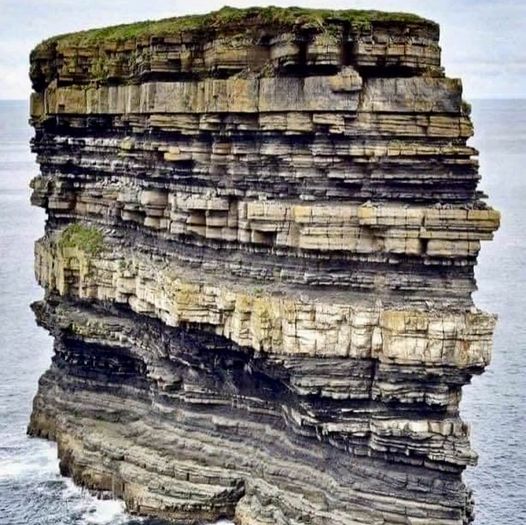
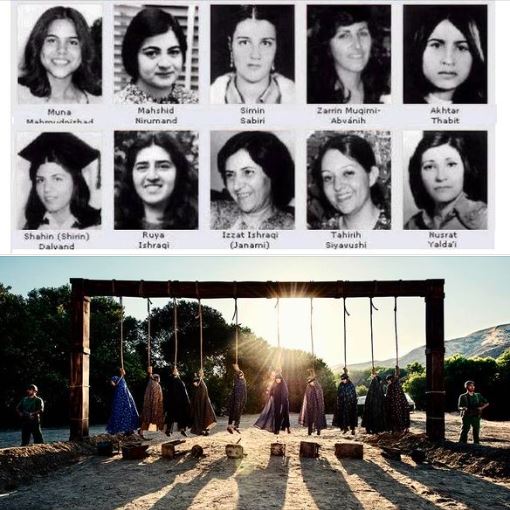



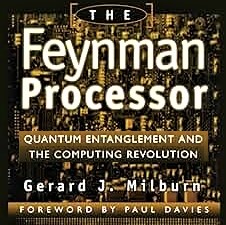 (1) Images of the day: [Top left] Millions of years, captured in one frame. [Top center] Ten Baha'i women were publicly executed by Iran's mullahs in June 1983: The group included a 17-year-old girl and a pregnant woman. [Top right] Iranian school bus from the early 1960s. [Bottom left] Banned-Books Week (October 1-7): This year's theme is "Let Freedom Read." Banning books closes off readers to people, places, and perspectives. Standing up for stories unleashes the power that lies inside every book. [Bottom center] Math puzzle: Determine the length of the line-segment PQ (credit: @dmgr_2318). [Bottom right] Gerard J. Milburn's The Feynman Processor (see the last item below).
(1) Images of the day: [Top left] Millions of years, captured in one frame. [Top center] Ten Baha'i women were publicly executed by Iran's mullahs in June 1983: The group included a 17-year-old girl and a pregnant woman. [Top right] Iranian school bus from the early 1960s. [Bottom left] Banned-Books Week (October 1-7): This year's theme is "Let Freedom Read." Banning books closes off readers to people, places, and perspectives. Standing up for stories unleashes the power that lies inside every book. [Bottom center] Math puzzle: Determine the length of the line-segment PQ (credit: @dmgr_2318). [Bottom right] Gerard J. Milburn's The Feynman Processor (see the last item below).
(2) The new phone-call etiquette: Increasingly, people text first to set up a mutually agreeable talk time. Leaving voice messages and playing phone-tag is falling out of favor.
(3) The US House passes a bill to keep the government open for 45 days: The GOP argues that the temporary fix will give the House and the Senate time to agree on a permanent measure. The question is: If you can solve the problem in 45 days, why didn't you start 45 days ago? You knew about this deadline months ago!
(4) One-liners: Brief news headlines, happenings, memes, and other items of general interest.
- Former US President Jimmy Carter celebrates his 99th birthday today.
- The good girl who fell into the Trump trap: Cassidy Hutchinson's just-published memoir tells us how/why.
- The state of computing in 1962, when computers could do 1000 calculations per second. [10-minute video]
- Africa is splitting into two continents: A long, deep rift in Earth's crust may someday connect to an ocean.
(5) Book review: Milburn, Gerard J., The Feynman Processor: Quantum Entanglement and the Computing Revolution, Perseum Books, 1998.
[My 3-star review of this book on GoodReads]
This book combines a description of quantum physics with an introduction to computer science., in the following 6 chapters, followed by a 3-page epilogue:
- The Quantum Principle (pp. 1-37)
- Quantum Entanglement (pp. 38-71)
- Teleportation for Gamblers (pp. 72-91)
- Reality, by Nintendo (pp. 92-118)
- Quantum Software (pp. 119-170)
- The Dream Machine (pp. 171-191)
Physicist Richard Feynman postulated in 1982 that to simulate quantum systems, you may be forced to build quantum computers. From the early-1980s germ of an idea (attributed to Paul Benioff, Yuri Manin, Richard Feynman, and David Deutsch), interest in quantum computing picked up, reaching a fever pitch in the 1990s with the development of quantum algorithms and quantum computational complexity results. Seminars, workshops, and experimental demos of quantum devices & algorithms proliferated in the late-1990s. When I chanced upon this 1998 book, I decided it may be a fun read about the excitement, as quantum computing emerged from the shadows and became a subject for dinner-table conversations and media reporting.
The book falls short in its twin goals of providing a layman's introduction to the main ideas of quantum physics and their computing implications. My recommendations for gaining an understanding of quantum computing are as follows:
- Bernhardt, Chris, Quantum Computing for Everyone, 216 pp., MIT Press, 2020.
- LaPierre, Ray, Introduction to Quantum Computing, 382 pp., Springer, 2021.
We have not only discovered more about quantum computing over the past 2+ decades, we have also learned how to better explain the ideas to non-specialists.
2023/09/30 (Saturday): Today, I offer three books reviews covering business, science/tech, and art.
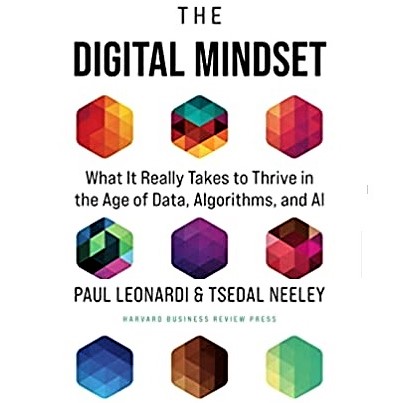
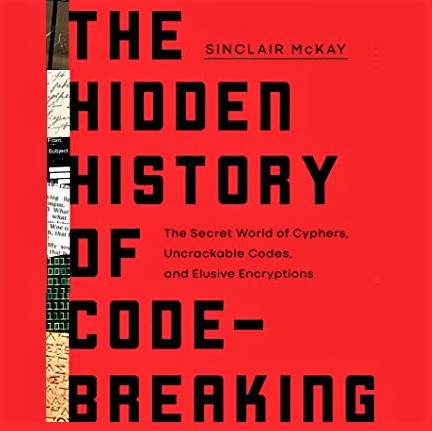
 (1) Book review: Leonardi, Paul & Tsedal Neeley, The Digital Mindset: What It Really Takes to Thrive in the Age of Data, Algorithms, and AI, unabridged 7-hour audiobook, read by Emmanuel Chumaceiro, Ascent Audio, 2022. [My 4-star review of this book on GoodReads]
(1) Book review: Leonardi, Paul & Tsedal Neeley, The Digital Mindset: What It Really Takes to Thrive in the Age of Data, Algorithms, and AI, unabridged 7-hour audiobook, read by Emmanuel Chumaceiro, Ascent Audio, 2022. [My 4-star review of this book on GoodReads]
[After reading this book in hard-copy form, I refreshed my memory by listening to its unabridged 7-hour audio version (read by Emmanuel Chumaceiro, Ascent Audio, 2022).]
A few days before writing this review, I watched a TED-style talk under the title "The Road Turned, Iran Kept Going Straight," by three popular Iranian professors, who were recently fired from their tenured positions by the country's dictatorial regime. The speakers pointed out that a few centuries ago, Iran was economically bustling and an important hub on the Silk Road. Then, overland trade routes were replaced by more-efficient and cheaper sea lanes, which led to Iran being left behind and becoming isolated when it did not adapt. In today's world, countries and businesses that do not adapt to digital technologies face similar fates.
UCSB Technology Management Program's Paul Leonardi and Harvard Business School's Tsedal Neeley set out to help businesses deal with the pressures and challenges of going digital. According to the authors, a digital mindset consists of a set of approaches in three key areas: collaboration, computation, and change. Working with others and effective collaboration are already familiar to most people. But collaboration in the digital era is quite different, because it requires working with other people and with machines. Making machines do what you want and trusting their predictions or recommendations are parts of the challenge.
Appreciating data and recognizing them as social constructs is another key factor. The digital world is constantly changing, so instituting an approach to change is essential. Development of skills in employees to embrace new technologies and to become capable of thriving in a changing environment is another fundamental requirement.
We are in a transition period. Younger workers have grown up with digital technologies, so they are "digital natives," while older workers can be viewed as "digital immigrants" with limited skills in their adopted digital environment. The authors assert that to be a competent citizen of the digital world requires only a 30% fluency in a limited number of areas. This is akin to what happens in learning a foreign language, where mastery might require the knowledge of about 12,000 words, whereas knowledge of 30% of these words, or about 4000 words, provides a person with the ability to work with others. The authors identify the 30% skill & knowledge sets that would make businesses digitally literate, as they proceed to higher levels of proficiency.
(2) Book review: McKay, Sinclair, The Hidden History of Code-Breaking: The Secret World of Cyphers, Uncrackable Codes, and Elusive Encryptions, Pegasus, 400 pp., 2023.
[My 4-star review of this book on GoodReads]
This book chronicles the never-ending arms race between code-makers and code-breakers. I don't understand "The Hidden History" part of the title though, because, to me, this is a rather conventional historical account. Apparently, the hidden-history moniker sells, because Thom Hatmann has an entire series of book with titles such as The Hidden History of Neoliberalism and The Hidden History of American Healthcare (the latter one I have read and reviewed on GoodReads).
McKay provides technical details and interesting tidbits about many of the codes he discusses. We learn about Samuel Morse coming up with the idea of dots-and-dashes, in what later became known as Morse Code, while on board a trans-Atlantic ship. Other stories included are Alan Turing's cracking of the German Enigma Code, which contributed to the defeat of the Nazis in World War II, and the long and hard road of the Human Genome Project, a major step in solving the mystery of what makes us human.
The subject of code-making interacts with many other disciplines (including linguistics, math, history, archaeology, literature, biology, and politics), borrowing ideas and constructs from them and influencing them in return. There are also social dimensions to code-making and code-breaking. Secret lovers have contributed many methods to the field because of their desire to encode messages in order to arrange romantic meetings.
Throughout the book, there are puzzles of various levels of difficulty for readers to solve. Some of these puzzles are unclear and do not contain sufficient details for typical readers to tackle them. Use of more photos and diagrams (of devices and their principles of operation) would have been helpful. Despite these shortcomings, the book is still a valuable addition to historical accounts on the topics of code-making and code-breaking.
(3) Book review: Zhuleh (or Jouleh), Turaj, A Simple Visual Guide—Persian Carpet: Classified Study of Designs, Origins, History, Styles and Schools, In Persian & English, Translator Roozbeh Zhuleh, Yassavoli Publishers, 2023. [My 4-star review of this book on GoodReads]
I learned of this book when I attended an August 17, 2023, Zoom webinar by the author under the title "The Pathology of Iranian Carpets Over Time," in which he drew on decades of work on Persian carpets to provide a diagnosis of what ails the carpet-weaving arts and industry in Iran. Briefly, carpet-weaving peaked during the Safavid era (1501-1736 CE) alongside several other art forms, later falling by the wayside, primarily due to the use of low-quality material and labor-saving shortcuts in production.
The book begins with four introductory chapters on weaving in Iran, characterization of Persian carpets, origins of Persian carpets, and styles & schools of carpet-weaving, and ends with a discussion of carpetology around the world. Each of the book's remaining 16 chapters, averaging ~4 pages in length, is devoted to a particular style or region of carpet-weaving. The narrative for each chapter is offered in both Persian & English and is accompanied by photos of the discussed styles.
2023/09/29 (Friday): Presenting selected news, useful info, and oddities from around the Internet.
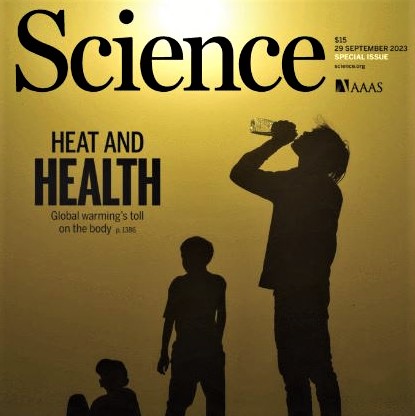

 (1) Images of the day: [Left] Global warming's toll on the body: According to Science magazine's special section on "Heat and Health" (issue of Sep. 29, 2023), a warmer climate is unhealthy, both due to its direct impact on the human body and because of its effects on vector-borne and other diseases. [Center] Status and solidarity of women in Afghanistan and Iran (see the next item below). [Right] Barbara W. Tuchman's The March of Folly: From Troy to Vietnam (see the last item below).
(1) Images of the day: [Left] Global warming's toll on the body: According to Science magazine's special section on "Heat and Health" (issue of Sep. 29, 2023), a warmer climate is unhealthy, both due to its direct impact on the human body and because of its effects on vector-borne and other diseases. [Center] Status and solidarity of women in Afghanistan and Iran (see the next item below). [Right] Barbara W. Tuchman's The March of Folly: From Troy to Vietnam (see the last item below).
(2) Gender apartheid in Afghanistan and Iran: Georgetown University panels have chimed in on the situation of women in the Middle East.
On Afghanistan, they suggest that "eradicating the deeply rooted and institutionalized discrimination faced by Afghan women necessitates a resolute and unified stance from the global community."
On Iran, they note that "the Iranian regime has proposed a new law that could put women in prison for up to 10 years for not wearing the mandatory hijab," adding that the strict dress code constitutes gender apartheid.
(3) Make sure to thank an earthworm for bread: Earthworms help make soil more fertile by burrowing, which renders it more porous, and by digesting dead plant matter. Their impact on improving wheat harvest is roughly equivalent to one slice in every loaf of bread. [Source: Science magazine, issue of Sep. 29, 2023]
(4) One-liners: Brief news headlines, happenings, memes, and other items of general interest.
- Dianne Feinstein [1933-2023]: First female mayor of San Francisco & 6-term California Senator dead at 90.
- US Secretary of State Tony Blinken conducts musical diplomacy. [1-minute video]
- An Iranian couple dressed in Qashqa'i attire walk on a street in northern Tehran. [1-minute video]
- Silvergreens, a defunct salad joint in my area, is back (sort of): It delivers salads & wraps to businesses.
- Facebook memory from Sep. 29, 2017: When two cats ate my daughter's loan copy of a book!
- Facebook memory from Sep. 29, 2011: Work vs. play.
- Facebook memory from Sep. 29, 2010: Fast food in ad photos vs. in reality.
(5) Book review: Tuchman, Barbara W., The March of Folly: From Troy to Vietnam, unabridged 18-hour audiobook, read by Wanda McCaddon, Blackstone Audio, 2009.
[My 3-star review of this book on GoodReads]
The author discusses the four most-important follies of world governments, as follows:
- Troy's falling for the horse offered by the Greek and taking it into their city, thus losing the war.
- Popes' failure to reverse the church's decline, leading to Protestant reforms of the 16th century.
- England's policies during the reign of King George III, in connection with the United States.
- United States' misguided policies during the Vietnam War, prolonging the conflict and losing it.
The latter part takes up about 40% of the book, with the other three covered in lesser depth.
The book covers important topics, that is, the narrowmindedness and selfishness of those in power, but it is written in a way that does not arouse the reader's interest. A dry subject matter along with dry writing and dry narration make for a less-than-pleasurable reading/listening experience.
A Persian translation of this book exists under the title "Tarikh-e Bi-Kheradi" ("History of Idiocy," translated by Hassan Kamshad).
2023/09/28 (Thursday): Presenting selected news, useful info, and oddities from around the Internet.




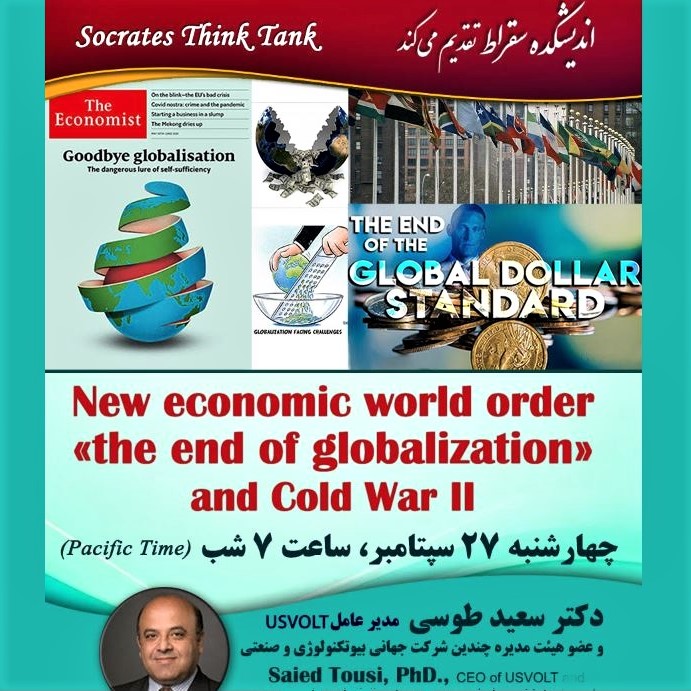
 (1) Images of the day: [Top left] Throwback Thursday: HP-35 was one the first pocket scientific calculators. It was certainly the first affordable one at ~$50. I bought one in 1972, when I was a grad student at UCLA and had much fun with it. [Top center] Throwback Thursday: These gadgets of mine, now headed to e-waste dump, were once among the coolest digital devices. The Canon Powershot SD1000 camera was the first camera I could put in my shirt pocket so that I could take it out quickly to capture various events. The Flip Mino camcorder, with 1 hour of video storage, was even thinner than my digital camera and most people would watch in disbelief as I told them that I was video-recording. [Top right] Persian calligraphy: Rendering of the Iranian people's revolutionary slogan #WomanLifeFreedom. [Bottom left] Math puzzle: Compute the area of the quadrangle ABCD. [Bottom center & right] Socrates Think Tank talk (see the last item below).
(1) Images of the day: [Top left] Throwback Thursday: HP-35 was one the first pocket scientific calculators. It was certainly the first affordable one at ~$50. I bought one in 1972, when I was a grad student at UCLA and had much fun with it. [Top center] Throwback Thursday: These gadgets of mine, now headed to e-waste dump, were once among the coolest digital devices. The Canon Powershot SD1000 camera was the first camera I could put in my shirt pocket so that I could take it out quickly to capture various events. The Flip Mino camcorder, with 1 hour of video storage, was even thinner than my digital camera and most people would watch in disbelief as I told them that I was video-recording. [Top right] Persian calligraphy: Rendering of the Iranian people's revolutionary slogan #WomanLifeFreedom. [Bottom left] Math puzzle: Compute the area of the quadrangle ABCD. [Bottom center & right] Socrates Think Tank talk (see the last item below).
(2) In many countries, the military wants to oust civilian leaders to establish a dictatorship: In the US, some civilian leaders advocate ousting or even killing military generals who oppose their dictatorial schemes!
(3) Last night's Socrates Think Tank talk: Dr. Saied Tousi, CEO of USVOLT and board member of several biotech & industrial companies, spoke under the title "New Economic World Order: 'The End of Globalization' and Cold War II." There were ~130 attendees.
Dr. Tousi began by recapping his previous talk, allowing the audience to ask questions if any point needed clarification. He then embarked on a detailed discussion of two worldwide trends.
The first trend is the collapse of global fertility rate, with the exception of most countries in Africa. Italy, Japan, and China are among the countries that are affected most severely. In Japan alone, there are 10 million unoccupied dwellings that city governments are anxious to give away. Russia also has serious problems in demographics, owing to a reduction of the number of young people (lower birth rate, plus casualties of war), which is particularly detrimental to its military power.
The second trend pertains to large-scale changes in energy resources and markets (see the image). North America has become pretty much independent of Middle Eastern oil, which now goes almost exclusively to India, China, and Japan. Concurrent with changes in energy markets, the global supply chain is also undergoing a transformation. For example, Mexico is attracting a good chunk of the business that previously went to China.
There was also some discussion of the drumbeat about the US dollar being ousted from its position as the default currency for international trade. These stories are propagated primarily by Russia, China, and Iran. Despite these claims, the US dollar continues it rise, while other currencies, including euro, are declining. During the Q&A period, I mentioned that Bitcoin and gold dealers also contribute to propagating these falsehoods in order to boost their sales.
I also introduced during the Q&A period Tim Marshall's book Prisoners of Geography (my review), which confirms many of the points made by the speaker about the self-sufficiency and relative safety of the US (North America, more generally), compared with other countries/regions.
2023/09/27 (Wednesday): Presenting selected news, useful info, and oddities from around the Internet.



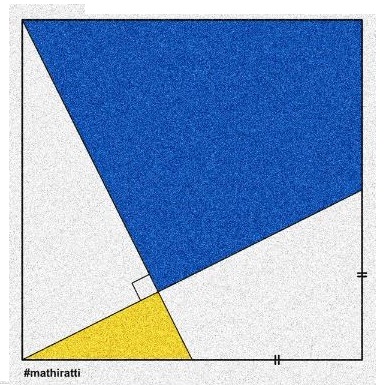
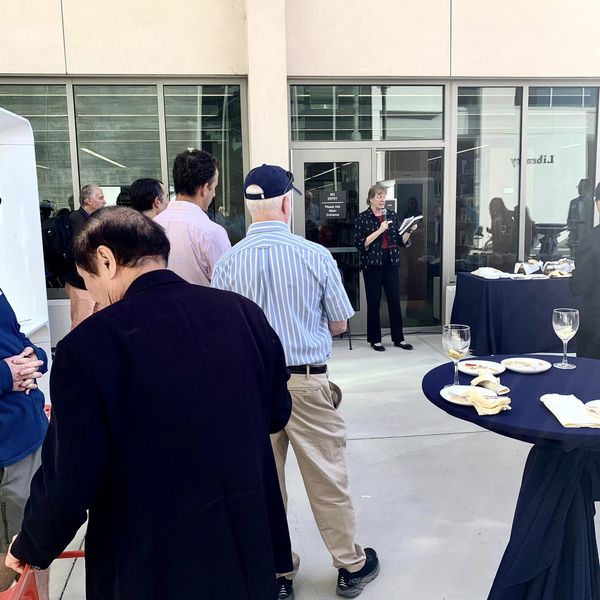
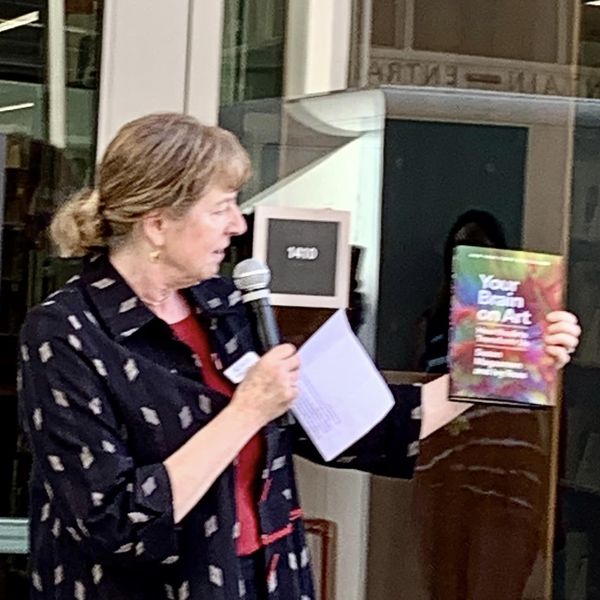 (1) Images of the day: [Top left] Interactive Learning Pavilion (a UCSB classroom building) & some its outdoor seating to study or take a break: I will be teaching my fall 2023 graduate course ECE 257A on fault-tolerant computing in this nicely-equipped new building, which hosted an open house yesterday (2-minute video). [Top center] Monday night atop UCSB's West Campus bluffs, looking westward & eastward (1-minute video). [Top right] Sidewalks are important: Don't treat them as if they are necessary evils (see the next item below). [Bottom left] Math puzzle: What is the ratio of the blue area to the yellow area within the outer square? [Bottom center & right] UCSB Library's reception for the start of the new academic year: Chancellor Henry Yang, EVC David Marshall, Librarian Kristin Antelman, and about 40 faculty members were in attendance. The UCSB Reads 2024 book selection, Your Brain on Art (my review), was announced during the festivities.
(1) Images of the day: [Top left] Interactive Learning Pavilion (a UCSB classroom building) & some its outdoor seating to study or take a break: I will be teaching my fall 2023 graduate course ECE 257A on fault-tolerant computing in this nicely-equipped new building, which hosted an open house yesterday (2-minute video). [Top center] Monday night atop UCSB's West Campus bluffs, looking westward & eastward (1-minute video). [Top right] Sidewalks are important: Don't treat them as if they are necessary evils (see the next item below). [Bottom left] Math puzzle: What is the ratio of the blue area to the yellow area within the outer square? [Bottom center & right] UCSB Library's reception for the start of the new academic year: Chancellor Henry Yang, EVC David Marshall, Librarian Kristin Antelman, and about 40 faculty members were in attendance. The UCSB Reads 2024 book selection, Your Brain on Art (my review), was announced during the festivities.
(2) Sidewalks as afterthoughts: Having walked in many neighborhoods of different cities, I've wanted to write about this issue for a long time. It seems that in developing city neighborhoods, planners first allocate space to roads and to parking lots serving road-side businesses. Then, whatever space is left over is used for sidewalks. Nowhere is this problem more visible than in a section of State Street near Santa Barbara's Las Positas Road. To make the city pedestrian-friendly, there is no need to close the streets to traffic, as done recently in the downtown area. Let's begin with providing decent sidewalks of reasonable width and with smooth surfaces.
(3) At least 125 people were killed and hundreds wounded in a fuel depot explosion in Nagorno-Karabakh amid an exodus of ethnic Armenians from the region. Turkey is supportive of Azerbaijan's military offensive.
(4) One-liners: Brief news headlines, happenings, memes, and other items of general interest.
- Fireworks cause a deadly fire, killing at least 100 at a wedding hall in Iraq.
- Google turns 25: The optimism about a benevolent company has turned into worries about too much power.
- Iranian agents and regime apologists are in positions of power in the US government.
- Mind your surroundings: This Chicago woman puts up a fight, but she has no chance against two burly men.
- Math puzzle: What is the rightmost digit of the number 2019^2018^ ... ^3^2^1?
- Vera Rubin [1928-2016]: The hidden figure who proved the existence of dark matter in the universe.
- Goleta Lemon Festival celebrates 30 years: Saturday-Sunday, September 30 & October 1, 2023; Girsh Park.
(5) American might on full display: Iran releases several American hostages in exchange for getting some of its own money back, but pretends that the releases were motivated by humanitarian concerns and the US "coming to its knees." North Korea releases an American soldier who had entered the country illegally, saying that the American was expelled, as if being returned from North Korea to the US constitutes a punishment!
(6) I become upset when people say they are dissatisfied with both major parties: Equating the Democrats' faults with the atrocious behavior of the Republicans is a disservice to our country and to democracy.
(7) Inequity in grocery pricing: You have probably noticed that upscale supermarkets in affluent neighborhoods have much higher prices. According to a PBS Newshour story, low-scale markets in poor neighborhoods also have higher prices, while also offering fewer deals to their customers.
2023/09/25 (Monday): Presenting selected news, useful info, and oddities from around the Internet.

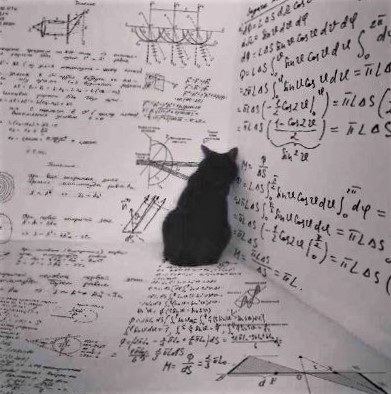
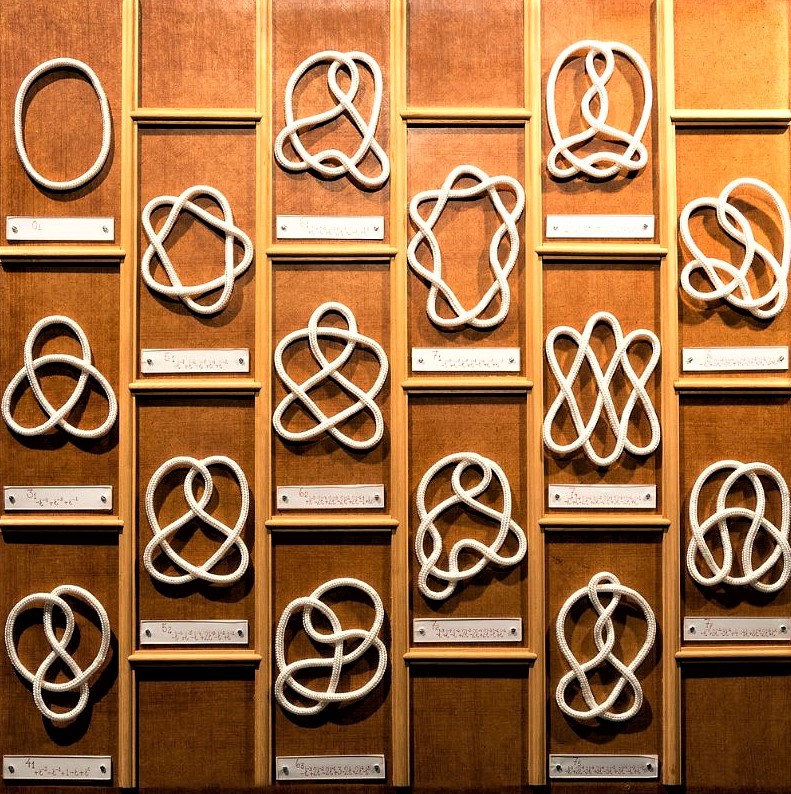 (1) Images of the day: [Left] Iran's architecture: The historic Qavam mansion in Shiraz. [Center] Physics joke: Inside the box, Schrodinger's cat plans its revenge. [Right] Knot theory (see the next item below).
(1) Images of the day: [Left] Iran's architecture: The historic Qavam mansion in Shiraz. [Center] Physics joke: Inside the box, Schrodinger's cat plans its revenge. [Right] Knot theory (see the next item below).
(2) Knot theory is a branch of topology concerned with the study of mathematical knots: While inspired by knots which appear in daily life, such as those in shoelaces and rope, a mathematical knot differs in that the rope ends are joined so that it cannot be undone. A mathematical theory of knots was first developed in 1771 by Alexandre-Theophile Vandermonde. Alan Turing knew that telling whether two knots are equivalent (one can be turned into the other, without cutting the rope) is extremely difficult. [8-minute video]
(3) One-liners: Brief news headlines, happenings, memes, and other items of general interest.
- The 4.5-billion-year-old rock that has been brought back to Earth. [6-minute video]
- Scientists use 5 million hours of supercomputer time to create a 3D model of exotic supernovae.
- Manhattan Project II: Los Alamos will be the site of a new major effort to modernize the US nuclear arsenal.
- No need to wait for quantum hardware: Companies run quantum equations and quantum software on GPUs.
- Rachel Maddow's incredibly detailed report about Kazakh corruption, money laundering, and Donald Trump.
- Hyper-inflation in Zimbabwe: They've introduced a paper-currency worth 50 trillion Zimbabwe dollars.
(4) Documentary film about Wendy McCaw: She bought Santa Barbara News Press, one of the oldest newspapers in California, in 2000 for $110 million and ran it into bankruptcy in 2023. When it became clear in the late 2000s that McCaw had fired or caused the resignation of the best journalists on her staff, Santa Barbara residents began cancelling their subscriptions to the paper. This 2008 film is an excellent reminder of the importance of journalism ethics and responsibilities of journalists to the community. [79-minute film]
(5) Formulation of money-laundering detection as a graph problem: The challenge is to find large sums of money divided into smaller transactions between numerous bank accounts, a technique known as "smurfing."
(6) Machine unlearning: We are bombarded daily with reports on advances in, and new applications of, machine learning (ML). Owing to considerations such as privacy, usability, and the right to be forgotten, the need may arise to remove information about some specific samples from an ML model. This is called "machine unlearning." The most-common unlearning schemes fall under the two main categories of data reorganization and model manipulation. [Source: Article by H. Xu et al. in ACM Computing Surveys, January 2024]
(7) Is the Internet making us criminals? In a survey of 8000 teens, aged 16-19, across 9 European countries, nearly half admitted engaging in cybercriminal behavior in the previous 12 months. [Source: David Geer, in Communications of the ACM, October 2023]
2023/09/24 (Sunday): Presenting selected news, useful info, and oddities from around the Internet.


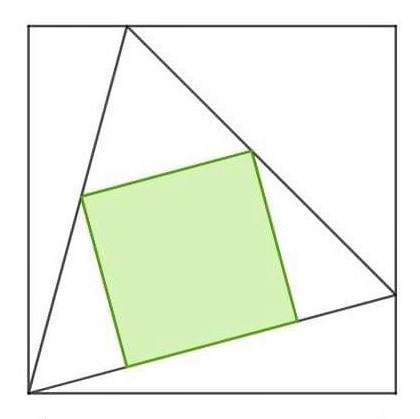


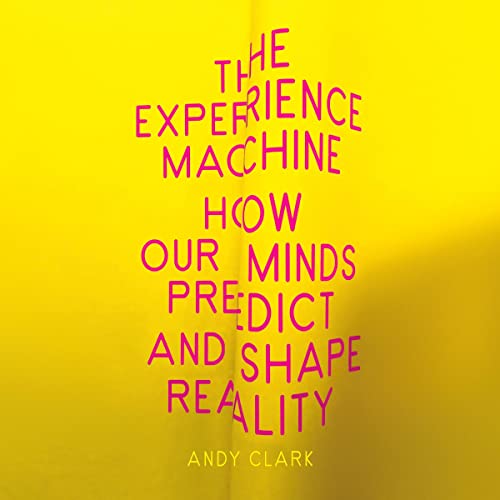 (1) Images of the day: [Top left] Math puzzle: Find the area of the blue rectangle. [Top center] Math puzzle: Given the angles in this figure, prove that a^2 + c^2 = 2b^2. [Top right] Math puzzle: We have two squares and an equilateral triangle. Find the ratio of the areas of the two squares. [Bottom left] Iran's architecture: Diamond Hall at Golestan Palace Museum, Tehran. [Bottom center] See if you can read the hidden message in this photo. Painters have used this method of creating hidden messages for centuries. With the use of AI, the task is now easier than ever. [Bottom right] Andy Clark's The Experience Machine (see the last item below).
(1) Images of the day: [Top left] Math puzzle: Find the area of the blue rectangle. [Top center] Math puzzle: Given the angles in this figure, prove that a^2 + c^2 = 2b^2. [Top right] Math puzzle: We have two squares and an equilateral triangle. Find the ratio of the areas of the two squares. [Bottom left] Iran's architecture: Diamond Hall at Golestan Palace Museum, Tehran. [Bottom center] See if you can read the hidden message in this photo. Painters have used this method of creating hidden messages for centuries. With the use of AI, the task is now easier than ever. [Bottom right] Andy Clark's The Experience Machine (see the last item below).
(2) Two University of Tehran professors have been suspended because they held a thesis defense exam for Leila Hosseinzadeh, a political prisoner and student activist who has been expelled from the university.
(3) One-liners: Brief news headlines, happenings, memes, and other items of general interest.
- Tobacco companies are doing to processed foods what they did to cigarettes: Making them more addictive.
- US Companies' insistence that employees return to the office has resulted in a wave of resignations.
- Which is the best public college in the US? Can't tell you, for there is a tie between UCLA & UC Berkeley!
- America's political system has been hijacked but we can get it back through local action. Get involved!
- At dementia cafes, catering to Japan's aging population, forgotten or mistaken orders are tolerated.
- Scenes from the 1979 movie "Tehran Incident," featuring Peter Graves and Pouri Baneai. [3-minute video]
- Persian poetry: Praising the solidarity among various regions & ethnicities in Iran. [2-minute video]
(4) Book review: Clark, Andy, The Experience Machine: How Our Minds Predict and Shape Reality, unabridged 9-hour audiobook, read by the author, Random House Audio, 2023.
[My 4-star review of this book on GoodReads]
Our model of the world around us is not shaped based on a one-way transmission of information from sense organs to the brain. There are more neurons going from the brain to sense organs than the other way around. We don't use sensory information to build a model but rather to adjust/correct a pre-conceived model. This is why two people can look at the same scene and reach different conclusions, which forms the basis of lack of complete trust in eyewitness accounts. Our preconceived model of the world prevails if there is inadequate sensory information to change/correct it. Relying on the preconceived model alone, when there is no sensory data or not enough to change it, is hallucination.
Here is a visual demo of how our expectation shapes our perception. If you scan this diagram from left to right, you tend to recognize the middle shape as the letter "B"; scan it from top to bottom and you will likely see it as the number "13." Here is an audio demonstration of the importance of a previous model in our comprehension. Listen to each sine-wave speech (SWS), once before the original speech and once after. You will note that the second time, you can make sense of the words spoken.
Our brains are running a continuous simulation of the world around us. Sensory info is used to update the model, not build it from scratch. The eyes need only send to the brain the visual details that differ from what is expected or predicted. This leads to informational and energy efficiency.
A fascinating book all around!
2023/09/23 (Saturday): Presenting selected news, useful info, and oddities from around the Internet.


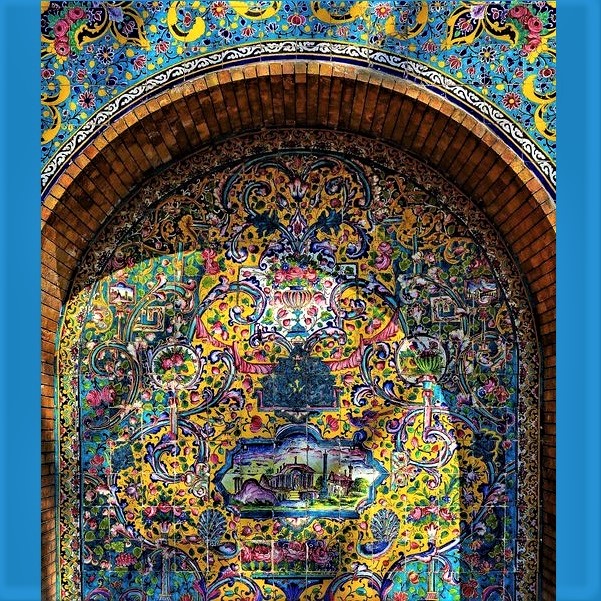 (1) Images of the day: [Left] "Frida," by UK artist Jane Perkins who creates collage/mosaic artwork from found and upcycled material. [Center] Chuck Wendig's Gentle Writing Advice (see the last item below). [Right] Golestan Palace Museum, Tehran, Iran: Sample of the mosaics.
(1) Images of the day: [Left] "Frida," by UK artist Jane Perkins who creates collage/mosaic artwork from found and upcycled material. [Center] Chuck Wendig's Gentle Writing Advice (see the last item below). [Right] Golestan Palace Museum, Tehran, Iran: Sample of the mosaics.
(2) Tonight, I watched the classic-rivalry soccer match between UCSB & Cal Poly SLO: This is mid-way through UCSB's 2023 season, with a record of 4-4-0. UCSB led 1-0 at halftime on a beautiful goal that involved 3 passes inside the box. In the second half, UCSB scored with a header on a corner kick to prevail 2-0. [Images]
(3) A capsule containing fragments of the Bennu asteroid, which has a 1 in 2700 chance of hitting Earth in 2182, will parachute onto a Utah bombing range on Sunday. The fragments may hold clues on life's origins.
(4) One-liners: Brief news headlines, happenings, memes, and other items of general interest.
- New Jersey Senator Robert Menendez charged with taking signifcant bribes in cash and gold bars.
- Math puzzle: P, I, and E are three different non-zero digits. Find the value of PIE if sqrt(PI) + E = sqrt(PIE).
- Math puzzle: What is the 0th root of 4?
- Facebook memory from Sep. 23, 2020: Many who pretend to be Christians, know little about the bible.
- Facebook memory from Sep. 23, 2018: Playing on the word "eshgh" ("love") in Persian calligraphy.
- Facebook memory from Sep. 23, 2014: Replica of Babbage's Difference Engine (Computer History Museum).
(5) Book review: Wendig, Chuck, Gentle Writing Advice: How to Be a Writer Without Destroying Yourself, unabridged 7-hour audiobook, read by Adam Verner, Penguin Audio, 2023.
[My 4-star review of this book on GoodReads]
This book, which targets both novice writers and those who have made it, can be summarized as follows: There is no one-size-fits-all process for writing. I can tell you how I do it, but that may not work for you; or even for me, on the next project. Write every day? Fine if you can do it, but it's not necessary. Write a certain number of words per day or per week? Ditto! Start with an outline? Do it if it feels natural to you.
Despite a lack of concrete advice, the humorous prose makes the book an enjoyable read/listen. There are a lot of advice lists in this domain: Top-10 essentials, 15 tips, 20 things to do, 12 things to avoid, '500 Ways to Be a Better Writer' (Wendig's own earlier book), and so on.
As a writer, you spend a lot of time writing and rewriting, but you also need to spend much time reading. It is important to relax and proceed at your own pace. Writing can be hard on a person, in terms of sheer effort and fear of failure. Taking good care of yourself and treating yourself gently are important ingredients of a successful writing career.
Advice pieces such as "avoid adverbs" are nonsense. Do not avoid anything if it adds depth or clarity. Just make sure you do not overuse adverbs, or anything else, for that matter.
I end my review with a few interesting quotes from the book:
- [W]riting is a squiggly, fiddly, wiggly thing. It's not IKEA furniture.
- If you catch yourself staring at a blank page, remember that you're not alone. It happens to all writers.
- You don't have to finish everything you start, but make sure that you finish some work.
2023/09/21 (Thursday): Presenting selected news, useful info, and oddities from around the Internet.



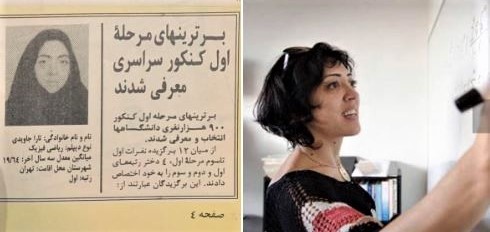
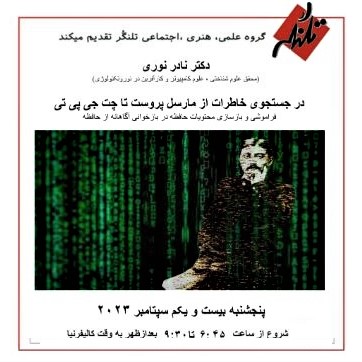 (1) Images of the day: [Top left] Mullahs love rap music, but not all rappers: Amir Tataloo is allowed to leave Iran to give a concert in Germany. Meanwhile the popular rapper Toomaj Salehi has been in prison for nearly a year and reportedly may face the death penalty. [Top center] A picture is worth 1000 words: Iranian boy looking for food in a dumpster, finds a book instead. [Top right] Evidence unearthed that Stone-Age humans built wooden structures: According to a paper published in the journal Nature, wooden logs, bearing signs of intentional modification and believed to be nearly 0.5 million years old, have been found in the banks of a river in Zambia. [Bottom left & center] Another example of Iran's brain-drain: Tara Javidi, who achieved first rank among hundreds of thousands of participants in Iran's 1993 nationwide university entrance exams, is now a distinguished engineering professor at UCSD (image credit: Dr. Pamela Karimi). [Bottom right] Talangor Group talk by Dr. Nader Noori on remembering and forgetting in the human brain (see the next item below).
(1) Images of the day: [Top left] Mullahs love rap music, but not all rappers: Amir Tataloo is allowed to leave Iran to give a concert in Germany. Meanwhile the popular rapper Toomaj Salehi has been in prison for nearly a year and reportedly may face the death penalty. [Top center] A picture is worth 1000 words: Iranian boy looking for food in a dumpster, finds a book instead. [Top right] Evidence unearthed that Stone-Age humans built wooden structures: According to a paper published in the journal Nature, wooden logs, bearing signs of intentional modification and believed to be nearly 0.5 million years old, have been found in the banks of a river in Zambia. [Bottom left & center] Another example of Iran's brain-drain: Tara Javidi, who achieved first rank among hundreds of thousands of participants in Iran's 1993 nationwide university entrance exams, is now a distinguished engineering professor at UCSD (image credit: Dr. Pamela Karimi). [Bottom right] Talangor Group talk by Dr. Nader Noori on remembering and forgetting in the human brain (see the next item below).
(2) Luiz Andre Barroso [1964-2023]: Google's inventor of the modern data center, and winner of ACM-IEEE's 2020 Eckert-Mauchly Award, dead at 59. His paper in IEEE Micro, entitled "A Brief History of Warehouse-Scale Computing," is a good overview of modern data centers and their origins. Cause of death is under investigation.
(3) One-liners: Brief news headlines, happenings, memes, and other items of general interest.
- Iran spins the prisoner swap with the US for internal consumption: "The US was brought to its knees".
- Sloan Foundation funds research on the development of IEEE Standard 754 on floating-point arithmetic.
- The 12 biggest myths, perpetuated by the rich, about why taxing the rich will cause more harm than good.
- Love and hope are renewable resources: Use them generously!
- "Oppenheimer," the movie, was factually accurate, say physicist Neil deGrasse Tyson & author Kai Bird.
- Santa Barbara's Paseo Nuevo mall to be demolished and replaced with rental units, offices, & retail space.
(4) Giving a little girl a platform vs. brainwashing her: One seven-year-old girl is writing a novel and hopes to become rich; The other one prays that her father, her brother, and herself are martyred. [1-minute video]
(5) Tonight's Talangor Group talk: Dr. Nader Noori (VP, Stealth Neurotech) offered the second part of his presentation of last week entitled "From Pavlov's Dog to Marcel Proust: Various Forms of Memory and Their Workings" [my Facebook post of last week]. This week's title was "In Search of Memories: From Marcel Proust to ChatGPT." There were ~85 attendees.
Tonight's topics included forgetting (useful & harmful varieties), the role of cues in memory recall, impact of sleep on memory reinforcement, dreams & nightmares, language learning, musical memory, and deja vu.
2023/09/20 (Wednesday): Presenting selected news, useful info, and oddities from around the Internet.
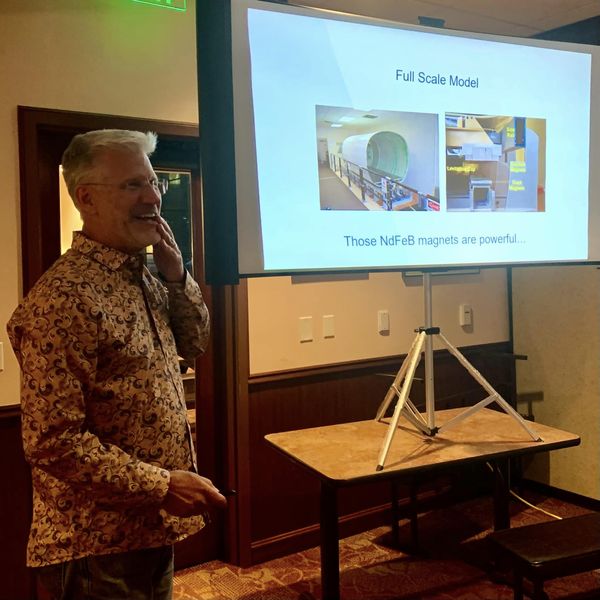

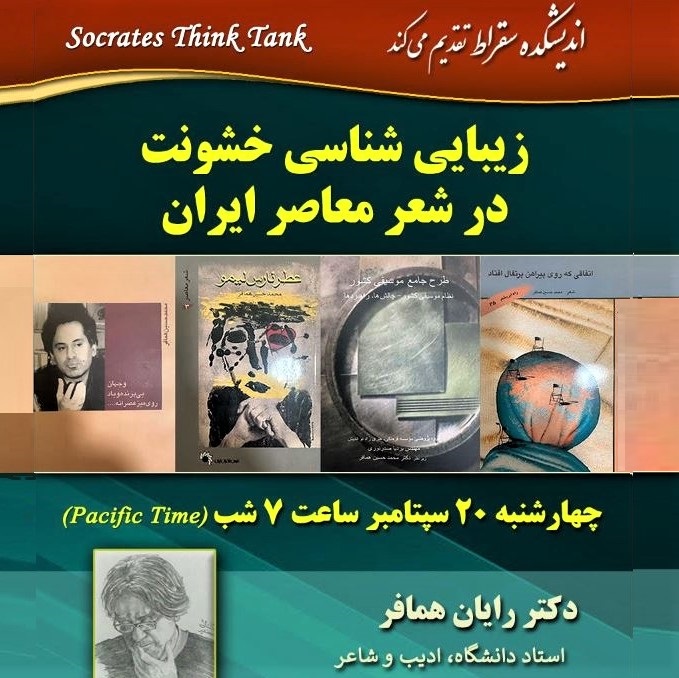 (1) Images of the day: [Left] IEEE Central Coast Section tech talk (see the next to the last item below). [Center] Farhang Foundation announces its top six Iranian short films: The in-person awards ceremony is scheduled for October 1, 2023. [Right] Socrates Think Tank talk on Persian poetry (see the last item below).
(1) Images of the day: [Left] IEEE Central Coast Section tech talk (see the next to the last item below). [Center] Farhang Foundation announces its top six Iranian short films: The in-person awards ceremony is scheduled for October 1, 2023. [Right] Socrates Think Tank talk on Persian poetry (see the last item below).
(2) Jury research: Trump attorneys are contacting potential jurors in the District of Columbia and asking them to fill out a questionnaire. This kind of "jury research" is apparently a thing for rich defendants. During this process, the defense team may come across sympathetic potential jurors, whom they will try to seat if presented as part of the jury pool. All they need is one such juror to mess up a unanimous guilty verdict. No such luxury is available to poor defendants, even if they are assigned a competent public defender. Talk about a two-tiered justice system!
(3) AI lifeguard: Cameras scan the water to detect anyone in trouble and a life-vest or raft is flown over by a drone. AI can be more-effective than a human lifeguard at both parts of this rescue operation.
x
(4) Regenerative architecture: Brazilian architectural firm Estudio Guto Requena built a concept store for the Nescafe coffee brand in Sao Paulo using 3D printing with biodegradable materials and recycled plastic.
(5) Numerous Web sites are cashing in by selling Ozempic's main ingredient, semaglutide, on the cheap as a weight-loss drug: FDA has warned against advertising the off-brand use as FDA-approved.
(6) Tonight's Socrates Think Tank talk: Dr. Ryan Homafar spoke on "Aesthetics of Violence in Contemporary Persian Poetry" (in Persian; ~130 attendees). I will present just a very brief report on this talk, given that, due to overlap with another meeting I had committed to attending, I joined Dr. Homafar's talk 30 minutes late.
The kind of violence discussed in this talk is primarily of the magnanimous kind seen in idealistic and mystic poetry, with variations that include self-flagellation, torture by the beloved's love, sacrificing the body for spiritual gain, and cruel seduction. At the end of the talk, a few references were made to poetry of armed conflict, particularly works inspired by the Iran-Iraq war and sacrifices made by devoted Iranian fighters at the front. Throughout the talk, Dr. Homafar recited poems by classical and modern Persian poets in support of the points he wanted to make. A very enjoyable talk indeed!
It was announced by the program's host that Dr. Homafar will conduct a class on Persian poetry under the auspices of Socrates Think Tank and Talangor Group.
(8) Tonight's IEEE Central Coast Section tech talk: Dr. Brad Paden (Chief Scientist & Co-Founder of LaunchPoint Electric Propulsion Solutions; UCSB Emeritus Professor of Mechanical Engineering) spoke under the title "Adventures in Mechatronics." There were 32 attendees.
The talk's focus was on the creativity and challenges associated with the invention and design of mechatronic devices. Example systems included a maglev transportation system, a guided-catheter system, an oxygen concentrator, maglev artificial hearts, high-speed switching mechanisms including an electronic engine valve, high-power-density motors, and an energy storage system, along with blue-sky ideas such as electromagnetic launch. While modeling, control and optimization are essential ingredients in mechatronic systems, the large design and application spaces of mechatronic systems compel us to place a high value on innovation at the level of system architectures. This point was illustrated throughout the talk.
2023/09/18 (Monday): Presenting selected news, useful info, and oddities from around the Internet.


 (1) Images of the day: [Left] Celebration of my latest academic promotion with the family, at my sister's. [Center] Math puzzles: Find the limit of the top expression as n tends to infinity and evaluate x in (0, pi/2) from the botton equation. [Right] Tara Kangarlou's The Heartbeat of Iran (see the last item below).
(1) Images of the day: [Left] Celebration of my latest academic promotion with the family, at my sister's. [Center] Math puzzles: Find the limit of the top expression as n tends to infinity and evaluate x in (0, pi/2) from the botton equation. [Right] Tara Kangarlou's The Heartbeat of Iran (see the last item below).
(2) Irony of ironies: Sanctioned Iranian President Ebrahim Raisi, complicit in mass murders of political prisoners as a member of a death panel, arrives in New York on a plane belonging to a sanctioned Iranian airliner and will be protected by the US Secret Service while in the US.
(3) Iran's totalitarian regime uses a shiny object to distract: Concurrent with the anniversary of #MahsaAmini's murder by the morality police and the release of US hostages in return for freeing $6 billion in frozen assets, Cristiano Ronaldo visits Iran at the invitation of the mullah's regime. Apparently, Iranians are easily distracted!
(4) One-liners: Brief news headlines, happenings, memes, and other items of general interest.
- Canadian PM Justin Trudeau accuses the government of India of killing a Sikh leader on Canadian soil.
- Let me show you what self-confidence looks like! [Video clip]
- Facebook memory from Sep. 18, 2020: My poetic tribute to Ruth Bader Ginsburg [1933-2020]
- Facebook memory from Sep. 18, 2016: Vietnam rice fields as nature's painting.
(5) Book review: Kangarlou, Tara, The Heartbeat of Iran: Real Voices of a Country and Its People, Ig Publishing, 2021.
[My 4-star review of this book on GoodReads]
The story of Iran tends to be told as the interaction between the oppressors and the oppressed, but ordinary Iranians lead lives that are predominantly occupied by family ties, love, career concerns, music, food, and many other human needs. Yes, oppression is a big part of the picture, but it isn't everything.
Iranian-American journalist Tara Kangarlou set out to portray ordinary Iranians, not those who govern them. Using stories from 24 individuals, chosen to represent Iran's diverse population in terms of ethnicity, religion, profession, gender identity, and more, Kangarlou succeeds in depicting Iranians as having the same hopes and aspirations as people in other countries and thus sharing a lot in common with those labeled as "enemies" by the ruling mullahs.
Of course, a country of 83 million cannot be profiled in only 24 lives, but even this limited profile presents a refreshingly different image of Iran than we see in books focusing primarily on the ruling class, religious fanatics, or the theocratic system. In the rest of this review, I discuss my impressions of four of the 24 chapters, two of them in some detail and two others rather briefly.
Chapter 5, Rabbi Harav Yehuda Gerami: The young leader of the Abrishami Synagogue appears cautious in his remarks. After all, unlike a few others on the list, his full name and position are spelled out in the book. He aspires "to keep alive a centuries-old religious tradition that allows Iranian Jews to practice their faith to its fullest within the borders of their homeland." It is because of statements such as the above that the author may have felt compelled to include a disclaimer at the end of the chapter, characterizing the young rabbi's musings as a story about one person and his family, adding that persecuting individuals based on their faith is an evil act that should always be condemned. Rabbi Gerami takes pride in being the only academically trained rabbi in Iran. His beliefs and aims are more contemporary than typical Jewish leaders who are hakhams (Torah scholars). He relates that he never felt any prejudice against his Jewish community or when he was a public-school student. He dismisses incidents of harassment to naughty children and kids-just-being-kids. He maintains that Iranian Jews are allowed to take the religious pilgrimage to Israel, apparently closing his eyes to the fact that numerous Jews have been tried as Israeli spies, simply because they had traveled to Israel. He cites the presence of 25,000 Jews in Iran as "a sign that Jewish people can live freely in the country," ignoring the damning number of 55,000 Jews estimated to have left Iran in the Revolution's wake.
Chapter 8, Mina: Being identified only by her first name is a sign that this woman's story is likely damaging to the Islamic Republic. At age 12, Mina was forced to marry a 30-year-old man, an event she considers tantamount to being killed. Mina wasn't allowed to go to school, even before she got married. At 14 and 18, she gave birth to two sons, and at 19, she lost her husband in a car accident. Getting remarried would have likely meant giving up her two sons, so, she decided to endure hardships to raise her sons and allow them to get educated. She eventually found a job at an army hospital, spending part of the Iran-Iraq War years working in hospitals near the front. Even with a permanent job, survival wasn't easy, because she paid up to 80% of her income for rent. Her two sons never went to college, as she had hoped, but she is happy that they are healthy and hold good jobs. For every Mina, who, through sheer determination and some luck, makes it through life as a child bride, there are numerous others who lead miserable lives. Imagine a woman, who has not experienced a normal childhood, trying to raise normal, healthy kids, without any safety net. Child marriages are not banned in Iran. They are in fact encouraged and enshrined in the country's laws. In the US, child marriages are frowned upon, but due to exceptions and local customs, a quarter-million children, some as young as 12, were married during the 2000s.
Chapter 17, Amir Saneei: A soldier/teacher, from a family with several generations of teachers, is paid the equivalent of $7.00 per month. As a kid, Amir was conflicted about chanting "Death to America" and "Death to Israel," given his parents' lesson "To love all and not say bad things about anyone." Despite the measly compensation, Amir works with dedication, cultivating the confidence that he can help any student, regardless of the circumstances.
Chapter 24, Taraneh Aram: A transgender woman, born Amir, adopted her first and last names after sex-change surgery at 22. Amir's mother working as a nurse in a fancy private hospital allowed him to realize his plans. Somewhat surprisingly, Iran does provide support to transgender people, mainly because they are deemed sick. This advocate for the LGBTQ community is judged by both men and women as half-woman, because she can't give birth.
Inclusion of brief biographies of the 24 individuals, at the beginning of the chapters or as sidebars, would have been helpful in providing the reader with a roadmap and a sense of why a particular individual was chosen for inclusion. In the current format, one does not learn about the specifics of some individuals until several pages into the chapter.
2023/09/17 (Sunday): Presenting selected news, useful info, and oddities from around the Internet.
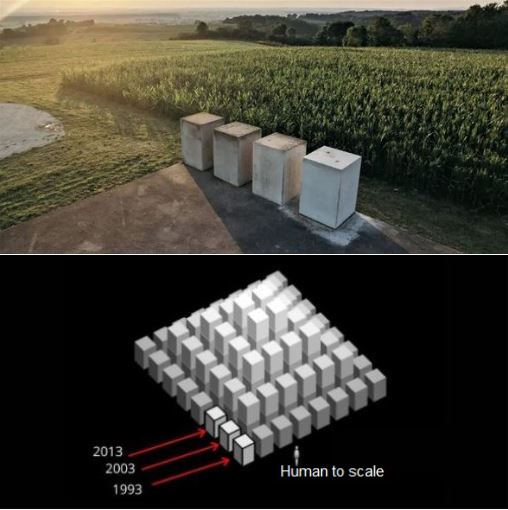
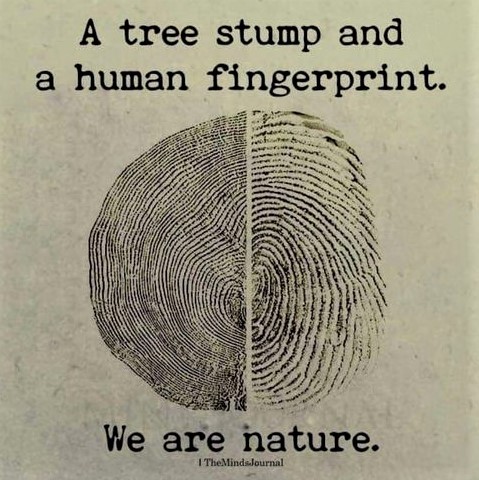
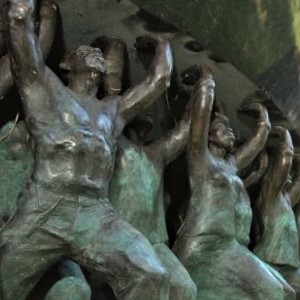 (1) Images of the day: [Left] A sculpture that will be completed in the year 3183: Currently, this work-in-progress in the German town of Wemding consists of four large concrete blocks. Titled "Time Pyramid," the sculpture, which will be 24 feet (7+ meters) tall upon completion, was started by Manfred Laber in 1993, with plans to add a new concrete block every decade. [Center] Our amazing nature: Rings in a tree stump resemble ridges in a fingerprint. [Right] US research enterprise and slave labor (see the last item below).
(1) Images of the day: [Left] A sculpture that will be completed in the year 3183: Currently, this work-in-progress in the German town of Wemding consists of four large concrete blocks. Titled "Time Pyramid," the sculpture, which will be 24 feet (7+ meters) tall upon completion, was started by Manfred Laber in 1993, with plans to add a new concrete block every decade. [Center] Our amazing nature: Rings in a tree stump resemble ridges in a fingerprint. [Right] US research enterprise and slave labor (see the last item below).
(2) The multi-tier justice system in the US: Yes, our justice system has many tiers, but not in the way that Donald Trump and his cronies claim (they maintain that Trump is treated more harshly than other criminal defendants). Any other defendant violating court orders on what he can and cannot do while out on bail would have been incarcerated by now. A petty criminal who passed off a fake $20 bill was essentially executed by a cop within minutes of committing his crime; no trial, no defense, no jury, nothing. The justice system keeps threatening Trump with consequences if he continues his foul talk about witnesses, jury members, prosecutors, and judges, in much the same way a parent might threaten a misbehaving child, without any intention of following through with the threats.
(3) One-liners: Brief news headlines, happenings, memes, and other items of general interest.
- Russia's invasion of Ukraine has produced half a million deaths, counting losses on both sides. [CBS News]
- Iran: A dozen policemen in full riot gear surround an unarmed woman protester sitting on the ground.
- Iran wants to erect a digital wall: Researchers increasingly isolated as Internet access becomes restricted.
- Songbird species that display complex vocal learning are better problem-solvers and have larger brains.
- Math puzzle: Find all solutions to x^y = y^x, where x is not equal to y. [Example: 2^4 = 4^2]
- I hate it that we are giving positions of power to very old people, but do compare 46 & 45 in these photos.
(4) The amazing Statue of Liberty: This 10-minute video shows design and construction details. I climbed all the way to the head of the Statue in the 1970s. Now, doing so requires making a reservation weeks or even months in advance. Most visitors climb to the top of the pedestal, where there is an observation deck.
(5) Slave labor at US research universities: This is a controversial topic, so please bear with me as I introduce the problem and leave details to future posts. One of the benefits of achieving the highest academic rank is that you can discuss controversial topics and offer harsh criticisms, without fear of reprisals.
Graduate students are used and abused in the research enterprise. Saying that they learn valuable skills that make them more-attractive to the academic and industrial job markets, while partially true, is akin to saying that slaves benefited from job-training & skills acquisition. The situation might have been tolerable if students were treated in a friendly, compassionate manner by professors, but, in many cases, professors with research funding pit students against each other in disbursing the relatively small number of fully-paid research positions. Increasingly, undergrads are also being used in unpaid research roles, essentially mimicking within the university the corporate abuse of unpaid internship positions.
Slave labor isn't limited to students but extends to less-prestigious academic ranks such as adjunct faculty positions. When the hours spent on lesson preparation and grading are factored in, many adjunct faculty members are paid close to minimum wage.
2023/09/16 (Saturday): Presenting selected news, useful info, and oddities from around the Internet.


 (1) Images of the day: First anniversary of Mahsa Amini's brutal murder (see the next two items below).
(1) Images of the day: First anniversary of Mahsa Amini's brutal murder (see the next two items below).
(2) Today is the first anniversary of #MahsaAmini's death while in the custody of Iran's morality police: Her death sparked an uprising, some would say a revolution, that frightened the mullahs into killing hundreds of protesters, arresting thousands, and blocking/throttling the Internet. Amini's parents have invited Iranians to join them in celebrating the life of "Iran's Daughter." The government has established a security perimeter, using armored vehicles, around her family home and the cemetery where she is buried. Widespread protests in Iran and cities around the world are planned. #WomanLifeFreedom
(3) "Woman, Life, Freedom: A Retrospective": This was the title of today's webinar with Marjane Satrapi, author of the graphic novel Persepolis, and Abbas Milani, Director of Stanford University's Iranian Studies Program. The discussion was moderated by Sima Sabet. Satrapi talked about her new graphic history of Iran's #WomanLifeFreedom movement and the effort she led to offer free downloads of the Persian translation of the book, Femme, Vie, Liberte. Milani provided historical context for this latest movement of Iranian women that has earned the world's respect and support. [105-minute recording of the webinar]
(4) One-liners: Brief news headlines, happenings, memes, and other items of general interest.
- The story of Iran's #MahsaAmini uprising, as told by its iconic images/videos. #WomanLifeFreedom
- Rana Mansour's touching rendition of the English version of Shervin Hajipour's Grammy-winning "Bara-ye."
- California sues Big Oil Companies, citing decades of deception on the subject of climate change.
- "May Iran Never Grieve": A musical performance featuring the voices of Mina Deris and Maliheh Moradi.
- Iranian scientist Paniez Peykari's 18-minute TED-style talk on the universe, its past, and its future.
- Baratunde Thurston's 17-minute TED talk: "How to Deconstruct Racism, One Headline at a Time"
- A cemetery in Los Angeles, California, where many old-time Iranian singers are buried. [5-minute video]
- Furniture used to last generations. Now it barely survives a move. What happened?
- Family gathering in Ventura, California, for the second night of Rosh Hashanah. [Photos]
- Joke of the day: (Q) Are five followers a lot? (A) On social media, no; in a dark alley, yes!
(5) Quote of the day: "Make your daughter so capable that you don't have to worry about whether or not she gets married. Instead of saving money for her wedding day, spend it on her education and, most importantly, prepare her for herself, not for marriage. Teach her self-love and confidence." ~ Anonymous
(6) Little Scandinavia: South Carolina has an area with the tiny towns of Denmark, Sweden, Norway, and Finland. These names did not arise from Scandinavian settlers moving there. It all started with Denmark, which was named in the 1800s to honor Captain Isadore Denmark, an official with one of the railroad companies working there. As the railroad line was extended up towards Columbia, communities were named in order to fit with the "Scandinavian" naming theme. The towns are too tiny to appear on regular maps. Now you know!
2023/09/15 (Friday): Presenting selected news, useful info, and oddities from around the Internet.


 (1) Images of the day: [Left & Center] Happy Rosh Hashanah to all who celebrate the Jewish New-Year festival: The new Hebrew calendar year 5784 will start tomorrow and, like all Jewish holidays, is celebrated beginning with the night before. Observance of Rosh Hashanah involves eating several kinds of fruits and vegetables; apple dipped in honey represents sweetness and pomegranate signifies fruitfulness. [Right] Manhattan's new Perelman Performing Arts Center: Located next to One World Trade Center, the new NYC cultural site houses three theaters that can be rearranged in 60 different ways. Its translucent exterior glows amber in the evening, as chandeliers cast the silhouettes of theatergoers onto its surface.
(1) Images of the day: [Left & Center] Happy Rosh Hashanah to all who celebrate the Jewish New-Year festival: The new Hebrew calendar year 5784 will start tomorrow and, like all Jewish holidays, is celebrated beginning with the night before. Observance of Rosh Hashanah involves eating several kinds of fruits and vegetables; apple dipped in honey represents sweetness and pomegranate signifies fruitfulness. [Right] Manhattan's new Perelman Performing Arts Center: Located next to One World Trade Center, the new NYC cultural site houses three theaters that can be rearranged in 60 different ways. Its translucent exterior glows amber in the evening, as chandeliers cast the silhouettes of theatergoers onto its surface.
(2) An interesting 63-minute interview (in Persian) with Dr. Narjess Afzaly, an outstanding computer scientist who left Iran and now lives in Australia, about her experiences in and connections with mathematics. To see many more such interviews, you can subscribe to Dr. Amir Asghari's YouTube channel.
(3) Quote of the day: "We will always have STEM with us. Some things will drop out of the public eye and go away, but there will always be science, engineering, and technology. And there will always, always be mathematics." ~ African-American mathematician Katherine Johnson
(4) One-liners: Brief news headlines, happenings, memes, and other items of general interest.
- Death toll of Libya's catastrophic flooding surpasses 11,000, with roughly the same number still missing.
- United Auto Workers starts strikes against all Big Three automakers for the first time in history.
- Say her name: #MahsaAmini, a vibrant swimming coach who wanted to become a doctor.
- NASA appoints a research director to lead a scientifically rigorous study of UFO reports.
(5) According to Republicans, Democrats are at fault for US budget deficits: But of our $30.9 trillion national debt, $7.8 trillion (one quarter) was amassed during Trump's presidency. So, the GOP wants us to feel guilty for the huge debt and agree to pay some of it back from cuts in Social Security and Medicare. Give me a break!
(6) The CIA spy Tony Mendez, the protagonist of the movie "Argo," was actually accompanied by a second spy, Ed Johnson, a linguist, whose identity had not been revealed until now.
(7) Quaternions: Numbers of the form a + ib + jc + kd, where a is the real component and b, c, d are the imaginary parts, were devised in 1843 by Irish mathematician Sir William Rowan Hamilton as extensions of complex numbers a + ib. Quaternions are often used in graphics programming as compact representations of 3D rotations and offer some advantages over matrices. The article "Quaternions in Signal and Image Processing: A Comprehensive and Objective Overview," published in the September 2023 issue of IEEE Signal Processing magazine is a good starting point for learning about quaternions and their applications.
(8) Minimal prime numbers: If in the decimal representation of a prime number we can cross out some digits to form another prime number, then we call the original number a non-minimal prime. For example, 593 is a non-minimal prime, because crossing out the digit 9 yields the prime number 53. In a minimal prime, no shortened version of the number is a prime. Jeffrey Shallit showed in 2000 that there are exactly 26 minimal primes, the largest one being 66600049. Similarly, there are only 32 minimal composite numbers, with 731 being the largest, such that crossing out any digit of the number leaves a prime number.
2023/09/14 (Thursday): Presenting selected news, useful info, and oddities from around the Internet.


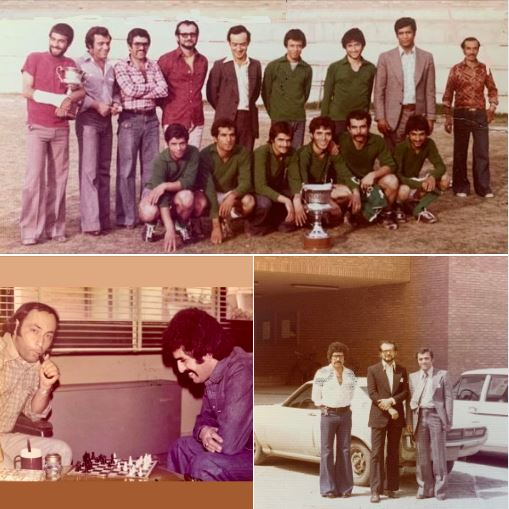
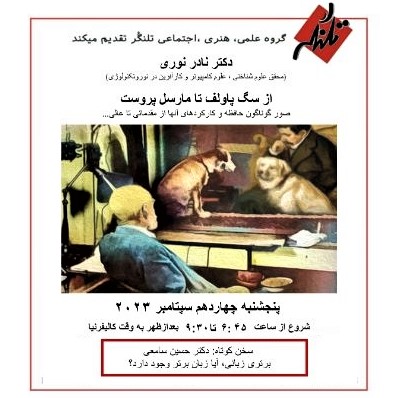
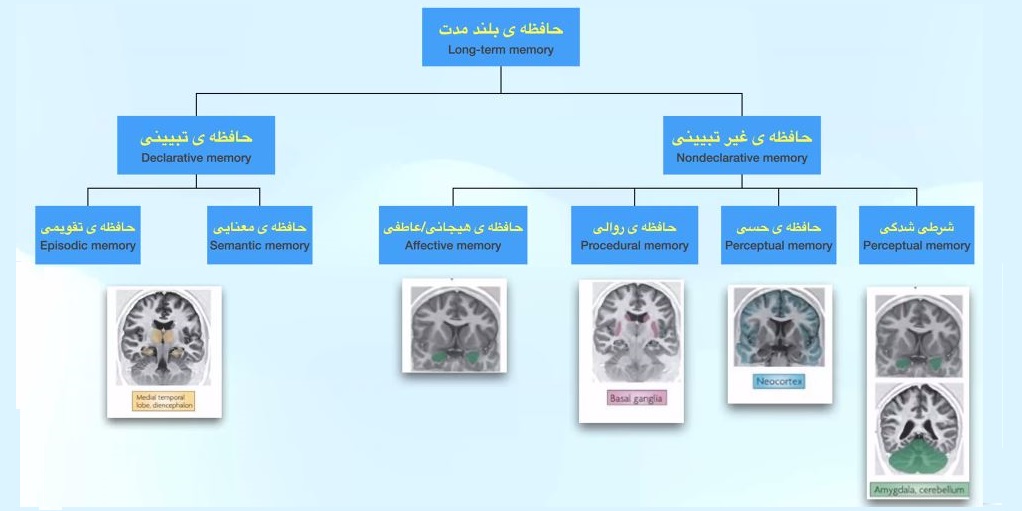 (1) Images of the day: [Top left] Walking on a gloomy/windy Wed. afternoon around Goleta's Coal Oil Point Reserve. The Devereux Slough is nearly dry, a harbinger of the fire season being upon us (1-minute video). [Top center] Throwback Thursday: View of Ku Klux Klan parade on Pennsylvania Ave., Washington, DC, 1926. [Top right] Photos from my days at Arya-Mehr/Sharif University of Technology (see the next item below). [Bottom row] Talangor Group talk by Dr. Nader Noori on memory and its workings (see the last item below).
(1) Images of the day: [Top left] Walking on a gloomy/windy Wed. afternoon around Goleta's Coal Oil Point Reserve. The Devereux Slough is nearly dry, a harbinger of the fire season being upon us (1-minute video). [Top center] Throwback Thursday: View of Ku Klux Klan parade on Pennsylvania Ave., Washington, DC, 1926. [Top right] Photos from my days at Arya-Mehr/Sharif University of Technology (see the next item below). [Bottom row] Talangor Group talk by Dr. Nader Noori on memory and its workings (see the last item below).
(2) Me & math: An 89-minute interview, in Persian, on "People & Mathematics" site (run by Dr. Amir Asghari), with a focus on how my life & career have been intertwined with math. Because the interview occurred with little preparation and no rehearsals, a few inaccuracies slipped in. For example, I used the term "perfect graphs" where I meant "complete graphs." None of the errors is serious enough to affect the interview's overall authenticity.
(3) Throwback Thursday: The first photographs of Iran taken during 1848-1858 by Colonel Luigi Pesce, who was in charge of training Iran's new infantry troops up to the Italian standard. [24-minute slide show]
(4) One-liners: Brief news headlines, happenings, memes, and other items of general interest.
- The 2024 US presidential race will be dominated by competing criminal trials of Donald Trump &Hunter Biden.
- Iran, the ammunitions highway during World War II (12-minute documentary film, narrated in Persian).
- Two physicists and a neuroscientist carry on an interesting discussion on free will. [10-minute video]
- Mr. Haloo recites his poem about a stolen donkey, with everyone blamed for the loss, except the thief!
(5) Tonight's Talangor Group talk: Dr. Nader Noori (VP, Stealth Neurotech) spoke under the title "From Pavlov's Dog to Marcel Proust: Various Forms of Memory and Their Workings." There were ~75 attendees.
The main talk was preceded by the short presentation "Is There a Superior Language?" in which Dr. Hossein Samei talked about the age-old human tendency to compare languages with regard to usefulness, completeness, and expressive power. Linguistically, there is no basis for rank-ordering different languages, and each language must be viewed as the best communication tool within the culture where it was developed. Unfortunately, nearly all claims of linguistic superiority are driven by vanity, xenophobia, and exploitation. Since short presentations do not come with a Q&A period, I posted the following comment on the meeting chat: "But we can say that a particular language is more developed or more expressive in a particular domain of discourse, such as science."
Pavlov's dog refers to a famous experiment on dogs, where a bell is rung before providing a dog with food. The dog then learns to associate the sound of the bell with food, thus starting to salivate after the bell rings and before actual food is supplied. According to the behaviorist theory, organisms are active in producing memory phenomena, rather than doing so passively. This contrasts with the now prevalent cognitive tradition of memory research in which the use of strategies is avoided, with an alternative approach that may incorporate internal structures.
Memory has two separate mechanisms for short durations and long durations. There are people with brain damage who do well in remembering in the short term but not in the long term. Other topics discussed by Dr. Noori are affective (emotional) memory, which plays a key role in our decision-making, motor memory, declarative memory, & face-recognition memory (with its dysfunction known as Prospognobsia). Interestingly, reading and writing rely on two different memory mechanisms (sensing vs. motor).
Learning and memory are broad and widely-studied topics with tons of research results. A second session is planned for continuing the discussion, when Dr. Noori will also deal with the important subject of forgetting.
2023/09/13 (Wednesday): Presenting selected news, useful info, and oddities from around the Internet.
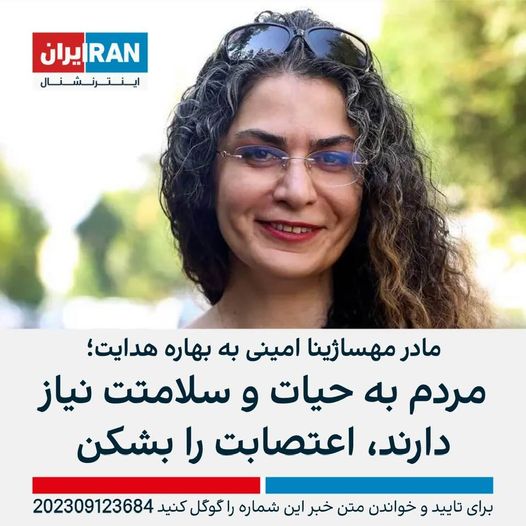

 (1) Images of the day: [Left] At the urging of other activists, Iranian political prisoner Bahareh Hedayat ends her hunger strike after hospitalization. [Center] UCLA's new Dean of Engineering is Ah-Hyung "Alissa" Park. [Right] The face and name of #MahsaAmini have become symbols of Iranian women's determination to claim their rights as well as the rights of Iranian men. Say her name! Display her face!
(1) Images of the day: [Left] At the urging of other activists, Iranian political prisoner Bahareh Hedayat ends her hunger strike after hospitalization. [Center] UCLA's new Dean of Engineering is Ah-Hyung "Alissa" Park. [Right] The face and name of #MahsaAmini have become symbols of Iranian women's determination to claim their rights as well as the rights of Iranian men. Say her name! Display her face!
(2) Putin defends Trump and criticizes the "rotten" American state's legal system. Sure, the best system of Justice uses poisoning, pushing out of high-rise windows, and exploding airplanes to take care of business.
(3) Quote of the day: "We will always have STEM with us. Some things will drop out of the public eye and go away, but there will always be science, engineering, and technology. And there will always, always be mathematics." ~ African-American mathematician Katherine Johnson
(4) One-liners: Brief news headlines, happenings, memes, and other items of general interest.
- Casualties of catastrophic flooding in Libya have tripled to 6000: A further doubling is quite possible.
- Mitt Romney to retire: Another Republican exits the US Congress rather than fight the hijacking of his party.
- Hats off to the resilient Iranian youth who still dance on the streets and sing about love. [2-minute video]
- Fascinating GIF art by Frederic Vayssouze-Faure. He has a lot more on Tumblr.
- Stop hate. We need love and unity. [1-minute video]
- Victor De Martrin musical animation has a marble hitting xylophone bars to create the Mario Bros theme.
(5) The road turned, but Iran didn't: Fired university professors Mohammad Fazeli (sociologist), Arash Raisi-Nejad (international relations expert), and Farhad Nili (economist) give a 26-minute joint presentation, in Persian, about how Iran went from being a center of commerce along the Silk Road to a totally isolated country. It failed to adapt to changes, when overland trade routes were replaced by the much-cheaper sea lanes of the Indian & Atlantic Oceans.
(6) Quote of the day: "Mathematics may be defined as the subject in which we never know what we are talking about, nor whether what we are saying is true." ~ British philosopher Bertrand Russell
(7) On the tradition of a woman taking her husband's last name: Among women in opposite-sex marriages in the United States, four in five changed their names, according to a new survey by Pew Research Center. The practice is most-common among conservative Republican women (90%) and least-common among liberal Democrats and those with post-graduate degrees (about 2 in 3).
(8) Biden administration's R&D priorities for the 2025 budget request:
The 4-page document dated August 17, 2023, specifies seven broad categories.
*Advancing trustworthy artificial intelligence technology
*Leading the world in maintaining global security & stability
*Stepping up to the global challenge posed by the climate crisis
*Achieving better health outcomes for every person
*Reducing barriers and inequities
*Bolstering innovation to build economic competitiveness
*Strengthening & advancing America's unparalleled research
2023/09/12 (Tuesday): Presenting selected news, useful info, and oddities from around the Internet.
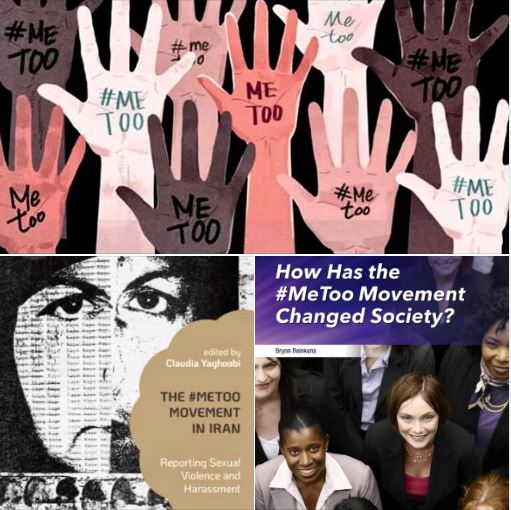

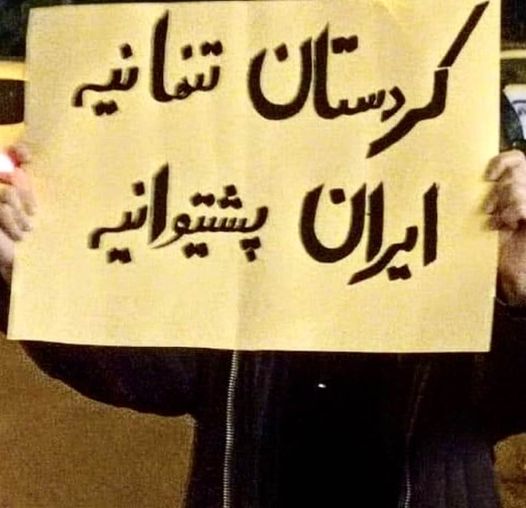 (1) Images of the day: [Left] Book introductions: The #MeToo Movement in Iran, edited by UNC's Dr. Claudia Yaghoobi, surveys the Iranian MeToo activism and places it in the broader Middle East context. The relatively short book How Has the #MeToo Movement Changed Society? by Brynn Reinkens reflects on the MeToo movement in the US and how it has given rise to solidarity, awareness, and accountability in our society. [Center] Vacation for ordinary people vs. academics. [Right] In the lead-up to the anniversary of Mahsa Amini's murder, this sign carried by a protester says: "Kurdistan isn't alone, the entire Iran has its back."
(1) Images of the day: [Left] Book introductions: The #MeToo Movement in Iran, edited by UNC's Dr. Claudia Yaghoobi, surveys the Iranian MeToo activism and places it in the broader Middle East context. The relatively short book How Has the #MeToo Movement Changed Society? by Brynn Reinkens reflects on the MeToo movement in the US and how it has given rise to solidarity, awareness, and accountability in our society. [Center] Vacation for ordinary people vs. academics. [Right] In the lead-up to the anniversary of Mahsa Amini's murder, this sign carried by a protester says: "Kurdistan isn't alone, the entire Iran has its back."
(2) Disasters in North Africa: A total of 5000 are believed dead and thousands are still missing in catastrophic flooding in Libya which broke dams and in a 6.8-magnitude earthquake in Morocco.
(3) Exponential factorials: The notation n! represents the product n*(n – 1)* ... *2*1. Similarly, n$, the exponential factorial, stands for n^(n – 1)^ ... ^2^1, where by convention, the expression is evaluated from right to left. The exponential factorial n$ grows a whole lot faster than the product factorial n! (for example, 5! is 120, whereas 5$ is a number with 180,000 digits).
(4) One-liners: Brief news headlines, happenings, memes, and other items of general interest.
- House Speaker Kevin McCarthy orders impeachment inquiry into Biden amid pressure from hard-liners.
- Forced marriage in Pakistan: Watch and weep at the level of human brutality. [1-minute video]
- Two large wine reservoirs broke in Portugal, sending a river of red wine to the streets.
- Facebook memory from Sep. 12, 2017: One of the few times I responded to a Donald Trump tweet.
(5) Female college students widely outnumber men: Combined with the fact that men drop out of college at higher rates than women, the college-educated workforce will continue to be mostly female.
(6) Mathematicians find 12,000 solutions for the surprisingly-tough 3-body problem: The question of how 3 objects can form stable orbits around each other has troubled mathematicians for more than 300 years, but now researchers have found a record 12,000 orbital arrangements permitted by Newton's laws of motion.
(7) Global smartening more dangerous than global warming: We humans may be wiped out by the results of global warming in a century or so, but an even more-immediate danger is unanticipated consequences of smart devices and algorithms taking over our daily lives. Just as in global warming, we have, and should strive not to miss, a window of opportunity to prevent damage from an out-of-control global smartening process.
The risks of AI are well-known and calls for ethical-AI and responsible-AI are proliferating. What's unique about AI is that the calls for caution are coming from AI researchers and developers, not from social scientists. As in any other new technology, those who discuss the social aspects of AI systems fall into two categories.
AI optimists see opportunities for improving the human condition and removing a host of social ills, from poverty to educational challenges. AI pessimists see hazards such as alienation and the widening of opportunity & wealth gaps, stoking the fear that whoever controls the AI will control citizens and institutions, leading to authoritarian rule. Most participants fall between the extremes and are thus assuming a wait-and-see attitude.
While we may consider the pessimistic view an extreme position that will rob us of opportunities to reap the benefits of AI, we must consider that even a small chance of these fears materializing is enough for us to jump into action. Would you board a plane that has a 1-in-20 a-priori chance of crashing on the account that it is 19 times more probable for you to complete your flight and enjoy whatever you planned to do at the destination?
2023/09/11 (Monday): Presenting selected news, useful info, and oddities from around the Internet.


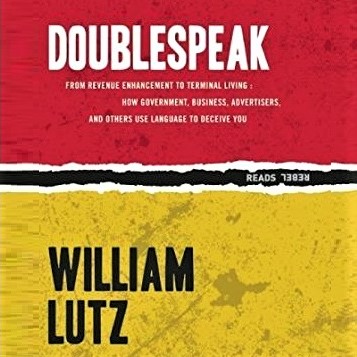 (1) Images of the day: [Left] The 22nd anniversary of the 9/11 terrorist attacks on the US: Remembering and honoring the victims of the brutal Al Qaeda terrorists remains important, particularly at this time of widespread conspiracy theories and denial of the role played by the government of Saudi Arabia in assisting the terrorists. [Center] Math oddity (see the next item below). [Right] William Lutz's Doublespeak (see the last item below).
(1) Images of the day: [Left] The 22nd anniversary of the 9/11 terrorist attacks on the US: Remembering and honoring the victims of the brutal Al Qaeda terrorists remains important, particularly at this time of widespread conspiracy theories and denial of the role played by the government of Saudi Arabia in assisting the terrorists. [Center] Math oddity (see the next item below). [Right] William Lutz's Doublespeak (see the last item below).
(2) Ramanujan summation: The following proof that 1 + 2 + 3 + 4 + 5 + ... = –1/12 was found in one of the notebooks of the Indian math prodigy Srinivasa Ramanujan.
c = 1 + 2 + 3 + 4 + 5 + 6 + ...
4c = 4 + 8 + 12 + ...
–3c = c – 4c = 1 – 2 + 3 – 4 + 5 – 6 + ... = 1/(1 + 1)^2 = 1/4
c = –1/12
That something is wrong with the reasoning above became known much later, when more rigorous math was developed. Meanwhile, this absurd summation has found applications in physics, particularly in string theory.
(3) One-liners: Brief news headlines, happenings, memes, and other items of general interest.
- Los Angeles Times op-ed by author Roya Hakakian about her immigrant father's reaction to 9/11.
- Another disaster in north Africa: Hundreds dead in Libya flooding, but officials fear it could be thousands.
- Hats off to Jon Stewart, who fought tirelessly to get 9/11 responders the benefits & respect they deserve.
- Bed Bath & Beyond is back from the dead: I've received 4 e-mails from the bankrupt company in 2 days.
(4) Book review: Lutz, William, Doublespeak—From Revenue Enhancement to Terminal Living: How Government, Business, Advertisers, and Others Use Language to Deceive Us, Ig Publishing, 2nd edition, 2015.
[My 4-star review of this book on GoodReads]
I really enjoyed reading this unique book on the subject of doublespeak and learned a great deal from it. At its worst, doublespeak, like George Orwell's "Newspeak" in 1984, is a language designed to limit thought. At its best, doublespeak is inflated language that gives importance to the mundane. Doublespeak isn't just an annoyance: It can be deadly. When defective cars are recalled, the language used may not convey adequately that the defect could be fatal and thus must be fixed promptly. Ford once announced that the rear axle bearings of Torino and Mercury Montago cars "can deteriorate" and that continued driving can "adversely affect vehicle control." It is quite possible that some recipients of this notice did not take their cars to be fixed, thinking that the problem was noncritical.
Lutz divides doublespeak into the four categories of euphemism, jargon, gobbledygook, and inflated language.
- Euphemism: An inoffensive or positive word or phrase used to avoid a harsh, unpleasant, or distasteful reality, such as the US State Dept.'s use of "unlawful or arbitrary deprivation of life" in lieu of "killing." This kind of doublespeak should not be confused with tactfulness/sensitivity, such as when we use "passed away" for "died."
- Jargon: A verbal shorthand that when used properly can lead to precision and communication efficiency. But using "organoleptic analysis" for "smelling" reeks (pun intended) of doublespeak.
- Gobbledygook: Piling on words to confuse or overwhelm the audience. Here is an example from the then US Senator Dan Quayle: "Why wouldn't an enhanced deterrent, a more stable peace, a better prospect to denying the ones who enter conflict in the first place to have a reduction of offensive systems and an introduction to defensive capability?" Alan Greenspan is also masterful in creating such "word salads."
- Inflated language: Making the ordinary sound extraordinary. Examples include calling a car mechanic "automotive internist" and elevator operators "vertical transportation corps."
In the preface to the 2015 edition, Lutz notes a marked increase in the use of doublespeak: "Doublespeak that once prompted disbelief or in some cases outrage now passes unnoticed and without comment. Doublespeak has become part of the working vocabulary of public discourse.
Politicians are fond of doublespeak. Here's a striking example from US President Ronald Reagan: "I will not stand by and see those of you who are dependent on Social Security deprived of the benefits you've worked so hard to earn." This statement was interpreted by the public as Reagan being opposed to cuts in Social Security benefits. However, later clarification from the White House revealed that Reagan had chosen his words very carefully. He was reserving the rights to judge who was "dependent" on Social Security and who had "earned" the benefits.
Another major offender is the government. Thousands of people are killed in misdirected drone strikes. The countless children or entire wedding parties killed are referred to as "collateral damage." Similarly, we do not torture but use "enhanced interrogation techniques." Government support for religion is camouflaged as "faith-based initiatives" and helping the rich by reducing or eliminating estate taxes is sold to the public as reforming the deplorable "death tax."
The book is replete with examples of doublespeak in different domains, as evident from its chapter titles, listed below. Following the nine chapters, there are three appendices: "Quarterly Review of Doublespeak," "Recipients of Doublespeak Award," and "Recipients of the George Orwell Award for Distinguished Contributions to Honesty and Clarity in Public Language."
- Involuntary conversions, preemptive counterattacks, and incomplete successes: The world of doublespeak
- Therapeutic misadventures, the economically nonaffluent, and deep-chilled chicken: The doublespeak of everyday living
- Virgin vinyl, real counterfeit diamonds, & genuine imitation leather: With these words I can sell you anything
- Negative deficits and the elimination of redundancies in the human resources area: Business communication, sort of
- Protein spills, vehicle appearance specialists, and earth-engaging equipment: Doublespeak around the world
- Predawn vertical insertion and hexiform rotatable surface compression units: The Pentagon word machine grinds on
- Nothing in life is certain except negative patient care outcome and revenue enhancement: Your government at work
- Winnable nuclear wars and energetic disassemblies: Nuclear doublespeak
Everyone should read this book. You will learn a lot and either smile or cringe as you read some of the more-preposterous examples. Comedian George Carlin had a super-funny routine about words & phrases that help hide the truth, apparently taking many of his examples from this book.
2023/09/10 (Sunday): Presenting selected news, useful info, and oddities from around the Internet.





 (1) Images of the day: [Top left] Twin primes and Brun's Constant (~1.9022): The infinite sum of the reciprocals of twin primes (pairs of prime numbers that differ by 2), that is, 3 & 5, 5 & 7, 11 & 13, ... , is approximately 1.9022. Viggo Brun tried to use this summation as a way of showing that there are infinitely many twin primes and was surprised when the sum proved finite. Of course, this finiteness does not prove that there are only a finite number of twin primes. [Top center] Happy Grandparents' Day to all those who are blessed with grandkids: "The best baby-sitters, of course, are the baby's grandparents. You feel completely comfortable entrusting your baby to them for long periods, which is why most grandparents flee to Florida." ~ Humorist Dave Barry [Top right] Etienne S. Benson's Surroundings: A History of Environments and Environmentalisms (see the last item below). [Bottom row] Saturday's stroll in Ventura Harbor Village to see a smallish street-painting festival and arts/crafts show.
(1) Images of the day: [Top left] Twin primes and Brun's Constant (~1.9022): The infinite sum of the reciprocals of twin primes (pairs of prime numbers that differ by 2), that is, 3 & 5, 5 & 7, 11 & 13, ... , is approximately 1.9022. Viggo Brun tried to use this summation as a way of showing that there are infinitely many twin primes and was surprised when the sum proved finite. Of course, this finiteness does not prove that there are only a finite number of twin primes. [Top center] Happy Grandparents' Day to all those who are blessed with grandkids: "The best baby-sitters, of course, are the baby's grandparents. You feel completely comfortable entrusting your baby to them for long periods, which is why most grandparents flee to Florida." ~ Humorist Dave Barry [Top right] Etienne S. Benson's Surroundings: A History of Environments and Environmentalisms (see the last item below). [Bottom row] Saturday's stroll in Ventura Harbor Village to see a smallish street-painting festival and arts/crafts show.
(2) Maui fire death toll is ~180: This number results from adding the 66 individuals still missing (and who must be presumed dead) to the official death toll of 115.
(3) Iranian-American writer Roya Hakakian declines an invitation to participate in a meeting with Iran's President Ebrahim Raisi, because such a meeting would legitimize a murderous Islamic Republic official and insult Iranian people who have undergone imprisonment, torture, rape, and even execution in their fight for freedom & democracy.
(4) One-liners: Brief news headlines, happenings, memes, and other items of general interest.
- Magnitude-6.8 quake in a mountainous region of Morocco kills 2000+, with the death toll expected to rise.
- Le Monde publishes a hopeful victory message written by women political prisoners in Iran.
- Why are the laws of nature the way they are? A 12-minute presentation by Thomas Hertog.
- A brief introduction to epigenetics, by British biologist Nessa Carey. [7-minute video]
- Check out this amazing Boogie Woogie version of "The Swanee River," performed by Pianist Marius Labsch.
(5) Book review: Benson, Etienne S., Surroundings: A History of Environments and Environmentalisms, Penguin Random House, 2020.
[My 4-star review of this book on GoodReads]
The notions of environment and environmentalism are relatively new. Today, when we think about environmentalism, we think of activists who want to return our Earth to its pristine state, that is, how it was before widespread human activity transformed it. This is rather unrealistic and reeks of hubris. Another view of environmentalism is learning to live responsibly on an Earth that has been transformed by human life and progress. In other words, those holding the latter view accept that we have entered a distinct geological period, the Anthropocene Epoch, variously considered to have begun with the Industrial Revolution of the 1800s or the Great Acceleration of the 1950s, with certain irreversible changes over earlier eras.
This is a book of history (of ideas, of science, and of technology) which challenges much of what we think we know about environments and environmentalism, making us reconsider the reasons for caring about it and approaches to protecting it.
2023/09/08 (Friday): Presenting selected news, useful info, and oddities from around the Internet.


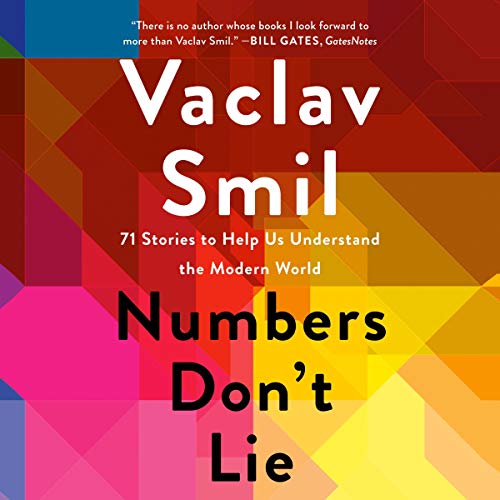 (1) Images of the day: [Left] The largest adobe mud-brick structure in the world: Bam Citadel in the city of Bam, southeastern Iran, has a 2500-year history. It was an important hub on the Silk Road in the Medieval Era. [Center] Unusual clouds in Goleta, CA. [Right] Vaclav Smil's Numbers Don't Lie (see the last item below).
(1) Images of the day: [Left] The largest adobe mud-brick structure in the world: Bam Citadel in the city of Bam, southeastern Iran, has a 2500-year history. It was an important hub on the Silk Road in the Medieval Era. [Center] Unusual clouds in Goleta, CA. [Right] Vaclav Smil's Numbers Don't Lie (see the last item below).
(2) UK-based math educator Dr. Amir Asghari runs a Web site, with the title "People and Mathematics," devoted to "curious, honest, and candid conversations with individuals whose professional lives are intertwined with mathematics." The site currently contains three chapters, each introducing 12 men and women.
(3) Iranian operatives roam in the US as lobbyists and academic "scholars": Hossein Mousavian, who served on Iran's nuclear diplomacy team in negotiations with the EU and International Atomic Energy Agency, is a frequent guest on policy forums, urging Washington to engage with Tehran and not seek regime change.
(4) One-liners: Brief news headlines, happenings, memes, and other items of general interest.
- Hurricane Lee reaches the rare category-5 strength and may strengthen again as it heads toward the US.
- G-20 summit convenes in New Delhi, sans China's Xi Jinping and Russia's Vladimir Putin.
- Sophisticated Iranian cyber-attack on Middle East Forum is thwarted by Microsoft Threat Intelligence Center.
- The US Internal Revenue Service is using AI technology to detect certain categories of tax fraud.
(5) The US really needs to be made great again: The party of "law & order" has degenerated into a '1984'-style thought-control and history-rewriting enterprise. [Tweet, with photos of Ron DeSantis and Vivek Ramaswamy]
(6) With McConnel on the way out and Trump on the way to jail, US Republicans are poised to bring their young stars to the forefront: So, it is disheartening to see Biden (80) and Pelosi (83) seeking re-election.
(7) After being notified of a hefty premium increase for my car insurance policy and complaining to the company's chat "assistant," I researched on-line and found out that the phenomenon is nationwide and that my rate increase was actually not as bad as the average increase.
(8) Book review: Smil, Vaclav, Numbers Don't Lie: 71 Stories to Help Us Understand the Modern World, unabridged 6-hour audiobook, read by Ben Prendergast, Penguin Audio, 2021.
[My 4-star review of this book on GoodReads]
While it is true that numbers don't lie, they can be exploited for dressing up lies as truths, as aptly demonstrated in Darrel Huff's How to Lie with Statistics and Michael Wheeler's Lies, Damned Lies, and Statistics, the latter taking its title from a saying popularized by Mark Twain, who attributed it to the British prime minister Benjamin Disraeli.
Smil's book contains 71 largely-independent essays on interesting and often controversial topics having to do with numerical assessment and statistical inference. The essays, which average ~5 pages each (~5 minutes of audio), can be read straight through or in many sittings. Examples of the 71 hot-button topics discussed include vaccinations, malleability of unemployment stats, environmental impacts of cars & cell phones, nuclear electricity, electric-powered container ships, the inexcusable global food waste, why tall people enjoy so many benefits, and making sense of Brexit.
2023/09/07 (Thursday): Presenting selected news, useful info, and oddities from around the Internet.
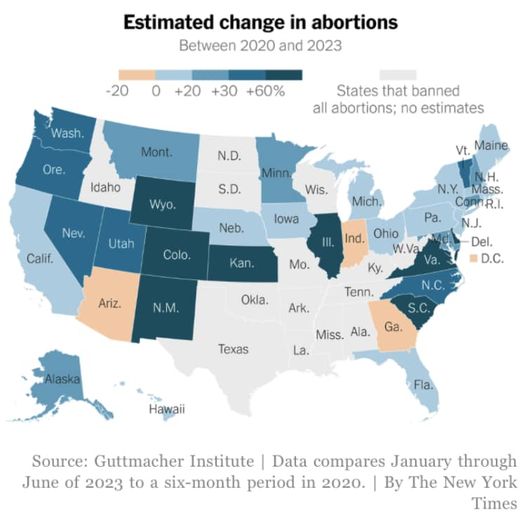

 (1) Images of the day: [Left] The number of abortions in the US has not gone down, despite Supreme Court's reversal of Roe-v.-Wade and passage of restrictive state laws (NYT chart). [Center] Throwback Thursday: Kakh-e Marmar (Marble Palace), Tehran, Iran, is a former royal residence, now a museum, built by Reza Shah during 1934-1937. [Right] Share of income earned by the top 1% in the US is on the rise again: It stands at 19% now, compared with ~11% five decades ago (NYT chart).
(1) Images of the day: [Left] The number of abortions in the US has not gone down, despite Supreme Court's reversal of Roe-v.-Wade and passage of restrictive state laws (NYT chart). [Center] Throwback Thursday: Kakh-e Marmar (Marble Palace), Tehran, Iran, is a former royal residence, now a museum, built by Reza Shah during 1934-1937. [Right] Share of income earned by the top 1% in the US is on the rise again: It stands at 19% now, compared with ~11% five decades ago (NYT chart).
(2) Dictators can tolerate no dissent: Having ruined Iran's economy, Supreme Leader Khamenei and his gang of terror have shifted their attention to Iran's academic institutions, one of the country's few bright spots. They have started to install utterly unqualified gang members in academic positions. A couple of Iranian universities have had good showings on international rankings, though the positions have been in decline in recent years. Now, the decline and the resulting brain drain will accelerate, as the best students & faculty members abandon the compromised institutions. [Tweet, with image]
(3) Several former university presidents in Iran have criticized the firings of popular professors and the appointment of utterly unqualified faculty members: They seem to have forgotten that they are guilty of driving off many highly qualified faculty members because of following the motto "religious devotion before expertise"! They are pretending that Islamic Iran was flawless when they were in power and has deteriorated since. This is reminiscent of former PM Mir Hossein Mousavi referring to "the golden age of Imam [Khomeini]," despite its extrajudicial mass-executions and terror fatwas, and Abdolkarim Soroush, who oversaw the "cleansing" of Iranian universities under the banner of "Cultural Revolution," now criticizing the regime's higher-education policies from his perch in the United States!
(4) One-liners: Brief news headlines, happenings, memes, and other items of general interest.
- EU-official/hostage from Sweden has been in an Iranian prison for more than 500 days.
- The ugly US culture wars are in part the fault of colleges abandoning civics courses.
- The Great Wall of China is no match for the bulldozers of greedy contractors.
- A British diplomat in Iran answers a few questions in Persian. [1-monute video]
- Another viral musical hit in Iran: "Take off Your Headscarf" has become a new protest anthem.
- Mean tripping of a little kid: This soccer player was ejected by the referee, even before the game began.
(5) This Iranian cleric accuses Islamic Republic leaders of generating unrest, including burning of Qurans by their own agents, in order to crack down on dissent and consolidate their power. [6-minite video]
(6) Going in the opposite direction of its US counterparts, Mexican court expands abortion access, including as part of the national health system.
(7) Tonight's Talangor Group talk: Dr. Reza Sarmast and Eng. Mitra Zaimi presented the second part of the talk "The Paradox of Plentiful Oil," which they began last week. The talk was accompanied by screening a documentary video on "Oil in Iran: From Discovery to Nationalization" to make up for the lack of coverage of Iran's case in the book. There were ~70 attendees.
Is there such a thing as the curse of oil? In last week's installment of the talk, the speakers showed that there is indeed a curse of oil for many countries with incapable governments, Venezuela being the poster child of such regimes. Tonight, the speakers focused on two notable exceptions to this rule, Indonesia & Norway, where capable governments have successfully avoided the curse of oil. A key to Norway's success was viewing the oil income as just one revenue stream, rather than the economy's main pillar. For Indonesia, sheer luck led to oil income being directed to repayment of foreign debt, thus sparing adverse effects of the economy.
2023/09/06 (Wednesday): Presenting selected news, useful info, and oddities from around the Internet.


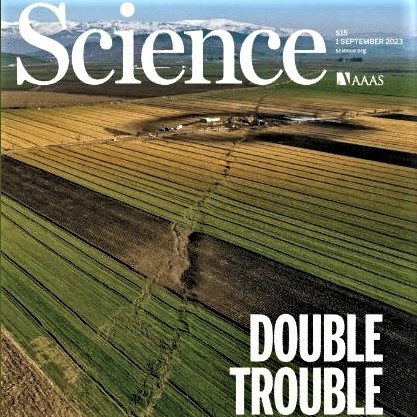


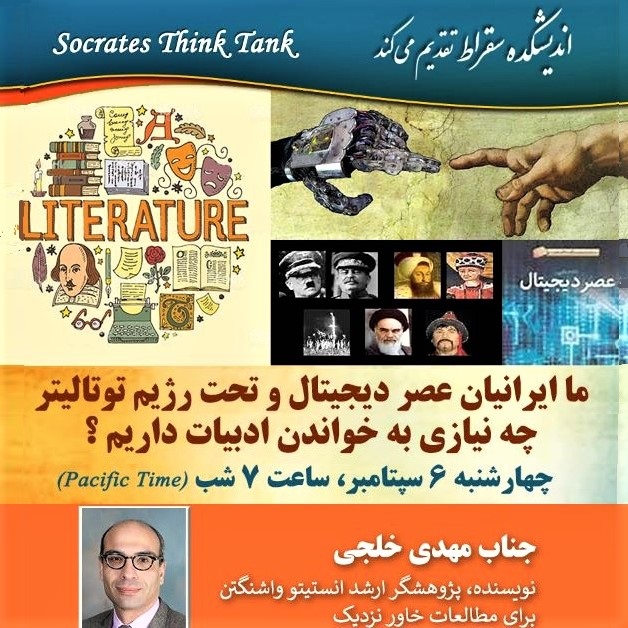 (1) Images of the day: [Top left] Meet the new Professor of literature at U. Tehran: Saeed Haddadian, a singer of religious hymns ("maddah"), has been appointed to a professorial chair as part of a program aimed at controlling Iranian universities by Supreme Leader Khamenei's hardline cronies (see also the next item below). [Top center] Time limit for kisses in the passenger-unloading area of an airport (excuse the awkward English). [Top right] Unraveling Turkey's geometrically-complex sequence of earthquakes: Science magazine's cover feature, issue of Sep. 1, revisits Turkey's magnitude-7.8 twin quakes of February 6, 2023, classified as one of the deadliest natural disasters in the area over the past millennium. [Bottom left & center] Islamists' obsession with women's looks: To me, the good looks of women like the late #MahsaAmini trigger awe and respect. Islamists, such as this theology professor, however, see nothing but temptation & seduction in women's looks. [Bottom right] Tonight's Socrates Think Tank talk (see the last item below).
(1) Images of the day: [Top left] Meet the new Professor of literature at U. Tehran: Saeed Haddadian, a singer of religious hymns ("maddah"), has been appointed to a professorial chair as part of a program aimed at controlling Iranian universities by Supreme Leader Khamenei's hardline cronies (see also the next item below). [Top center] Time limit for kisses in the passenger-unloading area of an airport (excuse the awkward English). [Top right] Unraveling Turkey's geometrically-complex sequence of earthquakes: Science magazine's cover feature, issue of Sep. 1, revisits Turkey's magnitude-7.8 twin quakes of February 6, 2023, classified as one of the deadliest natural disasters in the area over the past millennium. [Bottom left & center] Islamists' obsession with women's looks: To me, the good looks of women like the late #MahsaAmini trigger awe and respect. Islamists, such as this theology professor, however, see nothing but temptation & seduction in women's looks. [Bottom right] Tonight's Socrates Think Tank talk (see the last item below).
(2) One-liners: Brief news headlines, happenings, memes, and other items of general interest.
- Proud Boy leader will be in prison until he is a Proud Old Man. I hope his boss gets a similarly long term.
- The Biden administration cancels oil-drilling plans in Alaska's wildlife refuge.
- This 5-minute report on the follies of Iran's foreign policy led to the closure of Entekhab news site.
- The Rolling Stones unveil their first musical album in 18 years. It is entitled "Hackney Diamonds."
(3) John H. Glenn Lecture in Space History: Today's National Air & Space Museum's "Trailblazers in Conversation" program featured Astronauts Drs. Anna Fisher, Rhea Seddon, & Kathryn Sullivan, alongside NASA Deputy Administrator Pamela Melroy (in-person and on YouTube). The three women astronauts answered questions about becoming interested in working for NASA, discussed their training, and recalled their social & professional experiences as women techies. The program marked the 45th anniversary of NASA's historic 1978 astronaut candidate class, which included the first six women candidates amongst its 35 new guys.
(4) Tonight's Socrates Think Tank talk: Dr. Mehdi Khalaji (Senior Fellow, Washington Institute) spoke under the title "Do Iranians of the Digital Age Living Under a Totalitarian Regime Need to Read Poetry?" There were 100 attendees, with possibly many attendees left out due to the Zoom limit.
As I usually do before attending a lecture, I researched the speaker's background from on-line sources. I discovered that Khalaji had studied Islamic theology at Qom Seminary and philosophy at Tehran's Tarbiat Modarres (Teacher Training) University. After leaving Iran, he pursued additional studies in Paris and later worked for BBC Persian, Radio Farda, and Radio Free Europe. He has written in opposition to the Iran nuclear deal and, apparently, has tried to undermine international sanctions against Iran. According to Wikipedia, "In March 2019 Khalaji and his wife, Marjan Sheikholeslami Aleagha, were listed among the main suspects in the largest financial corruption case in Iranian history with a total amount of 6.7 billion euros. Khalaji and his wife are suspected that they made contracts with Islamic Revolutionary Guard Corps oil and gas company, Sepanir, and in order to bypass sanctions they used personal accounts which were used to embezzle money to United States and Canada."
Based on the profile above, I was hesitant to attend the talk, but in the final analysis, I decided to do so in light of the talk's connection with one of the titles on UCSB Reads 2024 Program's short list of books, Your Brain on Art: How the Arts Transform Us (I serve on the program's Advisory Committee). In the book, the authors Susan Magsaman and Ivy Ross discuss many practical benefits of the arts, besides the obvious aesthetic enjoyment. Pursuing and participating in art improves cognition, learning ability, memory, and focus, while reducing stress. Just one art experience per month can add 10 years to one's life. There are music-therapy and museum-therapy in the medical domain and I don't see why we can't make use of poetry-therapy! And you don't have to be good at it to reap these benefits. So, the answer of Your Brain on Art to the question posed in its subtitle is an emphatic "yes"!
Unfortunately, the talk was only marginally related to its advertised title and thus to the important topics I discussed above, that is, new neuroscientific research results on how arts affect us. It contained mostly political narratives and some general remarks on the potential harms of technology (social media, in particular). I believe that the speaker's dissing of social media is in part driven by the negative information about, and accusations against, him.
2023/09/04 (Monday): Presenting selected news, useful info, and oddities from around the Internet.




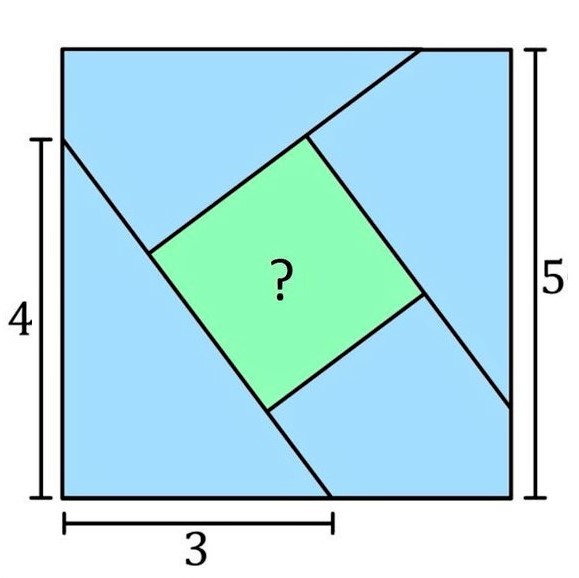
 (1) Images of the day: [Top left] Happy US Labor Day: "Of life's two chief prizes, beauty and truth, I found the first in a loving heart and the second in a laborer's hand." ~ Khalil Gibran [Top center] Turning a revolution into a business opportunity: Her royal highness is selling access with $450 VIP bundles. [Top right] Sep. 16, 2023, anniversary of the #WomanLifeFreedom movement: Iranians in the homeland and in diaspora will join forces to honor the memory of #MahsaAmini, whose death while in the custody of Iran's despised morality police sparked a revolution. [Bottom left] My approximation of Labor Day barbecue, with oven broiled chicken kabobs and veggies. Your place was empty! [Bottom center] Math puzzle: Find the area of the green square in the middle. The green and blue squares have the same center. [Bottom right] The Beatles as children. I don't know if these photos are AI-generated or real.
(1) Images of the day: [Top left] Happy US Labor Day: "Of life's two chief prizes, beauty and truth, I found the first in a loving heart and the second in a laborer's hand." ~ Khalil Gibran [Top center] Turning a revolution into a business opportunity: Her royal highness is selling access with $450 VIP bundles. [Top right] Sep. 16, 2023, anniversary of the #WomanLifeFreedom movement: Iranians in the homeland and in diaspora will join forces to honor the memory of #MahsaAmini, whose death while in the custody of Iran's despised morality police sparked a revolution. [Bottom left] My approximation of Labor Day barbecue, with oven broiled chicken kabobs and veggies. Your place was empty! [Bottom center] Math puzzle: Find the area of the green square in the middle. The green and blue squares have the same center. [Bottom right] The Beatles as children. I don't know if these photos are AI-generated or real.
(2) Dry water: Significantly heavier than regular water and coming to a boil at around 50 degrees Celsius, this undrinkable 3M product has found a number of niche applications, such as extinguishing fires at electronic installations (regular water would damage the electronics). It is an excellent insulator and can be used to cool circuitry by coming in direct contact with them. [15-minute video]
(3) Please sign this petition to secretaries of state in charge of ensuring that presidential candidates meet the qualifications set forth in the US Constitution (14th Amendment, in particular).
(4) One-liners: Brief news headlines, happenings, memes, and other items of general interest.
- Indian lunar rover, Pragyan (wisdom, in Sanskrit), begins its search for ice near the lunar south pole.
- Kim Jong Un to visit Putin: Russia plans to buy arms & ammunition from North Korea.
- The Burning Man Festival turned into The Drowning Man Festival due to severe flooding around Las Vegas.
- Does Vivek Ramaswamy know what white DJT supporters think of Latinos, Indians, & other brown people?
- The anatomy of a Ronaldo header into the goal. [1-minute video]
- Liberace demonstrates the boogie-woogie style of piano-playing and its variations. [4-minute video]
(5) Wreckage of 150-year-old ship found nearly intact in Lake Michigan: The dishes of grain ship Trinidad, which sank in 1881, are still nearly stacked in their cabinets.
(6) A water park in Mashhad, Iran, was closed by authorities due to women being improperly veiled. Which begs the question: "What constitutes proper veil in a water park?"
(7) Nomad high-schoolers in Iran learned English 50+ years ago, becoming proficient after a few months. Compare their language skills with those of current Islamic Republic ministers & diplomats! [2-minute video]
(8) The cost of being a student: Setting aside expenditures on tuition and housing, the two biggest expenses for students, there are other secondary costs that exert added financial pressure. Textbooks and supplies are examples of the latter. In this essay, a teaching assistant points out that some students can't afford the cost of buying and registering "clickers" and are thus penalized when such electronic devices are required for class participation. Faculty members and TAs should be mindful of the cost of supplies and devices, and explore alternatives, before specifying them as required.
2023/09/02 (Saturday): Presenting selected news, useful info, and oddities from around the Internet.

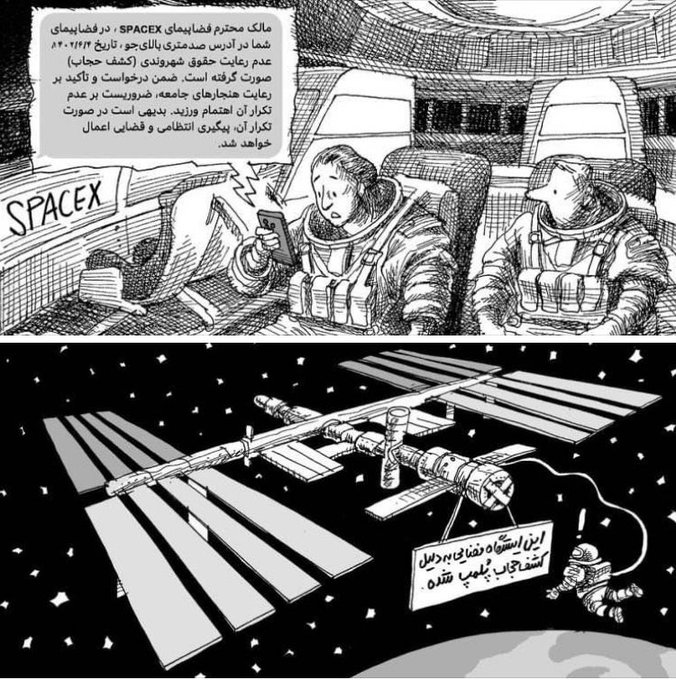
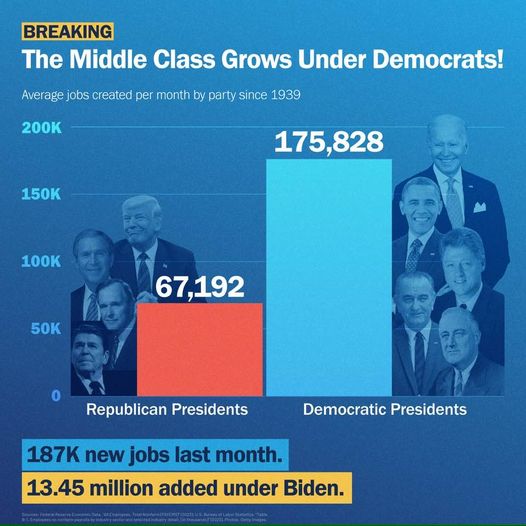
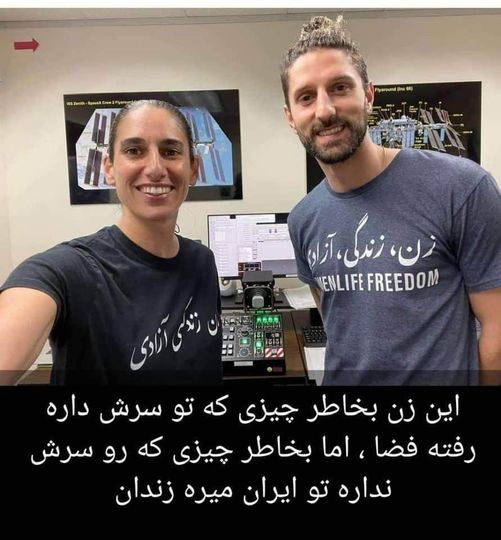
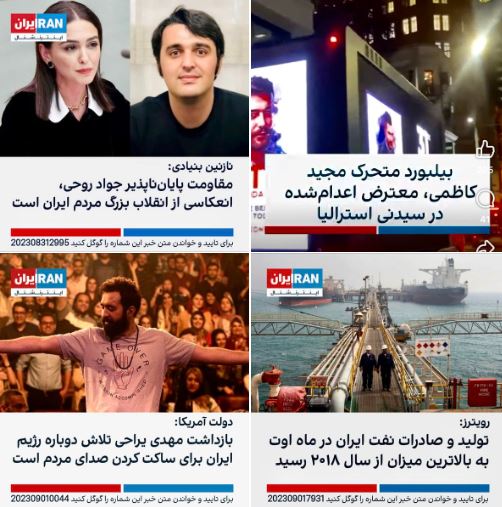
 (1) Images of the day: [Top left] Pottery shop in Yazd, Iran, prominently displaying the distinct color of Iranian ceramics, turquoise blue. [Top center] Consequences of hijabless appearance in space: Text-message warning, followed by locking up the ISS (Mana Neyestani cartoons). [Top right] Faster job growth (by more than 2.5x) leads to expanded middle class under US Democratic administrations. [Bottom left] Jasmine Moghbeli and her husband don their #WomanLifeFreedom T-shirts. The caption states that this woman would be in prison if she lived in Iran. [Bottom center] Memes of the day about today's Iran: Widespread arrests of activist, executions, an imprisoned young man dying in custody (likely due to torture), and a surprising rise in oil exports & income. [Bottom right] Thursday night's pizzas on half-pita-breads: Toppings include ground-beef, pineapple, & onion.
(1) Images of the day: [Top left] Pottery shop in Yazd, Iran, prominently displaying the distinct color of Iranian ceramics, turquoise blue. [Top center] Consequences of hijabless appearance in space: Text-message warning, followed by locking up the ISS (Mana Neyestani cartoons). [Top right] Faster job growth (by more than 2.5x) leads to expanded middle class under US Democratic administrations. [Bottom left] Jasmine Moghbeli and her husband don their #WomanLifeFreedom T-shirts. The caption states that this woman would be in prison if she lived in Iran. [Bottom center] Memes of the day about today's Iran: Widespread arrests of activist, executions, an imprisoned young man dying in custody (likely due to torture), and a surprising rise in oil exports & income. [Bottom right] Thursday night's pizzas on half-pita-breads: Toppings include ground-beef, pineapple, & onion.
(2) Hijabless Iranian women are knocked to the ground by stick-wielding vigilantes: The women are restrained by grabbing their hair, kicked, handcuffed, and touched all over their bodies in violation of Islamic rules.
(3) A university president in Iran threatens dissident students with confinement to mental institutions: Political abuse of psychiatry to "tame" dissidents has a long, shameful history in Russia and other countries. It also harms those in genuine need of psychiatric help.
(4) One-liners: Brief news headlines, happenings, memes, and other items of general interest.
- German women reopen the debate about why they can't appear in public wearing only a bikini bottom.
- A living robofish built from human cardiac cells swims like a fish & could pave the way for artificial hearts.
- AI + Holograms = Virtual presence, anywhere, in any language (4-minute talk at a Microsoft event).
- Honoring those who lost their lives to keep the #WomanLifeFreedom Revolution alive. [3-minute video]
- Rock art: Reproducing a few classics and creating some amazing new images. [1-minute video]
- France has too much wine and is paying large sums to have the oversupply destroyed: Let's head to France!
(5) Iran news: Social-media influencers and humorists are having a field day with Iranian-American Astronaut Jasmine Moghbeli's travel to space, hijabless and without having to obtain the written consent of her husband.
(6) The Holocaust didn't appear out of the blue: It was preceded by years of segregation, clothing mandates, a slate of restrictive laws, and regional massacres in Germany and other Nazi-controlled areas.
(7) John B. Goodenough [1922-2023], pioneering material scientist dead at 100: He was a giant in the fields of solid-state chemistry and physics. "His revolutionary insights into the fundamental physical properties of materials helped enable the wireless and artificial intelligence revolutions and advanced the science needed to help reduce carbon emissions."
(8) A century ago, on September 1, 1923, a magnitude-7.9 earthquake devastated Tokyo: The killer quake was followed by 1000 aftershocks over 10 days. The quake's direct damage paled in comparison with the damage caused by ruptured gas lines that created more than 130 major fires. "In Tokyo, the fires merged into a firestorm so intense that it created its own wind system and set alight the city's many wooden buildings. Survivors rushed to seek safety. Bridges became choke points, and as those made of wood caught fire, people were trapped." The two-day burning left 140,000 dead people in its wake.
2023/08/31 (Thursday): Presenting selected news, useful info, and oddities from around the Internet.
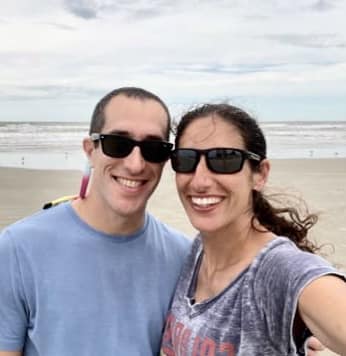
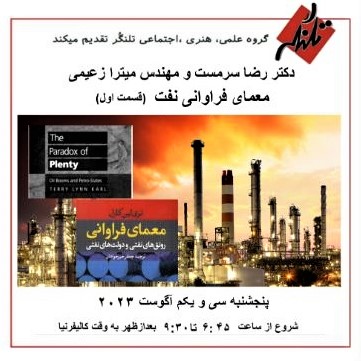
 (1) Images of the day: [Left] Iranian-American astronaut Jasmine Moghbeli left the country (actually the Earth) without a need to obtain her husband's permission, as required by Iran's Islamic laws! In this 1-minute video, Moghbeli talks in Persian about embracing adventure as a child and reacting in disbelief when she was chosen to command a NASA mission taking astronauts to the International Space Station. [Center] Talangor Group's talk on the paradox of plentiful oil (see the last item below). [Right] A new wave of arrests, firings, and intimidations in Iran: The mullahs intensify their pressure and scare tactics against academics, journalists, artists, and celebrities a few weeks before the anniversary of #MahsaAmini's death while in the custody of Iran's despised morality police, because they fear widespread street protests in September.
(1) Images of the day: [Left] Iranian-American astronaut Jasmine Moghbeli left the country (actually the Earth) without a need to obtain her husband's permission, as required by Iran's Islamic laws! In this 1-minute video, Moghbeli talks in Persian about embracing adventure as a child and reacting in disbelief when she was chosen to command a NASA mission taking astronauts to the International Space Station. [Center] Talangor Group's talk on the paradox of plentiful oil (see the last item below). [Right] A new wave of arrests, firings, and intimidations in Iran: The mullahs intensify their pressure and scare tactics against academics, journalists, artists, and celebrities a few weeks before the anniversary of #MahsaAmini's death while in the custody of Iran's despised morality police, because they fear widespread street protests in September.
(2) The great Persian poet Sa'adi has a section on the benefits of keeping quiet in his magnum opus, Golestan: The fifth tale in the section, with the message that a wise man would not argue with a fool, is reproduced in this Facebook post. Not long ago, I read and reviewed the book STFU: The Power of Keeping Your Mouth Shut in an Endlessly Noisy World, which offers the same advice in a convincing way.
(3) One-liners: Brief news headlines, happenings, memes, and other items of general interest.
- Fire in a multi-story rental building in South Africa kills at least 73 people.
- Michigan State Senator Mallory McMorrow's eloquent response to accusations from a MAGA lawmaker.
- UCSB Alpha Sigma Kappa: A sorority for women and non-binary students in technical studies.
- Well, here's affirmation from a fortune cookie: "Your effortless sense of humor will help someone in need."
(4) A lengthy discussion on the recent purges of faculty members at Iranian universities: Participants include purged faculty members and other higher-education experts. [5-hour audio file, in Persian]
(5) Why do US politicians cling to power long after they become ineffective due to old age? Examples include Mitch McConnel, Diane Feinstein, as well as Joe Biden and Donald Trump.
(6) Tonight's Talangor Group talk: Dr. Reza Sarmast and Eng. Mitra Zaimi talked under the title "The Paradox of Plentiful Oil." There were ~75 attendees.
Is there such a thing as the curse of oil? In other words, does possession of oil reserves lead to underdevelopment? Based on Terry Lynn Karl's book, The Paradox of Plenty, the speakers presented some ideas in this domain, with the discussion to continue next week (Wednesday, September 7, 2023, 7:00 PM).
The book deals with both theoretical analysis and historical narrative, based on six case studies. Spain was a powerful country, given its vast gold stockpiles. Spain's gold-based power later gave way to black-gold power. Oil states faced problems similar to Spain's problems with gold. The paradox is that oil wealth, instead of bringing prosperity and comfort, leads to complicity and laziness, Venezuela being the prime example. There are only two exceptions: Indonesia and Norway.
In the 1970s, oil prices quadrupled, an event that constitutes the largest transfer of wealth without a war. "Dutch Disease," a term coined by the Economist magazine, afflicts oil-rich countries and other countries whose currency gains strength from discovery of valuable new resources. The term originates from the decline of manufacturing and agriculture when oil was discovered in northern Netherlands in 1959.
Capable governments can take advantage of oil income within a diversified economy, alongside appropriate taxation, thus reducing undesirable swings. Incapable governments rely exclusively on oil income, so they prosper when prices go up and struggle when they go down, making long-term planning impossible.
Venezuela is a poster child of incapable governments. When its oil income increased, half of it was taken by foreign oil companies and the other half was distributed to about 1/8 of the population. The development program was focused on industries that required heavy investment, used a lot of energy, and created few jobs. High-income government jobs stifled the private sector, leading to a rise in unemployment, out-of-control inflation, and low national satisfaction.
2023/08/30 (Wednesday): Presenting selected news, useful info, and oddities from around the Internet.


 (1) Images of the day: [Left] Diaspora Arts Connection presents the 7th annual "Let Her Sing" concert: UCLA's Schoenberg Hall, September 24, 2023. [Center] Jaqueline Rose's On Violence and on Violence Against Women (see the last item below). [Right] Socrates Think Tank talk on NICArt (see the next item below).
(1) Images of the day: [Left] Diaspora Arts Connection presents the 7th annual "Let Her Sing" concert: UCLA's Schoenberg Hall, September 24, 2023. [Center] Jaqueline Rose's On Violence and on Violence Against Women (see the last item below). [Right] Socrates Think Tank talk on NICArt (see the next item below).
(2) Tonight's Socrates Think Tank talk: Niosha Nafei-Jamali spoke under the title "Introducing NICArt: Beyond Niosha Dance Academy." there were ~100 attendees.
I knew about Niosha Dance Academy through family members. This talk, punctuated with photos and video clips, taught me and impressed me a lot more. With the slogan "Engage-Educate-Entertain," NICArt (Niosha International Conservatory of Arts) extends the cultural reach of Niosha Dance Academy to diverse artistic and geographic domains. One of Niosha's visions is to make the musical show "The Story of Nowruz" a staple of spring and Nowruz, in much the same way that "The Nutcracker" is a staple of Christmas and winter. SoCal performances of the show are planned for Saturday-Sunday, March 9-10, 2024, in Orange County.
Niosha's brief bio on YouTube.
NICArt Facebook page.
NICArt on Instagram.
NICArt Web site.
Info and trailer, "The Story of Nowruz".
SF Chronicle story about Nowruz.
Niosha Dance Academy's Web site.
Niosha Dance Academy's NBA halftime show (2017).
(3) One-liners: Brief news headlines, happenings, memes, and other items of general interest.
- Arrival of four new astronauts at the International Space Station: It's getting crowded up there!
- Qatar's years-long disinformation program to manipulate the US justice system and public opinion.
- Santa Barbara experiences the electric-bike craze: City leaders are tackling the resulting safety issues.
- Today's fortune-cookie message: "Your desire to discover new frontiers will lead you far."
(4) Book review: Rose, Jaqueline, On Violence and on Violence Against Women, Faber & Faber, 2021.
[My 4-star review of this book on GoodReads]
Rose begins by observing that while everyone thinks they can recognize violence when they see it, "the most prevalent, insidious forms of violence are those that cannot be seen." She then goes on to cite cruel laws that impact disadvantaged groups as examples of unseen violence. A group of white men surrounding former US President Donald Trump as he signed a global gag order to cut American funding to any organization in the world offering abortion or abortion counseling were committing violence: They participated in an act that increased illegal abortions by thousands, leading to many deaths and countless injuries.
Consistent with its title, Rose's book has a sharp focus on violence against women, although she does discuss other categories of violence. Women are almost always victimized more gravely whenever there is a rise in violence. The COVID-19 pandemic and its attendant restrictions led to a general increase in violence, but had a greater impact on domestic violence against women.
I have previously read an introduction to violence from Oxford's "Very Short Introduction" series (My review). The related notion of nonviolence (in pursuing personal goals and, more commonly, in collective combat against oppression) is discussed in The Forces of Nonviolence: An Ethico-Political Bind (My review).
Rose covers her subject in nine chapters, bearing the following titles.
- I am a knife: Sexual harassment in close-up
- Trans voices: Who do you think you are?
- Trans and sexual harassment: The back-story
- Feminism and the abomination of violence
- Writing violence: From modernism to Eimear McBride
- The killing of Reeva Steenkamp, the trial of Oscar Pistorius: Sex and race in the courtroom
- Political protest and the denial of history: South Africa and the legacy of the future
- One long scream: Trauma and justice in South Africa
- At the border
In the afterword, Rose explains why the book cannot have a conclusion. "Violence is not a subject about which anyone can believe, other than in a state of delusion, that everything has been said and done." In addition to different external forms of violence, we must understand the inner force of violence, the deadly temptation to make violence always somebody else's problem. We need to keep listening to "those who show that reckoning with the violence of the heart and fighting violence in the world are inseparable."
2023/08/29 (Tuesday): Presenting selected news, useful info, and oddities from around the Internet.

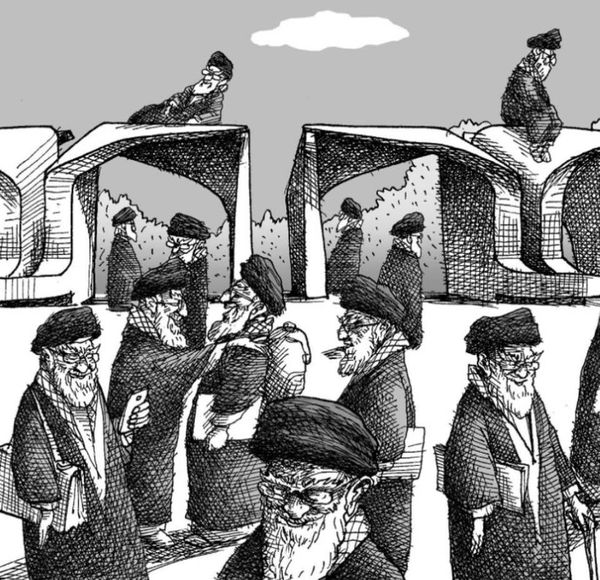
 (1) Images of the day: [Left] JWST discovers a question mark in space: Scientists believe it to be a couple of dust clouds in the process of forming two stars, but this won't stop conspiratorial (photoshop; alien graffiti) or humorous (information kiosk at Space Mall) explanations! [Center] Iran purges professors and plans to replace them with "revolutionary" faculty members (see the next item below). [Right] Philip Dwyer's Violence: A Very Short Introduction (see the last item below).
(1) Images of the day: [Left] JWST discovers a question mark in space: Scientists believe it to be a couple of dust clouds in the process of forming two stars, but this won't stop conspiratorial (photoshop; alien graffiti) or humorous (information kiosk at Space Mall) explanations! [Center] Iran purges professors and plans to replace them with "revolutionary" faculty members (see the next item below). [Right] Philip Dwyer's Violence: A Very Short Introduction (see the last item below).
(2) Iran purges university professors: Their "crimes" range from having secular views to supporting dissident students and other protesters. President Raisi plans to add 15,000 "revolutionary" professors to the faculty ranks at Iranian universities. Having destroyed the country's economy, the mullahs are now bent on destroying what is left of its system of higher education.
(3) Zanan Collective conference at Cal State Long Beach, September 16-17, 2023: Bearing the title "The #WomanLifeFreedom Revolutionary Movement: Achievements and Challenges," the 2-day conference will feature panel discussions alongside art exhibits & performances.
(4) Book review: Dwyer, Philip, Violence: A Very Short Introduction, Oxford, 2022.
[My 4-star review of this book on GoodReads]
I am a big fan of Oxford's "Very Short Introduction" series, which now contains hundreds of titles. I have pursued quite a few of the titles to delve into new areas of knowledge or to freshen up on subjects I had previously studied. I was drawn to this particular title when I encountered it while searching for another book, On Violence, and on Violence Against Women, which is now on my to-read list.
Titles of the book's seven chapters provide a good representation of its scope.
Chapter 1: Violence Past and Present
Chapter 2: Intimate and Gendered Violence
Chapter 3: Interpersonal Violence
Chapter 4: The Sacred and the Secular
Chapter 5: Collective and Communal Violence
Chapter 6: Violence and the State
Chapter 7: The Changing Nature of Violence
The most-common definitions of violence include only intentional acts of harm to human beings. World Health Organization (WHO) defines violence as the intentional use of physical force or power, threatened or actual, against oneself, another person, or against a group or community, that either results in or has a high likelihood of resulting in injury, death, psychological harm, maldevelopment, or deprivation. The modern view of violence also encompasses harming animals, the environment, and inanimate objects such as cultural sites.
Violence is rooted in our deep prehistoric past. Our aggressive impulses evolved from the need to acquire food & mates and to avoid predators. The nature-versus-nurture dichotomy also enters into the discussion here. Some cultures are more violent than others and within the same culture, some groups may be more violent. Inter-group violence (war) existed in nearly all prehistoric societies. Skeletal remains point to violent trauma throughout human history.
Violence against women is particularly widespread and troubling. WHO data from 80 countries indicate that 35% of women have experienced physical or sexual violence (the range is from 23% in high-income countries to as high as 38% in Southeast Asia). In India, a woman is raped on average every 20 minutes. In South Africa, it's every 36 seconds.
After 1800, homicide in the Western World ceased to be common. The United States, with homicide rates of 2.5 to 9 times that of other affluent countries, is an exception. School mass shootings and other forms of gun violence are off the charts in the US. In the area known as the Northern Triangle in Central America, homicide rates are worse than in the Europe of the Middle Ages.
The state monopolization of violence gained momentum beginning in the 1500s. Nearly all cultures are willing to inflict severe punishments, including death, on those who deviate from the rules. The enjoyment of pain and humiliation meted out to those thought to deserve it is also universal. Torture was quite common in Europe before the French Revolution.
The extent to which religion and violence go hand in hand is hotly debated. Prominent atheist intellectuals are convinced that the very nature of religion leads to violence. In a 2004 BBC audit which ranked 3500 wars from 0 (not religious at all) to 5 (very religious), most wars were ranked 0 or 1. Of course, religious violence can take other forms besides wars. Examples include human sacrifice, ceremonial cannibalism, and scalping in certain regions of the world.
In contrast to interpersonal or intimate violence, which involves encounters between a handful of people, collective and communal violence can involve crowds (mobs), often organized but sometimes spontaneous, as in subsistence-related unrest. Crowd or mob mentality is often blamed for the escalation of violence in such cases.
Some historians have argued that as states began to gain a monopoly over violence, taking charge of administering justice, levels of violence among ordinary people declined. This does not mean, however, that violence declined overall: Think of warfare, terrorism, political purges, concentration camps, and genocides.
In the final chapter on the changing nature of violence, the author notes that environmental disasters and mass extinctions are now viewed as "slow violence," causing harm incrementally rather than spectacularly. This slow violence can and does lead to more spectacular forms of violence, such as warfare. In other words, ecocide can be a precursor to genocide. Regardless of the form, underlying reasons, and scope (individual, community, or state), "haunting shadows cast by violence indelibly remain with us."
2023/08/28 (Monday): Presenting selected news, useful info, and oddities from around the Internet.

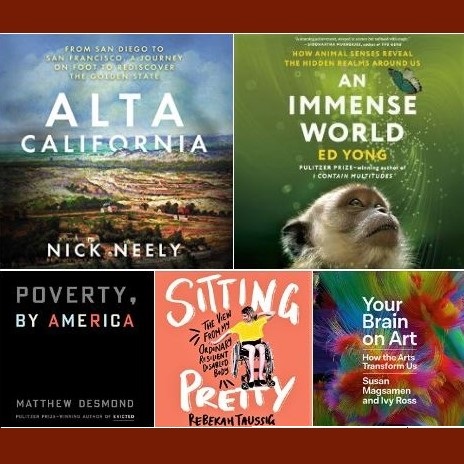

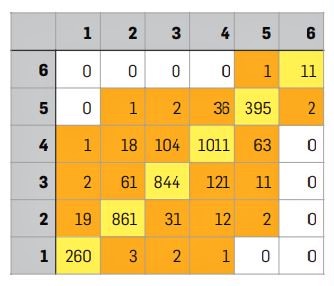
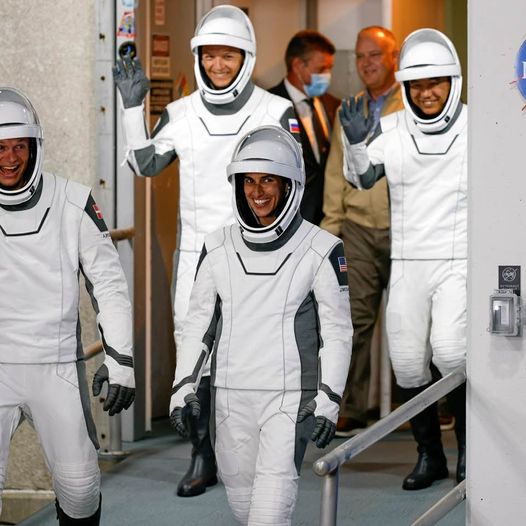
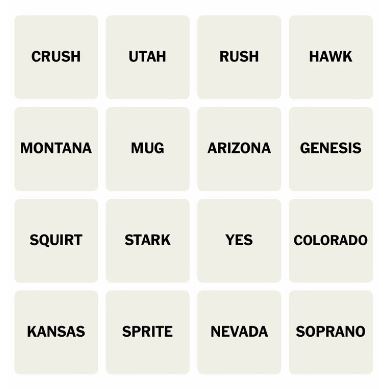 (1) Images of the day: [Top left] Today is the 60th anniversary of the March on Washington: Marchers marked the occasion a couple of days ago in the nation's capital. The 1963 march was for "jobs and Freedom," but it is remembered best for MLK's "I Have a Dream" speech. [Top center] Five book reviews (see the next item below) [Top right] Heads-up computing comes of age: The device-centered paradigm has outlived its usefulness and is giving way to anywhere/anytime computing with new generations of digital eyeglasses and displays. [Bottom left] Rebutting rebuttals in the assessment of confernece submissions (see the last item below). [Bottom center] Iranian-American Jasmin Moghbeli, front-center in the photo, commands a space mission with three other astronauts from different countries to the International Space Station. [Bottom right] Connections, a new game by New York Times: Create four groups of four, with each group representing a theme or recognizable category, such as colors or exclamations of joy. You have to be patient and not go with your first instinct. In this puzzle, there are six state names, so four of them may be identified as a group. But then, what do you do with the other two state names?
(1) Images of the day: [Top left] Today is the 60th anniversary of the March on Washington: Marchers marked the occasion a couple of days ago in the nation's capital. The 1963 march was for "jobs and Freedom," but it is remembered best for MLK's "I Have a Dream" speech. [Top center] Five book reviews (see the next item below) [Top right] Heads-up computing comes of age: The device-centered paradigm has outlived its usefulness and is giving way to anywhere/anytime computing with new generations of digital eyeglasses and displays. [Bottom left] Rebutting rebuttals in the assessment of confernece submissions (see the last item below). [Bottom center] Iranian-American Jasmin Moghbeli, front-center in the photo, commands a space mission with three other astronauts from different countries to the International Space Station. [Bottom right] Connections, a new game by New York Times: Create four groups of four, with each group representing a theme or recognizable category, such as colors or exclamations of joy. You have to be patient and not go with your first instinct. In this puzzle, there are six state names, so four of them may be identified as a group. But then, what do you do with the other two state names?
(2) Book reviews: UCSB Reads 2024 Advisory Committee met today to trim the short-list of 5 books to a rank-ordered list of 3 books, so as to proceed with negotiations with authors & publishers in priority order. UCSB will announce the final selection during the fall quarter. Here are the 5 books and my GoodReads reviews.
- Neely, Nick, Alta California: From San Diego to San Francisco, a Journey on Foot ... (2019). [My review]
- Yong, Ed, An Immense World: How Animal Senses Reveal the Hidden Realms Around Us (2022). [My review]
- Desmond, Matthew, Poverty, by America (2023). [My review]
- Taussig, Rebekah, Sitting Pretty: The View from My Ordinary Resilient Disabled Body (2020). [My review]
- Magsamen, Susan & Ivy Ross, Your Brain on Art: How the Arts Transform Us (2023). [My review]
(3) You've heard about responsible AI, trustworthy AI, and explainable AI: Now comes the idea of humble AI! People don't like to be judged inaccurately and/or harshly. When this happens, users lose trust in AI. Humble AI calls for AI developers/deployers to appreciate & mitigate such harmful effects. Fascinating article!
(4) UCSB grades over the decade that started with the academic year 2012-2013: Proportion of A grades has generally increased (A+, A, and A– now account for 58% of all letter grades). [Source: UCSB Daily Nexus]
(5) Studying the impact of an author-rebuttal process in conference evaluations: Unlike journals, most technical conferences make an accept/reject decision on submitted manuscripts based on a single round of reviews. In an opinion piece entitled "Rebutting Rebuttals," published in the September 2023 issue of CACM, N. Dershowitz & R. M. Verma suggest that data point to the ineffectiveness of the rebuttal process. A key table in the paper, attributed to Gao et al., shows that reviewers mostly do not change their assessments following author rebuttals, and when they do, it is usually in the downward direction for highly-rated manuscripts and in the upward direction for lower-rated submissions (which could mean the acceptance of a worse collection of manuscripts). In the table, numbers 1-6 are reviewer rankings, pre-rebuttal in columns & post-rebuttal in rows. You can find a lot more analysis in the paper.
2023/08/26 (Saturday): Presenting selected news, useful info, and oddities from around the Internet.


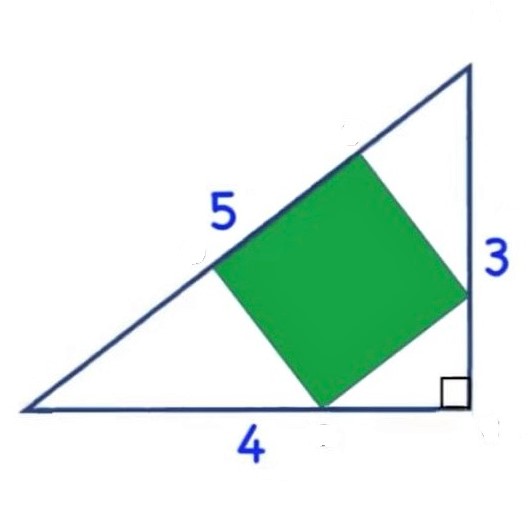 (1) Three math puzzles: [Left] Evaluate this infinite product. [Center] Find the radius of the three identical blue circles at the bottom-left of the diagram. [Right] Find the area of the green square inside the 3:4:5 triangle.
(1) Three math puzzles: [Left] Evaluate this infinite product. [Center] Find the radius of the three identical blue circles at the bottom-left of the diagram. [Right] Find the area of the green square inside the 3:4:5 triangle.
(2) I am excited and honored to report that I have been promoted to the rank of Distinguished Professor at University of California, Santa Barbara, effective July 1, 2023.
Addendum: So, what is a Distinguished Professor? At most US academic institutions, professorial ranks are assistant, associate, and full professor. At University of California, there are two further ranks of Prof VI (past mid-range along the scale Prof-I-to-Prof-IX) and Distinguished Professor (which is also called Above Scale; the end of the line of academic advancement). The latter two ranks require surpassing certain performance thresholds in teaching/mentoring, research publications, international recognition, awards/honors, and professional & public service.
(3) One-liners: Brief news headlines, happenings, memes, and other items of general interest.
- CDC Says New COVID-19 subvariant may lead to more breakthrough infections in vaccinated people.
- Healthcare deserts in the US significantly overlap with regions having Internet connectivity problems.
- There have been several US mass-shootings over the past week: They no longer even make front-page news!
- Researchers at Indiana University, Bloomington, discover a botnet powered by ChatGPT operating on X.
- Human-rights activist Narges Mohammadi talks in Persian about the plight of the Baha'i community in Iran.
- In Britain, record numbers of women will start computing degree programs this year.
- George Carlin's super-funny routine about words & phrases that help hide the truth. [9-minute video]
(4) An interesting ACM podcast: Rashmi Mohan hosts Anima Anandkumar, Bren Professor of Computing at Caltech and Senior Director of AI Research at NVIDIA, where she leads a group developing next-generation AI algorithms. Her research has spanned healthcare, robotics, and climate change modeling. She is the recipient of a Guggenheim Fellowship and an NSF Career Award, and was most-recently named an ACM Fellow. Her work has been extensively covered on PBS, in Wired magazine, MIT Tech Review, YourStory, and Forbes.
In this 46-minute audio file, Anima talks about her journey, growing up in a house where computer science was a way of life, with family members who served as strong role models. She shares her path in education & research at IIT-Madras, the importance of a strong background in math in her computing work, and some of the breakthrough moments in her career, including work on using tensor algorithms to process large datasets. Anima discusses topic modeling and reinforcement learning, what drives her interests, the possibilities of interdisciplinary collaboration, and the promise and challenges brought about by the age of generative AI.
(5) University professors are being fired in droves in Iran: The Islamic Republic has always had a problem with universities and accepted them reluctantly. Free thinking and theocracy are incompatible.
(6) Remember VCRs and DVD players? My daughter recently visited the world's last operational Blockbuster store in Bend, Oregon.
(7) The many ways one can teach a robot: "The human brain is wired to be able to learn new things—and in all kinds of different ways, from imitating others to watching online explainer videos. What if robots could do the same thing? It is a question that ACM Prize recipient Pieter Abbeel, professor at the University of California, Berkeley and director of the Berkeley Robot Learning Lab, has spent his career researching. Here, we speak with Abbeel about his work and about the techniques he has developed to make it easier to teach robots."
2023/08/25 (Friday): Presenting selected news, useful info, and oddities from around the Internet.
2023/08/24 (Thursday): Presenting selected news, useful info, and oddities from around the Internet.
2023/08/23 (Wednesday): Presenting selected news, useful info, and oddities from around the Internet.
2023/08/21 (Monday): Presenting selected news, useful info, and oddities from around the Internet.
2023/08/20 (Sunday): Presenting selected news, useful info, and oddities from around the Internet.
2023/08/19 (Saturday): Presenting selected news, useful info, and oddities from around the Internet.
2023/08/18 (Friday): Presenting selected news, useful info, and oddities from around the Internet.
2023/08/17 (Thursday): Presenting selected news, useful info, and oddities from around the Internet.
2023/08/16 (Wednesday): Today, I offer three book reviews, which together with reviews of Alta California (posted on July 30, 2023) and An Immense World (posted on August 15, 2023) cover the short-list of "UCSB Reads 2024" program. The short-list will be rank ordered in a committee meeting on August 28, 2023.
2023/08/15 (Tuesday): Presenting selected news, useful info, and oddities from around the Internet.
2023/08/14 (Monday): Presenting selected news, useful info, and oddities from around the Internet.
2023/08/13 (Sunday): Presenting selected news, useful info, and oddities from around the Internet.
2023/08/11 (Friday): Presenting selected news, useful info, and oddities from around the Internet.
2023/08/10 (Thursday): Presenting selected news, useful info, and oddities from around the Internet.
2023/08/08 (Tuesday): A pictorial on the Academy Museum of Motion Pictures in Los Angeles.
2023/08/07 (Monday): Presenting selected news, useful info, and oddities from around the Internet.
2023/08/06 (Sunday): Presenting selected news, useful info, and oddities from around the Internet.
2023/08/04 (Friday): Presenting selected news, useful info, and oddities from around the Internet.
2023/08/02 (Wednesday): Presenting selected news, useful info, and oddities from around the Internet.
2023/08/01 (Tuesday): Presenting selected news, useful info, and oddities from around the Internet.
2023/07/31 (Monday): Presenting selected news, useful info, and oddities from around the Internet.
2023/07/30 (Sunday): Presenting selected news, useful info, and oddities from around the Internet.
2023/07/28 (Friday): Presenting selected news, useful info, and oddities from around the Internet.
2023/07/27 (Thursday): Presenting selected news, useful info, and oddities from around the Internet.
2023/07/25 (Tuesday): Presenting selected news, useful info, and oddities from around the Internet.
2023/07/24 (Monday): Presenting selected news, useful info, and oddities from around the Internet.
2023/07/23 (Sunday): Presenting selected news, useful info, and oddities from around the Internet.
2023/07/22 (Saturday): Presenting selected news, useful info, and oddities from around the Internet.
2023/07/20 (Thursday): Presenting selected news, useful info, and oddities from around the Internet.
2023/07/19 (Wednesday): Presenting selected news, useful info, and oddities from around the Internet.
2023/07/17 (Monday): Presenting selected news, useful info, and oddities from around the Internet.
2023/07/16 (Sunday): Presenting selected news, useful info, and oddities from around the Internet.
2023/07/15 (Saturday): Presenting selected news, useful info, and oddities from around the Internet.
2023/07/13 (Thursday): Presenting selected news, useful info, and oddities from around the Internet.
2023/07/12 (Wednesday): Presenting selected news, useful info, and oddities from around the Internet.
2023/07/10 (Monday): Presenting selected news, useful info, and oddities from around the Internet.
2023/07/09 (Sunday): Presenting selected news, useful info, and oddities from around the Internet.
2023/07/08 (Saturday): Presenting selected news, useful info, and oddities from around the Internet.
2023/07/07 (Friday): Presenting selected news, useful info, and oddities from around the Internet.
2023/07/06 (Thursday): Presenting selected news, useful info, and oddities from around the Internet.
2023/07/05 (Wednesday): Presenting selected news, useful info, and oddities from around the Internet.
2023/07/04 (Tuesday): Presenting selected news, useful info, and oddities from around the Internet.
2023/07/02 (Sunday): Presenting selected news, useful info, and oddities from around the Internet.
2023/07/01 (Saturday): Presenting selected news, useful info, and oddities from around the Internet.
2023/06/29 (Thursday): Presenting selected news, useful info, and oddities from around the Internet.
2023/06/28 (Wednesday): Presenting selected news, useful info, and oddities from around the Internet.
2023/06/26 (Monday): Presenting selected news, useful info, and oddities from around the Internet.
2023/06/24 (Saturday): Presenting selected news, useful info, and oddities from around the Internet.
2023/06/22 (Thursday): Presenting selected news, useful info, and oddities from around the Internet.
2023/06/21 (Wednesday): Presenting selected news, useful info, and oddities from around the Internet.
2023/06/20 (Tuesday): Presenting selected news, useful info, and oddities from around the Internet.
2023/06/19 (Monday): Presenting selected news, useful info, and oddities from around the Internet.
2023/06/18 (Sunday): Presenting selected news, useful info, and oddities from around the Internet.
2023/06/16 (Friday): Presenting selected news, useful info, and oddities from around the Internet.
2023/06/15 (Thursday): Presenting selected news, useful info, and oddities from around the Internet.
2023/06/14 (Wednesday): Presenting selected news, useful info, and oddities from around the Internet.
2023/06/13 (Tuesday): Presenting selected news, useful info, and oddities from around the Internet.
2023/06/11 (Sunday): Presenting selected news, useful info, and oddities from around the Internet.
2023/06/09 (Friday): Presenting selected news, useful info, and oddities from around the Internet.
2023/06/07 (Wednesday): Presenting selected news, useful info, and oddities from around the Internet.
2023/06/05 (Monday): Presenting selected news, useful info, and oddities from around the Internet.
2023/06/04 (Sunday): Presenting selected news, useful info, and oddities from around the Internet.
2023/06/03 (Saturday): Presenting selected news, useful info, and oddities from around the Internet.
2023/06/01 (Thursday): Presenting selected news, useful info, and oddities from around the Internet.
2023/05/31 (Wednesday): Presenting selected news, useful info, and oddities from around the Internet.
2023/05/30 (Tuesday): Reviews of three books about science, human psychology, and healthcare.
2023/05/29 (Monday): Presenting selected news, useful info, and oddities from around the Internet.
2023/05/28 (Sunday): Reviews of three books about climate change, mother-daughter bonds, and math.
2023/05/27 (Saturday): Presenting selected news, useful info, and oddities from around the Internet.
2023/05/25 (Thursday): Presenting selected news, useful info, and oddities from around the Internet.
2023/05/24 (Wednesday): Presenting selected news, useful info, and oddities from around the Internet.
2023/05/23 (Tuesday): Presenting selected news, useful info, and oddities from around the Internet.
2023/05/22 (Monday): Presenting selected news, useful info, and oddities from around the Internet.
2023/05/21 (Sunday): Presenting selected news, useful info, and oddities from around the Internet.
2023/05/19 (Friday): Presenting selected news, useful info, and oddities from around the Internet.
2023/05/18 (Thursday): Presenting selected news, useful info, and oddities from around the Internet.
2023/05/17 (Wednesday): Presenting selected news, useful info, and oddities from around the Internet.
2023/05/16 (Tuesday): Presenting selected news, useful info, and oddities from around the Internet.
2023/05/14 (Sunday): Presenting selected news, useful info, and oddities from around the Internet.
2023/05/13 (Saturday): Presenting selected news, useful info, and oddities from around the Internet.
2023/05/12 (Friday): Presenting selected news, useful info, and oddities from around the Internet.
2023/05/11 (Thursday): Presenting selected news, useful info, and oddities from around the Internet.
2023/05/10 (Wednesday): Presenting selected news, useful info, and oddities from around the Internet.
2023/05/09 (Tuesday): Presenting selected news, useful info, and oddities from around the Internet.
2023/05/07 (Sunday): Presenting selected news, useful info, and oddities from around the Internet.
2023/05/06 (Saturday): Presenting selected news, useful info, and oddities from around the Internet.
2023/05/05 (Friday): Presenting selected news, useful info, and oddities from around the Internet.
2023/05/04 (Thursday): Presenting selected news, useful info, and oddities from around the Internet.
2023/05/02 (Tuesday): Presenting selected news, useful info, and oddities from around the Internet.
2023/04/30 (Sunday): Today's focus is on Santa Barbara Earth Day Festival at Alameda Park, downtown.
2023/04/29 (Saturday): Presenting selected news, useful info, and oddities from around the Internet.
2023/04/28 (Friday): Presenting selected news, useful info, and oddities from around the Internet.
2023/04/27 (Thursday): Presenting selected news, useful info, and oddities from around the Internet.
2023/04/25 (Tuesday): Presenting selected news, useful info, and oddities from around the Internet.
2023/04/24 (Monday): Presenting selected news, useful info, and oddities from around the Internet.
2023/04/23 (Sunday): Presenting selected news, useful info, and oddities from around the Internet.
2023/04/21 (Friday): Presenting selected news, useful info, and oddities from around the Internet.
2023/04/20 (Thursday): Presenting selected news, useful info, and oddities from around the Internet.
2023/04/19 (Wednesday): Presenting selected news, useful info, and oddities from around the Internet.
2023/04/17 (Monday): Presenting selected news, useful info, and oddities from around the Internet.
2023/04/16 (Sunday): Photos & memories from the wedding of my niece Mina and nephew-in-law Babak.
2023/04/14 (Friday): Presenting selected news, useful info, and oddities from around the Internet.
2023/04/13 (Thursday): Presenting selected news, useful info, and oddities from around the Internet.
2023/04/11 (Tuesday): Presenting selected news, useful info, and oddities from around the Internet.
2023/04/09 (Sunday): Presenting selected news, useful info, and oddities from around the Internet.
2023/04/08 (Saturday): Presenting selected news, useful info, and oddities from around the Internet.
2023/04/07 (Friday): Review of a book that's related to the book/movie "Argo" and a PBS documenmtary.
2023/04/06 (Thursday): Presenting selected news, useful info, and oddities from around the Internet.
2023/04/05 (Wednesday): Presenting selected news, useful info, and oddities from around the Internet.
2023/04/03 (Monday): Presenting selected news, useful info, and oddities from around the Internet.
2023/04/01 (Saturday): Presenting selected news, useful info, and oddities from around the Internet.
2023/03/31 (Friday): Presenting selected news, useful info, and oddities from around the Internet.
2023/03/30 (Thursday): Today's blog enteries are three book reviews on science & technology.
2023/03/29 (Wednesday): Presenting selected news, useful info, and oddities from around the Internet.
2023/03/28 (Tuesday): Today's blog enteries are three book reviews on politics, pscychology, & religion.
2023/03/27 (Monday): Presenting selected news, useful info, and oddities from around the Internet.
2023/03/26 (Sunday): Review of three books about Iran and the Azerbaijan-Georgia region.
2023/03/25 (Saturday): Presenting selected news, useful info, and oddities from around the Internet.
2023/03/24 (Friday): Presenting selected news, useful info, and oddities from around the Internet.
2023/03/23 (Thursday): Presenting selected news, useful info, and oddities from around the Internet.
2023/03/22 (Wednesday): Presenting selected news, useful info, and oddities from around the Internet.
2023/03/21 (Tuesday): Presenting selected news, useful info, and oddities from around the Internet.
2023/03/19 (Sunday): Presenting selected news, useful info, and oddities from around the Internet.
2023/03/18 (Saturday): Presenting selected news, useful info, and oddities from around the Internet.
2023/03/16 (Thursday): Presenting selected news, useful info, and oddities from around the Internet.
2023/03/14 (Tuesday): Presenting selected news, useful info, and oddities from around the Internet.
2023/03/12 (Sunday): Presenting selected news, useful info, and oddities from around the Internet.
2023/03/11 (Saturday): Presenting selected news, useful info, and oddities from around the Internet.
2023/03/10 (Friday): Presenting selected news, useful info, and oddities from around the Internet.
2023/03/09 (Thursday): Presenting selected news, useful info, and oddities from around the Internet.
2023/03/08 (Wednesday): Presenting selected news, useful info, and oddities from around the Internet.
2023/03/07 (Tuesday): Presenting selected news, useful info, and oddities from around the Internet.
2023/03/06 (Monday): Presenting selected news, useful info, and oddities from around the Internet.
2023/03/05 (Sunday): Presenting selected news, useful info, and oddities from around the Internet.
2023/03/04 (Saturday): Presenting selected news, useful info, and oddities from around the Internet.
2023/03/03 (Friday): Presenting selected news, useful info, and oddities from around the Internet.
2023/03/02 (Thursday): Presenting selected news, useful info, and oddities from around the Internet.
2023/03/01 (Wednesday): Presenting selected news, useful info, and oddities from around the Internet.
2023/02/27 (Monday): Presenting selected news, useful info, and oddities from around the Internet.
2023/02/26 (Sunday): Presenting selected news, useful info, and oddities from around the Internet.
2023/02/25 (Saturday): Presenting selected news, useful info, and oddities from around the Internet.
2023/02/24 (Friday): Presenting selected news, useful info, and oddities from around the Internet.
2023/02/23 (Thursday): Presenting selected news, useful info, and oddities from around the Internet.
2023/02/21 (Tuesday): Presenting selected news, useful info, and oddities from around the Internet.
2023/02/20 (Monday): Presenting selected news, useful info, and oddities from around the Internet.
2023/02/18 (Saturday): Presenting selected news, useful info, and oddities from around the Internet.
2023/02/17 (Friday): Presenting selected news, useful info, and oddities from around the Internet.
2023/02/16 (Thursday): Presenting selected news, useful info, and oddities from around the Internet.
2023/02/15 (Wednesday): Presenting selected news, useful info, and oddities from around the Internet.
2023/02/14 (Tuesday): Presenting selected news, useful info, and oddities from around the Internet.
2023/02/12 (Sunday): Presenting selected news, useful info, and oddities from around the Internet.
2023/02/11 (Saturday): Presenting selected news, useful info, and oddities from around the Internet.
2023/02/10 (Friday): Presenting selected news, useful info, and oddities from around the Internet.
2023/02/08 (Wednesday): Presenting selected news, useful info, and oddities from around the Internet.
2023/02/06 (Monday): Presenting selected news, useful info, and oddities from around the Internet.
2023/02/05 (Sunday): Presenting selected news, useful info, and oddities from around the Internet.
2023/02/04 (Saturday): Presenting selected news, useful info, and oddities from around the Internet.
2023/02/03 (Friday): Presenting selected news, useful info, and oddities from around the Internet.
2023/02/01 (Wednesday): Presenting selected news, useful info, and oddities from around the Internet.
2023/01/30 (Monday): Presenting selected news, useful info, and oddities from around the Internet.
2023/01/29 (Sunday): Presenting selected news, useful info, and oddities from around the Internet.
2023/01/28 (Saturday): Presenting selected news, useful info, and oddities from around the Internet.
2023/01/27 (Friday): Presenting selected news, useful info, and oddities from around the Internet.
2023/01/26 (Thursday): Presenting selected news, useful info, and oddities from around the Internet.
2023/01/24 (Tuesday): Presenting selected news, useful info, and oddities from around the Internet.
2023/01/22 (Sunday): Presenting selected news, useful info, and oddities from around the Internet.
2023/01/20 (Friday): Presenting selected news, useful info, and oddities from around the Internet.
2023/01/19 (Thursday): Presenting selected news, useful info, and oddities from around the Internet.
2023/01/18 (Wednesday): Presenting selected news, useful info, and oddities from around the Internet.
2023/01/17 (Tuesday): Presenting selected news, useful info, and oddities from around the Internet.
2023/01/16 (Monday): Presenting selected news, useful info, and oddities from around the Internet.
2023/01/14 (Saturday): Presenting selected news, useful info, and oddities from around the Internet.
2023/01/13 (Friday): Today's blog entries are my reviews of two alternative-history books.
2023/01/12 (Thursday): Presenting selected news, useful info, and oddities from around the Internet.
2023/01/11 (Wednesday): Presenting selected news, useful info, and oddities from around the Internet.
2023/01/10 (Tuesday): Presenting selected news, useful info, and oddities from around the Internet.
2023/01/09 (Monday): Presenting selected news, useful info, and oddities from around the Internet.
2023/01/08 (Sunday): Presenting selected news, useful info, and oddities from around the Internet.
2023/01/06 (Friday): Presenting selected news, useful info, and oddities from around the Internet.
2023/01/05 (Thursday): Presenting selected news, useful info, and oddities from around the Internet.
2023/01/04 (Wednesday): Presenting selected news, useful info, and oddities from around the Internet.
2023/01/03 (Tuesday): Presenting selected news, useful info, and oddities from around the Internet.
2023/01/02 (Monday): Reviews of two books on artificial intelligence and its promises & pitfalls.
2023/01/01 (Sunday): Presenting selected news, useful info, and oddities from around the Internet.





 (1) Images of the day: [Top row & Bottom center] Thursday afternoon at Goleta's Coal Oil Point Beach, looking at the four main compass directions. [Bottom left] Trump Towers in Russia and Turkey didn't work out, so he is negotiating with prison officials to put his name on this guard tower. [Bottom right] Math puzzle: Evaluate.
(1) Images of the day: [Top row & Bottom center] Thursday afternoon at Goleta's Coal Oil Point Beach, looking at the four main compass directions. [Bottom left] Trump Towers in Russia and Turkey didn't work out, so he is negotiating with prison officials to put his name on this guard tower. [Bottom right] Math puzzle: Evaluate.
(2) Rebuilding Maui will take years, if not decades: Please continue to help through your favorite charity. Almost all major charities have established Maui Fire funds. [Photo]
(3) Temperature variations explained: The time-delay effect that causes mid-afternoon to be the hottest time of the day and August to be the hottest month of the year. [7-minute video]
(4) One-liners: Brief news headlines, happenings, memes, and other items of general intere
- Where do pro-lifers stand on this? Guns killed 4752 children in the US during 2021 (+42% over 2018).
- US cinema buffs rejoice: You can see any movie on Cinema Day (Sunday, August 27, 2023), for only $4.00.
- GOP debate attack chart: Haley sparred with several others. Ramaswamy was attacked the most.
- In the United States, you are either Native American or immigrant. There is no other category.
- Math puzzle (Ramanujan Problem): Find integer solutions to sqrt(x) + y = 7 and x + sqrt(y) = 11.
- From the horse's mouth: Instagram founder explains pixels in this 6-minute video.
- Understand how Internet search works from this well-made 5-minute video.
- Understand how chatbots and large language models work from this 7-minute video.
(5) The smooch: Spanish soccer chief Luis Rubiales refuses to resign from his position following a week of criticism over placing an unwanted kiss on a star player of Spain's winning Women's World Cup team. [CNN]
(6) How the Shah caused his own downfall: The number of mosques in Iran increased from 200 to 55,000 during Shah's reign. He lavishly supported these mosques, religious schools, and the mullahs running them.
(7) The Elsevier journal Microprocessors and Microsystems retracts dozens of articles published in three of its Special Issues on <Embedded Processors / Signal Processing / Internet of People>: "Significant similarities were noticed post-publication between these special issue articles and other published sources. There is an indication that attempts have been made to disguise the copying using automated paraphrasing. Subsequent to acceptance of these special issue papers by the responsible guest editor
(8) Quote of the day: "Of all the evils for which man has made himself responsible, none is so degrading, so shocking or so brutal as his abuse of the better half of humanity; the female sex." ~ Mahatma Gandhi
(9) Final thought for the day: Multiple TV channels & news Web sites are showing Trump's mug-shot, which is really scary, so I won't share it here at this late evening hour, shortly before you go to bed. You are welcome!

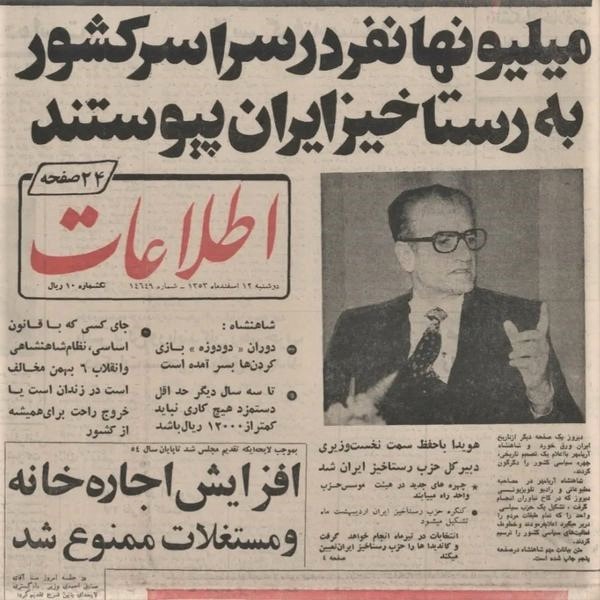
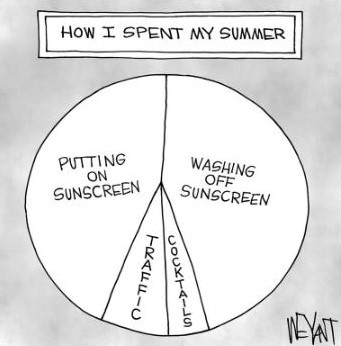


 (1) Images of the day: [Top left] Throwback Thursday (1): Historic photo showing Tehran of ~100 years ago, with Shemiran Gate in the background, in what is now a neighborhood of the north-central part of the mega-city. Qajar-era Tehran was surrounded by a moat and a wall with 114 planned towers and 8 gates allowing people to enter and leave the city. [Top center] Throwback Thursday (2): What was the supposedly modern and educated Shah of Iran thinking when he announced in 1975 that all Iranians should either join his single Rastakhiz Party or leave the country? [Top right] New Yorker cartoon of the day: How I spent my summer days. [Bottom left] I keep running into ads for clothing inspired by carpet designs and other Persian motifs (Source). [Bottom center] New Yorker cartoon of the day about overuse of green screens in today's cinema: "We'll add everything later." [Bottom right] Fake Hafez & Mowlavi/Rumi in English "translations" (see the last item below).
(1) Images of the day: [Top left] Throwback Thursday (1): Historic photo showing Tehran of ~100 years ago, with Shemiran Gate in the background, in what is now a neighborhood of the north-central part of the mega-city. Qajar-era Tehran was surrounded by a moat and a wall with 114 planned towers and 8 gates allowing people to enter and leave the city. [Top center] Throwback Thursday (2): What was the supposedly modern and educated Shah of Iran thinking when he announced in 1975 that all Iranians should either join his single Rastakhiz Party or leave the country? [Top right] New Yorker cartoon of the day: How I spent my summer days. [Bottom left] I keep running into ads for clothing inspired by carpet designs and other Persian motifs (Source). [Bottom center] New Yorker cartoon of the day about overuse of green screens in today's cinema: "We'll add everything later." [Bottom right] Fake Hafez & Mowlavi/Rumi in English "translations" (see the last item below).
(2) Many women's dilemma, as told in "The Bridges of Madison County": Here is a Persian interpretation of a German film critic's review of the 1995 Clint Eastwood film, in which he and Meryl Streep played the main roles. My loose translation of some thoughts in the following essay: "If women aren't forced, as home-makers and mothers, to bury themselves between the kitchen and the bedroom, they won't become eternal losers in life. To emerge as heroes, instead of getting old after abandoning our true loves for security, respectability, and paradise under our feet, we must change the world and its power dynamics. In Iran, the Mahsa Revolution is showing us the way."
(3) One-liners: Brief news headlines, happenings, memes, and other items of general interest.
- Near-misses on airport runways are on the rise. [New York Times report]
- An Egyptian woman created this 1-minute video clip from photos of #MahsaAmini.
- Math puzzle: Show that any two consecutive Fibonacci numbers are relatively prime.
- Facebook memory from Aug. 24, 2019: On the distinction between Judaism and Zionism.
- Facebook memory from Aug. 24, 2019: On Republicans lying that Democrats give free stuff to everyone.
- Facebook memory from Aug. 24, 2017: Slide show made by Google Photos from my shots in Seattle.
(4) Westerners who earn a living by emulating Hafez or Mowlavi/Rumi: Years ago, after numerous attempts to find original Persian poems from their purported English translations posted on social media, I gave up the practice, because I came to the conclusion that the translations were made-up or were so loose as to be entirely different poems. I remember taking keywords from purported translations and doing Google searches. Then, I would guess about Persian words in the original poem based on the English words and perform more Google searches. Not once did I succeed with this approach.
The example which is stuck in my mind is this supposed Hafez verse: "Even after all this time the sun never told the earth 'You owe me.' See what happens with a love like that? It lights the whole sky." The verse, which appears in cyberspace with quite a few minor variations, certainly holds a noble sentiment, which many may find beautiful or inspiring, but it's not something that Hafez said or wrote. Often, a popular original-fake is turned into many variant-fakes, which are then used to create memes & art, thereby gaining eternal life!
I recently discovered this 2020 article, in which Omid Safi (Duke U. Islamic Studies Center) proposes that such fake poems constitute "Western appropriation of Muslim spirituality."
By the way, musings of Buddha, Dalai Lama, Einstein, and Gandhi have been similarly appropriated!
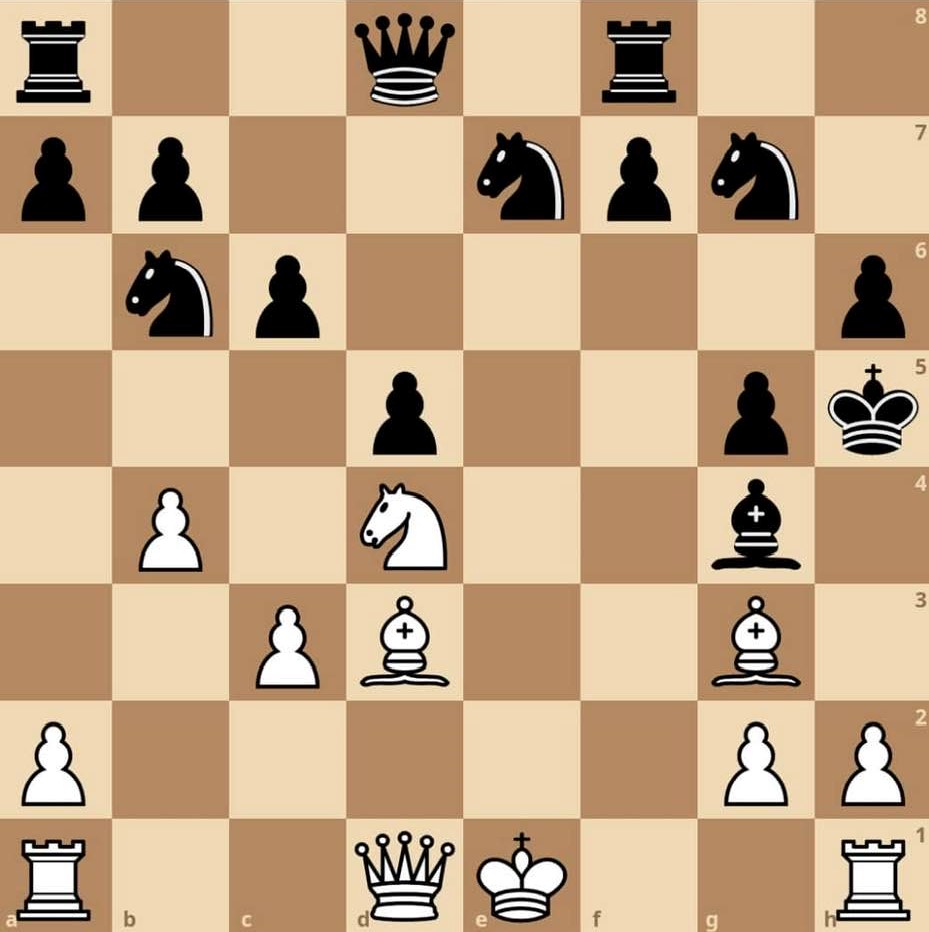
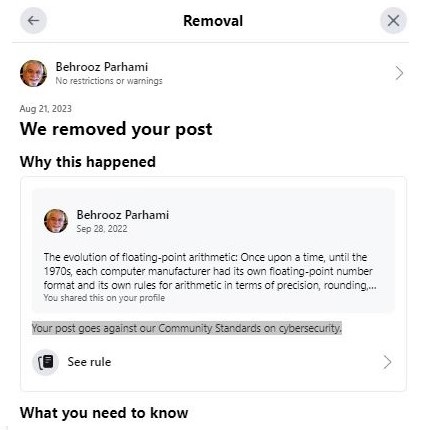
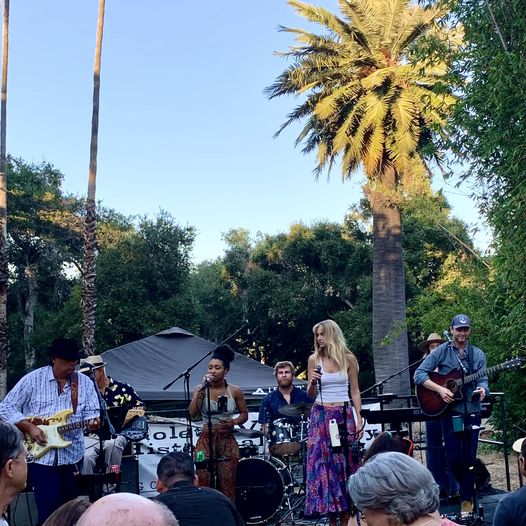 (1) Images of the day: [Left] Chess puzzle: White to start and mate in two moves. [Center] My purely-technical Facebook post about the history and recent trends in floating-point arithmetic was removed on account of going "against our Community Standards on cybersecurity." Refer to the last entry in my blog post of September 21, 2022, to see if you can figure out what triggered FB-AI's wrath! [Right] Tuesday concert at La Patera Historic Ranch Park: Since I posted about the Ranch and Stowe House in detail last week, tonight I will just post three sample musical videos of the band Down Mountain Lights (Video 1; Video 2; Video 3).
(1) Images of the day: [Left] Chess puzzle: White to start and mate in two moves. [Center] My purely-technical Facebook post about the history and recent trends in floating-point arithmetic was removed on account of going "against our Community Standards on cybersecurity." Refer to the last entry in my blog post of September 21, 2022, to see if you can figure out what triggered FB-AI's wrath! [Right] Tuesday concert at La Patera Historic Ranch Park: Since I posted about the Ranch and Stowe House in detail last week, tonight I will just post three sample musical videos of the band Down Mountain Lights (Video 1; Video 2; Video 3).
(2) Widespread Internet outages are expected in Iran: As we approach the first anniversary of #MahsaAmini's death in the custody of Iran's Morality Police, the regime is preparing for possible street protests. Many students and other activists have already been arrested to induce fear in demonstrators. This Web site shares tools for dealing with expected Internet outage in Iran.
(3) Sepideh Qolian on trial in a civil suit in Iran: Her previous court session had been cancelled because Qolian did not agree to appear with a headscarf. The new court session was a closed one, because she again refused to wear the hijab. Qolian faced her accuser, the reporter/interrogator Ameneh-Sadat Zabihpour, a TV "reporter" involved in extracting forced confessions from accused dissidents and making fake "documentaries" about them. In court, the physically diminutive, mentally gargantuan Qolian praised a number of freedom-fighters and spat in the face of her despised accuser.
(4) One-liners: Brief news headlines, happenings, memes, and other items of general interest.
- There is a confirmed death toll of ~115 in the Maui fire, but 800+ are still missing.
- Plane crash near Moscow kills 10, possibly including Yevgeny Prigozhin, the Wagner mercenary leader.
- Made-up quote: "If you go after me, I'm coming after you!" ~ V. Putin, on the plane crash near Moscow
- India becomes the first country to land a spacecraft on the southern polar region of the moon.
- Israeli academics turn on their government, because academia must be built on democratic foundations.
- Wouldn't it be nice if the GOP presidential candidates never mentioned the orange guy during the debate?
- I'm sorry about the $200,000 bond: We should all try to facilitate Trump's disappearance, not make it harder!
- Facebook memory from August 22, 2010: My daughter showing off her newly-pierced ears.
(5) Iranian filmmaker and literary figure Ebrahim Golestan [1922-2023] dead at 100: Much praise has been offered for his work and influence over the years, and now in eulogy. There are also contrary views criticizing Golestan as the embodiment of Iran's patriarchal culture. Here's one example.


 (1) Images of the day: [Top left] Facebook memory: NASA's shot of the total solar eclipse of Aug. 21, 2017. [Top center] My latest entry in New Yorker cartoon caption contest (#863): "I said I want a 'stick-figure salary' not a 'a six- figure salary'." [Top right] Mathematician/Engineer Claude E. Shannon (see the last item below).
(1) Images of the day: [Top left] Facebook memory: NASA's shot of the total solar eclipse of Aug. 21, 2017. [Top center] My latest entry in New Yorker cartoon caption contest (#863): "I said I want a 'stick-figure salary' not a 'a six- figure salary'." [Top right] Mathematician/Engineer Claude E. Shannon (see the last item below).
(2) A much-wanted championship & an unwanted kiss: An official of Spain's Soccer Federation kissed a player on the lips during World Cup medals ceremony, a grim reminder of sexism prevailing in sports and elsewhere.
(3) The ultimate in talent-show performance: The young woman performing here had advanced-stage cancer and died later. Meanwhile, she brought cheers and tears with her original song containing her life story.
(4) One-liners: Brief news headlines, happenings, memes, and other items of general interest.
- Hilary departs Southern California, leaving massive flooding, mudslides, and upheaval in its wake.
- A flying robot can float on gusts of wind like a bird: While floating, it uses 150 times less power.
- How a modern recycling facility recovers all useful elements from spent lithium batteries.
- Partying with classical music: "I'm a Barbie Girl," played in the style of six classical composer.
- Sample "cheesy" TV commercials from pre-Islamic-Revolution Iran (tea leaves & sandwich spread).
- Facebook memory from Aug. 21, 2017: The day when we watched a total solar eclipse in Salem, Oregon.
- Facebook memory from Aug. 21, 2014: All those awesome feelings over small things.
- Facebook memory from Aug. 21, 2010: "The blind and the Oppressor" (a Rahi Moayeri Persian poem).
(5) Stern competition between Iranian mullahs and the Taliban: Iran eliminates sculpture and cinema from art majors in a university admissions guide. Officials then claim an error, which will be corrected.
(6) You are probably over-sharing on Venmo: If you use Venmo, please review your privacy settings, because certain default settings expose all of your info to other users.
(7) Amazing instructional videos: This Web page contains short (~5-minute) videos about artificial intelligence and computers. Enjoy! I will post about some of the more-interesting videos in this collection separately.
(8) Mathematician/Engineer Claude Elwood Shannon [1916-2001]: Known as father of the information age, he made major contributions to the theoretical foundations of modern computing and digital communication.
- Information theory: He devised a theory of communication and the notions of entropy & channel capacity.
- Digital circuits: His MS thesis introduced circuits for logical operations, connecting them to Boolean algebra.
- Cryptanalysis: He laid the foundation for modern cryptography after working with Alan Turing during WW II.
- Sampling theory: He contributed to the Nyquist-Shannon theorem about signal reconstruction from samples.
- Data compression: His entropy concept paved the way for compression methods (e.g., Huffman coding).
- Reliable transmission: His noisy-channel coding theorem bounds the data rate, given an error probability.
- Maximum data rate: He contributed to the Shannon-Hartley theorem to bound a channel's data rate.
- Artificial intelligence: His maze-navigating mouse was an early demonstration of AI and machine learning.


 (1) Images of the day: [Left] Golestan Palace, Tehran, Iran. [Center] Hurricane Hilary has turned into a tropical storm as it approaches SoCal: Extensive rain is expected, but the impact may be less than previously feared. [Right] An important book about the life of physicist J. Robert Oppenheimer (see the last item below).
(1) Images of the day: [Left] Golestan Palace, Tehran, Iran. [Center] Hurricane Hilary has turned into a tropical storm as it approaches SoCal: Extensive rain is expected, but the impact may be less than previously feared. [Right] An important book about the life of physicist J. Robert Oppenheimer (see the last item below).
(2) One-liners: Brief news headlines, happenings, memes, and other items of general interest.
- Magnitude-5.5 quake near Ojai, California, around 2.41 PM today: Aftershocks are being felt in the area.
- Spain squeaks by England 1-0 to claim its first women's soccer World Cup title. [4-minute highlights]
- An open and honest criticism of Islamic officials in Iran for being brutal, dishonest, and clueless.
- Regional Iranian music: A song from the western Luristan Province, with subtitles. [5-minute video]
(3) Book review: Bird, Kai and Martin J. Sherwin, American Prometheus: The Triumph and Tragedy of J. Robert Oppenheimer, unabridged 27-hour audiobook, read by Jeff Cummings, Blackstone Audio, 2007.
[My 5-star review of this book on GoodReads]
I sought this book after watching Christopher Nolan's 2023 film "Oppenheimer" at an IMAX theater, so as to maximize the enjoyment of the film's brilliant cinematography. Cillian Murphy plays the title role, with Emily Blunt portraying his wife Kitty, Robert Downey Jr. as the devious Lewis Strauss, and Rami Malek as physicist David Hill. Matt Damon's portrayal of General Leslie Grove is less convincing. Given that a film, even one that is 3 hours long, cannot capture all the details of a complex life and filmmakers are prone to dramatization & exaggeration, perusing the book that inspired the movie became a must.
The initial "J." in J. Robert Oppenheimer, JRO [1904-1967], stands for "Julius," his father's first name (a common practice among some Jews). The title's Prometheus is a mythical figure "best known for defying the Olympian gods by stealing fire from them and giving it to humanity in the form of technology, knowledge, and more generally, civilization. In some versions of the myth, he is also credited with the creation of humanity from clay" (Wikipedia).
A relatively shy boy, JRO wasn't into playing with boys his own age. At Harvard, he majored in chemistry, but he was really interested in physics, which he later pursued at University of Gottingen in Germany, a major center for theoretical physics. After doing research at several institutions, he became a professor of physics at UC Berkeley, later leading Princeton's Institute for Advanced Study, 1947-1966, where the likes of Albert Einstein, Kurt Godel, and John von Neumann roamed.
JRO was an enigmatic scientist, brilliant but also mercurial, who led US's efforts to develop the atom bomb (The Manhattan Project) from 1941 until the end of World War II. He wasn't completely trusted because he befriended members of the US Communist Party, but his expertise was too valuable to the war effort to set aside. So, he was put in charge at Los Alamos Laboratory, while being under surveillance. He emerged as a hero, when the project successfully tested an atom bomb, with the US military dropping two bombs on Japan's Hiroshima and Nagasaki shortly thereafter.
JRO enjoyed the limelight in the wake of Manhattan Project's success, while also harboring doubts about weapons of mass destruction and the potential for an arms race with the Soviet Union getting out of control. Having seen the devastation caused by the atom bombs dropped on Japan, he began opposing the development of the Super-bomb (H-bomb), an even more devastating weapon of mass destruction. In the end, he was heartbroken when his security clearance was revoked after a Joseph-McCarthy-style tribunal ruled that he could not be trusted.
JRO suffered from episodes of depression, homesickness, and other mental troubles throughout his life. He was a brilliant scientist but his naivete and detachment from worldly matters (he did not read newspapers or magazines) made him a victim of political manipulation in Washington, where people are thrown away like soiled toilet paper when they no longer serve the political ambitions of those pulling the strings. Much of this book is a manifesto in defense RJO and a criticism of the misguided policy of setting aside scientists for traits they tend to have as a matter of course (liberalism, favoring open discussions, thinking about the ethics of war, pursuing social justice).
One of RJO's sins was his defense of openness about technical advances, particularly the development of weapons of mass destruction. He believed that openness would curtail over-development of weapons by our enemies, that is, would dampen an arms race, and would keep the public informed about what an atomic war would mean. He advised his scientist colleagues that they had no more say in how the military used the results of their work than any other member of the public. He considered the wisdom of the masses critical in making major war-and-peace decisions at the national level.
President John F. Kennedy tried to make it up to RJO (and to compensate for his own failings in not standing up to Joseph McCarthy) by bestowing him with Atomic Energy Commission's highest honor, the Enrico Fermi Award. He was assassinated before he could do it and the task fell to Lyndon Johnson, who praised RJO profusely during his remarks. In accepting the award, RJO noted that Jefferson had often written of the brotherly spirit of science, a spirit that, unfortunately, hasn't always prevailed.
RJO died at age 62, having lost a lot of weight and nearly all of his mental sharpness. The urn containing his ashes was dropped at sea, as he had requested. Following his death, messages of sympathy and admiration arrived in large numbers.


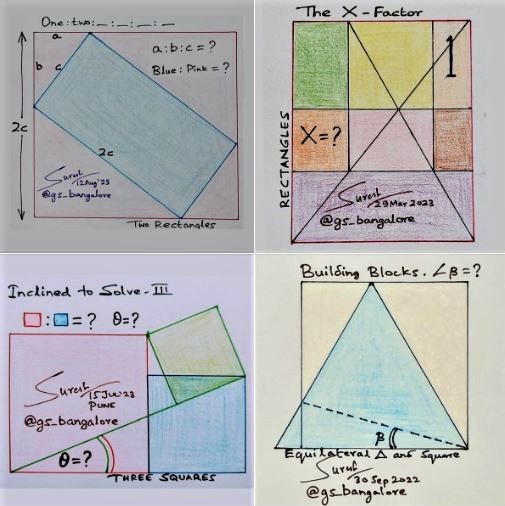
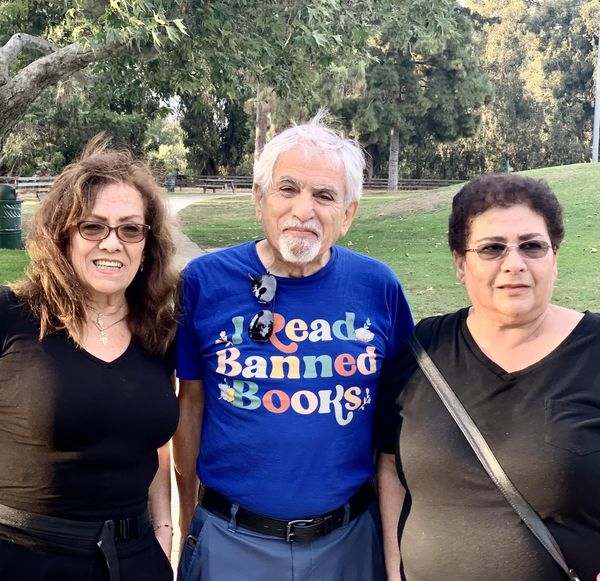
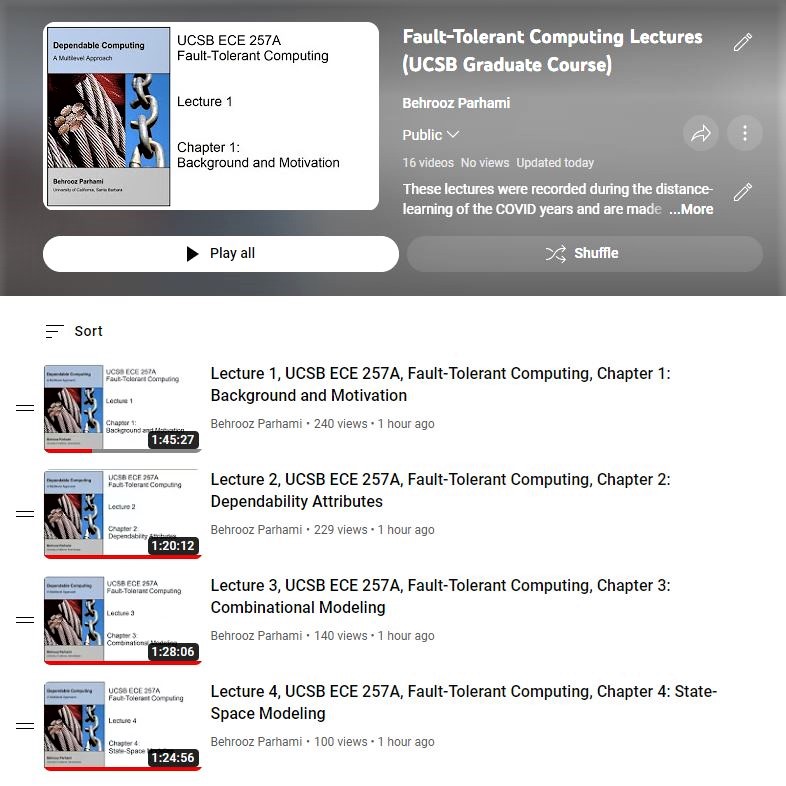
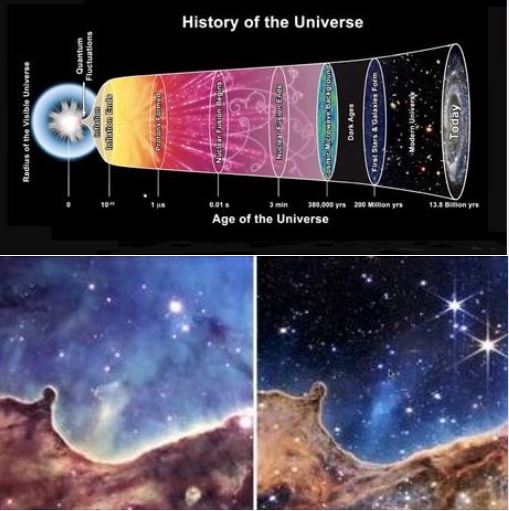 (1) Images of the day: [Top left] Talk on "Mystical Origins of Persian Calligraphy" (see the next item below). [Top center] Simple math puzzle: Find the area of the blue quadrangle. [Top right] Geometric puzzles: Four seemingly underspecified problems from @gs_bangalore. [Bottom left] Walking in Ventura, before the arrival of Hurricane Hilary. [Bottom center] Course lectures on my YouTube channel (see the last item below).[Bottom right] The universe in pictures: A historical timeline since the Big Bang (the time scale is highly nonlinear) and comparing Hubble & James Webb images from the same region of our universe.
(1) Images of the day: [Top left] Talk on "Mystical Origins of Persian Calligraphy" (see the next item below). [Top center] Simple math puzzle: Find the area of the blue quadrangle. [Top right] Geometric puzzles: Four seemingly underspecified problems from @gs_bangalore. [Bottom left] Walking in Ventura, before the arrival of Hurricane Hilary. [Bottom center] Course lectures on my YouTube channel (see the last item below).[Bottom right] The universe in pictures: A historical timeline since the Big Bang (the time scale is highly nonlinear) and comparing Hubble & James Webb images from the same region of our universe.
(2) Farhang Foundation's program on August 12, 2023: Kourosh Beigpour spoke under the title "Mystical Origins of Persian Calligraphy." I was very disappointed that I could not attend on that day. Fortunately, the link to the program's recording has just been released (36-minute video).
Award-winning graphic artist and type designer Kourosh Beigpour shares his profound insights into the captivating world of Persian calligraphy, delving deep into the mystical origins that have shaped this cherished art form. His relentless dedication to preserving the authenticity of this art while infusing it with his own contemporary expression has earned him accolades and admiration.
(3) One of my English language pet peeves: When one registers for an event such as a conference in advance, it is called "advance registration," not "advanced registration"!
(4) One-liners: Brief news headlines, happenings, memes, and other items of general interest.
- The Constitution prohibits Trump from ever being president again: Article in The Atlantic.
- Some of the prominent faces of dissent in Iran's #WomanLifeFreedom Revolution. [2-minute video]
- The funeral of old-time singer Parvin in Iran: No mullahs, just poetry and music. [3-minute video]
- Where would India be today had it not been colonized by the British? An interesting discussion.
(5) The 1988 Iranian prison massacre: Thousands of Iranian prisoners were executed by an extrajudicial process triggered by a fatwa from Ayatollah Khomeini. Of the panel involved in carrying out the fatwa, only Hamid Noury has been brought to justice by an international war-crimes tribunal in Sweden. Another prominent member of the panel, Ebrahim Raisi, is now Iran's president. Ayatollah Montazeri was the only official to object to the executions at the time, and he was promptly sidelined and confined to house arrest for the rest of his life. This article by Hamid Enayat, published in Middle East Quarterly, contains a detailed account of the extrajudicial executions and its criminal participants who remain at large.
(6) Complete on-line graduate-level course on fault-tolerant computing: I am learning to organize my YouTube videos and, as a first step, have set up a playlist composed of 16 lectures for my upcoming fall 2023 UCSB graduate course, ECE 257A. These lectures were recorded during the distance-learning of the COVID years and are made available here to the public.
Playlist name: Fault-Tolerant Computing Lectures (UCSB Graduate Course) [Playlist link]
Other info, including course textbook and lecture slides can be found on the UCSB ECE 257A Web page.

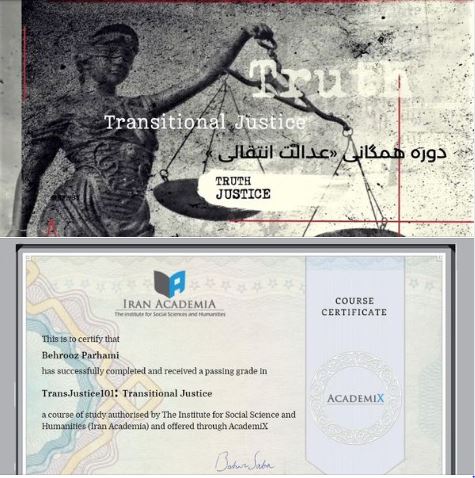
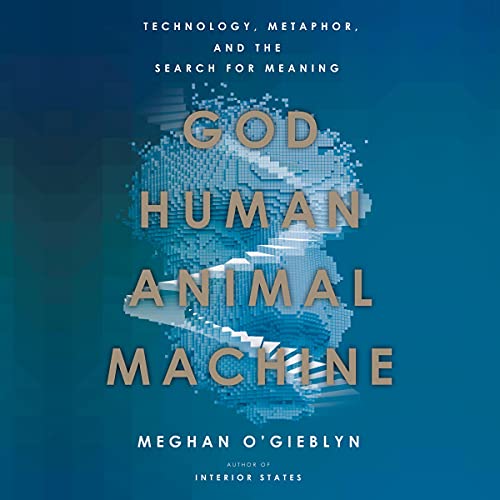 (1) Images of the day: [Left] The intricate design and tiling scheme of the dome at Isfahan's Shah Mosque. [Center] On-line course on transitional justice (see the next item below). [Right] Meghan O'Gieblyn's God, Human, Animal, Machine (see the last item below).
(1) Images of the day: [Left] The intricate design and tiling scheme of the dome at Isfahan's Shah Mosque. [Center] On-line course on transitional justice (see the next item below). [Right] Meghan O'Gieblyn's God, Human, Animal, Machine (see the last item below).
(2) Iran Academia's course on "Transitional Justice": This 7-week on-line course, which I just finished, is organized as follows. Week one, titled "Foundational Aspects of Transitional Justice," covers the concept's development and basic principles. Week two, "Dealing with Past Atrocities," discusses truth and justice mechanisms that are not dependent on transition. The following weeks delve deeper into specific topics, including "The Right to Truth and Truth Commissions" (Week 3), "The Right to Justice and Criminal Prosecutions" (Week 4), "Reparations and Guarantees of Non-repetitions" (Week 5), "Mass Graves" (Week 6), and "Memory and Transitional Justice" (Week 7).
In very brief terms, transitional justice aims to soothe & heal the victims of oppression or war crimes, identify the culprits & punish them according to local or international laws, and, in cases where punishment isn't possible or the amnesty option is pursued, at least draw a solid line between the present and the past to ensure that heinous crimes are not forgotten or repeated. Agents who committed crimes against humanity are liable (having followed orders isn't a valid defense), as are those who planned the atrocities or issued the orders. Monuments & other memorials may be erected as part of the remembrance process and as a way of preventing repetition of the crimes. In the case of memorializing in the service of healing, art can play a significant role.
I took this course because I was curious about mechanism for bringing perpetrators of crimes against humanity and war crimes to justice as part of a national healing process, when dictatorial regimes fall or when peace prevails after conflict. I was particularly interested in the pros and cons of pursuing justice versus granting general amnesty.
The various presentations and reading material for this free on-line course were uneven in terms of engaging the viewer/reader, comprehensibility, and logical organization. Visual aids were non-existent. It is difficult to learn from dry, monotonous, long-winded explanations. With regard to content, much of what was presented falls under common-sense provisions, that one can deduce without instruction. In particular, end-of-section questions were almost always answerable by analyzing the text of the answers, without a need to have listened to presentations or perused the reading material.
(3) Book review: O'Gieblyn, Meghan, God, Human, Animal, Machine: Technology. Metaphor, and the Search for Meaning, unabridged 9-hour audiobook, read by Rebecca Lowman, Random House Audio, 2021.
[My 5-star review of this book on GoodReads]
[My pitch of this book to "UCSB Reads 2024" Committee was posted on June 14, 2023.]
We are bombarded daily with stories about ChatGPT and how AI is threatening the essence of our being as humans. Technology is speeding up our lives, leaving little time for reflection, yet the deep changes that are afoot demand that we devote enough time to think about the future of humanity and our challenges over centuries and millennia, not focus merely on today, this quarter, or the next political election. On the other hand, maybe we should just stop thinking and trust the judgement of algorithms!
In 304 pages (9 hours of audio), O'Gieblyn, an essayist, columnist, and thinker, who studied theology in college, paints a detailed picture of our struggles to reconcile spirituality with technical progress. The writing is that of an essayist, almost devoid of jargon, although, as a columnist for Wired magazine, O'Gieblyn can be legitimately called a tech writer.
We humans are constantly thinking of ways of controlling and overtaking nature. We outsource our intelligence to machines, as extensions of our minds, increasingly seeing ourselves as machinelike in the process. Descartes considered all animals essentially as clocks, that is, robots without any inner experience. He believed that humans were also machines, but with souls, a viewpoint that created problems for the clockwork universe.
This is more or less the starting place for O'Gieblyn's book, which is about how the success of the modern scientific worldview rests on mechanical metaphors, with the attendant discounting of individual human thought and agency. We put consciousness and free will to the side, as we try to describe the world as a mere machine. We did it with the clock metaphor, and that's what we're doing with the computer metaphor, with the computational theory of mind.
O'Gieblyn's book provides ample opportunities to ponder and discuss hot-button issues of the day. Increasingly, technology is being developed and sold with religion-like tropes. So, we might wonder whether we are on our way to a utopian digital heaven, offered to us by gods of technology, or a dystopian digital hell of our own making. Is academia threatened by ChatGPT and similar developments? Is our increasing reliance on technology helping or impairing our move toward equity and social justice?
In the final Chapter 13, entitled "Virality," a very important point is raised about our society's exclusive focus on form at the expense of content. In the early months of the COVID-19 pandemic, many "experts" with no training in epidemiology or even medicine began modeling the pandemic and how it spread. They argued that data tell us everything, so there is no need for domain expertise to analyze the data and produce diagnoses & recommendations.
That a former theologian generates a remarkable synthesis of key ideas addressed for centuries through faith, philosophy, science, and technology is a pleasant surprise.
O'Gieblyn's statement that "All the eternal questions have become engineering problems" is both jarring and enlightening. The modern world has transformed empirical scientists from bad guys, who undermined religion, to good guys, who may help open a portal to digital heaven for our digitized & uploaded souls.
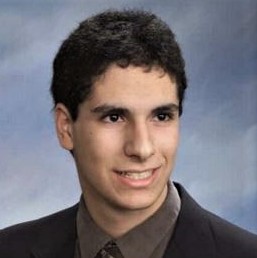
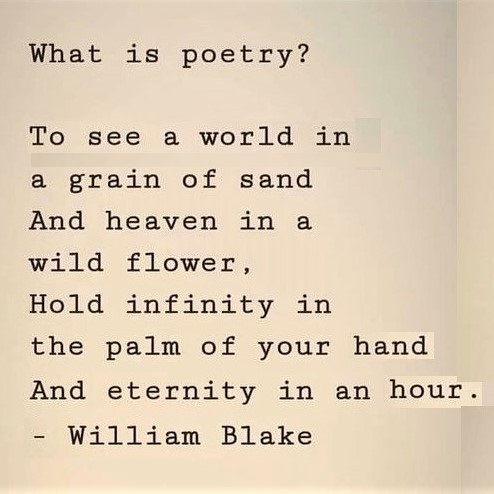

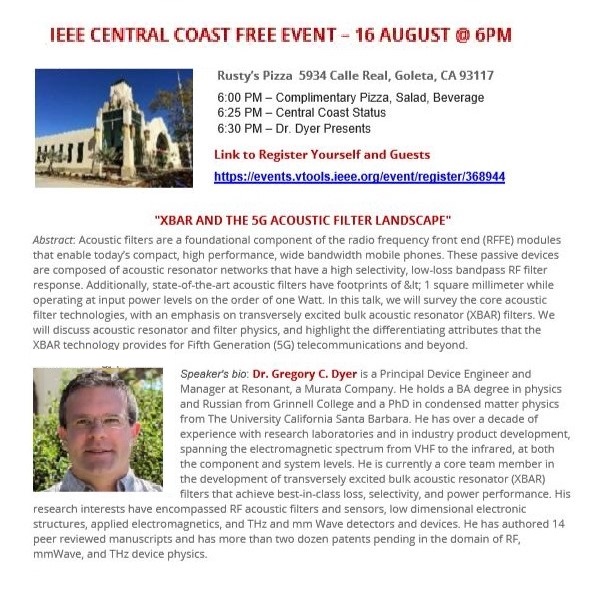

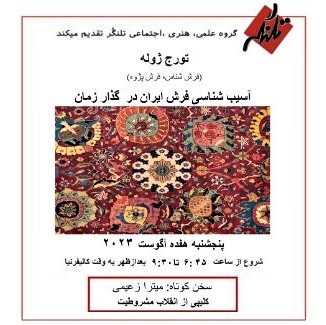 (1) Images of the day: [Top left] Throwback Thursday: My younger son's yearbook photo from August 2003. [Top center] Definition of poetry by poet William Blake (1757-1827). [Top right] Art-deco typewriting desk. [Bottom left] Talk on acoustic filters (see the next item below). [Bottom center] Talk on what we are learning from modern telescopes (see item 3 below). [Bottom right] Talk on Persian carpets (see the last item below).
(1) Images of the day: [Top left] Throwback Thursday: My younger son's yearbook photo from August 2003. [Top center] Definition of poetry by poet William Blake (1757-1827). [Top right] Art-deco typewriting desk. [Bottom left] Talk on acoustic filters (see the next item below). [Bottom center] Talk on what we are learning from modern telescopes (see item 3 below). [Bottom right] Talk on Persian carpets (see the last item below).
(2) Wednesday night's IEEE Central Coast Section talk: Dr. Gregory C. Dyer (Resonant, a Murata Company) spoke under the title "XBAR and the 5G Acoustic Filter." This hybrid event was held at Rusty's Pizza in Goleta and streamed on-line via WebEx.
Acoustic filters are foundational components of the radio frequency front end (RFFE) modules that enable today's compact, high performance, wide bandwidth mobile phones. These passive devices are composed of acoustic resonator networks that have a high selectivity, low-loss bandpass RF filter response. Additionally, state-of-the-art acoustic filters have footprints of less than 1 square millimeter while operating at input power levels on the order of 1 Watt. In this talk, Dr. Dyer surveyed the core acoustic filter technologies, with an emphasis on transversely excited bulk acoustic resonator (XBAR) filters. He discussed acoustic resonator and filter physics and highlighted the differentiating attributes that the XBAR technology provides for Fifth Generation (5G) telecommunications and beyond.
I had to leave the event early to make it to another meeting, so my report is based on speaker's abstract.
(3) Wednesday night's Socrates Think Tank talk: Dr. Bahram Mobasher (UC Riverside) spoke under the title "Uncovering the Secrets of Our Universe and Life with Present and Future Telescopes" to 100+ attendees.
Beginning with a history of space observations via crude early telescopes (Kepler, Galileo), Dr. Mobasher discussed many other telescopes built and used through the centuries, up to and including modern space telescopes (Hubble, James Webb, Euclid).
[Dr. Bahram Mobasher's Google Scholar profile]
(4) One-liners: Brief news headlines, happenings, memes, and other items of general interest.
- A weakened Hurricane Hilary to arrive in Southern California on Sunday. [Projected hurricane path]
- How language shapes the way we think: 14-minute TED talk by Lera Boroditsky.
- Michigan State University students unearth an observatory buried on campus since 1881.
- Stephen Pinker answers questions about language rules and good writing.
- Cartoon of the day: "Jason, I'd like to let you play, but soccer is a girls' game." [Image]
(5) Spain v. England in women's soccer World Cup final (Fox, Sun. 8/20, 3:00 AM PDT): Neither team has won a women's World Cup title before. In an exciting match that went scoreless for 80 minutes, Spain scored in minutes 81 & 90 to eliminate Sweden 2-1. In the other semifinal match, England breezed by Australia 3-1.
(6) Thursday night's Talangor Group talk: Dr. Touraj Jouleh spoke in Persian under the title "The Pathology of Iranian Carpets Over Time." Before the main talk, Mitra Zaimi shared a video clip about Iran's Constitutional Revolution of 1905, whose 118th anniversary was on August 5. There were ~70 attendees.
Dr. Jouleh divided his discussion into four historical periods.
- The Safavid era (1501-1736 CE): Known as the golden age of arts in Iran, the Safavid era led to the flourishing of carpet-weaving. We have inherited many exquisite carpets from that period. Each Safavid king was fond of a different art form. The art form that was emphasized depended on the interests of the Director of the Royal Library, appointed by the king. Centralization of the management of arts was a misguided policy that also had adverse effects on carpet-weaving. The idea was to bring the best artists to the capital and use them in the service of royalty and their preferences. Only carpets from 4-5 centers/regions have survived from the Safavid era to the present day. Carpets and other art forms from Kurdistan, Turkmenistan, and many other rural regions must have been ignored, given that we do not have any samples from these areas. The art of weaving was a practical art, because many villagers and nomadic tribes depended on guelims, gabbehs, khorjins (saddlebags), and the like for survival. So, it is extremely unlikely that carpets and other forms of weaving were not pursued in area outside the few centers that we now know about.
Unfortunately, so much time was spent on the Safavid era and related Q&A that time ran out and the other three eras (Qajar, 1789-1925; Pahlavi, 1925-1979; Islamic Republic, 1979-now) were not discussed. There was just a casual reference to the problem of low-quality material and time-saving shortcuts in production over the past 5-6 decades that have doomed the art of carpet-weaving.
The meeting's organizer announced that the discussion will continue in another session (perhaps next week).
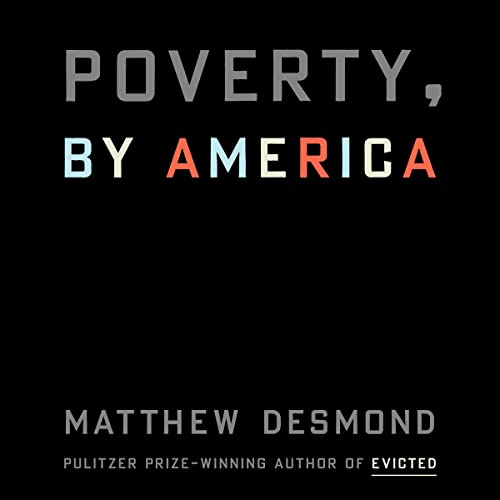

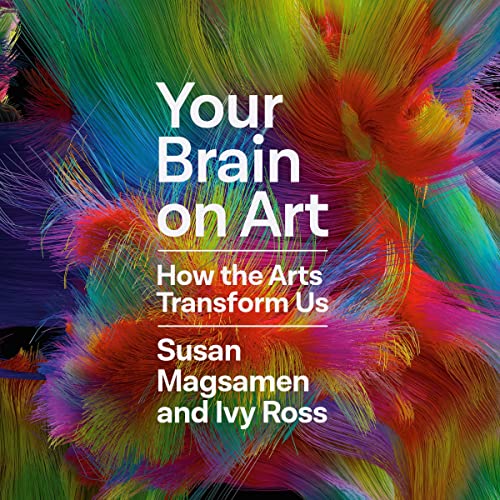 (1) Book review: Desmond, Matthew, Poverty, by America, unabridged 6-hour audiobook, read by Dion Graham, Random House Audio, 2023. [My 4-star review of this book on GoodReads]
(1) Book review: Desmond, Matthew, Poverty, by America, unabridged 6-hour audiobook, read by Dion Graham, Random House Audio, 2023. [My 4-star review of this book on GoodReads]
I perused this book shortly after I finished Mark Robert Rank's The Poverty Paradox: Understanding Economic Hardship Amid American Prosperity, giving it a 5-star review on GoodReads. The very existence of poverty in America, the world's wealthiest nation, is surprising. Rank's explanation is that the economic system in the US is set up like a game of musical chairs, played with 10 people and only 8 chairs, where the chairs represent opportunities in the form of decent-paying jobs. Desmond reaches essentially the same conclusion. It's not that the world's wealthiest nation cannot eliminate poverty. The existence of poverty is purposeful, because keeping some citizens poor serves the interests of many. Desmond dismisses those who blame poverty on systemic and structural causes, because such attributions allow us to skirt personal agency, that is, the fact that the poor are not exploited by a system but by people who are a rung or two above them on the economic ladder.
Poverty would not exist in the US, were it not for choices and actions of more-fortunate Americans. Examples of exploitative choices and actions abound: Paying undocumented workers less than the minimum wage or denying them overtime; Charging exorbitant bank overdraft fees; Setting a lower tax rate for capital gains compared with income earned through labor; Charging high rents to low-income tenants, who have few alternatives. According to Desmond, "Poverty isn't simply the condition of not having enough money. It's the condition of not having enough choice and being taken advantage of because of that."
Affluent Americans defending exclusionary zoning that keeps low-income families away from their neighborhoods has the effect of curtailing upward mobility, thus essentially being a segregationist act. The wealthiest Americans not paying their fair share of taxes is another inhibitor of upward mobility, because of its negative impact on funding adequate safety nets; and the safety nets that are in place are rather difficult to access by the poor, due to bureaucratic red tape.
Desmond's previous book, the Pulitzer-Prize-winning best-seller, Evicted, offered a thorough and thoughtful study of the US rental housing system which, among other ills, perpetuates poverty. When a low-income family spends up to 3/4 of its income on rent and is constantly worried about making the payment and avoiding eviction, it is left with little time or emotional energy to better itself in order to escape poverty's vicious cycle.
Poverty isn't a problem affecting only the poor. It drags the entire society down by being ever-present in our news, visible to us as we walk in a park, depressing us and making us feel shame. It is thus imperative that we all carefully examine our lifestyles to identify all the ways in which we contribute to poverty.
(2) Book review: Taussig, Rebekah, Sitting Pretty: The View from My Ordinary Resilient Body, HarperOne, 2020.
[My 5-star review of this book on GoodReads]
At 14 months old, Taussig was diagnosed with a malignant cancer that attacked her spine. She became cancer-free after two years of intense treatment, but was left paralyzed from the waist down. In her memoir-cum-disability-justice-manifesto, Taussig, creator of the Instagram account @sitting_pretty, offers a nuanced portrait of a body that looks and moves differently than most. "Taussig's explorations of the ways her own ordinary, resilient, disabled body interacts with a largely able-bodied world are complex, evading neatly tied conclusions and categories" (Rumpus literary & culture on-line magazine).
This is the first book about disability that I have perused, so I learned a great deal from it. For many of us, seeing a disabled person evokes a variety of feelings, including pity, mercy, and charity. The obviously-visible disability tends to blind us to the fact that there is a thinking, feeling, and, perhaps, brilliant person behind the abnormal physical appearance, with many of the same challenges and aspirations as the rest of us.
Our movies and literature depict disability as horrific, inspirational, or beatific. Growing up, Taussig yearned for stories depicting disability as both nuanced and ordinary. Contrary to popular views, a disabled person isn't looking for help, kindness, and charity, but connection and understanding. Looking down on or dismissing disabled persons are prime examples of ableism, a term that I understood only after reading this book.
Like racism, ableism, defined as discrimination based on disability, is often exhibited with little or no malicious intent. Ableism includes a wide spectrum of utterances and actions, from able-bodied individuals using facilities intended for disabled people to making assumptions about a disabled person's inability to perform or excel at certain tasks. We all need to challenge ableism in the same ways that we have learned to challenge racism and sexism.
Becoming familiar with a disabled person's fears, hopes, and ambitions goes a long way toward avoiding implicit ableism, instilled in us by our upbringing and social conditioning. This is an excellent book for giving us the requisite familiarity.
(3) Book review: Magsamen, Susan and Ivy Ross, Your Brain on Art: How the Arts Transform Us, Random House, 2023.
[My 4-star review of this book on GoodReads]
We have known for a long time that, far from being a luxury, art is essential to our well-being. Susan Magsamen (Johns Hopkins U.) & Ivy Ross (Google) present ample evidence from neuroscience research that engaging in art for as little as 45 minutes a day reduces the stress hormone cortisol, regardless of whether you are good at the activity. Just one art experience per month can add 10 years to one's life. The effect of playing music on building cognitive skills and improving learning is well-known, as is the health impact of listening to music. Doctors now routinely prescribe museum visits for a host of maladies, from loneliness to dementia.
Chapter 1, "The Anatomy of Arts," begins with a quote from dancer/choreographer Martha Graham: "There is a vitality, a life force, an energy, a quickening that is translated through you into action, and because there is only one of you in all of time, this expression is unique." The chapter then proceeds with what the authors characterize as an arts anatomy cheat sheet, reviewing foundational science that illuminates the ways in which humans are wired for the arts.
The remaining six chapters are entitled "Cultivating Well-Being" (2), "Restoring Mental Health" (3), "Healing the Body" (4), "Amplifying Learning" (5), "Flourishing" (6), and "Creating Community" (7). The seven numbered chapters are preceded by an introduction entitled "The Language of Humanity" (including a self-assessment survey under "An Aesthetic Mindset") and a conclusion entitled "The Art of the Future."
Engagement with the arts affects both our physical & mental well-being and our learning capacity. Unfortunately, we have seen in recent decades reduced attention to art education in favor of science & math. A pioneering large-scale Brookings Institution study found that "a substantial increase in arts educational experiences has remarkable impacts on students' academic, social, and emotional outcomes. Relative to students assigned to the control group, treatment school students experienced a 3.6 percentage point reduction in disciplinary infractions, an improvement of 13 percent of a standard deviation in standardized writing scores, and an increase of 8 percent of a standard deviation in their compassion for others."
In addition to citing research results from a variety of disciplines, particularly neuroaesthetics, the book features conversations with artists such as David Byrne and Rene Fleming. The authors end with this final sentence: "The world, and its beauty, are there waiting for you."
This 59-minute conversation with the authors at Aspen Institute touches upon the key ideas from the book.

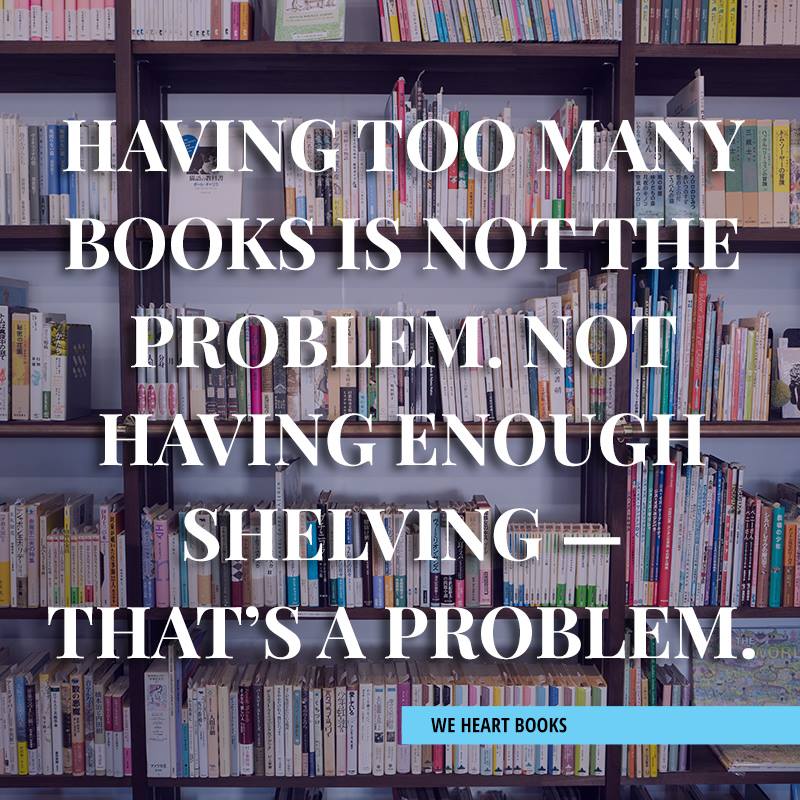






 (1) Images of the day: [Top left] Camels in the Taklamakan Desert, northwest China. [Top center] A meme for book lovers facing a dearth of shelving. [Top right] Ed Yong's An Immense World (see the last item below). [Middle & Bottom rows] Tonight's concert at the La Patera Historic Ranch in Goleta (see the next item below).
(1) Images of the day: [Top left] Camels in the Taklamakan Desert, northwest China. [Top center] A meme for book lovers facing a dearth of shelving. [Top right] Ed Yong's An Immense World (see the last item below). [Middle & Bottom rows] Tonight's concert at the La Patera Historic Ranch in Goleta (see the next item below).
(2) Tonight's concert at Goleta's La Patera Historic Ranch: Held on Tuesday nights, the concerts are similar in spirit to Santa Barbara's Concerts in the Park, which I could not attend this year, due to conflict with another standing commitment on Thursday nights. Tonight's band was Moneluv, which played original and cover songs.
[Sample music from the concert (2-minute videos): Video 1; Video 2; Video 3]
La Patera Historic Ranch is also home to South Coast Railroad Museum, where an old Goleta Depot was moved and restored. Besides Tuesday evening concerts, other events take place at the Ranch. There is also a museum store, a few ranch exhibits, and guided tours of the historic Stowe House. Goleta's Lake Los Carneros Park is one of my favorite walking spots: The historic Stowe House is at the upper left corner of the map.
(3) Book review: Yong, Ed, An Immense World: How Animal Senses Reveal the Hidden Realms Around Us, Penguin Random House, 2022.
[My 4-star review of this book on GoodReads]
We humans navigate and organize the world by our sense of sight. Our trichromat vision (eyes containing three distinct types of cones, each specialized in detecting a different range of wavelengths) is indeed powerful. Some animals, such as horses & dogs, as well as many "color-blind" people, have only two types of cones. There are animals with more than three kinds of cones, but they lack brain mechanisms to compare those colors, which is the primary method for us humans to construct a model of the world around us. Daphnia water fleas, for example, can detect ultraviolet light, but only as flashes that trigger the response of swimming away toward green & yellow wavelengths, which signal the presence of food; they are unable to see entire scenes.
Having established the primacy of vision (or the nearly equivalent echolocation ability of bats & dolphins) in constructing a world view, Yong moves on to discuss various senses in turn. Here is the book's table of contents. An interesting collection of photos, showing some of the animals discussed, follows Chapter 13.
Introduction: The Only True Voyage
Chapter 1: Leaking Sacks of Chemicals | Smells and Tastes
Chapter 2: Endless Ways of Seeing | Light
Chapter 3: Purple, Grurple, Yurple | Color
Chapter 4: The Unwanted Sense | Pain
Chapter 5: So Cool | Heat
Chapter 6: A Rough Sense | Contact and Flow
Chapter 7: The Rippling Ground | Surface Vibrations
Chapter 8: All Ears | Sound
Chapter 9: A Silent World Shouts Back | Echo
Chapter 10: Living Batteries | Electric Fields
Chapter 11: They Know the Way | Magnetic Fields
Chapter 12: Every Window at Once | Uniting the Senses
Chapter 13: Save the Quiet, Preserve the Dark | Threatened Sensescapes
Each animal's senses and corresponding sense organs have been shaped by evolution to best match its needs. A highly-developed sense may compensate for another weak sense. When we lose a sense (e.g., sight) or have it significantly weakened, other senses begin to pick up the slack so as to allow us to live almost normally.
Other than sensing capabilities, animals are different in many other ways. For example, some 350 species of fish can produce electricity for defensive, surveillance, and hunting purposes. Humans have been familiar with these features from thousands of years ago, long before anyone knew what electricity was. Electric eels constitute the ultimate in electro-efficiency, having most of their 7-foot-long bodies comprised of 5-10 thousand electrocytes, allowing them to discharge up to 860 volts. Magneto-reception capability, useful for localization and navigation, is another wonder of nature found in some animal species.
We humans also sense differently from one another, depending on our genetic make-up, training, profession, and possible illnesses & accidents affecting one or more of our senses. So, each of us has a somewhat different model of the world on which we base our actions and decisions. Our extraordinary capabilities as a species do not arise from superior sensing capabilities but from our ability to process and combine information from multiple sources.
We are capable of putting ourselves in the shoes of other species, so as to understand what they sense and how they "see" the world. "A bogong moth will never know what a zebra finch hears in its song ... and a dog will never understand what it is like to be a bat. We will never fully do any of these things either, but we are the only animal that can even come close." We must choose to use our gifts of curiosity and imagination to step into the worlds of other animals: To observe, to understand, and to expand our horizons.

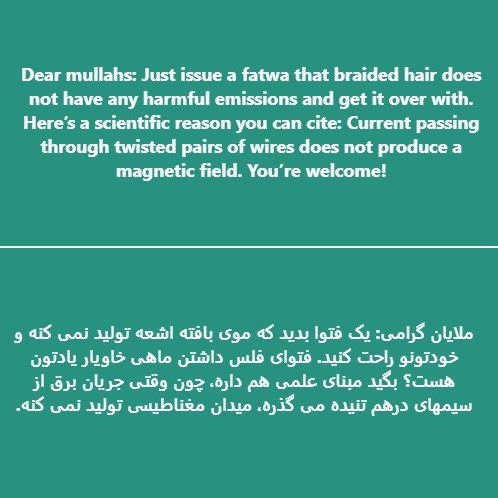
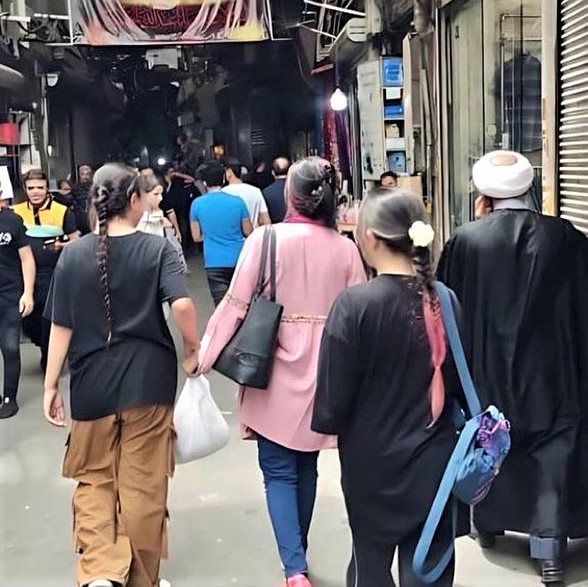 (1) Images of the day: [Left] Science magazine highlights Australia's environmental challenges (Issue of August 11, 2023): The special section features articles on wildfires, indigenous water science, loss of terrestrial biodiversity, approaches to conserving the marine ecosystem, and indigenous prescription for planetary health. [Center] A friendly suggestion to Iranian mullahs struggling to deal with women's hair. [Right] Iran is pregnant with more unrest (see the next item below).
(1) Images of the day: [Left] Science magazine highlights Australia's environmental challenges (Issue of August 11, 2023): The special section features articles on wildfires, indigenous water science, loss of terrestrial biodiversity, approaches to conserving the marine ecosystem, and indigenous prescription for planetary health. [Center] A friendly suggestion to Iranian mullahs struggling to deal with women's hair. [Right] Iran is pregnant with more unrest (see the next item below).
(2) First Anniversary of Mahsa Uprising in Iran: The Islamic regime is preparing for September 16, 2023, which is one year after #MahsaAmini died while in custody of Iran's morality police, triggering street protests throughout Iran that became known as the Mahsa or #WomanLifeFreedom Revolution. While the regime's brutal reaction, including the killing of 500+ protesters and blinding of many others, has calmed things down for now, the anniversary is expected to bring people back to the streets. [Photo credit: Masih Alinejad tweet]
(3) To conservatives who whine that Trump poses a risk to their election chances: Well, you created this monster. Don't try to make us feel sorry for you. We will take full advantage of your vulnerability with Trump!
(4) One-liners: Brief news headlines, happenings, memes, and other items of general interest.
- Donald Trump and 18 of his allies charged in Georgia election-meddling criminal case.
- US shift away from fossil fuels to clean energy is happening faster than you think.
- Women's soccer World Cup has reached the semifinal stage: Spain v. Sweden & Australia v. England.
- The eBay stalking scandal: How a journalist couple became the target of harassment by eBay employees.
(5) Missing Iranian wrestler, who protested the execution of Navid Afkari, confirmed dead: Amin Bazrgar went missing in 2021 after making a series of Instagram posts. Security forces have told his family that several of his bones were discovered on a mountain in Shiraz.
(6) Scientists must begin to rehabilitate their image: Multiple high-profile cases of research misconduct and the resultant legal actions are not conducive to productivity and public trust. [Science magazine editorial]
(7) Want a cool $1 million reward? Try proving within two years Goldbach's conjecture that any integer greater than 5 can be written as the sum of three prime numbers. For example, 21 = 11 + 7 + 3.
(8) "Killing Christians takes us to paradise": Two Muslim boys, aged 15 & 16, were recently tried in Austria and sentenced to two years in prison each, because they wanted to kill Christians and restore the caliphate. They had planned to massacre as many people as possible during an attack at the 15-year-old's middle school.
(9) In Stuart Walker's book Design for Resilience, Chap. 24 is entitled "Design for Resilience" (pp. 311-339). Within Chap. 24, there is a section entitled "Design for resilience" (pp. 329-332). I kid you not!




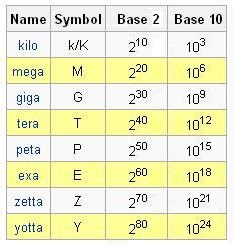
 (1) Images of the day: [Top left] Meme of the day: "Poverty exists not because we cannot feed the poor, but because we cannot satisfy the rich." [Top center & right] My train/walk adventure (see the next item below). [Bottom left] The US version of the board game "Chutes and Ladders" turns 80: The game is based on the ancient Indian game "Moksha Patam" that was brought to the UK in the 1890s. [Bottom center] SI and binary prefixes (see the last item below). [Bottom right] Math puzzle: I have posted instances of such geometric puzzles before. In this one, areas of four smaller squares are given and the area of the large square is sought.
(1) Images of the day: [Top left] Meme of the day: "Poverty exists not because we cannot feed the poor, but because we cannot satisfy the rich." [Top center & right] My train/walk adventure (see the next item below). [Bottom left] The US version of the board game "Chutes and Ladders" turns 80: The game is based on the ancient Indian game "Moksha Patam" that was brought to the UK in the 1890s. [Bottom center] SI and binary prefixes (see the last item below). [Bottom right] Math puzzle: I have posted instances of such geometric puzzles before. In this one, areas of four smaller squares are given and the area of the large square is sought.
(2) My train trip to Anaheim: Yesterday, I took Amtrak's Train 770 from Goleta to Anaheim to visit with some family members. Luckily, my destination was only a 35-minute walk away from the Anaheim Transportation Center, so I left my car at home and made it a rail/walk adventure. Even though the train ride was 4+ hours each way, I spent 3/4 of that time doing useful work, such as reading books, writing, reading/answering e-mail, and checking social media. Also, I calculated that the cost of the train ticket was a bit less than what I would have paid for gas. So, it was a win-win situation: Less stress & time waste, plus lower cost.
(3) One-liners: Brief news headlines, happenings, memes, and other items of general interest.
- As the Maui wildfire death toll approaches 100 and the extent of devastation becomes clearer, please help.
- Hawaii officials were warned years ago about deadly fire danger in Lahaina.
- In the women's soccer World Cup, all the teams with previous championships have been eliminated.
- Roller-skaters inject some joy in Iran's joyless society created by the mullahs.
- Being a good citizen: This man's removal of rocks from the road surface may have saved lives.
(4) SI and binary prefixes: System International, French for International System (of Units), in use worldwide, has a recommended set of prefixes for multiples and fractions of units. Even in the US, which isn't yet on board with SI, we use some of the units and prefixes (such as calorie & kilocalorie, second, volt, milliliter, milligram, and so on). Here is a partial list of the SI prefixes for multiples. [The full list]
kilo (k, 10^3), as in kilogram = kg, kilometer = km
mega (M, 10^6), as in megatonne = Mt, megapixel = MP
giga (G, 10^9), as in gigawatt = GW, gigahertz = GHz
The next three in the series are tera (T, 10^12), peta (P, 10^15), and exa (E, 2^18). So far, so good. However, in computer science & engineering, kilobyte usually does not mean 1000 bytes, but 1024 bytes. This is because 1024 equals 2^10, and powers of 2 are more convenient for use as memory-capacity units. The same holds for megabyte (2^20 bytes), gigabyte (2^30 bytes), terabyte (2^40 bytes), petabyte (2^50 bytes), and exabyte (2^60 bytes). The powers of 2 just cited are:
2^10 = 1024
2^20 = 1,048,576
2^30 = 1,073,741,824
2^40 = 1,099,511,627,776
2^50 = 1,125,899,906,842,624
2^60 = 1,152,921,504,606,846,976
The first four are fairly close to powers of 10, viz., one thousand, one million, and one billion. After that, the difference increases, until it reaches ~15% between 2^60 and 10^18. Because of the small differences, problems seldom arise from the ambiguity when we state, e.g., that a computer has a 1-TB SSD drive. However, science demands precision and it is best to have a unique interpretation for the value of each prefix.
Many proposals have been floated over the years, including the scheme of International Electrotechnical Commission (IEC). The IEC prefixes were incorporated into the ISO/IEC 80000 standard alongside the decimal SI prefixes in 2008. A nice feature of the IEC scheme is its uniformity: Ki is binary-kilo, Mi is binary-mega, and so on. The only exception is that the lowercase k for kilo is replaced with the uppercase version in Ki. This is to remain consistent with the past usages of k and K for kilo and binary-kilo, respectively. [More details]


 (1) Images of the day: [Left] Fifty years of hip-hop (see the next item below). [Center] The fight over water at the Iran-Afghanistan border: The age-old conflict is intensifying due to drought. The photo shows the bone-dry Hamun Lake in eastern Iran. [Right] Poster about science in the Soviet Union (see the last item below).
(1) Images of the day: [Left] Fifty years of hip-hop (see the next item below). [Center] The fight over water at the Iran-Afghanistan border: The age-old conflict is intensifying due to drought. The photo shows the bone-dry Hamun Lake in eastern Iran. [Right] Poster about science in the Soviet Union (see the last item below).
(2) Hip-hop turns 50: On August 11, 1973, DJ Kool Herc brought two turntables to his sister's Bronx party. He looped the funkiest snippets of songs. Music historians took note. "Rapper's Delight" by the Sugarhill Gang was the first mainstream hit in 1979. Run-DMC "kicked the door open" in the 1980s. Now, hip-hop is a worldwide phenomenon. [Source: Time magazine]
(3) Dissent in Iran: During this year's Muharram mourning rituals, Iranian mullahs got a slap on the face when mourners used chants criticizing their brutality, corruption, and anti-social ideas. [2-minute video]
(4) One-liners: Brief news headlines, happenings, memes, and other items of general interest.
- US National Oceanic and Atmospheric Administration completes upgrades to its supercomputer system.
- This stunning rainbow cloud spotted in China is caused by condensation from rapidly-rising air.
- Facebook memory from Aug. 11, 2019: When I met Donald Knuth at a TeX Users Group conference.
- Facebook memory from Aug. 11, 2015: Bride leads wedding guests in a spirited Indian dance routine.
- Facebook memory from Aug. 11, 2014: Beautiful recreation of the sounds of a thundershower.
(5) Repression of science in communist countries: During my August 10, 2023, presentation on Lagrange Points, I briefly cited the sci-fi novel The Three-Body Problem by Cixin Liu, in which he paints an interesting picture of physics research in China during Cultural Revolution, when speaking of the Big Bang theory and Einstein's special & general relativity were considered reactionary. Several questions arose during the Q&A session about why communism would oppose any science. I did some digging and present the results below.
First, ideology-based opposition to social sciences isn't surprising and is also observed in countries governed by Islamic theology. Statistics isn't a social science, but has many applications therein. Furthermore, the notion of randomness is at odds with the certainty & infinite wisdom claimed for central planning (or God's will in Islam).
Portions of physics were frowned upon by the Soviet Union. In the late 1940s, quantum mechanics and special & general relativity were criticized on grounds of "idealism." Soviet physicists developed a version of the statistical interpretation of quantum mechanics, which was seen as more adhering to the principles of dialectical materialism. This process did not go as far as defining an "ideologically correct" version of physics and purging non-conforming scientists, because of the realization that it might cause harm to the Soviet nuclear program. After the establishment of the People's Republic in 1949, China reorganized its science establishment along Soviet lines, using bureaucratic rather than professional principle of organization (that is, using non-scientist leadership), separating research from production, establishing specialized research institutes, and giving high priority to applied science & technology, which includes military technology.
In biology, a similar disdain developed in the Soviet Union. In the mid-1930s, Stalin supported the agronomist Trofim Lysenko and his campaign against genetics, which was characterized as "bourgeoisie science" (due in part to its association with the priest Gregor Mendel). In a notorious "Pavlovian Session" of the 1950 joint meeting of the USSR Academy of Sciences and the USSR Academy of Medical Sciences, several prominent Soviet physiologists were accused of deviating from Pavlov's teaching. The result of promoting pseudo-science was forcing physiologists to accept a dogmatic ideology that damaged the quality of biological research in the Soviet Union and isolated it from the international scientific community. In China, "learning from the Soviet Union" was the official policy in biological research until 1956, when the Qingdao Symposium brought about major changes leading to open discussions and rejection of Lysenko's pseudo-science.
References:
- Wikipedia: Repression of science in the Soviet Union
- Wikipedia: Pavlovian session
- Wikipedia: History of Science and technology in the People's Republic of China
- "Genetics in China: The Qingdao Symposium of 1956" (PDF)

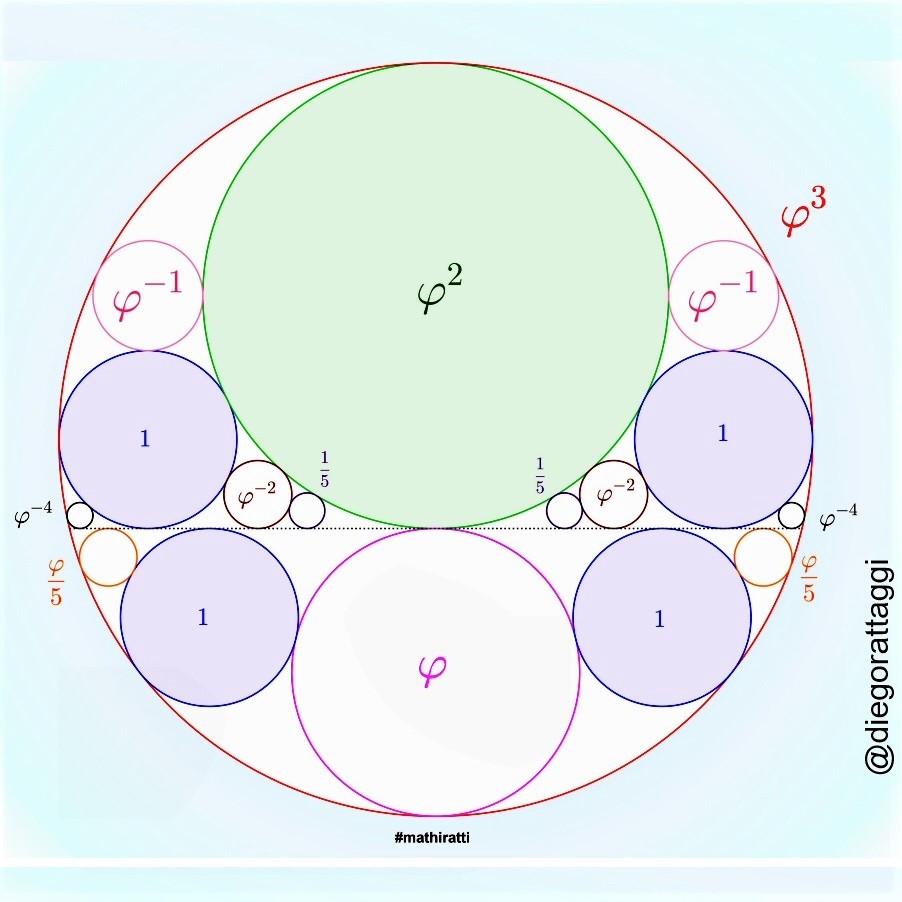

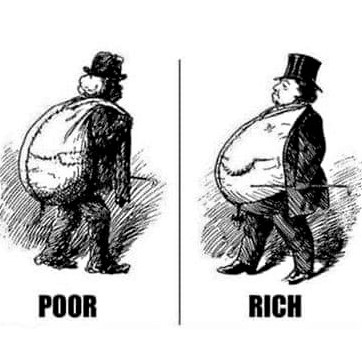
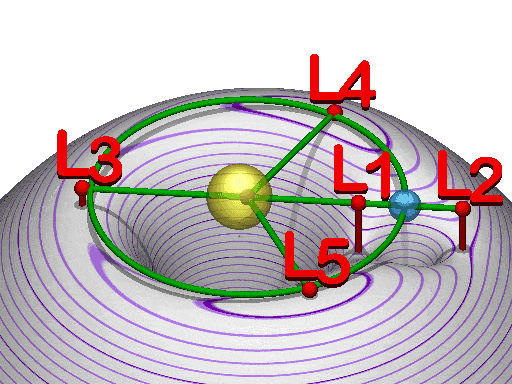
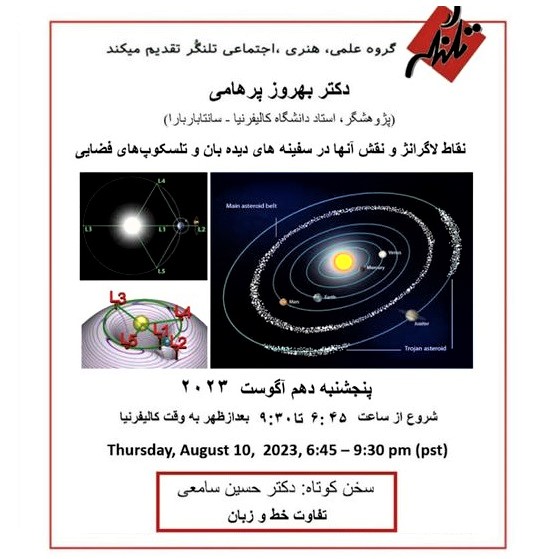 (1) Images of the day: [Top left] Throwback Thursday: Sister Mary Kenneth Keller, the first woman to earn a doctorate in computer science in the US, 1965. [Top center] Mathematics that amazes: This diagram is due to mathematician Diego Rattaggi. The number in/by each circle represents its radius and φ is the Golden Ratio. [Top right] Motifs found on objects dug up in Iran's Fars Province: Dated as far back as 500 BCE, these motifs offer ideas for artwork, interior decoration, and even tattoos. [Bottom left] A creative artist's depiction of the poor and the rich. [Bottom center & right] Technical talk on Lagrange Points (see the last item below).
(1) Images of the day: [Top left] Throwback Thursday: Sister Mary Kenneth Keller, the first woman to earn a doctorate in computer science in the US, 1965. [Top center] Mathematics that amazes: This diagram is due to mathematician Diego Rattaggi. The number in/by each circle represents its radius and φ is the Golden Ratio. [Top right] Motifs found on objects dug up in Iran's Fars Province: Dated as far back as 500 BCE, these motifs offer ideas for artwork, interior decoration, and even tattoos. [Bottom left] A creative artist's depiction of the poor and the rich. [Bottom center & right] Technical talk on Lagrange Points (see the last item below).
(2) Oral History of Iranian Jews: Housed at UCLA Library's Special Collections.
Abstract: Record Series 779 contains oral history transcripts and audio recordings donated to UCLA's Center for Oral History Research, and interviews from the Center for Iranian Jewish Oral History, many of them in Persian.
I learned from this 86-minute video about Homa Sarshar being honored with the 13th Bita Prize that she has donated an extensive archive about Jews of Iran, along with her own personal papers, to Stanford University.
(3) One-liners: Brief news headlines, happenings, memes, and other items of general interest.
- Hawaii wildfires loss: 36 deaths, 1000s of evacuees, & total destruction of the historic town of Lahaina.
- Hawaii late-night update: Maui wildfire death toll has risen to 53 and is expected to rise even further.
- "Inside the Iranian Uprising": An informative & effective 53-minute episode of the PBS series "Frontline."
- Physicist Neil deGrasse Tyson speaks his mind on Barbie and the outrage over the new "Barbie" movie.
(4) Golriz Ghahraman, a young woman who fled Iran with her family when she was 9 and is now a member of parliament in New Zealand, challenges Iran's ambassador in front of a number of New Zealand MPs.
(5) Iran's hostage-taking is rewarded once again: I am happy for the five Americans who will be coming home, but they will soon be replaced by other Americans in Iranian jails. [NYT report]
(6) Tonight's Talangor Group talk: Yours truly spoke in Persian under the title "Lagrange Points and Their Significance to Observation Satellites and Space Telescopes." There were ~65 attendees.
A brief presentation by Dr. Hossein Samei entitled "The Difference Between Script and Language" preceded the main talk. One interesting observation was that languages have been around for ~300,000 years, whereas scripts are fairly new (~5000 years). Some languages have no written form. Children learn their mother tongue way before they learn to read or write. Script is a technological phenomenon, not an integral part of a language. There exist thousands of languages but only two-dozen basic scripts.
Application of math to physics has given rise to the field of mathematical physics. Mathematician Joseph-Louis Lagrange [1736-1813] did pioneering work in this area. After reviewing a few concepts from physics about motion, equilibrium, and gravitational attraction, I introduced one problem in this domain, its solution, and a few notable applications to Earth observation, monitoring of the Sun, and space telescopes. The problem addressed is an instance of the three-body problem, which is super-difficult to solve in general. However, when one of the bodies is much smaller than the other two, so that its gravitational pull can be neglected (e.g., a satellite, compared with the Earth and the Moon), the problem becomes tractable. For each pair of heavy objects, with one rotating around the other, there are five special Lagrange Points in space. These points were introduced and related to the applications cited above.




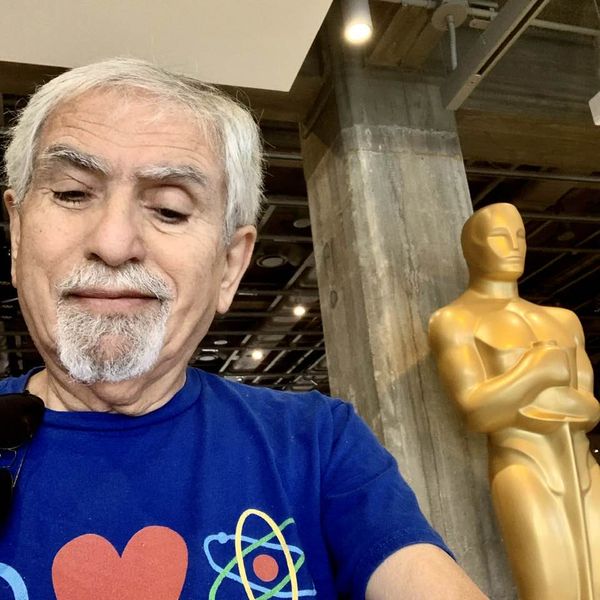







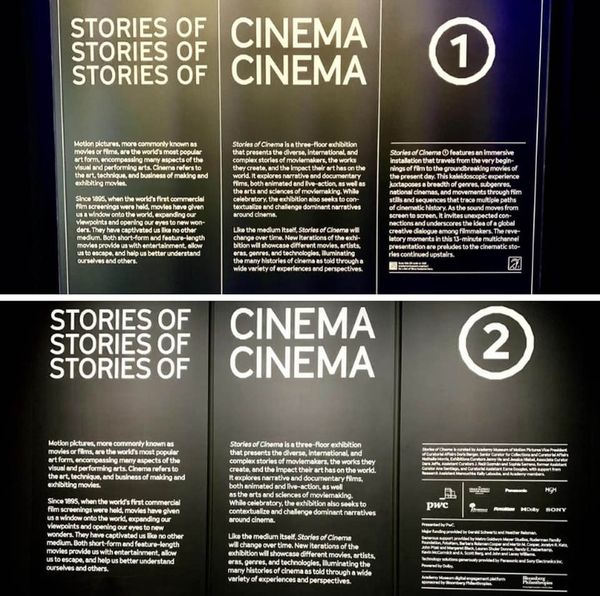
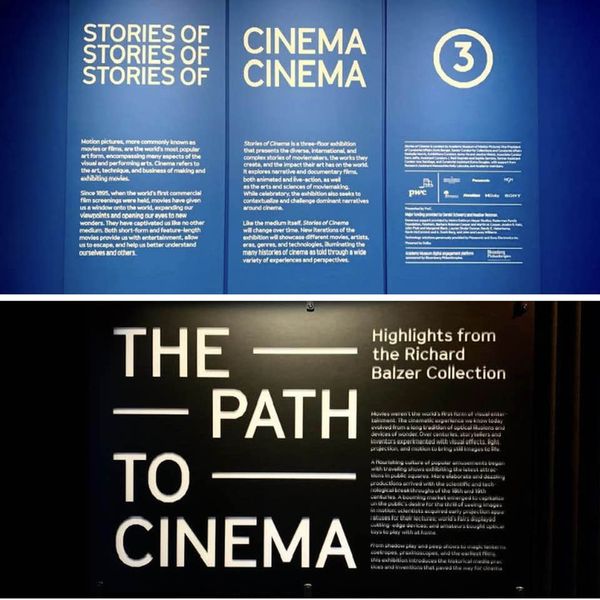
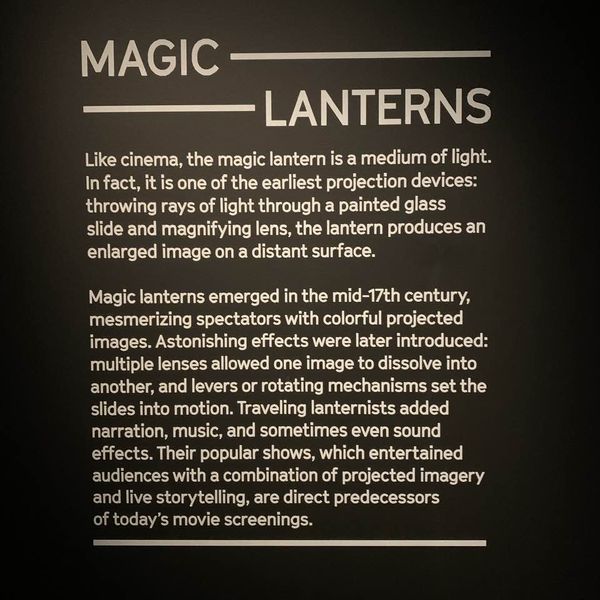



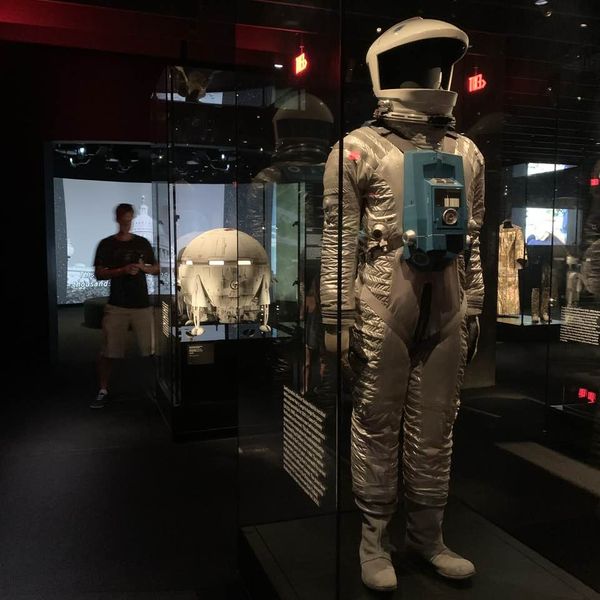


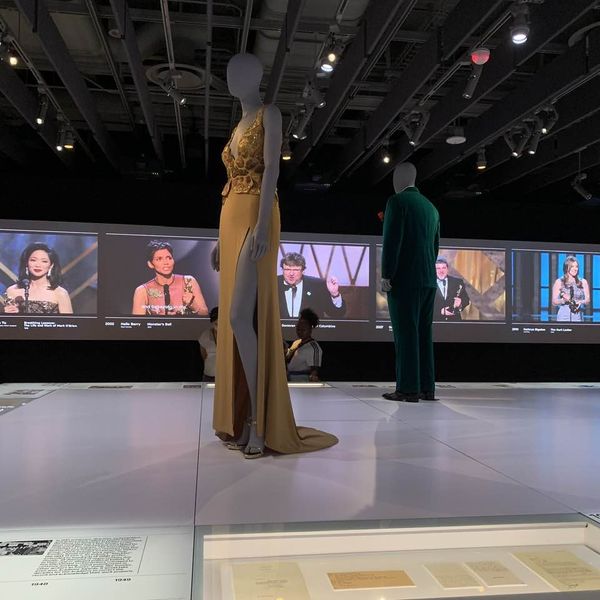




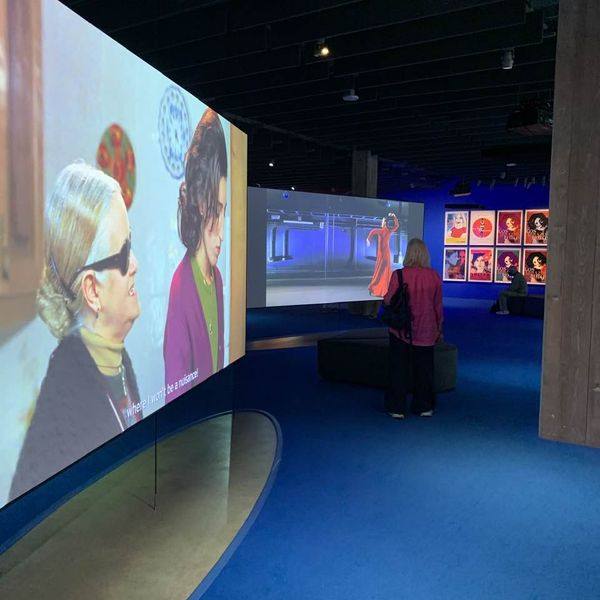 [Top row] My day-trip to Academy Museum of Motion Pictures: Located at 6067 Wilshire Blvd., right next door to LACMA, the Museum is a treat for movie lovers. Movies occupy a special position at the intersection of arts and technology, so both artists and tech enthusiast will enjoy the extensive exhibits offered here.
[Top row] My day-trip to Academy Museum of Motion Pictures: Located at 6067 Wilshire Blvd., right next door to LACMA, the Museum is a treat for movie lovers. Movies occupy a special position at the intersection of arts and technology, so both artists and tech enthusiast will enjoy the extensive exhibits offered here.
[Second row] Every corner of the Academy Museum is filled with exhibits on cinema and film artists, including the entry lobby named in honor of pioneer and norm-breaking actor/director Sidney Poitier.
[Third row] Three early devices creating the illusion of motion (Praxinoscope, Mutoscope, Phenakistiscope).
[Fourth row] The Barbra Streisand bridge connects the Academy Museum of Motion Picture's main building to the Dolby Family Terrace, where one can relax while enjoying an expansive view of the surrounding areas.
[Fifth row] The 3-story exhibit entitled "Stories of Cinema" is augmented with a tour of cinema's pre-history in the exhibit "The Path to Cinema," which contains multiple early devices and a display on Magic Lanterns.
[Sixth row] The exhibit entitled "Back Drop: An Invisible Art" uses Alfred Hitchcock's 1959 film "North by Northwest" to illustrate how much work goes into creating what you see behind the actors. Initially, backdrops were painted. Later, photographs were used. Now, digital displays do the job.
[Seventh row] Some of Academy Museum's displays on character creation.
[Eighth row] Some of the displays on the Oscars and make-believe locations (animated or live action).
[Bottom row] Among movies honored in exhibits are "Casablanca" and the works of Pedron Almadovar.


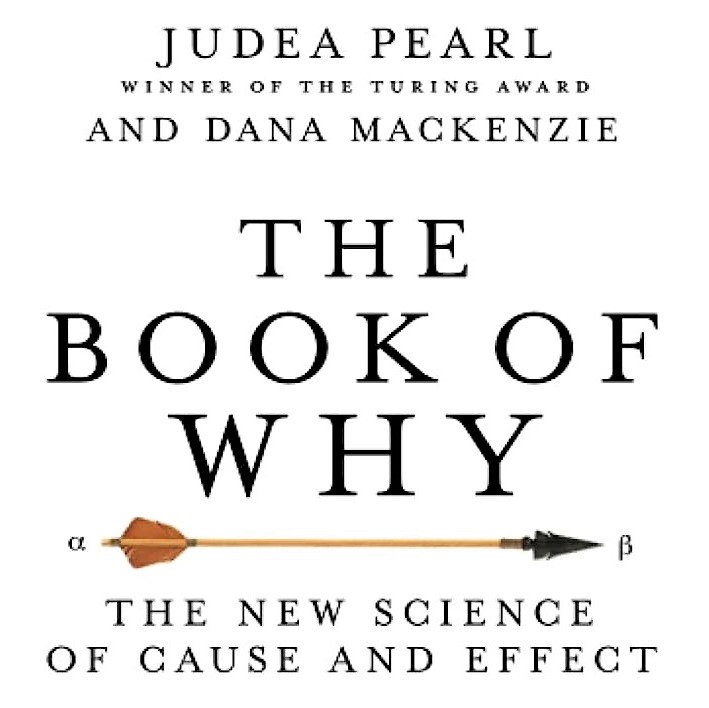 (1) Images of the day: [Left] The widening US income gap: Income growth since 1980, after taxes & benefits, by income group (New York Times chart). [Center] JR-15, the fully-functional assault rifle for kids (JR = junior, get it?): Just what we needed, because we don't have enough school shootings & other forms of gun violence. [Right] The Book of Why, by Judea Pearl & Dana Mackenzie (see the last item below).
(1) Images of the day: [Left] The widening US income gap: Income growth since 1980, after taxes & benefits, by income group (New York Times chart). [Center] JR-15, the fully-functional assault rifle for kids (JR = junior, get it?): Just what we needed, because we don't have enough school shootings & other forms of gun violence. [Right] The Book of Why, by Judea Pearl & Dana Mackenzie (see the last item below).
(2) US women's exit from the 2023 soccer World Cup: The penalty kick nearly saved by the US goalie actually crossed the goal line by millimeters, giving Sweden an advantage in the sudden-death stage of PKs. The Swedish goalie emerged as the game's hero, for saving multiple shots during the match.
(3) NASA reestablishes contact with Voyager 2: The spacecraft, which left Earth 46 years ago and is currently 12.3 billion miles away, stopped communicating in July, when controllers accidentally sent a command that shifted its antenna 2 degrees away from Earth. A special command, dubbed "interstellar shout," has led to the reorientation of the spacecraft's antenna and resumption of communications with Earth. Voyager 2, the only spacecraft to have flown by Neptune and Uranus is now outside the Solar System, in the interstellar space. It's twin, Voyager 1, is the most-distant spacecraft from Earth (around 15 billion miles away, or ~5 times further than Pluto).
(4) Book review: Pearl, Judea and Dana Mackenzie, The Book of Why: The New Science of Cause and Effect, Hachette, 2018.
[My 4-star review of this book on GoodReads]
Computer scientist Judea Pearl (UCLA) and writer Dana Mackenzie introduce their target general audience to the subject of causality and causal inference from statistical and philosophical viewpoints. During my doctoral studies at UCLA in the early 1970s, I was fortunate to be a student in Judea Pearl's graduate course on computer memories, a topic outside his areas of expertise that he must have taught based on departmental need; yet, I learned a great deal from the course.
Early-20th-century statistical methods were inadequate for describing causal relationships between variables. A "Causal Revolution," which began in mid-20th-century, provided conceptual and mathematical tools for the task. Common statistical tools, such as correlation and regression, operate at the level of association (a crowing rooster is associated with a rising sun), without any implication that one event causes the other event.
Higher levels or rungs of the ladder of causation, intervention and counterfactuals, deal with these two questions: "How does intervention X affects the outcome Y?" and "What might have been under different circumstances?" Bayes' Theorem and Bayesian networks are introduced as tools related to causal diagrams. Ironically, it is rather difficult to show that cigarette-smoking causes cancer; it does, but no amount of discussion of correlation between smoking and cancer constitutes adequate proof.
Causal reasoning helps resolve a number of well-known paradoxes: The Monty Hall Problem, Simpson's Paradox, Berkson's Paradox, and Lord's Paradox. The authors end their presentation in Chapter 10 with a discussion of the use of causal reasoning in big-data and AI. Solving the tough philosophical problem of AI reflecting on its own actions requires the use of counterfactuals and, thus, causal reasoning.
The book's table of contents follows.
Introduction: Mind Over Data
Chapter 1: The Ladder of Causation
Chapter 2: From Buccaneers to Guinea Pigs: The Genesis of Causal Inference
Chapter 3: From Evidence to Causes: Reverend Bayes Meets Mr. Holmes
Chapter 4: Confounding and Deconfounding: Or, Slaying the Lurking Variable
Chapter 5: The Smoke-Filled Debate: Clearing the Air
Chapter 6: Paradoxes Galore!
Chapter 7: Beyond Adjustment: The Conquest of Mount Intervention
Chapter 8: Counterfactuals: Mining Worlds that Could Have Been
Chapter 9: Mediation: The Search for a Mechanism
Chapter 10: Big Data, Artificial Intelligence, and the Big Questions
Pearl & Mackenzie have an information page on the book, with much useful background, as well as links to many pertinent news reports and book reviews.


 (1) Images of the day: [Top left] The ancient Roman Theater of Sabratha, Libya. [Top center & right] Today, on the last day of the 2023 Fiesta (Old Spanish Days), I visited Santa Barbara's waterfront, where an arts & crafts show was held along Cabrillo Blvd., various street musicians provided entertainment for the crowd, and a historic tall ship was open to visitors. "The Mission of San Salvador" replica tells part of Santa Barbara's origin story. It was in this ship that Juan Rodriguez Cabrillo sailed to establish the first contact between Europeans and native people of the west coast of North America at the beginnings of the modern world.
(1) Images of the day: [Top left] The ancient Roman Theater of Sabratha, Libya. [Top center & right] Today, on the last day of the 2023 Fiesta (Old Spanish Days), I visited Santa Barbara's waterfront, where an arts & crafts show was held along Cabrillo Blvd., various street musicians provided entertainment for the crowd, and a historic tall ship was open to visitors. "The Mission of San Salvador" replica tells part of Santa Barbara's origin story. It was in this ship that Juan Rodriguez Cabrillo sailed to establish the first contact between Europeans and native people of the west coast of North America at the beginnings of the modern world.
(2) Living like a billionaire, without being one: The latest revelation about Supreme Court Justice Clarence Thomas is that, besides taking billionaire-style vacations involving yachts and exotic locations, he owns a $267,230 RV, built from a 40-foot converted bus with someone else's money. [NYT report]
(3) Billionaire Wendy McCaw paid a fortune for Santa Barbara News Press: After 23 years of turmoil, she buried the corpse of the once-thriving newspaper. Here is an in-depth story from Washington Post.
(4) One-liners: Brief news headlines, happenings, memes, and other items of general interest.
- Meeting in Saudi Arabia may be the first ever "peace talks" where only one side of the conflict is invited.
- US women's soccer team exits the 2023 World Cup after its 0-0 match (decided on PKs) against Sweden.
- In defense of LGBTQ rights: Impassioned speech by Los Angeles School Board President.
- Mahtab Ghorbani's speech about Iran's brutal Islamic regime during a Senate session in France.
- A woman plays music on a street in Tehran, while defying Iran's compulsory hijab laws.
- LinkedIn post by a friend: I'm happy to share that I'm starting a new position as Retired at None!
(5) On watching "Oppenheimer" at an IMAX theater: On Saturday, I drove to Camarillo's Edwards Cinemas, which is the nearest IMAX theater to me. I had read that watching Christopher Nolan's "Oppenheimer," with its brilliant cinematography, on IMAX is well worth the extra cost (and in my case, 75 minutes of driving each way). I wasn't disappointed.
Robert Oppenheimer was an enigmatic scientist, brilliant but also mercurial, who led US's efforts to develop the atom bomb (The Manhattan Project) near the end of World War II. He wasn't completely trusted because he befriended a member of the US Communist Party, but his expertise was too valuable to the war effort to set aside. So, he was put in charge, while being under surveillance. He emerged as a hero, when the project successfully tested an atom bomb, with the US military dropping two bombs on Japanese cities shortly thereafter. The film shows Oppenheimer enjoying the limelight in the wake of the project's success, while also harboring doubts about weapons of mass destruction and the potential for an arms race with the Soviet Union getting out of control. In the end, he was heartbroken when his security clearance was revoked after a Joseph-McCarthy-style tribunal ruled that he could not be trusted.
Cillian Murphy is magnificent in the title role, as are Emily Blunt (playing his wife Kitty), Robert Downey Jr. (portraying the devious Lewis Strauss), and Rami Malek (as physicist David Hill). Matt Damon's performance as General Leslie Grove is less impressive. The film itself is well done, both cinematically and with regard to its message of political manipulation in Washington, where people are disposed like soiled toilet paper when they no longer serve the political ambitions of those pulling the strings.
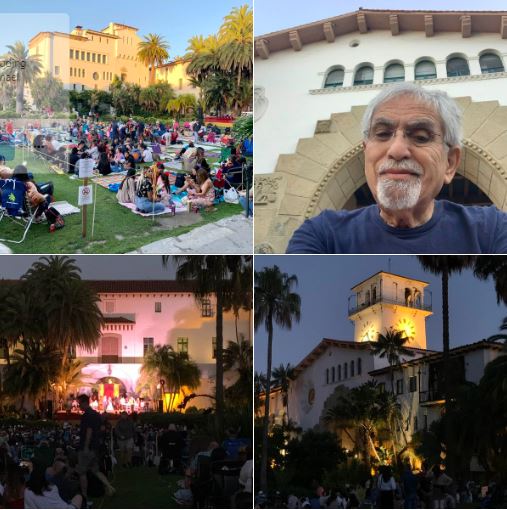



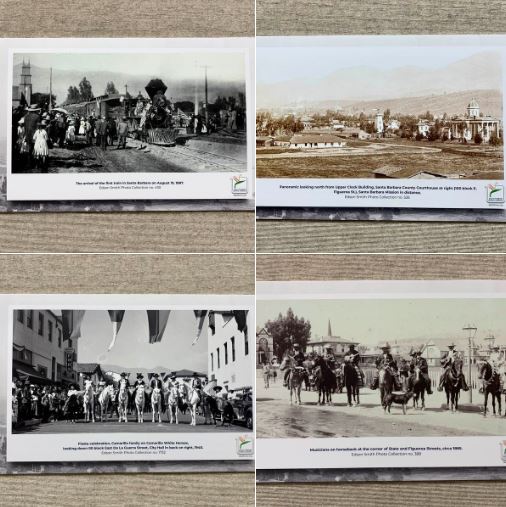
 (1) Images of the day: [Top left] Fiesta song-and-dance performance venue, the majestic Santa Barbara Courthouse (Video 1; Video 2). [Top center] Exhibition of photos at SB Public Library: Highlights from the Edson Smith Historical Photograph Collection, which contains over 3100 images of Santa Barbara from the 1870s to the 1950s (The Public Library Building over the years). [Top right] Art exhibit at SB Public Library: Teacher/Librarian Julia Laraway's fabric collage and art quilts made of cotton batik and silk fabrics featuring birds and animals of Santa Barbara's San Marcos Foothills. [Bottom row] Three more batches of photos from the historic photos exhibit, including images from the 1925 SB earthquake, scenes from Fiesta & the first train arrival in SB, and State Stree, oil drilling, fire department, & store.
(1) Images of the day: [Top left] Fiesta song-and-dance performance venue, the majestic Santa Barbara Courthouse (Video 1; Video 2). [Top center] Exhibition of photos at SB Public Library: Highlights from the Edson Smith Historical Photograph Collection, which contains over 3100 images of Santa Barbara from the 1870s to the 1950s (The Public Library Building over the years). [Top right] Art exhibit at SB Public Library: Teacher/Librarian Julia Laraway's fabric collage and art quilts made of cotton batik and silk fabrics featuring birds and animals of Santa Barbara's San Marcos Foothills. [Bottom row] Three more batches of photos from the historic photos exhibit, including images from the 1925 SB earthquake, scenes from Fiesta & the first train arrival in SB, and State Stree, oil drilling, fire department, & store.
(2) Dr. Nadia Nadim: She plays on the Danish women's national soccer team and has scored ~200 goals in her professional career. She fled Afghanistan at age 11 when her father was executed by the Taliban, speaks 11 languages, and plans to become a reconstructive surgeon when her playing days are over. [14-minute video]
(3) One-liners: Brief news headlines, happenings, memes, and other items of general interest.
- The gunman who killed 11 people in Pittsburgh's Tree of Life Synagogue was sentenced to death.
- UCLA Chancellor Gene Block to go back to academic work after 17 years of leading the campus.
- Like other organizations, universities are reconfiguring resources, as more employees seek remote work.
- Number of students from immigrant families at US colleges rose from 20% in 2000 to 33% in 2021.
- Trump, breaking into song: "I'm so indicted, I just can't hide it; I'm about to go to jail and I don't like it."
- Quote of the day: "It's not the voting that's democracy; it's the counting." ~ Tom Stoppard
- Concession speeches by US candidates: There was none in 2020 and there may be none in 2024.
- Justin Trudeau and his wife, Sophie Gregoire Trudeau, are separating.
- World's oldest (known/recorded) kiss happened ~4500 years ago in the Middle East.
- Expertise is pattern recognition: How a master chess player's memory is different from ours.
- Fifteen scenes in famous movies that the actors later regretted agreeing to shoot. [18-minute video]
- Fcebook memory from Aug. 4, 2014: Verses from Sa'adi's Boustan, with an adage-like final verse.
- Fcebook memory from Aug. 4, 2010: Costco exploiting the passions of those addicted to booze and guns.
(4) Water-rights fight between Afghanistan and Iran: This 24-minute documentary, narrated in Persian, traces the long history of conflict over water from Hirmand (Helmand) river, which is vital for agriculture and ranching in both countries.
(5) Germany was eliminated from the 2023 Women's World Cup: A 1-1 draw against South Korea, along with Morocco's 1-0 defeat of Colombia led to Germany being sent home before the knock-out stage for the first time ever (5-minute highlights). Another surprise was the elimination of Brazil after a 0-0 draw with Jamaica.
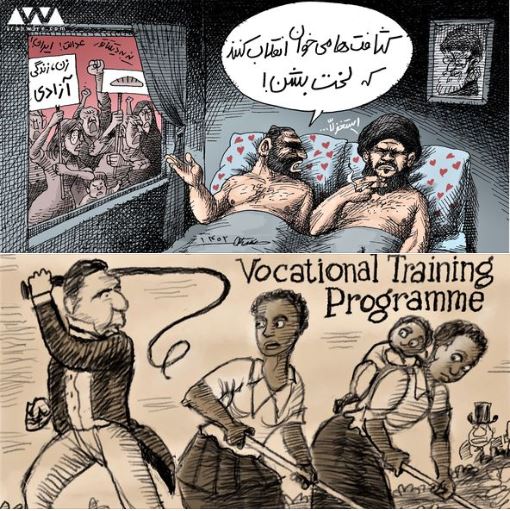

 (1) Images of the day: [Left] Cartoons of the day: Officials & clerics in charge of enforcing Iran's hijab laws have been exposed as having illicit sex with both men and women. Meanwhile, Florida rolls out its new vocational training program. [Center] Rebecca Traister's All the Single Ladies (see the last item below). [Right] The 18th-century equivalent of multiple open windows on your big-screen monitor.
(1) Images of the day: [Left] Cartoons of the day: Officials & clerics in charge of enforcing Iran's hijab laws have been exposed as having illicit sex with both men and women. Meanwhile, Florida rolls out its new vocational training program. [Center] Rebecca Traister's All the Single Ladies (see the last item below). [Right] The 18th-century equivalent of multiple open windows on your big-screen monitor.
(2) One-liners: Brief news headlines, happenings, memes, and other items of general interest.
- The credit rating of United States was downgraded for the second time on Tuesday 8/01.
- Making sense of legal jargon: New York Times has annotated Donald Trump's latest indictment document.
- Room-temperature, ambient-pressure superconducting material claimed by a Korean research team.
- Florida moves to a different time zone (the 1800s): Cases of leprosy surge in Central Florida.
- Two Iranian journalists, imprisoned for exposing #MahsaAmini's death, earn a major international honor.
- Iran closes schools and other services due to 100-degrees-plus heat and shortage of electricity.
(3) Book review: Traister, Rebecca, All the Single Ladies: Unmarried Women and the Rise of an Independent Nation, Simon & Schuster, 2018.
[My 4-star review of this book on GoodReads]
The titles of this book's 10 chapters, sandwiched between an introduction and a conclusion, provide an apt summary of its big ideas.
Chapter 1: Watch Out for That Woman: The Political and Social Power of an Unmarried Nation
Chapter 2: Single Women Have Often Made History: Unmarried in America
Chapter 3: The Sex of the Cities: Urban Life and Female Independence
Chapter 4: Dangerous as Lucifer Matches: The Friendships of Women
Chapter 5: My Solitude, My Self: Single Women on Their Own
Chapter 6: For Richer: Work, Money, and Independence
Chapter 7: For Poorer: Single Women and Sexism, Racism, and Poverty
Chapter 8: Sex and the Single Girls: Virginity to Promiscuity and Beyond
Chapter 9: Horse and Carriage: Marrying—And Not Marrying—In the Time of Singlehood
Chapter 10: Then Comes What? And When? Independence and Parenthood
It used to be that almost all college girls/boys had boyfriends/girlfriends. The exceptions were few and far in between. That's no longer the case. The author writes that at 18, she had never even had a serious boyfriend, and neither had any of her closest friends. In lieu of dating, her generation hung out and hooked up. So, the median age of first marriage among American women, historically hovering around 21, has risen to ~27, with the fraction of married women dropping below 50%. The fraction of married Americans aged 18-29 has dropped from 60% in 1960 to ~20% today.
For modern women, the early adult years, which were spent in married life by their mothers, are spent developing careers & friendships, falling in & out of love, moving in & out of apartments, paying their own bills, and prospering & getting in financial trouble. The unmarried lifestyle has come to be accepted by society. A state that was viewed as a disorder not too long ago is now considered normal. This independence comes at a price, however. "Many single women are poor or struggling. Almost 50 percent of the 3.3 million Americans now earning minimum wage or below are unmarried women."
Whereas old-fashioned women waited for their real lives to start upon getting married, modern women are living their real lives without waiting. Singledom is to be celebrated, not because it is necessarily a better way of life but rather because it expands the set of options available to women (and men). "Single female life is not prescription, but its opposite: liberation." I highly recommend this book and urge you to familiarize yourself with the epoch of single women.
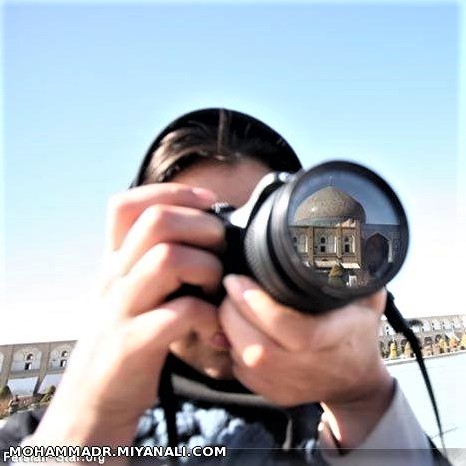
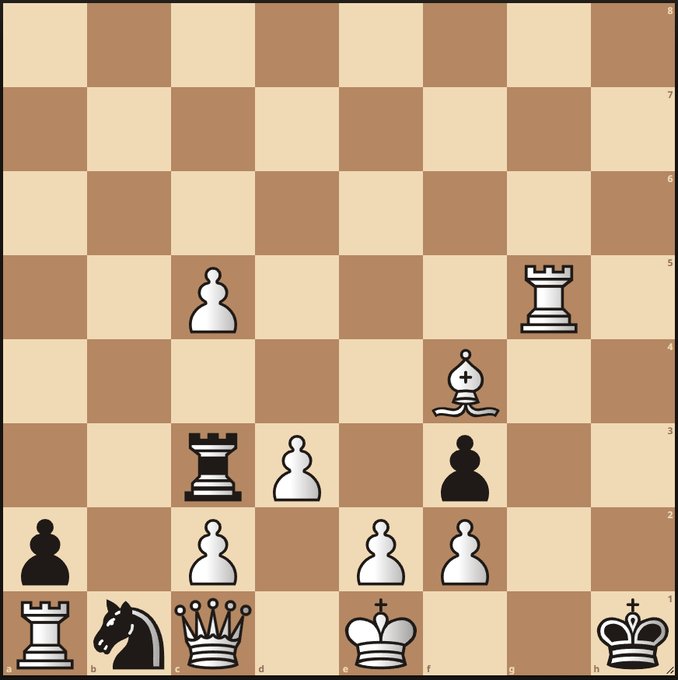

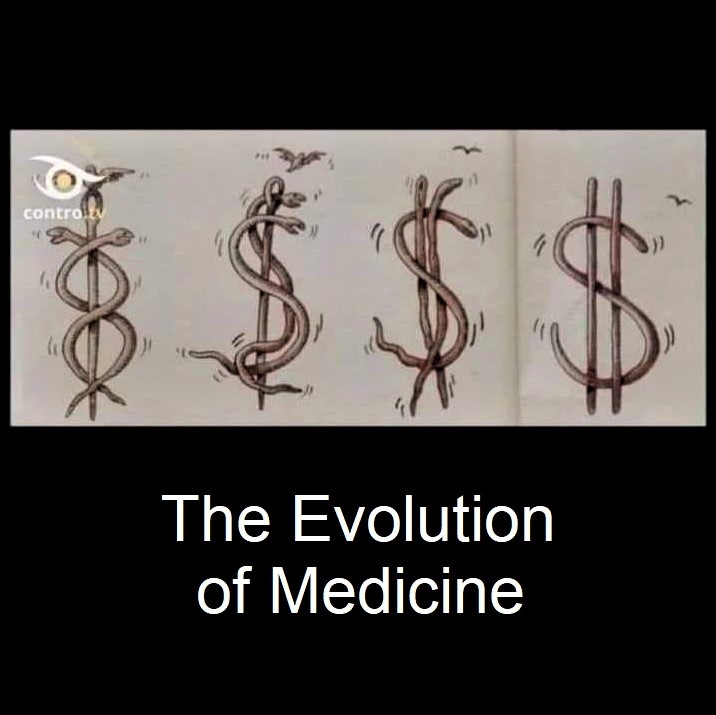

 (1) Images of the day: [Top left] A beautiful mosque in Esfahan, Iran, reflected in a photographer's camera lens. [Top center] Challenging chess puzzle: White to start and mate in two moves. [Top right] Maria Ressa's How to Stand Up to a Dictator (see the last item below). [Bottom left] The evolution of medicine over the ages. [Bottom center] Forgive me Father, for I have sinned: I had some leftover Persian herbs-stew (ghormeh-sabzi) but no rice. So, I ate the stew with leftover pasta noodles. I have repented! [Bottom right] Ancient roads built by workers with no degrees lasted for an eternity. Then, the engineers arrived!
(1) Images of the day: [Top left] A beautiful mosque in Esfahan, Iran, reflected in a photographer's camera lens. [Top center] Challenging chess puzzle: White to start and mate in two moves. [Top right] Maria Ressa's How to Stand Up to a Dictator (see the last item below). [Bottom left] The evolution of medicine over the ages. [Bottom center] Forgive me Father, for I have sinned: I had some leftover Persian herbs-stew (ghormeh-sabzi) but no rice. So, I ate the stew with leftover pasta noodles. I have repented! [Bottom right] Ancient roads built by workers with no degrees lasted for an eternity. Then, the engineers arrived!
(2) One-liners: Brief news headlines, happenings, memes, and other items of general interest.
- Special Counsel Jack Smith reads a statement about Donald Trump's indictment for January 6 crimes.
- Borowitz Report (humor): Trump only a few indictments away from clinching GOP nomination.
- Iran politics: "Iran in a Transformative Process by Woman, Life, Freedom" (Article by Dr. Nayereh Tohidi).
- Rock-climbing couple say their wedding vows while climbing rocks near Tabriz, Iran. [1-minute video]
(3) Book review: Ressa, Maria, How to Stand Up to a Dictator: The Fight for Our Future, unabridged 10-hour audiobook, read by the author and Rebecca Mozo, Harper Audio, 2022.
[My 4-star review of this book on GoodReads]
This book is an important memoir/manifesto, but it suffers from over-generalizations and undue simplifications. The Nobel Peace Laureate author, born in Manila and raised in the US from age 10, relates her first-hand experience, having made a name for herself as a CNN correspondent in Asia, where she brought many innovations to the live coverage of events through social media. Her first brush with dictatorship came when Rodrigo Duterte was elected president of the Philippines, unleashed a murderous war on drugs, and harassed his on-line critics, which included Ressa and the Rappler news site she helped launch.
Ressa's critical journalism led to a sequence of 10 arrests over a period of only 2 years. The problem with social media is that while it is a great tool for citizen journalism, it is also a deadly weapon in the hands of a dictator and his/her cyber-army. Duterte unleashed vicious social-media attacks and abused the justice system to charge his critics with various crimes, such as tax evasion, securities violations, or cyber-libel.
Ressa isn't shy about blaming Facebook and Mark Zuckerberg, whose greedy policies have led to uncontrolled spread of disinformation, benefiting primarily oppressors who have vast financial and human resources. She stresses the need for legislation to hold technology companies accountable, more international collaboration between news organizations in spreading facts and democratic ideals, and more spending on investigative journalism to help expose dictators' playbooks.
Standing up to a dictator isn't risk-free: Exposing the dictator's methods subjects you to on-line harassment, arrests & other judicial entanglements, and even imprisonment. At the extreme, you may be forcefully "disappeared" or physically eliminated. The global reach and instant spread of news helps mitigate the risks to some extent, but you may still have to wear a bullet-proof vest and watch your comings & goings.
A key element of social media's role in the spread of disinformation is recommendation algorithms. Mindlessly recommending a fake story or a conspiracy theory to someone who posts or reads similar stories creates a vicious cycle that leads to radicalization. The greed element comes into play because such recommendations are much cheaper to implement than ones that have humans in the loop. An algorithm to maximize ad revenues will invariably lead to compartmentalized groups of users, each of which is extremely biased and not open to alternative viewpoints.
Of course, even if the will for tighter control of the spread of disinformation emerges in the tech industry and the society as a whole, the technical aspects of the problem are ultra-complex. Once you put a group of individuals in charge of purging "undesirable" stories from social media, you need mechanisms to prevent the abuse of this censorship power. Such details are what distinguish a manifesto from a fully fleshed-out implementation plan.

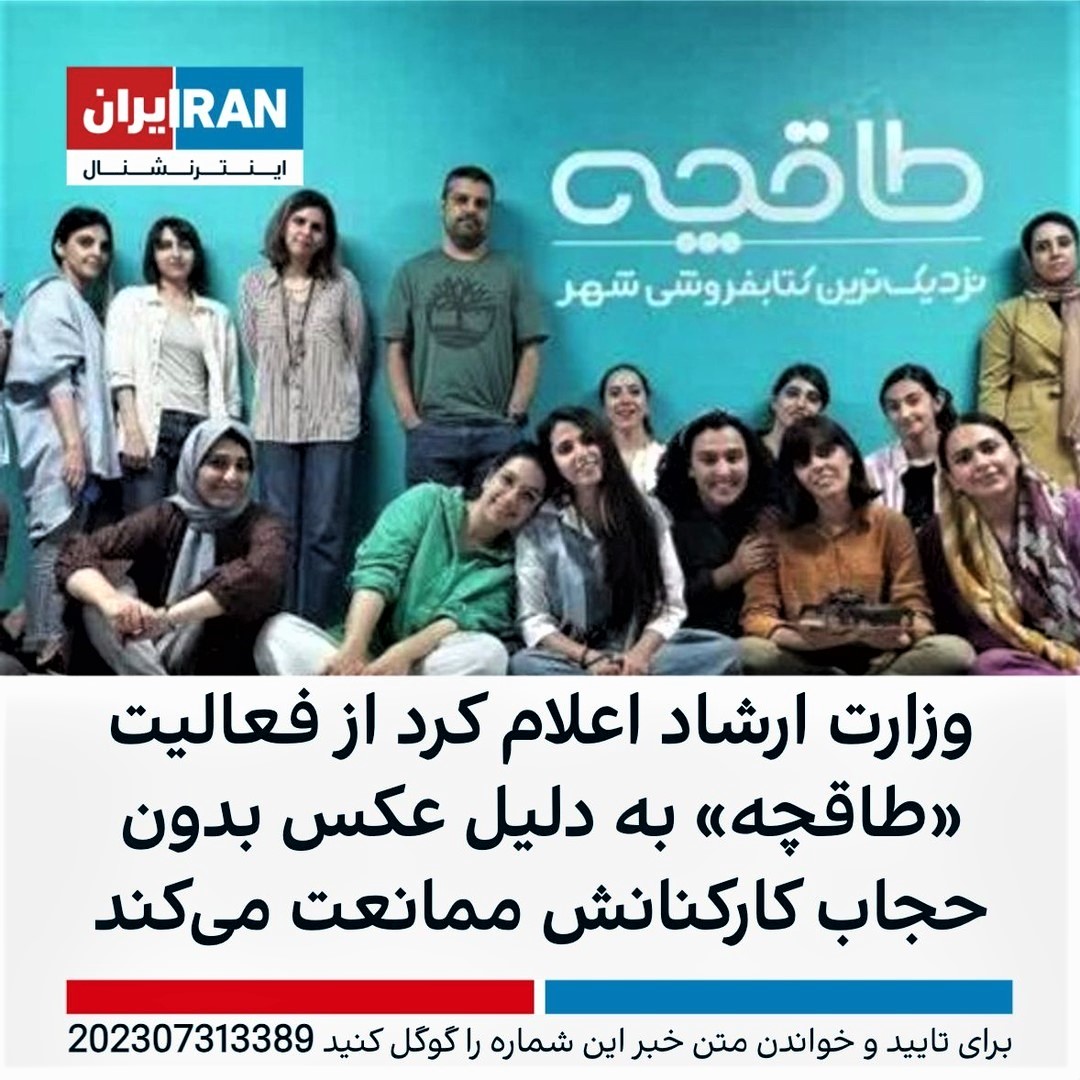
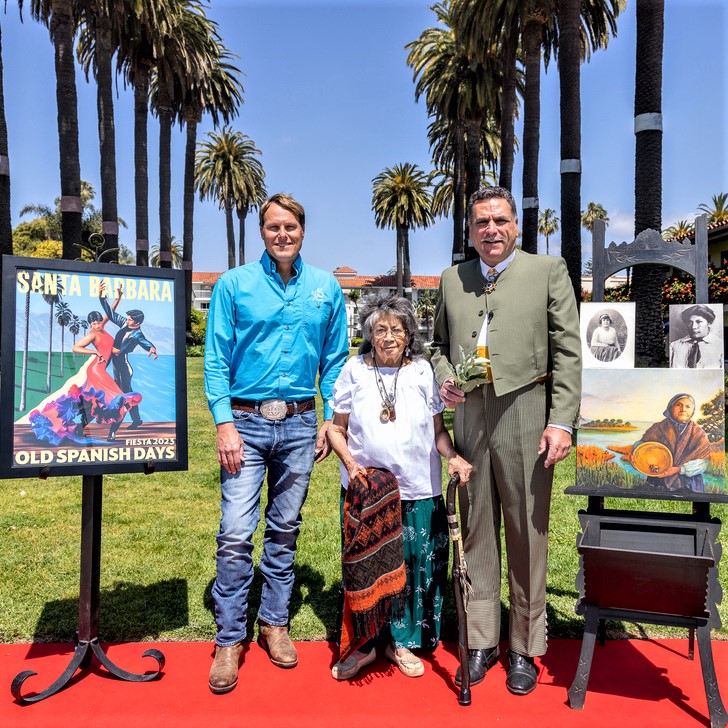 (1) Images of the day: [Left] Sign posted at Rusty's Pizza on Storke Road in Goleta. [Center] An on-line book seller is being shuttered in Iran because of its employees posting a hijab-less photo. [Right] Santa Barbara's La Fiesta is coming (see the last item below).
(1) Images of the day: [Left] Sign posted at Rusty's Pizza on Storke Road in Goleta. [Center] An on-line book seller is being shuttered in Iran because of its employees posting a hijab-less photo. [Right] Santa Barbara's La Fiesta is coming (see the last item below).
(2) Apocalypse/Apocalyptic numbers: These numbers have 666 digits, where 666 is the beast number. The 3184th Fibonacci number is apocalyptic and its first 6 digits are 116724, which suggest the existence of three other apocalyptic Fibonacci numbers. Apocalyptic primes are of the form 10^665 + n, where n = 123, 1837, 6409, 7329, 8569, 9663, ... (Online Encyclopedia of Integer Sequences, A115983).
(3) How to deal with an unreasonable reviewer asking to cite irrelevant references: Attempt by reviewers to pad their own citations or those of their collaborators is a serious problem in our current peer-review process. Some reviewers want to have their publications or those of associates cited, even if the works are irrelevant or marginally relevant to the item under review. Unfortunately, many authors hesitate to fight such requests and opt for including the suggested references, just to gain the approval of the unreasonable reviewer and thus have their work accepted for publication. This article suggests ways of resolving the issue by appealing to the publication's editor-in-chief at the earliest opportunity, arguing why the suggested references are irrelevant and asking for a replacement reviewer.
(4) One-liners: Brief news headlines, happenings, memes, and other items of general interest.
- ChatGPT is characterized as open-source, but it scores quite low on an openness scale.
- Many of us have experienced jet-lag: Astronauts' rocket-lag is significantly broader and more intense.
- The widely-spoken Mandarin rated as the world's hardest-to-learn language.
- Persian music: An anti-hijab, pro-joy anthem. [3-minute video]
(5) Made-up quote of the day: "Stop worrying mom, we are fine." ~ Spirit of a girl appearing to her mom, who is on trial for murdering her son & daughter and who claims her children are happy where they are
(6) How scientists work to correct errors in a published paper: Prompted by Stanford University President's high-profile case of scientific misconduct, the issue of correcting scientific errors has come to the forefront.
(7) Santa Barbara 2023 Old Spanish Days (La Fiesta): Programming for the 5-day event includes the following, plus multi-day El Mercados (Mexican Markets) at De La Guerra Plaza and SBCC's La Playa Stadium.
8/02: La Fiesta Pequena (Little Fiesta) at the Old Mission, 8:00-10:00 PM
8/03: Las Noches de Ronda (Nights of Gaiety) at SB Courthouse Sunken Garden, 8:00 PM (through Saturday)
8/04: The Historical Parade, featuring floats and horses, along Cabrillo Blvd., plus Flor y Canto (Courthouse)
8/05: Fiesta Arts & Crafts Show, all day, Cabrillo Blvd. (through Sunday), plus Tarde de Ronda (Courthouse)
8/06: Tours of a historical replica of the 1542 Galleon San Salvador (Santa Barbara Harbor, Sat.-Sun.)


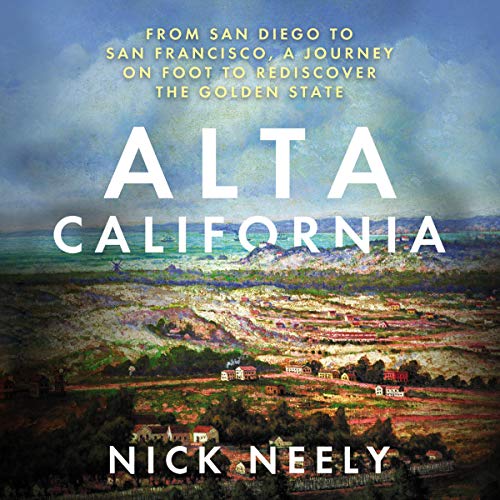 (1) Images of the day: [Left] Windcatchers in the hot city of Yazd were ancient architects' solution for cooling buildings: They were sometimes combined with underground aqueducts known as qanats for more-effective cooling. [Center] IranWire cartoon: In Iran, journalists who report on police violence or corruption of officials are treated more harshly than the perpetrators. [Right] Nick Neely's Alta California (see the last item below).
(1) Images of the day: [Left] Windcatchers in the hot city of Yazd were ancient architects' solution for cooling buildings: They were sometimes combined with underground aqueducts known as qanats for more-effective cooling. [Center] IranWire cartoon: In Iran, journalists who report on police violence or corruption of officials are treated more harshly than the perpetrators. [Right] Nick Neely's Alta California (see the last item below).
(2) Slab City, California: This lawless community of 150-4000 seasonal residents in a desert near San Diego takes its name from concrete slabs that were left behind when a US Marine Corps training camp in the area was torn down after World War II, with the land later conveyed to the State of California. [4-minute video]
(3) A wide gap between state-sanctioned and people's religion: Iranians use Muharram mourning ceremonies to speak up against the government's oppression and corruption. #WomanLifeFreedom [Tweet, with video]
(4) One-liners: Brief news headlines, happenings, memes, and other items of general interest.
- Blast at a political rally in Pakistan kills at least 44, with the death toll expected to rise.
- Swaths of Iraq, once part of the "Fertile Crescent," are drying out due to scarce water & high temperatures.
- Attention, Trader Joe's shoppers: Some cookies & falafel are recalled, because they may contain rocks.
- Challenges of conducting a music class in the presence of children! [Tweet, with video]
- Fine examples of rock art. [1-minute video]
- Happy Sunday: Get up and dance, even if only for a short break from sit-down work.
- Facebook memory from July 30, 2017: The day I visited the Freedom Sculpture on Santa Monica Blvd.
(5) The bright side of turning 50: This 7-minute Persian song appears to be a response to a humorous song that expounds upon all the health problems one faces after turning 50.
(6) Book review: Neely, Nick, Alta California: From San Diego to San Francisco, a Journey on Foot to Rediscover the Golden State, unabridged 19-hour audiobook, read by Tristan Wright, Dreamscape Media, 2019.
[My 4-star review of this book GoodReads]
This is a combo book for hikers, naturalists, and history buffs. Neely sets out from San Diego and walks 650 miles northward over 12 weeks, carrying only a backpack & a tent and crossing the counties of San Diego, Orange, Los Angeles, Ventura, Santa Barbara, San Luis Obispo, Monterey, Santa Cruz, and San Mateo. He describes the 9 counties in 9 chapters of varying lengths. Santa Barbara and Monterey get the lion's share at ~60 pages or ~160 minutes each.
Neely traces the route of the first overland Spanish expedition, led by Gaspar de Portola in 1769. He describes the landscape, plants, and wildlife he encounters. History enters the picture when he passes interesting spots, such as where the Chumash Indians thrived, oil-drilling operations near the Carpinteria coast, or the Old Santa Barbara Mission. California's challenges in the domain of water, agriculture, oil & gas, immigration, and development come up from time to time.
In listening to the audiobook, I was naturally more interested in Ventura, Santa Barbara, and San Luis Obispo counties, that is, where I live and the counties to its south and north, but I did learn a great deal about the other six counties covered. Neely's narrative becomes drawn-out at times, but he does manage to keep the reader's interest overall.
For me, learning the origins of city, neighborhood, ranch, and road names was a major treat. For example, the name of Goleta, my hometown, means "schooner." Among multiple possible explanations for this choice is that the first-ever American ship was built in the slough in 1828. As I read about historical developments along the route, I couldn't help but wonder how much nicer our state would be today, had efforts to preserve wetlands and delineate nature preserves started a century earlier than they did. Neely's story also motivated me to try to walk along parts of the route he describes, perhaps limiting myself to what can be done in a single day, preferably without trespassing in this age of widespread gun ownership!
Alta California quickly became a national best-seller in the US. Interestingly, exploration of California by sea (1840, Richard Henry Dana, Two Years Before the Mast), on horseback (1913, J. Smeaton Chase, California Coast Trails), and on foot (2012, Cheryl Strayed, Wild) have also resulted in best-selling books.


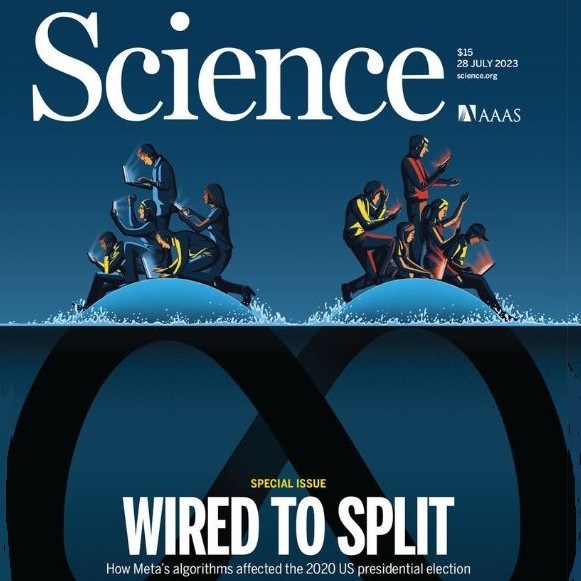 (1) Images of the day: [Left] Iranian currency, with embroidery by @minaembroidery. [Center] Optical illusion: At first glance, you don't realize that there is just one person in this photo. [Right] Impact of social media on elections (see the last item below).
(1) Images of the day: [Left] Iranian currency, with embroidery by @minaembroidery. [Center] Optical illusion: At first glance, you don't realize that there is just one person in this photo. [Right] Impact of social media on elections (see the last item below).
(2) Public opinion about what NASA should prioritize: Searching for asteroids that could hit Earth (60%); Monitoring Earth's climate (50%); Returning astronauts to the Moon (12%). [Source: Pew Research Center]
(3) The power of language in deceiving and controlling people: "The pen is mightier than the sword" isn't just a saying. Dictators use words more than guns to maintain power. In the commercial domain, doublespeak is used to sell you "sugar-free" products that contain many different kinds of sugars and fresh "deep-chilled" chicken that's really frozen chicken. [6-minute video of interview with author William Lutz]
(4) One-liners: Brief news headlines, happenings, memes, and other items of general interest.
- About half of the US population, from California to Maine, is under heat alert.
- Biden administration unveiled new safety measures to protect outdoors workers vulnerable to heat.
- A microscopic worm, frozen for 46,000 years, was revived and started having babies.
- Facebook memory from July 28, 2017: Our challenges are power density, circuit degradation, & reliability.
(5) Valley Marketplace in Valencia: I stopped there on Thursday, on the way back from Pine Mountain Club to Goleta, and found it to be an excellent Persian supermarket. It has an extensive meat section, a produce section with Persian goodies, a full-service deli (where you take a number to be served), and a bakery that prepares fresh barbari bread daily.
[Tweet, with photos]
(6) De Bruijn sequences: Consider the set of all 3-bit binary sequences, that is, 000, 001, 010, ... , 111. The circular 8-bit sequence 00010111 contains all of the preceding 3-bit sequences as substrings. The 8-bit string is thus B(2, 3), a de Bruijn sequence with all possible 3-symbol subsequences over a 2-symbol alphabet.
B(2, 4) example: 0000100110101111
B(2, 5) example: 00000100011001010011101011011111
From the examples above, it's not difficult to guess the length of a B(2, n) sequence, but can you prove it? What about B(k, n)?
(7) The killer mullahs of Iran go to Europe for medical care: Knowing that they may be pursued or even arrested, they use deception to hide their treatment. Instead of getting a German visa, for example, they go to Italy or France (where they are less likely to be exposed), traveling from there to the hospital of their choice. Dr. Majid Samii, who runs a medical center in Hanover is complicit in facilitating their travels and, at least in one case, helping them escape the wrath of Iranians in diaspora. He is close to several top mullahs and has been showered with praise as well as funding to set up medical facilities in Iran.
[Facebook post, with photos]
(8) Interesting fact: Almost half of the world's population speaks a language of the Indo-European language family, encompassing more than 400 languages. [Source: Science magazine]
(9) Social Media and Elections: This is the theme of a special section of Science magazine, issue of July 28, 2023, which comprises the following three research articles, an editorial, a news story, and a podcast.
- Asymmetric ideological segregation in exposure to political news on Facebook
- How do social media feed algorithms affect attitudes and behavior in an election campaign?
- Reshares on social media amplify political news but do not detectably affect beliefs or opinions
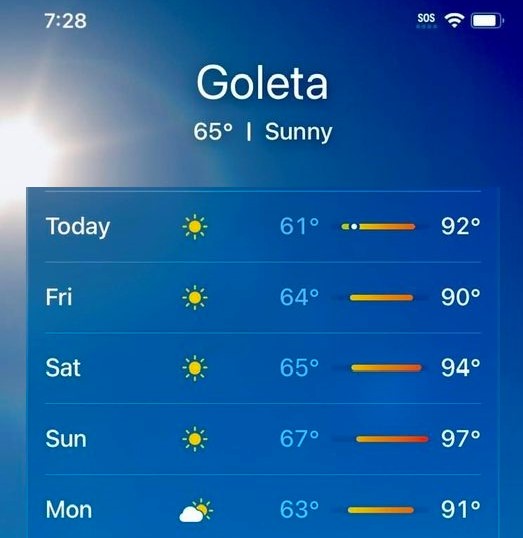
![]()

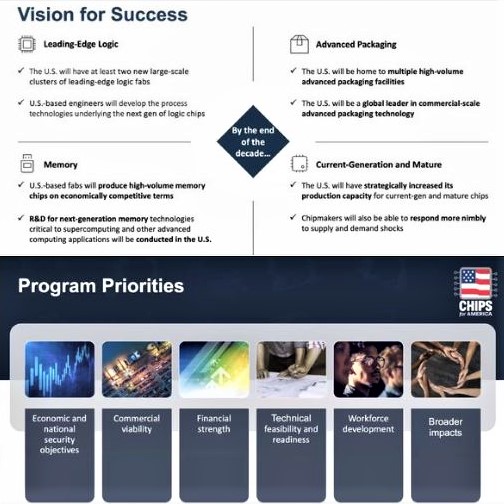

 (1) Images of the day: [Top left] Good morning, at the start of a super-hot day! As I prepare to head back to Goleta, after spending a day in Pine Mountain Club, here's the weather that awaits me over the next few days. [Top center] AESS lecture on science & practice of accurate tracking of space objects (see the next item below). [Top right & Bottom row] Prenote talk about the US CHIPS and Science Act of 2022 (see the last item below).
(1) Images of the day: [Top left] Good morning, at the start of a super-hot day! As I prepare to head back to Goleta, after spending a day in Pine Mountain Club, here's the weather that awaits me over the next few days. [Top center] AESS lecture on science & practice of accurate tracking of space objects (see the next item below). [Top right & Bottom row] Prenote talk about the US CHIPS and Science Act of 2022 (see the last item below).
(2) Information and resource management for accurate tracking of resident space objects: This was the title of Wednesday's webinar by Dr. Puneet Singla (Penn State U.), offered via Zoom under the auspices of IEEE Aerospace and Electronic Systems Society.
Space situation awareness (SSA) is the ability to detect, track, and characterize passive & active space objects. In light of the large number of resident space objects (RSOs), and the generally-accepted notion that our knowledge about the number and nature of most of the objects is severely limited, accurate tracking and characterization of RSOs is a must.
For RSO tracking, the core information needed is the orbit parameters and their associated uncertainties specified at a given epoch. This allows for accurate forward prediction but owing to both the nonlinearity of the orbital dynamics and measurement sparsity/unevenness, the uncertainty associated with RSOs orbit increases in time. The fact that none of the prior accidental collision between tracked objects was observed in real time as they occurred underscores the need for SSA.
(3) One-liners: Brief news headlines, happenings, memes, and other items of general interest.
- Second Trump aid charged in the case of mishandling classified/snesitive documents.
- Yuval Noah Harari explains consequences of removing the only check on the power of Israel's government.
- July 2023 is on track to become the hottest month on record.
- Women's soccer World Cup: USA and Netherlands play to a 1-1 tie, each ending up with 4 points.
- Facebook memory from July 27, 2020: Report on fake degrees in Iran (in Persian).
(4) "When the Government Makes Big Bets on Science and Technology: The CHIPS Act": This was the title of a prenote (new term, I guess, referring to a distinguished conference-related talk delivered before a conference) for IEEE 2023 Midwest Symposium on Circuits and Systems. The CHIPS-related talk was given by NIST Director Dr. Laurie Lacascio.
Manhattan Project, Man on the Moon Project, and Human Genome Project are perhaps the best-known examples of big bets by the US government. The $52-billion CHIPS & Science Act of 2022 (CHIPS Act, for short), is the latest example. Funding under the CHIPS Act began in February 2023 and is ongoing.
Dr. Lacascio discussed various aspects of the CHIPS Act and its potential impacts on US leadership and self-sufficiency in the targeted areas, as evident from the sample slides included in the images. The talk's recording as well as the slides used will likely be made available through MWSCAS 2023 Web site.
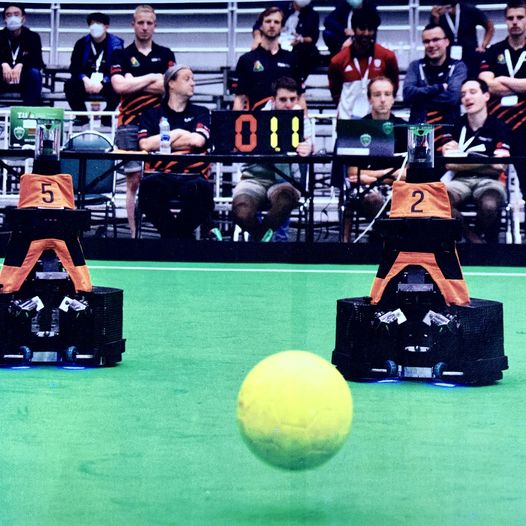
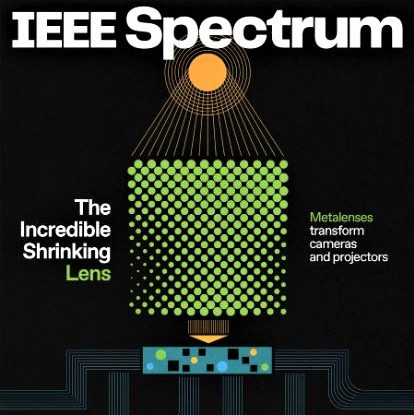
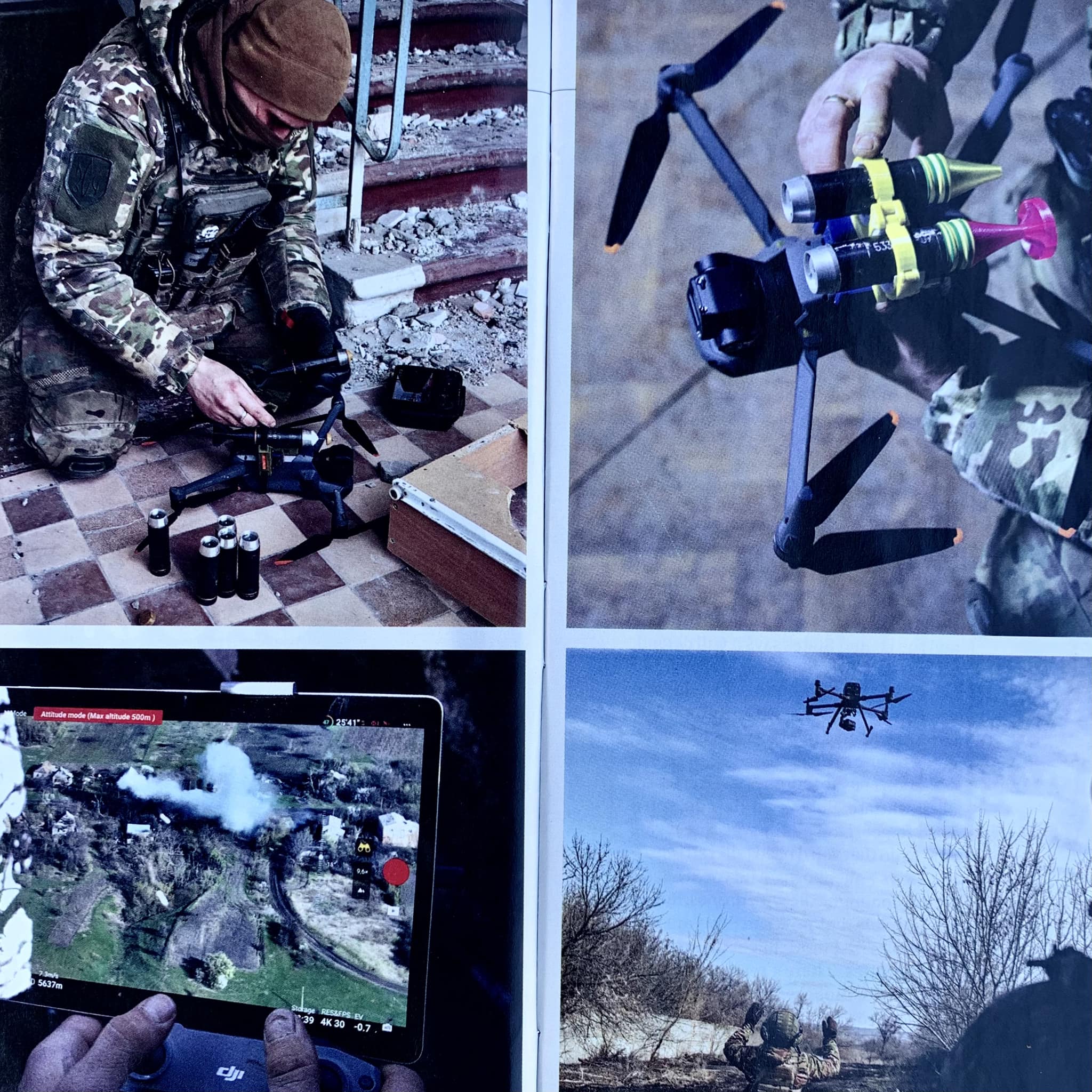
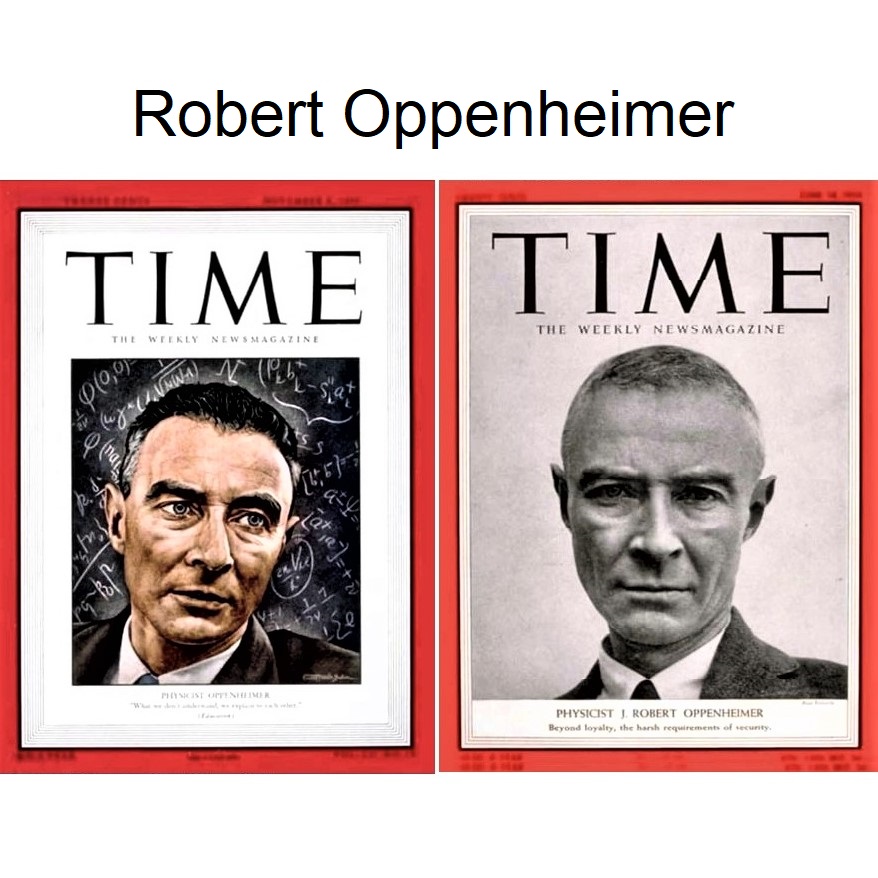

 (1) Images of the day: [Top left] RoboCup turns 25 (see the next item below). [Top center] Not your father's lenses (see item 3 below). [Top right] Uses of drones in offensive & defensive warfare (see the last item below). [Bottom left] Robert Oppenheimer on Time magazine covers (see item 4 below). [Bottom center] The service formerly known as Twitter (shades of Prince). [Bottom right] Today is my 6th X (Twitter) anniversary: By and large, I have enjoyed the medium, but must confess that the quality of comments and other interactions often disappoint me. Will I survive another year? Will Twitter survive to the next anniversary? We will see!
(1) Images of the day: [Top left] RoboCup turns 25 (see the next item below). [Top center] Not your father's lenses (see item 3 below). [Top right] Uses of drones in offensive & defensive warfare (see the last item below). [Bottom left] Robert Oppenheimer on Time magazine covers (see item 4 below). [Bottom center] The service formerly known as Twitter (shades of Prince). [Bottom right] Today is my 6th X (Twitter) anniversary: By and large, I have enjoyed the medium, but must confess that the quality of comments and other interactions often disappoint me. Will I survive another year? Will Twitter survive to the next anniversary? We will see!
(2) RoboCup at 25: The RoboCup dream is to build robots capable of playing soccer at the World Cup level, that is, do for soccer what DeepMind and AlphaZero did for chess. That dream is still far from realization, but significant progress has been made over the past 25 years. Currently, robots compete annually in multiple leagues: Small-size; Middle-size; Humanoid; Standard-platform (identical robots are provided to all contestants, who must design winning algorithms and software for them). [From: IEEE Spectrum, July 2023]
(3) The Incredible Shrinking Lens: This is the title of a cover feature in IEEE magazine (July 2023). A metalens is a flat glass surface, topped with a semiconductor layer on which is etched an array of pillars less than a micrometer high that can manipulate light waves with a degree of control not possible with traditional lenses.
(4) Physicist Robert Oppenheimer appeared on the cover of Time magazine twice: Once as a hero, after atomic bombs were dropped on Japan, and another time as a traitor, after he voiced opposition to nuclear arms race and was exposed as having had a love affair with a member of the US Communist Party while leading the Manhattan Project. [11-minute video]
(5) Imagining what Fox News anchors might say about Trump if they held him to the same standards as Obama: This 4-minute montage is rather old, but it is worth re-sharing.
(6) Math puzzle: Find all possible arrangements of four points on the XY plane so that the distance between any two points is one of only two values. For example, if the four points are the vertices of a unit-square, then the two distances are 1 and sqrt(2).
(7) Drones are transforming offensive and defensive warfare: Offensive drones, of the kind used by Russia to strike Ukrainian cities, have dominated the news lately. Less conspicuous are inexpensive defensive drones used to patrol the skies. China's DJI Mavic 3, used by both Russia and Ukraine for surveillance, costs $2000, which means you can buy 55,000 of them for the price of a single F-35 stealth jet. Recently, a $3200 Ukrainian grenade-equipped drone destroyed a $4 million Russian T-90 tank. [From: IEEE Spectrum, July 2023]
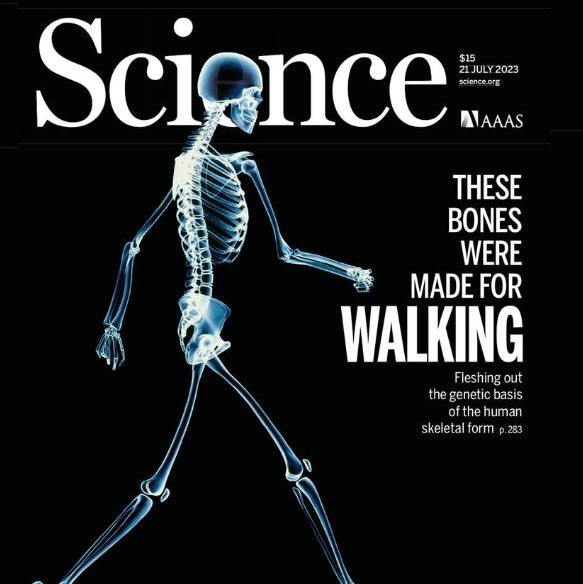
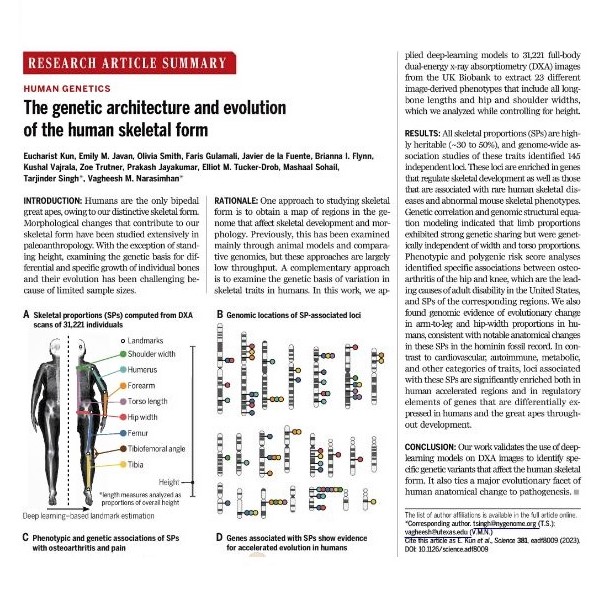

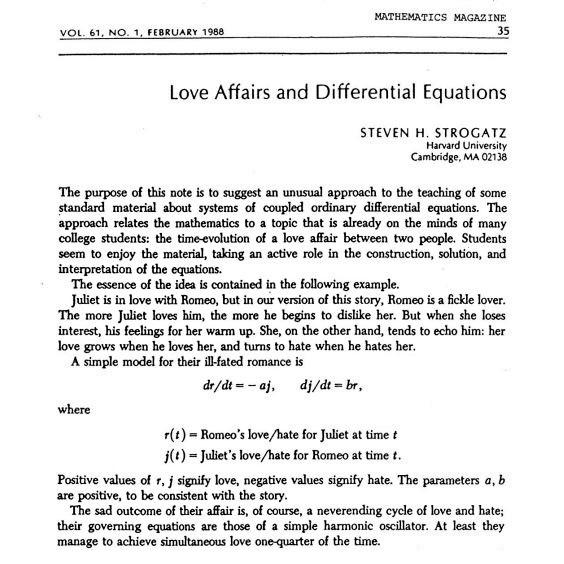

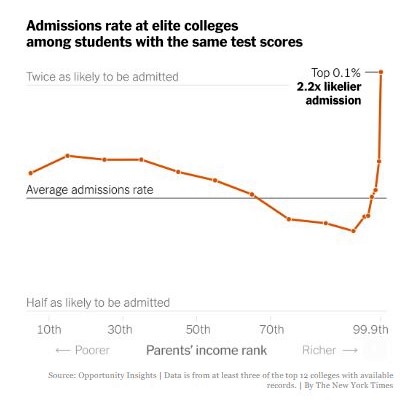 (1) Images of the day: [Top left & center] Fleshing out the genetic basis of the human skeletal form: New research validates specific genetic variants that affect human skeletal form and ties a major evolutionary facet of human anatomical change to pathogenesis. [Top right] Bernie Sanders' It's OK to Be Angry About Capitalism (see the last item below). [Bottom left] "Love Affairs and Differential Equations": Title of an entertaining paper by Harvard University's Steven H. Strogatz. [Bottom center] Brave journalists #ElahehMohammadi and #NiloofarHamedi have been in prison since September 2022 for reporting on the death of #MahsaAmini (#WomanLifeFreedom). [Bottom right] Children of the super-rich are more than twice as likely to be admitted to elite colleges: The upper middle-class gets the short end of the stick (NYT chart).
(1) Images of the day: [Top left & center] Fleshing out the genetic basis of the human skeletal form: New research validates specific genetic variants that affect human skeletal form and ties a major evolutionary facet of human anatomical change to pathogenesis. [Top right] Bernie Sanders' It's OK to Be Angry About Capitalism (see the last item below). [Bottom left] "Love Affairs and Differential Equations": Title of an entertaining paper by Harvard University's Steven H. Strogatz. [Bottom center] Brave journalists #ElahehMohammadi and #NiloofarHamedi have been in prison since September 2022 for reporting on the death of #MahsaAmini (#WomanLifeFreedom). [Bottom right] Children of the super-rich are more than twice as likely to be admitted to elite colleges: The upper middle-class gets the short end of the stick (NYT chart).
(2) One-liners: Brief news headlines, happenings, memes, and other items of general interest.
- The service formerly known as Twitter: Musk ditches the iconic bird logo, as he rebrands his company "X."
- Protests in Israel against Netanyahu's "reform" of the judiciary broaden to include members of the military.
- Netanyahu's government has declared a war on women: A new bill will roll back women's rights.
- Felons can't vote, presumably because they lack proper judgement, but they can run for US presidency!
- Top tech firms sign White House pledge to flag AI-generated images.
(3) Book review: Sanders, Bernie and John Nichols, It's OK to Be Angry About Capitalism, unabridged 11-hour audiobook, read by the first author, Random House Audio, 2023.
[My 4-star review of this book on GoodReads]
Sanders opens with the assertion that uber-capitalism, currently prevalent in the US, is characterized by unfettered greed and environmental destruction. It isn't merely unjust, but grossly immoral. While the middle and lower classes struggle, the oligarchs are doing extremely well and they own the democracy in which we take pride. The oligarchs also reign over information outlets, thus also owning our freedom of speech. The good news is that we are beginning to see cracks in the oligarchy's hold over levers of power.
Sanders then quotes Franklin D. Roosevelt, whose vision of America has unfortunately not been realized. Advocating a second Bill of Rights, Roosevelt said in his speech of eight decades ago: "We have come to clear realization of the fact that true individual freedom cannot exist without economic security and independence." Economic rights are indeed human rights. Our country cannot prosper while 60% of Americans live paycheck-to-paycheck and 60,000 die annually because they cannot get the medical care they need (85 million Americans are uninsured or under-insured).
The numbers cited by Sanders about the extent of inequality in the US are staggering. Some 90% of our wealth is owned by 0.1% (one-tenth of 1%) of the population; the wealth of 725 US billionaires rose 70% during the pandemic, to more than $5 trillion; BlackRock, Vanguard, & State Street, major shareholders in 96% of S&P 500 companies, now control assets of $20 trillion. And these individuals and corporations spend lavishly to stifle any effort to raise taxes, citing the potential disincentives high tax rates can create. Never mind that America thrived under Eisenhower, when the top tax rate was around 92% and the richest 20% of Americans controlled less than 43% of the wealth.
Sanders, a master of facts and figures, provides a great deal more data in support of his economic proposals. I think every American should read this book and ask himself/herself questions of the following nature: Why are we paying twice as much per-capita as French and German citizens for healthcare, achieving poorer results and leaving millions of people uninsured, while big pharma is rolling in money (their profits rose by 90% in 2021)?
In the final chapter 10, "This Is a Class War—It's Time to Fight Back," Sanders reiterates the main ideas, recommending that "We must stop being afraid to call out capitalism and demand fundamental change to a corrupt and rigged system." Democracies thrive and get stronger from criticisms and suggestions for improvement. Only dictatorial systems claim that all is perfect and show distaste for critical viewpoints.
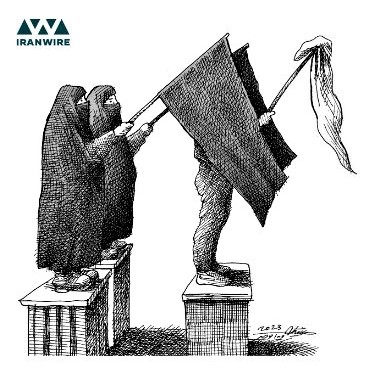




 (1) Images of the day: [Top left] IranWire cartoon of the day: Enforcement of compulsory hijab laws is again front-and-center for Iran's Islamic regime. [Top center] "Barbenheimer": Name given to two new movies, "Barbie" and "Oppenheimer," if you happen to see them on the same day. [Top right] Santa Barbara News Press files for bankruptcy: The Chapter-7 filing ends more than 150 years of history. [Bottom left] Bee-line distance vs. driving distance: The community of Pine Mountain Club is on the other side of the mountains from Santa Barbara, at a bee-line distance of about 42 miles. Driving distance is nearly 3 times as long (123 miles; 130 minutes under normal traffic). [Bottom center & right] Our Sunday night dinner, courtesy of my son: Miso soup and sushi (with crab meat, beef rib meat, and other ingredients). Your place was empty.
(1) Images of the day: [Top left] IranWire cartoon of the day: Enforcement of compulsory hijab laws is again front-and-center for Iran's Islamic regime. [Top center] "Barbenheimer": Name given to two new movies, "Barbie" and "Oppenheimer," if you happen to see them on the same day. [Top right] Santa Barbara News Press files for bankruptcy: The Chapter-7 filing ends more than 150 years of history. [Bottom left] Bee-line distance vs. driving distance: The community of Pine Mountain Club is on the other side of the mountains from Santa Barbara, at a bee-line distance of about 42 miles. Driving distance is nearly 3 times as long (123 miles; 130 minutes under normal traffic). [Bottom center & right] Our Sunday night dinner, courtesy of my son: Miso soup and sushi (with crab meat, beef rib meat, and other ingredients). Your place was empty.
(2) How good a physicist was Oppenheimer, the A-bomb's architect? According to Historian David C. Cassidy, he was no Einstein, but he did Nobel-level work on black holes.
(3) Topsy-turvy US history: Florida middle-schoolers will be taught about the benefits of slavery, including skill-building for blacks. Apparently, those who worked to free the slaves interrupted these benefits!
(4) One-liners: Brief news headlines, happenings, memes, and other items of general interest.
- Today's headline: "Nobody did anything about anything that you wanted them to do something about."
- Iran finds itself under pressure from several European countries for its assistance in the killing of Ukrainians.
- I find the prospects of a Trump victory over the gutless DeSantis, Pence, Scott, and Haley creepily satisfying.
- An Iranian woman's car was confiscated for not wearing a hijab: She defiantly walked home sans a hijab.
(5) On the 1935 Goharshad Mosque rebellion & massacre in Mashhad: Iran's Islamic regime is exaggerating by up to 100-fold the number of deaths (~20 confirmed in burial records, plus a couple dozens of soldiers & officers) and falsely linking, for propaganda purposes, the event to opposition to Reza Shah's order to remove women's hijabs. [12-minute video]
(6) Let's guard the Persian language: Please, please, don't use the Arabic word "nesvaan" to refer to women: Don't even use "baanovaan," which is an okay word similar to "ladies." Use "zanaan," because it creates fear in mullahs and other misogynists. Also, never use "rejaal" for "mardaan" (men). [Persian version in a tweet]
(7) New York Times tribute: Tony Bennett's melodic clarity, embrace of the audience, and warm interpretations of musical standards won him generations of fans.
(8) The most wide-open women's soccer World Cup in history is now in progress: Team USA is still favored to go all the way, but other teams have improved significantly.
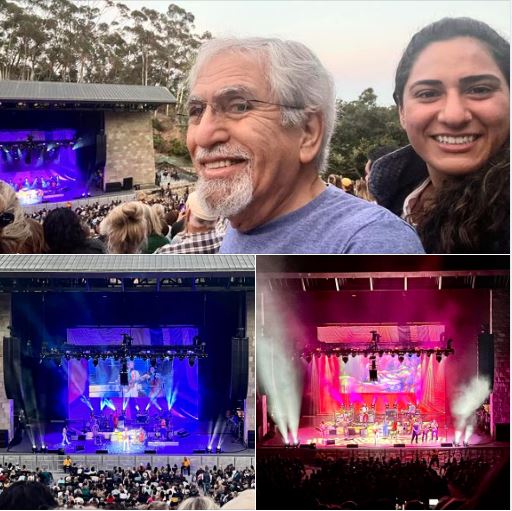
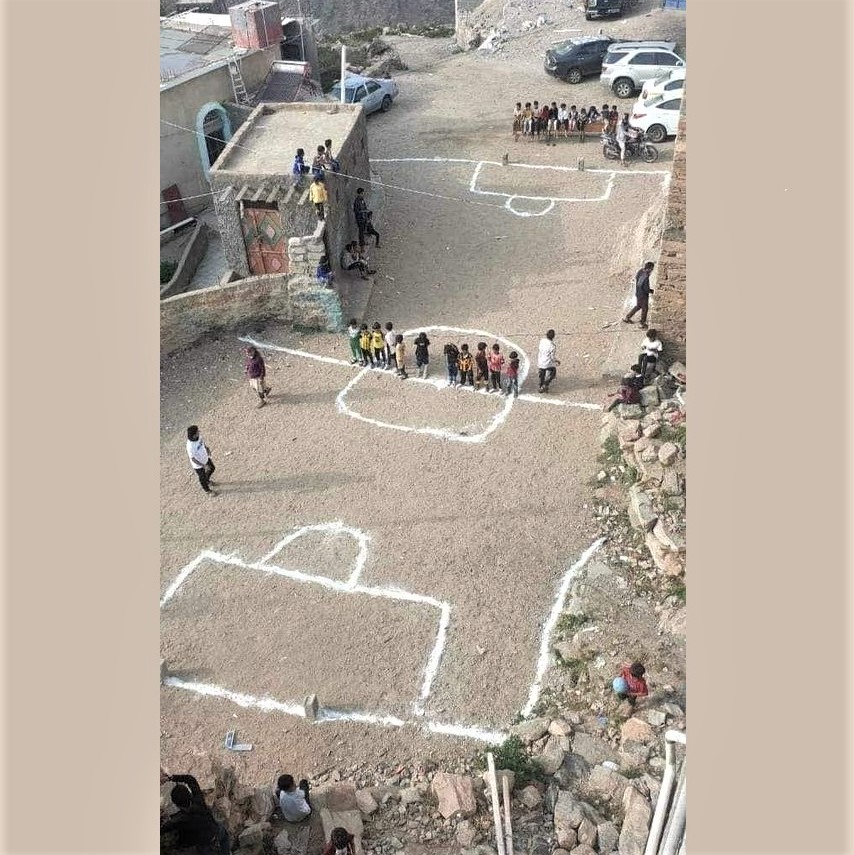
 (1) Images of the day: [Left] A wonderful Jason Mraz concert in Santa Barbara (see the next item below). [Center] Simple joys of childhood and the immense popularity of soccer around the world. [Right] Test your knowledge of physics: I first posted this image, purportedly showing the Sun setting at the North Pole and the Moon at its closest point to Earth. See if you can explain why this can't be an actual photograph.
(1) Images of the day: [Left] A wonderful Jason Mraz concert in Santa Barbara (see the next item below). [Center] Simple joys of childhood and the immense popularity of soccer around the world. [Right] Test your knowledge of physics: I first posted this image, purportedly showing the Sun setting at the North Pole and the Moon at its closest point to Earth. See if you can explain why this can't be an actual photograph.
(2) My daughter and I attended an enjoyable Jason Mraz concert at Santa Barbara Bowl on Friday night: My ticket to this concert was a Fathers' Day gift from the kids last month. Thank You! Mraz and his SuperBand of a dozen superb musicians performed his well-known songs such as "Lucky" and "I'm Yours," as well as selections from his newer albums "Look for the Good" (2020) and "Mystical Magical Rhythmical Radical Ride" (2023). A group of rowdy, anti-social drunkards sitting not too far from us spoiled part of the fun. Don't miss this mystical magical concert if it comes your way! [Setlist]
(3) Tony Bennett [1926-2023] dead at 96: He was a champion of the Great American Songbook and a likable guy who collaborated with many artists from multiple generations. RIP!
(4) One-liners: Brief news headlines, happenings, memes, and other items of general interest.
- Sepideh Qolian refused to wear a hijab for her court appearance in Iran, so the session was cancelled.
- Elite colleges have begun the process of eliminating legacy admissions.
- State abortion bans will soon be offset, at least in part, by medical advances and enlightened drug policies.
- On multitasking: For my age, I am good at multitasking: I can listen, ignore, and forget all at once.
- Quote of the day: "A man sees in the world what he carries in his heart." ~ Goethe
(5) One of the clearest explanations of the Enigma, the German message-coding machine used during World War II for secret communications. [16-minute video]
(6) Donald Trump does not know the meaning of love: He has no understanding of romantic love or of Christian love (love thy neighbor; love thy enemy). In fact, in a speech at a prayer-breakfast meeting, he criticized the idea of loving your enemy, apparently unaware that it came from Christ himself. He does not love. He does not pray. He does not ask for forgiveness. Exactly what about this charlatan is Christian?
(7) Let's guard the Persian language: The Arabic word "shahid" is often used to refer to someone who sacrificed his/her life for a noble cause. Let's use "jaavid-naam" instead. [Tweet, with the Persian version]
(8) The anatomy of a soundbite: Why it is important for scientists to create their own soundbites that provide the public with concise and fun explanations. [6-minute video]
(9) Women's World Cup Soccer: USA 3-0 Vietnam. Despite the win, this was a shaky start for team USA, as they had several other scoring opportunities. [5-minute highlights]



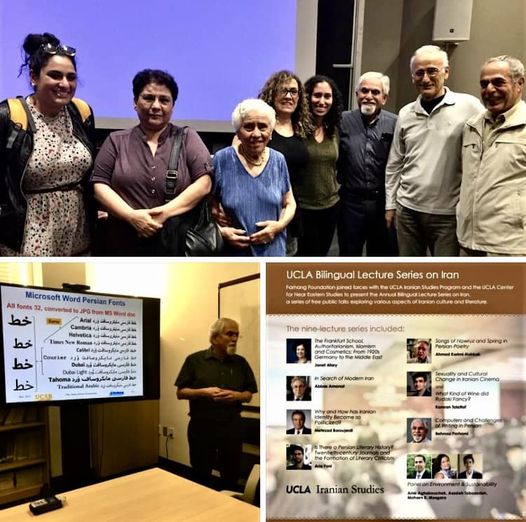
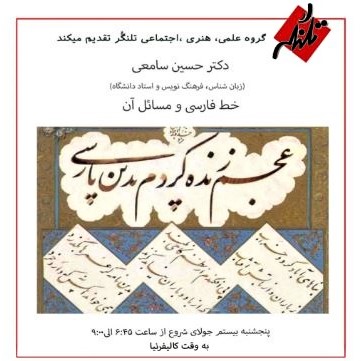
 (1) Images of the day: [Top left] Mothers of murdered/executed dissidents are on the front line of opposition to Iran's brutal Islamic regime. [Top center] US trillion-dollar companies, including newcomer to the club, NVIDIA, and their valuations over the past 5 years. [Top right] Iranian-American snacks: Lavashak-e anaar (dried pomegranates) and popcorn. [Bottom left] Memories from my UCLA Bilingual Lectures on Iran (see the next item below). [Bottom center] Talangor Group talk (see the last item below). [Bottom right] Iran's ancient architecture from the Sassanid Period: Falak-ol-Aflak Castle in the city of Khorramabad, Lorestan Province.
(1) Images of the day: [Top left] Mothers of murdered/executed dissidents are on the front line of opposition to Iran's brutal Islamic regime. [Top center] US trillion-dollar companies, including newcomer to the club, NVIDIA, and their valuations over the past 5 years. [Top right] Iranian-American snacks: Lavashak-e anaar (dried pomegranates) and popcorn. [Bottom left] Memories from my UCLA Bilingual Lectures on Iran (see the next item below). [Bottom center] Talangor Group talk (see the last item below). [Bottom right] Iran's ancient architecture from the Sassanid Period: Falak-ol-Aflak Castle in the city of Khorramabad, Lorestan Province.
(2) Memories from my UCLA Bilingual Lectures on Iran: On Nov. 19 & 20, 2017, I presented two lectures entitled "Computers and Challenges of Writing in Persian," as part of UCLA's Bilingual Lecture Series on Iran. One image shows family & friends at my Persian-language lecture of 11/19, another is from my English presentation of 11/20, and the third is from Farhang Foundation's 2017-2018 annual report.
[PDF slides]
[Lecture in Persian, 73-minute podcast]
[Lecture in English, 81-minute podcast]
(3) One-liners: Brief news headlines, happenings, memes, and other items of general interest.
- Stanford President resigns for research misconduct, allegedly for not correcting mistakes in publications.
- Women's soccer World Cup begins with violence: Two people are killed by a gunman in New Zealand.
- Facebook memory from July 20, 2021: Some of what we'd see on Iranian currency if people had a say.
- Facebook memory from July 20, 2020: On why we don't need perfect tests to control the spread of diseases.
- Facebook memory from July 20, 2018: 50th-anniversary reunion of Fanni College's Class of '68 in Armenia.
- Facebook memory from July 20, 2017: Zardak, Iran, is halfway around the world from Chase Palm Park.
(4) Iraqis storm & torch the Swedish Embassy in Baghdad: Once again citizens of a backward Middle-Eastern country think that a Western Democracy can dictate to its citizens not to burn a holy book.
(5) Tonight's Talangor Group talk: Dr. Hossein Samei (Emory U.) talked in Persian under the title "The Persian Script and Its Challenges." There were ~60 attendees.
As Iranians, we are all aware of challenges of the Persian script in terms of teaching to children or foreign learners, and using it for precise, error-free communication. The problems include silent letters, multiple letters (up to 4) with the same sound, and minor variations between letters (e.g., use of 1-3 dots over or below the same base shape to form different letters). These difficulties are not unique to Persian and other languages/scripts suffer from them as well. For example, we have "s" & "c" and "ch" & "tu" in English that can sound the same, and we have numerous instances of silent letters, as in "knight" and "subtle." In fact, the English script is one of the most-irregular in the world.
One can try to fix the problems by changing the script (e.g., by using a Latin-based script for Persian, a solution pursued by multiple countries, such as Turkey) or by making improvements (e.g., by removing and/or adding letters). Most people are hesitant to make any changes, given the connection of the Persian script to a large volume of literary/poetic works and its cultural significance. Going back to ancient times, there were only a handful of different scripts. Other cultures and civilizations adopted one of these options to devise their own script, leading to possible mismatch between language needs and script capabilities. Change of script is often intertwined with a desire to change cultural direction and usually has some ideological and political undertones.
This two-part Nova series on writing and how it revolutionized the spread of information is quite interesting.
Here is a viewpoint that I could not discuss during the Q&A period, because the program was quite long and I had to leave: In the case of Persian, a significant obstacle to changing the script is its close relationship with the art of calligraphy. This link is quite dear to our hearts. Almost every Persian home has calligraphic art on display. Admiring elements of calligraphic art (color scheme, symmetry, overlap. etc.) and trying to decipher its textual content is a favorite pastime of mine and of many other Iranians.
This talk connects nicely with my 2017 talks, given at UCLA under the title "Computers and Challenges of Writing in Persian," which outlined efforts over five decades to produce computer-printed Persian script of reasonable quality (see item 2 above).

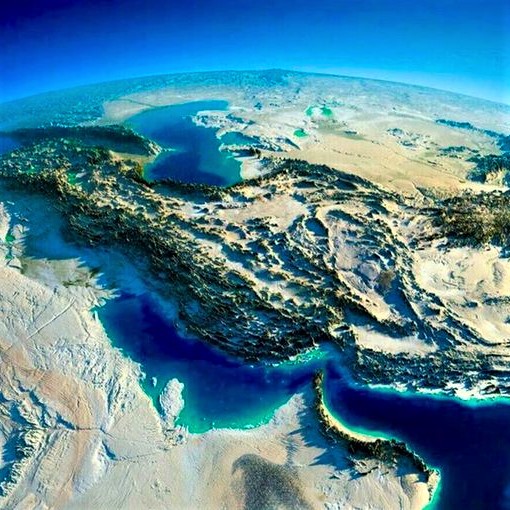
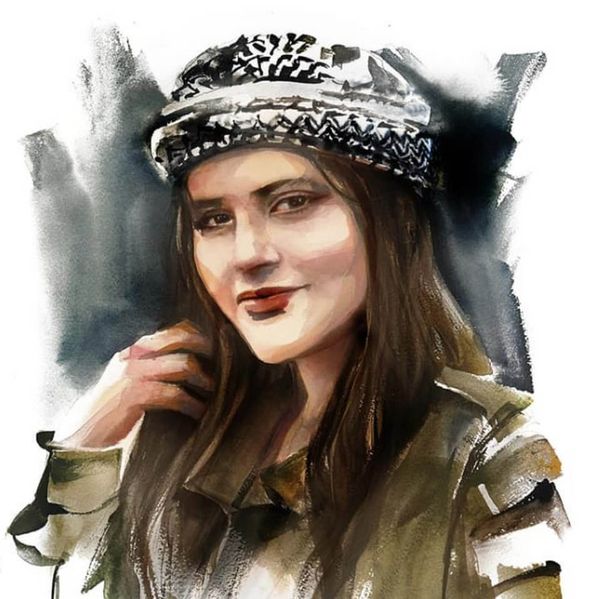





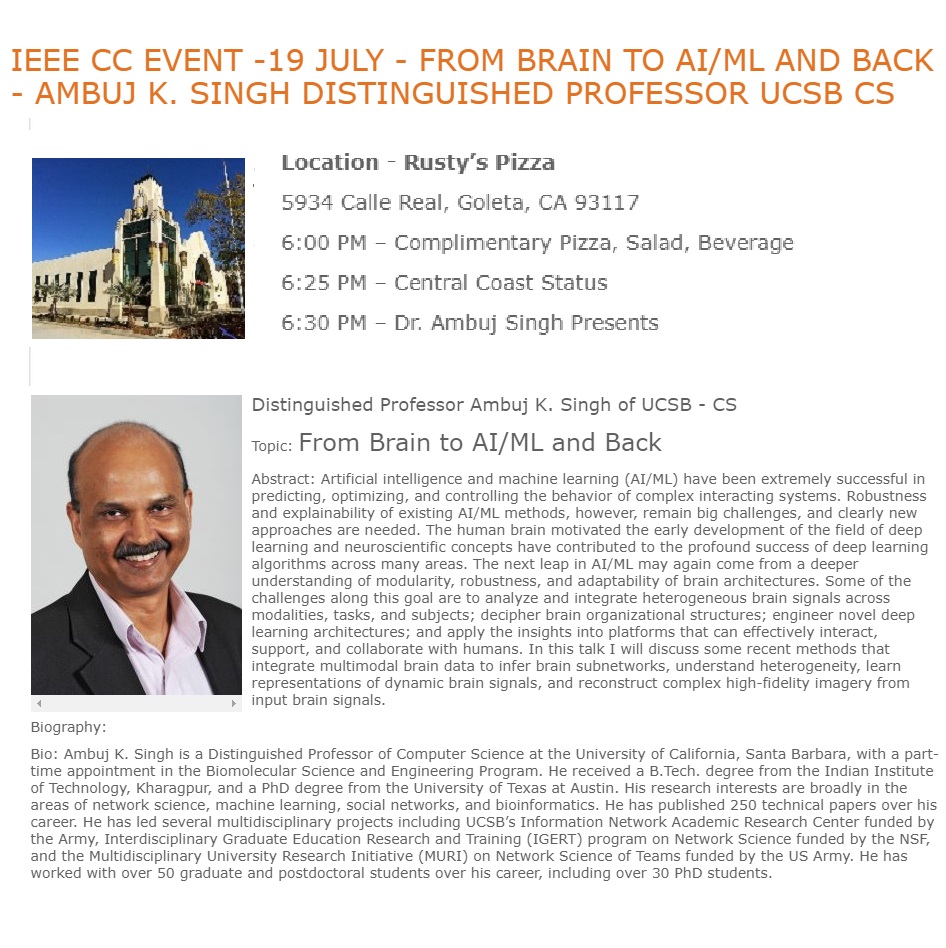 (1) Images of the day: [Top left] A wonderful poster to empower women and girls. [Top center] An enhanced satellite image of Iran and parts of its neighboring countries. [Top right] A wonderful painting of #Mahsa_Amini by an unknown artist. [Middle row] Facebook memories: Glorious sunsets, from July 19, 2019; The tiny town of Persia, Iowa, from July 19, 2011; My portraits over the years. [Bottom left] The naming of my hometown, the city of Goleta (see the next item below). [Bottom center] A view of Santa Barbara's waterfront at sunset. [Bottom right] IEEE Central Coast Section tech talk by Dr. Ambuj Singh of UCSB (see the last item below).
(1) Images of the day: [Top left] A wonderful poster to empower women and girls. [Top center] An enhanced satellite image of Iran and parts of its neighboring countries. [Top right] A wonderful painting of #Mahsa_Amini by an unknown artist. [Middle row] Facebook memories: Glorious sunsets, from July 19, 2019; The tiny town of Persia, Iowa, from July 19, 2011; My portraits over the years. [Bottom left] The naming of my hometown, the city of Goleta (see the next item below). [Bottom center] A view of Santa Barbara's waterfront at sunset. [Bottom right] IEEE Central Coast Section tech talk by Dr. Ambuj Singh of UCSB (see the last item below).
(2) What's a Goleta? Inspired by Nick Neely's book, Alta California: From San Diego to San Francisco, a Journey on Foot to Rediscover the Golden State, which contains many historical tidbits about the Golden State, I looked up the details of where the name of Goleta, my current hometown, comes from. The name means "schooner." Among multiple possible explanations for this choice is that the first-ever American ship was built in the slough in 1828. [Goleta history]
(3) One-liners: Brief news headlines, happenings, memes, and other items of general interest.
- Russia continues to strike Odesa with ballistic missiles & drones, after pulling out from grain deal.
- Sugar Lab, a digital bakery based in East Los Angles, 3D-prints sweets based on custom orders.
- The feeling is mutual: Iranian woman responds to city of Rasht's top mullah, who hates hijab-less women.
- Two amazing feats of engineering in dominoes chain-reaction. [1-minute video]
(4) Tonight's IEEE CCS tech talk: UCSB Distinguished Professor of Computer Science Dr. Ambuj Singh spoke under the title "From Brain to AI/ML and Back." There were ~25 in-person attendees and a few connecting via a trial Zoom set-up, with some limitations, being tried for the first time, in the hopes of making future events hybrid to allow broader participation of members in our vast geographic region.
Artificial intelligence and machine learning (AI/ML) have been extremely successful in predicting, optimizing, and controlling the behavior of complex interacting systems. Robustness and explainability of existing AI/ML methods, however, remain big challenges, and clearly new approaches are needed. The human brain motivated the early development of the field of deep learning and neuroscientific concepts have contributed to the profound success of deep learning algorithms across many areas.
The next leap in AI/ML may again come from a deeper understanding of modularity, robustness, and adaptability of brain architectures. Some of the challenges along this goal are to analyze and integrate heterogeneous brain signals across modalities, tasks, and subjects; decipher brain organizational structures; engineer novel deep learning architectures; and apply the insights into platforms that can effectively interact, support, and collaborate with humans.
Dr. Singh discussed some recent methods that integrate multimodal brain data to infer brain subnetworks, understand heterogeneity, learn representations of dynamic brain signals, and reconstruct complex high-fidelity imagery from input brain signals. Dr. Singh's group used data from an experimental set-up that included many individuals being exposed to different images, with their brain activities monitored via fMRI. It was demonstrated that the process is reversible (that is, converting the signals to images) with surprisingly high fidelity. Details can be found in the paper cited and linked below.
Reference: Lin, S., T. Sprague, and A. K. Singh, "Mind Reader: Reconstructing Complex Images from Brain Activities," Proc. 36th Conf. on Neural Information Processing Systems, 2022. [PDF]
[IEEE CCS event page]
[Speaker's Web page]
[IEEE CCS Technical Talks page]
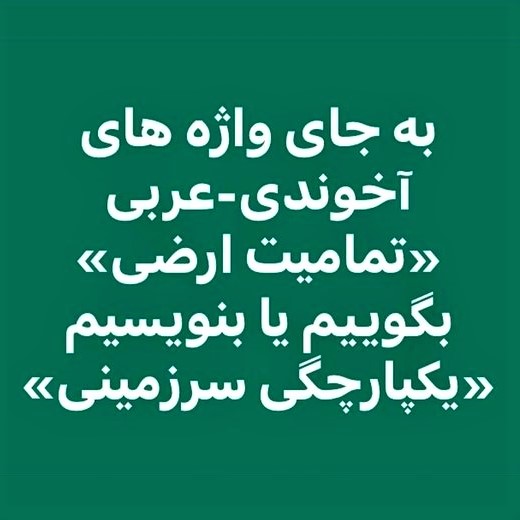

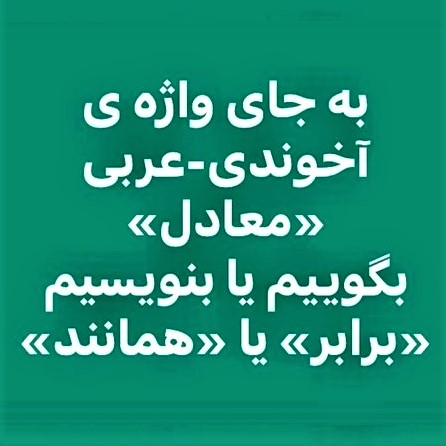
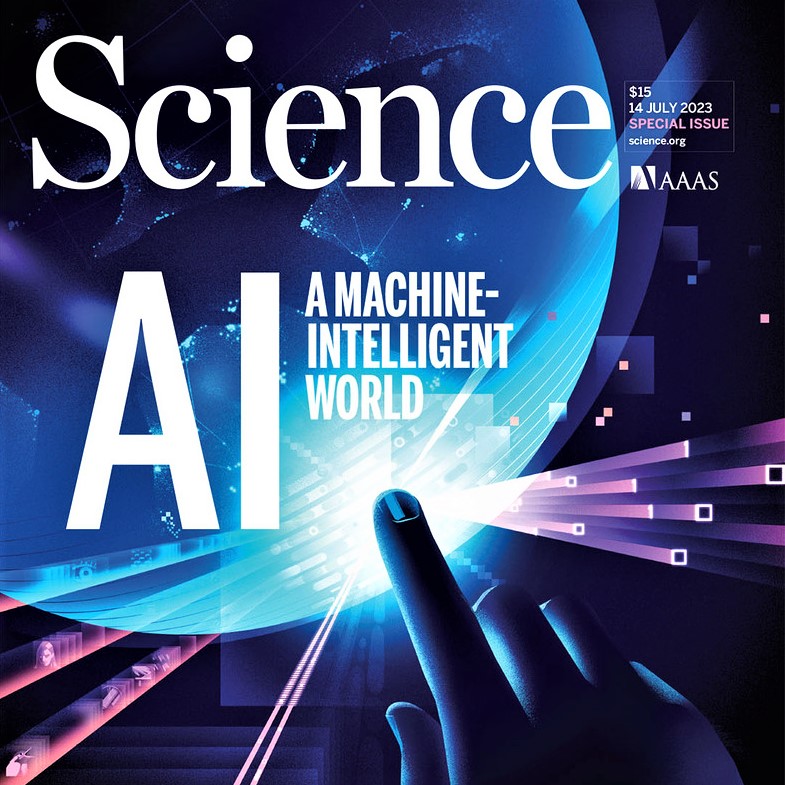

 (1) Images of the day: [Top left & right] Let's protect the Persian language: Often, perfectly acceptable Persian terms are available for what we lazily express in Arabic or other languages. [Top center] A polyhedron derived from the great rhombicosidodecahedron (animated version). [Bottom left] Science magazine's July 14, 2023, issue features a special section entitled "A Machine-Intelligent World": It contains an editorial on AI safety, an essay on art in the age of AI, several perspective articles, a policy forum, next-gen voices, two reviews, and a number of related items. [Bottom center] The Beautiful Santa Barbara, shot from Shoreline Park, with Harbor and Stearns Wharf visible at a distance. [Bottom right] Issa Ibrahim's memoir (see the last item below).
(1) Images of the day: [Top left & right] Let's protect the Persian language: Often, perfectly acceptable Persian terms are available for what we lazily express in Arabic or other languages. [Top center] A polyhedron derived from the great rhombicosidodecahedron (animated version). [Bottom left] Science magazine's July 14, 2023, issue features a special section entitled "A Machine-Intelligent World": It contains an editorial on AI safety, an essay on art in the age of AI, several perspective articles, a policy forum, next-gen voices, two reviews, and a number of related items. [Bottom center] The Beautiful Santa Barbara, shot from Shoreline Park, with Harbor and Stearns Wharf visible at a distance. [Bottom right] Issa Ibrahim's memoir (see the last item below).
(2) Family values: The state with the lowest divorce rate is Massachusetts. Eight of the ten-highest divorce rates belong to red states. Red states also lead the pack in teen pregnancies. The only US presidents to have been divorced are Republican presidents. So, why is the GOP lecturing us on morality and family values?
(3) #Where_Is_Mahmonir? The mother of 9-year-old Kian Pirfalak, shot dead by Iran's security forces during street protests, has disappeared. She had been active in seeking justice for her son's death.
(4) One-liners: Brief news headlines, happenings, memes, and other items of general interest.
- Israel's science-free schools for ultra-Orthodox Jews draw fire.
- In Iran, dozens of Kurdish lawyers were summoned to court for backing the family of #Mahsa_Amini.
- AI-based weather model forecasts as accurately, and 10,000 times faster, than the best system in use.
- Sleeping Beauty & a seemingly-simple question: A statistical challenge similar to "Monty Hall Problem."
- Last night's dinner, being prepared and being served: Your place was empty.
(5) Book review: Issa, Ibrahim, The Hospital Always Wins: A Memoir, unabridged 10-hour audiobook, read by Kevin R. Free, Blackstone Audio, 2016. [My 3-star review of this book on GoodReads]
In his early 20s, artist/musician/writer Issa Ibrahim became schizophrenic and killed his mother, whom he believed to be possessed. Ruled not guilty by reason of insanity, he was confined to a mental institution, whose violent, sexually-abusive, and bungling atmosphere made it much worse than a regular prison.
The book's relatively short chapters alternate between two parallel tales: Ibrahim's life before incarceration and his fight to regain his freedom afterwards. The two threads reach their respective climaxes near the end of the book, with the young Ibrahim killing his mother and the older Ibrahim set free, because his art, which kept him sane over the two decades in the mental hospital, and the sales of his work were viewed as signs of taking responsibility and the ability to lead a productive life.
Confinement to an ill-equipped, inadequately-staffed, and poorly-supervised mental institution is hardly any better than serving a regular prison term. Ibrahim states that at least in prison, there is a known release date, whereas at a mental hospital, the patient is at the mercy of a panel of experts, and so, may end up serving a life sentence.
Ibrahim's writing is alternately absorbing and mired by too much uninteresting details. I preserved in my listening, but must admit to having skipped a few sections of the latter kind. All in all, I consider this memoir a useful book for raising awareness of the sorry state of mental institutions, and mental healthcare more generally, in the US. Like the entirety of the US healthcare system, our handling of mental health is overdue for a serious overhaul.


 (1) Images of the day: [Left] The Island of Abu Musa (see the next item below). [Center] Did you know that if time-keeping through the use of sun-dials were invented by a civilization in the Southern Hemisphere, our clock hands would be moving counterclockwise? [Right] The Bering land bridge (see the last item below).
(1) Images of the day: [Left] The Island of Abu Musa (see the next item below). [Center] Did you know that if time-keeping through the use of sun-dials were invented by a civilization in the Southern Hemisphere, our clock hands would be moving counterclockwise? [Right] The Bering land bridge (see the last item below).
(2) The Island of Abu Musa: This obscure, tiny (12.8 sq. km) island in the Persian Gulf, just to the west of Strait of Hormuz, has been in the news lately, because of renewed tensions between Iran and UAE over its ownership. Iran has held on to the Island for decades, as part of its Hormozgan Province, after the British forces left the area in the early 1970s. As you see in the aerial photo, most of the island is undeveloped, which is quite strange, given its strategic location and potential for a vibrant tourism industry, of the kind enjoyed by tiny Arab sheikdoms on the south of the Persian Gulf.
(3) Iranian mullahs try to reciprocate: For years, Iranians have been bent on overthrowing the Islamic autocracy in favor of a democracy. In return, the regime is trying to replace the Iranian nation with citizens more to its liking. To this end, they are importing Iraqis to Iran's western region and Afghanis to the southeast. Their hope is to dilute the resistance of Kurds along the western border and Baluchis along the eastern border. The latest development is a reported mass admission of religiously-observant Iraqis into the prestigious University of Tehran, perhaps to gain control over unruly Iranian students.
[Map]
(4) One-liners: Brief news headlines, happenings, memes, and other items of general interest.
- Twitter threatens lawsuit over Threads, Meta's "nice" version of the increasingly "toxic" Twitter.
- This is what I'd call a cheeseburger! From Burger King Thailand: A sesame bun with 20 slices of cheese.
- War for Euler's identity: 7-minute animation.
- Math humor: Proving that 1 + 2 = 3. [Tweet, with image] [Source: tinyurl.com/y7zbkgj6]
- Two very different most-anticipated films of the year open in the same week: "Oppenheimer" & "Barbie."
- Returning last night from Ventura to Santa Barbara: Photos snapped ~8:30 PM from the passenger seat.
- Super-funny comedy routine about thermometers, today and yesteryear.
(5) On recombination of humans who could have developed into different species: During the last Ice Age, water from the oceans turned into ice on land, lowering ocean levels. The lower water level caused the emergence of the Bering land bridge between Asia and North America, allowing humans to walk over from Asia and populate the Americas. When the Ice Age ended, the land bridge disappeared, isolating the two groups of humans, the ones in the Old World and those in the Americas. This separation went on for 10,000 years, until Columbus (or perhaps the Vikings before him) reconnected the two groups. Had the separation gone on for 100s of thousands of years, the two groups of humans could have diverged into different species, the way animals isolated on an island undergo significant changes. This is why astrophysicist Neil DeGrasse Tyson states in this 8-minute video that the reconnection of the Old World and the Americas was perhaps the single most-important event in human history. It is hard to imagine the two groups of people remaining separate. Had Columbus not come over, some other group of people would have done so, if not in the 1400s, then a few centuries later with the advent of modern technology. But it is interesting to think about the possibility of the two isolated groups of humans never reuniting.


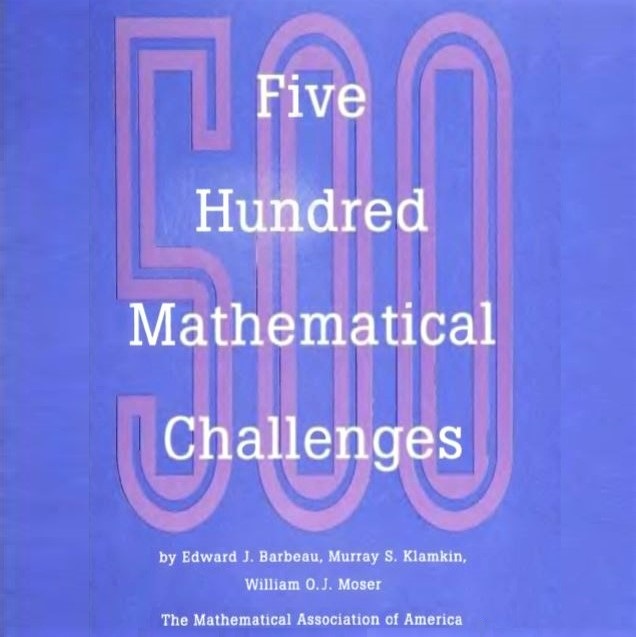 (1) Images of the day: [Left] Book talk by Tara Kangarlou (see the next item below). [Center] The first-ever computer game was a chess machine built in 1912 that played a king-and-rook against a solo king (from: IEEE Spectrum, issue of July 2023). [Right] Five Hundred Mathematical Challenges (see the last item below).
(1) Images of the day: [Left] Book talk by Tara Kangarlou (see the next item below). [Center] The first-ever computer game was a chess machine built in 1912 that played a king-and-rook against a solo king (from: IEEE Spectrum, issue of July 2023). [Right] Five Hundred Mathematical Challenges (see the last item below).
(2) "Tara Kangarlou, in Conversation with Abdi Nazemian": Sponsored by Farhang Foundation, today's program featured the author of The Heartbeat of Iran: Real Voices of a Country and Its People.
Using stories from 24 individuals, chosen to represent Iran's diverse population, journalist/author Tara Kangarlou has aimed to represent ordinary Iranians, not those who govern them. Of course, a country of 83 million cannot be profiled in only 24 lives, but even this limited profile presents a refreshingly different image of Iran than books focusing primarily on the ruling class, religious fanatics, or the theocratic system. The stories represent different ethnicities, professions, gender identities, and more.
The story of Iran tends to be told as the interaction between the oppressors and the oppressed, but ordinary people lead lives that are predominantly occupied by family ties, love, career concerns, music, food, and many other human needs. Yes, oppression is a big part of the picture, but it isn't everything. Kangarlou noted that the average Iranian kid has a lot in common with a Western kid, ditto for young adults, and exposing their common hopes and aspirations will help correct many misconceptions about Iran. [Recording of the program (60-minute video)]
I look forward to reading The Heartbeat of Iran, for which I just placed a hold at my local library.
(3) Book review: Barbeau, Edward J., Murray S. Klamkin, and William O. J. Moser, Five Hundred Mathematical Challenges, Mathematical Association of America, 1995. [My 5-star review of this book on GoodReads]
This book is a wonderful source of mathematical/logical puzzles and diverse challenges of various difficulty levels. Problem statements are generally succinct and the fact that full solutions are provided adds to the book's educational value. The problems appear on pp. 1-46 and solutions on pp. 47-210. Beginning on page 211, six tool chests are briefly reviewed: Combinatorics; Arithmetic; Algebra; Inequalities; Geometry & trigonometry; Analysis.
I include in my review five samples to show the nature and level of the problems. I have chosen only problems that do not include diagrams.
Problem 1: The length of the sides of a right triangle are three consecutive terms of an arithmetic progression. Prove that the lengths are in the ratio 3:4:5.
Problem 101: Prove that each of the numbers 10201, 10101, and 100011 is composite in any base.
Problem 238: Show that, for all real values of x (radians), cos(sin x) > sin(cos x).
Problem 327: Let three concentric circles be given such that the radius of the largest is less than the sum of the radii of the two smaller ones. Construct an equilateral triangle whose vertices lie one on each circle.
445: Prove that if the top 26 cards of an ordinary shuffled deck contain more red cards than there are black cards in the bottom 26, then there are in the deck at least three consecutive cards of the same color.
The following humorous poem (from p. 20), purportedly written by a student in the fly leaf of an algebra textbook, does not apply to this book!
If there should be another flood | Hither for refuge fly
Were the whole world to be submerged | This book would still be dry

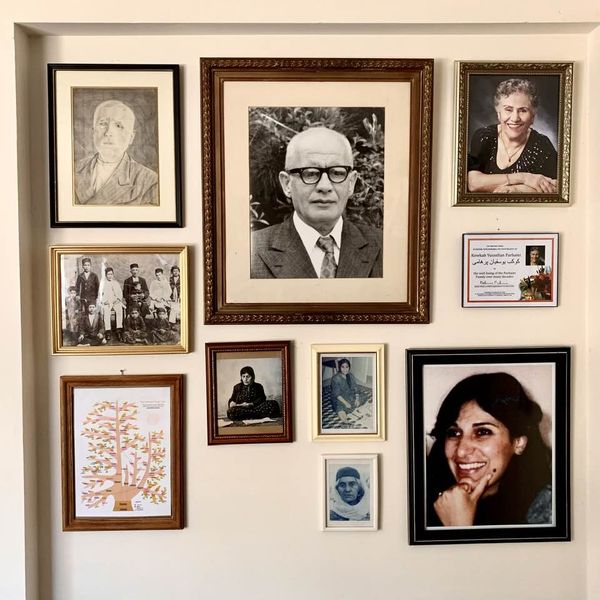


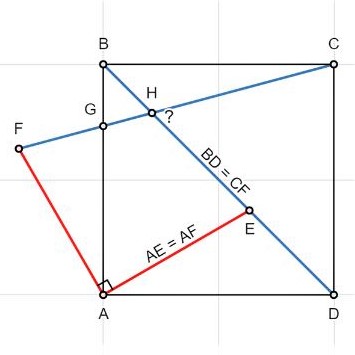
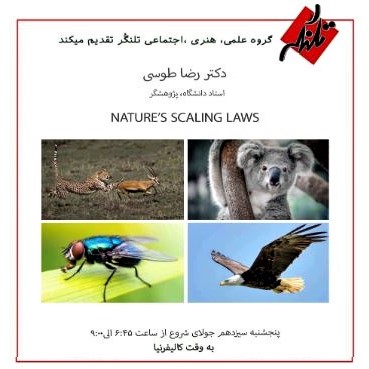
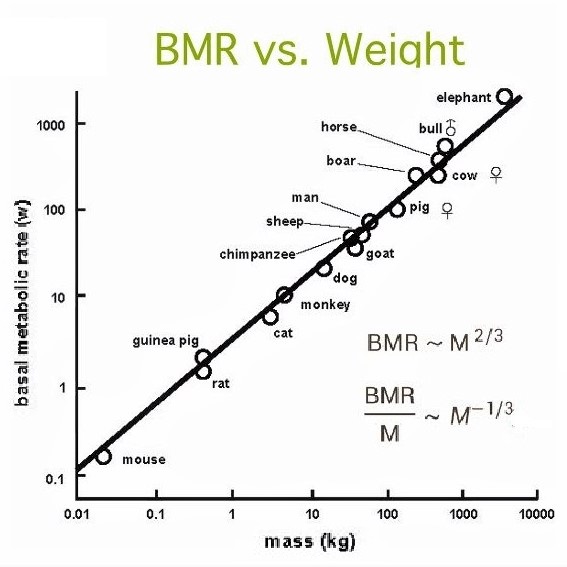
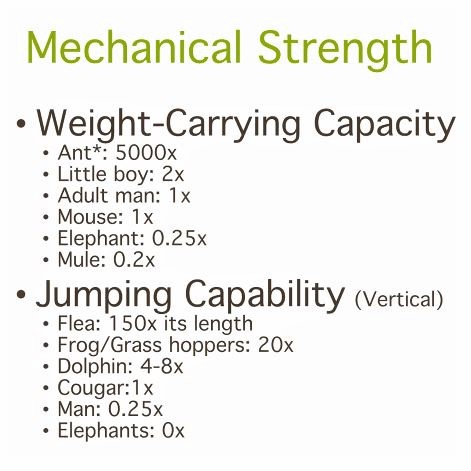
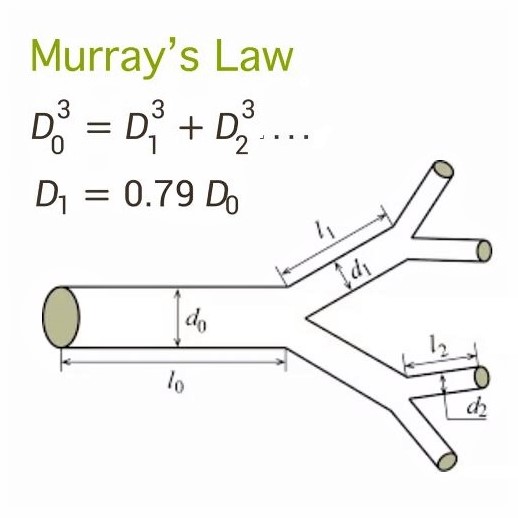 (1) Images of the day: [Top row] Throwback Thursday: My paternal grandmother, Sorahi, doing homework for her adult-education course, pencil drawing of my maternal grandfather, Sassoon, which I did as a teenager, and my just-completed "memorial wall" honoring several deceased family members. [Middle left] Calligraphic rendering of a Persian verse by Khayyam. [Middle center] Math puzzle: If the blue line segments BD & CF are equal, as are the red line segments AE & AF, what is the measure of the angle CHD? [Middle right & Bottom row] Talangor Group talk on "Nature's Scaling Laws" (see the last item below).
(1) Images of the day: [Top row] Throwback Thursday: My paternal grandmother, Sorahi, doing homework for her adult-education course, pencil drawing of my maternal grandfather, Sassoon, which I did as a teenager, and my just-completed "memorial wall" honoring several deceased family members. [Middle left] Calligraphic rendering of a Persian verse by Khayyam. [Middle center] Math puzzle: If the blue line segments BD & CF are equal, as are the red line segments AE & AF, what is the measure of the angle CHD? [Middle right & Bottom row] Talangor Group talk on "Nature's Scaling Laws" (see the last item below).
(2) One-liners: Brief news headlines, happenings, memes, and other items of general interest.
- US FTC has opened an investigation into OpenAI over whether ChatGPT has harmed consumers.
- US Federal Drug Administration approves nation's first over-the-counter birth-control pill.
- Heat dome is expected to bring scorching record-high temperatures to southwestern US.
- Actors join writers on strike, potentially bringing Hollywood production to a grinding halt.
- World Health Organization agency declares Aspartame (artificial sweetener) as possible cause of cancer.
- Math puzzle: Prove the Markov equation m^2 + n^2 + p^2 = 3mnp has infinitely many integer solutions.
(3) Tonight's Talangor Group talk: Dr. Reza Toossi (CSU Long Beach, Mechanical & Aerospace Engineering) spoke under the title "Nature's Scaling Laws." There were ~90 attendees.
Have you ever wondered why small and large animals have different shapes? Tiny insects such as ants & spiders have hair-like legs, whereas huge animals such as elephants & rhinos have thick legs in order to bear their much larger weights. This is because the weight grows as the cube of linear dimension, while the cross-section of legs/bones scales up as the square of linear dimension. This is known as Galileo's square-cube law.
Tiny animals have a larger surface-to-volume ratio compared with larger animals (mouse 4:1; elephant 1:1). This affects their mobility, need for food, and metabolism. Nature cannot create a horse that is 10 times larger; such a creature won't look like a horse due to scaling considerations.
During the lively Q&A period, I mentioned that the concept of scalability exists in technological creations as well. While the computational power of a supercomputer would grow 10000-fold if we increase the number of nodes (cores or processors) from 100 to 1 million, the communication requirements would grow super-linearly, requiring a completely different connectivity for efficient communication among the 1 million nodes. This is why in a supercomputer with millions of nodes, we must invest a great deal (perhaps 80% or 90% of hardware capabilities) in the interconnection network, as opposed to processing chips.
The speaker mentioned that he had been unable to find a suitable Persian equivalent for the world "scaling." Several suggestions were made involving various uses of the word "meghiaas" ("scale"). I mentioned that "meghiaas-paziri" has emerged as an acceptable equivalent for "scalability" in the context of high-performance computer architecture.



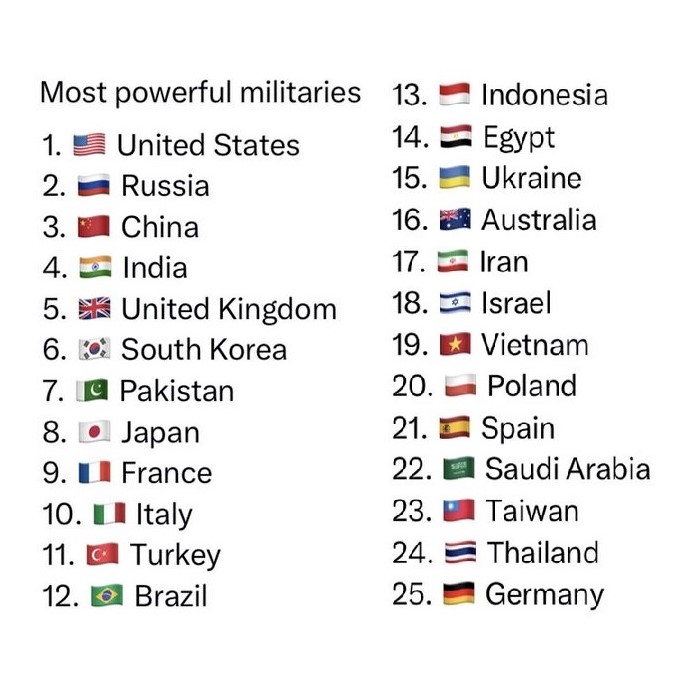

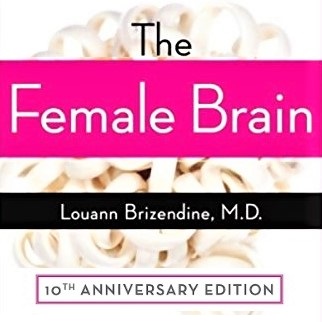 (1) Images of the day: [Top left & center] Drought-tolerant landscaping at UCSB West Campus Faculty Housing grounds. [Top right] Iran politics: Some bright mullah decided that washing huge pots and pans (of the kinds used to cook food for major religious gatherings) at the entrance to Iran's most-prestigious center of higher learning, University of Tehran, would send a message to those pesky intellectuals inside. [Bottom left] World's 25 most-powerful militaries (source: #worldofstatistics). [Bottom center] Meme of the day on a T-shirt: Vote. [Bottom right] Louann Brizendine's The Female Brain (see the last item below).
(1) Images of the day: [Top left & center] Drought-tolerant landscaping at UCSB West Campus Faculty Housing grounds. [Top right] Iran politics: Some bright mullah decided that washing huge pots and pans (of the kinds used to cook food for major religious gatherings) at the entrance to Iran's most-prestigious center of higher learning, University of Tehran, would send a message to those pesky intellectuals inside. [Bottom left] World's 25 most-powerful militaries (source: #worldofstatistics). [Bottom center] Meme of the day on a T-shirt: Vote. [Bottom right] Louann Brizendine's The Female Brain (see the last item below).
(2) Two novelists, both very popular in Iran, have died: The Czech-French writer Milan Kundera (94), best-known for The Unbearable Lightness of Being, and the prolific Iranian writer/journalist Rajabali Etemadi (89).
(3) Book review: Brizendine, Louann, The Female Brain, Harmony Books, 2006.
[My 5-star review of this book on GoodReads]
The 10th Anniversary 2017 Edition of the book, which I perused, begins with the following disclaimer: "This book is not intended to take the place of medical advice from a trained medical professional. ... Neither the publisher nor the author takes any responsibility for any possible consequences from any treatment, action, or application of medicine, herb, or preparation to any person reading or following the information in this book." That such a disclaimer was deemed necessary may have resulted from the author's MD title and her characterization of the book as an "owner's manual" for women.
The book is composed of seven chapters, sandwiched between an introduction and an epilogue. There are also extensive notes and three highly informative appendices. The main text is preceded by a list of (female) brain parts/areas, "The Cast of Neuro-Hormone Characters" (a sort of glossary), and a table naming and describing the phases of a female's life: Fetal; Girlhood; Puberty; Sexual maturity; Pregnancy; Breast-feeding; Child-rearing; Perimenopause; Menopause; Postmenopause.
Introduction: What Makes Us Women
One: The Birth of the Female Brain
Two: Teen Girl Brain
Three: Love and Trust
Four: Sex: The Brain Below the Belt
Five: The Mommy Brain
Six: Emotion: The Feeling Brain
Seven: The Mature Female Brain
Epilogue: The Future of the Female Brain
Appendix One: The Female Brain and Hormone Therapy
Appendix Two: The Female Brain and Postpartum Depression
Appendix Three: The Female Brain and Sexual Orientation
At the beginning of the book's introduction, we learn that male brains are larger than female brains by about 9%, even when correcting for body size. But this size difference isn't a sign of women's lower mental capacity. The two brains have the same number of brain cells, with the cells packed more densely in women. Such myth-busting statements appear throughout the book, making it a must-read for both women and men.
Interestingly, even though female and male brains have the same capabilities, they use different brain regions/circuits and, perhaps, different algorithms to perform the same task. In the brain centers for language and hearing, women have 11% more neurons than men. Women's brain circuitry for observing emotions in others are also more developed. Men, on the other hand, have 2.5 times the brain space devoted to sexual drive, and also have larger brain centers for action and aggression.
Men and women have the same average level of intelligence and half of the highest IQs belong to women. "The fact that fewer women end up in science has nothing to do with female brain deficiencies in math and science." I could go on about commonalities and differences in how female and male brains function, but then I would be replicating a good chunk of Brizendine's book.


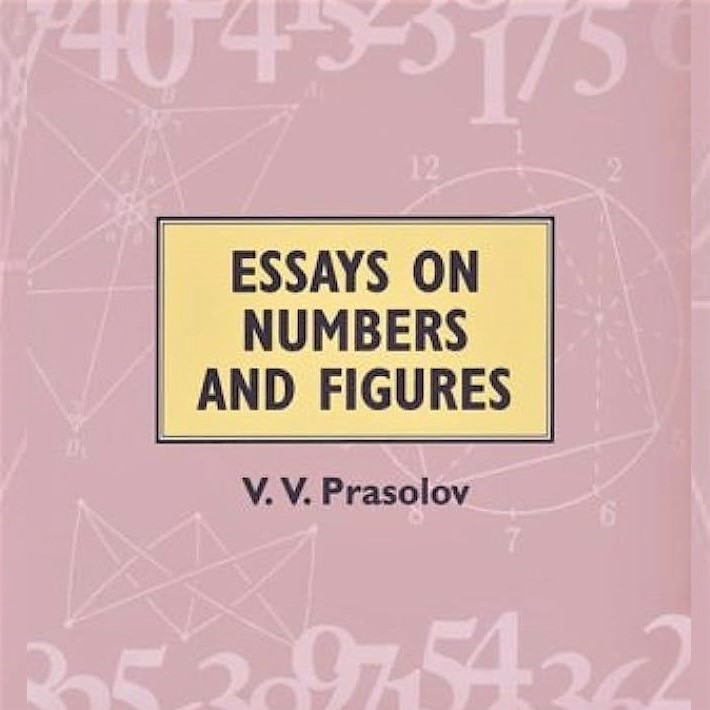


 (1) Images of the day: [Top left & center] Optical illusion: The two circles in the image on the left appear like a spiral pattern. Changing every fourth element in the pattern removes the illusion. [Top right] Victor Prasolov's amazing book, Essays on Numbers and Figures (see the last item below). [Bottom left] UCSB's Harold Frank Hall (the former Engineering I) building gets new elevators: The ancient, failure-prone pair have been in use at least since 1988, when I arrived here. One of the two new units has already been installed, with the second unit going on-line in a few months. [Bottom center] Meme of the day: Poster for the Kiev, Ukraine, book fair. [Bottom right] Lovely thought for the day: A helping hand can be a ray of sunshine in a cloudy world.
(1) Images of the day: [Top left & center] Optical illusion: The two circles in the image on the left appear like a spiral pattern. Changing every fourth element in the pattern removes the illusion. [Top right] Victor Prasolov's amazing book, Essays on Numbers and Figures (see the last item below). [Bottom left] UCSB's Harold Frank Hall (the former Engineering I) building gets new elevators: The ancient, failure-prone pair have been in use at least since 1988, when I arrived here. One of the two new units has already been installed, with the second unit going on-line in a few months. [Bottom center] Meme of the day: Poster for the Kiev, Ukraine, book fair. [Bottom right] Lovely thought for the day: A helping hand can be a ray of sunshine in a cloudy world.
(2) Me, as a large language model: I have noticed that, lately, when I sit down to write something, the words come out with much less effort than was the case, say, two decades ago. It seems that having read and reviewed hundreds of books and perused many thousands of articles (news stories, scientific papers, essays), my inner neural network has been adequately trained for effortless text generation. What I produce is often good enough to need little or no editing. Of course, editing by rearranging phrases and use of a thesaurus does improve the output quality.
(3) One-liners: Brief news headlines, happenings, memes, and other items of general interest.
- Flooding closes roads and threatens towns through much of Vermont. [NYT]
- Phoenix suffers 110+ degree temperatures for 10 consecutive days: And the heat wave isn't over yet. [Axios]
- The next US president may be chosen by double-haters: It comes down to who's less-hated, Biden or Trump.
- Caltech's Ali Hajimiri: We'll be able to beam solar power from space in ~15 years. [6-minute video]
- Super-high tide this afternoon at UCSB West Campus Beach. [2-minute video]
- Math puzzle: Show that the sequence A(n) = (2 + sqrt(3))^n gets closer to integer values as n increases.
(4) Book review: Prasolov, Victor V., Essays on Numbers and Figures, American Mathematical Society, 2000.
[My 5-star review of this book on GoodReads]
This is the 16th title in AMS's "Mathematical World" series, whose other titles include Fixed Points (1991), Intuitive Topology (1995), and A Gentle Introduction to Game Theory (1999).
The 20 essays in this volume, ranging in length from 2 to 7 pages, are almost entirely independent, each covering "a brilliant mathematical statement with an interesting proof; or a simple, but effective method of problem solving; or an interesting property of polynomials; or it may refer to exceptional points of the triangle."
Here is an example problem from Chapter 1, "Conjugate Numbers": The terms of the sequence (2 + sqrt(3))^n get closer to integer values as n increases. In Chapter 2, "Rational Parmetrizations of the Circle," we encounter this gem: There are infinitely many points with rational x & y on the circle x^2 + y^2 = 1. Chapter 3, "The Markov Equation," reveals the structure of the integer solutions to the equation m^2 + n^2 + p^2 = 3mnp.
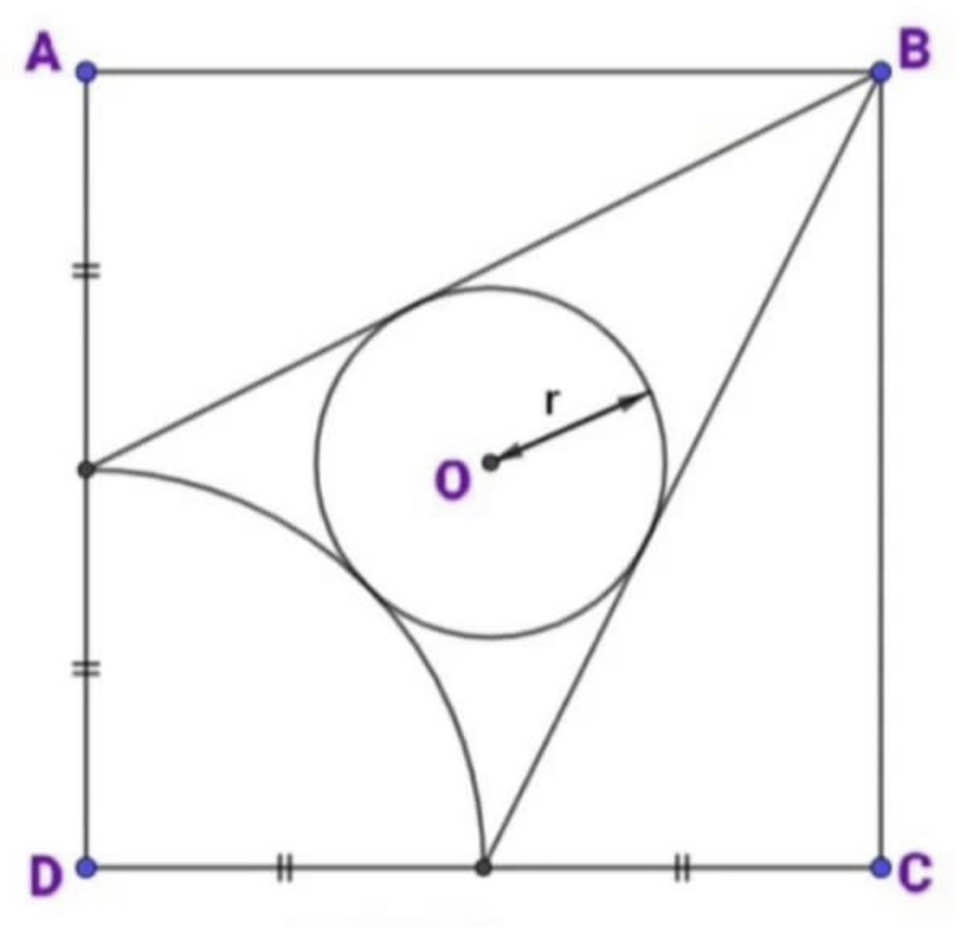

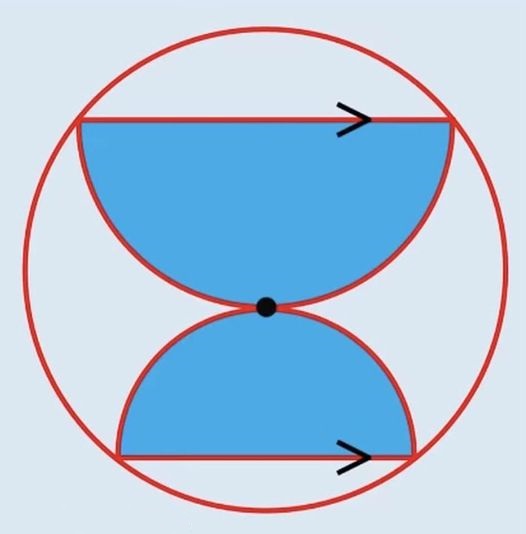
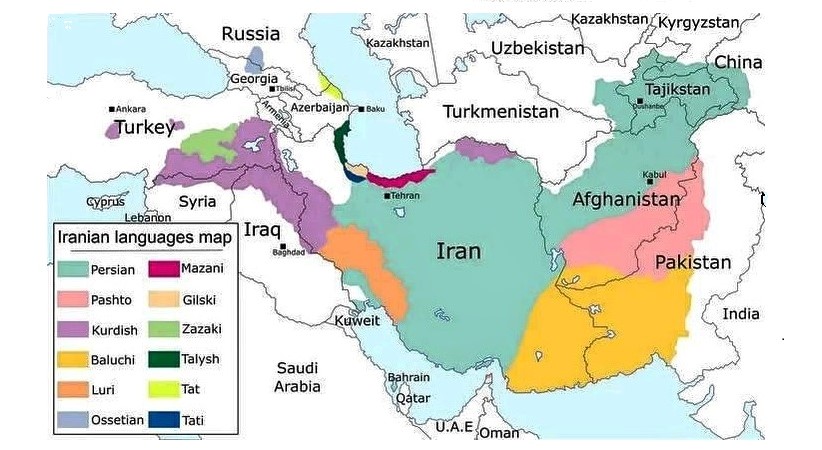
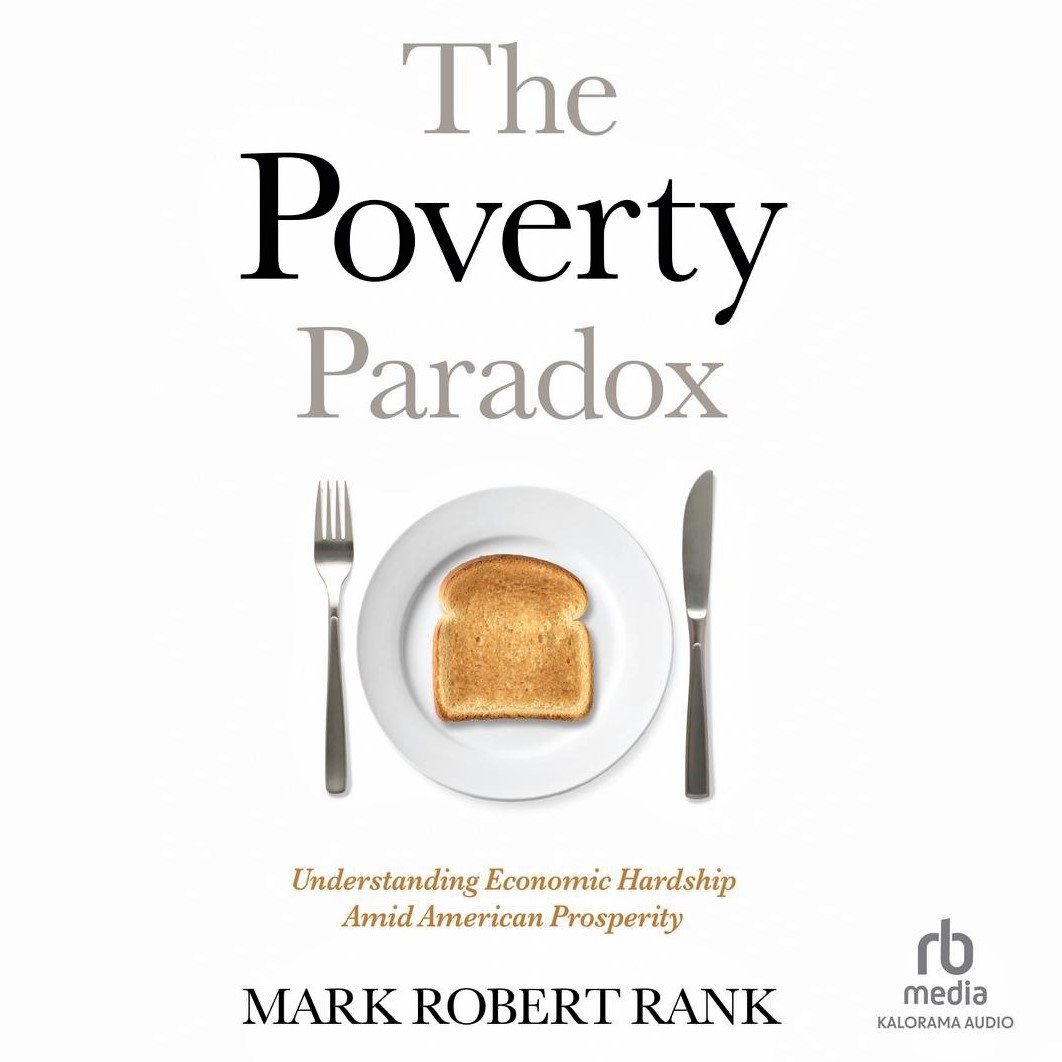 (1) Images of the day: [Top left] Math puzzle: What is the radius r of the circle touching the quarter-circle and lines drawn from the middle of two sides of a unit square to vertex B? [Top center] This is today's Tehran: Very different from Tehran of 2 years ago; quite similar to Tehran of 50 years ago. [Top right] Math puzzle: What fraction of the circle is shaded blue? The diametral lines of the two semi-circles are parallel to each other. [Bottom left] Map of modern Iranian languages. [Bottom right] The Poverty Paradox (see the last item below).
(1) Images of the day: [Top left] Math puzzle: What is the radius r of the circle touching the quarter-circle and lines drawn from the middle of two sides of a unit square to vertex B? [Top center] This is today's Tehran: Very different from Tehran of 2 years ago; quite similar to Tehran of 50 years ago. [Top right] Math puzzle: What fraction of the circle is shaded blue? The diametral lines of the two semi-circles are parallel to each other. [Bottom left] Map of modern Iranian languages. [Bottom right] The Poverty Paradox (see the last item below).
(2) Rags to riches: Google/Alphabet CEO Sundar Pichai grew up in India. His family had to wait for 5 years to get a telephone line. Now, his company controls 90% of all Internet searches and 70% of all cell phones!
(3) One-liners: Brief news headlines, happenings, memes, and other items of general interest.
- Math puzzle: Show that there are infinitely many points with rational x & y on the circle x^2 + y^2 = 1.
- Six-word short story, attributed to Ernest Hemingway: "For sale. Baby shoes. Never worn."
- Enrico Macias wrote & performed "Solenzara": This 5-minute video also contains Viguen's Persian version.
- Persian music: A beautiful oldie song performed by an all-women ensemble. [3-minute video]
(4) Book review: Rank, Mark Robert, The Poverty Paradox: Understanding Economic Hardship Amid American Prosperity, unabridged 6-hour audiobook, read by Barry Abrams, Kalorama, 2023.
[My 5-star review of this book on GoodReads]
The economic system in the US is set up like a game of musical chairs, played with 10 people and only 8 chairs, according to Rank's favorite analogy. When the music stops, two people are left without chairs, regardless of who is playing. We focus on who lost and the character flaws of the losers, rather than asking why there aren't enough chairs (good-paying jobs) to begin with.
Why is there poverty at all in the richest country in the world? More than one in 10 Americans are poor. Actually, given that some people experience poverty over a short period of time (when losing a job, e.g.), the real number is somewhat higher. The social safety net in America is quite weak and we lack universal healthcare, so a job loss or unexpected illness can put us at a real risk of falling into poverty.
Ironically, the diversity of population in America, sometimes cited as a source of our strength, is also a cause of poverty. Research has shown that homogeneous societies in terms of race and ethnicity have more generous welfare states. When people in need look more like me, I am more likely to be empathetic in giving a helping hand. Unfortunately, America's love affair with rugged individualism doesn't help. We think that everyone should take advantage of opportunities that exist.
Our supposed "land of plenty" actually offers fewer opportunities than other advanced industrial societies for people to move up the economic ladder. The American Dream has become an illusion, in the wake of very wide income and wealth gaps. The Republicans' advocacy of small government is highly selective: They want the government small where it can help people in need and large where it benefits top-one-percenters and big corporations.
The viewpoint that causes of poverty lie within people's attitudes and behaviors leads to the advocacy for tough-love, job-training, and skills development. Outright neglect is justified under the banner that government is the problem not the solution, and scapegoats are created for there not being enough opportunities. The blame is placed on other groups of people (blacks, immigrants), instead of the shortage of two chairs in the musical-chairs analogy.
The notable reduction in poverty levels during the COVID years, due to expanded child tax credit, stimulus checks, moratorium on evictions, greater food/housing assistance, and increased unemployment benefits showed us a glimpse of what might be possible with universal healthcare, better-paying jobs, and, perhaps, a universal basic income.
A final point is that poverty does not affect only the poor: It hurts the entire society by undermining democracy. We pay for illnesses in one way or another. Paying on the front end through universal healthcare tends to be cheaper than paying on the back end when urgent care is needed. So, cost is not a valid argument against universal health care. The same argument applies to good childcare and good education. "We need to shift our thinking about poverty from an issue of them to an issue of us."



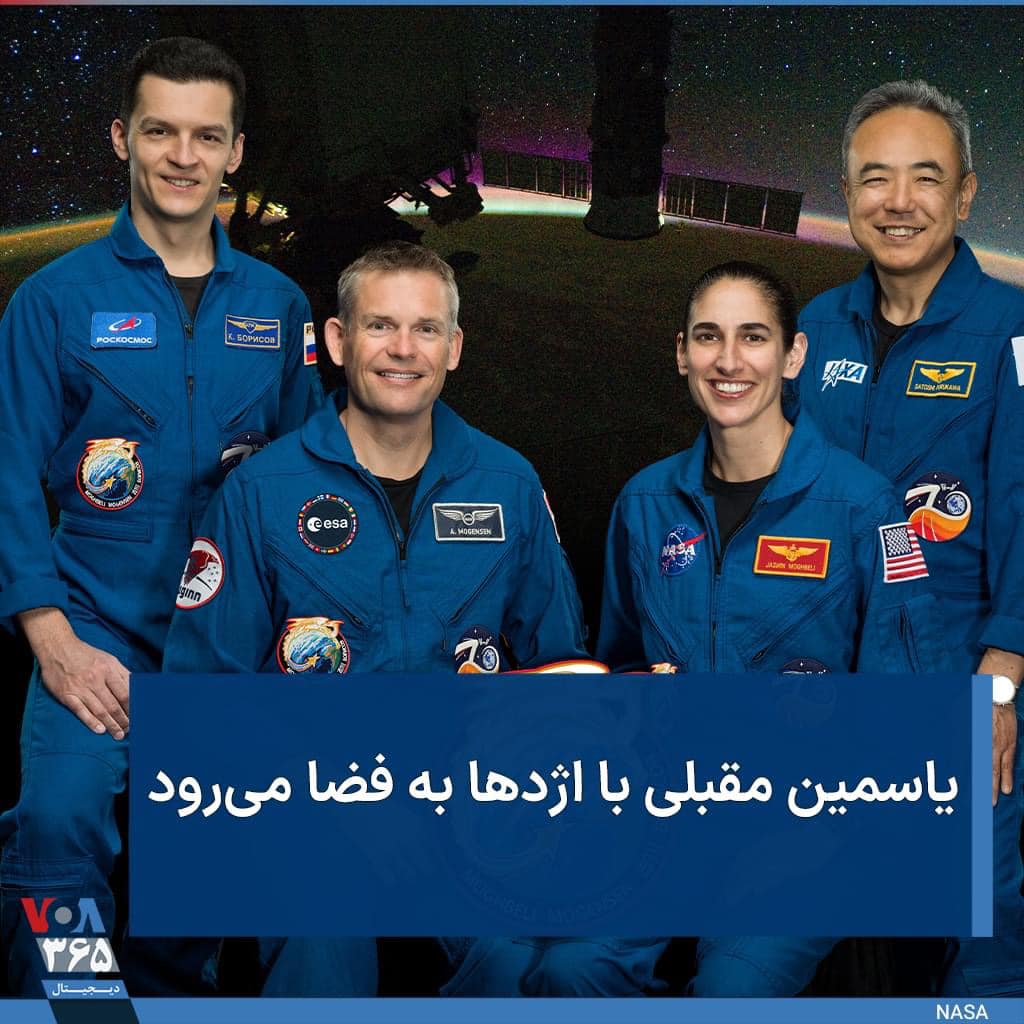

 (1) Images of the day: [Top row] As I was walking to my car from Santa Barbara Courthouse, after being relieved of jury duty on Wednesday afternoon, I shot these photos at the beautiful Alice Keck Memorial Gardens. [Bottom left] The next team of astronauts to travel to ISS will include Iranian-American test pilot Jasmin Moghbeli. [Bottom center] The undeniably-positive role of labor unions in reducing income inequality: When roughly one-third of US workers were unionized in mid-20th century, income inequality was at its lowest (NYT chart). [Bottom right] Sarah Jaquette Ray's A Field Guide to Climate Anxiety (see the last item below).
(1) Images of the day: [Top row] As I was walking to my car from Santa Barbara Courthouse, after being relieved of jury duty on Wednesday afternoon, I shot these photos at the beautiful Alice Keck Memorial Gardens. [Bottom left] The next team of astronauts to travel to ISS will include Iranian-American test pilot Jasmin Moghbeli. [Bottom center] The undeniably-positive role of labor unions in reducing income inequality: When roughly one-third of US workers were unionized in mid-20th century, income inequality was at its lowest (NYT chart). [Bottom right] Sarah Jaquette Ray's A Field Guide to Climate Anxiety (see the last item below).
(2) Republicans are pro-birth: They don't care about children once they are born. Democrats are pro-life: They want children to be fed, housed, insured, & educated, and parents to earn enough to take care of them.
(3) One-liners: Brief news headlines, happenings, memes, and other items of general interest.
- The US healthcare system sucks compared with other advanced countries: Rampant fraud makes it worse.
- In Iran, only the Majlis is empowered to legislate, but many centers of powers make up their own laws.
- Technology to help distinguish real images from AI-generated ones is coming of age.
- As we age, our sleep needs change: Nights when we're asleep more than we're up can become elusive.
- Facebook memory from July 8, 2019: A culture built on servitude & idol worship can't achieve greatness.
(4) Book review: Ray, Sarah Jaquette, A Field Guide to Climate Anxiety: How to Keep Your Cool on a Warming Planet, unabridged 5-hour audiobook, read by Sarah Sheckells, Tantor Audio, 2020.
[My 4-star review of this book on GoodReads]
This book is aimed primarily at the Climate Generation (late Millennials and Generation Z), but everyone can benefit from its encapsulation of the climate problem and its prescription for cultivating a mature, compassionate, and resilient mindset that will allow taking steps toward climate justice in a hopeful, emotionally-intelligent, and sustainable fashion. We must set aside fearful, guilt-ridden, and anxiety-inducing activism that harms our well-being more than it helps solve climate problems.
These two quotes from p. 7 and p. 126 capture Ray's philosophy:
- "Reframing environmentalism as a movement of abundance, connection, and well-being may help us rethink it as a politics of desire rather than a politics of individual sacrifice and consumer denial."
- "Find beauty, savor the small gifts of being alive, see everything you possibly can through the lens of being blessed rather than victimized, recalibrate your efforts toward the small and local, collect and create positive stories ... "
Here is a list of the book's chapters, each of which ends with a checklist that reiterates and highlights the chapter's main ideas.
Introduction: Embrace life in the Anthropocene (and develop a vision for Earth, as changed by humans)
Chapter 1: Get schooled on the role of emotions in climate-justice work (climate change & mental health)
Chapter 2: Cultivate climate wisdom (make use of research on mindfulness, grief/trauma, ecopsychology)
Chapter 3: Claim your calling and scale your actions (the myth that a single individual cannot do much)
Chapter 4: Hack the story (replacing stories of urgency & doom with stories of collective transformation)
Chapter 5: Be less right and more in relation (increasing opportunities of collaborating with other people)
Chapter 6: Move beyond hope, ditch guilt, and laugh more (resist misery; guilt is destructive & pointless)
Chapter 7: Resist burnout (not just a narcissistic urge, but essential to dismantling existing power relations)
Conclusion: Feed what you want to grow (set aside fear & rage, focus on climate justice for the long haul)
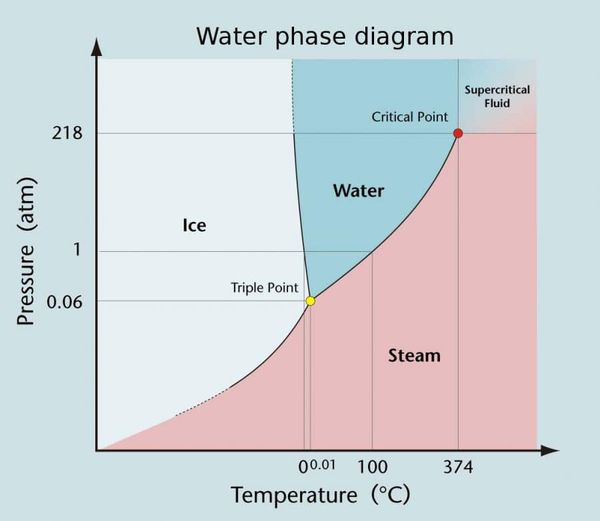
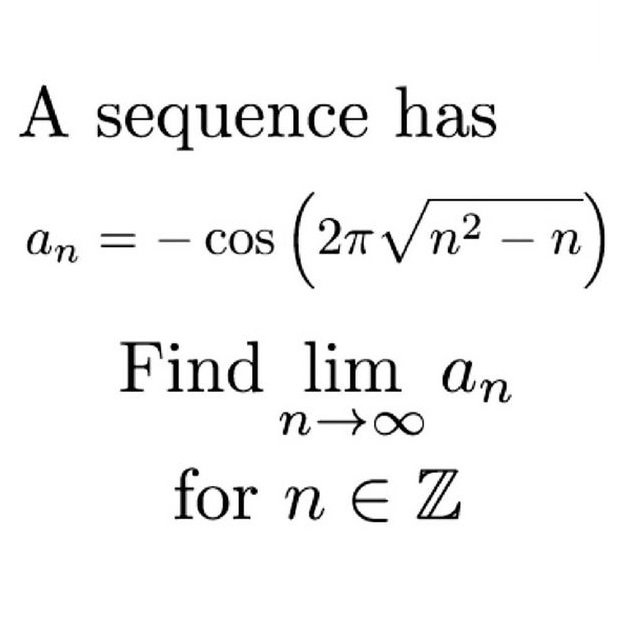
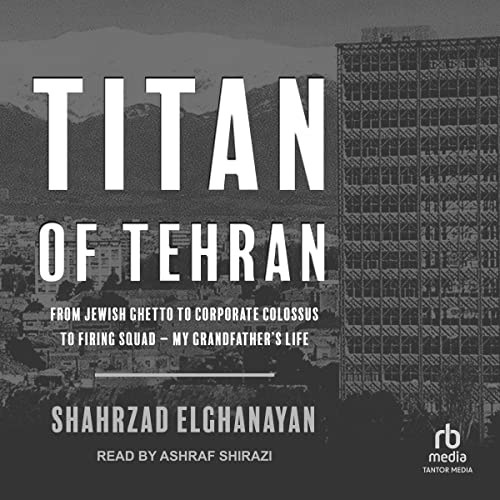


 (1) Images of the day: [Top left] Water's triple point: Whether water is solid, liquid, or gaseous depends on its temperature and pressure. Under the right conditions (viz. 0.01 C & 0.06 atm.), all three forms of water can coexist. These conditions can occur on Mars, for example. [Top center] Math puzzle: What is the limit of the nth term of the following sequence, as n tends to infinity? [Top right] Shahrzad Elghnayan's Titan of Tehran (see the last item below). [Bottom left] Brazil's women's national soccer team lands in Australia in a charter plane that pays tribute to Iranian protesters Mahsa Amini and Amir Nasr Azadani. Images of the two victims appear on the tail fin and "No woman should be killed for not covering her head" is one of several messages appearing on the fuselage. [Bottom center & right] A venue with precious memories for me: UCLA's majestic Royce Hall.
(1) Images of the day: [Top left] Water's triple point: Whether water is solid, liquid, or gaseous depends on its temperature and pressure. Under the right conditions (viz. 0.01 C & 0.06 atm.), all three forms of water can coexist. These conditions can occur on Mars, for example. [Top center] Math puzzle: What is the limit of the nth term of the following sequence, as n tends to infinity? [Top right] Shahrzad Elghnayan's Titan of Tehran (see the last item below). [Bottom left] Brazil's women's national soccer team lands in Australia in a charter plane that pays tribute to Iranian protesters Mahsa Amini and Amir Nasr Azadani. Images of the two victims appear on the tail fin and "No woman should be killed for not covering her head" is one of several messages appearing on the fuselage. [Bottom center & right] A venue with precious memories for me: UCLA's majestic Royce Hall.
(2) Enthusiastic feminism in the Middle East: A new generation of feminists sees women's rights as part of a wider democratic struggle, beyond class and across religious-secular divides. [Le Monde: Persian, English]
(3) Quote of the day: "You can safely assume you've created God in your own image when it turns out that God hates all the same people you do." ~ American novelist Anne Lamott
(4) Book review: Elghanayan, Shahrzad, Titan of Tehran: From Jewish Ghetto to Corporate Colossus to Firing Squad—My Grandfather's Life, unabridged 7-hour audiobook, read by Ashraf Shirazi, Tantor Audio, 2022.
[My 4-star review of this book on GoodReads]
Habib Elghanian (or Elghanayan) [1912-1979], one of the richest and most-respected members of Iran's Jewish community, was executed on May 9, 1979 (at age 67), less than 3 months after the mullahs came to power by overthrowing the Shah. He was accused of financial crimes as well as spying for Israel, crimes commonly concocted in the early days of Iran's Islamic regime for rich people and those who had traveled to or invested in Israel. In this book, Elghanian's US-raised journalist granddaughter, Shahrzad, dutifully commemorates the life of a man she remembers only fleetingly.
Elghanian's claim to fame and source of wealth was Plasco, a plastics-manufacturing company that became Iran's largest and most-technologically-advanced plastics producer through the use of Western technology. In addition to his entrepreneurial activities, Elghanian served as the leader of Tehran's Jewish community in the 1960s and 1970s.
In the aftermath of the Islamic Revolution, many Jews fled Iran, because they considered the country unsafe for non-Muslims. Elghanian was advised by friends and acquaintances to leave Iran, but, thinking that he had done nothing wrong and feeling indebted to the workers of his factories, he decided to stay. Because of the atmosphere of fear in Iran, only a handful of individuals attended the self-made multi-millionaire's funeral.
International reaction to the execution of the first Jew and one of first civilians by the Islamic regime was swift. The US Senate passed a resolution to condemn Elghanian's execution as a violation of human rights, a trigger event for subsequent sanctions for similar violations. Elghanian's name again dominated Iran's news stories in Jan. 2017, when the Plasco Building, Tehran's tallest for its time, burned down and collapsed in a massive fire.
As is the case with many memoirs that are intermixed with political tensions and historical events, there are inaccuracies, omissions, and dramatizations regarding what happened in the society where the story unfolds. The revolutionaries needed scapegoats for all the things that went wrong following their coming to power. Even today, after 44 years, the mullahs are blaming the Shah and his regime, the West, and Zionists for whatever ails Iran, and each government blames the one before it for budget deficits and its inability to make the economy work. Just as today's political executions are meant to induce fear into would-be street protesters, some of the early revolutionary executions were meant as warnings to would-be dissenters and troublemakers.

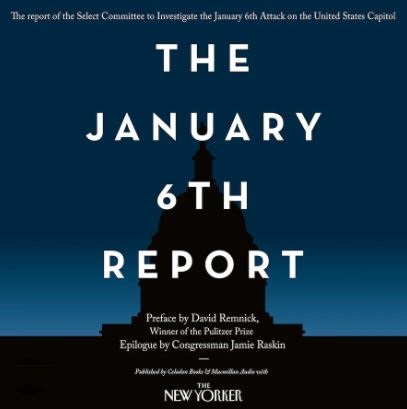



 (1) Images of the day: [Top left] Throwback Thursday: Women protesting against misogynistic laws, days after Iran's Islamic Revolution (44 years ago, on Int'l Women's Day 1979). [Top center] The January Select-Committee Report (see the last item below). [Top right] Beautiful architecture: Samarkand, Uzbekistan. [Bottom left & center] July 4th observance: Tiny flag in front of my home; humongous flag in front of Santa Barbara Courthouse, where I participated in a jury selection process yesterday. Luckily, I am off the hook. [Bottom right] Impressive architectures: The 13th-century Palmyra Castle in Syria.
(1) Images of the day: [Top left] Throwback Thursday: Women protesting against misogynistic laws, days after Iran's Islamic Revolution (44 years ago, on Int'l Women's Day 1979). [Top center] The January Select-Committee Report (see the last item below). [Top right] Beautiful architecture: Samarkand, Uzbekistan. [Bottom left & center] July 4th observance: Tiny flag in front of my home; humongous flag in front of Santa Barbara Courthouse, where I participated in a jury selection process yesterday. Luckily, I am off the hook. [Bottom right] Impressive architectures: The 13th-century Palmyra Castle in Syria.
(2) I don't understand this logic: Selling a cake to a gay couple is participating in and approving of the marriage, but selling a gun to a mass shooter isn't participating in and approving of the murders?
(3) Generating electricity from the air: Nikola Tesla's speculation that electricity can be produced from the air is becoming true. Tesla was looking at the Earth and upper atmosphere as two ends of an enormous battery from which power can be drawn, what today is known as hygroelectricity. A team at U. Mass accidentally demonstrated that a small but continuous electric current can be generated from the humidity in the air, using an array of microwires. Sourcing raw materials, costing, assessing the environmental footprint, and scaling them up takes time, but this is true of any new technology.
(4) One-liners: Brief news headlines, happenings, memes, and other items of general interest.
- Heat records broken worldwide: The past three days were among the hottest in Earth's modern history.
- Someone has offered to Iran's Khamenei, Jannati, & Raisi a free submarine ride to see the Titanic wreckage.
- Iranian MP: If people don't bear children in response to our gentle plea, we will impregnate them by force!
- Quote of the day: "Passion is the bridge that takes you from pain to change." ~ Frida Kahlo
(5) July 4th mass shootings across the US kill 15 and injure 94: Not even thoughts & prayers are being sent by GOP politicians anymore. [Tweet, with cartoons]
(6) Book review: The January 6th Committee, The January 6th Report, unabridged 24-hour audiobook, read by Ari Melber & Joe Knezevich, Harper Audio, 2023.
[My 4-star review of this book on GoodReads]
Every American should read this spellbinding report, if not in its entirety, then at least its Executive Summary comprising about 15% of the 845-page report, not counting the Summary's 60 pages of endnotes.
The well-written report is available on-line for free on a US government Web site that also includes the following supporting material: Court documents; Documents on file with the Select Committee; Select Committee hearing videos; Transcribed interviews and depositions; Video exhibits; Web resources referenced by the Committee.
Here is the report's table of contents.
Executive summary
Chapter 1: The big lie
Chapter 2: "I Just want to find 11,780 votes"
Chapter 3: Fake electors and "The President of the Senate" strategy
Chapter 4: "Just call it corrupt and leave the rest to me"
Chapter 5: "A coup in search of a legal theory"
Chapter 6: "Be there, will be wild"
Chapter 7: 187 minutes of dereliction
Chapter 8: Analysis of the attack
Recommendations
Appendix 1: Government agency preparation and response to January 6th
Appendix 2: DC National Guard preparation for and response to January 6th
Appendix 3: The big rip-off: Follow the money
Appendix 4: Malign foreign influence
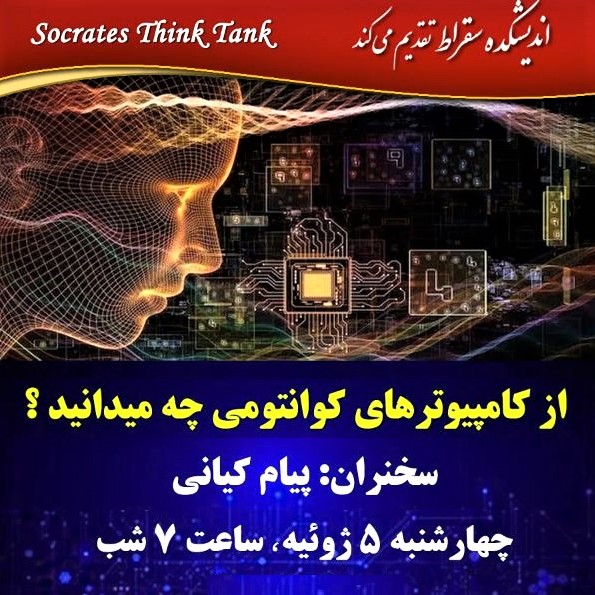

 (1) Images of the day: [Left] Socrates Think Tank talk on quantum computers, preceded by a tribute to Dr. Firouz Naderi (see the next item below). [Center] Jeffrey Kluger's The Sibling Effect (see the last item below). [Right] I'll drink to that: "We'd rather see two men holding hands than two men holding guns."
(1) Images of the day: [Left] Socrates Think Tank talk on quantum computers, preceded by a tribute to Dr. Firouz Naderi (see the next item below). [Center] Jeffrey Kluger's The Sibling Effect (see the last item below). [Right] I'll drink to that: "We'd rather see two men holding hands than two men holding guns."
(2) Tonight's Socrates Think Tank Talk: Dr. Payam Kiani spoke under the title "What Do You Know About Quantum Computers?" Before the main talk, I made a short presentation in honor of the late NASA scientist Dr. Firouz Naderi. Here is a link to a previous version of my presentation (14-minute video, in Persian).
Beginning with the notions of entanglement (dar-ham-tanidegui) and superposition (bar-ham-naheshti), Dr. Kiani described how a qubit can represent exponentially many different states at once, thus allowing the transformation of some NP-hard problems requiring worst-case exponential running times on classical computers into tractable polynomial-time problems for quantum computers. An example is Shor's quantum algorithm for factoring a number into its prime components.
Other topics discussed included implementation of quantum computers, the challenge of making them less error-prone, and using them in combination with classical computers for input/output and staging of computations. A brief mention was also made of quantum communication, which takes advantage of teleportation to realize highly-secure data transmission.
[Dr. Payam Kiani's YouTube Channel, containing a series of six 1-hour lessons on quantum computing.]
[Reading: "Is There a Moore's Law for Quantum Computing?" (ArXiv paper)]
[Reading: "Quantum Threat Timeline Report 2022" (Global Risk Intitute report)]
(3) Book review: Kluger, Jeffrey, The Sibling Effect: What the Bonds Among Brothers and Sisters Reveal About Us, unabridged 9-hour audiobook, read by Pete Larkin, Tantor Audio, 2011.
[My 4-star review of this book on GoodReads]
Kluger opens his book by telling the story of how he and two of his brothers put their youngest brother in a fuse cabinet, where he faced the danger of electrocution, in an effort to protect him from their father's rage. The four brothers had a difficult childhood, but they emerged from it with an appreciation of the bond they shared, feeling much stronger as a result.
In the animal kingdom, sibling rivalry may take a dark turn. Some birds take a look at multiple eggs, before discarding all but the one that appears healthiest. Shark siblings eat one another while in their mother's womb, until only one survives. Rivalry among human siblings, while not as extreme, is quite intense indeed. Each sibling tries mightily to impress the parents and others around them with his/her strongest selling point: The funny one; the smart one; the pretty one; the most-athletic. This is sometimes called "de-identification," pursuing a distinct interest where one gets 100% of the attention, instead of trying to excel in the same area as an older sibling, which gives one at most 50% of the attention.
Parents contaminate the de-identification process by making it clear, explicitly or implicitly, that some interests/skills are preferable. Favoritism is another way in which parents can create an unhealthy environment among siblings. Despite denials if asked, 70% of fathers and 65% of mothers exhibit (that is, they are not successful in hiding) a preference for at least one child. This is something that is wired in our brain by evolution; we simply can't help it. The most-common favorite for a father is the last-born daughter; for a mother, it's the first-born son.
Birth order plays a significant role in the relationship among siblings. Earlier-born children get more attention from their parents, so it's not surprising that they are vaccinated more reliably and exhibit an average advantage of a few IQ points over their younger siblings. The fact that older siblings get to take care of and mentor the younger ones also adds to their intelligence and self-confidence. Hence, the greater likelihood of first-borns becoming CEOs, Senators, or astronauts. Last-borns develop the skill to charm, as a protective mechanism, with the result that some of our greatest satirists are last-borns or near-last-borns.
Siblings fight with each other constantly, but they also teach each other about conflict avoidance and resolution. Sole-children have no sibling rivalry and for a long time were thought to be at a disadvantage with regard to developing social skills. New research has dispelled the latter myth by showing that sole-children make up for their sibling deficiency in a myriad of ways.
I really enjoyed Kluger's insightful book and recommend it highly. It is choke-full of interesting ideas and useful tips for siblings and parents alike.
Kluger's 21-minute TEDx talk on the hidden power of siblings aptly summarizes the book's main points.
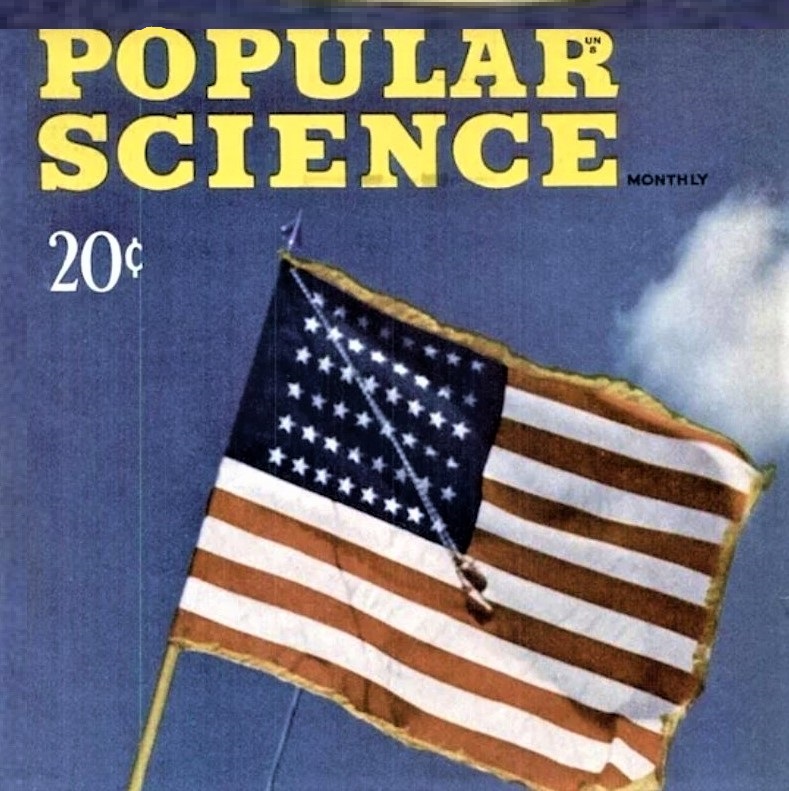
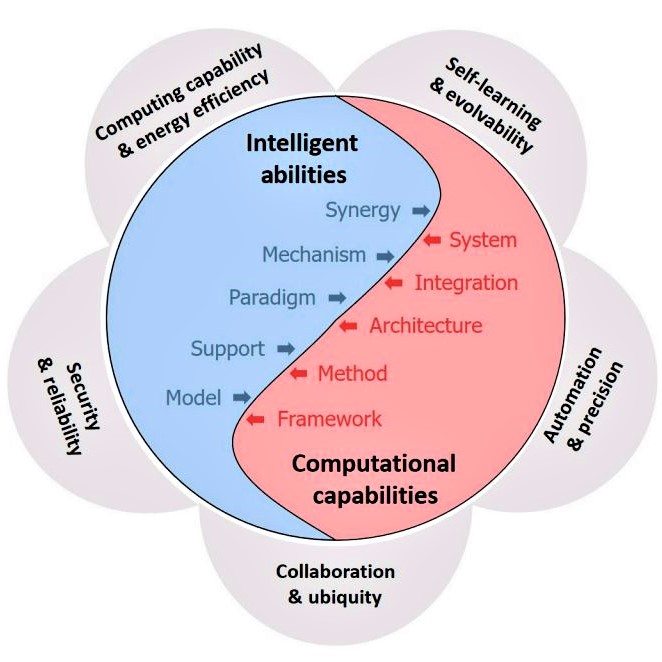
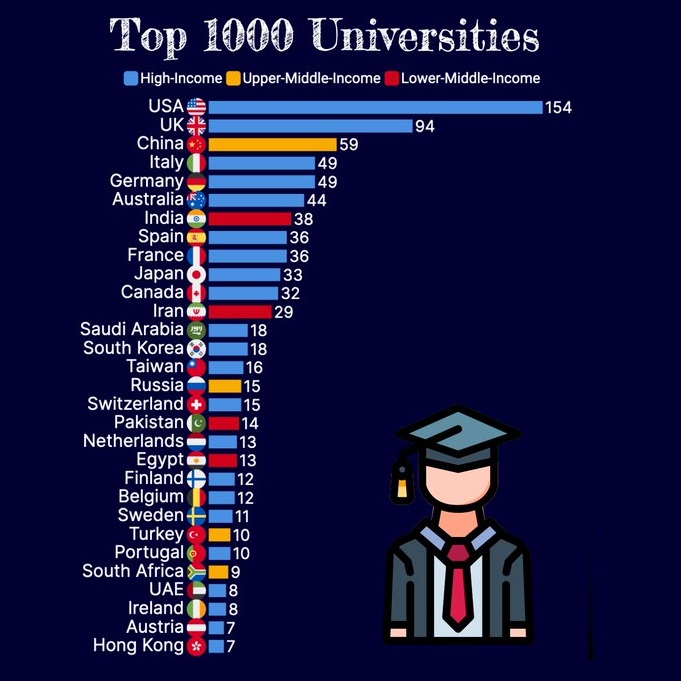 (1) Images of the day: [Left] Happy July 4th: This image is part of a gallery that shows how Popular Science has celebrated Independence Day over the years (see the next item below). [Center] On intelligent computing (see the last item below). [Right] World's top-1000 universities: According to World of Statistics, USA and UK have a quarter of the world's top universities. China's third position and several European countries' strong showings aren't surprising. Appearance of low-income India & Iran among the top 12 countries is unexpected. It would have been better to present data on per-capita basis to account for widely-varying populations.
(1) Images of the day: [Left] Happy July 4th: This image is part of a gallery that shows how Popular Science has celebrated Independence Day over the years (see the next item below). [Center] On intelligent computing (see the last item below). [Right] World's top-1000 universities: According to World of Statistics, USA and UK have a quarter of the world's top universities. China's third position and several European countries' strong showings aren't surprising. Appearance of low-income India & Iran among the top 12 countries is unexpected. It would have been better to present data on per-capita basis to account for widely-varying populations.
(2) Happy birthday to America: On this day, we celebrate the freedoms that our forefathers fought hard to secure for us and other generations since then sacrificed to maintain. We do not celebrate our flag, but the ideals that are behind it. We do not celebrate our military might, but how it is used to safeguard our freedoms and help others protect theirs. There is a reason that Lady Liberty is holding a torch and not a gun!
(3) Internet cable channels in Iran: To drive people away from foreign-based Internet content, Iranian mullahs decided to establish their own cable channels to offer more-entertaining content than what the state-TV airs. Now, it seems that movies and TV series produced by the government's own agents have become "too racy" for their taste, leading to infighting among the various agencies involved.
(4) One-liners: Brief news headlines, happenings, memes, and other items of general interest.
- Greetings of the day: Happy 4th to everyone not pleading the 5th about the 6th!
- Two companies, Upside Foods & Good Meat, gain FDA approval to sell lab-grown chicken meat.
- Strait of Hormuz: A 30-mile-wide waterway through which 15% of world's energy supplies must pass.
- Like most people, I love to travel, but some the reasons for staying put cited in this essay resonate with me.
- Azeri music: A wonderful performance of "Sari Galin," with Azeri and Persian lyrics. [4-minute video]
(5) Bukhara, another Iran: In this 30-minute Persian video, we learn about Muslim & Jewish Iranians who call Bukhara home. A Jewish artist, Neshan Nasimi, performs the songs "Zahra-ye Harati" and "Yalda Yalda."
(6) Bukhara's pond, and Molla Nasreddin: In this 27-minute Persian video, we are introduced to Bukhara, an ancient Persian city in Uzbekistan, and its people. Bukhara was a major multicultural center of the 8th century.
(7) Not teaching evolution is an injustice: Science magazine editorial, print issue of June 30, 2023, chimes in about India's moving away from teaching evolution and the periodic table.
(8) Intelligent computing is different from AI: It does use AI but also relies on other components dealing with perception, cognition, and human-computer interfacing. Entrepreneur & Stanford Professor Andrew Ng asserted in 2017 that AI is the new electricity, by which he meant that the two technologies will have comparable impacts on society and technological progress.
[Article (2-minute read)]
[Lecture (98-minute video)]
Six years later, Zhu, Yu, Xu et al. review the latest advances in intelligent computing, auguring the fourth wave of human development that will take us from the current information society to a human-physics-information-integrated existence.
[Journal article (45 pp., with 367 references)]
For example, large language models, exemplified by chat-GPT, will become indispensable assistants for daily life and work, providing functions such as chatting, writing, translating, recommending, searching, and making decisions. Eventually, intelligent computing will collect human-body data directly through wearable devices to achieve seamless human-machine coordination, virtual reality, and mixed enhancement.
[Source: Science magazine "advertorial," issue of June 30, 2023]
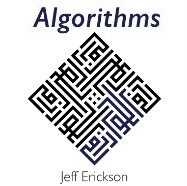

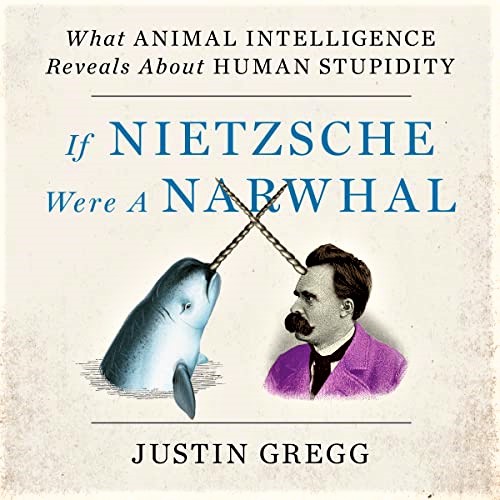 (1) Images of the day: [Left] Free e-book on algorithms, by Jeff Erickson, with numerous figures and exercises (Web page). [Center] Depiction of an Iranian rural breakfast tray: Unfortunately, very few can now afford all the items shown. [Right] Justin Gregg's If Nietzsche Were a Narwhal (see the last item below).
(1) Images of the day: [Left] Free e-book on algorithms, by Jeff Erickson, with numerous figures and exercises (Web page). [Center] Depiction of an Iranian rural breakfast tray: Unfortunately, very few can now afford all the items shown. [Right] Justin Gregg's If Nietzsche Were a Narwhal (see the last item below).
(2) Words of wisdom: Depicting gay characters in films does not force the homosexual lifestyle on viewers, any more than depicting Republican politicians forces a life of deceit and cowardice
(3) Book review: Gregg, Justin, If Nietzsche Were a Narwhal: What Animal Intelligence Reveals About Human Stupidity, unabridged 7-hour audiobook, read by the author, Little, Brown & Company, 2022.
[My 4-star review of this book on GoodReads]
There is little doubt in many people's minds that humans are much more "intelligent" than other animals. But, are we defining "intelligence" correctly? And is more intelligence, thus defined, necessarily better? The author begins by asserting that German philosopher Friedrich Nietzsche [1844-1900] had a brilliant mind, but he wasn't a happy, "nice," or well-adjusted person and lived a miserable life, which ended in a mental asylum in Switzerland. He then invokes narwhal (aka narwhale), a medium-sized toothed whale that possesses a large "tusk" from a protruding canine tooth and lives year-round in the Arctic waters around Greenland, Canada, and Russia, as an example of "dumb" animals which have more intelligence than we give them credit for.
What is intelligence anyway, and why do we view it as an unconditionally positive attribute? Nietzsche reportedly envied cows in the field, because they didn't care about existential questions such as the meaning of life. Hence the author's wondering whether the world would have been a better place if the intelligence of Nietzsche and other human thinkers were reduced to that of a narwhal. Narwhals can't write symphonies or send a spacecraft to the moon, but they also cannot develop anti-Semitic sentiments or commit genocide.
Despite the misgivings above and other tongue-in-cheek statements, this book contains a serious discussion of human intellect and how it can be put to good and bad uses.
Every great idea we produce seems to find a way of being used to do evil deeds. Throughout history, we have used religion, philosophy, and (pseudo)science to justify horrible acts against other Earth denizens. For example, Nietzsche wasn't anti-Semitic but his anti-Semitic sister used his writings to justify Nazi atrocities.
It is well-known that we humans are "why" specialists. We look for causal connections and invent a connection where none exists. Our penchant for finding the cause of everything sometimes leads to amazing breakthroughs, but at other times it produces dumb conspiracy theories. Another aspect of human intellect and the resultant knowledge is that much of what we know is worthless (aka "dead facts").
Our superior intelligence has not only led us astray on many occasions, but has also deformed the Earth on which we rely for survival. We have used our intelligence to domesticate animals and invent new technologies, but not to prevent conditions that may lead to our extinction.
And now, let us take a look at the animal side. While it's true that bees do not commit genocide based on religious or philosophical views, they do let male drones die en mass, when they have served their purpose of mating with new queens. The drones' tongues are too short to allow them to extract nectar and they don't have protective stingers. They die a slow death (starve or freeze) if they are pushed out of the hive by female bees; "a tragic—but utterly normal—state of affairs."
The book's message can be summarized in three bullet points.
- The uniqueness of human cognition doesn't necessarily make it advantageous.
- Evolution improved our thinking but also produced many down sides.
- Our survival is threatened by our inability to consider long-term consequences.
So, in the end, are we willing to trade off our creature comforts and rich cultural existence for not having suffered World War II or the Holocaust? The answer isn't clear-cut!




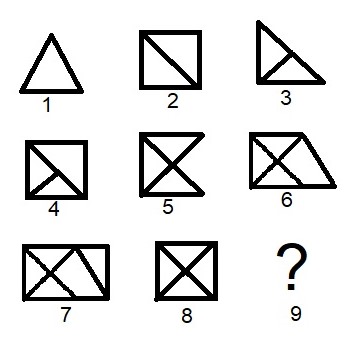
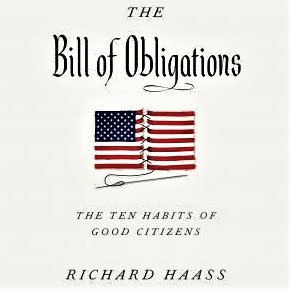 (1) Images of the day: [Top left & center] Family gathering to celebrate the birthday of my niece, whose birthday gifts included a pair of socks bearing photos of her newborn son. [Top center] Beauty, talent, and intelligence: Actor Anne Hathaway on loving LGBTQ+ people being a human experience, not a political statement. [Bottom left] Math puzzle: What fraction of the square's area is shaded blue? [Bottom center] Math puzzle (the answer is not unique): What is the ninth shape in this series? [Bottom right] Richard Haass's Bill of Obligations (see the last item below).
(1) Images of the day: [Top left & center] Family gathering to celebrate the birthday of my niece, whose birthday gifts included a pair of socks bearing photos of her newborn son. [Top center] Beauty, talent, and intelligence: Actor Anne Hathaway on loving LGBTQ+ people being a human experience, not a political statement. [Bottom left] Math puzzle: What fraction of the square's area is shaded blue? [Bottom center] Math puzzle (the answer is not unique): What is the ninth shape in this series? [Bottom right] Richard Haass's Bill of Obligations (see the last item below).
(2) Do you know what AM and PM stand for? The letter "M" is for "meridiem," (Latin for midday), with "A" and "P" representing "ante" (before) and "post" (after).
(3) SCOTUS's conservative super-majority flexes its muscles: In the span of a single day, six justices strike down affirmative action programs in college admissions, declare Biden's student-loan forgiveness effort unconstitutional, and confirm that a designer of wedding Web sites can refuse to accept work from gay couples.
(4) Large language models and the issue of copyright: Is it legal to use in-copyright works as training data and producing outputs derived from copyrighted training data?
(5) Book review: Haass, Richard N., The Bill of Obligations: The Ten Habits of Good Citizens, unabridged 4-hour audiobook, read by the author, Penguin Audio, 2023. [My 4-star review of this book on GoodReads]
This book contains a list of things that should happen but there is no law requiring them, and things that keep the author up at night. Haass states that the American democracy is most-decidedly worth keeping, but it has never been in greater peril than today. And this peril is a direct result of there being no Bill of Obligations to balance the Bill of Rights.
We Americans take our rights quite seriously and we scream if anyone infringes upon them. The Bill of Rights gives us rights in nine specific domains, defined in Amendments 1-9 to the US Constitution, along with an open-ended set of other rights, vaguely specified in Amendment 10. But there is no document that spells out our limitations and obligations vis-a-vis these rights.
In other words, we need something explicating that our freedom to swing our arm wildly stops at the nose of the person next to us. We also need to be told that our beloved democracy and individual rights will die if we don't educate ourselves on how to nurture them. We thus need strong civic education, something that is lacking in our schools and society.
Haass defines a 10-article Bill of Obligations, aka the ten habits of good citizens. We may not be able to turn these articles into Constitutional Amendments, because they deal primarily with moral imperatives aimed at shaping human behavior, not with legal concepts. nevertheless, it is important to impress these ten articles upon all citizens as part of their civic education.
1. Be informed
2. Get involved
3. Stay open to compromise
4. Remain civil
5. Reject violence
6. Value norms
7. Promote the common good
8. Respect government service
9. Support the teaching of civics
10. Put the country first
In other words, community and citizenship are fundamental to our democratic system, not optional niceties.

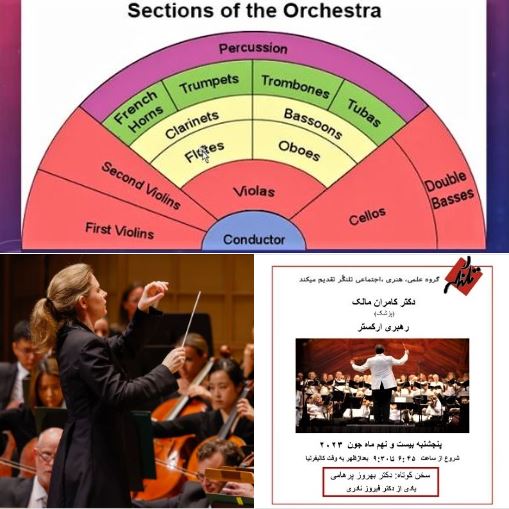
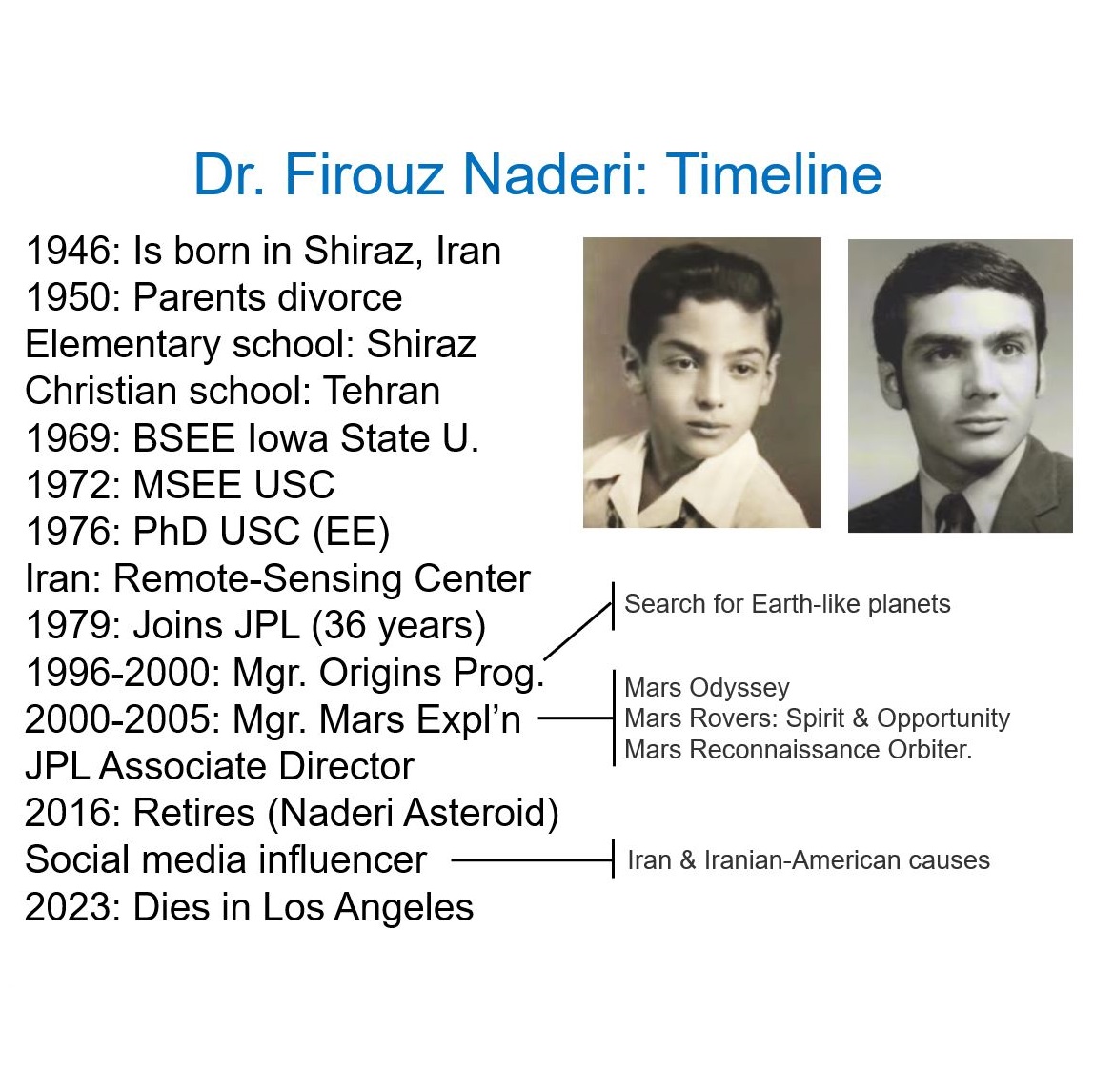 (1) Images of the day: [Left & Right] Remembering the late Iranian-American NASA scientist, Dr. Firouz Naderi (see the next item below). [Center] Tonight's Talangor Group talk (see the last item below).
(1) Images of the day: [Left & Right] Remembering the late Iranian-American NASA scientist, Dr. Firouz Naderi (see the next item below). [Center] Tonight's Talangor Group talk (see the last item below).
(2) Dr. Firouz Naderi [1946-2023]: Tonight, I made a short presentation in Persian on the life of contributions of a prominent Iranian-American, who had a 36-year distinguished career at NASA and, of late, was a key contributor to discussions on Iran and Iranian-Americans. I ended my presentation with this viral quote from Dr. Naderi, which was his answer to a question about whether after living for 50 years in the US, he feels more American or Persian: "Being Persian is part of my history and being an American is part of my identity and the two are irretrievably intermixed—like an egg that once scrambled, you cannot separate the yolk from the white. America is my country, and Iran is my homeland. And how blessed I am to be rooted in ancient civilization with a rich culture, and at the same time a proud American living in this young nation that has lifted me on her shoulders, allowing me to reach for the stars." [Recording of the talk (14-minute video)]
You can get more information about Dr. Firouz Naderi from the following two programs:
"USA beh Farsi" interview with Dr. Naderi (after watching the 10-minute part 1, parts 2-4 will appear).
Iran International's 25-minute tribute to Dr. Naderi.
(3) Announcing a short list of 5 books for "UCSB Reads 2024" program: Narrowed down from an initial slate of 25 committee recommendations, the list will be reduced to 3 in August, before starting negotiations with authors and publishers. Stay tuned!
P.S.: Ocean Vuong's On Earth We Were Briefly Gorgeous has been removed from consideration (she isn't accepting speaking engagements until 2025) and replaced by Rebekah Taussig's Sitting Pretty: The View from My Ordinary Resilient Body, the next selection on our rank-ordered list.
(4) Tonight's Talangor Group talk: Dr. Kamran Malek spoke on "Conducting an Orchestra." The main talk was preceded by yours truly's short presentation about the late Iranian-American NASA scientist, Dr. Firouz Naderi. I will write about the latter part in a separate post.
To a lay person, the role of an orchestra conductor is a mystery. After all, isn't every orchestra member provided with notes and wouldn't s/he be able to play without a conductor? This reminds me of a cartoon, showing a conductor standing in front of a stand on which appear his instructions: "Start flailing your arms as soon as you hear music; stop moving when the music stops; then, turn around and take a bow"!
Dr. Malek discussed the structure of a symphony orchestra, the placement of the various instruments, and how the conductor coordinates the various sections by his hand gestures and body language. S/He is in charge of maintaining the rhythm and ensuring that the various sections play softly or aloud, as the piece demands. S/He also often arranges the music for the orchestra at hand, providing notes for each player, with the requisite melody and silent segments. The score in front of the conductor is quite complex, usually having one line of music for each type of instrument. The piece of paper serves only as a reminder, because the conductor typically knows the entire piece by heart. Through standard gestures understood by musicians, the conductor invites a section to come in or fade out, so as to highlight other sections.
At the end of his talk, Dr. Malek played several video clips showing how passionate conductors (one women and one man) take charge of their orchestras and contribute to the quality and enjoyment of the musical performance.


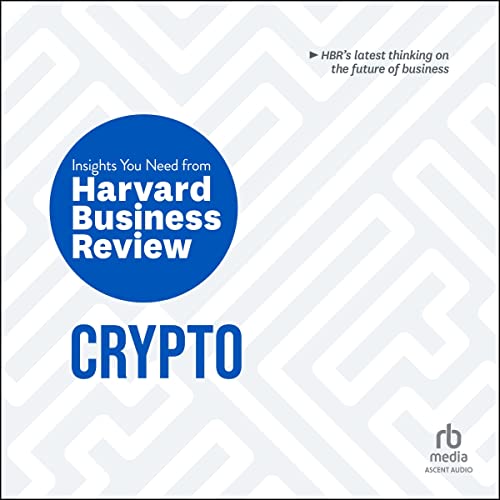 (1) Images of the day: [Left] Math puzzle: How many triangles are there in this diagram? [Center] Over 122 million Americans under air quality alerts due to Canadian wildfire smoke. [Right] Harvard Business Review's Crypto (see the last item below).
(1) Images of the day: [Left] Math puzzle: How many triangles are there in this diagram? [Center] Over 122 million Americans under air quality alerts due to Canadian wildfire smoke. [Right] Harvard Business Review's Crypto (see the last item below).
(2) Simple math puzzle: If x, y, and z are successive terms of a geometric progression, x + y + z = 12, and xyz = 27, what is the value of 1/x + 1/z?
(3) "Transitional Justice": This is the title of a free 7-week on-line course by Iran Academia, which started this week. Countries emerging from a period of conflict and/or repression, must set up trustworthy mechanisms to deal with widespread violations of human rights that the regular justice system may not be able to handle. It's not a matter of revenge, but of governments' obligations to victims and survivors of human-rights abuses according to international law. The four pillars of transitional justice are truth, justice, reparation, and guarantees of non-recurrence.
(4) One-liners: Brief news headlines, happenings, memes, and other items of general interest.
- The trillion-gallon threat: California's dams may be a single heavy rainstorm away from failing.
- Biden administrations $42 billion investment in broadband affordability & access is a major step forward.
- "Golshifteh Frahani's existence is resistance": Article about the popular Iranian star's latest film role.
- Lionel Messi look-alike Reza Parastesh has been accused of fooling 23 women into sleeping with him.
(5) The new "Indiana Jones and the Dial of Destiny" may or may not be the last film in the blockbuster franchise, but composer John Williams indicates it will be his final movie before he retires.
(6) Book review: Harvard Business Review, Crypto: The Insights You Need from Harvard Business Review, unabridged 3-hour audiobook, read by Derek Dysart, Ascent Audio, 2023.
[My 3-star review of this book on GoodReads]
This is the latest entry into the Harvard Business Review "Insights Series," whose other titles include Strategic Analytics, Artificial Intelligence, Cybersecurity, Monopolies & Tech Giants, Blockchain, Agile, Climate Change, and Customer Data & Privacy.
The cryptocurrency domain is filled with hype, misinformation, and disinformation. Lately, crypto advocates have been trying to scare institutional investors and ordinary citizens by predicting the demise of the US dollar, in an effort to generate new crypto purchases. As a crypto skeptic, I have been looking for an unbiased assessment of the current realities and future potentials of cryptocurrencies, for my own benefit and as a resource to recommend to others. This book isn't it. While some of the pitfalls of cryptocurrencies are discussed, the overall tone of the book is enthusiastic, implying that businesses that do not rush to crypto investing risk being left behind.
Along with cheerleading for cryptocurrencies, the book also hypes non-fungible tokens (NFTs) as investments of the future. In my view, NFTs are nothing but cryptocurrencies with an image or other art/keepsake attached. As such, NFTs suffer from the same dangers as bitcoin and other cryptocurrencies, including wild fluctuations in value and vulnerability to fraud.

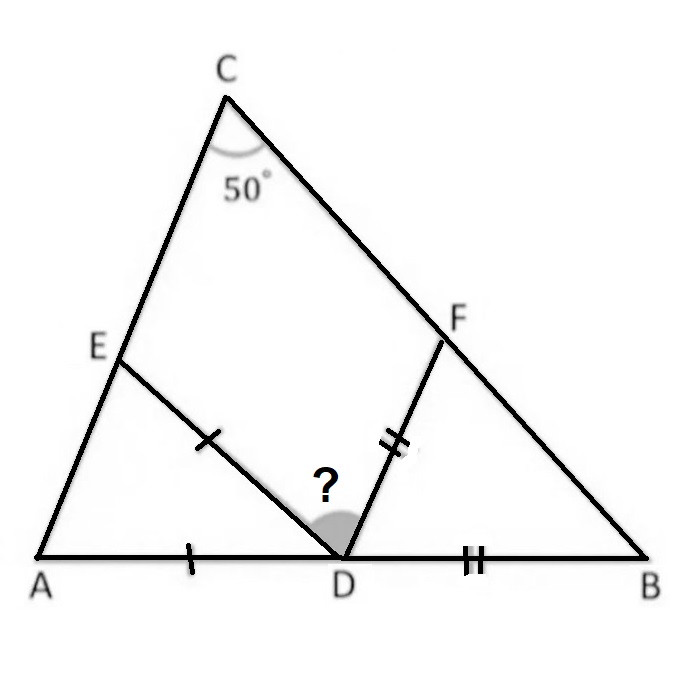
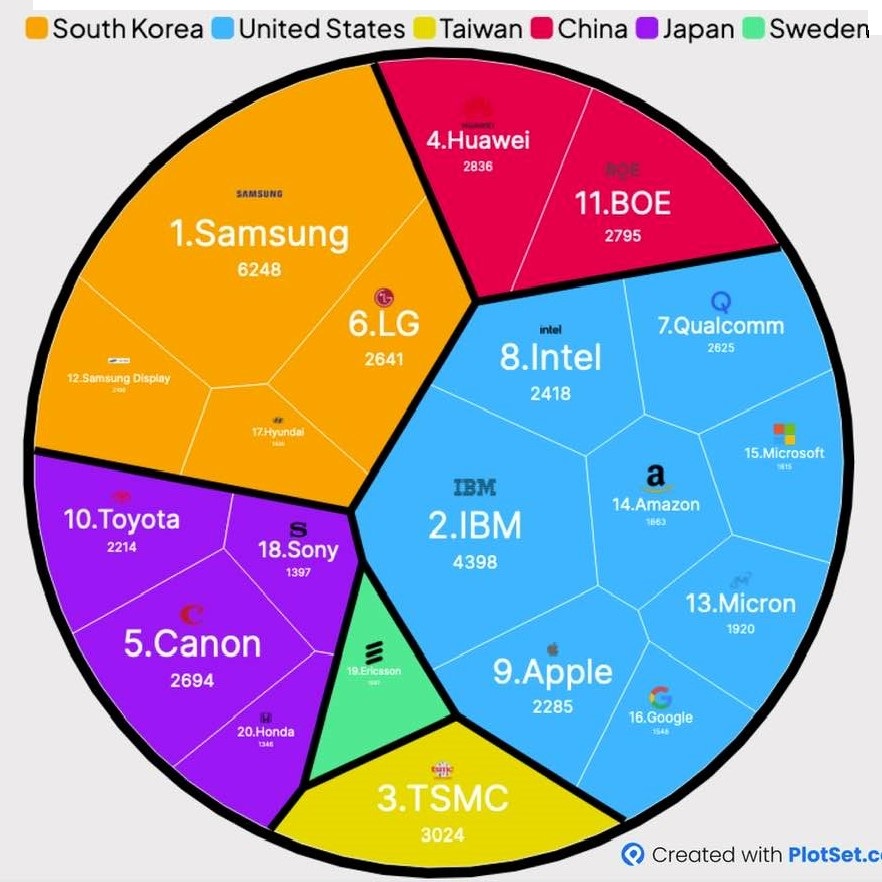
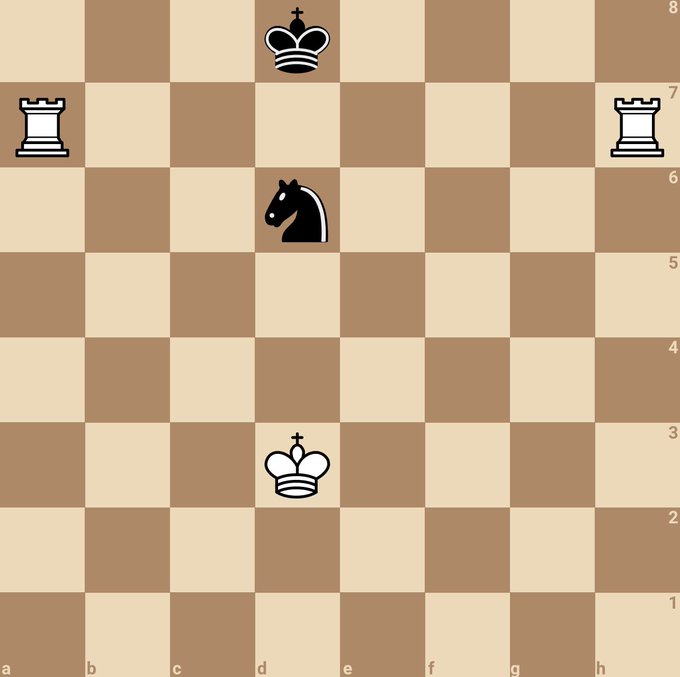
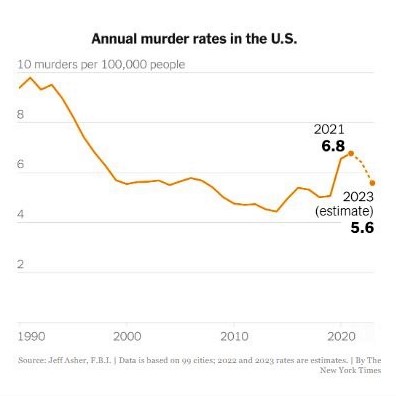
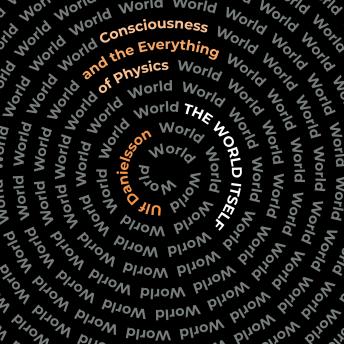 (1) Images of the day: [Top left] Math puzzle: What is the diameter of the large circle, if the four small circles have diameter 1? [Top center] Math puzzle: We have two isosceles triangles within the triangle ABC. What is the measure of the angle bearing a question mark? [Top right] Top-20 patent winners in 2022: IBM occupied the top spot in US patents for decades, 1993-2021. Samsung rose to the top in 2022. [Bottom left] Chess puzzle: White to start and mate in 2 moves. [Bottom center] Murder rate in the US shows a downward trend after a COVID surge (NYT chart). [Bottom right] Ulf Danielsson's The World Itself (see the last item below).
(1) Images of the day: [Top left] Math puzzle: What is the diameter of the large circle, if the four small circles have diameter 1? [Top center] Math puzzle: We have two isosceles triangles within the triangle ABC. What is the measure of the angle bearing a question mark? [Top right] Top-20 patent winners in 2022: IBM occupied the top spot in US patents for decades, 1993-2021. Samsung rose to the top in 2022. [Bottom left] Chess puzzle: White to start and mate in 2 moves. [Bottom center] Murder rate in the US shows a downward trend after a COVID surge (NYT chart). [Bottom right] Ulf Danielsson's The World Itself (see the last item below).
(2) FIFA Women's World Cup, July 20 to August 20, 2023: Hosted jointly by Australia & New Zealand, 32 teams will participate in this year's tournament, 8 of them for the first time. Team USA will include veterans Megan Rapinoe (37) and Alex Morgan (33), playing alongside new talent as young as 18. The US is grouped with Netherlands, Portugal, & Vietnam in the preliminary stage, with games on 7/21 (6:00 PM PDT), 7/26 (6:00 PM), and 8/1 (12:00 AM). Fox & FS1 will broadcast all matches for the US audience. Only four countries (Germany, Japan, Norway, USA) have ever won the Women's World Cup.
(3) A dictator's hired thugs will eventually rise against him. This is as true in Iran as it is in Russia. When the hired killers see that they are paid low wages, while the protected dictator and his buddies pocket billions, they will demand a larger share of the loot.
(4) One-liners: Brief news headlines, happenings, memes, and other items of general interest.
- Throwback Thursday: New York City in the 1930s, as seen from aboard a ferry. [2-minute video]
- A January 2022 underwater volcanic eruption in Tonga caused the world's most-intense lightning storm.
- Actor Andie MacDowell, on double standards: "Why is my gray hair an issue and George Clooney's isn't?"
- Peru: A mysterious country with the world's driest deserts and lushest rainforests. [9-minute video]
- Hans Zimmer: The German movie-score composer who is taking over from the incredible John Williams.
- Humor: Don Quixote asking for directions.
[Image]
- PhD proposal vs. PhD thesis: Extendable to research funding proposal vs. actual research results. [Cartoon]
(5) Book review: Danielsson, Ulf, The World Itself: Consciousness and the Everything of Physics, unabridged 6-hour audiobook, read by Pete Cross, Dreamscape Media, 2023.
[My 4-star review of this book on GoodReads]
Acclaimed theoretical physicist Ulf Danielson (Uppsala U., Sweden) tackles the age-old question of whether the world operates in the framework of mathematics or whether mathematics only provides tools for understanding the universe that is out there. He disagrees with the thesis of William Dunham's The Mathematical Universe, siding instead with the view that the universe exists independently of our consciousness and operates the way it does.
Mathematical models are processes in our brains that approximate the universe. They are useful tools for making predictions: Nothing more. We are extremely limited in our abilities and until we acknowledge and understand these limitations, there is no hope for understanding the large, complex universe. Using machine metaphors for life is silly. Likewise, the Church-Turing hypothesis is preposterous: Who are we to set limits on what the universe can or cannot do?
Danielsson's main message to his readers is not to mistake our evolving, trial-and-error descriptions of the world with the world itself. The title of the book seemingly pays homage to Francis Crick's Life Itself: Its Origin and Nature, which posits that the origin of life on Earth is the most-fundamental question for life sciences.
Here is an interview with Danielsson about his book.



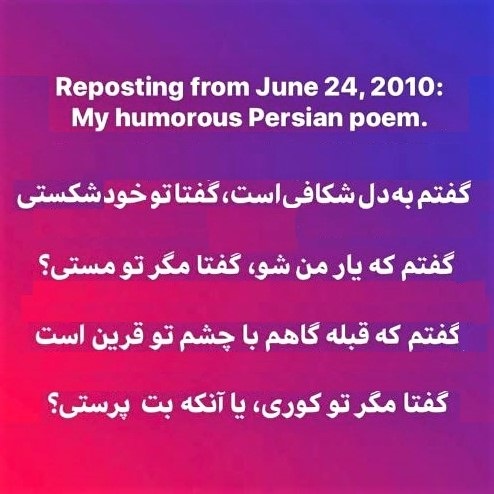

 (1) Images of the [Top left] Summer Solstice Parade (see the next item below). [Top center] Lavender Festival (see item 3 below). [Top right] Next to Alameda Park, where the Summer Solstice Festival was held today, is the beautiful Alice Keck Park Memorial Garden, an oasis covering a large city block. [Bottom left & center] Facebook memories from June 24 of years past: A humorous Persian poem of mine and a quote from Ralph Waldo Emerson. [Bottom right] People vs. Donald Trump (see the last item below).
(1) Images of the [Top left] Summer Solstice Parade (see the next item below). [Top center] Lavender Festival (see item 3 below). [Top right] Next to Alameda Park, where the Summer Solstice Festival was held today, is the beautiful Alice Keck Park Memorial Garden, an oasis covering a large city block. [Bottom left & center] Facebook memories from June 24 of years past: A humorous Persian poem of mine and a quote from Ralph Waldo Emerson. [Bottom right] People vs. Donald Trump (see the last item below).
(2) Santa Barbara Summer Solstice Festival 2023: Featuring music, dancing, and, of course, food trucks, today's 49th annual event started with a noon parade from the intersection of Santa Barbara & Ortega streets, ending at Alameda Park, where festivities will continue today and tomorrow. Here's a narrated 8-minute video I shot, as I walked along the parade route. And here are three 1-minute videos showing music & dance performances along the parade route. [Video 1] [Video 2] [Video 3]
(3) Santa Barbara Lavender Festival 2023: Inaugurated in 2004 as Ojai Lavender Festival, later becoming the Ojai Valley Lavender Festival, the Festival is now based in Santa Barbara. Held on the Historic Old Mission grounds, today's Festival featured lavender-based products of all kinds (including food items), a variety of other food offerings, arts & crafts, and music/dance performances. [Sample dance performance]
(4) One-liners: Brief news headlines, happenings, memes, and other items of general interest.
- A section of I-95, which had closed due to a deadly collapse, reopens in a record time of under 2 weeks.
- Russia/Ukraine: Wagner Group chief heads to exile in Belarus after his rebellious march toward Moscow.
- Iran has five religious seminaries for every public university.
- Iranian regional music from Mazandaran Province on the Caspian shore, played with "pots" ("tasht").
(5) Book review: Pomerantz, Mark, People vs. Donald Trump: An Inside Account, unabridged 9-hour audiobook, read by the author, Simon & Schuster Audio, 2023.
[My 5-star review of this book on GoodReads]
I approached this book, yet another account of Donald Trump's crimes before, during, and after his presidency, with low expectations, but found it surprisingly well-written and informative. I emerged with a detailed understanding of Trump's business dealings, producing financial ruin for a large number of actors and stealing from American tax-payers, as Trump himself secured and improved his position on Forbes list of billionaires.
The book also reinforced my views on the US justice system being broken, punishing petty criminals severely and promptly, while letting rich and powerful criminals escape unscathed. George Floyd, who passed off a fake $20 bill, was "executed" within hours of his crime. Donald Trump's financial crimes, including money-laundering to hide the payment of hush money to a porn star, took years to prosecute, as the case was shelved and resurrected multiple times. The crime occurred in 2016; as of mid-2023, the case is still in progress, with no resolution in sight.
From his media appearances, I had developed a picture of Pomerantz as an opportunist and self-aggrandizer, particularly given that he took on the Trump case at SDNY gratis. He explains in the book that he was retired at the time and needed no additional income or the hassles of reporting it.
Pomerantz and other members of the SDNY team eventually developed a strong case against Trump and convinced Cyrus Vance, Manhattan District Attorney at the time, to indict him, but, because Vance did not seek reelection as his term ended, the case fell under the jurisdiction of his replacement, Alvin Bragg, who was not comfortable with pursuing an indictment. Part of the problem was that Trump's financial crimes had no obvious victims. Yes, banks were duped by Trump's false financial disclosures into giving him large loans with favorable terms, but no bank suffered a default.
Pomerantz resigned in protest and wrote this book to present his case to the "People." Bragg eventually reversed his decision, indicting Trump in April 2023, just as this book was released. The trial is set for March 2024, but there is a chance it will be delayed as a result of defense motions or upcoming indictments of Trump for federal crimes.



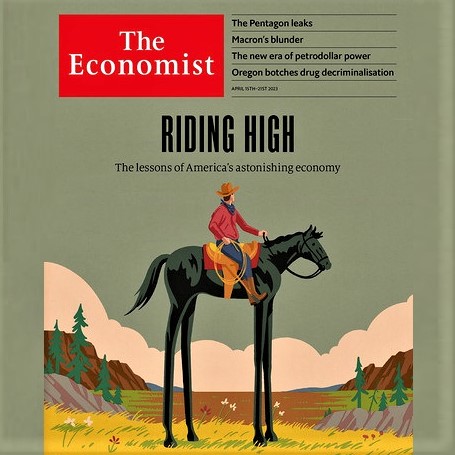
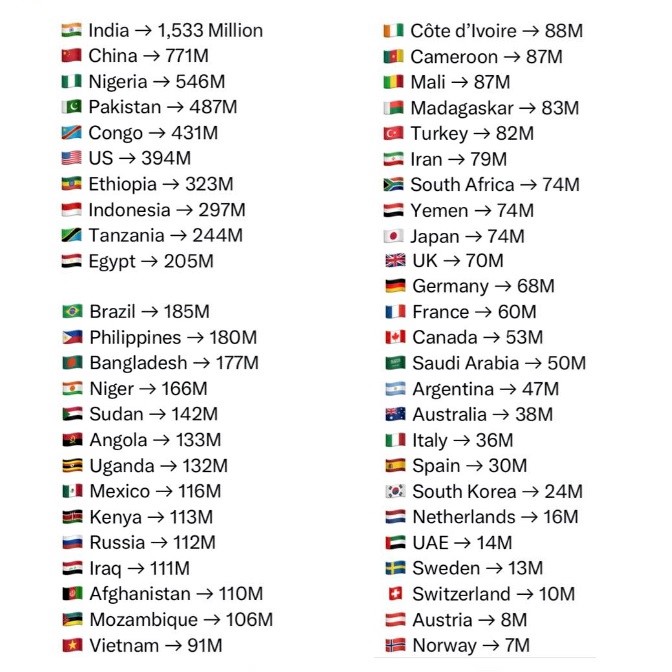
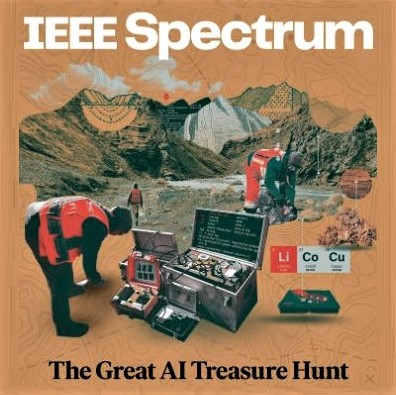 (1) Images of the day: [Top left] Throwback Thursday (Facebook memory from June 22, 2017): Photograph by Ray Collins, known for his masterful depiction of waves. [Top center] A spectacular double sculpture by an unknown 19th-century French artist: "The Double Statue of Mephistopheles and Margarita" depicts a happy, triumphant-looking man on the front side and a glum, subdued woman on the back side, visible through a large mirror. Wikipedia has an article about this unique work of art. [Top right] Lightning & Lady Liberty (BBC image). [Bottom left] According to The Economist, the American economy is still riding high, despite all contrary expectations. [Bottom center] Projected populations of some countries in 2100. [Bottom right] The great AI treasure hunt: In its June 2023 issue, IEEE Spectrum magazine has a cover feature on how AI is helping discover new material to replace hard-to-find critical metals for EV batteries.
(1) Images of the day: [Top left] Throwback Thursday (Facebook memory from June 22, 2017): Photograph by Ray Collins, known for his masterful depiction of waves. [Top center] A spectacular double sculpture by an unknown 19th-century French artist: "The Double Statue of Mephistopheles and Margarita" depicts a happy, triumphant-looking man on the front side and a glum, subdued woman on the back side, visible through a large mirror. Wikipedia has an article about this unique work of art. [Top right] Lightning & Lady Liberty (BBC image). [Bottom left] According to The Economist, the American economy is still riding high, despite all contrary expectations. [Bottom center] Projected populations of some countries in 2100. [Bottom right] The great AI treasure hunt: In its June 2023 issue, IEEE Spectrum magazine has a cover feature on how AI is helping discover new material to replace hard-to-find critical metals for EV batteries.
(2) On fake conferences: A tell-tale sign of a fake conference is that its announcements and invitations are signed with incomplete or fake names. Generally, an organizer, manager, or other officer of a conference is proud to be part of an enterprise that contributes to the dissemination of science/technology information. Not so for fake conferences! The same applies to fake journals, whose managing editors usually refuse to sign their full names, perhaps because they lack the credentials required for the occupied positions. [E-mail image]
(3) One-liners: Brief news headlines, happenings, memes, and other items of general interest.
- Tourist submersible seems to have imploded near the Titanic wreckage, killing all five on board.
- US 13-year-olds show the lowest levels of math and reading scores in 2-3 decades.
- On open-source software projects, only 1 in 20 programmers are women.
- America's population is older than ever: The median age rose from 30.0 in 1980 to 38.9 in 2022.
(4) From Washington Post's neologism contest, in which common words are given hilarious new meanings.
Abdicate (v.), to give up all hope of ever having a flat stomach.
Balderdash (n.), a rapidly receding hairline.
Circumvent (n.), an opening in the front of boxer shorts worn by Jewish men.
Coffee (n.), the person upon whom one coughs.
Flabbergasted (adj.), appalled over how much weight you have gained.
(5) How different is a Turing Machine (TM) from a von-Neumann-style computer in terms of computational power? Matthew Regan set out to discover the extent of difference for himself by simulating a simple, old 8-bit 6502 CPU on Pure Turing, a basic TM. Even though capabilities of the 6502 are dwarfed by those of modern, multi-billion-transistor CPUs, it proved vastly more powerful than TM. For example, a single instruction of the 6502 can take up to 3 million Pure Turing clock cycles to fetch. Now, imagine playing Pac-Man, a game originally developed for the 6502. You have to be really patient to play Pac-Man on Pure Turing: It takes ~7 hours just to draw one frame's worth of movement for the Pac-Man character and the pursuing enemy ghosts!


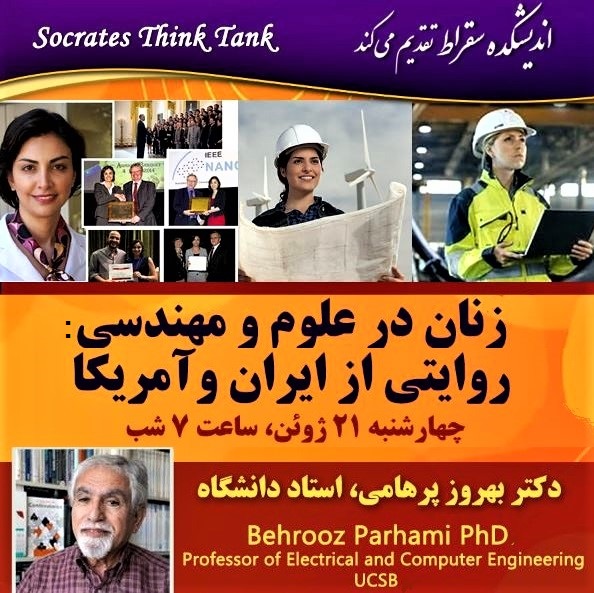 (1) Images of the day: [Left] The 4-km-wide Comet 67P/Churyumov-Gerasimenko, which orbits the Sun once every 6.5 years and was chased down for 10 years by European Space Agency's Rosetta mission, compared to the city of Los Angeles (credit: The Planetary Society). [Center] Math puzzle: Find the radius of the circle. [Right] Socrates Think Tank talk on women in science and engineering (see the last item below).
(1) Images of the day: [Left] The 4-km-wide Comet 67P/Churyumov-Gerasimenko, which orbits the Sun once every 6.5 years and was chased down for 10 years by European Space Agency's Rosetta mission, compared to the city of Los Angeles (credit: The Planetary Society). [Center] Math puzzle: Find the radius of the circle. [Right] Socrates Think Tank talk on women in science and engineering (see the last item below).
(2) On the number of hours in a work week: During the 1930s & 1940s, the US was a leader in curtailing the number of work hours, initiating the 40-hour work week. Germans now work an average of 32 hours per week and other EU countries are considering even shorter work weeks, some as low of 20 or even 15 hours.
(3) "LLMs: A New Way to Teach Programming": This was the title of today's ACM webinar conducted by Professors Daniel Zingaro (U. Toronto) and Leo Porter (UCSD).
Learning to program is quite challenging to students, because they need to iteratively learn many skills, such as using correct syntax, tracing code, using common programming patterns, writing code, and testing/debugging the code. Struggling with any one of these tasks may mean that the student fails to solve the problem at hand.
Large Language Models (LLMs) like GitHub Copilot and ChatGPT can shift the skills needed to succeed at programming and enable more students to become successful programmers. Remarkably, this shift, away from syntax and toward problem decomposition and testing, may also be exactly what many instructors prefer to focus on in CS 1.
The webinar was recorded and the recording will be made available in a few days on learning.acm.org.
(4) Plenary talk at ACM Federated Computing Research Conference: Turing-Award-winner Shafi Goldwasser (UC Berkeley) spoke on Wed., June 21, 2023, under the title "Constructing and Deconstructing Trust: Employing Cryptographic Recipe in the ML Domain."
She began with the observation that AI methods were not developed for an adversarial environment. Crypto, on the other hand, would not exist (be required) if there were no adversaries. Two main areas where an adversary can wreak havoc in ML is during data collection (data poisoning) and during training (breaching privacy).
*Data poisoning can be dealt with by viewing the data as coming from multiple sources, as opposed to from a single source. We already have tools and methods for dealing with data coming from different sources, a subset of which are corrupt.
*Privacy can benefit from cryptographic methods. In an ideal world, we can verify a complex, data-intensive computation with much less work & data. This has proven practical in the blockchain context. But in ML, data isn't fixed; it comes from a distribution.
(5) Tonight's Socrates Think Tank talk: Yours truly spoke in Persian under the title "Women in Science and Engineering: A Tale of Two Countries." [Recording of the talk] [PDF slides]
Here is a synopsis of the talk. Despite poor retention and advancement prospects, as well as female-unfriendly workplaces and corporate policies, women continue to flock to and excel in STEM (science, technology, engineering, mathematics) fields. Based on data and narratives from the United States and Iran, I identified roadblocks to the engagement of women in STEM careers. Using the two countries, different as they are in many respects, as examples is instructive, because this side-by-side comparison shows that undesirable outcomes in the domain of women in STEM fields can and do occur for vastly different reasons. The talk concluded by discussing what each country can learn from the other one in removing roadblocks to women in science and engineering.



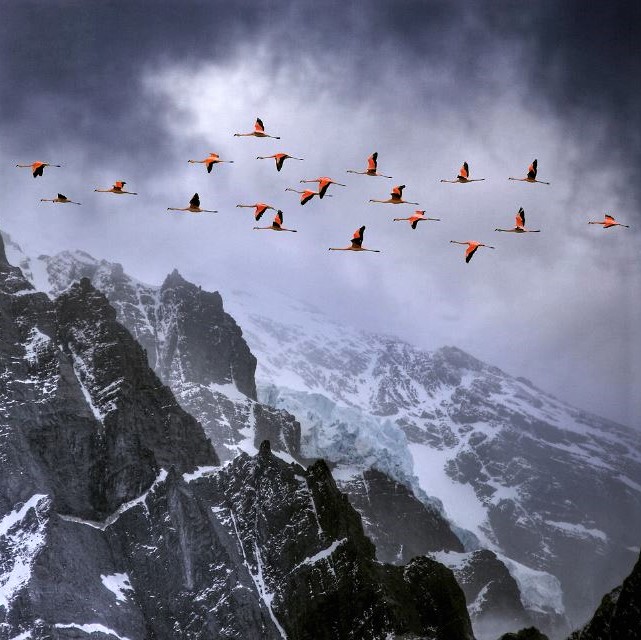
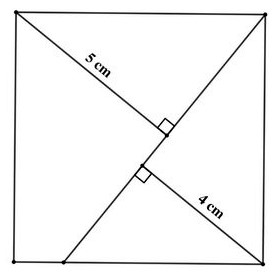
 (1) Images of the day: [Top row] Summer is officially here for me, a day ahead of schedule: I have completed the evaluation of research papers for my graduate course on computer arithmetic, submitted course grades to the Registrar, and e-mailed feedback to each student, thus completing my teaching tasks for spring 2023. Then, I celebrated with snacks and a hearty soup. [Bottom left] Amazing nature photography by Ben Hall: Migrating flamingos in Chile. [Bottom center] Math puzzle: Find the area of the square. [Bottom right] Of the Law of Nature and Nations: Eight Books (see the last item below).
(1) Images of the day: [Top row] Summer is officially here for me, a day ahead of schedule: I have completed the evaluation of research papers for my graduate course on computer arithmetic, submitted course grades to the Registrar, and e-mailed feedback to each student, thus completing my teaching tasks for spring 2023. Then, I celebrated with snacks and a hearty soup. [Bottom left] Amazing nature photography by Ben Hall: Migrating flamingos in Chile. [Bottom center] Math puzzle: Find the area of the square. [Bottom right] Of the Law of Nature and Nations: Eight Books (see the last item below).
(2) Three ideas from ACM Federated Computing Research Conference plenary panel "Reflecting on 50 Years of Computing Research, and Future Outlook," held on Tuesday, June 20, 2023:
*In the past, we used a high-level programming language and had it automatically translated to a low-level machine language. In future, our high-level language will be natural language and our low-level language will be a large language model.
*In the late 1980s, there was much research on systolic processing units. Many people were skeptical about the practical relevance of systolic arrays. Today, systolic arrays are indispensable parts of tensor-processing units.
*The P-vs.-NP problem has become much less relevant. Today we have SAT-solvers that do a good job in solving the NP-complete problem known as satisfiability (SAT). Worst-case exponential complexity is no longer a hindrance to practicality.
(3) One-liners: Brief news headlines, happenings, memes, and other items of general interest.
- NASA awards grants to seven all-women colleges to help bridge the STEM gender gap.
- Excessive red-tape for US "talent helps other countries lure individuals with world's most in-demand skills.
- One in three Americans dies of Alzheimer's or another form of dementia. [PBS]
- In-n-Out Burger will be celebrating its 75th anniversary in October 2023. [Link to festivities]
- Valet parking the near future: Longer term, we'll all have self-parking cars tracked by our cell phones.
- Facebook memory from June 20, 2020: Reciting Sa'adi's poems is no substitute for genuine caring.
(4) Book review: Pufendorf, Samuel, Of the Law of Nature and Nations: Eight Books.
[My 4-star review of this book on GoodReads]
This book, originally published in 1672, is in the public domain, so the e-book reproduction of a 1729 edition, available on Archive, has no copyright or publishing details.
Samuel von Pufendorf [1632-1694] was a German political philosopher, statesman, and historian. He had originally intended to pursue a career in the church, but after studying theology at U. Leipzig, his interests shifted to politics, law, and philosophy. In 1658 Pufendorf became a tutor to a minister to King Charles X of Sweden, publishing this highly-influential book two years after beginning to teach at U. Lund.
Pufendorf criticized those in the state or the church who abused power. He proposed that international law should not be restricted to the Christian world and instead should respect the rights of all men. Pufendorf's grounding of political concepts in natural law appealed to future American leaders such as Thomas Jefferson and Alexander Hamilton.
The e-book version has stayed true to the original, all the way to printing imperfections, library stamps, hand annotations, and so on. It is considered a key resource in the study of modern society and culture. The 1024-page tome is composed of 8 books and 74 chapters: Book I (9 chapters), Book II (6 chapters), Book III (9 chapters), Book IV (13 chapters), Book V (13 chapters), Book VI (3 chapters), Book VII (9 chapters), Book VIII (12 chapters).
Preceding the main e-book is an 88-page overview article with the rather long title "Historical and Critical Account of the Science of Morality, and the Progress It Has Made from the Earliest Times Down to the Publication of Pufendorf Of the Law of Nature and Nations," by Mr. Barbeyrac, Professor in Law.


 (1) Images of the day: [Left] Celebrating Freedom Day: Juneteenth, June 19th, commemorates the end of slavery in US confederate states. On this day in 1865, the Union Army established authority over Texas, setting free the slaves who still didn't know about the Emancipation Proclamation of Jan. 1, 1863. [Center] University students reject Iran's Islamic regime with an emphatic "No": They talk of a sea of blood separating them from the regime, making dialog impossible. [Right] Sexuality: A Very Short Introduction (see the last item below).
(1) Images of the day: [Left] Celebrating Freedom Day: Juneteenth, June 19th, commemorates the end of slavery in US confederate states. On this day in 1865, the Union Army established authority over Texas, setting free the slaves who still didn't know about the Emancipation Proclamation of Jan. 1, 1863. [Center] University students reject Iran's Islamic regime with an emphatic "No": They talk of a sea of blood separating them from the regime, making dialog impossible. [Right] Sexuality: A Very Short Introduction (see the last item below).
(2) ACM Federated Computing Research Conference: Held every four years, ACM FCRC brings together in one physical location dozens of conferences, workshops, and other technical events in all areas of computing, with the goal of achieving broader networking opportunities and scientific cross-fertilization. Today's FCRC plenary program included a talk by the 2023 Eckert-Mauchly Award recipient Kunle Olukotun (Stanford U.). He spoke under the title "Computing in the Foundation Model Era." Plenary talks continue every morning, 8:20 AM PDT, until Friday 6/23. A plenary panel, "Reflecting on 50 Years of Computing Research, and Future Outlook," will be streamed tomorrow at 1:15 PM PDT.
(3) One-liners: Brief news headlines, happenings, memes, and other items of general interest.
- Submersible with 5 passengers exploring the wreckage of Titanic has been lost: Frantic search is on.
- Report: Inflation-adjusted faculty wages decline for the third year in a row.
- The dreaded phone call, when we are separated from our families. [Science essay]
- A final thought: Today's date is 4! – 3! + 2! – 1! For tomorrow, just add + 0! at the end.
(4) Book review: Mottier, Sexuality: A Very Short Introduction, unabridged 5-hour audiobook, read by Suzanne Toren, Tantor Audio, 2021. [My 4-star review of this book on GoodReads]
This is another valuable addition to Oxford's "Very Short Introduction" series, which now contains hundreds of titles. I have pursued quite a few of the titles to delve into new areas of knowledge or to freshen up on subjects I had previously studied. I was drawn to this particular title when I saw a blurb on Ashkan Bahrani's Persian translation of the book (Nogam, 2023).
The classic world is considered a world before sexuality. Sexual culture was organized around male pleasure, with women and children occupying socially-subordinate positions as "minors." Sex was thus an act of dominating and controlling a submissive partner. Gender was deemed as fluid and under threat, with men risking feminization if they lost body heat (due to too much sex, say) and women being in danger of becoming more manly if their bodies heated up.
Men were supposed to want to penetrate, a sign of strength, whereas desire to be penetrated was an indicator of weakness, which was appropriate only for women, boys, foreigners, and slaves. The notion of heterosexuality and homosexuality came about much later, but men were advised that sex with a woman was only necessary for procreation and that loving a man was preferable. Sex between teachers and young students was usually considered pedagogic and erotic mentorship.
Rape was deemed a crime, not against the woman herself but against the husband, father, or other male guardian. Paying for sex was frowned upon, but it was a lesser digression than illegal sex with free women.
Christianity brought about a radically new sexual ethics, incorporating some of the ideas on self-mastery. Virginity and sexual abstinence were promoted. Early Christians saw families mainly as obstacles to religious devotion. Martin Luther thought God should have continued to shape humans out of clay, rather than produce them through sexual intercourse. Judaism, by contrast, disapproved of abstinence, because it went against God's directive to "be fruitful and multiply."
Learning about the history above makes us realize that what we consider natural in the domain of human sexual behavior has varied greatly in different historical and cultural contexts. In modern times, governments have shown interest in controlling human sexuality though public-health policies and sex-education. These efforts mostly target women and marginalized groups, leading naturally to political activism, particularly by women and LGBTQ+ communities.
The book consists of 5 chapters, preceded by "Introduction" and followed by "References & Further Reading."
Chapter 1: Before Sexuality
Chapter 2: The Invention of Sexuality
Chapter 3: Virgins or Whores? Feminist Critiques of Sexuality
Chapter 4: The State in the Bedroom
Chapter 5: The Future of Sex





 (1) Images of the day: [Top row] Happy Fathers' Day to old-timers in the club and newcomers to it. Hope you continue to experience the joys of fatherhood for many years to come. As we celebrate today, let us also remeber all the dads who are no longer with us. [Bottom left & center] Beautiful Saturday in Ventura, California: Walking with extended-family members, including all three of my sisters, and celebrating Fathers' Day, a day early. [Bottom right] The Saudi FM reportedly objected to and walked away from a room with a large photo of IRGC Commander Qasem Soleimani, eventually holding the Iran-Saudi briefing in a different room.
(1) Images of the day: [Top row] Happy Fathers' Day to old-timers in the club and newcomers to it. Hope you continue to experience the joys of fatherhood for many years to come. As we celebrate today, let us also remeber all the dads who are no longer with us. [Bottom left & center] Beautiful Saturday in Ventura, California: Walking with extended-family members, including all three of my sisters, and celebrating Fathers' Day, a day early. [Bottom right] The Saudi FM reportedly objected to and walked away from a room with a large photo of IRGC Commander Qasem Soleimani, eventually holding the Iran-Saudi briefing in a different room.
(2) Humans arrived in Asia earlier than previously thought: The main migration of humans out of Africa occurred sometime between 50,000 and 60,000 years ago. Scientists have dated skull and shin bones from a modern human, found in a cave in northern Laos, to between 68,000 and 86,000 years ago.
(3) Persian music: This song was composed by Babak Afshar and words were put to it by Touraj Negahban, especially for the ailing pop super-star Viguen, as his "Final Song." Viguen didn't last long enough to sing it, so Manouchehr Sakhaei had it modified and performed it as "Yad-e Viguen" ("In Memory of Viguen"). Ironically, the song turned out to be Manouchehr's final one.
(4) One-liners: Brief news headlines, happenings, memes, and other items of general interest.
- War crime: Evidence suggests that Russia blew up Ukraine's Kakhovka Dam from within.
- ABC/Ipsos poll on Trump's indictment: His support is slipping, but Republicans are still with him. [Chart]
- Among casualties of COVID-19 was a decline of confidence in science among US adults. [Survey results]
- Forty years ago, Iran's Islamic regime executed 10 Baha'i women: This 5-minute video tells their story.
- Earth's new-found (temporary) moon: The fantastic 30-year journey of Apollo 12's third-stage rocket.
- Fathers' Day humor: Dad is in charge! [1-minute video]
- Facebook memory from June 18, 2018: Soccer, the beautiful sport with an ugly side.
- Facebook memory from June 18, 2015: The labor of love that used to go into books.
(5) Brains begin with complete models of the world and work backward to anticipate sensory data: In The Experience Machine, philosopher Andy Clark explains not only how predictive processing in the brain can account for accurate perception but also what happens when things go wrong.
(6) EU sets the groundwork for AI regulation: European Parliament votes to regulate the use of AI across the European Union, laying the groundwork for the passage of a historic AI Act. The proposed legislation is intended to both foster AI innovation and minimize AI threats to health and safety. AI systems would be categorized based on four risk levels, from minimal to unacceptable. Among other things, the law would take aim at "social scoring systems" that make judgments based on a person's behavior or appearance, applications that subliminally manipulate children and other vulnerable groups, and predictive policing tools.

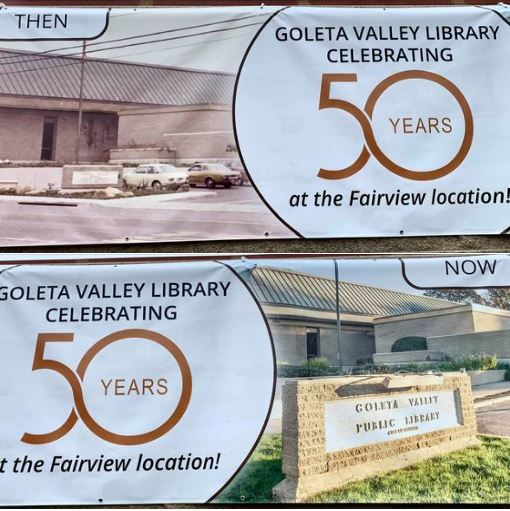

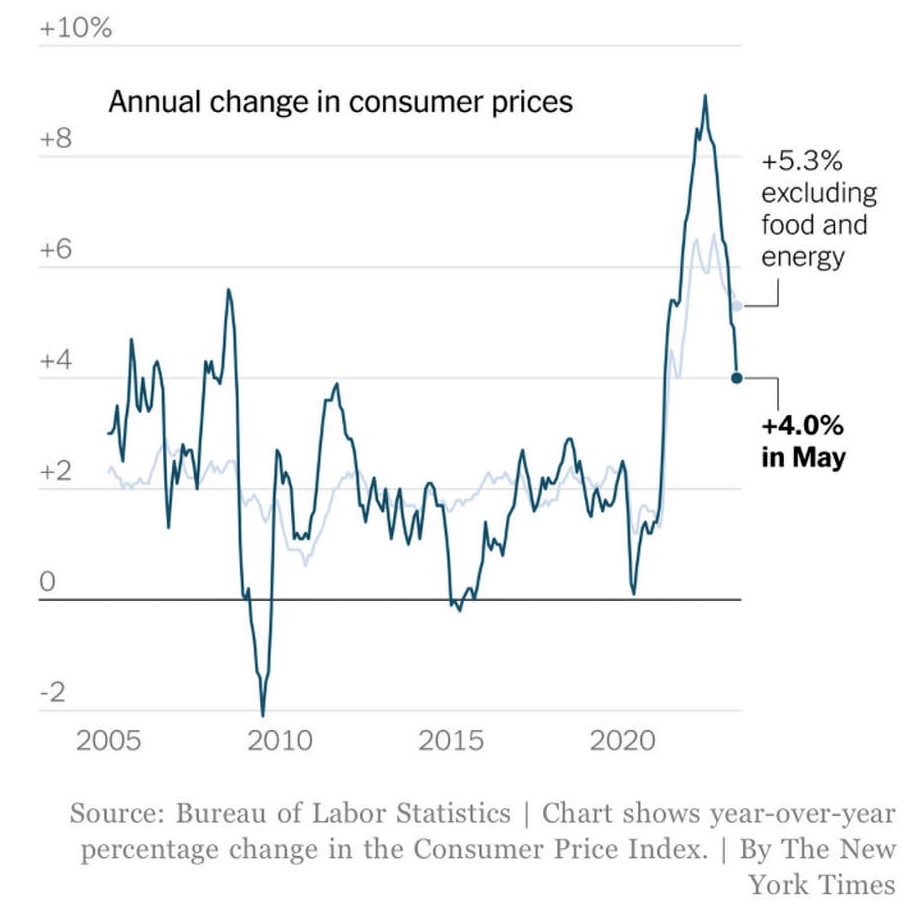

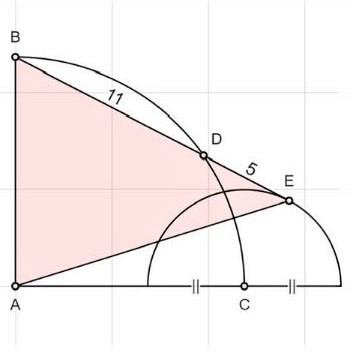 (1) Images of the day: [Top left] The original Monopoly patent from 1935. [Top center] Goleta Public Library is celebrating 50 years at its Fairview Avenue location. [Top right] An extraordinary woman in 19th-century Iran (see the next item below). [Bottom left] US inflation rate: 2005-2023 (NYT chart). [Bottom center] Cartoon of the day: Lady Justice weighs the evidence. [Bottom right] Math puzzle: Find the area of the shaded triangle.
(1) Images of the day: [Top left] The original Monopoly patent from 1935. [Top center] Goleta Public Library is celebrating 50 years at its Fairview Avenue location. [Top right] An extraordinary woman in 19th-century Iran (see the next item below). [Bottom left] US inflation rate: 2005-2023 (NYT chart). [Bottom center] Cartoon of the day: Lady Justice weighs the evidence. [Bottom right] Math puzzle: Find the area of the shaded triangle.
(2) Persian poetry and music: Every time I re-read this poem by Tahirih Qurrat al-'Ayn [~1814-1852], a theologian and a brave feminist who was killed for her beliefs, I am filled with awe by its beautiful meaning and craftsmanship. Joseph Salimpour, a college buddy of mine, who plays first-chair violin in this 6-minute video, is part of a musical family, with his brother composing and his sister singing a piece based on Tahirih's poem.
(3) Daniel Ellsberg, economist & famed leaker of Pentagon secret documents on the Vietnam War, dead at 92. His 2003 memoir, Secrets, which I have reviewed on GoodReads, is a must-read for every American.
(4) On Rubik's cubes: We have all seen the 3 x 3 x 3 or the standard cube. There are many other variations, including 4 x 4 x 4 and 2 x 2 x 2 cubes. This 4-minute video shows the workings of the latter mini-cube.
(5) Unity vs. pluralism: There is an abundance of social-media posts about the need for those opposing Iran's Islamic regime to remain united, so as not to allow the mullahs to take advantage of numerous opposition groups advocating diverse approaches to combat the brutal Islamic regime. There is an alternative viewpoint that differences of opinion are necessary and healthy for democracy. Practicing democracy from the initial stages of the fight against tyranny, rather than postponing it to after the regime's fall, may be fruitful. The key is to avoid being dogmatic or inflexible in our different views. Instead of forcing everyone into one mold, let's acknowledge our differences and pledge to allow and respect all ideas, no matter how different they are from our own. Let us work hard to develop positive slogans and chants to replace "death to this" and "death to that."
(6) Final thought for the day: It's not just Trump's Republican primary rivals who are mum about his abhorrent behavior that led to a criminal indictment in the mishandling of classified-documents case. World leaders are also quiet, likely because they figure they may have to deal with him someday soon.
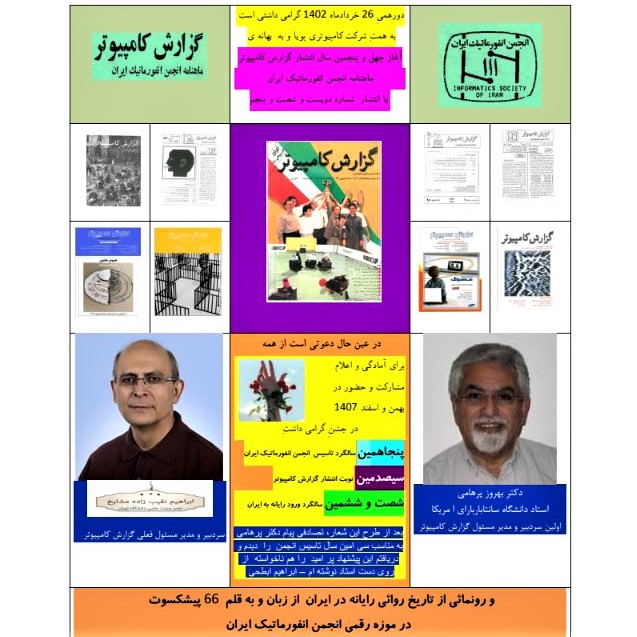
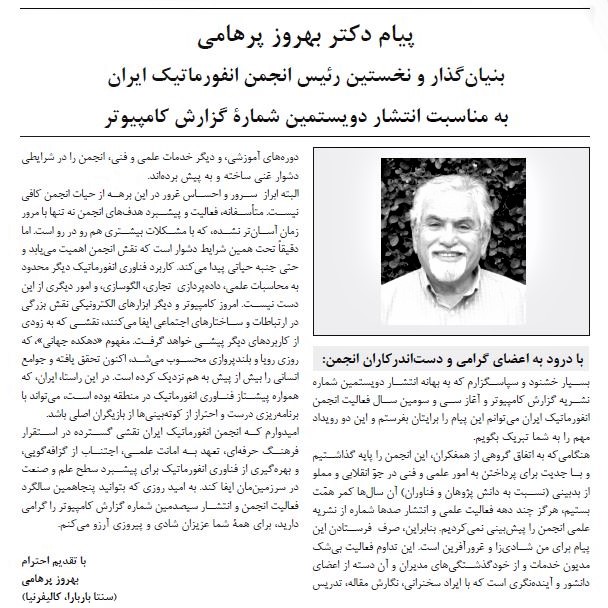
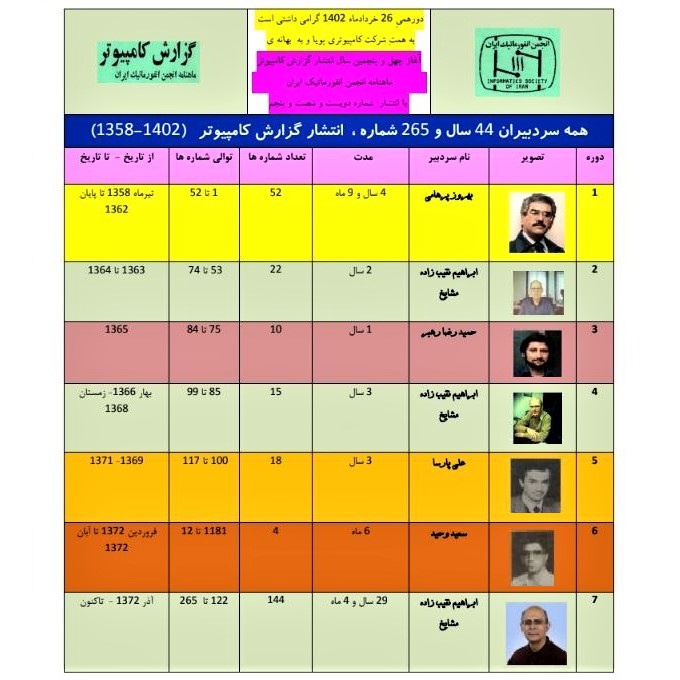

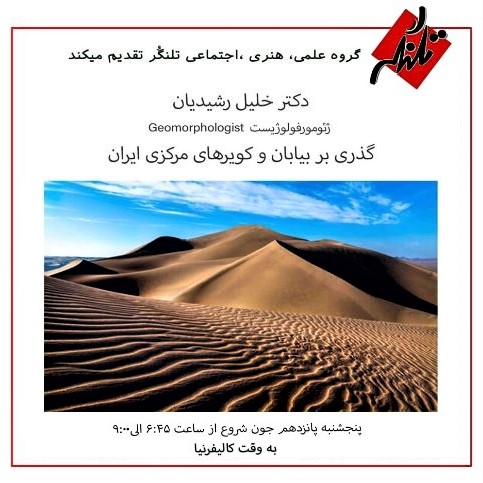
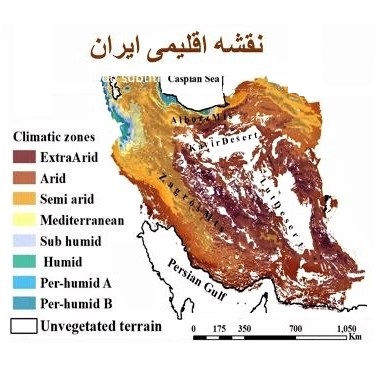 (1) Images of the day: [Top row] Celebrating Informatics Society of Iran's 45th anniversary celebration (see the next item below). [Bottom left] Persian calligraphy: A verse of Hafez, rendered by master Ahad Panahi. [Bottom center & right] Talk about Iran's central wastelands and deserts (see the last item below).
(1) Images of the day: [Top row] Celebrating Informatics Society of Iran's 45th anniversary celebration (see the next item below). [Bottom left] Persian calligraphy: A verse of Hafez, rendered by master Ahad Panahi. [Bottom center & right] Talk about Iran's central wastelands and deserts (see the last item below).
(2) Throwback Thursday: Founded 45 years ago, Informatics Society of Iran is celebrating its anniversary and the publication of 265 issues of Computer Report (Gozaresh-e Computer), its flagship technical magazine, on Friday, June 16, 2023 (Khordad 26, 1402). As part of the upcoming event, an extensive oral history of computers in Iran will be unveiled. ISI is also in the process of planning a major celebratory event in 2028 for its 50th anniversary and publication of the 300th issue of its magazine. My message on the occasion of Informatic Society of Iran's 33rd anniversary and publication of the 200th issue of Computer Report is also included in way of remembrance.
(3) We think we have come to know glass quite well over four millennia of use: Nothing can be further from the truth. We have only begun to understand the properties of glass and its many potential applications.
(4) One-liners: Brief news headlines, happenings, memes, and other items of general interest.
- Nobel-Prize-worthy discovery for curing all ailments: Passing under a camel! [Video clip]
- Swedish proverb: "Those who wish to sing always find a song."
- Facebook memory from June 15, 2017: A pencil drawing of mine from the 1960s.
- Facebook memory from June 15, 2015: USS Enterprise turned into a building.
- Facebook memory from June 15, 2014: Fathers' Day photo with Nikola Tesla doll.
- Facebook memory from June 15, 2013: 2 percent is fine for low-fat milk, but not for women in the senate.
(5) Tonight's Talangor Group talk: Geomorphologist Dr. Khalil Rashidian talked under the title "A Passage to Iran's Central Wastelands and Deserts." There were ~70 attendees.
Many seas and lakes were created in Iran after the last Ice Age, ~11,000 years ago. Climatic changes caused these lakes to lose water some 3000 years ago, leaving behind salt and clay. Iran's deserts, like those in many other world regions, are located between the latitudes of 15 and 45 degrees north, the few exceptions appearing around 30 degrees south (Australia, plus tips of South America & Africa).
Iran has two major desert areas, each with its own characteristics in terms of geology and animal/plant life.
*Dasht-e Kavir, or Kavir-e Markazi (central desert), where a large salt-water lake existed millions of years ago, spans parts of the Khorasan, Semnan, Tehran, Isfahan, and Yazd Provinces. It includes a protected ecological zone known as Kavir National Park. One of the most desolate parts of Dasht-e Kavir is Rig-e Jenn ("Dune of the Jinn"), so named because the strange noises heard in the area scared the locals and passing caravans, who believed it was inhabited by evil spirits.
*Dasht-e Lut ("Lut" meaning bare or empty in Persian), has flat salty areas as well as regions with some of the world's tallest dunes. Over millions of years, volcanic rock has been broken down into sand by extreme temperature variations, which can be 60+ degrees Celsius from day to night. Despite the extreme temperature variations, the area does have plant and animal life that have evolved to tolerate the harsh conditions.





 (1) Images of the day: [Top left & center] Book introductions (see the last item below). [Top right] Historic Dolatabad Garden Pavilion, Yazd, Iran: A UNESCO World Heritage Site. [Bottom left & right] Tuesday's June gloom over Santa Barbara Channel (Pacific Ocean) and Goleta's Devereux Slough: Usually, the Sun comes out in the afternoon, but this year's gloom is an all-day affair. [Bottom center] Math puzzle: What time is it?
(1) Images of the day: [Top left & center] Book introductions (see the last item below). [Top right] Historic Dolatabad Garden Pavilion, Yazd, Iran: A UNESCO World Heritage Site. [Bottom left & right] Tuesday's June gloom over Santa Barbara Channel (Pacific Ocean) and Goleta's Devereux Slough: Usually, the Sun comes out in the afternoon, but this year's gloom is an all-day affair. [Bottom center] Math puzzle: What time is it?
(2) One-liners: Brief news headlines, happenings, memes, and other items of general interest.
- UN-backed team scans historical sites in Ukraine for digital preservation in case of destruction by Russia.
- Surprising freshwater deposits under the seafloor can be tapped in drought-stricken areas.
- The municipality of Malayer in Iran is building many scale models of important landmarks around the world.
- Humor: Suggestions for those who plan to redecorate their bathrooms. [Images]
(3) Book introductions: Today, I pitched two books at a meeting of the committee that is in charge of picking a book for "UCSB Reads 2024" program. From today's pitches, a long list of about 10 books will emerge through voting, which will then be pared down to half-dozen or so for final consideration in a meeting in August.
I chose my two titles because they deal with important problems that are on everyone's mind these days: The threats to humanity from intelligent machines and from environmental deterioration. There are a multitude of opinions in both domains and both suffer from an abundance of misinformation and disinformation. Both threaten our essence as human beings and both require long-term thinking, rather than a focus on today, this quarter, or the next political election.
First pitch: O'Gieblyn, Meghan, God, Human, Animal, Machine: Technology. Metaphor, and the Search for Meaning, Penguin Random House, 2022. [Paperback, 304 pp., $17.00]
We are bombarded daily with stories about Chat GPT and how AI is threatening the essence of our being as humans. Technology is speeding up our lives, leaving little time for reflection, yet the deep changes that are afoot demand that we devote enough time to think about the future of humanity and our challenges over centuries and millennia, not focus merely on today, this quarter, or the next political election.
In 304 pages, O'Gieblyn, an essayist, columnist, and thinker, who studied theology in college, paints a detailed picture of our struggles to reconcile spirituality with technical progress. The writing is that of an essayist, almost devoid of jargon, although, as a columnist for Wired magazine, O'Gieblyn has solid credentials as a tech writer.
We humans are constantly thinking of ways of controlling and overtaking nature. We outsource our intelligence to machines, as extensions of our minds, increasingly seeing ourselves as machinelike in the process. Descartes considered all animals essentially as clocks, that is, robots without any inner experience. He believed that humans were also machines, but with souls, a viewpoint that created problems for the clockwork universe.
This is more or less the starting place for O'Gieblyn's book. Much of the book is about how the success of the modern scientific worldview rests on mechanical metaphors, which necessarily put a bracket around individual human thought and agency. We put consciousness and free will to the side, as we try to describe the world as a mere machine. We did it with the clock metaphor, and that's what we're doing with the computer metaphor, with the computational theory of mind.
O'Gieblyn's book provides ample opportunities to discuss hot-button issues of the day, in classrooms and outside. Increasingly, technology is being developed and sold with religion-like tropes. So, we might wonder whether we are on our way to a digital heaven, offered to us by gods of technology. or a digital hell of our own making. Is academia threatened by Chat GPT and similar developments? Is our increasing reliance on technology helping or impairing our move toward equity and social justice?
Second pitch: Ray, Sarah Jaquette, A Field Guide to Climate Anxiety: How to Keep Your Cool on a Warming Planet, UC Press, 2020. [Paperback, 216 pp., $16.95]
This book is aimed primarily at the Climate Generation (late Millennials and Generation Z), but everyone can benefit from its encapsulation of the climate problem and its prescription for cultivating a mature, compassionate, and resilient mindset that will allow taking steps toward climate justice in a hopeful, emotionally-intelligent, and sustainable fashion. We must set aside fearful, guilt-ridden, and anxiety-inducing activism that harms our well-being more than it helps solve climate problems.
The following two quotes capture Ray's philosophy.
From p. 7: "Reframing environmentalism as a movement of abundance, connection, and well-being may help us rethink it as a politics of desire rather than a politics of individual sacrifice and consumer denial."
From p. 126: "Find beauty, savor the small gifts of being alive, see everything you possibly can through the lens of being blessed rather than victimized, recalibrate your efforts toward the small and local, collect and create positive stories ... "
Extensive discussion on campus and outside are possible on climate issues encapsulated and about the research cited from psychology, mindfulness, and ecopsychology.





 (1) Images of the day: [Top left] Math puzzle: See if you can decipher the message appearing on my T-shirt. [Top center] We had our Taco Tuesday on Sunday: Your place was empty! [Top right] RIP Fakhri Khorvash (1929-2023): The iconic Iranian theater/cinema actor passed away in Los Angeles at age 94. She was disowned by her family in Kermanshah, western Iran, when she started her acting career more than seven decades ago. [Bottom left] The original 1915 patent for adjustable wrench. (Update: Wikipedia attributes the invention of the "adjustable spanner" as well as a different kind of adjustable wrench known as "plumber wrench" to Johan Petter Johansson, ca. the late 1800s.) [Bottom center] The beautiful architecture of Yazd, southeastern Iran. [Bottom right] Math lesson: Illustrating the notions of set union and set intersection.
(1) Images of the day: [Top left] Math puzzle: See if you can decipher the message appearing on my T-shirt. [Top center] We had our Taco Tuesday on Sunday: Your place was empty! [Top right] RIP Fakhri Khorvash (1929-2023): The iconic Iranian theater/cinema actor passed away in Los Angeles at age 94. She was disowned by her family in Kermanshah, western Iran, when she started her acting career more than seven decades ago. [Bottom left] The original 1915 patent for adjustable wrench. (Update: Wikipedia attributes the invention of the "adjustable spanner" as well as a different kind of adjustable wrench known as "plumber wrench" to Johan Petter Johansson, ca. the late 1800s.) [Bottom center] The beautiful architecture of Yazd, southeastern Iran. [Bottom right] Math lesson: Illustrating the notions of set union and set intersection.
(2) Rewarding terrorists brings more terrorism: Two weeks after the exchange of a convicted Iranian terrorist with European hostages in Iran, a new terror attack in Paris is being blamed on Islamic Republic of Iran.
(3) Mathematical oddity: Torricelli's Trumpet is the surface of revolution obtained by rotating the graph of the function f(x) = 1/x on the interval [1, &inf;) around the x-axis. It has an infinite surface but a finite volume, which leads to a paradox: We can't paint its surface with a finite amount of paint, but can fill it up with a finite amount of paint, which would then also cover its entire surface!
(4) One-liners: Brief news headlines, happenings, memes, and other items of general interest.
- We have Florida: And we have Illinois, which just passed a law that bans book bans.
- Denver earns its first NBA championship by defeating Miami 94-89 in Game 5 of the finals series.
- Remembering Iranian-American NASA scientist Dr. Firouz Naderi and his contributions. [25-minute video]
- Top-ten most-expensive & some of the least-expensive one-bedroom apartments at world city centers.
- We have Florida: And we have Illinois, which just passed a law that bans book bans.
- Lost in translation: The Persian "Bekeshid" ("Pull") becomes "Kill" ("Bekoshid"). [Tweet, with photo]
- Persian music & dance, performed at the historic Karim Khan Castle in Shiraz. [3-minute video]
- Facebook memory from June 13, 2018: The four-season tree.
(5) US Senate considers two AI-related bills: One would require the US government to be transparent when using AI to interact with people and another would establish an office to determine if the United States is remaining competitive in the latest technologies.
(6)
(7)
(8)
(9)
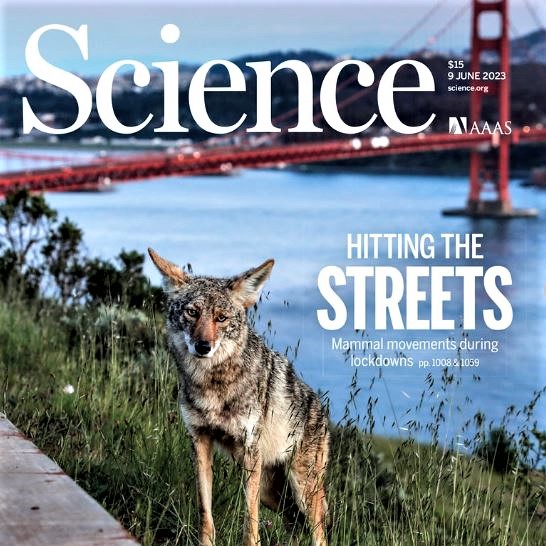

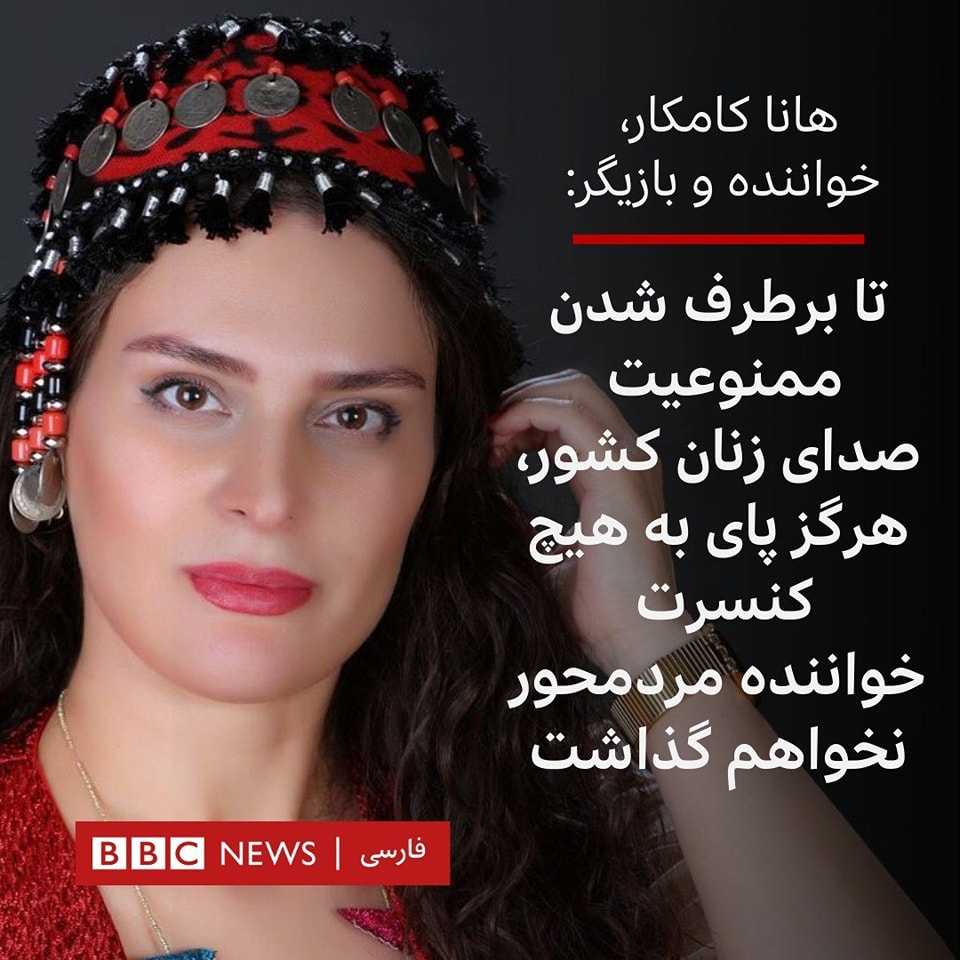

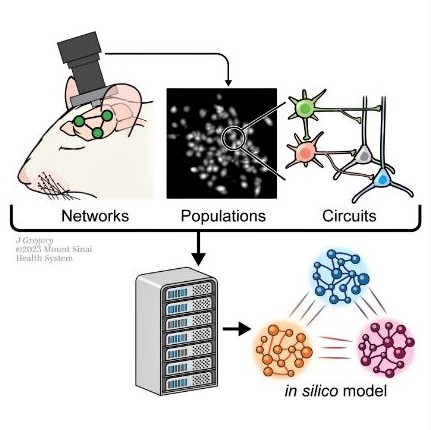
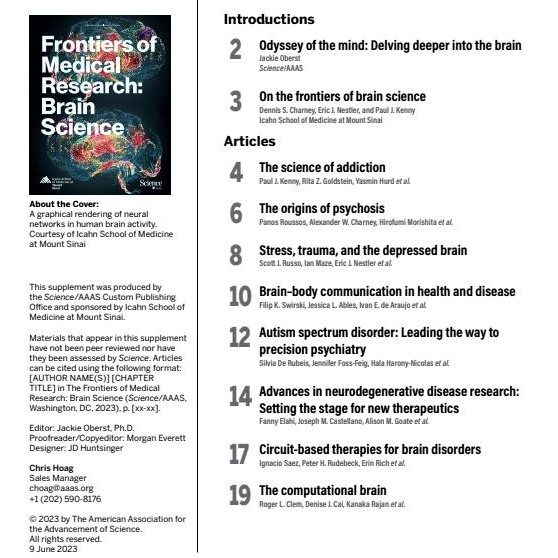 (1) Images of the day: [Top left] During COVID-19 lockdown, wild mammals hit the streets in large numbers. [Top center] One sheep to the other: "I like him; he tells it like it is." [Top right] Iranian singer/actor Hana Kamkar: "Until the prohibition against women's singing is lifted, I won't attend any male-centered concert." [Bottom left] Nothing is more un-American than banning books. [Bottom center & right] Science magazine's supplement on frontiers of medical research: Brain science (see the last item below).
(1) Images of the day: [Top left] During COVID-19 lockdown, wild mammals hit the streets in large numbers. [Top center] One sheep to the other: "I like him; he tells it like it is." [Top right] Iranian singer/actor Hana Kamkar: "Until the prohibition against women's singing is lifted, I won't attend any male-centered concert." [Bottom left] Nothing is more un-American than banning books. [Bottom center & right] Science magazine's supplement on frontiers of medical research: Brain science (see the last item below).
(2) Boris Johnson, former Prime Minister of Britain, resigns from Parliament, in the wake of the release of a House of Commons committee report on his partying during COVID-19 restrictions.
(3) Music by the Iranian pianist/composer Andre Arzoumanian, with backdrop of his funeral (6-minute video). Here are a couple more of his compositions: "Dard o Nefrin" ("Pain n Curse") and "Nasim" ("Breeze").
(4) One-liners: Brief news headlines, happenings, memes, and other items of general interest.
- The Feds are investigating right-wing political contributions aimed at infiltrating progressive groups.
- Political humor: Trump wants to see Biden in jail, but Biden has no plans for visiting him there!
- The victims of #IranProtests2022: There are now 339 confirmed names, including at least 46 children.
- A most-critical question for travel to Mars: What would astronauts eat during the 3-year mission?
(5) "The Computational Brain": This is the title of a fascinating article in a special supplement to Science, issue of June 9, 2023. Selected passages follow. The accompanying diagram is a multiscale representation of neural processing to establish basic computational principles of normal and abnormal cognition.
The brain's hardware: "The human brain is populated by diverse cell types, unique in form and function, which have been programmed by millions of years of evolution to assemble into complex networks connected by trillions of synapses. Embedded in this hardware are countless pathways for routing signals from inside and outside the body, and from the resulting symphony emerges our thoughts, feelings, plans, and dreams. One of the most important human endeavors has been to understand how these pathways are organized, what their constituent parts do, and onto which components are imprinted the remnants of our experiences."
Delineating the brain's circuitry: "To pinpoint the origins of abnormal circuit activity, researchers must decipher how entire circuits are influenced by the functioning of their parts, which requires that neurons be differentiated based on their anatomy, gene expression, and stimulus-response properties. Fortunately, the field has seen an explosion of technological advances to meet this demand, work that brings the promise of circuit-based therapies squarely into the realm of possibility ... Innovation in electrode materials and design (e.g., silicon probes) has enabled electrophysiological monitoring of large neuronal populations at multiple brain sites in rodents and non-human primates, while genetically encoded sensors report neuronal firing and neurotransmitter release with exquisite cellular resolution."
How the brain computes: "From the perspective of a computational neuroscientist, the floodgates opened by this revolution could provide the raw materials needed to construct a biologically accurate model of the brain. Indeed, machine learning approaches have shown that computers trained on the activity of a large population of cells can reliably predict which stimuli were presented to an animal as well as the response that was executed, confirming that tantalizing insights are within our grasp. Elucidating how these patterns emerge from the integration of many neurons acting in concert is a far more challenging task, but one that will define the future. Toward this goal, new anatomical and electrophysiological approaches are revealing the wiring logic that supports the brain's most basic computational routines ... These elementary building blocks define the signal processing capabilities of discrete neural pathways and may be important determinants of how relatively subtle alterations in the intrinsic properties of collections of cells can tip the balance between normal and pathological brain function."





 (1) Images of the day: [Top left] RIP Dr. Firouz Naderi (1946-2023): Iranian-American social-media influencer and former NASA scientist, dead at 77. In this 4-minute video, we hear him talk about charity and human compassion being more important than his work at NASA. [Top center] Math puzzle: In this diagram, with a large square and three smaller squares of area 9, find the area of the yellow region. [Top right] Classified docs were stored in a ballroom, in a bathroom, and in a shower at Mar-a-Lago. [Bottom left] Throwback (throw-out) Thursday: Believe it or not, I bought this pair of hiking boots in Iran ~1985. They are finally going in my donations pile! [Bottom center] Eco system vs. Ego system! [Bottom right] I have eturned to the project of organizing my books by subject: Hope to complete the work this summer.
(1) Images of the day: [Top left] RIP Dr. Firouz Naderi (1946-2023): Iranian-American social-media influencer and former NASA scientist, dead at 77. In this 4-minute video, we hear him talk about charity and human compassion being more important than his work at NASA. [Top center] Math puzzle: In this diagram, with a large square and three smaller squares of area 9, find the area of the yellow region. [Top right] Classified docs were stored in a ballroom, in a bathroom, and in a shower at Mar-a-Lago. [Bottom left] Throwback (throw-out) Thursday: Believe it or not, I bought this pair of hiking boots in Iran ~1985. They are finally going in my donations pile! [Bottom center] Eco system vs. Ego system! [Bottom right] I have eturned to the project of organizing my books by subject: Hope to complete the work this summer.
(2) Yesterday, I attended a UCSB Computer Science Distinguished Lecture entitled "Induced Subgraphs and Tree Decompositions" by the widely-honored Dr. Maria Chudnovsky (Princeton). Just wanted to share with you one of the speaker's handwritten slides, which I had not seen since the days of Vugraphs!
(3) One-liners: Brief news headlines, happenings, memes, and other items of general interest.
- New York Times animation of smoke & haze entering the US from Canadian wildfires.
- Biden's CDC pick, Former NC Health Chief Mandy Cohen, who is also a Washington veteran, wins praise.
- In Hollywood contract talks with actors & writers, AI has emerged as a central issue.
- Will oral exams make a comeback to prevent AI-enabled cheating?
- Borowitz Report (humor): Pence endorsed by National Association of Ass-Kissers.
- Trump reveals that he has been charged in the Mar-a-Lago classified-documents case.
- Iranian women's voices cannot be deleted: Niloofar Mohebbi sings at Esfahan's Shah Mosque.
- Humor: On the Institute of Philosophy's directory map, "You are here" becomes "Why are you here?"
(4) Tonight, I watched an enjoyable John Williams concert (playing movie themes in Berlin) on PBS SoCal: He has been composing film music since 1959. His notable scores since 1975 include "Jaws," "Star Wars," "Close Encounters of the Third Kind," "Indiana Jones," "Home Alone," "Jurassic Park," "Schindler's List," "Harry Potter," "Lincoln," and "The Post." A few related concerts:
[Live in Vienna, 2020 (128 minutes)]
[Star Wars Concert (149 minutes)]
[John Williams Across the Stars (100 minutes)]
[John Williams at 90 (141 minutes)]
(5) Why is it that claims of scientific advancements in Iran are always made by generals? The latest supposed breakthrough, a quantum computer, turns out to be available on Amazon.com!
(6) DeepMind AI uses the technology behind AlphaZero to build faster sorting algorithms: These algorithms, developed as part of what may be called an "instruction assembly game," are already part of standard C++ coding libraries, thus they are being used trillions of times per day by programmers around the world. Previously, faster matrix-multiplication algorithms had been discovered in a similar manner. [Nature article]



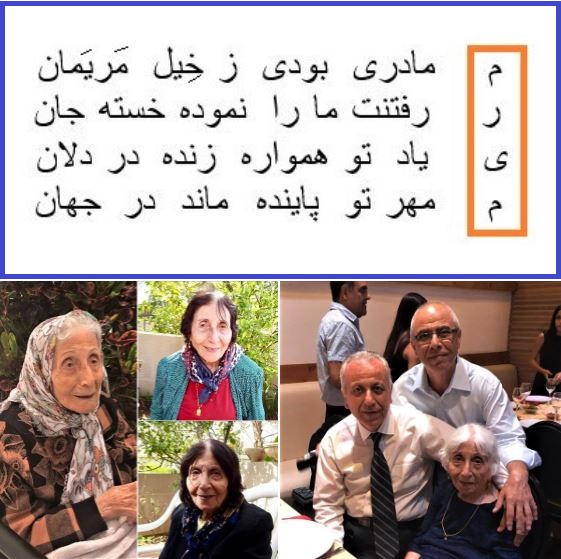

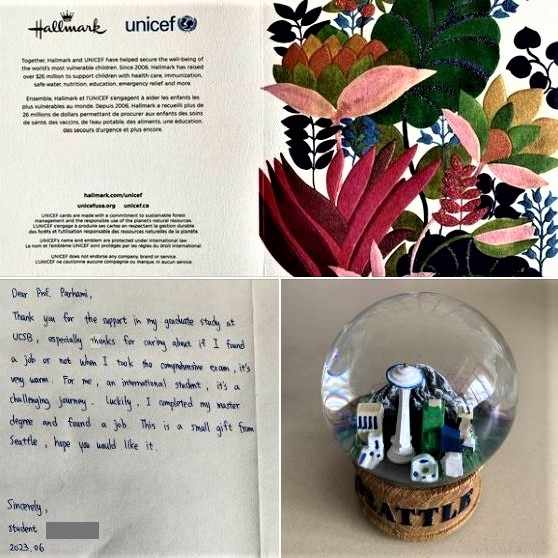 (1) Images of the day: [Top left] Possible relocation of the Oval Office in 2024. [Top center] Math joke: See if you can figure it out! [Top right] Personalized ads have gone too far: This one appeared on my Facebook timeline as a perfect Fathers'-Day gift. Oh, wait! Am I supposed to buy a gift for myself? [Bottom left] RIP Maryam Hakhamjani (see the next item below). [Bottom center] Iran executes activists after sham trials: In 2023, Iran has had the most executions in the world on a per-capita basis. The first activist in the recent batch was executed for "fighting against god." Domestic and international outrage led to the use of false murder & drug charges in subsequent executions. [Bottom right] On the joys of teaching: Card and gift from one of my graduating MS students, who has landed a job in Seattle.
(1) Images of the day: [Top left] Possible relocation of the Oval Office in 2024. [Top center] Math joke: See if you can figure it out! [Top right] Personalized ads have gone too far: This one appeared on my Facebook timeline as a perfect Fathers'-Day gift. Oh, wait! Am I supposed to buy a gift for myself? [Bottom left] RIP Maryam Hakhamjani (see the next item below). [Bottom center] Iran executes activists after sham trials: In 2023, Iran has had the most executions in the world on a per-capita basis. The first activist in the recent batch was executed for "fighting against god." Domestic and international outrage led to the use of false murder & drug charges in subsequent executions. [Bottom right] On the joys of teaching: Card and gift from one of my graduating MS students, who has landed a job in Seattle.
(2) RIP Maryam Hakhamjani: Daughter of Jeyran and Nissan (my grandpa Mikaeel's & grandpa Sassoon's brother), aunt Maryam passed away in Israel on Monday, June 5, 2023. She was nearly 100 and transitioned in peace while asleep. She was a cousin of both of my parents and a lifelong friend of my mom, who was in touch with her regularly. Their kalaneh (Kurdish scallion bread) & shelkeneh, which they used to make together for Shavout, were stuff of legends. My sincere condolences to her children and the rest of our families.
(3) One-liners: Brief news headlines, happenings, memes, and other items of general interest.
- Terrorism, war crime: A major hydroelectric dam in southern Ukraine has been blown.
- Multiple Canadian wildfires send smoke and haze to several US regions, including New York City.
- Former FBI Director James Comey: Trump could be wearing ankle bracelet at GOP convention.
- Will AI assist disadvantaged students in developing vital skills, or will it widen the education gap?
- Harvard turns to AI tools for grading student work in its CS50, world's most-popular on-line class.
- How magnetic-levitation (maglev) trains work and some of their advantages. [6-minute video]
- World's most-beautiful soccer field is located near a 1000-year-old village in Iran's Kurdistan Province.
(4) Persian music: Iranians are still hopeful and sing, after 44 years of their Islamic government outlawing joy and freedom of expression. Street performance of "Do Panjereh" in the city of Karaj. [3-minute video]
(5) Khamenei is toast: For decades, Iranian officials and former officials have stopped short of blaming Khamenei for Iran's problems, while he dissed every official but himself. Not anymore! Former FM Javad Zarif is the latest to put the blame for multiple setbacks directly on Khamenei and his Mafia-like network of insiders.
(6) BlueSky ranking of CS programs, based on consolidating multiple rankings: The top-10 schools are MIT, Stanford, CMU, UC Berkeley, Oxford, ETH Zurich, Nat'l U. Singapore, Tsinghua U., Nanyang Tech U., Harvard.


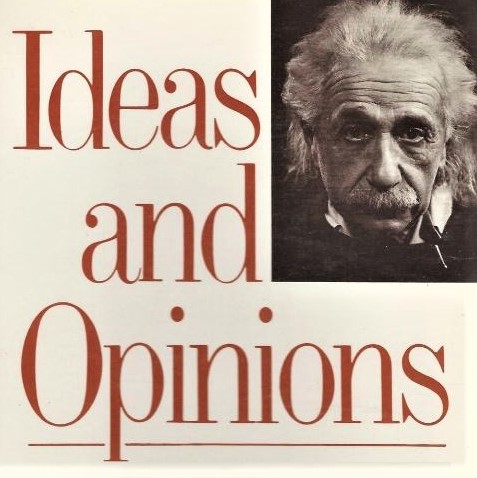 (1) Images of the day: [Left] A couple of days ago, at UCSB's University Center: Preps for a party, likely graduation-related. Grads-to-be are everywhere in fancy outfits or regalia, shooting photos in front of campus landmarks.
[Center] They have ruined Heaven too: Banner in Bushehr, Iran, asserts that nymphs in Heaven have hijabs. [Right] Einstein's Ideas and Opinions (see the last item below).
(1) Images of the day: [Left] A couple of days ago, at UCSB's University Center: Preps for a party, likely graduation-related. Grads-to-be are everywhere in fancy outfits or regalia, shooting photos in front of campus landmarks.
[Center] They have ruined Heaven too: Banner in Bushehr, Iran, asserts that nymphs in Heaven have hijabs. [Right] Einstein's Ideas and Opinions (see the last item below).
(2) Members of Iran's Writers Association visited and pledged allegiance to Khomeini in 1979: Later, they all became banned writers or prisoners. This 14-minute video is made by royalists and is clearly anti-leftist, but it contains truths about the complicity of Iranian intellectuals in the Islamic Republic taking hold.
(3) The Instagram account "Neural Art Canvas" has posted this amazing 2-minute video for Shervin Hajipour's Grammy-winning song "Bara-ye." It is said to have been produced with AI assist. Enjoy!
(4) One-liners: Brief news headlines, happenings, memes, and other items of general interest.
- Iran's FM: Syrian generals still receive guidance from General Qasem Soleimani, who died ~2.5 years ago.
- The many uses of pineapple scraps & leaves: From sneakers & bags to soap & disposable plates.
- Persian music: Iranian girls of 45 years ago, singing the hit song "Gol-e Sangam." [2-minute video]
- Persian dance: Iranian women cannot be restrained. [1-minute video]
- Harmful myths about virginity and their role in controlling women's sexuality. [4-minute TEDx talk]
(5) I just filled out a juror questionnaire. You are disqualified from serving on a jury if you have a felony conviction. Yet, it seems, one can become US president with multiple felony convictions!
(6) Book review: Einstein, Albert, Ideas and Opinions, Three Rivers Press, 1982.
[My 4-star review of this book on GoodReads]
While this collection provides insights into the thoughts and opinions of Albert Einstein [1879-1955], the pieces are loosely-related and of varying quality, as one would expect of separate informal essays, written over a long period of time. This would have been a fatal flaw for the book, if Einstein weren't such an important person in the history of humanity; hence my 4-star rating.
Part I: Ideas and Opinions (General; About Freedom; About Religion; About Education; About Friends)
Part II: On Politics, Government, and Pacifism
Part III: On the Jewish People
Part IV: On Germany
Part V: Contributions to Science
Before this volume gathering in one place Einstein's general writings, there were three collections:
- The World as I See It (1934)
- Out of My Later Years (1950)
- Mein Weltbild (1953)
The publisher has tried to incorporate the most-important parts of the aforementioned collections (an obviously subjective selection), as well as material from other sources.



 (1) Images of the day: [Top left] "Feminist Critiques of Charters & Laws on Women's Rights" (see the last item below). [Top center & right, plus bottom row] UCSB Middle East Ensemble's Saturdy ninght concert: The diverse program included many songs from different countries, including Syria, Iraq, Lebanon, Iran, Greece, Armenia, Turkey, and Sephardic, plus several dances. One of the two Persian songs, "Ham-Ava," composed and sung by Javid John, with lyrics by Mehrdad Namavari, was about the #WomanLifeFreedom Revolution, which is afoot in Iran. Unfortunately, the lyrics also included "Man Country Development," which is a diversionary slogan (apparently coined by supporters of Iran's Islamic regime) that dilutes and sidelines the Revolution's main message. (3-minute video). Here's a Turkish song that sounds familiar to speakers of Greek and several other languages (2-minute video). And here's Turkish-style belly dancing to a Persian song (2-minute video).
(1) Images of the day: [Top left] "Feminist Critiques of Charters & Laws on Women's Rights" (see the last item below). [Top center & right, plus bottom row] UCSB Middle East Ensemble's Saturdy ninght concert: The diverse program included many songs from different countries, including Syria, Iraq, Lebanon, Iran, Greece, Armenia, Turkey, and Sephardic, plus several dances. One of the two Persian songs, "Ham-Ava," composed and sung by Javid John, with lyrics by Mehrdad Namavari, was about the #WomanLifeFreedom Revolution, which is afoot in Iran. Unfortunately, the lyrics also included "Man Country Development," which is a diversionary slogan (apparently coined by supporters of Iran's Islamic regime) that dilutes and sidelines the Revolution's main message. (3-minute video). Here's a Turkish song that sounds familiar to speakers of Greek and several other languages (2-minute video). And here's Turkish-style belly dancing to a Persian song (2-minute video).
(2) Does nature have legal rights? Yes, there are laws to this effect in some countries. "The success or failure of these rights-of-nature laws can depend in large part on how scientific concepts and expertise have been used to develop, interpret, and implement them. Epstein et al. reviewed key scientific aspects of rights-of-nature laws and the use of science in court decisions that have interpreted them. They examined the 'right to evolve' to illustrate challenges in applying scientific concepts in rights-of-nature laws and identify possible solutions."
(3) Panel discussion, a program of Voices of Women for Change: On Saturday, June 3, 2023, panelists Dr. Nayereh Tohidi (Professor, Cal State Northridge, @NTohidi), Mansoureh Shojaee (writer & women's-rights activist, @mansoureh5837), and Mahdieh Golroo (journalist & women's-rights activist, @mahdieh_golroo) offered "Feminist Critiques of Charters & Laws on Women's Rights." There were 56 attendees out of 125 registrants. The event was also live-streamed on YouTube.
*Dr. Nayereh Tohidi: The #WomanLifeFreedom revolution isn't just a political movement but also a cultural transformation. Charters that have emerged represent attempts to state in clear terms what the movement is about, what it aspires to, and what it opposes. The first such charter was the Mahsa Charter, which emerged from a meeting of several opposition figures at Georgetown University. This charter included women's-rights issues indirectly, through references to international laws. Subsequently, other charters emerged from opposition groups inside Iran and in diaspora. A common weakness of many of these charters is that, while paying lip service to #WomanLifeFreedom, they do not explicitly list women's demands. Dr. Tohidi then proceeded to offer a detailed critique of one such charter presented in March 2023 and known as "Manshoor-e Hamgaami" (Charter of Concordance).
*Mansoureh Shojaee: Despite the multiplicity of charters, they have not led to further rift among opposition groups. Most of these charters have common goals, but they differ in the methods used to achieve the goals. It is important to also agree on methods, as stressed in an article by Noushin Ahmadi Khorasani (linked below). Indeed, having a single charter is unnecessary. It may be desirable to produce multiple charters and use a democratic process to choose the most-favored one. The Georgetown charter has an excellent beginning by taking an anti-execution stance, but much of the rest of it focuses on diplomatic initiatives, which became the focus of subsequent discussions. All charters to date are based on masculine worldviews and need more of a feminine perspective. Women's movements aren't only about women's rights. They also include attention to peace, environmentalism, and a multitude of other sociopolitical issues.
*Mahdieh Golroo: We need the filter of feminism to view the various charters. Historically, women's issues have been pushed aside in favor of "urgent goals" that should be given priority: One example is the fate of the oil industry in 1951 vs. women's voting rights. Another example is fighting Imperialism in 1979 vs. hijab & women's rights. Sometimes, we see advocacy for giving women some limited rights (e.g., no hijab), but restricting their clothing nonetheless. Women's rights are not things to be given from above, such as token appointment of women, but to be earned from below. Often the excuse is given that Iran's society isn't ready for widespread reforms. Men, privileged under a religious regime, won't easily adjust to a completely free & equitable society. We need not limit ourselves to changes that are palatable to a patriarchal society. Countries that outlawed the death penalty did not wait until the entire society wanted change. So, we need to ask explicitly for secular marriage, reproductive rights, and divorce rights.
*A lively comment period ensued, with a few participants also including questions in their comments, which the panelists answered.
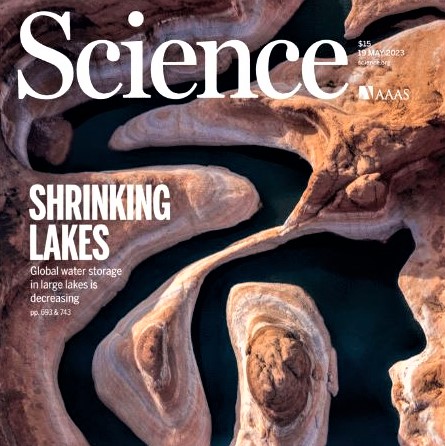
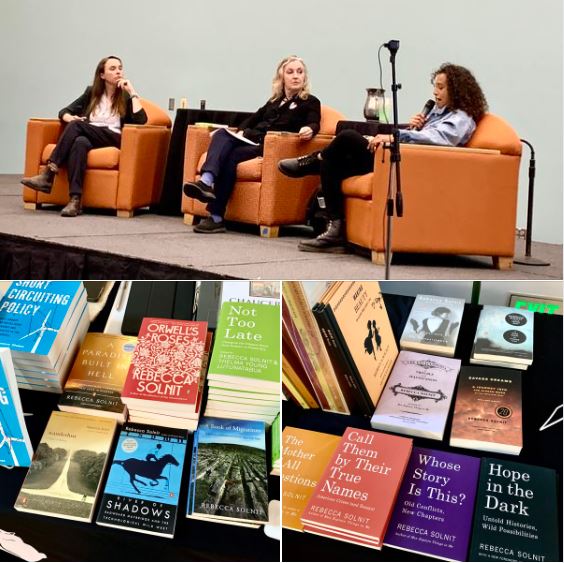
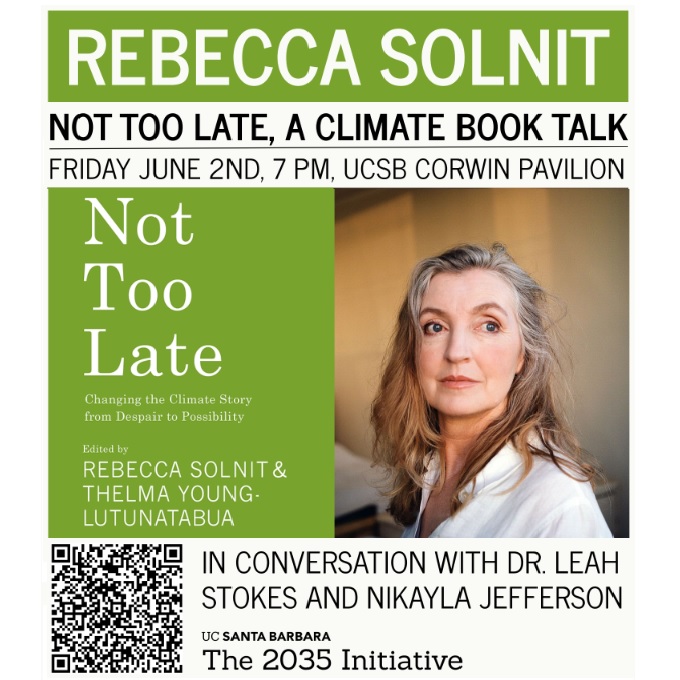 (1) Images of the day: [Left] Lakes are shrinking worldwide: Satellite images reveal decline in global lake water storage. [Center & Right] Book talk on climate change (see the last item below).
(1) Images of the day: [Left] Lakes are shrinking worldwide: Satellite images reveal decline in global lake water storage. [Center & Right] Book talk on climate change (see the last item below).
(2) Sometimes taking a step back saves you and others: The original intention of this viral animation was to stress the importance of COVID social distancing, but it applies to many other social & professional contexts.
(3) Islamic Revolutionary Guard Corps wants to take over the control of Internet in Iran, claiming that the Ministry of Communications isn't doing an adequate job of protecting Iran's cyber-borders. [6-minute video]
(4) One-liners: Brief news headlines, happenings, memes, and other items of general interest.
- Train derailment in eastern India leaves 200+ dead, ~1000 injured.
- TikTok isn't just for teens: Retirement-home-based woman, 91, has 2 million followers on TikTok.
- Latest developments in the economic and cultural ties between Japan and Iran. [10-minute VOA report]
- New Jersey mystery: Who dumped hundreds of pounds of pasta on the side of a stream, and why?
(5) Book talk: Dr. Rebecca Solnit, in conversation with Dr. Leah Stokes (UCSB's Anton Vonk Associate Professor of Environmental Politics) and Ms. Nikayla Jefferson (PhD candidate).
Held last night at UCSB's Corwin Pavilion, the event, focusing on Dr. Solnit's new edited volume, Not Too Late: Changing the Climate Story from Despair to Possibility (my 4-stsr review), was well-attended. The format was for the three participants taking turns in asking questions of the other two.
Dr. Solnit expressed puzzlement over some people caring enough about the Earth's future, but then losing hope when they recognize the immense problems facing us is order to avoid a climate catastrophe. A prerequisite for not losing hope is being comfortable with uncertainty. Another important observation is that activists motivated by love get much better results than those driven by hate.
Our excesses in consumption, rampant in the 20th century, have done a lot of damage, primarily through using fossil fuels and plastics, the latter also fossil-fuel derivatives. Healing those damages should be our focus in the 21st century. Climate vs. jobs is a false dichotomy. There is no need to suffer: We can have many creature comforts and help save the planet too.
All three discussants practice Buddhism to various degrees and feel that the practice helps them stay positive and on message. In the final part of the discussion having to do with steps an individual can take to contribute to a climate solution, a sly, yet truthful answer is "stop being an individual and think collectively"! Another answer is "think about all the machines in your life that are powered by fossil fuels (car, stove, furnace, lawn mower, and the like) and how you can replace them with electric alternatives."
No time was allowed for audience questions, but if there were a Q&A period, I would have asked the following:
Q: US law now recognizes corporations as having rights, including right to free speech and, thus, spending unlimited sums on promoting their preferred political candidates. I just read about laws on Earth rights, including "Right to Evolve," enacted by several countries and being considered by a few others. Are such laws being pursued in the US? Wouldn't talking about the need for such laws be a better approach to bringing climate skeptics on board, instead of suggesting that we get rid of all fossil fuels? The two alternatives are really the same, differing only in the verbiage.



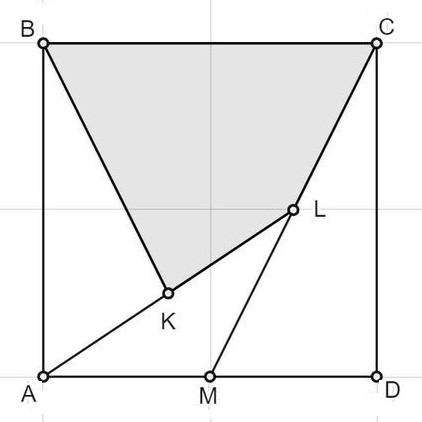

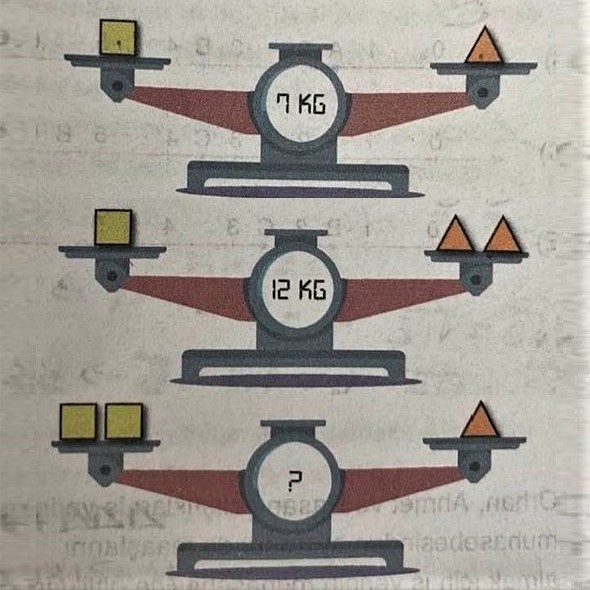 (1) Images of the day: [Top left] Ojai Music Festival, June 8-11, 2023, will feature Kayhan Kalhor and a number of Iranian women composers (Nina Barzegar, Golfam Khayam, Nasim Khorassani, Niloufar NourBakhsh, Aida Shirazi, Niloufar Shiri), with support from Farhang Foundation (tickets; schedule of free livestreaming). [Top center] US Millennials are moving to the right: This NYT chart shows the percent voting Republican in 2020 vs. 2012. [Top right] Six-fingered sculptures found in Marlik, near Roudbar, Guilan Province, northern Iran: Marlik is the site of a royal cemetery, with artifacts dating back to 3000 years ago. [Bottom left] Math puzzle: What fraction of the square's area is shaded if points K, L, and M are midpoints of the line segments on which they appear? [Bottom center] Math puzzle: In this diagram, the blue lines are tangent to the circle. Find the length x. [Bottom right] Simple math puzzle: The results of two weighing on a scale that shows the difference of weights on its two sides are shown. What result will be shown for the third weighing?
(1) Images of the day: [Top left] Ojai Music Festival, June 8-11, 2023, will feature Kayhan Kalhor and a number of Iranian women composers (Nina Barzegar, Golfam Khayam, Nasim Khorassani, Niloufar NourBakhsh, Aida Shirazi, Niloufar Shiri), with support from Farhang Foundation (tickets; schedule of free livestreaming). [Top center] US Millennials are moving to the right: This NYT chart shows the percent voting Republican in 2020 vs. 2012. [Top right] Six-fingered sculptures found in Marlik, near Roudbar, Guilan Province, northern Iran: Marlik is the site of a royal cemetery, with artifacts dating back to 3000 years ago. [Bottom left] Math puzzle: What fraction of the square's area is shaded if points K, L, and M are midpoints of the line segments on which they appear? [Bottom center] Math puzzle: In this diagram, the blue lines are tangent to the circle. Find the length x. [Bottom right] Simple math puzzle: The results of two weighing on a scale that shows the difference of weights on its two sides are shown. What result will be shown for the third weighing?
(2) Amazing advances in solving a super-hard problem: Propositional satisfiability (SAT) was the first problem proven NP-complete by Cook & Levin. Despite its theoretical hardness, SAT is being solved routinely within many application domains, including optimization, counting, and even problems involving quantifiers.
(3) The world's highest trash dump: Mount Everest is drowning in trash. If mountain-climbers don't care about our precious Earth, then we're doomed.
(4) One-liners: Brief news headlines, happenings, memes, and other items of general interest.
- US Senate approves the Biden-McCarthy debt-ceiling suspension bill 63-36, averting a US default.
- US-Europe summit in Sweden will try to craft a joint code of conduct for AI firms.
- Computer-related risks & remediation challenges: Nontechnical issues interwoven with computing tech.
- Stand-up comedy, while sitting down: Bob Newhart's classic driving instructor routine.
- Cartoon caption of the day: Cat to mouse pointing a pistol at her: "Six rounds, nine lives. You do the math."
- Facebook memory from June 1, 2018: Tea and photography is all these kids need for fun.
(5) Programming is like driving: It helps if the driver pays attention to detailed actions, while a navigator takes care of high-level planning for the trip. Pair-programming uses this analogy. GitHub's Copilot is an AI-powered code generator that allows the developer to focus on high-level requirements and code review. Copilot consists of a large language model using Codex, trained on source code (159 GB of Python code alone, as well as code from many other languages). The experience developers encounter is similar to the use of autocompletion, that has been in modern integrated development environments for years. The difference is that these suggestions may be longer, sometimes spanning multiple lines of code.
(6) A Columbia U. PhD student, whose parents were denied higher education during China's Cultural Revolution, shares her experience of, and pride closing the gap with her peers, who had privileged childhoods.
(7) The disappearing boundary between organism & machine: This is good news for many humans who suffer from various ailments and can benefit from smart artificial body parts and brain-computer interfaces.
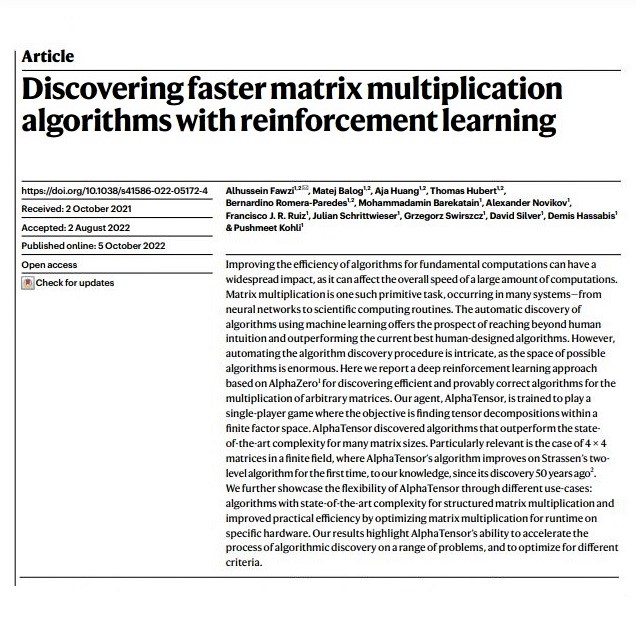
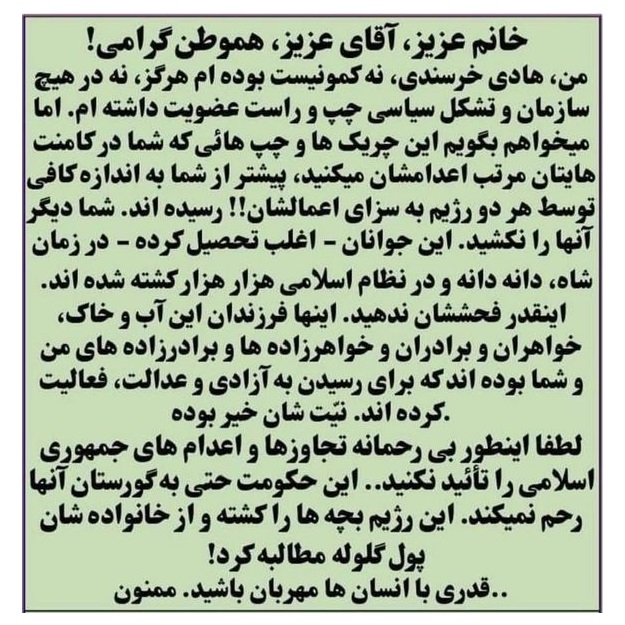
 (1) Images of the day: [Left] Faster arithmetic algorithms discovered through machine learning (see the next item below). [Center] Please do not threaten your political opponents with hanging once Iran's Islamic regime has been toppled. You may not see eye to eye with these opponents, but democracy, if that's what you're after, requires respect, tolerance, and kindness. Strive to be different from the Islamists, who kill the country's youth and then demand that families pay the cost of the bullets used to kill them. [Right] Math puzzle: Each of the four identical "houses" within the semicircle in this diagram is composed of a square and an equilateral triangle. What is the area of each "house"?
(1) Images of the day: [Left] Faster arithmetic algorithms discovered through machine learning (see the next item below). [Center] Please do not threaten your political opponents with hanging once Iran's Islamic regime has been toppled. You may not see eye to eye with these opponents, but democracy, if that's what you're after, requires respect, tolerance, and kindness. Strive to be different from the Islamists, who kill the country's youth and then demand that families pay the cost of the bullets used to kill them. [Right] Math puzzle: Each of the four identical "houses" within the semicircle in this diagram is composed of a square and an equilateral triangle. What is the area of each "house"?
(2) Data science's new focus is finding faster arithmetic algorithms: On October 5, 2022, a team from DeepMind, Alphabet Inc.'s UK-based subsidiary, reported in an article in the journal Nature a way of uncovering better algorithms through its AlphaTensor reinforcement learning framework. The results are still at a theoretical stage, but they show promise for developing faster practical matrix-multiplication algorithms, which are at the heart of computations for machine learning.
(3) Still, no NBA team has recovered from a 0-3 deficit in a 7-game series: Boston came close, by tying the series 3-3, after losing the first 3 games. But Miami Heat won 103-84 in Game 7 to thwart the rally. Miami advances to the finals against Denver Nuggets, in a series beginning June 1.
(4) One-liners: Brief news headlines, happenings, memes, and other items of general interest.
- Elizabeth Holmes, the disgraced Theranos founder, begins serving her 11-year jail sentence.
- Most top research universities in the US are now hiring women presidents.
- New challenges for gender equity efforts: Jobs replaced by AI are mostly held by women.
- Iranian officials caught with briefcases full of foreign currencies and gold coins. [Half-minute video]
- Evolution visualized: Why there was no first human. [4-minute video]
- Cartoon caption of the day: General, chiding Siri after nuclear launch: "No, Siri ... I said order LUNCH!"
(5) Iranians are totally ignoring the mullahs and their edicts: This viral 1-minute video, of a man proposing to his (hijabless) girlfriend at the Tomb of Hafez in Shiraz, has led to the arrest of the site's managers and the firing of Fars Province's Director of Cultural Heritage.
(6) The debt-ceiling suspension legislation passes the US House 314-117: More Democrats than Republicans voted for it. The bill is expected to pass the Senate, avoiding a US Treasury default.
(7) Prospects of war breaking out between Iran and Afghanistan: Border skirmishes over water rights have been escalating. On paper, the Taliban will likely not risk attacking the militarily-stronger Iran. But they don't act according to normal human logic and have little to lose in terms of infrastructure that can be targeted, while they can do significant damage to Iran's infrastructure. Such a war may have international cheerleaders, hoping to weaken Iran and destroy the advanced military equipment inherited by the Taliban when US forces left.
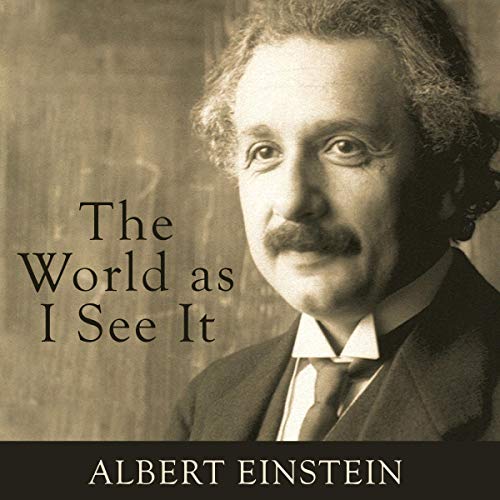
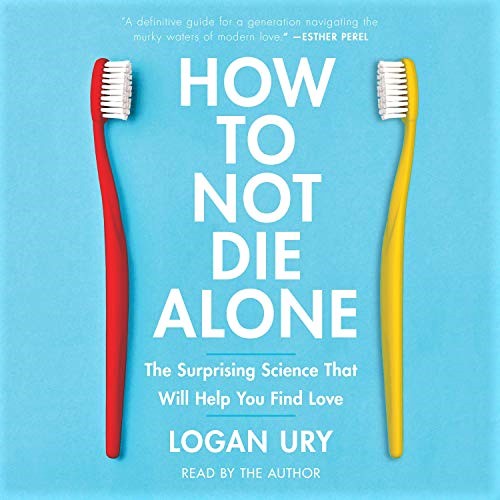
 (1) Book review: Einstein, Albert (translated by Alan Harris), The World as I See It, unabridged 4-hour audiobook, read by Pete Cross, Dreamscape Media LLC, 2021 (originally published in 1935).
(1) Book review: Einstein, Albert (translated by Alan Harris), The World as I See It, unabridged 4-hour audiobook, read by Pete Cross, Dreamscape Media LLC, 2021 (originally published in 1935).
[My 5-star review of this book on GoodReads]
Einstein's discovery of laws of nature that no one else could see before him is no doubt a result of how he saw the world. So, it might be instructive to learn about his view/model of the world.
Part I: The World, as I See It (pp. 1-41)
Part II: Politics and Pacifism (pp. 45-80)
Part III: Germany, 1933 (pp. 85-93)
Part IV: The Jews (pp. 97-119)
Part V: Scientific (pp. 125-214)
After the introductory Part I, with 28 short sections, beginning with "The Meaning of Life" and ending with "Reply to the Women of America," the rest of the book consists of fairly short Parts II-IV (26 pp., on average) and the 90-page Part V, where Einstein discusses his views on science.
This book is available for free from Internet Archives (PDF file).
(2) Book review: Ury, Logan, How to Not Die Alone: The Surprising Science that Will Help You Find Love, unabridged 8-hour audiobook, read by the author, Simon & Schuster Audio, 2021.
[My 4-star review of this book on GoodReads]
This how-to book consists of three sections:
Section 1. Getting Ready (Chs. 1-7): Understanding challenges of modern dating, the three dating tendencies, attachment styles.
Section 2. Getting Out There (Chs. 8-12): Like everything else, dating needs practice, so go out and get your reps (as in exercise).
Section 3. Getting Serious (Chs. 13-18): How to make a relationship work, moving-in together, break-up plans, getting married.
The main take-away from Section 1 is finding out which dating tendencies you have and why each of the three main tendencies is associated with unrealistic expectations.
The romanticizer feels that love will come to him/her, meaning that the Prince Charming or Cinderella will appear in time. For the romanticizer, the process of finding the right person is the main event, and, as in Disney movies, they will live happily ever-after, with no plans or effort. The lack of realism here is about the relationship.
The maximizer views finding a romantic partner as an optimization problem, much like buying a vacuum cleaner; a little bit more Googling, and you'll locate a better model. By endless searching for a slightly-better partner, perfect becomes the enemy of great. This links back to economic research on the optimal amount of sampling before making a decision. The lack of realism here has to do with the partner.
The hesitator wants to postpone dating until s/he has become "a catch" through various transformations. Such a person does not consider herself/himself good enough for dating. The lack of realism here is about oneself.
Sections 2 and 3 aim to help the readers overcome their dating tendencies and the associated unrealistic expectations.
(3) Book review: Hartmann, Thom, The Hidden History of American Healthcare: Why Sickness Bankrupts You and Makes Others Insanely Rich, unabridged 4-hour audiobook, read by Sean Pratt, Koehler Publishers, 2021.
[My 5-star review of this book on GoodReads]
The book's subtitle says it all: The US healthcare system is designed not to keep you healthy but to generate maximum revenue for hospitals, insurance companies, big pharma, and their executives & shareholders. Each time a presidential administration tries to put in place a single-payer universal healthcare system, which is the norm in all other industrialized societies, one or more of the players named above or their paid stooges in Congress interfere to make the plan fail.
The book's four sections deal with:
- How bad things are in the US regarding healthcare
- Origins of our profit-based healthcare (or sickness) system
- Ongoing fight for healthcare as a human right
- How a real healthcare system can save lives
Here is one example of how we pay for inefficiencies in our healthcare system. US insurance companies typically spend $0.80 out of every dollar they charge on healthcare services. The rest goes to overhead, such as salaries, which include multi-million-dollar pay/benefit packages for their executives. The norm in other countries is $0.95-0.98/dollar. For-profit insurance companies try to reduce their healthcare costs via co-pays, deductibles, denial of coverage to sick people, and disapproval of expensive treatments. Hospitals typically have teams of employees just to do insurance billings and handle the back-and-forth needed to have treatments or charges approved.
The US spends 24% of its GDP on healthcare, whereas Taiwan, with much better health outcomes, spends 6% of its GDP. Taiwan's edge in health outcomes, which includes lower infant-mortality rate and longer life expectancy, was particularly notable during the COVID-19 pandemic. We encounter the same story in nearly all advanced countries, with the possible exception of Switzerland, which has opted for private health insurance within its national healthcare system.
Around 1915, Woodrow Wilson's administration tried to bring national health insurance to the US along the lines of the German model. Frederick Hoffmann of the Prudential Health Insurance killed the proposal by writing extensively about its weak spots, claiming that such a system would destroy the Daniel Boone spirit of individuality in America. Over the decades, the fear-mongering term "socialized medicine" has been used to scare away the public from reform.
Republicans stripped most of the provisions of JFK's proposed healthcare law by the time it passed Congress under LBJ. George W. Bush tried to privatize Medicare, but failed in the face of strong opposition. Nevertheless, he instituted the private Medicare Advantage program, which costs the government a great deal more than standard Medicare (in part, because of insurance companies making enrollees appear sicker than they really are, so that they can charge more), while providing lousy services & benefits.
Hartmann names many other names, including former Senator Joe Lieberman, who single-handedly killed the public option under Obamacare, a provision that could have served as a successful model for a later expansion to a national healthcare program. Hartman writes, half-jokingly, that the "i" in front of Liebermann's name didn't denote "independent" but "insurance"! Our healthcare system is replete with greed and inefficiencies, mostly because of major campaign contributions to politicians of both parties by healthcare organizations and big pharma.
I think every American should read this book to see how every effort to bring our healthcare system into the norm of every other industrialized country was defeated by self-serving institutions, including the American Medical Association, with bribed politicians as their accomplices. Just like gun-control measures, the lack of which continues to kill Americans, children in particular, the absence of an efficient, up-to-date healthcare system is killing and bankrupting Americans in large numbers.





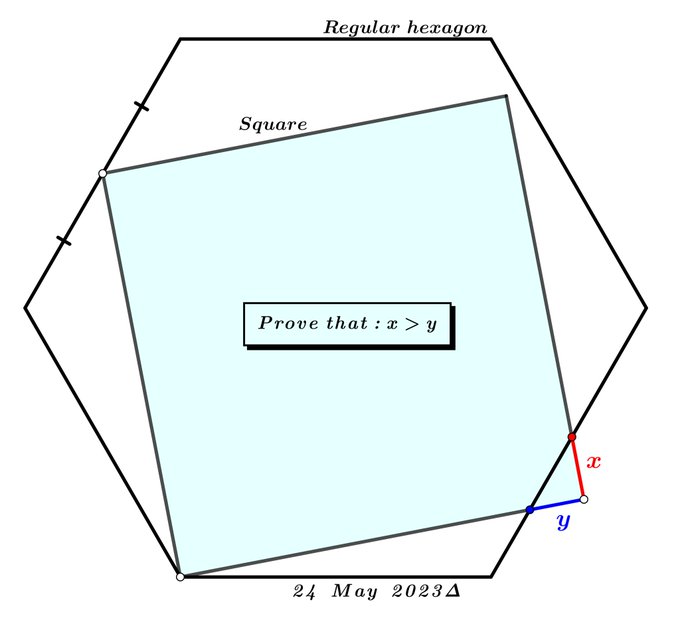


 (1) Images of the day: [Top row] On this US Memorial Day, we honor the memory of those who fell to protect our freedom: Kissing and hugging the flag and wrapping our misguided policies in it are cheap. Doing something for our veterans, including protecting them from predatory private colleges that mislead them and milk their educational benefits would be priceless. [Middle left & center] A verse in Quran and its English translation: An example of how religions say the simplest things in the most complicated way (and this feature isn't unique to Islam). Here, Quran apparently wants to tell you that "people are liars, so don't argue with them." [Middle right] Math puzzle: In this diagram, featuring a regular hexagon and a square, prove x > y. [Bottom row] I Madonnari Italian Street-Painting Festival, held this long weekend at Santa Barbara Mission (sample musical entertainment, 2-minute video; Festival overview, 4-minute video).
(1) Images of the day: [Top row] On this US Memorial Day, we honor the memory of those who fell to protect our freedom: Kissing and hugging the flag and wrapping our misguided policies in it are cheap. Doing something for our veterans, including protecting them from predatory private colleges that mislead them and milk their educational benefits would be priceless. [Middle left & center] A verse in Quran and its English translation: An example of how religions say the simplest things in the most complicated way (and this feature isn't unique to Islam). Here, Quran apparently wants to tell you that "people are liars, so don't argue with them." [Middle right] Math puzzle: In this diagram, featuring a regular hexagon and a square, prove x > y. [Bottom row] I Madonnari Italian Street-Painting Festival, held this long weekend at Santa Barbara Mission (sample musical entertainment, 2-minute video; Festival overview, 4-minute video).
(2) One-liners: Brief news headlines, happenings, memes, and other items of general interest.
- Each American owes ~$100,000 as his/her share of the US national debt.
- There are suggestions that the US should investigate financial corruption of Khamenei's family.
- An open letter to Reza Pahlavi about his out-of-control followers committing violence against Mr. Haloo.
- Iran's presidential computer system hacked and numerous secret/top-secret documents released.
- A man paralyzed from the hips down gains the ability to walk after cutting-edge surgery.
- Jeff Kluger, author of The Sibling Effect, presents a 21-minute TEDx talk on the hidden power of siblings.
- Tom Hanks delivers a passionate Harvard graduation speech in praise of the truth.
- Having confined women to their homes, the Taliban set their sights on getting rid of evil street musicians.
- A stroll in Tehran's Artists Park: Compulsory hijabs are giving way to music & dancing. [13-minute video]
- Facebook memory from May 29, 2020: The Swish Machine: A most-elaborate Rube Goldberg construction.
- Facebook memory from May 29, 2017: Photos from a memorable Parhami Family Reunion.
- Facebook memory from May 29, 2012: My daughter being honored at her high school's Awards Assembly.
(3) Angelina Jolie and her role as a secret agent to steal and manipulate Iranians' genes: One of the many conspiracy theories advanced by Iran's Islamic leaders. [Video, narrated in Persian]
(4) Quote of the day: "There is ... no need for silence, no room for fear. We speak, we write, we do language. That is how civilizations heal." ~ Toni Morrison
(5) Unprecedented: A number of Basijis, who are filtered in several stages, before being taken to meet Iran's Khamenei, complain to him about lack of transparency and ignoring people's voices. Khamenei's visitors are expected to remain quiet, except when chanting "Death to America" and "Death to Israel" in approval.
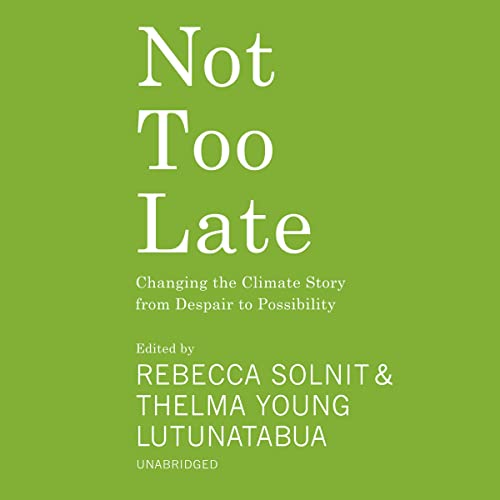

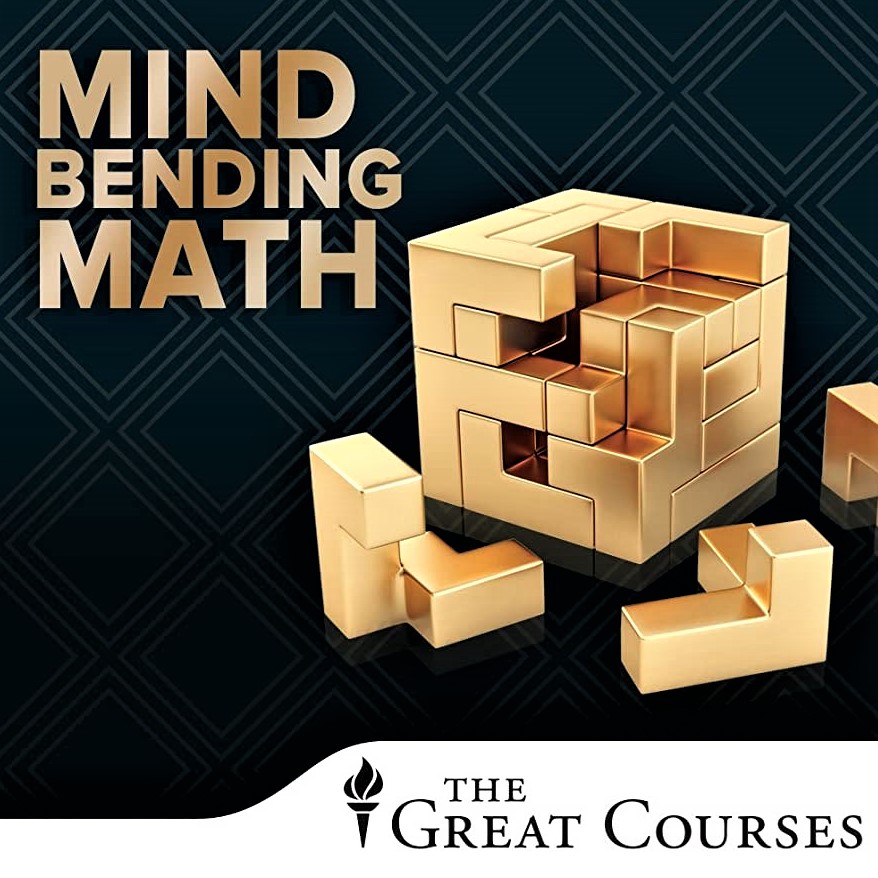
(1) Book review: Solnit, Rebecca and Thelma Young Lutunatabua (editors), Not Too Late: Changing the Climate Story from Despair to Possibility, unabridged 7-hour audiobook, read by multiple narrators, Blackstone Publishing, 2023. [My 4-star review of this book on GoodReads]
The authors, along with diverse voices from the worldwide climate movement, advise us to do our share by setting aside fear and despair. The book's many short essays are successful in conveying that collectively, we can counteract institutional inertia, the fossil fuel industry's determined opposition, and political inflexibility, if we just avoid being frozen by obstacles and the immensity of the problem. This Web page contains a list of resources for those who want to get ideas about how they can make a difference.
I look forward to Rebecca Solnit's June 2, 2023, book talk at UCSB's Corwin Pavilion, in conversation with Dr. Leah Stokes, UCSB's Anton Vonk Associate Professor of Environmental Politics.
(2) Book review: Dern, Laura and Diane Ladd, Honey, Baby, Mine: A Mother and Daughter Talk Life and Love (and Banana Pudding), unabridged 8-hour audiobook, read by the authors, Hachette Audio, 2023.
[My 4-star review of this book on GoodReads]
An actor mother-and-daughter reveal their intimate conversations about life and love, when the mother (Diane Ladd; "Alice Doesn't Live Here Anymore," "Ghosts of Mississippi," "Primary Colors," "Chinatown") was diagnosed with a serious illness and the daughter (Laura Dern; "Big Little Lies," "Little Women," "Twin Peaks," "Jurassic Park," "Inland Empire") decided that she should accompany her mother on doctor-prescribed walks.
Their revelatory heart-to-hearts broke down traditional barriers between mother & daughter and became the basis of this joint memoir, composed of alternating short chapters by the authors, accompanied by many photographs, family recipes, and other mementos. Reese Witherspoon, another of my favorite performers, wrote and reads the book's foreword.
Both actors are among my favorite performers, so I looked up their filmographies, which I share with you below. Among their accomplishments is both having been nominated for acting Academy Awards for the same film, "Rambling Rose," a first in Oscars' history.
Laura Dern's performances in 49 films/shows ranked.
Diane Ladd's 120+ film/TV roles catalogued.
Ladd & Dern do a lot of name-dropping, which may be quite satisfying for movies fans among their readers, but that's not the main message one takes away from this remarkable book. First is the influence of grandma Mary, who helped raise Dern when Ladd divorced Dern's father, the actor Bruce Dern. Ladd apparently felt unfairly burdened by having to support both her daughter and her mother. Dern often resented being left with her grandmother, as her mom went to work.
Raw emotions emerge when mother and daughter recall significant events in their lives somewhat differently, like the time when Ladd slapped Dern in the kitchen of their home or when Ladd took Dern's young son for a significant haircut without her permission. But, by far, the greatest pain revealed in this book is a loss Ladd experienced as a young mother, when her first child with Bruce Dern, a 1.5-year-old daughter, drowned and the marriage also fell apart as a result.
(3) Course review: Kung, David, Mind-Bending Math: Riddles and Paradoxes, 24 lectures in the "Great Courses" series, Course Number 1466, undated. [My 4-star review of this course on GoodReads]
In two-dozen lectures, averaging ~30 minutes each, Dr. David Kung (Professor, St. Mary's College of Maryland) presents a number of fascinating topics in mathematics, including some of the most-enduring riddles/puzzles and paradoxes:
The liar's paradox (in Lecture 1, "Everything in This Lecture Is False")
The Monty Hall Problem (in Lecture 3, "Probability Paradoxes")
Zeno's argument on the impossibility of motion (in Lecture 5)
The infinity conundrum, which wasn't resolved until the 1900s (in Lectures 6 & 7)
Godel's demonstration that mathematical consistency is a mirage (Lecture 10)
Arrow's Nobel-worthy theorem (in Lecture 11, "Voting Paradoxes")
The prisoner's dilemma (in Lecture 13, "Games with Strange Loops")
The disappearing shapes (in Lecture 17, "Bending Space and Time")
The amazing Banach-Tarski's 1 + 1 = 1 (Lecture 23)
The course aptly ends with Lecture 24, entitled "The Paradox of Paradoxes" entailing three key questions (copied here from the course's on-line description):
Why are we so obsessed with puzzles and paradoxes?
Why do we relish the mental dismay that comes with contemplating a paradox?
Why do we expend so much effort trying to solve conundrums and riddles?
Professor Kung shows that there is method to this madness!

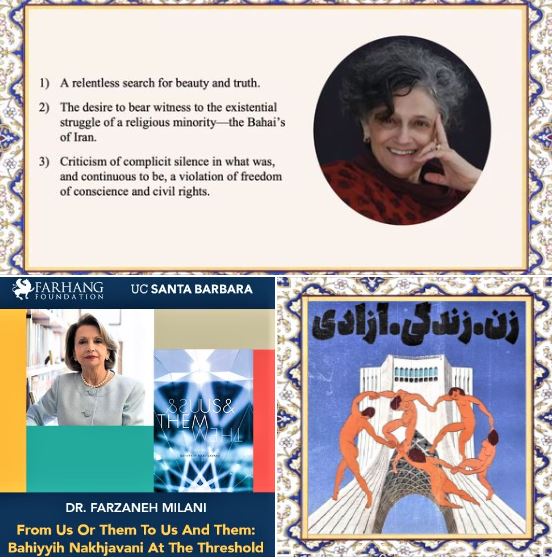
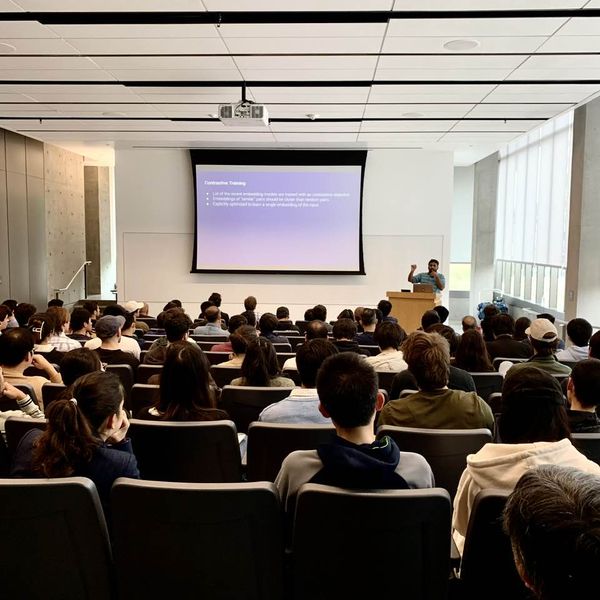 (1) Images of the day: [Left] Isfahan-born model Mahlagha Jaberi wears a noose necklace to protest executions in Iran. [Center] Today's talk by Dr. Farzaneh Milani (see the next item below). [Right] Friday's talk at UCSB by an expert from OpenAI (see the last item below).
(1) Images of the day: [Left] Isfahan-born model Mahlagha Jaberi wears a noose necklace to protest executions in Iran. [Center] Today's talk by Dr. Farzaneh Milani (see the next item below). [Right] Friday's talk at UCSB by an expert from OpenAI (see the last item below).
(2) "From Us or Them to Us and Them: Bahiyyih Nakhjavani at the Threshold": This was the title of today's fascinating talk by Dr. Farzaneh Milani (U. Virginia), presented under the auspices of Farhang Foundation and UCSB's Iranian Studies Initiative. Dr. Janet Afary introduced the speaker for this academic year's final event in the series.
The talk consisted of two interconnected sections.
- The definition and significance of thresholds in the poetic and Narratological architecture of Iranian women's literary tradition
- The life and work of Bahiyyih Nakhjavani—an epitome of threshold poetics
Bahiyyih Nakhjavani, was born in Iran, grew up in Uganda, and was educated at a boarding school in Wales and at U. Mass. She is a prolific author of fiction, non-fiction, and children's books and is active in many other social & literary projects. One of Nakhjavani's most-significant books, The Woman Who Read Too Much: A Novel, is inspired by the life of the brilliant feminist/poet Tahirih Qurrat al-Ayn, who was put to death on false accusations at age 46. Quite a few other Iranian feminist thinkers died or were killed at relatively young ages. In contrast, many prominent US leaders died in their late-80s, offering many years of support and service to women's causes.
In a Q&A comment, I thanked Dr. Milani for a fascinating talk and offered the hope that a feminist Iranian writer is awarded the Nobel Prize in Literature. Such an honor is certainly overdue and will help immensely in the promotion of women's rights in Iran.
The full video recording of this talk will be forthcoming in a few days.
(3) One-liners: Brief news headlines, happenings, memes, and other items of general interest.
- Islamic Center of England, effectively the UK office for Iran's Islamic regime, has been shut down.
- Remember "alternative facts"? Ron DeSantis is talking about "alternative accreditation" for school curricula!
- CheatGPT? There's an arms race on campus, and professors may be the losers.
- Tesla re-launches the "Long Range" version of its Model 3 with an official EPA range-rating of 333 miles.
(4) "Embeddings and Retrieval Augmented Generation": This was the title of yesterday's talk by Dr. Arvind Neelakantan (OpenAI Research Lead and Manager, deep learning for real-world applications) at UCSB's Institute for Energy Efficiency, delivered to a full auditorium. The event was sponsored by the Center for Responsible Machine Learning and the Mellichamp Initiative in Mind and Machine Intelligence.
An embedding is a relatively low-dimensional space into which one can translate high-dimensional vectors. Embeddings make it easier to do machine learning on large inputs like sparse vectors representing words. Ideally, an embedding captures some of the semantics of the input by placing semantically similar inputs close together in the embedding space. An embedding can be learned and reused across models.
After introductory remarks, a very brief history of embeddings in the last decade (task-specific, general-purpose text, code, image), Dr. Neelakantan discussed OpenAI's work on embeddings that are useful to perform natural language and code tasks like semantic search, clustering, topic modeling, and classification. In the latter part of his talk, Dr. Neelakantan dove deeper into the application of embeddings for retrieval-augmented generation with language models.
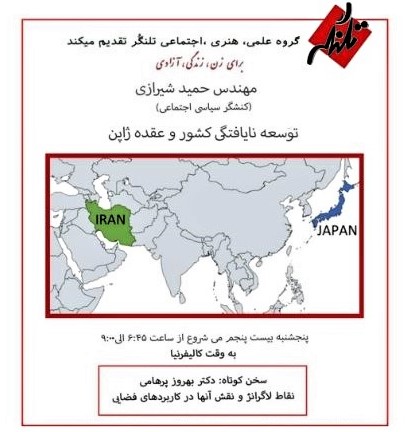

 (1) Images of the day: [Left] Talangor Group talk on Iran's underdevelopment (see the next to the last item below). [Center] My book recommendations to you, from Florida's list of banned books. [Right] Nuclear power and deep decarbonization (see the last item below).
(1) Images of the day: [Left] Talangor Group talk on Iran's underdevelopment (see the next to the last item below). [Center] My book recommendations to you, from Florida's list of banned books. [Right] Nuclear power and deep decarbonization (see the last item below).
(2) "Artificial Intelligence: The Good, the Bad, and the Ugly": This was the title of tonight's Cal Tech Watson lecture by Dr. Yaser Abu-Mostafa. ChatGPT has rocked the general public's perception and expectations of artificial intelligence (AI). In this 96-minute lecture, Dr. Abu-Mostafa explained the science of AI in plain language and explored how the scientific details illustrate the risks and benefits of AI. Between the extremes of "AI will kill us all" and "AI will solve all our problems," the science can help us identify what is realistic and what is speculative, and guide us in our planning, legislation, and investment in AI. [Recording: 96-minute video]
(3) Tonight's Talangor Group talk: Eng. Hamid Shirazi (social/political activist) talked about "Iran's Underdevelopment and Its Japan Envy." The main talk was preceded by a short presentation entitled "Lagrange Points and Their Role in Space Applications," in which Dr. Behrooz Parhami presented the main ideas and promised to elaborate in a regular presentation later. There were ~90 attendees.
Development (social, political, economic) has been a focus of discussions since the Constitutional Revolution, even though there seems to be no broadly-accepted, crisp definition of development. Political awareness among Iran's citizens rose in the wake of Russo-Iranian Wars, 1812-1828, resulting in Iran losing 260,000 km^2 of its soil (present-day Armenia, Azerbaijan, & Igdir Province of the Russian Empire), and culminating in the humiliating Treaty of Turkmenchay. These wars also sharpened our senses of freedom and justice. Unfortunately, they also helped plant the idea of religious government.
Comparison with Japan is appropriate because the two countries entered modernity at about the same time. There is no secret that Iran and Japan took diverging paths toward development. Iranian leaders, from the Shah to today's ruling mullahs, struggled with Japan envy. A key difference between the two countries during the early years of this comparison is that the Shah was an absolute ruler, whereas Japan's Emperor was a ceremonial leader, emerging to speak in public only when Japan was surrendering at the end of World War II.
Following the Russo-Iranian Wars, Iranian intellectuals formulated various "return-to-self" philosophies, many of which viewed Western progress with loathing or suspicion, views that were often accompanied by conspiracy theories. Some of these intellectuals went too far in rejecting anything non-Iranian or non-Islamic. The lack of self-confidence in dealing with technologically-advanced countries on equal footing is one of causes of Iran remaining underdeveloped.
(4) "What Is the Role of Nuclear Power in Deep Decarbonization": This was the title of today's hybrid seminar by Dr. Jessica Renee Lovering (Co-Founder & Executive Director, Good Energy Collective) at UCSB's Institute for Energy Efficiency.
Uranium's energy density is off the charts (76,000,000 joules/kg, compared with 24 for coal and 46 for gasoline). This is why nuclear energy has always been an attractive option; in the 1970s, oil crisis and air pollution were among the main reasons, while today, climate change, grid stability, and Russian gas are front & center. Nuclear waste disposal, a key reason for opposition to nuclear power, is less of a problem today, due to changes in technology.
Older nuclear-power projects were vertically-integrated, state-owned infrastructures, whereas "advanced nuclear" offers commercial products. We still need a shift in the regulatory structure, from per-project licensing to bulk licenses issued based on evaluating the soundness of designs, much as we now have for aircraft. Broad categories of advanced nuclear technology include small modular (light-water) reactors, typically < 300 MW, microreactors the size of shipping containers and adequate for a hospital or university campus, typically < 10 MW, and non-LWRs based on different fuels and coolants, which are safer and produce less waste, typically 200-600 MW.
Today, many companies around the world are developing "new" reactors, in view of the renewed sense of urgency and bipartisan support: NuScale SMR (70 MW, but deployed in 6-packs or 12-packs); Terra Power Natrium (345-500 MW; higher-enriched fuel, liquid-metal-cooled); Okio Aurora (1.5 MW, needs no water); Kairos (145 MW, salt-cooled). Countries are reconsidering their previous policies of decommissioning nuclear power plants.
The following are Dr. Lovering's most-significant and most-recent publications.
- "Historical Construction Costs of Global Nuclear Power Reactors," Energy Policy, 2016.
- "A Techno-Economic Evaluation of Microreactors for Off-Grid and Microgrid Applications," Sustainable Cities & Society, 2023.
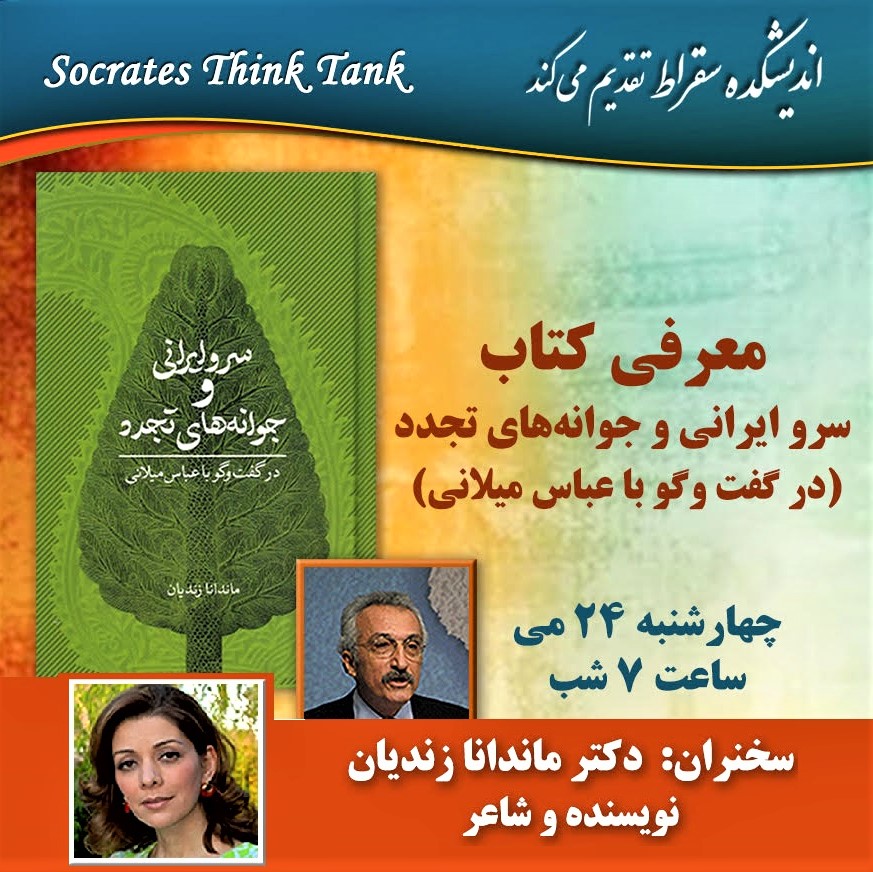

 (1) Images of the day: [Left] Socrates Think Tank talk by Dr. Mandana Zandian (see the last item below). [Center] Tina Turner, queen of rock & soul, dead at 83. RIP. [Right] I used a colorful patio table cover, bought for less than $10, and washed/refilled my little fountain to freshen up my courtyard as a nice place to relax or eat in late-spring & summer months.
(1) Images of the day: [Left] Socrates Think Tank talk by Dr. Mandana Zandian (see the last item below). [Center] Tina Turner, queen of rock & soul, dead at 83. RIP. [Right] I used a colorful patio table cover, bought for less than $10, and washed/refilled my little fountain to freshen up my courtyard as a nice place to relax or eat in late-spring & summer months.
(2) Evidence of Iran's money-laundering to circumvent sanctions through fake front-companies and their accounts in Chinese and other banks. [6-minute video]
(3) One-liners: Brief news headlines, happenings, memes, and other items of general interest.
- US Supreme Court limits EPA's authority to police water pollution in a ruling on the Clean Water Act.
- Life is unpredictable: Dr. Firouz Naderi hospitalized with a serious injury. Wishing him a quick recovery.
- Facebook memory from May 25, 2019: The problem with truncated headlines in news apps.
- Facebook memory from May 25, 2015: The 97-member-strong Fifth Annual Parhami Family Reunion.
- Facebook memory from May 25, 2011: Sources to enjoy the rubaiyat of Omar Khayyam.
(4) "Artificial Intelligence: The Good, the Bad, and the Ugly": This was the title of tonight's Cal Tech Watson lecture by Dr. Yaser Abu-Mostafa. ChatGPT has rocked the general public's perception and expectations of artificial intelligence (AI). In this 96-minute lecture, Dr. Abu-Mostafa explained the science of AI in plain language and explored how the scientific details illustrate the risks and benefits of AI. Between the extremes of "AI will kill us all" and "AI will solve all our problems," the science can help us identify what is realistic and what is speculative, and guide us in our planning, legislation, and investment in AI. [Recording: 96-minute video]
(5) Tonight's Socrates Think Tank talk: Dr. Mandana Zandian (author, poet) talked about her book, The Iranian Cedar and the Seedlings of Modernity: In Conversation with Dr. Abbas Milani (Sarv-e Irani va Javaaneh-haa-ye Tajaddod), published by Ketab Corporation. The book, presented in the form of a conversation, is Dr. Zandian's ode to her mentor Dr. Abbas Milani. There were 120 attendees.
Iranian cedar, with its long lifespan is a symbol of survival and resistance; there is now a cedar tree in the southeastern Yazd region that is 4500 years old. Boteh-jegheh (aka paisley) on fabric designs is inspired by the Iranian cedar. The book's cover image is adapted from a design at Persepolis.
Milani's writings are all centered explicitly or implicitly on the notion of modernity. Humanism, as reflected in the great Persian poet Sa'adi's writings, is another focal point. When speaking of modernity, most people focus on political modernity, whereas cultural modernity is an important prerequisite, as stated or implied by many thinkers, such as Aref Qazvini.
According to Milani, a text is like a triangle, with its three sides being the text itself, the writer (story-teller), and the reader. A "democratic text" builds citizens, because it allows each reader to interpret the narrative according to his/her personal experiences. A non-democratic text, on the other hand, conveys an inflexible meaning, as exemplified by religious or ideological writings. This is in part responsible for a reader experiencing a democratic text differently, when s/he reads it repeatedly at different ages and brings to it different mixes of knowledge and life experiences.
One idea that was new to me is Dr. Milani's preference for "kherad-e masnooee" rather than "hoosh-e masnooee" as the Persian term for "artificial intelligence." I don't quite understand why "kherad" (which has the English equivalent "wisdom") is the right term to use in this context.
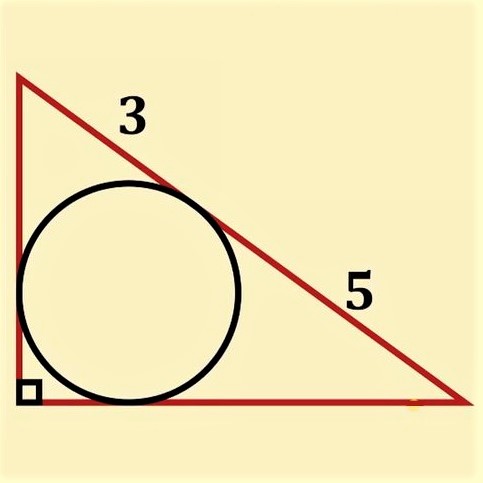
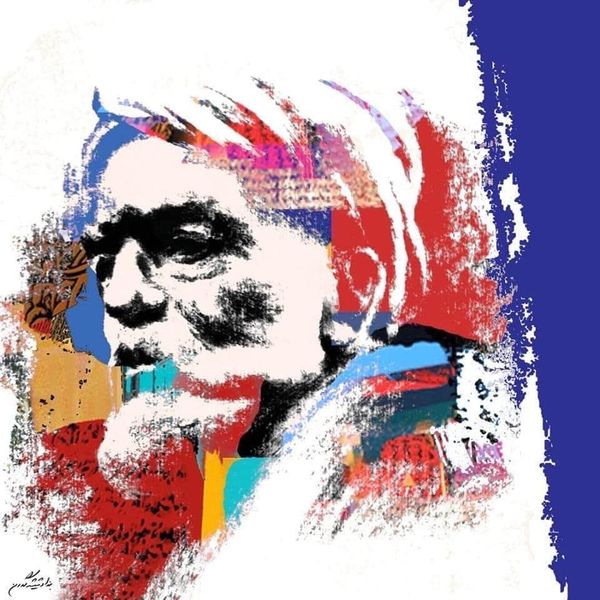
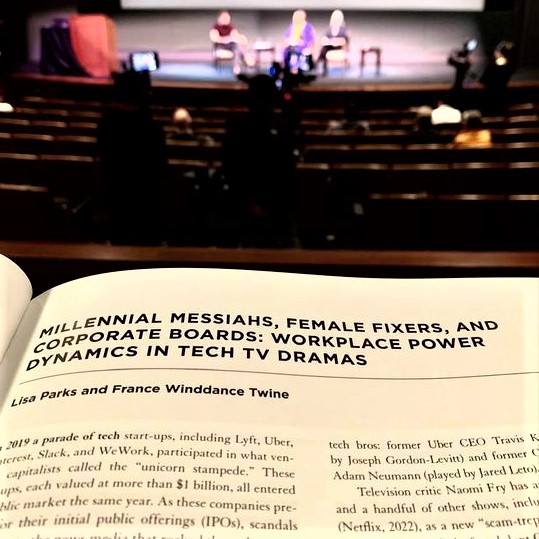 (1) Images of the day: [Left] Math puzzle: Find the area of the right-angled triangle. [Center] An abstract painting of the great Persian poet Ferdowsi. [Right] Discussion on big-tech TV (see the last item below).
(1) Images of the day: [Left] Math puzzle: Find the area of the right-angled triangle. [Center] An abstract painting of the great Persian poet Ferdowsi. [Right] Discussion on big-tech TV (see the last item below).
(2) Santa Barbara's 37th Annual I Madonnari Italian Street-Painting Festival: Held each year during the Memorial-Day weekend, the Festival brings artists of all ages together for producing impressive chalk paintings on the pavement around the Old Mission.
(3) Miami Hotel/cabaret (history): Located in north Tehran, the joint was a hub of music and other entertainment shows, first by invited international artists, and later by top Iranian performers, such as Googoosh, Dariush, and Haideh in pre-Islamic-Revolution Iran. [11-minute video]
(4) One-liners: Brief news headlines, happenings, memes, and other items of general interest.
- Illinois report asserts that 1900+ were sexually assaulted by the Catholic ministry over seven decades.
- Two children were swept away by raging water in a Central California river: One's dead, the other's missing.
- Santa Barbara man dies in single-truck wreck at the Fairview Ave. US 101 on-ramp in Goleta.
- Persian music: Old-time singer Parvin, 84, honored by friends at a private ceremony. [1-minute video]
- Persian music: Many years ago, "Morning Greetings" began Tehran Radio's morning programming.
- Facebook memory from May 23, 2015: Today is the 9th anniversary of the mass shooting in Isla Vista.
- Facebook memory from May 23, 2010: A verse from a wonderful Persian love poem.
(5) The notion of time in tech systems: "Just as the digital world has played a pivotal role in how we perceive the passage of time, ... the concept of time has a direct bearing on the design of digital things. This manifests itself in modern software and data systems where instantaneous state changes are commonplace. There are, however, some significant developments that greatly enhance software time management."
(6) Cinema Under the Stars: This year's "Summer Cinema" screenings at Santa Barbara Courthouse Sunken Garden (Fridays, 8:30 PM; no screening on Aug. 4, due to Fiesta) bears the theme "Out of This World."
July 07, Close Encounters of the Third Kind;
July 14, Alien;
July 21, Mars Attacks!;
July 28, The Fifth Element;
Aug. 11, Star Trek;
Aug. 18, Guardians of the Galaxy;
Aug. 25, Nope
(7) "Big Tech TV and the Politics of Gender, Race, and Class in Silicon Valley": This was the title of tonight's discussion at UCSB's Pollock Theater, in which Dr. France Winddance Twine (Sociology, UCSB) and Dr. Lisa Parks (Film and Media, UCSB), in conversation with Marc Francis (Assistant Editor, Film Quarterly), examined the ways big-tech TV shows such as "WeCrashed" (starring Jared Leto and Anne Hathaway) and "Super Pumped" (starring Joseph Gordon-Levitt and Uma Thurman) represent power dynamics in Silicon Valley workplaces.
Presented in collaboration with UC Press journal Film Quarterly, this timely event built upon an article that Parks and Twine published in the spring 2023 issue of the journal.
Tonight's discussion topics included structural inequalities in the workplace, the myth of corporate self-regulation, and the culture of CEO worship in Silicon Valley. Trailers and opening sequences of several episodes of the two series were screened. They showed that whereas women do get in on occasion, they are quickly pushed out by the toxically masculine cultures of such workplaces. Women are advised to keep quiet, which they often do, especially when an IPO and the opportunity to cash out is imminent.

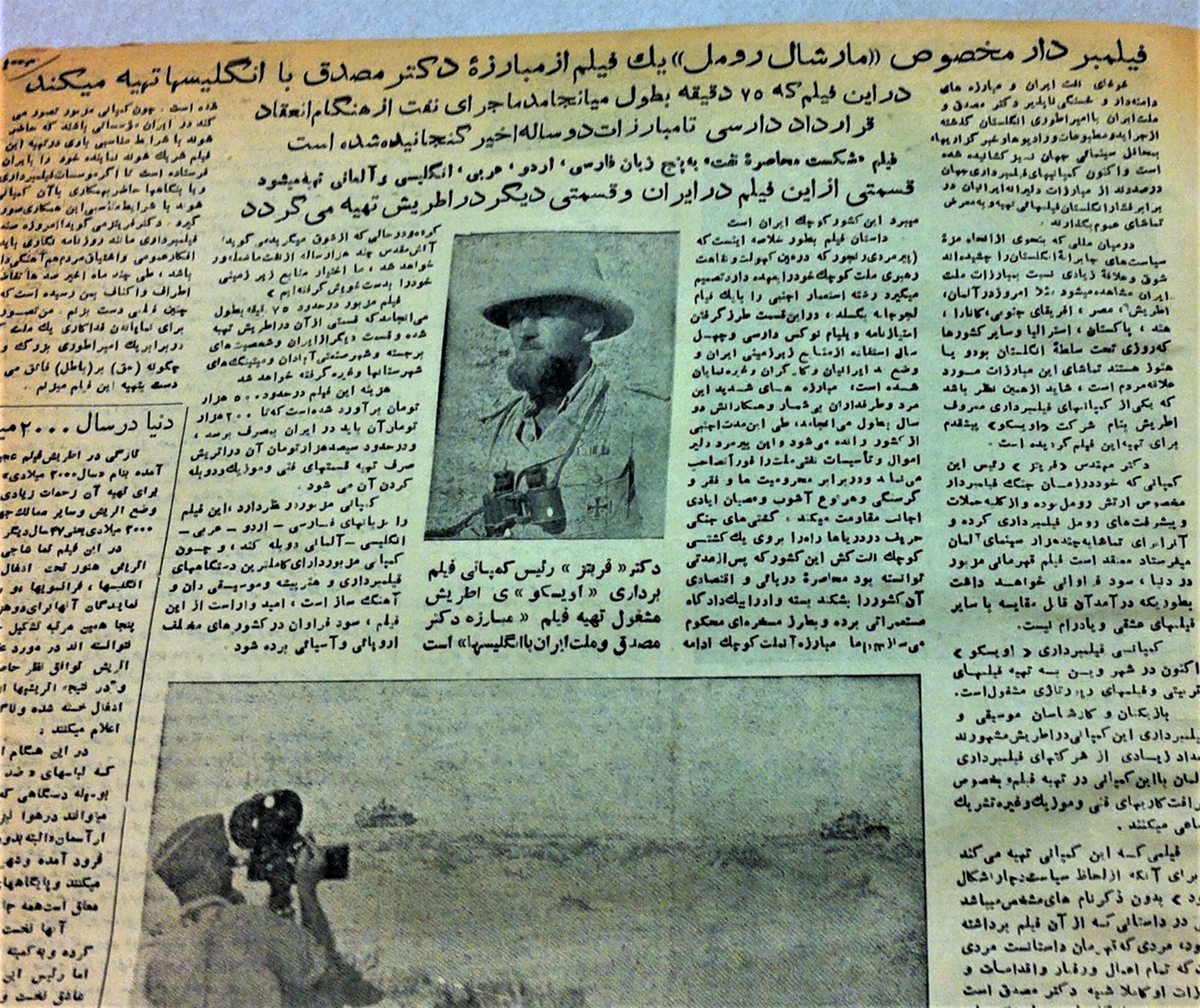
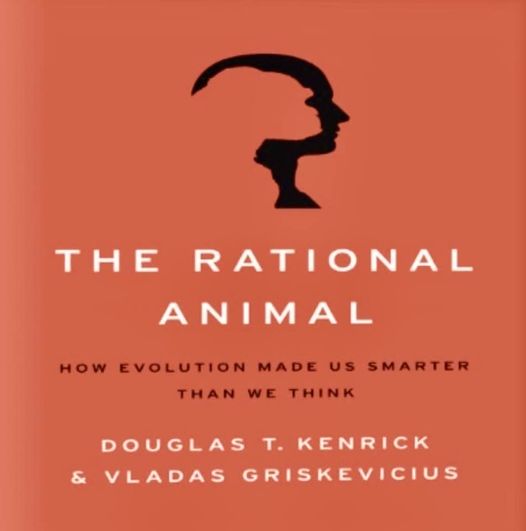


 (1) Images of the day: [Top left] Shushtar: With its historic aqueducts and canals, the city in Iran's southwestern Khuzestan Province has 13 UNESCO World Heritage Sites to its name. [Top center] Iran's modern history: Newspaper article, reporting on a planned film project of Marshall Erwin Rommel's private photographer, covering Iran's oil challenges, from the D'Arcy Concession to Mossadeq's efforts. [Top right] The Rational Animal (see the last item below). [Bottom row] Beautiful architectures.
(1) Images of the day: [Top left] Shushtar: With its historic aqueducts and canals, the city in Iran's southwestern Khuzestan Province has 13 UNESCO World Heritage Sites to its name. [Top center] Iran's modern history: Newspaper article, reporting on a planned film project of Marshall Erwin Rommel's private photographer, covering Iran's oil challenges, from the D'Arcy Concession to Mossadeq's efforts. [Top right] The Rational Animal (see the last item below). [Bottom row] Beautiful architectures.
(2) One-liners: Brief news headlines, happenings, memes, and other items of general interest.
- G7 leaders call for international standards to govern the development of generative AI.
- A German MP considers EU's Iran policy in the face of 220 executions this year "shameful."
- The "pro-life" former US President. [4-minute video]
- I got to choose my fortune a few days ago, when I dined with my son, but he didn't want his fortune cookie.
(3) Book review: Kenrick, Douglas T. and Vladas Griskevicius, The Rational Animal: How Evolution Made Us Smarter than We Think, unabridged 9-hour audiobook, read by Tim Andres Pabon, Gildan Media, 2013.
[My 5-star review of this book on GoodReads: https://www.goodreads.com/review/show/5532937049]
Many books in the realm of behavioral economics and neuroeconomics have discussed human decision-making. The old assumption in the field of economics that humans are rational actors has fallen out of favor, having been replaced with the more-nuanced choice theory. Here are three books whose subject matters overlap with the current book, along with links to my reviews of them.
Algorithms to Live By (Christian & Griffiths): My review
Predictably Irrational (Dan Ariely): My review
The Upside of Irrationality (Dan Ariely): My review
Unlike the last two books, which try to explain why we may act irrationally, the current book redefines rational decision-making in terms of evolutionary wisdom, even when the outcomes seem erratic.
Kenrick, Professor of Psychology at Arizona State University, and Griskevicius, Professor of Marketing at University of Minnesota, present a compelling account of our decision-making as a rational process, driven by sometimes-conflicting evolutionary forces, even though the result may at times appear irrational. Kenrick & Griskevicius explain that even though our choices aren't always consistent, we now understand that we follow quite rational criteria wired into our brains by evolution.
Sandwiched between introduction (Cadillacs, Communists, & Pink Bubble Gums) and conclusion (Mementos from Our Tour) are the following nine chapters that elaborate upon our sub-selves, defined in Chapter 2.
Chapter 1. Rationality, Irrationality, and the Dead Kennedys
Chapter 2. The Seven Sub-Selves
Chapter 3. Home Economics vs. Wall Street Economics
Chapter 4. Smoke Detectors in the Mind
Chapter 5. Modern Cavemen
Chapter 6. Living Fast and Dying Young
Chapter 7. Gold Porsches and Green Peacocks
Chapter 8. Sexual Economics: His and Hers
Chapter 9. Deep Rationality Parasites
The heart of the book is Chapter 2, listing and briefly describing our seven sub-selves. We are told, for example, that Dr. Martin Luther King Jr. suffered from multiple-personality disorder; we all do. We make different choices, depending on which of our seven selves is running the show at any particular moment. The assumption that we have stable preferences (thus businesses marketing to our perceived profile) is misguided. Each of us is an amalgam of multiple selves, with different behaviors. A restaurant may emphasize its uniqueness or its popularity in different ads. If you watch a scary film, the ad focusing on popularity tends to be more effective. You want to go with the crowd, rather than stand out, in this context.
Our seven sub-selves are in charge of managing the seven goals wired into us by evolution:
*Self-protection sub-self (personal or national defense)
*Disease-avoidance sub-self (a source of xenophobia)
*Affiliation sub-self (forming friendships and alliances)
*Status sub-self (our inner go-getter)
*Mate-acquisition sub-self (our inner swinging single)
*Mate-retention sub-self (getting along, to raise our kids)
*Kin-care sub-self (caring for family and humankind)





 (1) Saturday at California Strawberry Festival, Ventura County Fairgrounds, followed by walking along Main Street: I arrived at Festival gates about an hour before its opening time, given the train schedule from Goleta. Before going to the Festival, I walked along the beach, watching hordes of surfers and joggers. Parts of the bike path at this Ventura beach have been washed away (Photos). I placed a memorial rock for my mom at Haole's Memorial Rock Garden (more photos). A most-interesting art exhibit at the Festival contained a number of wonderful celebrity portraits by the Thousand-Oaks-based artist Gary Saderup. Strolling along Main Street after a late lunch, I took some photos in front of a number of intereting shops and at the Heart of Ventura, near City Hall (more photos). I also snapped photos of the Ventura Mission and its Gift Shop.
(1) Saturday at California Strawberry Festival, Ventura County Fairgrounds, followed by walking along Main Street: I arrived at Festival gates about an hour before its opening time, given the train schedule from Goleta. Before going to the Festival, I walked along the beach, watching hordes of surfers and joggers. Parts of the bike path at this Ventura beach have been washed away (Photos). I placed a memorial rock for my mom at Haole's Memorial Rock Garden (more photos). A most-interesting art exhibit at the Festival contained a number of wonderful celebrity portraits by the Thousand-Oaks-based artist Gary Saderup. Strolling along Main Street after a late lunch, I took some photos in front of a number of intereting shops and at the Heart of Ventura, near City Hall (more photos). I also snapped photos of the Ventura Mission and its Gift Shop.
(2) UC Berkeley to open a College of Computing, Data Science, and Society: The new College will provide a free curriculum to expand data science to institutions everywhere.
(3) Natural stupidity (NS) adds to concerns about AI: A Texas professor accused his students of cheating and withheld their grades just before graduation, because ChatGPT claimed it wrote the work they had submitted.
(4) Diophantine equations, Part 2: One of the marvels of math, these are equations with multiple non-zero, positive, integer-valued variables. The most famous one is x^n + y^n = z^n, which is known to have no solution, except for n < 3 (Fermat's Last Theorem). Here is another fascinating Diophantine equation, purportedly posed by Douglas Hofstadter at an informal meeting of a group of mathematicians: a/(b + c) + b/(c + a) + c/(a + b) = 4. Be warned that the smallest solutions are 80-digit numbers. If you replace 4 with 178, the smallest solution will have ~400M digits. [Read more]
(5) The Microarchitecture of DOJO, Tesla's Exa-Scale Computer: Designed by Tesla for its internal workloads, the architecture can be used for any machine-learning workload, all the way to the exa-scale level.
[Article]
(6) Las Cafeteras at Marjorie Luke Theater (SBJH Campus): Tonight's enjoyable concert, sponsored by UCSB Arts & Lectures, featured Afro-Mexican rhythms, electronic beats, and powerful rhymes that document community stories.
[Video 1 (a love song)]
[Video 2]
[Video 3]
[Video 4]
[Video 5 ("La Bamba")]
(7) Composer/Conductor Arash Fouladvand, Paris-South Symphony Orchestra, and Bahar Choir perform "Aan Yaar Mi-Aayad," based on a Mowlav/Rumi poem. [8-minute video]
(8) Risks of not getting enough sleep: Being awake for 17 hours is comparable to having a blood alcohol level of 0.05%, not far from the impaired level of 0.08% in the US. Going without sleep for 24 hours is similar to a blood alcohol level of 0.10%.
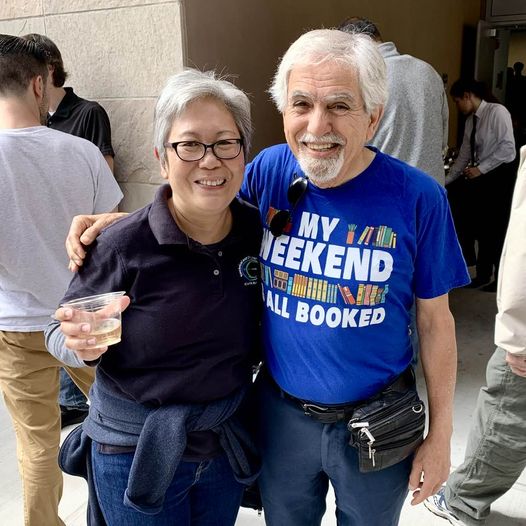
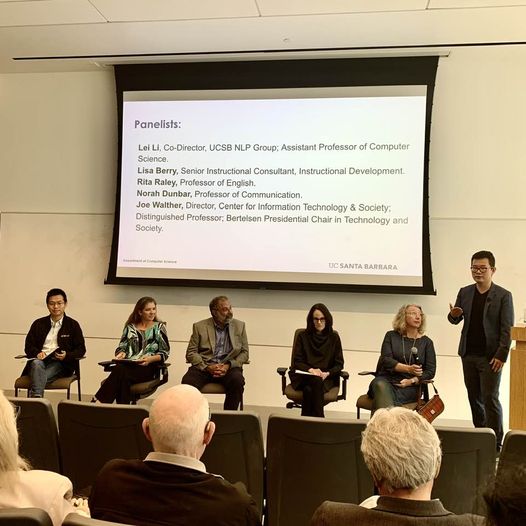
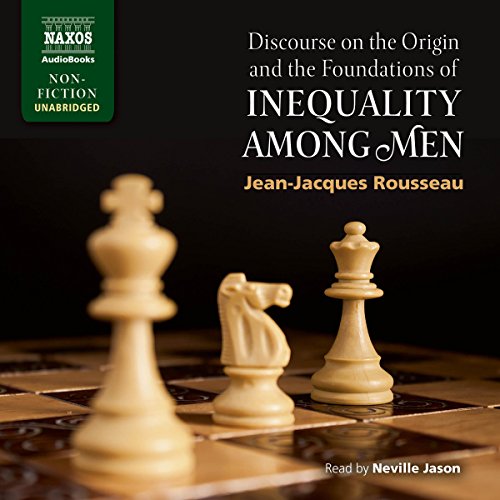 (1) Images of the day: [Left] Retirement party for a long-time UCSB colleague: Val De Veyra is retiring after 36 years at UCSB (last 25 with the ECE Department). Her encyclopedic knowledge of university regulations and her problem-solving skills will be hard to replace. She managed ECE's Student Affairs Office at the time of retirement. [Center] Today's panel discussion on CharGPT (see the next item below). [Right] Jean-Jacques Rousseau's Discourse on the Origin and the Foundations of Inequality Among Men (see the last item below).
(1) Images of the day: [Left] Retirement party for a long-time UCSB colleague: Val De Veyra is retiring after 36 years at UCSB (last 25 with the ECE Department). Her encyclopedic knowledge of university regulations and her problem-solving skills will be hard to replace. She managed ECE's Student Affairs Office at the time of retirement. [Center] Today's panel discussion on CharGPT (see the next item below). [Right] Jean-Jacques Rousseau's Discourse on the Origin and the Foundations of Inequality Among Men (see the last item below).
(2) "Unraveling the Secrets of ChatGPT": This was the title of today's "Panel for Scholars and Educators" held at UCSB's Henley Hall, Room 1010.
Executive Vice Chancellor David Marshall made brief welcoming remarks. He began with an observation that the metaphor often used for the current situation in AI research and its attendant potential dangers is "arms race," which invokes the panic we experienced during the US-Soviet nuclear arms race. He stressed the need for an academic-based response, appealing to academic integrity and pedagogy, rather than a fear-based reaction.
Next, Dr. William Wang, Mellichamp Professor of AI and Co-Director of UCSB's NLP Group, provided some background about ChatGPT, introduced by the company Open AI, and similar systems from other tech companies. He discussed both the strengths and weaknesses of the technology, emphasizing that any /ML system, including those based on large language models, is as good as the data used on its training. He suggested that we should deal with any such technology responsibly and ethically. Discussion in this important area will continue with an in-person lecture by Open AI's tech lead & manager next Friday at noon.
The next part of the program was a panel discussion, with the following participants:
- Dr. Lei Li, Assistant Professor of Computer Science and Co-Director of UCSB's NLP Group
- Dr. Lisa Berry, Senior Instructional Consultant with UCSB's Office of Instructional Development
- Dr. Rita Raley, UCSB Professor of English
- Dr. Norah Dunbar, UCSB Professor of Communication
- Dr. Joe Walther, Director of UCSB Center for Information Technology & Society
A Q&A session ended the event, which was live-streamed (4:52 mark of this 111-minute video).
(3) German-Iranian journalist Golineh Atai honored with major award for her book Freedom in Iran is Female. [News story, in English] [4-minute video, narrated in Persian]
(4) Book review: Rousseau, Jean-Jacques (translated by Ian Johnston), Discourse on the Origin and the Foundations of Inequality Among Men, unabridged 6-hour audiobook, read by Neville Jason, Naxos AudioBooks, 2015. [My 4-star review of this book on GoodReads]
Author/philosopher/composer Jean-Jacques Rousseau [1712-1778] was an influential figure in Europe during the Enlightenment. Rousseau's works have been translated into English and published under various titles such as Basic Political Writings (1987), Collected Writings (13 vols., 1990-2010), The Confessions (2000), On the Origins of Language (1986), 'The Social Contract' and Other Later Political Writings (1997), and Rousseau on Women, Love, and Family (2009).
In this book, a powerful critique of modernity, Rousseau sets out to demonstrate how the spread of civilization upends man's natural happiness and curtails his freedom by creating artificial inequalities in wealth, power, and social privilege. Human beings were more equal in primitive societies. As societies grew in sophistication, someone who was stronger and more-intelligent gained an advantage over weaker individuals. Thus, inequality arising from moral or political causes is significantly greater and more-dangerous than inequality due to natural or physical differences.
Rousseau's social and political arguments in this Discourse were revolutionary and quite influential in his time. He observed that laws aiming to rectify these imbalances in power and privilege tend to perpetuate them. Rousseau opines that the birth of private property was the "beginning of evil." Later, he wrote The Social Contract, famous for the phrase "man is born free, but he is everywhere in chains," to study how freedom may be possible in civil society. His writings got him in trouble with religious and ruling authorities, making him a fugitive in later stages of his life.
This is Rousseau's second discourse, the first one having addressed the arts and sciences. Both discourses were produced for submission to writing competitions. The first one did well, received the top prize, and is in part responsible for Rousseau's rise to fame. The second one didn't fare so well, but it is viewed as an important book that lays out the foundations of social sciences.
I have seen other readers complain about the translation quality, but I found it more than acceptable. Perhaps, such an important book should be read in the original French language, but this luxury wasn't available to me. Rousseau's own notes appear at the end of the volume; he recommends that the readers should ignore those notes in a first reading. Translator's notes appear as footnotes.



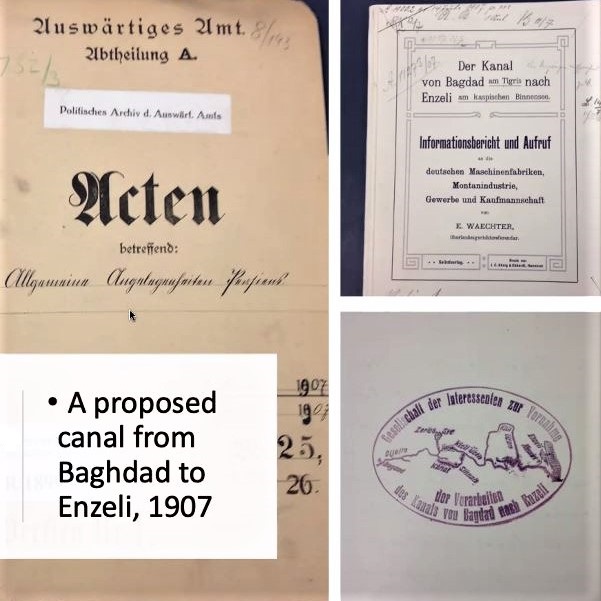

 (1) Images of the day: [Top row] Reveling in the extreme beauty of wildflowers, sunsets, and nature of our precious Earth. [Bottom row] Talk on the German Foreign Office's Iran Archive (see the last item below).
(1) Images of the day: [Top row] Reveling in the extreme beauty of wildflowers, sunsets, and nature of our precious Earth. [Bottom row] Talk on the German Foreign Office's Iran Archive (see the last item below).
(2) Diophantine equations: One of the marvels of math, these are equations with multiple non-zero, positive, integer-valued variables. The most famous one is x^n + y^n = z^n, which is known to have no solution, except for n < 3 (Fermat's Last Theorem). Here is another fascinating Diophantine equation, an instance of Pell's Equation: x^2 – 61 y^2 = 1. Don't try to solve it without computational help, as the smallest set of answers are 10- and 9-digit numbers!
(3) One-liners: Brief news headlines, happenings, memes, and other items of general interest.
- Disney cancels $1 billion development in Florida as a result of its feud with Gov. DeSantis.
- Iran executes three more street protesters, despite broad international calls to stop the executions.
- College graduates are leaving large coastal cities in droves, mainly because of unaffordable housing.
- Iranian cuisine: Street kabobs in the Caspian-Sea region.
(4) "Presence and Silence: The Iran Archives in the German Foreign Office": This was the title of a fascinating talk by Dr. Jennifer Jenkins (U. Toronto), as part of the U. Toronto series, "Rethinking History: Returning to Archives and Documents." Much of what was discussed today will appear in Dr. Jankins' forthcoming book, The Persian Question: Germany, Iran and the Near East in the Age of Empire, 1857-1914. The meeting with ~100 attendees was convened by Arezou Azad & Mohamad Tavakoli.
The German Foreign Office in Berlin possesses an enormous archive on Iran, which can help shed light on modern Iranian history. Dr. Jenkins came across these archives when she began working many years ago on German orientalism. Years of research and several grants later, an 85-page, single-spaced index of the enormous archive was generated. The archive came as a surprise, given the relative dearth of information about the German-Persia relations in the secondary historical literature. This voluminous archive makes the point that Germany can no longer be left out from the histories of Iran's modern transformation.
Dr. Jenkins introduced this archive (its size, scope, and the many topics it covers), speaking to how Iran's modern history can be rethought in the light of these documents. We see in the archive's documents that German officials criticized the workings of the British in Iran as well as the Russian influence-peddling in the northern part of the country. These inter-imperial tensions is a key reason why the archive is so massive.
Germany's relationship to Iran, forged during the Constitutional Revolution and the signing of the Anglo-Russian Convention of 1907, played forward into the period of the First World War and Reza Shah's modernization of Iran. The documents show that Germany positioned itself as a suitable partner for Iranian nationalists and modernizers, transforming regional power relationships in the process. Germans deemed the nationalist's agenda as part of a legitimate sociopolitical movement, in contrast to the British view of it as anarchy. As for Russia, it was viewed by German diplomats as "the enemy of liberty."
German officials looked at Iran as a major unexplored opportunity and put a lot of emphasis on solutions to poverty & corruption and the need for modernization. Strong ties were forged between Germans and Iranian nationalists during the Constitutional Revolution of the early 1900s. German involvement was particularly broad in the efforts to establish a modern financial system and a national bank to replace the imperial bank, key demands of the nationalists.
The talk's recording will be posted on the Elahe Omidyar Institute's Web site within a couple of weeks.
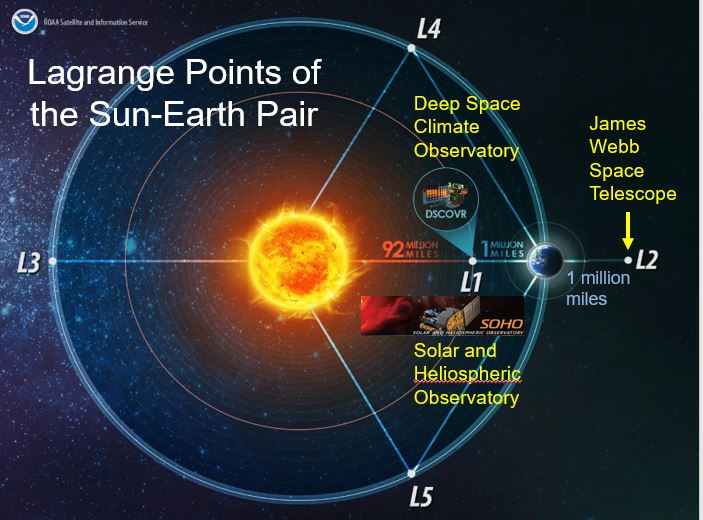




 (1) Images of the day: [Top row] IEEE CCS tech talk by Dr. Behrooz Parhami (see the next item below). [Bottom left] The Mueller Report (see the last item below). [Bottom center & right] My attempt to replicate a dish my mom used to make from chicken livers/hearts and potatoes. I did not quite know which spices to add, so I improvised and got a decent result. The other photo is from my cooking night over the past weekend.
(1) Images of the day: [Top row] IEEE CCS tech talk by Dr. Behrooz Parhami (see the next item below). [Bottom left] The Mueller Report (see the last item below). [Bottom center & right] My attempt to replicate a dish my mom used to make from chicken livers/hearts and potatoes. I did not quite know which spices to add, so I improvised and got a decent result. The other photo is from my cooking night over the past weekend.
(2) Tonight's IEEE Central Coast Section technical talk: Dr. Behrooz Parhami (ECE, UCSB) spoke under the title "Lagrange Points and Their Significance to Space Applications."
Dr. Parhami began by stressing that the talk's subject matter is outside his areas of expertise. Having learned about Lagrange Points from a video clip by astrophysicist Neil deGrasse Tyson, he decided to pursue the topic and to share what he discovered with others.
Application of math to physics has given rise to the field of mathematical physics. Dr. Parhami introduced one problem in this domain, its solution, and a few notable applications to Earth observation, monitoring of the Sun, and space telescopes.
The problem addressed is an instance of the three-body problem, which is super-difficult to solve in general. However, when one of the bodies is much smaller than the other two, so that its gravitational pull can be neglected (e.g., a satellite, compared with the Earth and the Moon), the problem becomes tractable. For each pair of heavy objects, with one rotating around the other, there are five special Lagrange Points in space. These points were introduced and related to the applications cited above.
[Speaker's UCSB ECE page]
[IEEE CCS event page]
[IEEE CCS Technical Talks page]
(3) Book review: Mueller, Robert, et al. (introduction and commentary by reporters Rosalind S. Helderman and Matt Zapotosky), The Mueller Report, unabridged 19-hour audiobook, read by Matt Zapotosky, Rosalind S. Helderman, Marc Fisher, Sari Horwitz, Dennis Boutsikaris, Cassandra Campbell, Gibson Frazier, Robin Miles, Fred Sanders, Jayme Mattler, Vikas Adam, Joy Osmanski, Cynthia Farrell, Samantha Desz, Prentice Onayemi, and Jackie Sanders, Simon & Schuster Audio, 2019.
[My 5-star review of this book on GoodReads]
I don't know why I postponed reading this important report, with implications to the future of democracy in our country, for so long. Anyway, I am glad I finally got to the report's eye-opening findings, which had previously been lost to cries of "hoax" from one side and soundbite media coverage that glided over important details and implications from the other.
A vast majority of Americans (97% by one estimate), including members of congress and other top-level politicians, haven't read the full report, although they do not hesitate to express opinions about its conclusions at every opportunity. I think every American should read the full report, rather than rely on snippets fed to us by the media. As a matter of fact, citizens of other countries can also benefit from reading the report, given that Russia and a few other actors continue to try to influence elections and national debates around the world.
The massive report is presented in two volumes, both of which are contained in the Washington Post edition. Volume I is about Russian interference in the 2016 US election and the interactions and encouragements of Trump people regarding the interference. Volume II discusses the various ways Donald Trump tried to thwart the investigation into Russian interference as well as the many ways he tried to shield himself from investigation.
Many of the details, such as footnotes, supporting documents, timeline of events, and biographical appendices, are not read out in the audio version but are included in accompanying PDF files. There are also quite a few deleted parts, which are flagged as "redacted," followed by one of four reasons for the redaction: Secret Grand-Jury material, possible harm to ongoing matter, revealing private info on third-party individuals, or revelation of investigative methods.
Trump supporters repeatedly claim that their vote was not influenced by Russia. This is likely because they are unaware that, just on Facebook, IRA (Internet Research Agency; a cyber-arm of the Russian government) controlled hundreds of accounts, pretending to be owned by real Americans or US interest-groups, making tens of thousands of posts and reaching an estimated 100+ million Americans. The fake group names spanned the entire range of American politics and included "United Muslims of America," "Don't Shoot Us," "Being Patriotic," and "Secured Borders."
Mueller could have easily suggested, based on overwhelming evidence, that Trump committed crimes that could not be pursued while he was president but that he should be held accountable after the end of his term. Instead, he used very soft language that left room for the "no collusion, no obstruction" interpretations by Attorney General William Barr and other Trump cronies. Whereas the case for collusion with Russia might be deemed hard-to-prove, given that Trump and his campaign people may have inadvertently retweeted or otherwise spread fake IRA posts, the list of Trump actions to impede Mueller's investigation and even to have him fired leave no doubt that he was guilty of obstruction of justice.


 (1) Images of the day: [Left] Brides put on sale by Iranian match-making firms (see the next item below). [Center] Iran's Islamic regime is executing dissidents at an alarming rate: Let's put some pressure on the butchers (rally locations). [Right] A fish story (see item 3 below). [Right] Outdated poster (see item 3 below).
(1) Images of the day: [Left] Brides put on sale by Iranian match-making firms (see the next item below). [Center] Iran's Islamic regime is executing dissidents at an alarming rate: Let's put some pressure on the butchers (rally locations). [Right] A fish story (see item 3 below). [Right] Outdated poster (see item 3 below).
(2) Iran's campaign for women getting married earlier and bearing more children has gone too far: There are now government-sanctioned private match-making firms that advertise with large street banners bearing taglines such as, "We have apples, we have pomegranates, we have dignified brides." The only missing info is the bride's price per kilogram!
(3) My fish (and chips) story: I went into a local pub/restaurant and ordered fish-and-chips. The charge was $8.00. I pointed to a poster on the outside window, advertising $5.99 fish-and-chips. Shrugging it off, the server said that the sign was out of date. No apologies, no offer to honor the advertised price. Nothing. I was too hungry to make a fuss about it, so I ate my food and left. A couple of days later, I noticed that they have blanked out the price on their poster.
(4) One-liners: Brief news headlines, happenings, memes, and other items of general interest.
- Like NRA's "good guy with a gun" argument, Bill Gates claims an AI pause will only stop the good guys.
- Inspired by the success of "All in the Family," Bob Hope made "All in the West," starring John Wayne.
- Persian music: A private performance by Anoushiravan Rohani, his son Reza, & old-time singer Martik.
- Facebook memory from May 16, 2014: The world has its ups and downs, don't worry (Persian verse).
(5) UCSB's Mahsa Amini Graduate Fellowship: The Fellowship's fund has reached the $20,000 level, with the goal being $50,000. Please consider contributing to help us reach the goal and start using the funds on worthy doctoral candidates in non-STEM disciplines who have earned bachelor's degrees in Iran.
(6) "Journey to Yazdegerd Castle": A documentary film about remarkable discoveries of Dr. Edward Keall, a British-Canadian archaeologist, during visits to an ancient castle in Iran's Kermanshah Province.
(7) Do we still need universities? This question has been posed and discussed widely, ever since we emerged from the social restrictions of COVID-19. Can't we just move everything on-line, so that everyone benefits from the best and most-knowledgeable teachers and cut costs in the process? The fact that we did not do so well in meeting student needs during the pandemic should not be viewed as confirmation that on-line instruction doesn't work. We were thrown into a new situation unexpectedly and unprepared. With the experience of COVID years under our belt, we should be able to do better.


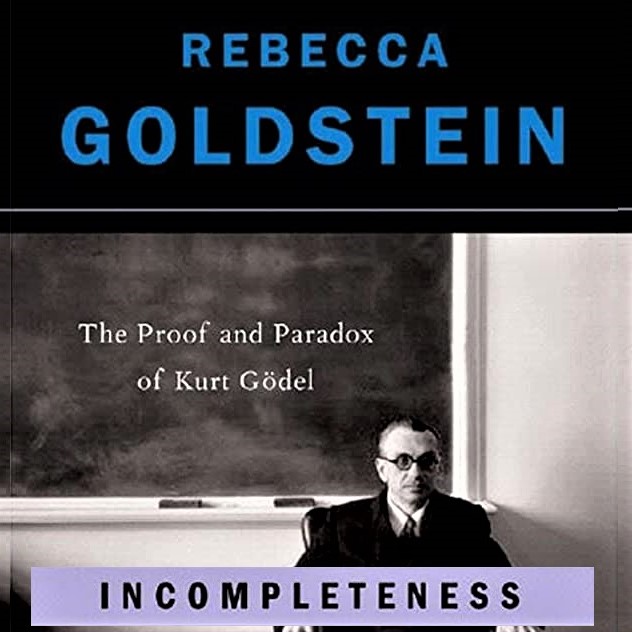


 (1) Images of the day: [Top left] Happy Mothers' Day: This is the first Mothers' Day for me without my mom, who passed away in November 2022. So, I have collected some of my previous Mothers' Day greetings and photos in this image. Miss you, mom! [Top center] This voluminous book may be an exaggeration: However, I'm sure you can find at least one thing your mom was right about and tell it to her face, if you are lucky enough to still have her around. It would make an excellent Mothers' Day gift. [Top right] Rebecca Goldstein's Incompleteness: The Proof and Paradox of Kurt Godel (see the last item below). [Bottom row] My Saturday stroll at Ventura Harbor Village, before a family gathering (Video of a street musician).
(1) Images of the day: [Top left] Happy Mothers' Day: This is the first Mothers' Day for me without my mom, who passed away in November 2022. So, I have collected some of my previous Mothers' Day greetings and photos in this image. Miss you, mom! [Top center] This voluminous book may be an exaggeration: However, I'm sure you can find at least one thing your mom was right about and tell it to her face, if you are lucky enough to still have her around. It would make an excellent Mothers' Day gift. [Top right] Rebecca Goldstein's Incompleteness: The Proof and Paradox of Kurt Godel (see the last item below). [Bottom row] My Saturday stroll at Ventura Harbor Village, before a family gathering (Video of a street musician).
(2) One-liners: Brief news headlines, happenings, memes, and other items of general interest.
- A committee of the EU Parliament has approved a first-of-its-kind artificial-intelligence regulation bill.
- Our changing world: There is a place in our universe; it contains life; it contains us. [2-minute video]
- A look back at "Seinfeld," the show that ended 25 years ago (in May 1998), after redefining adulthood.
- What a way to spread Jesus's teachings of love and tolerance: You can't be a Christian and a Democrat!
- Tiredness in the afternoon: The post-lunch dip is real, but there are ways to combat midday sleepiness.
- Hidden-camera clip, 1965: Girls & boys react to an attractive teacher asking them to be in his/her class!
(3) Book review: Goldstein, Rebecca, Incompleteness: The Proof and Paradox of Kurt Godel, W. W. Norton & Company, 2006. [My 4-star review of this book on GoodReads]
Modern science stands on three legs: Einstein's theory of relativity, Heisenberg's uncertainty principle, and Godel's incompleteness theorem. The latter refers to one of two theorems:
*Godel's First Theorem: In any formal system adequate for number theory there exists an undecidable formula, that is, a formula that is not provable and whose negation is not provable.
*Godel's Second Theorem (a corollary to the First Theorem): The consistency of a formal system adequate for number theory is not provable within the system.
It comes as a shock that even mathematics, this most-precise of the sciences, can never be formalized in any complete system. One remarkable feature of Godel's Theorems is that they are mathematical results that speak and have implications to outside mathematics. Philosopher Goldstein paints Godel as an enigma, compared with his contemporaries such as Einstein, Wittgenstein, Russell, and Oppenheimer.
The four parts of the book are preceded by Epigraph & Introduction and followed by Suggested Reading.
I. A Platonist among the Positivists
II. Hilbert and the Formalists
III. The Proof of Incompleteness
IV. Godel's Incompleteness
The action begins at Princeton's Institute for Advanced Study, where giants have gathered to tackle the world's toughest problems while feeding off each other's knowledge and enthusiasm. Both Godel and Einstein shared the conviction that truly good science keeps the larger philosophical questions in view. So, it's not surprising that the two dissimilar scientists, separated in age by nearly three decades, talked to each other regularly during walks that made others wonder what these two scientists had so much to tell one another. In his later stages of life, Einstein had said that his own work no longer meant much and that he continued to come to the Institute for the privilege of walking home with Godel.
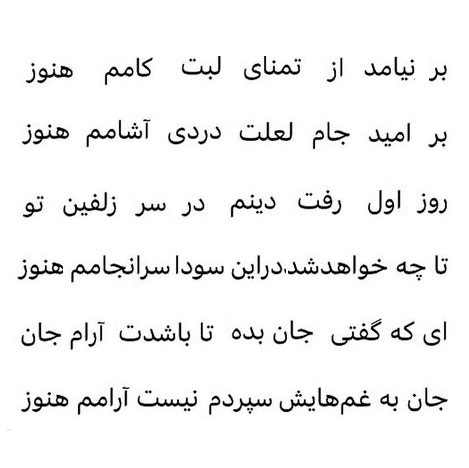

 (1) Images of the day: [Left] Selected verses from a beautiful ghazal by Hafez (#265 on ganjoor.net). [Center] Having your cake & eating it too: Mistakes by 17-year-old boys shouldn't ruin their lives, but it's okay if they ruin the lives of 17-year-old girls. [Right] Perils of raw data without analysis (see the next item below).
(1) Images of the day: [Left] Selected verses from a beautiful ghazal by Hafez (#265 on ganjoor.net). [Center] Having your cake & eating it too: Mistakes by 17-year-old boys shouldn't ruin their lives, but it's okay if they ruin the lives of 17-year-old girls. [Right] Perils of raw data without analysis (see the next item below).
(2) The slippery slope with statistics: A New York Times chart shows that the number of apprehended migrants on the southwestern border of the US has risen significantly during the first two years of the Biden administration compared with the Trump years. Here is my question: Does more apprehensions mean a greater number of border crossers or better enforcement of immigration laws (that is, low apprehension rate means that a lot of migrants slip through)?
(3) CNN's big mistake: It gave Donald Trump 1+ hour of free air time to spread his election lies, lie on other issues dozens of times, insult the host, make misogynistic statements, to which the MAGA audience laughed, and evade all serious policy-related questions. And all of these abuses of air time were totally predictable!
(4) One-liners: Brief news headlines, happenings, memes, and other items of general interest.
- Anti-compulsory-hijab activism is intensifying in Iran: Here is the recitation of a Persian protest poem.
- William Shatner talks about "Star Trek," acting in space roles, & the future of our Earth. [13-minute video]
- AI continues to become more scary: Robotic soldier, developed for the US Army.
- California State Parks: Some of their must-see places.
- Iranians avoid stepping on the US flag placed at the entrance of what appears to be a shopping mall.
- Mr. Internet: Vint Cerf reflects on 50 years of progress since he first sketched the idea in 1973.
(5) The island of Socotra: Located 150 miles off the coast of Somalia and 220 miles off the coast of Yemen in the Indian Ocean, Socotra is home to unique plant and animal species.
(6) Voice of dissent from the Qom Seminary: This video, in which a prominent Iranian cleric disses the idea of governing based on edicts from 1400 years ago, has surfaced after 12 years. [4-minute video]
(7) Political humor: Scientists are working on a polygraph (lie-detector) machine that can be used on Donald Trump and George Santos, without catching fire due to overheating!
(8) GPUs & FPGAs are the engines that allow AI & machine learning to advance by leaps & bounds: Yet, these workhorses of the hottest fields of research are in the shadows and their designers don't get proper credit. As a case in point, a single NVIDIA A100 GPU has been shown to outperform a hypothetical quantum-computing system with 10,000 error-correcting qubits, a system that is nowhere close to being realizable at this time.
(9) There is a new argument that Biden can raise the debt ceiling by himself, if the Congress does not cooperate: Here is how the argument goes. As US President, Biden has sworn to uphold the laws of the land. Spending bills passed by congress are some of those laws he must uphold. If there are no funds to uphold all laws (pay all government obligations), his authority does not include selectively upholding the laws: it's either all laws or none of them. He can't pay the military but withhold payment from retirees, say. He could presumably pay 80% of the obligations, say, and issue IOUs for the remaining 20%. He can't cut the payments unilaterally. But IOUs are also debts and issuing them constitutes raising the debt ceiling.

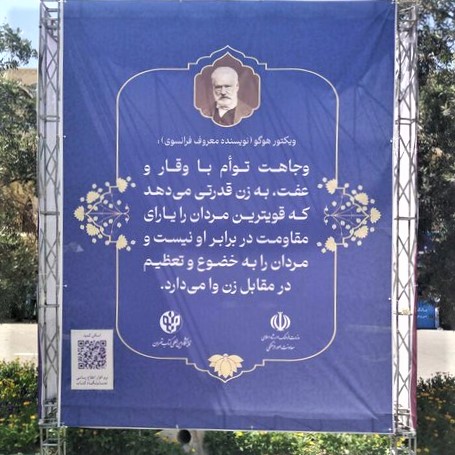
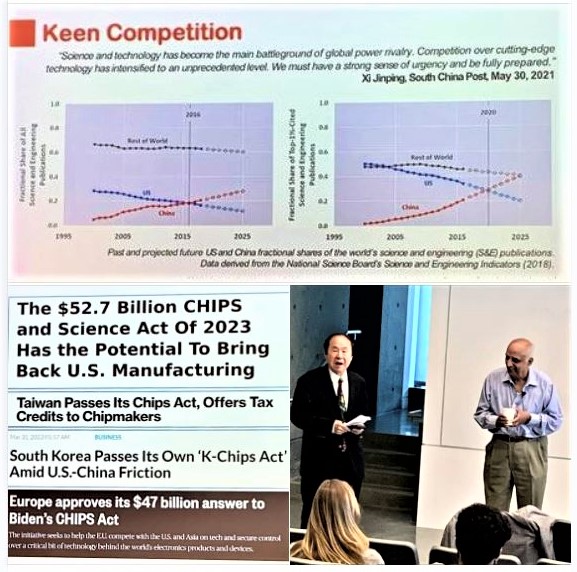 (1) Images of the day: [Left] Optical illusion: It's amazing how adding little squares distorts our perception of the checkerboard pattern, making it appear to bulge out. [Center] Iran's Islamic regime now quotes Victor Hugo & Leo Tolstoy, instead of the Prophet & Imams, on the importance of modesty and chastity for women! [Right] Venky Narayamurti's talk at UCSB, yesterday (see the last item below).
(1) Images of the day: [Left] Optical illusion: It's amazing how adding little squares distorts our perception of the checkerboard pattern, making it appear to bulge out. [Center] Iran's Islamic regime now quotes Victor Hugo & Leo Tolstoy, instead of the Prophet & Imams, on the importance of modesty and chastity for women! [Right] Venky Narayamurti's talk at UCSB, yesterday (see the last item below).
(2) Fareed Zakaria, on King Charles III's coronation: Zakaria's Sunday commentary included interesting tidbits, such as a king who banned his wife from attending his coronation because she ate raw onions, and Charles III's dilemma regarding how to include his brother Andrew and his son Harry (who headed straight to the airport afterwards) in the coronation ceremony.
(3) AI guru Geoffrey Hinton discusses his fears about the future of AI: "I think it's quite conceivable that humanity is just a passing phase in the evolution of intelligence." [8-minute video]
(4) One-liners: Brief news headlines, happenings, memes, and other items of general interest.
- May 12, Fields-Medalist Maryam Mirzakhani's birthday, is the International Women in Mathematics Day.
- It turns out that today isn't just International Women in Mathematics Day but also International Nurses' Day!
- A conversation with Google administrators & scientists on the future of AI. [27-minute CBS News report]
- Title of an ACM tech talk: "All I Needed to Know about Project Management, I Learned Planning a Wedding"
- Facebook memory from May 12, 2017: On "toman" or "toomaan," Iran's currency unit.
(5) An advisory panel has suggested that all women should start getting regular mammograms at age 40: The panel cites an increase in breast cancer diagnoses among younger women and persistently high death rates among Black women. The previous recommendation was to begin at age 50.
(6) Trump, as you have never seen him before: During his deposition in the E. Jean Carroll rape case, he seems mousy at the start but becomes combative near the end with the female questioner. [48-minute video]
(7) Seeing what a mouse sees: Scientists at Lausanne's Swiss Federal Institute of Technology have developed the CEBRA machine learning algorithm, which they say is capable of predicting information like what mice see when they watch a movie. CEBRA can anticipate unseen movie frames directly from neural signals after an initial training session mapping brain signals and movie characteristics. The algorithm functions well with less than 1% of neurons in the visual cortex, given that region in mice encompasses 0.5 million neurons.
(8) Rachel Maddow's take on the parallel or perhaps intersecting extremism & anti-Semitism in mainstream Republican politics and White-Nationalist mass shootings. [40-minute video]
(9) A former dean of engineering visited UCSB yesterday: Venky Narayanmurti, who was at the helm of our College of Engineering from 1992 to 1998 (before departing for Harvard), gave a talk entitled "Rethinking the Nature and Nurture of Discovery Research: Implications for Science and Technology Policy." The talk was based on Narayanamurti's 2021 book, The Genesis of Technoscientific Revolutions (co-authored by Jeffrey Y. Tsao).
Alarm signals that the US was in trouble with regard to leadership in science & technology innovation were raised in at least three books:
- Rising Above the Gathering Storm: Energizing and Employing America for a Brighter Economic Future (2005)
- Rising Above the Gathering Storm Revisited: Rapidly Approaching Category 5 (2010)
- The Perils of Complacency: America at a Tipping Point in Science & Engineering (2020)
The CHIPS and Science Act of 2023, a major accomplishment of the Biden administration, is a good start, but other countries are responding with their own programs of supporting microchips manufacturing.
It is imperative that we view science & technology, or research & development, as parts of a whole that cannot be divided, what was accomplished by the Bell Labs, which was nicknamed "The Idea Factory" in its heyday.


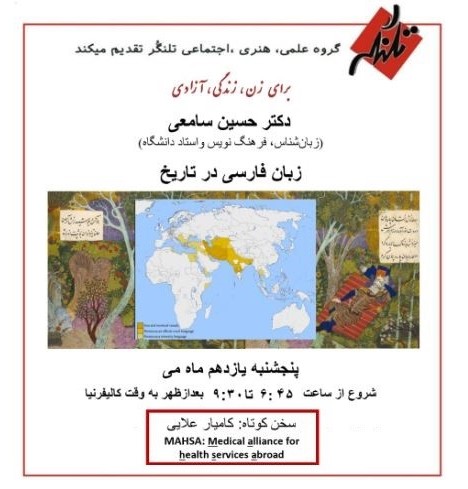 (1) Images of the day: [Left] The Mayans, the Incas, and the Aztecs all mastered hydraulic engineering to provide running water, irrigation, and sewage centuries before the Europeans did. [Center] Facebook memory from May 11, 2021: Persian love couplets by Ghaa'aani (top) and Haatef Esfahaani. [Right] Tonight's Talangor Group talk on the Persian language (see the last item below).
(1) Images of the day: [Left] The Mayans, the Incas, and the Aztecs all mastered hydraulic engineering to provide running water, irrigation, and sewage centuries before the Europeans did. [Center] Facebook memory from May 11, 2021: Persian love couplets by Ghaa'aani (top) and Haatef Esfahaani. [Right] Tonight's Talangor Group talk on the Persian language (see the last item below).
(2) Telecom relay service: The 711 number is now available free of charge in all 50 US states, DC, Puerto Rico, and US territories to assist hearing- or speech-impaired callers with placing text-based phone calls.
(3) One-liners: Brief news headlines, happenings, memes, and other items of general interest.
- Donald Trump on CNN town hall (better described as a campaign rally): January 6 "was a beautiful day."
- You don't let a con-man spread lies and then scramble to fact-check him. All of Trump's lies were predictable.
- Why a car cannot accelerate from 0 to 60 MPH in less than 3 s if its movement forward relies on friction.
- Facebook memory from May 11, 2019: Celebration of my daughter's 25th birthday.
(4) Tonight's Talangor Group talk: Dr. Hossein Samei (Emory U.) spoke under the title "The Persian Language in History." The main talk was preceded by Dr. Kamiar Alaei's short presentation entitled "MAHSA: Medical Alliance for Health Services Abroad," introducing an organization that is trying to document the violence of Iran's security forces and has successfully assisted victims of such violence, including a large number of young men and women who lost one or both eyes to pellet guns targeting street protesters. There were ~70 attendees.
During the 5th & 6th centuries CE, Pahlavi and Persian languages co-existed, with the former being the language of government/bureaucracy/religion and Persian being the conversational language of the people of the Sassanid era. Zoroastrian religious texts were written in Avestan, but it wasn't used by ordinary people.
With the Arab invasion, Arabic took the place of Pahlavi for official/religious/scientific communications during the 7th-9th centuries CE, but Persian continued its life as people's colloquial language. Because of the need to record communications, the already familiar Arabic script was adopted to create a written form for Persian.
Around the same time, Jews had created a Hebrew form of writing for Persian, but with the official adoption of Arabic script, the Hebrew version fell out of favor. Ironically, the adoption of Arabic script saved the Persian language. allowing poetry & literature. as well as translations of Quran, to flourish.
Persian became established, spreading to India, Anatolia, Central Asia, and Afghanistan between the 9th and 19th centuries. In other words, it was transformed from a colloquial language to a written language used in government, bureaucracy, commerce, literature, and even religious texts. In this new role, Persian began interacting with regional languages, borrowing and supplying words from/to these languages. As a result, Persian was referred to as an imperial language without an empire.
Beginning with the 19th century, Persian gradually lost its influence, as the Ottoman Empire used Turkish, India converted to English as the official language, Central Asia fell under the influence of Russia, and Pashtu prevailed in Afghanistan.
With the 20th century neo-nationalism, in which language played a key role, three different forms of Persian emerged: Modern Persian (with elements of European languages) in Iran, Dari in Afghanistan, and Tajiki in Tajikistan. Dari is essentially Persian, but is given a different name for nationalistic reasons. Tajiki is also the same as Persian, with a different script. The spread of literacy transformed Persian and gave it more diverse, local flavors.
What will become of Persian is anyone's guess. As one of the world's six classic languages and a language possessing a vast treasure of poetry as well as literary & philosophical writings, Persian has a strong position.

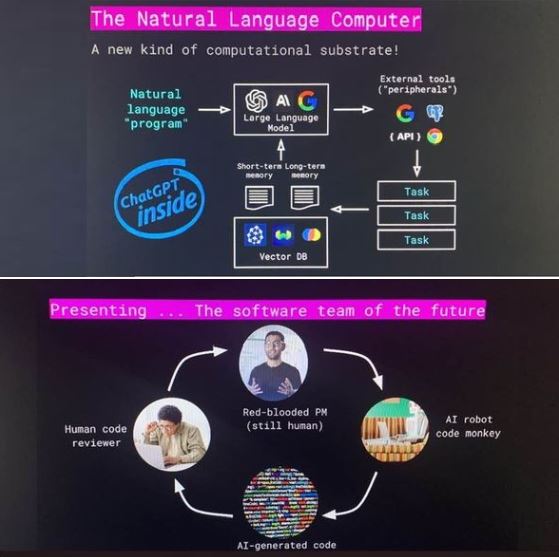
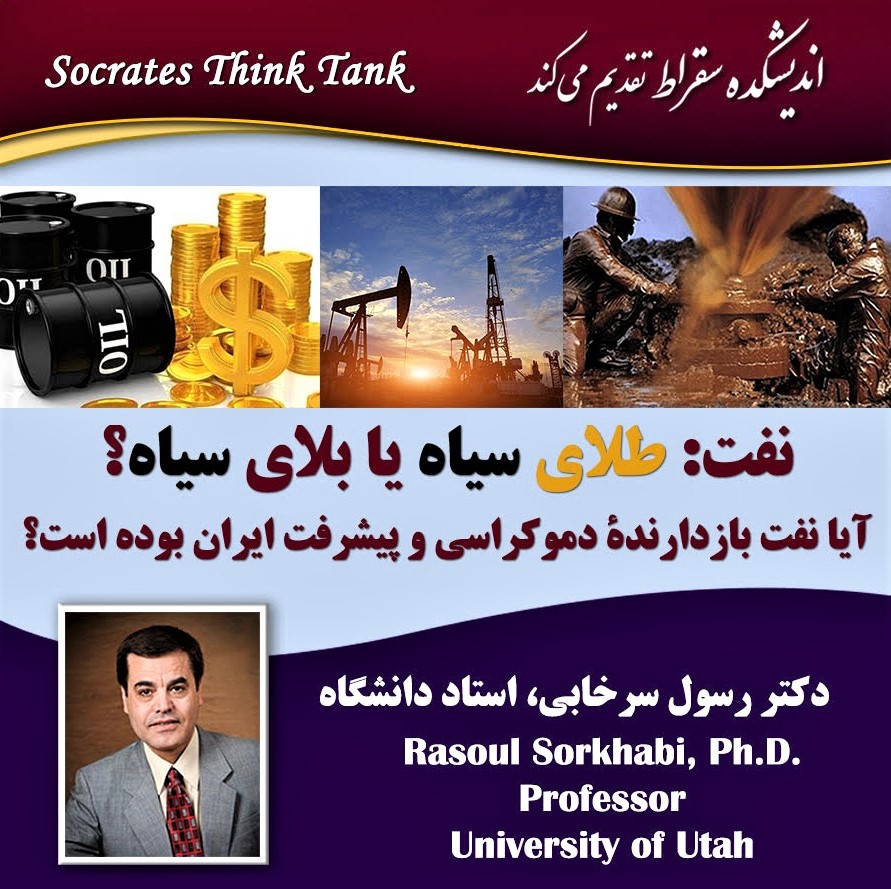 (1) Images of the day: [Left] UCSB Reads 2023 Program lecture (see the next item below). [Center] The end of programming? (see the last item below). [Right] Tonight's Socrates Think Tank talk by Dr. Rasoul Sorkhabi, entitled "Oil: Black Gold or Black Calamity? Has Oil Hampered Democracy and Progress in Iran?" I did not attend this interesting talk due to conflict with another talk. here's a full recording of the talk.
(1) Images of the day: [Left] UCSB Reads 2023 Program lecture (see the next item below). [Center] The end of programming? (see the last item below). [Right] Tonight's Socrates Think Tank talk by Dr. Rasoul Sorkhabi, entitled "Oil: Black Gold or Black Calamity? Has Oil Hampered Democracy and Progress in Iran?" I did not attend this interesting talk due to conflict with another talk. here's a full recording of the talk.
(2) Tonight's UCSB Reads 2023 talk at Campbell Hall: Award-winning author/journalist Charles Montgomery talked about his book Happy City. The talk was one of the most-enjoyable I have ever attended, intermixing serious ideas about city planning, personal stories, and humorous references. A lively Q&A period and a book-signing event ensued.
In Happy City, Montgomery looks at the intersection between urban design and the emerging field of "happiness studies." The book draws on the work of behavioral economists, psychologists, neuroscientists, and city planners to explore how city planning and personal decisions can have profound implications for social equity, sustainability, and our overall well-being. The book asks us to explore the question: "What kind of living environment makes us happy?"
Emphasizing the importance of living a "connected life" and feeling connected to others is especially relevant as we return from the isolation of the pandemic. Montgomery's references to the positive and negative aspects of life in Santa Barbara and Isla Vista (as well as a sneak mention of Munger Hall) were refreshing, because they showed that he had studied the community in which he was delivering his talk.
Connectedness requires having compact cities, with most of our needs within walking or biking distance, which is the polar opposite of the suburban sprawl afflicting American cities. It doesn't make sense to have to take a 20-minute car ride for shopping, visiting the library, watching a movie, or attending a social function. Suburban sprawl also increases the cost of building/maintaining roads, snow-plowing in cold climates, and utility and transportation networks. [My 4-star review of Happy City]
(3) "Large Language Models and the End of Programming": This was the title of Tuesday's ACM professional-development webinar by Matt Welsh (Founder & CEO of Fixie.ai). There were ~1700 attendees.
A large language model can be viewed as a virtual machine that is programmed in English. The core of computer science is translating ideas to run on a machine. Humans actually suck at this task; fifty years of programming-language research has done little to ease the programming effort. We still write buggy, inefficient programs.
We are close to having AI produce code for us. We already have the CoPilot AI-powered coding assistant; anyone not using it is likely 30-40% less productive. CoPilot reads your mind; you just start typing and it finishes the job. The next wave of AI-powered programming tools will be 10x better. AI-powered coding is the next logical step in the historical progression from hand-coding in assembly language, through writing code in high-level languages, to AI-assisted high-level-language programming.
In the near future, humans will teach AI models how to solve problems directly; we become teachers, not programmers. An estimated 30 million people in the world know how to write programs; AI can bring this skill to everyone else. Writing code sucks, so maybe we should leave it to AI.
[A previous version of the same talk: 64-minute video]


 (1) UCLA Bilingual Lecture Series on Iran: Dr. Mehrdad Amanat (trained as a civil engineer and later earning a PhD in history from UCLA) presented a hybrid talk (in-person, at UCLA's Dodd Hall 121, and via Zoom, with poor audio/video quality) on Sunday under the title "A Historical Perspective on Violence and Urban Unrest in Modern Iran." The lecture series is directed by Dr. Nayereh Tohidi (Cal State Northridge), who introduced the speaker and moderated the ensuing Q&A. [Recording of the talk (110-minute video)]
(1) UCLA Bilingual Lecture Series on Iran: Dr. Mehrdad Amanat (trained as a civil engineer and later earning a PhD in history from UCLA) presented a hybrid talk (in-person, at UCLA's Dodd Hall 121, and via Zoom, with poor audio/video quality) on Sunday under the title "A Historical Perspective on Violence and Urban Unrest in Modern Iran." The lecture series is directed by Dr. Nayereh Tohidi (Cal State Northridge), who introduced the speaker and moderated the ensuing Q&A. [Recording of the talk (110-minute video)]
The following report is derived from expanding the author's abstract.
During the Qajar era, urban riots were often popular uprisings rooted in social grievances such as famines and grain hoardings. Women responsible for feeding the family were often at the forefront of bread riots. In many other cases, riots were instigated by the powerful who used their lutis for dominance of the urban scene.
According to Encyclopedia Iranica, the term "luti" was first mentioned by the tenth-century poet Kesa'i, who equated the lutis with catamites. For Jalal-al-Din Rumi (13th century) and Obayd Zakani (14th century), lutis were pederasts, and the related word lavati (sodomy) is still used as such. Not every text offers this negative sexual connotation.
Colloquially, the word "luti" has been used in a positive sense to mean "generous" or "selfless" (exemplified by the popular wrestler Gholamreza Takhti) and in a negative sense to mean "thug" or "ruffian" (a prime example being Sha'ban Jafari, who played a role in reinstating Shah Mohammad Reza Pahlavi to power in the CIA-directed coup of 1953.
Chivalry has a long history in Iran, and in the pre-modern era, lutis played a role in defending cities against foreign invaders. In this role, lutis were selfless men with a strict code of honor to serve and protect or to carry out divine justice. However, during the Qajar period, this social group underwent a decline and often became an instrument for oppression and tyranny.
Provincial governors, who mostly bought their positions from the central government for economic gain, appointed lutis as their agents and often for extortion. As private militias at the service of rival Shi'i clerics, the lutis fought for control of neighborhoods and mosques or harassed and looted dissidents. Landowners often settled disputes over water and property in the urban scene with the help of lutis. The main victims were the urban poor, women and children, non-Muslims, and nonconformists.
Under Iran's Islamic government, lutis have undergone a transformation into basijis and other paramilitary and extrajudicial oppressors and enforcers of the clerics' wishes, whenever such aims cannot be achieved through lawful means.
Dr. Amanat aimed to draw the boundaries between popular riots and those manipulated by the powerful, both rulers and religious leaders, to protect their interests.
(2) One-liners: Brief news headlines, happenings, memes, and other items of general interest.
- Former populist Prime Minister Imran Khan arrested in Pakistan.
- Sal Khan's 16-minute TED talk on how AI can transform education.
- Cartoon of the day: Hollywood writers on strike! [Image]
- Baran Nikrah speaks and recites a Persian poem about the importance of self-reliance and solitude.
(3) Why Iran's economy is in tatters: Iran's Islamic government is sabotaging the worth on the country's national currency by selling assets & instituting misguided foreign exchange policies. [Interview in Persian]
(4) Useful info for readers who are AAA members: Trying to watch one of my favorite Sunday morning news programs, I chanced upon a AAA infomercial; has the writers' strike affected news shows as well? I learned from the infomercial that: (1) The AAA phone app helps you summon roadside assistance and then track the location of the service vehicle sent to help you. (2) AAA covers you, not just your car, so you can receive service while driving a different car or even as a passenger in a friend's car.
(5) #WomanLifeFreedom Revolution art-projection: This 3-minute video is from the projection show at San Francisco's Asian Art Museum. The projection was done tonight at UCSB, but unfortunately, I could not attend.
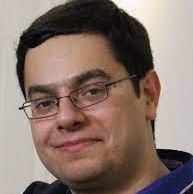
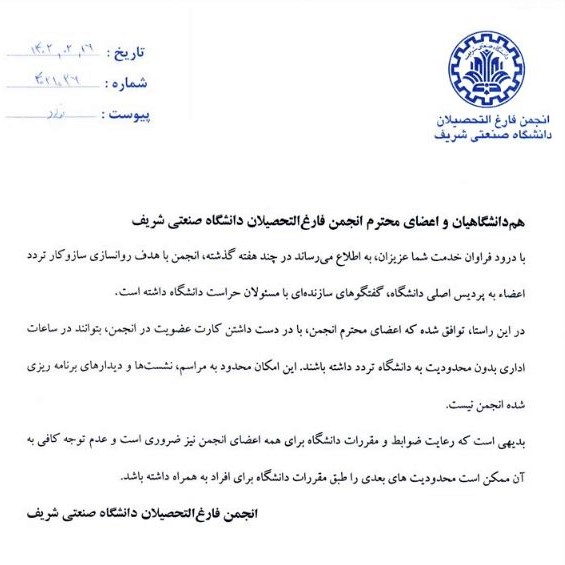
 (1) Images of the day: [Left] MIT's Mohammad Alizadeh honored by ACM as the recipient of the 2022 Grace Murray Hopper Award. [Center] Iran's college campuses aren't open to the public (see the next item below). [Right] Samuel Johnson's A Grammar of the English Tongue (see the last item below).
(1) Images of the day: [Left] MIT's Mohammad Alizadeh honored by ACM as the recipient of the 2022 Grace Murray Hopper Award. [Center] Iran's college campuses aren't open to the public (see the next item below). [Right] Samuel Johnson's A Grammar of the English Tongue (see the last item below).
(2) College campuses as public squares: We take it for granted in the US that anyone can go to a college campus to use the library, attend lectures, or participate in cultural/sporting events. In Iran, college campuses are surrounded by high walls/fences and can be entered through gates guarded by security officers. Only those bearing appropriate ID cards are allowed to enter. Recently, Sharif University of Technology Alumni Association announced with glee that members of that association can enter the university's main campus by presenting their membership cards. In the same announcement, members are warned to obey university regulations to avoid the imposition of future restrictions.
(3) More on Teachers' Day in Iran: Iran's Islamic regime confiscated May 2, originally honoring teacher Abulhassan Khan'ali, who was shot to death in front of the parliament building on May 2, 1961, to honor Islamic cleric Morteza Motahhari, who was assassinated on the evening of May 1, 1979. Despite its original secular intent, Iran's Teachers' Day is now officially a religion-specific observance day, which I refuse to honor. World Teachers' Day on October 5 commemorates the anniversary of the adoption of the 1966 ILO/UNESCO recommendation concerning the status of teachers, which sets benchmarks regarding the rights and responsibilities of teachers, and standards for their initial preparation and further education, recruitment, employment, and teaching and learning conditions.
(4) One-liners: Brief news headlines, happenings, memes, and other items of general interest.
- At summit of tech leaders with Biden administration, the White House signals support for AI regulations.
- Writer Roya Hakakian responds to a tweet accusing her of being a hired agent of Iran's Islamic regime.
- Actor Richard Dreyfuss laments over the lack of governance knowledge among American youth.
- Thirteen-year-old autistic magician dazzles on "Britain's Got Talent." [8-minute video]
- Frank Crane: "You may be deceived if you trust too much, but you'll live in torment if you don't trust enough."
- Facebook memory from May 7, 2021: A deserted UCSB campus under COVID-19. [3-minute video]
(5) I like CNN's Kaitlan Collins: I have watched with delight her rise over the past few years, from a reporter to a popular anchor on the network. Then came her decision to sit down with Donald Trump in a forthcoming CNN Town Hall. Collins was banned from attending an open White House press event, after she asked a couple of tough questions earlier that day. And she was insulted by Trump, like many other female reporters.
(6) Book review: Johnson, Samuel, A Grammar of the English Tongue, unabridged 2-hour audiobook, read by Matt Montanez, Authors Republic, 2018. [My 4-star review of this book on GoodReads]
Grammar, defined as the art of using words properly, comprises four parts:
*Orthography, or the conventional spelling system of a language; the forms & sounds of letters
*Etymology, or the study of the origin of words and the way in which their meanings have changed over time (articles; nouns; adjectives; pronouns; regular & irregular verbs; derivation of new words)
*Syntax, or rules for arranging words and phrases to create well-formed sentences in a language
*Prosody, which comprises orthoepy, rules of pronunciation, and orthometry, laws of versification
This compact grammar of the English language is difficult to take in with just one reading or listening. So, I have bookmarked the volume on Project Gutenberg (free, in multiple formats) for future reference.


 (1) Images of the day: [Left] Hair slide in the shape of Iran map, worn by some Iranian women protesting compulsory hijab laws. [Center] Iran-related news memes from IranWire. [Right] Expressive book spines.
(1) Images of the day: [Left] Hair slide in the shape of Iran map, worn by some Iranian women protesting compulsory hijab laws. [Center] Iran-related news memes from IranWire. [Right] Expressive book spines.
(2) As Seditionist-in-Chief walks free and even aspires to become US President again, four of his Proud-Boys January 6 foot soldiers are convicted of seditious conspiracy, which carries decades of jail time.
(3) We just had the eight warmest years on record, even though we had a cooling La Nina for the past 3 years: With El Nino on the way, even warmer years are ahead of us.
(4) One-liners: Brief news headlines, happenings, memes, and other items of general interest.
- Despite threats by authorities & security forces, Iranian women continue to defy compulsory hijab laws.
- Mass-shooting at a Texas outlet mall leads to fatalities and nine people sent to area hospitals.
- Quotable: "Student is not a container you have to fill but a torch you have to light up." ~ Albert Einstein
- Facebook memory from May 6, 2019: Coronation hype vs. "royal baby" arrival of 4 years ago.
- Facebook memory from May 6, 2018: Family picnic in the park, the day after the wedding.
- Facebook memory from May 6, 2015: A super-funny joke, in English and Persian.
(5) "The Environmental Footprint of Global Food Production": This was the title of Thursday's hybrid (in-person/Zoom) webinar at UCSB's Institute for Energy Efficiency by Dr. Benjamin S. Halpern, who is a faculty member at UCSB's Bren School and also directs UCSB's National Center for Ecological Analysis and Synthesis.
While Dr. Halpern's focus was on the environmental impacts of food production, there are also other considerations such as animal welfare, nutrition, social justice, and impact on local communities. We can all help mitigate these environmental impacts by taking small steps such as eating less farmed meat, eat more mussels/oysters/clams, or eating invasive species where possible.
Here is the same talk, given in mid-March 2023 at UBC (57-minute video).
(6) I recently learned of Google's Quantum AI Campus in Santa Barbara: The SB operation is centered on hardware and architecture, with software operations being in Los Angeles. [Virtual tour]
(7) Apologists for Iran's brutal Islamic regime infiltrate US academic institutions: Mohammad Jafar Mahalati, former mullah and UN Ambassador of Iran's Islamic regime, is now a professor of Middle East and North African Studies at Oberlin College in Ohio. He is being accused by families of victims of mass executions of political prisoners in the summer of 1988 of helping to cover up the Islamists' human-rights abuses and crimes against humanity. A petition to be sent to Oberlin College's President on behalf of academics around the world asks that Mahalati's role in Islamic Republic of Iran's crimes be the subject of a robust and transparent third-party investigation.
[Petition for signature by academics]
(8) Execution spree in Iran: Over the last 10 days, 42 people, including 22 Baluchi minorities have been executed. Many of these were accused of drug smuggling, but Iran's Islamic regime is known for manufacturing drug-related charges to get rid of dissidents.
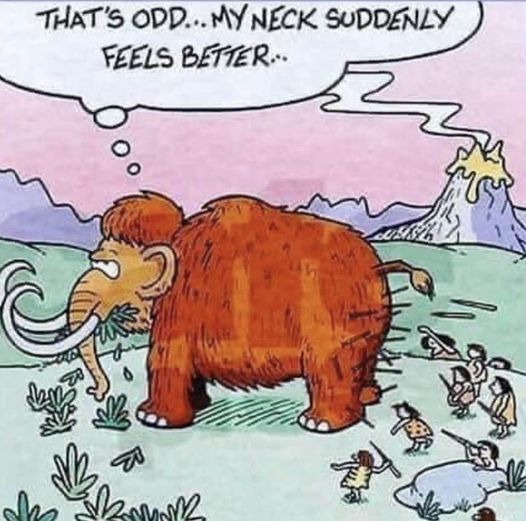
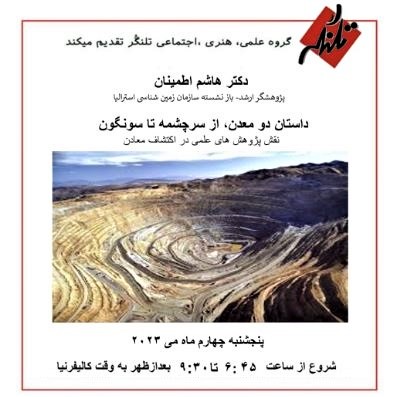

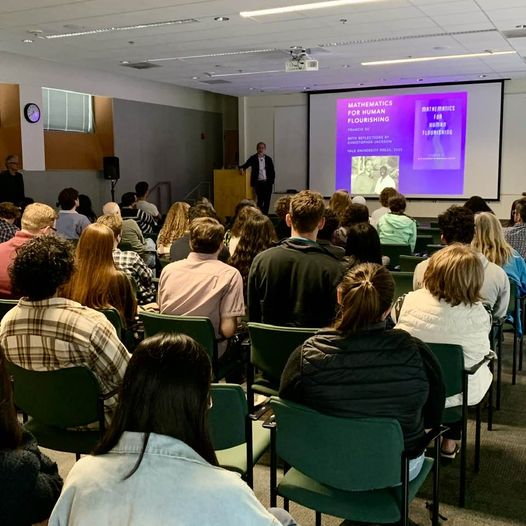

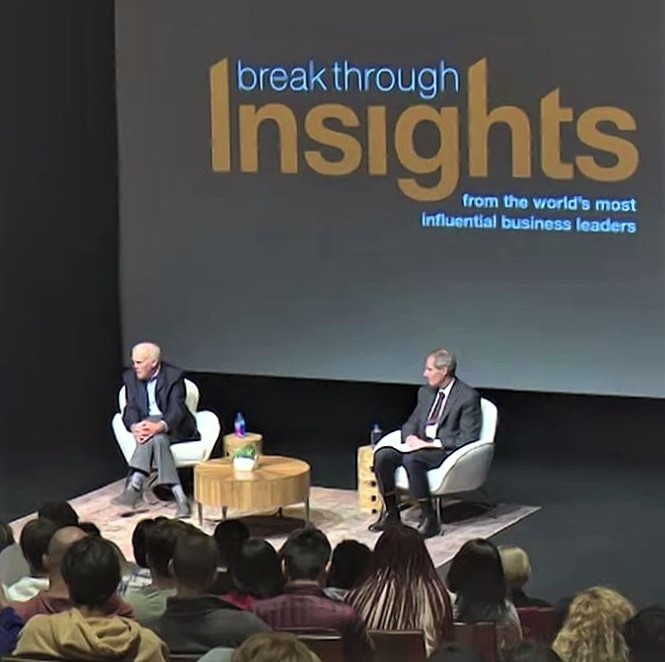 (1) Images of the day: [Top left] Throwback Thursday cartoon, carried over from yesterday: Early acupuncture. [Top center & right] Talangor Group talk (see the next item below). [Bottom left] A talk on the joy of math (see item 3 below). [Bottom center] Late-night talk shows go dark as a result of the first Writers Guild of America strike since 2007. [Bottom right] John L. Hennessy's interview at Cal Tech (see the last item below).
(1) Images of the day: [Top left] Throwback Thursday cartoon, carried over from yesterday: Early acupuncture. [Top center & right] Talangor Group talk (see the next item below). [Bottom left] A talk on the joy of math (see item 3 below). [Bottom center] Late-night talk shows go dark as a result of the first Writers Guild of America strike since 2007. [Bottom right] John L. Hennessy's interview at Cal Tech (see the last item below).
(2) Thursday night's Talangor Group talk: Dr. Hashem Etminan (retired senior researcher, Geoscience Australia) spoke under the title "A Tale of Two Mines: From Sarcheshmeh to Sungun." There were ~75 attendees.
Copper was instrumental in starting human civilizations as the first metal. In Iran, copper objects of age 5000-7000 years have been found. With increased use of electricity, particularly from renewable sources, copper is assuming greater importance. Iran became a major player on the world stage with the discovery of Sarcheshmeh copper mine in the 1960s.
Sarcheshmeh in the southeastern Kerman Province and Sungun (aka Songon) in the northeastern East Azerbaijan Province are Iran's most-important copper mines. Deposits in each of these two mines are estimated to be 1-2 billion tons of ore, of purity grade 0.6-0.7 percent. Both of these major copper mines are located along the Zagros Mountain Chain, which includes many other copper mines as well.
Dr. Etminan described the above two major copper mines in Iran and his personal involvement in exploration and extraction operations at the two sites. As large as Sarcheshmeh and Sungun are, the Chuquicamata mine in northern Chile is 10 times larger. The latter is now the second-largest open-pit copper mine in the world, after the Bingham Canyon Mine in Utah. [Speaker's Facebook page]
(3) "Mathematics for Human Flourishing": This was the title of the 11th Annual SciTrek Lecture at UCSB by Dr. Francis Su (Harvey Mudd College). SciTrek promotes the synergies between science inquiry, language arts, and the Next Generation Science Standards.
According to Dr. Su, math is more than just a way to describe the world, a theme promoted in his book by the same title as today's talk. Math is a deeply human enterprise that fulfills basic human longings, and when properly engaged, it builds virtues like persistence and creativity. Reframing math around these virtues offers a way to see math as an intrinsic part of life, and to teach it in a more inclusive way. An incarcerated friend has helped Dr. Su see this more clearly.
(4) A Conversation with John L. Hennessy, Chairman of Alphabet, parent company of Google: An ACM Turing Award winner & former President of Stanford University, Hennessy talked this afternoon with physicist & Cal Tech President Thomas F. Rosenbaum.
After a brief introduction to Hennessy's illustrious career in academia and industry, including effortless moving back and forth between education and technical leadership, Hennessy was asked questions about his efforts on behalf of the RISC architectural concept, which included founding of MIPS to commercialize the ideas and to quiet the nay-sayers.
Hennessy also opined on the ongoing research on generative AI, which he characterized as a fast-growing technology, even overshadowing microprocessors, personal computers, the Internet, and the Web. The technology has far exceeded what we thought it should be able to do, which has necessitated reflection on whether or not we should continue the current development pace.
Another topic was the importance of ethics in educating our next-generation leaders in science, technology, health care, and politics. The most-challenging ethical problems are on slippery slopes. Few people do something that is obviously unethical. The industry is highly competitive today, so any pause in research must be done in the framework of "trust but verify."
Hennessy is an avid reader, often going back to door-stoppers such as Les Miserables. He said that one tends to appreciate great books more as one gets older. We read many books as high-schoolers, but they don't resonate with us at that age. Hennessy has written the following book, which I look forward to reading.
Hennessy, John L., Leading Matters: Lessons from My Journey, Stanford Business Books, 2018.
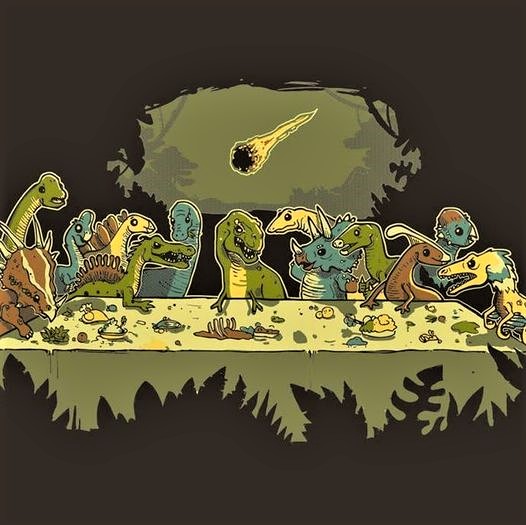
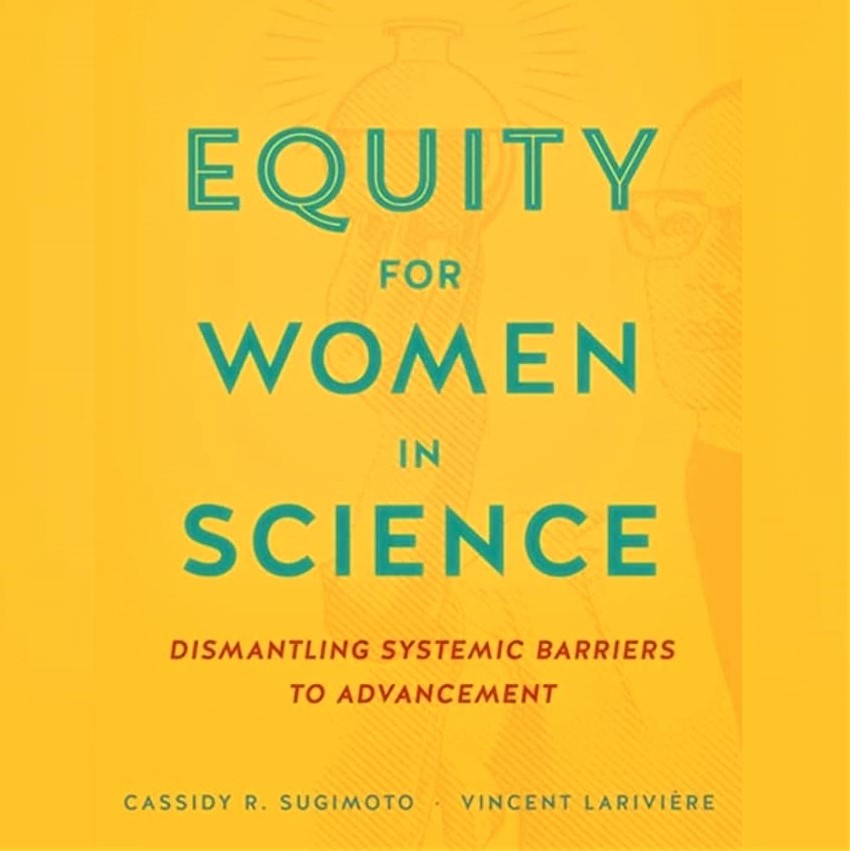
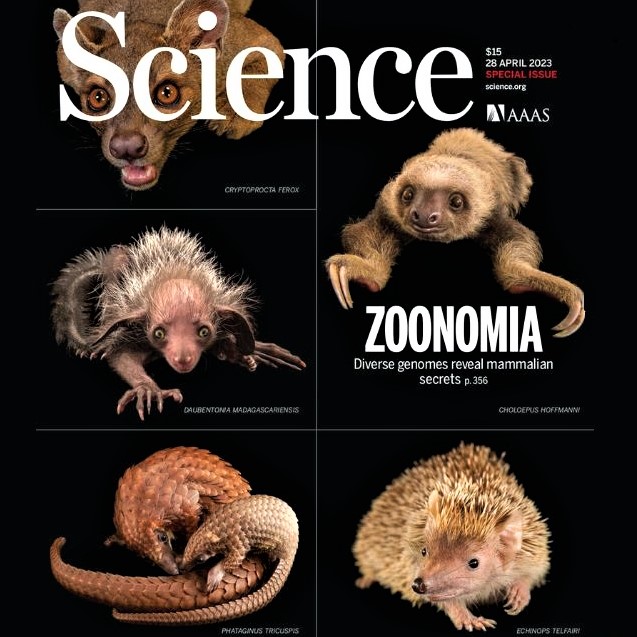 (1) Images of the day: [Left] Throwback Thursday cartoon: The dinosaurs' last supper. [Center] Equity for Women in Science (see the next item below). [Right] Cover image of Science (see the last item below).
(1) Images of the day: [Left] Throwback Thursday cartoon: The dinosaurs' last supper. [Center] Equity for Women in Science (see the next item below). [Right] Cover image of Science (see the last item below).
(2) An analysis of research papers finds differences in article production and recognition for women scientists: Compared with men, women are underrepresented in authorship lists. On average, women publish about one fewer article per year than men. When women appear in authorship lists, they tend to be underrepresented in first-author (primary writer) and last-author (senior conceptualizer and resource provider) positions. Articles with women in dominant authorship positions (first, last, or solo author) receive fewer citations than do articles with men in analogous roles. [Harvard University Press, 2023, 272 pp.]
(3) Here comes the expected push-back against the suggestion that we should pause AI development for six months: Microsoft Chief Scientific Officer says AI development must be accelerated, not paused.
(4) One-liners: Brief news headlines, happenings, memes, and other items of general interest.
- Science magazine editorial: Judicial interference with mifepristone (or anti-science activism gone too far).
- Science magazine opinion piece: Research universities hurt students by undervaluing teaching & service.
- A ceremonial winery for Rome's nobility featured wine fountains & private rooms, perhaps for dining.
- Words of wisdom: It is better to be an optimist who is sometimes wrong than a pessimist who is always right.
(5) Science magazine's special section on the Zoonomia project: "Mammals are one of the most diverse classes of animals, ranging both in size, across many orders of magnitude, and in shape ... Understanding when, how, and under what selective pressures this variation has developed has been of interest since the dawn of science." The special section's table of contents within the issue of April 28, 2023, follows.
- Genomics expands the mammalverse
- Seeing humans through an evolutionary lens
- Mammalian evolution of human cisregulatory elements and transcription factor binding sites
- Comparative genomics of Balto, a famous historic dog, captures lost diversity of 1920s sled dogs
- Relating enhancer genetic variation across mammals to complex phenotypes using machine learning
- A genomic timescale for placental mammal evolution
- Evolutionary constraint and innovation across hundreds of placental mammals
- Leveraging base-pair mammalian constraint to understand genetic variation and human disease
- Integrating gene annotation with orthology inference at scale
- The functional and evolutionary impacts of human-specific deletions in conserved elements
- Three-dimensional genome rewiring in loci with human accelerated regions
- Insights into mammalian TE diversity through the curation of 248 mammalian genome assemblies
- The contribution of historical processes to contemporary extinction risk in placental mammals
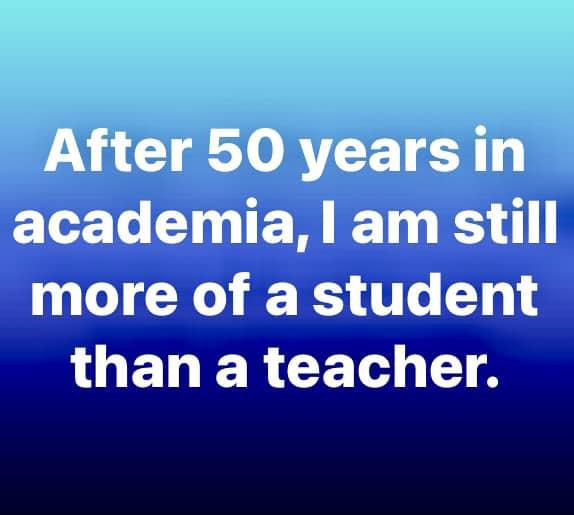
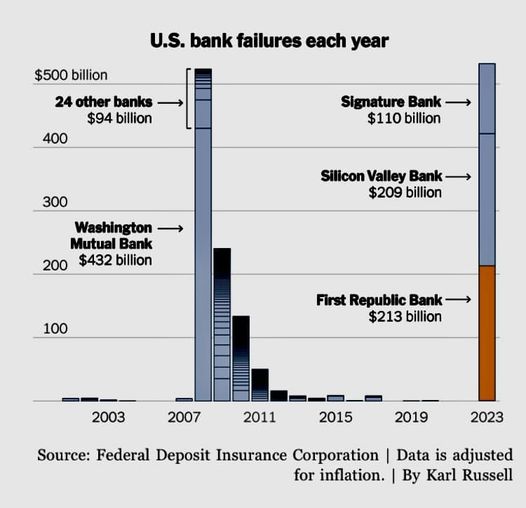



 (1) Images of the day: [Top left] Teachers Day in Iran (see the next item below). [Top center] US bank failures over the past two decades (NYT chart): Are we headed for a repeat of 2008 and its ensuing Great Recession? [Top right] Last light at the Wooden Shoe Tulip Farm, Woodburn, Oregon (Andrew Martin Photography). [Bottom left] A lagoon island in western Greece: Aitoliko is a small, densely-populated island which is connected to the mainland by two 19th-century stone-arch bridges. [Bottom center & right] A California dry lake is coming back to life: Tulare Lake, once four times the size of Lake Tahoe, had several ports and a ferry before it was converted to farmland decades ago. Now floodwaters are rushing back to fill it.
(1) Images of the day: [Top left] Teachers Day in Iran (see the next item below). [Top center] US bank failures over the past two decades (NYT chart): Are we headed for a repeat of 2008 and its ensuing Great Recession? [Top right] Last light at the Wooden Shoe Tulip Farm, Woodburn, Oregon (Andrew Martin Photography). [Bottom left] A lagoon island in western Greece: Aitoliko is a small, densely-populated island which is connected to the mainland by two 19th-century stone-arch bridges. [Bottom center & right] A California dry lake is coming back to life: Tulare Lake, once four times the size of Lake Tahoe, had several ports and a ferry before it was converted to farmland decades ago. Now floodwaters are rushing back to fill it.
(2) International Teachers' Day is on Oct. 5: In Iran, Teachers' Day is celebrated on May 2 (Ordibehesht 12), coinciding with the anniversary of the passing of Ayatollah Morteza Mottahari (in 1979). I appreciate my former students sending me thank-you messages today, but choosing religion-specific dates for such honors is against my beliefs. I observe secular, international occasions.
As Iran's Islamic regime pays lip service to the high stature of teachers, Iranian educators are protesting their low pays and repression of both staff & students at schools, not to mention mass poisonings at girls' schools.
(3) Worldwide Web turns 30: When Turing-Award winner Tim Berners-Lee persuaded Switzerland's CERN to release the Web idea into public domain, a revolutionary communication tool was born which is being used today by 2/3 of the global population to visit many millions of sites daily.
(4) One-liners: Brief news headlines, happenings, memes, and other items of general interest.
- Turing-Award winner Geoffrey Hinton, "a godfather of AI," quits Google to speak freely about the risks of AI.
- May Day and Teachers Day in Iran see widespread labor strikes and protests against economic hardships.
- Facebook memory from May 2, 2015: Rene Descartes on the need for scientists to build up from scratch.
- Facebook memory from May 2, 2014: Beautiful instrumental tar-and-tombak Persian music.
(5) How fast does electricity travel in a wire? Electricity travels at nearly the speed of light, which is 300,000 km/s or about 1 billion km/hr. However, if the question refers to the speed of electrons moving along a conductor (drift speed), that speed is significantly less and depends on the conducting material. A typical drift speed is about 0.01 cm/s or roughly 0.4 m/hr. When you connect a light bulb to battery terminals using 0.4 m wires, it doesn't take the bulb an hour to light up. Rather, it lights up almost instantaneously (after about 1 ns).
(6) Explaining some of the buzzwords of AI: It's hard to follow the day's news without hearing or reading something about GPT 4, the latest version of a Generative Pre-trained Transformer, designed by the private research laboratory Open AI. Google's version of the same concept is named "Bard." A transformer in AI speak is a deep-learning model that adopts the mechanism of self-attention, differentially weighting the significance of each part of the input data. Introduced in 2017 by a team at Google Brain, transformers are becoming favored for natural-language-processing (NLP) problems.





 [Introduction] Coming back from San Diego, I took the train from Van Nuys, arriving in my hometown around noon, with plans to attend Santa Barbara's Earth Day Festival in Alameda Park, downtown. Just before arriving in SB, I shot this 2-minute video from the train's window.
[Introduction] Coming back from San Diego, I took the train from Van Nuys, arriving in my hometown around noon, with plans to attend Santa Barbara's Earth Day Festival in Alameda Park, downtown. Just before arriving in SB, I shot this 2-minute video from the train's window.
[Top left] Sponsored by Commuity Environmental Council, the 2023 SB Earth Day was back at Alameda Park, with its usual diverse programs, activities, and, of course, food offerings.
[Top center] The two-day program included performances and ceremonies on two different stages.
[Top right] One exhibit that caught my eyes featured a company marketing beehives and local natural honey.
[Bottom left] Many different kinds of e-bikes were on display, both recreational & transportation models.
[Bottom center] A large variety of electric cars were on display, including severl Teslas. The exhibits included a couple of the earliest models, that were ahead of their times.
[Bottom right] Besides electric cars, an electric bulldozer and an unusual personal vehicle were included.




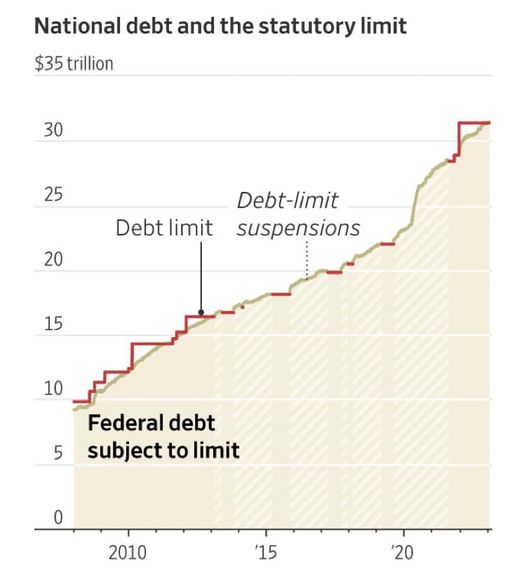
 (1) Images of the day: [Top left] This afternoon at Carlsbad Flower Field. [Top center] Finally, a new emoji for parents! [Top right] Photos from my niece's birthday party at Sadaf Restaurant in Encino. [Bottom left] Parking area for FedEx planes in Victorville, California. [Bottom center] Explaining the debt ceiling: In about a month, the US government will run out of cash to pay its bills. To raise money, it must sell new treasury securities beyond the current debt ceiling of $31.4 trillion, which it's not authorized to do. [Bottom right] Yours truly, in front of wall art at Sadaf Restaurant in Encino.
(1) Images of the day: [Top left] This afternoon at Carlsbad Flower Field. [Top center] Finally, a new emoji for parents! [Top right] Photos from my niece's birthday party at Sadaf Restaurant in Encino. [Bottom left] Parking area for FedEx planes in Victorville, California. [Bottom center] Explaining the debt ceiling: In about a month, the US government will run out of cash to pay its bills. To raise money, it must sell new treasury securities beyond the current debt ceiling of $31.4 trillion, which it's not authorized to do. [Bottom right] Yours truly, in front of wall art at Sadaf Restaurant in Encino.
(2) Iran's corrupt economy: Companies under direct supervision of Supreme Leader Khamenei are making a fortune by selling communications services to Iranian citizens, as the government bans or restricts access.
(3) Crocodile tears: Sergey Lavrov, the hypocritical foreign minister of a country that makes journalists disappear or sends them to chill out in Siberia, doesn't like Fox's firing of Tucker Carlson, a media darling in Russia, famous for his pro-Russia, anti-Ukraine rants.
(4) One-liners: Brief news headlines, happenings, memes, and other items of general interest.
- Neighborly Texan: A man killed 5 neighbors & injured 3, when he was asked to stop firing a gun in his yard.
- Colorado, Washington State, and Maryland are poised to enact major gun-control laws.
- The climate crisis may resurrect sailing ships: Today's cargo ships are some of the dirtiest vehicles around.
- Facebook memory from Apr. 29, 2021: Anoushka Shankar's Zoom webinar.
(5) Royalist & Islamist cults: Many Reza Pahlavi followers call him King Reza II, despite his repeated claims that he does not want to become king of Iran. The claims are obviously insincere, or he would have disowned such followers. Meanwhile, anti-democratic Islamist forces are talking openly about Khamenei's son, Mojtaba (Khamenei II?), as the next black-turbaned. Supreme Leader. A few mention the clueless President Raisi as Khamenei's successor. Neither option will improve democracy, transparency, or human rights in Iran, currently near the bottom of world's nations, according to published indices. [Images]
(6) No laughing matter: The White House Correspondents Dinner was filled with jokes, including Biden making fun of his own age, but he also raised the serious matters that the press is a pillar of democracy, not people's enemy, and that he is working hard to earn the release of Americans wrongfully detained abroad.
(7) Zoonomia Project: A collaboration of more than 100 scientists has yielded insights into evolution and other processes by analyzing the genomes of 240 mammals. The findings can reveal how long-ago populations diversified. The data may also predict extinctions to come. Even a single organism's genome contains traces of its species' past population size; that information can be used to assess which animals are at risk today.


 (1) Images of the day: [Left] Kayaking at San Diego's Shelter Island Marina. [Center & Right] Hiking this afternoon at San Diego's Torrey Pines State Nature Reserve.
(1) Images of the day: [Left] Kayaking at San Diego's Shelter Island Marina. [Center & Right] Hiking this afternoon at San Diego's Torrey Pines State Nature Reserve.
(2) The horrors of war & earthquake in Syria: Earthquake-damaged regions came under artillery fire 4 days after the devastating quake. [13-minute CBS News video]
(3) The AI Dilemma: Tristan Harris and Aza Raskin, co-founders of Center for Humane Technology, update their earlier warnings about dangers of social media, presented in the documentary "The Social Dilemma," extending them to AI. This important presentation was given on March 9, 2023, shortly before the launch of GPT-4.
(4) One-liners: Brief news headlines, happenings, memes, and other items of general interest.
- Abortion-ban legislation fails to pass in Republican-dominated South Carolina and Nebraska legislatures.
- Grid-connected energy storage systems: State-of-the-art and emerging technologies (Proc. IEEE article).
- Persian music: A wonderful rendition of the song "Darya, Darya." [3-minute video]
- Math puzzle: What is the limit of f(n) = (1 – 1/2^2) (1 – 1/3^2) ... (1 – 1/n^2) as n tends to infinity?
(5) Social Processes of Online Hate: This is the subject of a full-day conference at UCSB's Mosher Alumni House on May 11, 2023, under the auspices of Center for Information Technology & Society and the Arthur N. Rupe Chair in the Social Effects of Mass Media. [PDF program]
(6) Solar power stations in space: On January 3, 2023, SpaceX Falcon 9 rocket launched a small experimental satellite into a polar orbit, where the spacecraft is always in sunlight. Funded by California real-estate developer Donald Bren & built by Cal Tech, the spacecraft will demonstrate the feasibility of collecting solar power in space and beaming it to Earth. A part of the spacecraft's assembly contains samples of 32 types of photovoltaic cells intended to determine which one is most-efficient and robust. The emergence of cheaper and more-efficient photovoltaic cells and the reduced cost of space launches make the scheme competitive for the first time.
(7) Company builds facility that lifts 24-ton bricks to store energy: Switzerland-based start-up Energy Vault has broken ground on two facilities in Texas and China (near Shanghai) to test whether we can store energy by raising hundreds of 24-ton bricks made of compressed dirt and releasing energy by lowering them. This type of mechanical energy storage isn't new, but Energy Vault is convinced it can make the scheme work.
(8) A rare unanimity: There's no conservative-liberal divide on the US Supreme Court when it comes to opposing calls for a new, enforceable ethics code.
(9) Humanity at its most-important fork in the road: This 168-minute conversation between MIT physicist/AI-researcher Max Tegmark and Lex Fridman is both depressing and exhilarating. Tegmark is one of the initiators of a letter that urges tech leaders to pause the training of AI models larger than GPT 4 for six months to give us a chance to think about ways to avoid possible negative consequences of super-intelligent AI that worry many researchers. [My review of Tegmark's Life 3.0]
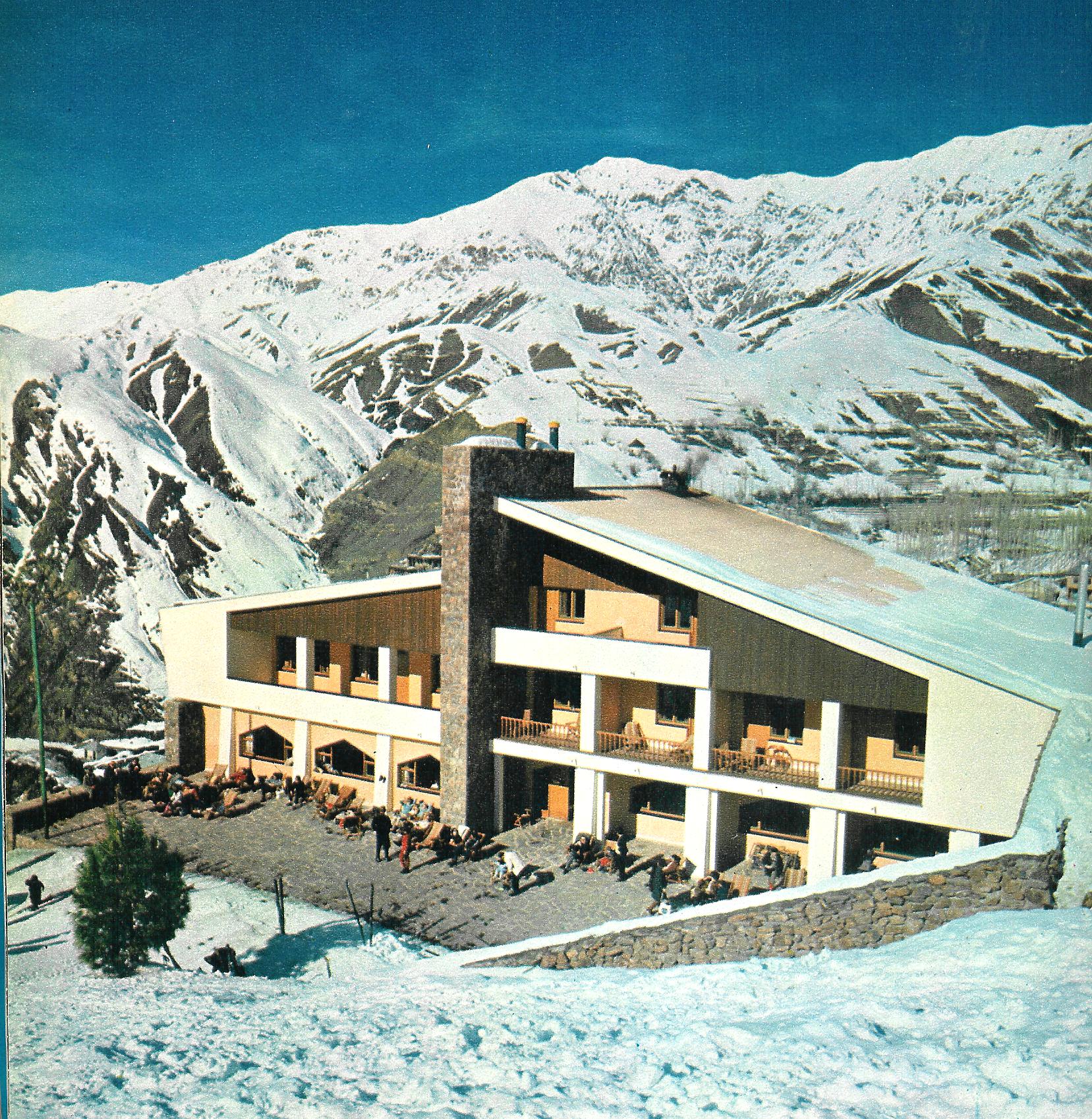

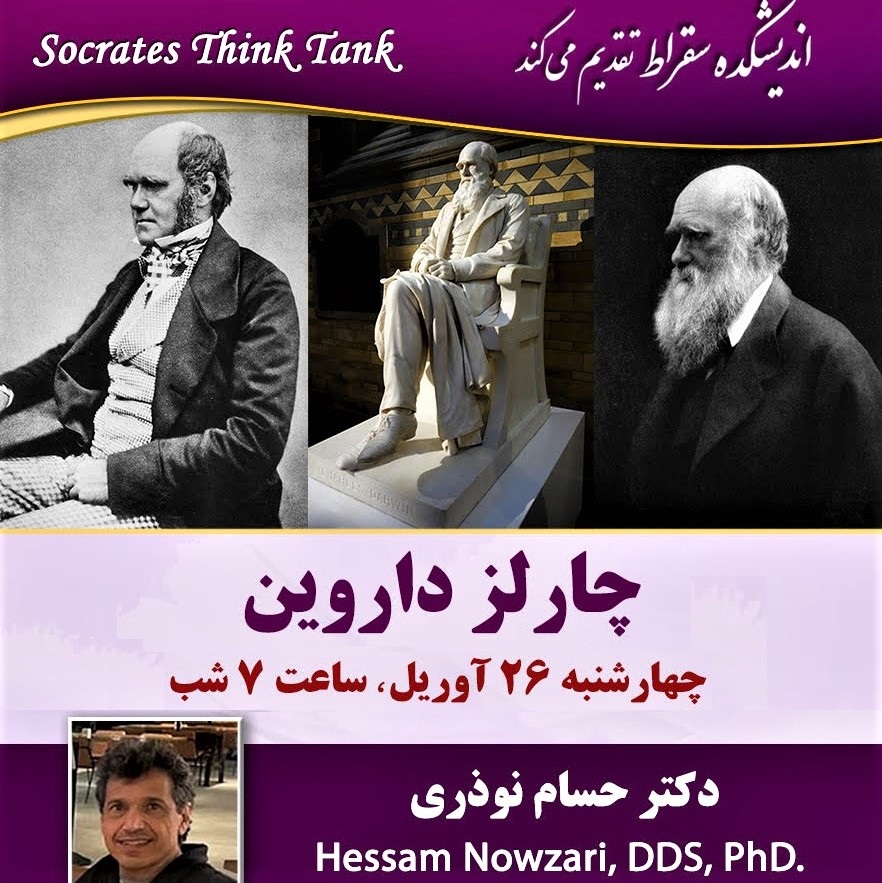 (1) Images of the day: [Left] Throwback Thursday: The popular Shemshak Ski Resort near Tehran, Iran, 1971. [Center] Best-preserved 17th-century ship: The Swedish warship Vasa sank in 1628 less than a mile into its maiden voyage and was recovered from the sea floor nearly intact after 333 years. [Right] Wednesday night's talk on Charles Darwin (see the last item below).
(1) Images of the day: [Left] Throwback Thursday: The popular Shemshak Ski Resort near Tehran, Iran, 1971. [Center] Best-preserved 17th-century ship: The Swedish warship Vasa sank in 1628 less than a mile into its maiden voyage and was recovered from the sea floor nearly intact after 333 years. [Right] Wednesday night's talk on Charles Darwin (see the last item below).
(2) Margo Seltzer of UBC named 2023-2024 ACM Athena Lecturer: Initiated in 2006, the Award, with a $25,000 honorarium, celebrates women researchers who have made fundamental contributions to computer science. Seltzer is recognized for foundational research in file and storage systems, pioneering research in data provenance, impactful software contributions in Berkeley DB, and tireless dedication to service and mentoring.
(3) RIP Harry Belafonte [1927-2023]: The legendary folk singer, actor, and civil-rights activist died at 96 of congestive heart failure. [13-minute CBS News interview/bio from 1997]
(4) One-liners: Brief news headlines, happenings, memes, and other items of general interest.
- A partial listing of financial corruption cases in Iran's Islamic government. [5-minute video]
- We need plans to allow people to enjoy our super-blooms, without destroying them.
- Forget about opioid addiction: The stealth campaign to get kids addicted to chess seems to be working!
- Quote of the day: "Anger is a wind which blows out the lamp of mind." ~ Robert G. Ingersoll
(5) A comprehensive report on why a Concorde supersonic passenger plane crashed in 2000, after 30 years of spotless safety record, killing 109 on board and 4 at the hotel which it hit on the ground. [30-minute video]
(6) Socrates Think Tank Talk: Last night, Dr. Hessam Nowzari, DDS, talked about "Charles Darwin." Dr. Nowzari is a highly-sought-after speaker, with numerous talks and other material on his YouTube channel. There were ~115 attendees.
Much has been said and written about Darwin, arguably one of the most-influential scientists of all time. His scientific contributions are well-known, but Dr. Nowzari placed greater emphasis on his humanity, kindness, generosity, and meticulousness.
Darwin's 10-year-old daughter suffered greatly before dying from illness, which affected him greatly and made him wonder about the purpose of life, famously saying that there is no justice, no morals, and no logic in nature. He was raised in an enlightened family, a fact that contributed to his world view: His grandmother encouraged everyone to pursue education and his grandfather declared that there are no differences among individuals.
Darwin was only 22 when he embarked on a 5-year journey of discovery. At the time, the world was believed to be only ~4000 years old. When he saw the diversity of existing life, noticed the large number of extinct species, and found evidence of marine life atop mountains, he concluded that at least millions of years would have been needed to go through so much change. Millions of years proved to be too conservative, but it was a major improvement over thousands of years!
Darwin noticed similarities among a multitude of species, coming to believe that all beings have a common root. The term "evolution" predates Darwin, but he formulated the notion of "natural selection" after Alfred Wallace got in touch with him in the late 1850s. The two began exchanging ideas and Darwin later wrote On the Origin of Species, one of the world's most-important and most-read books. It is noteworthy that genetics did not yet exist at the time.
Darwin philosophized that he wanted to be taught how to think not be fed information. He disputed the existence of distinct races and believed that all forms of life are connected. His last book was about the "lowly" earthworm, which he praised and basked in its magnificence. Darwin was universally loved for his work and personality, so much so that upon his death, a large number of individuals from all walks of life wanted to offer fawning eulogies.


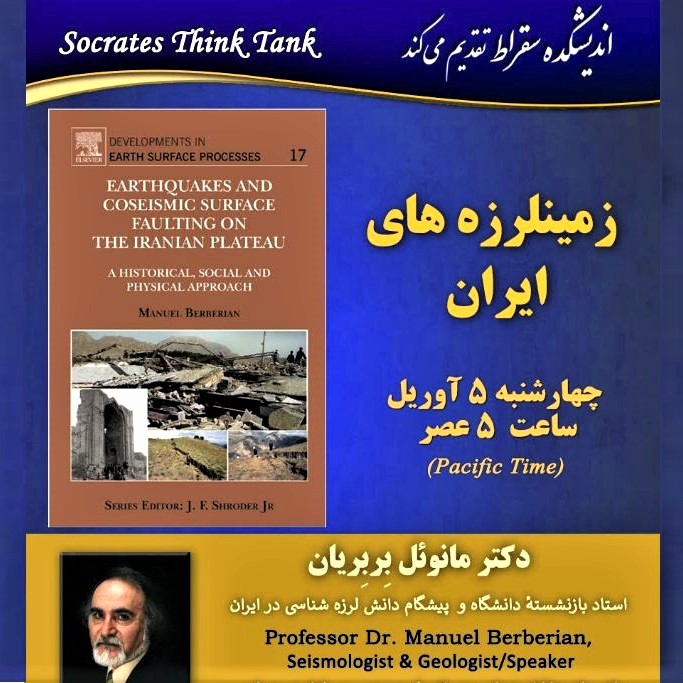 (1) Images of the day: [Left] Hall-of-Famer James Taylor is back on the road for his 2023 US Summer Tour! [Center] New Yorker cartoon of the day: Suggested use for Bed Bath & Beyond discount coupons, now that the chain is closing due to bankruptcy. [Right] Talk on "Iran Earthquakes" (see the last item below).
(1) Images of the day: [Left] Hall-of-Famer James Taylor is back on the road for his 2023 US Summer Tour! [Center] New Yorker cartoon of the day: Suggested use for Bed Bath & Beyond discount coupons, now that the chain is closing due to bankruptcy. [Right] Talk on "Iran Earthquakes" (see the last item below).
(2) Leave the science to politicians: "Leaders take the bull by the horns and make decisions for themselves. They don't subcontract out their leadership to health bureaucrats like Dr. Fauci." ~ Gov. Ron DeSantis
(3) Feminist Assessment of Charters and Women's-Rights Bills Put Forward After the #WomanLifeFreedom Panel discussion, featuring Mahdieh Golroo, Nayereh Tohidi, & Mansoureh Shojaee. June 3, 2023, 11:00 AM.
(4) One-liners: Brief news headlines, happenings, memes, and other items of general interest.
- The five Lagrange points & their relationship to where James Webb Space Telescope is positioned in space.
- Soccer fans in Tehran praise Reza Shah and curse the Islamic Revolutionary Guard Corps.
- An explanation of why Airbus A380 was a flop: In part, because the hub/spokes model ceased to work.
- English for Persian speakers: Some common and useful English idioms. [16-minute video]
(5) "Privacy, The Backstory": This was the title of a UCSB informational webinar, held this morning, with instructors Becky Steiger (Campus Privacy Officer) and Sara Cook.
Privacy isn't just about data, it's a human right, whose roots can be traced back to ancient philosophers. It is mentioned both in the US Constitution (9th and 14th Amendments, in particular) and in California's Constitution. [The Periodic Table of Amendments]
First, some history. Roe-v.-Wade (1973) confirmed the right to privacy implied in the 14th Amendment. Five decades later, Dobbs-v.-Jackson (2022) reversed some of the earlier interpretations of "unenumerated rights" and redefined the scope of privacy protection under the 14th Amendment. A 1927 Virginia law allowed psychiatric patients to be sterilized, which served as a model for Nazi Germany's eugenics laws.
A common question regarding privacy is: If I have nothing to hide, why would I care about data collected on me? This is the wrong question. One should ask if s/he would be comfortable with the most intimate aspects of his/her life being monitored and logged. Location data, in particular, is sensitive data and its is highly prized by commercial entities. FTC-v.-Kochava dealt with the sale of geolocation data.
Another set of sensitive data appears in educational records. FERPA (Family Educational Rights and Privacy Act of 1974) is the most-commonly applied to UC. It covers educational records, including secret dossiers, invisible to students and parents, assembled by some schools. These include secret admissions files, which schools tend to destroy nowadays, rather than risk having them being requested by students and parents. Any school that receives funding through the US government is required to comply with FERPA.
Here are some of the other applicable laws/procedures:
IPA (Information Practices Act of 1977)
ECP (Electronic Communications Policy), which arose from faculty concerns that their e-mails were monitored
PISI Report of 2013 (UC Privacy and Information Security Initiative)
GDPR & other international regulations (commonly apply to EAP and to a lesser extent admissions)
(6) Socrates Think Tank talk of April 5, 2023: I was unable to attend the talk of three weeks ago by Dr. Manuel Berberian entitled "Iran's Earthquakes," so I asked for and got a link to the 205-minute recording, based on which I prepared this brief report.
Dr. Berberian began with the question of why Iran's quakes are so destructive and lead to massive casualties. He then wondered about the vulnerability of key installations (atomic power generation facilities and the like) to earthquakes, given that they all happen to be on fault lines.
Earthquakes are caused by the movement of tectonic plates, with quakes occurring at the plate boundaries. Weather forecasting and prediction of volcanic eruptions, difficult as they are, can be done today with some precision. Earthquake prediction is still in its infancy. A quake's first shock wave travels at 6 km/s. The second shock wave travels at 4 km/s. The difference of shock-wave arrival times allows scientists to figure out the quake's epi-center and also be able to issue early warnings in some cases.
The behavior of a fault line is like a rechargeable battery. The fault line is charged, and after pressure is built up, it releases part of the stored energy. Three well-known historic quakes are: 1906 in San Francisco (7.9); 1923 in Japan (est. 7.9-8.2), with an accompanying tsunami; 1925 in Santa Barbara (6.5-6.8). The first building regulations to ensure strength and safety appeared 3773 years ago as part of Hammurabi's code. It envisaged penalties, up to and including death sentence, for an inadequately built structure causing deaths. In 1927, the US developed the first modern building code for quake safety.
Mass casualties in recent Turkey/Syria twin 7.8-magnitude quakes in an area with ~15 million residents make us wonder about the fate of the city of Tehran with about the same population in a much smaller area. Based on extrapolation from past major quakes near Tehran, the next major one is overdue. No one knows how the numerous residential towers and other high-rises built in Tehran over the past few decades will fare in a magnitude-8.0 quake.
In Turkey, too, based on a major quake in 1822, such a strong quake in the same region was fully expected. Corruption and favoritism led to building codes not being enforced, which produced the catastrophic results. Specialists from many world countries are at work in Turkey to assist the survivors and to study the quakes with regard to lessons for the future, given that 52,000 died, tens-of-thousands were injured or displaced, and 100,000+ structures were destroyed. In a comparative assessment, Turkey fares better than Iran with respect to several indicators, including GDP, corruption index, year of enacting the first seismic code, and number of revisions to the code.
Over the past four decades, Iran's rulers have not learned any lessons from quake destructions and have not developed an understanding of how to deal with such disasters. Crisis management skills are totally lacking. Destruction caused by minor and medium quakes indicate that building codes have not been followed. Iran continues to build structures on fault lines, despite recommendations to the contrary.


 (1) Images of the day: [Left] This example of Persian Sassanid art in Kermanshah, Iran, has endured ~1700 years of wind and rain. [Center] Fort of the Narin Castle in Meybod, Iran, built between 2000 and 6000 year ago. [Right] Stone carving depicting the triumph of Shapur I in 260 CE, Naqshe Rostam, Iran.
(1) Images of the day: [Left] This example of Persian Sassanid art in Kermanshah, Iran, has endured ~1700 years of wind and rain. [Center] Fort of the Narin Castle in Meybod, Iran, built between 2000 and 6000 year ago. [Right] Stone carving depicting the triumph of Shapur I in 260 CE, Naqshe Rostam, Iran.
(2) Major shake-ups in network news media: Fox News fires Tucker Carlson, its host with the most viewers. Don Lemon is ousted at CNN after 17 years.
(3) Math aversion in the US: In some countries, elevator control panels use the numbers –1, –2, etc. for floors below the ground floor, which is floor 0. The notation is unambiguous and makes perfect sense. In the US, we use vague designations such as B (basement), BB, B1, B2, P (parking), P1, P2, G (garage), and similarly uninformative or confusing labels, because we are afraid of negative numbers. So afraid, in fact, that in B1 & B2 or P1 & P2, we have essentially replaced the minus sign with the letter B or P. We also have floor 13 missing in many high-rises, but that's a different story.
(4) One-liners: Brief news headlines, happenings, memes, and other items of general interest.
- China reverses earlier statement and accepts that ex-Soviet states are sovereign nations.
- Late-night talk-show hosts have a field day with the firing of Tucker Carlson at Fox and Don Lemon at CNN.
- Facebook memory from Apr. 24, 2020: These women will never have to take another group photo!
- Facebook memory from Apr. 24, 2017: Today is Holocaust and Armenian Genocide Remembrance Day.
- Facebook memory from Apr. 24, 2016: Google's automatic photo-indexing capabilities are scary.
- Facebook memory from Apr. 24, 2015: Elizabeth Warren's journey from a janitor's daughter to Senator.
- Facebook memory from Apr. 24, 2012: The state of a quantum-computer prototyping project (humor).
- Facebook memory from Apr. 24, 2009: Parhami Family whitewater adventure, August 2007.
(5) Is Mount Everest really the world's highest point? It depends on how you define "highest point." Our common measure is "relative to sea level," but sea level is not the same around the world; it is higher (more distant from Earth's center) at the equator and lower at the poles. If we use "relative to Earth's center," then Mount Everest will rank 10th, with 8 of the 9 taller mountains being in South America and one in Africa.
(6) Iran lobbies in the US: This article and its embedded 31-minute video are about a year old, but they provide an excellent overview of Iran's lobbying arms in the US. Unfortunately, these lobbies have been quite popular in the US media, academia, and think tanks.
(7) Final thought for the day: This year's changes in baseball are expected to make it competitive with other sports and a host of entertainment alternatives. Because of the introduction of a pitch clock, which limits the time available to the pitcher between pitches, the average game duration, which had been growing from 2:35 hr in 1980 to 3:08 hr in 2022, is down to 2:39 hr. A host of other changes has increased the batting average from 0.231 to 0.247, making the games more entertaining. [NYT]





 (1) Images of the day: [Top left] Intricate paper sculpture by @juliaibbini. [Top center] We should all send checks in the amount of "thoughts and prayers" to politicians who ask for campaign donations, but do zilch to enact common-sense gun laws. [Top right] Before computerized traffic control: This photo from the 1970s shows a street in Chernivtsi, Soviet Ukraine, where a person sitting in a traffic booth controlled the traffic lights. [Bottom left] Cover feature of CACM (see the next item below). [Bottom center] Vehicles driving/parking on UCSB campus walkways (see item 3 below). [Bottom right] Tonight's wonderful performance by Artemis jazz group: Comprised of pianist and musical director Renee Rosnes, clarinetist Anat Cohen, tenor-saxophonist Melissa Aldana, trumpeter Ingrid Jensen, bassist Noriko Ueda, drummer Allison Miller, and vocalist Cecile McLorin Salvant, the acclaimed jazz group performed at UCSB's Campbell Hall tonight (8-minute video).
(1) Images of the day: [Top left] Intricate paper sculpture by @juliaibbini. [Top center] We should all send checks in the amount of "thoughts and prayers" to politicians who ask for campaign donations, but do zilch to enact common-sense gun laws. [Top right] Before computerized traffic control: This photo from the 1970s shows a street in Chernivtsi, Soviet Ukraine, where a person sitting in a traffic booth controlled the traffic lights. [Bottom left] Cover feature of CACM (see the next item below). [Bottom center] Vehicles driving/parking on UCSB campus walkways (see item 3 below). [Bottom right] Tonight's wonderful performance by Artemis jazz group: Comprised of pianist and musical director Renee Rosnes, clarinetist Anat Cohen, tenor-saxophonist Melissa Aldana, trumpeter Ingrid Jensen, bassist Noriko Ueda, drummer Allison Miller, and vocalist Cecile McLorin Salvant, the acclaimed jazz group performed at UCSB's Campbell Hall tonight (8-minute video).
(2) Protecting autonomous cars from phantom attacks: This cover feature of CACM, issue of April 2023, asserts that distinguishing between real and projected/perceived objects is a limitation of AI models, particularly object detectors. This limitation can be exploited by attackers to mislead object detectors embedded in commercial driver assistance systems to induce an undesired/dangerous reaction from an autonomous vehicle.
(3) Vehicles abusing UCSB campus walkways: I used to document on my "Pet Peeves" Web page abuses of UCSB campus walkways by vehicles of all kinds (courier services, vendors, campus vehicles, and faculty/staff/students parking near buildings, when authorized parking spots were all taken). I essentially gave up on reporting these violations, when they led to little action on the part of the campus administration. I photographed this car on the sidewalk between UCen and Music Building, on Friday, April 14, 2023.
(4) [Notes from UCSB ECE Summit 2023] Technology and healthcare:
Nearly 22 years ago, on September 7, 2001, a momentous transition occurred in the application of technology to health care. Using Computer Motion's Zeus robot, a team of surgeons in New York removed a 68-year-old woman's gall-bladder as she lay thousands of miles away in Strasbourg, France. Dr. Yulun Wang, a founder of World Telehealth Initiative
and a serial-entrepreneur who earned a PhD from UCSB, was an active participant in pulling off this first robotic surgery. He gave a keynote talk at the 2023 ECE Summit under the title "An Entrepreneur's Perspective on the Convergence of Surgical Robotics & Telemedicine," painting a rosy picture of the outcomes.
I share in the view that such a convergence is indeed inevitable, technically feasible, and socially desirable. I am, however, quite pessimistic about the role of humans in the loop. Experience from electronic health records in use today indicates that the most-advanced technology cannot compensate for disengaged, impassive, or poorly-trained healthcare workers. Currently, a patient must remind his/her doctor or nurse about medications, history of illnesses, allergies, and other personal details that are all recorded in the healthcare provider's database and can be accessed with a few clicks.
Part of the problem may be the poorly-designed interfaces in use, which complicate access. Text-based data entry into healthcare records is also at fault. Technophobia possibly plays a role as well, although this latter problem is fixable by standard, friendly interfaces whose features are taught in medical/nursing schools.





 (1) Images of the day: [Top left] Was Fox News dumb to settle Dominion's lawsuit? (see the next item below) [Top center] Letter from Islamic Republic of Iran's Revolutionary Court, dated March 5, 1980, summoning ten music stars to Evin Prison for questioning (credit: Dr. Farzaneh Hemmasi). [Top right] Useful gadget: I bought this set of coasters & jack as tools for moving furniture and other heavy items. [Bottom left] Built around 1459, Mehrangarh Fort in Jodhpur Rajasthan is one of India's largest forts. [Bottom center] Iran art & architecture: Golestan Palace in Tehran. [Bottom right] Another beautiful California super-bloom (photo by Ryan Resatka).
(1) Images of the day: [Top left] Was Fox News dumb to settle Dominion's lawsuit? (see the next item below) [Top center] Letter from Islamic Republic of Iran's Revolutionary Court, dated March 5, 1980, summoning ten music stars to Evin Prison for questioning (credit: Dr. Farzaneh Hemmasi). [Top right] Useful gadget: I bought this set of coasters & jack as tools for moving furniture and other heavy items. [Bottom left] Built around 1459, Mehrangarh Fort in Jodhpur Rajasthan is one of India's largest forts. [Bottom center] Iran art & architecture: Golestan Palace in Tehran. [Bottom right] Another beautiful California super-bloom (photo by Ryan Resatka).
(2) Pundits opine that Fox News was stupid to agree to pay Dominion $787 million to settle the latter's defamation lawsuit: I'm not so sure that the settlement was dumb. Remember that Fox News resorted to lying because it was afraid of losing its audience to Newsmax and OAN. Well, Dominion has pending lawsuits against the latter two, who, unlike Fox, do not have deep pockets to settle and will likely go bankrupt as a result of damages they will have to pay. So, in a single action, Fox settled its own lawsuit without apologizing or admitting guilt and buried its main competition!
(3) US Senator Sheldon Whitehouse discloses Justice Clarence Thomas's financial entanglements with Republican billionaire mega-donor Harlan Crow, without appropriate, legally-required disclosures.
(4) One-liners: Brief news headlines, happenings, memes, and other items of general interest.
- Congressman Salud Carbajal responds to my request for support of Iran's #WomanLifeFreedom uprising.
- Oxygen gives us life, but there's a lot more to know about this vital gas.
- Spectacular snow flow: Bijan Pass on Dena Mountain, Iran. [2-minute video]
- Math puzzle: What is the maximum number of regions formed by 6 straight lines on a plane?
(5) "Safari Dar Pish Ast": This is the title of a 120-minute documentary film about the funeral of the Iranian singing superstar Hayedeh on January 28, 1990. This film was mentioned by Dr. Farzaneh Hemmasi in her ethnomusicology talk at UCSB on Wednesday, April 19, 2023.
And here is a holographic re-creation of the late Hayedeh for a Manoto TV Nowruz program.
(6) Book bans are on the rise in the US: According to new research, there was a 28% increase in banned books over the second half of the 2022-2023 school year compared with the first half.
(7) India will overtake China as the most-populous country by mid-2023, according to UN data: India has a wide gender gap and a significantly lower per-capita GDP, so the role-reversal in population may not reduce China's power or influence on the world stage.
(8) Jericho is the world's oldest walled city: Currently situated in Palestine, Jericho contains evidence of stone fortifications that are ~9000 years old as well as 11-millenia-old traces of habitation.
(9) The wide-bandgap wars: Whichever candidate technology, gallium-nitride or silicon-carbide, prevails, the winner will cut greenhouse gases by billions of tons per year.
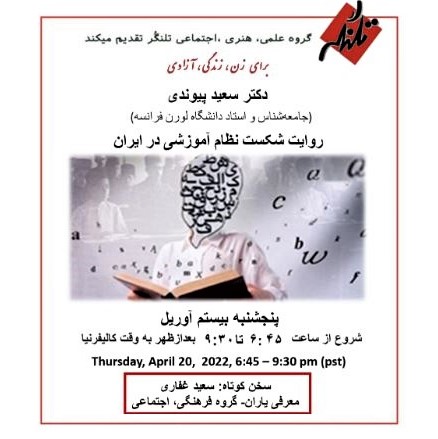
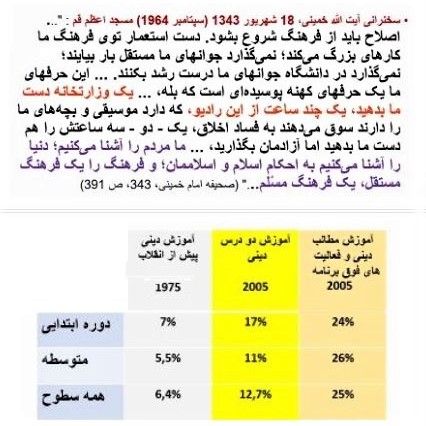
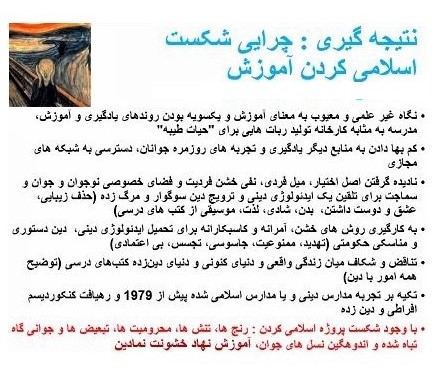 (1) Tonight's Talangor Group Talk: Dr. Saeed Paivandi talked under the title "The Failure of Iran's Educational System." There were ~80 attendees. The main talk was preceded by a brief presentation by Saeed Ghaffari, introducing the Yaran Group, which has members in the US & Iran and is active in social/educational NGO projects in Iran (yaranculture.org).
(1) Tonight's Talangor Group Talk: Dr. Saeed Paivandi talked under the title "The Failure of Iran's Educational System." There were ~80 attendees. The main talk was preceded by a brief presentation by Saeed Ghaffari, introducing the Yaran Group, which has members in the US & Iran and is active in social/educational NGO projects in Iran (yaranculture.org).
I heard Dr. Paivandi speak on this topic as part of UCLA's Bilingual Lecture Series on Iran (my report of January 8, 2023). Another previous talk by Dr. Paivandi was in the context of Iran Academia's MOOC on Feminism, Gender, and Sexuality (my report of August 30, 2021).
Dr. Paivandi observed that Islamization efforts began soon after the 1979 Revolution, but they weren't successful at all, as admitted by many of the regime officials, including the Supreme Leader himself. Internationally, education has the triple goals of transfer of cultural/scientific traditions, participation in societal order/institutions, and preparing the youth for entering the job market. In Iran, these goals take a back seat to Islamic indoctrination, with the aim of training obedient citizens.
Even before the Islamic Revolution, there were actors who criticized secular education, which they viewed as spreading the Western influence. Iran's new educational system was born in the 19th century, in direct conflict with traditional religious schools, leading to strong opposition from the clergy. Compromises were made to appease the clergy, but modernization continued unabated.
Closed governments such as Iran's view their educational systems as tools for controlling and brainwashing the next generation to be loyal to the regime. Their systems infuse the goals and curricula from above. Keywords and key-phrases in the discussion of Islamization of education include Islamic society, Islamic culture, religious morals, countering the Western influence, preventing deviance resulting from the Western culture, establishing religious norms (e.g., hijab, prayer rites, and textbook revisions).
The so-called "Cultural Revolution" of 1980 brought with it only superficial changes in clothing and behavior. Ideological revisions based on a new law passed in 1987 prioritized religious devotion over knowledge acquisition. A fundamental-changes document issued in 2012 enumerated all that the regime aspired to implement in the country's educational system.
As a remedy to the admitted defeat, the regime introduced a new course and textbook entitled "Islamic Lifestyle." School textbooks in Iran do not promote peace, but encourage conflict and fighting. Almost every textbook contains omissions and misinformation. For example, some heroes of the Constitutional Revolution are painted as villains or dismissed as "Westoxified." Textbooks and curricula are regressive, emphasizing old history and Islamic personalities, with the clergy emerging as heroes.
Currently, there are two schools of thought about what to do. Conservatives believe that Islamization has not gone far enough and that more Islamic content must be added. Moderate forces assert that too much pressure on the youth can backfire and more subtle forms of Islamic education are called for.
The latter group cites resistance by students, particularly girls, who want to get rid of restrictions on clothing (style & colors). The emergence of open international communication, facilitated by technology, is bound to deal the Islamic regime's Islamization plans for education additional blows in the coming years.
Related book: Women, Islam, and Education in Iran, Routledge, 2019.
Related article: "Seven Questions on the Meaning of Islamizing Social Sciences in Iran," 2015, in Persian.
(2) One-liners: Brief news headlines, happenings, memes, and other items of general interest.
- Gun violence: Man shoots little girl & her parents after he got mad that a basketball rolled into his yard.
- This 4-minute video clip showing fissure among Iran's ruling class is 2 years old, but it's still relevant.
- An interesting discussion on free will: Is it real or an illusion we humans invented? [10-minute video]
- The secret of life in just six words: Before middle age, do not fear; after middle age, do not regret.
- English lesson for Persian speakers: Five English words, explained in a fun way. [15-minute video]
(3) Imagine knocking on the wrong house door and getting shot in the head: This self-defense obsession has gone too far. Sixteen-year-old Ralph Yarl went to pick up his younger siblings, but knocked on the wrong door. The house's owner shot him in the head through a locked glass door, claiming that he did it in self-defense.
(4) Not giving exams saves lives (humor): The Grandmother Syndrome refers to the fact that grandparents are 10 times more likely to die (actually, to be reported dead) the week of their grandchild's midterms and 19 times more likely to die during finals! It is interesting that when exams are imminent, grandmothers are 24 time as likely to die as grandfathers. There is also a correlation with the student's grade. Grandmothers of F students die at 25 times the rate of those of A students.

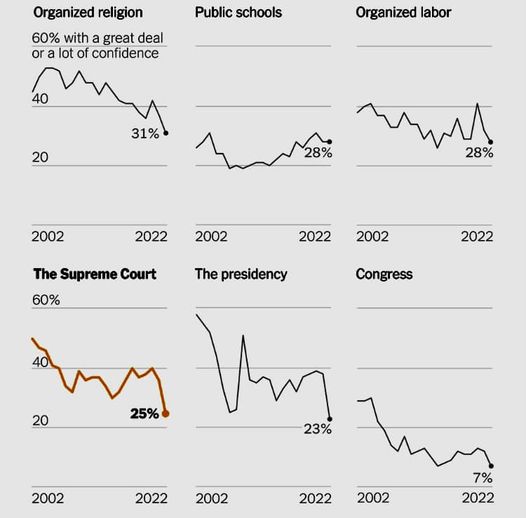
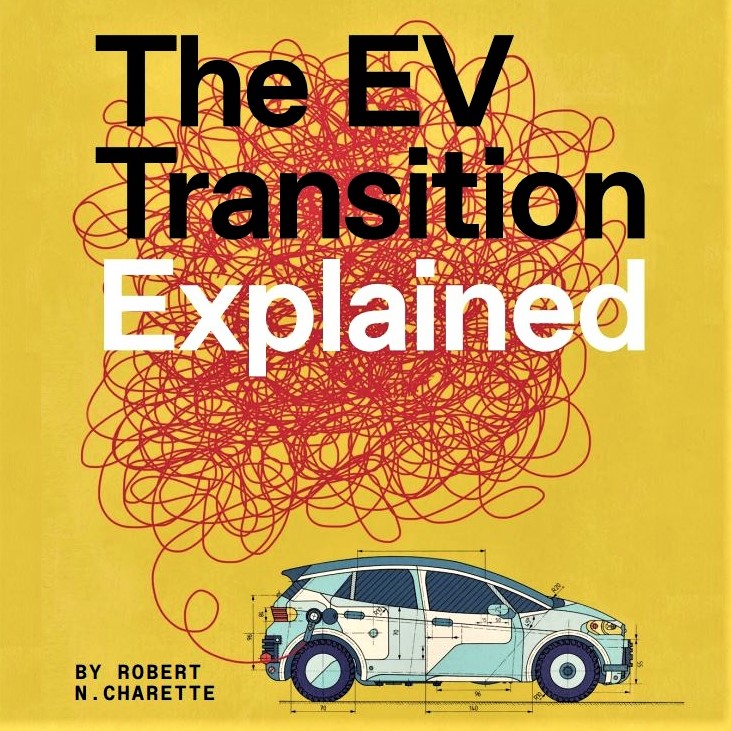


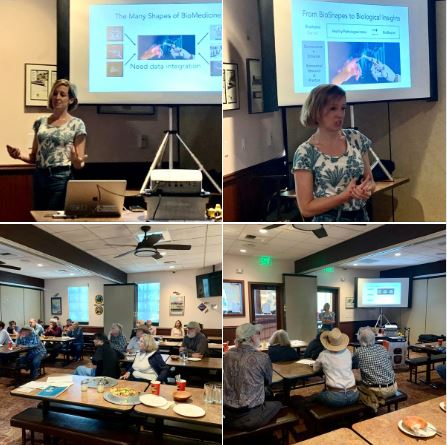 (1) Images of the day: [Top left] The city of Erbil, capital of Iraq's Kurdistan region, is at least 8000 years old. [Top center] Americans are losing confidence in their institutions (NYT chart): The Supreme Court fares poorly, with its approval rating halving, from 50% to 25%, over the two decades 2002-2022. The presidency and Congress have done even worse. [Top right] eBook published by IEEE Spectrum: Charette, Robert N., The EV Transition Explained, 49 pp., 2023. [Bottom left] Ethnomusicology talk at UCSB (see the next item below). [Bottom center] Silly photos we took at the wedding ceremony of my niece on Sunday 4/16. [Bottom right] IEEE Central Coast Section technical talk by Dr. Nina Miolane of UCSB (see the last item below).
(1) Images of the day: [Top left] The city of Erbil, capital of Iraq's Kurdistan region, is at least 8000 years old. [Top center] Americans are losing confidence in their institutions (NYT chart): The Supreme Court fares poorly, with its approval rating halving, from 50% to 25%, over the two decades 2002-2022. The presidency and Congress have done even worse. [Top right] eBook published by IEEE Spectrum: Charette, Robert N., The EV Transition Explained, 49 pp., 2023. [Bottom left] Ethnomusicology talk at UCSB (see the next item below). [Bottom center] Silly photos we took at the wedding ceremony of my niece on Sunday 4/16. [Bottom right] IEEE Central Coast Section technical talk by Dr. Nina Miolane of UCSB (see the last item below).
(2) Ethnomusicology Forum: In today's UCSB Music Dept. forum, Dr. Farzaneh Hemmasi (U. Toronto) spoke under the title "Live, Die, Repeat: Burying and Resurrecting Iranian Pop Stars in Southern California."
After Iran's Islamic Revolution, most women and quite a few men pop singers left the country, many of them settling in the Los Angeles area, where a Persian music industry flourished. As famous pop singers of the Pahlavi era started new careers in the West without any hope of someday returning home, they remained as celebrated as ever, although the quality of their music suffered due to lack of resources comparable to what was available to them in pre-Revolution Iran.
Dr. Hemmasi examined a series of diasporic cultural productions involving deceased Iranian pop musicians of the Pahlavi era to explore how practices of memorialization and performance and media-enabled resurrection are used to counteract the finality of death and embed national heritage in California. These practices are entangled with expatriate business & settlement in exile, diaspora politics, and pervasive, productive nostalgia.
Drawing on ethnographic fieldwork in the "Tehrangeles" Iranian pop music and media industries, Dr. Hemmasi examined practices and sites including celebrity impersonators, a hologram of Hayedeh, and Southern Californian Iranian gravesites (Hayedeh's in Westwood being a most-popular shrine, with many visitors) as creative responses to open-ended separation.
A lively and informative Q&A session followed the talk.
(3) One-liners: Brief news headlines, happenings, memes, and other items of general interest.
- Fox News settles Dominion's defamation lawsuit by paying $787.5 million, right before the start of trial.
- NYC parking garage collapses: Amazingly, only one person is dead. The garage had years of code violations.
- Historic rainfalls bring super-blooms to California and other parts of the southern and western US.
- Be careful where you recharge your phone: Dangers lurk in public juice-jackers.
- Facebook memory from Apr. 19, 2018: Remembering a friend, Fakhteh Borhan, 10 years after her passing.
- Facebook memory from Apr. 19, 2013: Iranian parents not showing affection at home hurts their children.
- Facebook memory from Apr. 19, 2010: The Persian "Putting watermelon under one's armpit" taken literally.
(4) IEEE Central Coast Section technical talk: Dr. Nina Miolane (ECE, UCSB) spoke tonight under the title "Geometric Learning for Shape Analysis from Bioimaging Data."
Advances in bioimaging techniques have enabled us to access the 3D shapes of a variety of structures: organs, cells, proteins. Since biological shapes are related to physiological functions, statistical analyses in biomedical research are poised to incorporate more shape data. This leads to the question: How do we define quantitative descriptions of shape variability from images?
Mathematically, landmarks' shapes, curve shapes, surface shapes, or shapes of objects in images are data that belong to non-Euclidean spaces, for example to Lie groups or quotient spaces. In this context, Dr. Miolane has introduced "Geometric statistics," a statistical theory on non-Euclidean spaces. In tonight's talk, she presented studies showing the theory and applications of Geometric Statistics to the analysis of biomedical shape data.
Other aspects of Dr. Miolane's research, which she discussed, include using data that is less costly to obtain (e.g., characteristics of a person's gait) for predicting the onset of Alzheimer's and other diseases in future.
[Speaker's UCSB page]
[Speaker's personal page]
[IEEE CCS event page &
Technical Talks page]

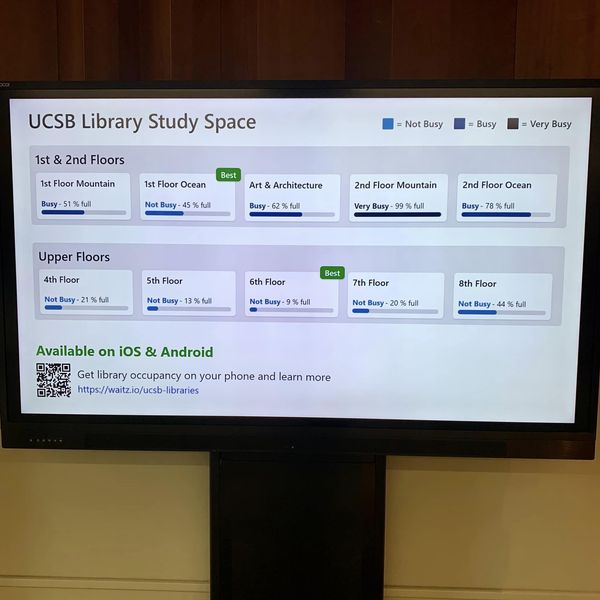



 (1) Images of the day: [Top left] Young Kurdish woman with traditional clothes. [Top center] UCSB Library's excellent idea of showing the availability of study space on various floors and in different areas. [Top right] Poetry, art, and fashion: A formidable combination! [Bottom left] Every one of the Islamic Republic officials lied to the Iranian people by assuring them that hijab won't become mandatory. [Bottom center] Iranian women & girls: Government propaganda vs. reality. [Bottom right] An unusual shot of Tehran's Azadi Tower.
(1) Images of the day: [Top left] Young Kurdish woman with traditional clothes. [Top center] UCSB Library's excellent idea of showing the availability of study space on various floors and in different areas. [Top right] Poetry, art, and fashion: A formidable combination! [Bottom left] Every one of the Islamic Republic officials lied to the Iranian people by assuring them that hijab won't become mandatory. [Bottom center] Iranian women & girls: Government propaganda vs. reality. [Bottom right] An unusual shot of Tehran's Azadi Tower.
(2) Oklahoma governor wants a rural county's top officials to resign: They were recorded talking about beating, killing, & burying local reporters and lamenting that they could no longer lynch Blacks.
(3) One-liners: Brief news headlines, happenings, memes, and other items of general interest.
- Arab Winter: Fight between rival military groups in Sudan leaves scores dead and hundreds injured.
- Iran copying the Taliban's playbook: A 2015 story about chemical attacks at girls' schools in Afghanistan.
- FBI arrests two men for setting up and operating a Chinese police outpost in New York City.
- The longest-running show in history, "Phantom of the closes after 35 years and 13,981 performances.
- A middle-school named after author George Dawson banned parts of his book, Life Is So Good, last year!
- Persian poetry: A wonderful verse from Pejman Bakhtiari (old spirit in a young body & vice versa). [Image]
(4) [Notes from Mind & Machine Intelligence Summit 2023] Why we are easily fooled by fake videos: Two mechanisms are at work. First, we are evolutionarily programmed to attach great weight to realistic images. We put too much trust in our eyes relative to other senses, hence the saying "seeing is believing." Second, we're disadvantaged by positive machine stereotypes. For decades we've been told that machines are both accurate and impartial. Research results showing that algorithms can be biased and way off-base are fairly recent and have not yet propagated to the society at large.
(5) [Notes from Mind & Machine Intelligence Summit 2023] Not only race, but other aspects of a person's physical appearance affect how s/he is treated and opportunities presented to him/her. Here is a striking example. In the US, 14.5% of people are 6 feet or taller. Of Fortune 500 CEOs, 58% are 6 feet or taller.
(6) [Notes from Mind & Machine Intelligence Summit 2023] Indian WhatsApp lynchings: We talk & write a lot about potential dangers of misinformation & disinformation on social media. Few people know that some of these doomsday scenarios have already materialized. Two-dozen people died in India, when false rumors about child-abduction & organ-harvesting were attached to real videos, with the goal of stirring violence to settle old scores. For example, one video, which had been made as a public-service announcement to warn about possible child abductions, was used under the pretense that it depicted a real child abduction.
(7) The world's most-beautiful calendar: Between its covers are 206 sheets of fine calfskin, profusely illustrated by the Flemish Limbourg brothers, Herman, Johan, and Paul. [NYT pictorial]



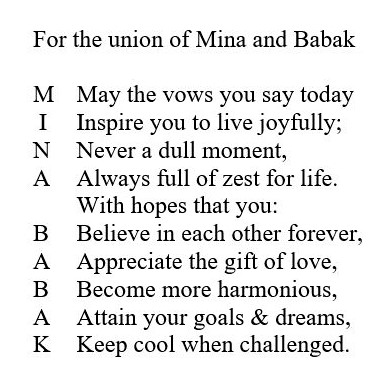
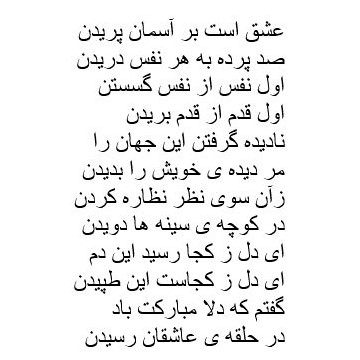



 [Top row] Arriving at the wedding venue, with my children and grand-nephews. The wedding ceremony and reception were held at Spanish Hills Club in Camarillo, Southern California.
[Top row] Arriving at the wedding venue, with my children and grand-nephews. The wedding ceremony and reception were held at Spanish Hills Club in Camarillo, Southern California.
[Middle row] My well wishes for the bride & groom, Mina and Babak, and selected verses from a Mowlavi/Rumi poem, which I read during the marriage ceremony. [Recitation of the poem in a 3-minute video]
[Bottom row] The bride with her bridesmaids and the exchange of vows, memorial table bearing a photo of my mom who did not live long enough to attend this highly-anticipated event, and ceremonial first dances.
[Photos from rehearsal day] The wedding venue; My daughter's cupcakes; dinner at Sadaf Restaurant
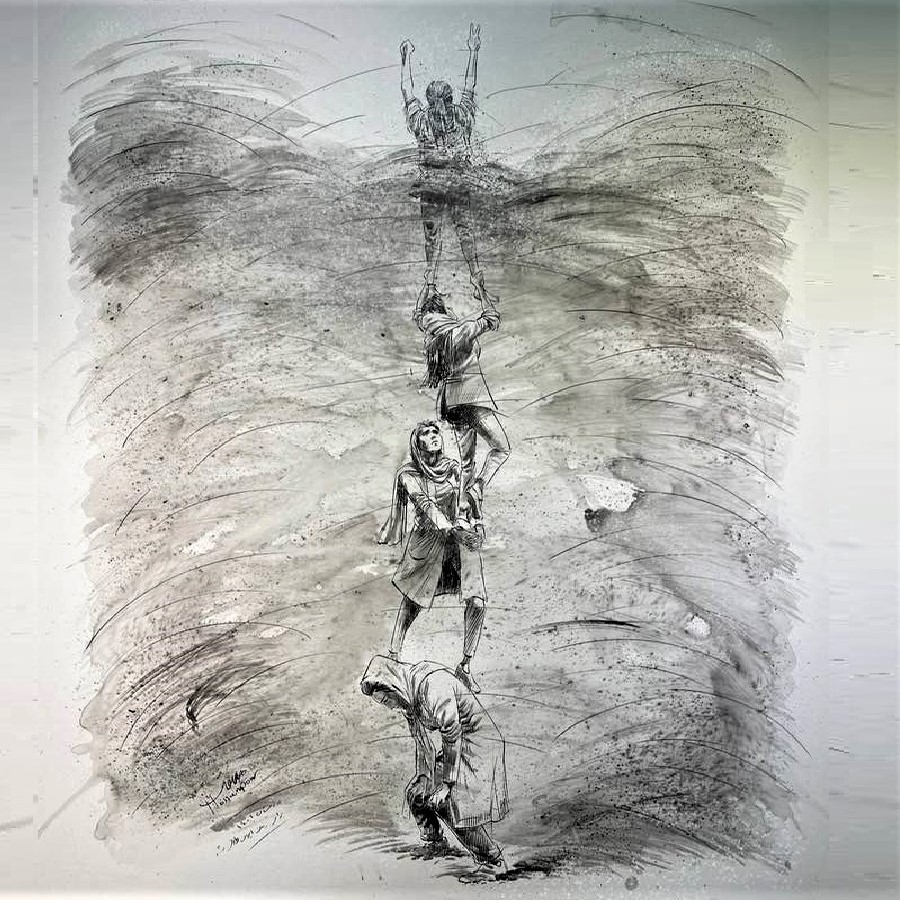
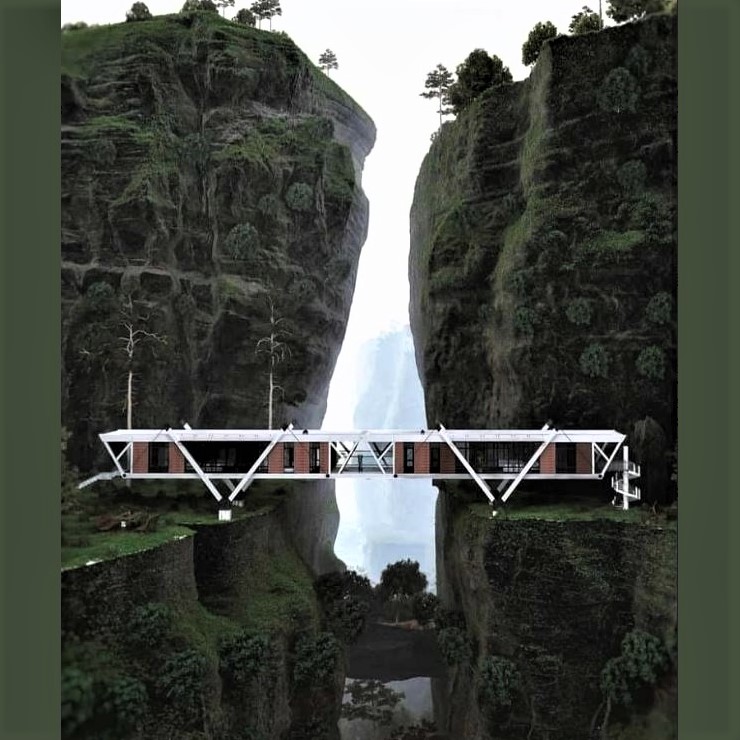
 (1) Images of the day: [Left] Four generations of Iranian women rising. [Center] Mountain retreat in New Zealand. [Right] Cartoon of the day: "Hi, we're here from the place with the God-given right to guns."
(1) Images of the day: [Left] Four generations of Iranian women rising. [Center] Mountain retreat in New Zealand. [Right] Cartoon of the day: "Hi, we're here from the place with the God-given right to guns."
(2) A puzzling question: How did we let a bunch of mullahs transform the Iranian culture, which is filled with festivals, music, poetry, and celebration of nature, into an Islamic culture based on mourning, coersion, banning of joy, and destruction of nature?
(3) Sharp rise in executions in Iran: Several watchdog agencies report that the number of executions by Iran's Islamic regime has risen by 75% over the last year and by even more compared with two years ago, concluding that Iran is using executions to scare protesters. Officially, only 4 protesters have been executed, but scores of others have already been sentenced to death or are at risk of being executed. The number of executions for drug offenses shows a sharp increase, raising fears that dissidents are being executed under false drug charges, a less-costly action for the mullahs, following international outrage.
(4) One-liners: Brief news headlines, happenings, memes, and other items of general interest.
- Kettle talks to teapot: Iranian authorities meet with the Taliban in a love fest!
- Women are turned away or forced to wear a headscarf at the entrance to a Tehran Metro station. [Tweet]
- PBS & NPR quit Twitter, after being labeled by the platform as state-backed media.
- How DNA, AI facial reconstruction, and sheer grit cracked a 75-year-old cold case.
- Give or Take? I was inundated with a flood of e-mails yesterday, urging me to donate to various entities.
- The new normal: Panel discussion at today's MMI Summit, with one remote & two local panelists.
- Facebook memory from Apr. 13, 2016: Now that Justice Thomas is in the spotlight, here's a film about him.
- Facebook memory from Aug. 14, 2016: If pregnancy is God's will, then so is erectile dysfunction!
(5) Music is the soundtrack of our lives: Voice of America interview with Sweden-based Iranian musician Rostam Mirlashari, who composes/performs Baluchi and other regional Iranian music. [45-minute video]
(6) Thursday & Friday, 4/13-14, at UCSB: Two major series of events overlapped, forcing me to go back and forth between the two and missing some interesting talks.
- Mind & Machine Intelligence Summit
- Advisory Board Meeting & ECE Summit
I will report on these events and some neat technical ideas in separate posts over the next few days.
[My Facebook post on MMI Summit] [My Facebook post on ECE Summit and its poster session]
(7) Final thought for the day: There's much talk about leaks of classified documents. Here's my recommendation on how to stop leaks. Eliminate the secret and top-secret classifications altogether. Biden and other US officials have indicated that the recent leaks are no big deal. If so, why were the documents classified to begin with? Imagine a world with no such classifications! An no religion too!




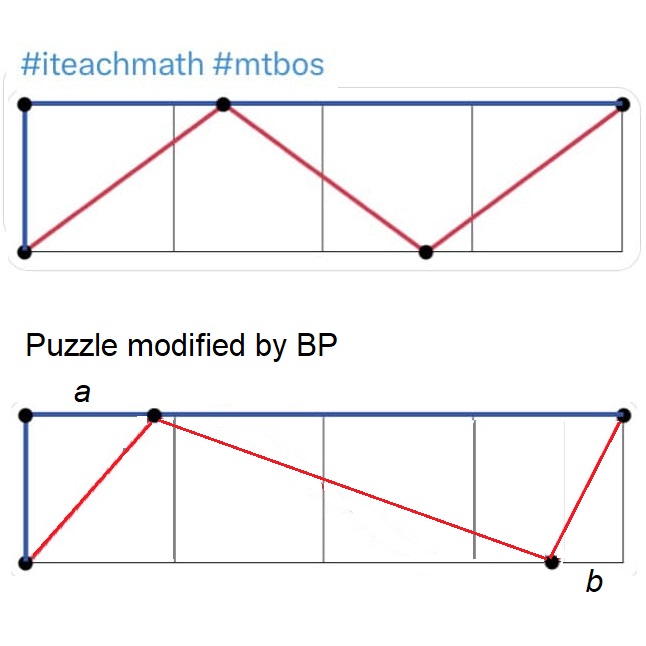
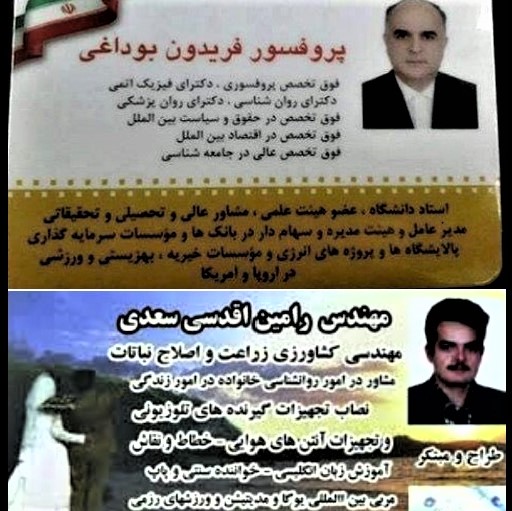 (1) Images of the day: [Top left] Throwback Thursday: San Francisco's Golden Gate Bridge during construction (colorized photo from 1934). [Top center] Wednesday's Plous Award Lecture at UCSB (see the last item below). [Top right] Santa Barbara Fiesta 2023 poster design revealed. [Bottom left] Lempel & Ziv of the LZ algorithm fame passed away (see the next item below). [Bottom center] Math puzzles: In the top diagram with 4 unit squares, the 3 red line segments have the same length. Show that the blue and red paths leading from the lower-left corner to the upper-right corner have the same length. Now, delete the part about the red line segments being of equal length and find out, in connection for the bottom diagram, what values of a and b would make the blue and red paths of equal length? [Bottom right] Geniuses all around (see item 3 below).
(1) Images of the day: [Top left] Throwback Thursday: San Francisco's Golden Gate Bridge during construction (colorized photo from 1934). [Top center] Wednesday's Plous Award Lecture at UCSB (see the last item below). [Top right] Santa Barbara Fiesta 2023 poster design revealed. [Bottom left] Lempel & Ziv of the LZ algorithm fame passed away (see the next item below). [Bottom center] Math puzzles: In the top diagram with 4 unit squares, the 3 red line segments have the same length. Show that the blue and red paths leading from the lower-left corner to the upper-right corner have the same length. Now, delete the part about the red line segments being of equal length and find out, in connection for the bottom diagram, what values of a and b would make the blue and red paths of equal length? [Bottom right] Geniuses all around (see item 3 below).
(2) Israeli computer scientists Jacob Ziv and Abraham Lempel dead at 91 & 86, within a month of each other: The duo developed the Lempel-Ziv (LZ) data compression algorithm, which set the stage for TIFF, PNG, ZIP, & GIF compression technologies and played a major role in developing PDF & MP3 formats. The elegant ideas presented by Lempel & Ziv are still resonant in the research community and many researchers are working on their expansion & development. RIP!
(3) Iranian super-geniuses: When know-nothing individuals are in power and surround themselves with others of their kind, charlatans and opportunists thrive. The image contains flyers/posters for two Iranians with multiple advanced degrees and many other specialties/skills. The language used makes it clear that much of the information is fake. A similar "expert" recently claimed that the Python language will solve all of Iran's problems, from curing cancer to offering accurate political and economic forecasts! These words were uttered in a symposium of "Top 1% Experts," in which President Raisi was present and took notes.
(4) UCSB Plous Award Lecture: The prestigious Harold J. Plous Award is given annually to "an assistant professor or instructor in the humanities, social sciences or natural sciences who has demonstrated outstanding performance or promise of performance as measured by intellectual and creative contributions to the college community." For his research in the framework of his Computational Mate-Choice Lab, Professor Dan Conroy-Beam (UCSB Psychological & Brain Sciences) is the honoree for 2022-2023.
His public lecture on Wednesday was entitled "The Most Important Decision You'll Ever Make," which refers to choosing a mate. Mating is at the center of our universe. Whom we fall in love with affects every corner of our lives, from the mundane to the momentous. Moreover, over deep time, mate choice has been one of the most potent forces responsible for shaping who we are as a species. Yet our understanding of how we choose our mating partners and how these choices reverberate out through our lives is shockingly imprecise. Professor Conroy-Beam illustrated how computer simulations of human mating markets can help us model the complex decision processes guiding our love lives. Describing two schemes, the Gale-Shapley Algorithm & Resource Allocation Model, Professor Conroy-Beam illustrated the surprising effectiveness of the models in predicting relationship success. These simulations shed light on how people choose their romantic partners and how they could be harnessed to help people form happier relationships. The models can be applied in other contexts outside romantic relationships, including friendships.
This paper contains scientific and experimental details, including other models not discussed in today's talk:
D. Conroy-Beam, K. V. Walter, and K. Duarte, "What Is a Mate Preference? Probing the Computational Format of Mate Preferences Using Couple Simulation," Evolution and Human Behavior, in press.
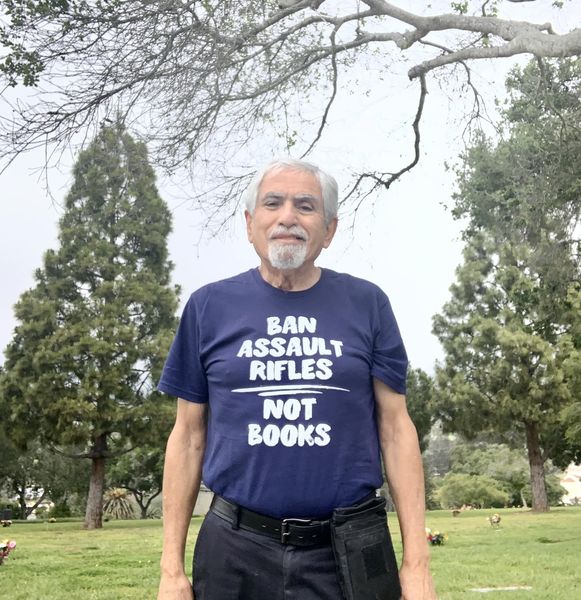

 (1) Images of the day: [Left & Center] At Santa Barbara Cemetery, early this afternoon. [Right] Freedom is near! #WomanLifeFreedom (photo credit: @oonparande).
(1) Images of the day: [Left & Center] At Santa Barbara Cemetery, early this afternoon. [Right] Freedom is near! #WomanLifeFreedom (photo credit: @oonparande).
(2) Iran's Islamic regime experiences growing fissures & poor morale internally: A recently-leaked document, if genuine, indicates substantial internal skepticism toward the handling of the current domestic crisis, and perhaps even pressure for limited reforms.
(3) Chemical-gas attacks continue at Iranian girl schools: The regime which boasts about its network of monitoring cameras and makes good use of them to identify and arrest hijab-less women and street protesters has not yet made a single arrest or named any culprit in the widespread chemical attacks targeting girls' schools over several months.
(4) One-liners: Brief news headlines, happenings, memes, and other items of general interest.
- Voice of America Persian interview with Dr. Carina Jahani about Baluchi languages in southeastern Iran.
- Brave Iranian woman dancing at the tomb of Hafez in Shiraz.
- Facebook memory from Apr. 10, 2021: The power of exponential growth in viral infections.
- Facebook memory from Apr. 10, 2021: Photos of my three sisters, on this National Siblings Day.
- Facebook memory from Apr. 10, 2020: Image from a FaceTime chat with my late friend Farhad Mavaddat.
- Facebook memory from Apr. 10, 2013: Elite colleges admit gladiators and turn down qualified applicants.
- Facebook memory from Apr. 11, 2018: Presidential vocab by grade level, from 4.6 to 11.3.
(5) Silly business terms: Nowadays, when you call for service, you get the privilege of an extended wait for talking with a "customer service representative," which is a fancy term for an inexperienced phone/computer operator at a call center, often overseas. Today, I called to make a medical appointment and was asked to wait for a "patient navigator."
(6) Iranian women continue to give the middle finger to Khamenei and his cronies who have issued fresh threats of fines & imprisonment to women who ditch their headscarves.
(7) Rabbi David Wolpe's farewell address at Passover: He advises Persian Jews to be tolerant of different political views and to focus less on money and peer pressure.
(8) Islam does not like open-plan kitchens: According to this Islamic Republic of Iran official, open-plan kitchens should be avoided, because they expose the woman working in the kitchen to guests!

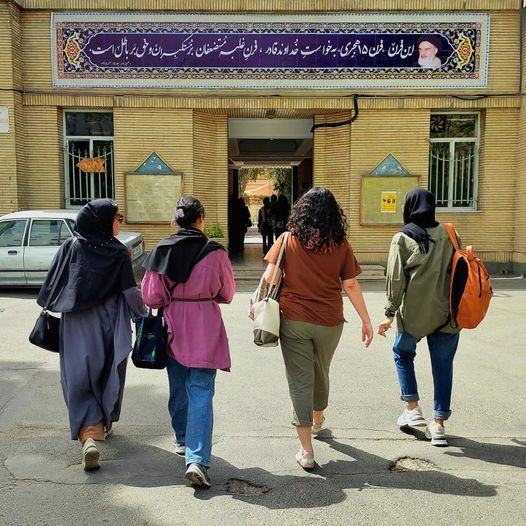
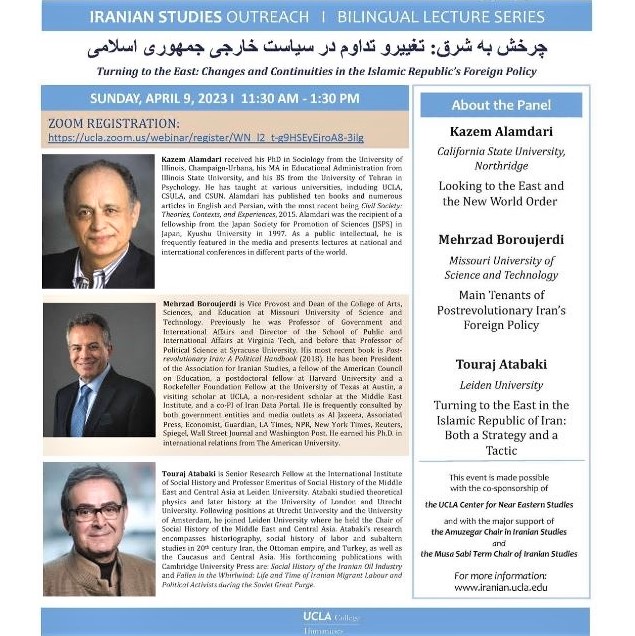 (1) Images of the day: [Left] Math and literature (see the next item below). [Center] Iranian women continue to defy compulsory hijab laws despite dire warnings from Khamenei and security officials; Photo taken at Al-Zahra University, Tehran. [Right] UCLA panel discussion on Iran's foreign policy (see the last item below).
(1) Images of the day: [Left] Math and literature (see the next item below). [Center] Iranian women continue to defy compulsory hijab laws despite dire warnings from Khamenei and security officials; Photo taken at Al-Zahra University, Tehran. [Right] UCLA panel discussion on Iran's foreign policy (see the last item below).
(2) Mathematics and literature: We are conditioned from childhood to think that one is either good at math/science or good with literature/humanities. There is little basis for this dichotomy, which is a fairly recent assertion. According to Sarah Hart, "For most of recorded history, mathematics was part of every educated person's cultural awareness."
The 11th-century Persian scholar Omar Khayyam, known for his exquisite poems, was also a mathematician. So was Lewis Carroll. Other famous authors, such as Herman Melville, Leo Tolstoy, James Joyce, Michael Crichton, and Arthur Conan Doyle have used mathematical metaphors in their writings.
Mathematician G. H. Hardy wrote that "a mathematician, like a painter or poet, is a maker of patterns. ... The mathematician's patterns, like the painter's or the poet's, must be beautiful; the ideas, like the colors or the words, must fit together in a harmonious way. Beauty is the first test: There is no permanent place in the world for ugly mathematics."
I count myself among those with interests in both math/science and poetry/writing. I take delight in a beautiful sentence that twists and turns, before coming to its conclusion several lines later. In composing poems, I tend to view them as puzzles to be assembled.
(3) UCLA Bilingual Lecture Series on Iran: Today's installment of the lecture series featured a panel discussion, in Persian, entitled "Turning to the East: Changes and Continuities in the Islamic Republic's Foreign Policy." Dr. Nayereh Tohidi (Cal State U. Northridge) introduced the panelists and moderated the Q&A session at the end.
*Dr. Mehrzad Boroujerdi (Vice Provost and Dean of College of Arts, Sciences, & Education at Missouri U. of Science & Technology).
Title: "Main Tenants of Post-Revolutionary Iran's Foreign Policy"
Revolutionary regimes are ambivalent about international order. They want to ignore or undermine it on the one hand and they seek international approval on the other. Ideological dogma makes the resolution of this conflict even more difficult. Yet, in some cases, Iran has taken realistic (non-ideological) positions, such as in the India-Pakistan and Azerbaijan-Armenia conflicts, where Iran did not back the Islamic side. Iran considers itself the center of the universe, despite the fact that it controls less than 1% of world trade. Being obsessed with conspiracy theories and using foreign policy to settle internal fights among power factions is another weakness of Iran. The country's Islamic rulers are also delusional, thinking that the West and Israel are on the decline, bound to fall in short order. Any tactical retreat, in terms of reversal of positions or showing "heroic flexibility" on the part of Iran has been the result of failures in its initial ambition of "Exporting the Revolution."
*Dr. Kazem Alamdari (Cal State U. Northridge, Sociology; and prior affiliations with several other institutions).
Title: "Looking to the East and the New World Order"
Iran's "look to the East" is driven for the most part by its hatred of the West. It is also a direct result of the growing rift between the government and its people. Iran's realignment with the East is in part driven by Russia's delusion of returning to superpower status and China's hegemonic plans. The initial "Neither East nor West" slogan of the Islamic Republic gradually turned into "Leaning to the East," which is favored by hardline Islamists and opposed by reformists and pragmatists. It is consistent with the view that the West is on the decline, while the East is blooming. Currently, Khamenei and his main advisors view all anti-America governments as Iran's friends and a part of the Eastern coalition. They justify their alliance with godless regimes by claiming that Putin is highly spiritual and people of Russia are all church- or mosque-goers. These claims conflict with the fact that Russia has been the main cause of the failure of Iran's nuclear talks with the West. Exclusive alliance with the East will lead to Iran getting short shrift, if the East sees no possibility for Iran to do anything with the West. China has significant trade with the West and Arab counties and will not endanger its financial interests for the sake of Iran.
*Dr. Touraj Atabaki (Leiden U. & Senior Research Fellow, Int'l Institute of Social History, Amsterdam).
Title: "Turning to the East in the Islamic Republic of Iran: Both a Strategy and a Tactic?"
Iran's turning to the East began during Ahmadinejad's presidency, with tacit approval of the Islamic Revolutionary Guard Corps (Qasem Soleimani, in particular). The thinking went that, along with the US, China, and the European Union, Russia will be one of the four world powers, economically and militarily. However, any strategic relationship requires that both parties formally commit to it. In Syria, for example, the relationship between Iran and Russia is a temporary alliance and not a strategic one. There is a great deal of distrust among Iranians to the actions and plans of Russia. Turkey has much stronger and broader alliance with Russia. For example, in the domain of armaments, Russia is hesitant to give Iran the latest and most powerful military equipment. In short, the Iran-Russia ties are viewed as strategic only from Iran's side. Russia views Iran pretty much as a colony, not a strategic partner.


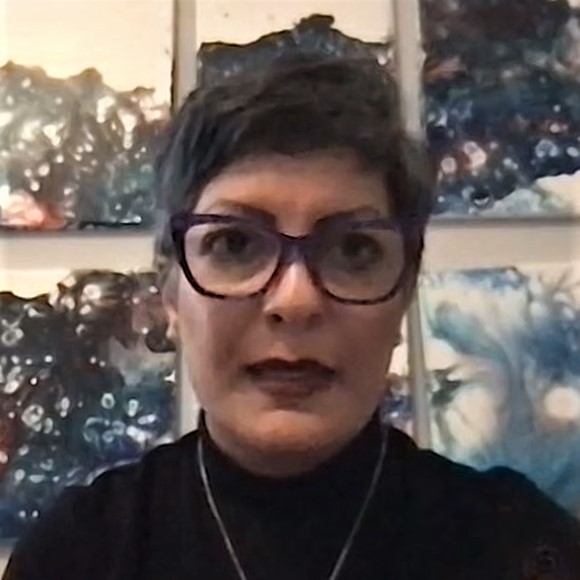


 (1) Images of the day: [Top left] Native Art Extraordinaire: Digital artist Larry Carlson's "Starry Orange Tree." [Top center & right] Dr. Claudia Yaghoobi's talk on Iranian-Armenians in diaspora (see the next item below). [Bottom left] A belated Passover gathering with the family. [Bottom center] IranWire cartoon of the day: In Iran, it's a matter of time! [Bottom right] Artists dream of peace all the time: When will politicians follow suit?
(1) Images of the day: [Top left] Native Art Extraordinaire: Digital artist Larry Carlson's "Starry Orange Tree." [Top center & right] Dr. Claudia Yaghoobi's talk on Iranian-Armenians in diaspora (see the next item below). [Bottom left] A belated Passover gathering with the family. [Bottom center] IranWire cartoon of the day: In Iran, it's a matter of time! [Bottom right] Artists dream of peace all the time: When will politicians follow suit?
(2) Book talk, presented by Farhang Foundation and UCSB Iranian Studies Initiative: Dr. Claudia Yaghoobi (UNC Chapel Hill) talked today via Zoom about her forthcoming book, under the title "Iranian Armenian Ancestral Flexibility, Adaptability, and Continuity." There were 71 attendees.
Armenians have migrated, voluntarily or forcefully, many times during their long history. Beginning in their ancestral homeland, spanning northwestern Iran & parts of the Caucasus, many Armenians were relocated to Iran and within Iran. Iranian-Armenians are viewed both as an ethnicity and a religious minority in Iran.
Today, Iranian Armenians are neither entirely a stateless diaspora nor a state-linked diaspora. Despite different origins and dispersal throughout the world, most Armenians see Armenia as their ancestral homeland, some even yearning to "return" there.
After her review of the history and culture of Iranian-Armenians, Dr. Yaghoobi presented a selection of Armenian literature and art, wistful stories & poems and a few paintings. I look forward to examining the book for more samples and analyses.
Farhang Foundation posts videos of the talks it sponsors, so I will provide a link here once it becomes available.
(3) One-liners: Brief news headlines, happenings, memes, and other items of general interest.
- All-out Israeli-Palestinian war a real possibility in the wake of Hamas rocket attacks & Israeli air strikes.
- Classified US government documents on Ukraine, Middle East, and China have been exposed on-line.
- Two Tennessee legislators expelled from State House for raising their voices during gun-reform debate.
- Right-wing judges are going nuts: A Texas judge suspends 2-decade-old FDA approval of an abortion pill.
- SoT Pete Buttigieg, as articulate as ever, discusses life in America and the general path of jurist prudence.
- Why is America in love with "Top Gun: Maverick," which is essentially a 2-hour ad for defense contractors?
(4) Open Mind Virtual Film Festival at UCLA: The Sunday, April 30, 2023, 2:00 PM PDT, festival features 10 short films on mental illness, chosen from among 130 submissions by high-school students.
(5) Justice served: California women, who was in touch with Iran's Revolutionary Guards and (unwittingly?) helped fund an assassination attempt against journalist Masih Alinejad sentenced to 4 years in prison.
(6) Ignoring hijab laws is a religious & political sin (haram), according to Khamenei: On the surface, this means harsher treatment of hijab-less women and those with "inadequate" hijab. However, there are examples of haram edicts that have been reversed for political expediency. Early after the Revolution, sturgeon fish was deemed haram according to Islamic edicts. Then, the Islamists realized that they are losing a lot of money from banning the fish & its caviar and, soon, Khomeini issued a fatwa that there is no prohibition against the fish. The game of chess underwent a similar transformation from a haram activity to a permitted, even supported, one. At one point, regime agents would climb high-rise buildings using ropes and other military gear to take down TV satellite dishes. Then, suddenly, the Supreme Leader had a change of heart and ordered his goons to leave people's home and private activities alone. The new edict about hijab will likely have the same fate.


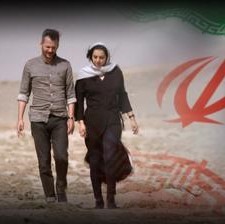 Book review: Wright, Robert A., Our Man in Tehran: The True Story Behind the Secret Mission to Save Six Americans During the Iran Hostage Crisis and the Foreign Ambassador Who Worked with the CIA to Bring Them Home, unabridged 13-hour audiobook, read by Mike Chamberlain, Blackstone Audio, 2011.
Book review: Wright, Robert A., Our Man in Tehran: The True Story Behind the Secret Mission to Save Six Americans During the Iran Hostage Crisis and the Foreign Ambassador Who Worked with the CIA to Bring Them Home, unabridged 13-hour audiobook, read by Mike Chamberlain, Blackstone Audio, 2011.
[My 4-star review of this book on GoodReads]
This book is about the former Canadian Ambassador to Tehran, Ken Taylor, who played a leading role in helping six Americans escape Iran, as 53 other Americans were being held hostage at the US Embassy. Declassified documents have revealed that CIA, aided by Hollywood's magic, also played a major role, as told in the book/movie Argo (my review of the book).
While Argo was a sensationalized "good-guys, bad-guys" account (for example, the film version converted the relatively trouble-free departure of the six Americans holding fake Canadian passports via Tehran's Mehrabad Airport to a chase scene in which Revolutionary Guards, realizing they had been duped, pursue the plane on the runway, coming close to preventing it from taking off), Wright's book is a serious account that gives us deep insights into what made Iran's revolutionary cadres tick and how diplomatic missions in Iran operated in the uncertain environment of post-Islamic-Revolution Iran.
The book contains detailed accounts of how the six Americans, having eluded capture, ended up as houseguests of the Canadian Ambassador and Embassy staff, various plans for helping them leave Iran, interactions with Iranian authorities who knew about the six Americans but chose to help them hide from the "student" militants at the US Embassy, and the eventual choice of the exfiltration plan, which involved the Americans pretending to be a Canadian movie-studio crew scouting filming locations in Iran.
An interesting observation is that Iranian authorities were walking a tightrope. While they wanted to play the good guys, who were opposed to hostage-taking and other irrational behavior, their hands were tied, because the "student" militants were really not following their advice to let the hostages go. I have put "student" in quotation marks, because Wright makes it clear that at least some of the hostage-takers appeared to be well-trained in interrogation methods and paramilitary operations. After a while, when Khomeini himself blessed the hostage-taking action, Iranian officials gave up on their plans for a quick release of the hostages and went with the flow, claiming lack of authority and influence.
In what can be characterized as irony of ironies, the hostage-takers raised objections to and threatened Canada for ignoring international diplomatic norms by illegally moving the six Americans out of Iran! Equally interesting, is Iran's government officials, some of whom were aware of the six extra Americans and in fact helped them hide, parroting the same words out of fear of being labeled puppets of the West! One of these officials, the then Minister of Foreign Affairs Sadegh Ghotbzadeh, was eventually executed by Iran's Islamic Revolutionary Court. Another person, Iran's first President Abolhassan Banisadr, fled the country in drag after he was ordered removed from presidency by Ayatollah Khomeini, but before he could be captured and tried.
Wright's writing is quite engaging. Chamberlain reads the book's English narrative quite well, but he has no clue when it comes to pronouncing the many names of Iranian people and places appearing throughout the book.
Wright's book has been converted to the two-part PBS "Frontline" series, "Our Man in Tehran" [Part 1; Part 2; 115 minutes each], in which NYT correspondent Thomas Erdbrink does a great job of humanizing Iranians for Westerners, who think they have "horns and tails."
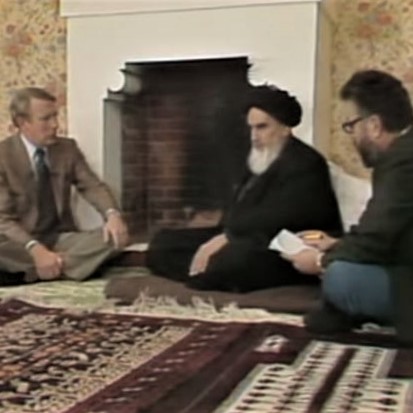
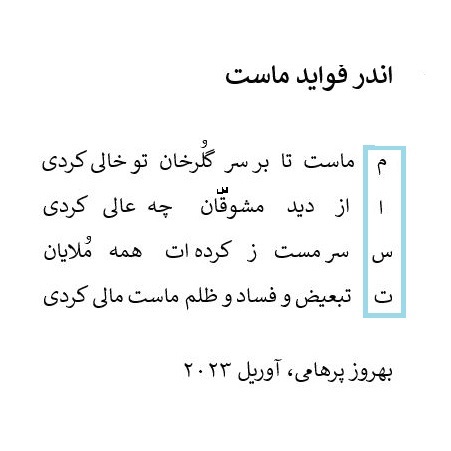



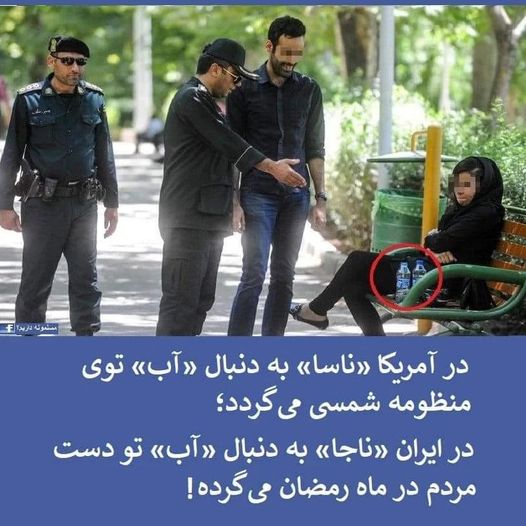 (1) Images of the day: [Top left] Throwback Thursday (~45 years back): PBS News interview with Ayatollah Khomeini in Paris. [Top center & right] Humorous Persian poetry: I never thought I would write a poem about yogurt, but an Islamist's rage-induced emptying of a large container of yogurt on the heads of two young Iranian women who were shopping sans headscarves was an opportunity I could not pass by! The poem is entitled "The Benefits of Yogurt." The cartoon supports the poem. [Bottom left] Uprooting of a eucalyptus tree at the periphery of my housing complex: It fell outward onto the dirt parking shoulder of an adjacent street, crushing one car and damaging another one. Fortunately, no one was hurt. The tree fell due to a combination of high winds and softened soil as a result of recent heavy rains. [Bottom center] Spring has arrived in Tahoe: Street signs are starting to bloom! [Bottom right] In the US, NASA is looking for water on other planets. In Iran, NAJA (acronym for security forces) is looking for people with water bottles during the month of Ramadan!
(1) Images of the day: [Top left] Throwback Thursday (~45 years back): PBS News interview with Ayatollah Khomeini in Paris. [Top center & right] Humorous Persian poetry: I never thought I would write a poem about yogurt, but an Islamist's rage-induced emptying of a large container of yogurt on the heads of two young Iranian women who were shopping sans headscarves was an opportunity I could not pass by! The poem is entitled "The Benefits of Yogurt." The cartoon supports the poem. [Bottom left] Uprooting of a eucalyptus tree at the periphery of my housing complex: It fell outward onto the dirt parking shoulder of an adjacent street, crushing one car and damaging another one. Fortunately, no one was hurt. The tree fell due to a combination of high winds and softened soil as a result of recent heavy rains. [Bottom center] Spring has arrived in Tahoe: Street signs are starting to bloom! [Bottom right] In the US, NASA is looking for water on other planets. In Iran, NAJA (acronym for security forces) is looking for people with water bottles during the month of Ramadan!
(2) Iran's rapprochement with Saudi Arabia is puzzling: Supreme Leader Khamenei has said that Saudi Arabia is run by incompetent, corrupt rulers, while MBS has opined that Khamenei is "very much like Hitler"!
(3) I saw a TV ad for a drug that "is not for people with type-1 diabetes or children": They probably meant that children shouldn't take it, but the ad's statement really implies that people with children should not take it!
(4) One-liners: Brief news headlines, happenings, memes, and other items of general interest.
- Greek authorities arrest Pakistani nationals with plans to carry out anti-Semitic attacks.
- If Trump's passport is confiscated, his only hope is escaping to Mexico: Luckily for him, the wall is unfinished!
- Borowitz Report (humor): Millions of Americans who have paid off porn stars feel under attack.
- Justice Clarence Thomas and his wife accepted gifts of luxury vacations from wealthy Republican donor.
- Iran's morality police uses 21st-century smartphones to enforce the 7th-century Bedouin social norms.
- Expelled Iranian professor who supported protesting university students now works at a pizzeria.
- Beautifying the community of Alhaurin de la Torre, Malaga, with art (crochet & knitting). #WomensArt
- Mark Twain: "All you need is ignorance and confidence and the success is sure."
- Ernest Hemingway: "It takes two years to learn to speak and sixty to learn to keep quiet."
- Sage advice: No matter what you do, you're totally replaceable at work. You're not replaceable at home.
(5) At today's estate-planning workshop: The instructor was really hyped up & festive, sounding like a car-salesperson! Dial it down a bit, sir; we're trying to plan for my death, not a lavish vacation! The instructor also used many weird phrases, such as "What you need to do on a going-forward basis"!
(6) World's widest freeway: Located in Houston, Texas, the Katy Freeway is said to have 26 lanes, composed of 12 main lanes (6 on each side), 8 feeder lanes, and 6 managed lanes, used mostly by mass-transit vehicles. [P.S.: I count 40 lanes in this photo, which may be due to the photo having been snapped near toll booths.]

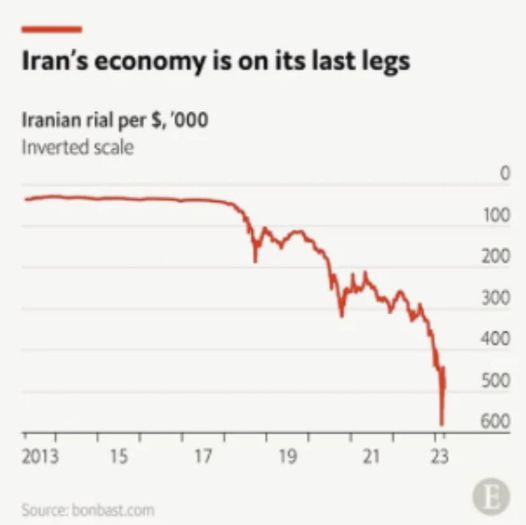


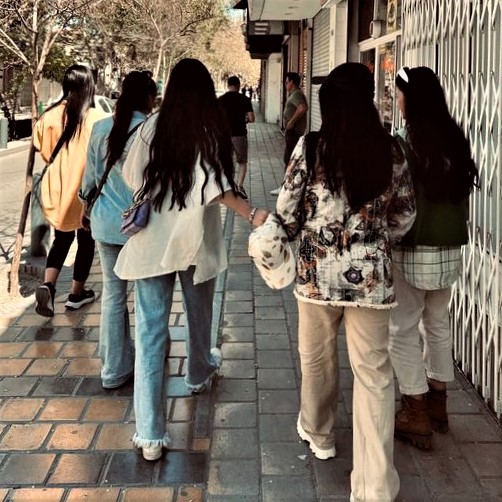
 (1) Images of the day: [Top left] Tonight is the eve of Passover (See the next item below). [Top center] Iran's currency has lost 90% of its value over the past five years, bringing the country's economy to the verge of collapse. [Top right] Mar-a-Lago billboards are popping up everywhere to make it impossible for Trump to pretend he doesn't know that he is being propped up by greedy pants-on-fire liars who actually detest him. [Bottom left] Completed in 1971, Tehran's Azadi Tower (formerly Shahyad Monument) has become a symbol of Iran. [Bottom center] A new morality police is patrolling the streets of Tehran: The new force tells Islamists that morality demands respecting people's dignity, not equating free choice of clothing with spreading prostitution. [Bottom right] Mardavij Pigeon Tower, in Isfahan, Iran: Ancient way of collecting fertilizer.
(1) Images of the day: [Top left] Tonight is the eve of Passover (See the next item below). [Top center] Iran's currency has lost 90% of its value over the past five years, bringing the country's economy to the verge of collapse. [Top right] Mar-a-Lago billboards are popping up everywhere to make it impossible for Trump to pretend he doesn't know that he is being propped up by greedy pants-on-fire liars who actually detest him. [Bottom left] Completed in 1971, Tehran's Azadi Tower (formerly Shahyad Monument) has become a symbol of Iran. [Bottom center] A new morality police is patrolling the streets of Tehran: The new force tells Islamists that morality demands respecting people's dignity, not equating free choice of clothing with spreading prostitution. [Bottom right] Mardavij Pigeon Tower, in Isfahan, Iran: Ancient way of collecting fertilizer.
(2) Happy Passover to my family and Jewish friends! And happy Easter to my Christian friends! This year, Easter Sunday arrives 3 days after Passover. The two holidays have common roots and similar traditions (in fact, there are also some commonalities with the Persian Nowruz). Passover and Easter can be separated by up to a month in some years. Passover, a spring Jewish festival, which begins tonight, on the eve of its first day, is observed based on the lunar calendar. To ensure that the holiday is synchronized with spring, the Jewish calendar adds a 13th month, Adar 2, to some years in order to make up for the 11-day difference between the lengths of lunar and solar years.
(3) One-liners: Brief news headlines, happenings, memes, and other items of general interest.
- Michelangelo's David made an SNL appearance to complain about how he is treated in some US states.
- Facebook memory from Apr. 4, 2019: When Jake Shimabukuro performed at UCSB's Storke Plaza.
- Facebook memory from Apr. 4, 2014: Modern Persian dance at UCLA's Iranian Culture Show.
- Facebook memory from Apr. 4, 2012: "best way to counter [racists] involves not your fists but your mind."
- Facebook memory from Apr. 5, 2013: History of residue numbers in computers goes back 1500+ years.
- Facebook memory from Apr. 5, 2013: The whorehouse that believed in prayers and the church that didn't!
(4) Iranians celebrated the 13th day of the Persian New Year with joy: Men and women played music and danced in traditional nature outings. Iran's security forces attacked many such gatherings, trying to prevent "un-Islamic" behavior. They were pushed back by the people in most cases.
(5) The scaffolding analogy: During the construction of, or major repairs to, a building, we often use scaffolding to allow easy & safe access to its various points or to hold things up while construction material such as concrete gain strength. Building digital hardware or computer software can benefit from similar structures. We can erect the scaffolding first and then hang parts of the system from it. As a part "gains strength" and proves itself, some of the scaffolding can be removed, until, at the end, nothing is left of the scaffolding. However, there is a difference here compared to the building analogy. A building may not look great with the scaffolding in place, so we are motivated to remove the temporary structures. In the case of hardware or software, we may leave parts of the scaffolding in place as aids to testing or future modifications.


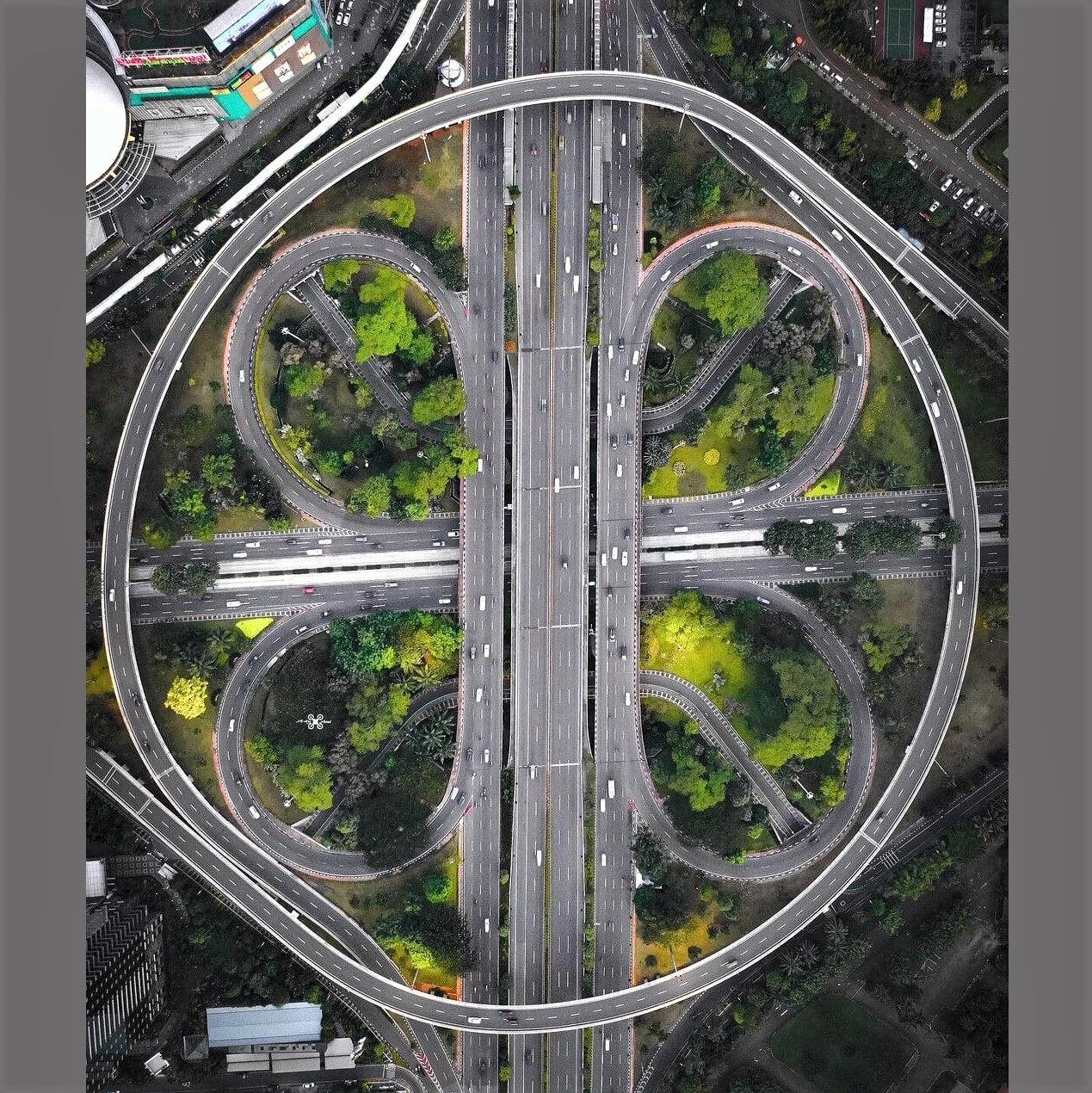
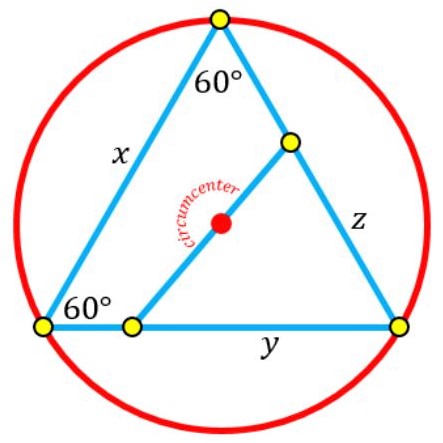

 (1) Images of the day: [Top left] Graphic art: Mamoun Sakkal designed this poster in 1995 to commemorate the 13th anniversary of the opening of Saleh Al-Lago Restaurant in Seattle. Baba Ghannouch is featured on the poster in Sakkal's own typeface. [Top center] Traditional wedding garbs in southern Iran's Bakhtiari tribe: Notice the woman carrying the rifle (photos credit: Amin Nazari). [Top right] Semanggi highway interchange in Jakarta, Indonesia, at the junction of Gatot Subroto Road and Sudirman Road. [Bottom left] Math puzzle: Find the value of x/y + x/z (credit: @Eduard16180). [Bottom center] Math puzzle: Given the placement of seven identical squares inside a 17-by-26 rectangle, find the area of each square. [Bottom right] Math puzzle: What fraction of the square's area is shaded?
(1) Images of the day: [Top left] Graphic art: Mamoun Sakkal designed this poster in 1995 to commemorate the 13th anniversary of the opening of Saleh Al-Lago Restaurant in Seattle. Baba Ghannouch is featured on the poster in Sakkal's own typeface. [Top center] Traditional wedding garbs in southern Iran's Bakhtiari tribe: Notice the woman carrying the rifle (photos credit: Amin Nazari). [Top right] Semanggi highway interchange in Jakarta, Indonesia, at the junction of Gatot Subroto Road and Sudirman Road. [Bottom left] Math puzzle: Find the value of x/y + x/z (credit: @Eduard16180). [Bottom center] Math puzzle: Given the placement of seven identical squares inside a 17-by-26 rectangle, find the area of each square. [Bottom right] Math puzzle: What fraction of the square's area is shaded?
(2) March Madness ends in April: On the women's side, LSU defeated Iowa 102-85 to earn its first national basketball title. On the men's side, U. Conn defeated San Diego State 76-59 to win its 5th title since 1999.
(3) Gender and religious apartheid: Samin Ehsani is an Imprisoned Iranian Baha'i woman charged with the crime of educating Afghan children, who could not enroll in regular schools because they lacked identity papers.
(4) One-liners: Brief news headlines, happenings, memes, and other items of general interest.
- Richard Nixon famously said that he's not a crook: Donald Trump says that everyone else is a crook!
- Jews constitute 2.4% of the US population but they are targeted in 55% of all religious hate crimes.
- This Shi'i cleric says that trying to make Iran's economy "Islamic" was a mistake with dire consequences.
- The treatment of women in Iran & Afghanistan is increasingly characterized as Gender Apartheid. [Image]
- Saqqez, the village of my parents in western Iran, now a modern city, and some of its old neighborhoods.
- Three English words to avoid, particularly in writing: Very; Said; Thing. [6-minute video]
- A thought, without prayers: I choose protecting our 2nd-graders over protecting the 2nd Amendment!
- Santa Ynez High School administration wants to paint over rainbow-colored crosswalks at its entrance.
(5) Nowruz 1402 (2023) at Persepolis: Visitors continue to defy Iran's compulsory hijab law, as the mullahs call for stricter enforcement of the misogynistic law. #WomanLifeFreedom
(6) Iran's 1979 Revolution wasn't a mistake caused by disinformation: Iranians shouted on the streets that Khomeini was their soul. Deep down, a vast majority agreed with his patriarchal & misogynistic views. We may have changed, but back then we liked Khomeini's pronouncements.
(7) Iranian mullah Reza Akrami: "When a man sees a woman who is prettier than his wife, he loses his mind, and that's why we need hijabs." Translation: According to Islamists, men are stupid animals who lack morality or ability to think. A man's being is summarized in his sexual organ, which guides him like a GPS device.





 (1) Images of the day: [Top left & right] Today is lying day for those in the West (April Fool's Day); tomorrow is lying day for Iranians (Dorough-e Sizdah, a lie for the 13th day of the Persian New Year): Be super-careful. On April 1 and 2, believe nothing and trust no one, just like any other day! [Top center] Persian poetry: My couplet welcoming spring, inspired by a superb ghazal of Hafez. [Bottom left] Math puzzle: Given the placement of 7 identical squares inside a 17-by26 rectangle, as shown, find the area of each square. [Bottom center] My afternoon walk on April 1, 2023: Blue skies, warm temperatures, and wonderful views of a reborn nature. [Bottom right] Dan Lyons' book, STFU (see the last item below).
(1) Images of the day: [Top left & right] Today is lying day for those in the West (April Fool's Day); tomorrow is lying day for Iranians (Dorough-e Sizdah, a lie for the 13th day of the Persian New Year): Be super-careful. On April 1 and 2, believe nothing and trust no one, just like any other day! [Top center] Persian poetry: My couplet welcoming spring, inspired by a superb ghazal of Hafez. [Bottom left] Math puzzle: Given the placement of 7 identical squares inside a 17-by26 rectangle, as shown, find the area of each square. [Bottom center] My afternoon walk on April 1, 2023: Blue skies, warm temperatures, and wonderful views of a reborn nature. [Bottom right] Dan Lyons' book, STFU (see the last item below).
(2) One-liners: Brief news headlines, happenings, memes, and other items of general interest.
- Happy April Fool's Day: The Guardian's compilation of the best April Fool's Day gags from its archives.
- Humor: April 1 is to be designated as Donald J. Trump Day!
- One trans mass-shooter, and suddenly scores of white-supremacist, xenophobe mass-shooters are forgotten!
- NCAA men's basketball championship game: San Diego State v. U. Conn, Monday 4/03, 6:20 PM PDT, on CBS.
- This year, California's Mammoth Mountain had the most snow ever recorded!
- New form of student housing: Three UCSB students trade their four walls for four wheels. [SB Independent]
- Facebook memory from Apr. 1, 2019: An apt question, in the wake of Donald Trump's criminal indictment.
- Facebook memory from Apr. 1, 2017: The day my mom sent over a lof of tah-chin (a rice & chicken dish).
(3) Book review: Lyons, Dan, STFU: The Power of Keeping Your Mouth Shut in an Endlessly Noisy World, unabridged 7-hour audiobook, read by the author, Macmillan Audio, 2023.
[My 4-star review of this book on GoodReads]
The main take-away from this book is that you can accomplish more, earn greater respect, and live a happier life if you just resist the temptation to chime in on every topic, offer analyses for every situation, and respond to every comment. And this message applies to non-verbal communication, such as social-media interactions and text-messaging, as well. Lyons advises us to take it easy, relax more, and, most of all, STFU.
Lyons began working on the book when he realized that he tended to talk too much. Most people who talk too much (talkaholics) know that they talk too much, but they simply can't help it. Talking for explanation and story-telling is an essential skill in today's world. It's not helpful for social acceptance or job advancement to be an under-talker. But there is definitely a limit to how much talking is appropriate. It is much easier to bring an under-talker out of his/her shell than to help an over-talker keep quiet.
Talking less is helpful in all situations, including work, romantic relationships, casual conversations, and social-media interactions. Contrary to conventional wisdom, men tend to be more talkative than women. In the context of first impressions, such as dating, talking too much is a definite no-no. You should try to ask more questions and chop-up long narratives into 30-second doses. Try not to speak more than 60% or less than 40% of the time. If the listener is attentive and explicitly asks for more, you can break the 30-second and 60-40 rules, but be super-careful.
One cause of over-talking is that, in our culture, silence or pause during conversation feels awkward. Quite the opposite: Pauses enable reflection, provide opportunities for questions, and enhance understanding. Our society has become increasingly wordy and loud. Japanese, Native-American, and many other cultures prefer quiet reflection and speaking softly. Author Ernest Hemingway said it best: "It takes two years to learn to speak and sixty to learn to keep quiet."
In this 14-minute podcast, Lyons dispenses the following five nuggets of wisdom:
- How you speak is who you are.
- Someday we may use speech as a form of medicine.
- You should quit social media, or at least dial it way back.
- Most powerful and successful people are under-talkers.
- Listening is a superpower.

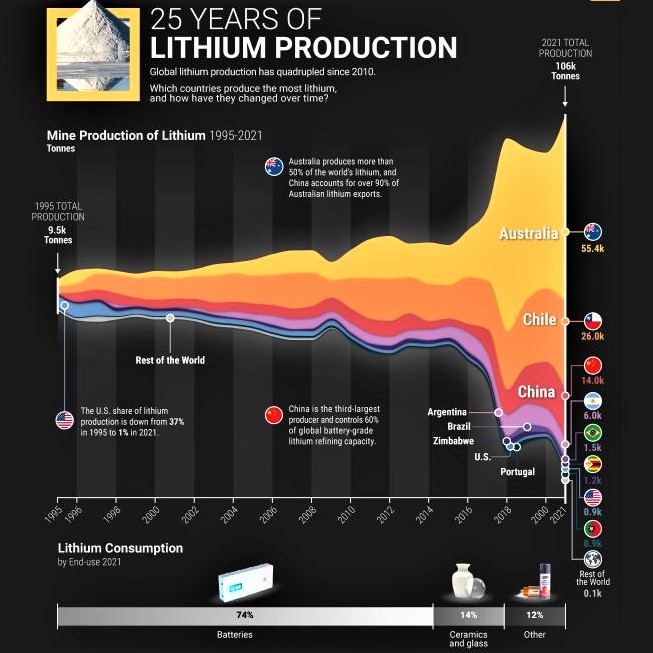



 (1) Images of the day: [Top left] One way of rendering Michelangelo's "David" okay for displaying in Florida. [Top center] In the wake of Iran's claim of discovering vast deposits of lithium: 25 years of lithium production in the world, 1995-2021. [Top right] Libraries & bookstores are pitching banned books to their patrons/customers. [Bottom left & center] Digital spring cleaning: As we clean up our physical surroundings for spring, let us not forget to clean up our digital life as well. Here's a checklist to help you along. [Bottom right] Circle of life.
(1) Images of the day: [Top left] One way of rendering Michelangelo's "David" okay for displaying in Florida. [Top center] In the wake of Iran's claim of discovering vast deposits of lithium: 25 years of lithium production in the world, 1995-2021. [Top right] Libraries & bookstores are pitching banned books to their patrons/customers. [Bottom left & center] Digital spring cleaning: As we clean up our physical surroundings for spring, let us not forget to clean up our digital life as well. Here's a checklist to help you along. [Bottom right] Circle of life.
(2) March 30 was National Doctors' Day: A belated congratulations! We are grateful to those who save lives every day, be they doctors or others involved in the delivery of health care. Our system of administering health care is broken, but we can count on health care professionals to help us overhaul the system.
(3) Saudi Arabia is building a water-transport "river" longer than the Nile: The project will use anti-corrosion pipes of diameter 2.25 m, laid out in a trench that is 4 m deep, 11 m wide, and 12,000 km long.
(4) One-liners: Brief news headlines, happenings, memes, and other items of general interest.
- Donald Trump has been indicted by Manhattan Grand Jury on 30+ counts related to business fraud.
- Evan Gershkovich, Wall Street Journal reporter, accused of espionage and imprisoned by Russia.
- Finland's request to join NATO is approved, distressing Russia & changing the world's balance of power.
- In what can be viewed as a reversal, tech execs call for a temporary moratorium on AI development.
- Anti-Semitism on college campuses in the US: Incidents of vandalism & harassment are on the rise.
- NCAA women's basketball championship game: Iowa State v. LSU, Sunday 4/02, 12:30 PM PDT, on ABC.
- Roboticists want to give you extra limbs: They can be controlled by unused bandwidth in neurons.
- Islamic lawlessness: A member of Iran's morality police pours yogurt on two women not wearing hijabs.
(5) Two imprisoned women journalists in Iran win the 2023 Louis M. Lyons Award for Conscience and Integrity in Journalism: Nilofar Hamedi and Elahe Mohammadi were arrested and jailed for their reporting on the death of #MahsaAmini, the event that triggered Iran's #WomanLifeFreedom movement.
(6) To grade or not to grade: As a professor, grading is the least-favorite part of my activities. I prefer to focus on teaching strategies, course content, and learning outcomes, rather than spend time on evaluations, that are imprecise anyway. But I don't see any way of motivating students to learn without the fear of failing. So, I have mixed feelings about some colleges eliminating grades altogether to facilitate the transition of high-school students into higher education and to deal with growing concerns about student mental health.
(7) UN statement on academic freedom: Issued at a UN Human Rights Council session and approved by the US and 70 other nations, the statement says, "Academic freedom is key to human rights education but also essential for technical and scientific progress and for the development of the creative industries and the arts." It also calls for international cooperation towards strengthening the protection & promotion of academic freedom in the spirit of the Vienna Declaration.
(8) Plants emit sounds under stress: Barely audible at frequencies in the range 20-250 Hz, the sounds are distinctive and can be used to distinguish among different plants and different levels of stress.
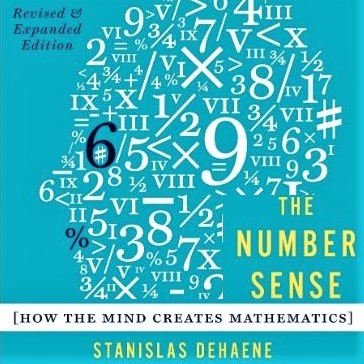
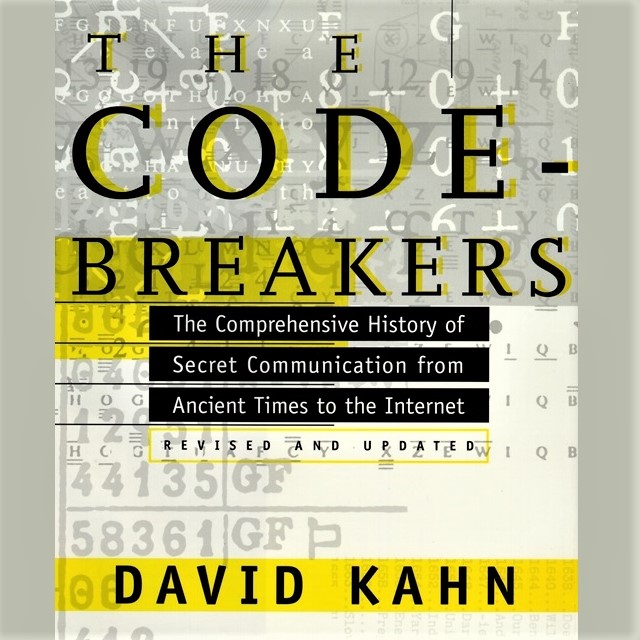
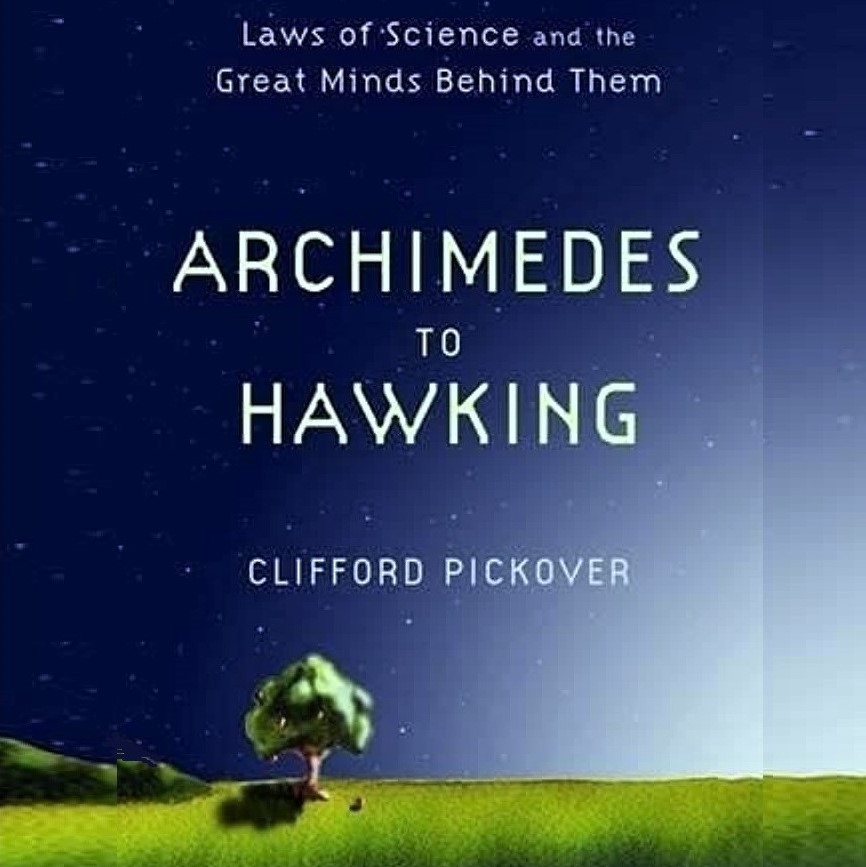
(1) Book review: Dehaene, Stanislas, The Number Sense: How the Mind Creates Mathematics, Oxford U. Press, revised & updated 2nd ed., 2011. [My 4-star review of this book on GoodReads]
The original 1997 edition of this book, written some 15 years before the current edition, had three parts and nine chapters.
- Part One: Our Numerical Heritage (Chs. 1-3)
- Part Two: Beyond Approximation (Chs. 4-6)
- Part Three: Of Neurons and Numbers (Chs. 7-9)
The author has added Part Four, The Contemporary Science of Numbers and Brain, consisting of the single Ch. 10, to review the most-important developments in the field since the book's original publication. The book ends with two appendices and a bibliography. A most-exciting advance in the intervening 15 years is the discovery of single neurons that code for number in the monkey brain.
Numbers are all around us. It's not an exaggeration to say that we cannot live without them. Even poets must be able to count in order to follow the rules of various poetic forms! As early as 5 months after birth, a baby knows that 1 plus 1 makes 2. Animals possess a mental module called "accumulator" that can hold quantities, recognize small sets with a handful of elements, or approximately add two quantities. This accumulator mechanism isn't digital but analog; not dealing with discrete values, but with continuous ones.
The complexities of the various classes of numbers, and all of abstract mathematics, for that matter, arise from and are supported by a small set of features or capabilities in the human brain. Research on animals has revealed an age-old competence for handling approximate quantities, an ability that may be as old as life. Mathematician Richard Dedekind, however, was of the opinion that numbers are "free creations of the human mind."
We now understand that animals will never be able to do exact arithmetic or tell the difference between 49 and 50; such fine distinctions are made by humans, only because of our ability to devise and use symbols, which in turn enable precision and abstraction. One should not forget that the notation for dealing with multi-digit numbers, which seems like child's play now, took centuries to be devised and refined.
Aside from the approximate, analog accumulator that we share with rats and other animals, our brain does not seem to contain an "arithmetic unit" to allow us to perform multiplication and other mathematical tasks. The brain uses alternative circuits, that have evolved for other functions, to do math. The brains of gifted mathematicians are essentially the same as those of ordinary people; the difference is in one group's clever methods to get around the brain's limitations.
The Number Sense is perhaps the most-important book of its kind. Other books that contribute to our understanding of how the brain deals with numbers and mathematics include:
The Mathematical Brain (by B. Butterworth, 1999)
Where Mathematics Comes From (by G. Lakoff and R. Nunez, 2000)
The Handbook of Mathematical Cognition (ed. by J. I. D. Campbell, 2005)
(2) Book review: Kahn, David, The Codebreakers: The Story of Secret Writing, Scribner, 2nd ed., 1996. [My 4-star review of this book on GoodReads]
This second edition of Kahn's 1967 book about cryptology has a new preface and an added Chapter 27, entitled "Cryptography Goes Public," which deals with new developments over the three decades since its original publication. The rest of the book is composed of an introductory Chapter 1, followed by three uneven parts:
- The Pageant of Cryptology (Chs. 2-19)
- Sideshows (Chs. 20-24)
- Paracryptology (Chs. 25-26)
Much of our knowledge on coding and codebreaking activities during World War II have come from fairly-recent declassification of secret projects, even though Great Britain alone devoted 30,000 people to its war effort in this area. This lack of knowledge distorted the view of why things happened the way they did. This fact, along with remarkable advances in the field, made a revised edition of the book absolutely necessary.
Cryptology was introduced in Egypt some 3500 years ago, when hieroglyphic writings were modified, not to conceal the meanings, but to turn them into simple puzzles to challenge and delight the readers. This playful use of cryptology was nothing like its deadly-serious applications today. For 3000 years, the period covered in Chapter 2, the use of cryptology proliferated but the field did not enjoy significant advances.
China never showed any interest in cryptology, preferring instead memorization and oral delivery of messages carrying state secrets. India, by contrast, developed several forms of secret writing. One of the strangest forms of secret communication occurred in ancient Persia, where a secret message was written on a slave's scalp, who was then sent out to deliver the message when his hair had regrown. The Roman state used cryptology extensively. Two Caesars employed it routinely, so we have a category of substitution ciphers known as Caesar's Cipher.
Applications of cryptology grew with the spread of Western civilization. The pace of progress accelerated, fed in part by the increased contact with the Muslim world. In the 1500s, Venice has three secretaries dealing with ciphers. Subsequently, more staff positions and significant budgets were devoted to codebreaking. Invention and rapid spread of telegraphy made the need for codes more urgent for privacy and security. And, of course, the Internet revolution and cybersecurity concerns further broadened the use of secret codes, turning them into a most-important computing & communication concern.
This book's comprehensive history of cryptology, when combined with a modern introductory textbook on the topic (such as Nigel Smart's Cryptography, 3rd ed.), provides curious readers with an overview of the very important domain of secret communications.
(3) Book review: Pickover, Clifford, Archimedes to Hawking: Laws of Science and the Great Minds Behind Them, Oxford U. Press, 2008. [My 4-star review of this book on GoodReads]
Pickover, a prolific author, has produced many books in the popular-science genre. I have come across several of them, including The Math Book, The Physics Book, and A Passion for Mathematics. You can examine a complete list of Pickover's 50 books on his home page.
Fascination with physical laws, aka laws of nature, has been around for many centuries. Archimedes' Law of Buoyancy is one of the oldest, proposed around 250 BCE (the exact date is unknown). Newer examples include Kepler's Laws of Planetary Motion, Heisenberg's Uncertainty Principle, and Hubble's Law of Cosmic Expansion. These law-producers, quite diverse and sometimes eccentric, oozed curiosity and, more often than not, were polymaths working in many different domains.
In this book, Pickover examines 40+ laws, explaining the science behind them along with biographies of the scientists who proposed them, cross-referencing and relating the laws to each other where appropriate. The book is organized in 4 parts covering the periods 250 BCE to 1700 CE, 1700 to 1800, 1800 to 1900, and 1900 & beyond.
Some of the other scientists one encounters in this book include Bernoulli, Curie, Faraday, Kirchhoff, Newton, Ohm, and Planck. Nearly all eponymous laws date back to the 19th century and earlier. There have been very few eponyms in science since the 20th century.


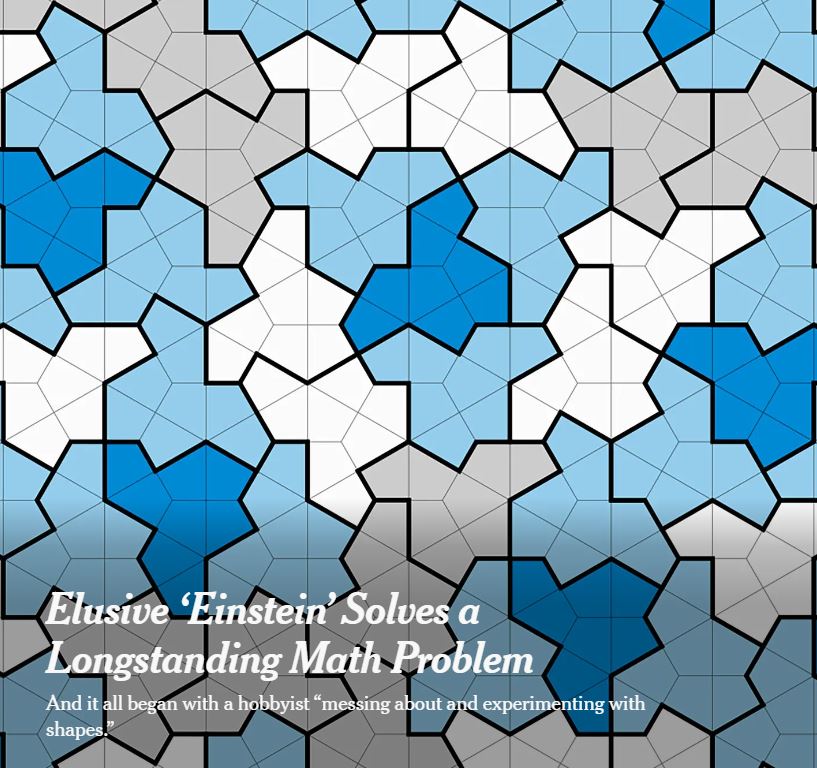


 (1) Images of the day: [Top left & center] I went on a tour & demo of classrooms in UCSB's just-completed Interactive Learning Pavilion this afternoon: My ILP 1203 classroom for ECE 1B during spring features three screens, tied to the same video source for now, but capable of showing three different images/videos by fall quarter 2023. [Top right] Longstanding open math problem solved: At issue was whether the plane can be tiled with tiles having a single non-periodic shape (triangles, squares, hexagons are easily seen to do the job). [Bottom left] Blattnerphone steel tape recorder, an early magnetic-recording technology developed in 1924. [Bottom center] Wonders of math: Palindromic prime tree, with infinite trunk consisting of the pattern 50505 (credit: Danesh Forouhari). [Bottom right] RIP Gordon E. Moore (1929-2023): Best known for Moore's Law, that predicts exponential circuit-density (and performance) growth for integrated circuits, Moore was a brilliant scientist, business leader, and philanthropist who played key roles in establishing two giants of the electronics industry: Fairchild Semiconductor and Intel.
(1) Images of the day: [Top left & center] I went on a tour & demo of classrooms in UCSB's just-completed Interactive Learning Pavilion this afternoon: My ILP 1203 classroom for ECE 1B during spring features three screens, tied to the same video source for now, but capable of showing three different images/videos by fall quarter 2023. [Top right] Longstanding open math problem solved: At issue was whether the plane can be tiled with tiles having a single non-periodic shape (triangles, squares, hexagons are easily seen to do the job). [Bottom left] Blattnerphone steel tape recorder, an early magnetic-recording technology developed in 1924. [Bottom center] Wonders of math: Palindromic prime tree, with infinite trunk consisting of the pattern 50505 (credit: Danesh Forouhari). [Bottom right] RIP Gordon E. Moore (1929-2023): Best known for Moore's Law, that predicts exponential circuit-density (and performance) growth for integrated circuits, Moore was a brilliant scientist, business leader, and philanthropist who played key roles in establishing two giants of the electronics industry: Fairchild Semiconductor and Intel.
(2) All of Kentucky's problems are about to be solved, now that its legislators have passed an anti-trans law! The state ranks 36th in education, 40th in economy, 48th in fiscal stability, and 44th in health care.
(3) One-liners: Brief news headlines, happenings, memes, and other items of general interest.
- Fire at detention center in Mexico, used to house migrants turned back from the US, kills at least 40.
- Girl cousins: Daughters of my three sisters and me at a recent family gathering. [Photo]
- Final-4 teams for NCAA women's basketball (3/31, on ESPN): LSU v. Virginia Tech & Iowa v. S. Carolina.
- Final-4 teams for NCAA men's basketball (4/1, on CBS): FAU v. San Diego State & Miami v. U. Conn.
- Everyone is familiar with NYC's Central Park: SF's Golden Gate Park is 20% larger (~3 miles by ~0.5 mile).
- The 10 wonders of Australia: Unusual and horrifying discoveries down under. [23-minute video]
- Facial recognition tech put to good use: You're not allowed into this Danish supermarket unless you smile.
(4) The world has turned on Adam Smith's The Wealth of Nations for 250 years: Now, wealth, or the invisible hand of the market, alone cannot solve all of our problems, given six new realities (ecological crisis; geopolitical changes; demographic changes; the rise of social democracies; disruption from technology; post-wealth era, when wealth increments no longer translate to improved well-being). We need a new book, The Well-Being of Nations. [36-minute talk by economist Jeffrey Sachs]
(5) Obamacare is more popular than ever: Just like Social Security and Medicare before it, Obamacare faced harsh criticism early on. And just like Social Security and Medicare, politicians of both parties are vowing to protect Obamacare. North Carolina has become the latest state to embrace Obamacare, along with its expansion of Medicaid, passing a bill 87-24 & 44-2 in its Republican-controlled House & Senate, respectively.



(1) Book review: Williams, Juan, What the Hell Do You Have to Lose? Trump's War on Civil Rights, unabridged 10-hour audiobook, read by Dale E. Turner, Hachette Audio, 2018.
[My 4-star review of this book on GoodReads]
The title of this book comes from one of Donald Trump's statements at a 2016 campaign rally, where he claimed that no group in America has been more harmed by Hillary Clinton's policies than African-Americans, before asking for their votes on the grounds that they have nothing to lose, given the prevalence of crime, condition of their schools, abject poverty, and high unemployment.
I don't believe that Trump's hypocritical narrative produced any significant African-American votes for him, but the few who were moved by his rhetorical question must have been very surprised by his subsequent actions. Trump's twisting of history for personal gain from fomenting racial tensions and ignoring the sweat and blood of countless civil-rights activists was deplorable. Progress in this area didn't just halt under Trump; much of earlier gains were undone.
Overtly racist Trump cabinet members and advisors, such as Jeff Sessions, Betsy DeVos, and Stephen Miller, along with his race-driven claims of voter fraud made progress in the areas of civil rights and race relations all but impossible. In an area where gains have been painfully small and slow, the prospects of losing those gains are very real and troubling. Ironically, we still see some African-Americans supporting Trump, thus a real need for Williams' eye-opening book.
The author's anti-Trump commentaries are devastating, because they are grounded in Trump administration's dismal record in areas connected to prior progress: The 1964 Civil Rights Act, the 1965 Voting Rights Act, and the 1968 Fair Housing Act. Retrogression in areas of school integration, racial justice, and voting rights threatened the basic freedoms of all marginalized groups, convincing them that they indeed had a lot to lose.
(2) Book review: Franco, Marisa G., Platonic: How the Science of Attachment Can Help You Make—and Keep—Friends, G. P. Putnam's Sons, 2022.
[My 4-star review of this book on GoodReads]
In her best-selling book, Platonic, Dr. Franco (U. Maryland) discusses psychology research on how sustaining friendship is a process, not just of behaviors, but of fundamentally reconciling with how we view ourselves. I was fortunate to hear Dr. Franco talk about her book on January 17, 2023, in conversation with Dr. Elizabeth Laugeson (UCLA). Notes I took during that UCLA Semel Institute webinar have been incorporated into my review.
Let me begin by describing the book's structure. Sandwiched between introductory and concluding chapters are the following eight chapters, the first two of which are categorized as looking back and the other six as looking forward.
- How Friendship Transforms Our Lives (connecting with others makes us ourselves)
- How Our Past Relationships Affect Our Present (the power of attachment theory in friendship)
- Taking Initiative (how to turn strangers into friends)
- Expressing Vulnerability (how to trust friends without feeling weak)
- Pursuing Authenticity (how to deepen friendships by showing your true self)
- Harmonizing with Anger (how to take chaos out of conflict)
- Offering Generosity (how to give to your friends without losing yourself)
- Giving Affection (how to give and receive love)
Dr. Franco tackles how people's underlying psychological architecture sabotages or harmonizes with their ability to attract and keep friends. Our relationships with others fundamentally shape who we are. Attachment styles (secure, anxious, avoidant) are the same, whether a relationship is romantic or platonic. Lately, we have emphasized romantic relationships, to the detriment of platonic ones.
Loneliness (absence of friendships) kills. We pay a lot of attention to diet and exercise for staying healthy. But making sure we aren't lonely has a much greater impact on our health. Loneliness is a fairly new concept. Before the 1800s, we didn't even have a word for it. In those days, marriages were primarily unions of convenience. Intimate conversations, cuddling, holding hands occurred between friends of the same sex. Nowadays, a lot of people, especially men, have very few or no friends. One reason is the prevalence of homophobia. For most of us, friendship is about occasional happy hours, which makes us miss out on the opportunity of having friends as confidants or soulmates.
Technology, social media in particular, has intensified a trend that began with television, which made interactions with people too much of a burden, compared with lazily watching others. Although social media can be a valuable tool for connecting, its primary effect has been that of disconnection. During the pandemic, social media played a positive role in connecting us. People with disabilities or social anxiety also benefit from connective technologies.
There are proven practices for changing your attachment style. Using the insights of attachment theory and the latest scientific research on friendship, you can improve the number and quality of your connections. We have an unconscious tendency to like people to whom we have had greater exposure. So, one way to find more friends is to increase your interactions and exposure to other people. Our brain has a negativity bias. When we interact with someone, we tend to underestimate how alike we are. We need to correct for this negativity bias, for example, by paying compliments. Take a positive view, always assuming that people like you. Shared activities, such as membership in groups, helps us in overcoming the negativity bias.
The book's most-important message is that we cannot survive on romantic love alone. Intimate same-sex friends play a big role in reducing our loneliness, whether or not we have a trusted romantic partner.
(3) Book review: Machen, J. Gresham, Christianity & Liberalism, unabridged 6-hour audiobook, read by Ray Porter, Christian Audio, 2011. [My 2-star review of this book on GoodReads]
This book, regarded as a classic, was first published in 1923, with numerous editions having appeared since then. According to J. Gresham Machen [1881-1937], Christianity is about sins: Everyone is a sinner, except for Christ, who was a supernatural being. He believes that there is a war within Christianity and that Orthodox Christians, the only true Christians, should fight this war to the bitter end. The liberal Church has softened the rules, making them toothless.
What Machen criticizes isn't liberalism as a political philosophy, but Christian Liberalism, which has circumvented the cruel, inflexible laws of Christianity found in Orthodox interpretations of the New Testament. The Liberal Church maintains that God loves all his creations ("God is Love"), the redeemed and those with shaky beliefs. According to Machen, liberalized Christianity isn't Christianity at all, but a different religion altogether; a Satanic trick to corrupt the Church.
Along with dissing Liberal Christianity, Machen also knocks socialism, leftism, public schooling, and many other sins of the modern world. He even dismisses other religions, maintaining that the world should be controlled by Christian men: "[T]he true transformation of society will come by the influence of those who have themselves been redeemed." Machen no doubt thought that he had presented sound, logical arguments for his views, but I found nothing except assertions and circular thinking.
Checking the book's evaluations on Amazon, I was very surprised by its average 4.8 stars out of 5, based on 649 ratings. On GoodReads, the average rating is 4.3 stars based on 4876 ratings and 498 reviews. I expected to encounter many unfavorable reviews and ratings, given our modern world's preference for altruism and cooperation, over individuality and judgment.


 (1) Images of the day: [Left] All 6000 residents of Suloszowa Village in Poland live on one street. [Center] The other source of energy consumption in automobiles (see the next item below). [Right] Susanne Pari's In the Time of Our History (see the last item below).
(1) Images of the day: [Left] All 6000 residents of Suloszowa Village in Poland live on one street. [Center] The other source of energy consumption in automobiles (see the next item below). [Right] Susanne Pari's In the Time of Our History (see the last item below).
(2) The hidden energy consumption in our automobiles: The sophisticated control and entertainment systems in modern cars have a non-negligible energy footprint. The chart, from an article by Robert P. Dick et al. in the March 2023 issue of IEEE Computer magazine, shows that at low driving speeds typical of urban areas, energy usage for computing can be 50% or more of that used for propulsion, thus making low-power design of digital circuitry, already quite important in mobile devices and supercomputers, also vital for automotive computers.
(3) Comedian George Carlin believes that the list of Ten Commandments is highly inflated and shows how they can be reduced to the more manageable Two Commandments. [8-minute video]
(4) One-liners: Brief news headlines, happenings, memes, and other items of general interest.
- Woman armed with assault rifles kills 3 children & 3 adults at a Nashville Christian school.
- Mass protests continue in Israel (over judicial-system changes) & in France (over increased retirement age).
- World's natural-history museums reveal their inventory of 1.1 B objects, from dinosaur bones to insects.
- Facebook memory from Mar. 27, 2016: People are just as wonderful as sunsets if you let them be.
- Facebook memory from Mar. 27, 2015: Poet Yaghma Golrouee's ode to Iranian women, entitled "Rahaee."
- Facebook memory from Mar. 27, 2013: A remarkable illusion of motion in a stationary image.
(5) Book review: Pari, Susanne, In the Time of Our History: A Novel, Kensington, 2023.
[My 4-star review of this book on GoodReads]
As 52 American hostages were being greeted in Germany by the just-replaced President Jimmy Carter, after spending 444 days in captivity at the US Embassy in Tehran, Mitra Jahani lay in a New York hospital bed, recovering from a concealed operation to make herself barren and thus unmarriageable. This is the gripping start to Susanne Pari's historical novel about the trials and tribulations of an Iranian-American family, living on the US East Coast: The protagonist, Mitra, her younger sister Ana(hita), their parents, and a host of other characters.
Mitra had become engaged to the first available suitor, reluctantly, because Ana, who had fallen in love and wanted to tie the knot, wasn't allowed to marry before she did. Their father, who had just invited guests to his daughters' double-wedding, was livid when he found out about the operation, but he could not rescind his permission for Ana to get married. Mitra was disowned by her father and moved to the West Coast to pursue a life in which she could be as free as a boy in choosing her future. She did not see her parents until after the death of Ana many years later.
After this auspicious beginning, we read the rest of the story in three parts: Sisters (Chapters 1-11); Julian (Chapters 12-25); Brothers (Chapters 26-29). The numbered chapters are preceded by a prologue in Part 1 and followed by an epilogue in Part 3. Part 2's Julian is Mitra's supportive physician boyfriend. In part 3, we meet two half-brothers, one of them Mitra's father, who were shunned and neglected by their father's primary wife and teased by her sons. The book ends with "A Reading Group Guide" composed of ten discussion questions.
All families carry secrets, big and small. But such secrets, and the lies that accompany them, are wider-ranging and heftier when an inflexible and callous patriarch controls every aspect of the family's life and when women gain agency only by being manipulative. This is quite often the case for old-school Iranian and, to a lesser extent, Iranian-American families. So, even though Pari's novel can be viewed as a run-of-the-mill family saga, the social and cultural references are refreshingly new.
And, of course, the author's elaboration on gender roles is quite timely, in view of the ongoing feminist/youth uprising in Iran under the slogan #WomanLifeFreedom. Imagine a girl feeling so cornered that she sees no way out of the pressure to get married other than making herself unmarriageable (by her family's cultural standard). Other than the tragic lives of women under extreme patriarchy, the story holds other tragedies, again something many families face and try to overcome.
I struggle with stories that jump around in time, but do understand the attraction to authors of revealing the tale one puzzle-piece at a time and for readers to take delight in discovering the causes of some events many pages later. I have always wondered: Do such authors actually write a chronological narrative and then chop it up, or do they write directly in nonsequential order? If the latter, then the task of keeping things connected and consistent is quite immense. The chopping-up approach presents its own problems.
The titular "In the Time of Our History" refers to short introductions to the three parts and the epilogue, exemplified by the following narrative starting Part 1: "In the time of our history when the Songwriter Who Imagined was murdered in New York and the dictator Saddam invaded Iran, there was a girl ..."
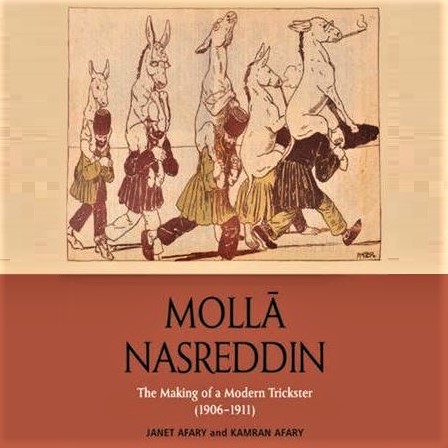
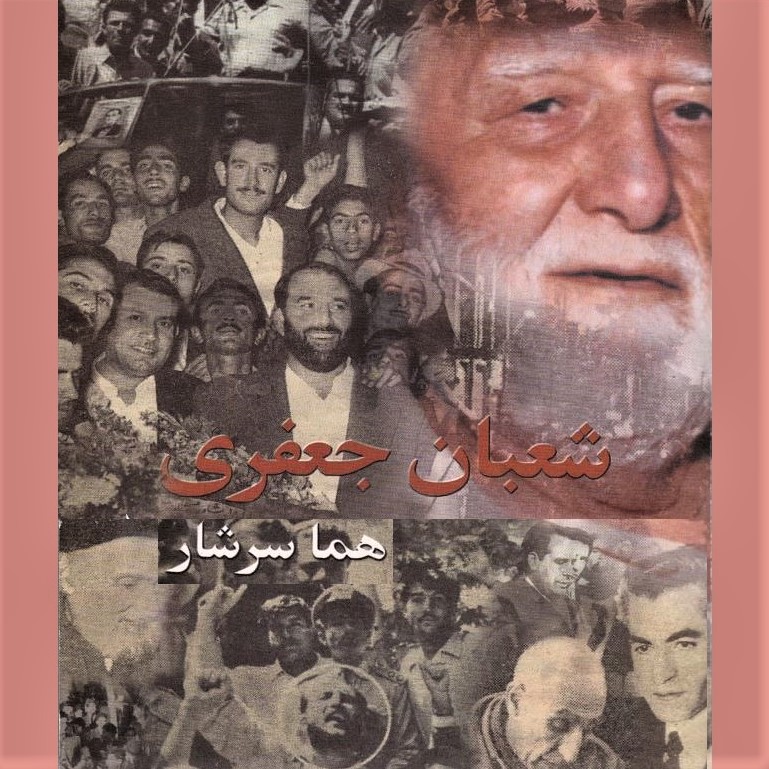
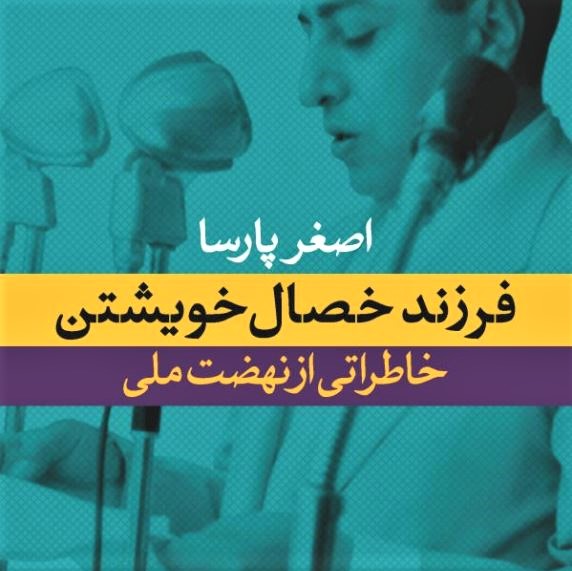
(1) Book review: Afary, Janet and Kamran Afary, Molla Nasreddin: The Making of a Modern Trickster (1906-1911), Edinburgh U. Press, 2022. [My 4-star review of this book on GoodReads]
This book explores the birth and life history of an influential weekly published for five years, 1906-1911, by a group of Muslim Azerbaijani and Georgian artists & intellectuals of Tbilisi (modern Georgia). Their 8-to-12-page weekly, Molla Nasreddin, named after a well-known Middle Eastern trickster, offered progressive commentary and advocated for sociopolitical reforms. The publishers used folklore, visual art, and satire to promulgate their message in an entertaining and effective way.
The weekly, which was richly illustrated with color cartoons and other images, reached and impacted the thinking of tens of thousands of readers in the Muslim world. The book, itself richly illustrated with 300+ images, provides photos of key personalities of the time and numerous examples of the journal's contents. Molla Naserdin is still quite relevant and is referenced widely. Several publications in the region, including Iran's satirical & political weekly Towfiq [1923-1971], which I enjoyed during my youth, were influenced by it.
The book consists of nine chapters, organized in three parts, sandwiched between an introduction and an epilogue. The book ends with 14 pages of references and a 16-page index.
Part I: The World of the Journal (Chs. 1-3, pp. 19-160)
Part II: Reimagining the Folk Trickster and Rethinking Gender Norms (Chs. 4-6, pp. 161-280)
Part III: The Influence of European Graphic Arts (Chs. 7-8, pp. 281-360)
I was fortunate to attend Dr. Janet Afary's virtual book talk (Recording), sponsored jointly by UCSB's Iranian Studies Initiative and Farhang Foundation, on February 19, 2022. The event was a part of a lecture series on Iranian Art and Literary Exchange Between Iran, Transcaucasia, Central Asia, and Russia in the 20th Century. Listening to the talk is a good way of getting a synopsis of the book and its many illustrations.
Let me end my review by quoting from the first page of the book's introduction and the last paragraph of its epilogue: "In 1906, a group of artists and intellectuals reinterpreted the tales of the Middle Eastern trickster, Molla Nasreddin, to construct a progressive anticolonial discourse with a strong emphasis on social, political and religious reform. The founder and editor of the new periodical, Molla Nasreddin, was Jalil Memedqolizadeh. Commonly known as Mirza Jalil, he was an Azerbaijani educator and playwright. His wife, Hamideh Khanum Javanshir, was an early Azerbaijani feminist and a philanthropist. ... Mirza Jalil and his colleagues initiated a radical discourse on gender reform and called attention to the plight of women and children. The periodical became a pioneering advocate of women's rights in the Muslim world as it exposed the ramifications of gender segregation, polygamy, easy divorce for men and pedophilia involving both boys and girls. For all these accomplishments, Molla Nasreddin will forever remain a true literary gem of the Azerbaijani-speaking people and the wider Muslim world."
(2) Book review: Sarshar, Homa, Sha'ban Ja'fari, Naab Publishers, 2002.
[ISBN 0-9661291-9-9] [My 3-star review of this book on GoodReads]
The widely-detested Sha'ban Ja'fari [1921-2006], a sports personality often referred to as "Sha'ban Bi-Mokh" ("Sha'ban the Brainless"), played a key role in reinstating the late Shah to power in the CIA-directed coup of 1953 against Prime Minister Mohammad Mossadegh. Sarshar writes that she first met Ja'fari in 1986, when a party guest brought him along. Like many Iranians, she was ambivalent about talking to Jafari, but her journalistic instincts took over in deciding that what Jafari had to say was worth recording as part of Iran's history. She approached Jafari, who eventually agreed to talk to Sarshar in 1999, two decades after Iran's Islamic Revolution. Why he waited so long to tell his story is unclear.
Ja'fari ran a club for varzesh-e baastaani ("ancient sport"), a strength & physical-fitness regimen with followers among Iran's uneducated masses, exemplified by people who lived in the economically-disadvantaged South Tehran. To gain Ja'fari's trust, the author promised to truthfully report his views and to help spread information about his beloved varzesh-e baastaani. The book is entirely in the Q&A or interview format, illustrated with many photos from Ja'fari's private collection.
Bearing several photos of Ja'fari and his activities on its front & back covers, the book begins with a 12-page preface, followed by 16 un-numbered chapters (pp. 21-386), 22 short appendices with documents and photos (pp. 387-424), a glossary of varzesh-e baastaani & zoorkhaneh ("house of strength"), the club or gym where it is practiced (pp. 425-442), and a collection of photos related to the sport and its personalities (pp. 443-470).
I enjoyed reading about the life story of Sha'ban Ja'fari in Sarshar's book, which carries some elements of "people's history," the telling of history by ordinary people and how they experienced & lived through transformational events, instead of focusing only on what rulers, politicians, people in power, and intellectuals care to write or say. In the case of Ja'fari, his stories may be self-serving, as he tries to salvage his reputation in the latter stages of his life. Sarshar indicates that she tried to confirm Ja'fari's stories by consulting reference sources and talking to other individuals, but that some of Jafari's claims remain unverified.
Sarshar's Sha'ban Ja'fari is available to read on-line for free.
(3) Book review: Parsa, Asghar (with Ali Parsa), A Child of His Own Character: A Memoir of the National Front (Farzand-e Khesal-e Khishtan), in Persian, Ney Publications, Tehran, 2019, 207 pp. + 16-pp. supplement. [ISBN: 978-964-312-992-7] [My 3-star review of this book on GoodReads]
Asghar Parsa [1919-2007], a prominent member and spokesperson of Iran's National Front, was imprisoned after the 1953 CIA-sponsored coup for siding with Prime-Minister Mohammad Mosaddegh. Other than speakership of the National Front and participation in its reconstitution in the late 1970s, Parsa held positions at the Ministry of Foreign Affairs and at the Parliament's lower house (Majlis).
This 207-pp. book covers Parsa's life in 60 brief essays, mostly 1 to 4 pages long, with titles such as "Birth and Childhood," "Mission to China," "Lunch with the Shah," "National Front Congress," and "Meeting with Hoveyda." The narrative ends in the mid-1980s, when Parsa was arrested by the Islamic authorities, while living in hiding. The 16-pp. supplement, containing material that were disallowed in the original edition, covers his imprisonment and extends to a few years before his death in Tehran.
The book was produced by Asghar Parsa, with help from his son Ali, based on the transcripts of a series of oral interviews conducted by the National Library of Iran, transforming the conversational tone of the interviews to written language and adding material from other sources. The narrative is accompanied by illustrations consisting of personal & official photos and a few newspaper clippings.
Iran's history over the past 12 decades, since the Constitutional Revolution of 1906, is quite complicated and an authoritative account is yet to emerge. This is particularly true for the last 4+ decades under Islamic rule. We can glean fragments of the history from books such as Parsa's, which narrate pieces of it from a personal perspective. Reconciling the partial, conflicting, and often self-serving accounts is a task awaiting to be tackled.





 (1) Images of the day: [Top left] Tondo Footbridge, Brussels, Belgium. [Top center] Marvels of engineering: Kolli Hills Road in Tamil Nadu, India. [Top right] Former grain silo converted to student housing in Oslo, Norway (several other remarkable conversion projects). [Bottom left] Flight instruments have certainly changed! [Bottom center] Math puzzle: In this diagram with a rectangle and a circle, find the length of the dashed line. [Bottom right] Judith Butler's The Force of Nonviolence (see the last item below).
(1) Images of the day: [Top left] Tondo Footbridge, Brussels, Belgium. [Top center] Marvels of engineering: Kolli Hills Road in Tamil Nadu, India. [Top right] Former grain silo converted to student housing in Oslo, Norway (several other remarkable conversion projects). [Bottom left] Flight instruments have certainly changed! [Bottom center] Math puzzle: In this diagram with a rectangle and a circle, find the length of the dashed line. [Bottom right] Judith Butler's The Force of Nonviolence (see the last item below).
(2) The Byzantine Generals Problem revisited at 40: Introduced in 1982 by L. Lamport, R. Shostak, and M. Pease, the problem models failures and intrusions that affect computer systems in the worst possible way from the standpoint of making consistent decisions. Whereas with benign failures (f generals who may not act correctly, but do not try to mislead, as a traitor would do), f + 1 properly-acting generals are capable of reaching consistent decisions. On the other hand, having f traitor (Byzantine) generals requires 2f + 1 non-traitor generals to overcome their plots. In other words, correct functioning of a majority of nodes in a network of computers is sufficient under benign failures, but a 2/3+ supermajority is needed when failures are of the Byzantine kind, with bad nodes deliberately or accidentally acting to mislead the good ones.
(3) One-liners: Brief news headlines, happenings, memes, and other items of general interest.
- Powerful tornado devastates Mississippi, killing at least 24 and injuring dozens more.
- Ellwood Beach in Goleta has lost a lot of sand from recent storms, exposing the bedrock underneath.
- Fearless Iranian woman dances on roller-blades along the shore of Lake Chitgar, Tehran.
- Borowitz Report (humor): Trump claims failure to arrest him is conspiracy to keep him from getting donations.
- Florida labels Michelangelo's "David" as pornography, 500+ years after it was publicly displayed in Florence.
- British Broadcasting Corporation (BBC) ends its Persian radio service after airing for 82 years.
(4) Book review: Butler, Judith, The Force of Nonviolence: An Ethico-Political Bind, unabridged 6-hour audiobook, read by Coleen Marlo, Tantor Audio, 2020.
[My 4-star review of this book on GoodReads]
The first difficulty in discussing violence and nonviolence is coming up with precise definitions of the words. For example, we have physical violence, which is recognized by most everyone. Ditto for sexual violence. But not everyone agrees that we also have verbal violence, emotional violence, psychological violence, cultural violence, legal violence, and institutional violence. Neglect and financial abuse are also occasionally classified as acts of violence.
Likewise, whether violence can ever be justified is in dispute. For example, should one be allowed to commit violence in self-defense or in defense of loved ones (family, tribe)? If so, where do we draw the line, given that it is possible that both sides in a violent confrontation think they are acting in self-defense? The 2022 Russia-Ukraine war is a good example, as Russia brazenly asserted that it acted in self-defense and Ukraine justifiably made the same claim.
So, in discussing violence and nonviolence, we are faced with a complex ethical and philosophical problem. The path out of the difficulties we face is to view violence as a collective problem instead of an individualistic one. Thinking of the society as a whole, prevents us from harming others in an effort to push harm away from us. An individualistic view makes violence inevitable, as we fight over limited resources or territory, categorizing some lives as less important than others in the process. A collective view pushes us in the direction of eradicating the social conditions that might lead to violence.
In the book's postscript, Butler asserts that defining vulnerable groups to be protected isn't the answer to violence prevention, as "the discourse of 'vulnerable groups' reproduces paternalistic power and gives authority to regulatory agencies with interests and constraints of their own. ... The task, I would suggest, is not to rally as vulnerable creatures or to create a class of persons who identify primarily with vulnerability."
Iran Academia's Persian edition of this book (translated by Mahsa Assadollahnejad) is available on-line for free.





 (1) Images of the day: [Top left] Ternary Tower in Shanghai, China. [Top center] A sure sign of spring and one of its many gifts. [Top right] Fort Bard in the Aosta Valley region of Italy. [Bottom left] Portrait of astronomer Christiaan Huygens at a science museum in Leiden, seen through original lenses he designed for his telescopes. [Bottom center] The puzzle of climate change. [Bottom right] Sumela Monastery in Turkey's Trabzon Province.
(1) Images of the day: [Top left] Ternary Tower in Shanghai, China. [Top center] A sure sign of spring and one of its many gifts. [Top right] Fort Bard in the Aosta Valley region of Italy. [Bottom left] Portrait of astronomer Christiaan Huygens at a science museum in Leiden, seen through original lenses he designed for his telescopes. [Bottom center] The puzzle of climate change. [Bottom right] Sumela Monastery in Turkey's Trabzon Province.
(2) Pioneering computer scientist William A. Wulf dead at 83: From the days when the field barely existed, Wulf made a career in computing, first in academic research, next as an entrepreneur, then as a policymaker. He later led efforts to reshape and inspire thinking about the conduct, progress, and ethics of engineering.
(3) Lock her up: Republicans saw nothing wrong with this message, repeated endlessly at Trump's campaign rallies. But now that Trump himself faces the prospects of being locked up, we are suddenly a banana republic!
(4) One-liners: Brief news headlines, happenings, memes, and other items of general interest.
- Iran claims to have discovered 8.5 million tons of lithium, the world's 2nd-largest deposit.
- I am a proud liberal, progressive, and woke voter: Positive attributes twisted by the far right into illnesses!
- Oxymoronic observation of the day: The Flat Earth Society has members all around the globe.
- Irish blessing: May you never forget what is worth remembering, nor ever remember what is best forgotten.
- Facebook memory from Mar. 24, 2018: Santa Barbara's March for Our Lives. [2-minute video]
- Facebook memory from Mar. 24, 2016: Statements on women by Presidents Obama & Trump, side by side.
(5) Prostate cancer is minimally responsive to most immunotherapy approaches, because of the poor tumor infiltration of lymphocytes: A just-published article in Science Immunology suggests ways of mediating these suppressive effects. [From a report in Science magazine]
(6) Relations between Iran & Azerbaijan are rocky: One point of contention is each nation claiming the 12th-century romantic epic poet Nizami Ganjavi [ca. 1141-1209] as its own. Nizami wrote his poetry predominantly in Persian, but his birthplace, Ganja, is now part of Azerbaijan. In Nizami's days, Ganja was densely populated with Iranians and a small minority of Christians, according to the Armenian historian Kirakos Gandzaketsi [ca. 1200-1271]. Wikipedia characterizes Nizami as a "Persian Sunni Muslim" poet.
(7) Sex-trafficking in the digital age: Back in the old days, parents taught their children not to accept candy from strangers. Today, a stranger need not get close to our children to offer "digital candy," gifts & favors which aren't even detectable by parents. An electronic bus ticket, for example, can enter your home and go directly to your child, without the visible snail-mail envelope that used to serve as a warning. For some data and tips about on-line dangers and countermeasures, see McAfee's "The Secret Online Lives of Teens."
(8) Tasteless joke: In Persian, the same word ("guereftand") can mean "arrested" or "married," depending on the context. On Iran's state TV, two men are talking. One says "khaharam ro guereftand." The other one shows concern for the man's sister having been arrested, before discovering that the other man meant someone married his sister. Not at all funny for hundreds of Iranian women killed, blinded, kidnapped, beaten up, or arrested during recent street protests! [Tweet, in Persian]
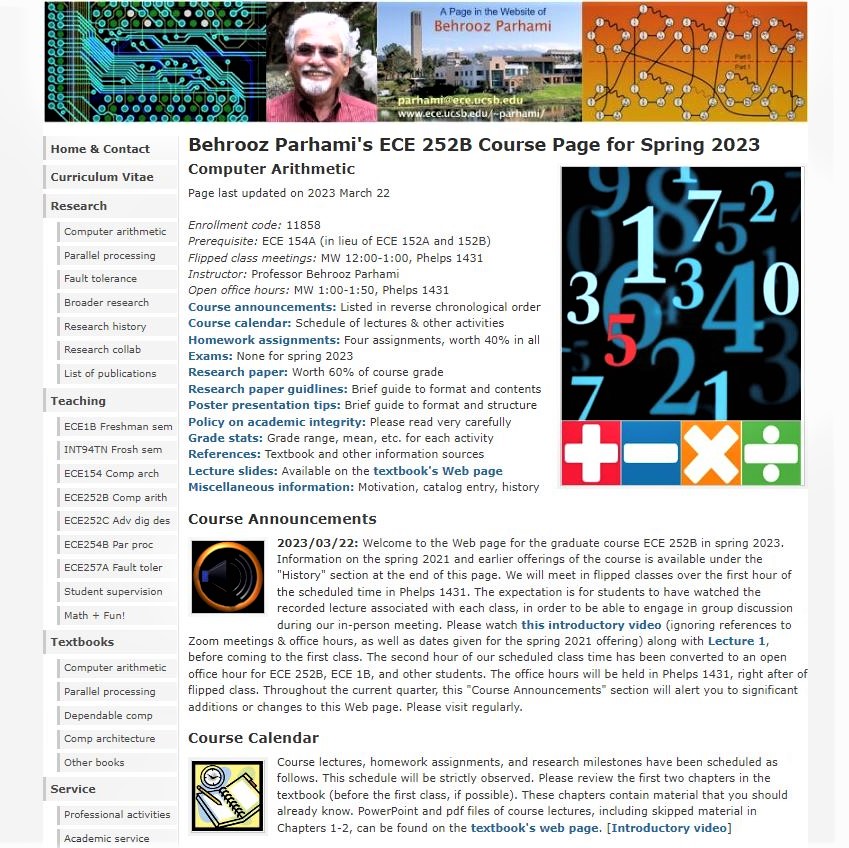
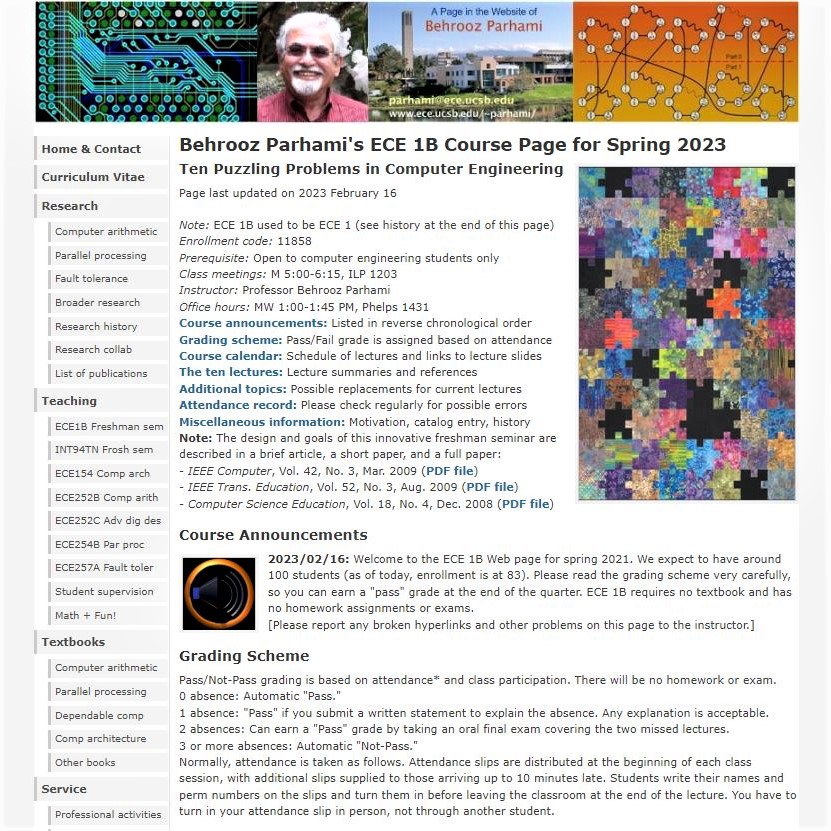


 (1) Images of the day: [Top row] I have updated the Web pages for courses I'll be teaching over spring 2023: ECE 252B (grad course on computer arithmetic) and ECE 1B (freshman seminar for computer engineering). [Bottom left] Photo by Stefano Perego: See-through church, aka "Reading between the lines," by architects Pieterjan Gijs & Arnout Van Vaerenbergh, 2011, Borgloon, Belgium. [Bottom center] US temperature/elevation sign (see the next item below). [Bottom right] Digital art, on a massive scale: Mahanakhon Tower, Bangkok.
(1) Images of the day: [Top row] I have updated the Web pages for courses I'll be teaching over spring 2023: ECE 252B (grad course on computer arithmetic) and ECE 1B (freshman seminar for computer engineering). [Bottom left] Photo by Stefano Perego: See-through church, aka "Reading between the lines," by architects Pieterjan Gijs & Arnout Van Vaerenbergh, 2011, Borgloon, Belgium. [Bottom center] US temperature/elevation sign (see the next item below). [Bottom right] Digital art, on a massive scale: Mahanakhon Tower, Bangkok.
(2) Maintaining US's weird system of measurements is costly: The world communicates in meters, kilograms, and degrees Celsius. We have to use two numbers, one for local communication and another for global compatibility. This sign in California's Death Valley provides a good example. [Image credit: New York Times]
(3) Math's 2023 Abel Prize: The highly prestigious honor has been bestowed on UT Austin Argentinian mathematician Luis Caffarelli "for his seminal contributions to regularity theory for nonlinear partial differential equations, including free-boundary problems and the Monge-Ampere equation."
(4) One-liners: Brief news headlines, happenings, memes, and other items of general interest.
- Drones equipped with metal-detectors can find landmines autonomously and safely.
- Colleges are in a full-blown rebellion against ranking systems, after decades of concerns not being heard.
- Women majoring in STEM fields experience higher rates of sexual violence than their non-STEM peers.
- Facebook memory from Mar. 23, 2016: A surprising laundry-detergent commercial from Pakistan!
- Facebook memory from Mar. 23, 2015: Right to own guns vs. right to be safe from gun violence.
- Facebook memory from Mar. 23, 2012: Wonderful depiction of Washington gridlock, a la M. C. Escher!
(5) A black man steals a pair of sunglasses from a mall in Virginia: He is pursued and shot to death. A white man is still walking free after many years of swindling, fomenting violence, and other illegal acts.
(6) Same old murderous regime in the new Persian calendar year: Islamic Republic of Iran's Revolutionary Guards kill 19-year-old Kurdish man.
(7) Percentage of women in tech leadership positions has fallen from its 33% peak to 28%: The COVID-19 pandemic and the insular nature of the industry have been cited as the main culprits.
(8) The divider: Stanford professor wants to have math taught in California schools in a more inclusive way, but she is a divisive figure and has her critics. Leading math-education expert Jo Boaler, who is helping draft California's latest non-binding math framework, suggests that math shouldn't be only for "math people" and that real-world problem-solving skills should replace memorizing multiplication tables.
(9) Seeing is not believing: You see your child's face and conclude that s/he is happy. But do you see the face as happy or do you collect information about facial features, from which your brain deduces the mood of your child? The Border Between Seeing and Thinking (title of a new book by Philosopher Ned Block) is murky!
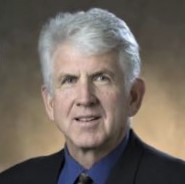

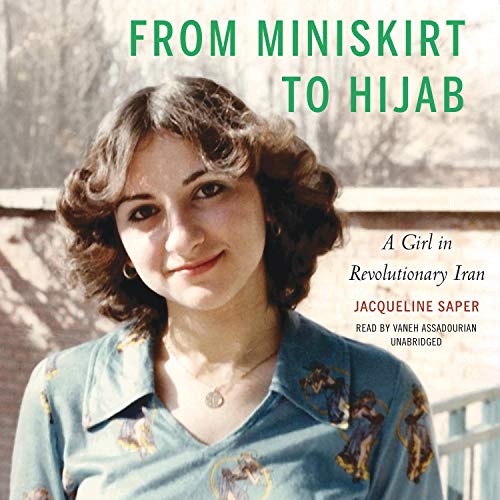 (1) Images of the day: [Left] ACM announces the winner of its 2022 Turing Award (see the next item below). [Center] The transformational slogan #WomanLifeFreedom is showing up everywhere, including on fruits! [Right] Jacqueline Saper's memoir, From Miniskirt to Hijab (see the last item below).
(1) Images of the day: [Left] ACM announces the winner of its 2022 Turing Award (see the next item below). [Center] The transformational slogan #WomanLifeFreedom is showing up everywhere, including on fruits! [Right] Jacqueline Saper's memoir, From Miniskirt to Hijab (see the last item below).
(2) Association for Computing Machinery's 2022 Alan M. Turing Award: The highest honor in computing for 2022, along with its $1 million cash prize, has gone to Robert M. (Bob) Metcalf, Emeritus Professor of ECE at University of Texas, Austin, for the invention, standardization, and commercialization of Ethernet, a dominant local-networking technology.
Not long ago, Turing Awards used to go predominantly to software and theory people. I am pleased to see engineering/technology contributors also recognized recently. After all, even though the computing discipline is often referred to as "computer science," it is at heart an engineering discipline, which, like all engineering disciplines, does have underlying theories, but, in the end, what matters most is providing the society with functional, reliable, and impactful products & processes.
(3) One-liners: Brief news headlines, happenings, memes, and other items of general interest.
- Math puzzle: See if you can quickly solve x^3 = 303^3 + 404^3 + 505^3.
- Persian-jazz fusion music: Sibarg Ensemble performs "Faryaad." [10-minute video]
- Facebook memory from Mar. 22, 2021: Street music & dancing under very difficult conditions in Tehran.
- Facebook memory from Mar. 22, 2019: On virtues of symmetry in network design and applications.
- Facebook memory from Mar. 22, 2019: "The Linda Problem," a test that exposes our hidden prejudices.
- Facebook memory from Mar. 22, 2014: On trees being tempted out of their winter dormancy.
(4) Book review: Saper, Jacqueline, From Miniskirt to Hijab: A Girl in Revolutionary Iran, unabridged 7-hour audiobook, read by Vaneh Assadourian, Blackstone Audio, 2021.
[My 4-star review of this book on GoodReads]
Jacqueline (Jaleh) Lavi Saper was born to an Iranian Mizrahi father, a chemical-engineering professor, and a British Ashkenazi mother, working for an airline company. Her parents named her after Jacqueline Kennedy. Saper's memoir, published in book form in 2019, tells her life story in five parts, bearing the titles "Hope," "Fear," "Adapt," "Veil," and "Resolve."
By now, dozens of memoirs and historical-fiction books covering how Iran's Islamic Revolution affected men's, women's, and families' lives have been published. They cover more or less the same key events on their timelines: Khomeini's pronouncements from exile in Najaf & Paris, his return to Iran after the Shah had left, the mullahs consolidating their power, mass executions, a yes/no referendum, held in an atmosphere of fear, for establishing an Islamic Republic, subjugation of women and ethnic/religious minorities, the devastating Iran-Iraq war, emergence of a police state, and rampant incompetence & corruption. In between these milestones, which serve to connect the narrative to history, are vastly different details of how each person or family navigated Iran's transformed society and politics.
Saper covers her days as a Jewish schoolgirl in Tehran's Ettefagh School, while spending every summer with her mother's family in England, the pre- and post-Islamic-Revolution turmoil, her marriage, relocation to Shiraz, which the family considered relatively safer, and eventual emigration to the US. Landing in Houston, Texas, and settling in Chicago, Saper earned a business degree, attained the CPA designation, and became an adjunct faculty member, first teaching business courses, but later being asked to teach about Iran's history, culture, people, and government.
Writing her memoir after the death of her father was Saper's way of transferring to her children and grandchildren the family history and information about their ancestral homeland, along with the tragic irony that of the three parts of a popular pre- and post-revolutionary chant, "Independence, Freedom, Islamic Republic," only the first half of the third part materialized. The book has won accolades, earning 4.6 stars on Amazon (based on 123 ratings) and 4.1 stars on GoodReads (376 ratings, 50 reviews).
The audiobook's reader, Vaneh Assadourian, does an excellent job of conveying the narrative's events and moods. As a Persian speaker, she pronounces names and the cultural/political slogans, written in both Persian & English, perfectly. She also reads some passages the way an Iranian would speak English, to show that the statements were either in Persian or were uttered by an Iranian with imperfect English. I recommend the audio version of the book over its print edition.
The author has a Web page and social-media presence on
Facebook,
Twitter, and
Instagram.
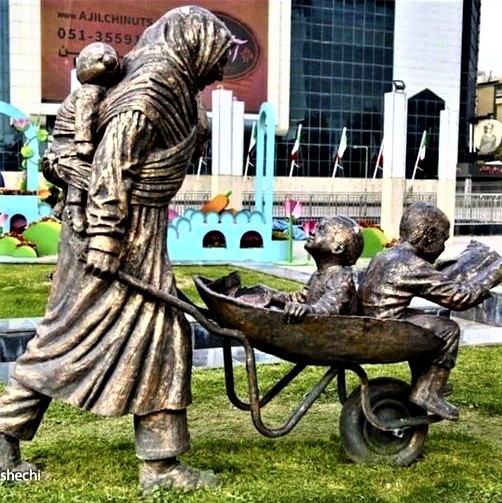
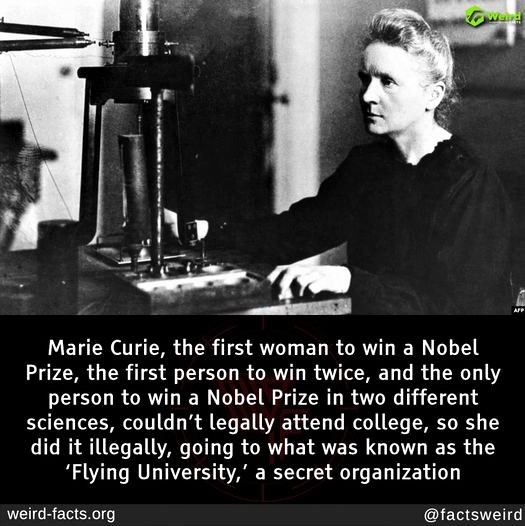
 (1) Images of the day: [Left] A statue in Mashhad, Iran: Its message is anyone's guess! [Center] This is why we have to champion the cause of women in STEM: We have made progress since Marie Curie was denied formal college education, but equity isn't at hand yet. [Right] Labor of love: Tricycle built by an Australian man to allow his disabled wife to enjoy bike rides.
(1) Images of the day: [Left] A statue in Mashhad, Iran: Its message is anyone's guess! [Center] This is why we have to champion the cause of women in STEM: We have made progress since Marie Curie was denied formal college education, but equity isn't at hand yet. [Right] Labor of love: Tricycle built by an Australian man to allow his disabled wife to enjoy bike rides.
(2) Have we learned anything from George Floyd's death? A handcuffed black man is pinned to the floor for 11 minutes at a Virginia psychiatric hospital by 7 deputies and several hospital staff, dying minutes later.
(3) A commentary, in Persian, on how Nowruz traditions have survived attacks by many enemies of the Persian history and culture: It remains a beloved tradition across Southwest Asia and North Africa, despite Stalin denouncing it (later retreating by allowing its celebration as Farmers or Nature Day), Ataturk demolishing Kurdish haft-seen spreads, the Taliban banning it, and Iran's ruling mullahs hijacking it as an Islamic tradition (complete with Arabic prayers), while ignoring or changing its main symbols. [3-minute video]
(4) One-liners: Brief news headlines, happenings, memes, and other items of general interest.
- University of Illinois scientists build an organic computer from ~80,000 repurposed mouse stem cells.
- Wiring diagram of the grain-of-salt-size fruit fly larva brain reveals incredible complexity.
- My Nowruz poem, originally posted on this page on Mar. 19, 2023, as reposted on Instagram. [Image]
- Facebook memory from Mar. 21, 2021: Nowruz greeting card from 102 years ago.
- Facebook memory from Mar. 21, 2020: Mullahs dissing Nowruz makes Iranians adamant to celebrate it.
- Facebook memory from Mar. 21, 2018: A prediction coming true (Khamenei & Trump toppled by women).
- Facebook memory from Mar. 21, 2016: Actress Sally Field, chiming on love in your 60s and 70s.
- Facebook memory from Mar. 21, 2014: Love does not hurt; loneliness hurts, rejection hurts, envy hurts, ...
(5) The colors of North-American movies: University of Waterloo researchers analyzed 29,000 films released from 1960 to 2019 to discover dominant colors usage across different decades and in various genres.
(6) Art Projection at UCSB's Art, Design & Architecture Museum: The program, entitled #WomanLifeFreedom, features 30 digital artworks by anonymous international artists responding to systemic gender inequity and discrimination in Iran, projected on the Museum's facade from 8:00 to 11:00 PM on Tuesday, May 9, 2023.
(7) Sabotaging Jimmy Carter's re-election: New evidence confirms a secret deal between Ronald Reagan and Ayatollah Khomeini, brokered by Arab intermediaries, to delay the release of US hostages until after Reagan took office as president, when the US would offer Iran a better deal. Arms were shipped to Iran shortly after the hostages' release, and this was years before the Iran-Contra affair.
(8) Leaked transcripts of a meeting of Iran's Supreme Leader with IRGC commanders: Most of the 58 top- & mid-level generals and security officials present gave speeches over the course of 4 hours, warning Khamenei that forces under their command are demoralized, many refusing orders to shoot civilian protesters.

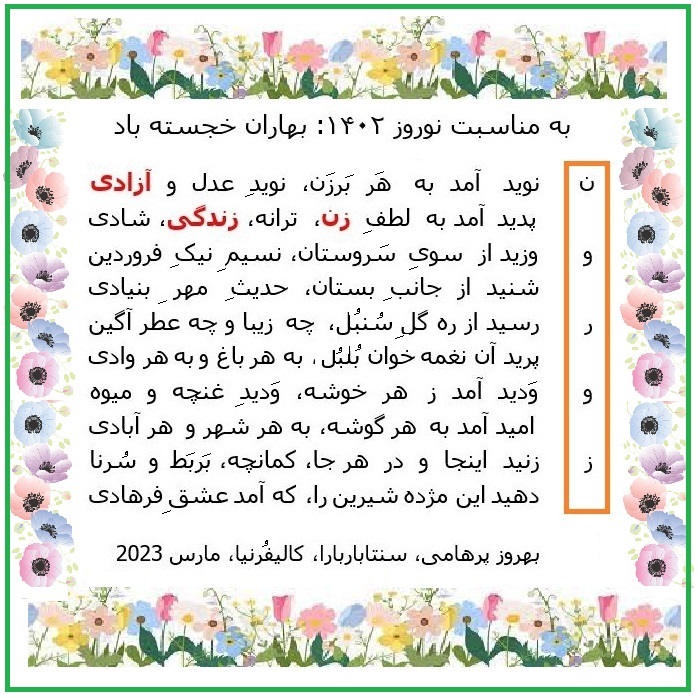



 (1) Images of the day: [Top row] Counting down the hours to the start of the year 1402 in Persian Calendar at 2:24:28 PM PDT on Monday, March 20, 2023: Morning and evening views of my haft-seen spread and my Persian poem celebrating Nowruz & the Persian New Year (2-minute video recitation). [Bottom left] Today's Nowruz celebration in front of the historic Santa Barbara County Courthouse, with a haft-seen spread, music, dancing, tea, and sweets (2-minute video). [Bottom center] Iranian women's-rights activist Sepideh Qoliyan re-arrested after removing her headscarf and shouting slogans against Iran's Supreme Leader upon discharge. [Bottom right] Snow-capped mountains to the north of UCSB in mid-March, 2023 (credit: @zee.photogram).
(1) Images of the day: [Top row] Counting down the hours to the start of the year 1402 in Persian Calendar at 2:24:28 PM PDT on Monday, March 20, 2023: Morning and evening views of my haft-seen spread and my Persian poem celebrating Nowruz & the Persian New Year (2-minute video recitation). [Bottom left] Today's Nowruz celebration in front of the historic Santa Barbara County Courthouse, with a haft-seen spread, music, dancing, tea, and sweets (2-minute video). [Bottom center] Iranian women's-rights activist Sepideh Qoliyan re-arrested after removing her headscarf and shouting slogans against Iran's Supreme Leader upon discharge. [Bottom right] Snow-capped mountains to the north of UCSB in mid-March, 2023 (credit: @zee.photogram).
(2) About my poem in celebration of Nowruz, spring, and the Persian New Year: Each year, since 2002, I have composed a traditional Persian poem that celebrates the arrival of spring and its gifts of renewal and hope, challenging myself by having the initial letters of the poem's verses or half-verses spell a cheerful or congratulatory message. This year, the initial letters of the poem's verses spell its Persian title, "Nowruz." You can read my previous Nowruz poems and a few other pieces on my poetry page.
As was the case for the last three springs, bringing myself to be cheerful wasn't easy, given the continued fight by Iranians, women in particular, to claim their rights and the year-long senseless war in Ukraine. A rough English translation follows.
Justice and freedom descend on every borough Thanks to women, we have songs, life, and joy
A spring breeze blows from the cypress grove Bringing with it the story of ultimate affection
The beautiful and fragrant hyacinth has arrived The chirping nightingale is flying all around
Goodwill emanates from blossoms and fruits Hope is in the air, of every township and village
Do play the fiddle, harp, and bugle everywhere Reassure Shirin that a Farhad-like love is here
(3) One-liners: Brief news headlines, happenings, memes, and other items of general interest.
- Quote of the day: "Our character is more evident by our choices than by our abilities." ~ Rita Schiano
- Prominent Sunni Muslim cleric says Iran can't be ruled by one ethnic group or one religion.
- A grandmother, imprisoned in Iran for her Baha'i faith, starts her second decade in prison.
- Persian poetry: A humorous poem with political barbs against Iran's Islamic regime. [1-minute video]
- Resharing in honor of Nowruz a wonderful piece of Kurdish music from last month. [4-minute video]
- Facebook memory from Mar. 19, 2021: "Nowruz Waltz," a piece of music from the Caspian-Sea region.
- Facebook memory from Mar. 19, 2016: My mom's haft-seen, remembered on this first Nowruz without her.
- Facebook memory from Mar. 19, 2010: Nowruz greetings in verse, from masters of Persian poetry.
(4) On International Women's Day, the police in Georgia (former Soviet Republic) greets women on the streets: Just like the police in Iran, but they are not holding guns or nightsticks! [2-minute video]
(5) South-Korean researchers demonstrate the proof-of-concept for a miniature surgical robot traveling autonomously through an artery to a treatment area and safely getting back.

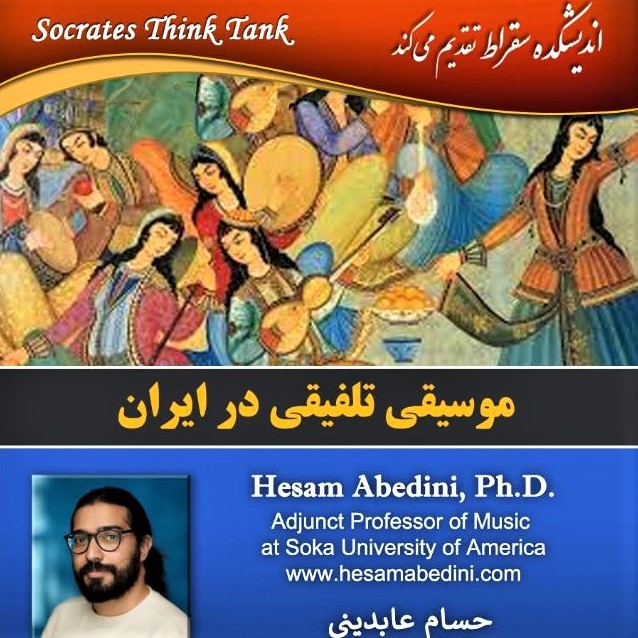
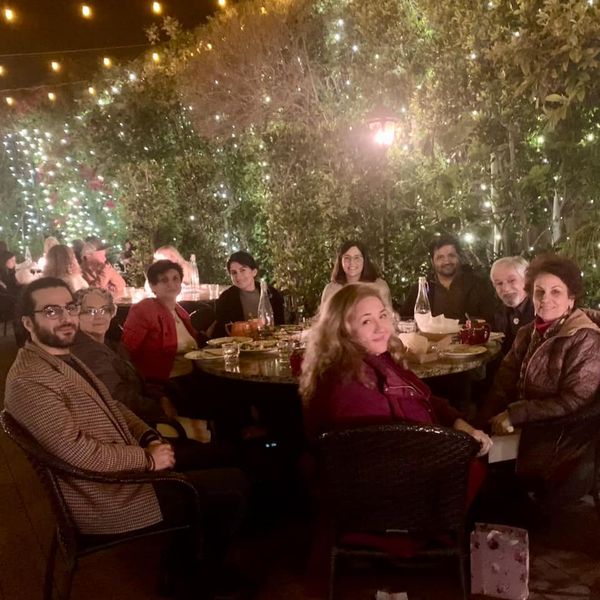 (1) Images of the day: [Left] Spring's is in the air: Jasmines. [Center] Socrates Think Tank talk (see the next item below). [Right] Nowruz get-together with a few UCSB colleagues at Santa Barbara's Zaytoon Restaurant.
(1) Images of the day: [Left] Spring's is in the air: Jasmines. [Center] Socrates Think Tank talk (see the next item below). [Right] Nowruz get-together with a few UCSB colleagues at Santa Barbara's Zaytoon Restaurant.
(2) Socrates Think Tank talk: Dr. Hesam Abedini (Soka U. of America) talked on Wed., Mar. 15, 2023, under the title "Intercultural Music in Iran." Intercultural music is different from simple fusion music, as it incorporates and transfers to the listener more than mere sounds. I joined the Zoom talk near its end due to an IEEE meeting, but decided to offer this abbreviated post to introduce the speaker and some of his ideas for those who might be interested in pursuing them. [Speaker's home page]
Somewhat surprisingly, jazz and Persian-jazz fusion music thrived in Iran, after many other kinds of music were banned or restricted. Artists in this domain include Hamzeh Yeganeh, Mahan Mirarab, Golnar Shahyar, Hafez Modirzadeh, and the Sibarg Ensemble. One reason is that many jazz tunes do not have lyrics, so the issues of "troublesome" lyrics and singing by women do not arise. Another reason is Islamists viewing jazz as the music of oppressed Blacks in America, so the genre sits well with their anti-American sentiments.
[Sample music from Sibarg Ensemble (10-minute video)]
(3) One-liners: Brief news headlines, happenings, memes, and other items of general interest.
- The Int'l Criminal Court has issued an arrest warrant for President Vladimir Putin of Russia for war crimes.
- Khamenei's dirty revenge: Restrictions are applied in Iran to defiant anti-regime artists & other celebrities.
- A 6-minute review of Iran's events in the Persian calendar year 1401, which will end on Monday, March 20.
- Special effects with babies! [2-minute video]
- Big orchestra comes to life with a wonderful piece of rhythmic music. [4-minute video]
- Facebook memory from Mar. 18, 2018: The Supreme Leader's race against time (cartoon).
(4) The chickens have come home to roost: Economic and fiscal policies do not have immediate impacts, but may take years to affect the society. Trump-era deregulation and rollback of oversights are now showing their effects. Safety regulations for trains were rolled back and small-to-midsize banks were exempted from certain stress tests. The Biden administration is burdened with cleaning up the mess.
(5) The Nowruz anthem: This simple song is widely recognized by Iranians, because it is played every year, moments before the spring equinox, to welcome the Persian New Year. But few people know the song's history or its composer, Ali Akbar Mehdipour Dehkordi. He's seen in this 2-minute video playing the sorna instrument.
(6) For last-minute Nowruz shoppers: Sadaf Foods has teamed up with Ralphs stores to display haft-seen spreads and offer Nowruz-related supplies. [Announcement]
(7) Rainstorms cause UCSB's telephone system to "pocket-dial": In the early morning hours of March 16, 2023, I received six phone calls from UCSB numbers, beginning at 2:15 AM, which I did not answer. Upon getting out of bed, I inquired from our campus's Communications Services about possible hacking of the phone system. It turned out that water intrusion from heavy rains had damaged the phone system, causing spurious phone calls in some cases. In two of the six calls, long voice messages were left which consisted of white noise!


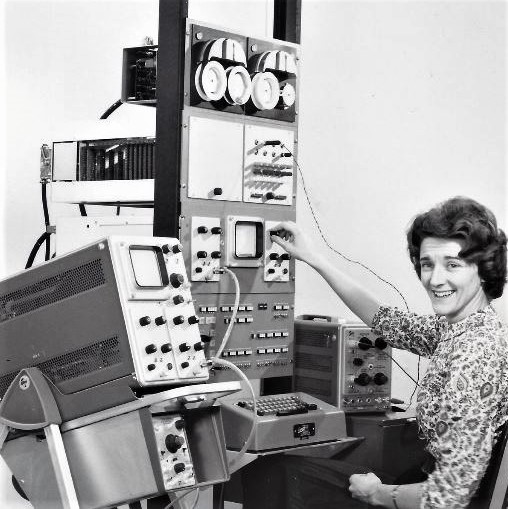
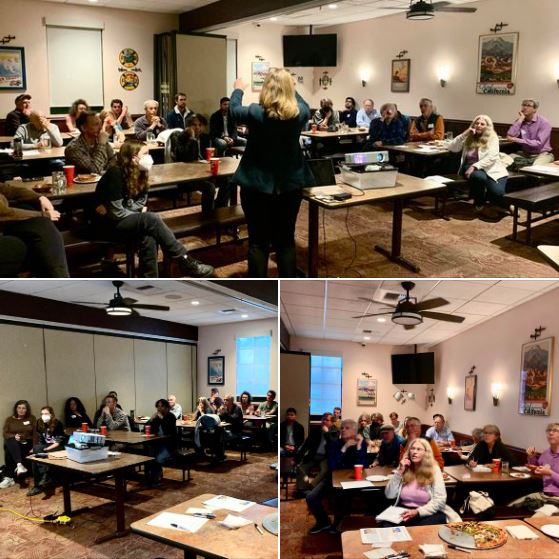
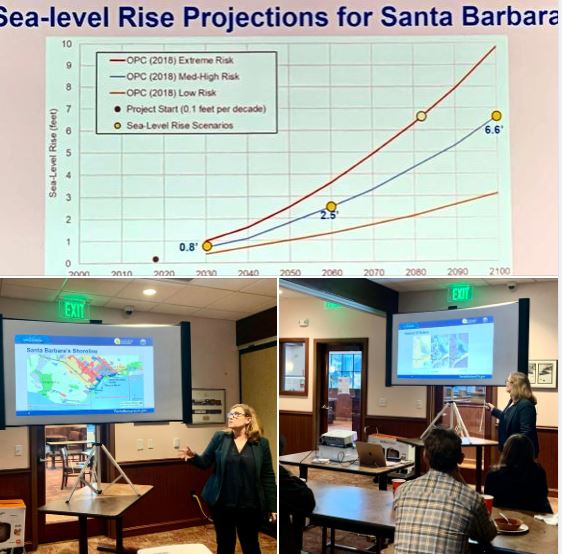
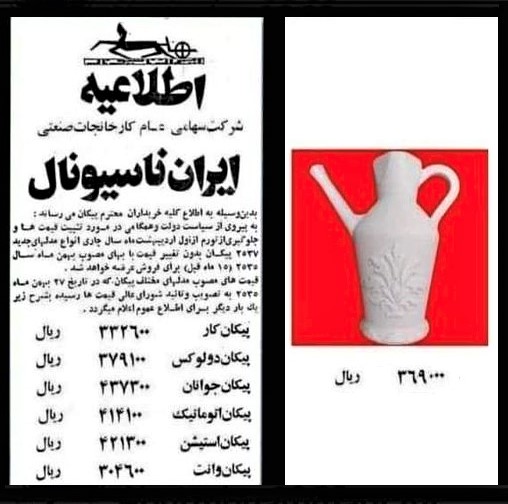 (1) Images of the day: [Top left] Throwback Thursday (the Beatles): Knocked out by Muhammad Ali in 1964. [Top center] Throwback Thursday (the personal computer that was way ahead of its time): In 1975, Xerox's Alto was already using a graphical user interface, overlapping windows, menus, networking, and what-you-see-is-what-you-get displays, just like modern PCs (from IEEE Spectrum, March 2023). [Top right] Throwback Thursday (the secret history of women in coding): Computer programming had a much better gender balance in the 1950s than it does today (credit: The New York Times). [Bottom left & center] IEEE CCS tech talk (see the last item below). [Bottom right] Inflation in Iran: What used to buy you a new car 43 years ago is now barely enough for buying a plastic ewer for your bathroom.
(1) Images of the day: [Top left] Throwback Thursday (the Beatles): Knocked out by Muhammad Ali in 1964. [Top center] Throwback Thursday (the personal computer that was way ahead of its time): In 1975, Xerox's Alto was already using a graphical user interface, overlapping windows, menus, networking, and what-you-see-is-what-you-get displays, just like modern PCs (from IEEE Spectrum, March 2023). [Top right] Throwback Thursday (the secret history of women in coding): Computer programming had a much better gender balance in the 1950s than it does today (credit: The New York Times). [Bottom left & center] IEEE CCS tech talk (see the last item below). [Bottom right] Inflation in Iran: What used to buy you a new car 43 years ago is now barely enough for buying a plastic ewer for your bathroom.
(2) Farhang Foundation & Craft Contemporary have chosen the team of Roshanak Ghezelbash and Hoda Rahbarnik to curate "ART IRAN: Falling into Language" exhibition: It opens on Jan. 27 and will run through May 3, 2024. The artists presented will include Golnar Adili, Parastou Forouhar, Taraneh Hemami, Elnaz Javani, Maryam Palizgir, Hadieh Shafie, Shadi Yousefian, and the team of Neda Moridpour & Pouya Afshar.
(3) One-liners: Brief news headlines, happenings, memes, and other items of general interest.
- Global stock markets tumble due to fear of bank failures: Bank stocks & bonds take a major beating.
- Women across Iran are defying compulsory hijab laws: 5-minute NPR report.
- Homa Sarshar, journalist & author, awarded Stanford University's 13th Bita Prize for Persian Arts. [Image]
- Iran's security forces target protesters' faces with pellet guns, blinding them in many instances.
- Iranian regional music and dance: "Termeh va Atlas" [2-minute video]
- Mickey Mouse explains Nowruz traditions and sends Persian New Year greetings. [2-minute video]
(4) CS Summit at UCSB's Corwin Pavilion: Held all afternoon on Wed., Mar. 15, 2023, the Summit featured capstone-project presentations, awards ceremony, lunch, evening reception, and a lecture by David Hinke (UCSB Class of 1978), entitled "Computer Science Learnings for 45 Years." Hinke had only two slides, which packed a lot of practical wisdom. This 54-minute lecture of his on YouTube covers many of the same points.
(5) IEEE Central Coast Section tech talk: Dr. Kristen Sneddon, Santa Barbara City College Professor and Member of SB City Council, spoke tonight under the title "Sustainability and Resilience: Pedagogy to Policy." There were ~35 attendees.
According to the Intergovernmental Panel on Climate Change, scientific evidence for warming of Earth's climate system is unequivocal. Faced with the evidence of a rapidly-changing world, it is natural to wonder what can we actually do. As a scientist and member of SB City Council, Dr. Sneddon is in a unique position to present both sides of the debate: the science and policies that can be implemented practically within the constraints on a city's budgetary and jurisdictional constraints.
The focus of the talk was on resilience and sustainability. Over the past five years, our region has experienced historic heat, drought, fire, debris flows, floods, and even snow. It was refreshing to hear about how the City of Santa Barbara is planning for a rapidly-changing climate in terms of energy choices, water management, sea-level rise, diversion of organics, carbon neutrality, climate action, resilience planning, and climate justice.
[Speaker's SBCC Web site]
[IEEE CCS event page]
[IEEE CCS Technical Talks page]
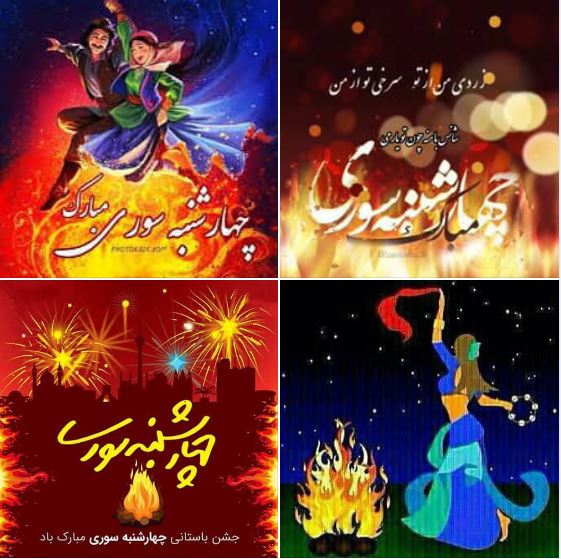
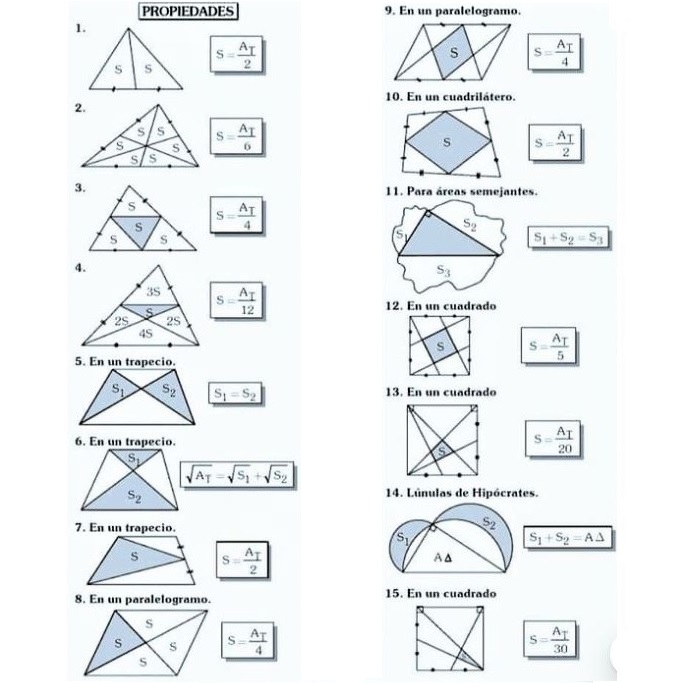
 (1) Images of the day: [Left] Happy Chaharshanbeh Soori (fire-jumping festival, a prelude to Nowruz): Tonight, the eve of the Persian calendar year's final Wednesday, is when Iranians jump over bonfires, while telling the flames, "My yellow be yours, your red be mine." With this "purification rite," one wishes that the fire would take away sickness (yellow face) and other problems and in return provide warmth and redness of face (a sign of health). Here's an old Persian song for the occasion. [Center] Math puzzles: Fifteen geometric area-identities to prove or disprove. [Right] Happy pi day: March 14 (3/14).
(1) Images of the day: [Left] Happy Chaharshanbeh Soori (fire-jumping festival, a prelude to Nowruz): Tonight, the eve of the Persian calendar year's final Wednesday, is when Iranians jump over bonfires, while telling the flames, "My yellow be yours, your red be mine." With this "purification rite," one wishes that the fire would take away sickness (yellow face) and other problems and in return provide warmth and redness of face (a sign of health). Here's an old Persian song for the occasion. [Center] Math puzzles: Fifteen geometric area-identities to prove or disprove. [Right] Happy pi day: March 14 (3/14).
(2) Math puzzle: Two 6-sided fair die are rolled until a sum of 7 or 8 appears. Let p/q be the fraction, in lowest terms, that 8 was rolled instead of 7. Find p + q.
(3) The double-whammy of inflation & bank failures: Normally, the feds would respond forcefully to stubborn inflationary pressures (6% annual rate, through February), but recent bank failures may limit their options.
(4) One-liners: Brief news headlines, happenings, memes, and other items of general interest.
- US Justice Department to investigate the collapse of Silicon Valley Bank for possible illegal insider sales.
- Home cooking/heating/cooling & vehicles account for half the total energy consumed in the US. [Chart]
- Oldie Persian song "Yeki Yeh Pool-e Khorous": Javad Badizadeh, composer; Fereshteh Farmand, vocalist.
- Traditional Kurdish dance song, from Farhang Foundation's Persian New Year celebration in 2016.
(5) The Great Green Wall of China: Alarmed by Gobi Desert's southward expansion, which threatens China's relatively small amount of arable land, the country has been building a Great Green Wall, a vast forest of 100 billion trees, which is 2800 miles (4500 km) long and up to 900 miles (1500 km) wide, as a barrier. Assessments of the 7-decade project vary, some sources hailing it as a great success already and others deeming it a colossal failure. [Wikipedia article]
(6) Out-of-control capitalism: After decades of observation and many counter-examples, some people, including many in high political & economic positions, still believe that profit maximization will solve all societal problems, with no need for regulations or oversight. There are way more examples of socioeconomic disasters brought about by greedy businesses (e.g., 2008 US financial crisis and 50,000 deaths in the recent Turkey/Syria earthquakes) than there are success stories (e.g., smartphones and mRNA vaccines). Widespread applications and possible abuses of AI technology have raised the stakes, and we must act now!
(7) On challenges of electrifying homes: A smart, all-electric home uses a lot more electric power, requiring an upgrade of the wire connection to the utility company's distribution network from ~100 A to ~200 A. This is a costly conversion, which, in most cases, must be paid for by the homeowner. Smart electric panels are being designed and marketed which make this upgrade unnecessary. They rely on load management to keep the power drawn within safe limits. In addition, most homeowners need assistance in navigating the various options and analyzing the cost-benefits of electrification for their specific usage profile. Such services are being set up, as exemplified by Cool California's Household Energy Calculator.
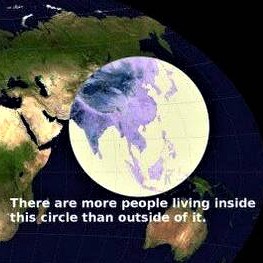

 (1) Images of the day: [Left] World population distribution & trends (see the next item below). [Center] Three-quarters of carbon emissions can be cut with existing technology (see item 3 below). [Right] The 2023 Academy Awards ceremony was held tonight (see the last item below).
(1) Images of the day: [Left] World population distribution & trends (see the next item below). [Center] Three-quarters of carbon emissions can be cut with existing technology (see item 3 below). [Right] The 2023 Academy Awards ceremony was held tonight (see the last item below).
(2) World population distribution & trends: In rough numbers, there are 1B people in each of three continents (the Americas, Europe, Africa), with the remaining 4B of the world's 7B people being in Asia. However, given that the Asian part of Russia is sparsely populated and accounting for southwestern Asia, the circle on this map holds a majority of the world's population. Alarmingly, it is projected that by the end of the current century, the circle will have 6B people and Africa will undergo two population doublings to 4B, while Europe and the Americas will remain at around 1B due to very low growth. Taking half of the Americas and half of Europe as constituting Western-style democracies, they will hold about 8% of the world's population by the end of this century, around half of the current fraction.
(3) On the future of clean energy: In very rough terms, about 3/4 of our carbon emissions can be cut through existing technology, that is, producing clean energy and electrifying transportation, homes, & industry, the latter partially, because some of it is a lot harder to do. This 95-minute lecture + Q&A by Dr. Leah Stokes, entitled "Our Clean Energy Future," contains a lot of useful information.
(4) One-liners: Brief news headlines, happenings, memes, and other items of general interest.
- Seattle-based Iranian podcaster & her husband, both software engineers, killed at home by crazed stalker.
- Anatomy of a bank takeover by FDIC: What happens when a bank fails? [12-minute NPR podcast]
- Quotable: "Don't break someone's heart; they have only one. Break their bones; they have 206 of them."
- Facebook memory from Mar 12, 2020: A Western wedding tradition worth reconsidering.
- Facebook memory from Mar 12, 2017: Farhang Foundation's Nowruz celebration at UCLA.
- Facebook memory from Mar 12, 2014: When Sharif U. Tech. students re-created Ellen's Oscars-night selfie.
(5) A country which represses and kills Uyghur Muslims brokers a friendship accord between two Islamic countries, each of which claims to represent all Muslims and to have their best interests at heart!
[Tweet]
(6) Oscars 2023: The 95th Academy Awards ceremony, hosted by Jimmy Kimmel, was held at Dolby Theater in Los Angeles tonight. The film "Everything Everywhere All at Once" won in 7 of the 11 categories in which it was nominated. Here are the honorees in key categories.
- Best actress: Michelle Yeoh for "Everything Everywhere All at Once"
- Best supporting actress: Jamie Lee Curtis for "Everything Everywhere All at Once"
- Best actor: Brendan Fraser for "Whale"
- Best supporting actor: Ke Huy Quan for "Everything Everywhere All at Once"
- Best director: Daniel Kwan & Daniel Scheinert for "Everything Everywhere All at Once"
- Best motion picture: "Everything Everywhere All at Once"
- Best international feature film: "All Quiet on the Western Front" (Germany)
- Best documentary feature film: "Navalny"
- Best original screenplay: "Everything Everywhere All at Once"
- Best adapted screenplay: "Women Talking"
- Best original score: "All Quiet on the Western Front"
- Best original song: "Naatu Naatu" from "RRR"

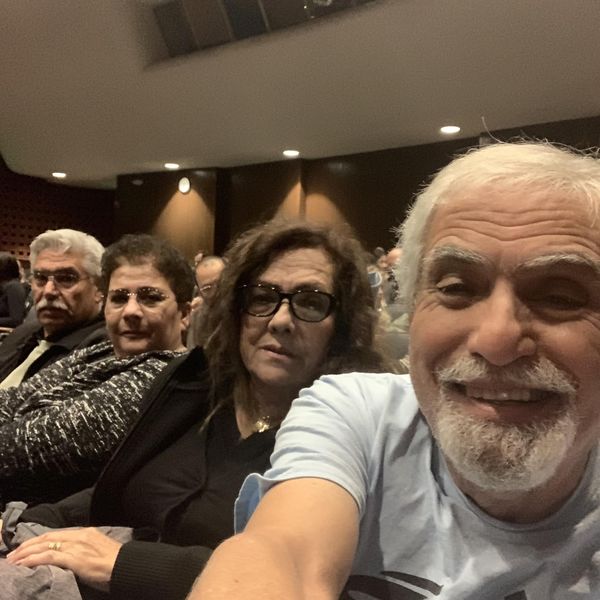
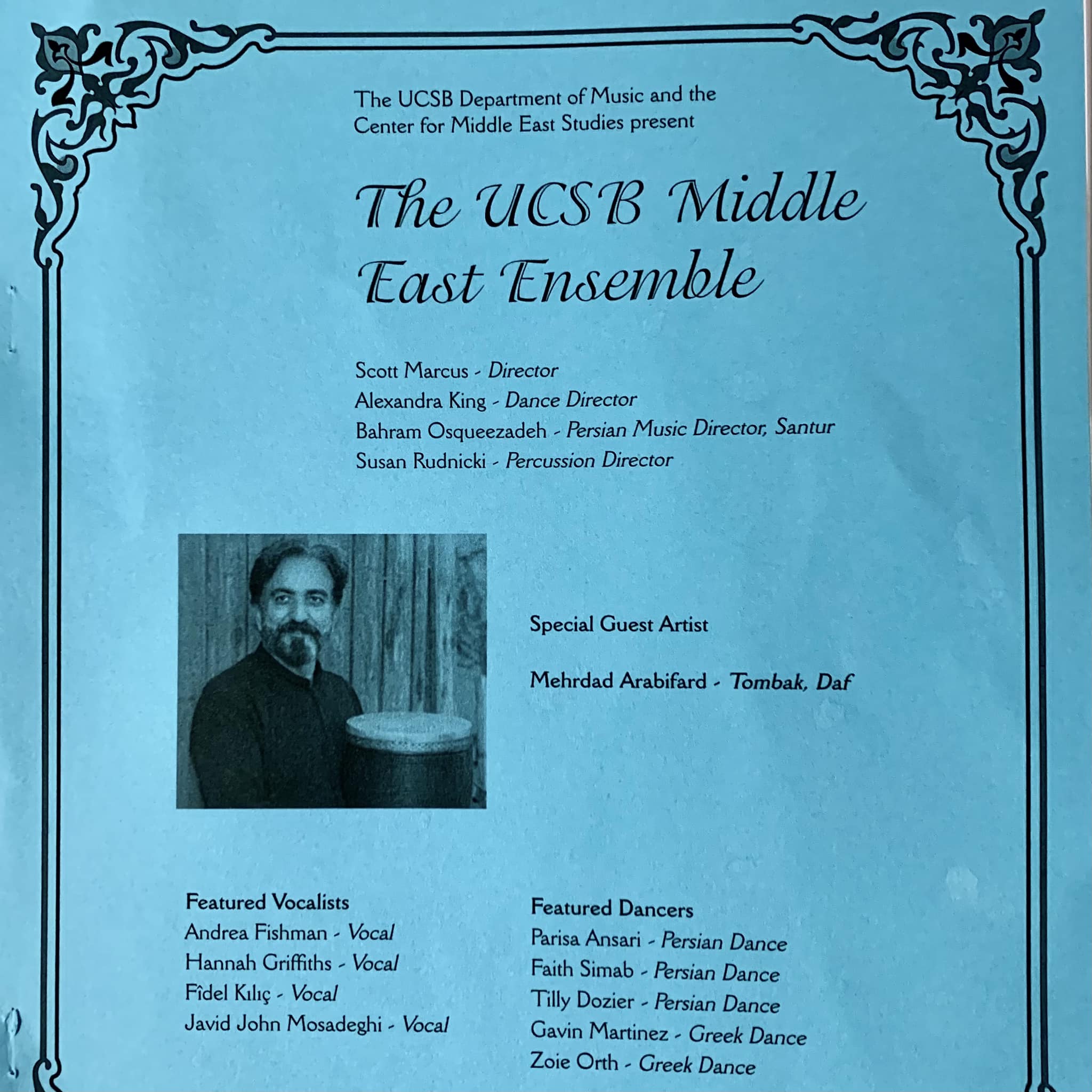 (1) Images of the day: [Left] Special #WomensDay program (see the last item below). [Center & right] Tonight, I attended the spring concert of UCSB's Middle East Ensemble at Lotte Lehman Concert Hall. The program had much Iranian content due to the proximity of the Persian New Year (Nowruz), coming up on March 20, 2023. Due to ongoing events in Iran, the music wasn't as lively as in previous years. The following samples come with Persian lyrics and their English translations. [Video 1] [Video 2] [Video 3] [Video 4] [Video 5]
(1) Images of the day: [Left] Special #WomensDay program (see the last item below). [Center & right] Tonight, I attended the spring concert of UCSB's Middle East Ensemble at Lotte Lehman Concert Hall. The program had much Iranian content due to the proximity of the Persian New Year (Nowruz), coming up on March 20, 2023. Due to ongoing events in Iran, the music wasn't as lively as in previous years. The following samples come with Persian lyrics and their English translations. [Video 1] [Video 2] [Video 3] [Video 4] [Video 5]
(2) Today, I attended a screening of Stanley Kubrick's 1960 film "Spartacus" at UCSB's Pollock Theater: This event, which featured a 4K digital transfer of the 1991 restoration of the film, was accompanied by a critical and historical introduction by Carsey-Wolf Center Assistant Director Tyler Morgenstern. [Trailer]
(3) "Celebration of International Women's Day & #WomanLifeFreedom Revolution": This was the title of today's event, organized by Voices of Women for Change. There were ~70 Zoom attendees. The event was also livestreamed on YouTube, with the recording available for later viewing.
France-based sociologist Dr. Chahla Chafiq, author of several books, including Islam Politique, Sexe et Genre: A la Lumiere de l'Experience Iranienne (2015) and Le Rendez-Vous Iranien de Simone de Beauvoir (2019), presented an overview of Iran's #WomanLifeFreedom (WLF) Revolution.
Dr. Chafiq began by observing that the WLF revolution has affected and impressed women around the world. French women, in particular, are fully supportive of Iranian women's demands in their fight against patriarchy & misogyny. The WLF revolution is centered on women's demands, but it is not carried out by women alone.
Dr. Chafiq criticized Iranian intellectuals, including a number of women, for seeing women is almost the same way as Islamists do. They also did a disservice by reducing the West to imperialism, closing their eyes on all the cultural and political developments that have brought democracy and human rights to many parts of the world.
The ongoing WLF revolution is unique in that it brings together the fruits of many previous movements and uprisings that were never fully connected together. WLF is all-encompassing. It is carried out primarily by young women, while incorporating the efforts and experiences of all prior generations.
After the talk, five exceptional Iranians-in-diaspora were honored in an awards ceremony for their contributions to women's empowerment: Human/women's-rights activists Ladan Boroumand, Roya Boroumand, & Mahnaz Matine, author/scholar Farzaneh Milani, and singer/songwriter Golazin (Gola). Each honoree spoke briefly about her activities. Videos of Gola's performances of "Haghame" and "Betars az Man" were also shown.

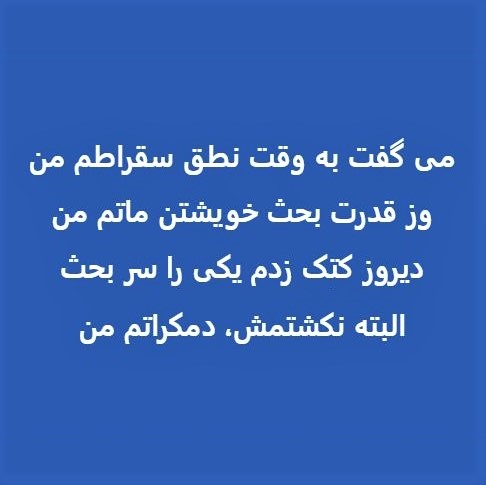
 (1) Images of the day: [Left] The new, improved Lake Tahoe. [Center] Persian poetry: A wonderful couplet from humorist Hadi Khorsandi. [Right] Today's workshop on UCSB's 2035 Initiative (see the last item below).
(1) Images of the day: [Left] The new, improved Lake Tahoe. [Center] Persian poetry: A wonderful couplet from humorist Hadi Khorsandi. [Right] Today's workshop on UCSB's 2035 Initiative (see the last item below).
(2) Court proceedings in a murder case, a la Fox News: The prosecution cherry-picked 2 minutes of security camera footage that showed my client stabbing the victim. I am in possession of hours of video showing my client going to work, attending meetings, having lunch, and playing catch with his son, all peacefully!
(3) Saudi Arabia's statement on 9/11, inspired by Fox News: The American media is biased against Saudi citizens. They repeatedly show planes hitting the Twin Towers and the resulting carnage. They never show footage of the planes taking off, passengers talking to each other & drinking beverages, ...
(4) One-liners: Brief news headlines, happenings, memes, and other items of general interest.
- China brokers a deal for Iran and Saudi Arabia to resume diplomatic relations.
- Iran's five most-wanted criminals: Their crime? Dancing on the street on International Women's Day.
- Mar10 is designated as Mario Day, for the video-game character. Get it?
- Iranian regional music: A lively song from Mazandaran Province on the Caspian Coast. [3-minute video]
- Facebook memory from Mar. 10, 2011: The day Japan was devastated by an 8.9 quake & 13-foot tsunami.
(5) US's West and East Coasts besieged by severe storms: California is seeing a significant amount of rain and snow, the latter posing major danger if it melts quickly under heavy rainfall. Thirteen snow-bound residents have died so far in San Bernardino, northeast of Los Angeles.
(6) Persian music from 4000 BCE: An anthropologist who was also a musician spent years to decode the markings on a clay tablet to reconstruct a piece of music that was played in the Ilam region ~6000 years ago.
(7) Today's UCSB ECE Distinguished Lecture: Dr. Urbashi Mitra (USC Gordon S. Marshall Professor in Engineering) spoke under the title "Digital Cousins: Ensemble Learning for Large-Scale Wireless Networks." Unknown or time-varying dynamics make it quite challenging to design optimized policies for large scale wireless networks. Modeling via Markov decision processes induces a large state space, which complicates policy optimization. Dr. Mitra's research deals with strategies exploiting graph signal processing for network optimization, including new representations for wireless network behavior. Her team has proposed a novel on-line/off-line Q-learning methodology based on the new graph representations, which allow for the efficient creation of synthetic Markov decision processes, or digital cousins, that accurately capture network behavior without the need for excessive trajectory sampling of the actual network. [Images]
(8) UCSB IEE Emerging Technologies Review: Launched in 2016, ETR is an annual program of UCSB's Institute for Energy Efficiency. This year's event, which is focused on UCSB's 2035 Initiative, kicked off yesterday with a special lecture by Dr. Jay Hakes outlining the long history of energy conservation efforts in the US.
The three panels, entitled "Beyond Efficiency to Electrification in California," spanned all morning, today.
- From Efficiency to Electrification: Ari Matusiak, David Hochschild, Sonia Aggarwal
- Cutting Edge Electrification Tech: Hannah Bascom, Samantha Ortega, Vince Romanin, D. R. Richardson
- Advancing Electrification Policy in California: Le-Quyen Nguyen, Merrian Borgeson, Leah Stokes
The meaning of "electrification" has changed over time. It used to mean, and still does in some developing regions of the world, providing electric power to villages and towns that don't have it. In the context of today's event, electrification means making home appliances (stoves, heaters), vehicles (trains, buses, private cars), and other energy-intensive systems fully electrical.
The entire event was recorded and the videos will be made available through UCSB IEE Web site.





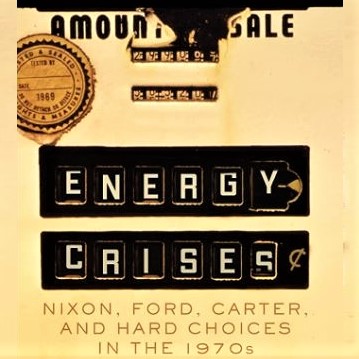 (1) Images of the day: [Top left] Throwback Thursday: The first class of Iranian women to graduate from college (Tehran's Daanshsaraa-ye Aali, late 1930s; Wikipedia). [Top center] Math puzzle: In this diagram with a unit-diameter circle and two overlapping squares, find the green area of overlap. [Top right] A Tribute to the Brave Women of Iran: Panel discussion, organized by ALL 4 IRAN, with the following participants: Nazanin Afshin-Jam Mackay, Mehrak Hazaveh (moderator), Azam Jangravi, Jenna Sudds, Najmeh Tansaz, Anita Vandenbeld (126-minute recording). [Bottom left] Farhang Foundation reveals its Nowruz 2023 banner design in support of #WomanLifeFreedom, by illustrator Rashin Kheiriyeh. [Bottom center] Observance of the International Women's Day in front of UCSB Library included a large contingent of Iranians bringing attention to the plight of Iranian women (Video 1) (Video 2). [Bottom right] Special lecture by Dr. Jay Hakes at UCSB's Institute for Eneregy Efficiency (see the last item below).
(1) Images of the day: [Top left] Throwback Thursday: The first class of Iranian women to graduate from college (Tehran's Daanshsaraa-ye Aali, late 1930s; Wikipedia). [Top center] Math puzzle: In this diagram with a unit-diameter circle and two overlapping squares, find the green area of overlap. [Top right] A Tribute to the Brave Women of Iran: Panel discussion, organized by ALL 4 IRAN, with the following participants: Nazanin Afshin-Jam Mackay, Mehrak Hazaveh (moderator), Azam Jangravi, Jenna Sudds, Najmeh Tansaz, Anita Vandenbeld (126-minute recording). [Bottom left] Farhang Foundation reveals its Nowruz 2023 banner design in support of #WomanLifeFreedom, by illustrator Rashin Kheiriyeh. [Bottom center] Observance of the International Women's Day in front of UCSB Library included a large contingent of Iranians bringing attention to the plight of Iranian women (Video 1) (Video 2). [Bottom right] Special lecture by Dr. Jay Hakes at UCSB's Institute for Eneregy Efficiency (see the last item below).
(2) "Stranger at the Gate": An Oscar-nominate documentary short about a US Marine with PTSD who sets out to mass-murder Muslims at a mosque, but is transformed when he is received with warmth by his targets.
(3) One-liners: Brief news headlines, happenings, memes, and other items of general interest.
- Orwell: "Journalism is printing what someone else does not want printed. Everything else is public relations."
- Pop music: A beautiful solo-guitar rendition of "Hotel California."
- A multilingual rendition of an old song that was known as "Shaneh" in its Persian version. [3-minute video]
- A wonderful street act, with a marionette playing "The Sound of Silence" on cello.
(4) How good is the DBLP bibliographic database of computer science journals? This article, published in the March 2023 issue of IEEE Computer, concludes that, "DBLP provides decent coverage of CS and 'CS-adjacent' journals, at least when considering WOS [Web of Science], with the 'journals left out' presenting lower impact metrics compared to those selected for indexing by DBLP. At the same time, a significant portion of CS and CS-related literature from Scopus is not indexed by DBLP, and a nonnegligible portion of DBLP's indexed journals seem to have a weak relation (if any) to CS."
(5) "Historical Perspectives on Efficiency, Electrification, and Climate Change: What the Past Tells Us About the Future": This was the title of today's special lecture at UCSB's Institute for Energy Efficiency, as a prelude to tomorrow's workshop, featuring three panels, under the title "Emerging Technologies Review: Beyond Efficiency to Electrification in California."
Presidential & Energy Historian Dr. Jay Hakes, author of the 2008 book A Declaration of Energy Independence: How Freedom from Foreign Oil Can Improve National Security, Our Economy, and Our Environment, the 2021 book Energy Crises: Nixon, Ford, Cater, and Tough Choices in the 1970s, and a forthcoming book dealing with the origins of the climate-change debate in America, talked about his experiences as the Director of the US Energy Information Administration and in various posts under Presidents Carter and Obama. He highlighted the 1975 CAFE standards, enacted in response to the oil crisis of the early 1970s, as a big jump in energy efficiency. Hakes observed that California is on the forefront of energy efficiency and environmental sustainability policies. He also chimed in on climate change, asserting that whether or not the damage is reversible won't be known until 2030. Technology will play a key role in curbing emissions and in limiting the extent of warming.


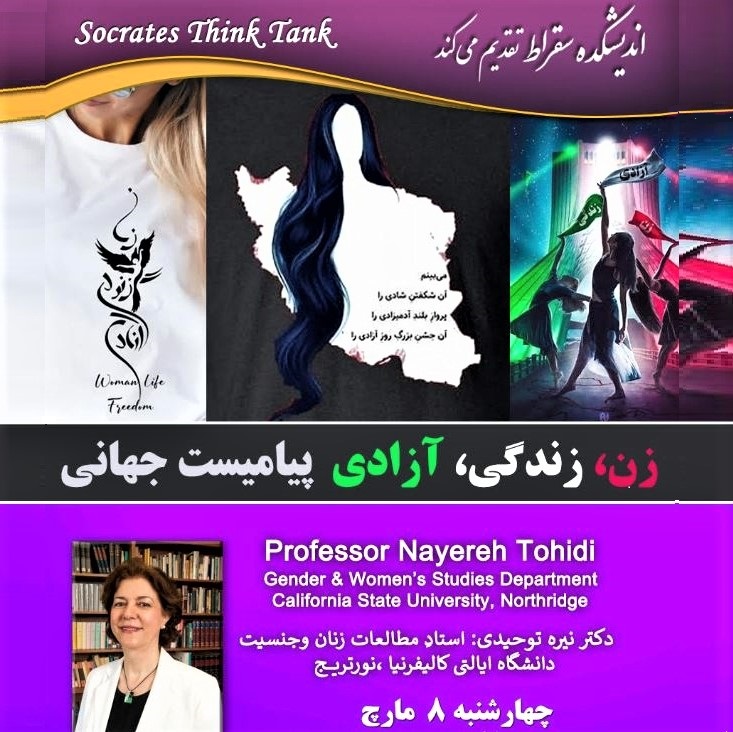 (1) Images of the day: [Left] Happy Int'l Women's Day (see the next item below). [Center] On the occasion of #WomensDay, I dedicate this poem of mine to the fearless, adorable women of Iran (2-minute recitation). [Right] Socrates Think Tank lecture in honor of Women's Day (see the last item below).
(1) Images of the day: [Left] Happy Int'l Women's Day (see the next item below). [Center] On the occasion of #WomensDay, I dedicate this poem of mine to the fearless, adorable women of Iran (2-minute recitation). [Right] Socrates Think Tank lecture in honor of Women's Day (see the last item below).
(2) This 112th edition of #WomensDay, with the theme #EmbraceEquity, must be observed more vigorously, given forces in the East & West that are pushing to reverse much of the gains on gender equality and in view of women assuming an outsize role in social movements worldwide, particularly in Iran (#WomanLifeFreedom).
(3) "#WomanLifeFreedom Is a Universal Message": This was the title of tonight's Socrates Think Tank Zoom lecture in Persian by Dr. Nayereh Tohidi (Cal State Northridge). There were ~120 attendees.
That we lack democracy in Iran's governance structure can be attributed, in no small part, to cultural factors. Democracy in society is linked to democracy in families. As long as women and children have no say within families, it would be misguided to expect democracy at the level of national government.
The #WomanLifeFreedom (WLF) movement is different from Iran's previous sociopolitical movements. The first part of the movement, which was like thunder and lightning, may have passed, but the movement's nurturing rain continues. Iranian women became very active ever since, shortly after the formation of the Islamic Republic, and a few days before the first Women's Day in the new regime, Khomeini declared that hijab would be mandatory for women, turning the celebratory event into an occasion for mourning and protest.
Mahsa Amini's death after she was roughed up and detained for showing some hair from under her headscarf was a spark, an event that awakened Iranians, much like Americans were awakened to racial injustice by the death of George Floyd. Mahsa, a young woman, a Kurd, and a Sunni Muslim, was an apt symbol of opposition to the iron-clad rule of old, patriarchal Shi'i clerics. This may be the first time in history that a major movement is sparked by women and in support of women's rights. Iran's previous uprisings were economic, trade/labor/union-related, or political in nature, but the current one is primarily cultural. It seeks to change social structures that enchain women and prohibit everyone from living a peaceful, happy life.
Islamists believe that they have to control every part of a woman's body and her entire life. According to mullahs, every part of a woman's body has the same arousing effect as her genitals. Whereas a man needs to cover only his midsection, with a swimming trunk, say, a woman should be covered from head to toe. Some more-liberal clerics allow a woman's face and hands to show, but no other parts. Over the years, Iranian women did not take these edicts seriously and gradually adjusted their clothing and headscarves to show more of their features, in rather stylish ways.
The cultural character of the WLF movement led to art and music playing major roles in motivating and guiding the protests. Shervin Hajipour's viral song "Baraa-ye" cleverly and artistically enumerated the people's demands: Freedom to dance, to laugh, to kiss, to display affection, to breathe clean air, to enjoy a healthy environment, and much more. These demands cannot be met within the framework of the oxymoronic Islamic Republic, in which people are viewed as incapable of making their own life decisions and must follow the guidance of a cleric, as if they were minors or mentally incompetent.
Over the years, many groups endeavored to change the situation by advocating for reforms within the framework of Islamic Republic's constitution, but all such efforts were dismissed by the Supreme Leader and his cronies, who imprisoned, exiled, or sidelined many of the reform advocates.
Finally, people had it with the absolute dictatorship of the Supreme Leader in collusion with Islamic Revolutionary Guards. Iran's Generation Z grew up with technology. Gen-Z youth were exposed to satellite TV, the Internet, and social media. They also lived in smaller families with 1-2 children, thus receiving more attention and resources.
Despite the presence of local and field leaders, the lack of visible leadership and organizational structure limits the scope of protests. Today, hierarchical/centralized leadership is frowned upon. People prefer distributed, diversified, inclusive leadership. Even though some people call the current movement a revolution, this view is rather simple-minded. Some cracks and discord have become evident in the regime's leadership, but the brutal security apparatus is still in control and able to quash much of the protests.
The regime has admitted to arresting many thousands of protesters (even more than observers had estimated). Many of those arrested have been "pardoned," even though they had not committed any crimes. But the regime's prisons are still full of activists, journalists, and members of intelligentsia.
Protests have calmed down for now, but there is definitely no going back to Islamic Republic's preferred status quo. People have been emboldened to overtly protest against compulsory hijab and other forms of oppression. Cutting of hairs, which is an ancient form of protest in Iran and other countries, became a highly visible and effective symbol of discontent. We also see many other innovations in the way protests are organized and carried out.





 (1) Images of the day: [Top left] Let a beautiful spring-like day begin: The full moon over the western sky of Goleta, California, 5:45 AM, Tuesday, March 7, 2023. [Top center] AI-assisted artistic depiction of Iranian women's fight against tyranny. [Top right] The Romans had very strong concrete: Rome's Colosseum had a part of its outer structure destroyed in a 14th-century earthquake, but much of it has lasted for ~2000 years. Think about it! The expected lifespan of a modern NFL stadium is ~30 years. So, there is no chance that 41st-century tourists in the US will be visiting a 21st-century football stadium! [Bottom left] UCSB's brand-new classroom building: Called the Interactive Learning Pavilion, the new building will become available for use in spring, and I will be teaching a class in ILP 1203. ILP classrooms are supposed to have state-of-the-art facilities, and I can't wait to try them out! [Bottom center] Piet Oudolf's Valley, a 75000 square-meter mixed-use project, is located in Amsterdam's Zuidas business district. [Bottom right] Snow in Southern California!
(1) Images of the day: [Top left] Let a beautiful spring-like day begin: The full moon over the western sky of Goleta, California, 5:45 AM, Tuesday, March 7, 2023. [Top center] AI-assisted artistic depiction of Iranian women's fight against tyranny. [Top right] The Romans had very strong concrete: Rome's Colosseum had a part of its outer structure destroyed in a 14th-century earthquake, but much of it has lasted for ~2000 years. Think about it! The expected lifespan of a modern NFL stadium is ~30 years. So, there is no chance that 41st-century tourists in the US will be visiting a 21st-century football stadium! [Bottom left] UCSB's brand-new classroom building: Called the Interactive Learning Pavilion, the new building will become available for use in spring, and I will be teaching a class in ILP 1203. ILP classrooms are supposed to have state-of-the-art facilities, and I can't wait to try them out! [Bottom center] Piet Oudolf's Valley, a 75000 square-meter mixed-use project, is located in Amsterdam's Zuidas business district. [Bottom right] Snow in Southern California!
(2) Math puzzle: In a quadrilateral, two opposite sides are of lengths 5 & 6, a third side is of length 7, and the two diameters are perpendicular to each other. What is the length of the fourth side?
(3) Stand-up comedy: This Finnish guy makes insightful and super-funny observations about the English language. Here are his takes on "ass" meaning more than just "butt" and on several words, including "no."
(4) One-liners: Brief news headlines, happenings, memes, and other items of general interest.
- Similarities between Russia & Iran in conducting poison-gas attacks against political opponents are striking!
- The Grammar Nazi: Super-funny language humor. [3-minute video]
- A surprising variety of nested Russian dolls. [1-minute video]
- Facebook memory from Mar. 6, 2018: My remote lecture at Razi University of Kermanshah, Iran.
- Facebook memory from Mar. 6, 2017: "In politics and in life, ignorance is not a virtue."
- Facebook memory from Mar. 6, 2013: The electronics age has made lying a lot more difficult.
- Facebook memory from Mar. 7, 2018: Up-close and personal view of majestic birds in flight.
- Facebook memory from Mar. 7, 2012: How Iran's territory shrank over the 19th and 20th centuries.
- Facebook memory from Mar. 7, 2010: A memorable conference trip to Guadalajara, Mexico.
(5) The growing influence of industry on AI research: After decades of coexistence in academia and industrial research centers, the balance of artificial intelligence activity & innovation is tilting toward industry.
(6) Presentation dos and don'ts: Armando Roca Suarez gives helpful tips on how to prepare presentation slides so that attendees with ADHD can process and understand them. Slides full of text are out. Diagrams and compelling stories are in. IMHO, these suggestions are useful for all attendees, not just those with ADHD.
(7) A breath of fresh air: This senior Shi'i cleric praises Reza Shah for a solidly-founded system of justice and chides Islamic Republic authorities for their nonsensical/inconsistent statements about mass-poisonings of Iranian schoolgirls. [12-minute video, in Persian] [See also my blog item 1 on Monday 2023/03/06]
(8) Getting ready for Nowruz: I am preparing to set up my haft-seen ahead of the arrival of the Persian New Year at 2:24:27 PM PDT on Monday, March 20, 2023. Nowruz traditions include setting up a spread with seven items whose Persian names begin with the sound "S" (the seven S's). US-based Sadaf food company sent me an ad to let me know that they carry all 7 items. I tend to use substitutes for hard-to-find items such as Samanu. Examples of substitutes include Sekkeh (coin), Sonbol (hyacinth), and Saa'at (watch/clock).

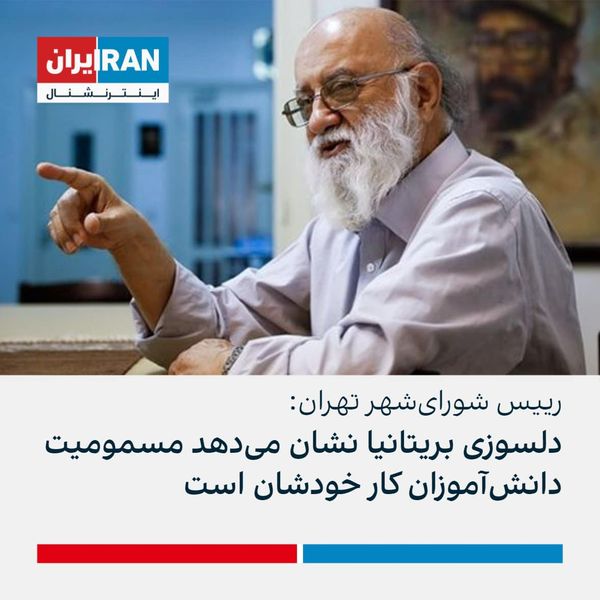
 (1) Conspiracy theories: Iran's mullahs and their official mouthpieces (state TV, newspapers, other media) are promoting different conspiracy theories about the poisoning of schoolgirls across the country. They don't even try to be consistent in their pronouncements, blaming foreign enemies, Great Britain, teachers, and the #WomanLifeFreedom movement for the evil deeds. Some sources claim that there is no poisoning at all, offering the explanation that impressionable young girls have succumbed to mass hysteria! Meanwhile, schoolgirls and their moms are arrested when they gather to protest or demand action. (#Poisonings)
(1) Conspiracy theories: Iran's mullahs and their official mouthpieces (state TV, newspapers, other media) are promoting different conspiracy theories about the poisoning of schoolgirls across the country. They don't even try to be consistent in their pronouncements, blaming foreign enemies, Great Britain, teachers, and the #WomanLifeFreedom movement for the evil deeds. Some sources claim that there is no poisoning at all, offering the explanation that impressionable young girls have succumbed to mass hysteria! Meanwhile, schoolgirls and their moms are arrested when they gather to protest or demand action. (#Poisonings)
(2) Science at Sundance: This is the title of a 9-page special feature in the March 2, 2023, issue of Science magazine discussing science-themed films at the 2023 Sundance Film Festival.
- Poacher: Wildlife crime fighters expose the largest ivory ring in Indian history
- Deep Rising: Warns about dangers of mining metallic nodules from the abyssal plains of the Pacific Ocean
- The Longest Goodbye: Plans for, and challenges of, human travel to Mars
- The Pod Generation: Envisions a believable future of AI-mediated comforts
- Fantastic Machine: Sprawling history of camera technology and image-making
- Is There Anybody Out There? Pushes back against the notion that disabilities are problems to be solved
- The Eternal Memory: Poignant & intimate portrait of a couple facing the challenges of Alzheimer's disease
(3) Fights over patents and technical credit: Ever since the "invention" of the stored-program digital computer, people have argued over who deserves credit for which innovation in the world of digital technology. Inventors file for patents to reserve a spot in the "Hall of Credits" and to benefit financially, should an idea move to the industrial stage and appear in actual products. Of course, being issued a patent is no guarantee for either fame or fortune. Patents are routinely challenged in courts and, more often than not, are deemed faulty/invalid, because the inventor or patent filer missed or failed to cite "prior art," knowledge that already existed at the time the patent application was made.
The "invention" of the digital computer itself led to significant fights over who should get credit. I have used "invention" in quotation marks, because ideas from many different people over several decades, refined and combined, led to the stored-program computer, what we mean by "computer" today. However, according to the 2003 book Who Invented the Computer: The Legal Battle that Changed Computing History (by Alice Rowe Burks), a legal battle in the early 1970s established the little-known physics/math professor John Vincent Atanasoff as the "inventor."
A similar battle played out over the notion of RISC (reduced instruction-set computer) in the 1980s. IBM did much work in this area in connection with its 801 system and acquired at least 11 patents, 6 on hardware and 5 on software topics. Later, a computer science professor at UC Berkeley, David Patterson, made formal presentations on the benefits of RISC architectures, in terms of design simplicity & performance benefits, and published many papers on the subject, attaching his name indelibly to the RISC idea. In this 1988 piece, "RISCy Patents," Patterson reviews the fights over RISC patents and claims of credit.

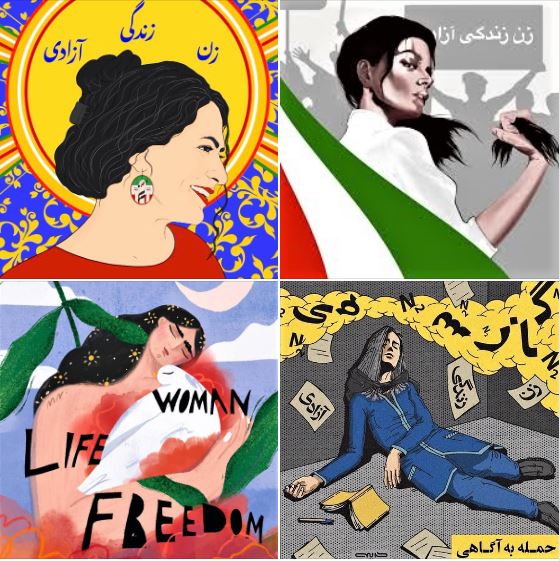
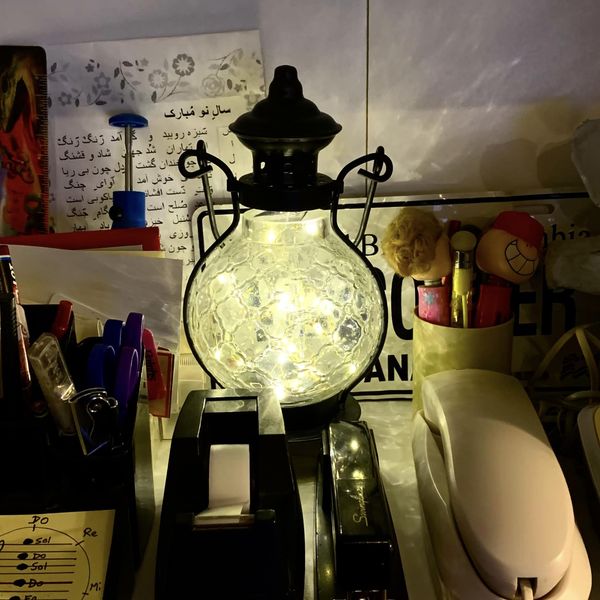 (1) Images of the day: [Left] The leaning twin towers of Paris: The V-shaped Tours Duo skyscrapers, designed by Jean Nouvel. [Center] Four of the many artistic memes honoring Iran's #WomanLifeFreedom movement. [Right] I love my LED lamp, with multiple lighting modes (candle, blinking, and more) and a remote control.
(1) Images of the day: [Left] The leaning twin towers of Paris: The V-shaped Tours Duo skyscrapers, designed by Jean Nouvel. [Center] Four of the many artistic memes honoring Iran's #WomanLifeFreedom movement. [Right] I love my LED lamp, with multiple lighting modes (candle, blinking, and more) and a remote control.
(2) "The Feminist Test We Keep Failing": A 22-minute podcast in the "Lost Women of Science" series that discusses "the Finkbeiner Test," a checklist of what to avoid in writing the profile of a successful women in the media. It includes not mentioning the husband's job, her childcare arrangements, or how she was the first women to do or be 'X.'
I tend to agree with one of the discussants that we should not over-emphasize a scientist's gender and gender-related issues. However, rather than avoiding certain aspects of a woman scientist's life, we should make an effort to discuss those aspects for male scientists as well. In other words, we should present scientists of both sexes as human beings, whose profiles include scientific expertise & contributions, along with personal interests & relationships. This is already being done in other domains. An athlete's or actor's profile, for example, usually includes not just his/her career, but also personal interests & social connections.
(3) One-liners: Brief news headlines, happenings, memes, and other items of general interest.
- Finland joined NATO to deter a Russian invasion, a repeat of Stalin's annexation of a part of its territory.
- A capsul history of Africa: Of Africa's 55 sovereign states, only Ethiopia and Liberia were never colonized.
- IEEE Buenaventura Section talk: "An Overview of California Privacy Rights Act (CPRA)." [57-minute video]
- Ukrainians cope with horrors of war by taking refuge in music, says a conductor who is now a refugee.
- Pop music: Michael Jackson's "Billy Jean": Four players, one guitar.
- Pop music: A cappella performance of "Stand by Me": The Buzztones from London.
- Math puzzle: Show that there are only 3 integer values n that make both 9n + 16 & 16n + 9 perfect squares.
(4) [Iran's Islamic Republic is following in the footsteps of the Soviet Union, Part 1] Eliminating the troublesome middle class: Lenin famously said that the middle class should be squeezed out by the double-pressure of overt taxes and covert taxes (aka inflation), so that it has no opportunity to cause mischief with its learned manners of reading, traveling, learning, and teaching. [Note: That Lenin actually said so has been disputed, but he and other economists & politicians have agreed with its essence.] Once the middle class is gone, the upper class becomes more conservative out of fear, taking refuge behind tradition and religion. In this 2-minute video (in Persian), a Cambridge University professor explains the strategy.
(5) [Iran's Islamic Republic is following in the footsteps of the Soviet Union, Part 2] Poisoning of schoolgirls: Iran was very slow in admitting that many school girls have been poisoned with nerve gas and has yet to arrest anyone or even name the culprits, raising valid suspicions that the regime's security apparatus has carried out these vile attacks to discourage girls from going to school. The Chechnya region of Russia, home to separatist movements, suffered from a similar wave of poisonings in 2005, which affected mainly school children and produced identical symptoms. Russia & Putin are seemingly in love with poisoning their opponents. [Map of Iran, showing the geographic distribution of school poisoning sites]

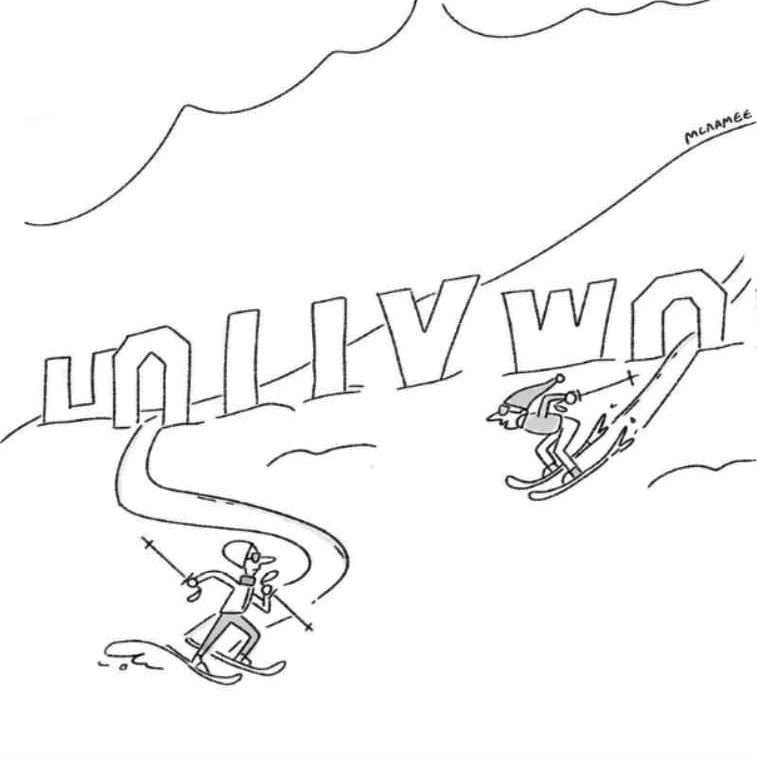


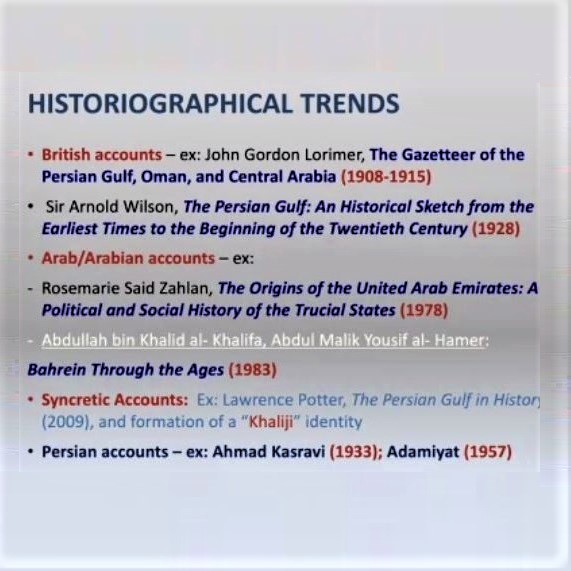
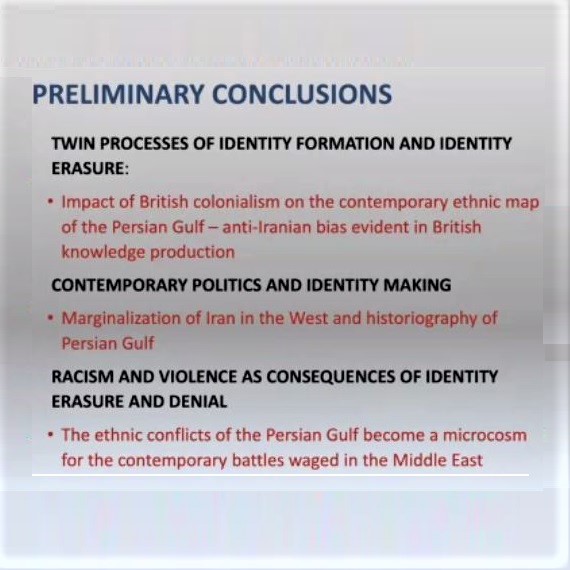


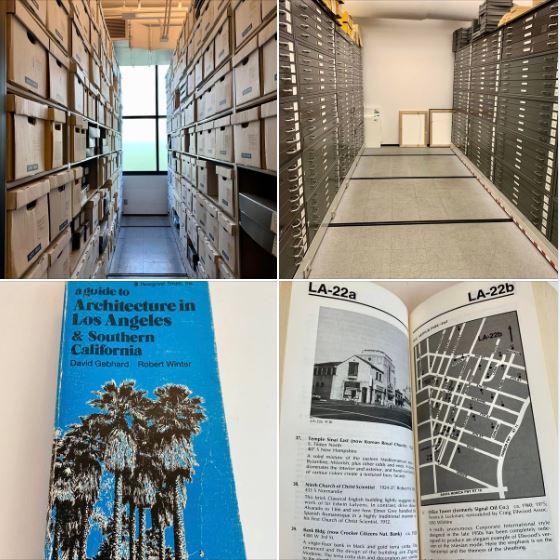 (1) Images of the day: [Top left] The Paratethys Sea: Once the largest lake on Earth, its remaining fragments form the Black, Caspian, and Aral Seas. Europe looked a lot different 12 million years ago! [Top center] New Yorker cartoon of the day: "It's a nice change of pace from being on fire." [Top right and all of center row] Farhang Foundation lecture about Iran (see the last item below). [Bottom row] UCSB's Art, Design & Architecture Museum (see the next item below).
(1) Images of the day: [Top left] The Paratethys Sea: Once the largest lake on Earth, its remaining fragments form the Black, Caspian, and Aral Seas. Europe looked a lot different 12 million years ago! [Top center] New Yorker cartoon of the day: "It's a nice change of pace from being on fire." [Top right and all of center row] Farhang Foundation lecture about Iran (see the last item below). [Bottom row] UCSB's Art, Design & Architecture Museum (see the next item below).
(2) Visiting UCSB's Art, Design & Architecture Museum: On Friday, March 3, 2023, I took advantage of a guided tour of a part of AD&A Museum's architecture & design collection, offered in connection with the UCSB Reads 2023 Program. The Genius Loci exhibit shows 10 single-family home projects, with samples from desert, hillside, and beachfront residences. A common theme in the 10 designs on display is harmony with the environment and surrounding nature.
Many famous architects have built in Southern California, primarily residences, many of them for their personal use. I photographed a few examples: A desert home, a hillside home, and a private bomb shelter, which became the rage immediately after World War II. Ideas about bomb towns for communities were also floated.
UCSB's AD&A museum owns an impressive collection of architectural drawings, scale models, and other documents in its collection, some stored within on-campus archives and others kept externally. The photos show parts of the on-campus archives and a classic guide to SoCal architecture.
(3) "Banning and Belonging: Iranians of the Southern Persian Gulf Coast": This was the title of today's fascinating talk by Dr. Firoozeh Kashani-Sabet (U. Pennsylvania) under the auspices of Farhang Foundation.
We know much about Iran's influence in Southwest Asia and Southeastern Europe, brought about by when the Persian Empires extended far and wide. As far as I know, points to the south of the Persian Gulf were never officially part of the various Persian Empires, yet Iranians have a significant presence there and have influenced that region, sometimes referred to as the Arabian side of the Persian Gulf. Driven by foreign powers pursuing their economic and political interests, the Persian Gulf itself has been called "the Arabian Gulf," "the Islamic Gulf," "the Basra Gulf," or simply "the Gulf," a cop-out and non-descriptive term.
Expanding from India, Britain exerted influence over the Persian-Gulf, considering that area of strategic value to its naval and economic supremacy. British sources referred to the Persian Gulf as "the British Lake." At the time, Iran had no naval presence to speak of, and no strong central government to challenge Britain's domination. British accounts of the region's history are biased toward the Arab countries, because those countries were viewed as weaker and thus more prone to manipulation to preserve Britain's interests. As a result, part of the British policy was to restrict the Iranian presence in the south of the Persian Gulf.
Despite reference to the south Persian Gulf as predominantly Arabian, the real story is different. The region's population has been migratory, with significant presence by South Asians, Africans, and Iranians. Europeans imposed the binary Arab/Persian (or Arab/Ajam, where Ajam, applied primarily to Persians, is a derogatory term) on the region, the way they did in Europe, where they preferred to view countries as mono-ethnic and mono-lingual. This did not fit the reality in the Middle East. For example, there was a significant Iranian minority in Iraq that enjoyed rights under the Ottomans, but not later.
Unfortunately, Iran gradually lost the culture war and the Middle East became identified with Arabs in the 20th century. Iranians themselves contributed to the dichotomy and hateful dialog (e.g., Ferdowsi, Ibn Khaldun). The modern Iranian identity, developed in the 20th century, recognized the diversity of the population, in a way that the Persian identity did not. Racism and violence are inevitable consequences of identity erasure/denial. So, the arbitrary drawing of national boundaries of the Middle East by the British contributed to the permanent state of conflict in the region.
Many of Iran's engagements with world powers entailed loss of territory. Boundaries with Iraq and in the Persian Gulf were redrawn by the British, leaving Iran rather vulnerable in both regions. The current geopolitical reality is that Iran is encircled by hostile or unfriendly states. As a result, Iran cannot secure itself merely by arming. Diplomacy and international relations must play a role. It is imperative that Iran rejoin the family of nations and establish friendly ties, both regionally and worldwide. [84-minute recording of the talk]
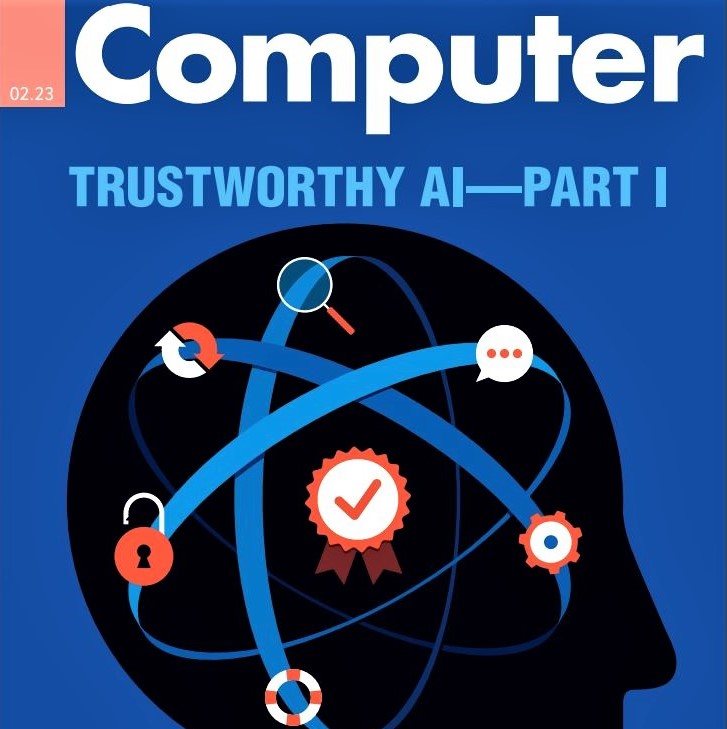
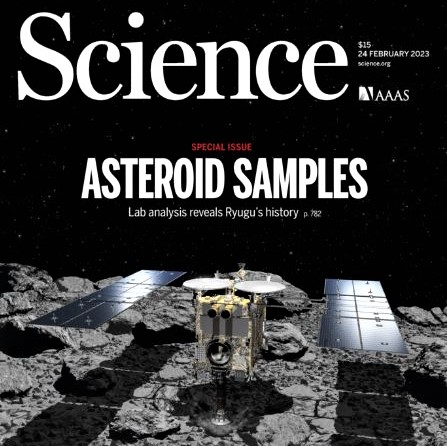
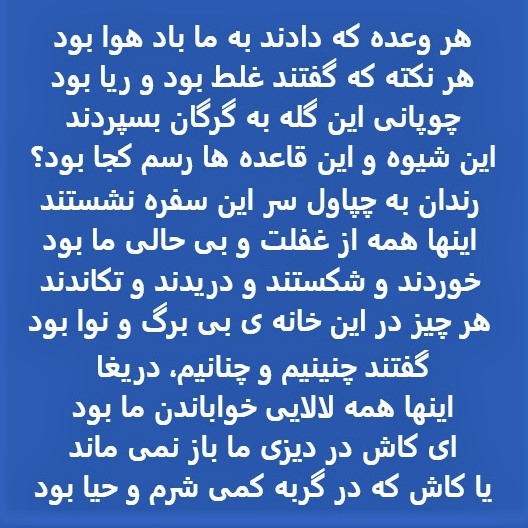 (1) Images of the day: [Left] IEEE Computer magazine's February cover feature on trustworthy AI (see the next item below). [Center] Special issue on asteroid samples: The February 24, 2023 issue of Science magazine discusses what analyzing more than 70,000 meteorites in existence on Earth can teach us about their origins and our universe. [Right] Persian poetry: A loaded political-protest poem by Iraj Mirza (1874-1926).
(1) Images of the day: [Left] IEEE Computer magazine's February cover feature on trustworthy AI (see the next item below). [Center] Special issue on asteroid samples: The February 24, 2023 issue of Science magazine discusses what analyzing more than 70,000 meteorites in existence on Earth can teach us about their origins and our universe. [Right] Persian poetry: A loaded political-protest poem by Iraj Mirza (1874-1926).
(2) Cover feature of IEEE Computer magazine, February 2023: First installment of extensive discussions on trustworthy AI. The theme articles in this issue are as follows. The second part will be published in May.
- Wasabi: A Conceptual Model for Trustworthy Artificial Intelligence, by A. M. Singh and M. P. Singh
- Trustworthy AI Requirements in the Autonomous Driving Domain, by D. Fernandex-Liorca & E. Gomez
- Trustworthy Autonomous Systems Through Verifiability, by M. R. Mousavi et al.
- AI Maintenance: A Robustness Perspective, by P.-Y. Chen & P. Das
- A Survey on Deep Learning Resilience Assessment Methodologies, by A. Ruospo et al.
- Explaining the Walking Through of a Team of Algorithms, by A. Martinez et al.
- Detecting Systematic Deviations in Data and Models, by S. Speakman et al.
- Three Levels of AI Transparency, by K. Haresamudram, S. Larsson, & F. Heintz
(3) One-liners: Brief news headlines, happenings, memes, and other items of general interest.
- Turkey's February 6 earthquake created a valley whose depth equals the height of a 13-story building.
- California declares emergencies in counties buried by snow, as the latest storm moves east.
- Anti-Semitism in the US: FBI arrests heavily-armed man who planned to kill Jewish officials in Michigan.
- Conservatives intensify their efforts to remove material from libraries & to defund these "arms of Satan."
- "Coded: Art Enters the Computer Age, 1952-1982": Los Angeles County Museum of Art, till July 2, 2023.
- Inflation: The annual $7 Burger Week in Santa Barbara is now $10 Burger Week! [Tweet, with image]
(4) On conservative US politicians: They like annual tax forgiveness for billionaires but hate one-time student loan forgiveness for struggling college graduates.
(5) Stages of life & the number of bits in the binary representation of age: One bit, 0-1, infant; Two bits, 2-3, toddler; Three bits, 4-7, child; Four bits, 8-15, adolescent; Five bits, 16-31, adult; Six bits, 32-63, middle age; Seven bits, 64-127, senior citizen; The next stage is empty for now, as the record age stands at 122.
(6) Iran's foreign minister sits for a rare interview with Christiane Amanpour: Speaking in Persian (likely due to having been ridiculed for his miserable English language skills), he repeats the mullahs' bald-faced lies about security forces not shooting or mistreating peaceful protesters. He also claims that Iran respects human rights and that Iranian women enjoy a high stature. Amanpour challenges him on several key points, but he seems to be oblivious to fact-checking.
(7) Iran is in the process of acquiring technology for locating Starlink Internet antennas: Specially-equipped drones canvassing the skies can locate radio-frequency transmitters, but the cost is high and countermeasures are available to users. [5-minute video, narrated in Persian]

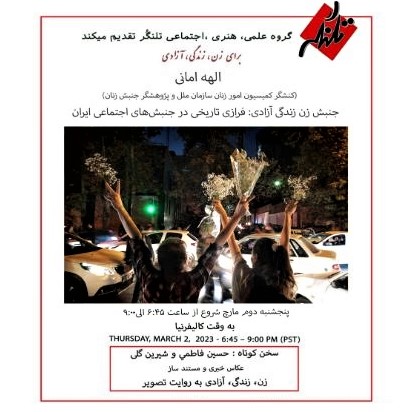
 (1) Images of the day: [Left] Throwback Thursday: Kentucky Fried Chicken store in Tehran, Iran, 1976. [Center & Right] Talangor Group talk on women's rights (see the last item below).
(1) Images of the day: [Left] Throwback Thursday: Kentucky Fried Chicken store in Tehran, Iran, 1976. [Center & Right] Talangor Group talk on women's rights (see the last item below).
(2) Mass-poisoning of schoolgirls in Iran: Despite state-of-the-art lab facilities in Tehran and numerous security cameras in and around girls' schools, the government was slow in releasing information about the kind of poison gas used and is yet to arrest anyone for the crimes. If a group of people had gone to girls' schools and played music for them, the entire group and their families would have been under interrogation or in prison by now! The fingerprints of Khamenei's goons are all over these gas-poisoning incidents. [Tweet, with video]
(3) Tonight's Talangor Group talk: "The #WomanLifeFreedom Movement as a Milestone in the History of Iran's Social Movements" was the topic of a timely and informative presentation, in Persian, by Elahe Amani (UN Commission on Women activist and women's movements researcher). There were ~100 attendees.
The program began with "#WomanLifeFreedom, Seen Through Images," a short presentation by Middle-East Image Foundation, about which I wrote in a previous post. You can donate money to this worthy organization by visiting its Web site.
Amani's talk was occasioned by International Women's Day, coming up on March 8. She indicated that she is hopeful for the future of the ongoing uprising in Iran, although she has some fears as well. In the last few months, 800 schoolgirls have been chemically poisoned to discourage them and their families from engaging in education. A regime that is swift in executing street protesters has so far not arrested a single person in connection with the mass poisoning attacks.
Women have been at the forefront of the fight against the oppressive and misogynistic Islamic regime. Early slogans of 40+ years ago in opposition to compulsory hijab included: "We did not revolt to turn back." Currently, the Iranian society is experiencing a renaissance, whose reach far exceeds regime change in Iran.
Recent social movements in Iran include the "Green Movement" of 2009 and the 2006 campaign to collect one million signatures against gender-discriminatory laws. The murder of Mahsa Amini triggered an all-out revolution. This explosion wasn't unexpected, given the pressure that had been building up for many years. In the Arab Spring, too, the death of a single street vendor in Tunisia led to broad and all-encompassing social movements.
Iranian authorities have known for some time that the youth, with their connections to the world through the Internet, have become widely separated from the older generations and are socially quite active. Iran's Generations Alpha and Z brought about the #WomanLifeFreedom movement, which challenges not just the political power network but also patriarchal social structures. Why is this movement a new milestone in the history of Iran's social movements? The Iranian society is very young: 86% of the population, forming three generations, was born after the 1979 Revolution.
The rise of social media deeply affects modern social movements. Today, information is no longer under the control of power centers, although the powerful can still make mischief through the spread of misinformation and disinformation. One of our aims should be educating the Iranian people about how to separate facts from lies on social media.
A few decades ago, Iranian women were socially active but they were not on the front lines of political movements or in leadership positions. The brutality and misogyny of the Islamic regime has led to women becoming significantly more active, to the extent that today's young Iranian women are leading many movements against oppressive laws, against the death penalty, against environmental abuse & mismanagement, and many other initiatives.
We must bear in mind that regime change is easier than a change in culture. The former can be accomplished in short order, while the latter can take decades. It is unclear that Iranian men truly understand the implications of #WomanLifeFreedom movement. In other words, one wonders whether those who seemingly support the Mahsa movement, will approve of the freedoms sought by this movement for their own daughters and wives. As a case in point, South Africa has one of the most progressive constitutions with respect to women's rights, yet the country is third in the world with regard to violence against women.
Two trends in the world mirror Iran's 4+ decades of marching backward: Religious fundamentalism and political populism. Even the United States has not been immune to these regressive trends. There is some hope that Iran's progressive social movement will not only liberate Iran but will also help spread the message of #WomanLifeFreedom to other countries.
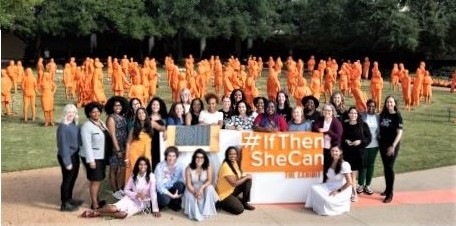
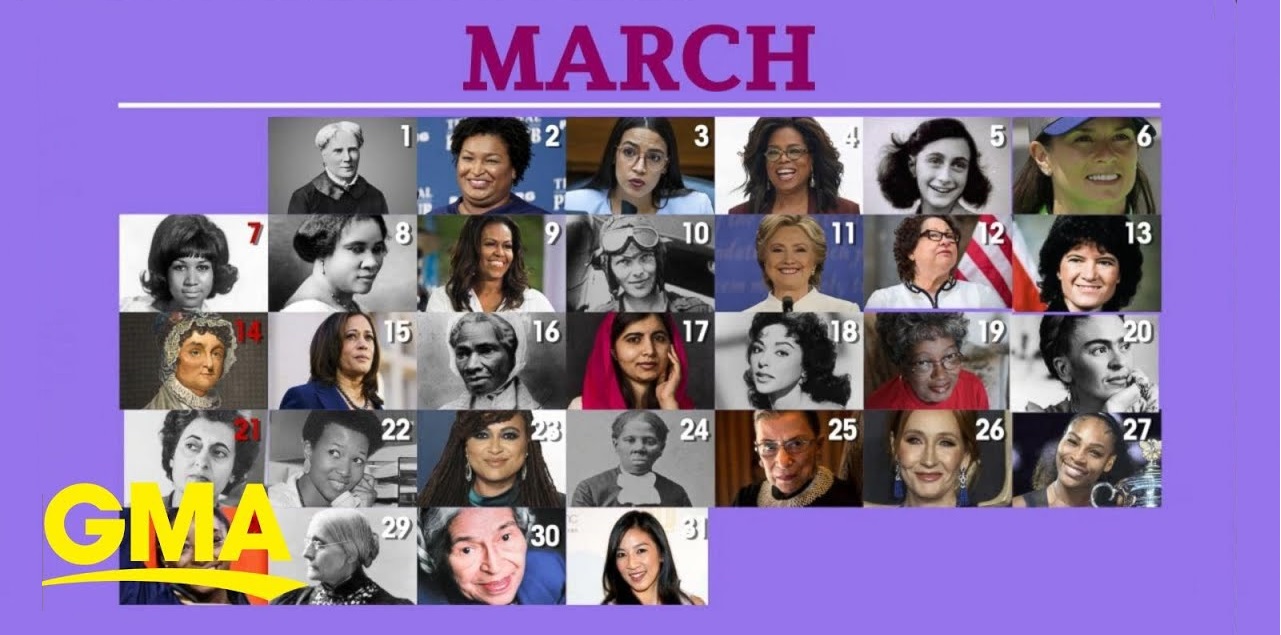


 (1) Images of the day: [Top left] March is Women's History Month: Life-size 3D-printed statues of 120 women in STEMM, created & displayed by the Smithsonian Institution in March 2022. [Top right] Women's History Month subjects on ABC's "Good Morning America." [Bottom left & center] On our musical tastes (see the next to the last item below). [Bottom right] Iranian mullahs have finally found a way to control the alarming rise in the price of US dollar, which has doubled in 6 months, causing a record inflation rate.
(1) Images of the day: [Top left] March is Women's History Month: Life-size 3D-printed statues of 120 women in STEMM, created & displayed by the Smithsonian Institution in March 2022. [Top right] Women's History Month subjects on ABC's "Good Morning America." [Bottom left & center] On our musical tastes (see the next to the last item below). [Bottom right] Iranian mullahs have finally found a way to control the alarming rise in the price of US dollar, which has doubled in 6 months, causing a record inflation rate.
(2) UCSB alumni and former staff members establish the Mahsa Amini Graduate Fellowship for Iranian women in non-STEM fields. If you want to support this fellowship, here's the donation site.
(3) The Oscars are here: Yale CS professor Theodore Kim & collaborators at Pixar Studios received a Technical Achievement Academy Award for developing the Fizt2 system that models elastic materials in animation.
(4) One-liners: Brief news headlines, happenings, memes, and other items of general interest.
- Collision of passenger and freight trains in Greece kills at least 36.
- Data science is one of the most popular majors, but the future of the data scientist is still unclear.
- American Association for the Advancement of Science (AAAS) celebrates 175 years. [Science editorial]
- Facebook memory from Mar. 1, 2015: Don't trust media stories that include the ugliest possible pictures.
(5) Iran's Taliban-like Islamic regime poisons schoolgirls to drive them away from education: Then, its goons rough-up and drag a peacefully protesting mother into an unmarked car. Shame on the nonchalant onlookers and on the international community for continuing to court this murderous regime. #WomanLifeFreedom
(6) "What the Music You Love Says About You": This was the title of a UCLA Semel Institute webinar by Dr. Susan Rogers (Berklee College of Music), a record-producer-turned-brain-scientist who worked with Prince as his staff engineer, in conversation with Dr. Mark Jude Tramo (MD, PhD). The talk and the book on which it is based attempt to answer the question of why you fall in love with some music and not with other music.
Why do your favorite songs move you? Rogers explained that we each possess a unique "listener profile" based on our brain's natural response to the seven key dimensions of a song. Four of these dimensions apply to the music: melody, lyrics, rhythm, and timbre, or the sound itself. The other three dimensions apply to mediums like operas, movies, TV, and novels: authenticity, novelty-vs.-familiarity, and realism.
Are you someone who prefers lyrics or melody? Do you like music "above the neck" (intellectually stimulating), or "below the neck" (instinctual and rhythmic)? Like most of us, Rogers is not a musician, but demonstrates how all of us can be musical simply by being active, passionate listeners.
Here is a 60-minute recording of the same book talk at the Commonwealth Club of California.
(7) A final thought, on this first day of Women's History Month: "At a NASA Earth meeting 10 years ago, a white male post-doc interrupted me to tell me that I didn't understand human drivers of fire, that I def needed to read McCarty et al. Looked him in the eye, pulled my long hair back so he could read my name tag, and said: 'I'm McCarty et al.'" ~ NASA branch chief and scientist Dr. Jessica McCarty, on sexism and mansplaining

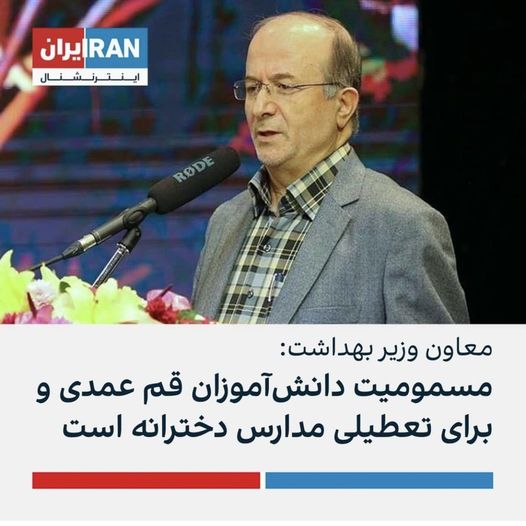
 (1) Images of the day: [Left] With aunt Victoria in LA, Sunday afternoon, 2/26. [Center] Poisoning of schoolgirls in Iran (see the next item below). [Right] Long lines form at foreign exchange dealerships in Iran to buy US dollars at the all-time-high rate of 60,000 tomans.
(1) Images of the day: [Left] With aunt Victoria in LA, Sunday afternoon, 2/26. [Center] Poisoning of schoolgirls in Iran (see the next item below). [Right] Long lines form at foreign exchange dealerships in Iran to buy US dollars at the all-time-high rate of 60,000 tomans.
(2) The usual pattern for Iranian mullahs: First deny the whole thing. Then, admit that it happened, but claim it was no big deal. Next, say that it was serious, but our enemies did it. Then, admit that it was an internal action whose perpetrators will be punished. Finally, do nothing about it.
Schoolgirls in Qom and other Iranian cities were poisoned by Islamists who are against education for girls.
(3) Autonomous drones operated by US Air Force will get face-recognition technology: The AI capabilities are said to be for intelligence gathering, but one cannot discount the possibility of unethical uses in warfare.
(4) "Students and Postdocs Deserve More": This is the title of Science magazine's editorial, issue of February 10, 2023, addressing the low pay, lack of benefits, and sometimes toxic research environments for today's indispensable research and teaching workforce and tomorrow's scientific leaders.
(5) You are free to say what you want, but you have to accept the consequences (people with opposite views also have the right to free speech): In a shocking rant on YouTube, Scott Adams, creator of the "Dilbert" comic strip, called Black Americans a "hate group" and suggested that White people should "get the hell away" from them. The USA Today Network, which operates hundreds of newspapers, has pulled the plug on Adams' long-running comic strip. What makes a successful artist sabotage his profitable production line is beyond me!
(6) Aftermath of the 6-week UAW strike at University of California: Council of UC Faculty Associations objects to UC administration pushing the costs of newly-negotiated contracts with graduate students and other academic workers to faculty investigators and departments, whose budgets are already quite strained.
(7) "Why Are There So Few Women in Computer Systems Research?": This is the title of an article by A. Richter, J. Yamamoto, and E. Frachtenberg, published in the February 2023 issue of IEEE Computer magazine. The authors set out to discover which of the 10 common hypotheses offered for under-representation of women in computer science research apply even more to researchers in computer systems.
(8) The rise of impostor syndrome: Ironically, when you feel that you are faking it, but others don't think so, you tend to agree with your own supposedly incompetent opinion rather than with other people's assessment.
(9) Final thought for the day: "We grow tired of everything but turning others into ridicule, and congratulating ourselves on their defects." ~ William Hazlitt





 (1) Images of the day: [Top row] Last night's family gathering to celebrate the latest addition to our clan! [Bottom left] Mercedes-Benz, in partnership with Google, will use a supercomputer in every one of its cars to process data from sensors, navigate & reroute, operate an entertainment center, and feed a cockpit-wide hyper-screen. [Bottom center] A technology-center building in China. [Bottom right] Meme of the day: "One can see the inextinguishable flame that illuminates our hearts, even with closed eyes." ~ Kimia Zand, one of the many Iranian protesters who lost an eye, when security forces sprayed pellets onto their faces
(1) Images of the day: [Top row] Last night's family gathering to celebrate the latest addition to our clan! [Bottom left] Mercedes-Benz, in partnership with Google, will use a supercomputer in every one of its cars to process data from sensors, navigate & reroute, operate an entertainment center, and feed a cockpit-wide hyper-screen. [Bottom center] A technology-center building in China. [Bottom right] Meme of the day: "One can see the inextinguishable flame that illuminates our hearts, even with closed eyes." ~ Kimia Zand, one of the many Iranian protesters who lost an eye, when security forces sprayed pellets onto their faces
(2) Quote of the day: "Physical fitness is not only one of the most important keys to a healthy body, it is the basis of dynamic and creative intellectual activity." ~ John F. Kennedy
(3) Words of wisdom: "We judge ourselves by what we feel capable of doing, while others judge us by what we have already done." ~ Henry Wadsworth Longfellow
(4) One-liners: Brief news headlines, happenings, memes, and other items of general interest.
- Women scientists who fought sexism at MIT: An inspiring story, told in Kate Zernike's The Exceptions.
- Impact of Technology on Society: CACM talks with Dr. Moshe Vardi about technology & social responsibility.
- Idea for a new TV show: Tonight, live from Washington, it's "America's Funniest Conspiracy Theories"!
- Fibonacci soup: You make it by adding leftovers from soups you made yesterday and two days ago.
- English tip: I before E, unless you leisurely deceive eight overweight heirs to forfeit their sovereign conceits.
- The French spy who brought Khomeini to Iran and was handsomely rewarded. [18-minute video, in Persian]
- Cryptic quote: "TYJ BTTS HFVYB ZLTGH NGMVE, OFJY VH FVHM WTG, WTG UJJX YT DZVY." ~ LTL NZQXJW
- Nobel Laureate physicist Richard Feynman's love letter to his wife: "I love my wife. My wife is dead."
- Facebook memory from Feb. 26, 2015: Polanyi Paradox, and its importance to machine-learning research.
- Facebook memory from Feb. 26, 2013: On the days when receiving an e-mail message was a joyous event!
(5) Engineering faculty members at US universities: Full professors 14,328 (14.2% women); Associate professors 7852 (21.4% women); Assistant professors 7706 (26.5% women); Non-tenure-track 5020; Part-time 4261. [Source: American Society for Engineering Education, based on 2021 data]
(6) US engineering degrees awarded to women: From a low of 15.4% (computer engineering) to the third-highest 39.1% (biological & agricultural engineering), with the top-two percentages being 51.5% (biomedical engineering) and 57.8% (environmental engineering). [Source: ASEE, based on 2021 data]
(7) Engineering enrollments at US universities: Texas A&M and Arizona State had the top and second-highest undergraduate engineering enrollments at 15K+. Mechanical engineering had the highest enrollment of 124K, followed by computer science (within engineering) at 103K. Enrollment in every other engineering field was less than 50K. For MS degrees awarded, computer science (within engineering) led by a wide margin at 13K, with mechanical engineering trailing at 8K. When one adds CS programs outside engineering colleges, computer science is by far the most-popular tech field. [Source: ASEE, based on 2021 data]
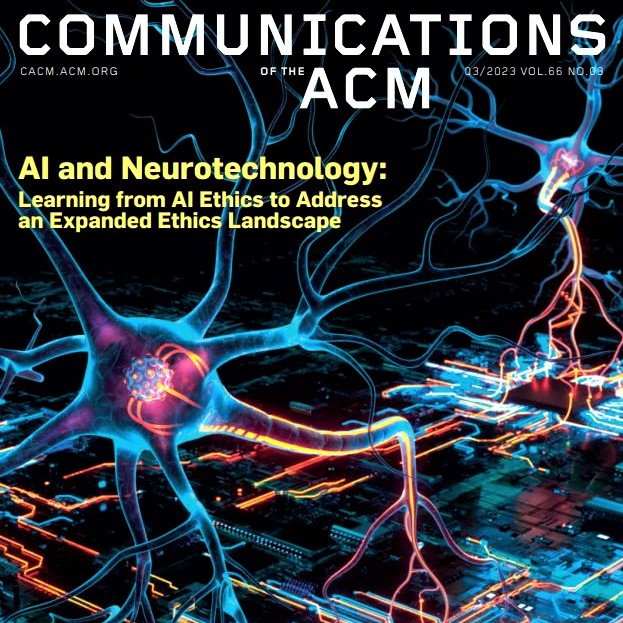
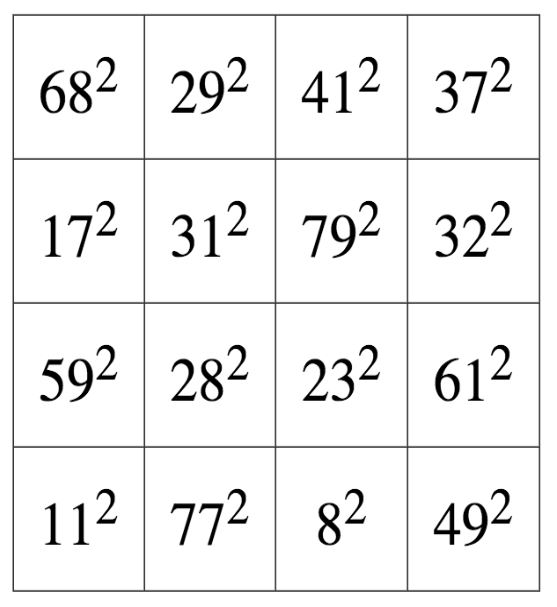
 (1) Images of the day: [Left] CACM's March cover feature (see the next item below). [Center] Mathematician Leonhard Euler was the first to produce a magic square containing squared numbers: As in other magic squares, the rows, columns, and diagonals of his 4-by-4 square have the same sum. Larger magic squares of squared numbers have since been produced, but no one has come up with a 3-by-3 magic square of squared numbers yet, nor has anyone been able to prove that such a square does not exist. [Right] The world's oldest underground station, Baker Street, England: 157 years ago and today.
(1) Images of the day: [Left] CACM's March cover feature (see the next item below). [Center] Mathematician Leonhard Euler was the first to produce a magic square containing squared numbers: As in other magic squares, the rows, columns, and diagonals of his 4-by-4 square have the same sum. Larger magic squares of squared numbers have since been produced, but no one has come up with a 3-by-3 magic square of squared numbers yet, nor has anyone been able to prove that such a square does not exist. [Right] The world's oldest underground station, Baker Street, England: 157 years ago and today.
(2) Communications of the ACM's cover feature for March 2023 discusses "Ethics and Neurotechnology: Learning from AI Ethics to Address an Expanded Ethics Landscape." Here is a list of issues, along with AI capabilities & methodologies that give rise to them.
AI needs data: Data privacy; Data governance
AI is often a black box: Explainability; Transparency
AI can make or recommend decisions: Fairness; Value alignment
AI is based on statistics, thus having inevitable errors: Accountability
AI can profile people and shape preferences: Human & moral agency
AI is pervasive and dynamic: Misuse impacts; Jobs transformation
AI can be used for good or bad: Weapons; Surveillance; Sustainability
(3) On politics and religion: How interesting that any political or religious group, no matter how limited in its world view, eventually subdivides into sects that can't see eye to eye!
(4) One-liners: Brief news headlines, happenings, memes, and other items of general interest.
- This year, California's draught gave way to heavy rains and, now, to snow. [NYT story]
- Comparing the English-language skills of Iran's Foreign Minister & an Abadani fish seller. [Tweet, with videos]
- Persian poetry recitation: They said things, but the truth was different. [2-minute video]
- Facebook memory from Feb. 24, 2011: "Gorg" ("Wolf"), a Persian poem by Fereidoon Moshiri.
- Facebook memory from Feb. 25, 2022: Different crime scenes, same criminal.
(5) Some silly-sounding federally funded research projects actually produce important results: Listen to this 47-minute Public Radio "Golden Goose" podcast about awards that constitute scientists' response to public ridicule of useful but comically-sounding research projects.
(6) Giving a new meaning to "pro-life": Alaska Republican politician observes that abusing children to death comes with economic benefits, because dead children don't need government services.
(7) Transparency needed in reviewing and punishing ethical violations: Professional societies have codes of conduct and codes of ethics. Unfortunately, after complaints are made, the issue often sinks into a black hole and no one ever hears about the review outcome and actions taken. Association for Computing Machinery is trying to do something about this with a new "ACM Policy on Complaint Process Disclosure."



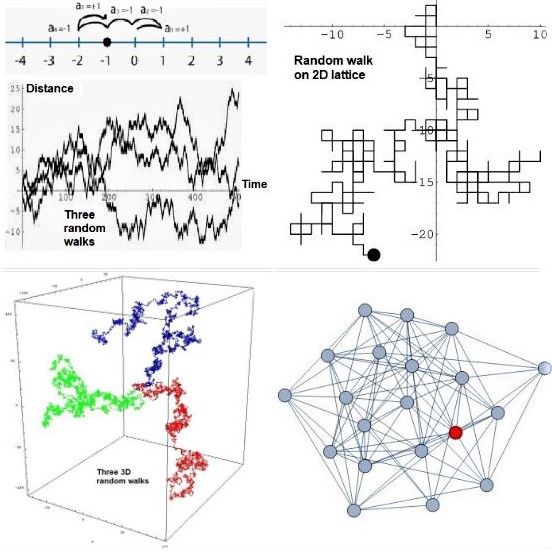
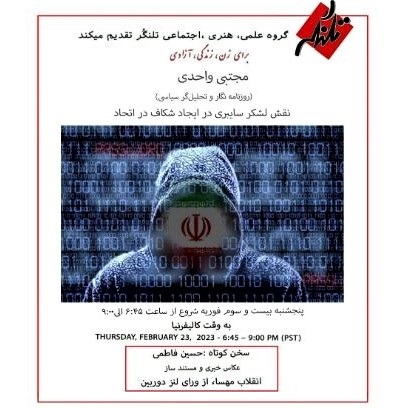
 (1) Images of the day: [Top left & center] The Persian day of women, Earth, & love (see the next item below). [Top right] The war in Ukraine is one year old today (see item 3 below). [Bottom left] Random walks (see the next to the last item below). [Bottom center] Talangor Group talk about Iran's Mahsa Revolution (see the last item below). [Bottom right] The seven deadly sins of mathematics, involving zero and infinity.
(1) Images of the day: [Top left & center] The Persian day of women, Earth, & love (see the next item below). [Top right] The war in Ukraine is one year old today (see item 3 below). [Bottom left] Random walks (see the next to the last item below). [Bottom center] Talangor Group talk about Iran's Mahsa Revolution (see the last item below). [Bottom right] The seven deadly sins of mathematics, involving zero and infinity.
(2) Happy Sepandarmazgan, the ancient Iranian day of women with Zoroastrian roots, dating back to the Achaemenid Empire: Sepanta Armaiti (Avestan for 'Holy Devotion', Spandarmad in Middle Persian), after whom the day is named, was Earth's guardian angel. She showed kindness to the mountains, to the birds, and to the people. She hated war among men, gave the herds green fields to graze, dug paths for rivers, and took care of the Earth and its inhabitants. In short, Sepandarmazgan is the day of women, Earth, and love.
This Sepandarmazgan weekend, my three children will be at home and the extended family will get together to welcome my middle sister's grandson.
(3) February 24 is the first anniversary of Russia's 2022 invasion of Ukraine: The West expected Russia to overtake Ukraine in short order, because of the large sums it spends on its military. It turns out that due to corruption, much of Russia's "military spending" goes to buying villas and yachts in Europe. The military is poorly equipped and inadequately trained, as evidenced by its large human and war-machinery losses. Sending love to the brave people of Ukraine and to the oppressed people of Russia!
(4) On random walks: Imagine a drunk on a narrow sidewalk (1D space) near a lamp-post. Every second, he takes a random rightward or leftward step. Intuitively, he won't go very far after 15 minutes (900 time-steps). He will likely remain close to the lamp-post, although he can also be 100 or 500 steps away from it, albeit with a diminishingly small probability. I have been fascinated with random walks, ever since I learned about them in a probability theory course.
The example above is 1D random walk. We can also have random walks in 2D, 3D, ... , nD space. Additionally, we can have random walks on graphs, defined in the natural way.
Much work has been done on random walks. MathSciNet shows ~7500 papers with "random walk" in the title. Surprisingly, there are still fairly simple problems in this domain that remain unexplored, as indicated by Prof. David Aldous (UC Berkeley), who gave an introductory talk at UCSB this afternoon.
(5) Talangor Group talk: "The Role of Iran's Cyber-Army in Creating Discord Among Opposition Groups" was discussed by Mojtaba Vahedi (journalist & political analyst) on Thursday, Feb. 23, 2023. Vahedi was an ardent supporter of Iran's Islamic Revolution, but later became disillusioned with the Islamic regime, becoming its active critic, most recently as a supporter of Reza Pahlavi. There were ~105 attendees.
The program began with "The Mahsa Revolution, as Seen Through the Camera's Lens," a short presentation by Hossein Fatemi (news photographer & documentary-maker). He pointed out that Iranian photographers' lives are in serious danger. Unlike other countries, where journalists wear special outfits that make them immune, in Iran, they are even more targeted than others on the street. He introduced the Middle East Images Foundation, a US-registered charity that works to present Middle Eastern photography by accomplished local artists. You can donate money to this worthy organization by visiting MEIF's Web site.
Iran is one of the top offenders with regard to cyberattacks against other countries and opposition groups. Iran's cyber-army has a broad presence on social media, spreading lies and sounding sour notes. Of course, not everyone who sows the seeds of discord is a member of Iran's cyber-army. Some engage in baseless criticism and character assassination out of ignorance, unaware that they are helping Iran's Islamic regime and spreading its narratives. We should distinguish between criticism, which is necessary, and malicious behavior, which is destructive.
In the ongoing Mahsa Revolution, Iran's cyber-army remains active, but it hasn't been as effective in its evil plans, even though its trolls try to sow discord by taking the side of one opposition figure or group and bad-mouthing others. Today's Iranian youth are quite alert and sophisticated, so they side-step the cyber-army's schemes. The new revolutionaries realize the difference between regime collapse, which may lead to chaos, and regime change, brought about by deliberate plans. The current Islamic regime voluntarily agreeing to major structural changes or a referendum is quite unlikely.
It is quite unfortunate that some of the most-capable citizens residing in Iran are in prison, making it necessary for those abroad to assume a greater role in bringing about regime change. We have no shortage of leaders for post-Islamic Iran. Tehran's Evin Prison alone holds several capable cabinets. Unity is the key. Despite significant differences, Reza Pahlavi and Mir-Hossein Moussavi agree on broad principles of Iran's future form of government (secular democracy), but they haven't yet begun a direct dialogue. At this point, everyone is waiting for a unifying charter to be issued by opposition forces, before taking further steps.
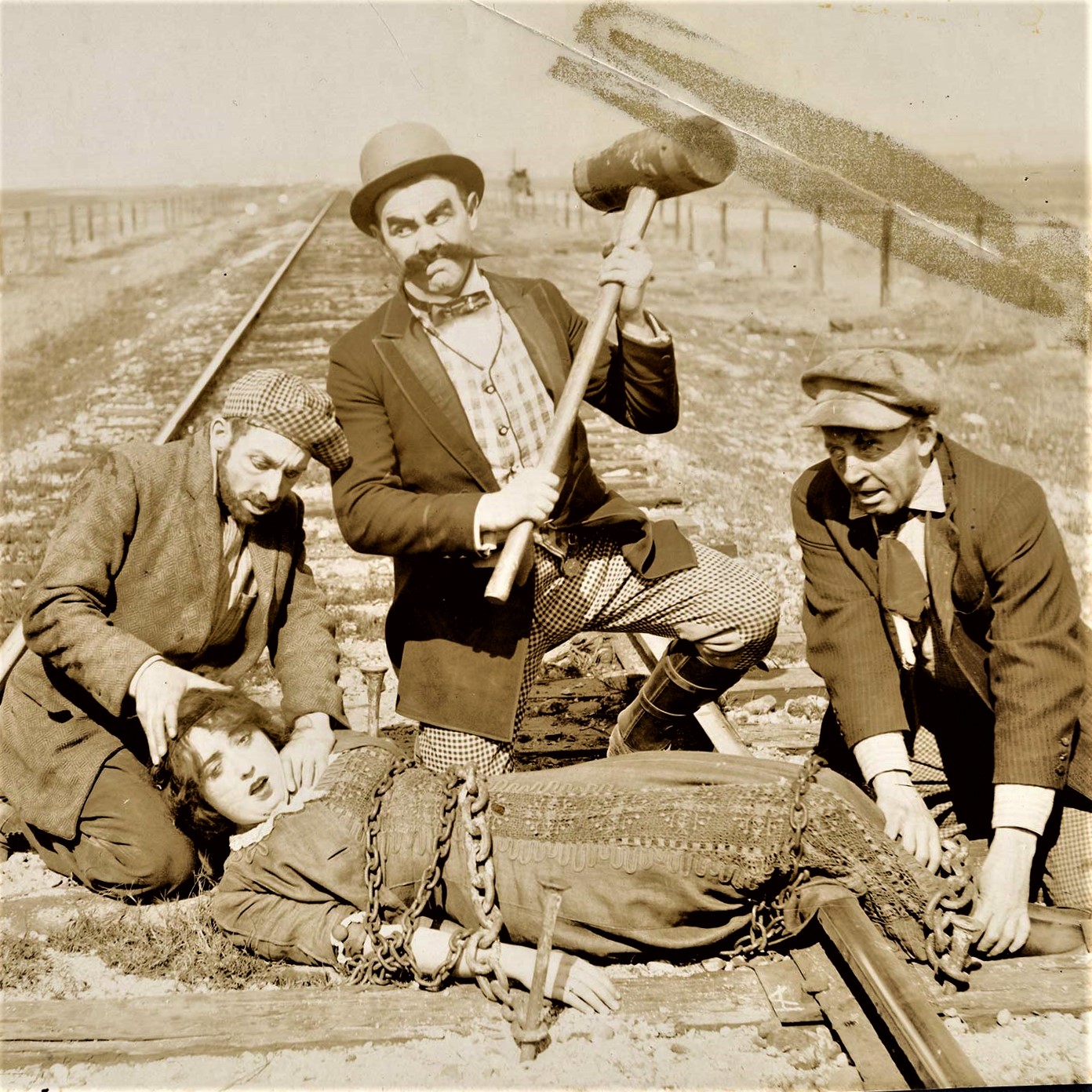
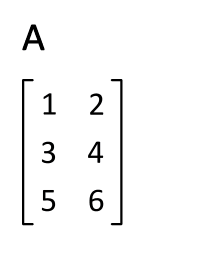
 (1) Images of the day: [Left] Throwback Thursday: A scene from "Race for Life 2," a 1913 British short film. [Center] Arthur Cayley introduced the notion of matrix transposition in 1858. [Right] Wednesday's UCSB World Music Series noon concert was moved indoors due to the super-cold weather: The Salt Martians (bluegrass band) performed quite a few tunes, from Bill Monroe to the Byrds (Video 1; Video 2; Video 3; Video 4).
(1) Images of the day: [Left] Throwback Thursday: A scene from "Race for Life 2," a 1913 British short film. [Center] Arthur Cayley introduced the notion of matrix transposition in 1858. [Right] Wednesday's UCSB World Music Series noon concert was moved indoors due to the super-cold weather: The Salt Martians (bluegrass band) performed quite a few tunes, from Bill Monroe to the Byrds (Video 1; Video 2; Video 3; Video 4).
(2) Iranian officials are in denial regarding the annihilation of the country's currency: Ever since one US dollar sold for 1680 tomans about a decade ago, until today's 30-fold rate of 50,000 tomans, they continue to insist that the rate is an unrealistic bubble created by our "enemies."
(3) Yesterday, I heeded the advice of a Panda Express fortune cookie: "Go for a long walk to clear your mind." I really needed the long walk, having worked on and just finished my 2022 taxes!
(4) One-liners: Brief news headlines, happenings, memes, and other items of general interest.
- Start of a wave? Germany expels two Islamic Republic diplomats to protest an execution in Iran.
- US annualized inflation rate since the start of the COVID pandemic. [Tweet, with chart]
- Harvey Weinstein sentenced to 16 years for sex crimes in Los Angeles County. [#MeToo]
- California will see snow blizzards from the coming storm, even in SoCal.
- While Iranian women are rejecting the compulsory hijab law, Swiss Ambassador to Iran does not complain.
- Simone Weil: "A hurtful act is the transference to others of the degradation which we bear in ourselves."
- Facebook memory from Feb. 22, 2019: Do we write differently on a screen than on paper?
- Facebook memory from Feb. 23, 2015: On Beverly Sills wanting to put her voice to bed with quiet & dignity.
(5) Accusations of scientific misconduct against Stanford U. President: Marc Tessier-Lavigne denies that a 2009 Nature paper on which he was lead author contained falsified data. The fact that he kept the results of an internal investigation of the matter from becoming public indicates otherwise. The paper was published when he was an executive at Genentech, a biotechnology company.
(6) Retractions are necessary for science to work: Encouragements, positive reviews, and awards do wonders for scientific advances, but so do retractions, which occur for both malicious scientific misconduct and honest mistakes. In this essay, Dr. Jaivime Evaristo writes about the hard lessons he learned from his retracted Nature paper due to errors in the data sets he used and the possibility of recovering from the blow to one's academic reputation caused by a retraction.
(7) Parents of one of the 149 victims of the 2015 Paris terrorist attacks are suing tech companies: At issue is Google's algorithmic recommendations to YouTube users, and similar actions by other tech companies, which include pushing violent & radicalizing ISIS videos. The "Section 230" case is now at the US Supreme Court.
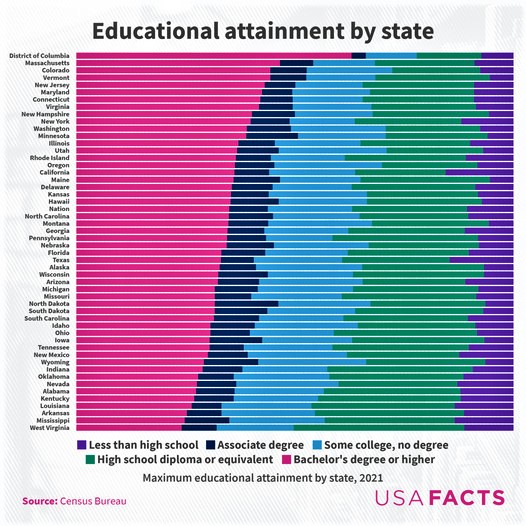
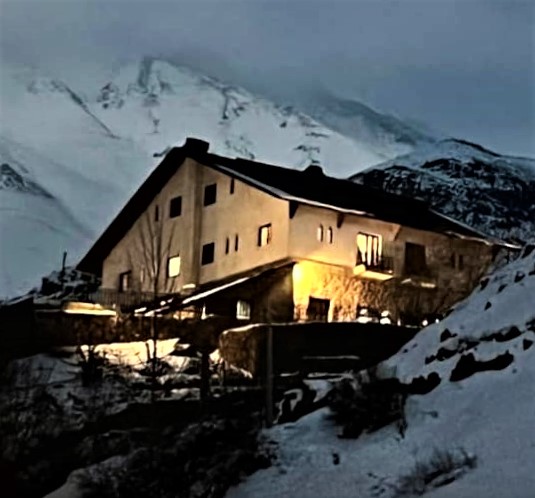
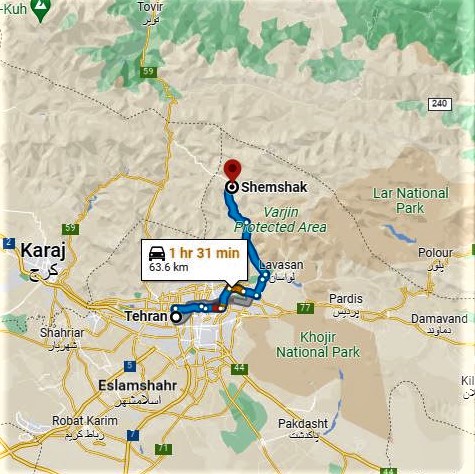 (1) Images of the day: [Left] Most- & least-educated states in the US: DC tops the list; WV is at the bottom. [Center & Right] The historic Shemshak Boutique Hotel in Iran (see the last item below).
(1) Images of the day: [Left] Most- & least-educated states in the US: DC tops the list; WV is at the bottom. [Center & Right] The historic Shemshak Boutique Hotel in Iran (see the last item below).
(2) Fox News has been caught lying and will likely pay over $1 billion to Dominion (voting-machines company) in damages & fines: Where's the federal government in all of this? If an advertiser claims false features or benefits for a product, the feds will go knocking. Why is lying in an even more-critical domain not pursued?
(3) SCOTUS is hearing a case with potentially significant effect on the trillion-dollar tech industry: So far, big-tech has been shielded from liability for harmful content by a law known as Section 230. That can change!
(4) One-liners: Brief news headlines, happenings, memes, and other items of general interest.
- Putin suspends participation in New START nuclear-arms control treaty: Let the nuclear-arms race resume!
- Harrowing scenes of buildings collapsing like houses of cards in Turkey's Feb. 6 quakes. [1-minute video]
- I just finished reading a book that is typeset in Trump Medieval: It's such a satisfying name for a font!
- Bridges and other structures or sites that test your fear of heights! [4-minute video]
- Dynamic art: Created with colored liquids and falling objects. [1-minute video]
- Quotable: "Listen, or your tongue will make you deaf." ~ Native American proverb
- Best-friendship, the expectation that a human needs one closest friend, is a surprisingly recent notion.
(5) Sha'ban Ja'fari: This is the title of a book in Persian by Homa Sarshar, about a widely-hated character, often referred to as "Shaban Bi-Mokh" ("Shaban the Brainless"), who played a key role in reinstating the late Shah to power in the CIA-directed coup of 1953. [Read on-line for free]
(6) How relevant is academic research to innovations in computer architecture? Analysis of citations in patent applications to papers in top computer architecture venues (ISCA, MICRO, HPCA, ASPLOS) shows that the impact is insignificant. Fewer than 2% of computer architecture patents cite papers presented in these top architecture conferences, which were used in the study as proxies for academic research.
(7) The historic Shemshak Boutique Hotel: Shemshak is a popular Iranian ski resort located about 25 miles north of Tehran. Despite the fairly short straight-line distance from Tajrish (north Tehran), the driving distance is somewhat longer. When I lived in Iran (until the mid-1980s), we traveled to Shemshak by first driving to the city of Karaj, then taking the Chaloos Road, which connected Karaj to the Caspian shore, by way of the Karaj Dam reservoir, a popular resort area in itself. Now, there is a shorter route (see map). Shemshak Boutique Hotel, the first of its kind in Iran, was built by Germans as a dormitory mansion and power-generation station for German workers operating the local coal mines. With changes in technology, the coal mines and thus the mansion & its power plant were soon shut down, until the Germans returned in the 1960s and built a 3-story hotel on top of it. The hotel was closed after the Islamic Revolution. In the late 2010s, a private company restored the hotel to its current state, using the original material, furniture, and decorations. [Tourism ad]





 (1) Images of the day: [Top left] Happy US Presidents' Day: Yes, we have had a few presidents of whom we are not proud, but, by and large, they are embodiments of the following quote from our 6th president, John Quincy Adams: "If your actions inspire others to dream more, learn more, do more, and become more, you are a leader." [Top center] Meme of the day: Sometimes, the best thing you can do is to keep your mouth shut. [Top right] Iranians protesting against the brutal Islamic regime on February 20, 2023, in Dusseldorf display a statue showing a mullah entrapped in a woman's hair. [Bottom left] Before and after the heavy January 2023 rains (see the next item below). [Bottom center] Asian countries are aging rapidly: Around 40-45% of the populations of Japan, China, and South Korea will be 65 or older by the year 2100, vs. ~30% for the US and ~25% for the world as a whole. [Bottom right] The Great Wall of India: The world's 2nd-longest continuous wall, with a length of 38 km and width of 15 m, surrounds the fort of Kumbhalgarh containing 360 temples.
(1) Images of the day: [Top left] Happy US Presidents' Day: Yes, we have had a few presidents of whom we are not proud, but, by and large, they are embodiments of the following quote from our 6th president, John Quincy Adams: "If your actions inspire others to dream more, learn more, do more, and become more, you are a leader." [Top center] Meme of the day: Sometimes, the best thing you can do is to keep your mouth shut. [Top right] Iranians protesting against the brutal Islamic regime on February 20, 2023, in Dusseldorf display a statue showing a mullah entrapped in a woman's hair. [Bottom left] Before and after the heavy January 2023 rains (see the next item below). [Bottom center] Asian countries are aging rapidly: Around 40-45% of the populations of Japan, China, and South Korea will be 65 or older by the year 2100, vs. ~30% for the US and ~25% for the world as a whole. [Bottom right] The Great Wall of India: The world's 2nd-longest continuous wall, with a length of 38 km and width of 15 m, surrounds the fort of Kumbhalgarh containing 360 temples.
(2) During and after the drought: A couple of years ago, I posted before-and-after photos showing the impact of an extended drought on California's water reservoirs. This post goes in reverse, showing that Lake Orville is now at 115% of its historical level, compared with 61% in February 2021 and 77% in 2022. You can move the bar in the middle of the side-by-side photos to compare.
(3) Please consider asking your representative to support the MAHSA Act: Introduced by Rep. Jim Banks with 33 co-sponsors, H.R.9203 "requires the President to impose property- and visa-blocking sanctions on certain persons (individuals and entities) affiliated with Iran." [Read more] [One-click sending of a letter]
(4) One-liners: Brief news headlines, happenings, memes, and other items of general interest.
- On the occasion of US President's Day, here are Dan Szymborski's AI-generated cartoon US presidents.
- US investigation confirms that Russia committed numerous war crimes in Ukraine.
- Magnitude-6.3 hits Turkey, scaring the survivors of stronger quakes of February 6, which killed 46,000.
- Iran International closes its London offices due to escalation of terror threats from Iran's operatives.
- Iranian currency sinks to record low: One US dollar now sells for 50,000 tomans on the open market.
- Facebook memory from Feb. 20, 2018: Female graduates of Iran's Sharif U. Tech. rule.
- Facebook memory from Feb. 20, 2015: When a mullah argued against and a woman for mandatory hijab!
(5) The Syrian government is impeding assistance to quake victims: Bashar Assad's regime insists that all aid go to Damascus, and not directly to victims via the Turkish border, but the victims, who are mostly anti-Assad, have not received much assistance from Damascus thus far.
(6) The wrong-way driver who thought everyone else is driving the wrong way: Iran's government-run daily Kayhan claims that by not inviting Iran to the Munich Security Conference, Europe has isolated itself!
(7) Mr. Haloo flees to Europe: Iranian poet/activist Mohammad Reza Ali-Payam (aka Mr. Haloo) talks about fleeing Iran because of a 16-year prison sentence, which was confirmed on appeal. Before going to London, he covertly lived in Turkey for more than a year, changing his residence and cell phone many times in order to elude Iranian agents, who were looking for him and had offered rewards for information about his whereabouts.
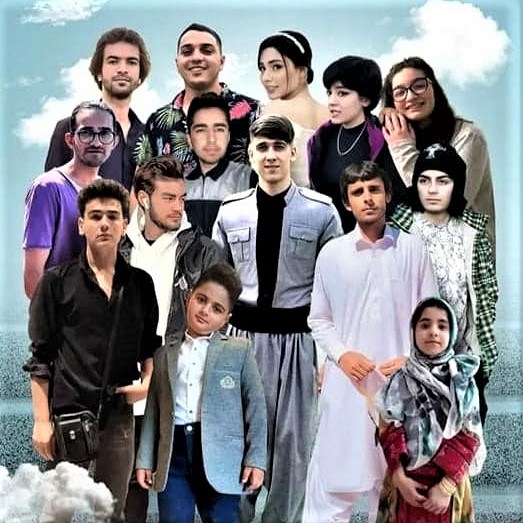



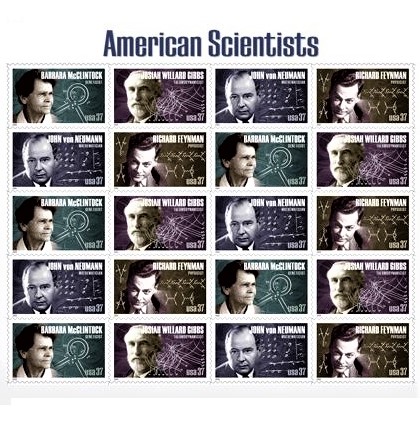
 (1) Images of the day: [Top left] A few of the hundreds of Iranians murdered by Iran's brutal Islamic regime during the recent uprising: Live but don't forget. [Top center & right] Misogyny, the royal and Islamist forms: The late Shah divorced his second wife, Soraya, for not giving birth to a child; his first wife, Fawzia, had given birth to a girl, Shahnaz. The Shah reportedly loved Soraya, who fell out of favor when she suggested that he abdicate in favor of his half-brother. The Shah countered with the suggestion of taking a second wife, which Soraya rejected. His third wife, Farah, always boasted that her first-born was a boy. And the Islamist form? We see numerous examples every day! [Bottom left] Postage stamps from various countries honoring women scientists. [Bottom center] We once honored scientists, instead of demonizing and threatening to kill them! (See also item 2 below) [Bottom right] Get ready for the new US reality show "Parliament Fights": Many Third-World countries and the United Kingdom have them on a regular basis, often taking the form of fistfights, throwing chairs or other objects, and, occasionally, gunfights. Judging from how things are going in the US Congress, we should get ready for our version of parliament fights, shown on A&E! (Image credit: Bill Mahr)
(1) Images of the day: [Top left] A few of the hundreds of Iranians murdered by Iran's brutal Islamic regime during the recent uprising: Live but don't forget. [Top center & right] Misogyny, the royal and Islamist forms: The late Shah divorced his second wife, Soraya, for not giving birth to a child; his first wife, Fawzia, had given birth to a girl, Shahnaz. The Shah reportedly loved Soraya, who fell out of favor when she suggested that he abdicate in favor of his half-brother. The Shah countered with the suggestion of taking a second wife, which Soraya rejected. His third wife, Farah, always boasted that her first-born was a boy. And the Islamist form? We see numerous examples every day! [Bottom left] Postage stamps from various countries honoring women scientists. [Bottom center] We once honored scientists, instead of demonizing and threatening to kill them! (See also item 2 below) [Bottom right] Get ready for the new US reality show "Parliament Fights": Many Third-World countries and the United Kingdom have them on a regular basis, often taking the form of fistfights, throwing chairs or other objects, and, occasionally, gunfights. Judging from how things are going in the US Congress, we should get ready for our version of parliament fights, shown on A&E! (Image credit: Bill Mahr)
(2) Explainer extraordinaire Richard Feynman: He was a Nobel-Prize-winning physicist known for his extreme curiosity, ability to explain difficult topics in simple terms, and a broad range of interests in science & art.
(3) The battle of Constitutional rights: The Proud Boys are asking that Trump be subpoenaed to appear as a witness in their Jan. 6 trial. They have a Constitutional right to do so, according to the 6th Amendment. Trump, on the other hand, has a constitutional right to plead the 5th Amendment and not testify. Let the match begin!
(4) Celebration of Int'l Women's Day & #WomanLifeFreedom Revolution: A Zoom program by Voices of Women for Change, on Sat., Mar. 11, 2023, 11:00 AM PST. Sociologist/author Chahla Chafiq will speak & protest-singer GOLA will provide musical entertainment. Four other women, Ladan Boroumand, Roya Boroumand, Mahnaz Matine, and Farzaneh Milani will be honored for their activism on behalf of women's rights. [Register]
(5) Fox Network's public and private faces: E-mails and text messages disclosed in the Dominion (voting-machines company) $1.6 billion defamation lawsuit against Fox News reveal that its management and top anchors all knew that Trump's voting-fraud claim was a lie and said so in private, yet on their programs, they vociferously promoted the lies and invited guests who would repeat the lie, because they feared that telling the truth would lead to loss of viewers and revenues. One anchor even asked that an employee who fact-checked Trump's claims be fired immediately!
(6) Amnesia in politics: GOP presidential candidate Nikki Haley has completely removed from her speeches the stories she used to tell about the discrimination & racism she faced as a little girl, because these stories would not endear her to "the base." She says it is because she hates identity politics, but she is quick to point out that she is a woman and daughter of an immigrant whenever these identities are to her benefit.
(6) Final thought for the day: Golshifteh Farahani's speech at the Berlin Film Festival contains an indirect jab at the insulting comments by Islamist Abdolkarim Soroush (she quotes from Mowlavi/Rumi).
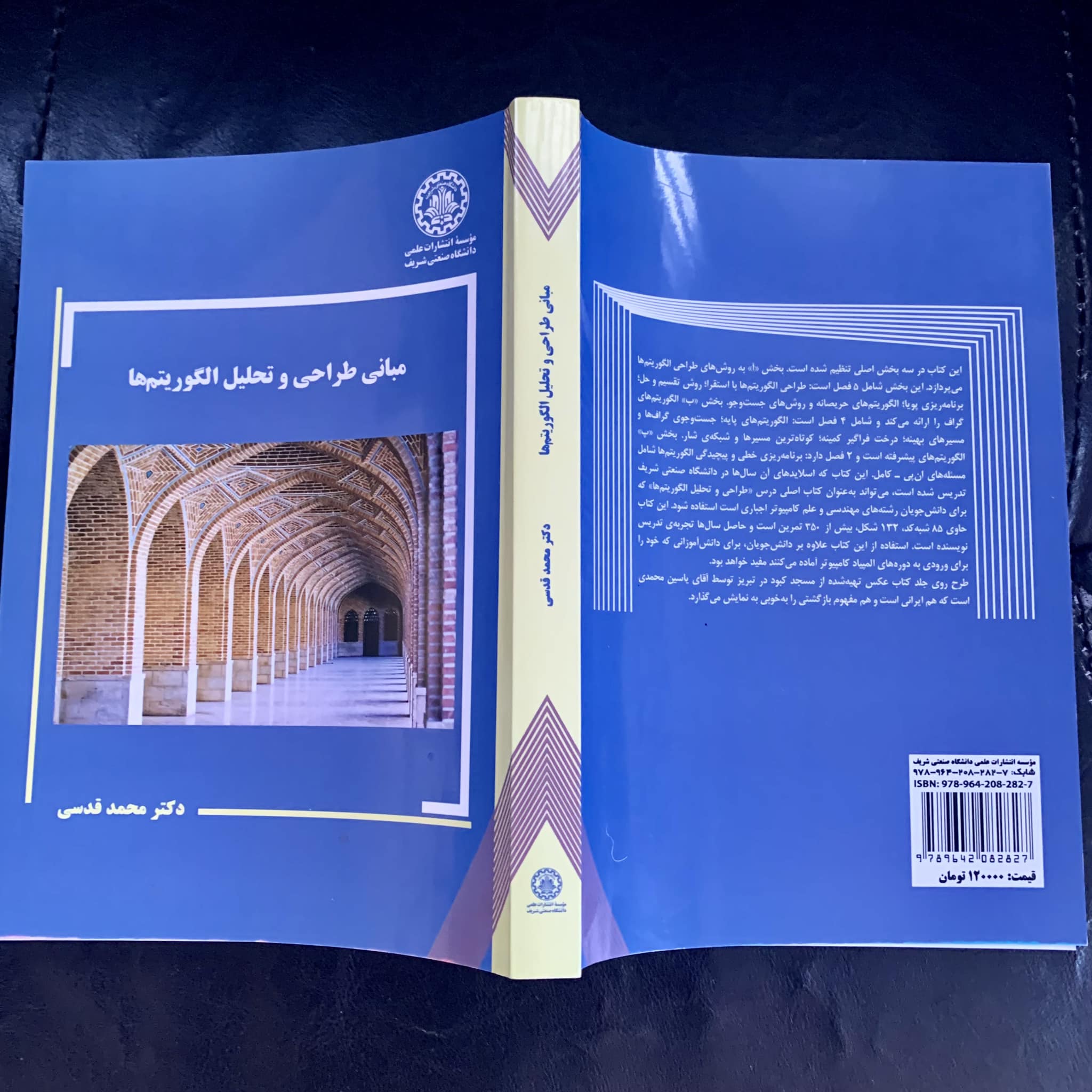

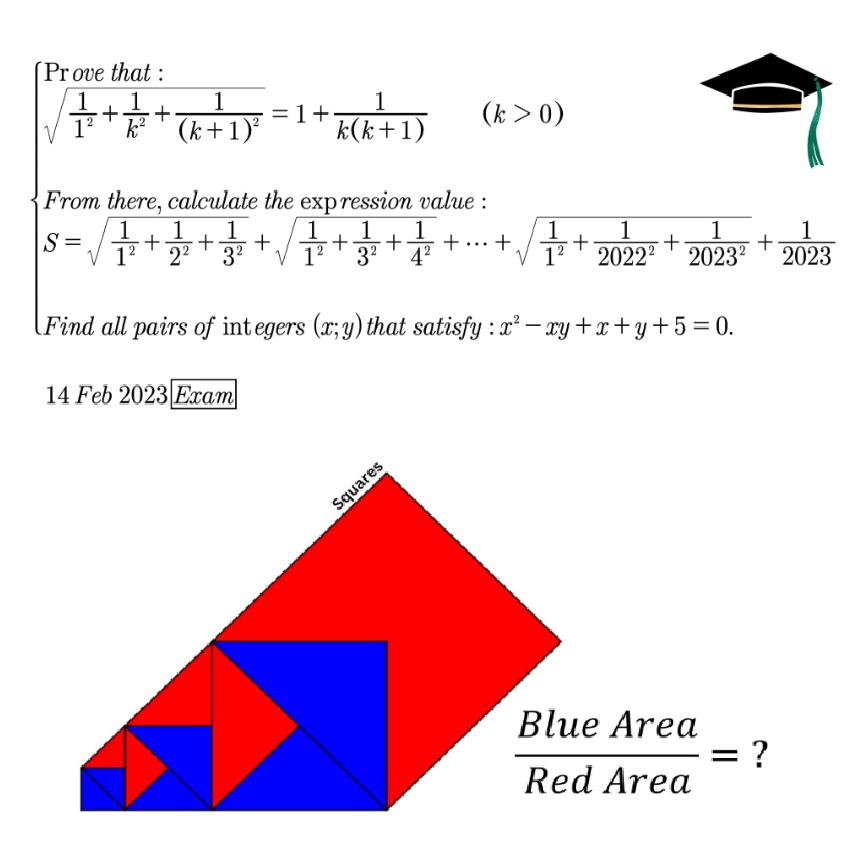 (1) Images of the day: [Left] A new book by my former Sharif University of Technology (Iran) colleague, Dr. Mohammad Ghodsi: He kindly sent me a copy of the new 343-page textbook, Foundations of Design and Analysis of Algorithms (ISBN: 978-964-208-282-7), published in 2022. [Center] Every two years, the Grand Palace Square in Brussels is covered with flowers, arranged into a carpet design. [Right] Math puzzles: Try these four problems, the last one of which asks you to determine the ratio of the blue area to the red area.
(1) Images of the day: [Left] A new book by my former Sharif University of Technology (Iran) colleague, Dr. Mohammad Ghodsi: He kindly sent me a copy of the new 343-page textbook, Foundations of Design and Analysis of Algorithms (ISBN: 978-964-208-282-7), published in 2022. [Center] Every two years, the Grand Palace Square in Brussels is covered with flowers, arranged into a carpet design. [Right] Math puzzles: Try these four problems, the last one of which asks you to determine the ratio of the blue area to the red area.
(2) Women's rights: Iranian woman engineer protests being disqualified from becoming an officer of a professional organization because of not wearing a headscarf. Only one man on stage applauds her protest, but the audience is more supportive. [Tweet, with video]
(3) Ali Ghamsari plays the tar in a refreshingly new way, with skill & passion: His YouTube channel is filled with musical gems. In this 102-minute Sound of Peace Concert, Ghamsari plays with a group of incredible musicians in Arbil, Iraq. I particularly liked his rendition of a Kurdish song beginning at the 1:08:10 mark.
(4) One-liners: Brief news headlines, happenings, memes, and other items of general interest.
- Death toll in Turkey's twin quakes and their aftershocks has surpassed 43,000 and may continue to rise.
- Black man, wrongfully convicted of murder, is released from prison after 28 years.
- Will AI have a bigger impact on warfare than nuclear weapons? Former Google CEO thinks so.
- Increasingly, college applicants are being denied admission for their social-media posts.
(5) UCSB ECE Department Distinguished Lecture: Dr. John Martinis (UCSB Physics Department) spoke this afternoon under the title "My Trek from Fundamental to Industrial Research: Quantum Systems Engineering." The theme of his talk was that when one transitions from academia to industry, one's mindset much change dramatically. He learned much in this area when he worked at Google during 2014-2020 to build a useful quantum computer. He recommended two books as good references to use for understanding the system engineering mindset in contrast to the academic research mindset:
- Peter Theil's Zero to One (see my review on GoodReads)
- Charles Wasson's System Engineering Analysis, Design, and Development
Martinis discussed the academia-to-industry transition problem in general and for the specific area of quantum computing, which he considers to have entered the systems era. Theoretical discoveries are still being made and papers continue to be published in quantum computing, but the main challenge is converting the ideas to actual working systems, which would require us to consider the entire system stack and the interactions between its layers. One key challenge is building practical quantum computers is overcoming the reliability problems for qubits, without an excessive level of redundancy. Another key consideration for researchers is to overcome the temptation to tweak things to make minor improvements after the start of the development process. In other words, as engineers, we have to learn to live with the good-enough in order to make progress toward a system or product. [Tweet, with photo]
Here is a 77-minute video of a similar lecture, delivered last year at Cornell University.
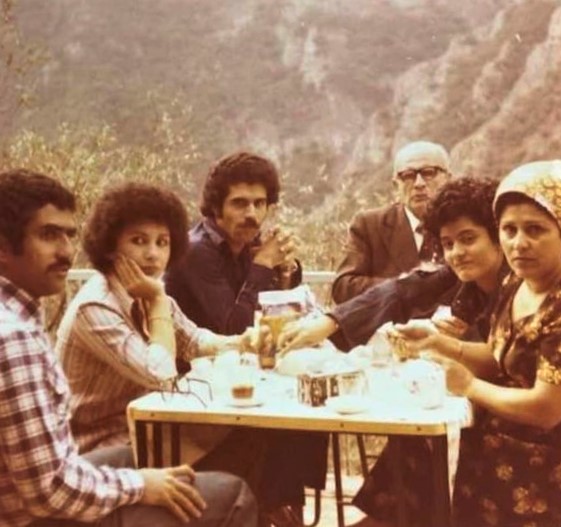
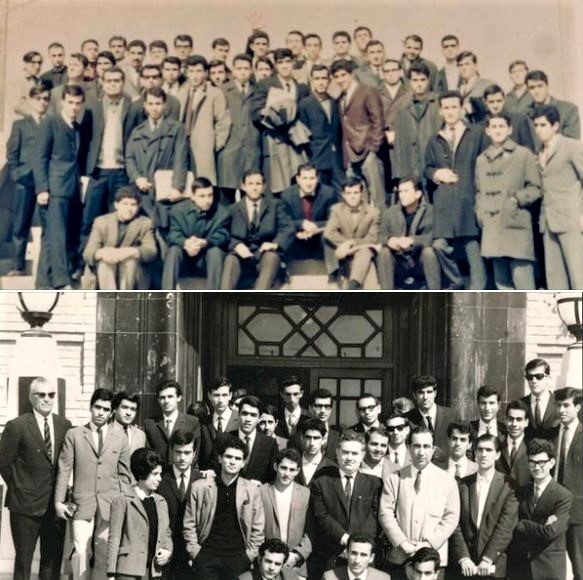
 x (1) Images of the day: [Left & Center] Throwback Thursday: Family photo from the 1970s, minus my oldest sister, plus cousin Eli, and a couple of group photos from mid-1967, showing many members of the class of 1968, College of Engineering's Electromechanical Division, University of Tehran. [Right] The 8-story Bugshan Palace in Yemen, covering 800 square meters of land, was built of mud in 1798 CE.
x (1) Images of the day: [Left & Center] Throwback Thursday: Family photo from the 1970s, minus my oldest sister, plus cousin Eli, and a couple of group photos from mid-1967, showing many members of the class of 1968, College of Engineering's Electromechanical Division, University of Tehran. [Right] The 8-story Bugshan Palace in Yemen, covering 800 square meters of land, was built of mud in 1798 CE.
(2) Electrochemical RAM (ECRAM): Drawing inspiration from batteries, ECRAM is quickly moving ahead of traditional transistor-based circuits in developing the perfect artificial synapse.
[Article]
(3) Math puzzle: A square pizza box can hold five round pies of diameter d, without the pies overlapping. What is the smallest possible size for the box?
(4) One-liners: Brief news headlines, happenings, memes, and other items of general interest.
- Math puzzle: Evaluate the expression (1 + i)^(1 + i).
- Robotic falcon acts as the scarecrow of the skies: It helps keep birds away from flight paths near airports.
- An Iranian member of the LGBTQ+ community, who has been sentenced to death, tells her story.
- Elon Musk's strange sense of humor! [Tweet, with image]
(5) The mullahs are scared: Apologists for Iran's Islamic regime, including Abdolkarim Soroush who was responsible for the 3-year closure of Iranian universities under the banner of "Cultural Revolution," are running scared from the emerging cooperation among opposition groups, fiercely attacking the recent show of unity at Georgetown University, while at the same time dismissing it as an insignificant event. [25-minute video]
(6) Old-time Iranian actor Behrouz Vossoughi tells the story of being interrogated by Parviz Sabeti: Sabeti, a high-ranking official in the late Shah's secret police (SAVAK), has recently emerged from 40+ years of hiding and was photographed attending an anti-Islamic-regime rally in the United States.
(7) The Transparent Society: This is the title of a 1998 book by David Brin, who argues that despite the risks of surveillance technologies, the very existence of such technologies is in itself a safeguard against abuse, because everyone has the ability to keep an eye on individual and institutional behavior. Digital-rights activists are thus enabled to watch those who are watching us. Of course, there is, and there will always be, a trade-off between security and privacy, and we need laws & oversight mechanisms to create the appropriate balance between the two concerns. [38-minute video]
(8) Nikki Haley is running for US presidency: As a feminist and immigrant, I am conflicted about her effort. I know misogynists & xenophobes, including the former Misogynist-in-Chief & Xenophobe-in-Chief, will launch vicious attacks against her, which is regrettable. But I also see plenty of legit criticisms of this opportunist and flip-flopper. She has been an ardent supporter of Trump, but has also said that Trump is everything we teach our kindergarteners not to be. She appeased Trump by saying she won't run if he does. Yet, here we are, with her as the first person to challenge Trump. Ironically, Haley's candidacy is good for Democrats. She will help expose GOP's misogyny and xenophobia, while exposing herself for the fraud that she is.
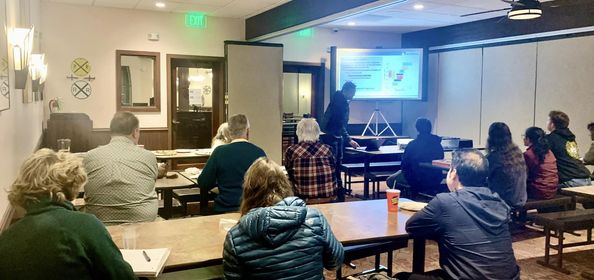
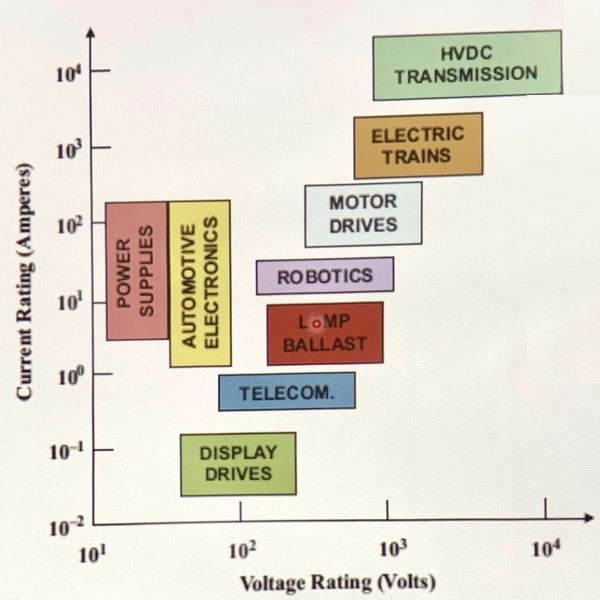 (1) Tonight's IEEE Central Coast Section tech talk: Dr. Sriram Krishnamoorthy (UCSB, Materials) spoke on "Gallium Oxide: Emerging Semiconductor Material for Power Electronics." There were 17 attendees.
(1) Tonight's IEEE Central Coast Section tech talk: Dr. Sriram Krishnamoorthy (UCSB, Materials) spoke on "Gallium Oxide: Emerging Semiconductor Material for Power Electronics." There were 17 attendees.
Beta-Gallium Oxide is an emerging ultra-wide band gap semiconductor with a predicted critical breakdown field much higher than the commercial wide band gap semiconductors such as Gallium Nitride and Silicon Carbide. The key attractive feature is the availability of single crystal large area bulk substrates. Dr. Krishnamoorthy's talk began with the motivation for pursuing research on ultra-wide band gap semiconductors for applications in power electronics. Key results in epitaxial growth and device performance were highlighted. The main theme of the talk was to highlight and discuss the interrelationship between material properties, material processing, and device performance. The future outlook for Gallium Oxide in achieving its theoretical potential, as well as the key challenges & limitations, were also discussed.
[Speaker's Web site]
(2) Today is the 34th anniversary of Ayatollah Khomeini's death sentence for author Salman Rushdie: Iran's current Supreme Leader, Ayatollah Khamenei, later indicated that the fatwa was just and must be carried out.
(3) Syrian village submerged after collapse of quake-damaged dam: In the Turkey-Syria border region where two earthquakes hit recently, there are dozens of dams, including Turkey's largest, the Ataturk Dam, which is reportedly cracked. Further devastation from broken dams is a real possibility.
(4) One-liners: Brief news headlines, happenings, memes, and other items of general interest.
- Worrisome details emerge from the derailment of a train carrying highly-toxic cargo in East Palestine, Ohio.
- Is Iran's Supreme Leader, Ayatollah Khamenei, sending money abroad in preparation for fleeing Iran?
- President Raisi receives honorary professorship from Beijing U. for safeguarding China's interests in Iran.
- Persian music: An all-women ensemble performs one of Shajarian's songs to honor his memory.
- Facebook memory from Feb. 15, 2020: Long ago, there was a noble word, liberal.
- Facebook memory from Feb. 15, 2012: Before talking, connect tongue to brain (from life's users' manual).
(5) Reza Khandan, Iranian civic-rights activist and husband of Nasrin Sotoudeh (whose book, Prison Letters, I recently reviewed), has been summoned to begin serving a 6-year prison term, handed down 3 years ago.
(6) To those who are trying to whitewash the past actions of hardline-Islamist Abdolkarim Soroush: Please note his misogynistic comments about Golshifteh Farahani, one of the eight participants in Georgetown U.'s panel discussion on a democratic Iran. He once did irreparable damage to Iranian universities under the banner of Islamicizing their curricula. Don't let him betray the #WomanLifeFreedom movement by insulting women!
(7) Dozens of school girls in Qom, a city in Iran, have been hospitalized due to poisoning: Signs of Taliban-like discouragement of girls from attending school? Iranian officials are saying that the problem is overblown.
(8) Iran's officials are liars or delusional: One had said that women are better off in Iran than in Western countries. This one says Iran will attract many international students over the next few years, becoming a prime destination for higher education. Yes, particularly for women students!
(9) Jazz under blue skies at UCSB's Music Bowl:The Webb Tarafella Nathan Jazz Trio, composed of tenor saxophonist Doug Webb, bassist Santino Tarafella, and UCSB Jazz Ensembles director Jon Nathan playing drumset, performed a number of jazz standards at noon today. [3-minute video]


 (1) Images of the day: [Left] Happy Valentine's Day: I hope that your day, week, month, year, and life are filled with love! [Center] Park Central 9 is a high-rise residential complex in Chengdu, the capital city of China's Sichuan Province. [Right] New Yorker cartoon of the day: Little Free Library, Florida style!
(1) Images of the day: [Left] Happy Valentine's Day: I hope that your day, week, month, year, and life are filled with love! [Center] Park Central 9 is a high-rise residential complex in Chengdu, the capital city of China's Sichuan Province. [Right] New Yorker cartoon of the day: Little Free Library, Florida style!
(2) The artificial-intelligence arms race: In this 57-minute Times podcast, OpenAI CEO Sam Altman and Microsoft CTO Kevin Scott discuss AI plans by their companies and other competitors.
(3) Yet another mass-shooting: Three people are dead and several are injured, some critically, in a mass shooting at Michigan State University. The suspect got away, but he later took his own life.
(4) One-liners: Brief news headlines, happenings, memes, and other items of general interest.
- Nerdy Valentine's Day message for those in academia: I accept you with minor revisions.
- Valentine's Day Persian song for singles! [1-minute video]
- Dear chocolate lovers: Tomorrow is your day. Enjoy the discounts!
- Of the 100 most-watched TV programs in 2022, 82 were NFL games. NFL had 28 out of the top 30.
- The hottest new programming language is English, opines computer scientist Andrej Karpathy. [Tweet]
- Quotable: "All the knowledge I possess everyone else can acquire, but my heart is all my own." ~ Goethe
- Astrophysicist Neil DeGrasse Tyson explains the golden age of Islam, and why it ended. [8-minute video]
- Colombian teen fixes three Rubik's Cubes in 4.5 minutes while juggling them. [5-minute video]
- A sampling of Iranian mullahs' views on women: From Khomeini to his followers. [2-minute video]
- Architecture: Some of the most-impressive skyscrapers around the world.
- Thank you, Panda Express, for the kind and encouraging fortune-cookie message! [Photo]
- A beautiful song and its performance on SNL: Brandi Carlile sings "The Story." [5-minute video]
- Facebook memory from Feb. 14, 2019: My mom's Valentine's Day message to her grandkids.
- Facebook memory from Feb. 14, 2012: Clever ad of saloon/eatery, calling itself "Husband Day Care Center."
(5) Turkey is investigating construction companies tied to numerous collapsed buildings in the recent quakes: The government is probably trying to shift the blame from its officials, who approved the building permits and are thus directly responsible for the immense loss of life, to private contractors.
(6) Sculptor Paula B. Slater has created busts of Neda Agha Soltan and Mahsa Amini, who were killed by Iran's Islamic regime. She hopes to someday donate her work for display in a free Iran. [3-minute video]
(7) Robotic chef in a Croatian restaurant offers a selection of seventy 1-pot dishes: Fresh ingredients are loaded into storage bins by humans. The robotic chef then chooses the appropriate amount of each ingredient, adds oil & seasoning, and cooks the dish to perfection.
(8) Behind the scenes of the special effects for a war movie: This 3-minute video shows some of artful and ingenious ways the film "All Quiet on the Western Front" was shot for maximum impact. This is a new film shot in German, the novel's original language. Hollywood made an Oscar-winning English version of the film in 1930.
(9) There are speculations that the great tech layoffs are motivated by a reset in salaries and other perks: Tech companies not only over-hired in the wake of the "Great Resignation," but they also paid too much compared to the market rates, leading to bloated payrolls that they can no longer afford.


 (1) Images of the day: [Left] Super Bowl 57 is finally over: In an exciting game, Kansas City Chiefs prevailed over Philadelphia Eagles 38-35. [Center] Invasion of flying objects: US shoots down a fourth flying object in eight days, this one over Lake Huron. [Right] Nasrin Sotoudeh's Prison Letters (see the last item below).
(1) Images of the day: [Left] Super Bowl 57 is finally over: In an exciting game, Kansas City Chiefs prevailed over Philadelphia Eagles 38-35. [Center] Invasion of flying objects: US shoots down a fourth flying object in eight days, this one over Lake Huron. [Right] Nasrin Sotoudeh's Prison Letters (see the last item below).
(2) Football is still a unifying force in the US: Americans, of both major parties, love the NFL; 29 out of 30 most-watched tv programs of all time were Super Bowl games. The other one was the finale of "M*A*S*H," a comedy-drama TV series (1972-1983) about the Korean War.
(3) Quote of the day, on Fox's Super Bowl coverage: "It's so much more fun to watch Fox when it's someone else being blitzed & sacked!" ~ Hillary Clinton, 2014 tweet
(4) One-liners: Brief news headlines, happenings, memes, and other items of general interest.
- Humor: Super Bowl is played in Arizona this year, so don't be surprised if Arizonans don't accept the result.
- Let's not forget the plight of Afghan women amid bad news from many other regions of the world.
- The US lags behind scientifically: Astrophysicist Neil DeGrasse Tyson makes his case in this 10-minute talk.
- Facebook memory from Feb. 12, 2021: When to use "setup," "set up," and "set-up."
- Facebook memory from Feb. 12, 2021: Misogyny in Iran has deep roots. Women are beaten on the streets.
- Facebook memory from Feb. 12, 2016: Heart-shaped mini-pizzas for Valentine's Day.
(5) Book review: Sotoudeh, Nasrin, Prison Letters (in Persian), Aasoo Books, 2023.
[Available on-line for free, to read or download: Link]
[My 4-star review of this book on GoodReads]
Nasrin Sotoudeh is an attorney and human rights activist who was imprisoned twice in her home country of Iran for doing her job of defending clients: The first time, she was sentenced to 11 years in prison (reduced to 6 years on appeal), serving 3 years before being released; the second conviction led to a 38.5-year sentence (reduced to 27 years, with no appeal on the part of Sotoudeh, who is now on medical leave, having served 3.5 years of her long sentence). This book is based on letters she wrote from prison to family members and, occasionally, to government officials, human-rights supporters, and others. It also includes many letters written to her while she was in prison.
Iran's Islamic regime oppresses not only women but also religious minorities (even Sunni Muslims), ethnic minorities, gender-nonconforming individuals, musicians, communists, and any other group that does not fit in its extremely narrow world view. Sotoudeh's sins include defending clients from some of these groups. Writing the letters was Sotoudeh's way of avoiding indifference and being drained of love, for her children, her supportive husband, and humanity.
Some of the letters were written on napkins and smuggled out of the prison. Others were written on available pieces of paper and sent out through official channels, after inspection, occasionally being returned as unacceptable. The latter kind tend to be repetitive and dull, given restrictions on the topics that could be addressed. Sotoudeh writes that she has tried to reconstruct, to the extent that her memory permitted, a few letters that were lost during an inter-prison transfer.
In letters addressed to her children, Sotoudeh expresses appreciation for their understanding and writes of the fear that they would think she did something to deserve her imprisonment, which would make her an inconsiderate mother for separating herself from her children and affecting how their classmates viewed them. She indicates that her defense of abused children in court was motivated by her love for her own son & daughter and that she hopes all children would benefit from her efforts.
In letters addressed to her husband Reza Khandan, Sotoudeh expresses much love and affection, sentiments that are reciprocated in his letters. Some of the letters contain lists of items that she needs. Others discuss strategies for releasing information (timing, tone of communication). For example, there is some back-and-forth about how to accept an international honor and whether or not she should dedicate the award to a person or group she cared about. The possibility of Reza being arrested and their children having neither parent around to take care of them weighs heavily on the couple's decisions to keep silent, rather than speak up in some cases, although Khandan did get arrested, and he served time.
As I write this review, I am trying to imagine a mother's mindset, while she sits in a prison cell, trying to remain emotionally connected to her loved ones, occupied with what she can make for her child's upcoming birthday, and determined to avoid being consumed with hate for her tormenters.
I end my review with this short passage in a letter from Sotoudeh to her husband Reza, written on Friday, November 9, 2018: "I miss our family's Fridays together. We would wake up late and have fried eggs, tea, and bread & cheese for breakfast. Do you remember there were four kinds of cheese on the table and we each had a different kind? Do you still eat the 'Laughing Cow' cheese? How are your games? I miss you, your cheeses, and your games, a lot ..."
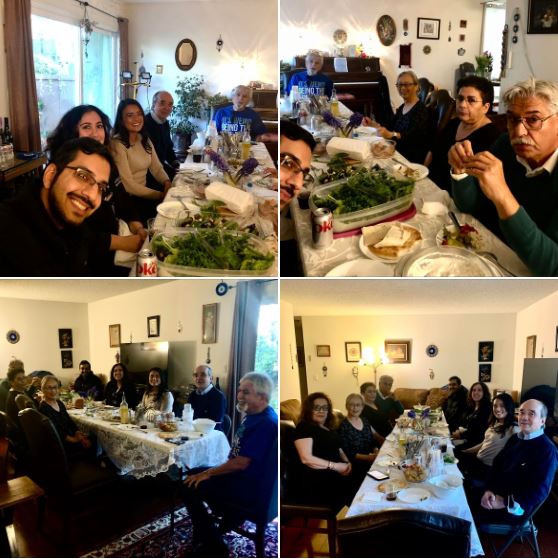




 (1) Images of the day: [Top left & center] Tonight's family gathering at my sister's, with a colleague's family. [Top right] Aftermath of the Turkey quakes (see the last item below). [Bottom left] The bridges of Wisdom, Hope, Love, Help, Faith, & Friendship in Venice, Italy. [Bottom center] Two systems of laws: You'll be harassed by Iran's morality police, enforcing hijab laws, only if you're an opposition member. But if you march with regime's supporters, they won't bother you. [Bottom right] World's longest train route, and a math joke!
(1) Images of the day: [Top left & center] Tonight's family gathering at my sister's, with a colleague's family. [Top right] Aftermath of the Turkey quakes (see the last item below). [Bottom left] The bridges of Wisdom, Hope, Love, Help, Faith, & Friendship in Venice, Italy. [Bottom center] Two systems of laws: You'll be harassed by Iran's morality police, enforcing hijab laws, only if you're an opposition member. But if you march with regime's supporters, they won't bother you. [Bottom right] World's longest train route, and a math joke!
(2) In honor of the Black History Month (February): Overlooked black inventors who shaped our lives.
- Norbert Rillieux [1806-1894]: Revolutionized sugar processing by using steam and thermodynamics.
- Sarah (Marshall) Boone [1832-1904]: Patented a new ironing board similar to the ones we use today.
- James West [1931- ]: Invented a miniaturized microphone that needed no battery for its operation.
(3) One-liners: Brief news headlines, happenings, memes, and other items of general interest.
- The downed Chinese balloon had equipment for spying, including collection of communication signals.
- ChatGPT scores C+ on University of Minnesota Law School exam: Get ready for Dr. ChatGPT!
- Composer Burt Bacharach dead at 94: Here's one of his hit songs, "Raindrops Keep Falling on My Head."
- Religion vs. Science: An informative & entertaining 20-minute talk by astrophysicist Neil deGrasse Tyson.
(4) Junk fees: President Biden devoted a section of his State-of-the-Union speech to sneaky fees charged by hotels, banks, airlines, ticket agencies, and others. Hotels that no one consider to be resorts charge resort fees on top of their advertised rates. Ticket agencies get you started with a concert ticket's list price, but by the time you check out, you have paid 50% more due to various add-on fees. Some airlines charge you extra to assign adjacent seats to you and your spouse. And don't get me started on banks and credit-card companies. Consumer protection is an important part of a government's job, and I am glad the Biden administration is paying attention to practices that can't be considered anything but fraud.
(5) Tens of thousands of people dead in Turkey's earthquakes is just the beginning of a sad story: Rebuilding the infrastructure so that the survivors can lead normal lives will take many years. Roads and bridges were damaged, but not in the large numbers we see for residential high-rises. The lopsided damage points to construction defects and lack, or circumvention, of building codes. NYT reports that 100 people have been arrested in the wake of the earthquakes for shoddy construction. Perhaps safer buildings will be erected during the reconstruction, but this means even higher costs and longer delays.
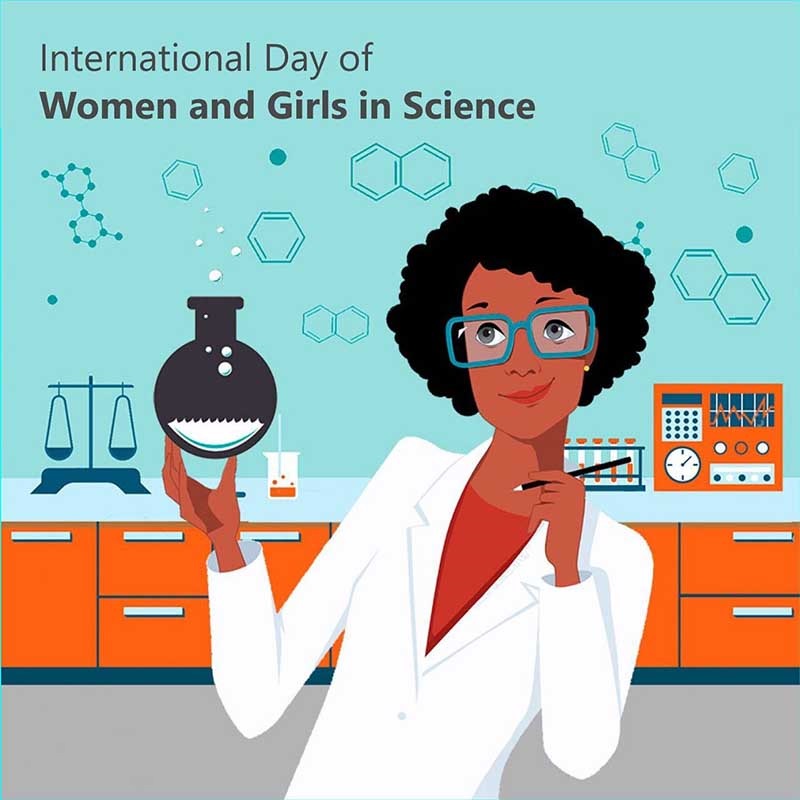
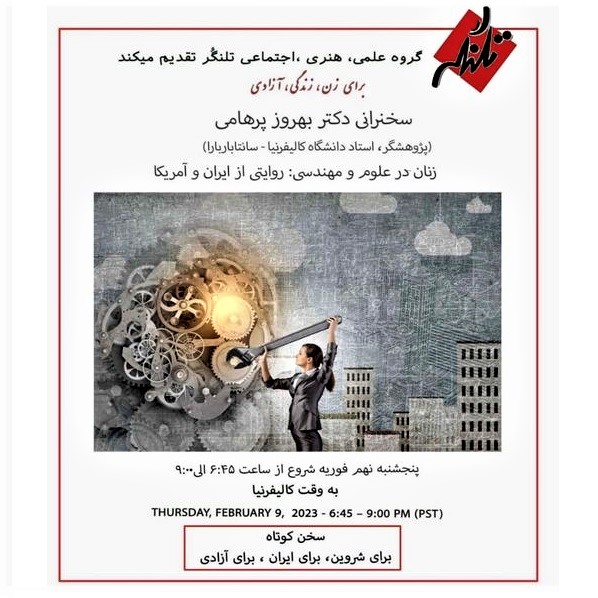

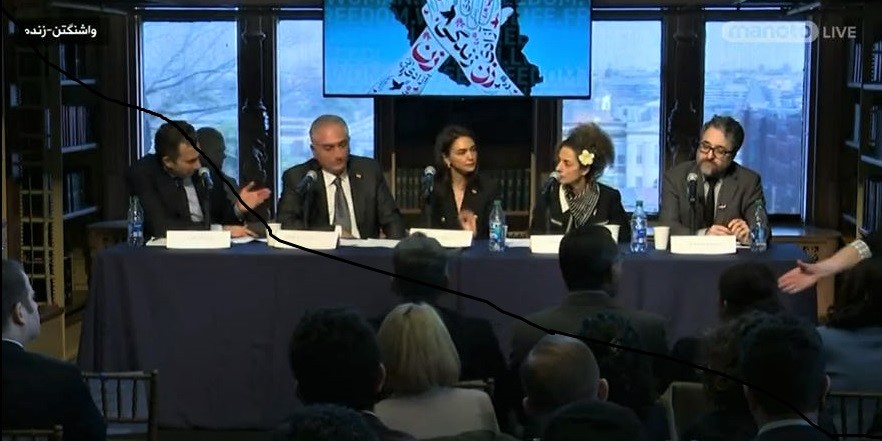
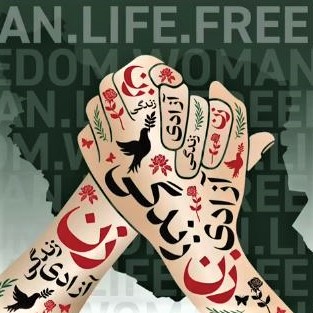 (1) Images of the day: [Top left] February 11 is designated by the United Nations as International Day of Women and Girls in Science (Info). [Top center & right] Women in Science and Engineering: A Tale of Two Countries (see the next item below). [Bottom row] Panel on the future of Iran (see the last item below).
(1) Images of the day: [Top left] February 11 is designated by the United Nations as International Day of Women and Girls in Science (Info). [Top center & right] Women in Science and Engineering: A Tale of Two Countries (see the next item below). [Bottom row] Panel on the future of Iran (see the last item below).
(2) Talangor Group talk: I spoke on Thursday night, in Persian, under the title "Women in Science and Engineering: A Tale of Two Countries" (Persian title below). There were ~90 attendees.
Here is a synopsis of the talk. Despite poor retention and advancement prospects, as well as female-unfriendly workplaces and corporate policies, women continue to flock to and excel in STEM (science, technology, engineering, mathematics) fields. Based on data and narratives from the United States and Iran, I identified roadblocks to the engagement of women in STEM careers. Using the two countries, different as they are in many respects, as examples is instructive, because this side-by-side comparison shows that undesirable outcomes in the domain of women in STEM fields can and do occur for vastly different reasons. The talk concluded by discussing what each country can learn from the other one in removing roadblocks to women in science and engineering. [Link to PDF slides] [Link to the talk's recording]
(3) Georgetown University event on "The Future of Iran's Democracy Movement": Eight Iranian activists/leaders participated in this discussion, held in-person for the most part and broadcast on Facebook Livestream (Recording). The panel discussion was moderated by Karim Sadjadpour (Senior Fellow, Carnegie Endowment for International Peace, Adjunct Professor, Georgetown University).
Before summarizing the panelists' views, in the order they were presented (four on video clips and four in-person), I want to indicate my disappointment with comments made on the Facebook Livestream page. Many of the comments were aggressive, uncivil, and misogynistic. Royalist followers of Reza Pahlavi were particularly loud and disrespectful of others.
- Dr. Shirin Ebadi, Nobel Laureate, Lawyer, and Author (via video)
The question isn't what will happen if this regime falls. The question is what will happen if it remains in place. We have allowed this brutal regime to oppress us by not being united. Please put aside your differences and arguments for when we vote later. Our present focus should be on how to get rid of this oppressive regime.
- Abdullah Mohtadi, Secretary-General of Komala Party, Iranian Kurdistan (via video)
For decades, the Islamic regime had built a fictitious story about Kurdistan, killing Kurds on various pretenses. The current uprising exposed those lies. Kurdistan is with the rest of Iran and won't be silenced. Our common enemy is the Islamic Republic. We all want friendship, equality, and freedom. Our arrows must all point toward the Islamic Republic.
- Golshifteh Farahani, Actress, Human Rights Activist (via video, also representing Ali Karimi, Former Captain of Iran's National Soccer Team, Bayern Munich, Human Rights Activist, 2004 Asian Footballer of the Year)
Today belongs to the Iranian people, who have been held hostage for 44 years. We must all act to overthrow the brutal Islamic regime, by focusing on our common goals and not on our personal beliefs. The Islamic regime has tried to sow the seeds of discord among us. The keywords for our actions should be unity, self-sacrifice, and democracy. We are your voice, not your leaders. In a democratic Iran, we won't fight over our differences, but will celebrate them.
- Masih Alinejad, Author, Journalist, Women's Rights Activist, Founder of "My Stealthy Freedom" Movement
The murder of Mahsa Amini united Iranians, regardless of traits such as religion or ethnicity, against the brutal Islamic regime. The revolution aims to establish a society that is united, diverse, and respectful of differences of opinion. We must build a new structure, based on a charter that will be published by the end of February. The fall of Islamic regime not only means the rise of a secular democracy in Iran, but will also bring peace and stability to the region. A democratic Iran will have a pro-women government and will send the message of peace to the world.
- Dr. Hamed Esmaeilion, President and Spokesman of the Association of Families of Flight PS752 Victims
Key elements for the future of Iran are freedom, equity, social justice, and environmental justice. In its 44 years, the brutal Islamic regime has hurt many individuals and groups, filling the country's landscape with grieving victims. These victims have not given up hope but are in fact full of life. They sing & dance, get together, and love all the joys the world has to offer. In a democratic Iran, we won't be consumed by vengeance, but will insist that all crimes of the Islamic regime be investigated, allowing our decades-long wounds to heal.
- Nazanin Boniadi, Human Rights Activist, Actress, and Amnesty International UK Ambassador
We are sitting here as friends, setting aside our differences and working toward a common goal. The common charter we are working on will form the basis of sustainable and substantive changes in our homeland. The essence of the ongoing movement is inside Iran, but we do seek support from Western democracies and endeavor to educate governments and politicians about Iranian people's demands, while addressing their fears about possible instability in the region should the Islamic regime fall.
- Reza Pahlavi, Advocate for Secular Democratic Iran
Differences of opinion should not mean enmity. Rather than focus on our differences, we should think about the essence of our goal, which is to free our homeland. In the new system we build, everyone should be treated equally and according to law. Institutions are important, but for democracy to survive, we need to build a culture of diversity and tolerance. The same culture should encourage citizens to be watchful participants in gaining and protecting their rights. Rights will not be handed to us; we should claim them. Let's set aside slogans, roll up our sleeves, and begin our work.
*After the introductory presentations outlined above, the moderator began with some questions for the four present panelists and then opened up the floor to the journalists who were in the room.

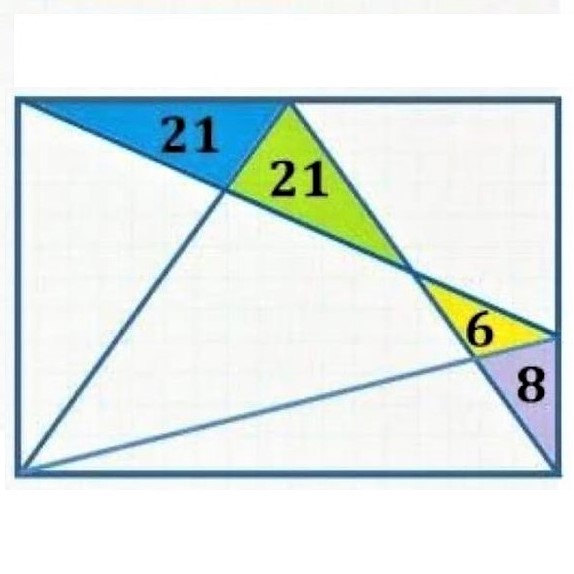
 (1) Images of the day: [Left] World Music Series noon concert at UCSB's Music Bowl: Mariachi Las Olas De Santa Barbara performed at noon today under the beautiful blue skies of a 70-degree day
(Video 1;
Video 2). [Center] Math puzzle: Given the areas of the small triangular regions, find the area of the outer rectangle. [Right] Peanut butter selection in Tehran: Prices range from 100,000 to 250,000 tomans ($2.50-$6.00) per jar.
(1) Images of the day: [Left] World Music Series noon concert at UCSB's Music Bowl: Mariachi Las Olas De Santa Barbara performed at noon today under the beautiful blue skies of a 70-degree day
(Video 1;
Video 2). [Center] Math puzzle: Given the areas of the small triangular regions, find the area of the outer rectangle. [Right] Peanut butter selection in Tehran: Prices range from 100,000 to 250,000 tomans ($2.50-$6.00) per jar.
(2) Turkey's twin earthquakes: Before & after images show the extent of destruction. Search & rescue teams from many countries have converged on the affected region near the Turkey-Syria border. The death toll of this natural disaster stands at 15,000 and is still rising. Please help!
(3) Odds of finding additional quake survivors in Turkey and Syria rapidly diminishing: Passage of time, many multi-story buildings completely collapsing, and freezing temperatures reduce the chances of survival.
(4) One-liners: Brief news headlines, happenings, memes, and other items of general interest.
- Quotable: "We adore chaos because we love to produce order." ~ M. C. Escher
- Do you know what happens after your funeral? This 2-minute video should affect how you live your life.
- Kurdish music: An instrumental piece, performed by students of a music academy. [4-minute video]
- Facebook memory from Feb. 7, 2016: Kayaking with my daughter in LA's Marina del Rey.
- Facebook memory from Feb. 8, 2011: Is advanced technology taking us back to Stone Age?
(5) US National Basketball Association has a new scoring champion: LeBron James surpasses the previous record of 38,387; and he is still far from done! He will continue to establish a new record with every point.
(6) Christiane Amanpour shares Iranian human-rights lawyer Nasrin Sotoudeh's first TV interview: Sotoudeh's book 'Prison Letters' is out. I will post my review of the book soon. [17-minute video]
(7) An implant that turns brain waves into words: It deciphers commands intended for the vocal tract, helping a man who has not spoken for more than 15 years (due to a stroke) speak.
(8) The most earthquake-prone countries over the past 3+ decades (1990-2022): China tops the list with 182 quakes. Indonesia and Iran come next, with 161 and 108 quakes, respectively. Turkey is sixth with 58 quakes.

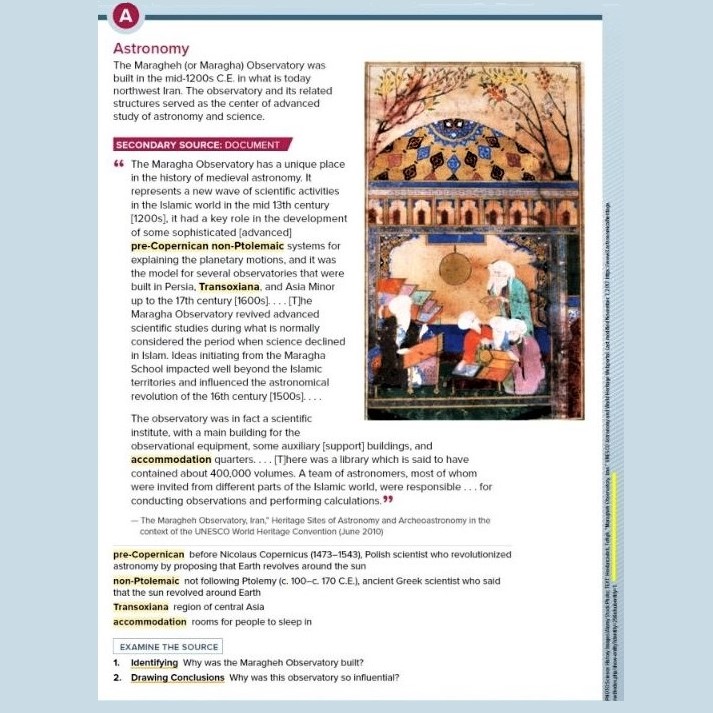
 (1) Images of the day: [Left] Author Salman Rushdie today: A living monument to the utter stupidity of religious rule. Never again! [Center] A page from US junior-high world history text (see the next item below). [Right] US State Department retires Times New Roman in favor of Calibri to improve document readability.
(1) Images of the day: [Left] Author Salman Rushdie today: A living monument to the utter stupidity of religious rule. Never again! [Center] A page from US junior-high world history text (see the next item below). [Right] US State Department retires Times New Roman in favor of Calibri to improve document readability.
(2) Iran's Maragheh Observatory in US textbooks: "Science, Technology, and Society" is one of the 10 modules in US junior-high-school textbooks on world history, which includes a page on the ancient observatory. This is more than what Iranian high-school students learn about the UNESCO World Heritage site in the northeastern city of Maragheh, East Azerbaijan Province, Iran. [Credit: Dr. Tofigh Heidarzadeh]
(3) One-liners: Brief news headlines, happenings, memes, and other items of general interest.
- Our loss is their gain: Germany is happily hiring Silicon Valley's fired tech workers.
- Colleges are having doubts about accuracy & usefulness of national rankings of educational institutions.
- A couple of memes celebrating Shervin Hajipour's Grammy Award win last night. [Tweet, with images]
- Our loss is their gain: Germany is happily hiring Silicon Valley's fired tech workers.
- Two male-chauvinist Islamic Republic throw sexual insults at women on Iran's state TV.
- Women face sexual harassment everywhere: So, is it really a surprise that it happens at the gym too?
- Quotable: "What is love? Love is the absence of judgment." ~ Dalai Lama
- Facebook memory from Feb. 6, 2019: Don't equate digital with modern and analog with old-fashioned.
- Facebook memory from Feb. 6, 2017: The soldier mindset vs. the scout mindset. [12-minute TEDx talk]
- Facebook memory from Feb. 6, 2014: Cartoon illustrating the electrical units volt, ohm, and ampere.
(4) Swimming in the air: This floater, mimicking the motion of a stingray in water, can fly in the air, thanks to its super-lightweight construction and use of helium gas. [Tweet, with video]
(5) Republicans: Of course we believe in Social Security, Medicare, affordable healthcare, work for the unemployed, and more. Just turn these over to us and we'll do a much better job of managing and protecting them, in a way that you won't have to pay a dime! FDR warned us about this scam in 1936!


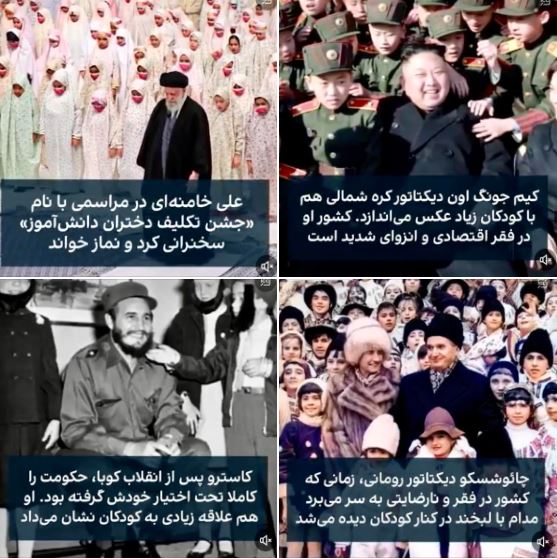 (1) Images of the day: [Top left] The main Armenian religious center in Tehran, the Saint Sarkis Cathedral, was completed in 1970. [Top center] Math puzzle: Find the length x in this diagram featuring a circle and two chords. [Top right] History keeps repeating itself: When dictators are accused of brutality and heartlessness, they try to project a kind/gentle image by appearing next to children.
(1) Images of the day: [Top left] The main Armenian religious center in Tehran, the Saint Sarkis Cathedral, was completed in 1970. [Top center] Math puzzle: Find the length x in this diagram featuring a circle and two chords. [Top right] History keeps repeating itself: When dictators are accused of brutality and heartlessness, they try to project a kind/gentle image by appearing next to children.
(2) Shervin Hajipour's Persian protest anthem "Bara-ye" wins a Grammy Award in the new category of "Best Song for Social Change": The inaugural award was presented by US First Lady Dr. Jill Biden.
(3) Former supporters are abandoning the ship of Iran's Islamic regime one by one: Ex-PM Mir Hossein Mousavi has said that reforms within the current constitution no longer make sense, so we have to start from scratch with a referendum. Ex-President Mohammad Khatami is more equivocal, still wanting to reform the regime in the framework of the existing constitution, which gives unlimited powers to the cleric who is appointed Supreme Leader for life. Meanwhile, polls indicate that the regime's approval rating is a dismal 15%, with 81% favoring a different form of government. [Tweet, with images]
(4) One-liners: Brief news headlines, happenings, memes, and other items of general interest.
- US lowest-temperature record: Minus-108 F wind-chill recorded at the summit of Mt. Washington, NH.
- Pervez Musharraf, former military ruler of Pakistan and a crucial US ally after the 9/11 attacks, dead at 79.
- An Iranian soldier gets 5+ years in prison by refusing to shoot his fellow countrymen. [Tweet]
- People's motion on this spiral walkway of a soccer stadium in Milan, Italy, creates the illusion of rotation.
- American cyclist rides a path tracing the name of Iranian political prisoner Farhad Meysami in San Francisco.
- Beyonce now has the most Grammy wins in history: On Sunday, she added 4 awards to her previous 28.
- Khalil Gibran: "A little knowledge that acts is worth infinitely more than much knowledge that is idle."
(5) More than 300 deaths already reported from a strong 7.8-magnitude earthquake in Turkey: The death toll is expected to rise due to many buildings collapsing in Turkey and Syria.
(6) Book review: Apt, Krzysztof R. and Tony Hoare (eds.), Edsger Wybe Dijkstra: His Life, Work, and Legacy, ACM Press, 2022. [My 4-star review of this book on GoodReads]
Edsger Wybe Dijkstra [1930-2002] made fundamental contributions to the theory and practice of computing. In this book, computer scientists, including Dijkstra himself, friends, mentors, and colleagues, provide both biographical and technical narratives on the influential computer scientist (the book's table of contents).
Dijkstra won the Turing Award in 1972 "for fundamental contributions to programming as a high, intellectual challenge; for eloquent insistence and practical demonstration that programs should be composed correctly, not just debugged into correctness; for illuminating perception of problems at the foundations of program design."
He advocated for the development of programs in concert with their correctness proofs. He also developed important ideas in fault-tolerant computing and in the domain of developing and presenting mathematical proofs of computer programs. Dijkstra remains one of the most quotable and most-quoted computer scientists. Here are three of his statements that are my favorites:
- "Computer science is no more about computers than astronomy is about telescopes.
- "The question of whether a computer can think is no more interesting than the question of whether a submarine can swim."
- "Program testing can be used to show the presence of bugs, but never to show their absence!"
He viewed programming as a mathematical activity, recommending that second-rate mathematicians had better limit themselves to pure math, because programming is one of the most-difficult branches of applied math.
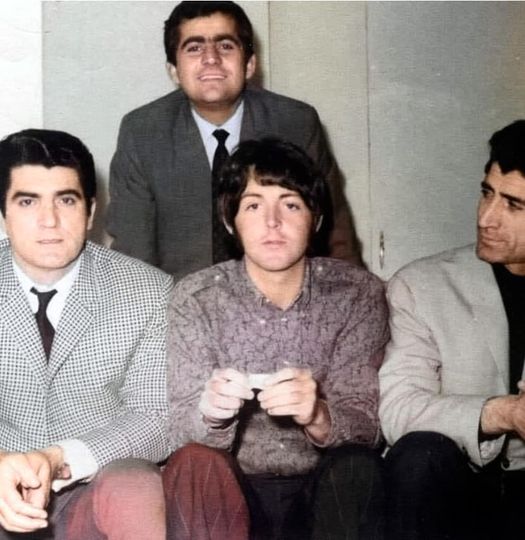




 (1) Images of the day: [Top left] Paul McCartney, flanked by Iranian pop singer Viguen (left) and his brother, Tehran, March 1968. [Top center] Egg prices are way up in the US: Blame a combination of feed prices and avian flu (NYT chart). [Top right] A late birthday celebration with my daughter, Friday night 2/03 in San Diego. [Bottom left] Today, on Coronado Island in San Diego, where my daughter and I went for kayaking and lunch. [Bottom center] My daughter's fesenjoon stew (Persian dish, with walnuts, pomegranate molasses, onions, chicken) and rice with potato tah-dig. [Bottom right] Sunset at San Diego's Torrey Pines State Park, where my daughter and I hiked today. And here's the nearly-full Moon, shot over my daughter's apartment complex.
(1) Images of the day: [Top left] Paul McCartney, flanked by Iranian pop singer Viguen (left) and his brother, Tehran, March 1968. [Top center] Egg prices are way up in the US: Blame a combination of feed prices and avian flu (NYT chart). [Top right] A late birthday celebration with my daughter, Friday night 2/03 in San Diego. [Bottom left] Today, on Coronado Island in San Diego, where my daughter and I went for kayaking and lunch. [Bottom center] My daughter's fesenjoon stew (Persian dish, with walnuts, pomegranate molasses, onions, chicken) and rice with potato tah-dig. [Bottom right] Sunset at San Diego's Torrey Pines State Park, where my daughter and I hiked today. And here's the nearly-full Moon, shot over my daughter's apartment complex.
(2) One-liners: Brief news headlines, happenings, memes, and other items of general interest.
- US shoots down Chinese spy balloon after it moves over the Atlantic, alleviating debris danger.
- Iran hacked the site of the French magazine Charlie Hebdo and stole subscribers' information.
- The Islamic Republic is doomed: Poll shows 81% of respondents rejecting the Islamic form of government.
- Important recall info: EzriCare Artificial Tears eye drops can cause blindness. [Tweet, with image]
- Any similarity in these two photos of Ali Khamenei and Kim Jong-un is accidental. [Tweet, with photos]
- Iranian couple sentenced to 10.5 years each for posting a video of themselves dancing in Azadi Square.
- Persian music: Hooniak Band's beautiful rendition of the old popular song "For You." [4-minute video]
(3) Book review: Thurber, James, Collected Fables, Harper Prennial, 2019.
[My 4-star review of this book on GoodReads]
This remarkable book of humorist James Thurber [1894-1961] begins with three introductory sections:
- A foreword by American commentator Keith Olbermann
- "A Fabulist of Our Time," by American writer Michael J. Rosen
- A preface by Thurber himself, dated March 30, 1956
Thurber's 85 fables are hilarious parodies of Aesop. The book brings together Thurber's Fables for Our Time (28), Further Fables for Our Time (47), and 10 previously uncollected fables. Each fable is illustrated with one or more cartoons. Many of the fables end with a "moral." For example, the moral of "The Foolhardy Mouse and the Cautious Cat" is: "Fools rush in where angels fear to tread, and the angels are all in Heaven, but few of the fools are dead."
In his preface, Thurber writes: "The human family, of which I am a sometimes reluctant, but often proud, member has always invited a story, resented a lecture, and yawned at a sermon ... The definition of a fable shouldn't be cramped. It can embrace any pointed and recognizable aspect of human behavior, turned out in a concentrated narrative, with birds and beasts, or people or chimney posts, or anything else, including parts of the human body, talking away at a great rate."
Let me end my review with two example fables. The parody version of "Little Red Riding Hood" has the little girl taking an automatic out of her basket and shooting the wolf dead, right after she enters her grandmother's house. The moral of the story is: "It is not so easy to fool little girls nowadays as it used to be." In another fable, a smart fly avoids a spider web, answering the spider's invitation with, "I never light where I don't see other flies," before leaving. Later, the fly settles down on a flypaper, becoming stuck with all the other flies. The moral? "There is no safety in numbers, or in anything else."

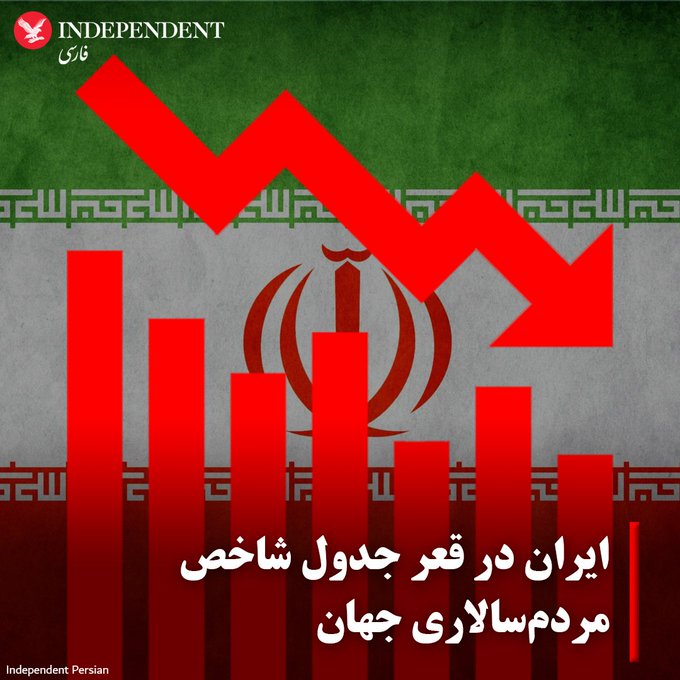
 (1) Images of the day: [Left] The loneliness epidemic (see the next item below). [Center] Iran ranked #154 in democracy index, that is, near the bottom of the list of 167 countries. [Right] Australia is removing the British monarchy from its bank notes, beginning with the new 5-dollar bill.
(1) Images of the day: [Left] The loneliness epidemic (see the next item below). [Center] Iran ranked #154 in democracy index, that is, near the bottom of the list of 167 countries. [Right] Australia is removing the British monarchy from its bank notes, beginning with the new 5-dollar bill.
(2) Loneliness is on the rise in the United States: Part of this problem can be blamed on a couple of years of the COVID-19 pandemic. Another factor is people drinking less and thus not benefiting from the resultant shedding of inhibitions. (By the way, the latest verdict on alcohol is that it is bad for you, even in moderate amounts, but that's a topic for a post at some other time). Adverse health effects of loneliness have been well-publicized. Lonely individuals become susceptible to all sorts of diseases.
A byproduct of the loneliness epidemic is a substantial rise in "romance scams," which take various forms, including both in-person (at social gatherings & in bars, say) and on-line (dating apps, social media, & messaging platforms). Scammers typically target older people or recently-widowed men & women of any age. Some scams are obvious and easily foiled (like a hot young girl messaging me to show "interest" based on my "profile"). Others are more subtle and need careful attention to avoid falling into the trap. Lonely people suck at being deliberate and careful. Loneliness kills in more than one way!
(3) One-liners: Brief news headlines, happenings, memes, and other items of general interest.
- Former Afghan president & other officials received millions of dollars in cash to not fight the Taliban. [Tweet]
- Pentagon is tracking a suspected Chinese spy balloon floating high above the US Northwest.
- France intercepts a ship smuggling Iranian arms to Yemen: The cargo included machine guns & missiles.
- Close encounter of the whale kind: Paddle-boarder's unique experience. [Tweet, with video]
(4) Explaining the new buzz-term "digital twin": We hear/read the term everywhere these days. A digital twin is simply a digital model of a physical object, person, process, or organization. As such, digital twin is nothing new. It's just a new buzz-term for an age-old activity, that is, modeling. Before digital computers, we used to do physical or mathematical modeling. Beginning with the 1950s, we added digital models to our toolbox. Today, these digital models can be more detailed and, thus, more accurate, thanks to ample & cheap computing power we have at our disposal.
(5) Anti-Semitic incidents on & around UCSB campus: Both Chancellor Yang and Engineering Dean Pollock have issued statements condemning hate speech of any kind and pointed to campus resources for support.
(6) "American Pain": This is the title of a 106-minute CNN documentary film to be aired on Sun., Feb. 5, 2023, 6:00 & 9:00 PM PST. The film "tells a grotesque tale of bodybuilding Florida brothers, lethal opioid exploitation, sky-high profits and absurdly slack state oversight."
(7) Personalized ad on LinkedIn, from Walden University: "Hi Behrooz, We thought you'd be a great fit for our online bachelor's degree programs. With a wide variety of offerings, classes start throughout the year. Do you already have a Bachelor's degree?"
(8) Final thought for the day: Nowruz 1402 is coming in 45 days. Spring equinox (saal tahveel) will be on Monday, March 20, 2023, 2:24:27 PM PDT; Tuesday, March 21 (Farvardin 1), 00:54:27 AM Iran time.
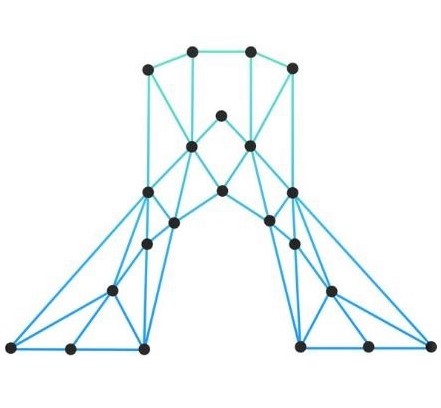
 (1) Images of the day: [Left] Art for Freedom: An abstract rendering of Tehran's Freedom Tower (credit: Liberty Communities). [Right] Today's UCSB talk on Iran (see the last item below).
(1) Images of the day: [Left] Art for Freedom: An abstract rendering of Tehran's Freedom Tower (credit: Liberty Communities). [Right] Today's UCSB talk on Iran (see the last item below).
(2) Quote of the day: "We live on an island of knowledge surrounded by a sea of ignorance. As our island of knowledge grows, so does the shore of our ignorance." ~ John A. Wheeler, Scientific American, 1992
(3) Full-speed backward: A new law in Iran requires any woman to get her guardian's permission before leaving the country. Previously, divorced & unmarried women over the age of 18 needed no such permission.
(4) One-liners: Brief news headlines, happenings, memes, and other items of general interest.
- Study finds the world has ample supply of rare-earth material to cover switch to clean energy.
- Member of Iran's parliament, which supports blocking foreign Internet sites, uses anti-filtering software!
- An MP in Iran strongly criticizes President Raisi and his utter failure to deliver on his campaign promises.
- Located above the Jungfraujoch in Switzerland, the Sphinx Observatory sits 3571 m above sea level.
- New Yorker cartoon caption of the day (father reading a story to his child): "Stop fact-checking my story!"
- Math: Euler showed that 2^4 = 4^2 is the only solution to the equation a^b = b^a for distinct a and b.
- Illustrating the notion of reinforcement learning, a type of machine (chicken) learning. [1-minute video]
- Persian music: This oldie entitled "Moosem-e Gol" ("Season for Flowers") is based on a Kurdish folk song.
(5) Tech layoffs aren't necessarily bad: When experienced employees are laid off, a wave of new start-ups begins. Established tech companies, existing start-ups, and the new start-ups compete for absorbing the laid-off workers and fresh talent. Yes, some individuals will experience hardships, but the economy as a whole might benefit. One problem, though, must be addressed. There are reports (both WaPo and NYT) that women and Hispanics are disproportionately affected by the ongoing layoffs. This is quite troubling, as it amplifies tech's already serious lack-of-diversity problem.
(6) This afternoon's UCSB talk about Iran: Dr. Kathryn Babayan (U. Michigan) spoke under the title "Anthologizing the City of Isfahan: Family Archives and Urban Knowledge." Dr. Babayan has written several books about Iran's sociocultural history, including Mystics, Monarchs, and Messiahs: Cultural Landscapes of Early Modern Iran and The City as Anthology: Eroticism and Urbanity in Early Modern Isfahan.
Much has been written about the city of Isfahan. It is an old, pre-Islamic city at the intersection of several trade routes. Historically, it has had sizable Jewish and Armenian populations, the latter group having been forcibly moved there from the northwestern city of Julfa, creating Isfahan's Julfa neighborhood.
Much of official city archives have disappeared over time, so standard history books do not tell us much about how people lived and how the population interacted with and was impacted by the city's architectural grandeur. Anthologies that have survived come in a variety of formats/sizes, which are indicative of the diversity of sources. They typically include essays, wills, marriage documents, poems, artwork, and letters, providing rich supplements to standard histories.
Such anthologies, which are essentially handwritten books, are found in museums and libraries around the world. A few are relatively easy to digest, because they are well-organized and even have tables of contents. Most, however, are like tough puzzles whose decoding takes much time, effort, and expertise. Several institutions and centers in Iran own rich collections of these anthologies, many of them digitized and readily available to researchers.

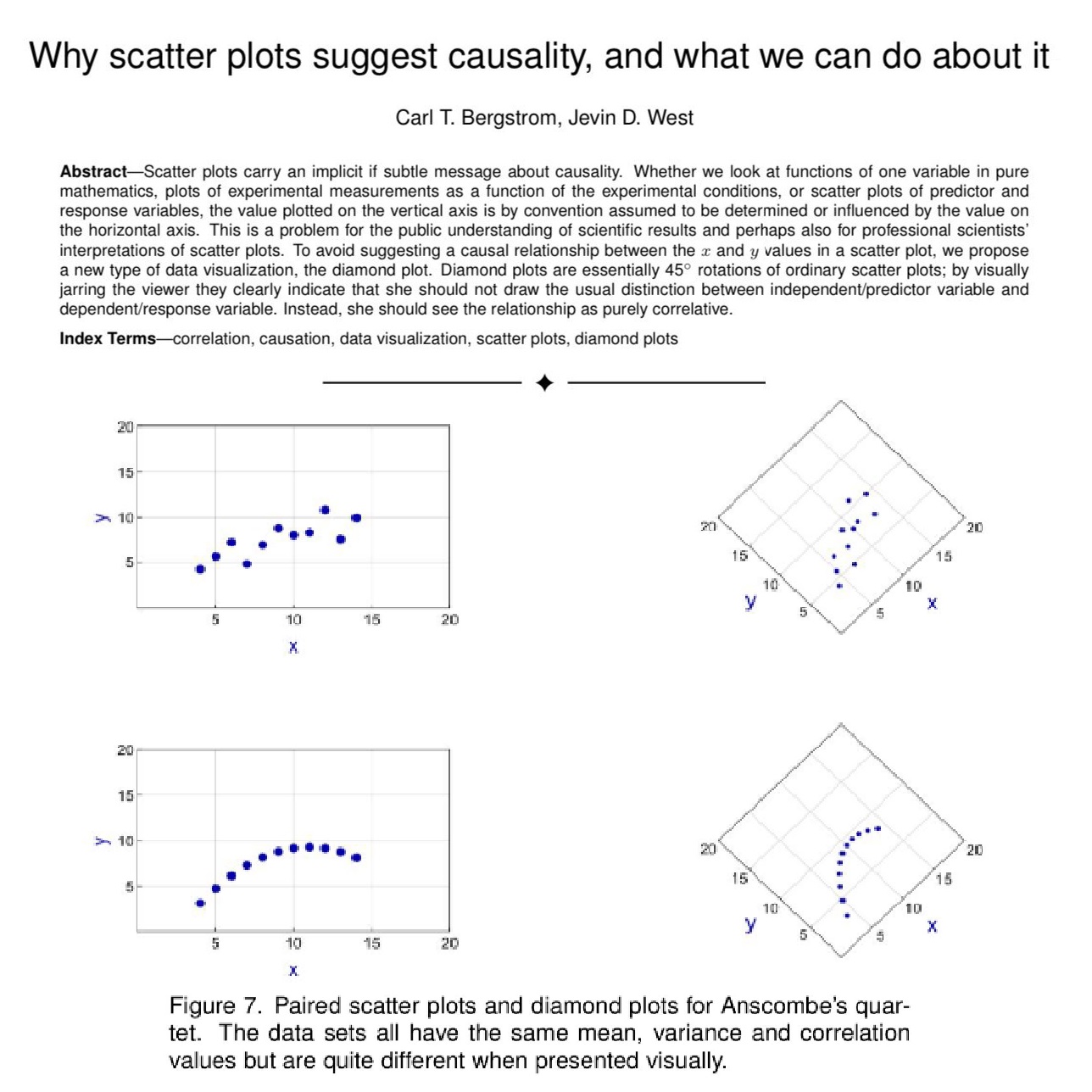
 (1) Images of the day: [Left] Math puzzle: How many triangles are there in this figure? [Center] Scatterplots can be misleading, because we often interpret them as implying causality: Rotating scatterplots by 45 degrees and turning them into diamond plots helps alleviate the false inference. [Right] Math puzzle: Shown are five squares, the smallest of which has area 1. What is h?
(1) Images of the day: [Left] Math puzzle: How many triangles are there in this figure? [Center] Scatterplots can be misleading, because we often interpret them as implying causality: Rotating scatterplots by 45 degrees and turning them into diamond plots helps alleviate the false inference. [Right] Math puzzle: Shown are five squares, the smallest of which has area 1. What is h?
(2) Six Ivy-League colleges will have female presidents this fall: Harvard will welcome its first black president. Columbia will be led by a woman for the first time, as will the 250-year-old Dartmouth College.
(3) Quote of the day: "Happiness is neither virtue nor pleasure nor this thing nor that but simply growth. We are happy when we are growing." ~ Author/poet William Butler Yeats
(4) One-liners: Brief news headlines, happenings, memes, and other items of general interest.
- Three Eastern-European criminals with ties to Iran had plans to assassinate journalist Masih Alinejad.
- A mosque completely collapses in Pakistan due to suicide bombing, killing 60+ and injuring scores more.
- Super Bowl 2023 is set: One mom, sure to be a winner, has a son on both teams (Eagles & Chiefs).
- An amazing mountain road in Norway. [1-minute video]
- G. B. Shaw: "When a stupid man is doing something he's ashamed of, he always declares that it's his duty."
- Dancing in the rain: The Persian version! [3-minute video]
- Marvel at this order-5 Venn diagram dividing the plane into 2^5 = 32 regions! [Image]
- Sony Pictures' visualization of a mother's physical & emotional sacrifices in giving birth to children.
(5) Fajr Film Festival this year has second-rate talent competing in front of B-list judges: Iran's prominent filmmakers & other artists are staying away from the festival's 41st edition, being run by an actor/producer who was a member of the pro-Khamenei mob that stormed the British Embassy in Tehran a decade ago.
(6) Panel recommends $2.6 billion for a US Federal AI Research Organization: The final report from the government's National AI Research Resource recommends a new, multibillion-dollar research organization to improve the capabilities and accessibility of the field to US scientists.
(7) The dictator's dilemma: Countries like Iran, that shut down or severely limit access to the Internet shoot themselves in the foot. As noted by former US Secretary of State George P. Schultz in 1985: "Totalitarian societies face a dilemma: either they try to stifle these technologies and thereby fall further behind in the new industrial revolution, or else they permit these technologies and see their totalitarian control inevitably eroded."
(8) The high cost and low effectiveness of user-privacy agreements: Privacy laws are certainly needed, but putting a 10-page document in front of a user and asking him/her to sign is not the solution. These are documents written by lawyers for the benefit of service providers, not to inform the users. At today's UCSB seminar "Modeling Privacy Policies and Informed Consent," given by Dr. Maryam Majedi (USC), I learned that it takes the average person 180-300 hours (productivity loss of ~ $5000) to read every privacy policy s/he encounters while using the Web over the period of one year.


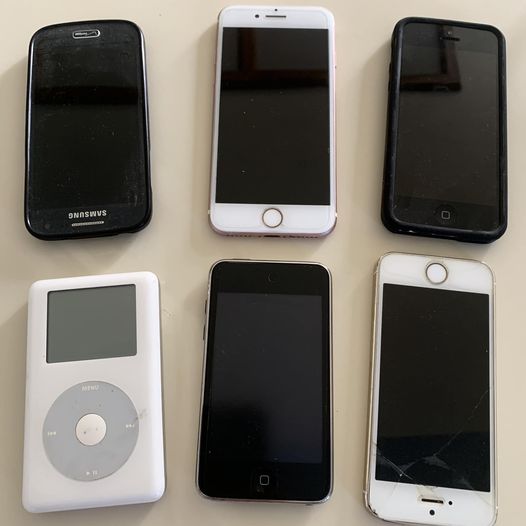
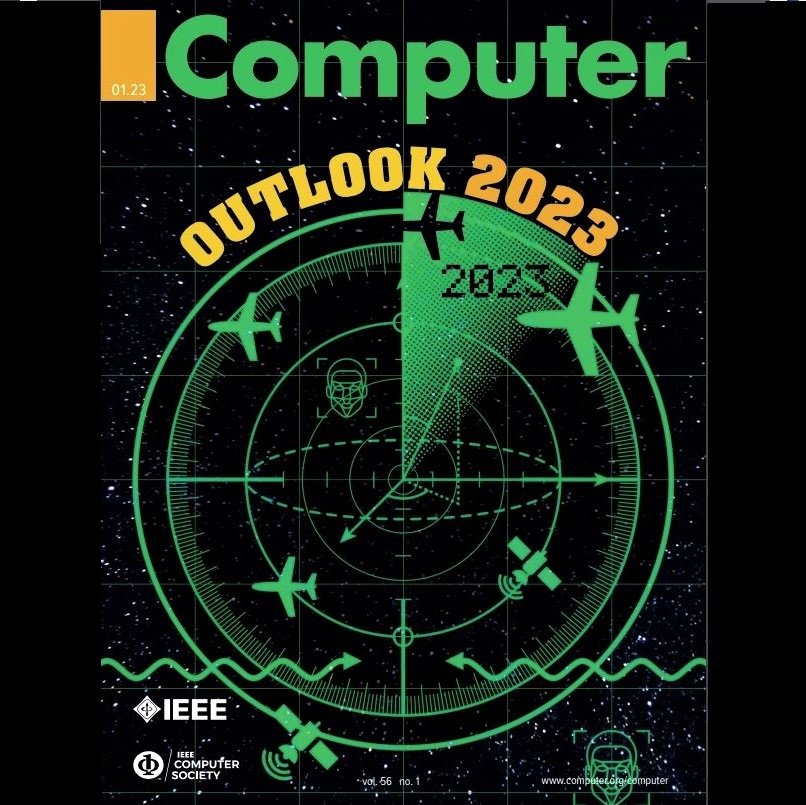

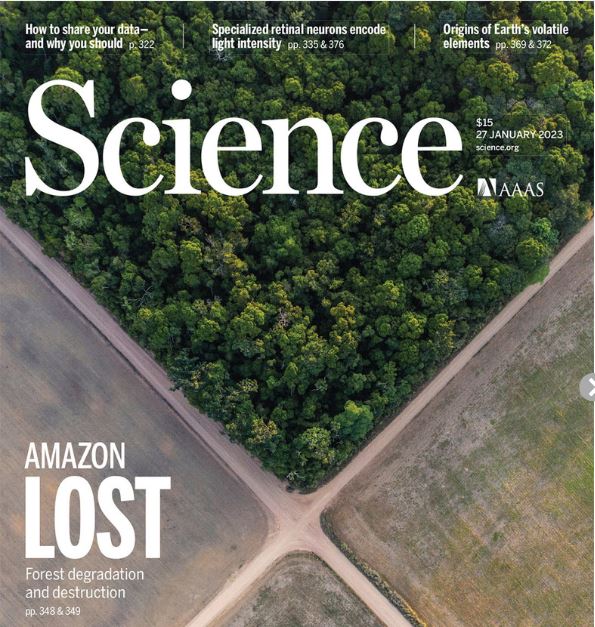 (1) Images of the day: [Top left] Flowers on sale at Costco: For a mere $140, you can buy a gift pack of roses that are said to last for over one year. So, you're covered for Valentine's Day 2023 & 2024! Well, artificial flowers last forever, so why pay this much? [Top center] Facebook memories from Jan. 29 of years past: My daughter's tah-dig creation, a German castle, Mt. Damavand, and a majestic tree. [Top right] These were once the latest technology: They are now my family's e-waste! [Bottom left] Cover feature of IEEE Computer magazine, issue of Jan. 2023 (see the next item below). [Bottom center] US women: Voting rights came more than a century ago (1920). Reproductive rights were taken away in 2022. Is there still hope for equal rights? [Bottom right] Cover feature of Science magazine, issue of Jan. 27, 2023 (see the last item below).
(1) Images of the day: [Top left] Flowers on sale at Costco: For a mere $140, you can buy a gift pack of roses that are said to last for over one year. So, you're covered for Valentine's Day 2023 & 2024! Well, artificial flowers last forever, so why pay this much? [Top center] Facebook memories from Jan. 29 of years past: My daughter's tah-dig creation, a German castle, Mt. Damavand, and a majestic tree. [Top right] These were once the latest technology: They are now my family's e-waste! [Bottom left] Cover feature of IEEE Computer magazine, issue of Jan. 2023 (see the next item below). [Bottom center] US women: Voting rights came more than a century ago (1920). Reproductive rights were taken away in 2022. Is there still hope for equal rights? [Bottom right] Cover feature of Science magazine, issue of Jan. 27, 2023 (see the last item below).
(2) January 2023 issue of IEEE Computer magazine: Emerging computing trends and technologies in 2023 and beyond. A list of the cover-feature articles follows.
- Quantum Computing: Progress and Innovation (beyond experimentation and on to real systems)
- Surprise-Inspired Networking (new info entering the cloud is often more valuable than old info at the core)
- Making Digital Twins Work (potential for interoperability and automation across computing applications)
- Future of the Workforce (the pandemic caused us to rethink how we work)
- Regulatory Technology and Supervisory Technology: Current Status, Facilitators, and Barriers
- Facial Recognition Technology: Navigating the Ethical Challenges
- Revisiting the Spaceborne Illuminators of Opportunity for Airborne Object Tracking
(3) Math puzzle: The numbers 0 through 9 are placed in a row in random order. What is the probability of the first three numbers on the left side being in ascending order, as in the following example?
2 3 6 0 5 7 9 4 1 8
(4) One-liners: Brief news headlines, happenings, memes, and other items of general interest.
- Facebook memory from Jan. 29, 2017: Persian music, featuring Mahsa Vahdat and a Norwegian choir.
- Facebook memory from Jan. 29, 2016: When my late mom got a Facebook account & we became "friends."
- Facebook memory from Jan. 29, 2014: Two women who thrived after being shot in the head by morons.
- Facebook memory from Jan. 29, 2011: Hope that an autocracy will give way to a better one is delusional.
(5) Gender inequity in STEM: Women constitute 26% of the scientists at UCSD's Scripps Institution of Oceanography, but they hold only 17% of the space; even less, if only lab space is considered.
(6) Degradation & destruction of the Amazon Forest: This is the theme Science magazine's cover feature, issue of Jan. 27, 2023. The Amazon is a critical component of the Earth climate system whose fate is embedded within our larger planetary emergency. "The Amazon ... is home to more than 10% of all named plant and vertebrate species, concentrated into just 0.5% of Earth's surface area. The Amazon rain-forest is also a critical component of the Earth climate system, contributing about 16% of all terrestrial photosynthetic productivity and strongly regulating global carbon and water cycles. Amazonian ecosystems are being rapidly degraded by human industrial activities. A cumulative total of 17% of the original forest has already been cleared, and 14% replaced, by agricultural land use. After millions of years serving as an immense global carbon pool, under further warming the Amazon rainforest is predicted to become a net carbon source to the atmosphere. Some regions have already made the transition, with forest respiration and burning outpacing forest photosynthesis."


 (1) Images of the day: [Left] Architecture: Hard Rock Hotel in Miami. [Center] Architecture: Types of arches. [Right] Nature: The Pyrenees at the border of France and Spain.
(1) Images of the day: [Left] Architecture: Hard Rock Hotel in Miami. [Center] Architecture: Types of arches. [Right] Nature: The Pyrenees at the border of France and Spain.
(2) Benefits you get in Heaven: This Islamic cleric claims that the first thing you get in Heaven is fish liver. The second benefit is many virgin nymphs ready to serve you. Third in line are gold and emerald carpets under your feet. Fourth, singing birds will broil themselves upon your slightest whim to provide you with tasty kabob.
(3) Internet access in Iran: Service is spotty and video chat is out of the question due to government blocking and deliberate slow-down. Yet ISPs continue to charge exorbitant fees for the non-service!
[Tweet]
(4) One-liners: Brief news headlines, happenings, memes, and other items of general interest.
- The "Cryptoqueen" who scammed investors out of $4 billion, boarded a plane, and disappeared.
- The classroom as a political tool in Nazi Germany and Islamic Republic of Iran. [7-minute read]
- Santa Barbara's historic Lobero Theater [1873-2023] turns 150. [Tweet, with images]
- No worries, no regrets, lots of positivity, and staying away from toxic people (115-year-old's advice).
- Congressional testimony by Dr. Steven Greer on UFOs & secret government programs. [9-minute video]
(5) Who are all these Iranian talking-heads on TV channels and social media? I've never seen or heard from most of these people. They all have prescriptions for how to overthrow Iran's brutal Islamic regime. Almost all of them praise one opposition figure and oppose others. Many of them scream and use foul language. Why are they speaking up now, after 40+ years of silence?
(6) Iranian protester to security guard: When you shot at me from 6 feet away while smiling, could you imagine that I would survive and smile back at you? #WomanLifeFreedom [Tweet, with photo]
(7) Afghan Minister of Disaster Management sees no need for women aid workers: We provide the aid to men, who are responsible for households. There is no sense in dealing with women directly. [Tweet, with video]
(8) SoCal good food at bargain prices: Santa Barbara's Shalhoob's Patio in the Funk Zone is featured in the Spring 2023 issue of AAA Magazine. Also listed are Tasty China Restaurant in Ventura and La Fuente in Ojai.
(9) Do expiry dates on medications matter? The short answer is "no"! The expiry date, mandated in the US since 1979, represents the date that the drug's manufacturer guarantees full potency. Drugs remain safe and highly effective even a decade or more after the specified date. There is little incentive for manufacturers to specify a realistic expiry date, because they make more money when drugs are discarded by users.




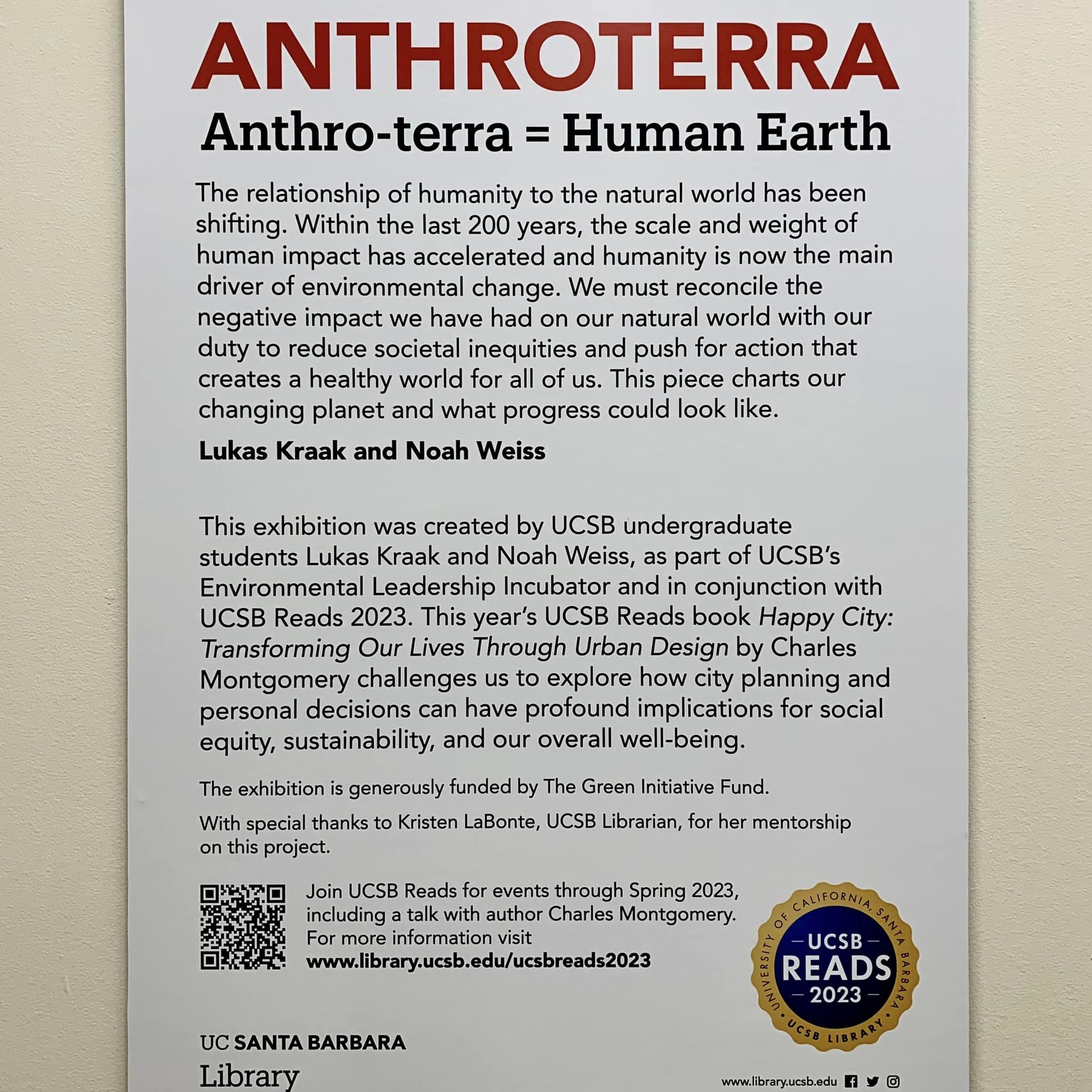
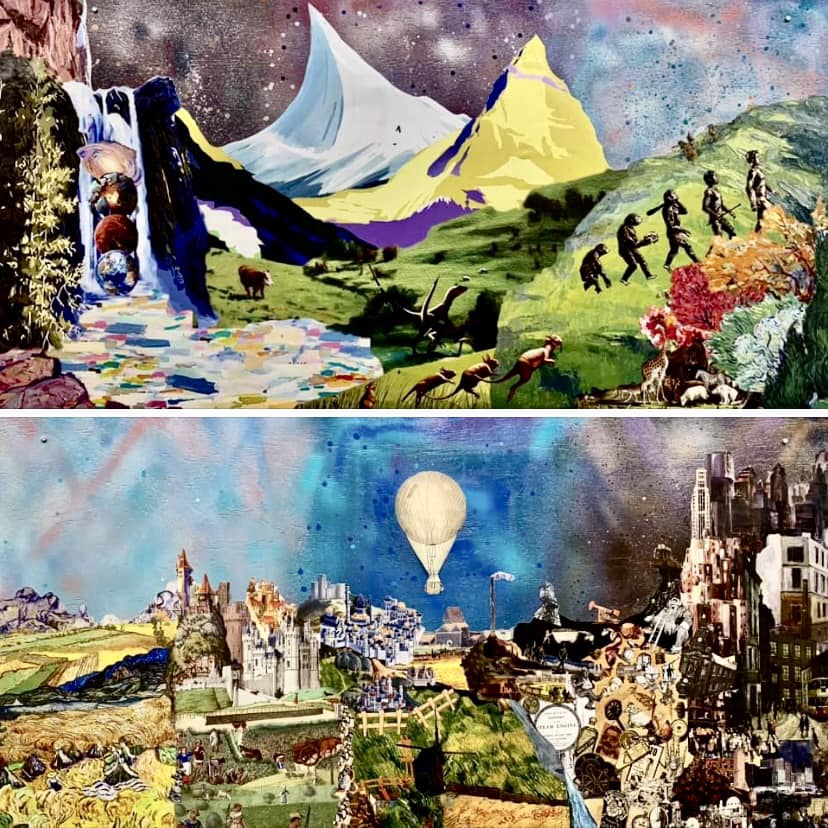 (1) Images of the day: [Top left] Enemies of the state, according to Iranian mullahs. [Top center] My latest #WomanLifeFreedom T-shirt. [Top right] Danger of old patriarchy taking over Iran's feminist/youth revolution (see the next item below). [Bottom left] Panel discussion on Iranian art today (see the last item below). [Bottom center & right] Anthroterra (Human Earth): This is a title of an exhibit at UCSB Library, highlighting the relationship of humanity to the natural world. It is one of the components of the UCSB Reads 2023 Program.
(1) Images of the day: [Top left] Enemies of the state, according to Iranian mullahs. [Top center] My latest #WomanLifeFreedom T-shirt. [Top right] Danger of old patriarchy taking over Iran's feminist/youth revolution (see the next item below). [Bottom left] Panel discussion on Iranian art today (see the last item below). [Bottom center & right] Anthroterra (Human Earth): This is a title of an exhibit at UCSB Library, highlighting the relationship of humanity to the natural world. It is one of the components of the UCSB Reads 2023 Program.
(2) Hijacking of the #WomanLifeFreedom feminist/youth grassroots uprising by a 60-something "prince": The 1979 Iranian revolution against tyranny was hijacked by a 70-something religious dictator, so Iranians are understandably edgy about another possible hijacking. Meanwhile, the mullahs in Iran, who were scared for the Islamic regime's survival and their own safety, are all smiles because of this dictatorial takeover attempt and the resulting discord among opposition figures, both inside and outside Iran. Reza Pahlavi insists that he doesn't want to become king and is merely acting as a facilitator to speed up a smooth transition from theocracy to democracy. But this isn't what we hear from his most-vocal supporters, who spew misinformation and insults at opposition figures who doubt Reza Pahlavi's sincerity. How does he feel about his supporters calling him "Prince" or, worse, "Reza Shah II"? [Persian version]
(3) One-liners: Brief news headlines, happenings, memes, and other items of general interest.
- Today, we remember the Holocaust amid a marked increase in Holocaust denial & anti-Semitic violence.
- Iranian-American scientist/engineer Nader Engheta (U. Penn) wins a 2023 Benjamin Franklin Medal.
- On how Iran's Islamic regime is sowing discord among opposition groups as a survival strategy. [Tweet]
- On separatist movements in Iran not having valid linguistic, cultural, religious, or ethnic justifications.
- Joke-like stat: The most-productive Iranian researcher wrote one paper every 1.5 days during 2022!
(4) Report from France 24 news agency: In Iran, most households rely on natural gas for their heating and hot water. But amid a cold snap and gas shortages, the population has been paralyzed by sub-zero temperatures in many regions around the country. These gas shortages have not only led to widespread power outages, but also severe air pollution from burning low-grade heavy fuel oil, known as mazut, to make up the difference. Despite denials from authorities, France 24 observers team found evidence that this fuel oil is partially responsible for unbreathable air in some Iranian cities.
(5) "Voices of Resistance: Iranian Art Today": This was the title of a Georgetown U. panel discussion in the framework of Jalinous Lecture series. The moderator Dr. Pamela Karimi (U. Mass Dartmouth; architect) began the discussion by providing an introduction to the #WomanLifeFreedom uprising and the diversity of artwork it has inspired. What follows includes some key points made by the three panelists.
Jinoos Taghizadeh (Artist, Germany) began by noting that art has always been influenced by, and helped direct, political developments. Art connected with resistance movements isn't necessarily produced by "artists." Can art be produced without financial support? To survive, artists need the basic necessities of life, yet many people do not consider "artist" a job title. If artists put their names out with their art, are they taking improper credit for the resistance movement?
Sepideh Mehraban (Artist, South Africa) began by providing her personal history, being born and educated in Iran and later moving to South Africa. She then showed some photographs depicting restrictions (clothing and otherwise) on Iranian women and resistance movements against those restrictions. She ended by showing examples of her art and a couple of installations she has done, including the group exhibition "Eye on Iran," in New York's Four Freedoms Park.
Sheida Soleimani (Brandeis U. faculty member; artist) began by indicating that she was born in the US to political-refugee parents. She learned about conditions in Iran and life under a dictatorship from her parents. She related some of the challenges faced by US-resident Iranians in the aftermath of the 9/11 terrorist attacks. When General Qasem Soleimani was killed, she feared similar adverse reactions, particularly in view of her last name being the source of much confusion.
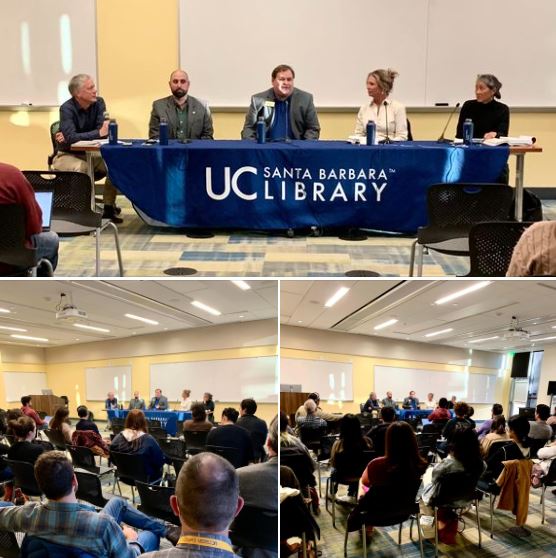
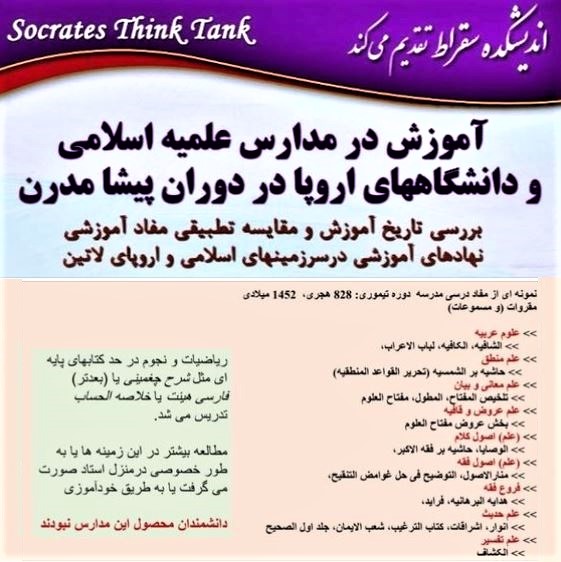
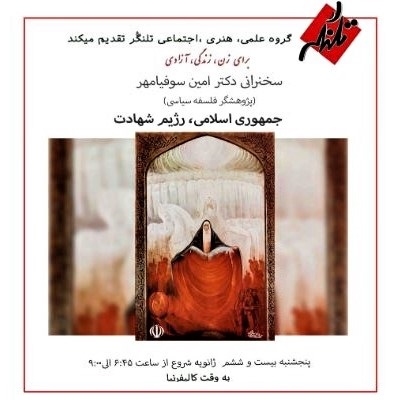 (1) Images of the day: [Left] UCSB Library's panel discussion on urban place making (see item 2 below). [Center] Socrates Think Tank talk on Islamic seminary schools vs. European universities (see item 3 below). [Right] Talangor Group's talk on Iran's Islamic regime and martyrdom (see item 4 below).
(1) Images of the day: [Left] UCSB Library's panel discussion on urban place making (see item 2 below). [Center] Socrates Think Tank talk on Islamic seminary schools vs. European universities (see item 3 below). [Right] Talangor Group's talk on Iran's Islamic regime and martyrdom (see item 4 below).
(2) "Urban Place Making Over the Next 30 Years": This was the title of Wednesday's panel discussion at the UCSB Library, in connection with the UCSB Reads 2023 Program, which has selected Colin Montgomery's 2014 book, Happy City: Transforming Our Lives Through Urban Design.
The panel was moderated by Prof. Andrew Plantinga of UCSB's Bren School and featured two city officials (Elias Isaacson, representing the City of Santa Barbara, and James Kyriaco, City of Goleta Councilmember), a city planner (Laurel Fisher Perez), and an artist (Prof. Kim Yasuda of UCSB). An estimated 50 people were in attendance. [UCSB Reads events & other info]
Change is difficult. Stakeholders may have conflicting demands: Walkability; Fast commute; Easy parking; Safe bike paths; and so on. Ironically, the COVID-19 pandemic helped us make once-in-a-generation changes, exemplified by closing of sections of State Street in downtown Santa Barbara to cars. City of Goleta is working on changes to reduce traffic speed and improve bike paths on Hollister Avenue. The State-Street experience showed us that providing bike paths alone may not be enough. A current problem is bikes moving too fast adjacent to pedestrian walkways, and the prevalence of e-bikes may worsen the situation.
In addition to public transportation and safe bike & walking paths, a key requirement for a happy city is affordable housing. It goes without saying that living on the streets, under bridges, or in substandard slums does not contribute to happiness. Implementing experimental development programs in participating communities may help sell some of the proposed ideas. UCSB has begun bringing students to the adjacent community of Isla Vista, which has suffered for many years from ad hoc and substandard development, in order to contribute to the beautification and planning programs.
Contrary to some opinions, cell phones and social media actually amplify, rather than degrade, the importance of public spaces, such as parks and community centers. City planners are bound by codes and guidelines that city leaders put in place. The policies that get in the way of mixed-use projects and low-income housing (such as requirements for ample parking) are changing, although the pace of change is fairly slow. The importance of privately-owned public spaces, such as green spaces inside buildings, was pointed out by an audience member.
(3) "Education in Islamic Seminaries and European Universities in Pre-Modern Era": This was the title of Wednesday evening's Socrates Think Tank talk, in Persian, by Dr. Tofigh Heidarzadeh (History of Science & Technology, UC Riverside). There were 110 attendees. [Selected slides]
Heidarzadeh systematically reviewed the differences between curricula and education systems in Islamic seminaries and European centers of higher learning. The latter centers were initially private institutions with high tuition costs that were independent of governments. The notion of city universities (such as University of Paris) with standardized curricula was developed much later. Islamic seminaries, on the other hand were numerous (Baghdad alone had ~25) and followed diverse curricula.
Islamic seminaries either did not have any science content or just covered the basics needed for daily activities. For example, math was for keeping accounts. Philosophy was frowned upon, as was any scientific endeavor that could potentially lead to results contradicting holy texts. There is much talk about Islamic scientists, but those scientists weren't the product of the education system of the day, which had very little scientific content. Prominent scientists in Islam's Golden Age mostly studied on their own or via private tutoring.
Iran's Islamic clerics resisted the modernization of curricula at every turn. Even in today's seminaries, sources studied are typically 8-10 centuries old. When Europe went through Enlightenment, Iran was sill prisoner to antiquated religious dogma. It wasn't until Reza Shah took away the clerics' privileges in dictating what should or should not be thought that modern scientific notions found their way into universities, beginning with University of Tehran.
(4) Tonight's Talangor Group talk: Dr. Amin Sophiamehr (Indiana U.) spoke under the title "Islamic Republic: The Regime of Martyrdom." There were 90 attendees.
Martyr (from the Greek word "martur," meaning "witness") in Christian tradition is someone who dies to protect an important ideal. A martyr by definition cannot be a fighter. In Islam, an armed fighter who dies for an ideal is also considered a martyr. Imam Hussein was the last Shi'i imam to be martyred. None of the subsequent 9 imams died for a cause. Imam Zaman, whose existence is questioned by historians, is said to be planning a bloody revenge for Hussein's death. Shi'i religious dogma maintains that every Shi'i Muslim is charged with this revenge ("every day is Ashoura, every land is Karbala").
Shi'i clerics and many Shi'i thinkers, such as Jalal Al-e-Ahmad, had a low opinion of socially active women. The late Shah's efforts to grant rights to women was one of the sources of his being detested by clerics and intellectuals alike. Many stories by male intellectuals were set in villages, because they viewed village life as pure, while city life was suspect because of the roles played by women. What we view today as women's rights and freedom was not described in those terms. Rather, it was viewed as spreading recklessness & prostitution.
The concept of martyrdom that emerged during the Iran-Iraq war was influenced by the Shi'i propagandists' view of an ideal human being. From the Shi'i viewpoint, as preached by Ali Shariati, for example, the ideal human being seeks martyrdom. When a government gains power, not just over how you live but also how you die, it becomes omnipotent.
A city is a stage for civic and commercial interactions, which are life's necessities. When martyrdom takes center stage, the city becomes just a platform for death. Joy and laughter are intimately tied to life, whereas martyrdom is tied to gloom and weeping. This is why many city streets in Iran are named after martyrs: To serve as constant reminders of mourning.
Shi'i martyrdom is gendered. Young men die. Women's role is to protect the blood of martyrs with their black chadors ("sar rafteh ta roosari nareh"). During the Iran-Iraq war, a powerful propaganda technique was used by the Islamic regime: Reading the wills of martyrs on TV, invariably asking that people obey the Supreme Leader and maintain their hijabs ("siahi-ye chador-e to koobandeh-tar az sorkhi-ye khoon-e man ast"). Interestingly, the slogan "Woman-Life-Freedom" is the exact opposite of "Man-Martyrdom-Submission."
Midway through the presentation, the speaker stopped for some questions, stating that the questions might direct his discussion in the second part. Unfortunately, questions (many of them actually mini-lectures) took up the rest of the time. When I left the session due to other commitments, Q&A was still in progress. I assume that a future session will be devoted to the unfinished presentation.
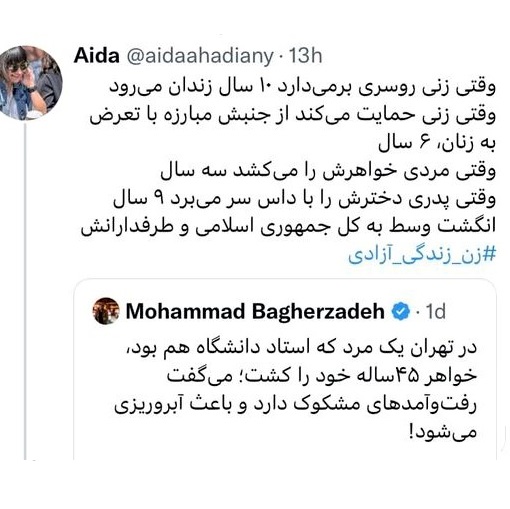

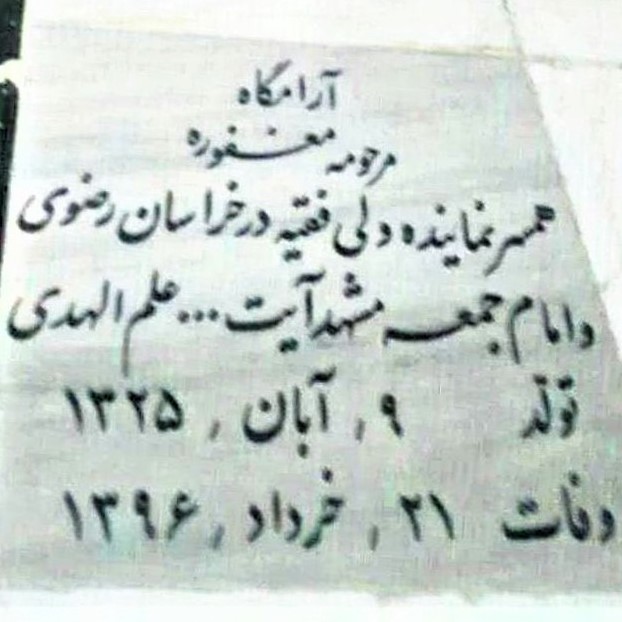
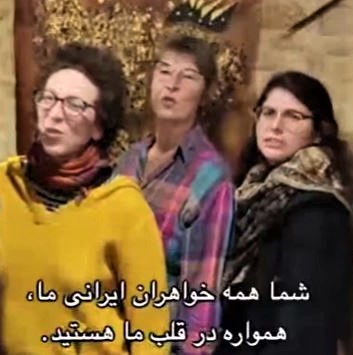

 (1) Images of the day: [Top left] A tweet about Iran's misogynistic justice system (see the next item below). [Top center] Iran's IRGC to EU: "Did you call me a terrorist?" [Top right] Iran's Islamic regime claims it puts women on a pedestal, giving them higher stature than Western women: Yet, this is the gravestone of the wife of a prominent cleric in Mashhad. The text identifies her only as the wife of Ayatollah Alamolhoda. Her own name is nowhere to be seen! [Bottom left] With this song, French women express their support for the women of Iran and the #WomanLifeFreedom uprising. [Bottom center] Math puzzle: A farmer owned three square fields, as shown. He later bought the four triangular fields in order to get a fence around the property. What is the total area of his estate? [Bottom right] Impressive architectures: Apartment building in Singapore.
(1) Images of the day: [Top left] A tweet about Iran's misogynistic justice system (see the next item below). [Top center] Iran's IRGC to EU: "Did you call me a terrorist?" [Top right] Iran's Islamic regime claims it puts women on a pedestal, giving them higher stature than Western women: Yet, this is the gravestone of the wife of a prominent cleric in Mashhad. The text identifies her only as the wife of Ayatollah Alamolhoda. Her own name is nowhere to be seen! [Bottom left] With this song, French women express their support for the women of Iran and the #WomanLifeFreedom uprising. [Bottom center] Math puzzle: A farmer owned three square fields, as shown. He later bought the four triangular fields in order to get a fence around the property. What is the total area of his estate? [Bottom right] Impressive architectures: Apartment building in Singapore.
(2) From a tweet by Aida Ahadiany: When a woman takes off her headscarf, she goes to jail for 10 years. If she supports the #MeToo movement, she gets 6 years. A man who killed his sister got 3 years. Another man who beheaded his daughter was sentenced to 9 years. Middle finger to the Islamic Republic and its apologists!
(3) One-liners: Brief news headlines, happenings, memes, and other items of general interest.
- Mass-shooting in Half Moon Bay, California (30 miles south of SF), leaves 7 dead and 1 critically injured.
- Retired FBI official has been charged with money-laundering for taking payments from a Russian oligarch.
- Oscar nominations announced for 2023: A multiverse epic film earned 11 nominations. Here's the full list.
- Still more evidence that Iran's security forces assault innocent passersby on the street without any reason.
- University of California plans expanded outreach at half of the state's community colleges.
- New multi-billion-dollar investment in ChatGPT-maker OpenAI signals Microsoft's intensified AI efforts.
- Misuse of statistics led to a nurse being convicted of serial murders and its proper use exonerated her.
- Hackers can make computers self-destruct by forcing excessive electrical current through the CPU.
- Wi-Fi routers can locate human positions and poses within a room based on signal interference patterns.
- Engineer Godfrey Hounsfield invented the CT Scanner to image the human brain & won a Nobel Prize for it.
- Graphical Facebook memories from Jan. 23 of years past. [Part 1] [Part 2]
(4) Chatbots and the Turing Test: The new generation of chatbots, such as ChatGPT, leave people with the impression that they're chatting with another person. They can also write just about anything, including terms papers. There are news reports that Google believes its highly-profitable search business is threatened by the new chatbots and is considering how to respond to the threat.
(5) The Internet is extremely complex if you look at all the details: To understand it, we should note that it is based on a small set of design choices, viz., a service model, a 4-layer architecture, and the three crucial mechanisms of routing, reliability, and resolution.
(6) Safety risks of QR codes: Writing in Communications of the ACM (Feb. 2023), Google VP Vinton G. Cerf warns that a QR code can take you anywhere, including risky Web sites, given that it contains no human-readable information. This problem amplifies risks already present in URLs. In the latter case, humans may be able to glean info about the site, although the use of look-alike symbols can disguise a Web site's identity.

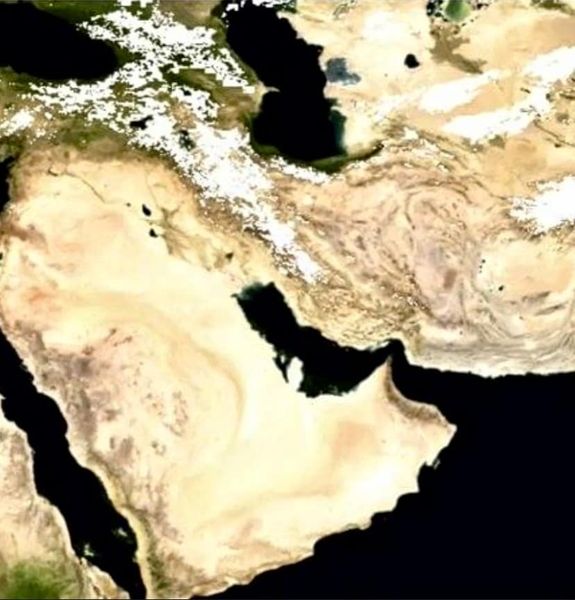
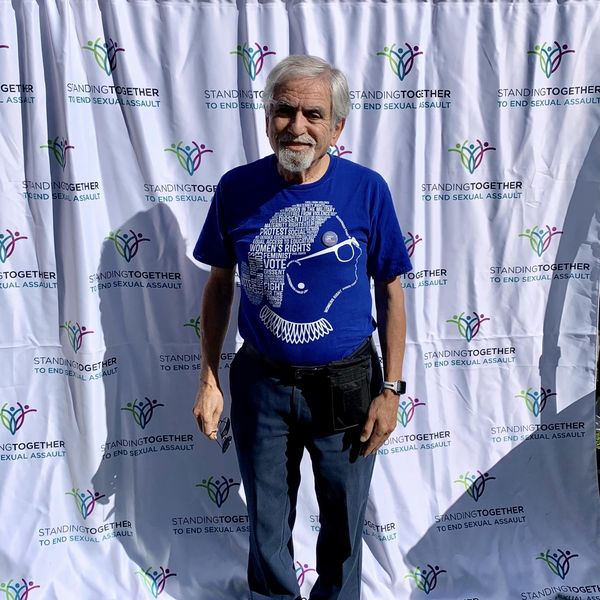


 (1) Images of the day: [Top left] Happy Chinese/lunar new year! A warm welcome to the year of the rabbit. Unfortunately, what was to be a celebration in Los Angeles on the eve of the new year turned deadly by a gunman killing 10 and injuring 10 Asian-Americans at a dance club. This time, politicians aren't even sending thoughts and prayers. Shame on those who build their political careers on contributions from NRA and are thus scared to speak up on gun control! [Top center] Satellite images show that the snow pack in western Iran is quite significant: This is good news for the most-important rivers in the country, which originate on Zagros mountains. [Top right & bottom row] Women's March Santa Barbara (see the next item below).
(1) Images of the day: [Top left] Happy Chinese/lunar new year! A warm welcome to the year of the rabbit. Unfortunately, what was to be a celebration in Los Angeles on the eve of the new year turned deadly by a gunman killing 10 and injuring 10 Asian-Americans at a dance club. This time, politicians aren't even sending thoughts and prayers. Shame on those who build their political careers on contributions from NRA and are thus scared to speak up on gun control! [Top center] Satellite images show that the snow pack in western Iran is quite significant: This is good news for the most-important rivers in the country, which originate on Zagros mountains. [Top right & bottom row] Women's March Santa Barbara (see the next item below).
(2) Women's March Santa Barbara: Today's rally/march was held on the 50th anniversary of the Roe-v.-Wade decision. What would have been an occasion to celebrate turned into a protest event, due to US Supreme Court's recent decision to overturn the historic precedent. Many groups (including Iranians, Afghans, and Ukrainians) were represented at this year's Women's March Santa Barbara, although the crowd was smaller than in prior years' marches. [Video 1] [Video 2] World Dance for Humanity performed several dances at today's event, including one to the Persian song "Shekar-e Ahoo" and one to the English version of the Persian song "Bara-ye" ("For Woman, Life, Liberty").
(3) One-liners: Brief news headlines, happenings, memes, and other items of general interest.
- Ten dead, 10 injured, some critically, in mass-shooting at a dance studio, close to downtown Los Angeles.
- A film on sexual-assault allegations against SCOTUS Justice Brett Kavanaugh premiers at Sundance.
- To prevent Afghan women from studying abroad, the Taliban are denying them graduation certificates.
- Stand-up comedy: Let this foreign comic teach you about the complexities of the English language. [Video]
(4) To infinity and beyond: Astronaut Buzz Aldrin, 93, marries Dr. Anca Faur. Aldrin, the second person to walk on the Moon, is getting married for the fourth time. Faur, 63, has a PhD in chemical engineering.
(5) Those believing in #WomanLifeFreedom should not follow Reza Pahlavi until he explicitly denounces his dad's superstitious religiosity and extreme misogyny, the latter evident in this interview with Barbara Walters, in the presence of his wife, who can only offer an awkward smile.
(6) I believe President Biden when he says he was unaware of the presence of classified documents in his various homes and offices: But, for goodness' sake, how can such sloppy people rise to high positions of power? I won't be surprised if Russian and Chinese spies start targeting high-level US officials' homes to get at US government secrets (if they haven't already).


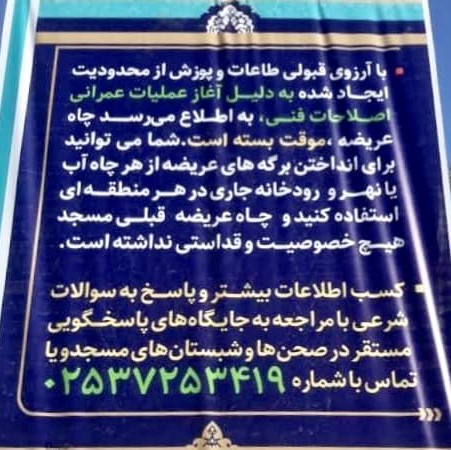 (1) Images of the day: [Left & Center] Beautiful sunny day in Santa Barbara allowed me to take a long walk on Stearns Wharf & East Beach. City crews and volunteers are busy clearing the debris at Santa Barbara beaches. The extended rainstorms did much damage to the area beaches, especially in Carpinteria, where debris flows in creeks extended all the way to the ocean. [Right] The wishing well is full (see the next item below).
(1) Images of the day: [Left & Center] Beautiful sunny day in Santa Barbara allowed me to take a long walk on Stearns Wharf & East Beach. City crews and volunteers are busy clearing the debris at Santa Barbara beaches. The extended rainstorms did much damage to the area beaches, especially in Carpinteria, where debris flows in creeks extended all the way to the ocean. [Right] The wishing well is full (see the next item below).
(2) Like writing letters to Santa Claus: The well in the city of Qom, where Imam Zaman is allegedly hiding, is brimming with prayers and wish lists that some Muslim believers address to their missing Imam. There are also other wishing wells in mosques across Iran. This banner informs believers that a mosque's wishing well is full and needs dredging. While the well is closed for maintenance, people can throw their prayers and letters into any well, stream, or river, and it will definitely reach the intended target!
(3) Remember floppy disks and VHS tapes? Fax will soon be going the same way. UK communications regulator Ofcom proposes ending the requirement for providers to support fax services.
(4) One-liners: Brief news headlines, happenings, memes, and other items of general interest.
- Tensions at the US Supreme Court: The justices are showing impatience & frustration with one another.
- A sleep-deprived Masih Alinejad, who collapsed on stage after a panel discussion, is reportedly okay.
- Dorothy Hodgkin, discoverer of vitamin B12's structure, was the 3rd women to win a Chemistry Nobel Prize.
- Anonymous: "Having empty pockets is no fun, but even worse is having an empty brain or an empty heart."
- Persian music: A wonderful instrumental rendition of "Bahar-e Delneshin" by a very young boy.
(5) The golden age of Hollywood: If you talk to long-time Santa Barbara residents, they'd tell you about their fond memories when they encountered film crews and film sets everywhere they went. During the golden age of Hollywood (up to the early 1960s), Santa Barbara and Ventura Counties provided popular filming locations, due to their natural beauty, geographic diversity, and proximity to Hollywood. Filmmakers and actors liked the idea of going on location, while also sleeping in their own beds! Then it became too expensive to film in California and filming locations moved to other states and, more recently, to Canada. Now, some locals are working hard to bring filmmaking back to our area. A fascinating story, with photos.
(6) Historical memory: In this age of Internet & social media, one cannot sweep his/her past actions and statements under the rug, although many do switch positions, thinking that their past is well-hidden and undiscoverable under tons of content. It is certainly okay to express regrets for misguided positions before taking new ones, but it is not acceptable to switch positions without any acknowledgment of past mistakes.
Two years ago, Narges Bajogli claimed that Iran's Islamic Revolutionary Guards Corps is anti-war and is working to fix misogynistic laws. Oh, really. So, how did your peace-loving, pro-women IRGC turn into an international terrorist group that also fights women's-rights protesters inside the country?
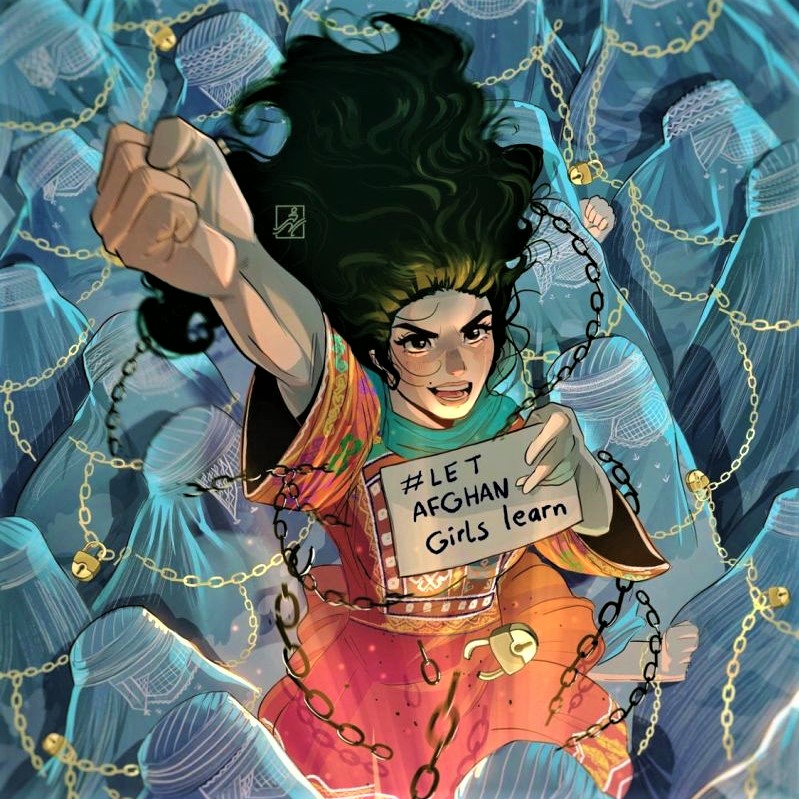

 (1) Images of the day: [Left] Meme of the day: The plight of Afghan girls & women is inseparable from Iranian women's struggle for their rights. [Center] Cachuma Lake isn't the only reservoir to fill up from the recent severe rainstorms in California: The little fountain in my courtyard also runneth over! [Right] Buddies: Is anyone else disgusted with the seemingly close friendship between Marjorie Taylor Green (of QAnon & "Jewish Space Lasers" fame) and Kevin McCarthy, the new US House Speaker?
(1) Images of the day: [Left] Meme of the day: The plight of Afghan girls & women is inseparable from Iranian women's struggle for their rights. [Center] Cachuma Lake isn't the only reservoir to fill up from the recent severe rainstorms in California: The little fountain in my courtyard also runneth over! [Right] Buddies: Is anyone else disgusted with the seemingly close friendship between Marjorie Taylor Green (of QAnon & "Jewish Space Lasers" fame) and Kevin McCarthy, the new US House Speaker?
(2) EU's mandate to use USB-C chargers for all portable electronic devices takes hold in 2024 (in 2026, for laptop computers): Several US Senators have pushed for similar legislation, so far to no avail.
(3) Today's Univ. of California briefing on the impact of the CHIPS and Science Act: US universities and industrial firms are positioning themselves to take advantage of $52 billion R&D funds from the recently-enacted legislation dubbed "Creating Helpful Incentives to Produce Semiconductors (CHIPS) and Science Act." The bulk of the funds will target microelectronics manufacturing and related infrastructure, but research-funding entities will also get a share. [Table: Funding highlights]
(4) One-liners: Brief news headlines, happenings, memes, and other items of general interest.
- European Parliament asks EU to designate Iran's Islamic Revolutionary Guards Corps a terrorist group.
- Microsoft and Amazon are cutting thousands of jobs each: Tough times for workers in the Seattle area!
- Man charged with murdering his wife Google-searched "Ten ways to dispose of a dead body."
- Goleta police arrests two suspects (having Iranian-sounding names) with 20 stolen catalytic converters.
- New York City, home to 23 million people and host to millions of tourists, to be opened up to gambling.
- DeepMind AI enhances a matrix-multiplication algorithm that hadn't been improved in more than 50 years.
- Mars meteorite that crashed to Earth in 2011 is found to contain diverse organic compounds.
- Solar-cell efficiency reaches 30%: Egg-crate-shaped nanostructure boosts photon-to-electron conversion.
- Mr. Haloo speaks to Reza Pahlavi about despicable acts of some of his followers, the "Shahollahis."
- Persian piano: The song "Eshgh" ("Love"), played in 2019 by the recently deceased Saeed Deihimi. RIP.
(5) David Crosby dead at 81: The legendary singer/guitarist/songwriter helped found two highly-successful bands, The Byrds and Crosby, Stills, Nash (& Young). [29-minute BBC concert]
(6) Problems of legal liability and ownership in AI: Who should be held responsible if an AI program's actions hurt or financially damage someone? This question, asked for decades, has become urgent with the widespread deployment of AI technology. The complexity of modern AI programs and, at times, lack of transparency in their designs, are parts of the problem, as is the fact that most AI systems are composed of layer-upon-layer of code produced by different entities.
The question of ownership of artifacts created by AI is a more-recent one. In a January 2023 IEEE Spectrum article, Rina Diane Caballar asks the question, "Do you own the code AI helps you create?" A class-action lawsuit brought against GitHub for the way its Copilot tool helps one create new software by automatically suggesting source code from publicly-available sources is likely to set a legal precedent in code-ownership cases. Of course, the ownership question is more general and also applies to art and other artifacts produced by, or with help from, AI.


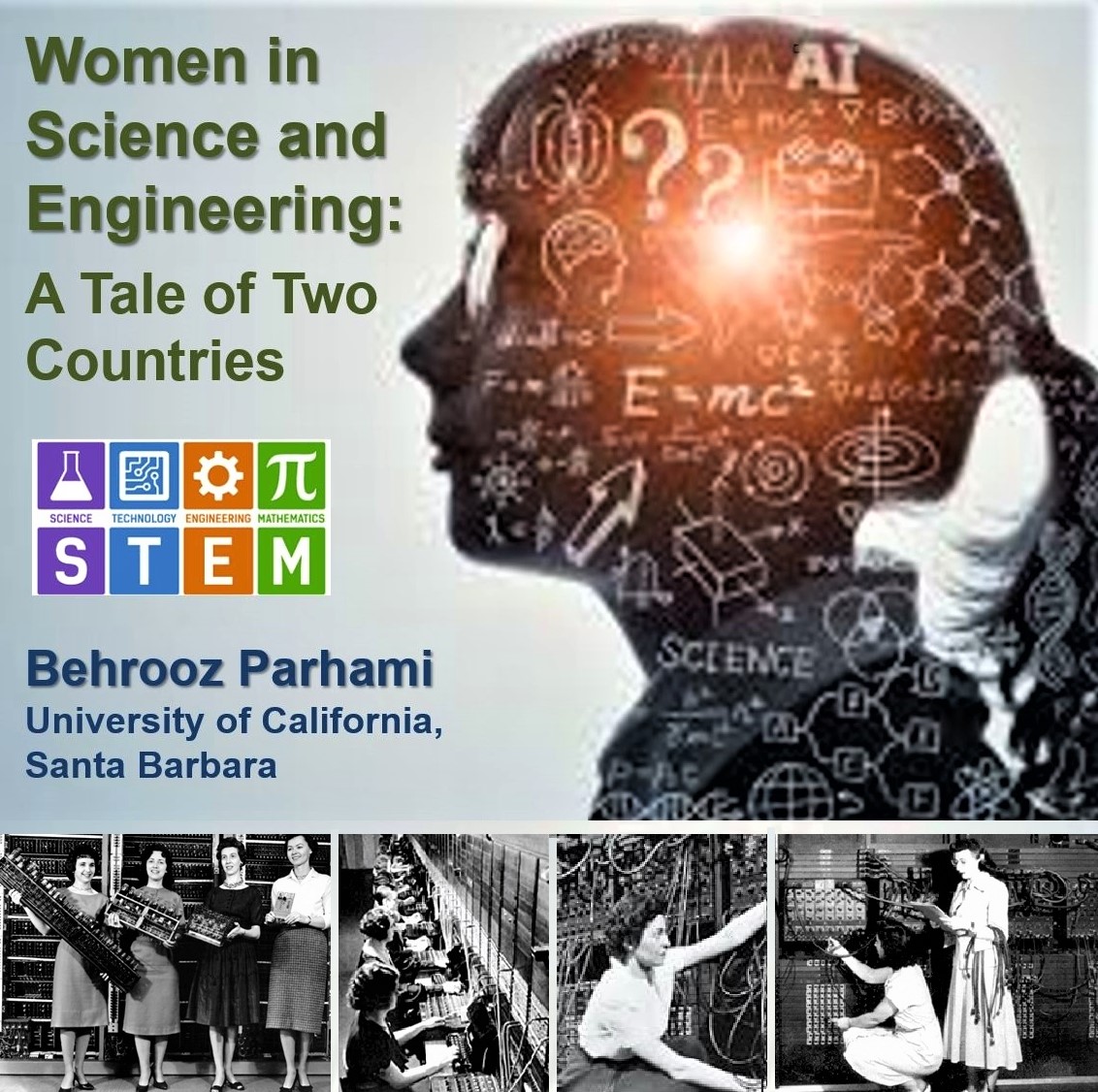
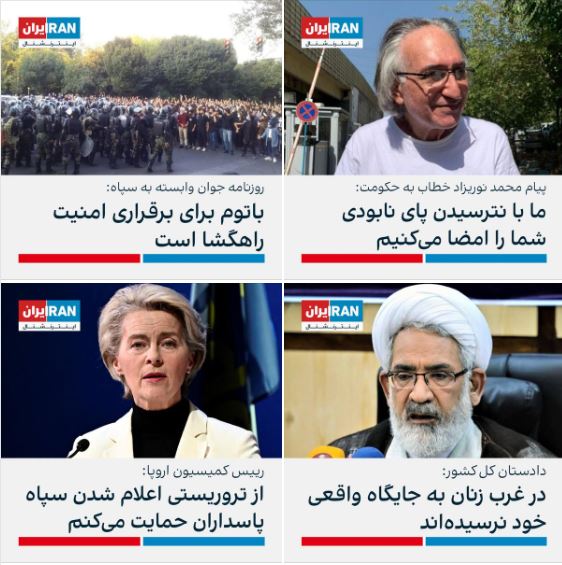

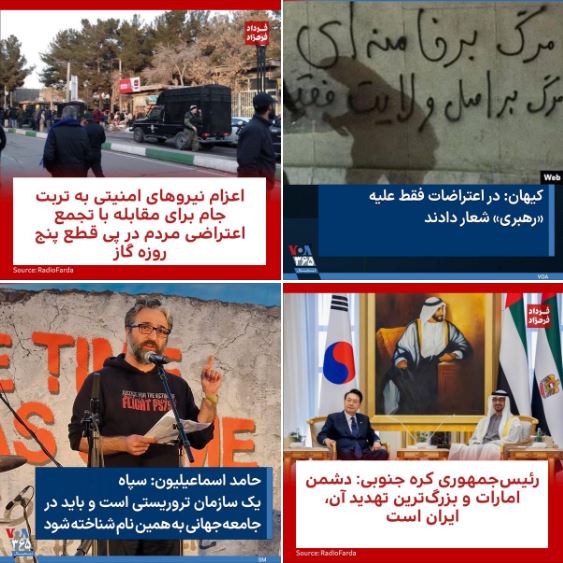 (1) Images of the day: [Top left] Statue of Liberty, Liberty Island, New York City, USA. [Top center] Marvel at the equality involving an infinite sum of Fibonacci numbers and evaluate the square root without using a calculator. [Top right] IEEE Central Coast Section technical talk (see the last item below). [Bottom left] Iran-related memes (see item 2 below). [Bottom center] With a friend like this, Iranian women need no enemies: President Raisi's VP for Women's Affairs says she rejects gender equality, because it would be a loss for women! [Bottom right] More Iran-related memes (see item 3 below).
(1) Images of the day: [Top left] Statue of Liberty, Liberty Island, New York City, USA. [Top center] Marvel at the equality involving an infinite sum of Fibonacci numbers and evaluate the square root without using a calculator. [Top right] IEEE Central Coast Section technical talk (see the last item below). [Bottom left] Iran-related memes (see item 2 below). [Bottom center] With a friend like this, Iranian women need no enemies: President Raisi's VP for Women's Affairs says she rejects gender equality, because it would be a loss for women! [Bottom right] More Iran-related memes (see item 3 below).
(2) Memes of the day on Iran: Violence against protesters endorsed by newspaper affiliated with IRGC; Dissidents will annihilate the Islamic Republic with their courage; European Parliament Chief favors designating the entirety of IRGC a terrorist organization; Iranian prosecutor maintains that Western women are held back.
(3) More memes of the day on Iran: Protests for shortage of heating fuel are met with deployment of security forces; Khamenei is the main target of insults by protesters; calls for designating IRGC a terrorist organization intensify; South Korean President sides with UAE in calling Iran its biggest enemy.
(4) One-liners: Brief news headlines, happenings, memes, and other items of general interest.
- This winter, we have a COVID bump, not a surge (so far): That's good news, but we aren't in the clear yet.
- Tehran has been shut down for several days amid a cold spell, due to a shortage of natural gas. [Meme]
- Kylie Moore-Gilbert reveals that Iran's operatives have been threatening journalists in Australia. [Meme]
- Part of Penthouse magazine's August 1979 interview with Ayatollah Khomeini. [Tweet, with image]
- Stand-up comedy by Sindhu Vee: Indian and Western parenting techniques have zero overlap. [Video]
(5) Iranian women and girls have been suffocating for decades: Twelve years ago, a female student brought tears to the eyes of those present by gathering strength to tell Ayatollah Rafsanjani how she is treated as a woman and how she has lost trust in the government for its lies and deceptions. [Video]
(6) Another nutty election-denier: Republican candidate, who lost an election in New Mexico by a wide margin and claimed election fraud, hired four gunmen to shoot into the homes of four elected officials, all Democrats.
(7) "Platonic: How the Science of Attachment Can Help You Make—and Keep—Friends": This was the title of yesterday's UCLA Semel Institute webinar featuring Dr. Marisa G. Franco (U. Maryland), in conversation with Dr. Elizabeth Laugeson (UCLA).
In her best-selling book, Platonic, Dr. Franco discusses psychology research on how sustaining friendship is a process, not just of behaviors, but of fundamentally reconciling with how we view ourselves. Dr. Franco does not provide a recipe for successful friendships but tackles how people's underlying psychological architecture sabotages or harmonizes with their ability to attract and keep friends. I am reading Dr. Franco's book and will provide more details in a forthcoming book review. [Images]
(8) IEEE Central Coast Section tech talk: Dr. Behrooz Parhami (UCSB, ECE) spoke tonight under the title "Women in Science and Engineering: A Tale of Two Countries." There were ~25 attendees for the in-person talk at Goleta Rusty's Pizza on Calle Real.
Despite poor retention and advancement prospects, as well as female-unfriendly workplaces and corporate policies, women continue to flock to and excel in STEM (science, technology, engineering, mathematics) fields. Based on data and narratives from the United States and Iran, the speaker identified roadblocks to the engagement of women in STEM careers. Using the two countries, different as they are in many respects, as examples is instructive, because this side-by-side comparison shows that undesirable outcomes in the domain of women in STEM fields can and do occur for vastly different reasons. The talk concluded by discussing what each country can learn from the other one in removing roadblocks to women in science and engineering.
[PDF slides]
[IEEE CCS event page]
[Speaker's personal Web page]
[IEEE CCS Technical Talks page]
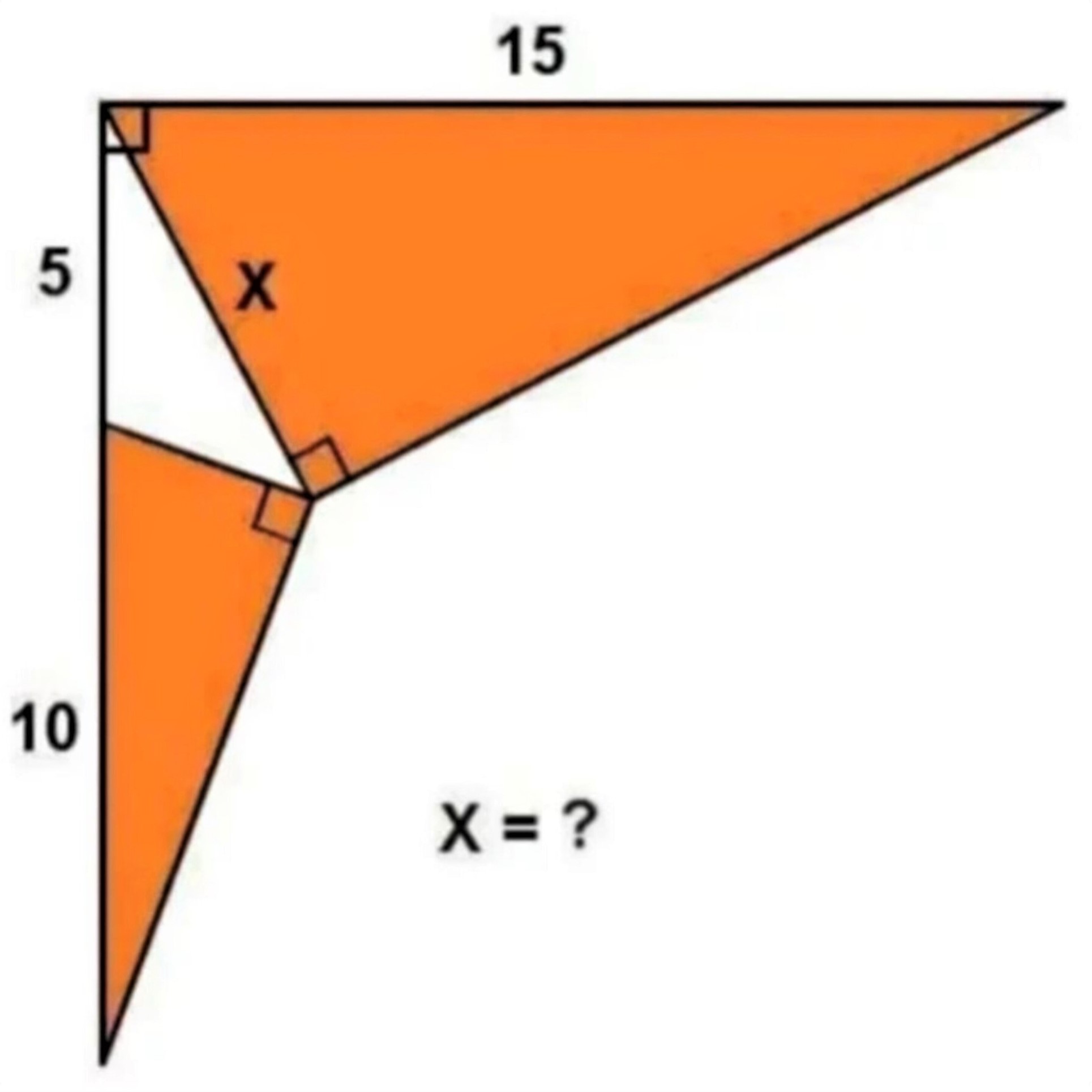

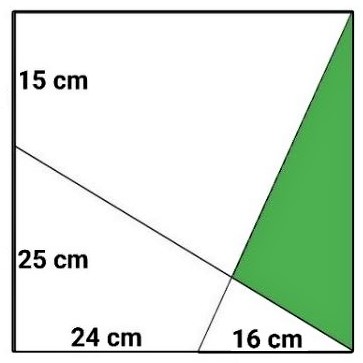

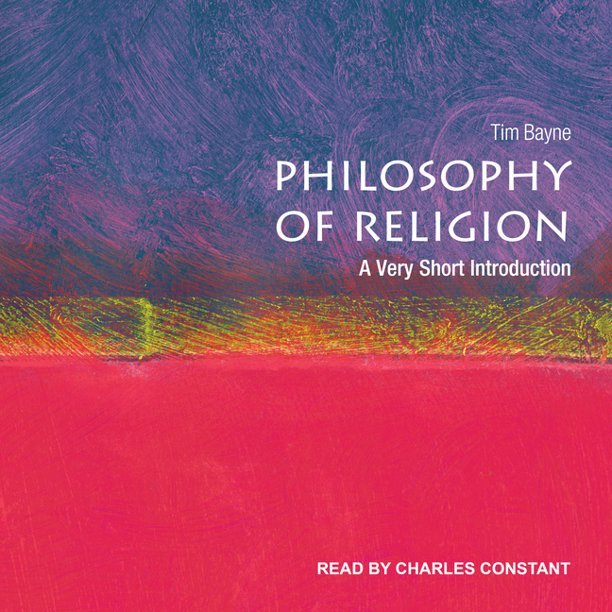
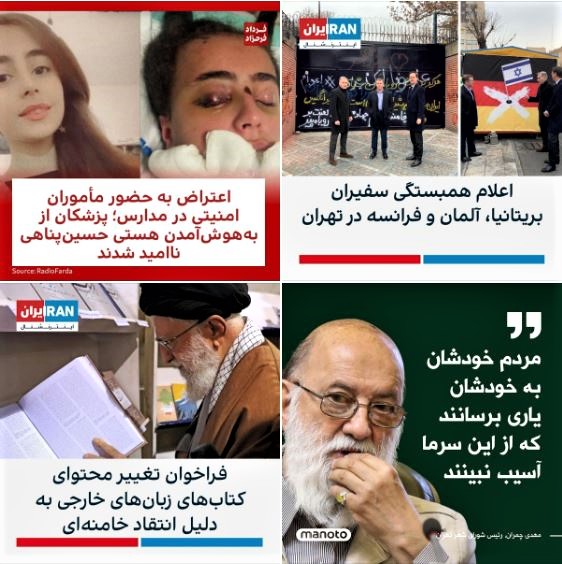 (1) Images of the day: [Top left] Math puzzle: Given the lengths specified in this diagram, find the length x. [Top center] Math puzzle: Given the value of x at the top, evaluate the bottom expression. [Top right] What is the shaded area inside the 40-by-40 square? [Bottom left] Monday's meal-prep night output: Spaghetti, salad, and pita-bread pepperoni pizzas. [Bottom center] Tim Bayne's Philosophy of Religion (see the last item below). [Bottom right] Memes of the day on Iran: A beaten-up school protester who is in coma and unlikely to recover; ambassadors of England, France, and Germany inspecting the defacing of embassy walls in Tehran; Khamenei's criticism of foreign-language textbook leading to a large-scale content revisions; Iranian official telling people they're on their own in the face of severe fuel shortages, as an extreme cold spell covers the entire country.
(1) Images of the day: [Top left] Math puzzle: Given the lengths specified in this diagram, find the length x. [Top center] Math puzzle: Given the value of x at the top, evaluate the bottom expression. [Top right] What is the shaded area inside the 40-by-40 square? [Bottom left] Monday's meal-prep night output: Spaghetti, salad, and pita-bread pepperoni pizzas. [Bottom center] Tim Bayne's Philosophy of Religion (see the last item below). [Bottom right] Memes of the day on Iran: A beaten-up school protester who is in coma and unlikely to recover; ambassadors of England, France, and Germany inspecting the defacing of embassy walls in Tehran; Khamenei's criticism of foreign-language textbook leading to a large-scale content revisions; Iranian official telling people they're on their own in the face of severe fuel shortages, as an extreme cold spell covers the entire country.
(2) Book review: Bayne, Tim, Philosophy of Religion: A Very Short Introduction, unabridged 3-hour audiobook, read by Charles Constant, Tantor Audio, 2018.
[My 5-star review of this book on GoodReads]
This volume in Oxford's valuable "Very Short Introduction" series, currently spanning hundreds of titles and providing excellent entry points into many diverse topics, is quite comprehensive, despite its small size.
Philosophy of religion isn't concerned with religion as a social, cultural, or political phenomenon but with philosophical questions that arise from religion and belief or disbelief in God. There is a great deal of overlap between philosophy of religion and theology, the latter being confined to a particular religious tradition in contrast to the former's generality. Religions are different in their attitudes toward philosophy, some embracing philosophical reflection; several being hostile or ambivalent; others considering themselves philosophical systems rather than religions.
Philosophers who have contributed to discussions on philosophy of religion include:
Christian philosophers: St. Augustine of Hippo [354-430], St. Thomas Aquinas [1225-1274], John Duns Scotus [1266-1308], William of Ockham [1287-1347], Rene Descartes [1596-1650], John Locke [1632-1704], Gottfried Wilhelm Leibniz [1646-1716]
Jewish philosophers: Maimonides [1135-1204], Gersonides [1288-1344], Spinoza [1632-1677]
Muslim philosophers: Al-Kindi [~800-870], Al-Farabi [~870-~950], Al-Ghazali [~1056-1111], Ibn Rushd or Averroes [1126-1198], Ibn Sina or Avicenna [~970-1037]
Some think that religion and philosophy should be kept apart, given that the question of God's existence cannot be settled by philosophical arguments. Bayne considers this view, held, among others, by Immanuel Kant, as counterproductive. "The philosophy of religion may not be able to provide definitive answers to the questions that it asks, but it would not be unreasonable to hope that it can at least illuminate them" [p. 4].
The definition of God as omnipotent and benevolent raises many questions and contradictions. For example, how does one explain evil? Was God not able to eliminate evil? Then, how is He omnipotent? Or, did He not want to eliminate it? The latter option casts doubt on His benevolence. The oft-offered explanation that God created evil as a test for us, so that we can reject it on our own free will, does not resolve the problem. Humans can exercise free will in choosing between multiple good options, so evil isn't really needed for free will to exist and be properly exercised. Additionally, if we need God to explain the universe and its creation, who created God? Considering God an infinite and ever-present being creates its own questions and contradictions.
A related question concerns the nature of faith and its relationship to reason. Faith has been equated with belief, trust, and confidence. Why we believe or trust something or someone may not be based on reason. Faith and reason can coexist harmoniously, especially if faith is viewed as malleable in the face of empirical evidence. When faith and reason lead to contradictory propositions, real conflict of the kind that has afflicted human societies for many centuries begins.
The value of this volume as a gateway into the philosophy of religion is enhanced by Bayne providing references for each chapter as well as an extensive "For Further Reading" section at the end.




 (1) Images of the day: [Top left] Happy Martin Luther King Jr. Day! MLK championed not only social justice but basic human decency as well. Here are a few quotes to honor his birthday. [Top center] World's tallest buildings: Existing and planned. [Top right] Memes of the day on Iran: Former human-rights chief is all smiles, as he defends death by stoning; a student who was killed by a bullet during protests; abject poverty in Sistan & Baluchestan; and FM promising oil/gas shipments to Lebanon & Syria, as Iranians shiver from a serious natural-gas shortage. [Bottom left] The Eiffel Tower displays #FemmeVieLiberte (French for #WomanLifeFreedom). [Bottom right] French and German ambassadors in Tehran join the British ambassador in solidarity, as they inspect the defacing of the British Embassy walls: Those who read Persian, please pay attention to the illiterate and vile language used by Khamenei's foot-soldiers.
(1) Images of the day: [Top left] Happy Martin Luther King Jr. Day! MLK championed not only social justice but basic human decency as well. Here are a few quotes to honor his birthday. [Top center] World's tallest buildings: Existing and planned. [Top right] Memes of the day on Iran: Former human-rights chief is all smiles, as he defends death by stoning; a student who was killed by a bullet during protests; abject poverty in Sistan & Baluchestan; and FM promising oil/gas shipments to Lebanon & Syria, as Iranians shiver from a serious natural-gas shortage. [Bottom left] The Eiffel Tower displays #FemmeVieLiberte (French for #WomanLifeFreedom). [Bottom right] French and German ambassadors in Tehran join the British ambassador in solidarity, as they inspect the defacing of the British Embassy walls: Those who read Persian, please pay attention to the illiterate and vile language used by Khamenei's foot-soldiers.
(2) Quote of the day: "Students don't need a perfect teacher. Students need a happy teacher, who's gonna make them excited to come to school and grow a love for learning." ~ Physicist Richard P. Feynman
(3) Light at the end of the tunnel: Hope everyone is staying warm and dry in California, where some 26 million people are under flood advisories. There is some good news, though. Cachuma Lake in my area is full and has begun to spill for the first time in 12 years. Drought-stricken California is getting some much-needed relief. But I, for one, am looking forward to a string of sunny days coming to us after this rainstorm! [1/14-23 forecast]
(4) One-liners: Brief news headlines, happenings, memes, and other items of general interest.
- Global terrorist activities of Iran's Islamic Revolutionary Guards Corps: Timeline & event descriptions.
- How apologists for Iran's Islamic regime have voiced opposition to designating IRGC a terrorist group.
- Missouri House of Representatives lawmakers adopt stricter women's dress code in their rules package.
- A serial-scammer's web of lies: Tina Duong hired a fake father and 300 guests to fool the groom.
(5) Outdated software on safety-critical systems in the United States: The glitch that led to hundreds of flight cancellations and thousands of flight delays in early January 2023 was due to defective software introduced into the FAA system by outside contractors. The outdated system was already a cause of much frustration for airline pilots, even before the software failure that took it out.
(6) Math puzzle: Consider the linear recurrence relation T(1) = a, T(2) = b, and T(n) = cT(n – 1) + dT(n – 2), with a, b, c, d real constants. Find a general solution to the recurrence. Note that the Fibonacci sequence F(n) is a special case of T(n) with a = b = c = d = 1, so you can use F(n) to spot-check your answer for T(n).
(7) "Expert" on Iran's state TV: It is justified to kill 10,000 protesters to maintain security. In fact, the Quran tells us that they should be tortured to death, not simply shot.
(8) Message to older men, who still hesitate to support the #WomanLifeFreedom uprising: "You should remember that when this movement triumphs, the winner won't be women, but life." ~ Actor Mohammad Omrani, who advises us to fight not just the external dictator but also the internal one, that is, antiquated patriarchal beliefs that religions have instilled in us
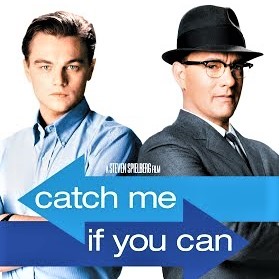

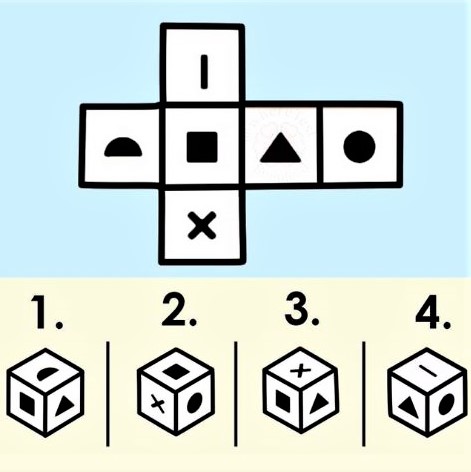

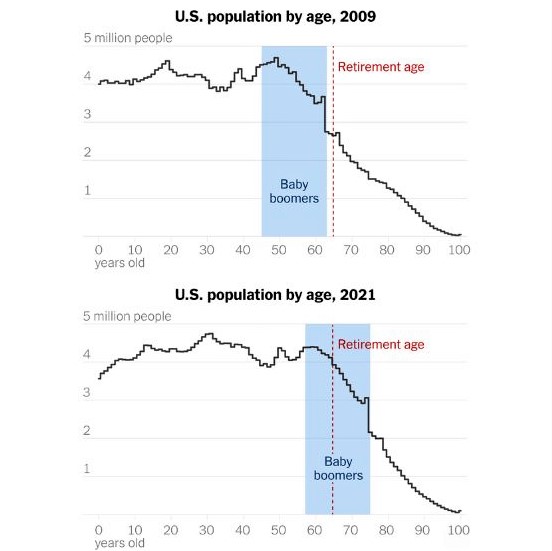
 (1) Images of the day: [Top left] "Catch Me If You Can" (see the next item below). [Top center] Malcolm Gladwell's The Bomber Mafia (see the last item below). [Top right] Visual puzzle: Which of the four cubes can result from folding the top pattern? [Bottom left] A few memes about Iran, the Islamic regime's brutality, spirited resistance by women, and stone-age thinking by mullahs, including blaming women with improper hijabs for dearth of rain and appeal to "maddah"s instead of specialists to solve socioeconomic problems. [Bottom center] NYT chart: US population distribution (see item 3 below). [Bottom right] 3D street art.
(1) Images of the day: [Top left] "Catch Me If You Can" (see the next item below). [Top center] Malcolm Gladwell's The Bomber Mafia (see the last item below). [Top right] Visual puzzle: Which of the four cubes can result from folding the top pattern? [Bottom left] A few memes about Iran, the Islamic regime's brutality, spirited resistance by women, and stone-age thinking by mullahs, including blaming women with improper hijabs for dearth of rain and appeal to "maddah"s instead of specialists to solve socioeconomic problems. [Bottom center] NYT chart: US population distribution (see item 3 below). [Bottom right] 3D street art.
(2) "Catch Me If You Can": This was the title of a 2002 Steven Spielberg movie, with Leonardo Dicaprio in the title role, Frank, a skilled forger who passed himself as a doctor, lawyer, and pilot, reveling in being pursued by an obsessed FBI agent (played by Tom Hanks) and evading him at every turn. Well, that was semi-fiction. Now, Congressman George Santos gives us a real-life version that puts Frank to shame. He constructed a fictional biography for himself and had a private company & a fundraising PAC, both of which used the same Florida address. He will definitely go down for violating campaign-finance laws.
(3) US population distribution by age: The boomers were in their 50s and early 60s when the economy began to emerge from the Great Recession. Today, nearly all of them are in their 60s and 70s, and well over half are past the traditional retirement age of 65. Some plan to keep working into their 70s or beyond.
(4) One-liners: Brief news headlines, happenings, memes, and other items of general interest.
- Five days left to a showdown in Congress: The US will reach its debt limit on January 19!
- For the first time in 12 years, Santa Barbara County's Cachuma Lake is full: It is expected to spill today.
- Utah's Great Salt Lake could be gone by 2028 if water inflows aren't restored, according to Science journal.
- Iranians are taking down names of judges who sign street protesters' execution orders for future prosecution.
(5) Yesterday was Friday the 13th, triggering this Facebook memory from Jan. 13, 2017: This year, the scariest day isn't Friday the 13th, but Friday the 20th (Trump's inauguration day).
(6) Book review: Gladwell, Malcolm, The Bomber Mafia: A Dream, a Temptation, and the Longest Night of the Second World War, unabridged 5-hour audiobook, read by the author, Pushkin Industries, 2021.
[My 4-star review of this book on GoodReads]
Malcolm Gladwell is known for his best-selling books on social psychology. This book is different, although, like most modern tales, it does intersect with social psychology. It tells the story of how air-combat technology developed following World War I, which saw fighter planes and bombers used toward its end. From the first deployment of airplanes by the US Army (there was no Air Force at the time), air combat was seen as the future of modern warfare.
The book title's "Bomber Mafia" refers to a group of about a dozen well-meaning veteran pilots from World War I, who considered strategic/precision air warfare a more humane way of fighting wars, in comparison with bloody trench combat, which was dominant in World War I. Targeting an enemy's critical military and associated ammunitions and supplies factories would curtail its ability to fight, thus winning the war with a fairly small number of casualties, their thinking went.
Things didn't quite go according to this prediction, but air combat did play an outsize role in World War II and all the wars since. As we look to modern wars, including the one now raging in Ukraine, we see that bombing campaigns, both via conventional aircraft and through the use of missiles & armed drones, inflict major civilian casualties. And, of course, there was nothing strategic or precise about dropping two atomic bombs on Hiroshima & Nagasaki or carpet bombings with napalm in Japan, Korea, and Vietnam! Gladwell's description of how napalm was first tested on Harvard University's soccer field and later by demolishing mock-ups of Japanese villages on military installations is particularly gripping.
During early stages of World War II, fighter planes and bombers were used quite successfully by allied forces, given the compactness of the conflict zone in Europe. Later, when the war expanded to the Pacific theater against the Japanese, the US had a major problem. Bomber planes at the time had a maximum range of 2000 miles, which meant they could reach targets 1000 miles away. Japan was significantly further from the US or allied countries in South Asia. In short order, a super-fortress bomber with a range of 3000 miles was under development, which, combined with the offensive to take over the Japan-controlled Mariana Islands, provided the means of attacking Japan from the air.
Gladwell discusses at length the capabilities of Norden Bomb Sight, an analog control system developed single-handedly by Carl L. Norden. The device made adjustments for speed, altitude, wind, and rotation of the Earth, allowing precise bombardment of critical targets from high above. When applied to bombing campaigns against Japan, however, the Norden Bomb Sight proved less successful, forcing the US back to the strategy of indiscriminate bombing of Tokyo. In the most-destructive bombing raid in history, 279 Boeing B-29 super-fortress bombers flattened much of eastern Tokyo, killing over 100,000 civilians by some estimates.
Modern digital computers added significant capabilities for precise targeting from the air. Additional leaps forward are being provided with advanced sensing and navigation technologies, driven by AI. In the end, it seems, the Bomber Mafia have been proven right in their predictions. But, needless to say, these advances have not eased our worries about improper use of deadly force in conducting wars. Technology has provided many answers, but humans may not be asking the right questions.


 (1) Book review: Zinn, Howard, A People's History of the United States: 1492—Present, unabridged 34-hour audiobook, read by Jeff Zinn, Harper Audio, 2009 (original first-edition hard-cover published in 1980).
(1) Book review: Zinn, Howard, A People's History of the United States: 1492—Present, unabridged 34-hour audiobook, read by Jeff Zinn, Harper Audio, 2009 (original first-edition hard-cover published in 1980).
[My 4-star review of this book on GoodReads]
I first read this important book more than a decade ago. Unfortunately, I was unable to find the exact dates of reading the book or the notes I usually take as I read, so I decided to re-examine the book for the sole purpose of writing a brief review. I was motivated in my re-examination in part by coming across Roxanne Dunbar-Ortiz's An Indigenous Peoples' History of the United States (2014), one of the many alternative histories inspired by Zinn's work.
My diary notes indicate that on December 19, 2010, I watched "The People Speak," a documentary film based on Zinn's book, in which top performers (Benjamin Bratt, Don Cheadle, Matt Damon, Morgan Freeman, Danny Glover, Sandra Oh, Sean Penn, David Strathairn, Marisa Tomei, and others) recreate the voices of American history's most eloquent dissenters who are by and large excluded from the traditional history books.
Zinn's book has been criticized for reading more like sociology than history. Well, this is precisely Zinn's intention! He is essentially redefining history to include ordinary people and social structures, not just what the elites (kings, generals, politicians, business tycoons) thought and did. For Zinn, people's movements are more important than governments and national glorification, manifested in the willingness to go to war.
As an example of how history can be viewed differently, the arrival of Columbus in America and the events that ensued are usually described from the viewpoint of European settlers, with almost no attention paid to what the Native Americans felt or experienced. Stories of slavery can similarly be augmented by including the perspectives of ordinary people and slaves, rather than focusing only on politicians and other powerful people, many of whom owned slaves.
Howard Zinn discussed his magnum opus in this 58-minute "Booknotes" program on CSPAN in Jan. 2000.
(2) Book review: Dunbar-Ortiz, Roxanne, An Indigenous Peoples' History of the United States, unabridged 10-hour audiobook, read by Laural Merlington, Tantor Audio, 2014.
[My 4-star review of this book on GoodReads]
History, they say, is written by the victors, so it ignores or demonizes the "losers." It's even worse. The powerful dictate how historical narratives are constructed. Much of historical records focus on kings, generals, and politicians, telling us little about how ordinary people lived or what occupied them in various eras. More than a decade ago, I read Howard Zinn's A People's History of the United States. Since my original notes were lost, I went back to this important book, for the sole purpose of writing a GoodReads review.
Despite very-positive reviews received, in my opinion, Dunbar-Ortiz's book isn't as compelling as Zinn's. It presents an important viewpoint for sure, but it goes too far in ignoring all but the indigenous peoples' experiences of how the United States came about and prospered. Repeated use of the words "genocide" and "extermination" makes the book a hard sell to white North Americans, who would benefit most from learning about how our nation's prosperity was built on the backs of the continent's original inhabitants, much like it was built through the exploitation of African-Americans.
European settlers of North America adopted the old continent's traditions and laws, among them the "doctrine of discovery," under which when a nation discovers land, it acquires rights on that land. The doctrine was used to legitimize the colonization of lands outside Europe, ignoring the fact that many such lands were already settled and had sizable populations. In the case of the United States, ancestors of Native Americans settled here tens of thousands of years ago, as they moved eastward and then southward from Asia. The land was truly uninhabited at the time, so, it is obvious that they had rights according to the same doctrine of discovery used by European settlers to colonize their lands.
My view that Dunbar-Ortiz might have gone too far should not be interpreted as indifference to the suffering inflicted on Native-Americans by white settlers. White settlers were given not only free reign to drive out the land's original inhabitants, who were called "savages," but were encouraged and rewarded for torching villages and killing men, women, and children. At worst, authorities instituted programs to buy skulls and other body parts of Native-Americans from settlers and, at best, they simply looked the other way, occupying themselves with the affairs of the East Coast, as atrocities took place to their west.
Over time, the viewpoint that "the only good Indian is a dead Indian" (a statement attributed to President Andrew Jackson) was replaced by a desire to return some land to Native-Americans, allowing them to live independently and by their own time-honored traditions. Accordingly, the 1851 Indian Appropriations Act was passed to create a collection of Native-American reservations. Unfortunately, over the past half-century, the management of these reservations fell prey to corporate greed, which nullified much of the original intent. Gambling casinos mushroomed to generate income, little of which was kept and spent on the reservations, and traditions fell by the wayside.

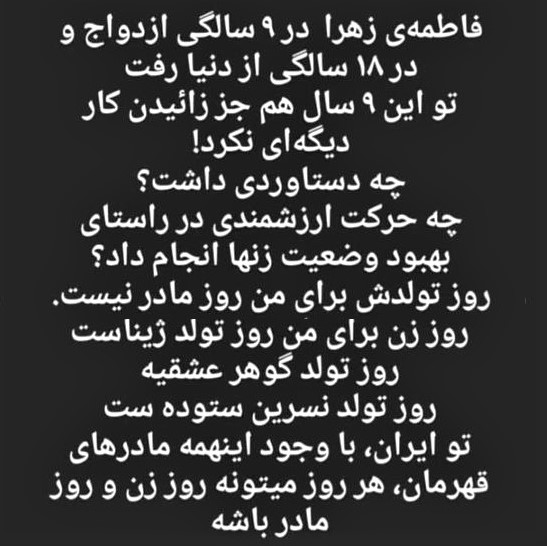



 (1) Images of the day: [Top left] The young Iranian woman who lost one eye when security forces shot her in the face, thinks that she will see the day she has been dreaming of. [Top center] An Iranian woman's thoughts on Mothers' Day and Women's Day (see the last item below). [Top right] Furor over Charlie Hebdo cartoons (see the next item below). [Bottom left] Multicolored leaves, photographed during this afternoon's walk. [Bottom center] Flooded neighborhood in Merced, California: Seventeen have died so far, including a 5-year-old who was swept out of his mother's arms and is presumed dead. [Bottom right] Sunset over Goleta's Devereux Slough, photographed near the end of my walk this afternoon.
(1) Images of the day: [Top left] The young Iranian woman who lost one eye when security forces shot her in the face, thinks that she will see the day she has been dreaming of. [Top center] An Iranian woman's thoughts on Mothers' Day and Women's Day (see the last item below). [Top right] Furor over Charlie Hebdo cartoons (see the next item below). [Bottom left] Multicolored leaves, photographed during this afternoon's walk. [Bottom center] Flooded neighborhood in Merced, California: Seventeen have died so far, including a 5-year-old who was swept out of his mother's arms and is presumed dead. [Bottom right] Sunset over Goleta's Devereux Slough, photographed near the end of my walk this afternoon.
(2) Iran's Commander-in-Chief of Islamic Revolutionary Guards Corps has publicly threatened the French weekly Charlie Hebdo with revenge over the publication of Khamenei cartoons: He was clearly signaling terrorist attacks, because he said "you can arrest the revenge-takers, but the dead will not come back." What more do Western countries need to declare the entire IRGC, and not just its Quds Force, a terrorist entity?
(3)Immigrants and the US tech industry: A study covering the period 1990-2016 finds:
- Immigrants account for a quarter of STEM workers.
- Immigrants constitute 16% of inventors, producing a quarter of all patents.
- Immigrants are responsible for 36% of innovations.
(4) Canada bans Iranian regime officials & their family members: Those already in Canada will be expelled.
(5) SoCalGas customers have been warned about potential doubling or tripling of January bills: The cold snap has delivered a double-whammy. First, the high demand has affected market prices. Second, high usage will push many customers to the upper usage tiers, with significantly higher per-unit prices. A natural question is why the price of an essential commodity such as natural gas should be controlled by market speculators. We in California are minimally affected by this greed, but those living to our east already have huge heating bills, even without the market shenanigans. Americans deserve answers! [Image of SoCalGas message]
(6) Iran's Minister of Oil, August 2022: Europeans will face a tough winter. Iran has plenty of oil & gas production and can help bridge the supply gap. Iran's Minister of Oil, January 2023: I ask all Iranians to save on gas consumption, wear extra clothing, & use thick curtains. [Tweet, with video]
(7) Final thought for the day (from an Iranian woman): The birthday of Fatima, Prophet Muhammad's daughter, isn't my Mothers' Day or Women's Day! Fatima was married at 9 and died at 18, doing nothing other than bearing children during her short life. I can think of no contribution she made to the well-being of women. Women's Day for me is Zhina/Mahsa Amini's birthday, Gohar Eshghi's birthday, Nasrin Sotoudeh's birthday. With so many role models among Iranian women, every day is Women's Day! Every day is Mothers' Day!


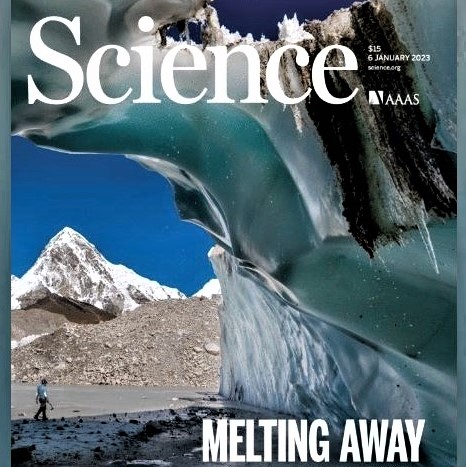 (1) Images of the day: [Left] Giant sequoia nicknamed "Mark Twain": This 1341-year-old tree was cut in 1892 by two men who spent 13 days sawing it. [Center] Believe it or not: This house was not toppled by a storm; it was built upside-down! [Right] Glacial mass loss scales linearly with air temperature increase, according to research published in Science journal.
(1) Images of the day: [Left] Giant sequoia nicknamed "Mark Twain": This 1341-year-old tree was cut in 1892 by two men who spent 13 days sawing it. [Center] Believe it or not: This house was not toppled by a storm; it was built upside-down! [Right] Glacial mass loss scales linearly with air temperature increase, according to research published in Science journal.
(2) Can we be in a drought and drown in floodwater? In Santa Barbara, the last rainstorm elevated Lake Cachuma's water level by 36 feet, changing it from 31% to 75% full. The water level is still rising, and another 4-day rain event is on its way! However, even if Cachuma fills up and spills, as expected, it does not mean the end of our decade-long drought. Drought is a long-term phenomenon. Just as a couple of snowstorms and deep freezes don't mean that global warming is a hoax, you can have one or two years of above-average rainfall and still be well below-average on the scale of decades. We should continue our water saving practices even after Cachuma Lake fills up.
(3) New Yorker cartoon caption of the day: "We've trained the AI art generator so well that it now feels too insecure about its work to make any art."
(4) One-liners: Brief news headlines, happenings, memes, and other items of general interest.
- Failure of FAA computer system grounds all US domestic flights for several hours today.
- The #WomanLifeFreedom uprising is Iran's first-ever political movement with no religious undertones.
- Panel of 2022 science Nobel Laureates engages in a conversation with Zeinab Badawi. [47-minute video]
- Trump Org. CFO gets 5 months in jail: A black man would get a longer sentence for stealing a loaf of bread!
- Nasrin Sotoudeh's 2023 book, Prison Letters, is available on-line for free, to read or download.
- Facebook memory from Jan. 11, 2015: Why "you can't compare apples to oranges" is misleading!
(5) Free PDF book: Iran Academia's Persian edition of Judith Butler's The Force of Nonviolence: An Ethico-Political Bind (2020; translated by Mahsa Assadollahnejad) is available on-line, free of charge.
(6) On Iran's regime insiders jumping ship: Increasingly, high-level officials of Iran's Islamic regime and their family members are fleeing the country and seeking asylum in the West. I have a hard time believing that these people have not already filled their pockets from their special insider status or that they have suddenly grown a conscience, nearly 44 years after usurping power. I wish there were a body that could screen such people to verify their stories and force them to reveal some actionable info about the regime and its inner workings, in order to save future lives. It's just too easy to claim personal hardship and be rewarded with a comfortable life in a free country, something that isn't available to most Iranians! [Persian version]
(7) Alternative facts from President Raisi's VP for women's affairs: "We will publish data on Iranian women's better conditions compared with American women!" [Meme]
(8) The idea of blocking the sun to combat climate change returns: A 2-person start-up company, Make Sunsets, has launched weather balloons filled with reflective sulfur particles into the sky over the coast of Baja California, a first-of-its-kind field test of a climate intervention method known as geoengineering.



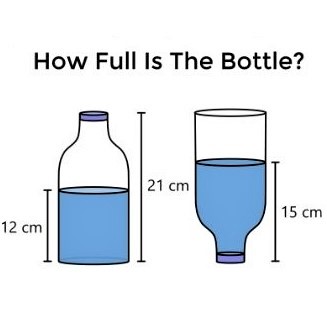

 (1) Images of the day: [Top left] Cartoon of the day: Khamenei serves the tasty Iran cake to Russia and China. [Top center] Dalian Castle Hotel, China. [Top right] Snow sculpture of #MahsaAmini in Fuladshahr, Isfahan, Iran. [Bottom left] Math puzzle: How full is the bottle? [Bottom center] Math puzzle: Find the circle's radius R. [Bottom right] Jonathan Weisman's (((Semitism))) (see the last item below).
(1) Images of the day: [Top left] Cartoon of the day: Khamenei serves the tasty Iran cake to Russia and China. [Top center] Dalian Castle Hotel, China. [Top right] Snow sculpture of #MahsaAmini in Fuladshahr, Isfahan, Iran. [Bottom left] Math puzzle: How full is the bottle? [Bottom center] Math puzzle: Find the circle's radius R. [Bottom right] Jonathan Weisman's (((Semitism))) (see the last item below).
(2) Islamic government is all about brutality and violence: Admission by Iran's Supreme Leader in a speech 22 years ago, when he cited Prophet Mohammad entering Mecca, naming a number of individuals, and ordering that they be killed on sight (no due process, no trial, nothing). [Tweet, with video]
(3) One-liners: Brief news headlines, happenings, memes, and other items of general interest.
- Iran's IRGC Commander threatens revenge against Charlie Hebdo for publishing cartoons of Khamenei.
- Daughter of German journalist Jamshid Sharmahd, on trial in Iran for "Corruption on Earth," asks for help.
- Iranian satirist/poet known as Mr. Haloo is interviewed in London, during a #WomanLifeFreedom rally.
- Classified documents found in former Biden office complicate DOJ's pursuit of Trump's documents case.
- The Golden Globe Awards ceremony was held tonight. Here's a complete list of nominees and winners.
- Heavy rains have stopped for now (until Friday): Paddle-boarding on the streets of Goleta! [Video]
- Creeks in Montecito, to the south of Santa Barbara, are raging at near-overflow levels but holding on.
(4) People think of Elon Musk as the force behind Tesla and Space-X: However, there are other businesses associated with him, including NeuroLink, which is potentially even more impactful than Tesla and Space-X. Musk's neurofactory is vertically integrated, designing and building all the required parts and even planning to do surgical operations for installing brain implants they produce on site. [7-minute video]
(5) Book review: Weisman, Jonathan, (((Semitism))): Being Jewish in America in the Age of Trump, St. Martin's Press, 2018. [My 4-star review of this book on GoodReads]
Jonathan Weisman is an editor with NYT and author of the novel No. 4 Imperial Lane. The triple-parentheses notation has been used by on-line trolls to flag Jews or Jewish-sounding names on social media for additional harassment by other anti-Semites, a sort of anti-Semitic hashtag for crowds who see Jews behind every social, economic, and politica ill.
After decades of the Jewish identity fading into the background, it suddenly became front-and-center, making Jews self-conscious and defensive about their political views, including the strength of their support for Israel. They also had to get a quick education on dealing with on-line trolls, hate e-mails, and defacing of their houses and other belongings. Many went out and bought guns. Jewish journalists were targets of particularly vicious attacks, which were invariably mixed with messages of sexual violence in the case of women. Even though Jews were frequent targets, other non-Christian and non-White groups were also trolled and harassed, both verbally and physically.
This fascinating and informative book, by an author who admits to not having had a Jewish self-identity before the Trump years, consists of the following chapters, sandwiched between an introduction and back-matter, including notes.
1. Complacency: For decades, anti-Semitism existed below the surface in the US, with many Jews living fairly comfortable lives either unaware of it or choosing to ignore it. Incidents rarely made national news, to the extent that people in other countries thought anti-Semitism doesn't exist here.
2. The Israel Deception: The state of Israel and its policies (building settlements on Palestinian lands, in particular) provide a popular refrain among anti-Semites and have also caused divisions among American Jews, with one group calling others fostering lukewarm support for Israel "self-hating Jews."
3. The Unheard Thunder: Anti-Semitism, along with other hate ideologies, bubbled up to the surface, in part as a result of Barack Obama's election to US presidency triggering the alt-right movement and, later, with the rise of Trumpism. The "Jews will not replace us" mantra went ignored by most Jews.
4. Stand Up or Ignore: Jews faced a dilemma in the era of Trump. Some ignored the bullies, in the hopes that they would return to their caves. Others engaged in legal and other actions in response to actual harm, not just to protest. Tribalism gradually dominated liberal, internationalist views.
5. Toward a Collective Response: In this final chapter, the author proposes the unification of American Judaism around the defense of self and other groups who are even more vulnerable. Jews should remember Timothy Snyder's advice that "Life is political, not because the world cares about how you feel, but because the world reacts to what you do."
Whereas all Americans, indeed most world citizens, have been aware of the rise of anti-Semitism and other hate ideologies under Trump, this book provides much-needed details and context for understanding how the ghoul of hatred was unleashed by Trump and Trumpism. It will take decades to put the genie back in the bottle and return to the pre-Trump status-quo, which wasn't an ideal state of affairs by any measure.
One shortcoming of the book is that it fails to mention the anti-Semitism of the left, fueled by its pro-Palestinian and anti-Israeli stance.

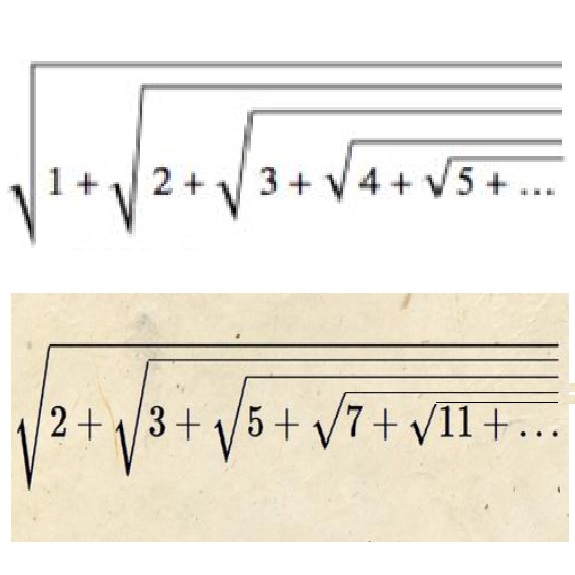
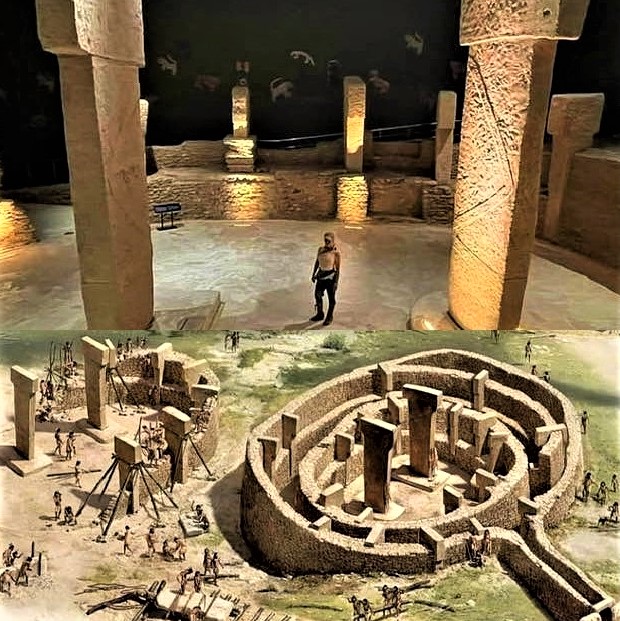
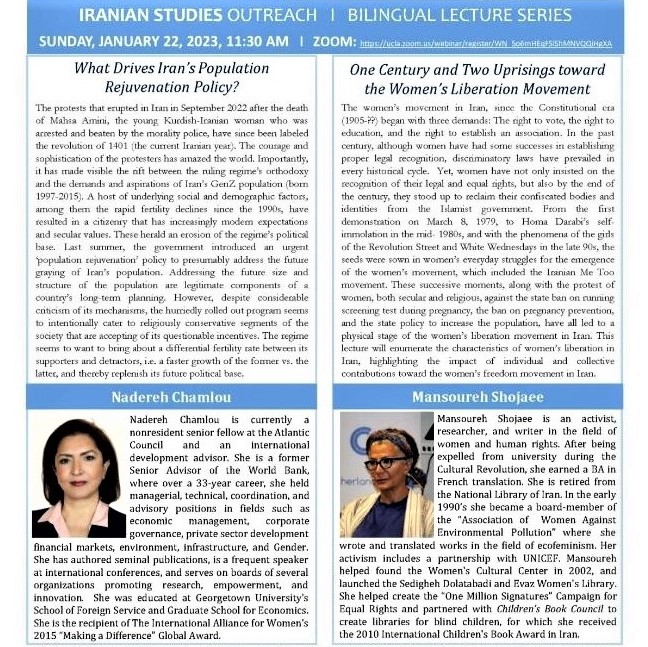
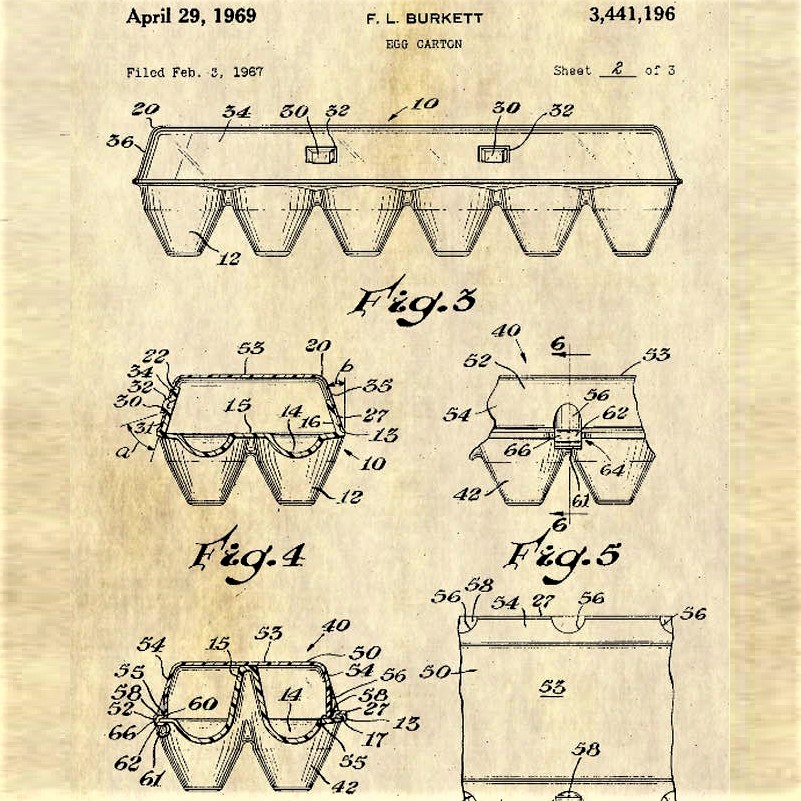
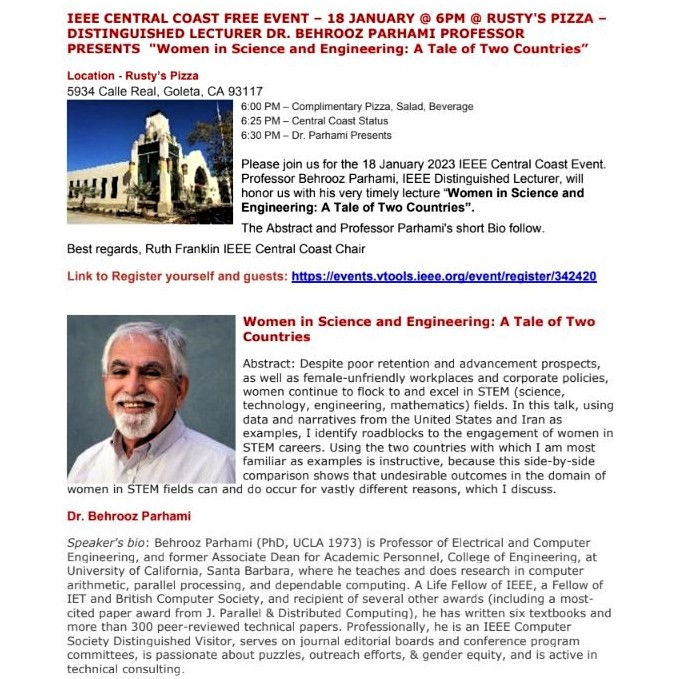 (1) Images of the day: [Top left] The new era of McCarthyism has begun in the US. [Top center] Math puzzle: The nested radical involving all natural numbers, in order, has a value less than 1.76. If we use only prime numbers, the value of the nested radical obviously increases. Show that the latter value is finite and find an upper bound for it. [Top right] Gobekli Tepe in Turkey: The oldest known megalith in the world, at around 11,000 years. [Bottom left] UCLA Bilingual Lectures on Iran (Sunday, Jan. 22, 2023, 11:30 AM PST, in Persian):
Nadereh Chamlou, "What Drives Iran's Population Rejuvenation Policy?"
Mansoureh Shojaee, "One Century and Two Uprisings Toward the Women's Liberation Movement" (Zoom registration). [Bottom center] Egg-carton patent diagrams from 1969. [Bottom right] IEEE Central Coast Section tech talk for January: I will speak on Jan. 18, 2023, under the title "Women in Science and Engineering: A Tale of Two Countries" (6:30 PM, Rusty's Pizza, 5934 Calle Real, Goleta; Registration; PDF slides). Other offerings of this talk are being scheduled.
(1) Images of the day: [Top left] The new era of McCarthyism has begun in the US. [Top center] Math puzzle: The nested radical involving all natural numbers, in order, has a value less than 1.76. If we use only prime numbers, the value of the nested radical obviously increases. Show that the latter value is finite and find an upper bound for it. [Top right] Gobekli Tepe in Turkey: The oldest known megalith in the world, at around 11,000 years. [Bottom left] UCLA Bilingual Lectures on Iran (Sunday, Jan. 22, 2023, 11:30 AM PST, in Persian):
Nadereh Chamlou, "What Drives Iran's Population Rejuvenation Policy?"
Mansoureh Shojaee, "One Century and Two Uprisings Toward the Women's Liberation Movement" (Zoom registration). [Bottom center] Egg-carton patent diagrams from 1969. [Bottom right] IEEE Central Coast Section tech talk for January: I will speak on Jan. 18, 2023, under the title "Women in Science and Engineering: A Tale of Two Countries" (6:30 PM, Rusty's Pizza, 5934 Calle Real, Goleta; Registration; PDF slides). Other offerings of this talk are being scheduled.
(2) Ninety-percent of Californians are under flood watches: More than a dozen deaths have already been reported. High winds and heavy rainfall flooded roads and brought down giant trees in Santa Barbara and Goleta. This morning, the road I usually take to drive into campus was flooded and alternate roads were congested as a result. This entire week will be rainy, except possibly for Wednesday & Thursday. UCSB has cancelled classes for tomorrow and the rest of today.
(3) A primary reason for inflation is outrageously-high corporate profits: Corporations took advantage of people having a bit more money to spend during the pandemic (e.g., due to reduced driving and getting relief checks) to raise the prices of essential goods.
(4) One-liners: Brief news headlines, happenings, memes, and other items of general interest.
- NYT publishes list of Iranians executed or sentenced to death in Islamic regime's protest crackdown.
- Intruders stole e-mail addresses of 200+ million Twitter users and posted them on a hacking forum.
- Columbia U. hires Hillary Clinton as global affairs professor at its School of International and Public Affairs.
- The story of Iran's ongoing revolution, told effectively in a multimedia presentation. [65-minute video]
(5) Five US universities produce 1/8 of tenure-track professors: UC Berkeley, Harvard, Michigan (Ann Arbor), Wisconsin (Madison), Stanford. Eighty-percent of professors earned their PhDs at 20% of universities.
(6) How I spent my winter break: Edward Tian, 22, spent his winter break at a local coffee shop creating GPTZero, an app for quickly and efficiently telling if an essay was written by a human or by AI.
(7) Final thought for the day: Iran's Islamic regime is smearing Western women to cover up its own misogynistic policies. Supreme Leader Khamenei has opined that Iranian women are placed on pedestals, while Western women are suffering! Multiple state-TV programs have featured "experts" who claim Western women cannot advance in their careers unless they submit to sexual demands. These are desperate reactions of a brutal, patriarchal regime to the growing strength of Iran's #MeToo movement and intensifying feminist-led street protests against the mullahs. #WomanLifeFreedom


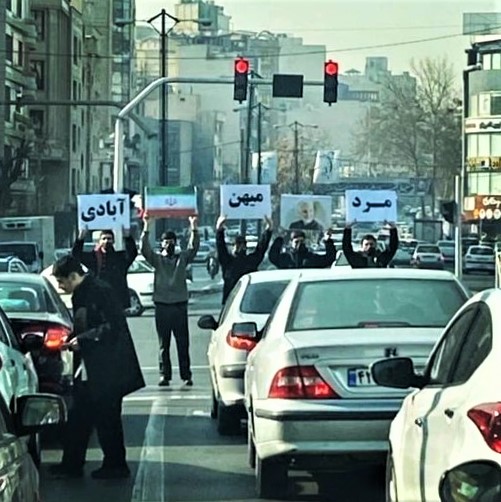


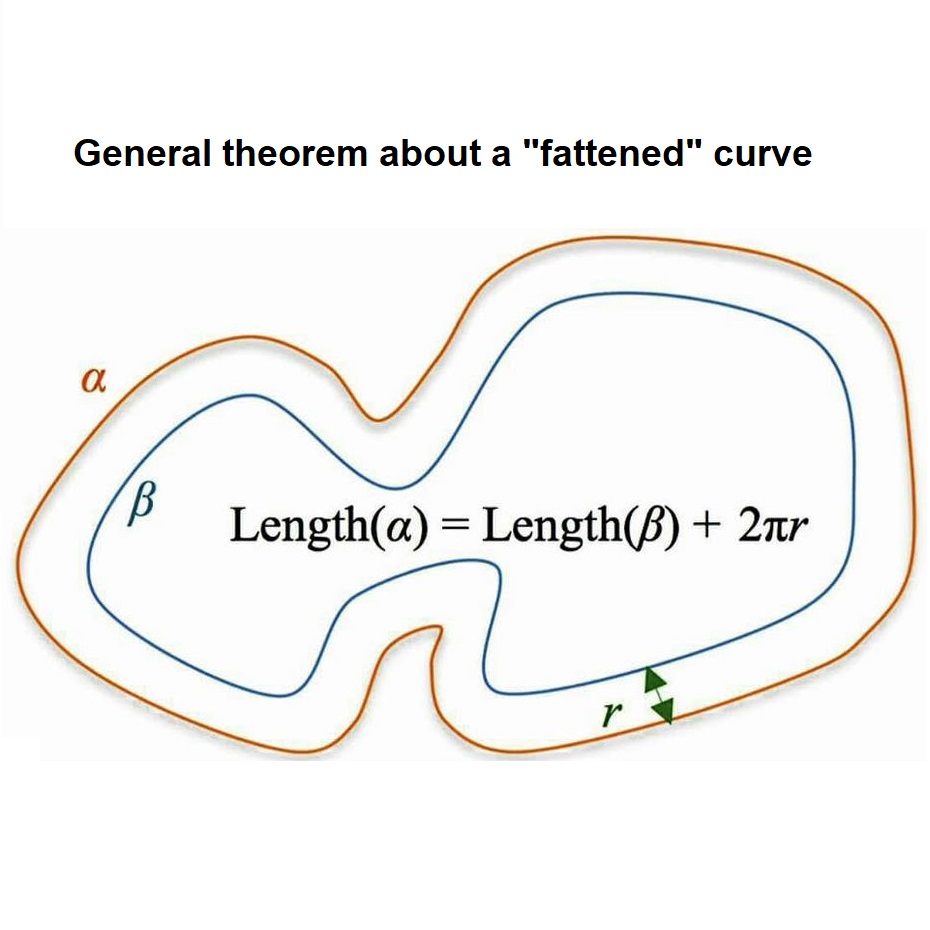 (1) Images of the day: [Top left] Technology allows us to build ever-taller buildings with relatively small footprints: But is this a wise move? [Top center] Abraj Kudai (hotel in Mecca, Saudi Arabia): Seven years in the making, with construction halted multiple times due to financial problems, world's largest hotel features twelve 30-48-story towers, 10,000 rooms, and 70 restaurants. [Top right] Man, Country, Development (see the next item below). [Bottom left] New Yorker cartoon of the day: "Do we have a speaker yet? Do we have a speaker yet? Do we have a speaker yet?" [Bottom center] IranWire cartoon of the day: Instagram rewards Raisi's murderous record and his blocking of Instagram & other social media for Iranian people with a blue tick mark! [Bottom right] Math puzzle: Clearly, if you increase the radius of a circle by r, its perimeter increases by 2πr. Show that, under certain conditions, if you "fatten" any smooth curve by r, its perimeter increases by 2πr.
(1) Images of the day: [Top left] Technology allows us to build ever-taller buildings with relatively small footprints: But is this a wise move? [Top center] Abraj Kudai (hotel in Mecca, Saudi Arabia): Seven years in the making, with construction halted multiple times due to financial problems, world's largest hotel features twelve 30-48-story towers, 10,000 rooms, and 70 restaurants. [Top right] Man, Country, Development (see the next item below). [Bottom left] New Yorker cartoon of the day: "Do we have a speaker yet? Do we have a speaker yet? Do we have a speaker yet?" [Bottom center] IranWire cartoon of the day: Instagram rewards Raisi's murderous record and his blocking of Instagram & other social media for Iranian people with a blue tick mark! [Bottom right] Math puzzle: Clearly, if you increase the radius of a circle by r, its perimeter increases by 2πr. Show that, under certain conditions, if you "fatten" any smooth curve by r, its perimeter increases by 2πr.
(2) Man, Country, Development: While contributions of men in the ongoing uprising in Iran cannot be denied, this slogan is promoted by Iran's brutal Islamic regime and its allies to dilute the focus on women and freedom in #WomanLifeFreedom. It is sort of like White Supremacists in the US chanting "All Lives Matter," which, even though true, is designed to divert attention from the maltreatment of Black Americans. [Persian version]
(3) Brazil has its version of Jan. 6, on Jan. 8: Supporters of former President Jair Bolsonaro, who fled to Florida after losing a run-off election, storm the parliament and supreme court buildings.
(4) Iranian singer/songwriter Parvaz Homay apologizes for performing in a concert honoring Qasem Soleimani: He claims that he and his bandmates were tricked by being told that their performance would be recorded for archiving in a closed session, not in front of an audience. [Tweet, with video]
(5) Marking the 3rd anniversary: Remembering the 176 innocent victims of Ukrainian Airlines Flight PS752 downing on January 8, 2020, by Iran's Islamic regime.
(6) The holiday break is finally over and UCSB classes begin tomorrow amid expected heavy downpours. I will be teaching a graduate course on parallel processing, whose Web site has been updated and is ready to go. Research topics have already been specified for this homework/research-based course, with flipped classes.
(7) UCLA Bilingual Lecture Series on Iran (virtual event): Dr. Saeed Paivandi (U. Lorraine) spoke in Persian today under the title "The Results of Four Decades of Authoritarian Islamization of Education in Iran."
Islamic Republic of Iran has proceeded to Islamicize K-12 education in multiple rounds, since taking over in 1979. Religious education isn't limited to courses labeled as such. In history, in social science, in literature, even in math, Islamic content has been added. As an example, a word problem in math might involve computing the number of attendees at Friday prayers.
Besides adding Islamic content, gender inequity is built into the curricula. Much effort is devoted to justifying inequality between the sexes. Women are rarely depicted in pictures and, when they are, they are shown engaging in what Islamists view as appropriate activities for women: cooking, cleaning, sewing, or taking care of children. When men and women appear in the same picture, they are either segregated or are involved in private/home/family activities. Men & women are not shown together in public or professional settings.
Islamic education tries to crush individuality: Notions of beauty, love, affection, joy, and music are totally missing from textbooks. Children are indoctrinated to suspect or hate "others." The word "enemy" is used liberally to refer to non-Muslims. Until very recently, social media were not mentioned in textbooks. Now, social media and satellite TV channels are mentioned, but in a negative way, warning students of their dangers.
When virtual education became prevalent due to the COVID-19 pandemic, on-line activities increased significantly, providing students with many educational and information resources, from both domestic and international providers. Iran's youth, including school children, have been exposed to alternative lifestyles through the Internet and wonder why they can't live as they like. Iran's Islamic regime views cyberspace as an existential threat and is bent on controlling access to on-line content from abroad.
Ironically, despite Islamists having full control of the Ministry of Education, which dictates curricula and textbooks nationwide, from time to time, regime officials complain about insufficient Islamic content at schools. Clerical opposition to modern schools has a long history. A century ago, conservative clerics and owners of traditional "maktabs" physically attacked modern schools and in many cases burned them to the ground. For example, the trailblazing Roshdieh School in Tabriz was destroyed multiple times.
While Dr. Paivandi's focus was on K-12 education, Islamization in higher education has been discussed and attempted in various forms, but due the relative independence of universities and faculty members, such efforts have been even less successful.
[Selected slides]


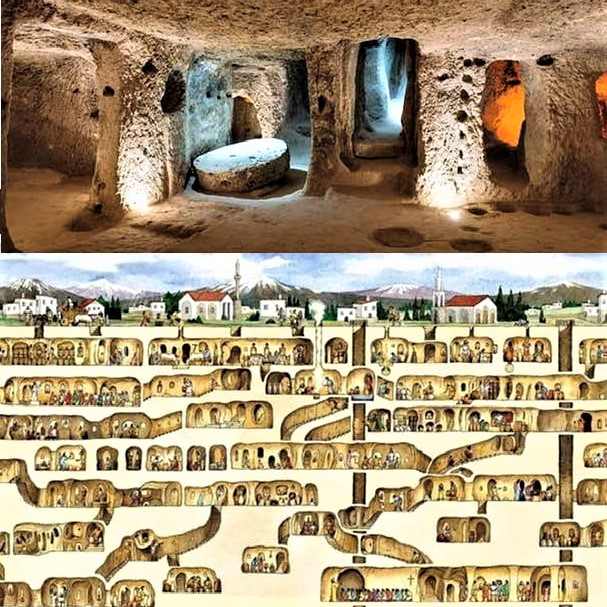

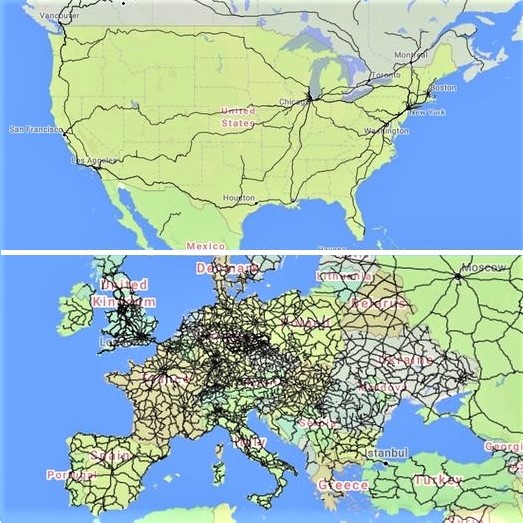
 (1) Images of the day: [Top left] Historic Wikipedia photo depicting Jews of Iran (see the next item below). [Top center] New Yorker cartoon of the day (re Kevin McCarthy): "You've made some headway with the undead, but the creepy-doll caucus still has more demands." [Top right] The city of Derinkuyu once housed 20,000 people in underground tunnels spanning 18 levels. [Bottom left] Amazon's HQ2 in Virginia will feature a walkable ramp, resembling a mountain hike, wrapping around the building. [Bottom center] Passenger trains: The United States vs. Europe. [Bottom right] The double-decker Brent Spence Bridge (see item 3 below).
(1) Images of the day: [Top left] Historic Wikipedia photo depicting Jews of Iran (see the next item below). [Top center] New Yorker cartoon of the day (re Kevin McCarthy): "You've made some headway with the undead, but the creepy-doll caucus still has more demands." [Top right] The city of Derinkuyu once housed 20,000 people in underground tunnels spanning 18 levels. [Bottom left] Amazon's HQ2 in Virginia will feature a walkable ramp, resembling a mountain hike, wrapping around the building. [Bottom center] Passenger trains: The United States vs. Europe. [Bottom right] The double-decker Brent Spence Bridge (see item 3 below).
(2) History of the Jews of Iran: This topic has been on my mind for at least a decade. From time to time, I return to sources that I have studied in the past to see if I can make headway along the path of discovering where my ancestors came from and how they ended up in Iran's Kurdistan region. Here are two key sources.
- A History of Ancient Israel: From the Patriarchs Through the Romans
[My 4-star review]
- Comprehensive History of the Jews of Iran: The Outset of the Diaspora
[My 4-star review]
(3) US infrastructure: The double-decker Brent Spence Bridge, which connects Kentucky to Ohio, has been deteriorating for decades. Some 180,000 vehicles cross it daily and it is responsible for 3% of the national GDP. Finally, President Biden is providing $1.6 billion in federal funds toward the estimated $3.6 billion cost of building a replacement bridge. Kentucky and Ohio will provide $1 billion each.
(4) One-liners: Brief news headlines, happenings, memes, and other items of general interest.
- Britain to declare the entire Islamic Revolutionary Guards Corps, not just its Quds Force, a terrorist group.
- The brutal Islamic regime of Iran executed two more young protesters after sham trials. [Image]
- Kevin McCarthy elected speaker of the US House of Representatives after 4 days and 15 rounds of voting.
- Iran's Supreme Leader Khamenei, addressing a group of women: "Western women are truly suffering."
- Protractor in the toilet: Mathematical explanation for how to use the toilet if it is installed to face Mecca!
- Math humor: Too much "pi" gives you a large circumference!
(5) Second anniversary of the January 6, 2021, attack on the US Capitol: Don't let the clown-show unfolding in the US House of Representatives distract you from remembering & reflecting upon one of the darkest days in US history. Republicans are steadily moving us toward the pre-Civil-War era!
(6) Following Khamenei's lead, who said Western women suffer: "Expert" on Iran's state TV claims that Western women cannot advance to top positions without submitting to sexual demands, even at universities! This is part of the Islamic regime's response to Iran's #MeToo movement. [Tweet, with video]
(7) Some of the opposing views of the late Ayatollah Montazeri which led to his being kicked out from Khomeini's inner circle and confined to house arrest in his final years.
[Video]
(8) Final thought for the day: "Nuclear arms race is like two sworn enemies standing waist-deep in gasoline, one with 3 matches, the other with 5." ~ Carl Sagan
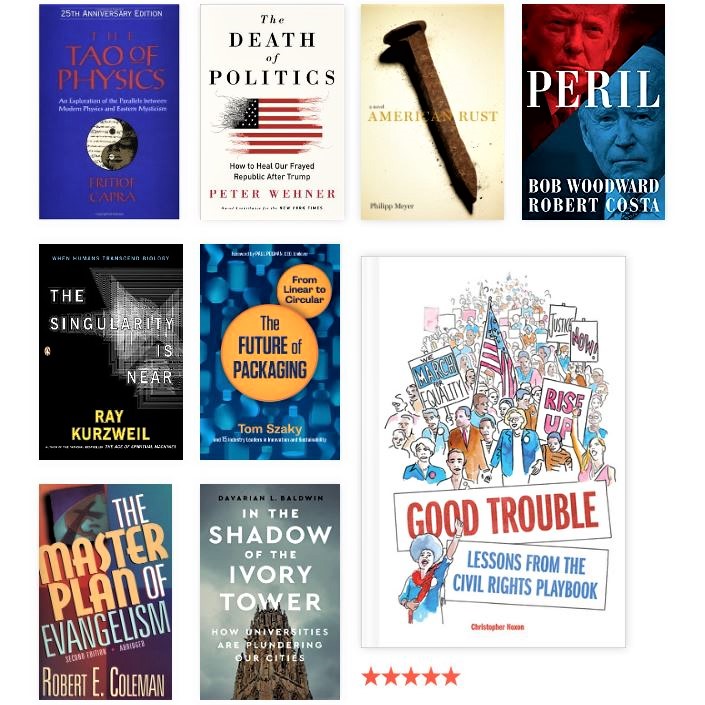
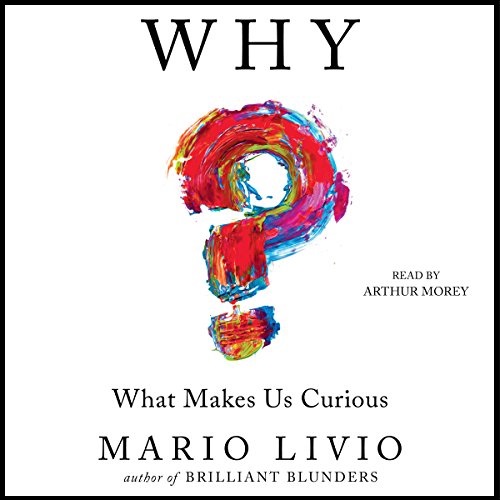
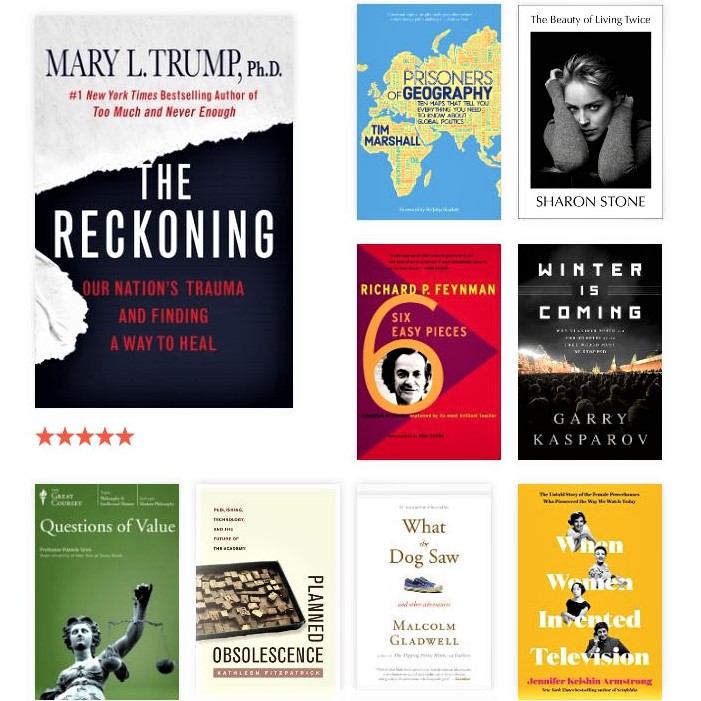
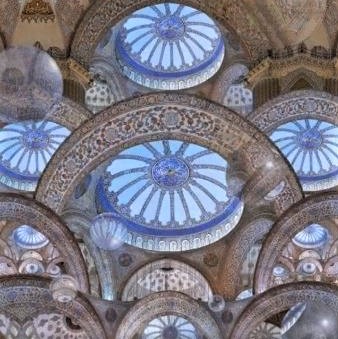

 (1) Images of the day: [Top left & right] Cover images of some of the 122 books I read in 2022 (from my GoodReads annual report). [Top center] Mario Livio's Why? (see the last item below). [Bottom left] A pictorial on the rich history of designs on mosque walls and domes. [Bottom center] Profile picture I used on AAAS Community Page to introduce myself (see the next item below). [Bottom right] The only complete set of intact Roman walls: You can find them surrounding the entire old town in the city of Lugo, northern Spain.
(1) Images of the day: [Top left & right] Cover images of some of the 122 books I read in 2022 (from my GoodReads annual report). [Top center] Mario Livio's Why? (see the last item below). [Bottom left] A pictorial on the rich history of designs on mosque walls and domes. [Bottom center] Profile picture I used on AAAS Community Page to introduce myself (see the next item below). [Bottom right] The only complete set of intact Roman walls: You can find them surrounding the entire old town in the city of Lugo, northern Spain.
(2) Here is what I shared to introduce myself on the community page of AAAS: My name is Behrooz Parhami. I am a professor at UC Santa Barbara. In two months, I will celebrate 50 years in academia (12 years in Iran, 38 years in USA/Canada). My training and expertise are in computer engineering, with specific focus on computer architecture. Outside my areas of technical research, I am passionate about gender equity, social justice, and technology ethics. I also devote much time to mathematical/logical puzzles, both as pastimes and as teaching tools. I joined AAAS to better follow general science news. I believe AAAS provides a single trusted source to replace various ad-hoc sources I'd been using for decades, so I hope it'll save me some time as well.
(3) One-liners: Brief news headlines, happenings, memes, and other items of general interest.
- California braces for more flooding, as severe storm approaches: Governor declares state of emergency.
- Tech news: Meta fined $414 million for personalized-ad practices that violate EU's data-privacy laws.
- At least five young Iranian women face inhumane conditions, torture, and humiliation in prison.
- Iranian actress Taraneh Alidoosti is greeted by family & friends upon her release from prison on bail.
- To prevent cheating during university entrance exams, Iran plans a nationwide Internet shut-down.
- Paul Simon: An extraordinary songwriter with many hit songs to his credit. [5-minute video]
- The greatest hits of singer/songwriter Paul Simon (96-minute audio file; 20 songs).
- The most-popular song for each month of the 1960s (the Beatles dominated, of course). [26-minute video]
- Facebook memory from Jan. 5, 2021: On engineers chasing dollars instead of important problems.
- Facebook memory from Jan. 5, 2019: Turkish music based on a traditional Iranian folk song.
- Facebook memory from Jan. 5, 2018: When Iran's Supreme Leader characterized feminism as a Zionist plot!
- Facebook memory from Jan. 5, 2016: When a mob torched Saudi Arabia's embassy in Tehran.
- Facebook memory from Jan. 5, 2015: Witty Persian verse by Saa'eb Tabrizi, knocking clerics & their turbans.
- Facebook memory from Jan. 5, 2011: Interpreting what your kid's teacher says about him/her.
(4) Book review: Livio, Mario, Why? What Makes Us Curious, unabridged 7-hour audiobook, read by Arthur Morey, Simon & Schuster Audio, 2017.
[My 4-star review of this book on GoodReads]
In this wonderful book, astrophysicist Mario Livio, a best-selling author of science texts, probes the question of human curiosity, our "engine of discovery," via the stories of two icons of curiosity and innovation: artist/technologist Leonardo da Vinci [1452-1519] and physicist Richard Feynman [1918-1988]. What made these two icons, separated in time by nearly five centuries, curious? It is only natural to be curious about the nature of curiosity!
I had previously read multiple books about both da Vinci and Feynman, but seeing the two geniuses discussed and compared side-by-side adds some important elements to their stories and to our understanding of what they accomplished. Beginning as an artist, da Vinci, who was rather weak in math, ended up making significant contributions to science and technology. Feynman proceeded the opposite way: He was trained as a physicist but developed a keen interest in art and made significant headway in drawing and painting. So, an important aspect of both geniuses was a synergy between art and science.
The notebooks left behind by da Vinci, 15,000 pages in all, tell us almost all we need to know about him. He began writing in them in his late 30s, so it is estimated that he wrote an average of 1.5 pages per day, non-stop, for nearly 30 years. He was extremely focused when something caught his fancy, but also could get easily distracted, abandoning certain topics and leaving many projects unfinished.
Feynman, too, tackled many problems. He is, of course, famous for being one of three awardees of the 1965 Nobel Prize in Physics, for fundamental work in quantum electrodynamics. But he also made many other contributions to physics and to popularizing science through his writings. His participation in the development of the atomic bomb and service on the panel that investigated the Space Shuttle Challenger disaster are among his other claims to fame.
One commonality between da Vinci and Feynman is that they liked to tackle problems beginning with first principles, instead of relying on earlier work reported in books and other publications. Feynman, though, was by no means a loner. He talked to many ultra-curious people, such as an astrophysicist who was also a superstar rock-guitarist and an astronaut with degrees in computer science, biology, literature, and medicine.
There is no doubt that some degree of curiosity provides an evolutionary advantage, so curiosity must be an innate feature of us humans. But, if we believe the oft-given advice, "curiosity killed the cat," too much of it may be detrimental to our well-being. Livio does not provide adequate answers to why we humans are so curious and which brain mechanisms are responsible for curiosity, but he leaves us much better-informed about the nature of curiosity and how to nurture it in ourselves and others.

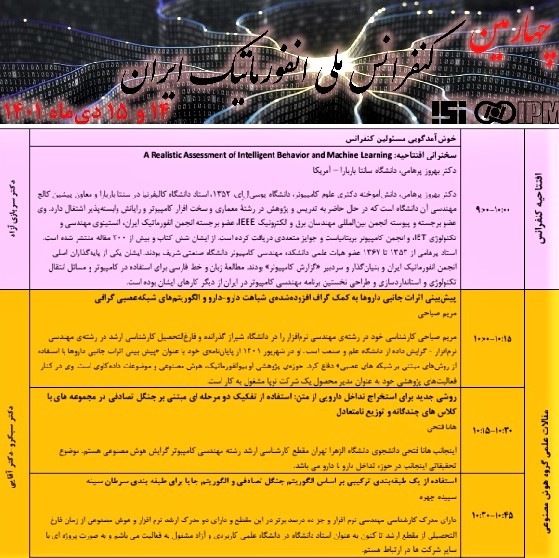
 (1) Images of the day: [Left] Did you know that the Leaning Tower of Pisa is empty inside? Its only purpose was to serve as a bell tower. [Center] My conference keynote/opening address (see the next item below). [Right] William Frenkel's Love and Math (see the last item below).
(1) Images of the day: [Left] Did you know that the Leaning Tower of Pisa is empty inside? Its only purpose was to serve as a bell tower. [Center] My conference keynote/opening address (see the next item below). [Right] William Frenkel's Love and Math (see the last item below).
(2) My keynote/opening address at Iran's Fourth National Informatics Conference, January 4-5, 2023: This morning, at 9:00 AM Iran time (9:30 PM Tuesday, PST), I spoke in Persian under the title "A Realistic Assessment of Intelligent Behavior and Machine Learning." [Conference Web site] [Conference program]
(3) One-liners: Brief news headlines, happenings, memes, and other items of general interest.
- A score of Republicans opposed to Kevin McCarthy block his selection as House Speaker in 3 voting rounds.
- A serious injury in football has us concerned: But, in a few days, we'll forget, as we do with mass shootings.
- Economics papers by women authors spend much longer in peer review than papers by male authors.
- Political humor: Islamic Republic of Iran wins the Best Regime Award. [12-minute video] [English] [Persian]
(4) Book review: Frenkel, Edward, Love and Math: The Heart of Hidden Reality, unabridged 10-hour audiobook, read by Tony Craine, Gildan Media, 2013.
[My 4-star review of this book on GoodReads]
In this book, mathematician Edward Frenkel (UC Berkeley) tells two intertwined stories. One story focuses on the wonders and beauty of mathematics, not the math we are taught at school (which he likens to an art class teaching you only how to paint a fence, never even mentioning the works of van Gogh and Picasso), but math in its full glory. The other story is that of Frenkel himself, who as a young Jewish man endured a discriminatory educational system in the Soviet Union, which severely limited his choice of universities to attend and subjects to study.
Through sheer determination and support of a few mentors, over many years, both inside and outside the Soviet Union, Frenkel became one of the leading mathematicians of the twentieth century, working on one of the biggest and most-exciting ideas in today's mathematical landscape: The Langlands Program, which allows mathematicians to link and translate ideas between different branches of math; a kind of unified theory of math. This program has already opened up new avenues, allowing previously intractable problems, such as Fermat's Last Theorem, to be solved.
I picked up the book with some skepticism, thinking that it was one of those wishy-washy "love is math, math is love" kinds of books. Soon after getting into the book, I realized that it was a serious math book. In fact, much of the math described by Frenkel went over my head, despite his efforts to simplify and use analogies. The "love" part concerns mostly Frenkel's love affair with math, making the book a kind of love letter.
Frenkel tells us that much of mathematics is abstract and has no obvious connection with reality. There is only one mathematics that exists, independent of us. We do not invent math, but discover bits & pieces of it. If we fail to discover something, someone else will discover it at a later time, which will be exactly the same thing we would have discovered, had we been successful.
Frenkel emphasizes the notion of symmetry as an important mathematical property that simplifies our studies. Symmetries exist in physical objects (a table or a globe) and in abstract constructs. Evariste Galois was a key figure in shaping our understanding of symmetries. In algebra, symmetry may mean that one can interchange two variables without changing the nature of their relationship. A primary example of the latter kind of symmetry exists in electromagnetics, where the roles of electricity and magnetism are interchangeable.
After writing the book, Frenkel decided to turn it into a film, to convey his deep emotions about math in the language of art. The 27-minute film, by Reine Graves & Edward Frenkel, is entitled "Rites of Love and Math."

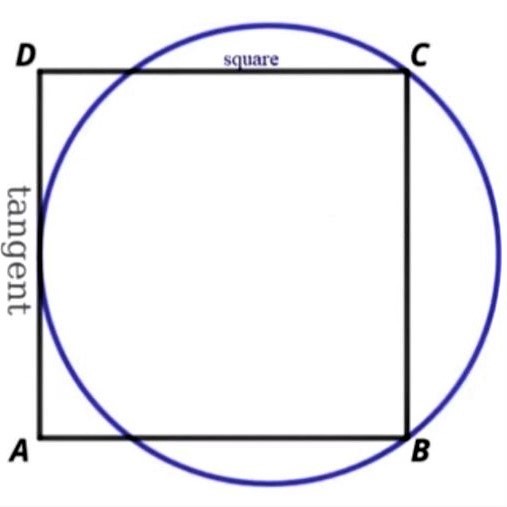
 (1) Images of the day: [Left] Someone came up with this temporary fix, until Donald Trump is put in a real prison! [Center] Math puzzle: What is the ratio of the circle's area to the square's area in this diagram? [Right] Steve Toltz's A Fraction of the Whole (see the last item below).
(1) Images of the day: [Left] Someone came up with this temporary fix, until Donald Trump is put in a real prison! [Center] Math puzzle: What is the ratio of the circle's area to the square's area in this diagram? [Right] Steve Toltz's A Fraction of the Whole (see the last item below).
(2) A Harshad number is divisible by the sum of its digits: Having more than two consecutive Harshad years is quite rare (separated by more than 1000 years before and after 2022-2025, i.e., 1014-1017 & 3030-3033).
(3) One-liners: Brief news headlines, happenings, memes, and other items of general interest.
- Iran's mullahs unleash their cyber-army on activists trying to form a coalition against them. [Tweet images]
- Bahar Choir dedicates this song to Iranian parents whose children lost their lives in the quest for freedom.
- The Value of Rethinking Deeply-Held Beliefs: PBS "Firing Line" interview with Adam Grant.
- Why Did We Stop Believing that People Can Change? New York Times guest essay by Rebecca Solnit.
- The older we get, the more we need our friends, and the harder it is to keep them, writes Jennifer Senior.
- Benefits of Not Being a Jerk to Yourself: In this TED talk, Dan Harris advises us to high-five our demons.
(4) Children are being killed in Iran: Physically, by being shot on the streets, and emotionally, by taking their parents away from them. Shame on Iran's brutal Islamic regime! The free world must close IRI embassies and expel their terrorist diplomats. #WomanLifeFreedom [Tweet, with video]
(5) Book review: Toltz, Steve, A Fraction of the Whole, unabridged 25-hour audiobook, read by Colin McPhillamy & Craig Baldwin, Recorded Books, 2008.
[My 4-star review of this book on GoodReads]
This dark novel tells the story of the Dean family in Australia, with three main characters: The narrator Jasper, a boy experiencing a roller-coaster-like journey into manhood with almost no adult supervision, Martin, his father, who relates his failings to his son, and Terry, his sportsman-turned-outlaw uncle, who remained a folk legend even after his death, much to the envy of Martin.
After a suspenseful beginning, the story turns rather slow and sleep-inducing, but I persevered, because the book was recommended to me by a trusted friend. From about a quarter of the way in, the reader becomes engaged when s/he realizes the terrible things that can happen to an intelligent boy who grows up with virtually no support from those around him. The interest builds up further in the final quarter of the story.
Memorable passages include where Jasper realizes that naked women next to poles aren't sexy at all and where he tells us about his father blaming him for having to work, because welfare payments would have sufficed for one person. Then there are interesting philosophical musings, such as:
- "I didn't think anyone who had to demand respect ever got it."
- "Sometimes I think the human animal doesn't really need food or water to survive, only gossip."
- "People carry their secrets in hidden places, not on their faces. They carry suffering on their faces. Also bitterness if there's room."
But there are also dispensable ramblings that reduce the story's appeal. The book could have been made a lot shorter with better editing.
The main strengths of the novel are its intimacy and the dark humor embedded in strikingly unfunny situations. The novel's title is apparently a reference to the fact that each character tells a fraction of the whole story, with those fractions not necessarily fitting together or being consistent with each other or with our view of how the world is supposed to work. The reader has to resolve the ultimate conflict between a father who tries to do the right thing, but is a most-hated man in Australia, and an uncle who robs banks and kills cops, but is broadly admired.

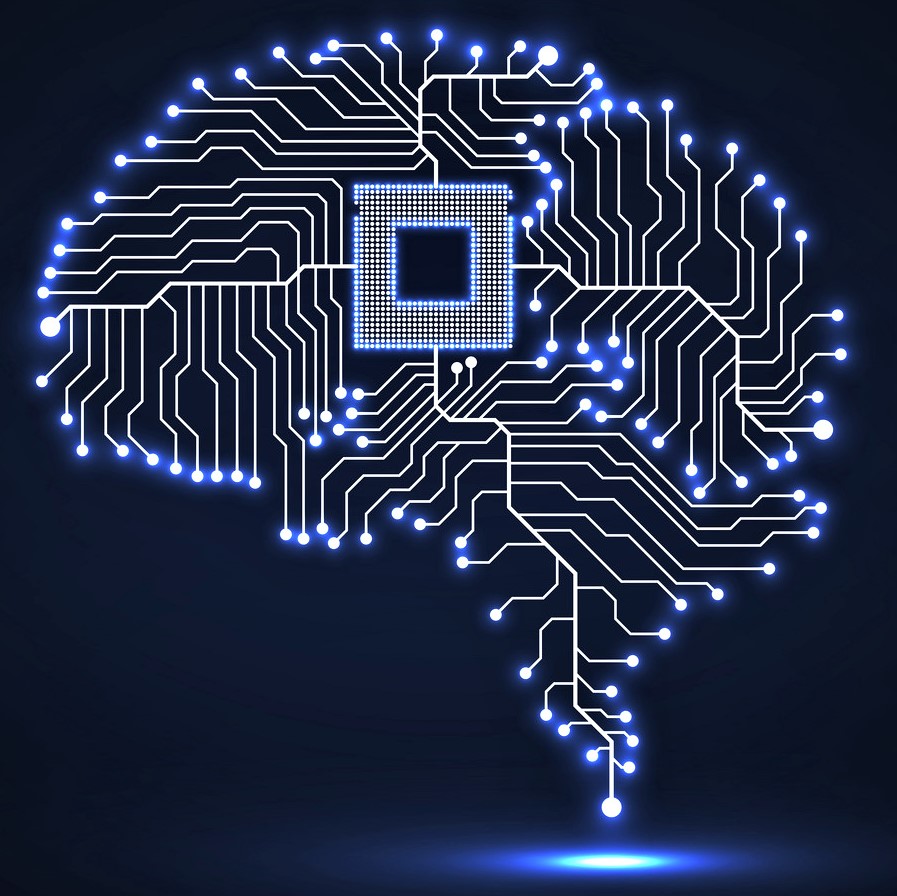
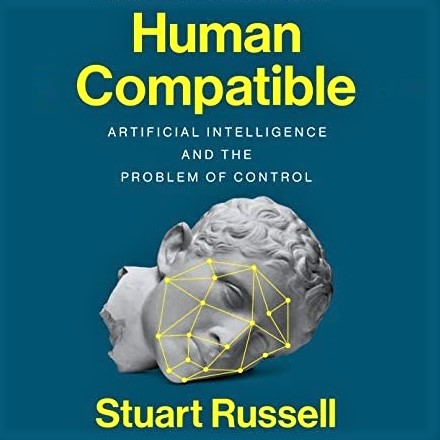 (1) Book review: Russell, Stuart and Peter Norvig, Artificial Intelligence: A Modern Approach, Pearson, 4th ed., 2021.
[My 5-star review of this book on GoodReads]
(1) Book review: Russell, Stuart and Peter Norvig, Artificial Intelligence: A Modern Approach, Pearson, 4th ed., 2021.
[My 5-star review of this book on GoodReads]
I have been following the field of artificial intelligence (AI) as an external observer, ever since I wrote a 1969 term paper entitled "The Computer: Man's New Brain." Recently, I was asked to give a number of talks on AI, along with its technical challenges and social implications, for general audiences, so it was time to refresh/organize my knowledge and bring it up to date by studying a modern reference on the topic, which led me to Russell's & Norvig's book.
This is an authoritative, widely-used book on AI. It contains 28 chapters, structured in seven parts, sandwiched between a preface and two appendices (math background; notes on languages and algorithms). There are also a number of accompanying on-line resources, including the following:
Preface (PDF);
Table of contents (Web page);
Bibliography (PDF);
Index (PDF);
Exercises (Web site);
Figures (PDF);
Code (Web site);
Pseudocode (PDF);
Instructor resources (Web site).
The first author of this comprehensive introduction to AI has also written Human Compatible: Artificial Intelligence and the Problem of Human Control (Viking, 2019), a book that I highly recommend. The two books collectively cover the technical and social/ethical aspects of AI remarkably well.
(2) Book review: Russell, Stuart, Human Compatible: Artificial Intelligence and the Problem of Human Control, Viking, 2019. [My 5-star review of this book on GoodReads]
Stuart Russell, a professor of computer science at UC Berkeley, is one of the leading experts in artificial >ntelligence (AI). He has written, with Peter Norvig, a comprehensive and widely used textbook, Artificial Intelligence: A Modern Approach (Pearson, 4th ed., 2021), which I will review shortly. He has given numerous invited talks, participated in media interviews, and addressed a UN meeting on autonomous weapons systems. Russell's faculty Web site at UC Berkeley provides descriptions of, and useful links to, his professional activities and technical contributions. Having literally written the book on AI, Russell has become a prominent leader in warning us about its dangers and is helping devise methods for building safer AI systems. He outlines some of his ideas in this domain in an 18-minute TED talk, entitled "Three Principles for Creating Safer AI":
In the preface, Russell informs us that "This [book] matters, not because AI is rapidly becoming a pervasive aspect of the present but because it is the dominant technology of the future." He then proceeds to discuss his ideas in three parts.
Part I (Chs. 1-3): The idea of intelligence in humans and in machines
II (Chs. 4-6): Retaining absolute power over machines that are more powerful than us
Part III (Chs. 7-10): Ensuring that machines remain beneficial to humans, forever
Four appendices explain some of the core concepts underlying modern AI systems. Extensive notes on the 10 chapters and 4 appendices and a comprehensive index follow Appendix D.
In Chapter 1, entitled "If We Succeed," Russell contemplates on the biggest event in the future of humanity, coming up with five candidate scenarios:
- We all die due to climate or some other catastrophe, such as an asteroid impact.
- We all live forever.
- We invent faster-than-light travel and conquer the universe.
- We are visited by a superior alien civilization.
- We invent super-intelligent AI.
He then suggests that the fifth scenario is both more likely to come true and better than the other ones. With super-intelligent AI, we can avoid the first scenario and achieve the second one. We can also ensure the third outcome, if it is indeed possible, and won't need the fourth scenario!
Russell relates that the AI mantra "The more intelligent the better" is a mistake. We should focus not on increasing the machine's intelligence level but on the purpose or goal we put into it, making sure that the purpose is what we really desire. "If we put the wrong objective into a machine that is more intelligent than us, it will achieve the objective, and we lose."
This book is a must-read for everyone, from computer scientists with a basic understanding of AI to members of the general public who are concerned about the future of humanity, as we begin an era of coexistence with super-intelligent machines. Chapter 4, entitled "Misuses of AI," is particularly useful to readers who have not thought about AI's extreme and subtle dangers (both the shooting robot and the persuading/conniving one). It's not too soon to start thinking about the problems arising from all-powerful AI, even if we consider its realization to be decades away.

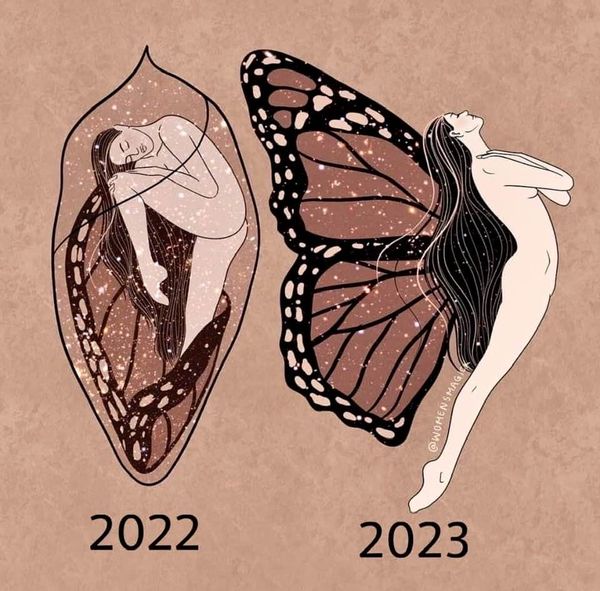



 (1) Images of the day: [Top row] Let us begin the new year 2023 with hope: For progress, prosperity, accountability, and social justice throughout the world. I have received the accompanying memes from Iran. [Bottom left & center] Today's secret-Santa family gift-exchange, and my gift T-shirt: Most family members joined virtually. [Bottom right] Roland Geyer's The Business of Less (see the last item below).
(1) Images of the day: [Top row] Let us begin the new year 2023 with hope: For progress, prosperity, accountability, and social justice throughout the world. I have received the accompanying memes from Iran. [Bottom left & center] Today's secret-Santa family gift-exchange, and my gift T-shirt: Most family members joined virtually. [Bottom right] Roland Geyer's The Business of Less (see the last item below).
(2) My New-Year 2023 puzzle: Every year, as a new year number emerges, I try to form the numbers 0, 1, 2, 3, ... by putting math symbols (including parentheses) between its digits. For 2023, I have been able to do this for numbers up to 28. The first five appear below as hints and the rest are left to you as challenging puzzles!
0 = 2 * 0 * 23 1 = 2 + 0 + 2 – 3 2 = 2 + 0 * 2 * 3 3 = 2 + 0 – 2 + 3 4 = 2 + 0! – 2 + 3
(3) Properties of the number 2023: At first, the number looks unremarkable, but it has quite a few interesting properties. It is factorized as 7*(17^2). It is represented in hexadecimal as 7e7, which is palindromic. It is a Harshad number, since it is a multiple of the sum of its digits. It is a polite number, because it can be written in 5 ways as a sum of consecutive natural numbers, like 111 + 112 + ... + 127. The 4-by-4 square can be tiled in 2023 ways, using the L-shaped tromino and the monomino (unit square). The next natural number, 2024, is also quite amazing, but that's a topic for next year!
(4) One-liners: Brief news headlines, happenings, memes, and other items of general interest.
- This is how Ukrainians spent New Year's Eve: With gifts of missiles and bomb-carrying drones from Putin.
- Populists who aren't popular: Former President Bolsonaro flees to Florida as Lula takes over in Brazil.
- Vast US investments in chip-manufacturing capabilities are reminiscent of Cold-War-Era space spending.
- Representation of 2023, using the digits 1-9 in ascending order: 2023 = 12 * 3 * (4 + 5) * 6 + 7 + 8 * 9
- Facebook memory from Jan. 1, 2018: Write your sorrows in the sand and carve your blessings in stone.
(5) Book review: Geyer, Roland, The Business of Less: The Role of Companies and Households on a Planet in Peril, Routledge, 2021.
[My 4-star review of this book on GoodReads]
Dr. Roland Geyer, with a graduate degree in physics and a PhD in engineering, is Professor of Industrial Ecology at UCSB's Bren School of Environmental Science and Management and a frequent contributor to radio and TV programs covering topics in his areas of expertise. I was lucky to hear the author speak about his book at the December 2022 meeting of IEEE California Central Coast Section in Santa Barbara.
Here is how Geyer describes what motivated him to write this book. Since its inception thirty years ago, environmental sustainability has been based on the concepts of "eco-efficiency" and "win-win." Despite countless eco-efficiency and win-win efforts across the world, the state of the natural environment has further degraded instead of improved. What brought us to the current state of affairs are four key periods or developments.
- The rise of mass production and its attendant economy of scale, as exemplified by Ford Model-T.
- The rise of mass pollution, as city after city in the world became nearly unlivable (London, Los Angeles).
- The rise of mass resistance, as people began to see the scale of environmental disasters (Earth Day).
- The rise of corporate sustainability, or the misguided idea that businesses can be part of the solution.
Geyer explains why our current approach to environmental sustainability was doomed to fail and introduces a new set of principles that together provide a road map, for businesses and for households, to a world in which human prosperity and a healthy environment are no longer at odds.
One reason eco-efficiency hasn't worked is because we tend to use any environmental-impact gains to make/use more of everything. Another problem is measuring impact in relative terms (per pair of sneakers, or per piece of garment, for instance). Such a relative gain is easily wiped out by a significant growth in the market.
There are a few signs of hope, though. For example, technological improvements are making recycling easier and more cost-effective. In my neck of the woods, the Santa-Barbara-County-operated Tajiguas landfill and its state-of-the-art recovery center provide good examples of what is possible if we learn from European efforts and focus on the "net-green" philosophy (business activities that reduce or avoid other activities that have even larger environmental impact, so that overall impact is reduced), along with four pollution-prevention principles described succinctly as "again," "different," "less," and "labor (not materials)."